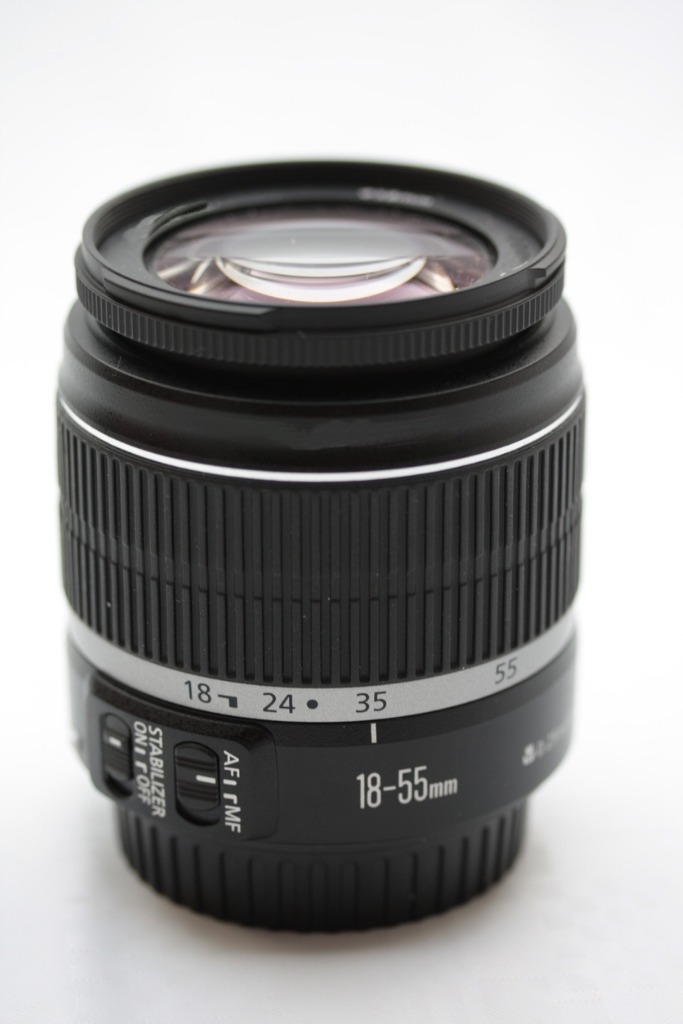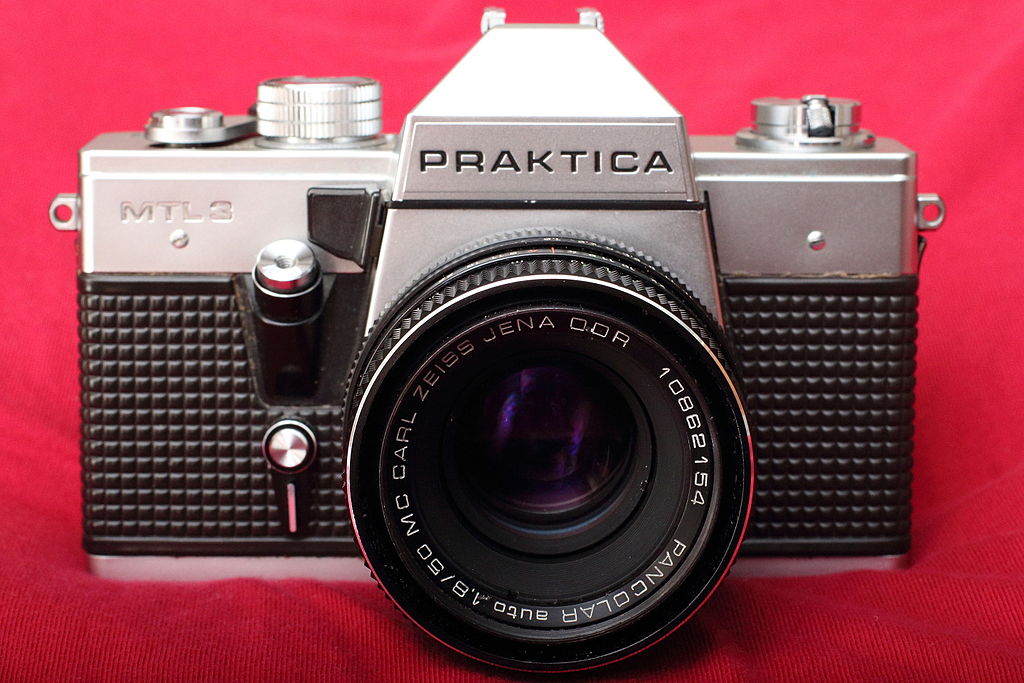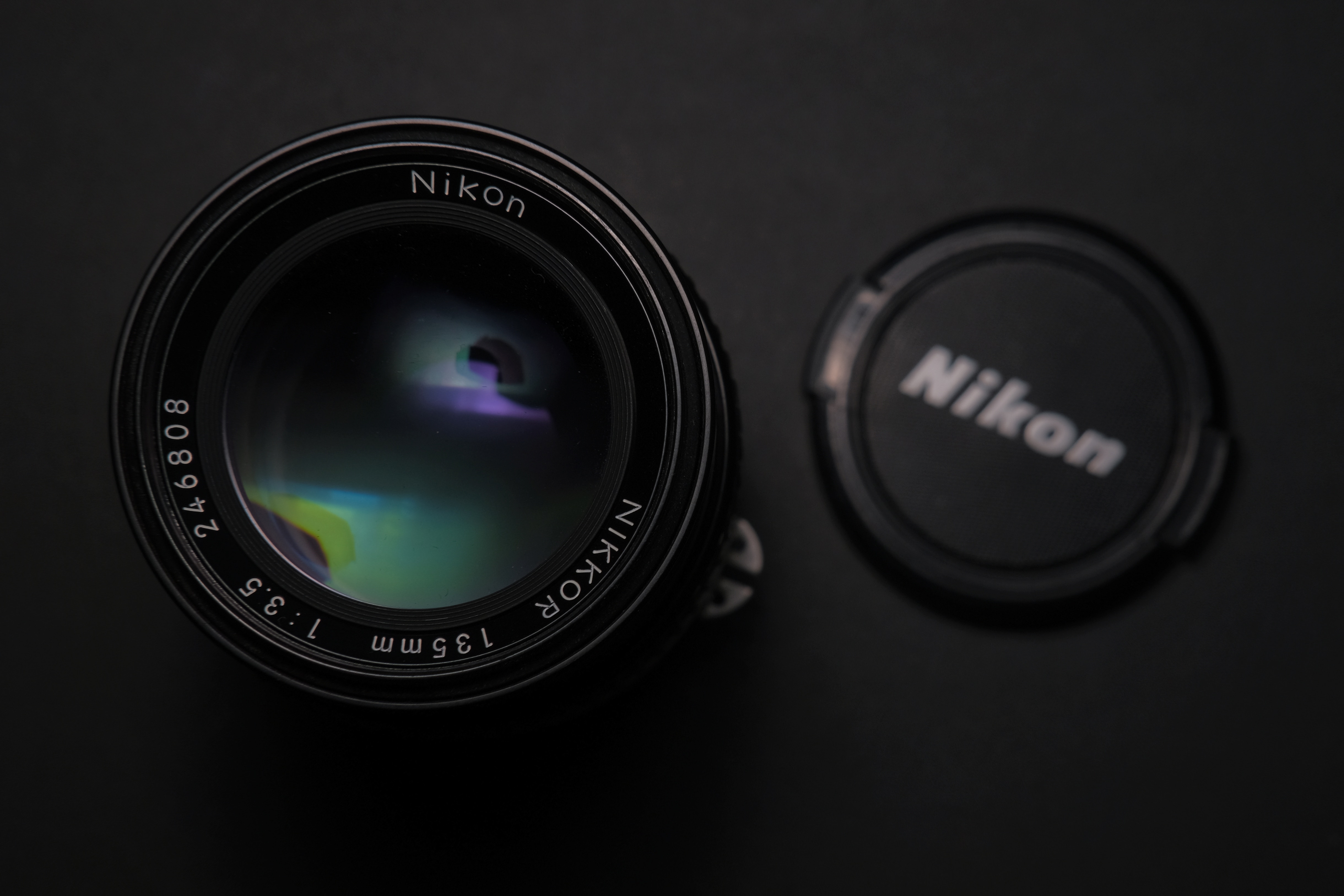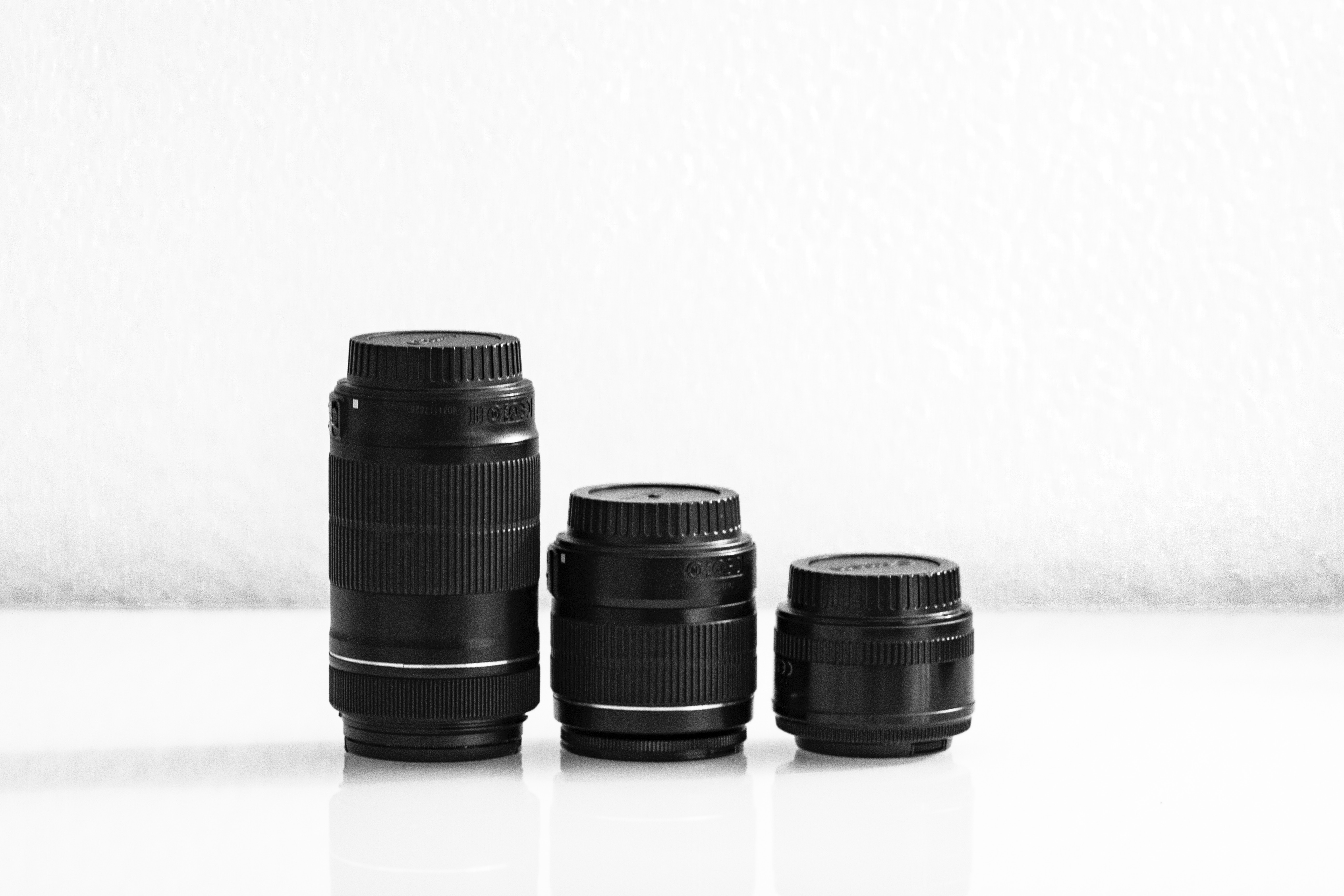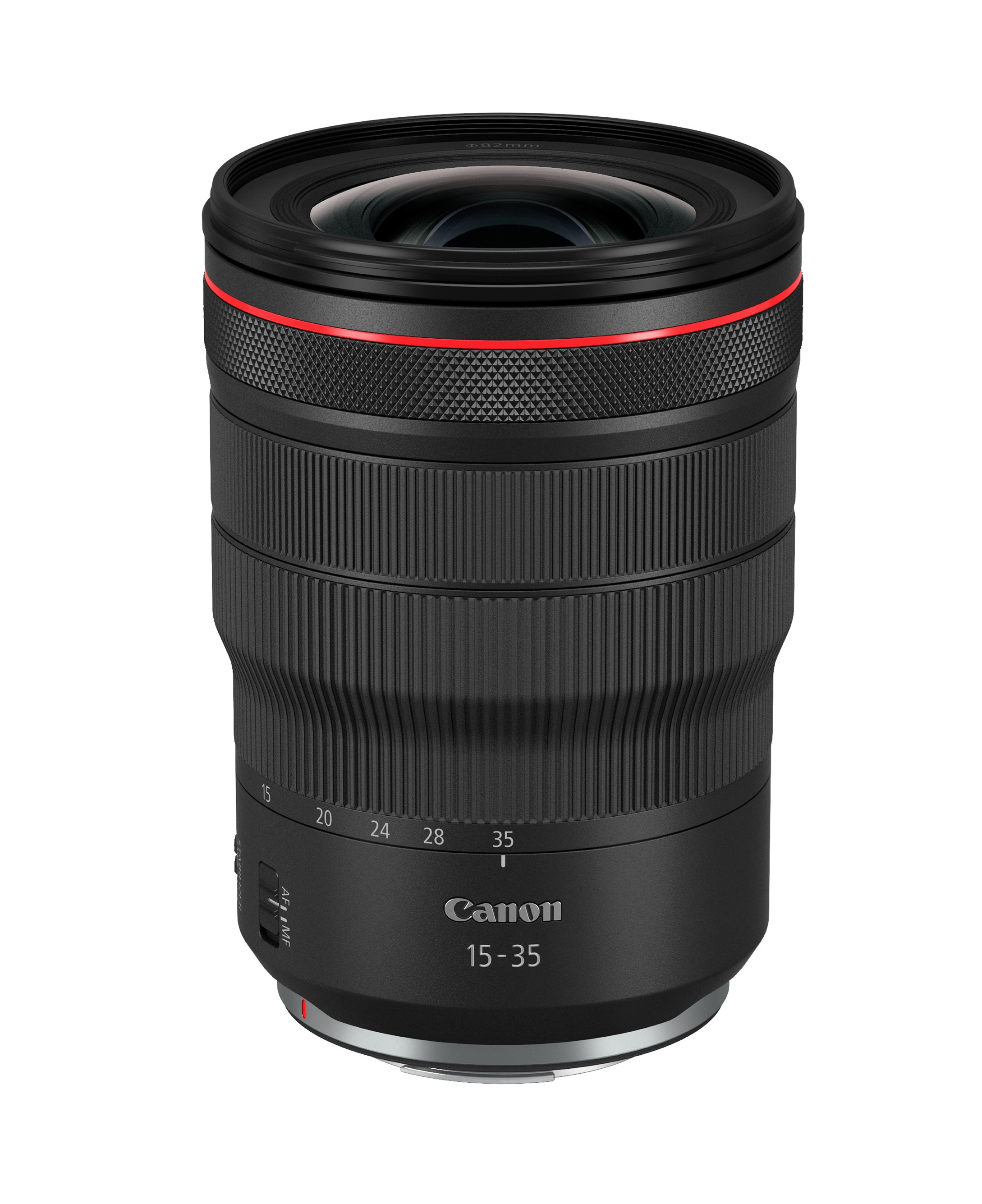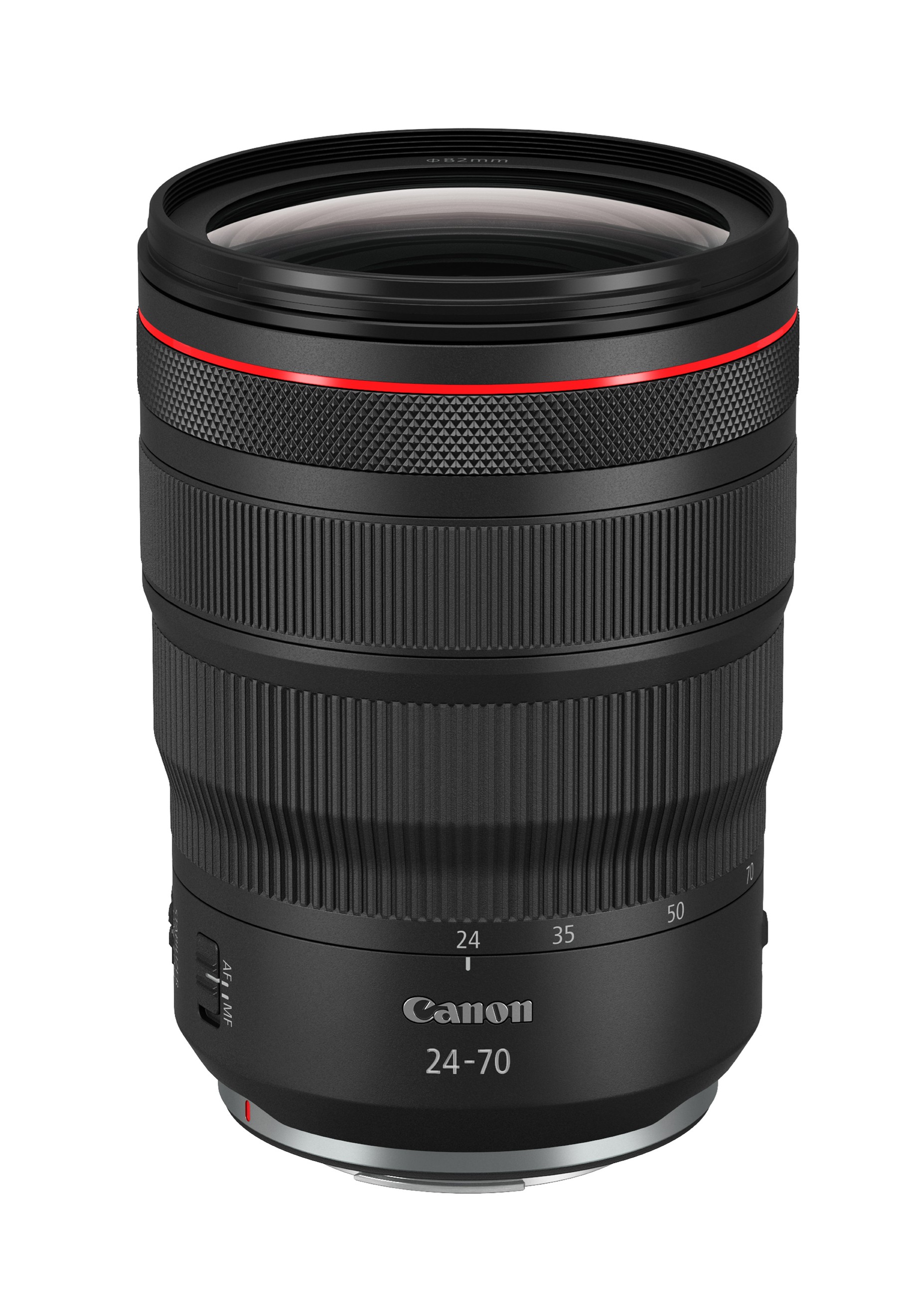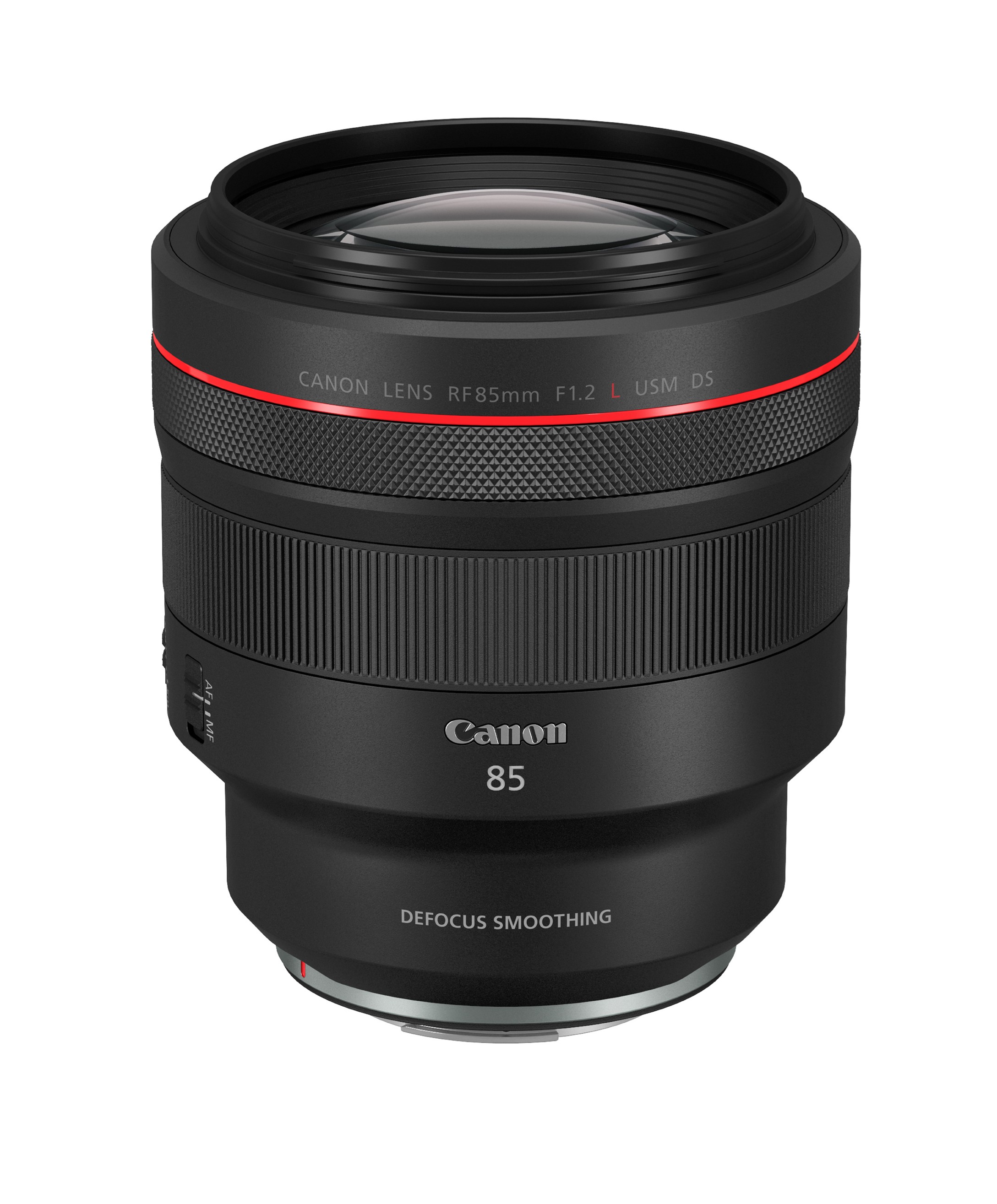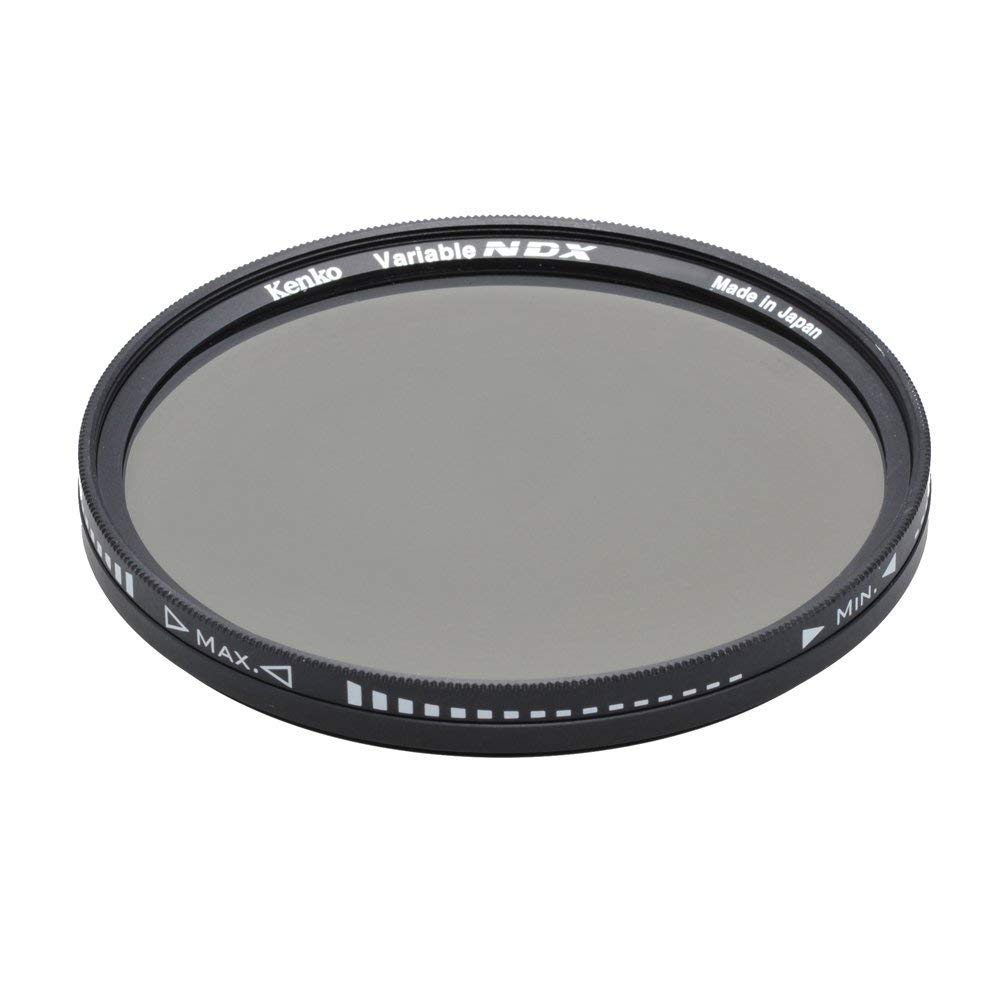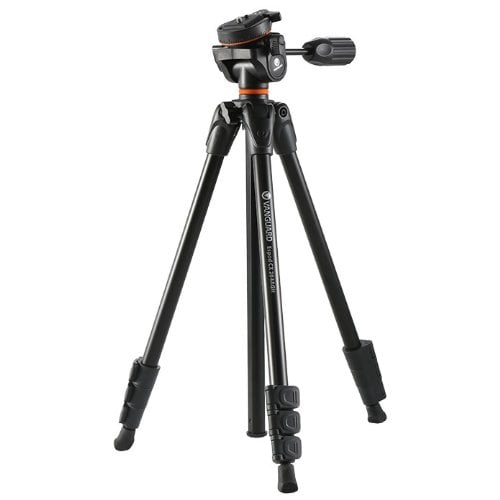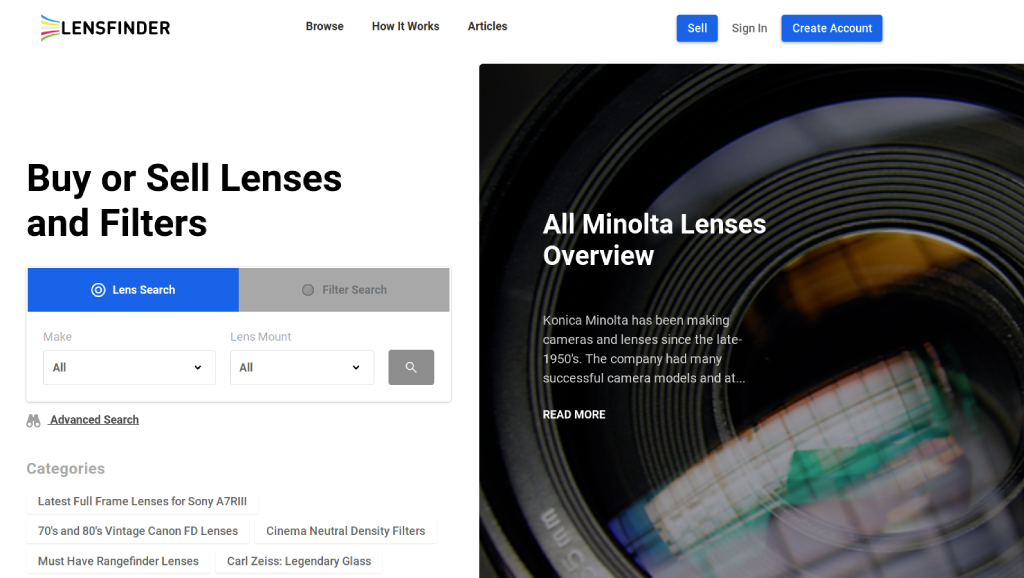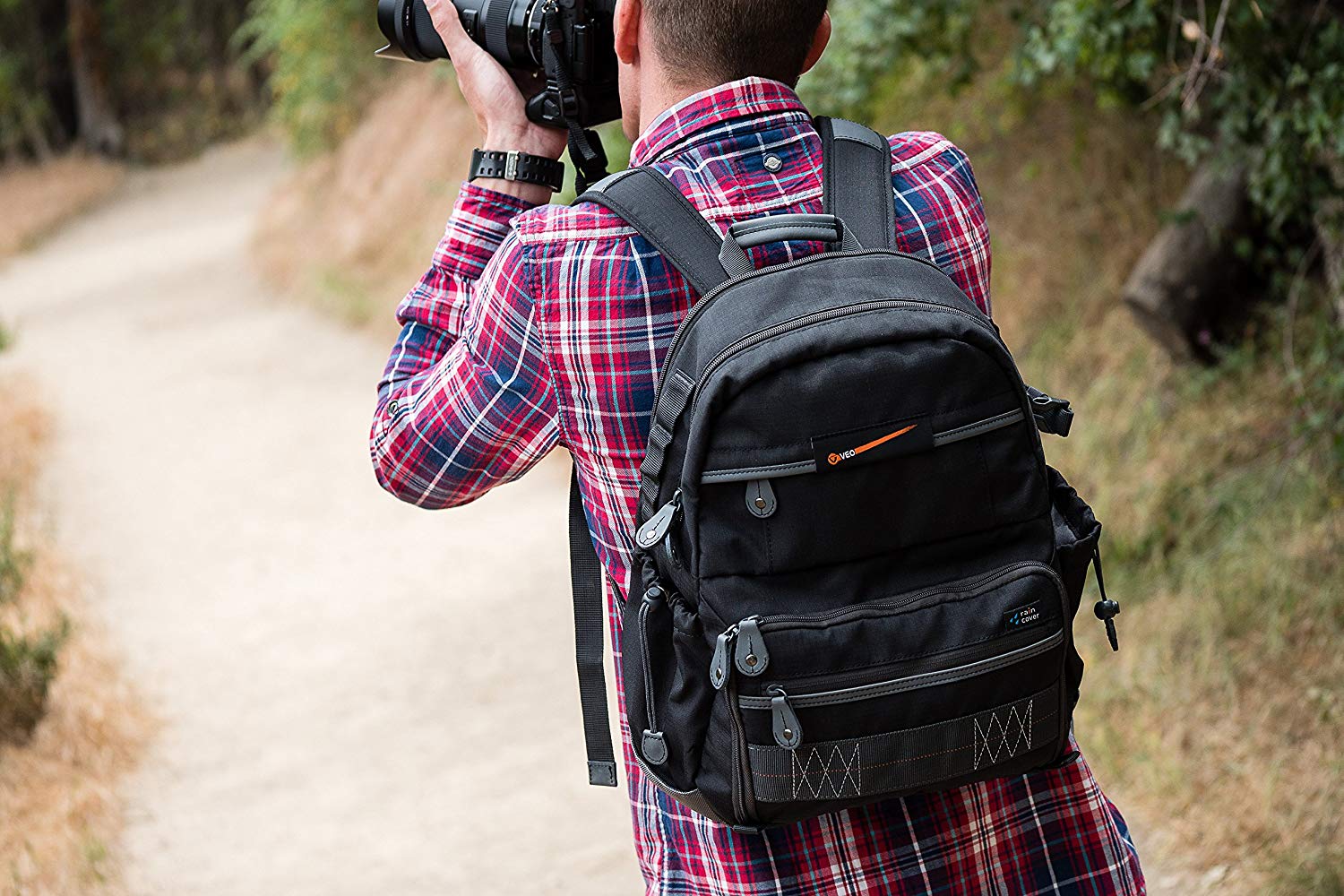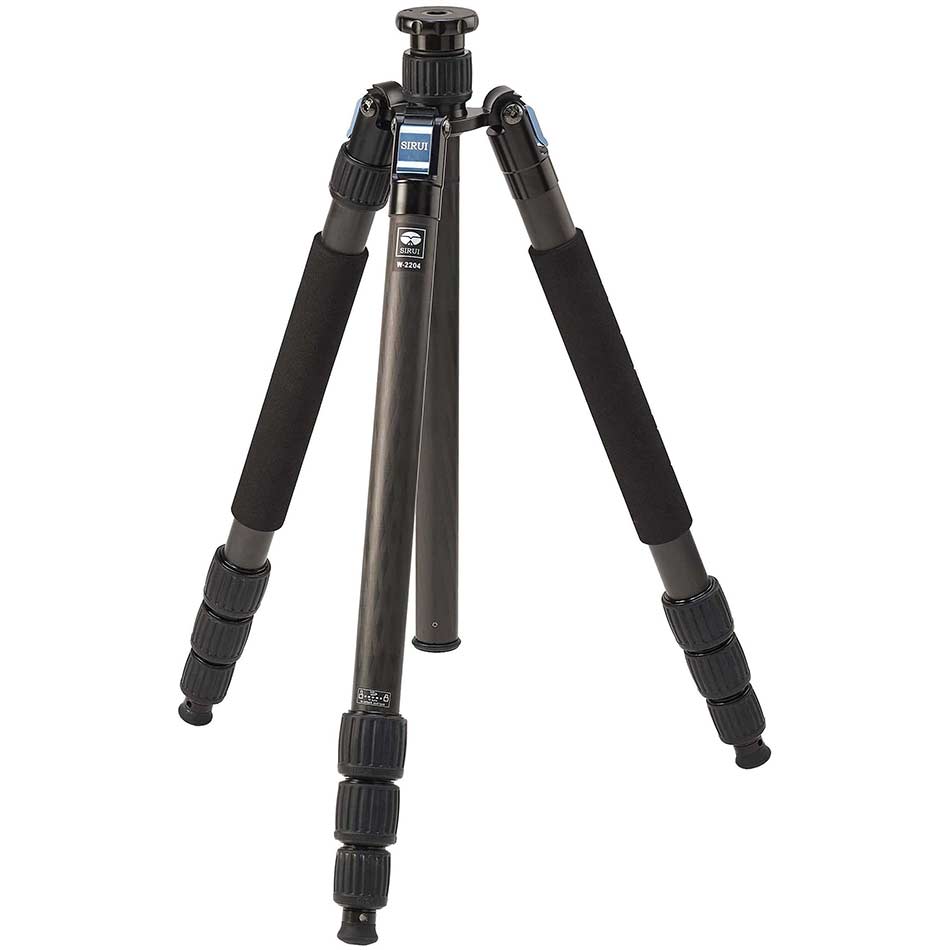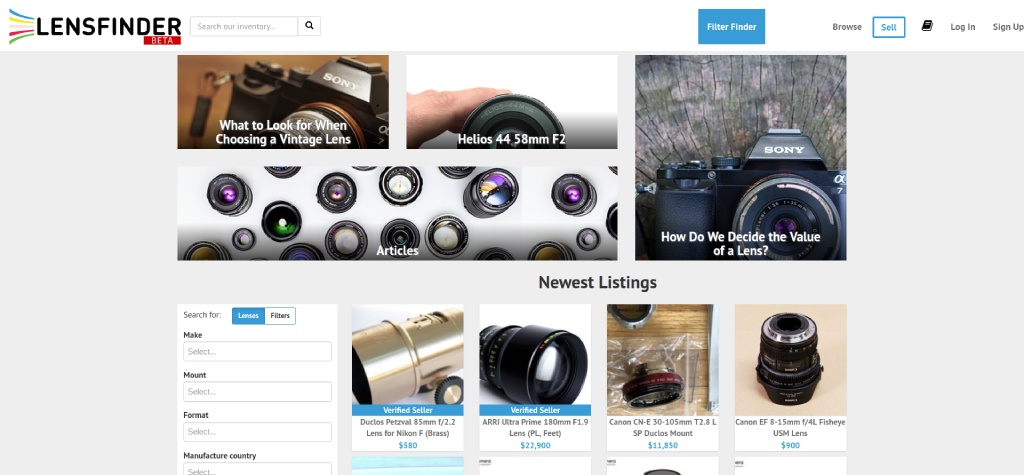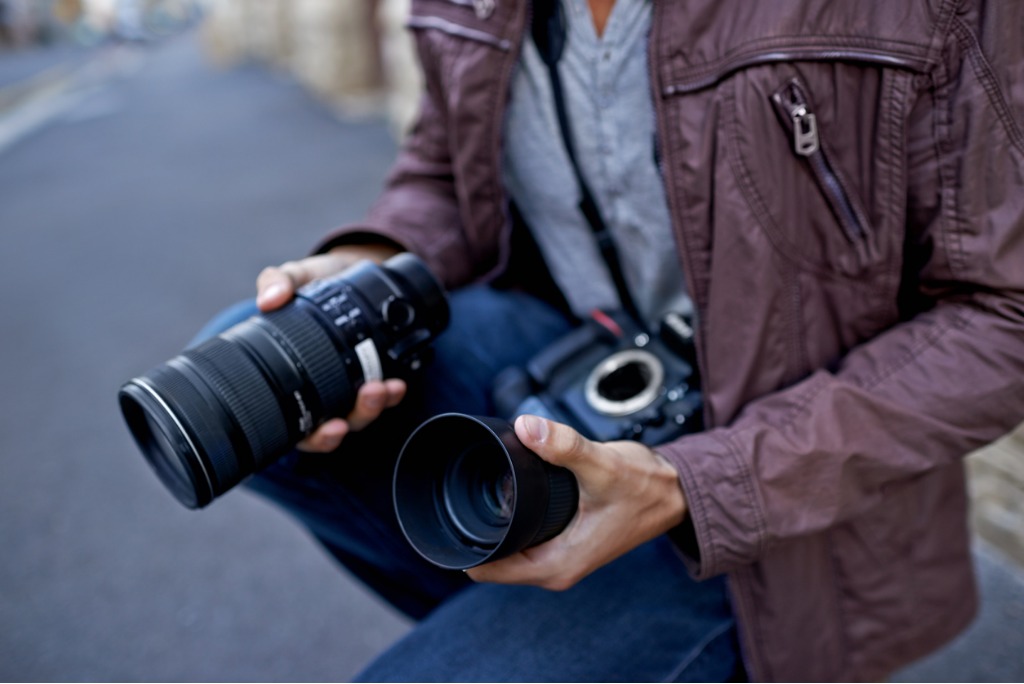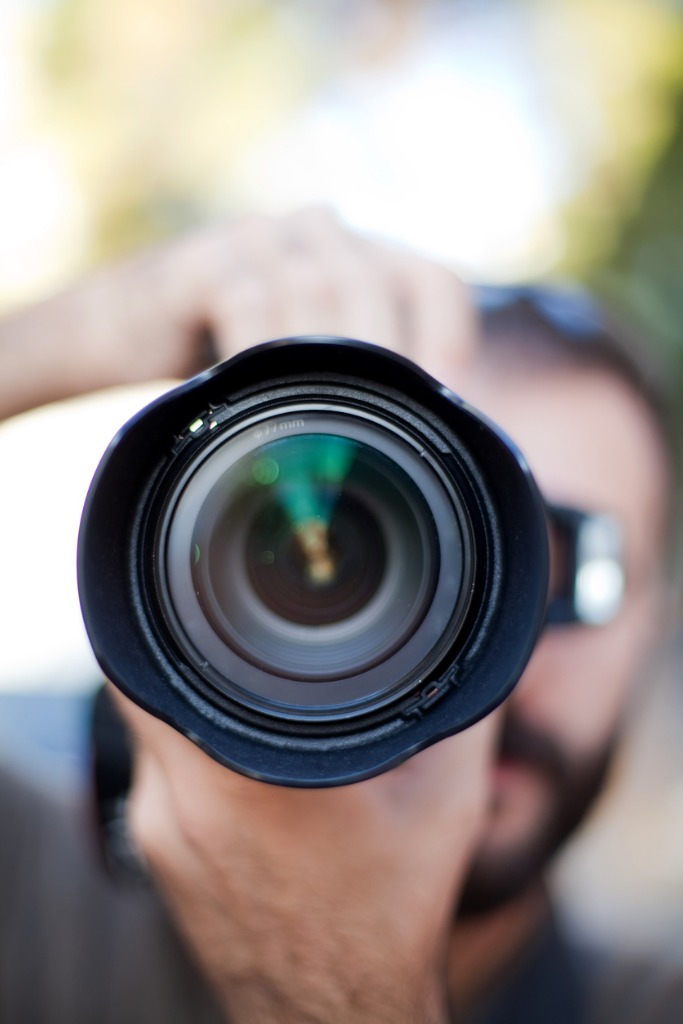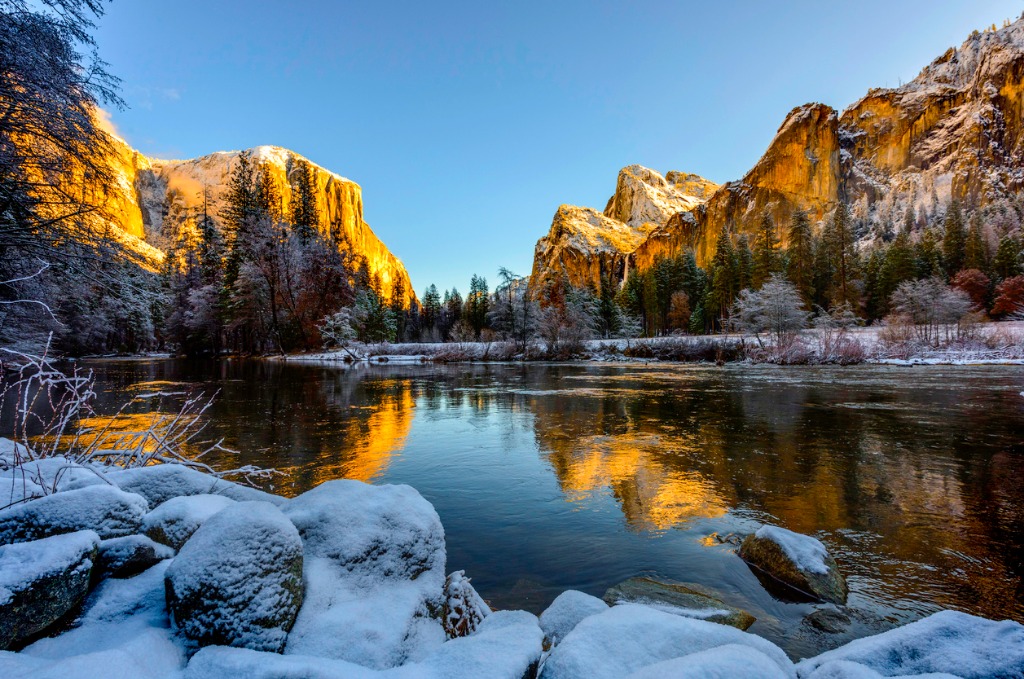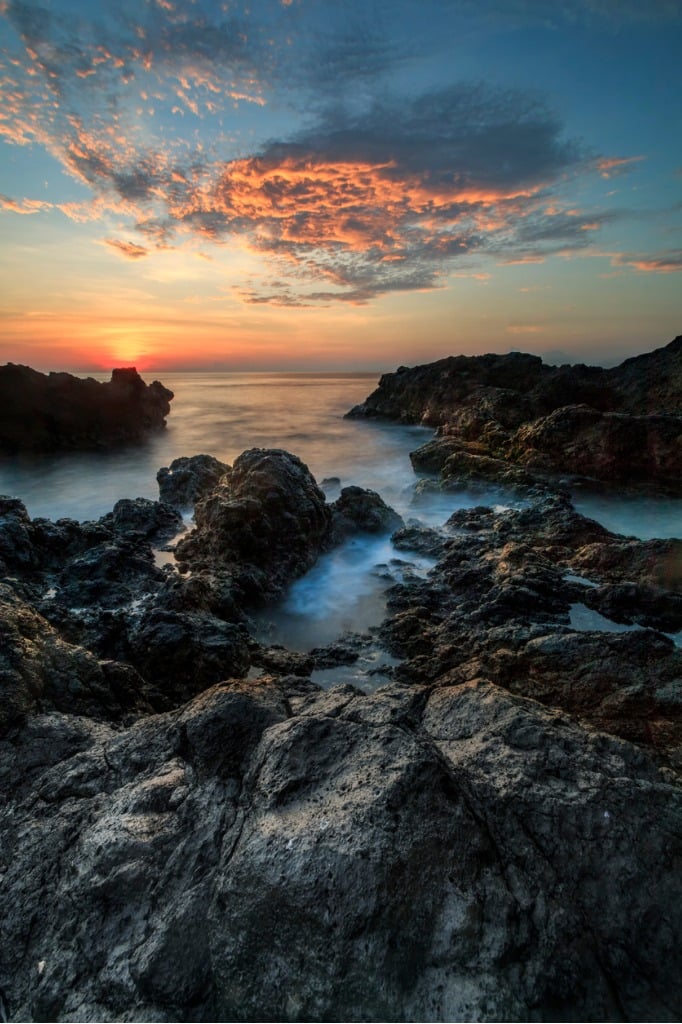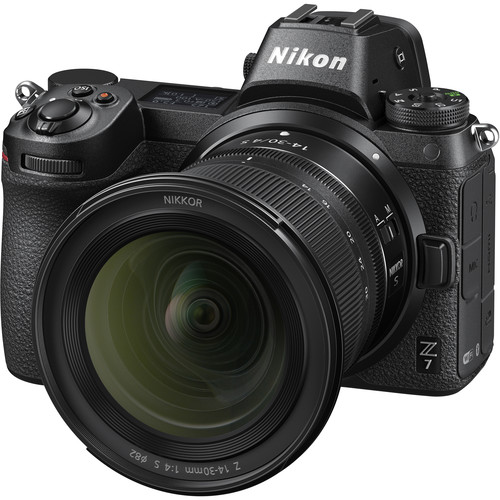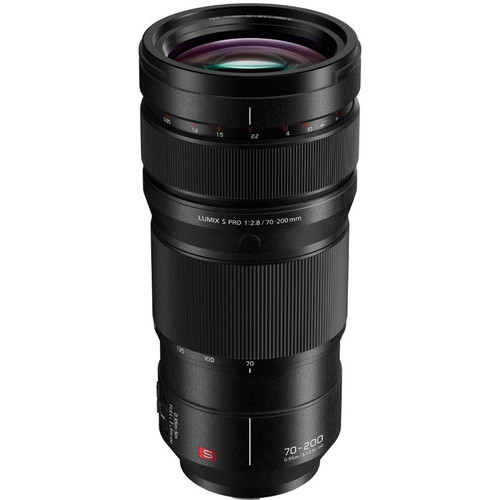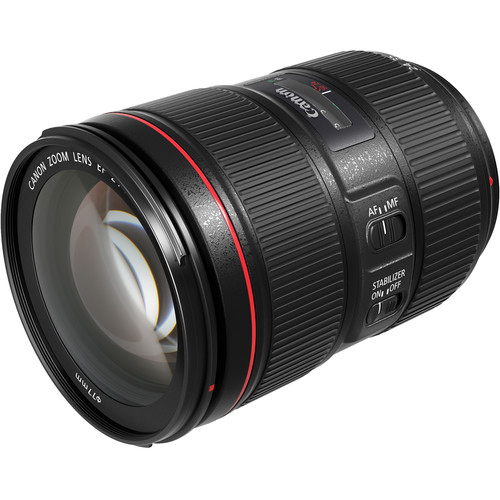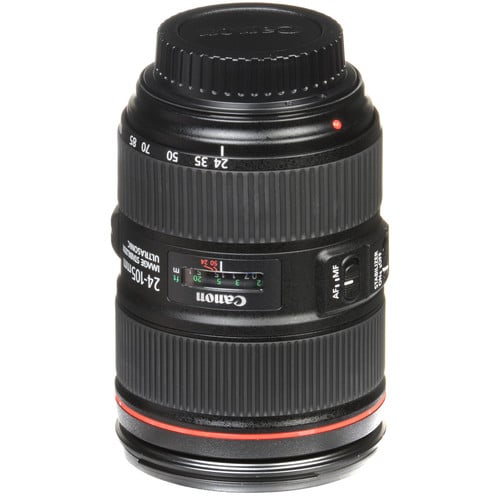3 Essential Lenses for Landscape Photography
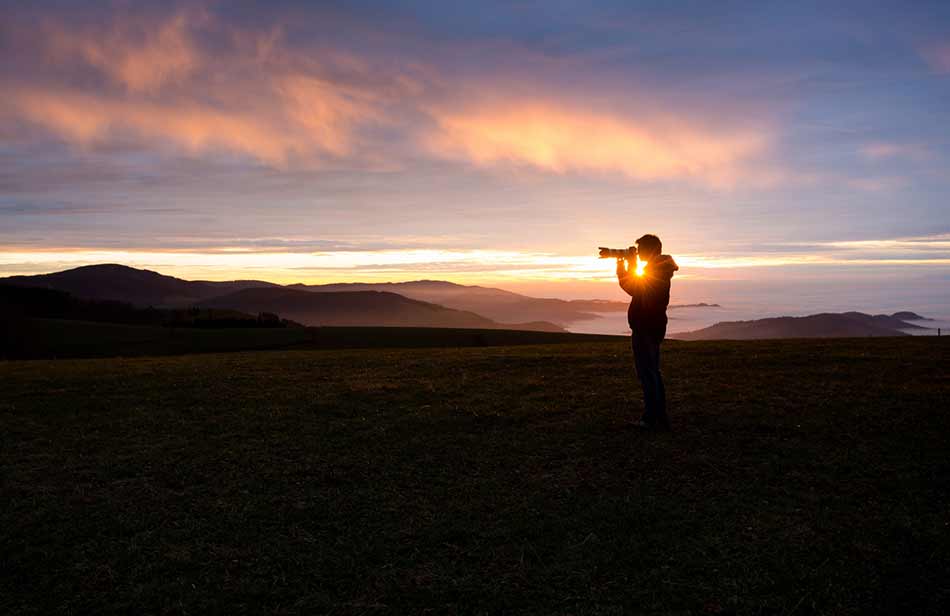
The great thing about being a landscape photographer these days is that there are simply so many lenses that you can use to take great photos.
And while all that selection is nice, picking between them can be a tough task...Thankfully, Nigel Danson is to the rescue with his three favorite landscape photography lenses.
While you might not be able to purchase all three lenses, you can bet that any one of them will be well-suited to landscape photography.
Have a look at his side-by-side-by-side comparison above, and for more details about each, check out the quick review below.
Editor's Tip: Need a good prime lens for your Nikon camera? Don't buy a thing until you've investigated the top prime lenses for Nikon.
Best Landscape Lens: 16-35mm f/4G ED VR II
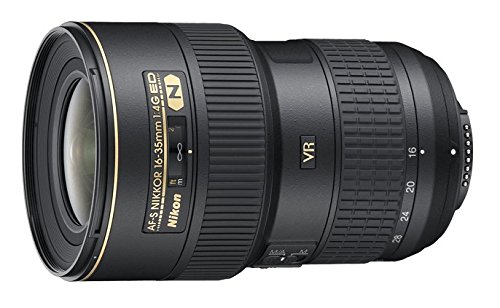
On the wide-angle end, the 16-35mm f/4G ED VR II from Nikon is an excellent choice for a Nikon shooter's landscape photography kit.
Though the f/4 aperture isn't particularly wide, a massive aperture opening isn't needed for shooting typical daytime photos of landscapes.
This lens is outfitted with Nikon's vibration reduction technology, so you can more confidently hand hold the camera without as much worry about camera shake.
That feature comes in handy when you need to work quickly and don't have time to set up a tripod for each and every shot.
This lens's performance is outstanding as well.
Its optical design includes two extra-low dispersion elements and three aspherical elements which give you improved image quality due to reduced aberrations and distortion.
Not only does that improve sharpness, but combined with a nano crystal coating, this lens also has reduced flare and ghosting, improved color accuracy, and better contrast as well.
The wide-angle range of 16-35mm is also perfect for capturing sweeping landscapes in greater totality.
For more details on this lens, consult the video above by Nikon Europe.
Must-Have Landscape Lens: Sigma 50mm f/1.4 ART
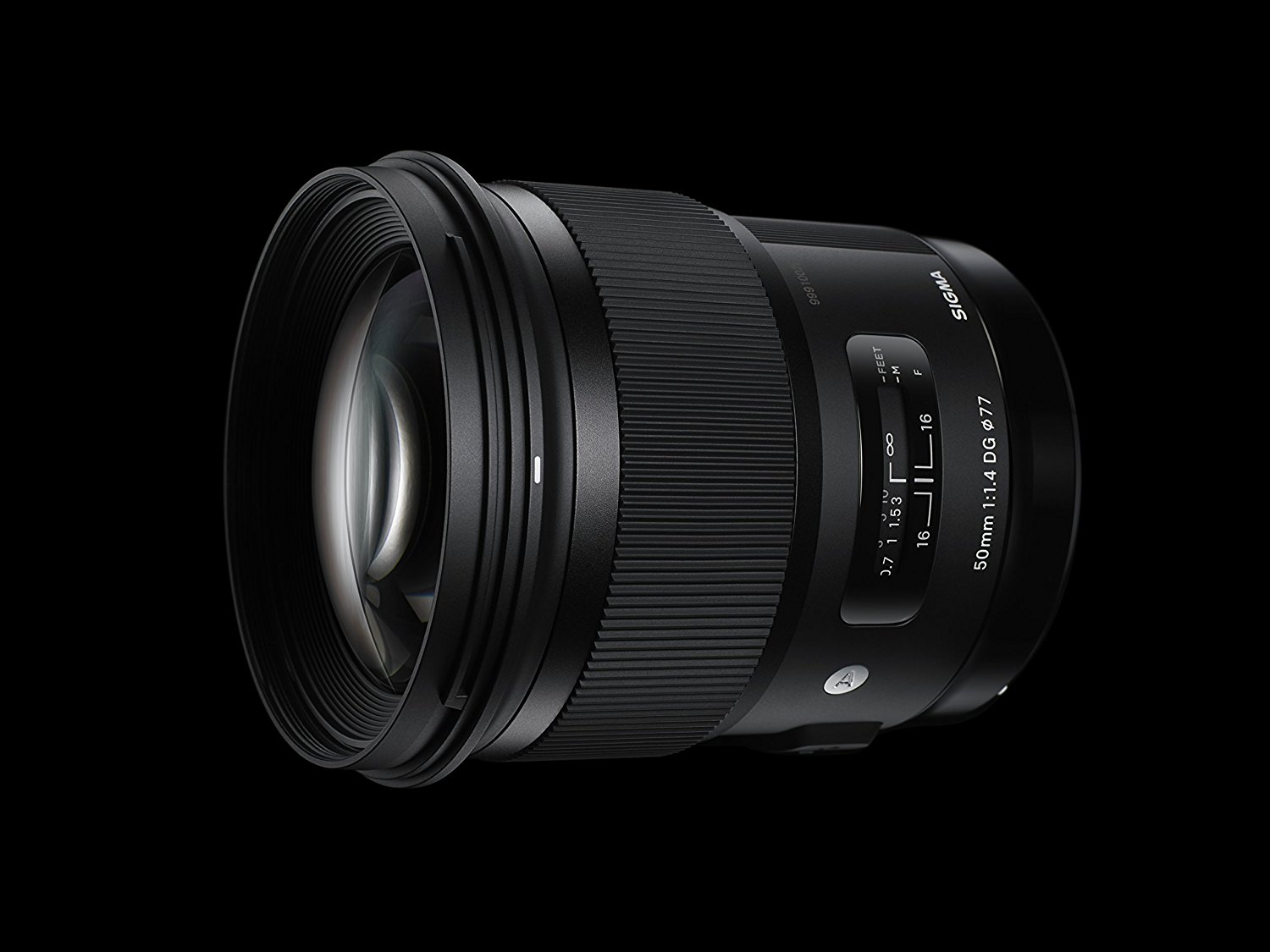
Sigma has come a long way in recent years and has quickly become a fantastic lensmaker, particularly when it comes to their ART line of lenses.
The 50mm f/1.4 ART lens by Sigma is a fantastic choice for landscape photography for a number of reasons.
First, this lens is lightning-fast with a f/1.4 aperture that allows you to get clean shots at dawn, dusk, and even in the middle of the night thanks to all the light that the f/1.4 aperture can collect.
Second, this lens is supremely sharp from corner to corner. There is little in the way of distortion or chromatic aberration, either.
The 50mm focal length on a full frame camera offers a beautiful representation of the landscape in standard view. On an APS-C camera, the effective focal length jumps into short telephoto territory, so you can more effectively capture distant elements or create more intimate landscapes.
Either way, this is one heck of a lens that offers top-notch performance. It's available for Canon and Sony cameras as well. It's on the pricey side, but if you buy pre-owned, you can find great deals that allow you to stretch your budget a little further.
Get more details on this lens by viewing the video above by DigitalRev TV.
Editor's Tip: In the market for a new camera? Learn why upgrading your lens is a better choice.
Nikon 70-200mm f/2.8
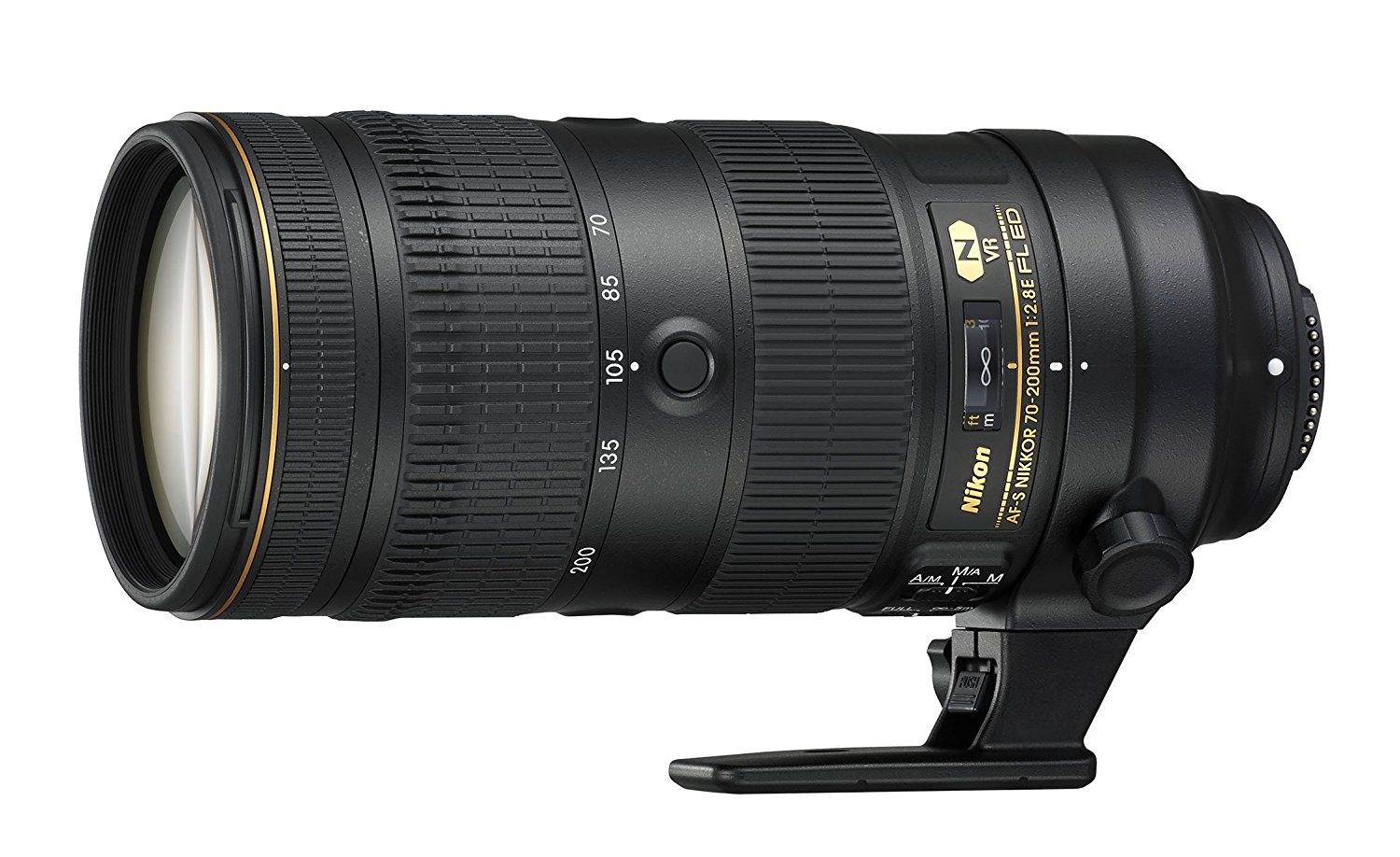
When you consider the best lenses for landscape photography, you have to include a telephoto lens in the bunch.
The Nikon 70-200mm f/2.8 gives you the extra-long focal length needed to take photos of very distant subjects and wildlife.
But this lens also has a large f/2.8 maximum aperture, which allows it to collect more light and gives you more possibilities for when you take photos.
Granted, it's not going to compete with the aforementioned Sigma 50mm f/1.4 in a low-light shooting competition, but f/2.8 is nothing to thumb your nose at!
What's more, this variation of this lens is smaller and lighter weight than its predecessor, so even though it's a big lens, you don't feel like you're bogged down by it.
Its performance is excellent, too.
The autofocus performs well in situations in which you need to fire off quick shots, and with Nikon's Vibration Reduction, you can shoot handheld in a vast majority of situations without worrying as much about camera shake.
It's a sharp lens as well, particularly in the center of the frame. There is some fall off to the sides, but that's to be expected. It's nothing that should deter you from thinking about buying this lens! Learn more about this lens in the video above by LensProToGo.
No matter which of these Nikon landscape lenses you buy, it'll be a great addition to your kit.
And even if they're prohibitively expensive brand new, remember that you can find great deals on pre-owned lenses, so before you commit to buying a new lens, see if you can find a quality used one instead!
A Must-Have Lens Accessory: A Good Filter Kit
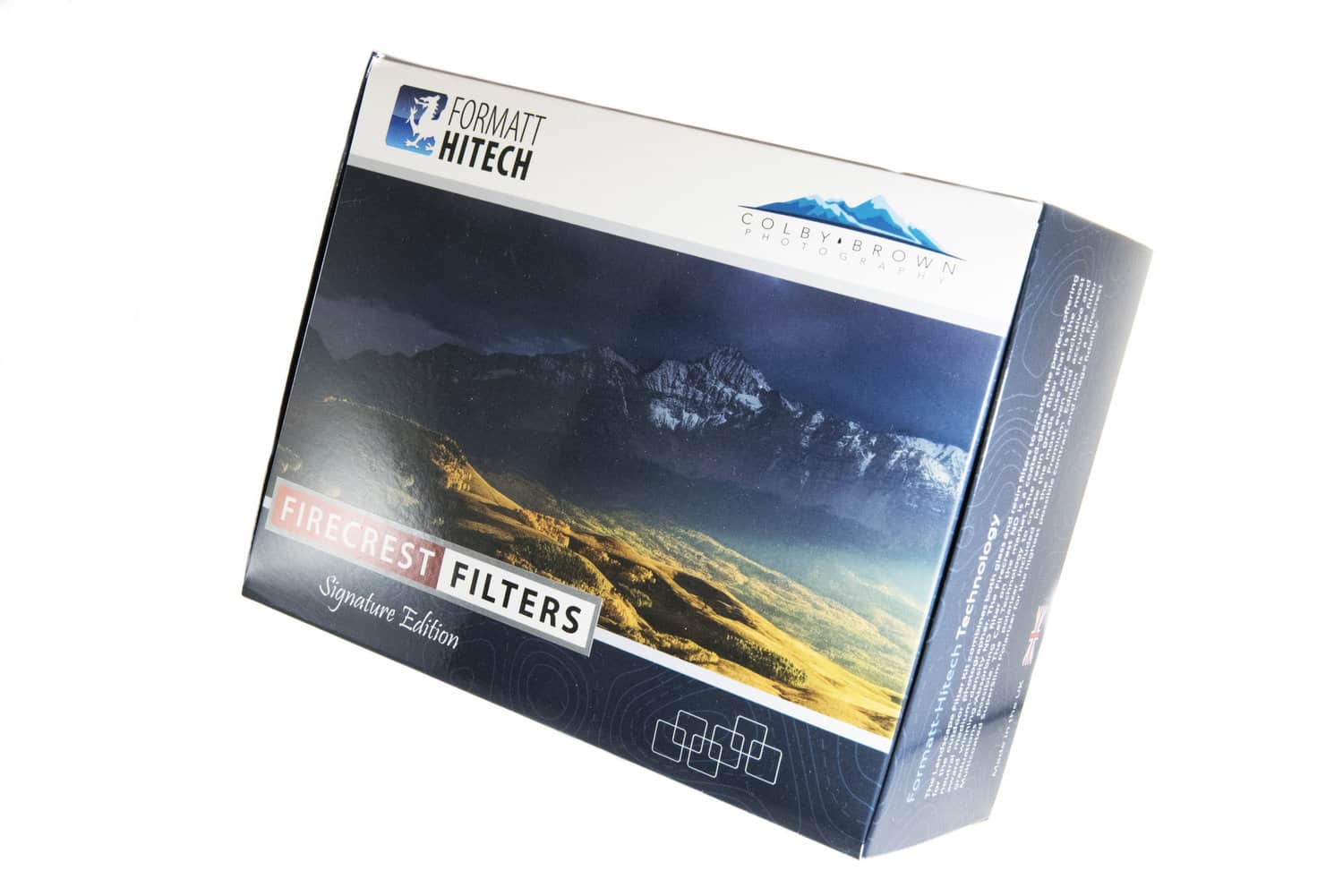
You can shop for the best landscape photography lenses, but even if you buy good glass, you should take it a step further to maximize the quality of the images that your lenses can capture.
You can do that with a good filter kit.
Like lenses, filter kits - the good ones, anyway - can be pricey, but they're worth it.
And for my money, it doesn't get much better than the Colby Brown Signature Edition Landscape Photography Filter Kit by Formatt-Hitech.
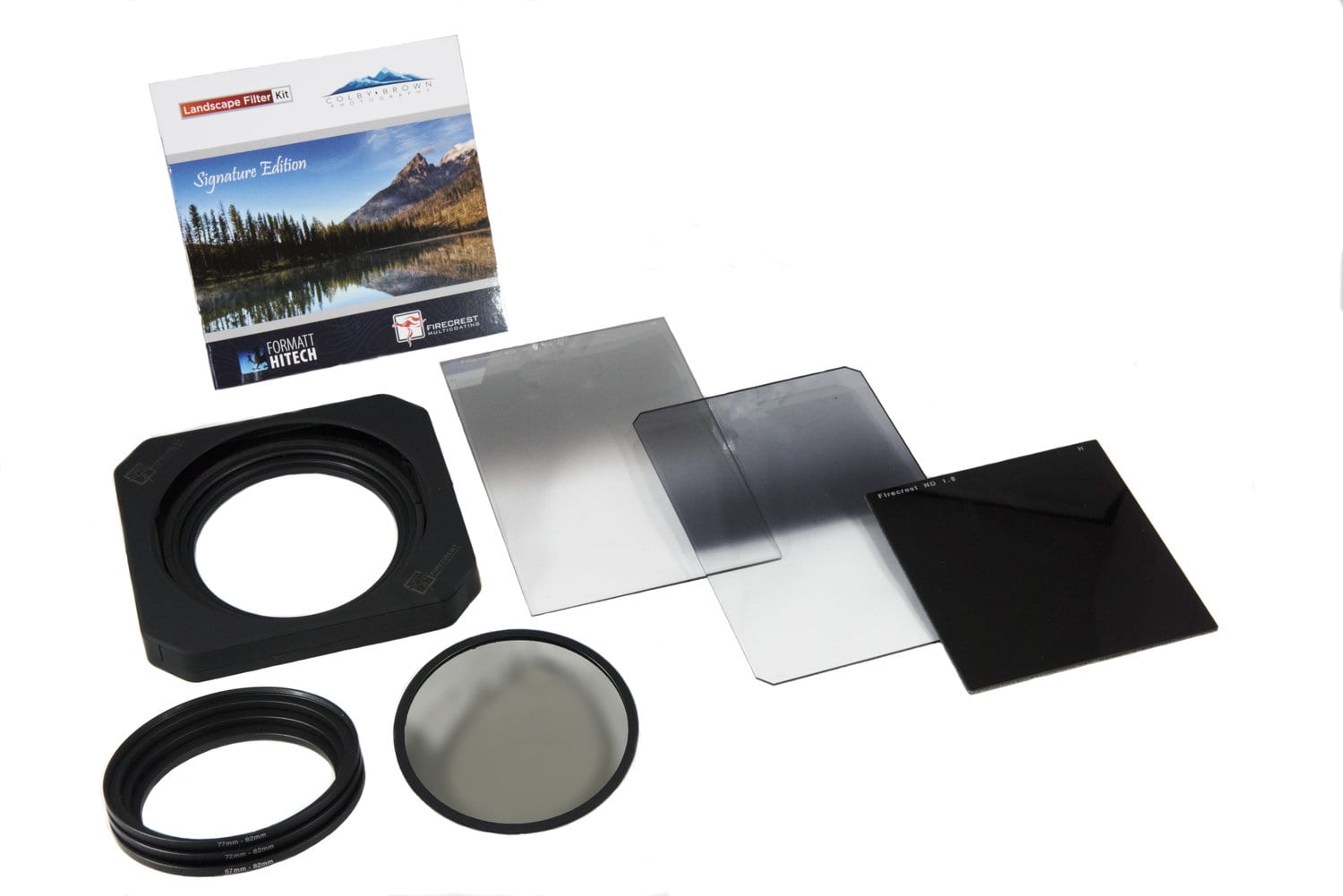
I know that Photoshop and Lightroom can do amazing things, but when it comes to achieving the look of a good ND filter, grad ND, or polarizer, using the actual thing is still a much better option.
There's a lot of reasons for that - the high-quality construction among them - but perhaps more importantly, this kit has everything you need to rock out awesome landscape photos:
- A Firecrest UltraSlim Polarizing Filter, which cuts down glare, reduces haze, and improves contrast in the sky.
- A Firecrest 6-Stop Neutral Density Filter for creating gorgeous daytime long exposures that accentuate the movement of clouds and water.
- A Firecrest 2-Stop Soft Edge Graduated Neutral Density Filter for darkening bright skies and evening out the dynamic range between the sky and the landscape.
- A Firecrest 2-Stop Reverse Graduated Neutral Density Filter for taking improved photos at sunrise and sunset.
In other words, no matter what sort of landscape you want to photograph, this kit has the filters you need!
You also get a 100mm filter holder, step rings and adaptor rings, pouches to carry your filters, and a Colby Brown booklet to get your creative juices flowing.
Not bad, right?
We Recommend
3 Lenses Every Photographer Should Have in Their Camera Bag
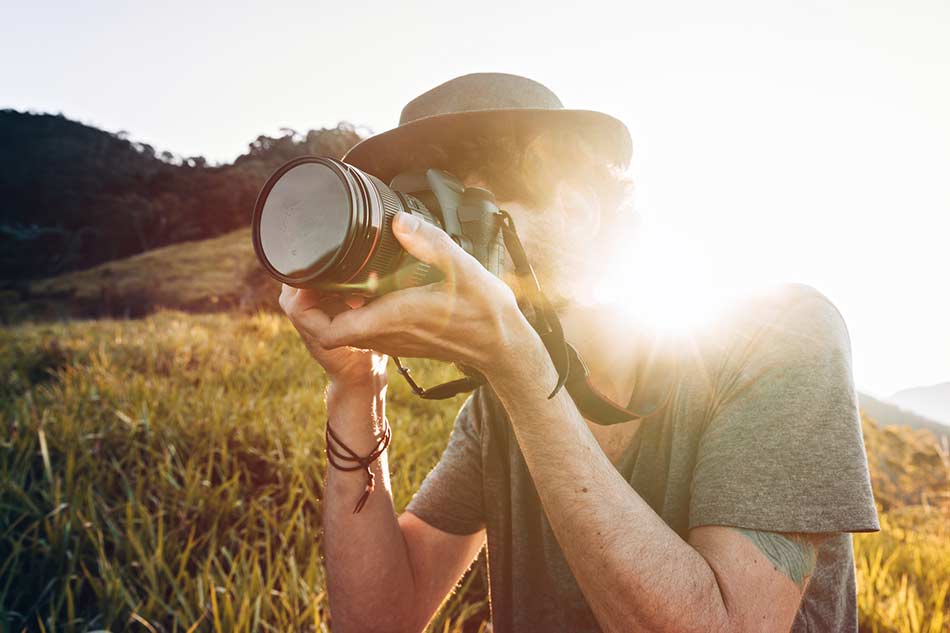 photo by cokada via iStock
photo by cokada via iStock
It’s not like there isn’t a giant selection of lenses for virtually every camera system on the market today. That’s just a perk of being a photographer in 2019!
But some lenses are more important to have than others…like the Nikon telephoto lens.
In this post, I outline three lenses every beginner photographer should have in their camera bag.
Let’s see if your kit ticks all the boxes!
Upgrade your lens collection without spending tons of money. Search for used lenses now.
photo by studioportosabbia via iStock
When you bought your camera, the chances are that it came with a standard zoom lens, like an 18-55mm kit lens.
These lenses aren’t usually dripping with features or build quality, but they’re a good starting point for beginners because they come with the camera, thus you can avoid the expense of buying a lens, at least initially.
The zoom range is sufficient for experimenting with everything from wide-angle landscapes to close-up portraits, so it’s nice for getting your feet wet with varying types of photography.
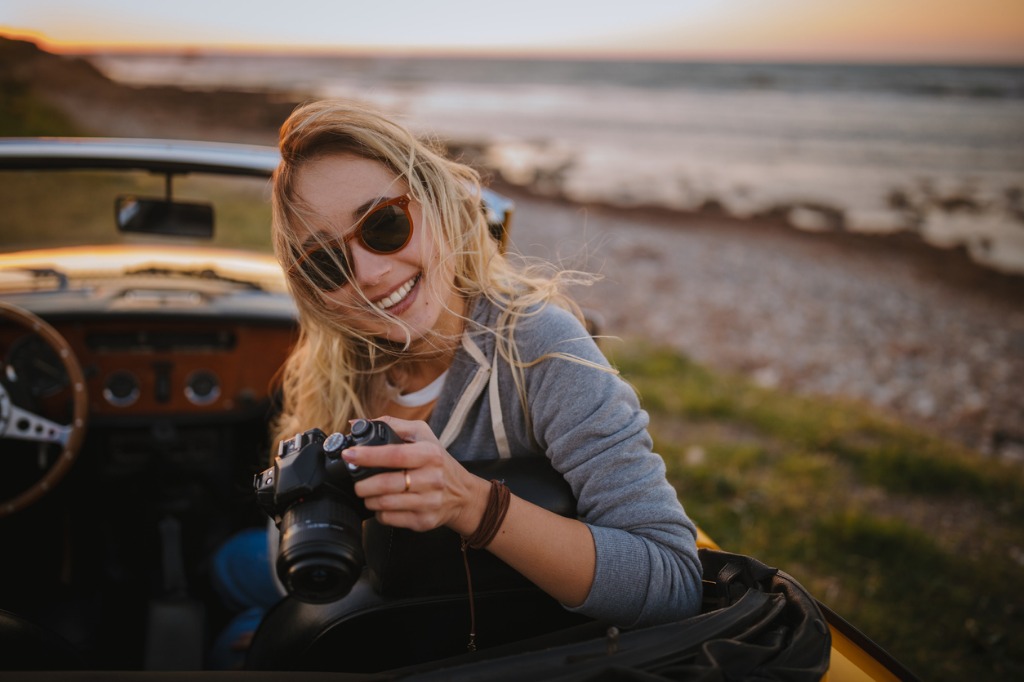
photo by wundervisuals via iStock
Likewise, these kit lenses are good all-around lenses, so when you’re traveling, you can use just this one lens to capture photos.
The downside of kit lenses is that they typically do not have good low-light performance, thanks to a maximum aperture that might only be in the range of f/3.5-5.6.
That means that if you want better performance in low-light situations, you’ll need to upgrade.
Lenses Every Photographer Should Have: A Good Prime Lens
photo by amesy via iStock
Unlike zooms, prime lenses have a fixed focal length. Common focal lengths for prime lenses include 24mm, 35mm, 50mm, and 85mm, though there are a plethora of other options available.
What’s nice about prime lenses is that they are ultimately sharp. That’s thanks to their construction, which includes far fewer lens elements than a zoom lens, and the fewer elements light has to pass through, the sharper the resulting images will be.
Many prime lenses also have huge maximum apertures, like f/1.2, f/1.4, and f/1.8. Lenses with f/1.2 and f/1.4 apertures are often quite spendy - unless you buy one used - but there are plenty of f/1.8 lenses out there that are quite affordable, even brand new.
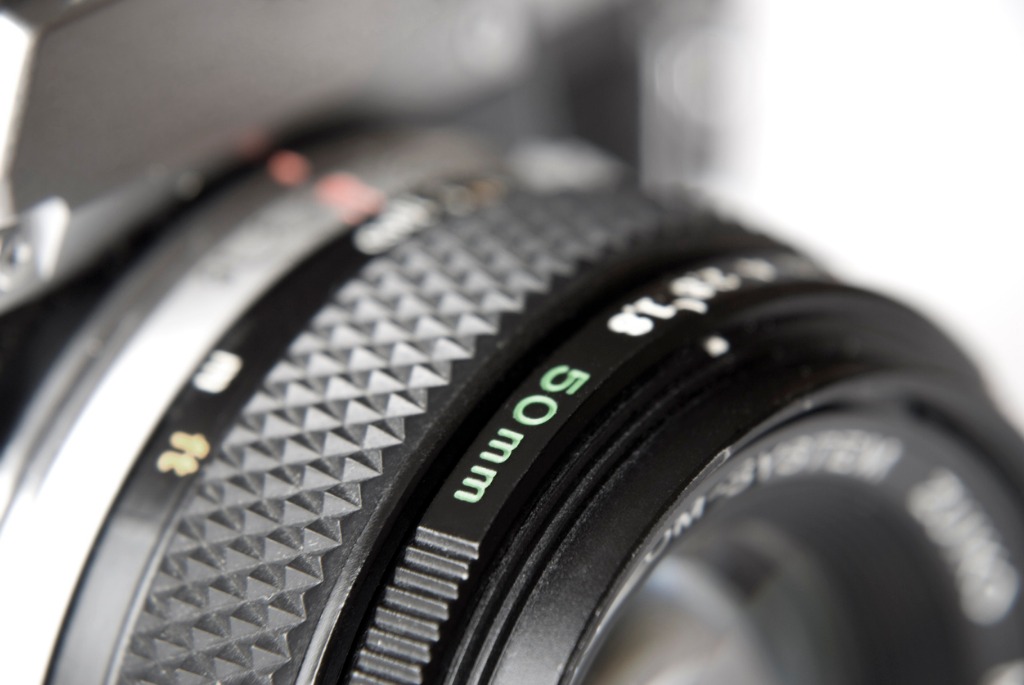
photo by Lusky via iStock
Personally, I don’t think there’s a better beginner photography lens than a 50mm f/1.8.
It’s a versatile focal length that can be used for portraits, landscapes, street photography, and just about everything in between. Many 50mm f/1.8 lenses are great for video, and if you really want to get creative you can often reverse-mount the lens and use it for macro work as well.
That’s why these lenses are so great - their sheer versatility allows you to try new things in photography and expand your skill set.
What’s not to like about that?!
Ready to add a 50mm lens to your camera bag? Find a 50mm prime that works with your camera.
Lenses Every Photographer Should Have: A Telephoto Zoom
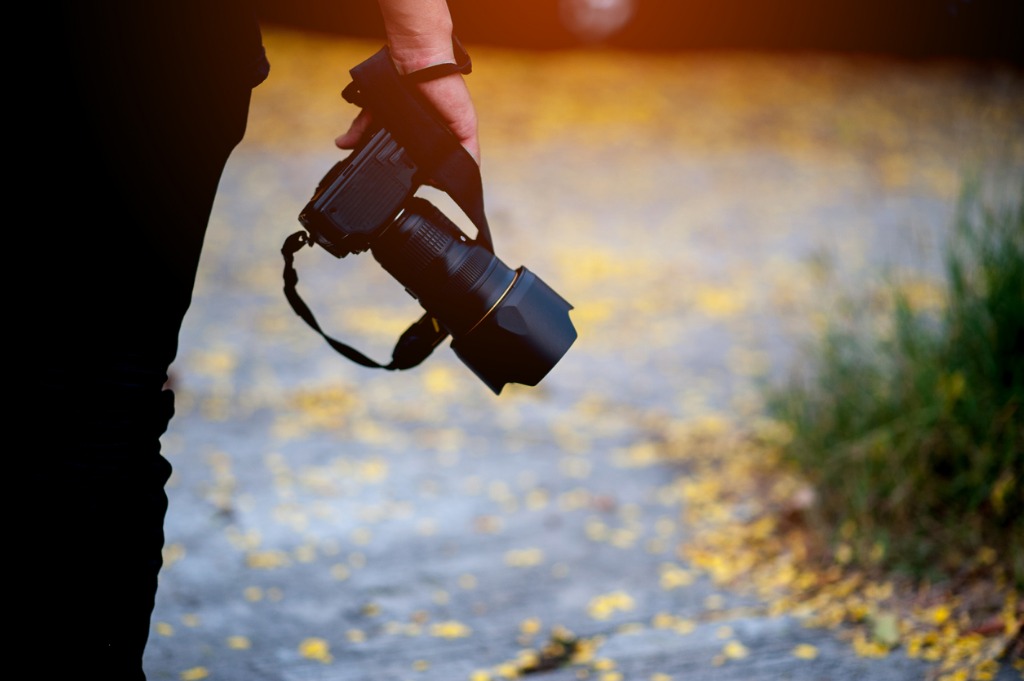
photo by PATCHARIN SAENLAKON via iStock
As your skills advance and you need to add yet another lens to your kit, a telephoto zoom is the next logical choice.
A telephoto zoom extends your abilities as a photographer because it picks up where a standard zoom leaves off.
With the extreme reach of a telephoto zoom lens, you can get closer to the action without having to physically move closer. That’s advantageous for everything from photographing wildlife to sporting events.
Many telephoto zooms are hugely expensive, so budget-minded photographers should opt for a budget-friendly telephoto zoom like a 55-250mm lens or perhaps a 70-300mm lens.
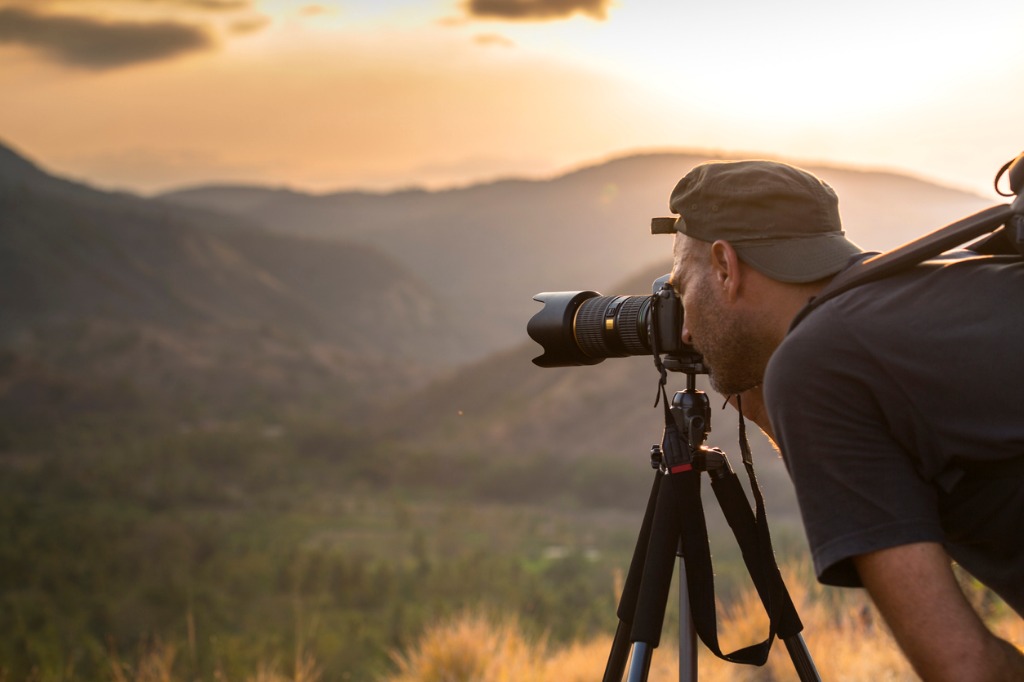
photo by joakimbkk via iStock
Many different manufacturers make zooms like these that have a massive focal length range. Don’t expect superb optical quality, though.
Budget telephoto zooms are not going to match a prime lens in the sharpness department, that’s for sure. Having said that, many budget zooms offer perfectly fine performance for the money.
Regardless of what lenses you elect to add to your kit, do your due diligence, read reviews from buyers, and only buy when you’re sure you’ve got the best lens for you nailed down.
The lenses you use are the most important gear in your bag, so the more time you spend researching and learning about possible lenses, the better off you’ll be.
We Recommend
3 Must-Have Portrait Lenses for Crop Sensor Cameras
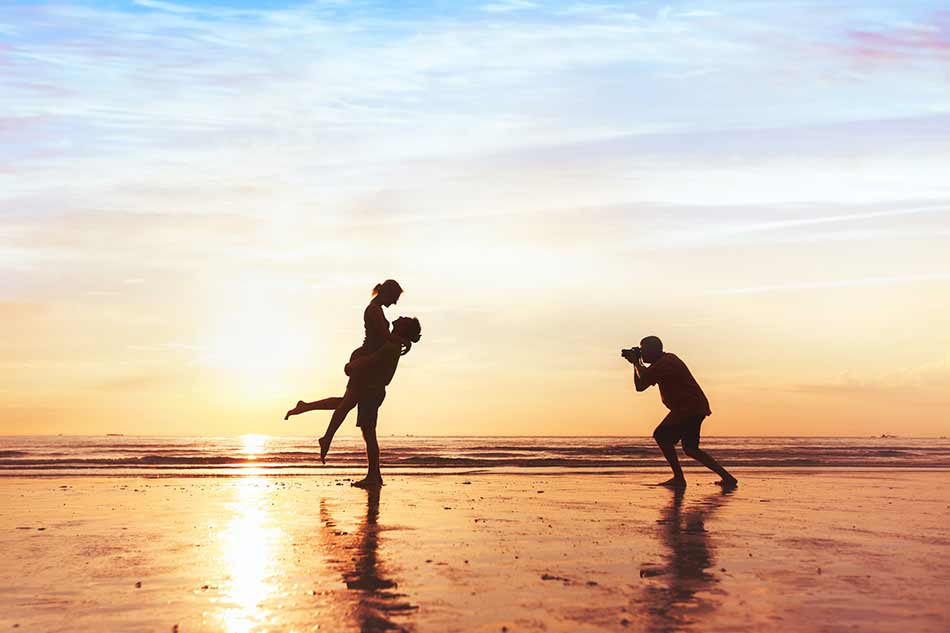
If you aren't a professional photographer, the chances are that you have a crop sensor camera.
That's not a bad thing - it just means you have to approach taking portraits a little differently.
One of those differences is in the lenses that you use.
Some lenses are designed specifically for full frame sensor cameras. That means you need to find glass that works well with a smaller sensor.
In this guide, I offer up a few suggestions for a good portrait lens for crop sensor cameras.
Best Portrait Lens for Crop Sensor: 90mm
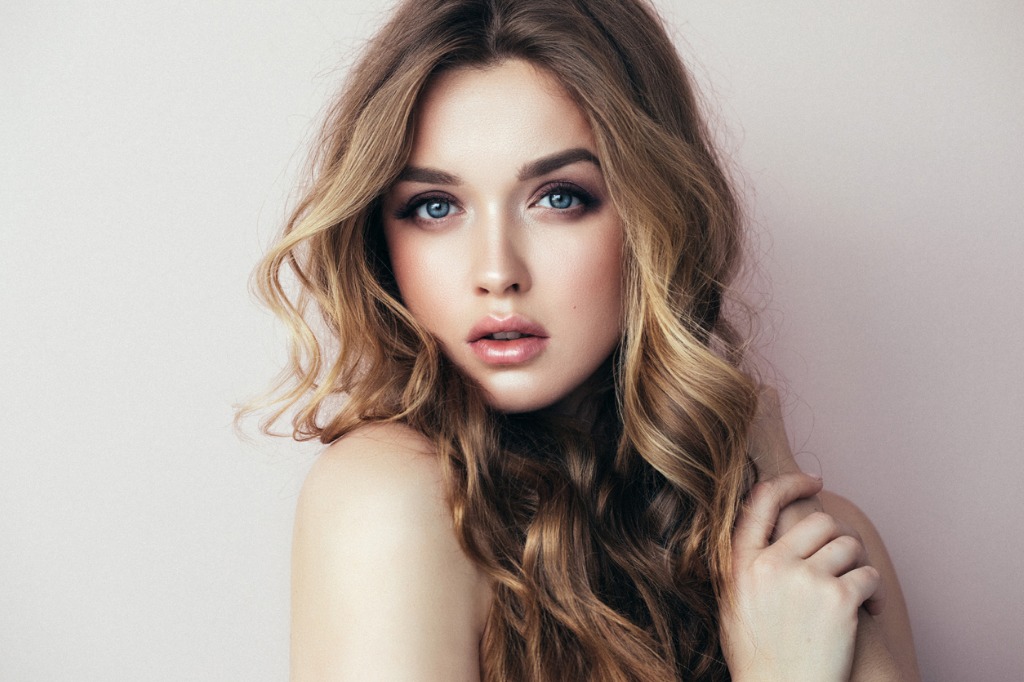
I've talked about the virtues of prime lenses before, but as a quick recap, prime lenses tend to be less expensive, produce sharp images, and have very large apertures.
Naturally, getting sharp images without spending a ton of money is a great advantage.
And with a large aperture, you can easily blur the background in portraits (and shoot low-light portraits without a flash!).
On a crop sensor camera body, a 90mm lens has another benefit - gorgeous compression.
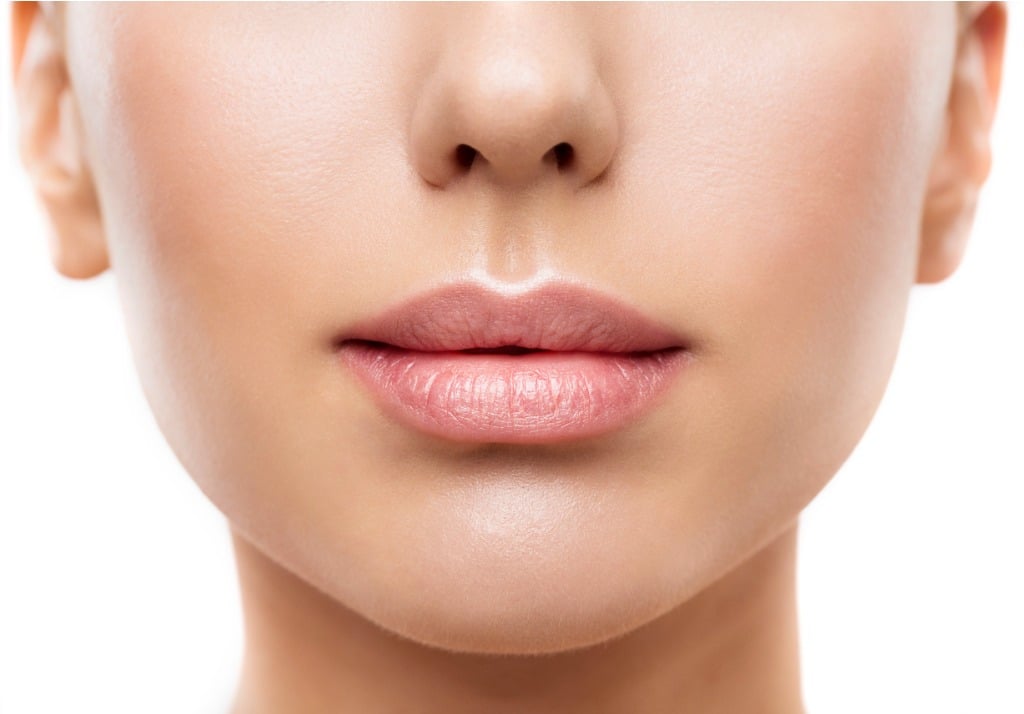
Depending on the crop factor - that is, how the size of the sensor impacts the effective focal length of the lens - a 90mm lens will behave more like a telephoto lens (135mm on a Canon camera and 144mm on a Nikon).
At that effective focal length, the resulting portraits will have nice compression that's very flattering on the subject - no big foreheads or noses here!
Additionally, many 90mm lenses have minimum focusing distances of less than one foot, which means you can get up close and take detailed shots of the eyes or lips, for example.
Editor's Tip: Fill out your kit with top-notch prime lenses. Find out which prime lenses every photographer needs.
Suggested Focal Length for Portraits on a Crop Sensor: 24-70mm
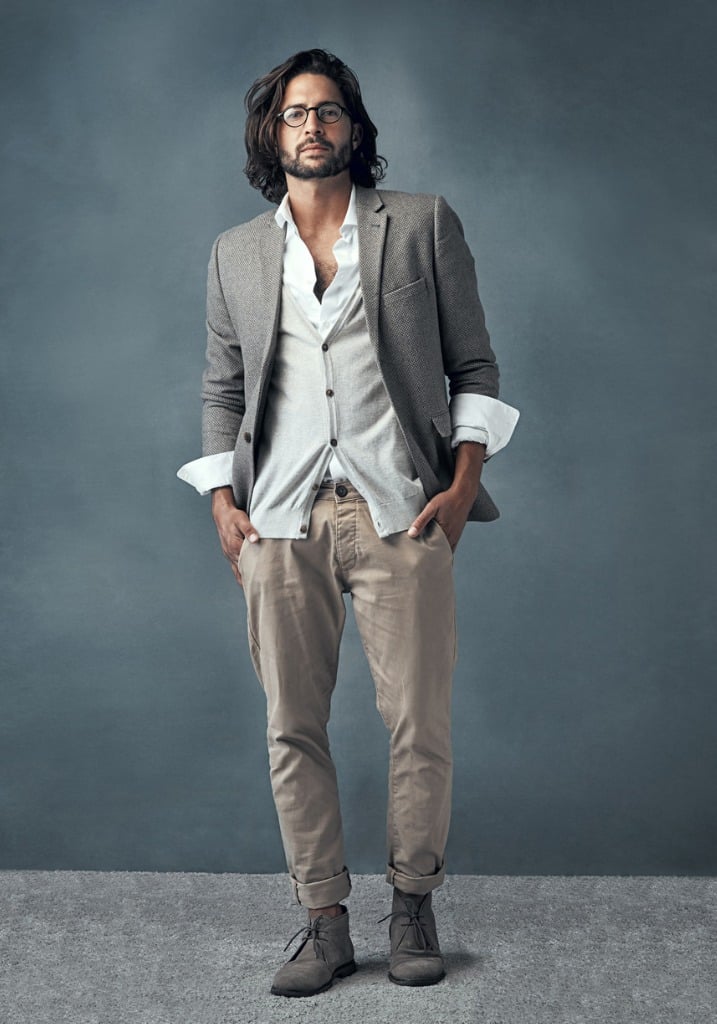
The great thing about a zoom lens like a 24-70mm is that it gives you incredible versatility in terms of focal length.
On the wide end, you can open up to 24mm and get full-body or half-body portraits, environmental portraits, and even casual street photography, too.
On the narrow end, 70mm gets you in closer to the subject for things like tighter headshots.

On a crop sensor camera, a 24-70mm lens will act like a 36-105mm lens on a Canon camera and 38-112mm on a Nikon camera.
That means you get a little more reach on the telephoto end, which as noted above, gives you more compression for flattering facial features.
Having a little more focal length also allows you to step back from the subject just a little bit, and with that extra room, the subject is more likely to feel a little more comfortable in front of the camera.
Learn More:
An Out-of-the-Box Portrait Lens for Crop Sensor Camera: 70-200mm
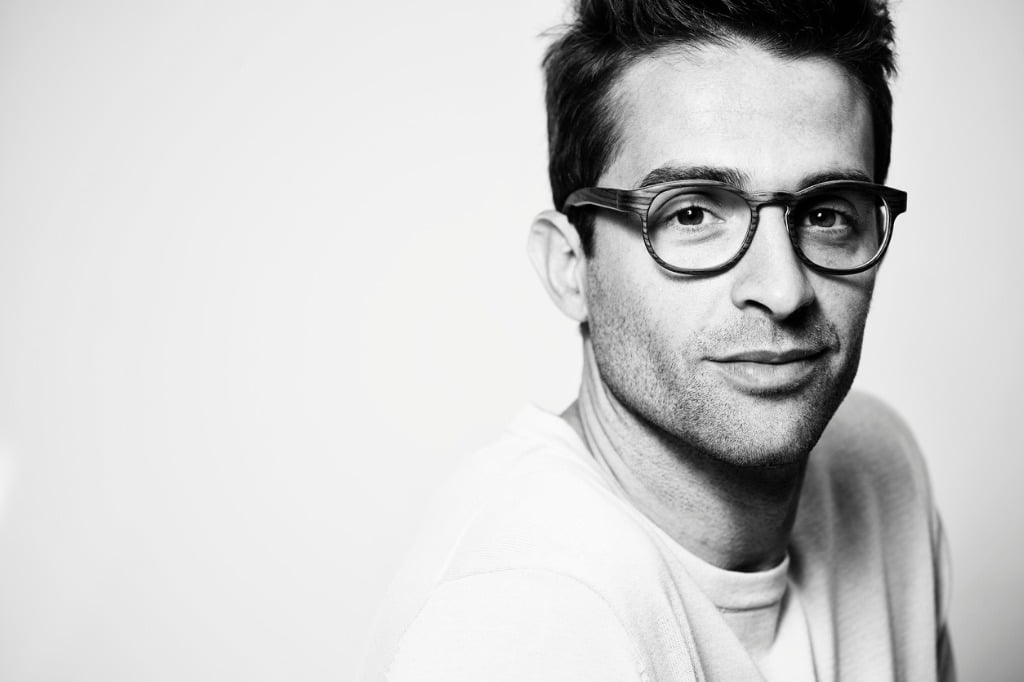
I would assume that most portrait photographers don't typically use a 70-200mm lens for portraits, especially with a crop sensor camera.
On a Canon camera, this lens has an effective focal length of 105-300mm and on a Nikon camera, it's effective focal length is 112-320mm.
As discussed above, these greater effective focal lengths give you excellent compression - so much so that facial features in your portraits look much more true-to-life.
Additionally, the longer focal length will help minimize the depth of field, which helps set your subject apart from the background.
This lens is obviously incredibly versatile, too, which is a big part of the portrait photography game.
When considering the best portrait lens for crop sensor cameras, you want lenses that give you the ability to create different types of shots, and this lens (as well as the previous two) will certainly do that.
Editor's Tip: Learn how to stretch your lens budget further with these tips for finding budget lenses.
We Recommend
4 Beginner Photography Questions You Should Stop Asking
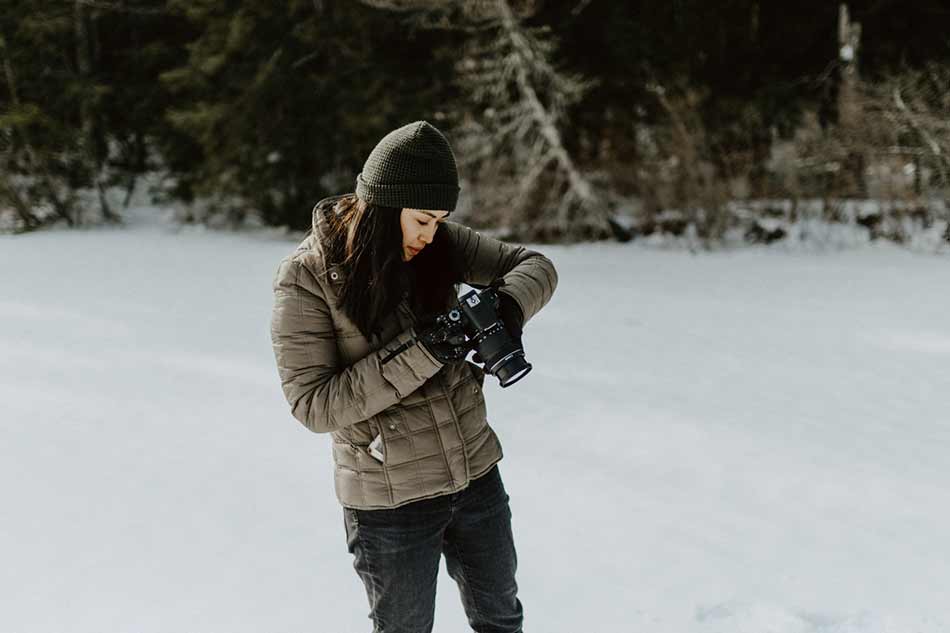
Photo by Kelly Sikkema on Unsplash
If you’re new to the photography game, it can be overwhelming. You’re probably stressed about trying to start making money, or if it’s a hobby then you’re stressed about being able to see out your artistic vision.
But, there are a few questions that every pro photographer is tired of hearing, and not because it’s annoying to answer them but because the answers to these questions really won’t help you to get better at being a photographer.
That being the case, here’s a few photography questions you should stop asking...
“I’m Taking a (Insert Type of Shot Here). What Exposure Settings Should I Use?”
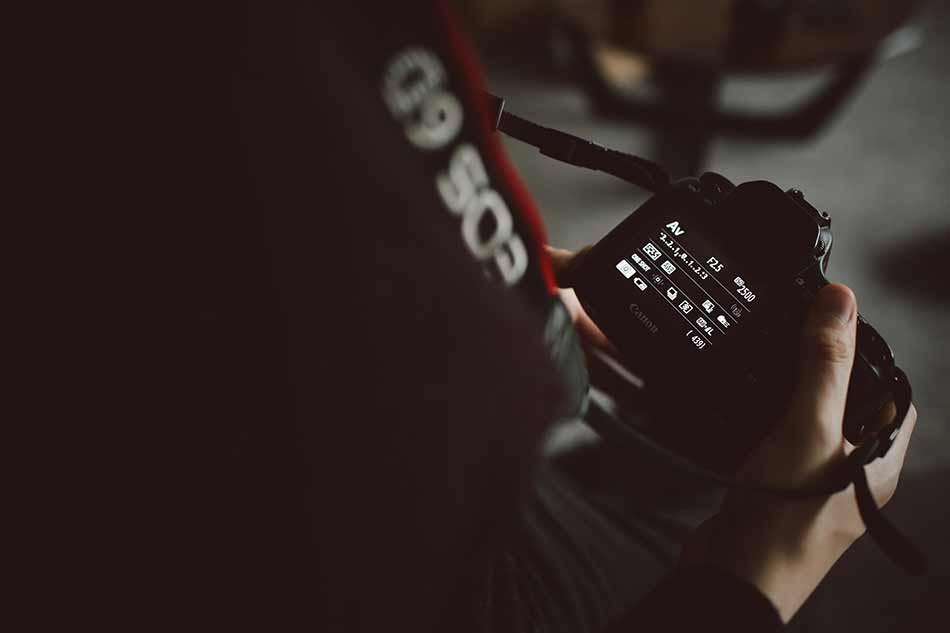
Photo by James Bold on Unsplash
People love asking this question because they assume you can use your exposure settings the same exact way for a particular shoot (like a portrait) everytime.
Your exposure settings are difficult to learn because they aren’t formulaic. If they were, photography would be rather boring, and these annoying beginner photography questions wouldn’t exist.
Sure, there are some general rules you can use to get a well-exposed photo - baseline suggestions for portrait photographyor landscape photography - but the specific settings you use are situation-specific. There’s simply no exact answer to this question, just suggestions!
The best way for you to learn what exposure settings you want to use for a particular shoot is to get out there and start experimenting.
If it’s really bothering you and you want to use another photographer’s exposure settings as a guide, try rephrasing the question. A simple, “I have my shutter speed at 1/125, do you think that’s appropriate for this shoot?” will get you so much farther.
If you’re not quite comfortable shooting in manual mode and making on-the-fly adjustments to aperture, shutter speed, and ISO, check out the video above by Sawyer Hartman.
“Do I Really Need Filters?”
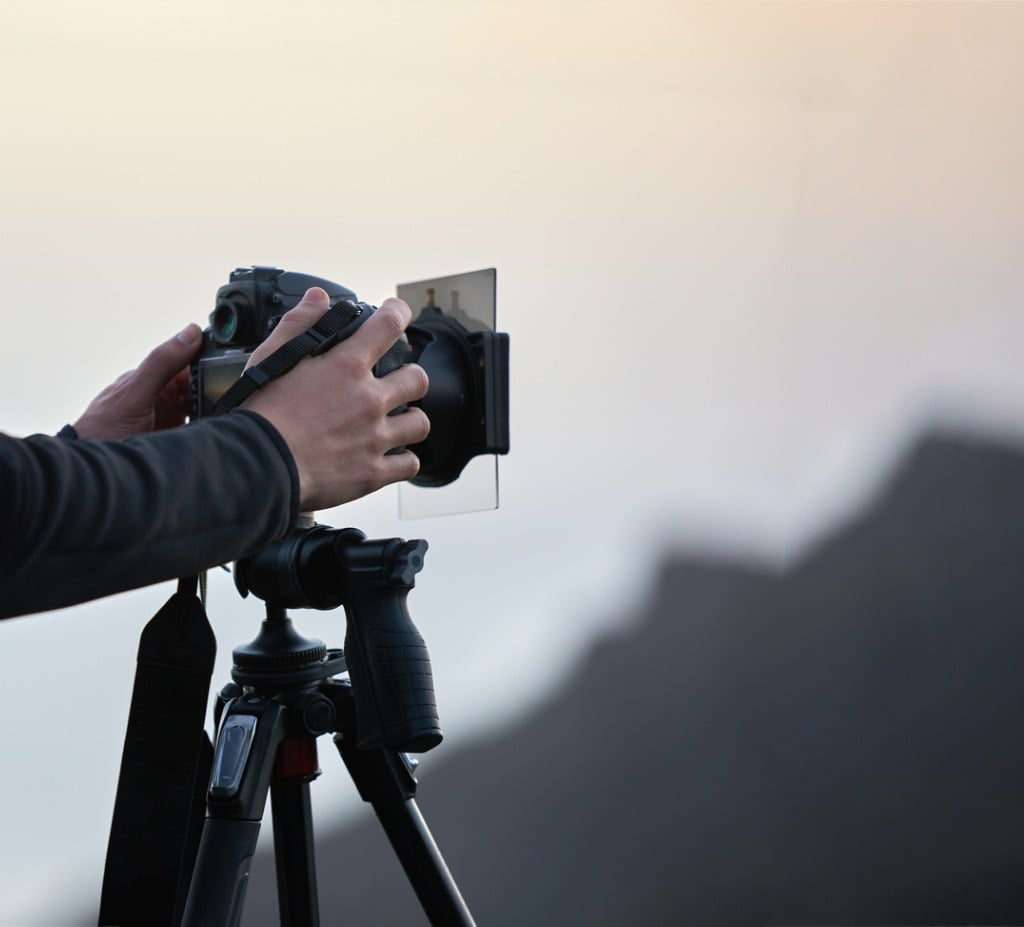 Photo by stock_colors via iStock
Photo by stock_colors via iStock
Yes, you need filters!
Though programs like Photoshop and Lightroom offer very powerful editing tools that can correct some of the issues that filters correct, the effect simply is not the same. You just get higher-quality results when using filters.
This is especially true with a circular polarizer, because despite the power behind today's editing programs, the effect a polarizer has simply cannot be replicated in post-processing.
When shopping for a filter system, it's important that you don't skimp and get bargain-basement filters. Cheap filters just don't work as well as quality filters, so investing in a quality system from the get-go is the way to do it.
I personally recommend Marumi's magnetic filter system because it's both well-made and easy to use.
Marumi uses the finest materials to ensure its products are durable and perform at their peak.
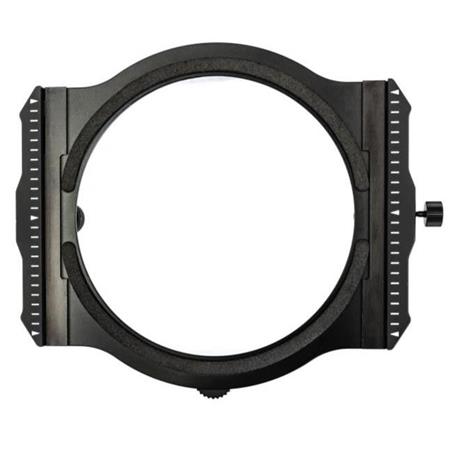
For example, the M100 filter holder shown above is made of lightweight aircraft aluminum that will stand the test of time.
The gaskets on the front of the holder make light leaks a thing of the past, while the magnetic attachment makes for easy changes of filters.
So, you can start with a solid ND filter for extending the shutter speed and getting dreamy motion in your photos, then swap it out for a graduated ND filter for managing the dynamic range of a beautiful landscape with a bright sky above it.
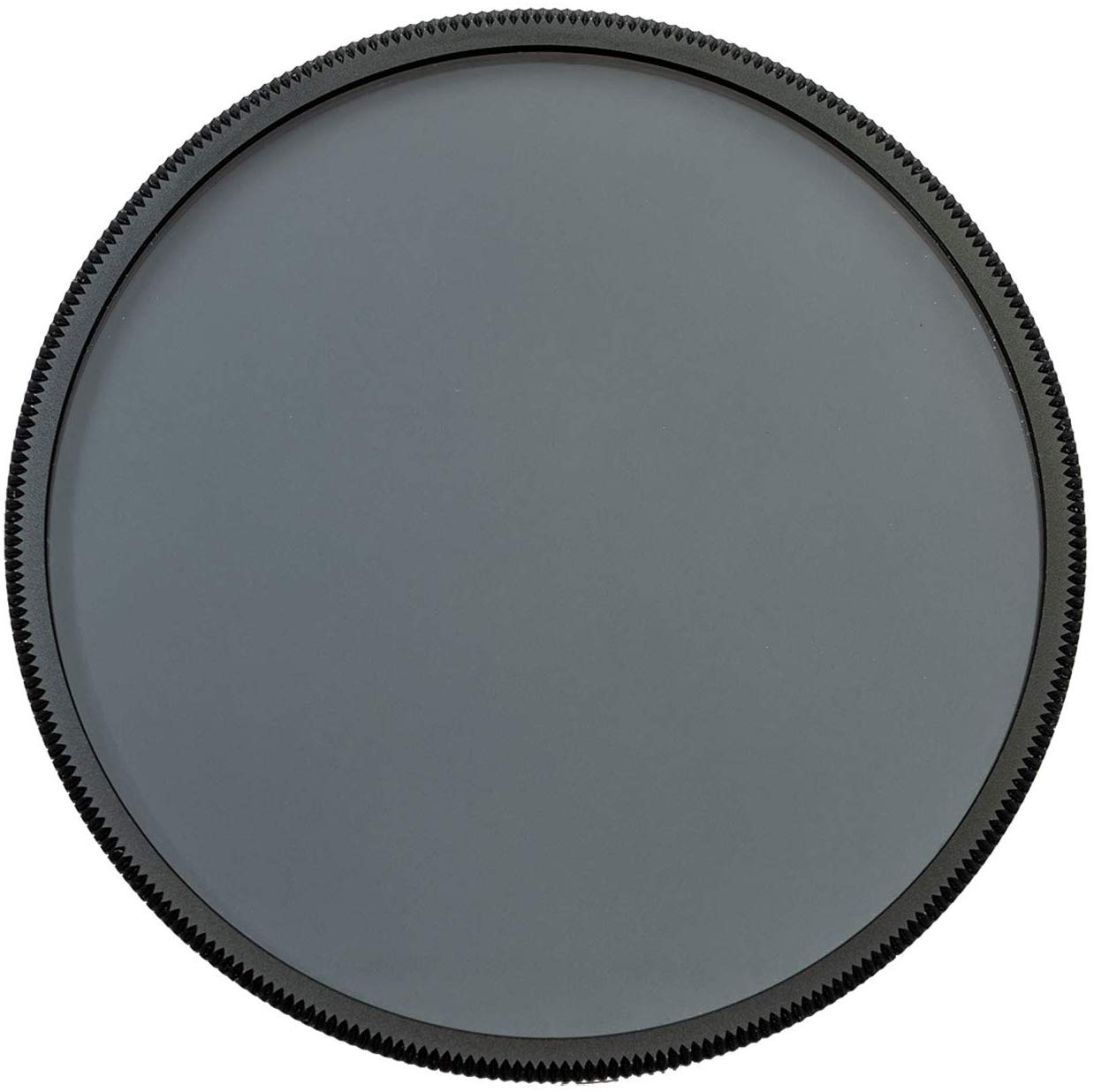
What's more, you can add a circular polarizer to the mix (shown above), which will reduce atmospheric haze, boost contrast in the sky, and minimize glare off non-metallic surfaces, ensuring that your landscape photos are beautifully rich in detail.
And since this filter system is magnetic, it couldn't be easier to use. You'll spend less time fiddling around with your gear and more time actually taking photos!
What's not to like about that?!
Learn More:
“What Lens Should I Buy to Take Photos Like You?”
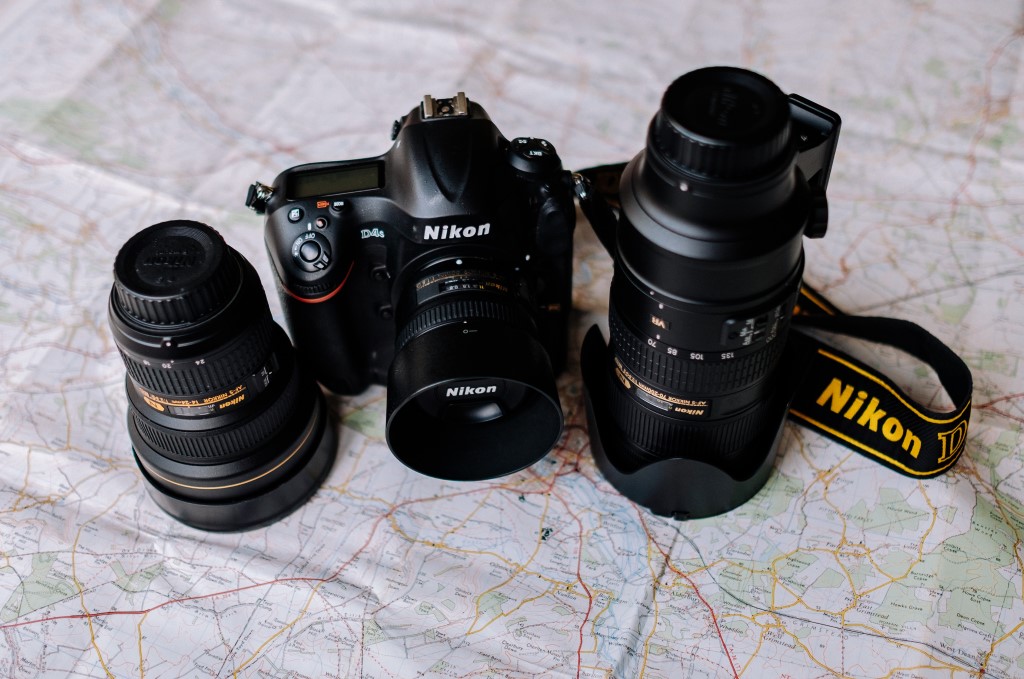
Photo by Annie Spratt on Unsplash
This question works hand-in-hand with my first question. Just because you’re using the same exposure settings as I am doesn’t mean our finished product will look identical. The same can be said for lenses - it’s not the lens that makes the photo, it’s the person using it!
Besides, beginner photography gear is cheaper than professional photography gear, and you can use this to your advantage.
I especially hate this question because it makes me feel guilty. I’ve been in the industry for many years and I’ve made enough money to buy some expensive lenses.
If I tell a beginning photographer what lens I’m using and they immediately begin looking it up on Amazon, I don’t want them to feel like they need to purchase that lens if they want to take photos like me.
Which leads me into the most annoying question I get from beginner photographers…
“How Much Was Your Gear?”
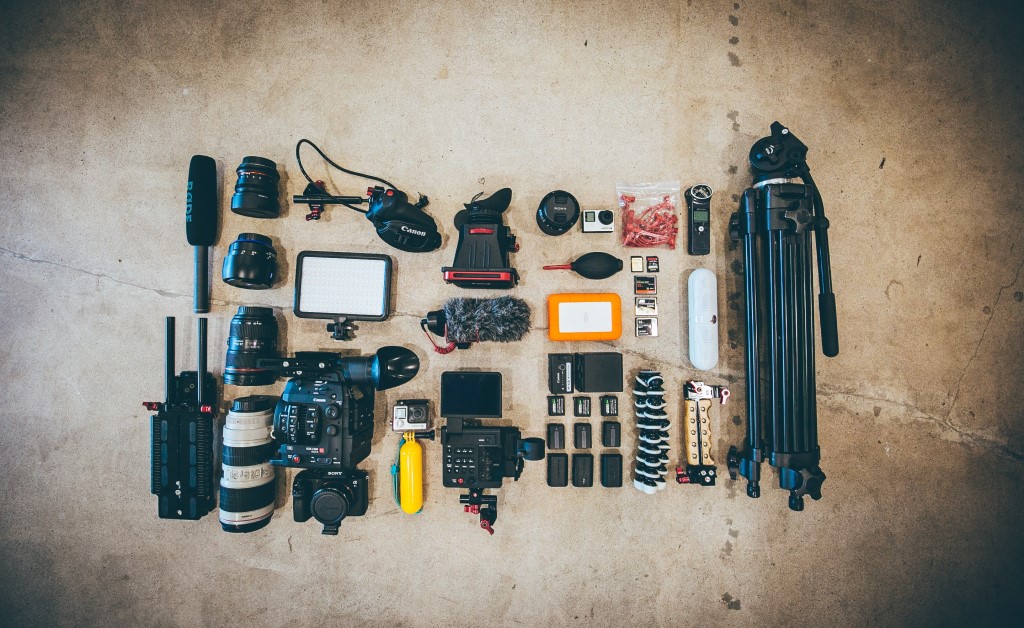
Photo by Jakob Owens on Unsplash
Yikes. This hypothetical question is making me cringe.
The answer is a lot. Some of my equipment is expensive. As any photographer who makes a living from photography will tell you, a good chunk of our salary gets turned back around and is put into our business.
If I’m not spending my client’s money on my mortgage, I’m probably saving it for a new lens!
But, in the same breath, I own some very cheap equipment. I have been in situations where I’ve DIYed a filter before and it worked out so well that I kept it.
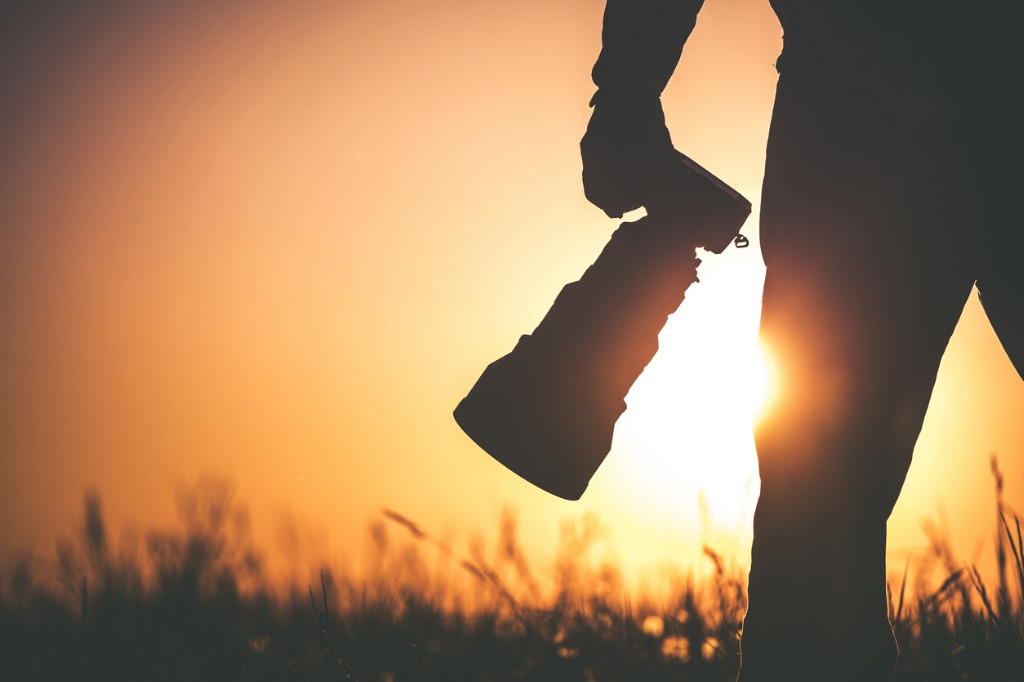
photo by welcomia via iStock
The reason I don’t think this question is helpful to beginning photographers is because usually the price of your equipment doesn’t tell you anything except how long that person has been doing photography professionally.
Unless they are bankrolled by a trust fund, many photographers take a fair portion of their expendable income for the year and save it to purchase new equipment. If I’ve been doing that for 15 years, then my equipment will be more expensive than someone who has only been doing it for 2.
Plus, the price of your equipment definitely does not mean you are a better or worse photographer.
This question is also misleading because I buy almost all of my lenses secondhand.
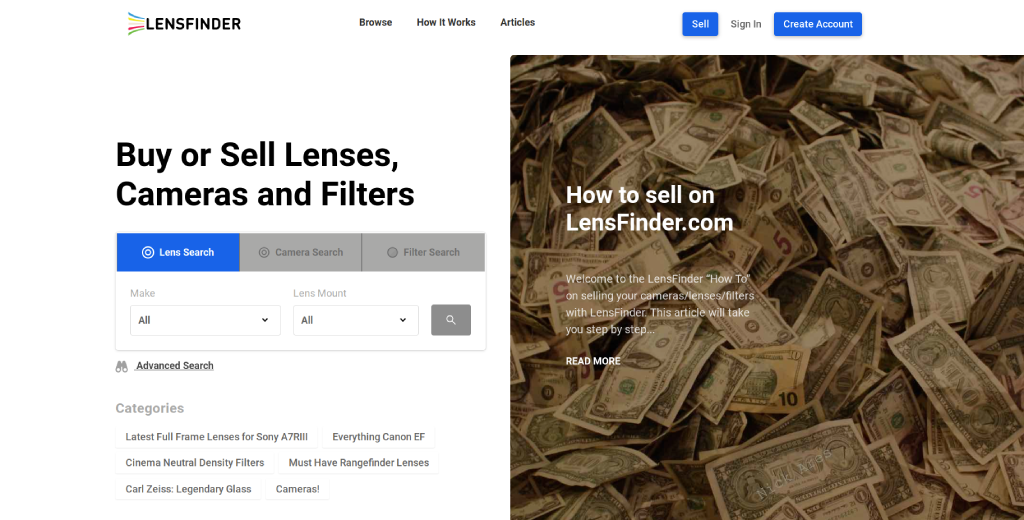
If you ask me how much my equipment costs, I will likely ignore the question and point you in the direction of a good secondhand shop, like Lensfinder.
Beginner photographers can save so much money by buying their equipment secondhand, yet most beginner photographers I know don’t take advantage of it.
While a kit lens will work for you for a while, eventually you will need to upgrade.
Lensfinder is a great starting point because it’s a community of photographers selling their old equipment, so all of your photography questions can be answered by the seller, unlike other websites like Amazon.
Stop googling, “how to get better at photography,” and start by saving some cash and buying one or two lenses to practice with!
Learn More:
We Recommend
4 Prime Lenses You Should Own
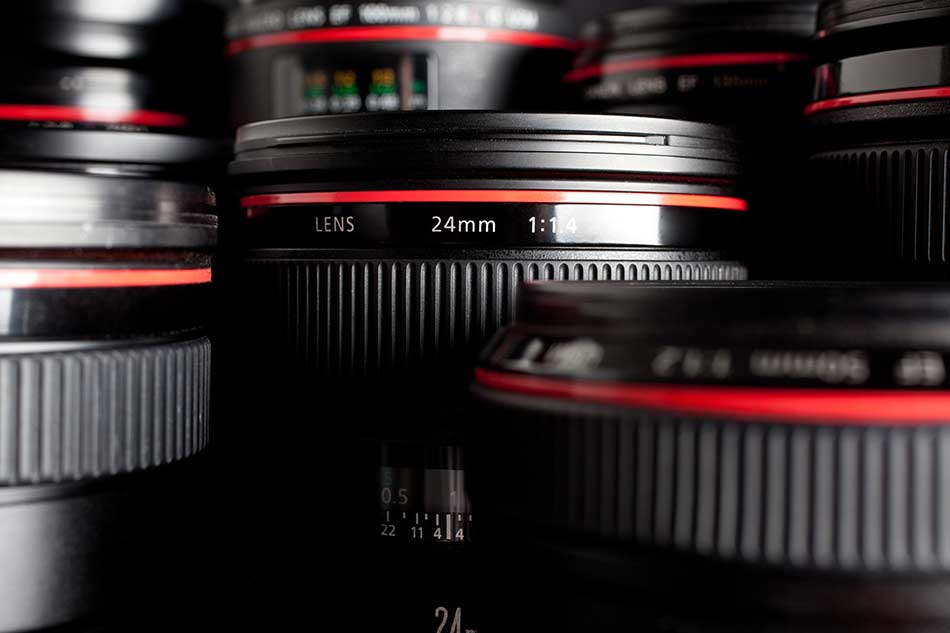
Prime Lens
If you're in the market for a new camera lens, you're in luck...
There are more lenses - and more good lenses available today than ever before.
The problem, of course, is figuring out what lens to buy for your camera. There is a great article about Nikon 50mm 1.8 lens, on our website PhotographyTalk.com, which is first auto-focus lens by Nikon.
Prime lenses are an excellent choice for many reasons, not the least of which is that they offer excellent sharpness and low-light performance.
Here's a quick guide to four primes lenses you should own.
What Lens to Buy: 24mm Lens
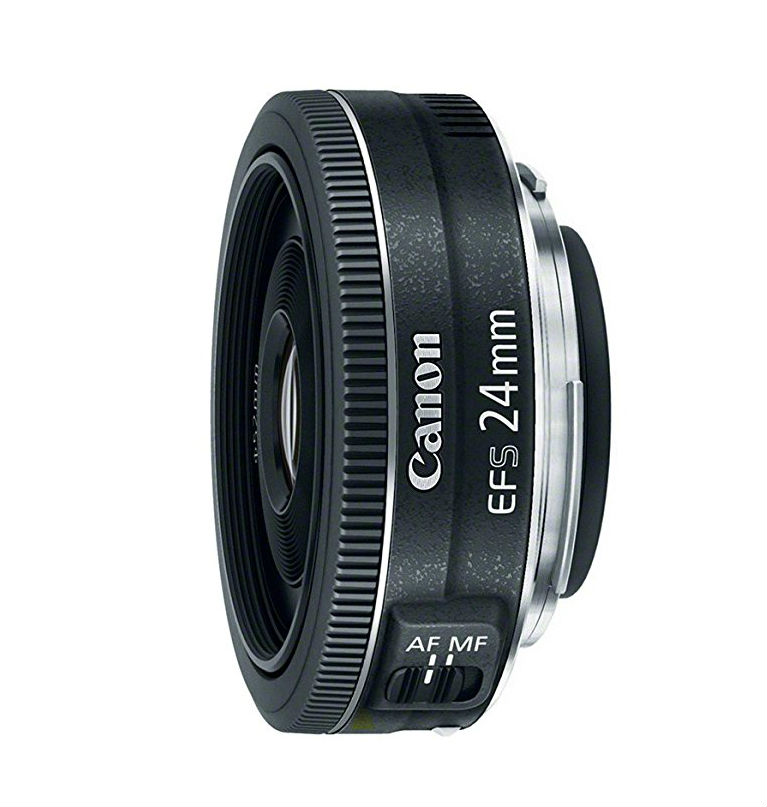
If you shoot a lot of landscapes, a 24mm prime lens is an excellent choice.
Not only do these lenses give you a wide-angle view of the landscape, thus allowing you to capture more of the scene in your shot, but they have top-notch optics, too.
Prime lenses typically have great glass and have fewer elements in the lens barrel than a zoom lens.
That translates to clearer, sharper images from corner to corner, so you can see the beauty of the landscape in gorgeous detail.
But 24mm lenses aren't just for photographing landscapes during the day.
Since they have large maximum apertures, their low-light performance is on point.
That's advantageous for photographing landscapes at dawn or dusk, and even for astrophotography as well.
The wide-angle view of a 24mm lens is also advantageous for other photography pursuits, including architecture, wedding and event photography, street photography, and even group portraits. That versatility is just one of the reasons why you need a 24mm lens.
See a 24mm lens in action in the video above by Christopher Frost Photography.
Get Creative With a 35mm Lens
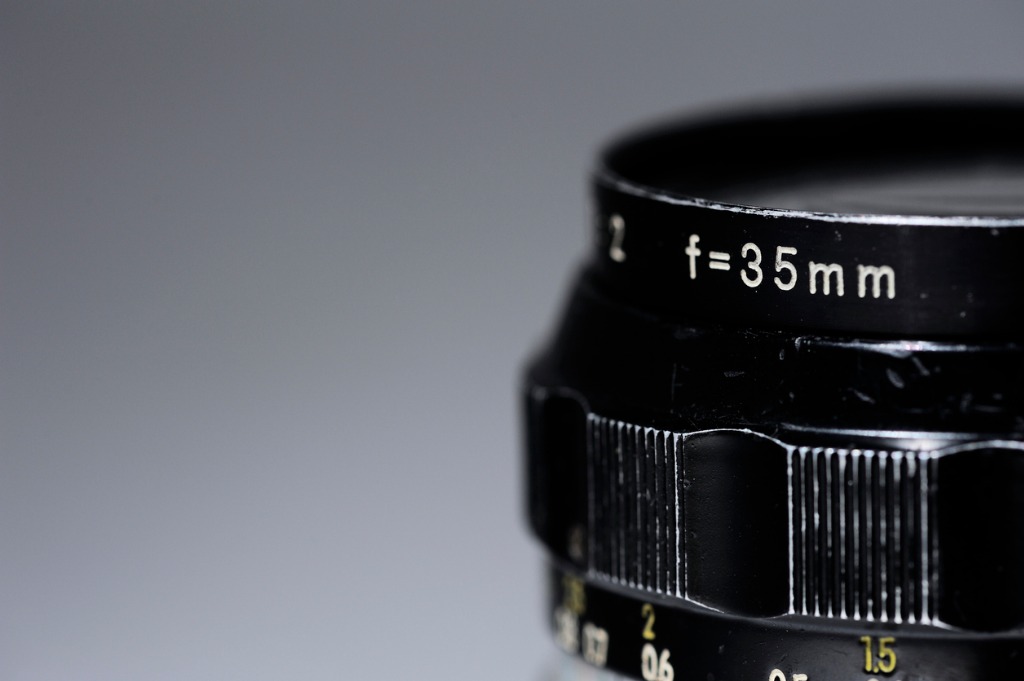
One of the top reasons why you need a 35mm lens is that perhaps more than any other prime lens, a 35mm helps you be much more creative.
Like the 50mm lens discussed below, 35mm lenses are incredibly versatile and allow you to photograph virtually any subject.
So, rather than getting stuck in a rut photographing the same thing over and over, a 35mm lens lets you cut loose and try all manner and type of photography.
These lenses tend to have a small form factor, so they're easy to use, and though higher-end models can be a little heavy, they are nowhere near as bulky and heavy as a big zoom lens.
Without much weight to carry around, that makes these lenses perfect all-around lenses for everyday shooting.
A 35mm lens also has the advantage of being familiar...
That's because 35mm is the focal length that most closely resembles how we see the world with our own eyes.
That means that when you take photos of people, cars, animals, buildings, landscapes, and so forth, there's a familiarity about how the images look.
If you shoot with a 35mm lens, it's also good for videography. The large apertures that many 35mm lenses have help you create gorgeously smooth video even at night. And those same large apertures facilitate beautiful background blur in portraits, too.
Find out more reasons why you need a 35mm lens in the video above by Julia Trotti.
The Best Prime Lens: 50mm
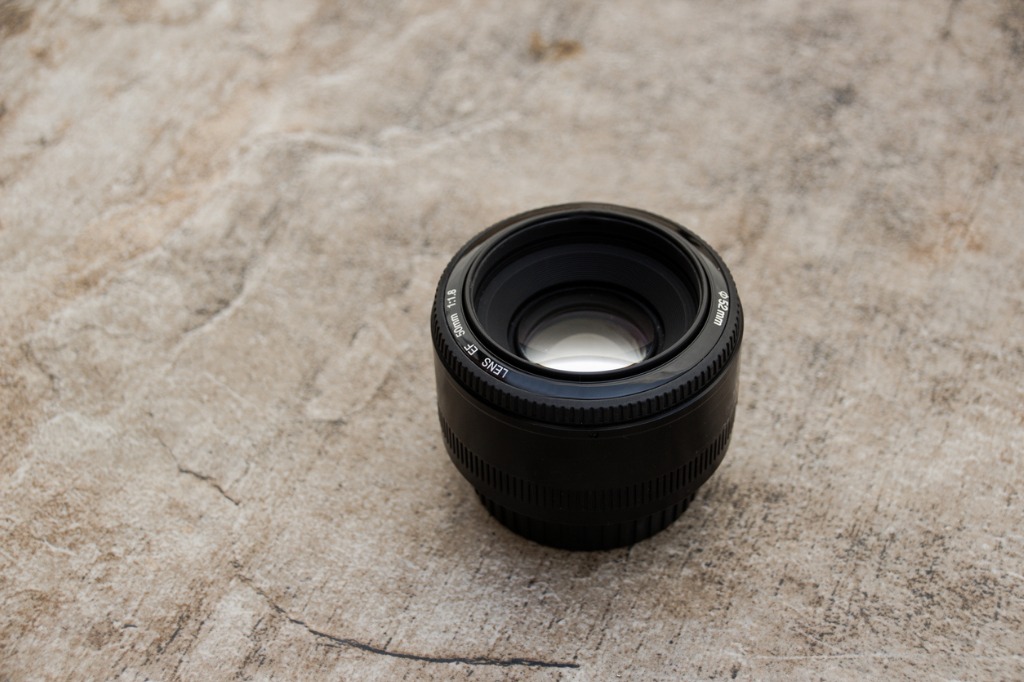
If you were to poll a bunch of photographers and ask them what's the first lens a beginner photographer should buy, a good portion of them will say a 50mm "nifty fifty" prime lens.
That's because there are plenty of benefits of the nifty fifty that will help you take better photos.
Like the 24mm prime discussed earlier, 50mm prime lenses have excellent sharpness and low-light performance.
On top of that, they are small and compact, making them an ideal everyday lens that's easy to use and easy to carry around.
Fifty millimeter lenses are also one of the most versatile lenses you can buy.
On a full frame camera, a 50mm focal length is ideal for everything from architecture to portraiture to landscapes. The standard field of view is pleasing to the eye as well.
On a crop sensor camera, a 50mm lens acts like a short telephoto lens, giving you more reach in the 80mm range.
That means you can take closely framed portraits from a greater distance, get photos of wildlife, take detail shots of landscapes, and so on.
Given their incredible versatility, these lenses make ideal travel photography lenses.
Get more insights on the virtues of the nifty fifty in the video above by DigitalRev TV.
Benefits of Using an 85mm Lens
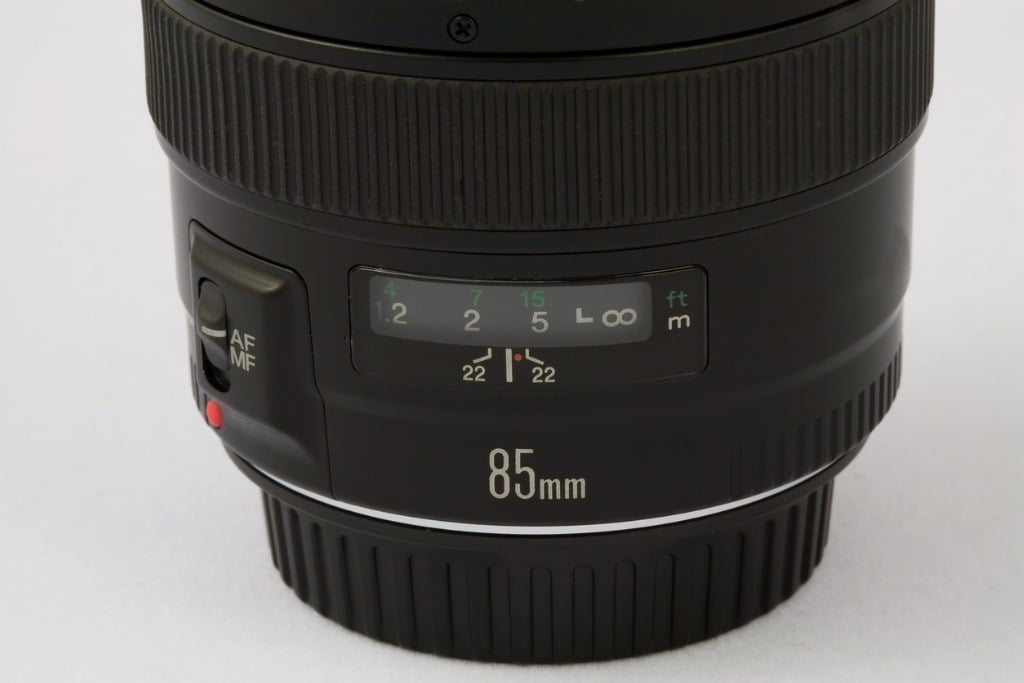
A final prime lens recommendation I'd make is the 85mm.
Though these lenses aren't as versatile as a 35mm or 50mm, if you take portraits, it's hard to find anything better.
The 85mm focal length is ideal for portraits for a variety of reasons.
First, this focal length allows you to fill the frame with your subject without being right up in their face. Often, that means that the subject will be more relaxed, which means a better-quality portrait.
Secondly, 85mm lenses produce glorious bokeh, giving your portraits beautifully blurred backgrounds that help set your portrait subject apart from the rest of the features in the image.
There is very little distortion with an 85mm lens as well, so your subject's facial features - particularly their forehead, nose, and chin, look natural. These areas can look a little large with shorter focal length lenses.
Lastly, this lens gets you into telephoto territory (it's about 130mm on a crop sensor camera) so you can use it for close-up portraits and then use it for action shots of athletes or to photograph wildlife.
That makes it yet another versatile, easy-to-use lens that should be in your camera bag.
See why an 85mm lens is ideal for portraits in the video above by Shutterbug.
We Recommend
4 Ways You Can Improve Your Photos This Weekend
 Photo by Thom Holmes on Unsplash
Photo by Thom Holmes on Unsplash
Improving your photography isn't something that has to be a long, drawn-out process.
Sure, time, patience, and lots of practice will certainly help, but that doesn't mean that there aren't quick and simple things you can do this weekend that will improve your ability to take a great photo.
Let's have a look at four ways you can improve your photography before the weekend is over.
Focus on Composition
 Image Credit: m-gucci via iStock
Image Credit: m-gucci via iStock
First and foremost, what sets professional photos apart from amateur photos is often an eye for composition.
The placement of the subject in the frame, having a strong subject to attract the viewer's eye, and understanding how to utilize tricks like leading lines to create depth in the shot will do tons of good for your photos.
Additionally, being aware of how changing the perspective from which you shoot impacts the look and feel of the image is important if you want to boost the quality of the photos you take.
So, this weekend, be purposeful about not taking photos from your eye level. Instead, get low-angle and high-angle shots that offer the viewer a different take on the subject.
You'll find that by practicing simple composition tips like these that you end up with more unique and dynamic photos.
Learn More:
Upgrade Your Lens
 Photo by ShareGrid on Unsplash
Photo by ShareGrid on Unsplash
One of the smartest things you can do as a photographer is invest in a high-quality lens.
Why?
More than any other piece of gear you have, your lens has the most responsibility for how an image looks.
Sure, your camera does a lot of work, but you can take better photos with an old or cheap camera paired with a really great lens than you can with a high-dollar camera and a cheap lens.
High-quality lenses have better optics, better construction, improved durability, better performance in low-light conditions, wider apertures, and the list goes on and on.
 Image Credit: stockvisual via iStock
Image Credit: stockvisual via iStock
If, for example, you're still rocking the kit lens that came with your camera - likely something along the lines of a 18-55mm f/3.5-5.6 - consider buying a 24-70mm f/4. Better still, try a 24-70mm f/2.8.
In either case, the wider maximum aperture enables you to get better shots in low-light situations. What's more, the wider aperture allows in so much more light that you can use faster shutter speeds. This means you can more readily freeze motion, even when the light isn't ideal, and you can shoot handheld with less worry of camera shake.
But don't buy a new lens - that will cost you an arm and a leg.
Instead, there are plenty of websites - Lensfinder, for example - where you can peruse used lenses and get great deals on high-quality glass that has a lot of life left in it.
The nice thing about sites like Lensfinder is that everything is self-contained - you can communicate with sellers right on the website, pay for your purchase, and even leave feedback once the transaction is complete.
And since Lensfinder is specifically for buying and selling used lenses, you don't have to sift through a million listings that have nothing to do with what you're looking for, as is often the case on eBay and Craigslist.
Buying used can save you a ton of money, too, so you might even be able to get a couple of used lenses (maybe a good zoom and a prime!) for what you'd pay for one brand-new lens.
If that doesn't sound like a good deal, I don't know what does!
Learn More:
- What to Consider When Buying a New Camera Lens
- The Best Camera Lens for Under $500 - and Why You Need One
Get a Polarizing Filter
 Photo by Carmine Savarese on Unsplash
Photo by Carmine Savarese on Unsplash
After you snag a great deal on a lens, you should get a high-quality lens filter to put on the end of it.
And of all the filters you can get, a polarizer is the best one, especially if you shoot landscapes.
In just one filter, you get all of these benefits:
- Reduced glare off of non-metallic surfaces like water
- Enhanced contrast in the sky with a deeper blue atmosphere and brighter white clouds
- Minimize atmospheric haze, so objects far away appear crisper and more defined

But like lenses, not all filters are made alike, so buying a cheap one won't do you any favors.
That doesn't mean that all high-quality filters are expensive - just consider Kenko Puro Polarizing Filters as a prime example.
These Japanese-made filters have an exclusively formulated multi-coating that resists water, dust, and oils. Not only does that mean a cleaner shot, but it also means less damage over time to the filter itself.
The filter shown above also has a SLIM ring for mounting to the lens, which has a minimized profile to prevent vignetting, even on wide-angle lenses.
 Image Credit: Dimitris66 via iStock
Image Credit: Dimitris66 via iStock
There's no reason to buy a better lens and put a bargain-basement filter on it - the poorly constructed glass of a bad filter will negate any gains you make with the better lens.
Instead, purchasing a top-of-the-line filter like a Kenko Puro Polarizer will allow you to reap the benefits of a meticulously designed and constructed filter.
As far as improving your photography in short order, it's tough to top what a good polarizer can do!
Editor's Tip: Get Kenko’s latest updates and access to promos for discounted gear. Click here to sign up.
Learn More:
- Beginner Photography Mistakes and Tricks for Avoiding Them
- A Step-By-Step Process for Improving Your Photos
Spend Time Thinking About Why You Like Certain Photos
 Image Credit: Bearinmind via iStock
Image Credit: Bearinmind via iStock
One of the easiest things you can do to help advance your photography is to spend some time looking at other people's photos.
And I don't just mean taking a cursory glance at them, either...
Instead, really focus on what it is about certain photos that you like. Is it the lighting? The colors? The subject matter?
Maybe you like how the photo was edited. Perhaps the perspective is what interests you.
The point is that by taking a deep dive into other people's images, a couple of things happen for you.
 Image Credit: PeopleImages via iStock
Image Credit: PeopleImages via iStock
First, you begin to develop your creative eye and notice things about photos that you might like to try or might make your photos look better.
Second, you develop a critical eye as well. In addition to discovering what you like, you'll also find plenty of things you don't like.
In the end, this will all help you grow as a photographer because you'll discover what you should and shouldn't do with your own photos.
Give these four things a shot this weekend. You might just find that it opens you up to all kinds of new creative photography possibilities!
Learn More:
We Recommend
5 Vintage Lenses You Can Use on Your DSLR
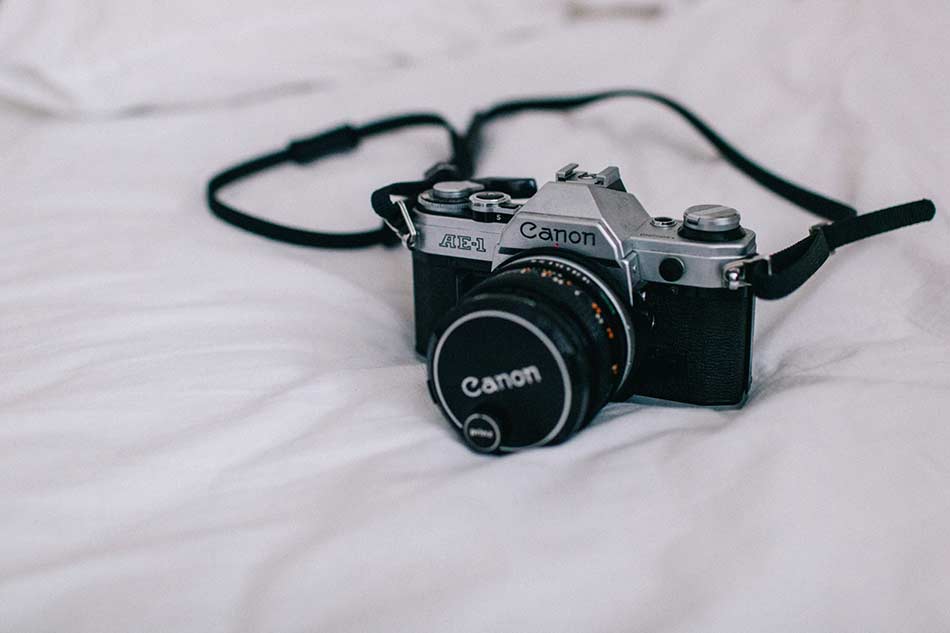
Photo by Caryle Barton on Unsplash
I love vintage lenses, and it’s my guess that you do too.
Vintage lenses add what no other piece of photography can to your photos. It adds nostalgia to them in a way that is both genuine and kitschy, depending upon how you shoot. Besides, there’s something so satisfying about a manual focus lens, isn’t there?
The issue, though is that when you go to buy a vintage lens you need to know exactly what you’re looking for because the vintage lenses that are still around on the market today are still around because they offer something exquisitely different than every other vintage lens.
Basically, if you don’t know what type of a vintage lens you’re looking for, you could accidentally end up buying something that 1) doesn’t work with your DSLR and 2) doesn’t work with the look you’re going for.
So, here are our 5 favorite vintage lenses that work with DSLRs.
Table of Contents
- Pentax 85mm f/1.8 Super Takumar
- MC Carl Zeiss Jena Pancolar 50mm f/1.8
- Minolta STF 135mm f/2.8 T45
- Super Takumar 135mm f/2.5
- Carl Zeiss Jena 20mm f/4 Flektogon
- Where to Buy the Best Vintage Lenses
Best Vintage Lenses: Pentax 85mm f/1.8 Super Takumar
What Mark Holtze covers in this video is what I love best about vintage lenses.
He says, in reference to the Pentax 85mm, “this thing is built to outlast me.”
And they just don’t make lenses like that anymore.
This Pentax lens is best known for taking sharp photos at wide apertures, beautiful bokeh and honeycomb-shaped highlights that most consider an issue, but I consider a nice bonus.
This lens was created from 1962 to 1971, and unlike a similar Pentax that was created around the same time, the 85mm f/1.9 Super Takumar has no radioactive components (although I’m a little daring and might shoot with it for the day regardless).
You can find one of these bad boys for somewhere between $200 and $300.
Vintage lens photography on this Pentax is relatively easy because it has an M42 lens mount, which means this lens can attach to 35mm cameras, mostly single-lens reflex models, without any hassle.
M42 lens mounts are also so popular that you can pick up a M42 adaptor for almost all DSLRs.
Here is a list of current cameras that will work with this Pentax lens and a M42 adaptor:
- Canon EF-mount
- Pentax K-mount
- Minolta/Sony A-mount
- Sony E-mount
- Samsung NX-mount
- Fujifilm X-mount
Best Vintage Lenses: MC Carl Zeiss Jena Pancolar 50mm f/1.8
Carlosdisogra [CC BY-SA 4.0 (https://creativecommons.org/licenses/by-sa/4.0)] via Wikimedia Commons
This lens was crafted in East Germany from 1969 to 1990 and is mostly used for portraiture given it’s smooth transitions, sharpness and bokeh.
This lens can focus down to 13.8 inches, which is a huge plus for those of you who are into vintage-styled extreme close-ups.
Plus, this lens also utilizes an M42 mount.
I found a video by John Elfers that perfectly captures what I love best about this lens, it’s creamy close-ups:
Shooting with this lens is like shooting a neo-noir without trying!
Here is a list of current cameras that will work with this lens and an M42 adaptor:
- Canon EF-mount
- Pentax K-mount
- Minolta/Sony A-mount
- Sony E-mount
- Samsung NX-mount
- Fujifilm X-mount
Best Vintage Lenses: Minolta STF 135mm f/2.8 T45
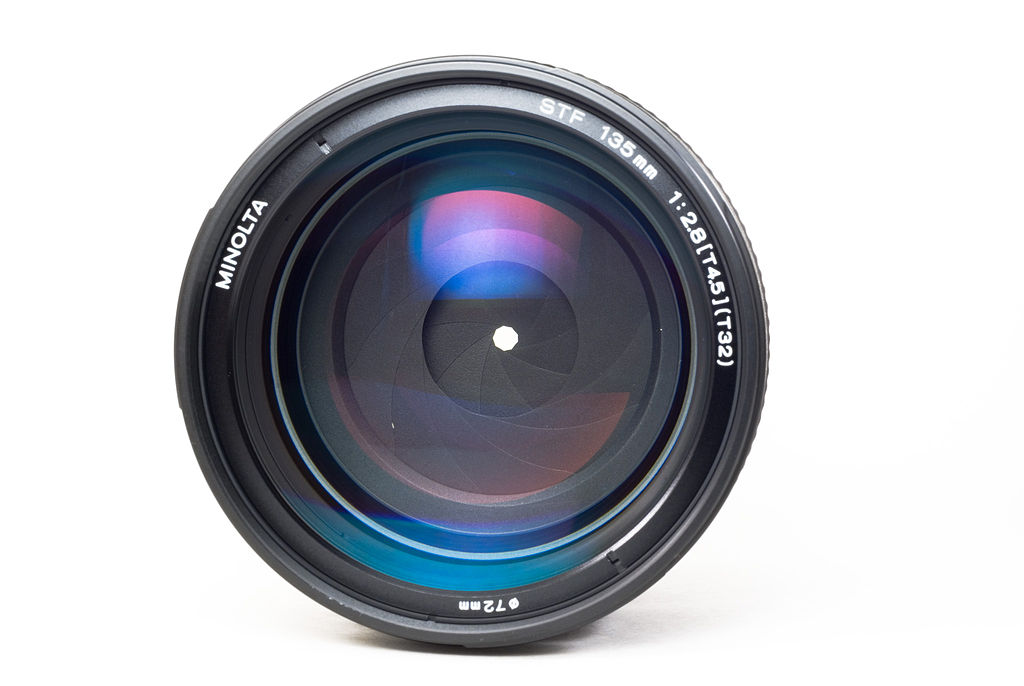
Shao Zhang [CC BY-SA 2.5 (https://creativecommons.org/licenses/by-sa/2.5)] via Wikimedia
Ever heard of the Sony 135mm f/2.8 STF telephoto lens? This is that lens’s grandfather.
This lens uses apodization to thin the light at the edges of the lens in order to transition smoothly between in-focus and out-of-focus fields.
So, this lens shoots insanely sharp photos, but it can’t soft focus at all.
This is one of the more expensive lenses on my list. You can pick one up for around $600-$1,000.
This lens, unlike the previous two, uses an A mount.
As you can see in JoshuaStokesFilms lens test, this lens produces blue-tinted flares in a classic vintage lens way.
Best Vintage Lenses: Super Takumar 135mm f/2.5
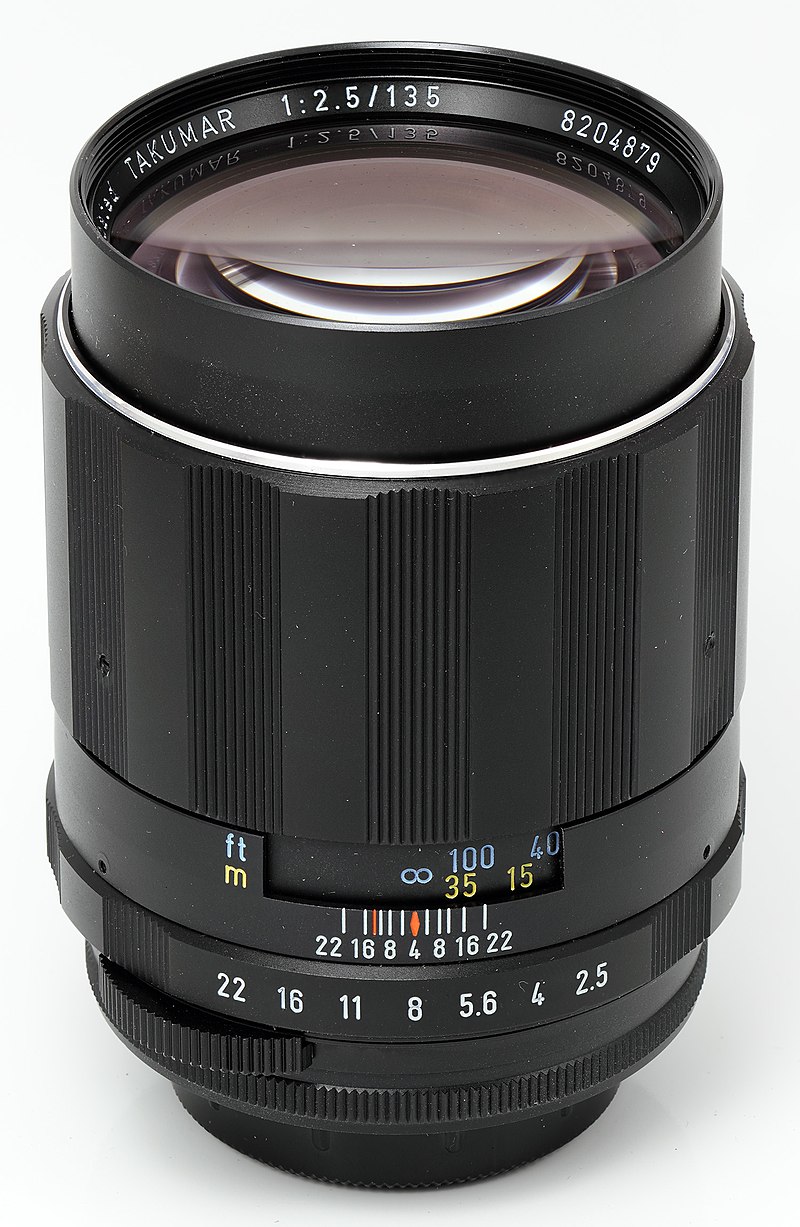
s58y [CC BY 2.0 (https://creativecommons.org/licenses/by/2.0)] via Wikimedia
This is absolutely the best lens money can buy on this list and it’s because this lens can be found for anywhere between $75 and $125.
This lens was crafted from 1968-1971 and is known for its natural rendition, even though is uses a 6-bladed diaphragm.
It’s got excellent depth-of-field control, can isolate a subject in a way not many lenses of this generation can, and is built to last.
It also uses an M42 mount, which is convenient for those of us looking to get away with a vintage lens on the cheap.
Best Vintage Lenses: Carl Zeiss Jena 20mm f/4 Flektogon
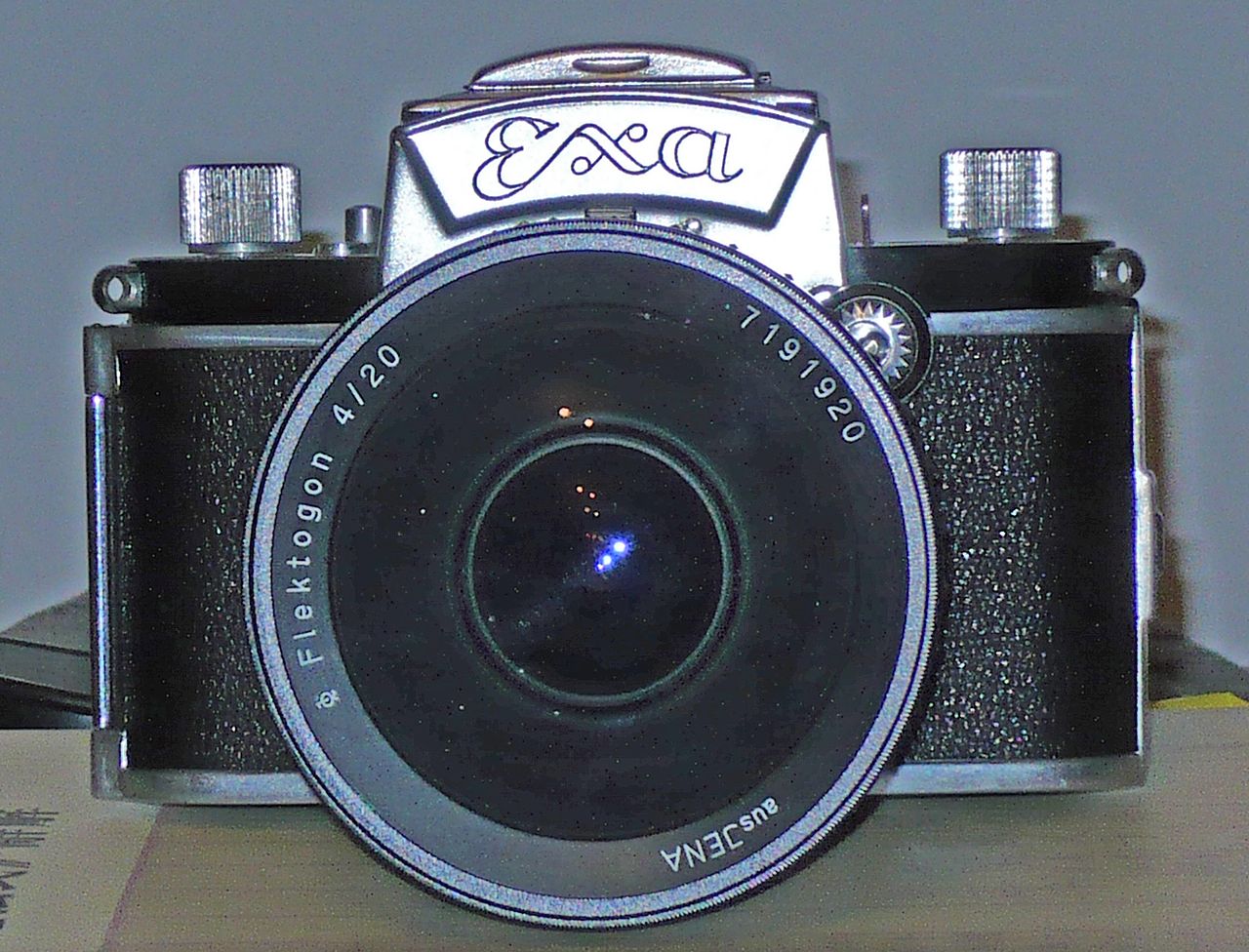
Gisling [CC BY-SA 4.0 (https://creativecommons.org/licenses/by-sa/4.0)] via Wikimedia
This is probably the most fun lens on the list because it’s a gigantic ultra-wide-angle prime. It was produced from 1963 to 1978, again in East Germany, and is known for taking shots that compare with any of its modern counterparts.
It’s images are never distorted, even when you stop down to f/22, and while it has a 6-bladed diaphragm it handles highlights well and almost never produces a honeycomb pattern.
It also can focus down to 6.3 inches, which is unheard of with a lens of this stature.
Most of these lenses were produced with an M42 mount, but make sure you double check before you purchase one. They can be found for anywhere from $200-$400.
Where to Buy the Best Vintage Lenses
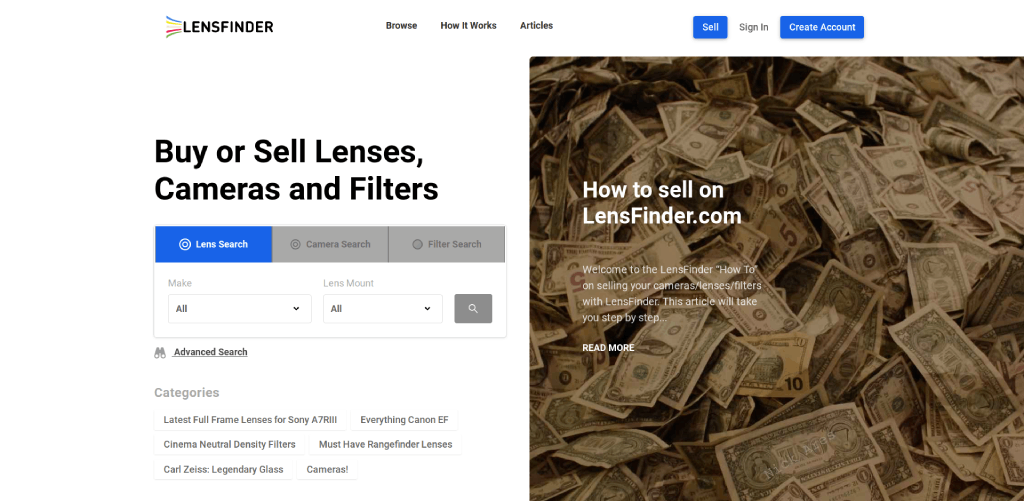
I use Lensfinderfor all of my vintage lenses because of the impressive selection of lenses.
You can purchase lenses for well over $100,000 on Lensfinder, if that’s your thing, because Lensfinder is a second-hand store like eBay, but just for photographers.
I love being able to ask the seller questions about a lens before I buy it, and I especially like getting an answer. There’s nothing more frustrating than checking eBay 12 times hoping a seller responded, but in reality, some of the sellers on eBay don’t care to answer your questions because they know they are going to sell their stuff anyways.
Lensfinder also has an advanced search feature if you’re looking for something really specific, like maybe a Carl Zeiss Jena 20mm f/4 Flektogon.
You also know exactly what you’re going to pay because there’s no bidding and all the fees are really upfront on their website. What’s not to like about that?
Truly, if you’re in the market for a vintage lens to use with your DSLR, give Lensfinder a try.
We Recommend
50mm Lens: Overrated or Underused?
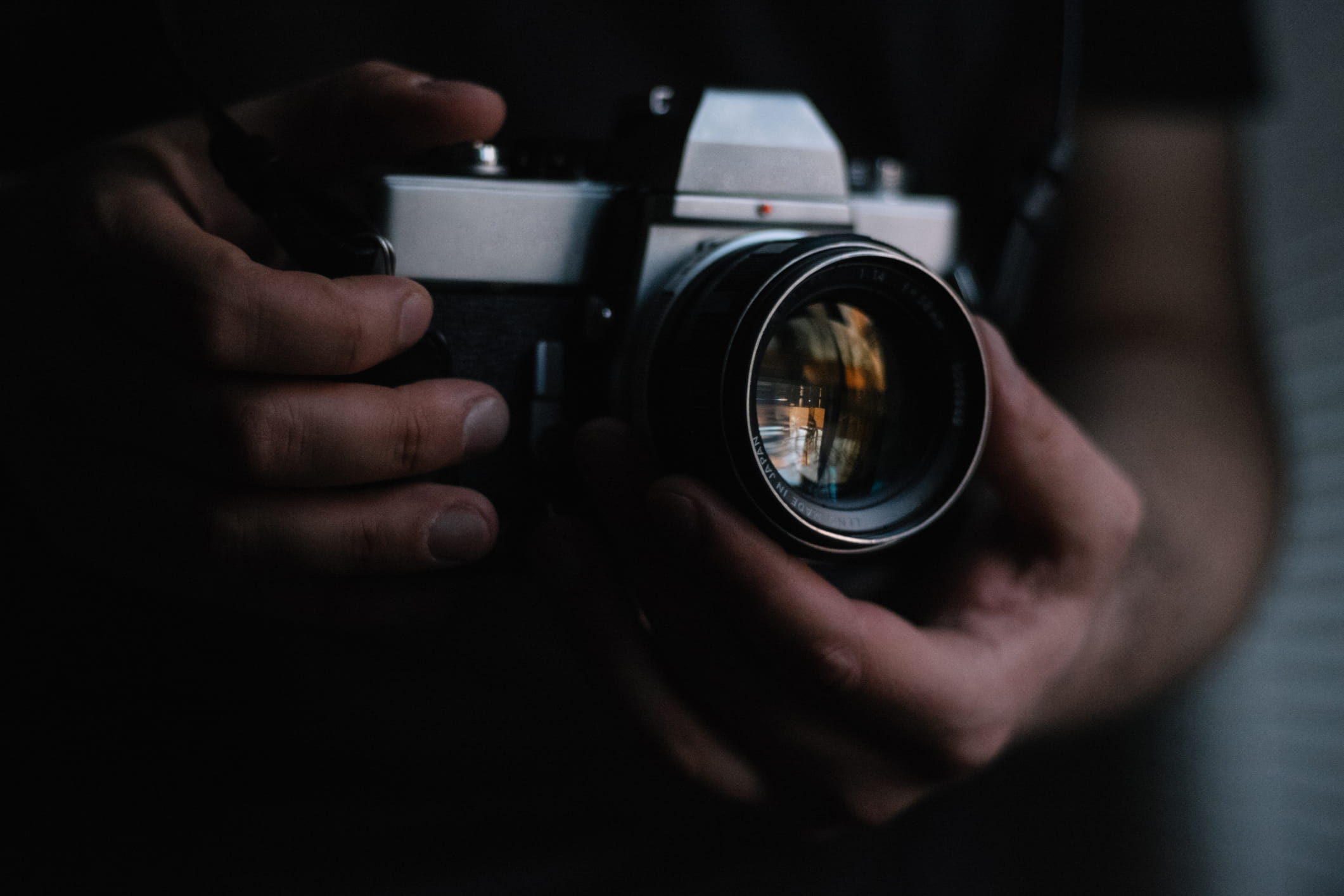
One of my favorite lenses to use is a 50mm, otherwise known as a Nifty Fifty.
And I know a lot of other photographers that are in love with the Nifty Fifty as well.
But that got me wondering, are we looking at this lens through rose-colored glasses? Or is it really as good as we think it is?
Overrated or Underused?
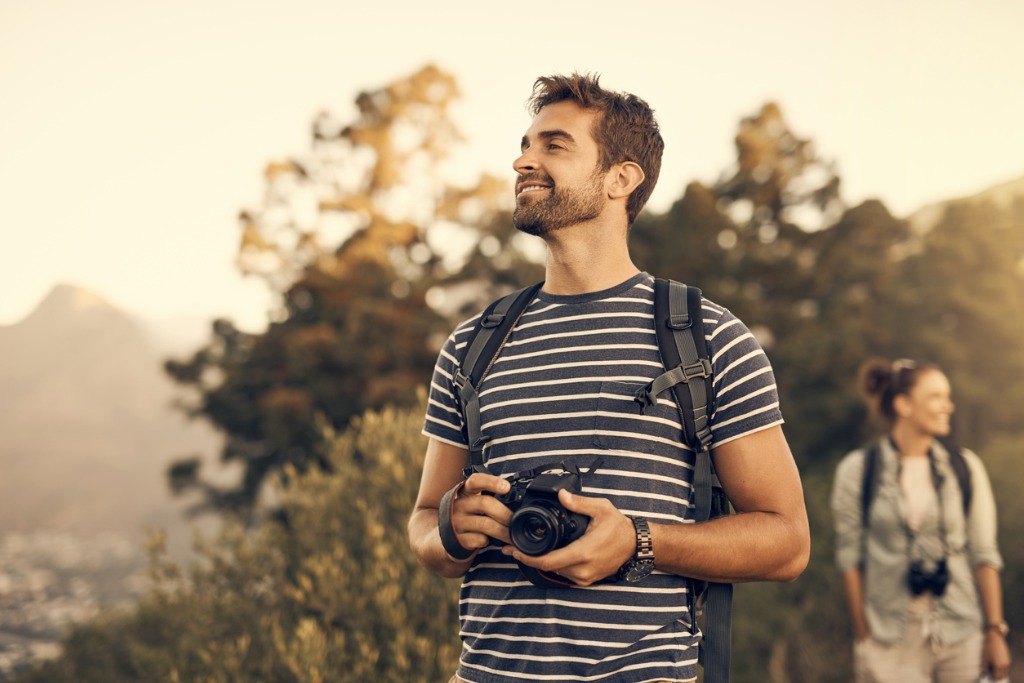
If you ask me, 50mm lenses are certainly not overrated.
I'll get into the virtues of using a 50mm lens in a moment, but for now, let me address the second part of the question - are 50mm lenses underused?
If we're talking about enthusiast and professional photographers, no, I don't think Nifty Fifties are underused.
That's because people that have been behind the camera for a good, long while understand how valuable a 50mm lens can be.
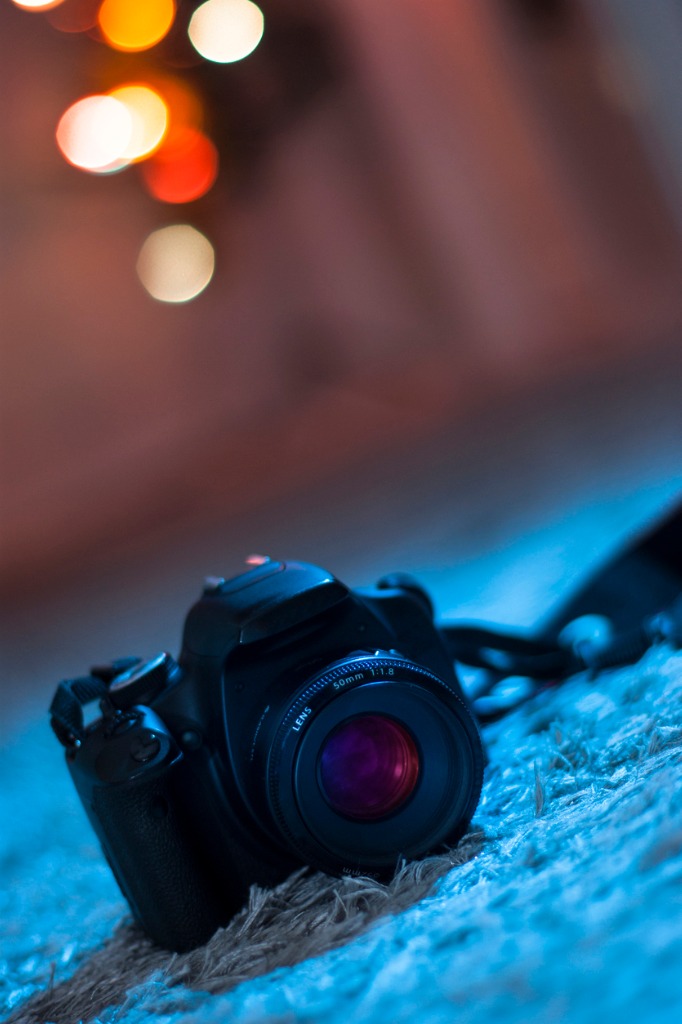
Having said that, I do think that 50mm lenses are underused by the largest population of photographers - beginners.
I think this is the case for a couple of reasons.
First, some beginners simply don't know what lenses to buy and which ones to avoid.
And second, photography can be an expensive hobby, so buying additional lenses isn't always in the cards.
There's ways to get around the expense, though. More on that in a minute.
Editors Tip: Want to buy a new 50mm lens? Unload some lenses you aren't using. List your lenses for free, take the money you get from selling them, and invest into glass that you will use!
The Virtues of Nifty Fifties

Nifty Fifty lenses have been around for decades, and for good reason - they offer tons of advantages for photographers.
First and foremost, 50mm lenses are highly versatile and can be used for a host of photography pursuits.
It's a great focal length for portraiture whether you use a full frame camera or a crop sensor camera (which changes the effective focal length of the lens to about 80mm, depending on the camera).
A 50mm lens is also well-suited for landscape photography, again, regardless of whether you use a full frame or a crop sensor camera.
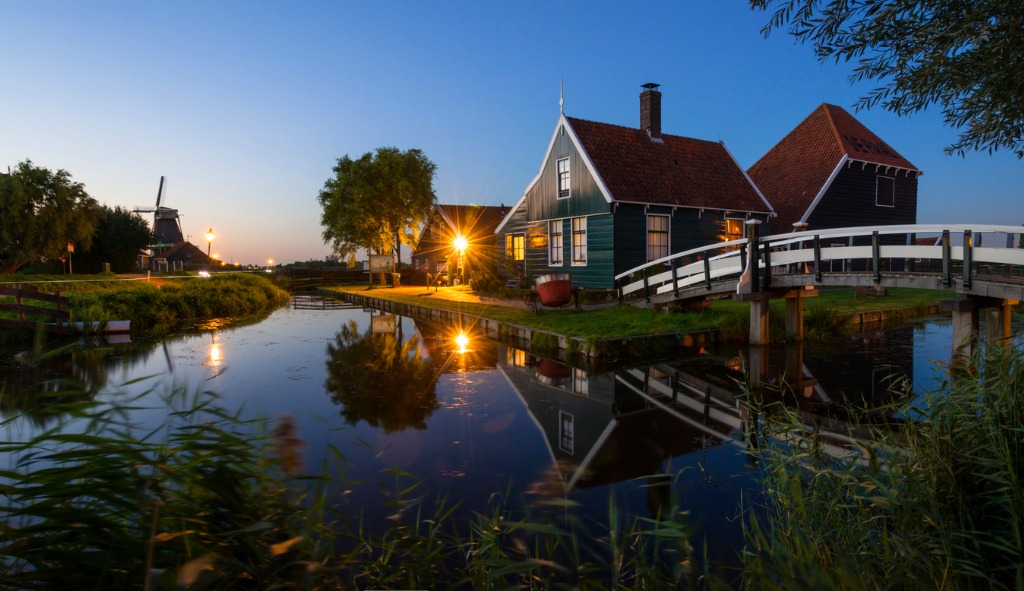
These lenses typically have very large apertures as well, somewhere in the range of f/1.2-f/2.8
With such large apertures, you can use a 50mm lens to do a couple of things that are difficult (if not impossible) to do with lesser lenses.
First, you can shoot in low-light situations without having to boost the ISO. That's advantageous for creating clean, crisp images with less digital noise.
Second, since a large aperture helps create a shallow depth of field, you can more easily blur the background of your images with a 50mm lens.
Nifty Fifty lenses are also small and lightweight, meaning you aren't bogged down with carrying a big, bulky lens.
That's a great feature for all kinds of photography, but particularly for something like street photography in which you want to be able to blend into the crowd.
With the small form factor of a 50mm lens, you can do that much more easily than you can if you're shooting with something like an 85mm lens or a 24-105mm zoom lens.
See a 50mm lens in action in the video below from Adorama TV.
A final feature that's great about 50mm lenses is the price.
Though models with a larger aperture, like f/1.2, can be quite spendy, others, like f/1.8 or f/2 models, can be found brand new for well under $200.
When it comes to lenses - especially ones that are as good as 50mm lenses - that's a fantastic price.
Learn More:
- What is Focal Length? A Beginner Photographer's Guide
- What You Need to Know Before Buying a Camera Lens
Why You Need a 50mm Lens
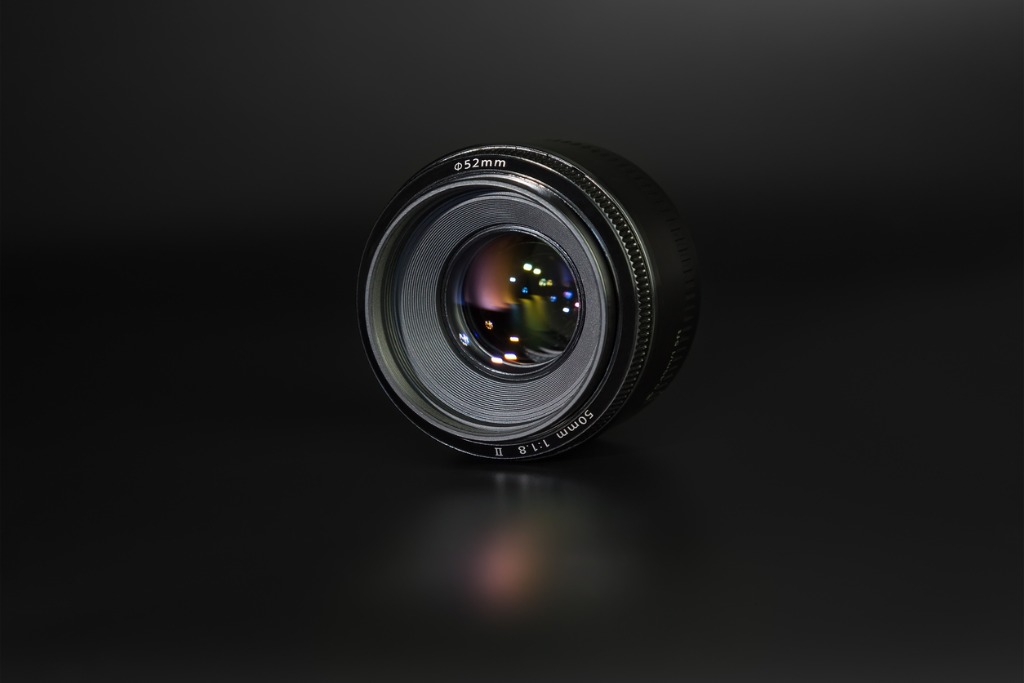
If my long list of virtues of the 50mm lens isn't enough to convince you that you need this little powerhouse in your camera bag, consider this...
A 50mm lens will simply make you a better photographer.
The fixed focal length means you can't rely on a zoom to frame your shots. Instead, you actually have to move around to get the image that you want.
That's excellent practice for brushing up your composition skills, no matter what kind of photography you undertake.
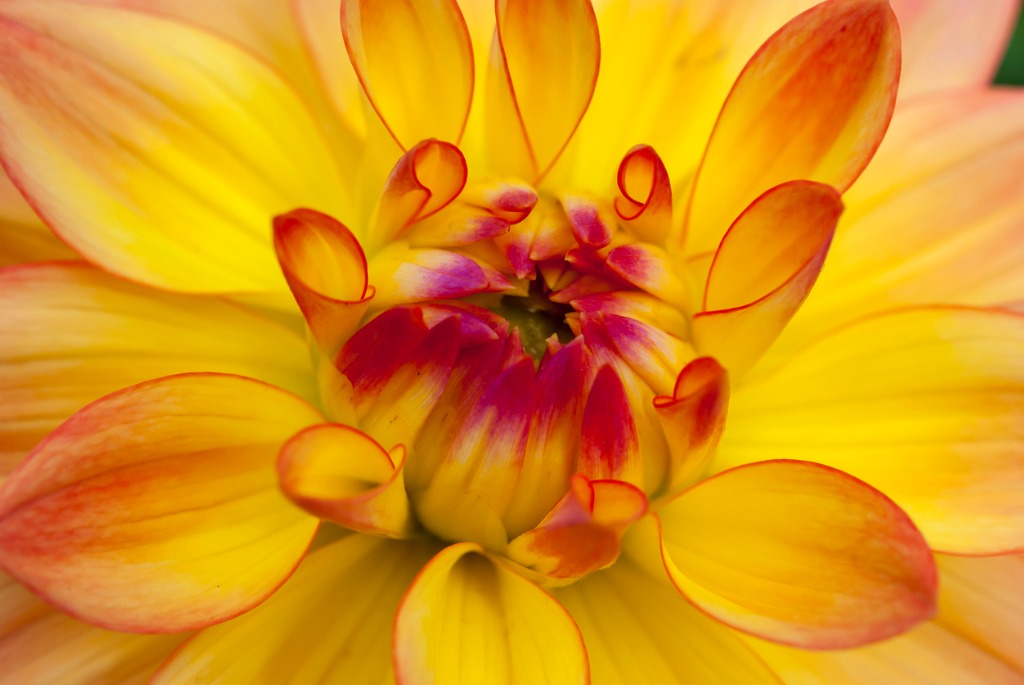
What's more, 50mm lenses can help you be more creative than you can with something like the kit lens that came with your camera.
For example, you can use a 50mm lens to get sharp, clear video.
You can also reverse mount a 50mm lens on your camera to use it for macro photography.
And with the large apertures I noted earlier, you can experiment with depth of field to give your photos an artistic flair.
In other words, a 50mm lens is one of the best investments that a photographer can make.
It'll do what you want, give you tons of flexibility, and help you develop your creative eye, all at the same time.
And since they can be found on the cheap, there's no excuse not to get one, as Peter McKinnon points out in the video above.
Editor's Tip: Strapped for cash but want to upgrade your lens? Search for quality pre-owned lenses here.
We Recommend
7 Reasons Why a 50mm Lens is All You Need for Great Photography
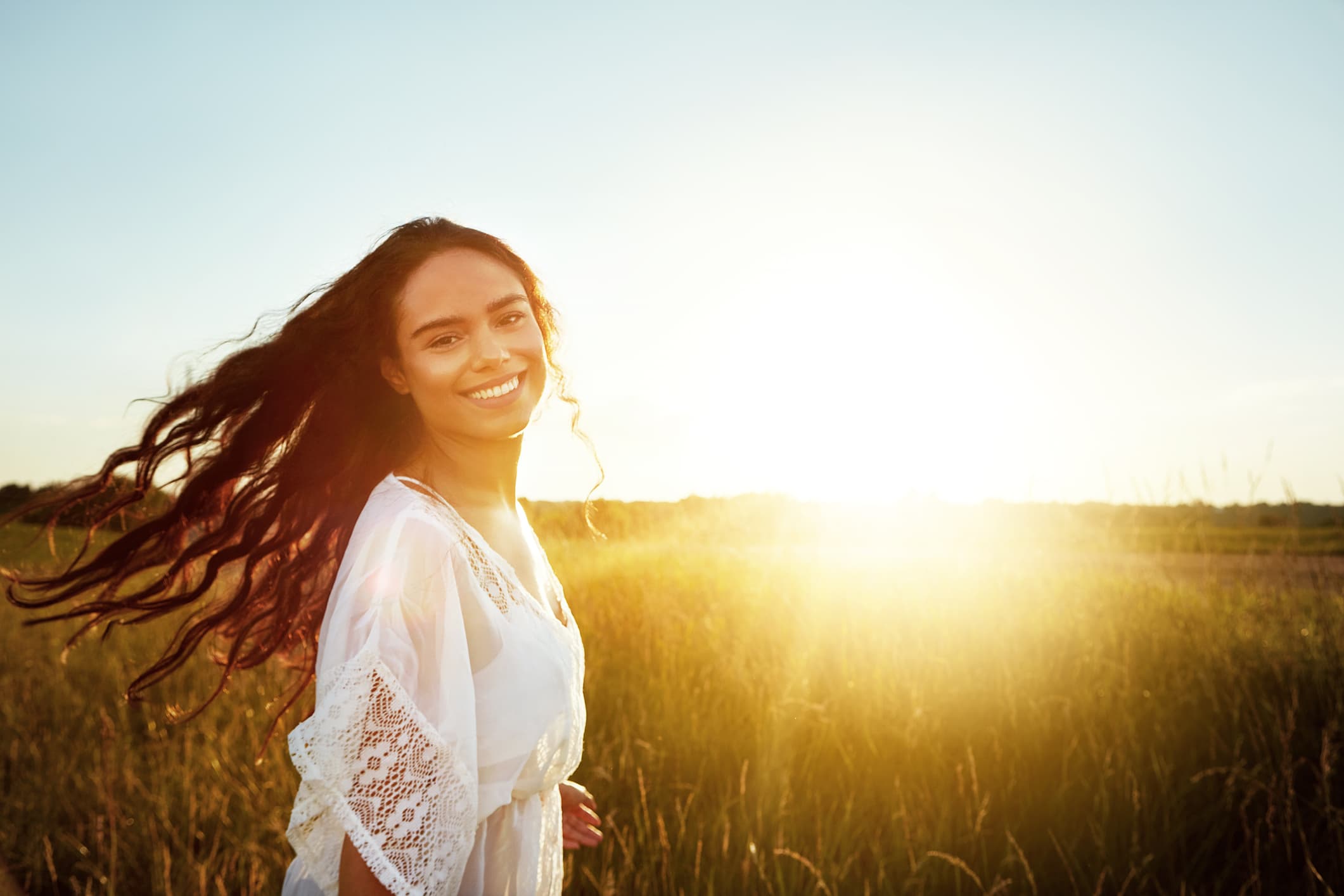
Of all the lenses you can have in your bag, a 50mm or "Nifty Fifty" is probably the most useful.
Why? Well, as Jordan Matter from Shutterbug Mag explains in the video below, there's plenty of reasons to have a 50mm lens.
Have a look at what Jordan has to say, and for a few more details on some of his favorite reasons for having a 50mm lens, check out the article below.
Editor's Tip: No matter if you're looking for a 50mm f/1.4, a 50mm f/2, or a completely different focal length, buying used lenses will help you save some money and stretch your budget. For the best deals on used lenses of all sizes and types, check out Lensfinder.
With a 50mm Lens, You Need Less Gear
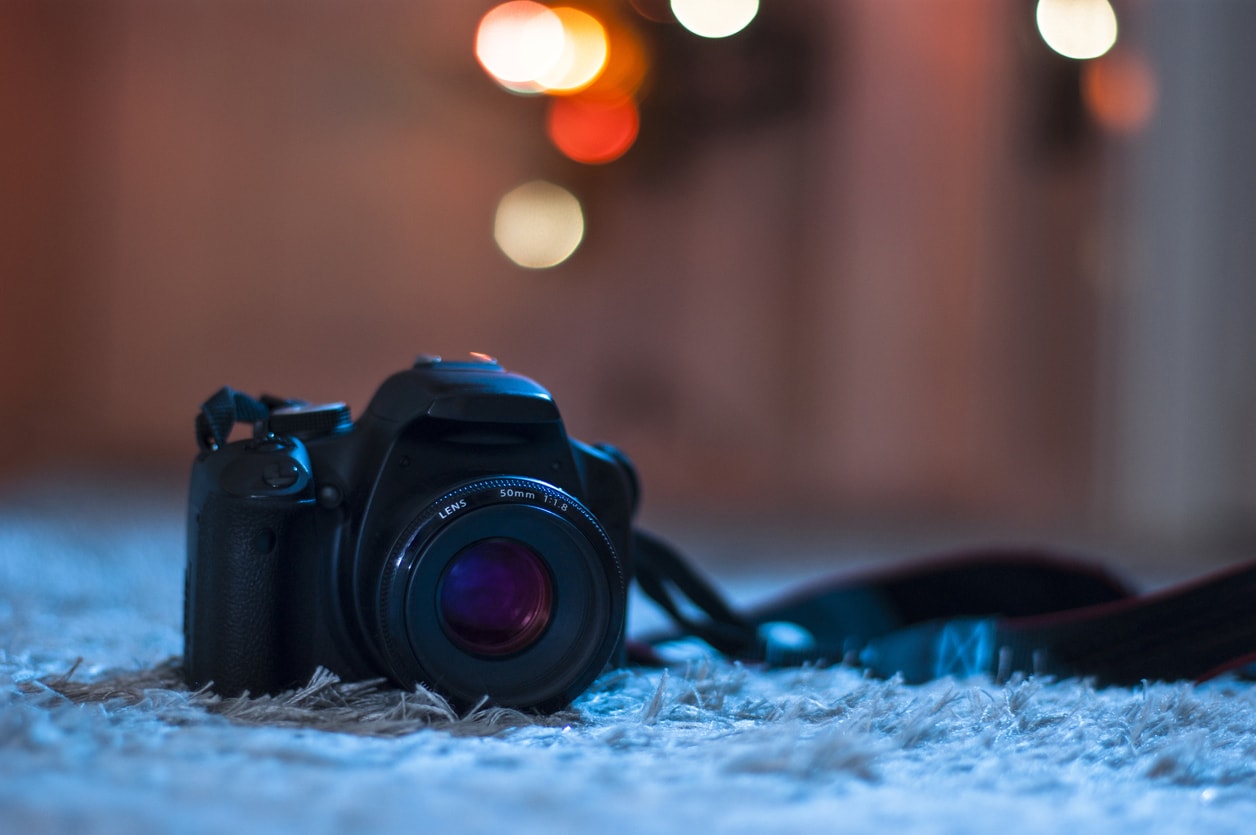
One of the reasons why I love shooting with my smartphone is that I don't have to carry around a ton of heavy gear.
Well, if you have a 50mm lens for your DSLR or mirrorless camera, you don't need a ton of gear, either.
That's because the Nifty Fifty is such a versatile lens that you can shoot all day long with it.
Take portraits. Photograph landscapes. Head into the city for some street photography. Heck, you can even reverse mount a 50mm lens to create a macro lens. It's that versatile!
Learn More:
A 50mm Lens Can Achieve a Shallow Depth of Field
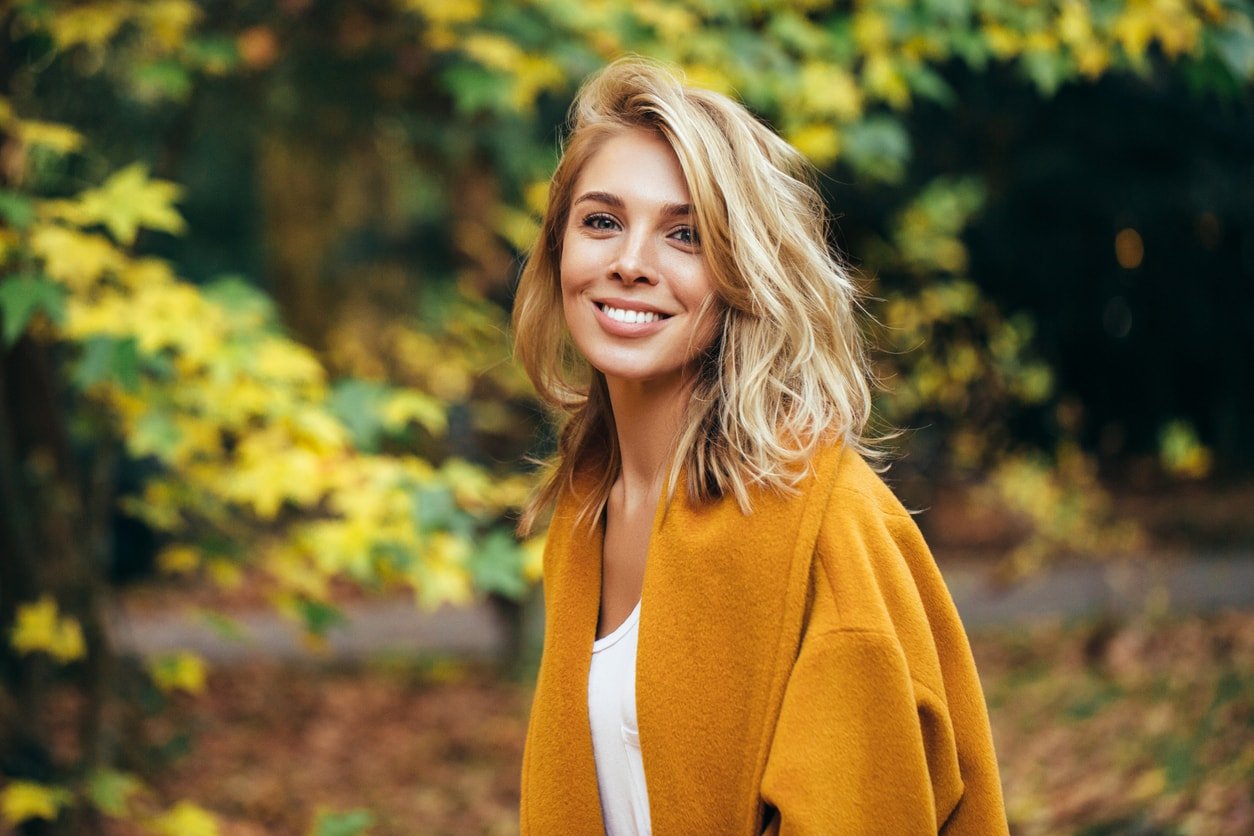
Because many 50mm lenses have large maximum apertures, they can create gorgeously shallow depth of field.
That's advantageous for a lot of types of photography, but particularly for portraiture.
By opening up the aperture and minimizing the depth of field, you can get a nice, sharp subject in front of a beautifully blurry background.
Not only does that help you set the subject apart in the shot, but it can also help you minimize any distractions in the background of the image as well.
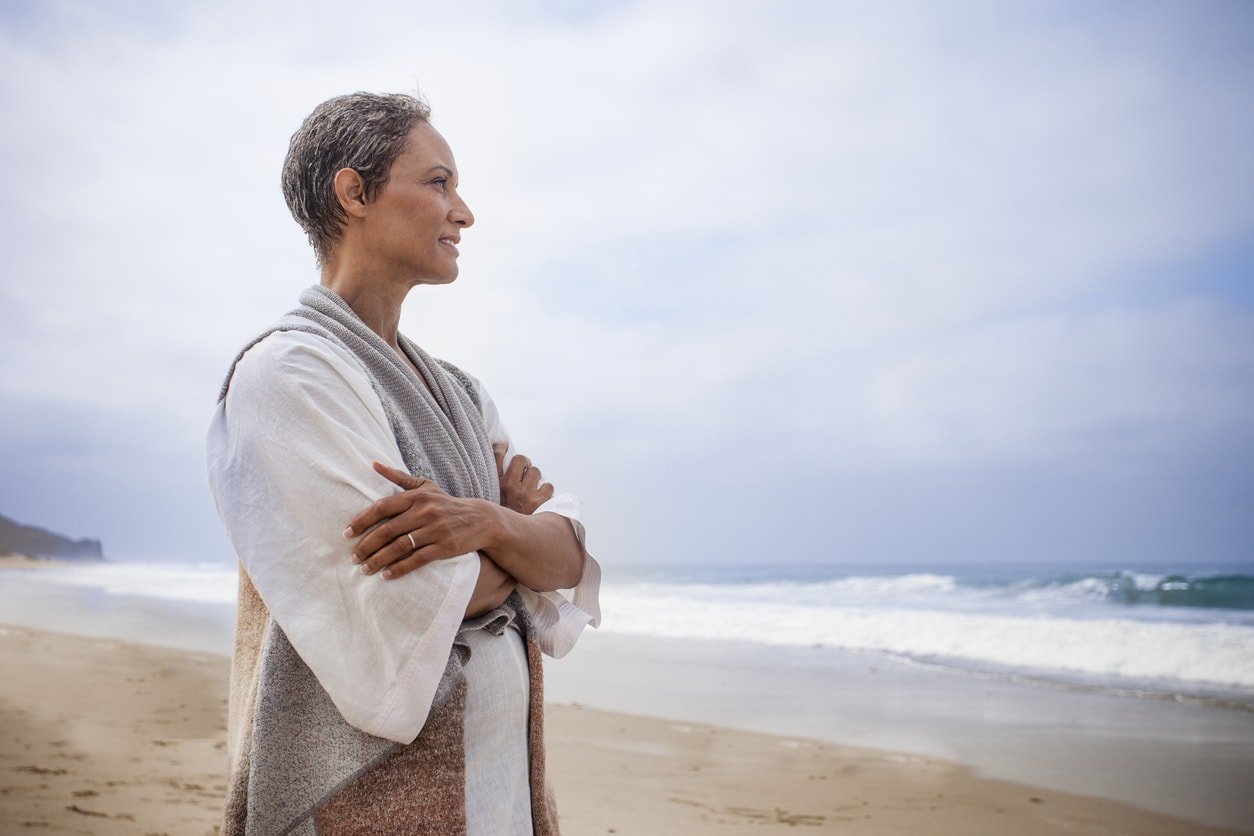
Another point that Jordan makes in the video above is that the Nifty Fifty allows you to vary the blurriness of the background.
So, in a close-up shot, the background can be maximally blurred for effect. But you can also take a few steps back from the portrait subject and compose an environmental portrait with a background that's more visible, but still gives that blurry effect for separating the subject.
Again, you can see how the Nifty Fifty is so versatile!
Editor's Tip: Do you have too many lenses cluttering your camera bag? If so, you can sell your old lenses on Lensfinder! It's easy to list your lenses for sale, and with built-in communications, rating tools, and fraud protections, it's a safe marketplace for selling your gear, too. Find out more about Lensfinder.
50mm Lenses are Great for Stopping Action
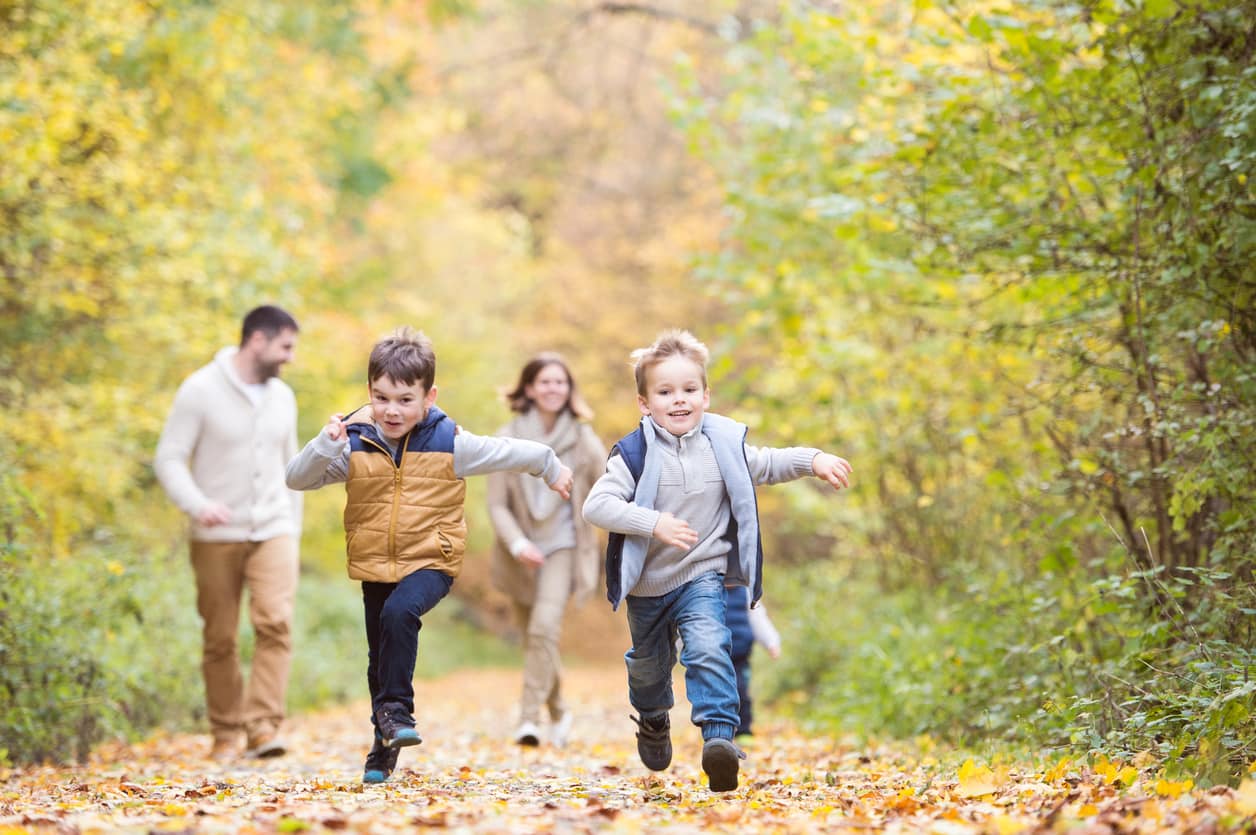
As noted earlier, 50mm lenses typically have very large apertures, like f/1.2, f/1.4, and f/1.8.
That's not only advantageous for minimizing the depth of field, but it's also advantageous for maximizing the shutter speed.
Why?
Well, the more light that the lens can collect, the faster the shutter speed you can use.
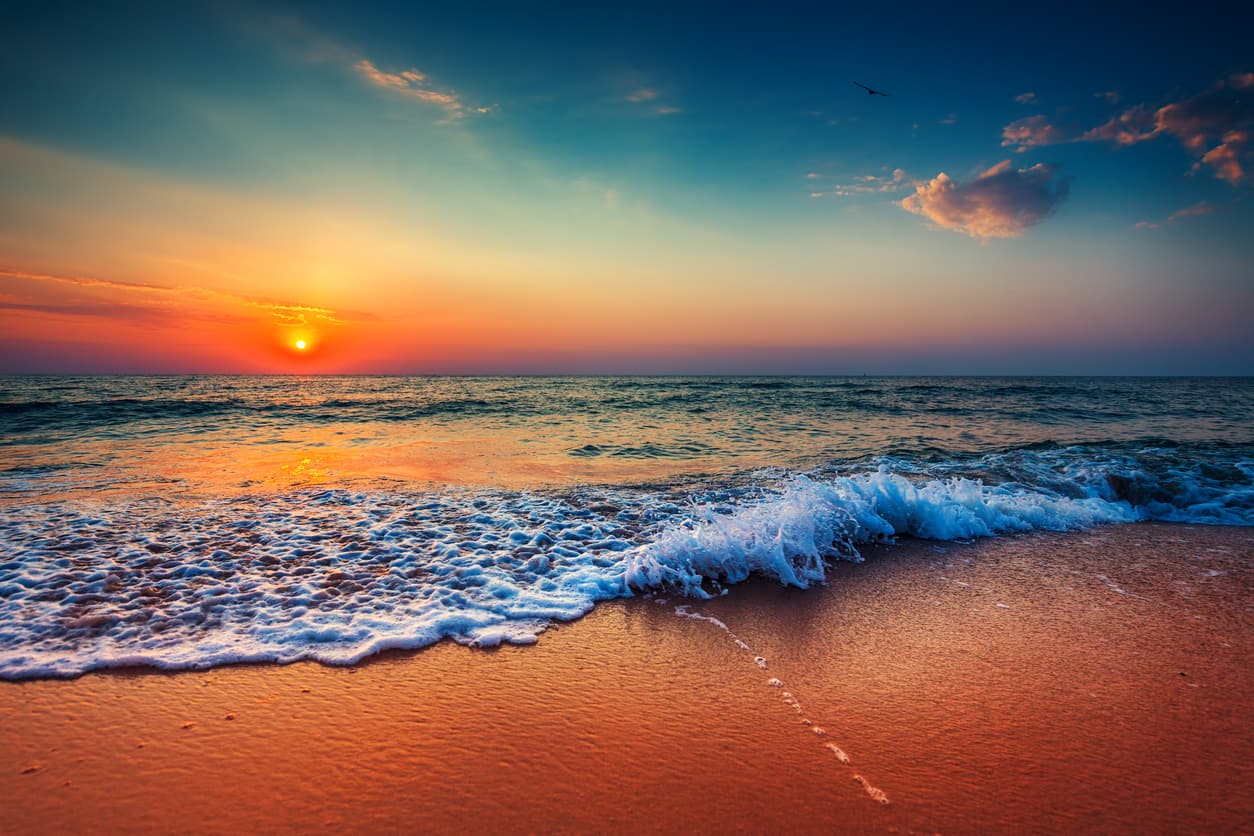
So, with a 50mm lens, you're getting tons of light, which allows you to bump up the shutter speed.
With that faster shutter speed, you can freeze movement in your shots whether that's your kids running around in the backyard or waves crashing on the beach.
That opens up plenty of opportunities for getting creative shots in which your subject appears to be frozen in time without any blurred movement.
In other words, a 50mm lens can challenge you to create new things unlike any other lens can.
And when it comes down to it, improving your craft, getting more creative, and making photos that have tons of visual impact is what this is all about, right?!
Learn More:
We Recommend
A Beginner Street Photography Kit
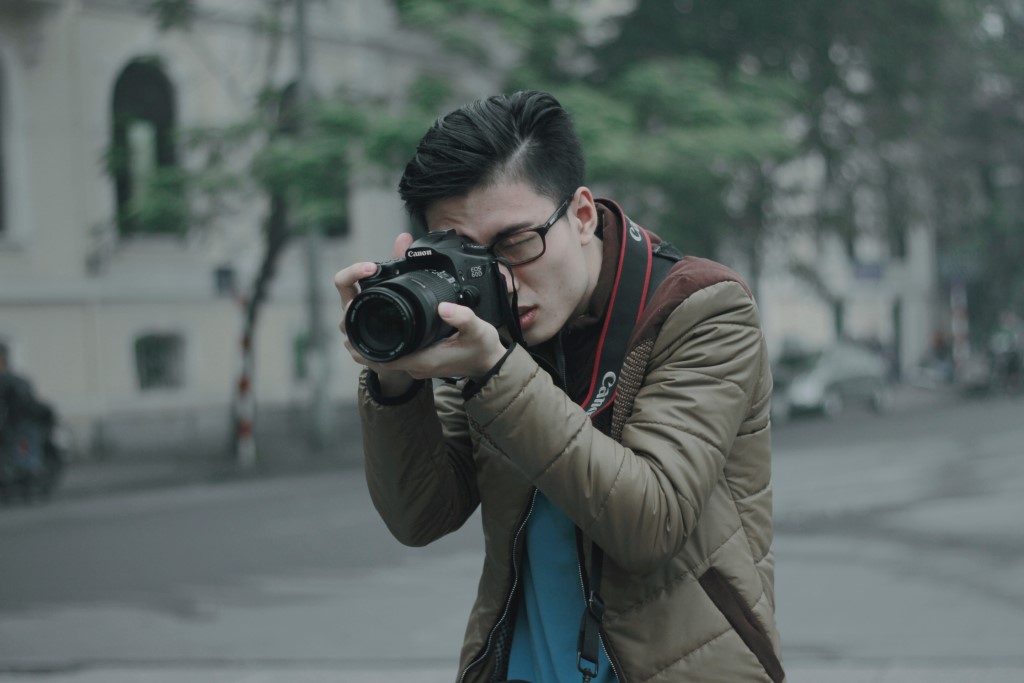
Photo by Dương Trần Quốc on Unsplash
I love to travel and I love to take photos, and I have the perfect bag set-up for both. There are so few moments in our day that only belong to us; why spend these precious moments trying to haphazardly slap our equipment together?
My street photography kit includes everything I need to wake up early, pull on my running shoes, and immediately hit the streets.
While it’s true that no photographers can agree on which street photography gear is best, we can all agree that having the right resources is important.
Since your street photography kit will either make or break your experience, you should probably look into streamlining that process. Here’s the kit that’s helped me do just that.
Table of Contents
- A Street Photography Kit is Nothing Without Lenses
- Is Your Street Photography Kit Lacking the Right Camera?
- Street Photography Kit 2020: Backpacks Are Out, Sling Bags Are In
A Street Photography Kit Is Nothing Without Lenses
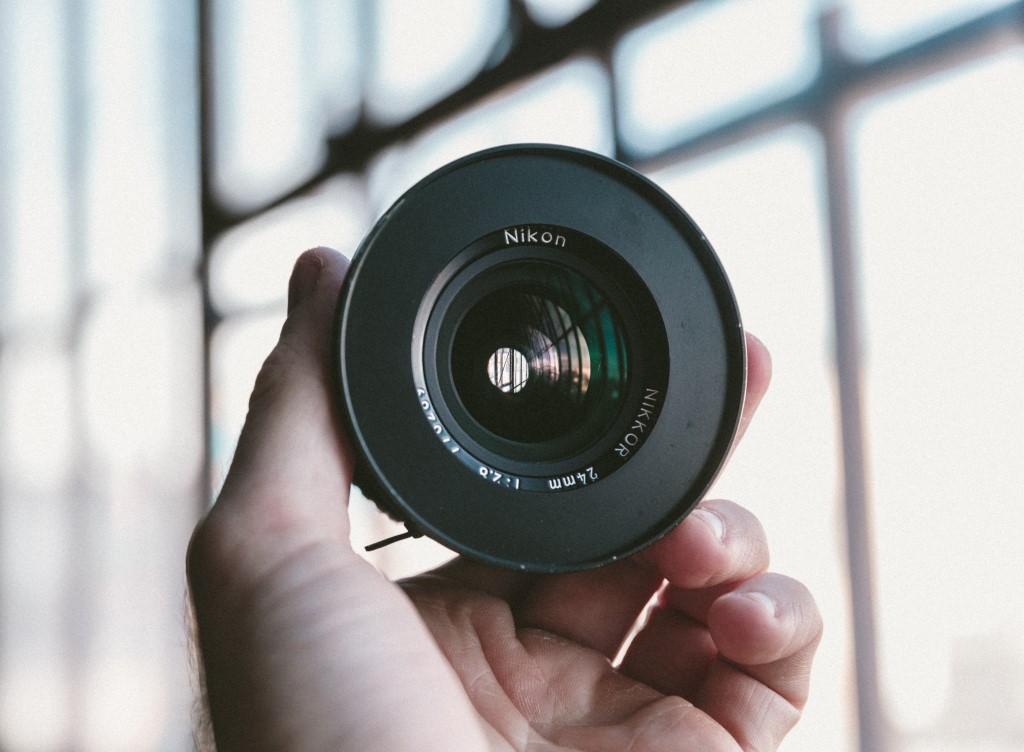
Photo by Jakob Owens on Unsplash
There are two major debates raging amongst street photographers when it comes to lenses. The first is telephoto lens vs. wide-angle lens vs. standard lens.
The second is whether you like to shoot with a prime lens or a zoom lens.
We’ll break down both.
Telephoto Lens
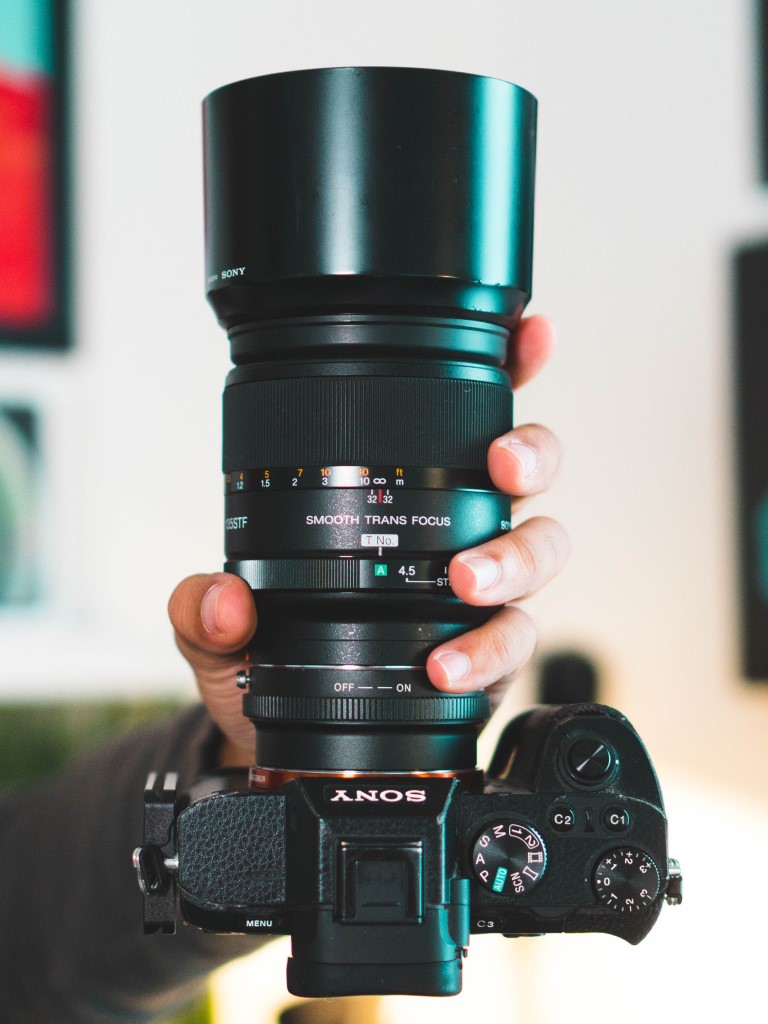
Photo by dhe haivan on Unsplash
There are some major pros to shooting with a telephoto lens, particularly that you can take photos of people without them realizing it, and while this may seem creepy, genuine photos of real people going about their daily lives is sort of the essence of street photography. Plus, you can always ask their permission to use the photo after you’ve taken it.
Also, the telephoto lens does something that most street photography lenses can’t do, which is provide you time to wait for some action from your subjects. With any other lens, it would be apparent you were staring at someone and waiting for them to smile or frown or show any other emotions.
But, where there are pros there are cons too - carrying a big, heavy telephoto lens around all day is certainly one of them.
Additionally, it’s not like you can be discreet with a 300mm lens on your camera!
Standard Lens
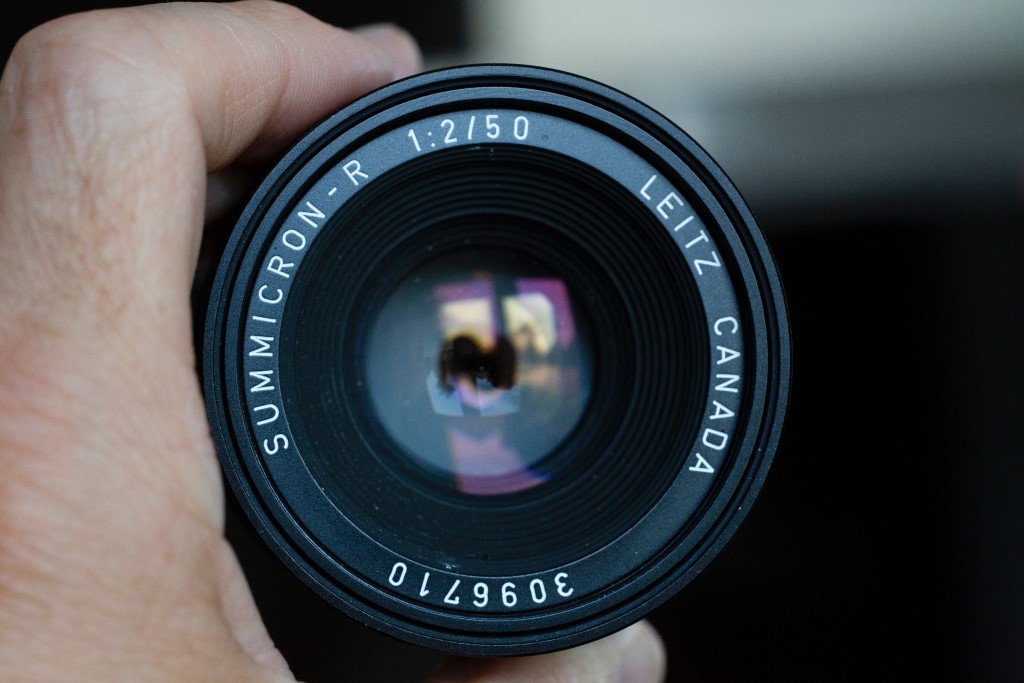
Photo by Markus Spiske on Unsplash
Standard lenses are a top choice for street photographers because they allow you to capture a scene pretty much exactly how you saw it with your own eyes.
If you’re the type of street photographer who views street photography more like photojournalism, then this is the perfect street photography lens for you simply because of that fact.
Standard lenses are often quite small, too, so they have the discrete component that telephoto lenses lack.
Wide-Angle Lens
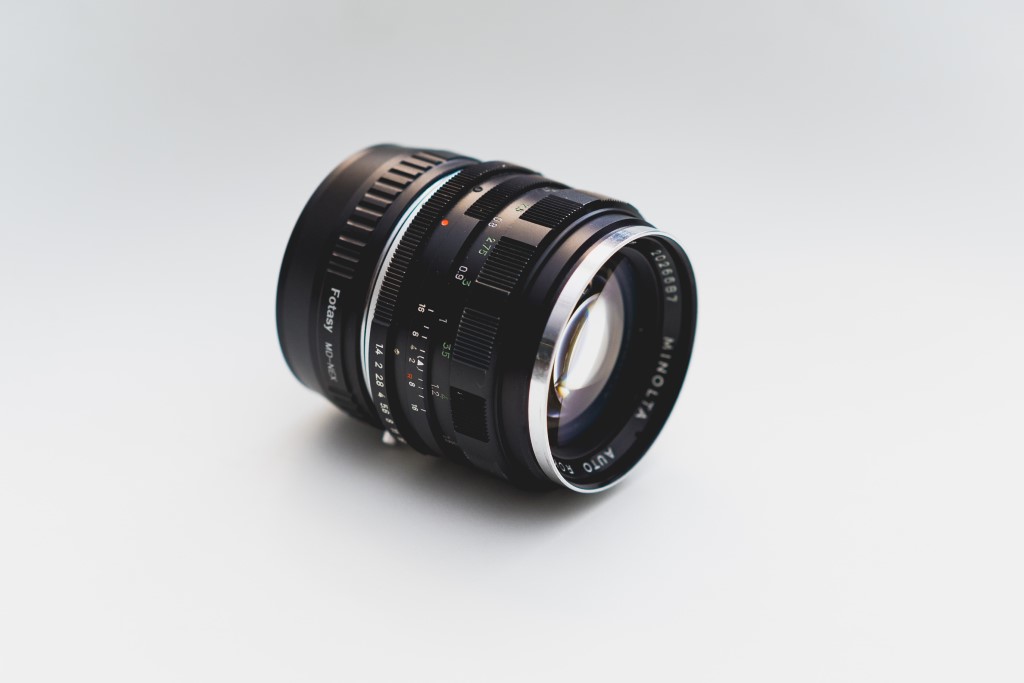
Photo by Dan Gold on Unsplash
Wide-angle lenses are a personal favorite of mine because you can capture the whole street in one photo, which is most realistic to me.
There’s no cropping in real life, and sometimes I enjoy street photography that echoes this chaos.
Sure, the wider you go, the more distortion you’ll find in your images, but that doesn’t bother me at all. For some, it does though, which is understandable. For those folks, standard lenses are the way to go.
Zoom vs Prime Lenses
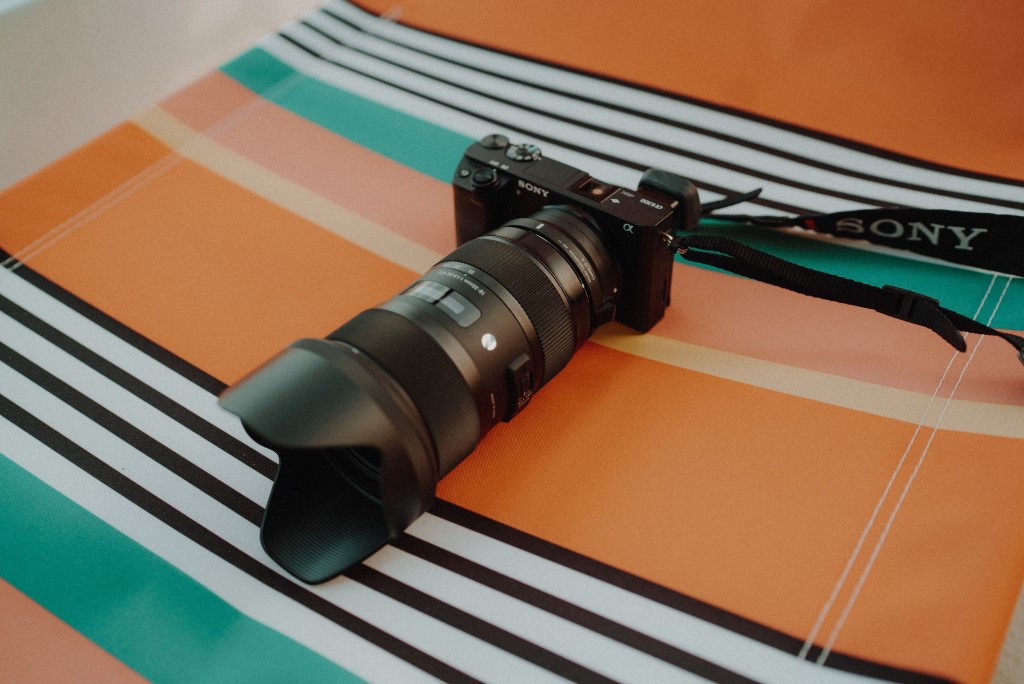
Photo by Jay Wennington on Unsplash
On the one hand, zoom lenses give you a level of versatility that prime lenses simply cannot provide. With the flick of the zoom ring, you can shoot wide to short telephoto with many zoom lenses, which gives you loads of options for framing up your shots.
The problem, of course, is that zoom lenses tend to be larger and heavier than prime lenses, so you might miss out on being discreet, as discussed above.
Another thing to consider is that zoom lenses typically aren’t as sharp or fast as prime lenses.
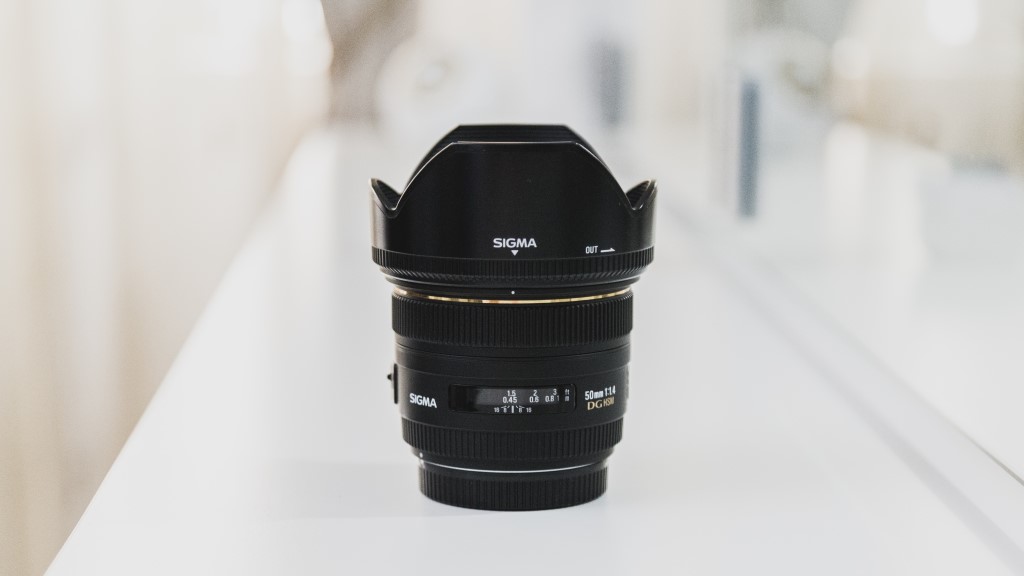
Photo by Alexandru G. STAVRICĂ on Unsplash
Prime lenses, on the other hand, are usually small, lightweight, and easy to maneuver - three characteristics that are certainly important for street photography.
What’s more, many prime lenses have very large apertures, which allows you to shoot in low-light conditions with greater ease. Having the ability to open the aperture, minimize the depth of field, and blur the background is a bonus as well.
There’s something to be said for how prime lenses force you to move around to frame the best shot. Without a zoom, you have to “zoom with your feet” and find the best framing, perspective, and angles for the shot. This can help you develop your creative eye, and that’s a good thing!
Where to Buy Lenses
Lensfinder is a personal favorite of most of the crew over at PhotographyTalk.
We like that you can find almost any lens you could need, from antique lenses to lenses that just dropped.
Plus, whenever you use a lens marketplace like Lensfinder, you know you’re getting quality glass from photographers. You can ask questions about your lenses and actually get answers directly from the sellers
But, my favorite thing is that all of the fees are upfront, which is my biggest qualm with eBay. And those fees are only for sellers, and are minimal, so if you have gear you need to unload, Lensfinder is a great choice!
Is Your Street Photography Kit Lacking the Right Camera?
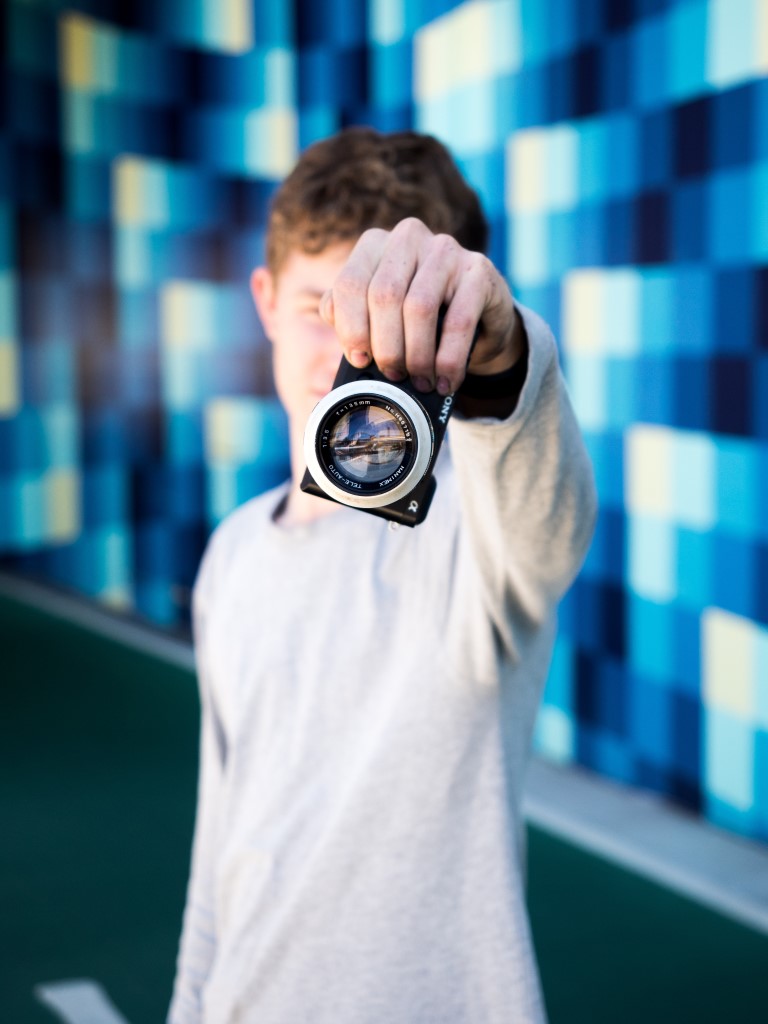
Photo by Jonathan Wards on Unsplash
What do you look for when you’re looking for your street photography camera? My street photography camera is lightweight and nondescript, because it’s never fun to get yelled at by angry people in public.
But it also features a vari-angle lens to take shots from waist-height (again, to not allow my subjects to know they’re my subjects). People are always so camera shy, so the best way to get them to continue to be themselves is to camouflage your street photography camera.
A good example of a camera that has all of these traits and more is the Sony a6400.
Not only does this camera have a lightning-fast autofocus acquisition of 0.02 seconds for quick shots, but it also has real-time Eye AF and real-time tracking features. It shoots at up to 11 fps (8fps in silent shooting mode), and offers 4K UHD video recording. Not bad, right?
You can get all the details on the a6400 in the video above by iJustine.
Learn More:
Street Photography Kit 2020: Backpacks Are Out, Sling Bags Are In
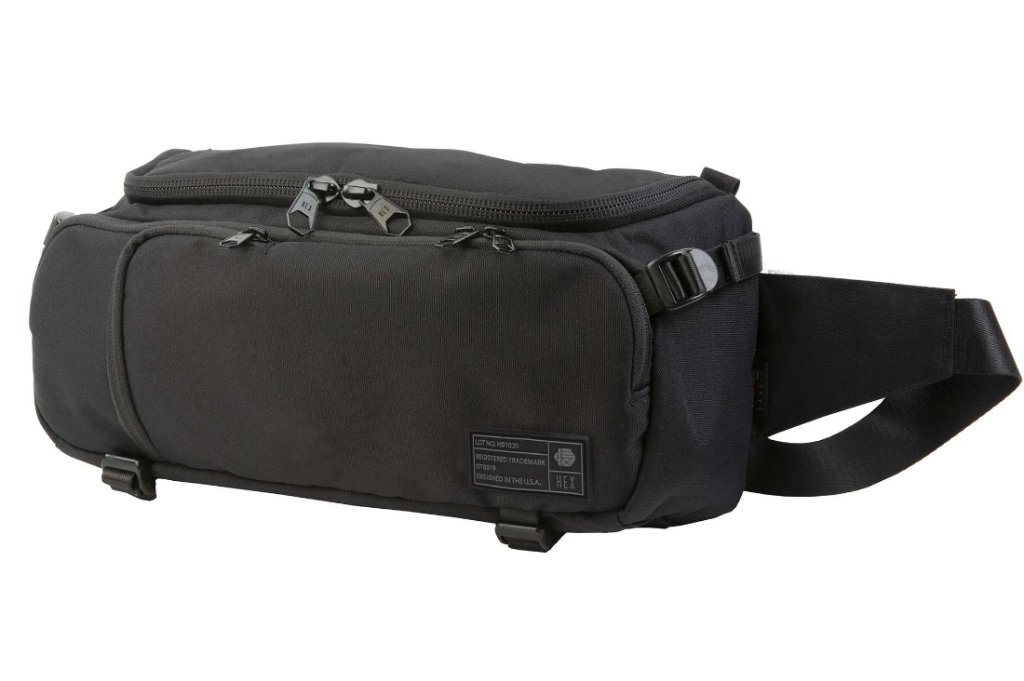
I used a backpack as my street photography bag for years, but with the resurgence of sling bags in the past year, I started looking into them.
As it turns out, sling bags are much more useful for street photography equipment because you can easily access all of your equipment without digging through a bag due to the zipper structure.
Also, it’s lighter than a backpack, which means traveling miles and miles on the streets will be much easier, and good sling bags, like the Hex Ranger, keep your camera gear incredibly organized and safe inside faux-fur lined pockets.
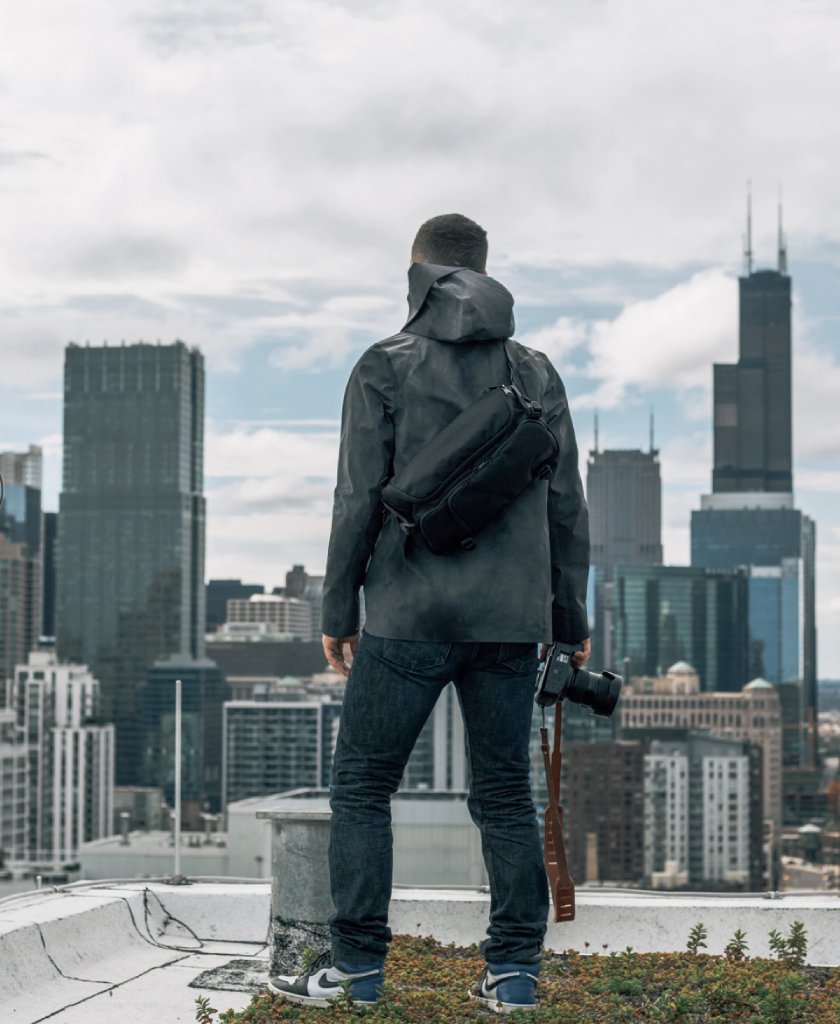
The construction of this bag is next-level awesome, too.
Not only is it well made, but it’s cleverly designed. For instance, there are collapsible interior dividers that allow you to customize the interior space to fit different kits. These dividers are also removable in case you need to pack the bag flat for traveling.
It’s also compact at just 1.3 pounds and 14.5"L x 7.25"W x 4.75"H, and it sits comfortably on your body. In fact, it hugs your body and stays close to you, unlike some sling bags that swing out as you walk.
This bag fits a ton of gear, yet has a small form factor. It’s unassuming, built like a tank, and offers you tons of functionality. In other words, it’s the perfect addition to your street photography kit!
Learn More:
We Recommend
A Short List of the Best Prime Lenses for Mirrorless Cameras
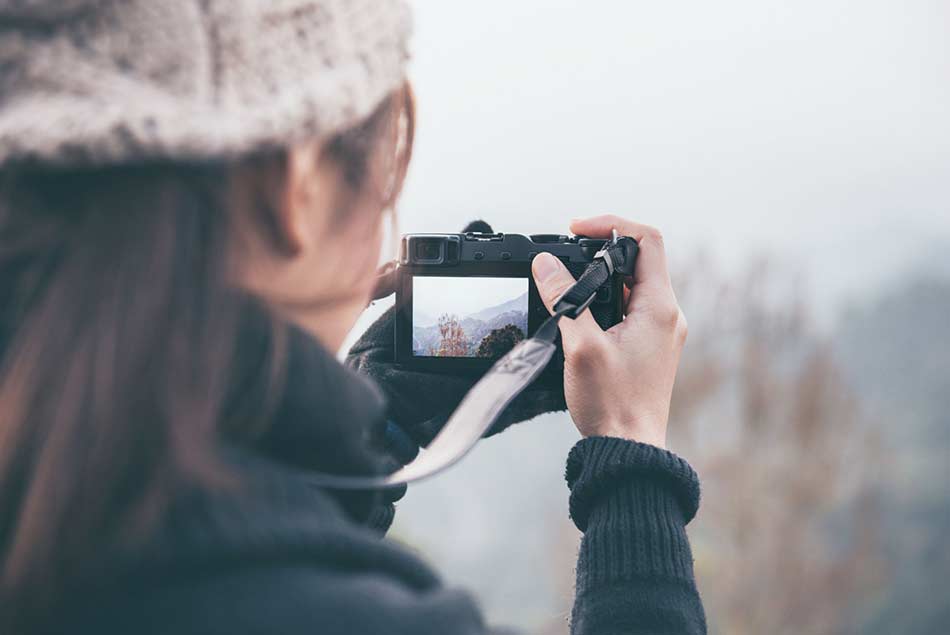
Not that long ago, one of the primary complaints about mirrorless camera systems is that they simply did not offer much in the way lens selection.
But as mirrorless cameras have become more predominant in the photography market, more and more lenses have come to bear.
That includes many excellent prime lenses for compact systems from Sony, FujiFilm, Olympus, Panasonic, and others.
If you're in the market for the best mirrorless camera lenses, look no further than this short list.
Editor's Tip: Confused by all the numbers and letters on your lens? Learn how to read lens markings.
Best Mirrorless Lens for Sony: Sony 85mm f/1.4GM
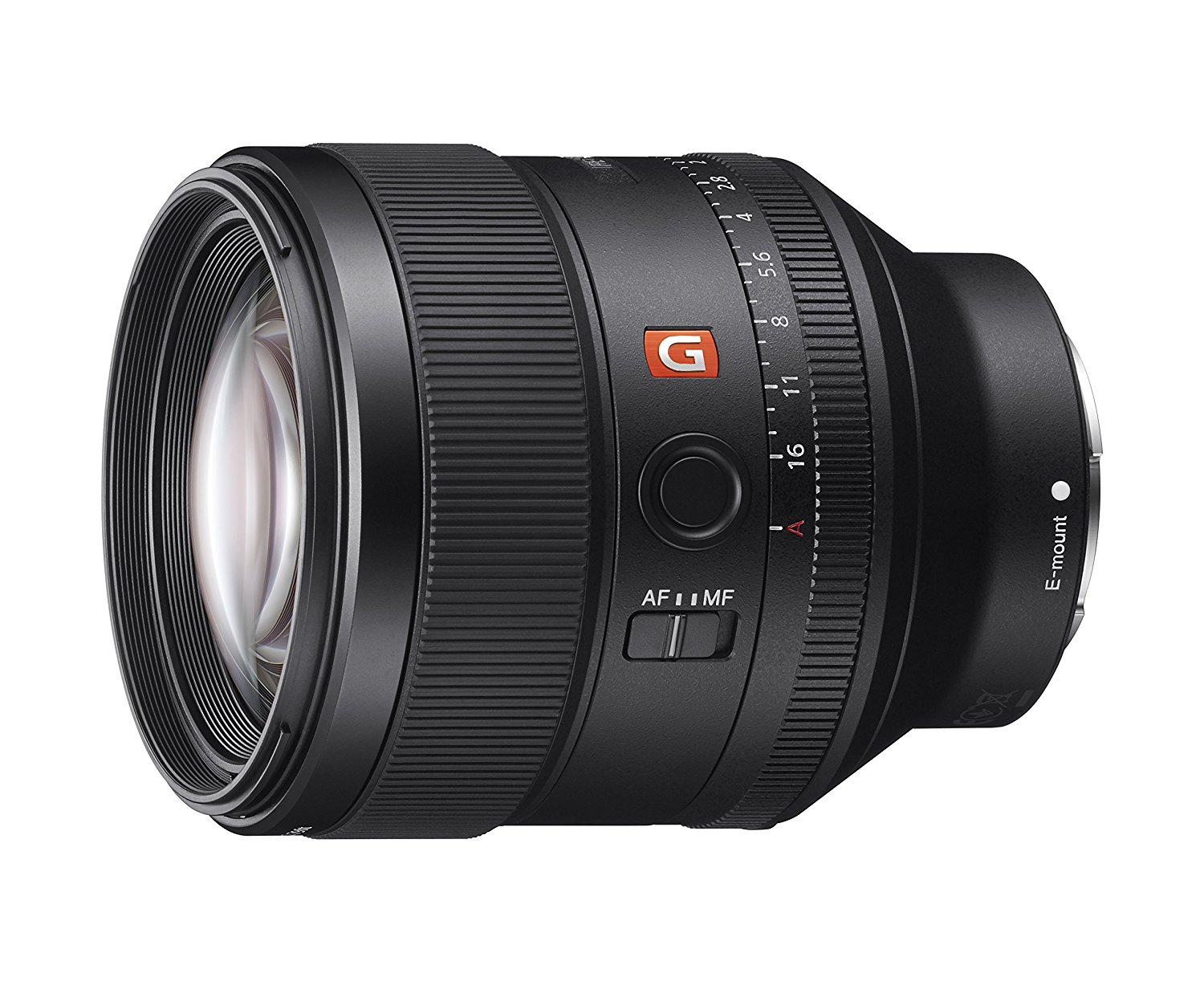
One of the best prime lenses you can buy for a Sony mirrorless camera is the impeccable 85mm f/1.4GM shown above.
Not only does this lens produce fantastically sharp images, but it also produces gorgeous bokeh, thanks in part to its 11-blade diaphragm. It's also compatible with both full frame and APS-C Sony cameras.
Sony has incorporated its Nano AR coating onto the lens elements, making aberrations like flare and ghosting less likely to occur, as noted in the video below by DigitalRev TV:
At 85mm, it's an excellent portrait lens, but don't discount it for other pursuits like videography.
On the downside, this is a pricey lens at nearly $1,800 brand new. But if you look in the right places, you might find a quality pre-owned lens for a fraction of that.
You can also opt for something like the Sony 50mm f/1.8 OSS, which is only compatible with Sony APS-C cameras, but is far less expensive.
Learn More:
Best Mirrorless Lens for Fuji: FujiFilm 35mm f/2
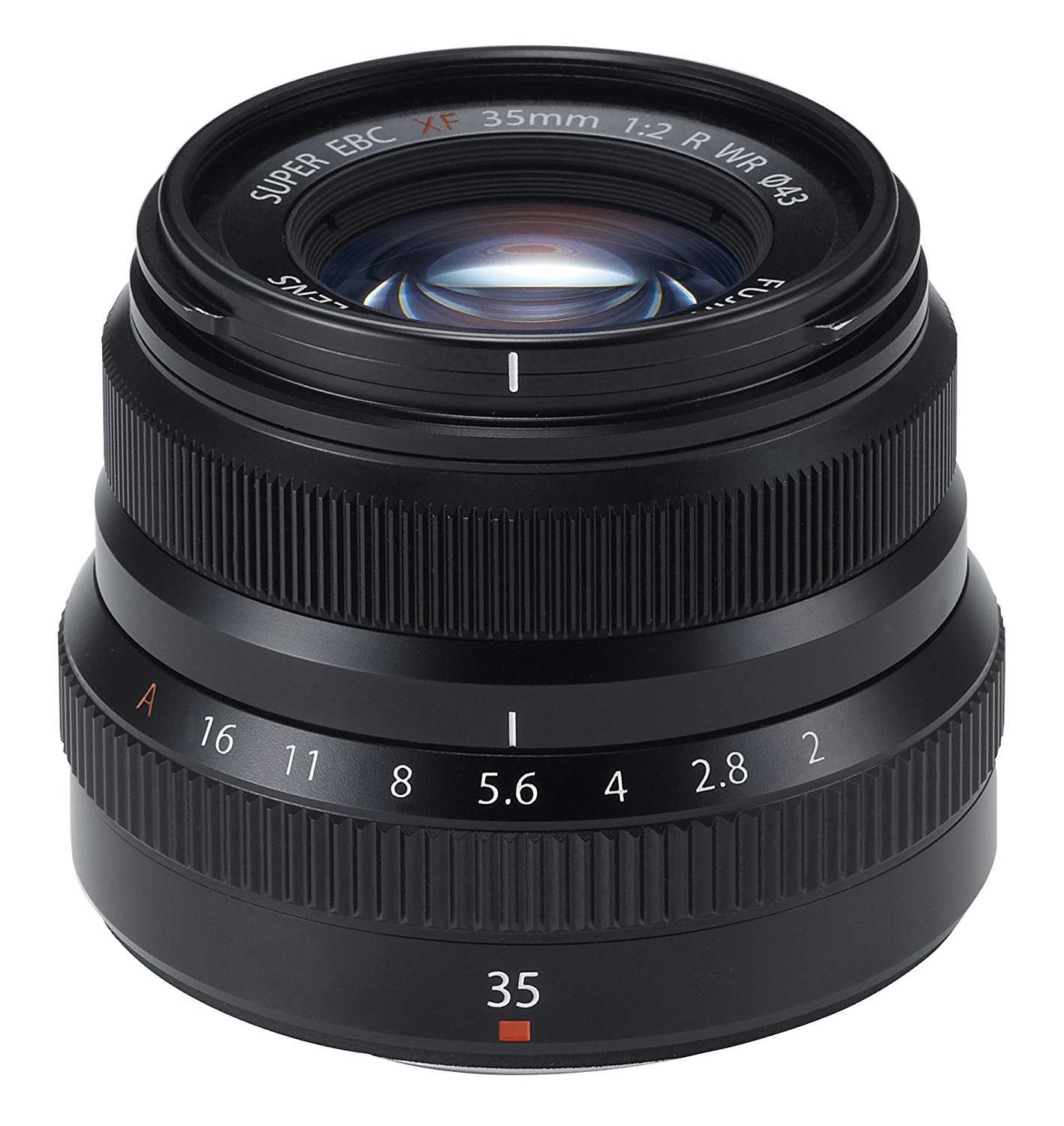
If you shoot with an X-mount FujiFilm camera and are looking for a high-quality prime lens to add to your bag, it's tough to beat the 35mm f/2.
With an effective focal length of 53mm, this lens sits squarely in the standard focal length that's so versatile for photography.
At 53mm, you can photograph landscapes and cityscapes, take portraits, and even shoot video if you like.
It's a pleasing focal length, too, with little in the way of distortion.
This is a bargain lens, too, with a brand new price tag running about $400. That alone makes it one of the best mirrorless lenses for Fuji!
For that price, you get pro-level optics, excellent sharpness, and good low-light performance, all in a lens that weighs just six ounces.
Editor's Tip: Getting new gear can be exciting - and expensive. Learn why a new lens is more important than a new camera.
Best Mirrorless Lens for Olympus and Panasonic: Olympus M.Zuiko 75mm f/1.8
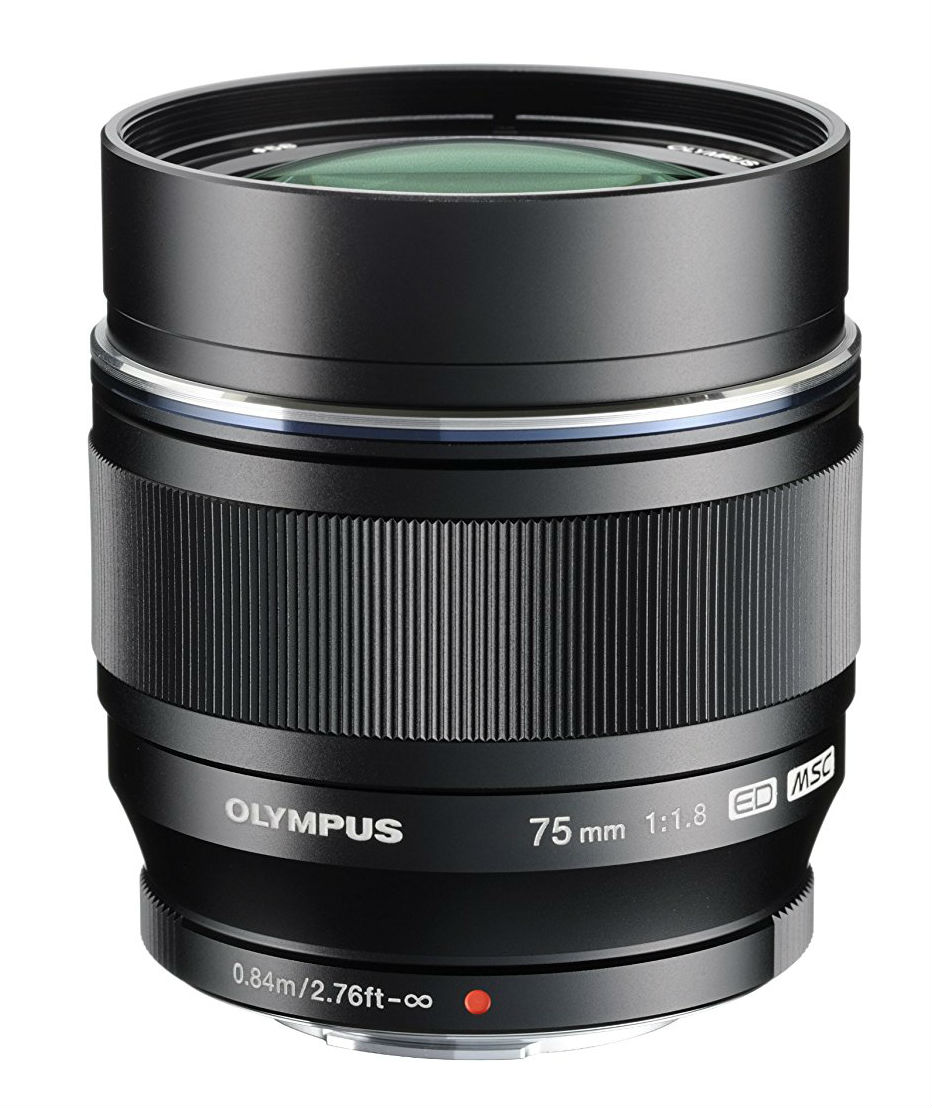
Last but not least, for all you Olympus and Panasonic shooters sporting a micro four-thirds mirrorless camera, this 75mm f/1.8 lens should be on your radar as one of the best mirrorless camera lenses.
Like the Sony 85mm lens reviewed earlier, this lens is ideal for portraits due to its longer focal length.
Not only that, but this lens produces fantastically sharp results even at f/1.8. Though there is some softness in the corners, this lens is sharp where it really matters - in the middle. Get more details about this lens in the video below by Reviewed:
With its Zuiko Extra-low Reflection Optical Coating, you can expect clear, crisp results, too, with minimal aberrations.
The biggest problem with this lens, though, is its price - well over $700 at the time of writing.
Again, you can often find excellent deals on used lenses that will save you tons of money, provided you know where to look.
Learn More:
- What is Focal Length? A Beginner Photographer's Guide
- What You Need to Know Before Buying a Camera Lens
Wrapping It Up
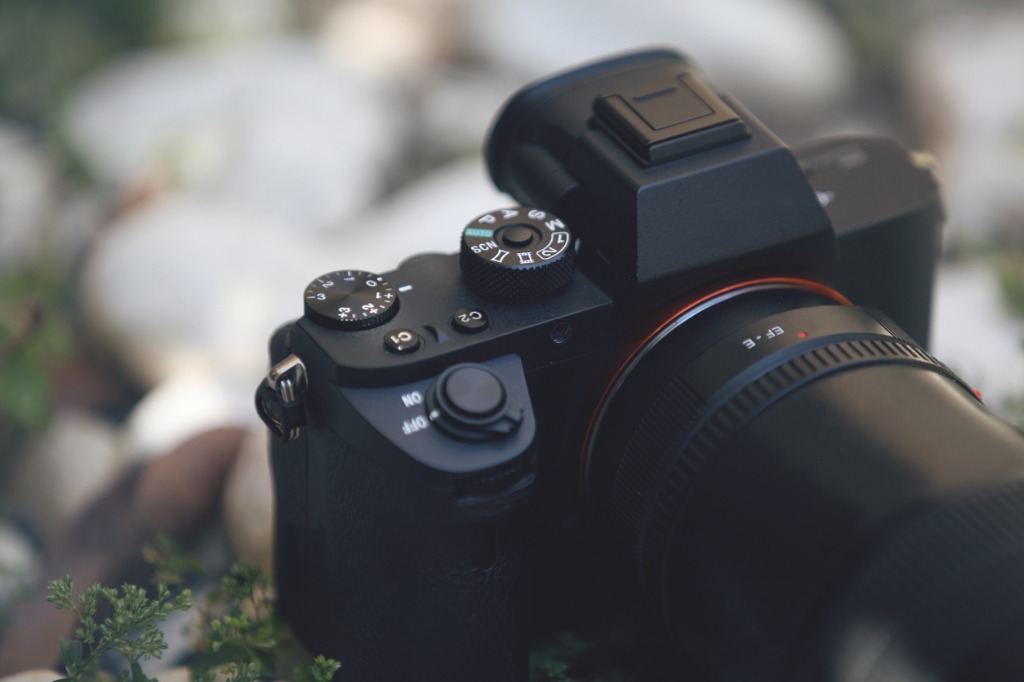
While this is by no means a complete list of the best mirrorless camera lenses, the three examples I've provided here definitely offer excellent value and performance.
For me, the value of prime lenses is inherent in their ability to be versatile, their excellent performance in low light, and their small stature.
That makes each of these lenses a good bet if you want a high-performance lens that isn't too big for day-to-day photo-taking, travel photography, and the like.
We Recommend
A Simple Explanation of How to Create Stunning BOKEH Effects
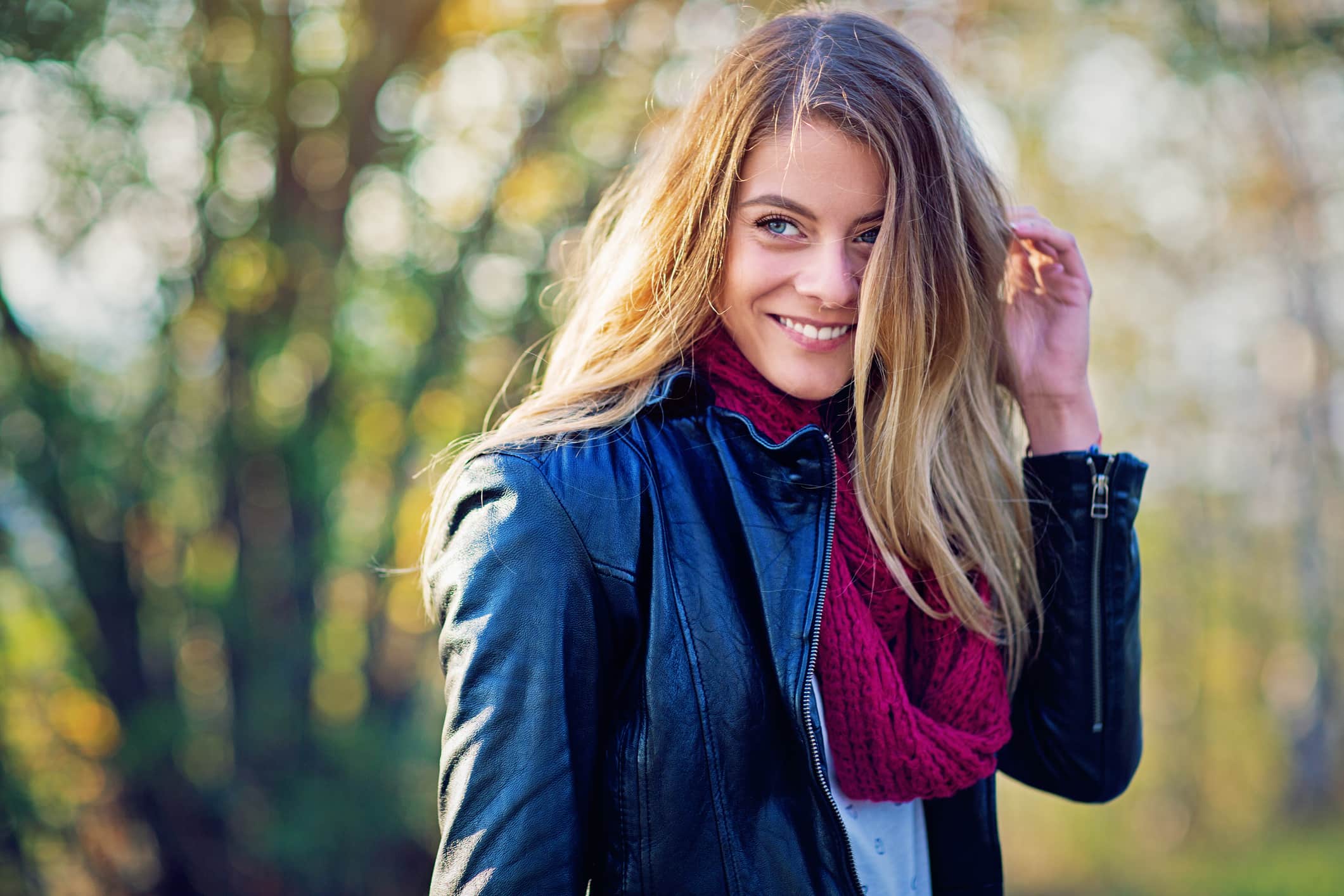
If you clicked on this article, I'm assuming that you already know what bokeh is, but if not, here's a quick explanation:
Bokeh is the out of focus area of a photo. Simple, right?
There are many facets to bokeh, however.
On the one hand, there is such a thing as good and bad bokeh.
On the other hand, several factors influence how bokeh looks, including the aperture and the focal length of the lens and the distance between you and your subject.
What's more, bokeh can be used as a creative tool to add dimension to your shots while also helping you mask unwanted features in the background.
See how bokeh is much more than the blurry part of the photo?
In this tutorial, you'll learn how to create incredible bokeh effects that will enhance the portraits you take.
Step 1: Get the Right Lens
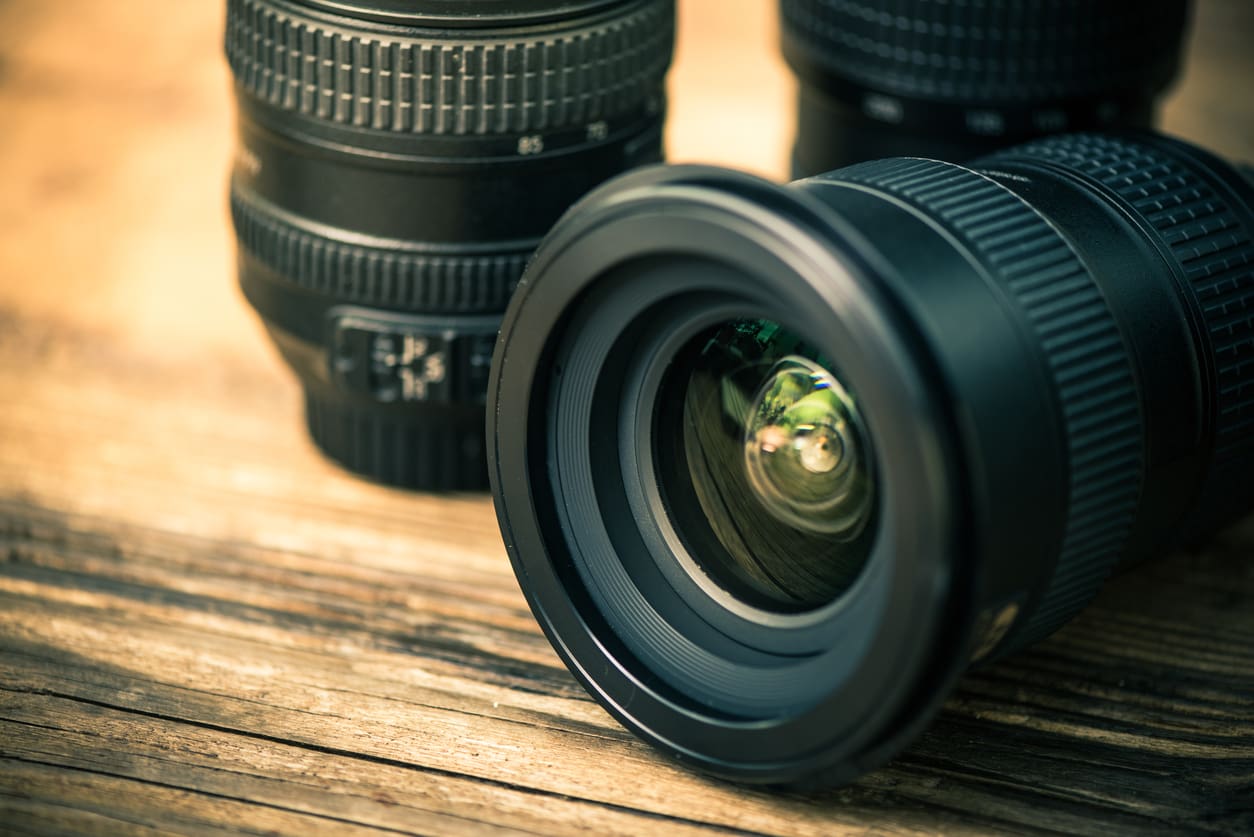
Editor's Tip: You can create bokeh with any lens, but for the best quality bokeh, consider a prime lens - something like a 50mm or 85mm - with a large aperture like f/1.2 or f/1.4. Either of these lenses are ideal for portraits anyway, and with beautiful bokeh, the portraits you take will be that much more impressive. You can find great deals on pre-owned lenses at Lensfinder.com.
Getting the right lens is the first step in creating gorgeous bokeh in your portraits.
When shopping for a lens, there are a couple of things you need to bear in mind, both of which I outline in detail below.
You Want a Large Aperture
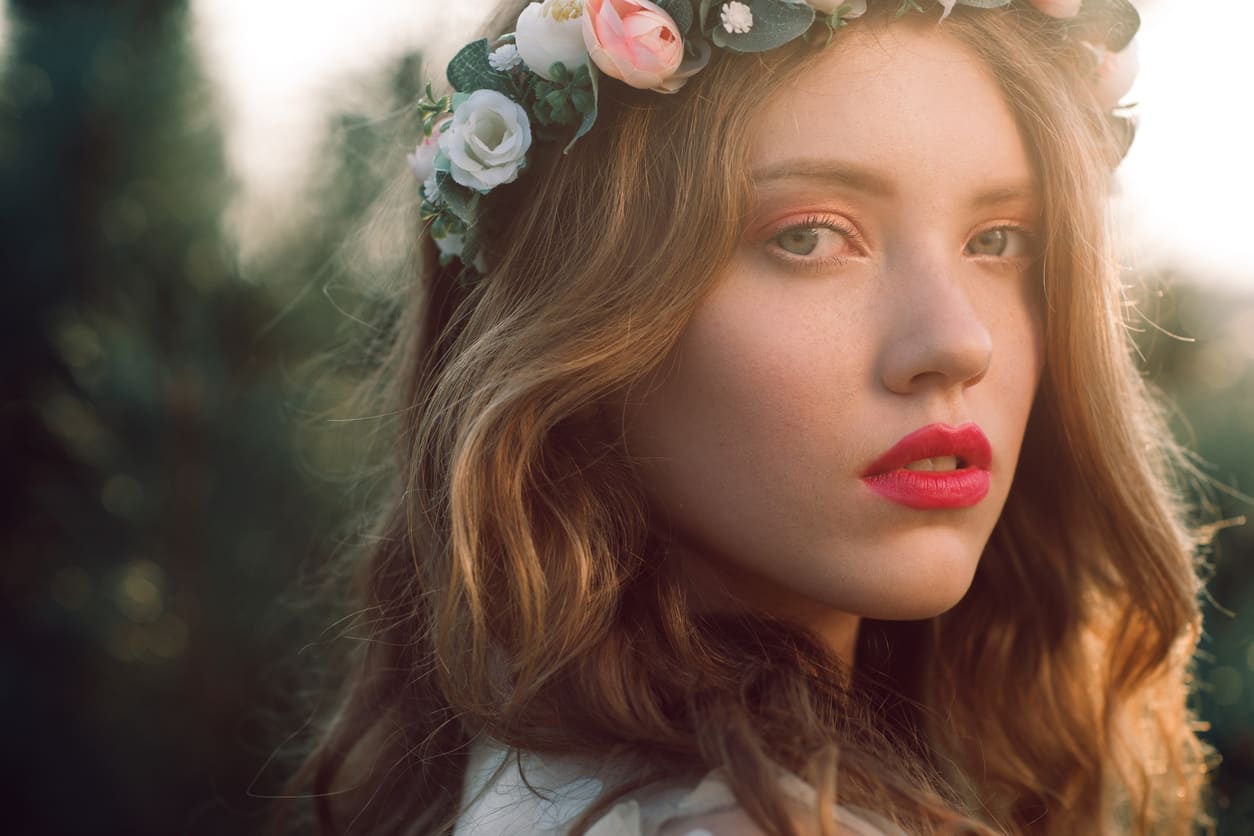
One of the primary factors that influence bokeh is the depth of field. And one of the principal factors that determine the depth of field is the aperture that's used.
The larger the aperture, the shallower the depth of field. So, when shooting at f/2, you have a shallower depth of field than if you shoot from the very same spot using an aperture of f/22.
That makes lenses with wide maximum apertures advantageous for creating bokeh-filled backgrounds.
An f/1.2 lens would create the shallowest depth of field, and therefore the best bokeh, as seen in the image above. However, those lenses can be pricey.
For something that's a little easier on the pocketbook, try finding a lens with a maximum aperture of f/1.4, f/1.8, or f/2.
You Want a Longer Focal Length

Another factor that influences depth of field - and therefore, bokeh as well - is the focal length of the lens.
All else being equal, longer focal lengths create a shallower depth of field and larger bokeh.
That means that a 135mm lens will produce more pronounced bokeh than a 24mm lens.
That's not to say that a wide-angle lens can't create nice-looking bokeh, but it's just easier to do with a longer focal length.
Learn More:
- A Beginner's Guide to Aperture and Depth of Field
- Focal Length and Field of View Explained in 4 Steps
Step 2: Get the Distance Just Right
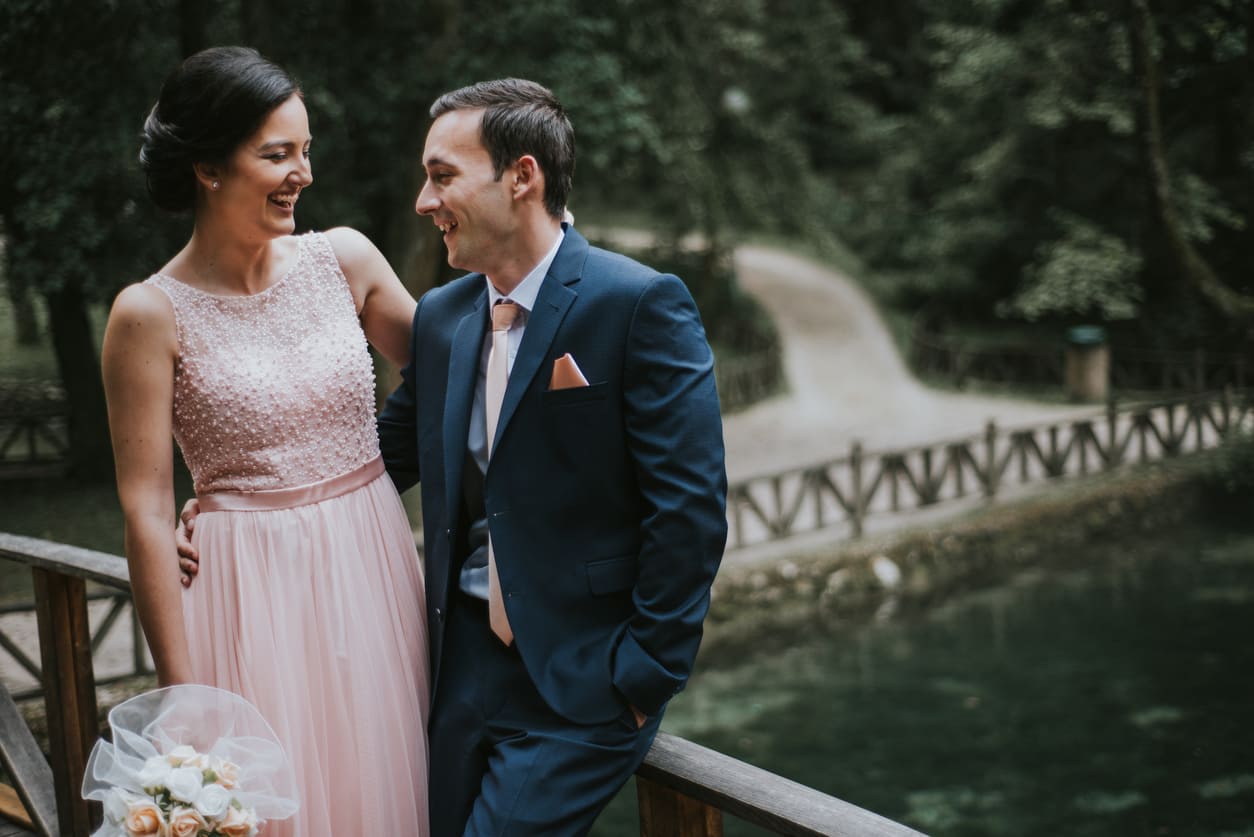
It's not just the lens that influences the quality and quantity of bokeh in a portrait.
The distance between your lens and the subject as well as the distance between the subject and the background also have a say in how bokeh appears.
More specifically, the closer you are to the subject, the blurrier the background will become.
Likewise, the further the subject is from the background, the blurrier it will be.
So, when framing up your portraits, minimize your distance to the subject and maximize their distance to the background to get the most pleasing bokeh effects.
Learn More:
Step 3: Keep an Eye on the Background
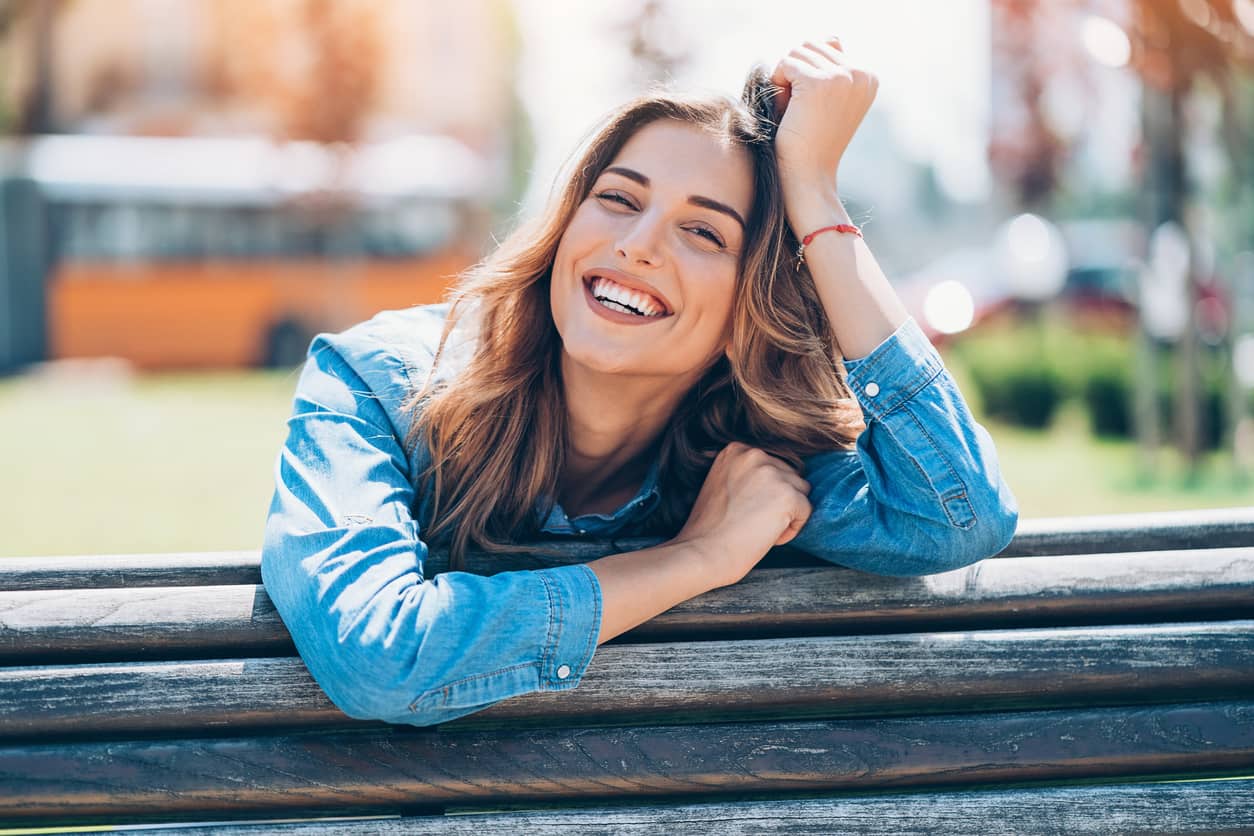
Even with the right lens and the perfect distance, you'll still need to keep an eye on what's happening in the background of the image.
For example, if you're taking a portrait outdoors and your subject is in front of a busy street, vehicles on the street might still be distinguishable, even if they're blurred out (like the school bus in the image above).
Those big blocks of color might be distracting in the background, so you'll need to take steps to adjust your shooting angle to crop them out of the shot.
That might mean kneeling down and shooting up toward your portrait subject or changing your positioning relative to the subject so you can incorporate other elements into the background.
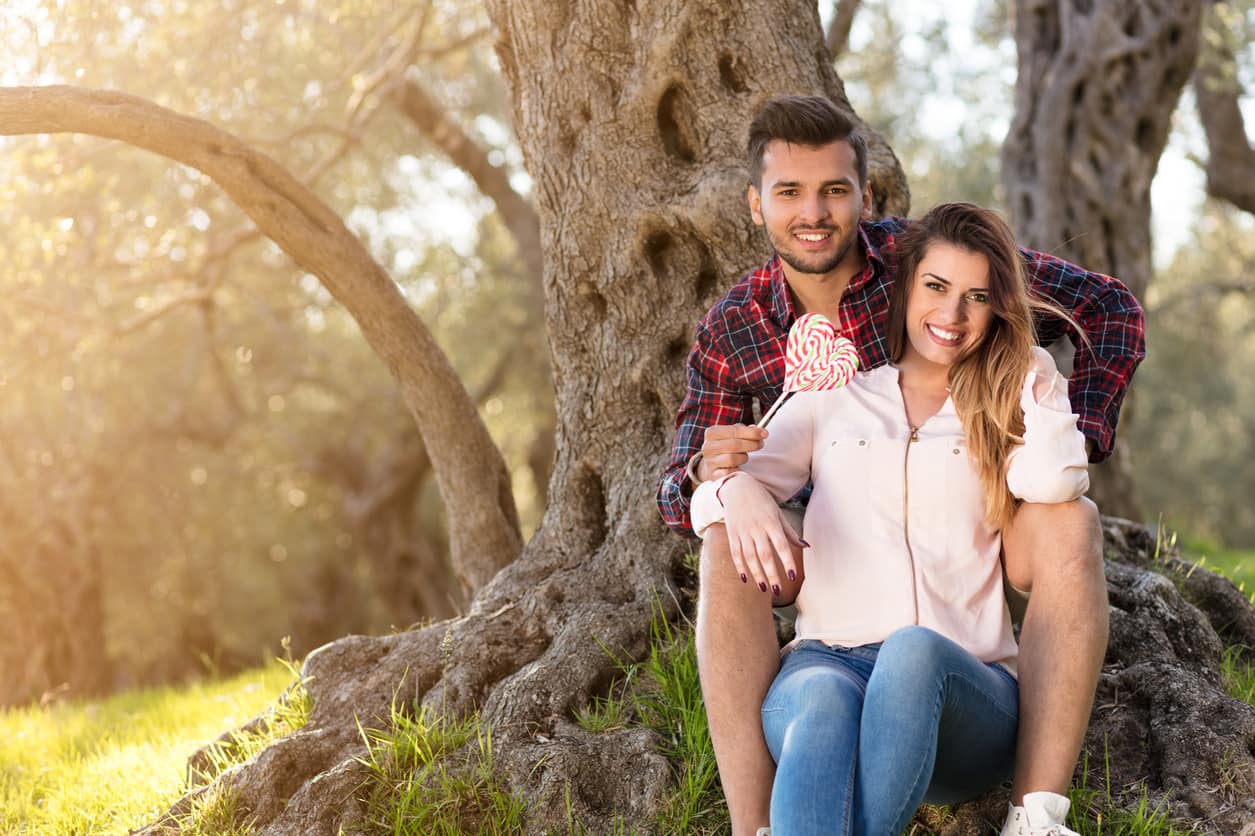
Another important point to consider with the background is its level of contrast.
Yes, it'll be blurred out, but if there's a ton of contrast with a lot of bright highlights and dark shadows, the background could be a little on the distracting side.
The whole point of blurring the background is to help the portrait subject stand out in the frame, separated from the background.
If you put them in front of a busy background, even if it's blurred out, it can still be a little much.
So, look for backgrounds that have muted tones and contrast so your portraits have a nice, even-keeled background.
Learn More:
- Got a Bad Background? Save Your Portraits With These 3 Easy Tips
- Portrait Tips for Beginner Photographers
Step 4: Touch It Up In Photoshop
I recommend that you strive to create good bokeh in-camera with the tips outlined above, but if you find that your bokeh just isn't up to snuff, you can enhance bokeh or add new bokeh effects to your images in post-processing.
And though Photoshop might seem complicated, adding bokeh is actually pretty straightforward.
In fact, you can blend one of your portraits with a bokeh image by placing the bokeh image on a layer above your portrait, change the blend mode to "Screen," and voila - bokeh!
For a detailed look at how to create stunning bokeh effects, check out the video above by PHLEARN.
We Recommend
A Step-By-Step Process for Improving Your Photos
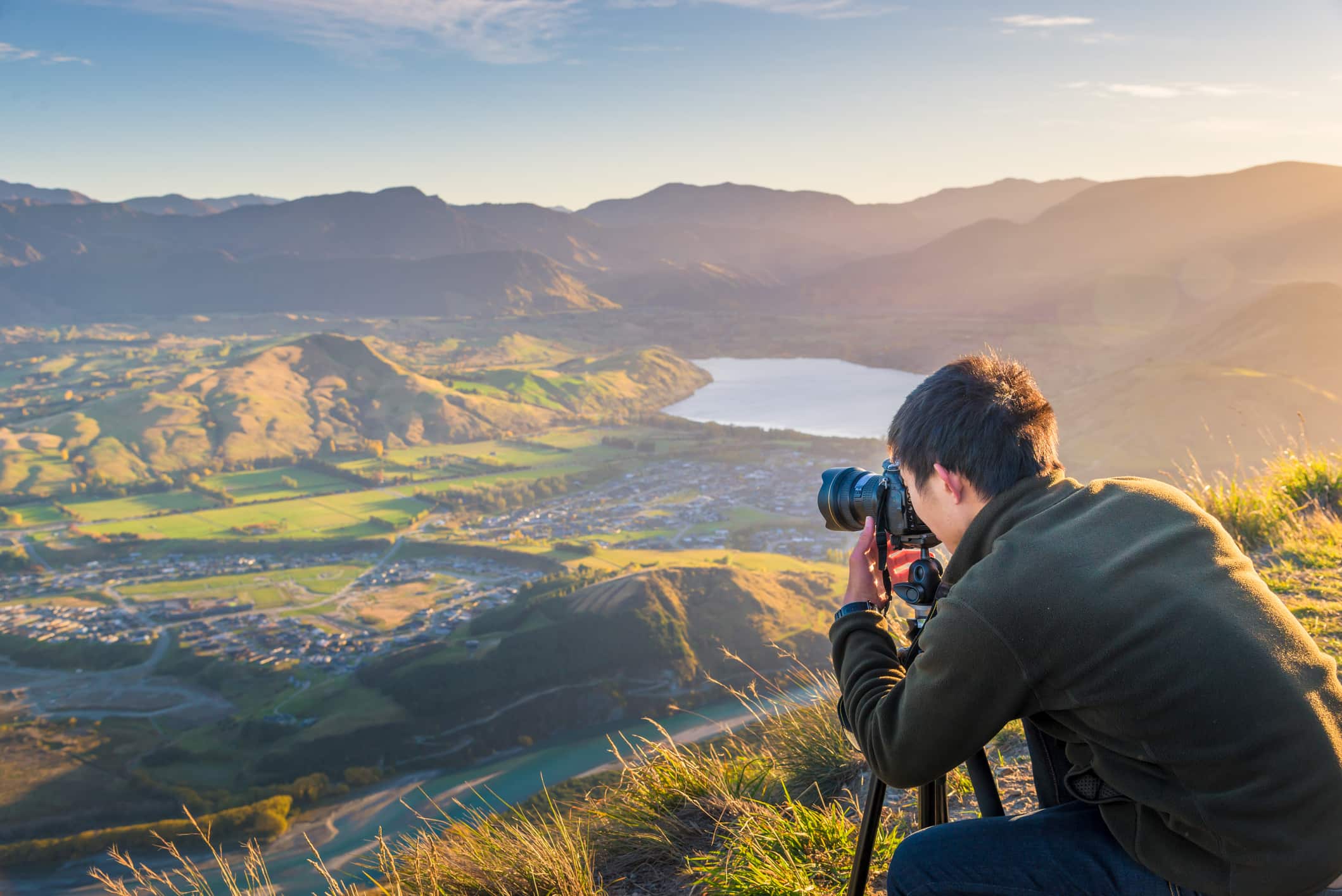
Let's face it...
We're all looking for ways to improve our photos, regardless of whether we just started in photography or have been at it for years.
And the great thing about photography today is that there are tons of things you can do that will help you improve the quality of your photos.
You can read tutorials, watch YouTube videos, and get gear that will facilitate better photo-taking.
In this article, I'd like to focus on a few steps you can take to ensure your photos are the highest possible quality and review some gear that will help you achieve that goal.
Stabilize Your Camera for Sharper Photos

Blurriness in photos is one of the most common problems that photographers experience, especially beginner photographers.
Yet despite being so common, it is a problem that's easily addressed with a good tripod.
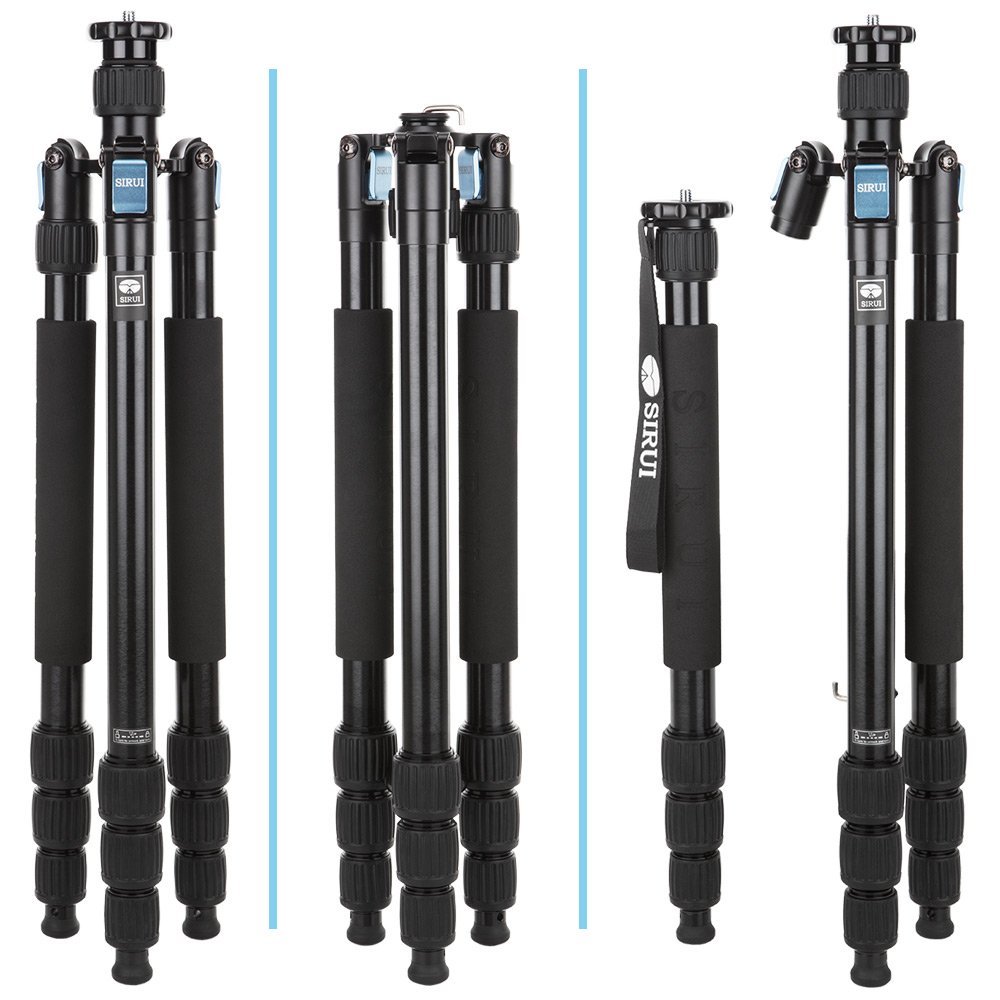
A tripod can solve the blurriness issue because no matter how sturdy of hand you think you are, there will still be minute movements as you take the photo.
But by putting your camera on a tripod, you eliminate the possibility of camera shake and ensure that the photos you take are nice and sharp.
Editor's Tip: Don't have a tripod? Get a high-quality tripod from Sirui. Two of their most popular models - the ET-2004 Kit and the W-1004 (both shown above) - offer tons of features that make them easy to setup and use (including some models that have a built-in monopod). Sirui's tripods are also well-priced, so you can get a great tripod without busting your budget. Learn more about Sirui products by clicking here.
Learn More:
Work Hands-Free

Blurry photos are such a common problem that there's another step you should take to protect against them.
That step is to work hands-free and use a camera remote.
A camera remote allows you to trigger the shutter without actually touching your camera.
The benefit of that, is, of course, that you don't inadvertently cause your camera to move or vibrate. That means sharper photos.
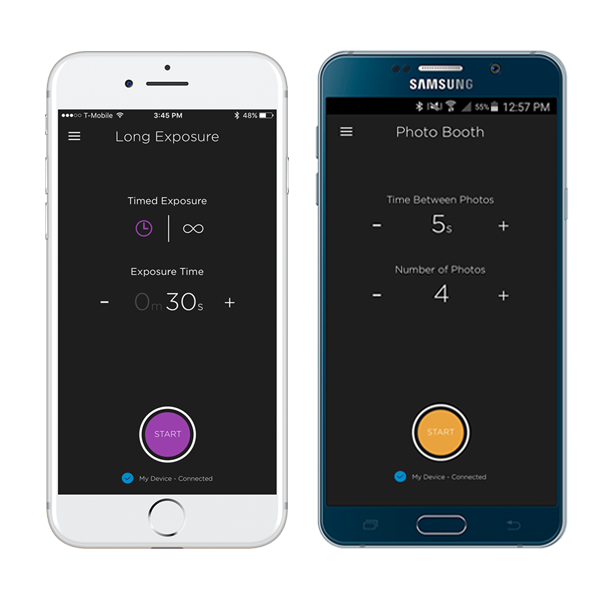
Of course, not all camera remotes are alike.
The best camera remote on the market is the Alpine Labs Spark.
This thing gives you much more power over your camera than simply triggering the shutter for sharper photos.
In fact, not only can you control your camera in three different ways - as a wired remote, an infrared remote, and via an app on your phone - but you can also take still photos, long exposures, real-time videos, and time-lapse videos as well.

Perhaps best of all, Spark comes in a tiny package that sits on top of your camera, so you don't have to lug around a big, heavy apparatus to reap all the benefits of sharper (and more creative) photos.
Combined with a good tripod, a camera remote will help you get your photos beautifully sharp and fine-tuned for maximum visual impact.
Learn More:
Upgrade Your Lens Game
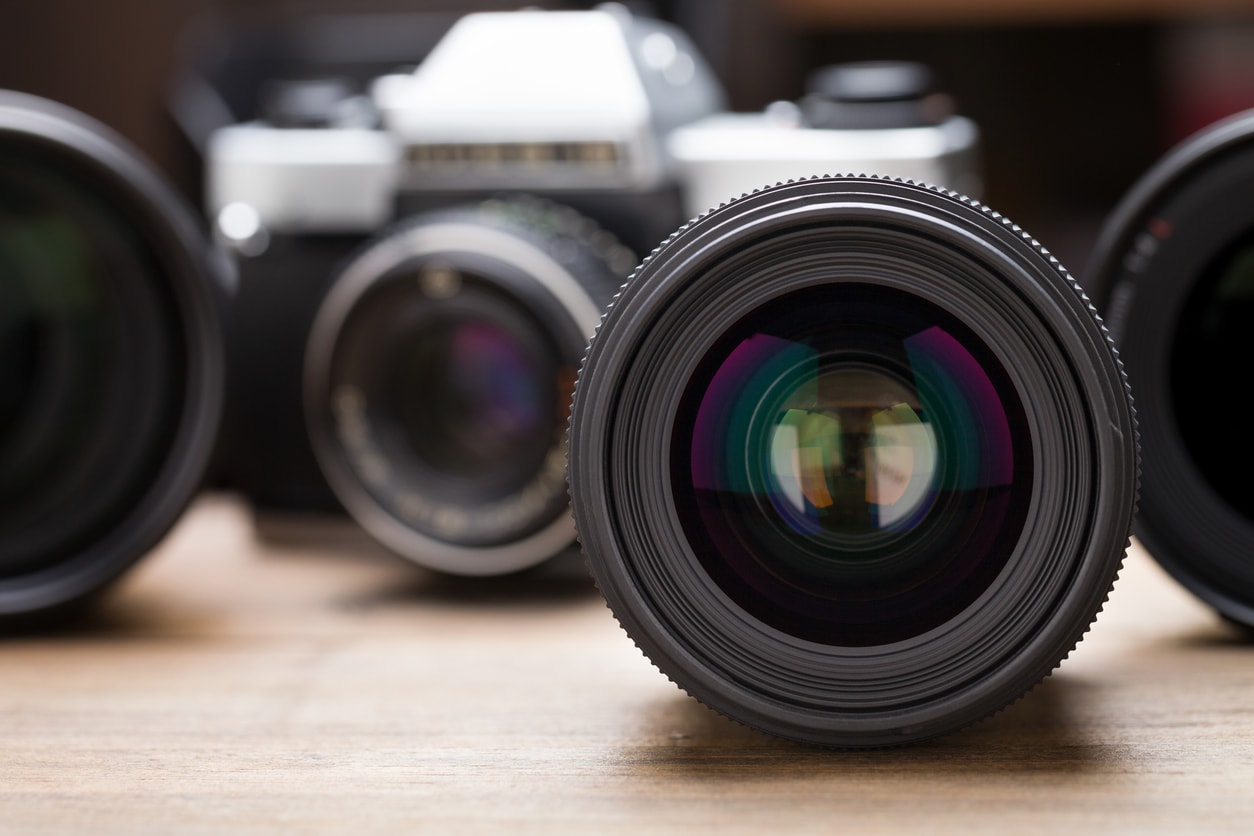
One of the best gear upgrades you can make to get higher-quality shots is in the lens department.
The kit lenses that come packaged with many cameras are just fine for learning the ropes, but they aren't the highest-quality glass (which is why they're bundled with cameras).
These lenses often have plastic bodies, fewer lens elements, and lower-quality glass, which means photos that are less sharp with poorer color fidelity than higher-end glass.
What's more, more expensive camera lenses have less aberrations, ghosting, and flare, all of which can reduce the quality of your photos.

If you're upgrading your lens for the first time, a great choice is a 50mm lens, which is often called a "Nifty Fifty."
These lenses are great because they are extremely versatile and can be used for anything from portraits to landscapes to architecture and just about anything in between.
They often have a very large aperture as well, so you can shoot in low-light conditions and get improved results without having to resort to using a flash or a very high ISO.
Nifty Fifties are often inexpensive, too, so you can get a great lens for your kit and not have to spend a ton of money!
Editor's Note: Get outfitted with a higher-end lens and save money at the same time by buying a pre-owned lens. The ideal marketplace to do so is Lensfinder, which gives photographers like you and me a platform for buying (and selling) used lenses. The process is quick and easy, with tons of protections to ensure it's a smooth transaction. Learn more about Lensfinder by visiting their website.
Learn More:
- Why a 50mm Lens is the Best Lens in Your Camera Bag
- What You Need to Know Before Buying a Camera Lens
Use Filters to Add Drama

Perhaps one of the simplest steps you can take to create more eye-catching photos is to use filters.
Some photographers these days shirk the use of filters in favor of using programs like Photoshop or Lightroom to add effects in post-processing.
But if you ask me, the impact of using a good filter simply cannot be replicated when you edit the photo.
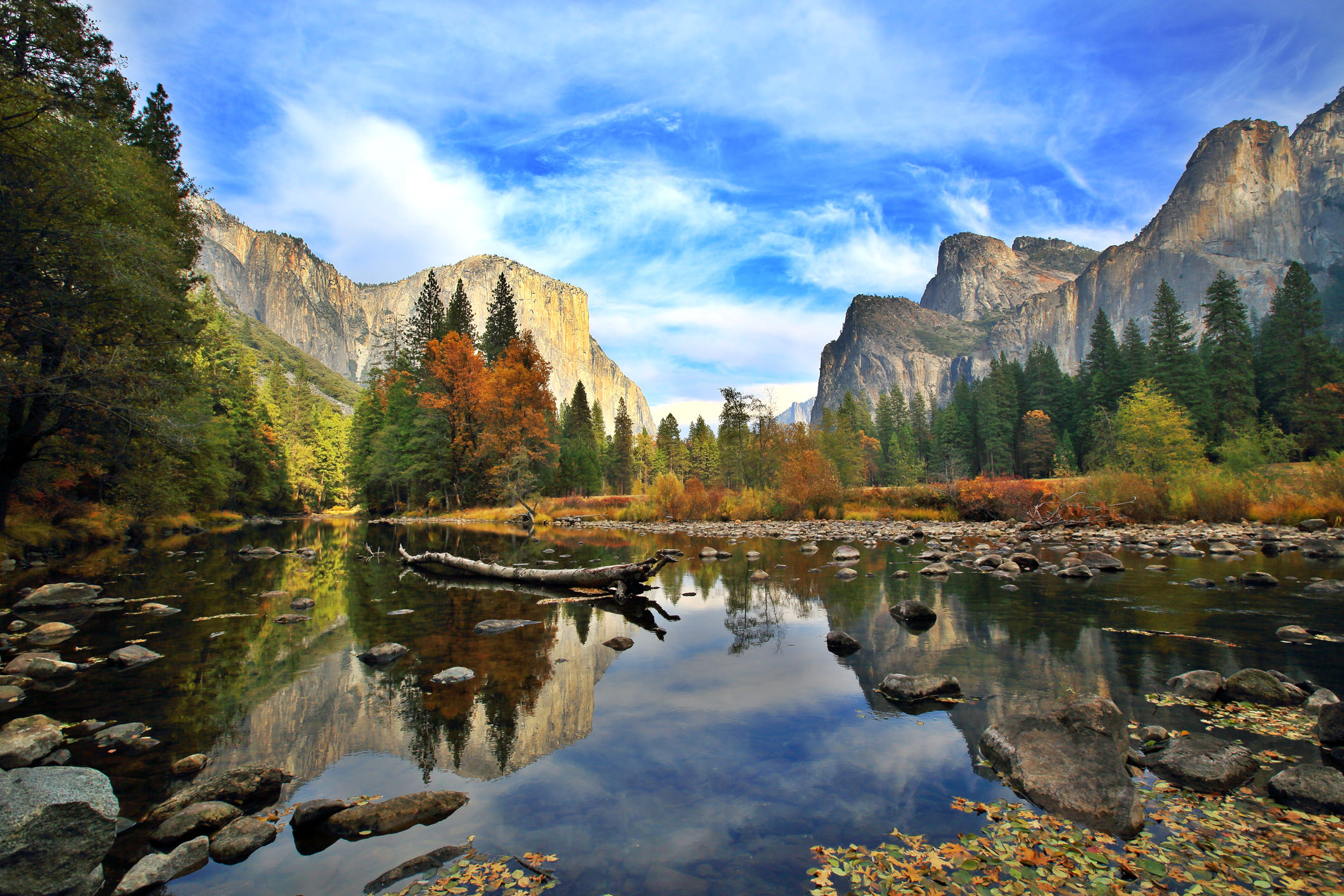
For example, if you're shooting landscapes, a polarizing filter can do a number of things to bring out the drama in the shot.
That includes boosting the contrast of the sky, such that the blue is deeper and the white of the clouds is brighter for more pop.
Polarizing filters also reduce the glare of the sun off the surface of water and other non-metallic objects, which means viewers get to see the color of the water (and even into the water) and not be distracted by a sharp glare.
Polarizers reduce atmospheric haze as well, so viewers can see the landscape in clear, crisp beauty.
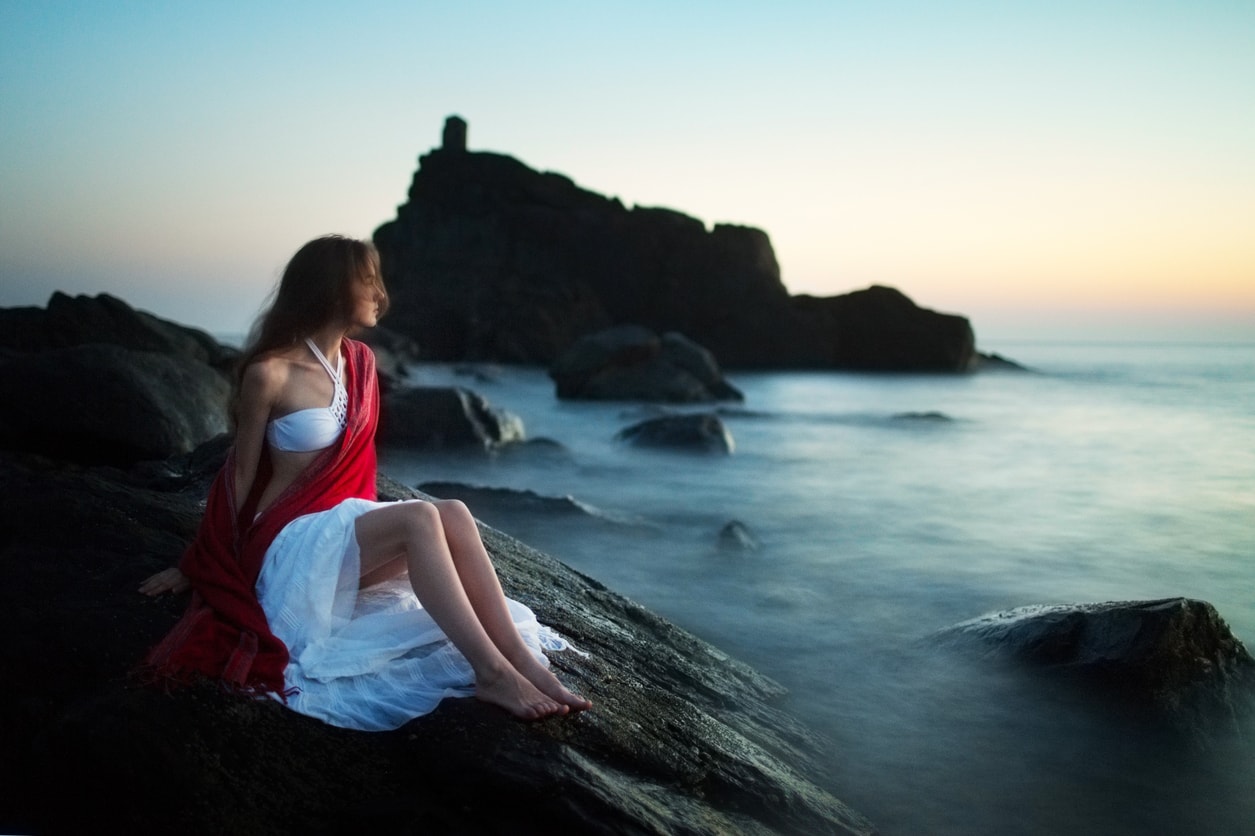
If you're shooting portraits, you can use a neutral density filter to create an ethereal look in which there's blurred movement in the shot.
That might be blurring water, as is the case in the image above, or it could be blurring clouds, passing cars, or even people.
You can also pair an ND filter with your flash to get improved results, or use an ND filter when shooting outside to get improved dynamic range in your photos.
Of course, ND filters are also ideal for creating landscapes with beautifully blurred motion, too.
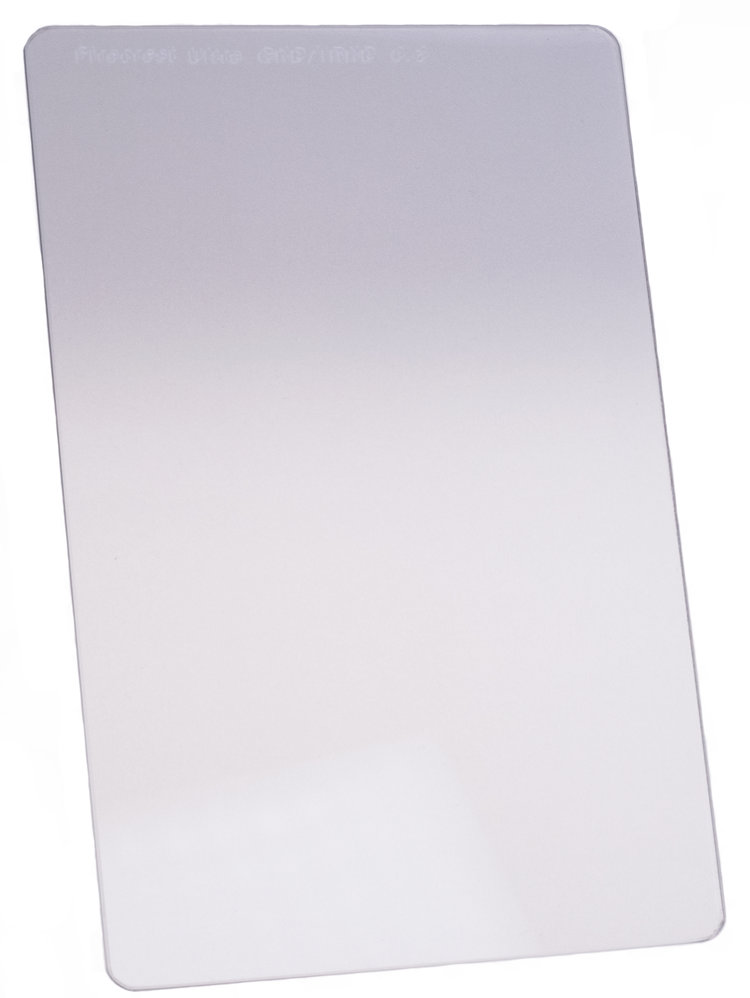
The moral of the story is that dramatic, eye-catching photos might look complicated to create, but if you have the right filters, you too can make these kinds of images!
Just be sure you get the right kind of filters for the job, as some are certainly better than others.
Formatt-Hitech, for example, has a great line of filters, including their Firecrest Ultra filters that take quality to the next level.
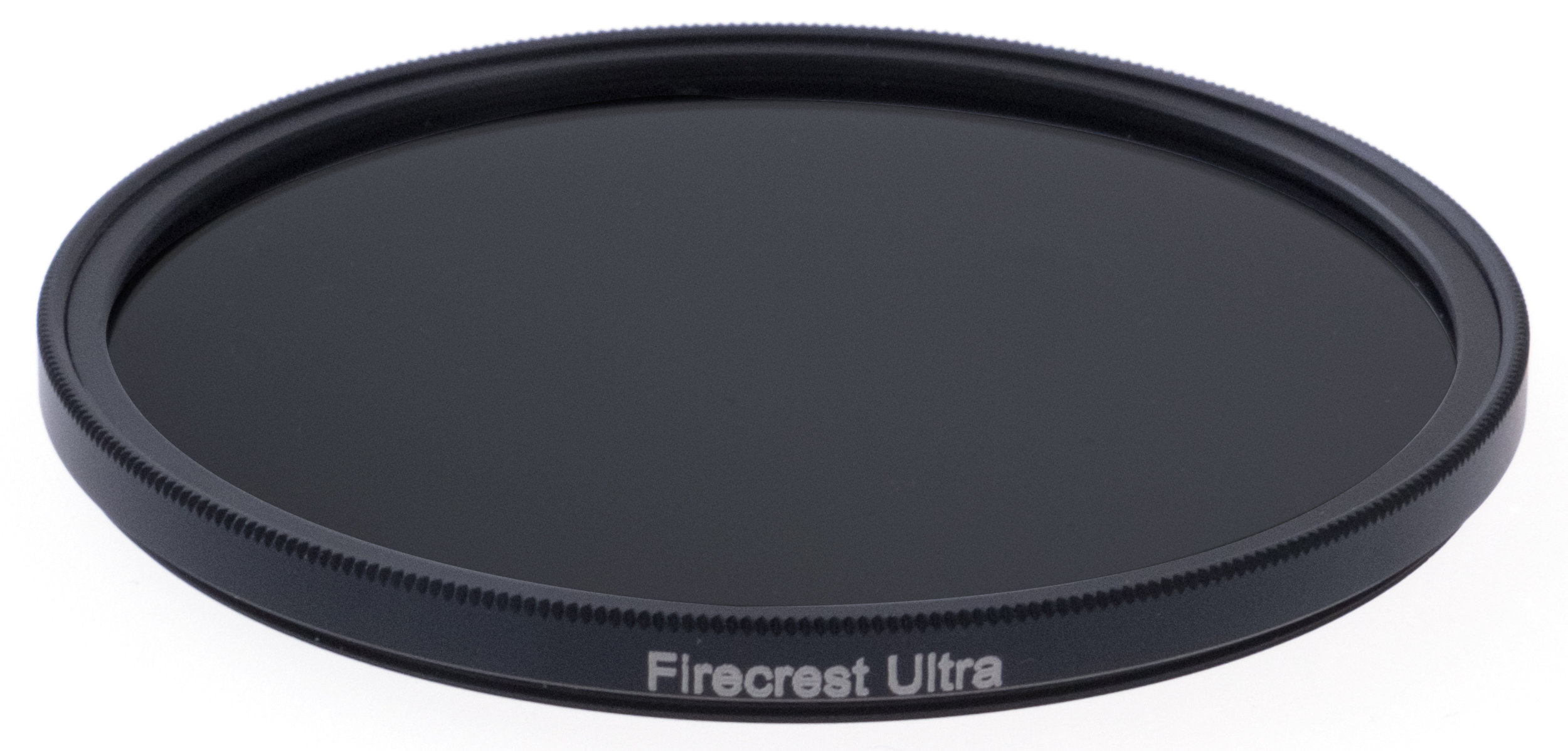
These filters are the only professional filters that are bonded to protect the filter coating. That means better durability over the long-term.
What's more, Firecrest Ultra filters are lap and polish filters, which means they have improved clarity and sharpness.
With Firecrest Ultra NDs, graduated NDs, and reverse NDs, you'll be ready to go to create highly dramatic photos!
Learn More:
We Recommend
As Far as Crazy Camera Lenses Go, This "Snorkel" Lens Beats Them All
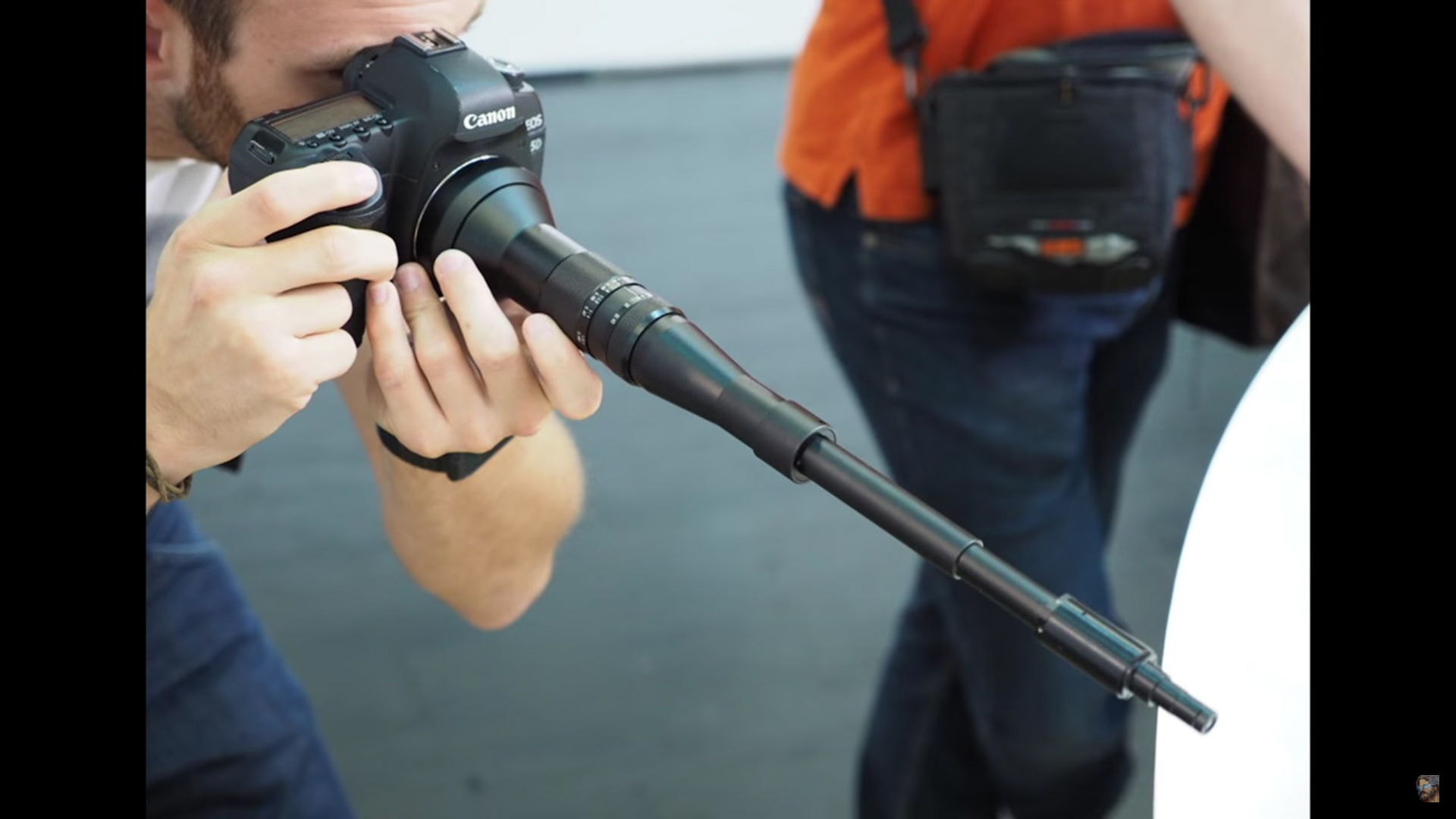 YouTube Screenshot/Titan Top List
YouTube Screenshot/Titan Top List
I've seen a lot of crazy camera lenses over the years, but I have to say that this one might just take the cake.
It's a Laowa 24mm f/14 relay "snorkel" macro lens that was introduced at Photokina back in 2016.
As you can see, nothing about the appearance of this lens is normal...
That's because it has an extremely long lens barrel that allows you to shoot in odd positions and unusual conditions as well.
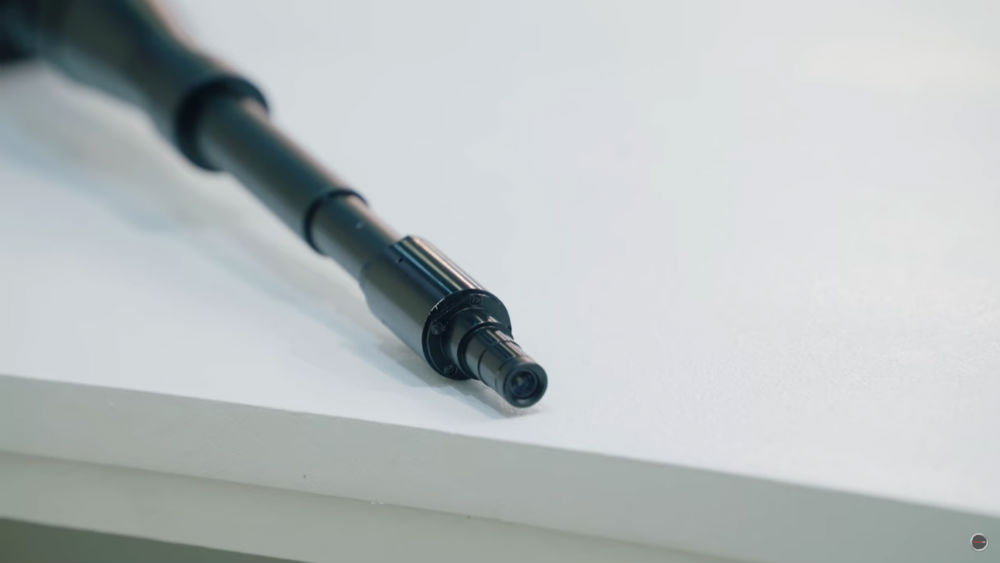 YouTube Screenshot/Cinema5D
YouTube Screenshot/Cinema5D
For example, you can actually submerge the lens in water to get 2x macro shots of whatever is under the water's surface.
Just trying doing that with your Canon 100mm f/2.8 macro!
Editor's Tip: Are you itching to buy a new camera?Learn why an upgraded lens will be far more beneficial than an upgraded camera.
If you've ever dipped your toes into the world of macro photography before, you understand that sometimes you have to get so close to the subject that the shadow of your lens appears in the shot.
Well, with this bad boy, that won't be a problem...
You can get up close to macro subjects without physically being all that close, and that should help you get better shots with less worry of what's happening shadow-wise with your gear (and you, for that matter).
The video above by Titan Top List explains this topic in a little more detail.
Of course, a 2x macro lens with a lens barrel that's a foot long presents other problems...
For starters, this is an f/14 lens, so it's not like you can do a lot of low-light shooting given that the aperture is so small.
Secondly, handholding this lens - even though it's quite light - would be an impossibility given the propensity for exaggerating camera shake.
If you were to use this lens, a tripod would be an absolute must.
You can see what I mean in the video above by Cinema5D. The live footage of using the lens (beginning at about the 1:30 mark) is enough to make you seasick - it's that hard to hold still.
Editor's Tip: If you're a Canon shooter and take a lot of landscape photos, there's plenty of lens options. Learn more about the top four lenses for landscape photographers.
Nevertheless, having a lens like this could make for a fun and interesting photo outing, that's for sure.
The f/14 aperture means you can get more detail in the background of your macro shots due to a greater depth of field.
At the same time, the wide-angle 24mm focal length allows you to get a wider shot of your subject's surroundings, too.
It's a crazy combination of features to say the least!
The prototype of this lens debuted at Photokina in 2016, but a quick Google search came up with nothing on whether this lens actually ever made it to market.
I'm assuming that because I couldn't find any information on it from the last two years that this lens made its way to the trash heap and was never produced.
Still, it's a cool concept if you're into macro photography, but if you want this particular lens, it looks like you're out of luck.
Learn More:
We Recommend
Awesome Budget Lenses for 2018
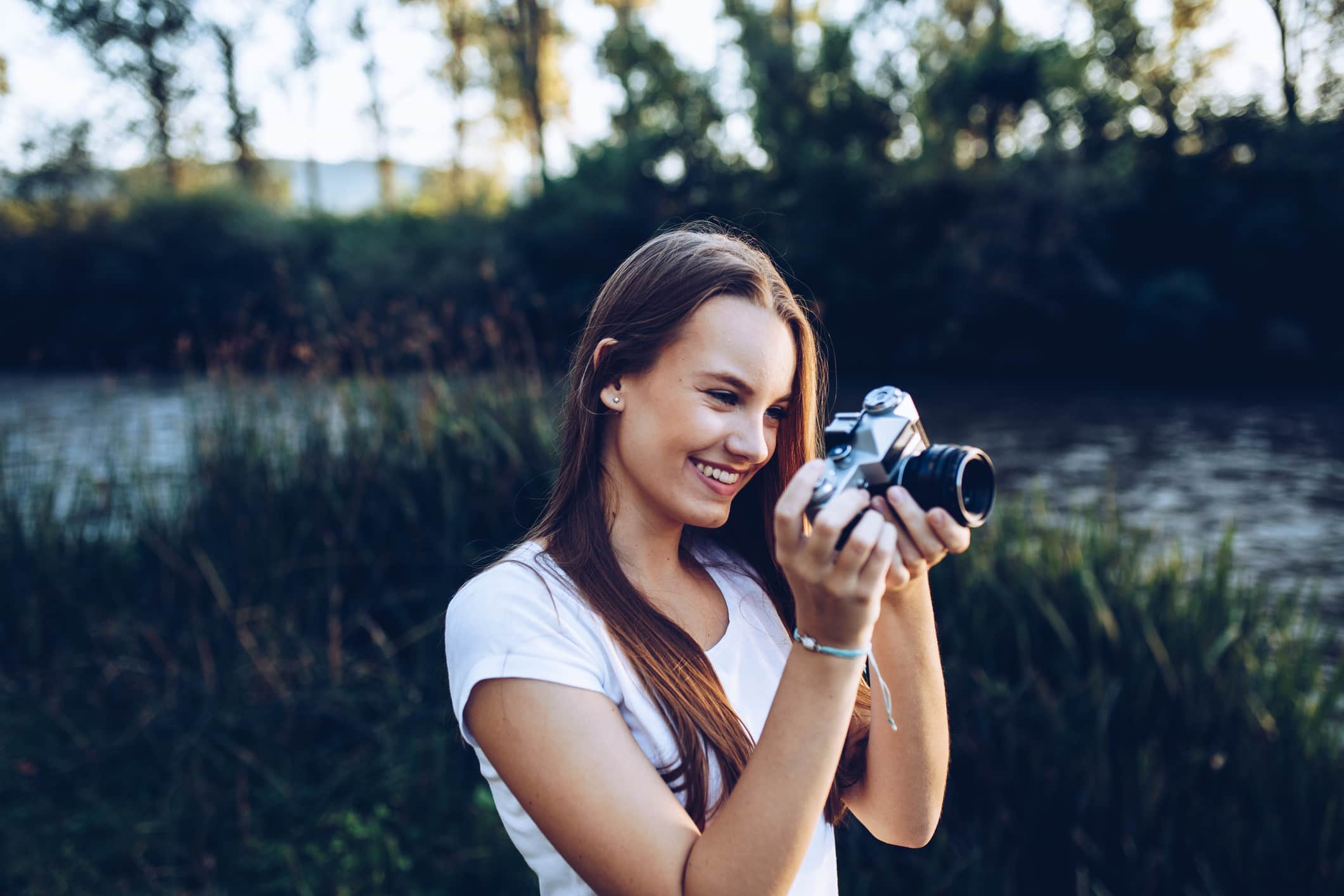
One thing that you often hear in photography is that if you're going to spend money on anything, it should be on a good lens.
Good glass gets you much better results than cheap glass, at least most of the time.
But there are some budget-friendly lenses that are an exception to that rule.
In the video above, Christopher Frost outlines an array of inexpensive lenses - 10, in fact - that will get you high-quality results without breaking the bank.
Most of the lenses are for Canon camera systems, but many of them can be found for Nikon and other major camera brands as well.
Below, I've outlined a few of my favorite lenses from Christopher's list.
Editor's Tip: Don't let your old, unused lenses sit around in a drawer. You can sell them and use the money you make to buy a new lens. Find out how to sell your old lenses here.
Budget Wide-Angle Lens: Samyang 14mm f/2.8 IF ED UMC
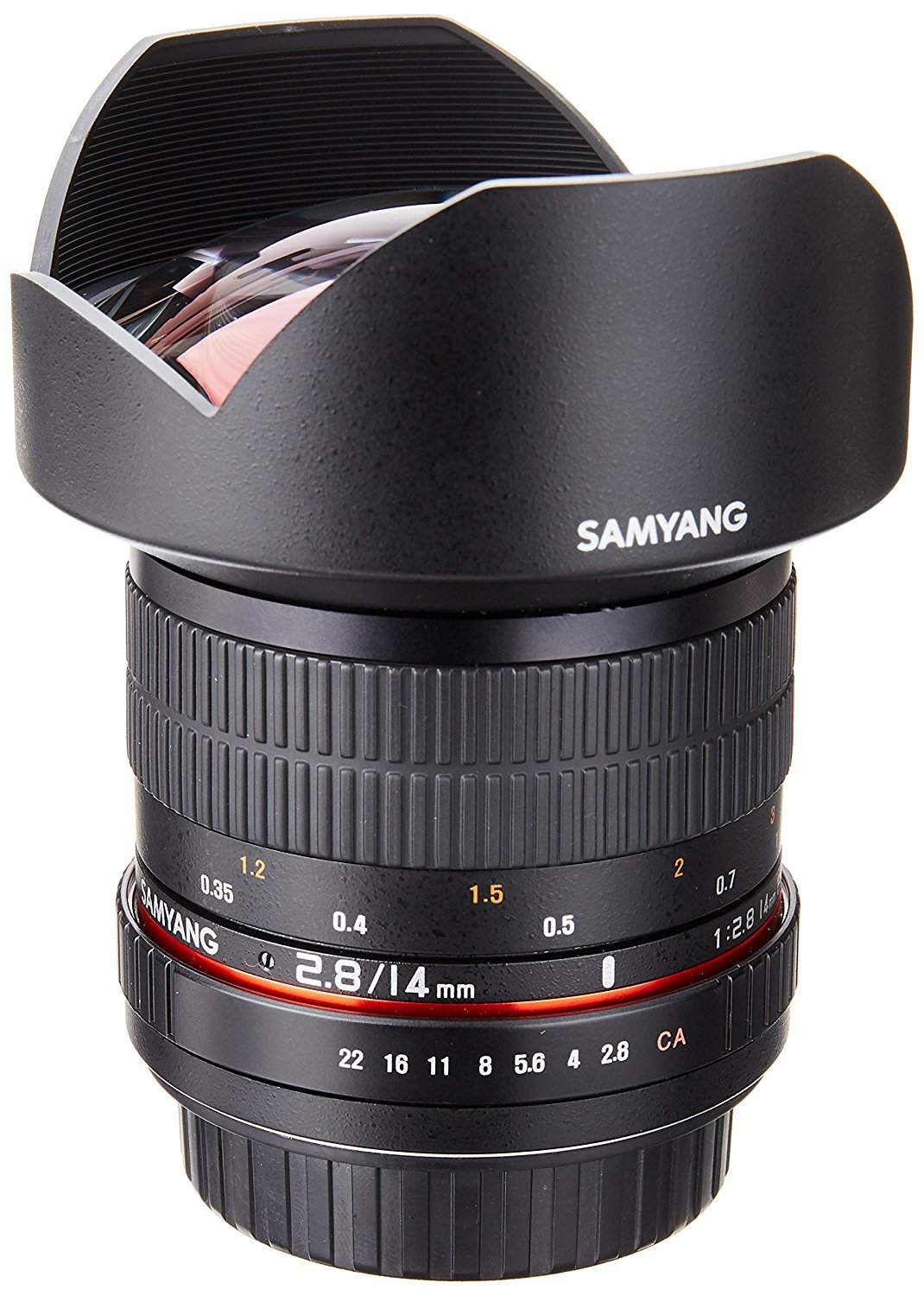
For wide-angle photography, it's tough to beat the Samyang 14mm f/2.8 manual focus lens.
It offers a decent f/2.8 aperture for low-light shooting situations, as well as a deliciously wide field of view that allows you to incorporate much more real estate into the shot.
This lens offers superb sharpness, too, especially for a rig that costs about $300 brand new. Compared to name brand lenses of the same capabilities, that's a savings of about hundreds and hundreds of dollars.
It fits Canon, Nikon, Sony, and other systems, and works on full frame and crop sensor cameras as well.
Learn More:
Budget Kit Lens Replacement: Sigma 17-50 f/2.8 OS HSM
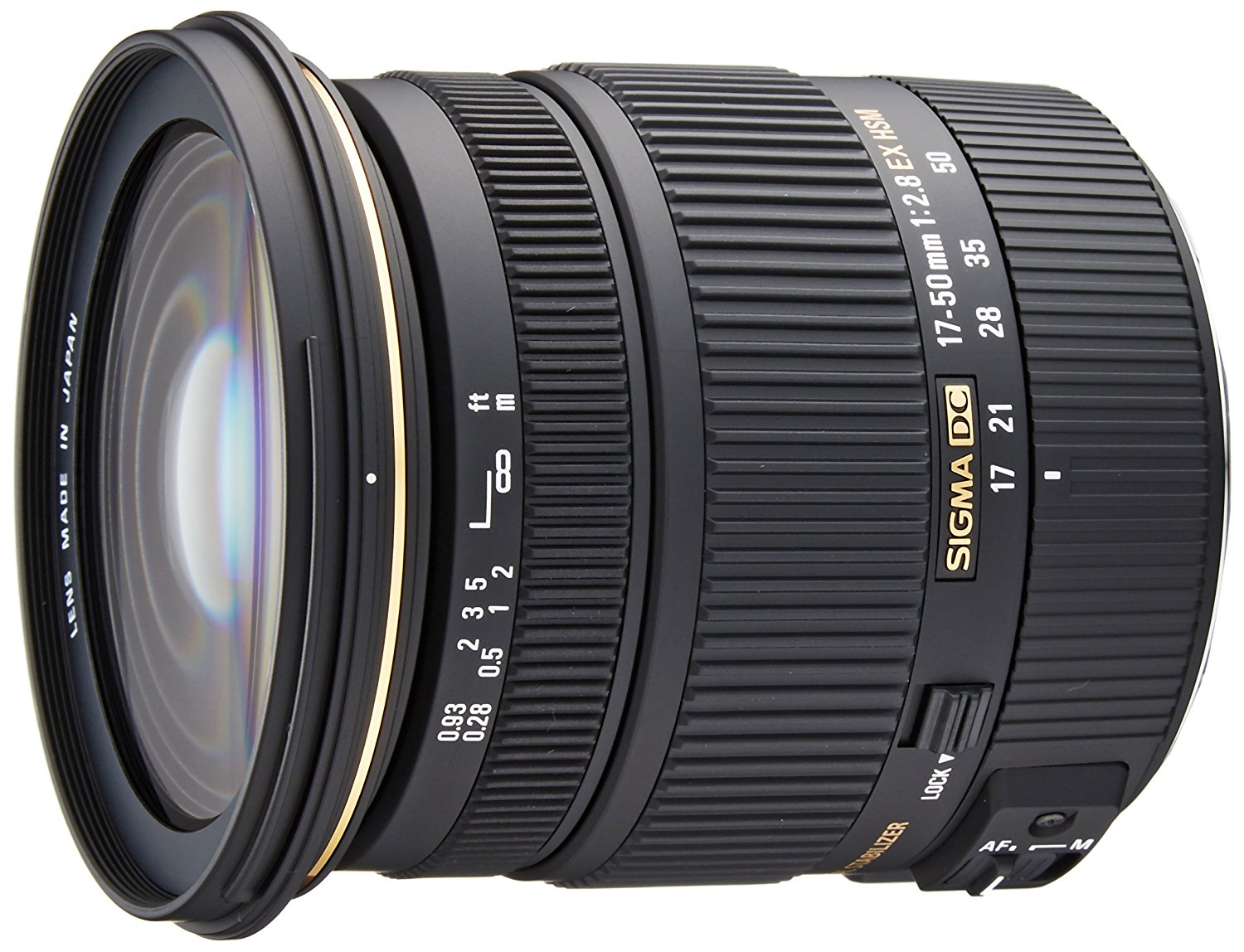
Though most kit lenses are of the 18-55mm variety, the Sigma 17-50mm is close enough in the focal range department.
But where this lens vastly outdoes its kit lens competitors is with its constant f/2.8 aperture.
My Canon kit lens has a variable aperture of f/3.5-5.6, which clearly lacks the same low-light performance as this Sigma.
Granted, the Sigma has a rather antiquated autofocus system and the image stabilization isn't the best, but its sharpness and its constant, wide aperture make up for it.
This lens fits Canon, Nikon, Sony, and Pentax camera systems, and runs about $370 brand new.
Learn More:
Budget Superzoom Lens: Tamron 18-200mm f/3.5-6.3 Di II VC
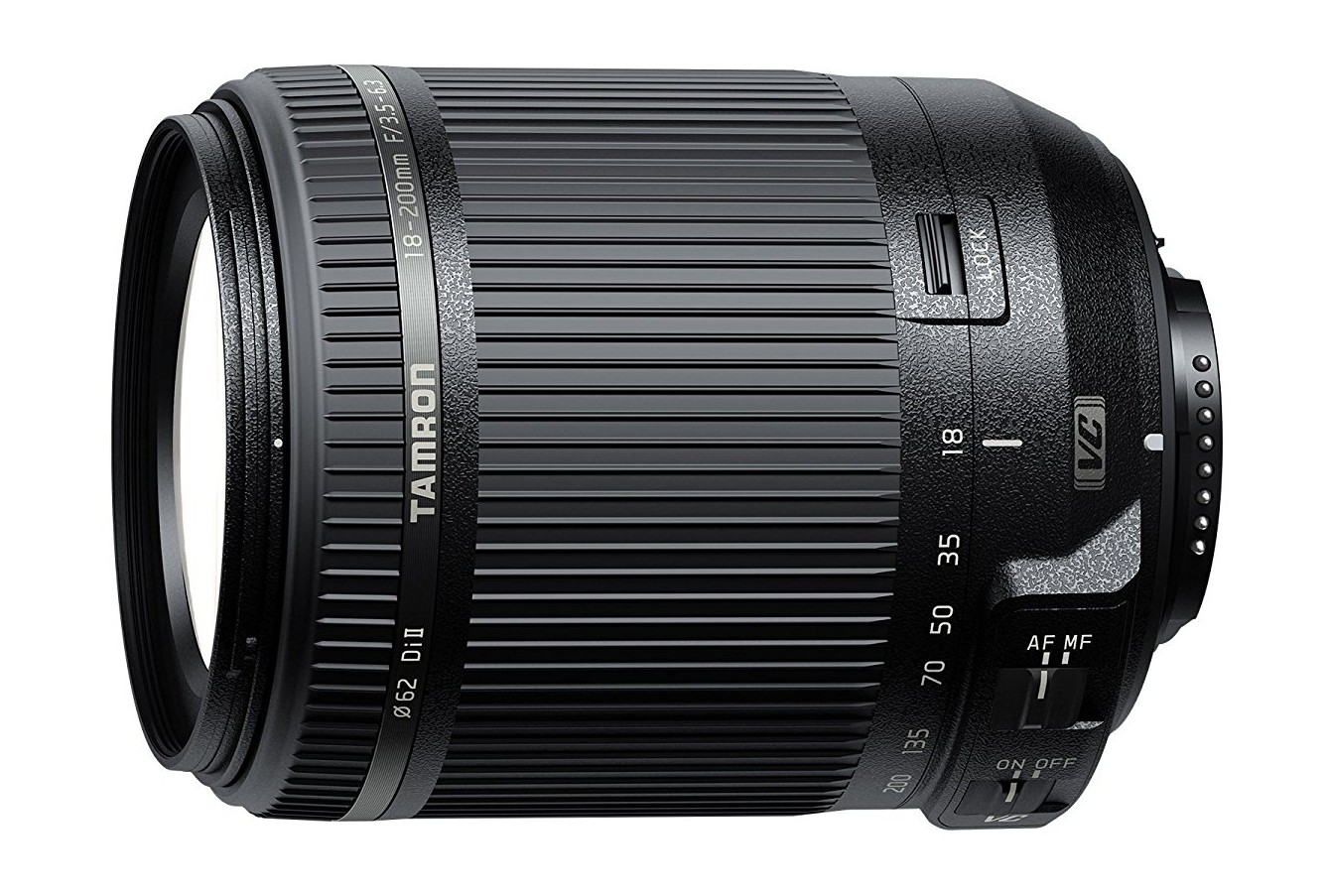
As far as zooms go, the Tamron 18-200mm offers incredible variability in focal length, taking you from wide-angle to telephoto with a flick of the wrist.
Like many zoom lenses, the aperture range is a respectable f/3.5-6.3, which will suit you just fine in most shooting conditions, though low-light shooting will be a problem without increasing the ISO or opening up the aperture.
This autofocus lens doesn't offer the same sharpness or image quality as the other lenses on this list, but at about $200 brand new, this is far and away one of the least expensive superzoom lenses on the market today.
It fits a number of camera systems, too, including Canon, Nikon, and Sony, and makes an ideal travel photography lens, given its wide focal range.
Learn More:
Best Standard Lens: Canon EF 50mm f/1.8 STM
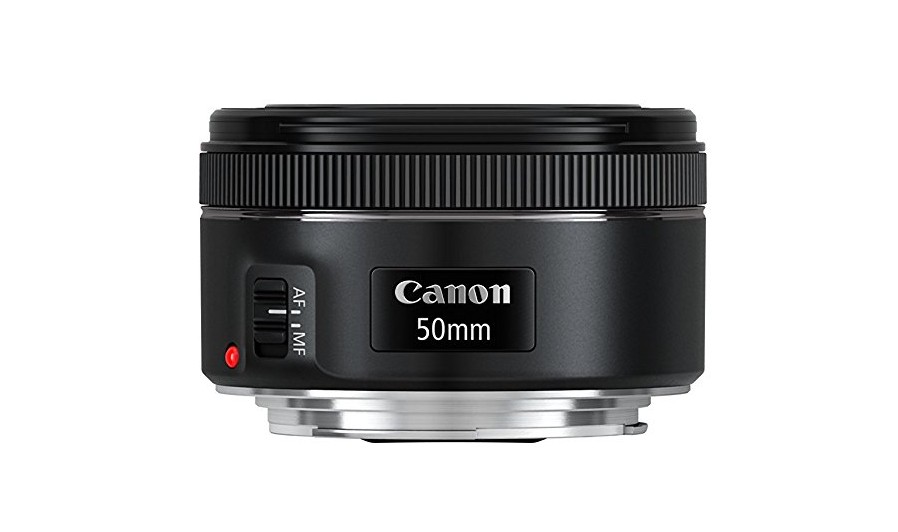
No list of excellent budget lenses would be complete without the venerable Canon EF 50mm f/1.8 STM.
This incredibly versatile lens offers a robust f/1.8 aperture, making it a rock star in low-light shooting situations. That large aperture also produces beautiful bokeh, which is ideal for portraiture.
But portraits aren't this lens's only strong suit. Whether you use it on a full frame or crop sensor camera, it can shine when used for landscapes, architecture, and street photography. You can even reverse mount it for macro work.
Fifty-millimeter lenses are also ideal for learning the art of composition and framing, as they challenge you to use your feet to zoom, rather than relying on a zoom lens to do it for you.
Best of all, this little guy is just $125 brand new!
If you aren't a Canon shooter, no worry - there are similar lenses for Nikon, Sony, and other manufacturers.
Learn More:
- 7 Reasons Why a 50mm Lens is All You Need for Great Photography
- Rookie Photography Mistakes You Need to Avoid
Editor's Note: If you want to save even more money, consider buying a pre-owned lens. Buying pre-owned means you can get a better lens for less money, and reap the benefits of improved performance and added features over lenses like those listed above. Search pre-owned lens inventory now.
We Recommend
Bad Photography Advice You Need to Ignore
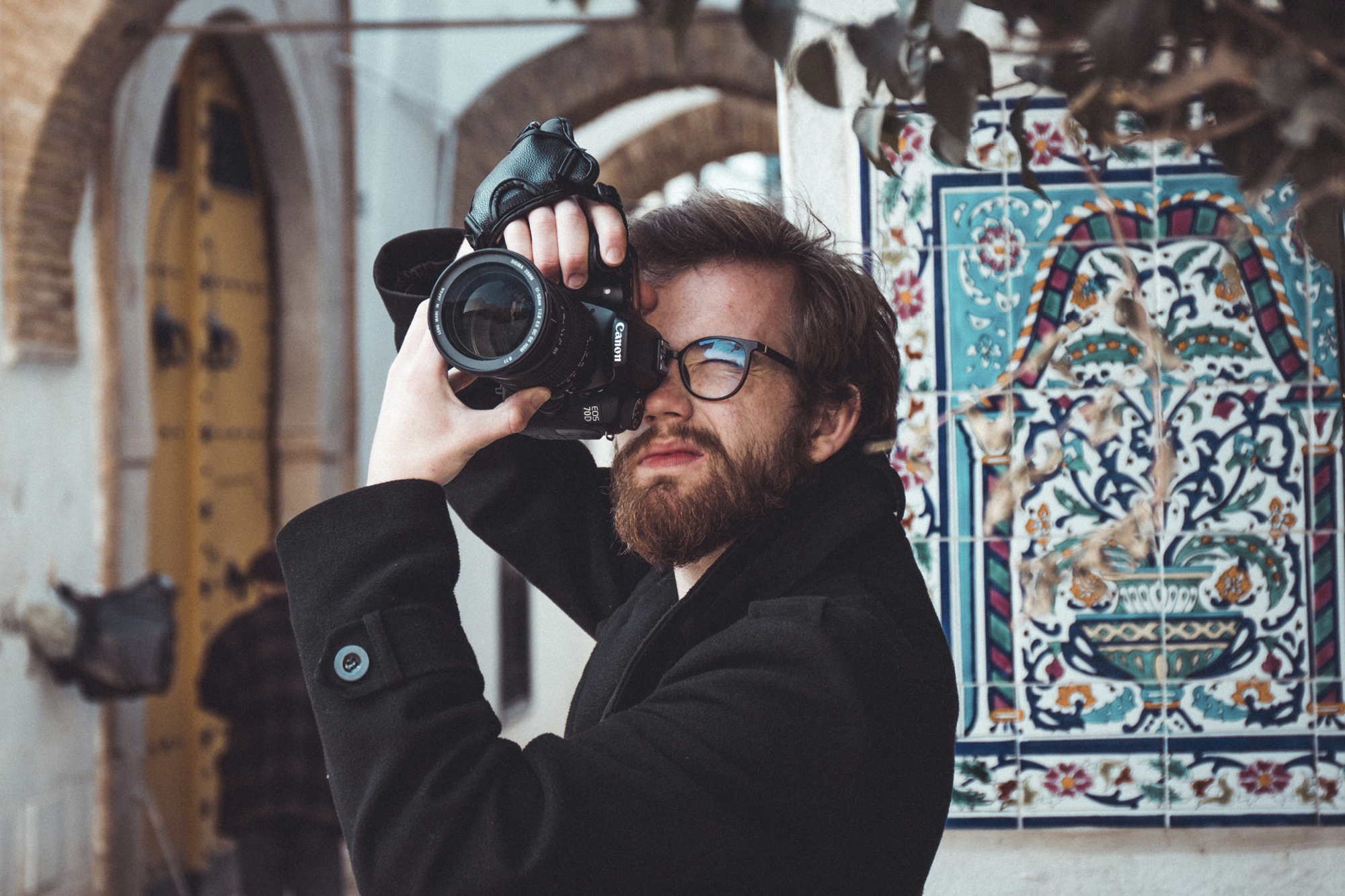
photo by Natashia Shukla on Unsplash
We’ve all been there…
You’re out shooting a beautiful landscape or taking photos of your kid’s soccer game when a friendly fellow photographer sidles up and starts offering you advice.
In many situations, the advice given can be quite helpful. Besides, I enjoy talking shop with other photographers.
But sometimes, the photographer giving the advice has no earthly idea what they’re talking about. Their bad photography advice should be ignored!
Here’s just a few dumb photography tips people have given me over the years.
Editor’s Tip: Do you have old lenses you no longer need or use? Are they collecting dust on a shelf somewhere? Get rid of them! By selling your old lenses, you can use the money to invest in new glass that better suits your workflow. At the same time, other photographers can benefit from buying your affordable old lenses. It’s a win-win! Start selling your old lenses now.
Bad Photography Advice: Shoot Wide Open
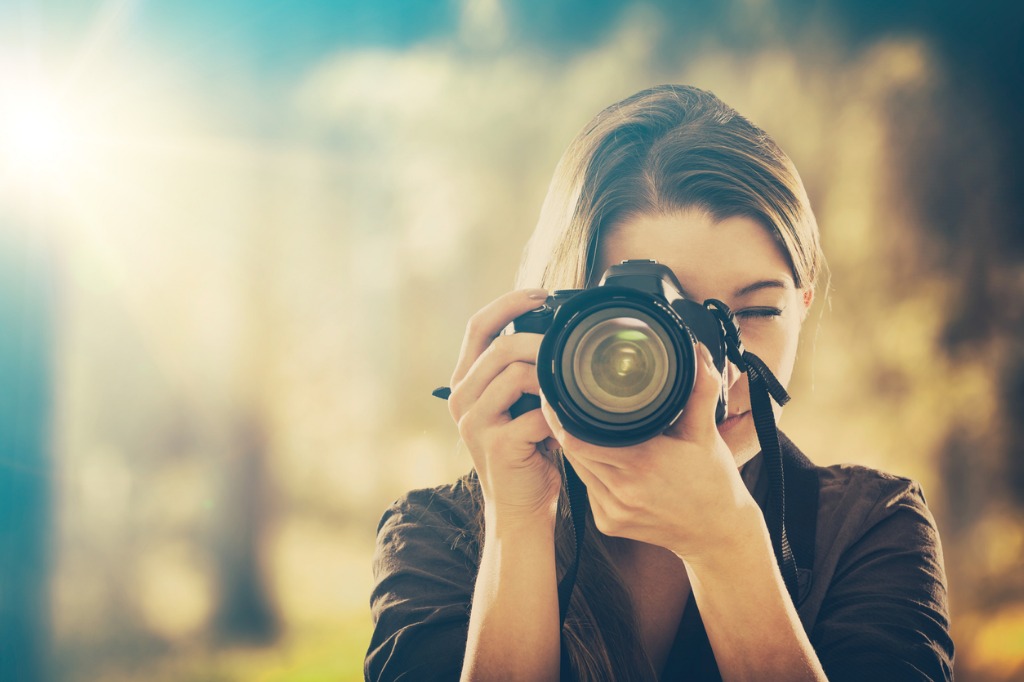
photo by scyther5 via iStock
“Shoot wide open,” they said. “It’ll make the depth of field smaller, and you’ll get a professional looking shot.”
While making the aperture of your lens as big as possible will help reduce the depth of field and facilitate background (or foreground blur), there’s a couple of problems with this piece of advice.
First, aperture isn’t the only factor that influences the depth of field, so slamming the aperture to its largest value and hoping it will produce beautiful bokeh isn’t the right approach for minimizing depth of field.
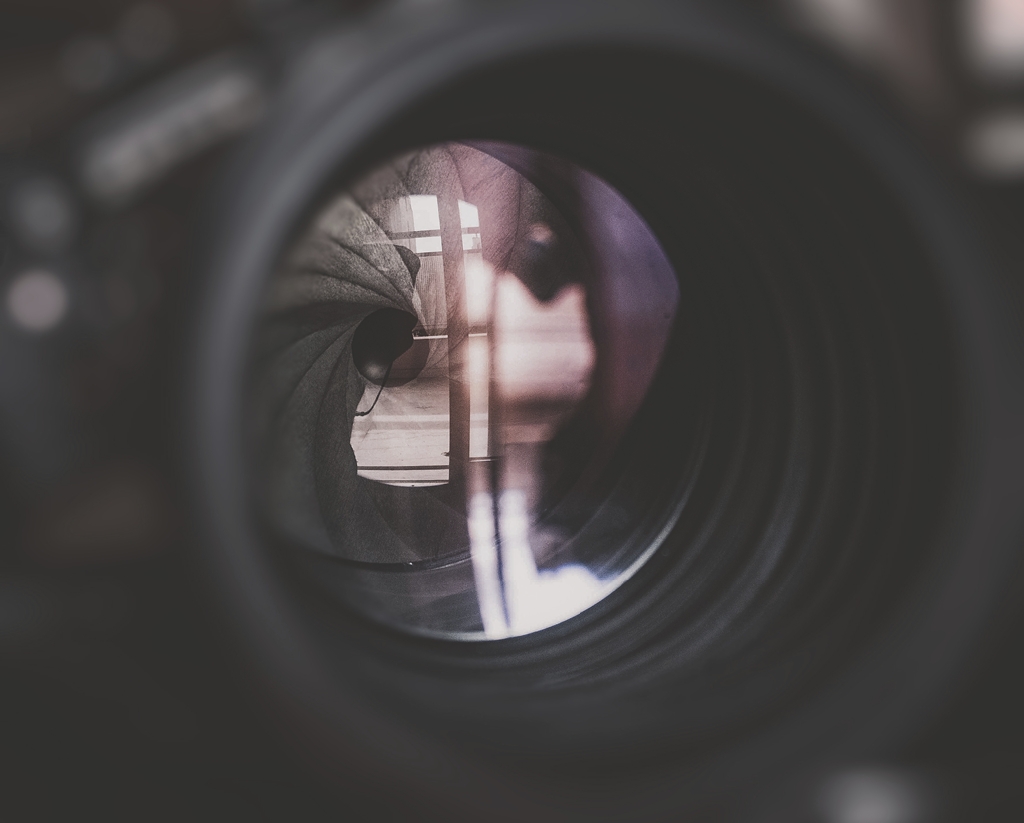
photo by eberhard grossgasteiger on Unsplash
Second, no lens - not even super expensive professional lenses - is its sharpest at its maximum aperture.
Instead, lenses have a sweet spot that gets you the sharpest possible details. Though the sweet spot varies from one lens to the next, it’s typically in the f/8 to f/11 range.
That being said, if the maximum aperture of your lens is f/1.8, and you step it down to f/2, you’ll notice improved sharpness, just from that one-stop difference.
So, ignore the bad photography tip to shoot wide open, and instead rein it in a stop or two to get improved sharpness.
Learn More:
- How to Blur the Background in Portraits in Four Simple Steps
- Want Ultra-Sharp Photos? Try These Lenses
Bad Photography Advice: Only Expensive Lenses Perform Well
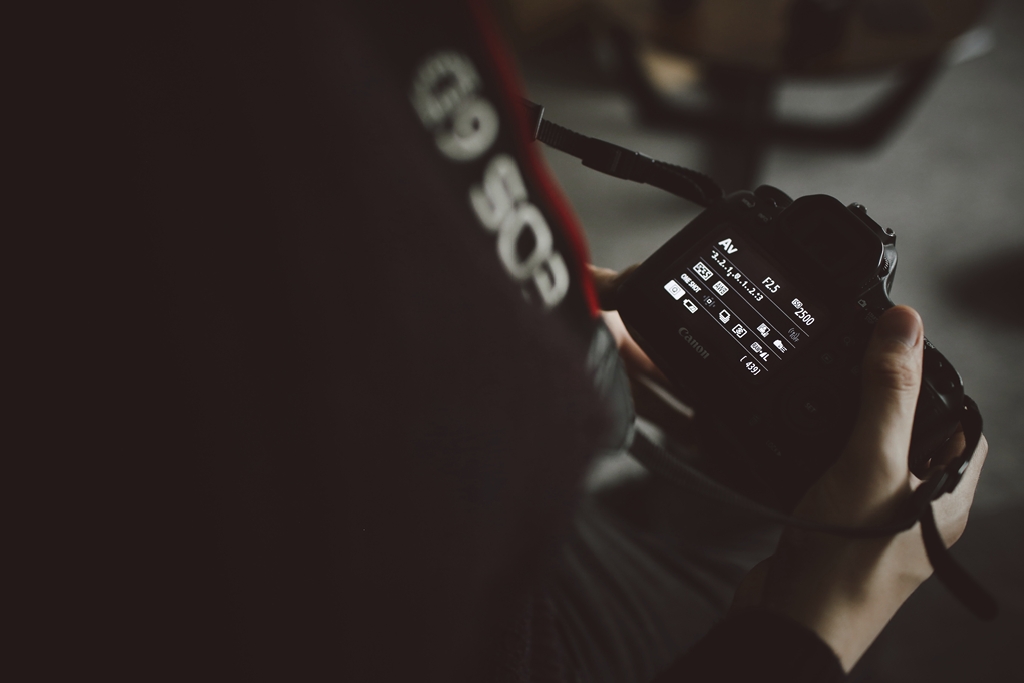
photo by James Bold on Unsplash
I’ll be the first to admit that a Canon EF 50mm f/1.2 L lens is a better lens than the Canon 50mm f/1.8.
Canon’s L-series of lenses have better optics, better build quality, better sharpness...basically better everything.
But, there’s two issues with the advice that only expensive lenses perform well.
First, expensive lenses are, well, expensive. Not everyone has $1,300.00 to spend on a 50mm f/1.2 lens.
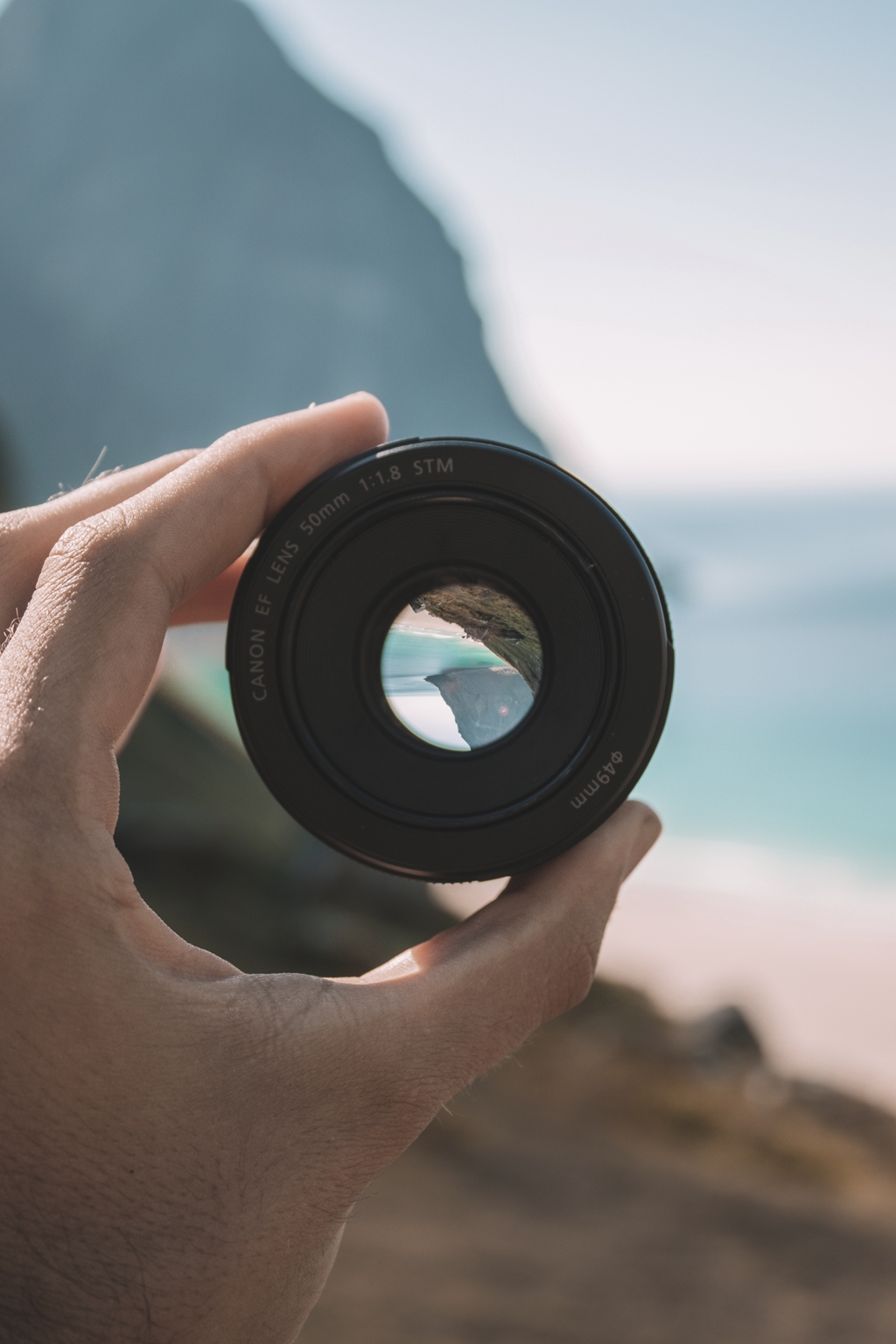
photo by Guillaume Briard on Unsplash
Second, some cheap lenses - like the aforementioned Canon 50mm f/1.8 - are fantastic, inexpensive lenses.
In fact, if you ask any Canon shooter, my guess is that they’d recommend this very lens (which costs about $125.00 brand-new, by the way.
The same goes for 50mm f/1.8 lenses from Nikon, Sony, and other camera brands.
When it comes to lenses, yes, the spendy ones will outperform the cheap ones. But that doesn’t mean that there aren’t some really great cheap camera lenses that will still help you get excellent results.
Editor’s Tip: Need to add a lens to your camera bag but don’t have a huge budget? Consider buying a used lens! Buying used not only helps you stretch your budget, but it also makes higher-quality, albeit older lenses something you can afford. Beware of where you buy used lenses from, however. Craigslist is often full of scams and eBay charges tons of fees. I’ve bought (and sold) lenses on Lensfinder before and had a great experience. Check it out now.
Bad Photography Advice: The Composition Must Be Perfect
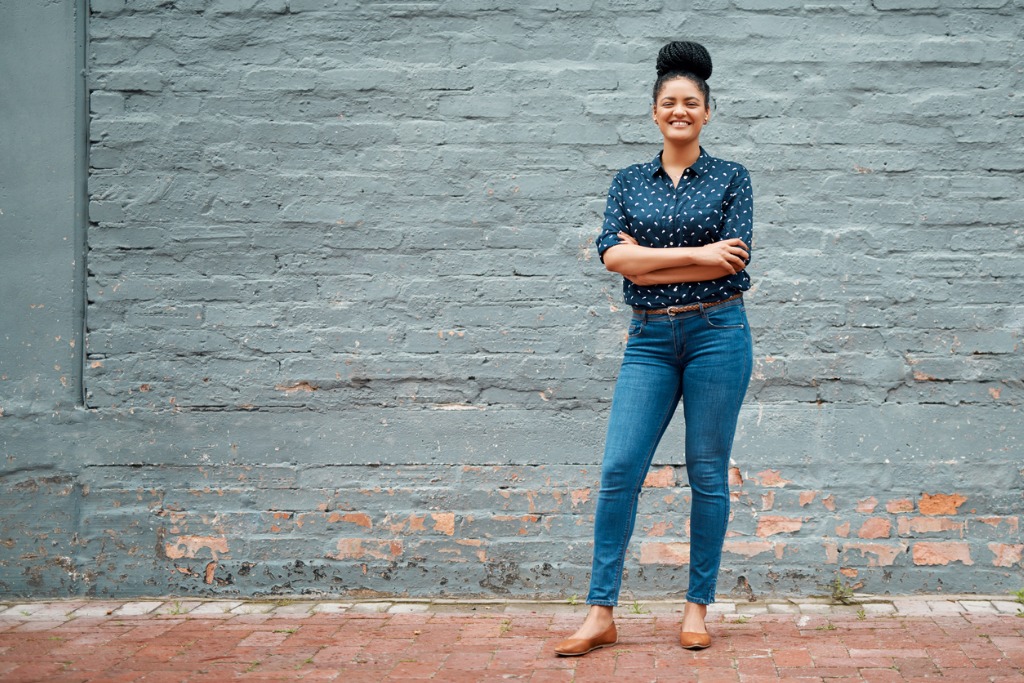
photo by Cecilie_Arcurs via iStock
Obviously, your images will be much more successful if you spend time doing what’s necessary to get a solid composition.
This might include using the rule of thirds to get a balanced photo or incorporating leading lines (like below) to draw the viewer’s eye deeper into the shot.
But if anyone has ever told you that you have to get the composition perfect in-camera, they’re simply wrong.
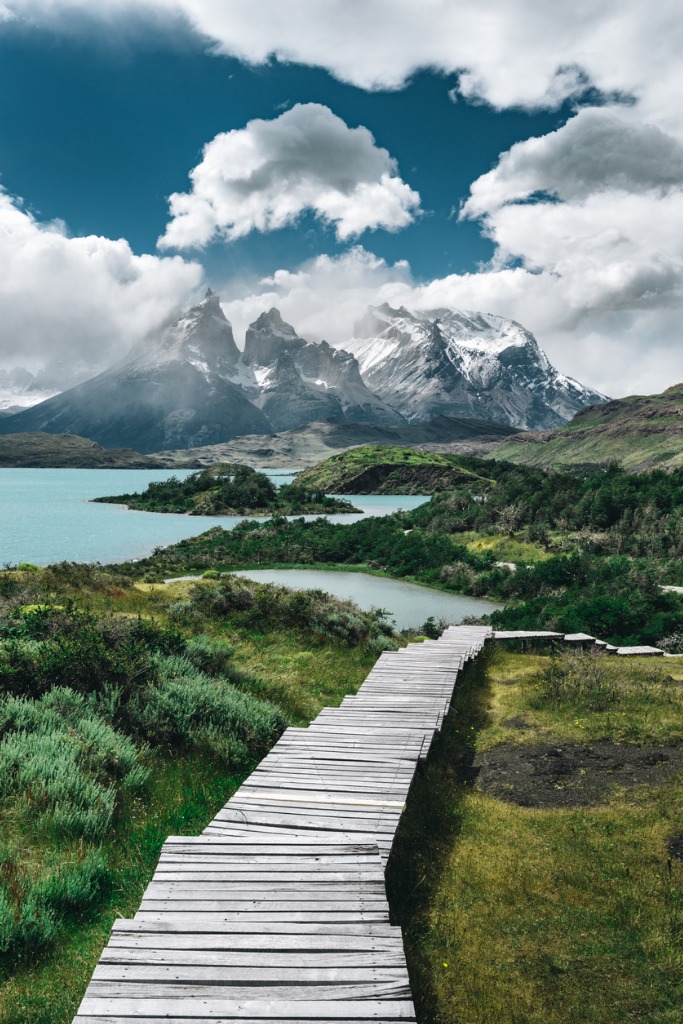
photo byfranckreporter via iStock
Yeah, it would be great if every photo you take is absolutely perfect in-camera, but that’s just not going to happen. If you spend all your time worrying whether your composition is perfect, you’ll get home with one or two shots when you could’ve taken dozens more.
This isn’t to say that you should spray and pray or use post-processing methods as a crutch to fix bad shots.
The point here is that if your composition isn’t perfectly ideal in-camera, you can do all sorts of things in post-processing to make it more perfect.
Learn More:
- Beginner Photography Mistakes and Tricks for Avoiding Them
- This Simple Photography Composition Tip Will Make Your Portraits Pop
Bad Photography Advice: Avoid These Tips Too!
In the video above, James Popsys offers his take on some of the worst photography advice out there.
If you’re a beginner photographer and you’re inundated with tips and tricks from all around you, be sure to watch this video so you know which bits of advice you can throw out the window!
We Recommend
Beginner Photography Mistakes and Tricks For Avoiding Them
 Photo by Jakob Owens on Unsplash
Photo by Jakob Owens on Unsplash
Let's face it - photography can be tough to learn.
Not only is there a lot of technical stuff to learn like what camera settings to use in what situation and how to use artificial lighting, but there's also a ton of artistic considerations to make, too.
That includes how to pose people for portraits, how to use leading lines to create depth in landscape photos, and using unique angles to create eye-catching shots.
And on top of all that is learning what gear to use and what gear is best for you.
It's a lot...
In this guideline, I review critical beginner photography mistakes - most of which I committed at one point or another - in the hopes that I can help you minimize your mistakes and help you learn how to improve your photography.
Beginner Photography Mistake: Using Free Editing Software
 Photo by Joseph Pearson on Unsplash
Photo by Joseph Pearson on Unsplash
Let me start by saying that while some free editing software - GIMP, for example - is actually quite good, most of it is definitely not.
To make it free, there's often tons of ads for web-based editors and tons of fee-based add-ons for software that you download.
And while that might not sound all that terrible, having reduced functionality and/or annoying ads popping up all the time can severely disrupt your workflow.
Editing is not an optional process - it is an integral component of creating dynamic, beautiful photos.
As such, get yourself the real deal - Lightroom, Photoshop, and so on - and avoid the beginner photography mistake of using free software that just doesn't cut it.
Editor's Tip: The worst part of using Lightroom is manually tagging your photos. Learn how to use AI to tag and organize the photos in your Lightroom libraries.
The Focus is Off
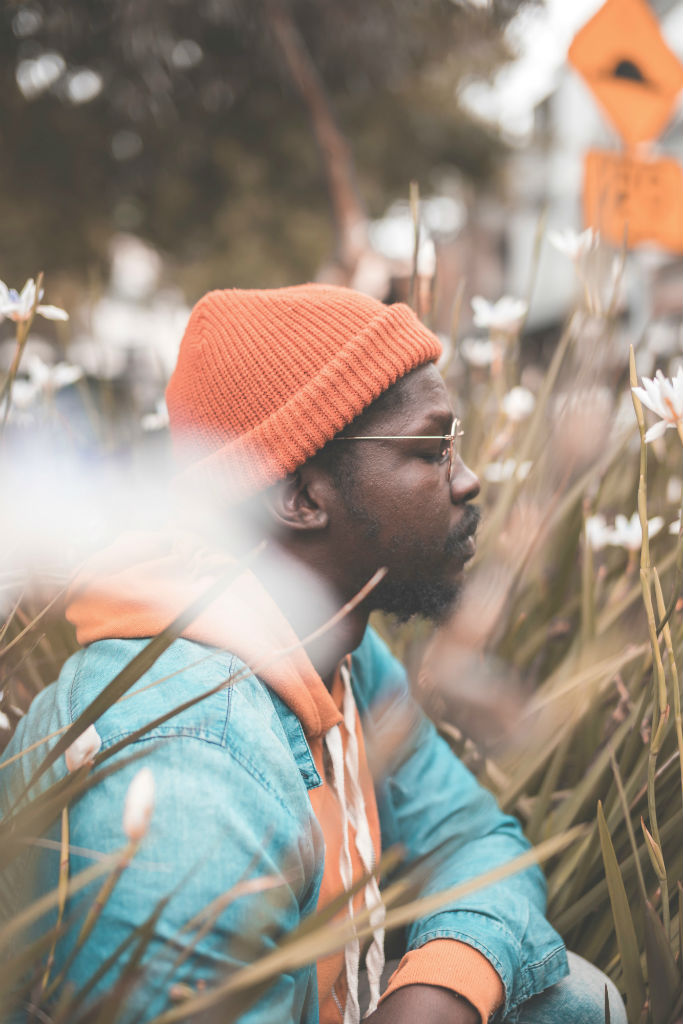 Photo by Michael Amadeus on Unsplash
Photo by Michael Amadeus on Unsplash
While today's cameras have incredible autofocus systems, they aren't infallible.
This is especially true in situations in which you're shooting through something - like the foliage in the foreground of the image above.
Instead of focusing on the model, in autofocus mode, the camera will likely focus instead on the plants in the foreground. This is a problem that is impossible to fix in post-processing, so learning how to avoid this mistake in-camera is critical.
It's pretty easy to get around, too.
Perhaps the easiest way to accurately focus on the subject is to select the autofocus point yourself, that way you're sure that the camera is focusing precisely where you want.
This is done differently depending on your camera system, but this tutorial offers a great general overview of camera focus modes and what you can do to increase your chances of getting the focus just right. You can also learn how to control the focus points on your camera in the video above by Photo Genius.
Skimping on Your Camera Strap
 Image Credit: Brandon Burk
Image Credit: Brandon Burk
Back in the day when I got my first DSLR, I thought the camera strap that came with it was just fine.
But as I got more and more involved in photography and spent more time out shooting, I quickly realize how incredibly uncomfortable that strap actually was.
It cut into my shoulder like nobody's business, and as the hours dragged on, I simply didn't want to shoot anymore.
So, I set out to find a better camera strap.
Over the years I tried out dozens of straps. Some of them were terrible. Others were okay. And a few have been excellent.
Image Credit: Brandon Burk
One of the best straps I've used yet is the Holdfast MoneyMaker Solo shown above.
It's ideal for beginner photographers because it's incredibly comfortable, so you can shoot forever without getting fatigued.
It's also made of full-grain leather and has stainless steel hardware, so it's a durable strap that will last you for years and years to come.
But on top of all that, this thing is crazy functional. It has a stabilizer strap to keep the shoulder pad in place and also has a belt anchor that allows you to carry your camera on your hip and keep it there - unless you release the anchor, the camera stays put, even if you're bending over!

Image Credit: Brandon Burk
One of the first things that beginner photographers buy is a new camera, and that's totally fine.
But I've learned that the accessories you use can make a huge impact on your ability to take photos.
Believe it or not, a camera strap is one such item.
Don't make the mistake I made and try dozens of straps (and pay for dozens of straps). Instead, invest in the best and get yourself a Holdfast MoneyMaker Solo!
Learn More:
Not Understanding the Basics of Photography
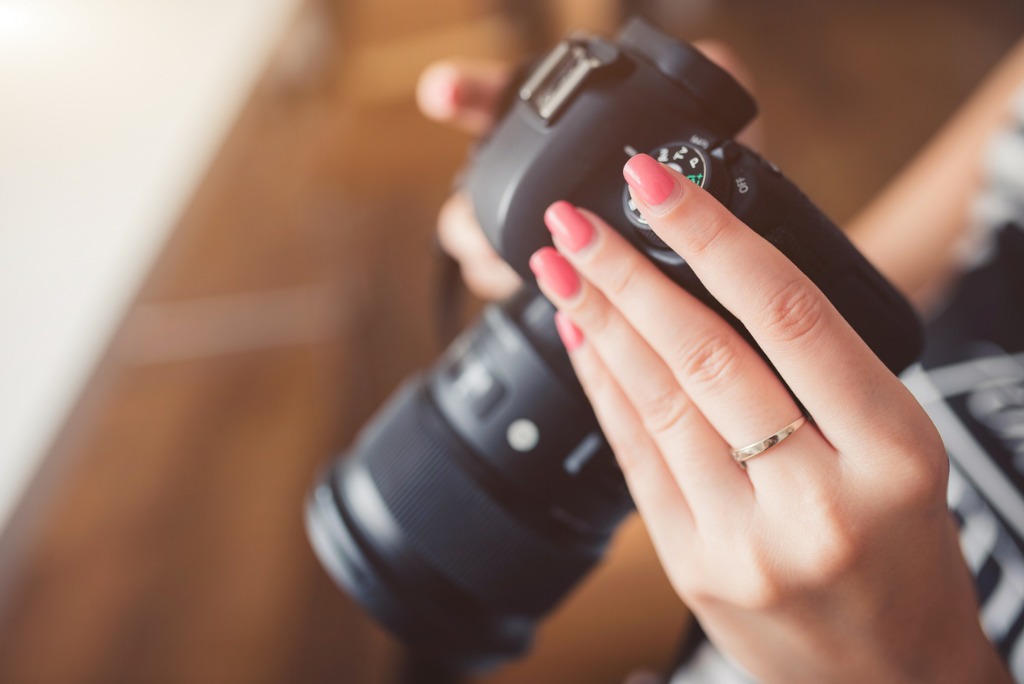
You have to start somewhere when learning how to improve your photography, and your starting point should be with the very basics.
Before you ever pick up a camera and start to take photos, there's a few things you can do to build a solid foundation upon which you can learn:
- Read your camera's owner's manual. Yes, boring I know, but beneficial nonetheless.
- Learn basic photography terms. Try this comprehensive list.
- Think about why you want to take photos. If you can identify an underlying purpose, you can more readily direct your learning about photography.
- Check out photos from other people. Doing so helps you identify what you like and don't like, and can inform you of the types of photography you want to pursue.
These are super easy tasks that you can knock out in a few minutes a day over the course of a week.
And once you really start going with photography, don't be afraid to seek feedback and ask for help from other photographers!
Buying New Lenses

One of the best things you can do to improve your ability to take better photos is to invest in better lenses.
Don't get me wrong - the kit lens that likely came with your camera is just fine to learn with. But those lenses have their limitations that better lenses don't.
I'm a big fan of every beginner photographer investing in a 50mm f/1.8 lens for that reason.
These lenses are versatile, durable, and perform well in low-light situations. They can also be used for videography, so they pull double-duty.
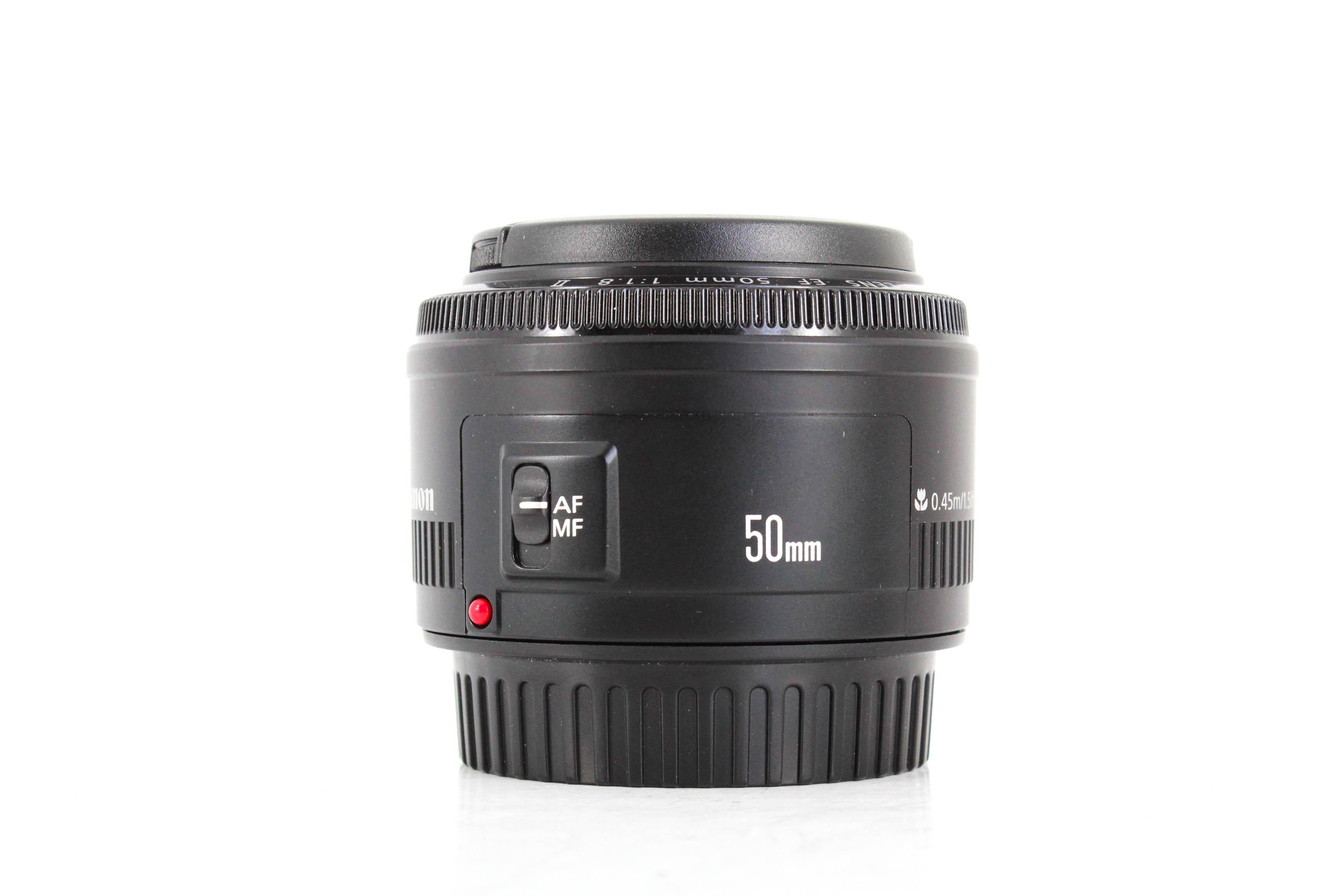
The mistake that people make when buying lenses is that they buy brand new lenses.
Buying lenses is sort of like buying a car - if you buy new, you'll pay a lot more and its value will quickly depreciate.
However, if you buy used lenses, you can't save a ton of money and still get a lens that has a lot of life left in it. In fact, you might be able to find lenses cheap enough that you can get a couple of them for the same price as one new one.
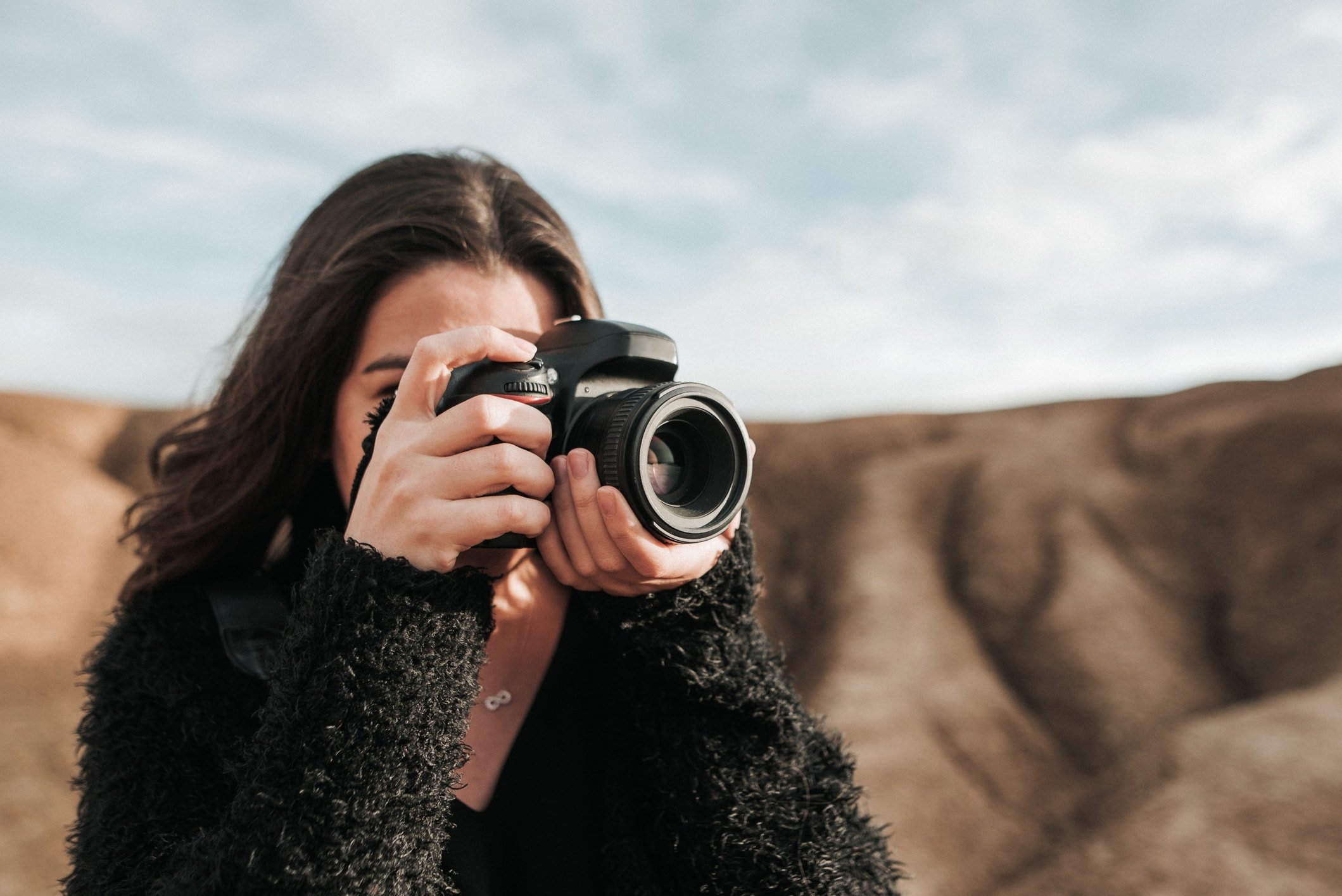
So, avoid the rookie mistake of buying new lenses and instead find great deals on used ones.
But don't just hop on Craigslist or eBay to do so.
Instead, use services like Lensfinder, which was made by photographers, for photographers.
Think about it - Lensfinder has nothing but lenses, so you don't have to sift through a million unrelated products like you do on eBay.
What's more, Lensfinder is a one-stop shop, so you can search for the lens you want, ask the seller questions, pay for the lens, and leave feedback for the seller, all in one place.
It's just a simple, easy, secure way to get better gear and get it on the cheap!
Editor's Tip: Confused by all those markings on your lens? Learn what lens markings mean so you can get the most out of your photos.
Not Investing in a Polarizing Filter
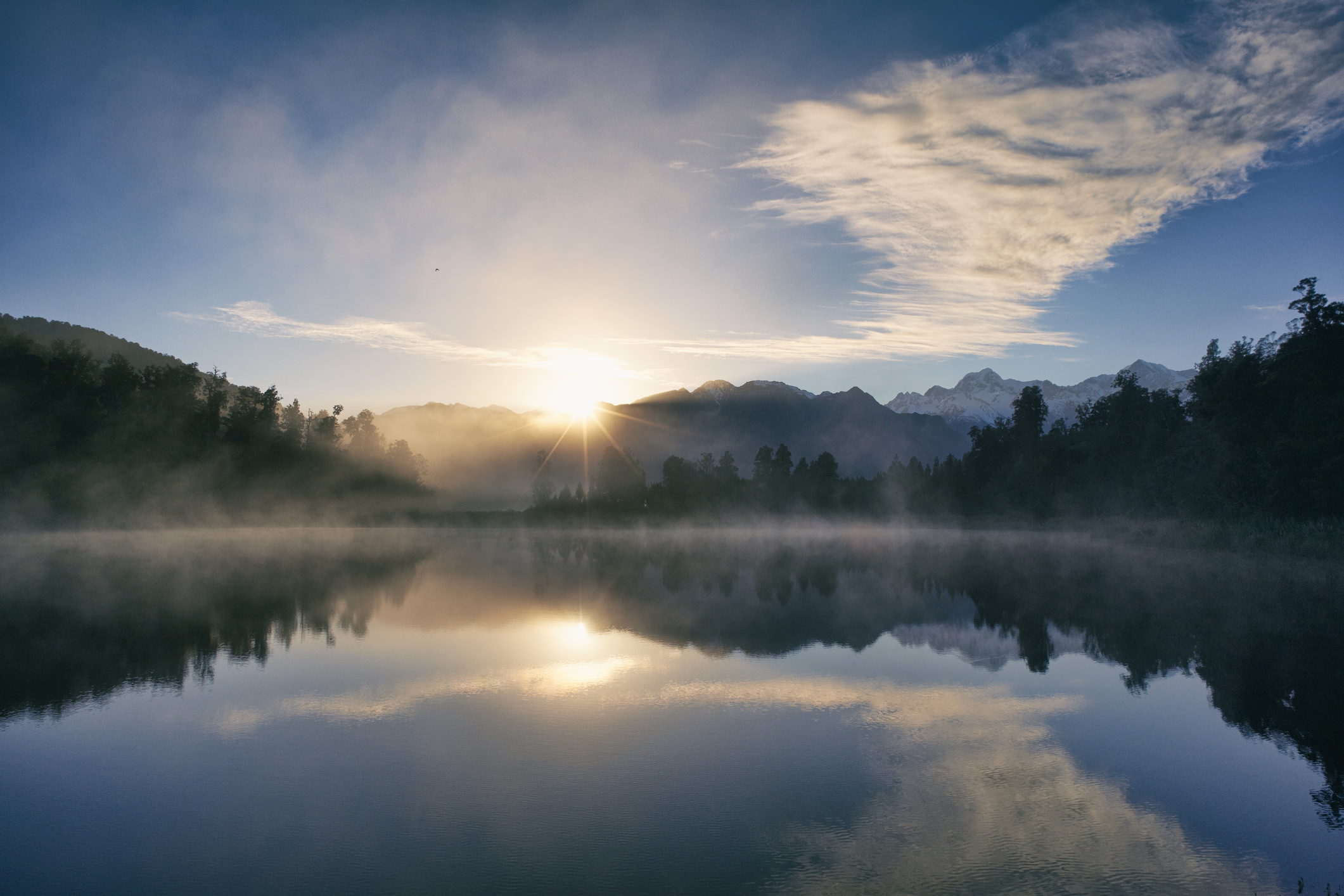
Far and away, one of the best things you can add to your photography kit is a polarizing filter. That's especially true if you photograph landscapes.
Polarizing filters do amazing things for your photographs...
On the one hand, they minimize glare off of non-metallic surfaces, like water or wet foliage. That means that without the distracting glare, viewers can more thoroughly enjoy the scene you've captured.
On the other hand, polarizing filters also reduce atmospheric haze, so even though the distant mountain peaks look hazy to you, with a polarizing filter, your image of those same mountains will look crystal clear.
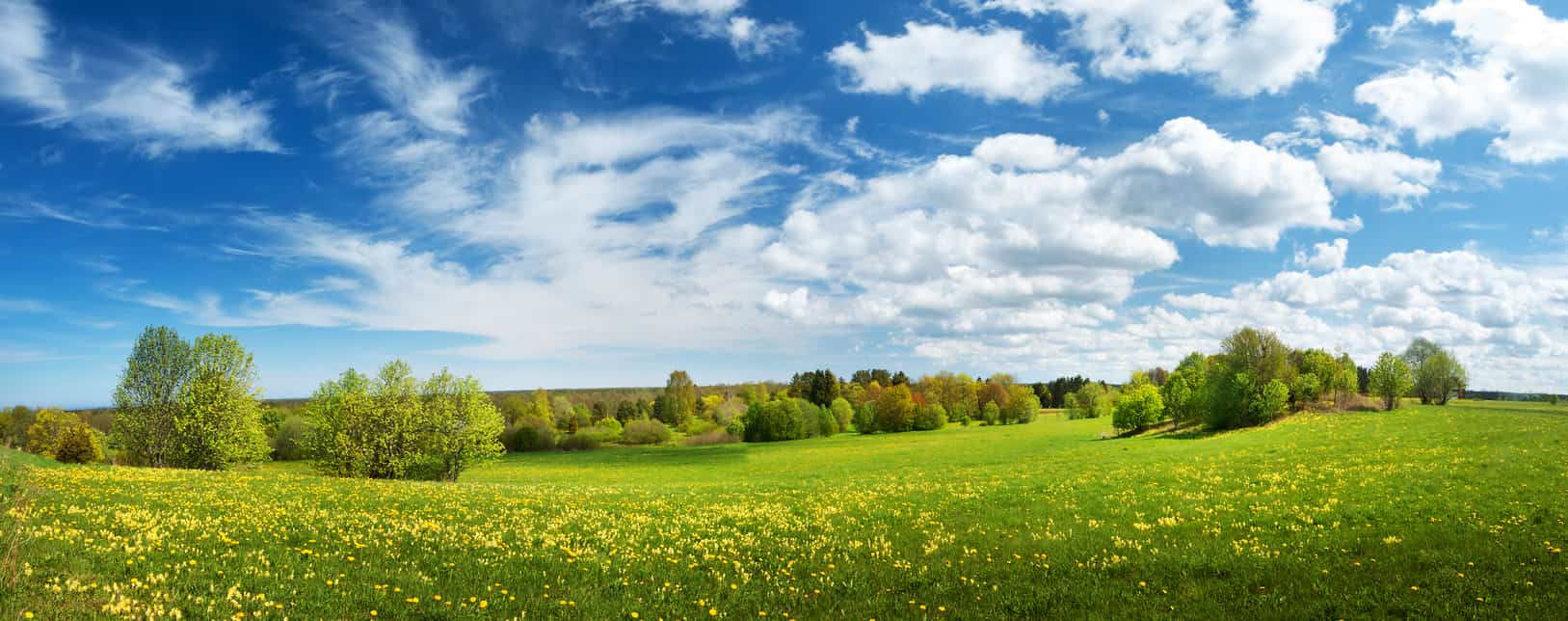
And that's not all - polarizers also boost contrast in the sky (as shown above), so any clouds in the shot will appear a brighter white while the blue atmosphere will be deeper and more robust.
That makes polarizing filters one of the most versatile photography accessories you can buy!
But don't just buy any old filter...
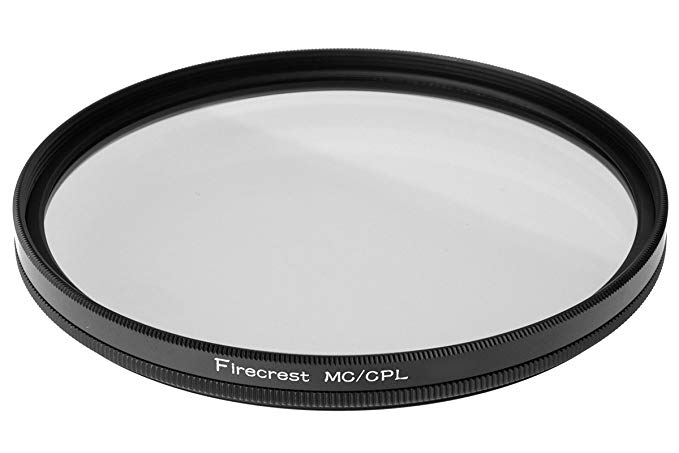
Cheap filters are a huge mistake because slapping a cheap piece of poorly made glass in front of your lens isn't going to enhance the images you take. Instead, it will merely detract from your images.
If you want a high-quality polarizing filter without breaking the bank, I highly recommend Formatt-Hitech polarizers.
These things are made to the highest standards with quality materials that not only make them durable but ensure high-performance, too.
With Formatt-Hitech's Firecrest anti-reflective coating, these filters offer you the highest contrast and fidelity for your images.
The glass is encased in a SuperSlim or UltraSlim rotating polarizer ring that's precision milled. That means they're easy to use, will help you improve your photography, and will last you a good long while as well!
Being Afraid

Starting out in photography can be scary, especially when it comes to trying new things.
One of the worst things you can do as a beginner photographer is be afraid to get out there and take photos.
Whether you love portraits or landscapes, street photography or macro, or something in between, try your best to challenge yourself to find new and interesting ways to take photos.
That might simply be finding unique angles or just trying a different type of photography for a while.
The point is that there is always something to learn in photography, so don't be afraid to try new things, to mess up, and to take some epically bad photos.
You'll learn just as much - if not more - from your unsuccessful photos as you will from the good ones!
Learn More:
- Build Your Creativity With the 30-Day Creative Eye Challenge
- This Photography Challenge Will Help You Break Out of Your Creative Rut
Not Completing the Process of Creating a Beautiful Image

I mentioned earlier that post-processing isn't an option - it's a critical component of creating a great photo.
But even once your image is completely edited, there still should be another step for your very best images - printing them.
Digital photography has been great in so many ways, not the least of which is opening photography to so many more people.
But in the digital age, we often take photos and forget them on our hard drives or cloud storage accounts. That's a mistake.
Excellent quality printing, superior build quality and A+ customer service. I wish I came to you first before trying others. Thanks CanvasHQ! - Eric S., Haverhill, MA
Your best images deserve to have a place on your wall where you and others can enjoy your handiwork.
But just like so many things in photography, trying to take the cheap way out is a big mistake.
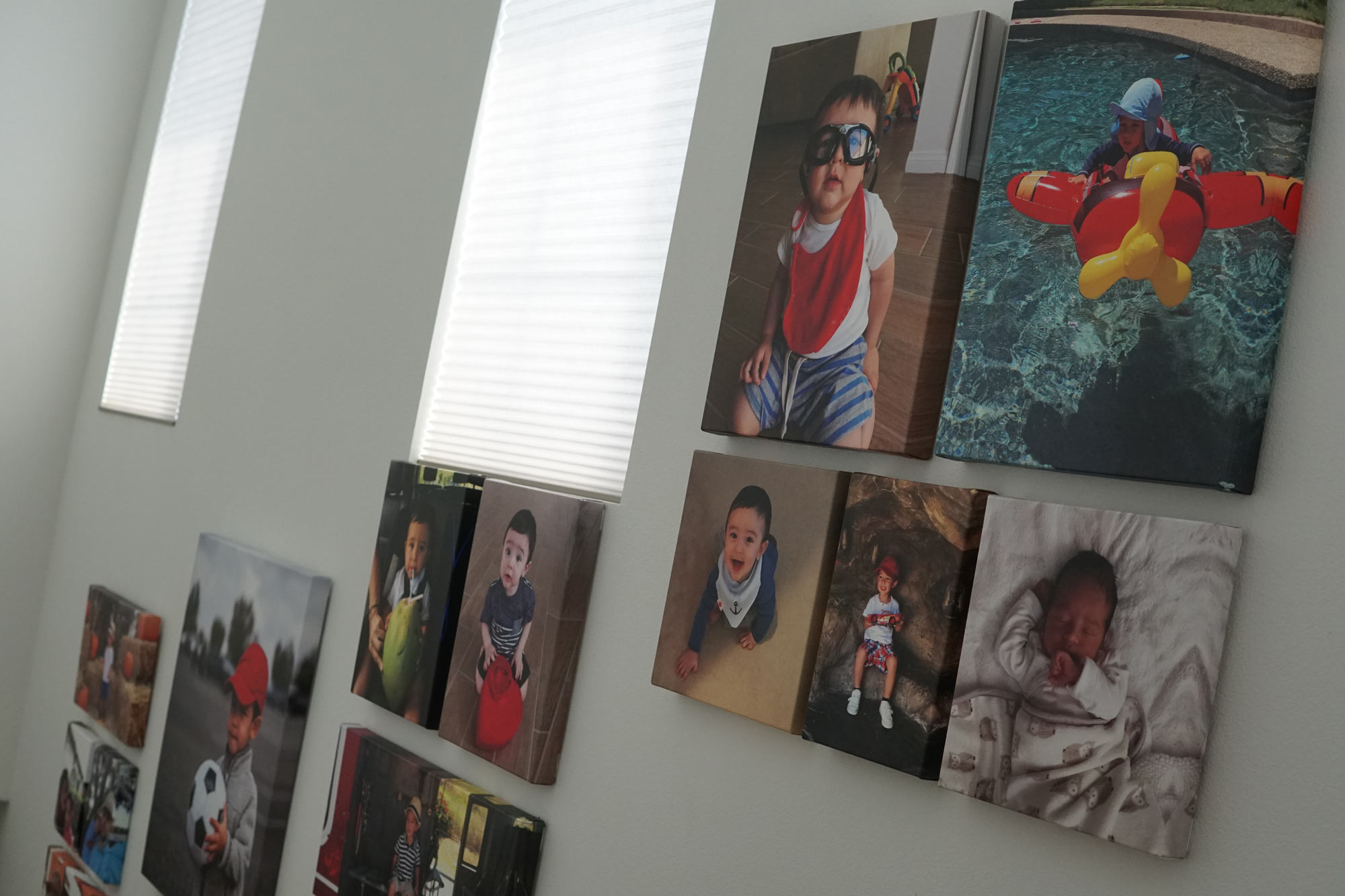
I have dozens and dozens of prints in my home, most of which came from my favorite printer, CanvasHQ.
They're my go-to printer for a ton of reasons, not the least of which is the quality of the materials they use.
We're talking about archive-quality canvas, kiln-dried frames, and top-of-the-line inks that resist UV rays, water, and scratches.
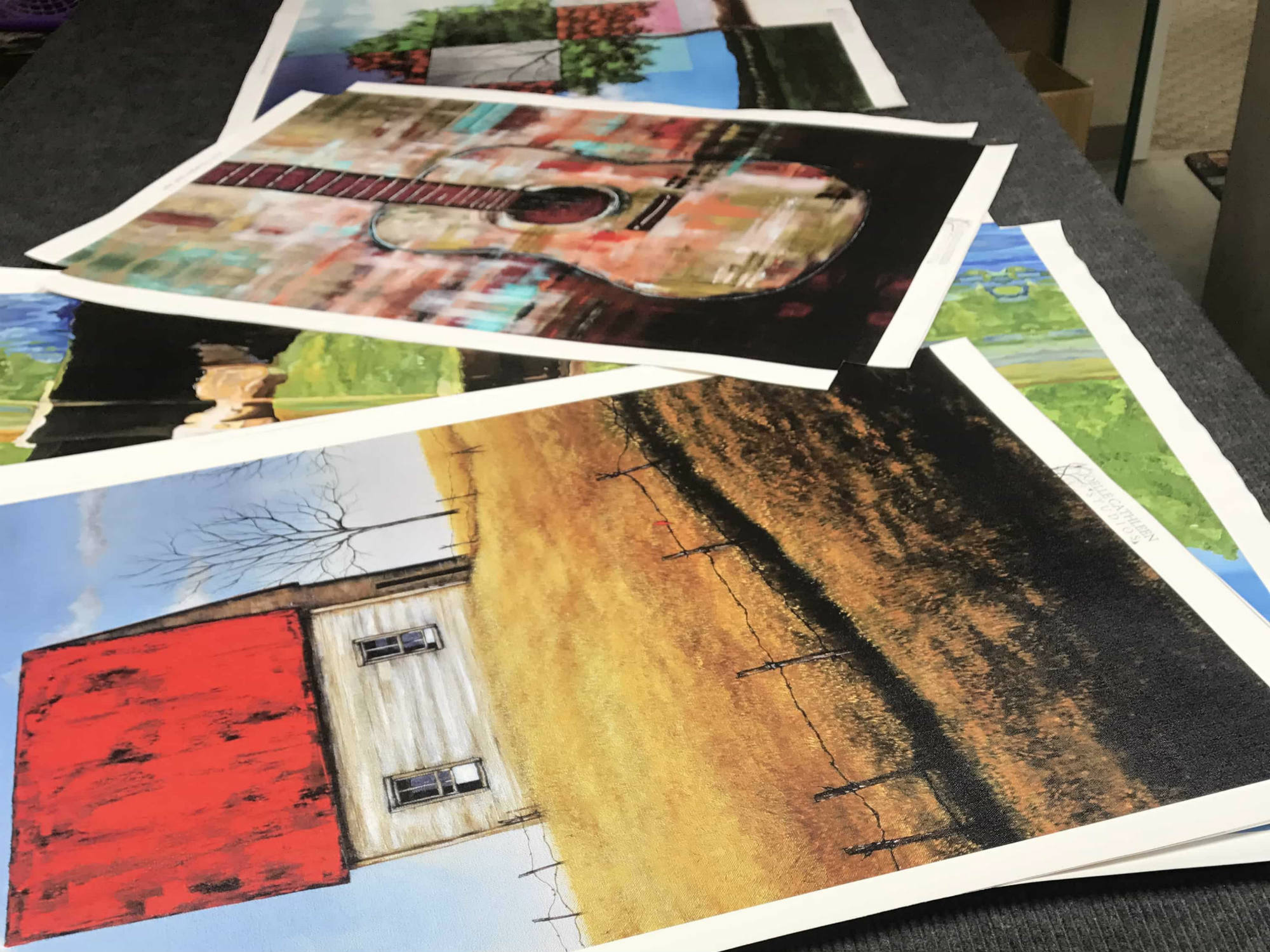
Aside from the impeccable quality of these prints, I also appreciate how quickly CanvasHQ gets them made.
Often, I get my prints on my doorstep just a couple of days after placing my order. That's crazy considering I live in California and CanvasHQ is in Arkansas!
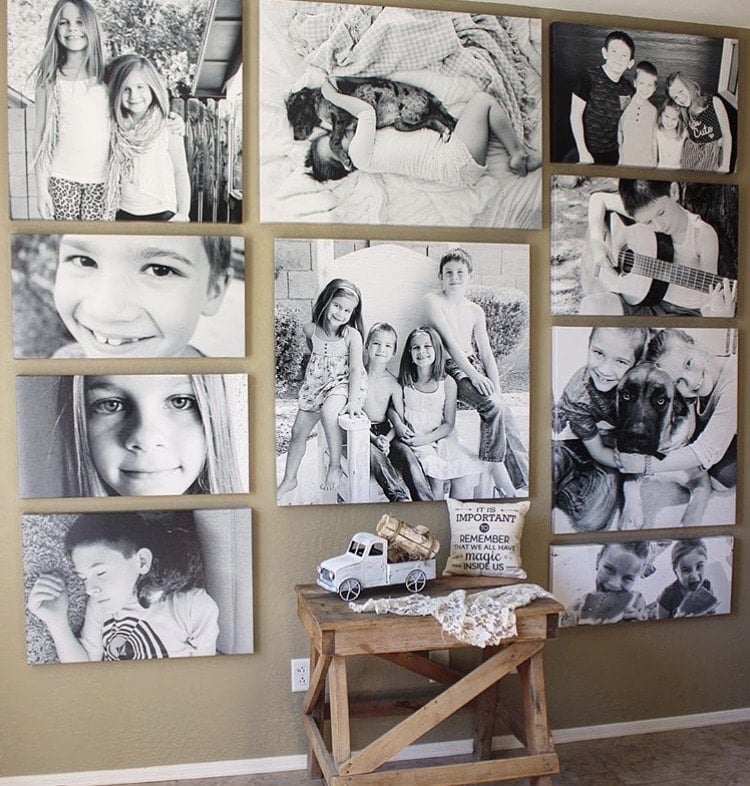
On top of that, the folks at CanvasHQ are just genuinely nice people that care about each customer. They make you feel as though you're they're top priority, and they treat your images with the love and respect that a dear friend would.
That dedication to quality and service should be enough to convince you that these guys deserve your business, but it gets even better...
CanvasHQ is affordable!
I cannot believe how easy it was to get my canvas from Canvas HQ! I submitted my photo on a Wednesday and my canvas was at my door on Saturday! And it was absolutely perfect! I will definitely order from Canvas HQ again! - Kara O., Manchester, IA
Their prints start at just $20, and if you ask me, that's a small price to pay for a gorgeous print of your photos.
It's just one more thing worth investing in, and another way that you can improve your photography while minimizing silly beginner mistakes, too!
We Recommend
Beginner Photography Tips From the Pros
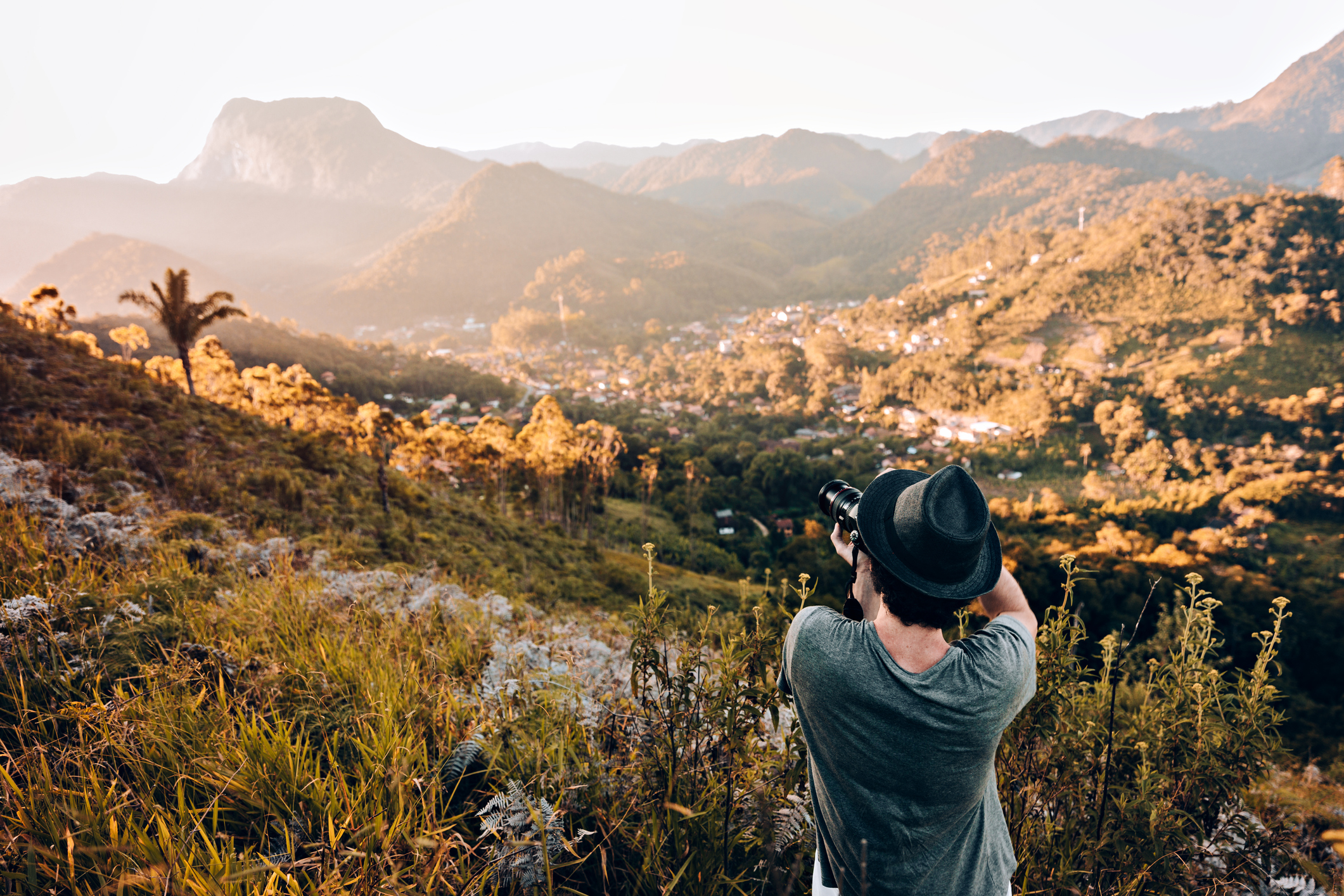
photo by cokada via iStock
The great thing about photography is that it’s a pursuit that’s open to virtually anyone. That’s especially true these days since so many people have smartphones with pretty good cameras.
But sometimes the hardest part of photography isn’t getting the gear, it’s the ability to afford it. After all, even smartphones are quite spendy…
Additionally, it can be difficult to know where to start the process of learning photography too. With technical considerations like camera settings and artistic considerations like composition, there’s a lot to learn!
In this quick guide, I offer up three beginner photography tips from the pros that will help you kickstart your photography.
Beginner Photography Tip: Always Be at the Ready
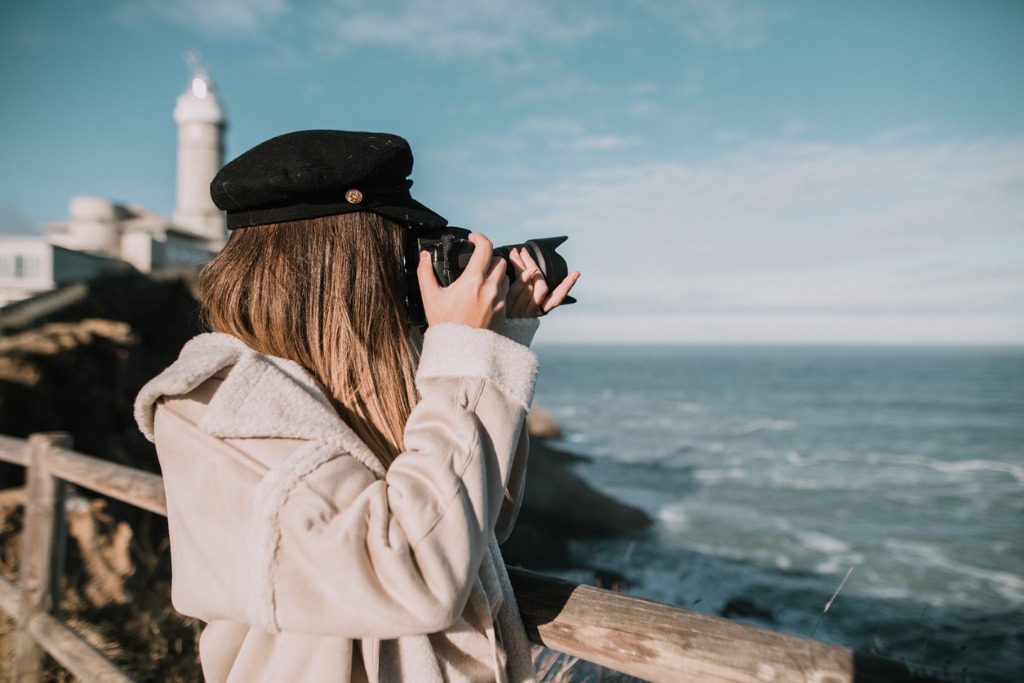
photo by MarioGuti via iStock
The first step in becoming a more accomplished photographer is to take a lot of photos.
Practice is essential if you’re going to start figuring out how to frame up a pleasing shot, let alone learn to take control of your camera settings.
This doesn’t mean that you need to devote five hours a day to shooting photos, but at least have your camera with you so you’re ready to shoot should you eye a potential subject to photograph.
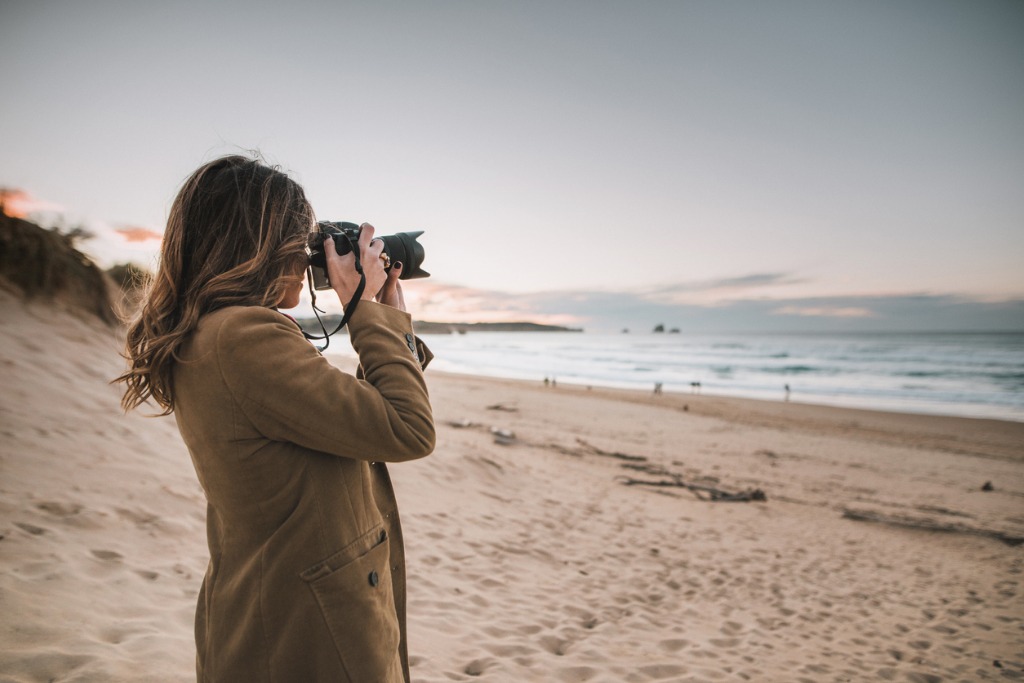
photo by MarioGuti via iStock
A good way to approach this is to challenge yourself to take a handful of photos at different times of day.
On the one hand, this will help you get the practice you need, but on the other hand, it will also help you see how light changes over the course of the day.
Light is obviously a crucial component to photography, so by getting your practice in morning, noon, and night, you will more quickly develop an understanding of when the best time of day is for photography.
Learn More:
Beginner Photography Tip: Save Money on Gear
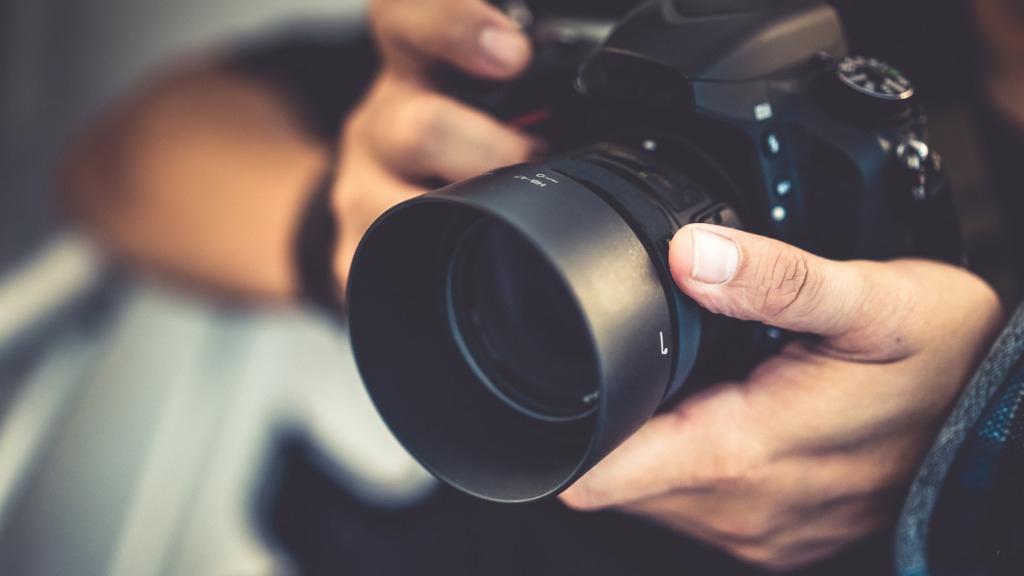
photo by ArisSuvia iStock
As I noted earlier, photography isn’t exactly a cheap hobby or profession.
As such, it’s important to save money on gear when you can, that way you can stretch your budget and get more gear for your buck.
Though I will admit that the feeling of opening a brand-new camera or lens is intoxicating, it’s an even better feeling finding a great deal on a camera or lens and still having money in the bank!
Photo by Søren Astrup Jørgensen on Unsplash
I’ve bought a number of used lenses on Lensfinder over the last few months and I’ve found it to be an awesomely easy experience.
What’s great about sites like this is that it was built by photographers, for photographers. That means that the lenses that are listed are typically well cared for and the descriptions are full of detail. That’s important when you’re trying to find a new-to-you lens!
And since the entire transaction takes place on Lensfinder (apart from processing payments, which are done via PayPal), it’s a quick process as well.
Photo by Denisse Leon on Unsplash
With built-in anti-fraud filters, you can browse and shop for a new-to-you lens with confidence, too. You can even communicate with sellers right on the Lensfinder platform if you have questions before you buy.
You can even leave feedback to let other Lensfinder users know how your experience was with the seller.
It’s a much better way to find the lenses you need than something like Craigslist or eBay. I’ve used all three, so I should know!
Learn More:
Beginner Photography Tip: It’s All About the Angles
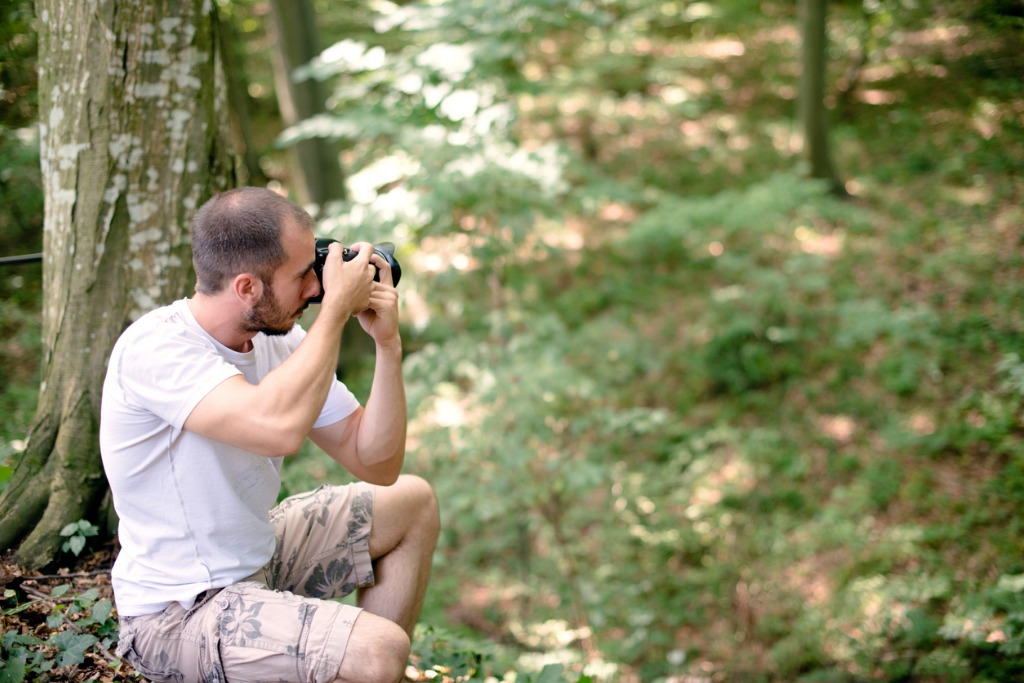
photo by jovan_epn via iStock
Since composition is such an important component of creating an engaging photo, try to devote some of your time practicing photography to concentrate on how you’re composing your images.
Rather than standing up straight and taking every photo from eye level, you should move around, kneel down, stand on your tippy-toes, and find other ways to find a more unique perspective.
Most people take most of their photos from their eye level, and that gets really boring.
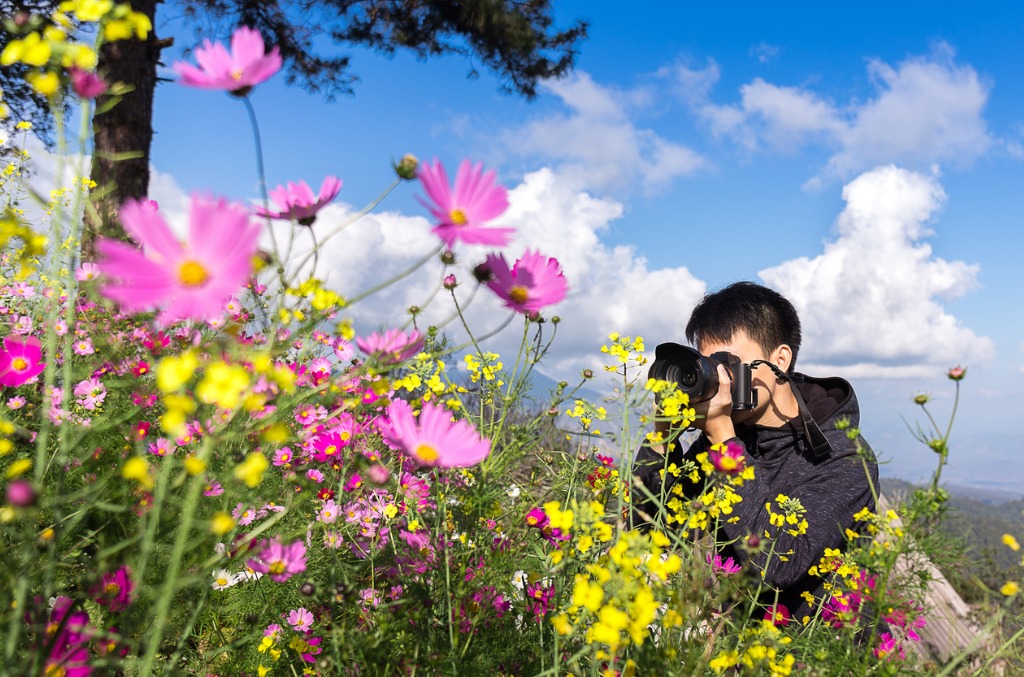
photo by kunchainub via iStock
By adjusting your angle of view, not only do you find ways to highlight the subject in an interesting way, but you also make your photos stand out from the crowd.
You don’t even have to go into it with a specific type of shot in mind. Just commit yourself to a little exploration from a composition standpoint, and see what works and what doesn’t.
Remember - photography is art, so there’s really no right or wrong answers! Have the confidence to explore and experiment, and before long, you’ll likely find that the quality and interest level of your photos drastically improves.
Learn More:
We Recommend
Best Canon Prime Lenses
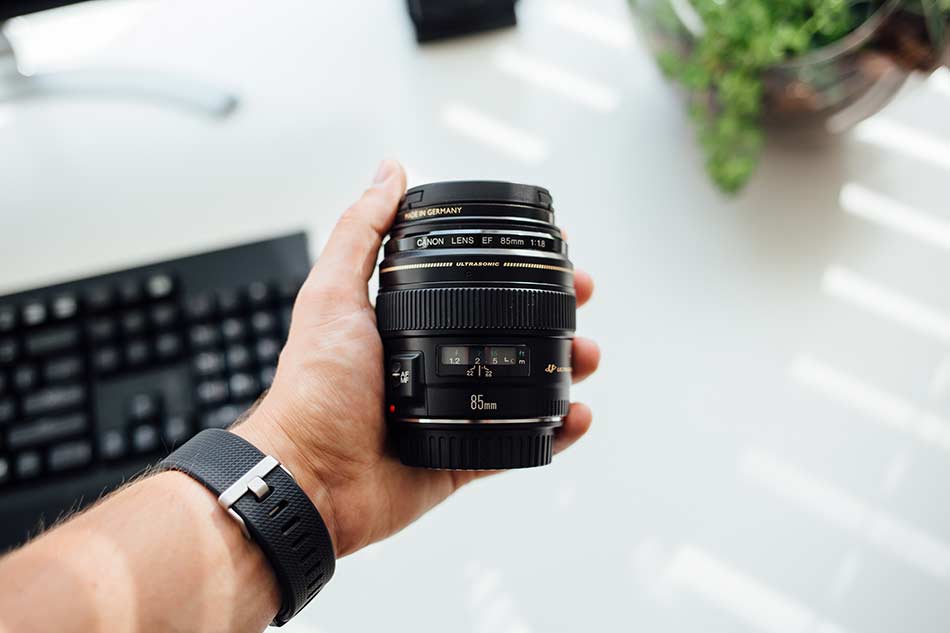
Photo by Nielsen Ramon on Unsplash
Prime lenses, or fixed lenses, may seem odd if you’ve never worked with them before. Why would you not want the ability to zoom? And to answer that question, Canon has four options. These are some of the best Canon prime lenses you can get your hands on today.
Canon EF 24mm f/1.4L II USM
The best Canon lenses of 2019 just so happen to be a few years old, or at least most of them are.
The Canon EF 24mm f/1.4L II USM is one of two of Canon’s widest angle lenses. Astrophotographers frequently lean towards the 24mm for this exact reason so they can capture a huge swath of the sky in one shot.
It has close to zero distortion, despite the fact that it is now over a decade old.
The one con of the 24mm is that it doesn’t have image stabilization. But, it’s heavy and weather-resistant so if you’re the type of photographer to drop (whoops) your camera from time to time, the 24mm might just be for you!
Get more details on this lens in the video above by Christopher Frost Photography.
Canon EF 35mm f/1.4L II USM
The Canon EF 35mm f/1.4L II USM is the Canon prime lens you need if you are a low light photographer. Event, concert, and wedding photographers go wild over this lens for its extreme clarity due to its wide aperture.
Canon’s 35mm is also incredibly more impressive than its Tamron or Sigma equivalents, both of which have won wide acclaim.
This is also part of Canon’s L series, so it is going to be able to handle weather like a champ and the improved optics give you sharper images with fewer aberrations.
Julia Trotti gives us a full breakdown of this lens in the video above.
Canon EF 50mm f/1.2L USM
As you can tell by the title of Steve Huff’s YouTube video above, this Canon prime lens is pretty well known the world over. Photographers call it the “nifty fifty,” because of its incredible versatility for all sorts of situations. As such it has garnered legendary status amongst the photography community.
This lens has no chromatic aberration, or that annoying thing that happens when the color purple starts popping up in your photos where there was no purple before. It’s an issue with older lenses or lower quality lenses, and Canon’s 50mm was one of the first lenses to beat the issue.
Plus, this lens can open up to f/1.2, so you get huge amounts of light that make this a low-light monster of a lens.
Canon EF 85mm f/1.2L II USM
The 85mm rocks a creamy aperture, but with a much longer focal length than any other options. The 85mm is frequently used by photojournalists for its capabilities to capture intimate moments, like the reaction on a politician’s face, from a great distance.
The 85mm is a difficult lens to learn, so it’s not recommended for beginners. In the video above, Shayne Robinson shows you exactly why this lens is considered one of the best in a way that we can’t justify by talking about only its specs.
Where Can I Buy The Best Canon Prime Lenses?
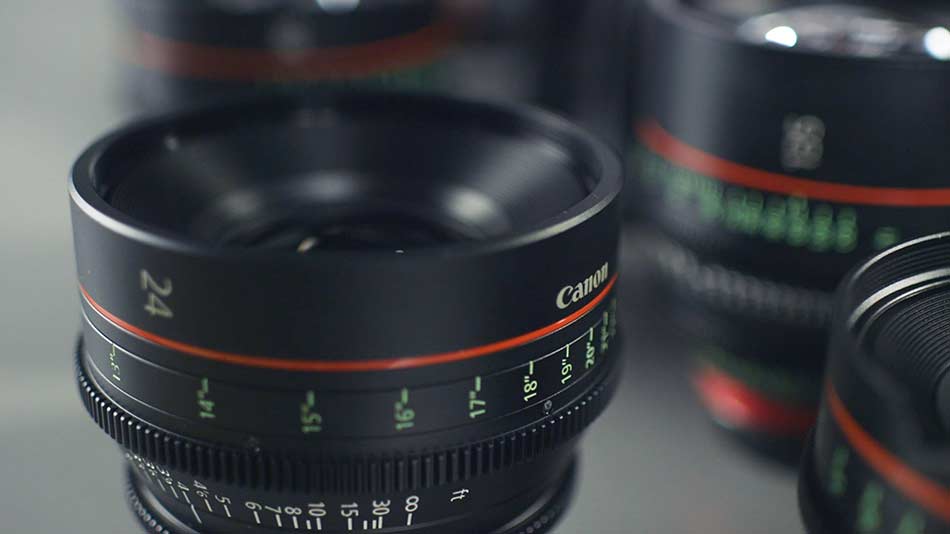
Photo by ShareGrid on Unsplash
Almost anywhere. But maybe you shouldn’t. I won’t send my child off to just any nanny, and I care about my camera at least as much!
Ebay: A Questionable Marketplace
There’s the tried and true Ebay method, but as anyone who has worked with Ebay knows… they are a lot of undisclosed fees and a lot of fraud issues.
While you may save some money initially, you may lose a lot more money in the long run with undisclosed faulty products, scams you don’t realize are scams, and sky-high shipping fees. Seriously, nobody charges $150 to ship from California to Arizona. How is that even possible?
Craigslist: For When You Want to Spice Up Your Boring Life
There’s also Craigslist, if you don’t mind a little grit. There’s a number of reasons I swore off Craigslist years ago, but the main one everybody forgets about is a lack of options.
I live in a relatively small town, but even for those who live in large towns if you need a specific lens you’ve had your eye on it might require you to travel for it. And then you inevitably get to where you’re going and the seller cancels, or just plain doesn’t show up.
While I did have a number of good experiences with Craigslist, for me the bad far outweighs the good.
Lensfinder: If You Want to Be Protected
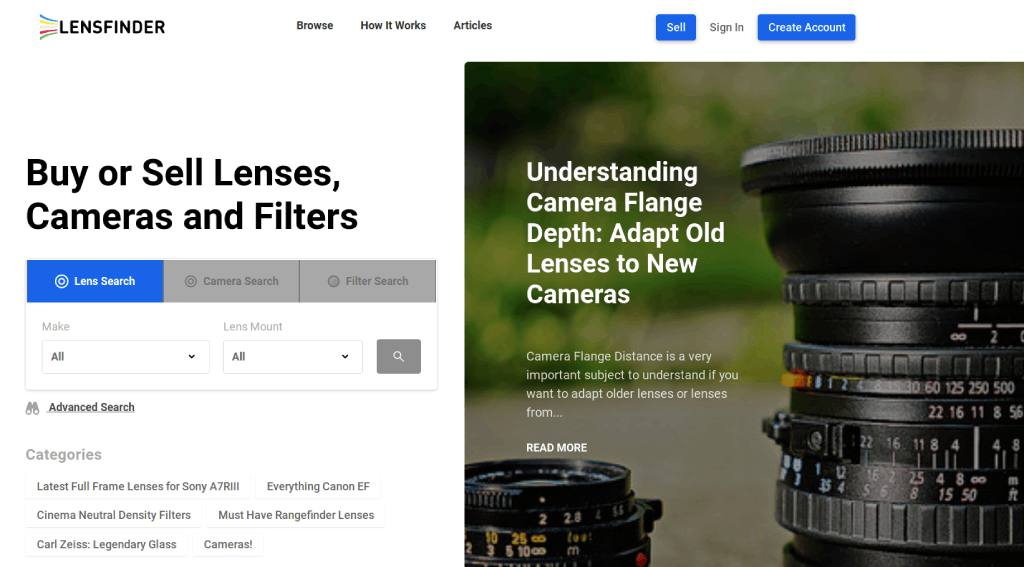
Let’s face it, camera lenses are a really specific art. And for really specific art you need a really specific medium to convey it.
Lensfinder has been my go to used camera and camera equipment marketplace for years. The good sellers are rated as such and the bad sellers are kicked off the site. If you have a really in-depth question, chances are you’re going to get a really in-depth answer.
We are all camera enthusiasts after all.
Lensfinder is upfront about their fees (4% taken from the seller), and you can calculate exactly how much shipping you can expect to pay. Plus, sellers are required to use the cheapest shipping method (finally, and thank god).
You can find anything on this website, from an $80,000 astrophotography camera to your-run-of-the-mill prime lens.
My favorite part of Lensfinder is that you can pay with PayPal, so if something does go wrong, you are not only protected by Lensfinder’s incredible customer service, but PayPal’s buyer protection too.
We Recommend
Best Canon Zoom Lenses
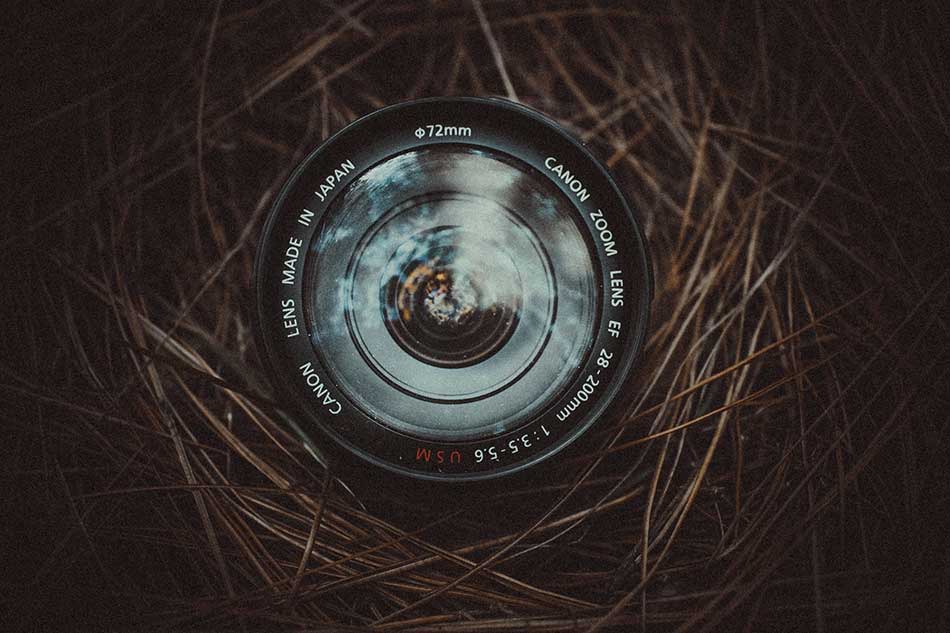
Photo by Allef Vinicius on Unsplash
The best Canon lenses of 2019 just so happen to be a series of their zoom lenses. This list of the best Canon telephoto lens features much cheaper lenses than any series by Sony or Nikon. They are also new versions of old lenses, so if you’ve shot with Canon in the past many of these lenses will be familiar.
Instead of searching through forums on Canon lenses guides, just check out our list!
Our List of the Best Canon Lenses 2019
Canon EF 16-35mm F/2.8L USM III
This lens is the sharpest f/2.8 ultrawide that Canon carries. Version III, as compared to Version II, is much sharper. Every point of the picture will be just as sharp as your focus, which was an issue with the Version II.
Furthermore, you can expect superb sharpness, even when shooting wide-open at f/2.8. Not a lot of lenses can claim that. See it in action in the video above by Georges CamerasTV.
While the lens is technically designed for architecture and landscape photography, you can also use it for some portraiture because the focusing and zooming is done internally.
Best feature: Aside from eye-popping sharpness, the best feature of this lens is what you can do with it. Play with the distortion, explore interesting angles, and compose unique shots of all kinds of subject matter. This is a lens for experimenting with your photography style.
Editor’s Tip: Have old lenses you no longer need? Sell them to finance one of the best Canon lenses below! There is a huge market for used camera gear, particularly lenses that have been well cared for. See what your lenses might be worth, and list them for sale today.
Canon EF 24-70mm F/2.8L USM II
The quality of the bokeh on this Canon lens is almost unreal. Like the reviewer said in this video, it’s a great lens for events. Low light photography, like weddings, need one of the best Canon lenses. This one does it.
This lens, as opposed to the older model, features better image sharpness and AF speed.
Version II is also much faster than Version I.
As Jessica Kobeissi says in her YouTube video reviewing this lens, “You are going to build up some arm strength with this lens.”
It’s on the heavier side. But, it’s still lighter than the Version I.
If you’ve ever shot with a 24-70mm in the past, this version is similar but better in every way.
Best Feature: This lens is as versatile as it gets. If you need a walk around lens that can tackle anything from landscapes to portraits to events and everything in between, this is it!
Canon EF 70-200mm F/2.8 L IS USM III
Any lens over 60mm is considered a telephoto lens, and Canon’s EF 70-200mm F/2.8 L IS USM III is considered many photographers’ favorite.
This lens comes with impressive image stabilization, plus it’s part of their L series which are weather sealed. Telephoto lenses are frequently used at night for astronomical photography or in the elements for landscape and animal photography. The L series ensures you can do this without worry.
Comparing this Canon lens with Nikon’s and Sony’s version of the lens proves why Canon zoom lens are far superior - their cost.
Canon’s version will save you at least $500, depending upon where you buy it.
Get more details on this lens in the video above by Jared Polin.
Best feature: This lens has superb autofocus performance, and with image stabilization, you can work without a tripod without the worry of camera shake.
Where to Buy the Best Canon Zoom Lenses
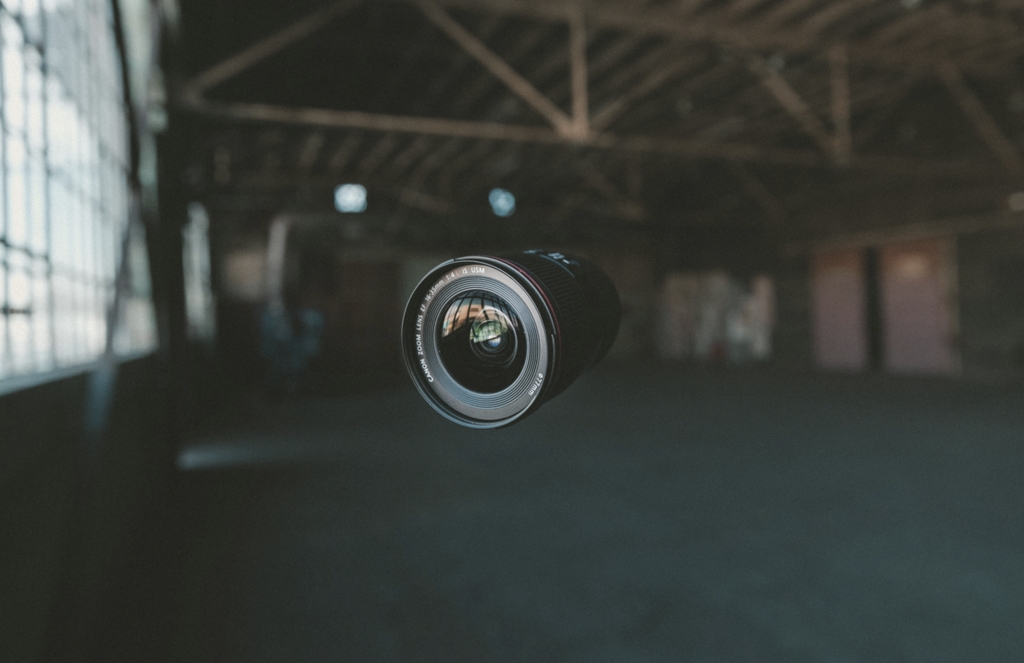
Photo by Jakob Owens on Unsplash
Obviously you can turn to Ebay or Craigslist for your used canon zoom lenses. I recently purchased a Canon EF 70-200mm f/2.8 L IS II USM on eBay for $1,600 (as opposed to the original price tag of $2,100).
But I’ve also had issues with eBay, like really high fees, fraud and unexpectedly high shipping prices. In an age of Amazon Prime, absolutely nobody wants to pay for shipping and if you have to pay for shipping we at least want to know exactly how much we are going to be charged up front.

photo by AleksandarNakic via iStock
Another option for used canon zoom lenses is Craigslist. However, fraud is even more rampant on Craigslist than it is on eBay. Plus, Craigslist limits you to the zoom lenses you can find in about a 50-mile radius, so if you live in a small town your options could be very few to none.
Since, as I’ve previously mentioned, I live in a rather small town I turn to Lensfinder to purchase the best standard zoom lens for Canon.
Lensfinder is upfront about their fees. Sellers are expected to use the cheapest shipping method, and when you plug in your zip code, it will tell you exactly how shipping costs.
Each seller is reviewed and has the opportunity to offer refunds. Like in the case of this Canon TS-E 24mm f/3.5 L tilt-shift lens,the seller allows you to return your purchase within 7 days for a full refund. This is definitely not something you would receive with Ebay, which you know if you’ve ever had to deal with Ebay’s customer service. Yikes.
God forbid something goes wrong with your order, but Lensfinder’s customer service is out of this world. Plus, they like to have a little fun with it too. Their customer service email is [email protected].

photo by filadendron via iStock
You can use PayPal to purchase your order, which means you have double protection if you aren’t satisfied with your purchase.
Finally, you’re going to be dealing with people who know what they’re talking about. This website is filled with lenses that are near the $100,000 mark. These are serious camera enthusiasts who can answer in-depth questions about their products.
Their website serves as a type of Canon lenses guide because of the amount of sellers with Canon zoom lens options.
If you can’t find the best standard zoom lens for Canon with one of their sellers, you won’t be able to find it anywhere!
We Recommend
Best Film Cameras for Beginners
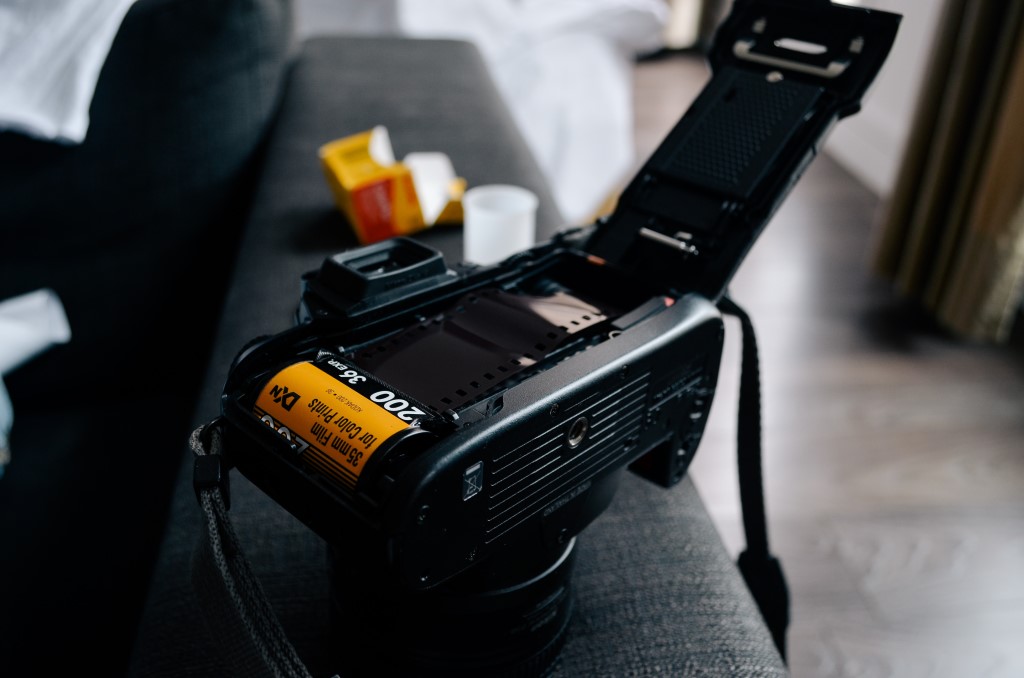
Photo by Dmitriy Nushtaev on Unsplash
You may be wondering why to shoot with film in this age of digital cameras. Good question, since many of the current digital cameras beat out film in several ways. From the ease of stitching together panoramas or HDR exposures to the capability for ultra high resolution images, digital has a lot to offer.
Film photography has a lot to offer, too. One of the best things about film photography for beginners is that it teaches the fundamentals of photography at its most basic level. Understanding film photography makes you a better digital photographer.
Best Film Camera: Where to Find Them?
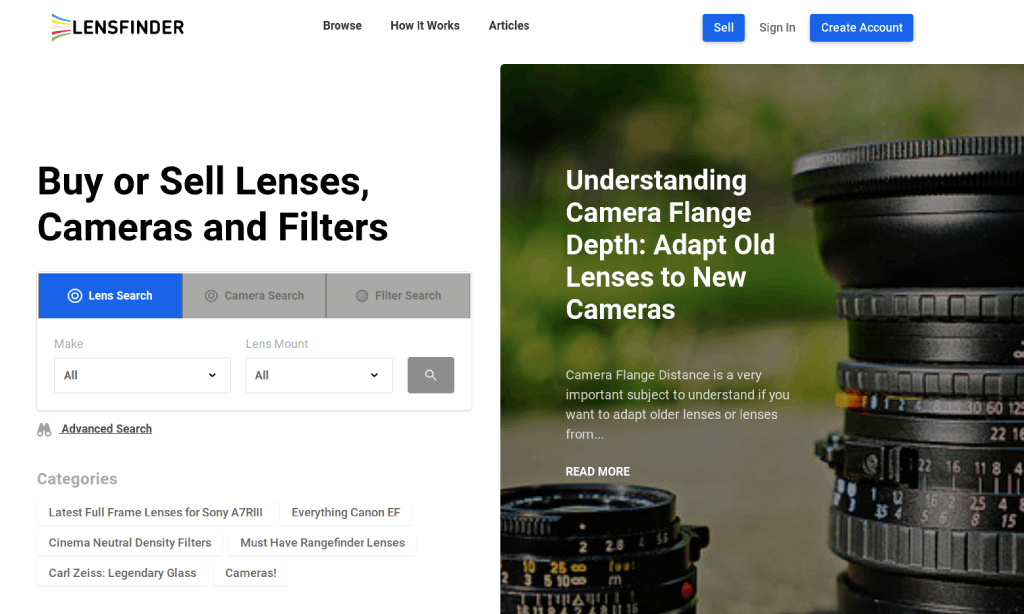
Admittedly, there aren’t many 35mm SLR film cameras being made today, but there are still a few. Plus, we have options in another film format, 120 roll film. We found several different film cameras available brand new, but the majority of them are professional models that are quite expensive and probably not well suited as the best film cameras for beginners.
These brand new cameras can be found from a variety of retailers, including major online camera stores.
A great option for many wanting the best film cameras for beginners is the used market. One place I have used successfully for purchasing these is Lensfinder. You’ll want to use a place that has good consumer protection and a wide variety of cameras and lenses.
Check your local camera stores, too, but you will find that a large online used camera store often has great prices and great selection.
Best Film Cameras for Beginners - New
Nikon FM-10
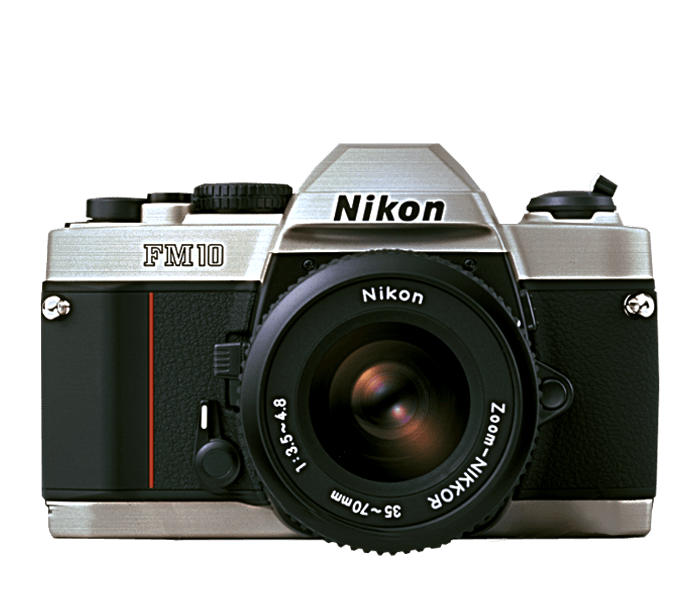
One of the best film cameras from the 35mm range in recent years came from Nikon. In the 1970s through to recent years, such cameras as the Nikon FE, FM, FE-2, FM-2n, and FA were near the top of many lists for advanced users and many pros. They had relatively compact size and weight, were very rugged and dependable, and had lots of usable features and accessories.
The current version is the Nikon FM-10. It has the Nikon F lens mount, so plenty of new and used lenses will fit. Note that the lens will need to be for FX format and have a way to mechanically set lens aperture. New DX lenses won’t cover the film format and any G or E lens won’t have any way to set the aperture on this body.
Everything is manual on this 35mm SLR. Focus, shutter speed, aperture, and film advance. There is a built in light meter to aid in setting exposure values. It comes in a kit with a 35-70mm lens. Brand new, it costs what many entry level DSLRs cost, maybe a little more.
Voigtlander Bessa R4M
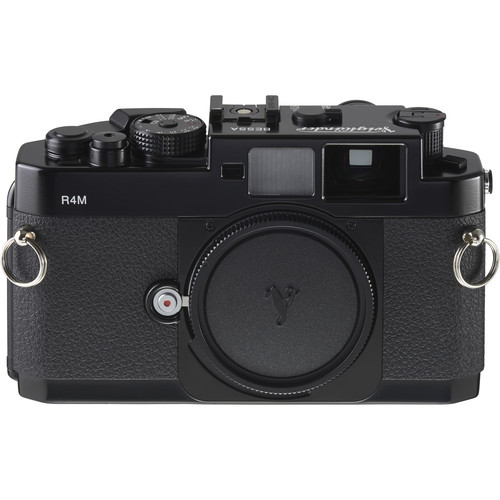
Also an all manual camera, this model is a rangefinder, as opposed to an SLR, and accepts lenses in the Leica M mount. It is a bit more expensive than the Nikon FM-10 and you will need to provide a lens since it doesn’t have one.
What you get with this camera is a throwback to a way of taking pictures that many beginners in 35mm photography learned as a matter of course. Even if all you were doing was taking snapshots, you still had to know something about rangefinder focusing, manual exposure, and other aspects of photography.
With adapters, you could use lenses made from as far back as the 1930s. For anyone wanting a way into classic lenses, this camera may be among the best film cameras for beginners.
Lomography Diana F+
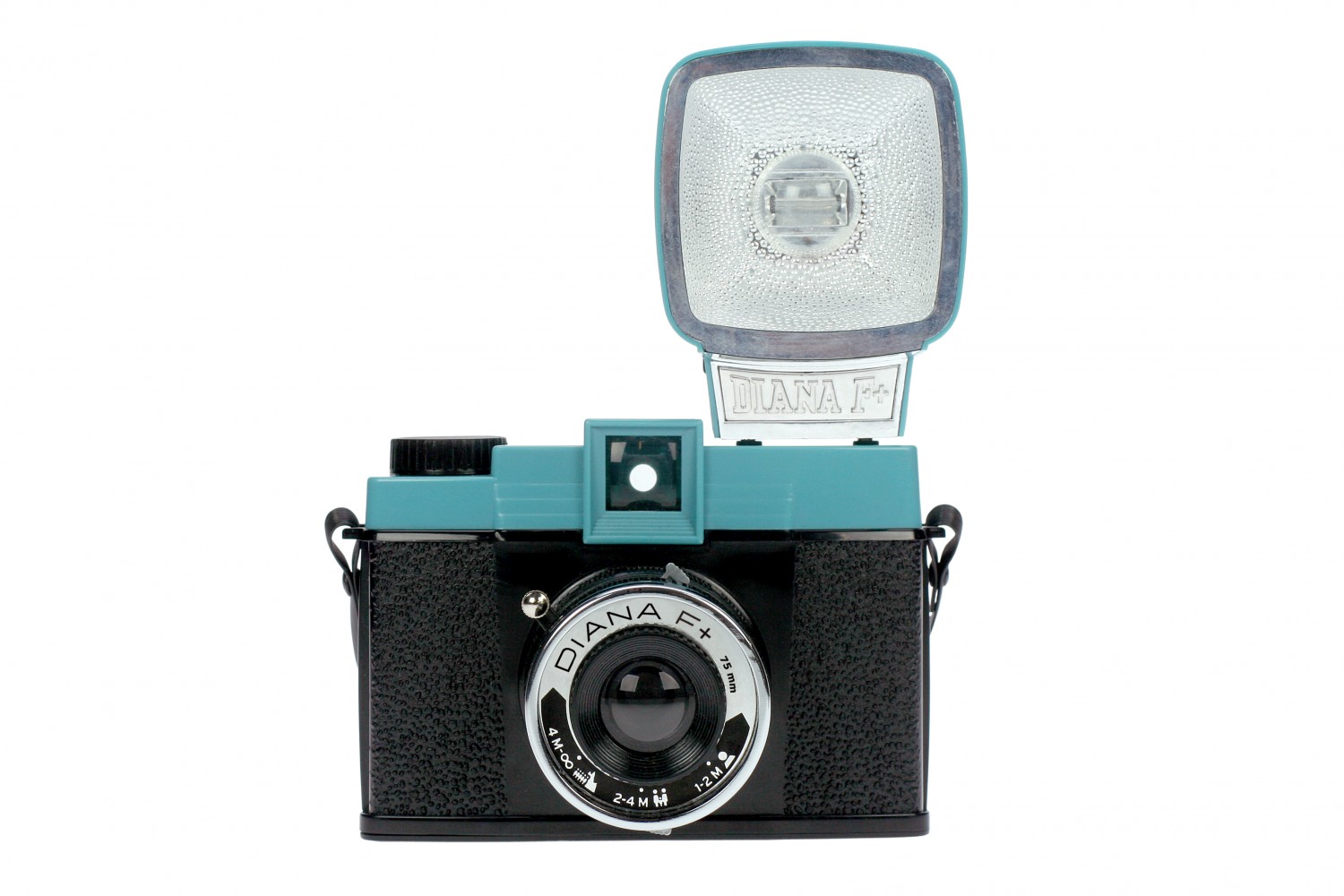
You can find this camera brand new for amazingly low prices. Beware, though, it isn’t an SLR, has no meter, it doesn’t even have a rangefinder to assist in focusing. The biggest difference, it uses a totally different film format, 120 roll film.
What you get is a huge film frame and a whole lot of fun. For lovers of minimalism, this may be the perfect hipster film camera.
Best Film Cameras for Beginners - Used
Pentax K-1000
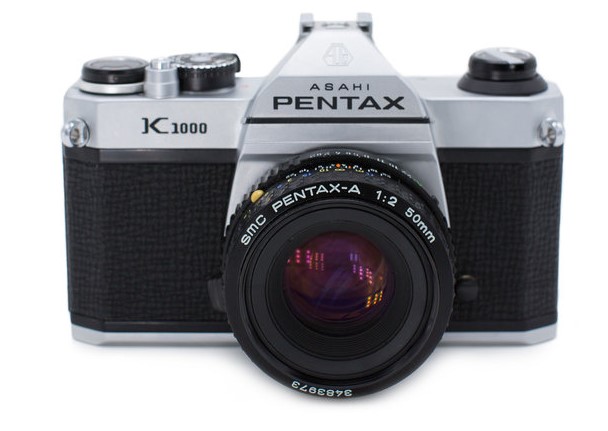
High school photography classes everywhere used this camera as the basic 35mm SLR to learn the basics of photography. While it hasn’t been made for several years, it can be found at many places, including online at stores like Lensfinder.
It is all mechanical, all manual, and uses the Pentax K lens mount. Not only are many samples of the camera available at super low prices, you can also find lenses just about anywhere for very low cost.
Canon AE-1
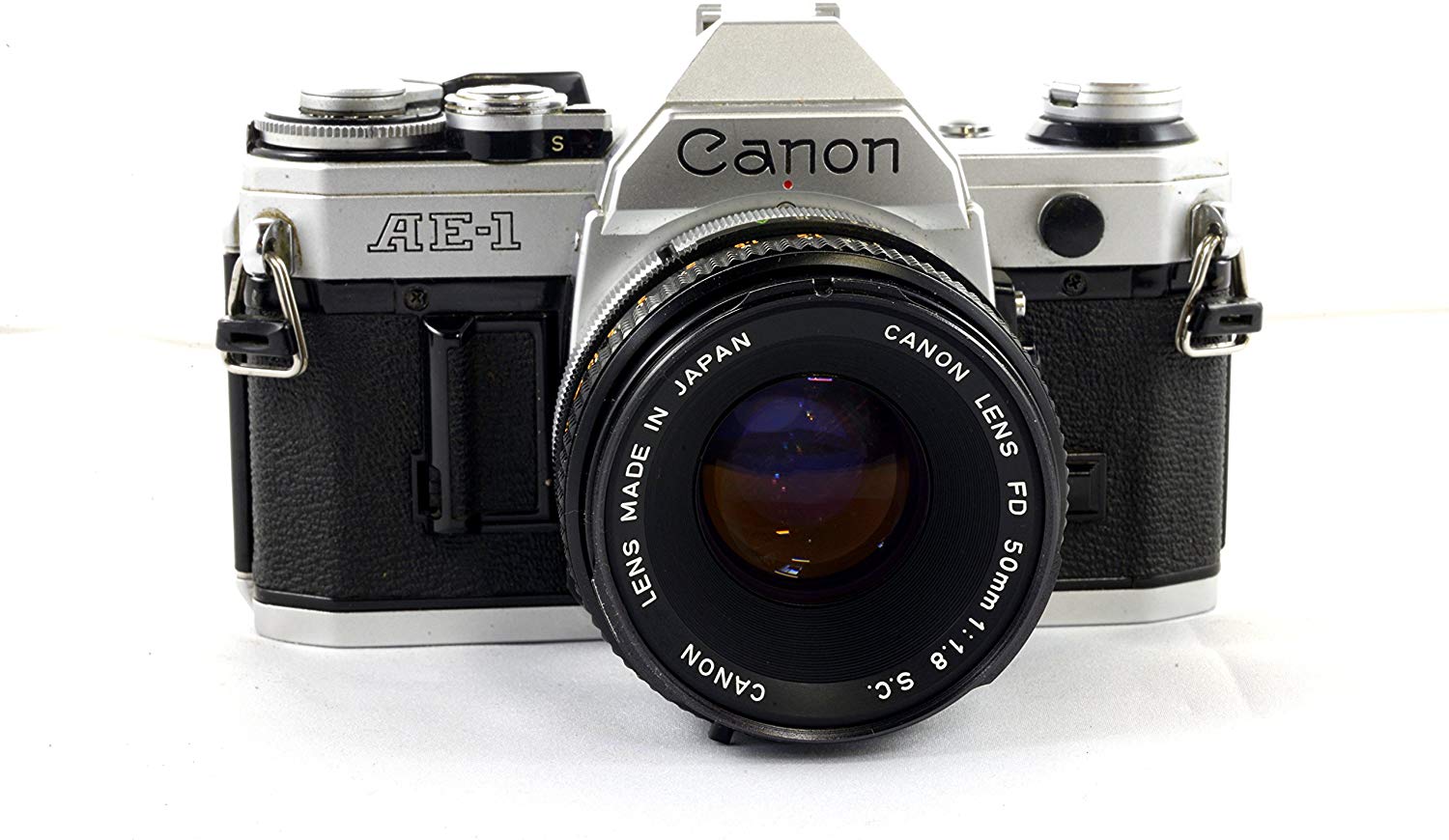
This camera line debuted in the mid 1970s and it set amatuer photography on fire with its combination of ease of use, low price, and tons of dedicated accessories like automatic flash and motorized film advance auto winder. Focus is manual, exposure automation is shutter speed priority (you set shutter speed, camera choose lens aperture) or fully manual.
Using an older lens mount system, the Canon FD/FL mount, this 35mm SLR is a popular choice for best film cameras for beginners. Lightweight, compact, but full featured, it’s still an awesome camera for any film user.
Minolta X-700
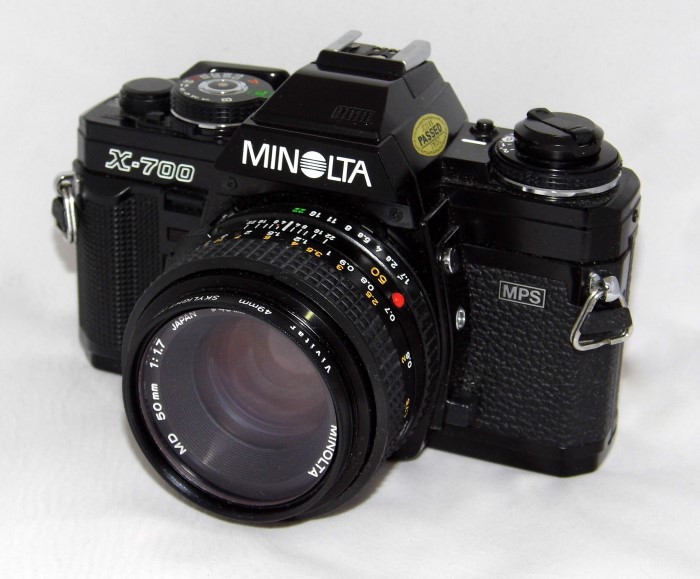
Long ago, in a far away galaxy, the tag line “From the Mind of Minolta” meant that Minolta designed and produced amazing cameras.
From the mind of Minolta came many innovations that are in use in current digital cameras, such as autofocus and through the lens flash (TTL) off the film plane (OTF) exposure automation. Photographically, Minolta’s mind still lives on in Sony digital still cameras.
This camera is a 35mm SLR with full exposure automation, TTL-OTF flash automation, motor drive, and other accessories. It uses the Minolta MD/MC lens mount, so scores or hundreds of lenses will fit. Prices for the camera and its lenses are very reasonably priced on the used market.
Still one of the best film cameras for beginners, back in the day, this was one of the top line choices for adventurous amatuer photographers.
Olympus OM-2
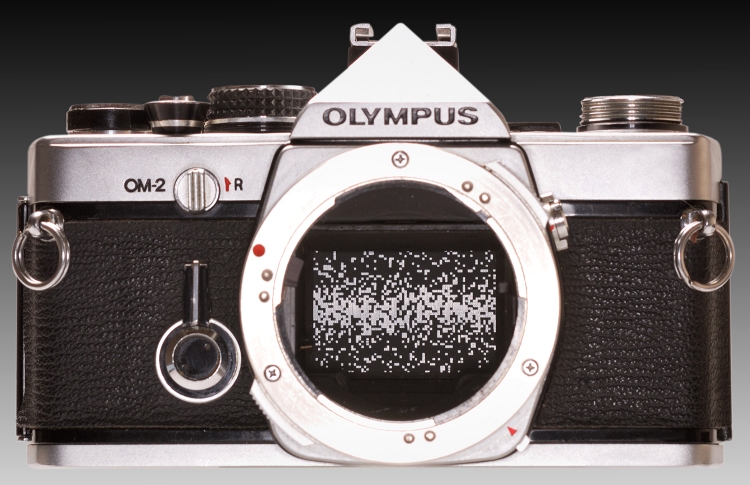
Few cameras caused as much excitement when first introduced as the ground breaking Olympus OM-1 and OM-2 cameras did. What made them special was that these were professional level full frame 35mm SLRs that had a compact size and weight that were virtually unthinkable at the time they came out.
While the Olympus OM-1 has all mechanical, all manual exposure control, the Olympus OM-2 has an electronic shutter that can be controlled by a TTL-OTF meter. That meter may have been a Minolta innovation, but Olympus was the first to use it (fully licensed) in a professional level camera.
Using the OM lens mount, users quickly found out that the OM-2 was great for astrophotography through telescopes as well as imaging through a microscope. Flash automation was extremely accurate and simple as well.
The OM-1 and OM-2 are a little bit higher in price, but still extremely affordable as some of the best film cameras for beginners.
Leica M3
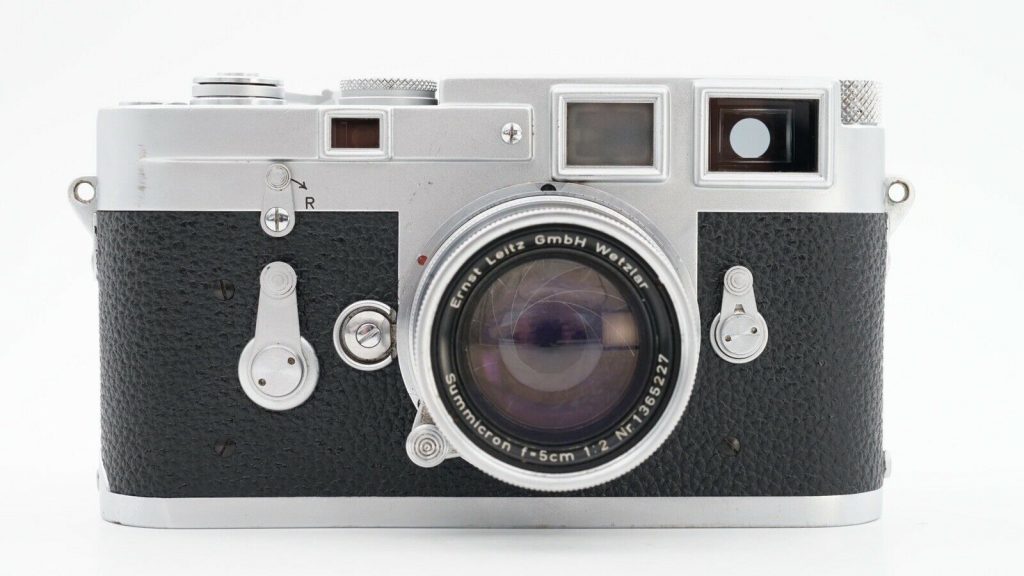
Since we’ve broached the subject of higher prices, let’s look at this premium 35mm rangefinder film camera from Leica that was introduced in 1954.
Before Leica was legendary for extreme quality and very prices in digital imaging, they developed a reputation in 35mm film cameras for extreme quality in their cameras and lenses. Quality commands high prices, then and today, these cameras are expensive. The fact that they are sought after by collectors also drives up prices.
Still, if you have the finances, these cameras are arguably some of the best film cameras for beginners or any level of photographers. Their mechanical precision is superb and the optical quality of the lenses is virtually perfect.
Current M mount lenses will fit and work on this 50 year old camera, plus there are many fine lenses available used. Everything about this camera is mechanical and manual. Shutter speed, aperture, focus, film advance. There is no meter, so that requires either some tried and rules such as the Sunny 16 Rule or a handheld meter.
All things considered, what makes this one of the best film cameras for beginners is that you will learn something every time you use it. Plus, you will be using one of the all time great 35mm cameras that helped make photography what it is today.
Minolta Maxxum 7000
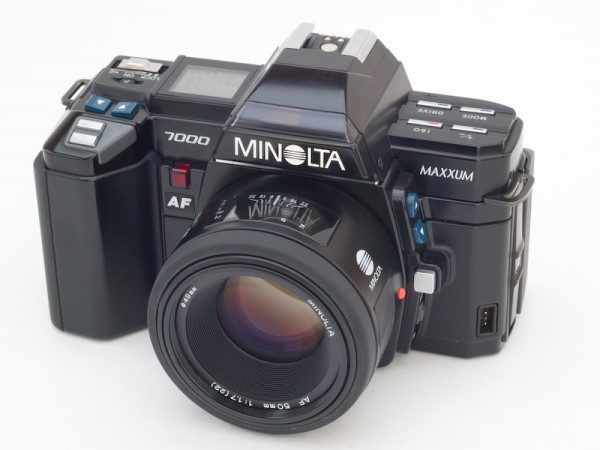
From the mind of Minolta came one of the earliest autofocus 35mm SLR camera lines, the Maxxum. The Maxxum 7000 makes its way onto the list of the best film cameras for beginners because it is a great camera, very high quality.
Also because it is among the first to have everything available as either manually controlled or on automation. It has programmed automatic control of both shutter speed and aperture. It has autofocus. It has motorized film advance and an easy load system for the film. It has fully automatic flash exposure.
The Maxxum 7000 introduced the Minolta A mount, now known as the Sony A mount, for interchangeable lenses. So, you could find full frame format lenses brand new for it. Plus, a huge array of used lenses.
Used pricing of the cameras and lenses from an online website such as Lensfinder is very reasonable. A fabulous choice as one of the best film cameras for beginners if there ever was one.
Canon EOS-650
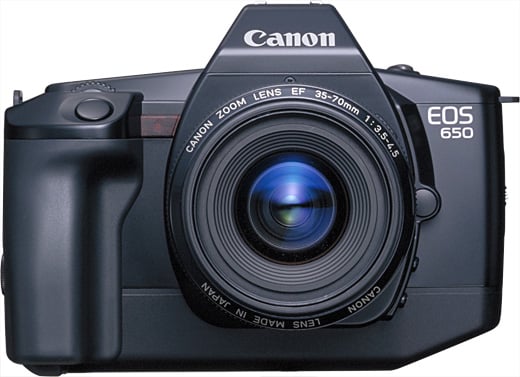
While Minolta may have gotten there first with their AF Maxxum series, Canon really hit it out of the ballpark with the EOS system of 35mm SLRs.
The Canon EOS system of 35mm SLRs had all of the same features and functions of the Nikon AF cameras such as the N2020 and N90, and the same as the Minolta Maxxum 7000 and 9000. What Canon added was their EF lens design.
Canon EF lenses didn’t just use a new lens mount, they changed the basic operations of lens controls from external to internal. The only external control was the focus ring for manual override.
Other manufacturer’s AF lenses were driven from a motor contained in the camera body. The Canon EF lenses each had their own built in focus motor. A motor in the lens was employed for aperture setting as well. There were no moving parts connecting from camera to lens at all, it was all done electronically.
That method of lens control is the general standard used by almost every brand today for their digital camera lines.
While the EOS 620 was a great camera, too, it was the EOS 650 that was considered at the time to one of the best film cameras for beginners, and it still is. It is also very affordable as a used camera. Current lenses for full frame EOS DLSRs will fit and work, plus there are a plethora of used lenses available.
Best Film Cameras for Beginners - Other
There are many used cameras out there that use film. In addition to 35mm SLRs, there were compact rangefinder cameras with a fixed lens, and small AF point and shoot (P&S) cameras, many of which can be found for around the price of a nice meal at a chain restaurant.
Other options include 120 roll film cameras, such as folding cameras and TLR style cameras. You might even find a nice Polaroid or two! Be sure to find out if there is new film for whatever format you decide on.
Whatever you choose as your own best film camera for beginners, enjoy the camera, enjoy the experience, and see if you can find one on the cheap by visiting Lensfinder.
We Recommend
Best Nikon Lenses for Beginner Photographers
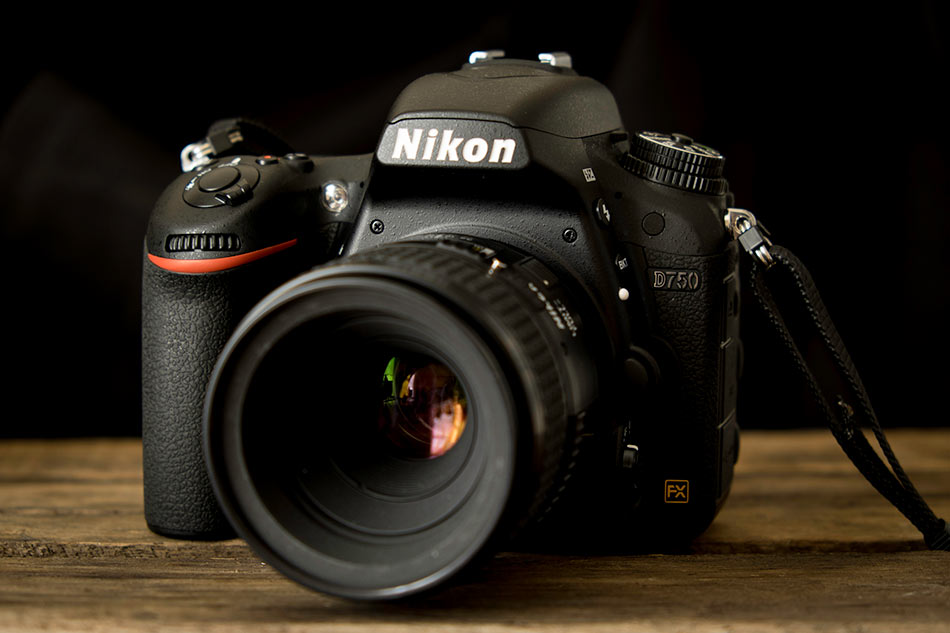
photo by 1MoreCreative via iStock
You have a shiny new (or used) Nikon camera, and now you need a shiny new (or used) lens to go with it.
Nikon Lenses
The question is, what are the best nikon lenses for beginners?
In this Nikon lens guide, I offer up my choices for three of the best lenses you can buy as a beginner photographer.
Table of Contents
- Best Nikon Lenses: Nikon AF-S 50mm f/1.8G
- Best Nikon Lenses for Beginners: Nikon AF-S DX 18-200mm f/3.5 – 5.6G ED VR II
- Best Nikon Lenses for Beginner Photographers: Nikon AF-S DX 12-24mm f/4G IF-ED
- Nikon Lens Guide: How to Find a Great Deal
Best Nikon Lenses: Nikon AF-S 50mm f/1.8 G
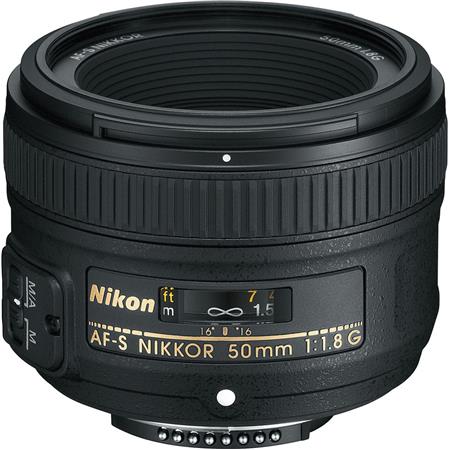
Far and away, the best nikon lens for beginner photographers is the AF-S 50mm f/1.8G or “nifty fifty.”
Though it’s designed to work with Nikon FX cameras, which have a full frame sensor, this lens will also work just fine with a Nikon DX, or crop sensor, camera. This lens is best suited for cameras like Nikon D3500.
The only difference is that due to the crop factor, this lens has an effective focal length of 75mm, which puts it in the short telephoto range. This focal length also helps to capture images with shallow depth of field.
That’s not a bad thing at all, though, because having more length with the lens means you can photograph your subjects from a greater distance.
This is ideal for things like wildlife photography (though, you will need a much longer lens if you’re truly serious about photographing wildlife).
The 50mm lens is also great for portraits because you can still get closely framed upper body and headshots without having to mash your lens in the model’s face.
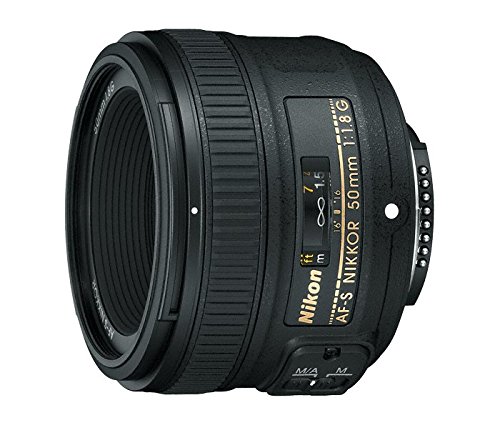
Having a little more distance between you and your portrait subject will typically mean they’re more relaxed, and the more relaxed they are, they better they’ll look in the portrait.
Better still, 50mm lenses make excellent lenses for video work, and you can reverse mount them to take macro shots. It’s that kind of versatility that makes this a top DSLR lens choice for beginner photographers.
Quick Tip: This lens also has a built-in autofocusing motor to aid in acquiring focus, even if you use a less expensive Nikon camera that doesn’t have a very sophisticated autofocus system.
Best Nikon Lenses for Beginners: Nikon AF-S DX 18-200mm f/3.5 – 5.6G ED VR II
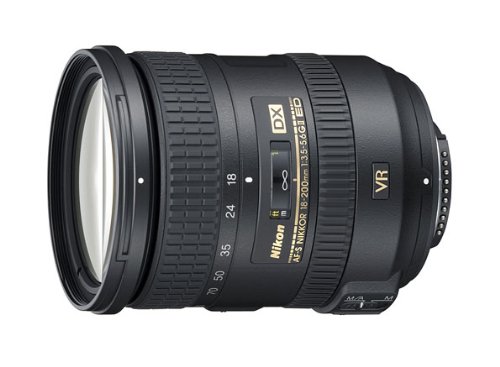
If you’d rather have a zoom lens that can basically do it all, a great candidate for one of the best lenses for beginner photographers is the Nikon AF-S DX 18-200mm f/3.5 – 5.6G ED VR II.
This lens has maximum aperture of f/3.5 -f/5.6 and minimum aperture of f/22 -f/36.
Don’t get intimidated by the extremely long name with acronyms that don’t make sense…
Not only is this lens affordable, but it’s also packed with features that will help you get better shots.
As already noted, this is a great example of a “do it all” lens. With a focal range of 18-200mm on a full frame camera and 27-300mm on a crop sensor camera, you can photograph wide-angle landscapes, telephoto shots of wildlife, and have a ton of range in between for everything from portraits to travel photos to street photography.
Another benefit of this particular DSLR lens is that is offers 3.5 stops of image stabilization.
This means that you can handhold the camera and use a slower shutter speed than you normally could and still get sharp photos.
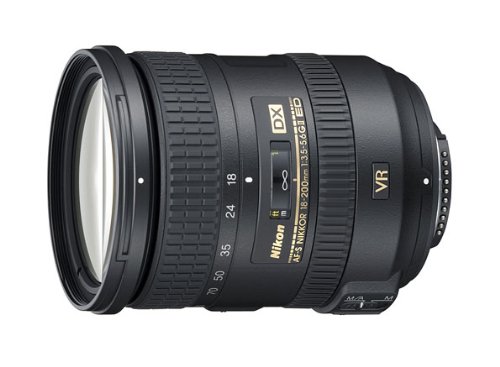
Now, there’s a limit to this, so you can’t shoot a minute-long exposure and handhold the camera. However, slowing the shutter by 3.5 stops is a big deal when you need a bit more light for a good exposure and don’t have a tripod handy.
Quick Tip: This is a budget lens and as such, its optics aren’t as good as you’d find in Nikon’s pro lenses. But with a bargain price and excellent focal range, this is still a great buy, even if it’s more susceptible to things like chromatic aberration and vignetting.
Best Lenses for Beginner Photographers: Nikon AF-S DX 12-24mm f/4G IF-ED
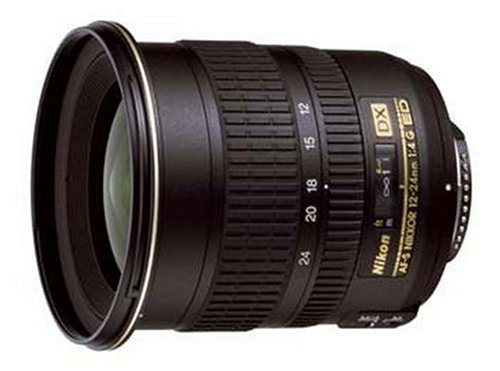
If landscape photography is your passion, then the Nikon AF-S DX 12-24mm f/4G IF-ED lens is a solid choice.
Even on a crop sensor camera, this lens has an effective focal lengths of 18-36mm, so it’s plenty wide for taking sweeping shots of landscape scenes.
This lens has got maximum aperture of f/4. With a constant f/4 aperture, you get the advantage of having plenty of light-gathering power for low-light landscapes as well. This is a bonus when shooting during blue hour after the sun has set.
But don’t think this lens is a one-trick pony…
On the narrower end at 36mm, this is a great walkaround lens for things like portraiture, street photography, and architecture photography.
The nearly 35mm angle of view is quite pleasing and closely matches what we see with our own eyes. The result of that is photos that have a normal, familiar look to them that people find eye-catching.
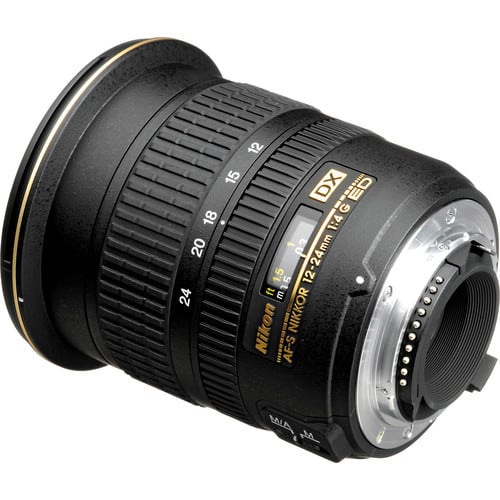
This is a more expensive lens than the others on this list, but with that higher price tag comes two extra-low dispersion elements and three aspherical lens elements.
The result of these improved optics is improved image quality with better sharpness and reduced aberrations.
Quick Tip: Just because you can rely on the zoom of this lens doesn’t mean you should stand pat when composing photos. To get the most out of your lenses, make a habit of zooming with your feet, moving around the subject, and getting closer and further away to create the best composition.
Nikon Lens Guide: How to Find a Great Deal
As noted above, some of these lenses are pretty pricey, and when you’re just starting out in photography, you might not have the money (or the desire) to plunk down $1,000 or more for a lens.
Fortunately, there are tons of deals on pre-owned lenses on sites like Lensfinder.
What makes places like Lensfinder so great is that it’s a website built by photographers, for photographers.
This means that your shopping experience is photography-focused - there’s no sifting through unrelated search results like you have to do on eBay and no scams like you find on Craigslist.
Want more details on some of the best Nikon lenses? Check out the video above by TheTechMag.
Instead, Lensfinder is an awesome little community where you can find the gear you need, ask the seller questions right within the platform, pay for the product via PayPal or BlueSnap, and arrange shipping without leaving the Lensfinder site.
Additionally, Lensfinder has a feedback system so you know how the seller has been rated in the past, and with built-in fraud protections, you can rest assured that the item you buy is the item you’ll get in the mail.
It’s simply the best way I’ve found to buy used gear.
And as your collection of gear grows, you can come back to Lensfinder and sell the stuff you no longer need. It’s a win-win situation for sure!
We Recommend
Best Portrait Lens - 85mm or 135mm?
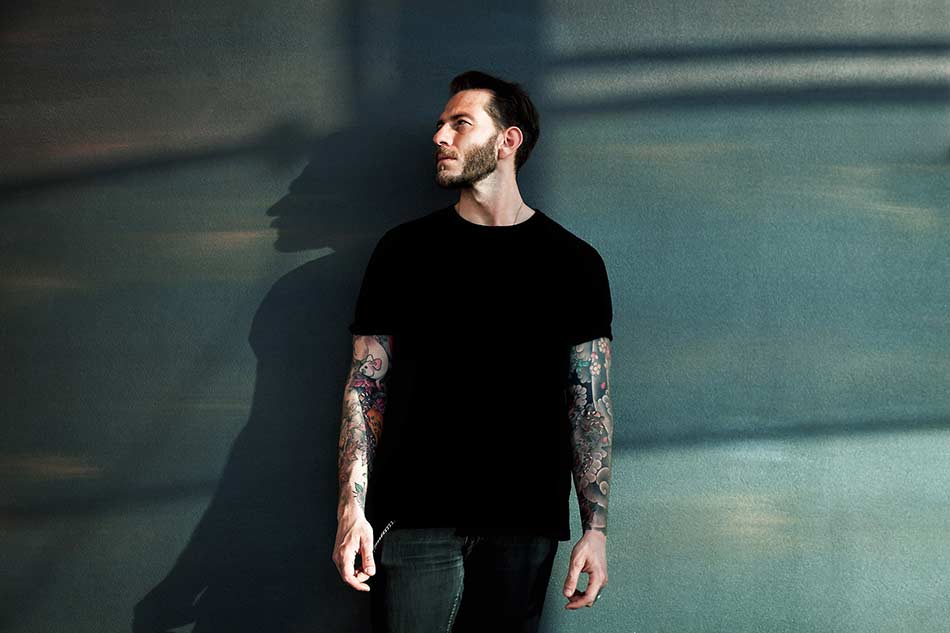 Photo by Marco_Piunti via iStock
Photo by Marco_Piunti via iStock
If you had your druthers, would you shoot portraits with an 85mm or a 135mm lens?
Personally, I like the 85mm option, but I know plenty of photographers who would never take an 85mm over a 135mm for portrait photography.
Of course, I know many other photographers that would opt for a 50mm for portraits over either of the other two, so really, it's different strokes for different folks.
But if you're on the fence between a long 85mm and a much longer 135mm for portraits, this guide might just help you make a decision!
Here's a few factors to consider in this best portrait lens comparison...
Want to upgrade your lens but don't have the cash for a brand-new one? Search for quality used lenses and save some money!
Best Portrait Lens - Consider Your Style
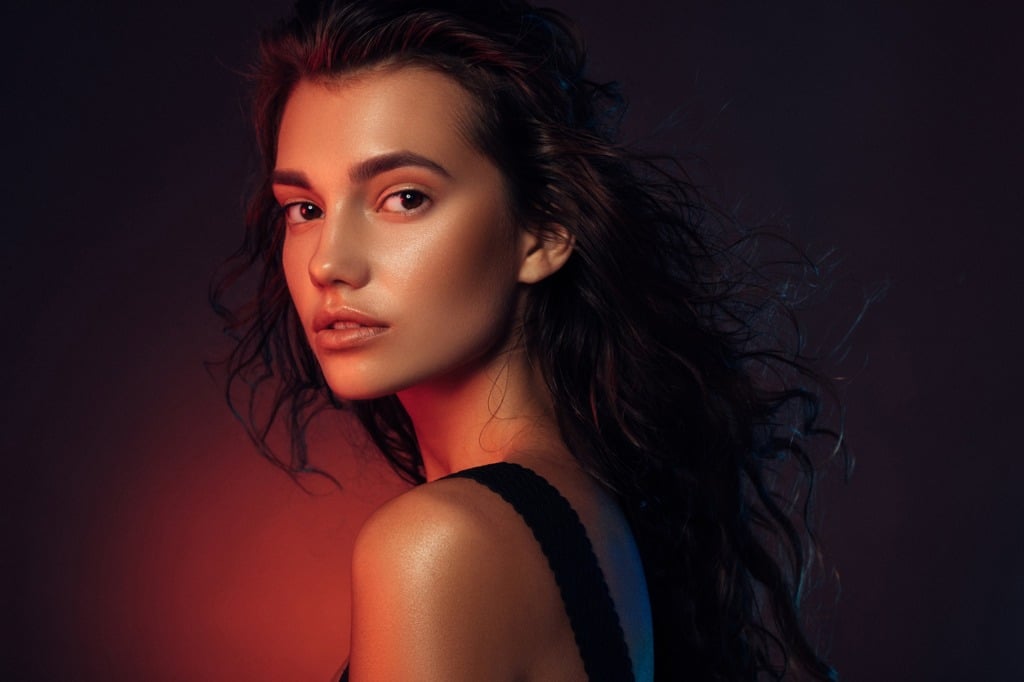 Photo by CoffeeAndMilk via iStock
Photo by CoffeeAndMilk via iStock
A lot of what should determine whether you shoot with an 85mm or a 135mm lens is your personal photography style and workflow.
For example, if you like to be physically closer to the subject to facilitate a more personal interaction, an 85mm lens is the way to go.
On the other hand, if you like to give the model a bit of room to do their thing, yet still have a nice, tight composition, a 135mm lens is the better choice.
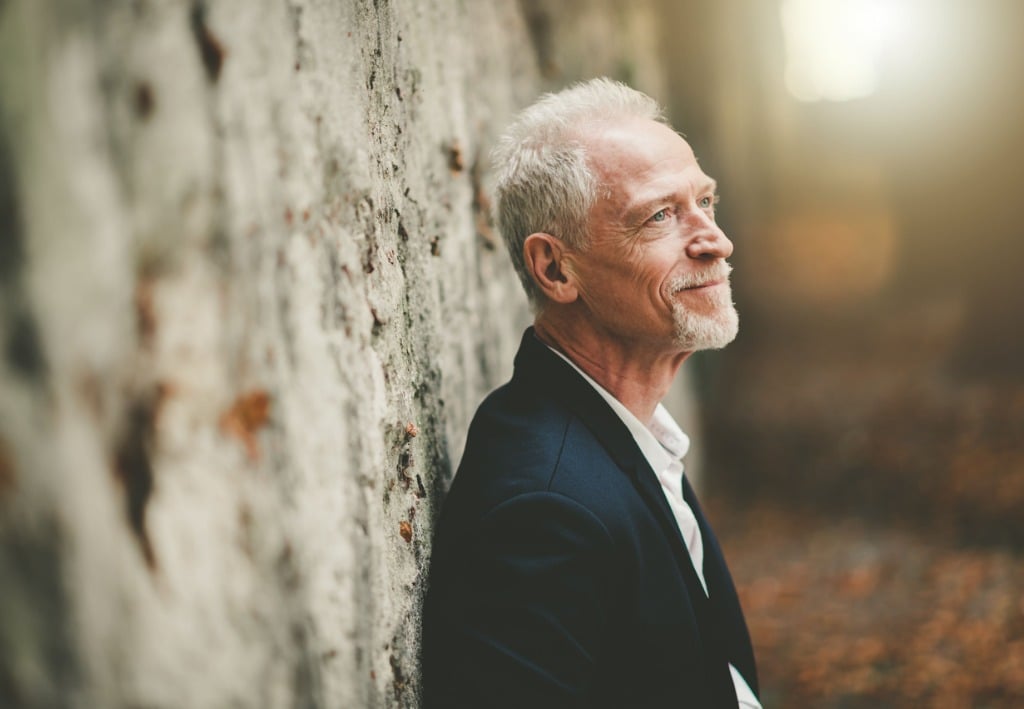 Photo by thodonal via iStock
Photo by thodonal via iStock
Another aspect of this personal style stuff is how you want the images to look.
The longer the focal length you use, the more compressed the scene will be. That means the model will appear to be thinner at 135mm than 85mm. That also means that the background of the portrait will have a greater level of blur with the longer lens.
So, if you really want to trim down your subjects and have uber blurry backgrounds, the 135mm option might be best for you.
Best Portrait Lens - What are the Space Restrictions?
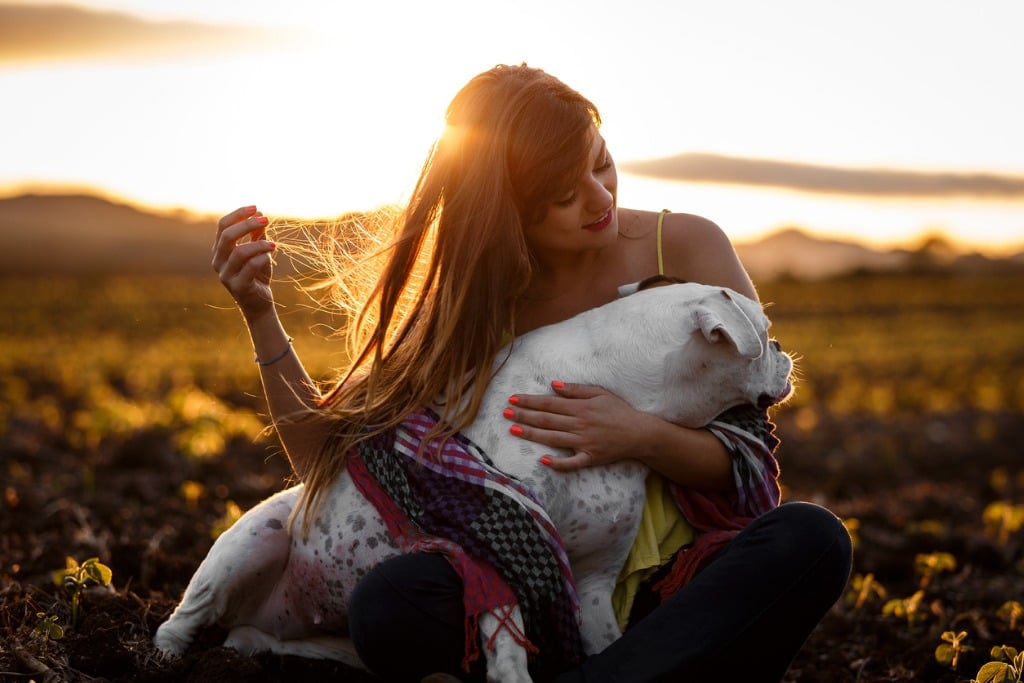 Photo by Capuski via iStock
Photo by Capuski via iStock
Building off the previous point, if you're cramped for space in a small studio, an 85mm lens is clearly the better bet...
After all, there's no point in investing in a 135mm lens if you can't physically get far enough away from the subject to actually take their photo.
On the other hand, if you typically shoot outdoors and space isn't an issue, a 135mm lens is a fantastic option.
Find the right lens for your camera (and save some money while you're at it). Find your ideal lens now.
Best Portrait Lens - Think About Versatility
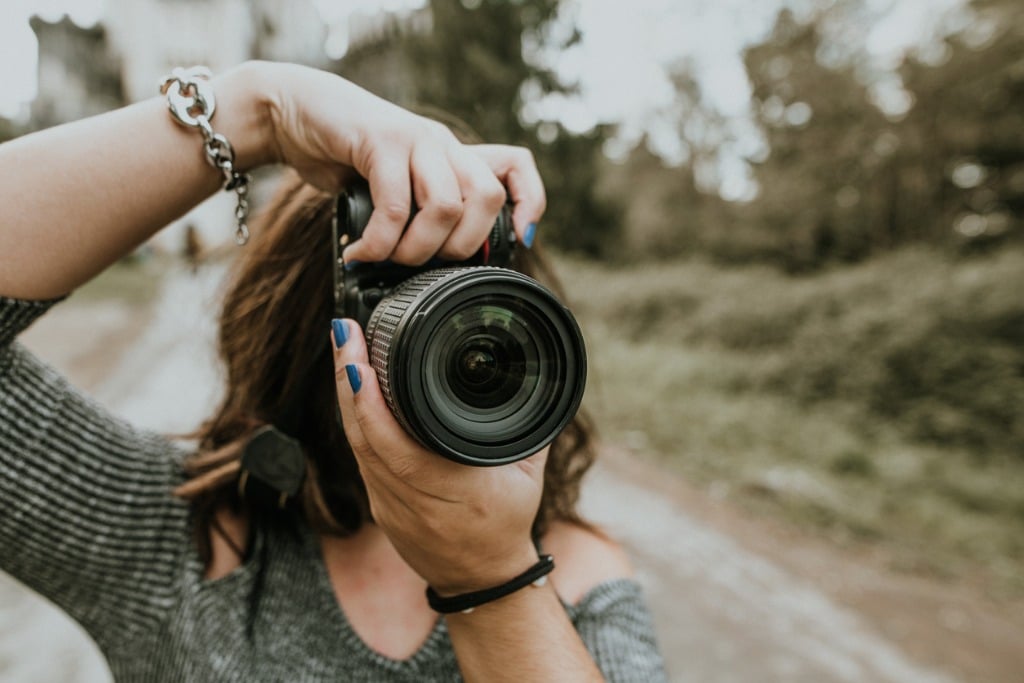 Photo by MarioGuti via iStock
Photo by MarioGuti via iStock
When I invest in a lens, I prefer that it be something that I can use for different things.
For example, I use my Nifty Fifty for landscapes, portraits, street photography - you name it.
For me, the more versatile lens of the two is the 85mm, and that's true for one simple reason: it's easier to handhold.
At 135mm, I have to use a tripod, otherwise I find I have trouble finding and maintaining proper focus.
This isn't to say that an 85mm lens is the easiest lens to shoot with handheld, but it's certainly easier (for me anyway) than the 135mm.
Best Portrait Lens - What's Your Budget?
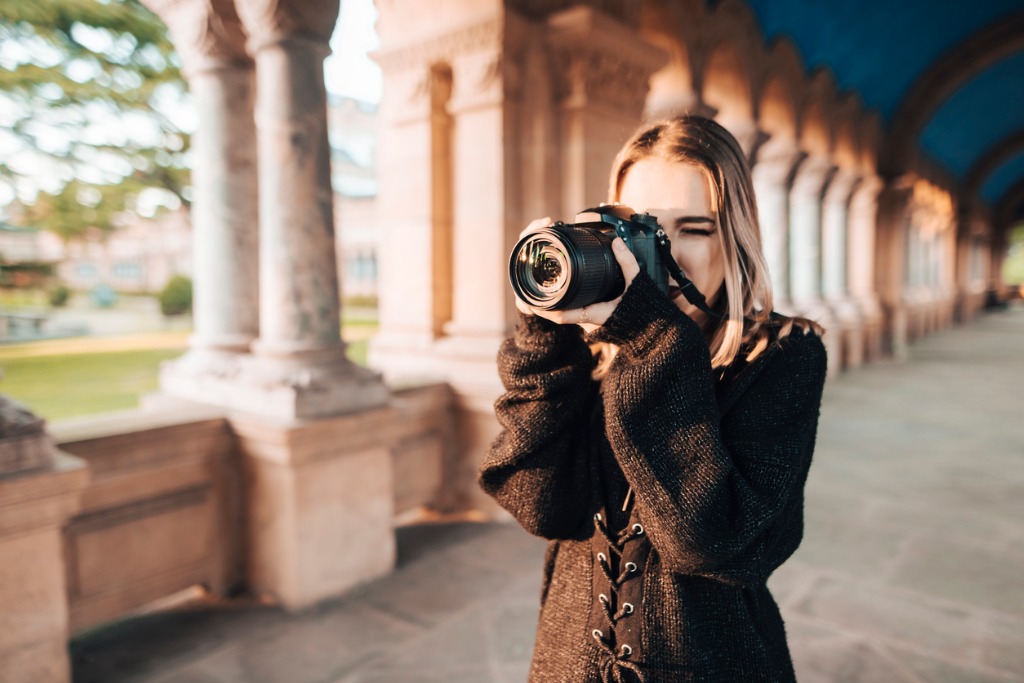 Photo by MarioGuti via iStock
Photo by MarioGuti via iStock
Money doesn't grow on trees for most of us, so budget will be a central consideration in your quest for a new lens.
Using Canon lenses as examples, an 85mm f/1.4L will run you about $1,600.00 brand-new. By comparison, a brand-new Canon 135mm f/2L costs about $1,000.00.
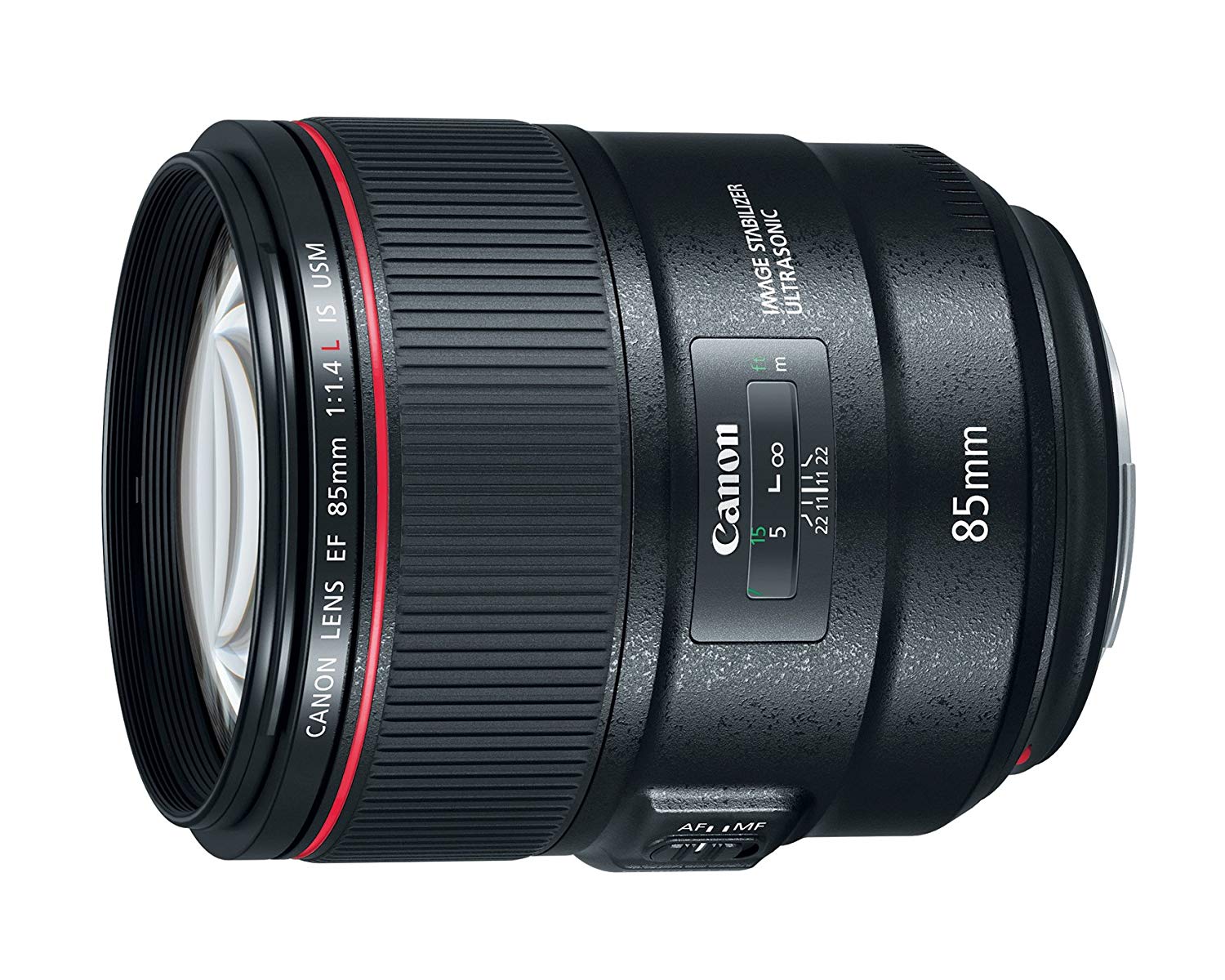
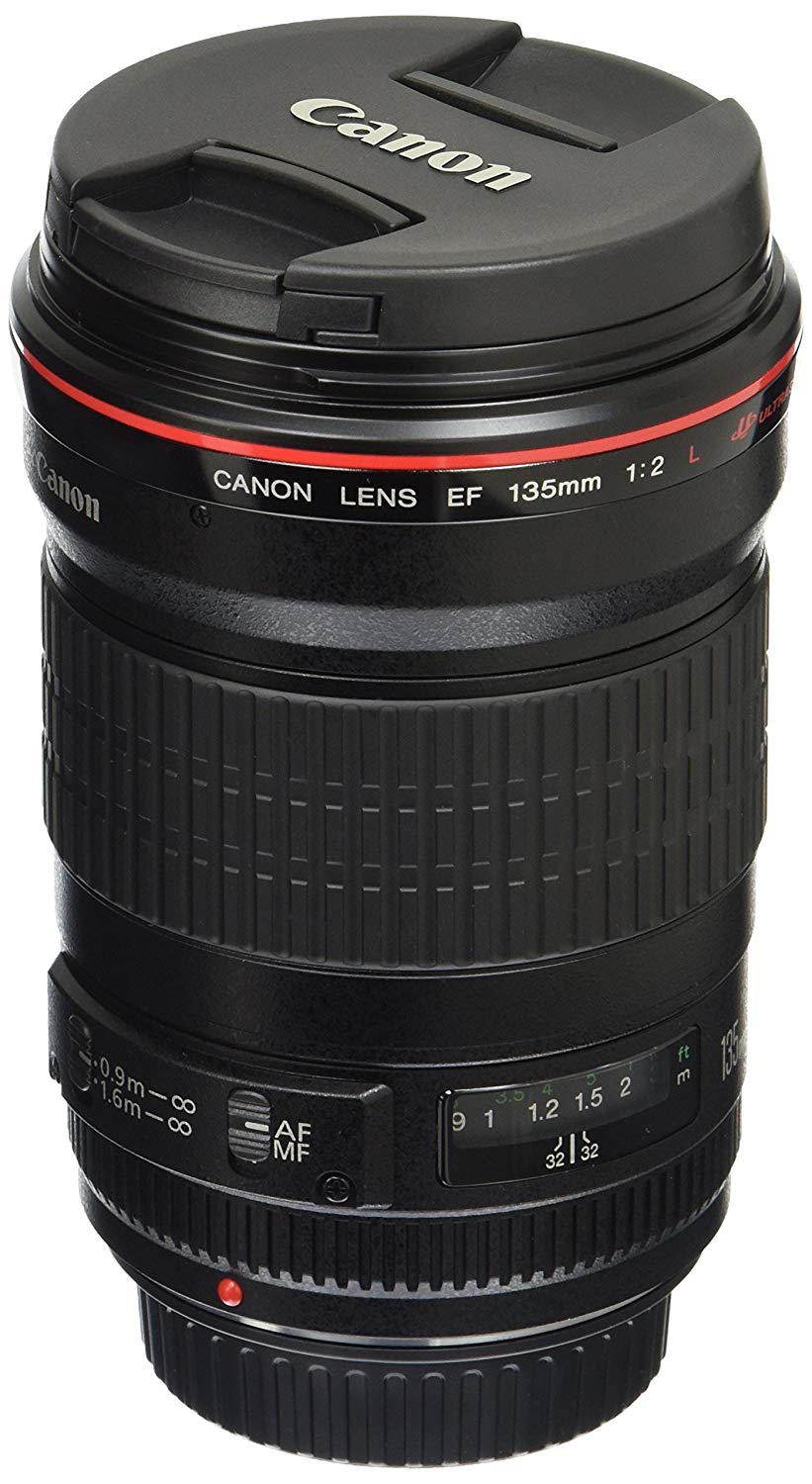
Granted, part of the difference in price is the difference in aperture size - f/1.4 vs f/2. Yet apart from that, you're looking at lenses that are of comparable construction, optical quality, and features, with the 135mm costing $600 less.
Of course, you can potentially save a ton of money if you buy a used 85mm or 135mm lens, so much so that you might find that you can afford both if you buy used.
You never know what you can find, so taking some time to search used inventory won't hurt anything.
If you're still on the fence about whether an 85mm or 135mm lens is best for portraits, check out the video above by Vivian Choi.
We Recommend
Blackmagic Introduces a 4K RAW-Shooting $1,295 Compact Camera
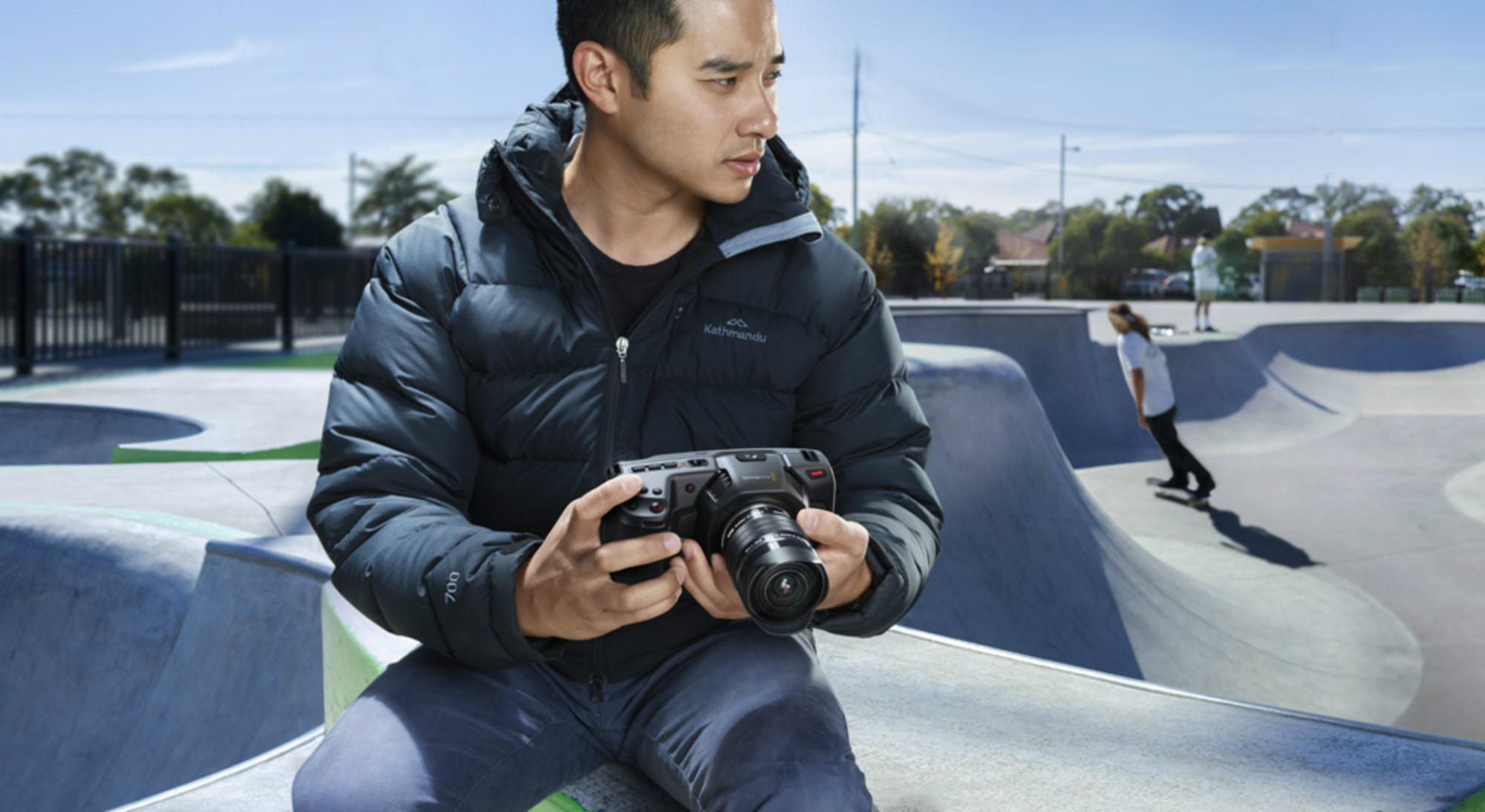
If you've ever wanted to get into shooting cinematic video but just didn't have a highly capable, yet affordable camera to do it, your dreams have now been answered.
Blackmagic recently unveiled their Pocket Cinema Camera which is capable of shooting 4K RAW video at a price point under $1,300. Not bad, right?
What makes this camera so interesting (well...one of the things) is that it has a four-thirds HDR sensor with an incredible 13 stops of dynamic range.
Another interesting treat is that its sensor was specifically designed for MFT lenses, which minimizes the crop factor so you can get the most out of the sensor's 4096x2160 resolution.
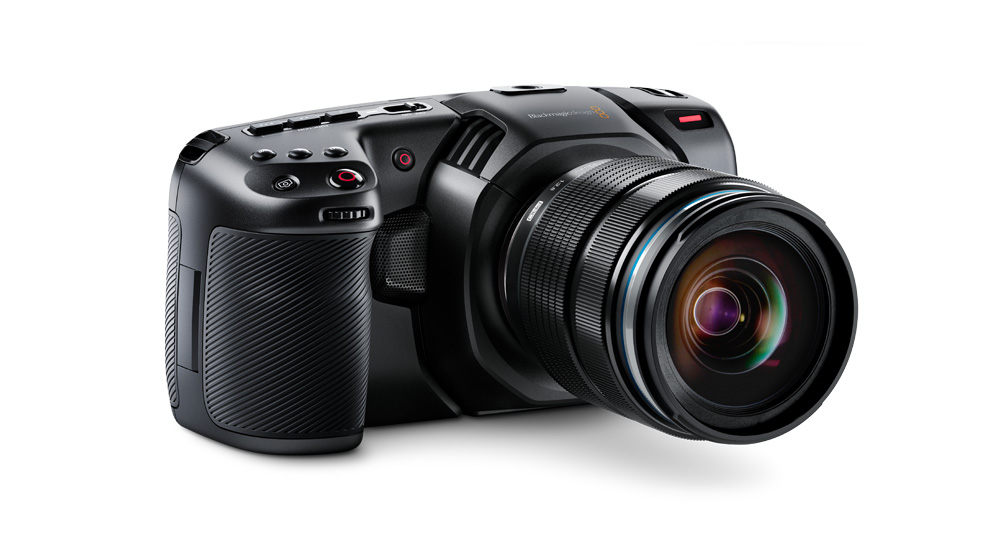
But the crazy specs don't end there.
The Pocket Cinema Camera has an ISO range to 25600 for low-light shooting, an HDMI out to hook it up to an external monitor, 10-bit video output, and a gigantic 5-inch touchscreen display.
It's also got 4 built-in professional microphones for high-fidelity sound, but if you want to use external mics that's no problem - there is a mini XLR input with 48 volts of power so you can use lapel mics and booms. There's even a 3.5mm audio jack to hook up traditional video camera mics.
With a high-speed USB-C port, you can record right to flash drives and USB-C enabled SSD drives so you can edit your videos. This is the first camera to include that option.
Editor's Tip: In the market for a better lens? Before you buy, get insider tips on how to buy a bargain lens.
On top of that, this little camera is really, truly small and lightweight.
It's made of carbon fiber composite, so the body is incredibly strong without being bulky. It's 7-inches wide, 3.8-inches tall, and 3.4-inches deep.
But don't let it's small stature trick you...
With its micro four-thirds mount, it can be paired with a wide array of MFT lenses, so you can shoot wide-angle, standard, telephoto, and everything in between.
There's even adapters that allow you to use non-MFT lenses with this bad boy.
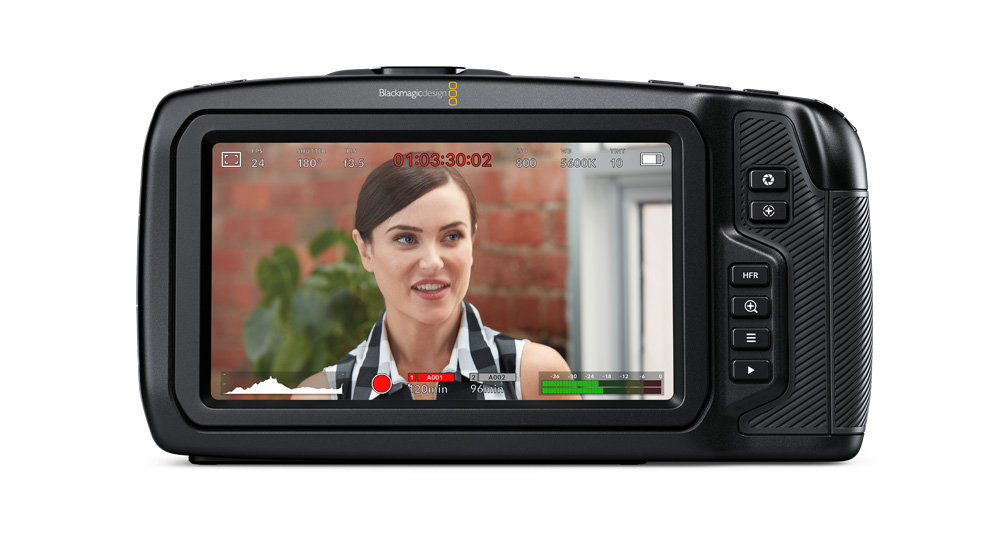
In other words, this is truly a cinema camera first and a still camera second. It's not your run-of-the-mill DSLR that happens to shoot 4K video.
To take stills, you just press a button on the camera to snap photos while you make awesome 4K cinema-quality videos. There's also buttons to control things like white balance, ISO, shutter speed, aperture, and more.
That being the case, this isn't exactly a camera for a photography enthusiast that wants to take more videos.
Instead, it's a cinematic workhorse for videographers that might want to take a few still shots here and there.
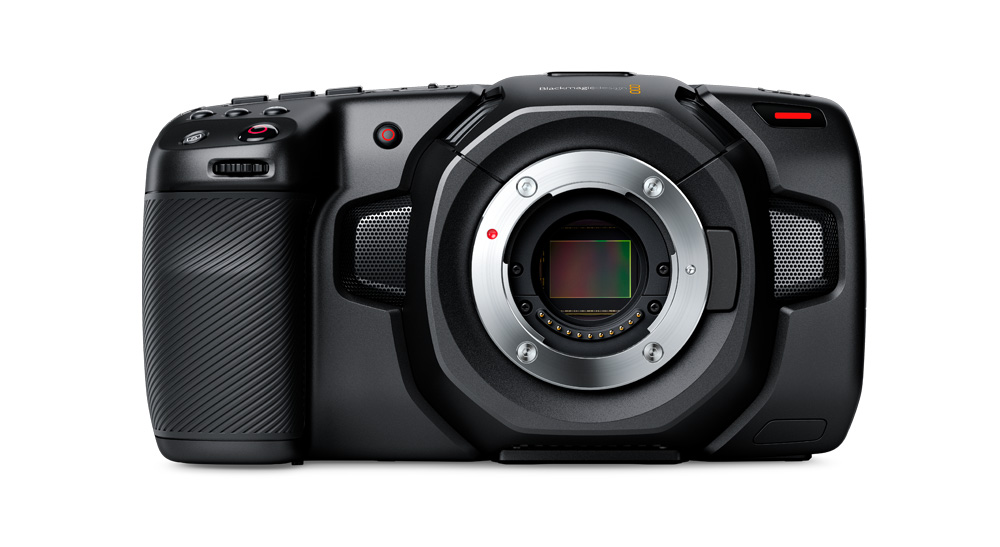
Regardless, this is one heck of an impressive camera.
It's packed with amazing features that you simply don't find on cameras of this size.
And those features are certainly not something you commonly see on a camera that's less than $1,300!
Check out the full specs on the Blackmagic Pocket Cinema Camera 4K.
Learn More:
Via Blackmagic
We Recommend
Businesses That Will Innovate Photography in 2018

I don't know about you, but I'm incredibly excited about the direction that photography is headed.
We're seeing more innovation than ever in cameras, lenses, and other photography gear, which gives us more power to create epic photos.
Post-processing programs are evolving into highly powerful editing suites that allow us to take our photography to the next level more quickly and efficiently.
We're even seeing changes in how we buy and sell photography equipment, share our photos, and market our businesses.
It's exciting times, for sure!
Here's some of the top businesses in the photography industry that are leading the charge in innovating the artform we love so much.
Sew Trendy Fashion & Accessories
 Legacy Photography
Legacy Photography
Sew Trendy started humbly in a basement just a few years ago.
Today, it's one of the premier wardrobe manufacturers for maternity photography, girls' photography, and newborn photography.
Their success in growing their business is attributable to many different factors, not the least of which that they constantly develop new designs for their line of maternity gowns, girls dresses, and newborn clothing, so photographers have fresh looks to offer their clients.
And in an age in which customer service is often lacking, Sew Trendy certainly bucks the trend. They're with you every step of the way, ready, willing, and able to help you with any questions or concerns you might have.
Valerie Best, the company's Founder and CEO has a lot to do with the success of her company as well.
She's committed to quality, and that shows in every handmade garment that leaves her company's warehouse.
Learn more about Sew Trendy Fashion & Accessories
Sirui

Over the years, Sirui has built a reputation for manufacturing some of the best photography tripods on the market.
I can attest to the quality of their tripods, as I own one!
But Sirui is much more than a tripod company...
They supply photographers the world over with high-quality gear that ranges from monopods to tripod heads, camera bags to lens filters, and even photography accessories for your mobile phone.
As if that's not enough, Sirui also offers a complete line of humidity cabinets, broadcast tripods, and various quick release plates, too.
In other words, Sirui is a one-stop shop for just about all your photography needs, and is definitely a company to keep your eye on in 2018.
CaptureLife

When talking about innovative photography companies that are sure to turn the photography world on its head in 2018, CaptureLife should immediately come to mind.
If you're not familiar with CaptureLife, check this out...
This app allows you to share photos with your clients right on their smartphone.
That means you can streamline how you get photos to clients as well as make it a more personalized process - the images are delivered via a branded text message that's personalized to the client.
On top of that, CaptureLife is a sales platform that allows your clients to order prints right from their phone. They can also share their photos with friends and family, which increases your sales footprint.
Mobile is the future, and if you're in the photography business, you need to capitalize on that by teaming up with CaptureLife!
Click Props

One of the challenges of staying relevant in the photography industry is keeping your ear to the pulse of what photographers need.
Click Props does just that.
With a huge collection of gorgeous portrait backgrounds, Click Props gives photographers the ability to create more impactful portraits no matter who the subject might be.
Aside from their commitment to crafting the best backgrounds in the business, Click Props understands the practical needs of photographers as well.
They offer backgrounds in various sizes, each of which is easy to setup and takedown. They're even easy to clean and easy to store, too.
That means you spend less time messing around getting things setup and stored away, and more time actually taking photos.
What's not to like about that?
Vanguard

Another company that's sure to make waves in 2018 is Vanguard.
I've been a fan of Vanguard for years now, and I can tell you firsthand that in the last couple of years, they've really stepped up their game with their product line.
In particular, their tripods and camera bags are among the best in the business, not just because they have innovative features that make photography easier and more efficient, but because their products are budget-friendly as well.
That means that Vanguard has figured out a way to offer photographers the best of both worlds - high-value, well-made products that won't break the bank.
Vanguard is at the tip of the spear of innovation in photography. If you aren't excited to see what they come up with in 2018, you should be!
Artbeat Studios

Photography isn't just about the gear you use, nor is it just about your skills in composition, framing, post-processing and the like.
Instead, the process of creating an image isn't truly complete until you have a gorgeous print. That's where Artbeat Studios comes in.
I came across Artbeat Studios last year, and after touring their facility, I was blown away by their process and the products they make.
Among their best sellers are their acrylic and metal HD prints, the latter of which you can see in the photo above.
To say that Artbeat's prints are gorgeous is an understatement. What they produce is truly fine art.
That's because they're committed to using archival materials, paying close attention to color fidelity, and providing custom services so you get the exact print you want.
If you're looking to revolutionize the way your photos look, give Artbeat Studios a try!
Learn more about Artbeat Studios
Uniregistry
One of the best things about the photography industry is that there are so many companies doing so many awesome things for photographers.
In 2018, I strongly suggest that you change the way you market your photography business by partnering with Uniregistry.
These guys have two domains - .pics and .photo - that will help you get more eyes on your photos and more clients knocking on your door.
Why?
It's simple - Uniregistry's domains are photography specific, so you can promote your work on your website with a professional and credible domain name.
Not only do .pics and .photo domains tell the world exactly what you do right there in the URL, but they're fresh and new, so the chances of you getting the exact name you want are much greater.
It's just a better way to market yourself on today's crowded internet!
Learn more about .pics and .photo domains
MPB

Let's face it...
Photography gear can be expensive, and all that expense is cost-prohibitive if you're on a budget.
But MPB has changed the way that photographers buy gear because they've created an extensive marketplace where you can find high-quality pre-owned gear for excellent prices.
Not only that, you can sell your old gear to MPB and either pocket the money or get a credit toward the purchase of something on their site.
That means you can refresh your kit from time to time by getting rid of what you no longer want or need and replace it with well-priced, pre-owned gear for less.
Stretch your budget. Get more gear for less. Get better gear for less, too. Not bad, right?
SHUTTERbag

Not that long ago, there was a lack of photography gear specially designed for female photographers.
But in 2010, that all changed when SHUTTERbag was founded.
SHUTTERbag specializes in crafting leather camera bags for women that are beautiful and functional, too.
This commitment to quality is evident in every SHUTTERbag model.
For mom photographers on the go, SHUTTERbag offers the Girls Day Out bag (shown top left, above).
This ingenious camera bag has three separate compartments - one for your camera gear and two zippered compartments for things like a tablet for business tasks and books, toys, diapers and other items for your kids.
Like all SHUTTERbag models, the Girls Day Out is the height of form and function.
It’s an ideal size for daily use, and with its built-in organizational aids, you can keep your photography stuff separate from your personal items with ease.
That means you can grab your camera, your phone or a diaper at a moment’s notice.
Now that’s how you get more production out of your day!
SHUTTERbag’s Trailblazer bag (shown top right, above) is another example of commitment to innovation.
This bag has a unique style and flair that make a strong fashion statement, but don’t think that this bag is just about looking good…
Inside, you’ll find room for a camera body and up to four lenses. Alternatively, you can carry two camera bodies and three lenses. There’s even a spot for your tablet or laptop!
With padded dividers that are removable and adjustable, you can truly customize this bag to suit your specific needs.
For mid-range carrying capacity, SHUTTERbag designed the Heirloom 5-in-1 bag (shown bottom left, above).
Not only can this bag accommodate a camera, three lenses, and up to a 15-inch laptop, but it can also be carried in a variety of ways - as a tote bag, a messenger bag, a shoulder bag or even as a backpack.
Talk about innovation!
Their Journey bag (shown bottom right, above) is a tote bag that’s made of genuine leather and features a breathable cotton lining that provides a soft surface for your gear inside the bag.
The Journey has a detachable strap that has a slip-resistant shoulder pad that gives you confidence when carrying your bag either over the shoulder or across your body.
The bag can easily accommodate a camera with a 70-200mm lens attached, as well as a laptop, a tablet, camera accessories, and personal items like your checkbook and smartphone as well.
And as if their bags aren’t enough to impress, consider this - SHUTTERbag is a small business, so they treat their customers like family.
That means that you not only get to choose from a wide array of incredible camera bags, but you know that you’ll get the service you deserve before, during, and after the sale, too.
nPhoto

When you think of photo albums, you might think that they're all the same or that there's not much room for improvement.
But you'd be wrong.
nPhoto has proven that by becoming one of the top producers of photo albums and other products in the world.
Their handcrafted albums, triplexes, photo boxes, and other products are second-to-none in the industry.
nPhoto uses the best materials to construct their products, from fine textiles and leatherettes for their album covers to silk and metallic papers that give each page of their albums a hefty, crisp, and expensive feel.
What's more, nPhoto gives you plentiful options for customizing their albums, so you can get something that's truly your own or tailored to your clients' specific tastes.
Taking great photos is only half the battle - how you present them matters, too. If you work with nPhoto, you'll certainly have the presentation aspect of it down pat.
MyStudio

The MS20PRO 20”x20”x12” tabletop photo studio by MyStudio is an ideal accessory to help you take your product photography to the next level.
Unlike many other tabletop studios, this one offers a seamless cyclorama infinity background with 90-degree corners that gives you many more shooting angles to highlight the products that you’re photographing.
The studio comes with dual 5000k color-corrected daylight fluorescent lamps, which offer tons of light for your images while providing excellent color as well.
MyStudio also includes 9”x12” white and black bounce/fill cards with easel stands to create nice, even lighting, and a pair of 9.5”x11.5” white and black reflective acrylic panels to create beautiful reflections beneath the products you photograph.
The folks at MyStudio have even produced a series of instructional videos that are available on their YouTube page to get you going with your new photo studio!
MrStarGuy

I only became familiar with MrStarGuy in the latter half of last year, but they quickly became one of my favorite photography companies.
For starters, MrStarGuy is an authority on astrophotography gear - no matter what you need, whether it's a scope, a mount, a tripod, or something in between, MrStarGuy has what you need.
Secondly, these guys offer their high-quality products for prices that you can actually afford. You get tons of bang for your buck, which isn't always the case in photography.
But maybe most importantly, this family-owned business is committed to service before, during, and after the sale.
They're genuine folks that want their customers to feel like old friends.
If you're excited to expand your photography horizons this year and tackle some night sky photography, be sure to visit MrStarGuy to get all the gear you need.
DJI

When I think about where photography is headed in the future, I can't help but think of drone photography.
And when I think of drones, DJI comes to mind.
DJI has some of the very best drones in the business. That's true whether you're a beginner drone photographer or an experienced veteran.
What makes DJI's drones so great is that they're packed with features - like collision avoidance systems and gesture-based flight controls.
Additionally, there are a plethora of options, upgrades, and add-ons that you can use to customize your drone to get the ideal flying and photographic experience.
As drones become more and more popular for photography, you can bet that DJI will be leading the charge in innovating how drones are built and how they perform.
Macphun/Skylum

Macphun has been around awhile, and they've developed a reputation as one of the best in the software business.
As they rebrand and become Skylum, it's important to note that this small team of software experts continues to make waves in the photography industry.
In fact, they've won tons of awards over the years for their products, most recently for their impeccable Aurora HDR 2018, which was named by Apple as the app of the year for 2017.
Considering how many apps there are these days, that's quite the achievement!
Speaking of achievements, with Macphun's software, like the aforementioned Aurora HDR, as well as their Luminar 2018, you can achieve great things with your images.
Not only that, but you can create better-looking photos in less time and with less effort, all within platforms that are smartly designed and give you an effortless workflow.
My goal this year is to do a better job of processing my images, and with Macphun by my side, I have no doubt that I will achieve that goal.
Learn more about Macphun/Skylum
Lensfinder

Have you ever wanted a new lens but just couldn't bring yourself to shell out the kind of money needed to get truly high-quality glass?
Well, that worry is over now that Lensfinder is on the scene.
Lensfinder is a marketplace where - you guessed it - you can find lenses for great prices.
If you're looking for a rare or high-end lens (or everyday lenses, for that matter), you can use Lensfinder's easy search tools to locate what you need.
Then, you can communicate with the seller, ask questions, and even pay for your new-to-you lens via PayPal, right there within Lensfinder.
You can also sell the lenses you no longer want, too, so it's the best of both worlds.
Lensfinder has built-in fraud protections, seller feedback ratings, and other smart tools that help make your transaction as smooth as possible.
If you want to upgrade your kit this year, check out Lensfinder!
Spider Holster
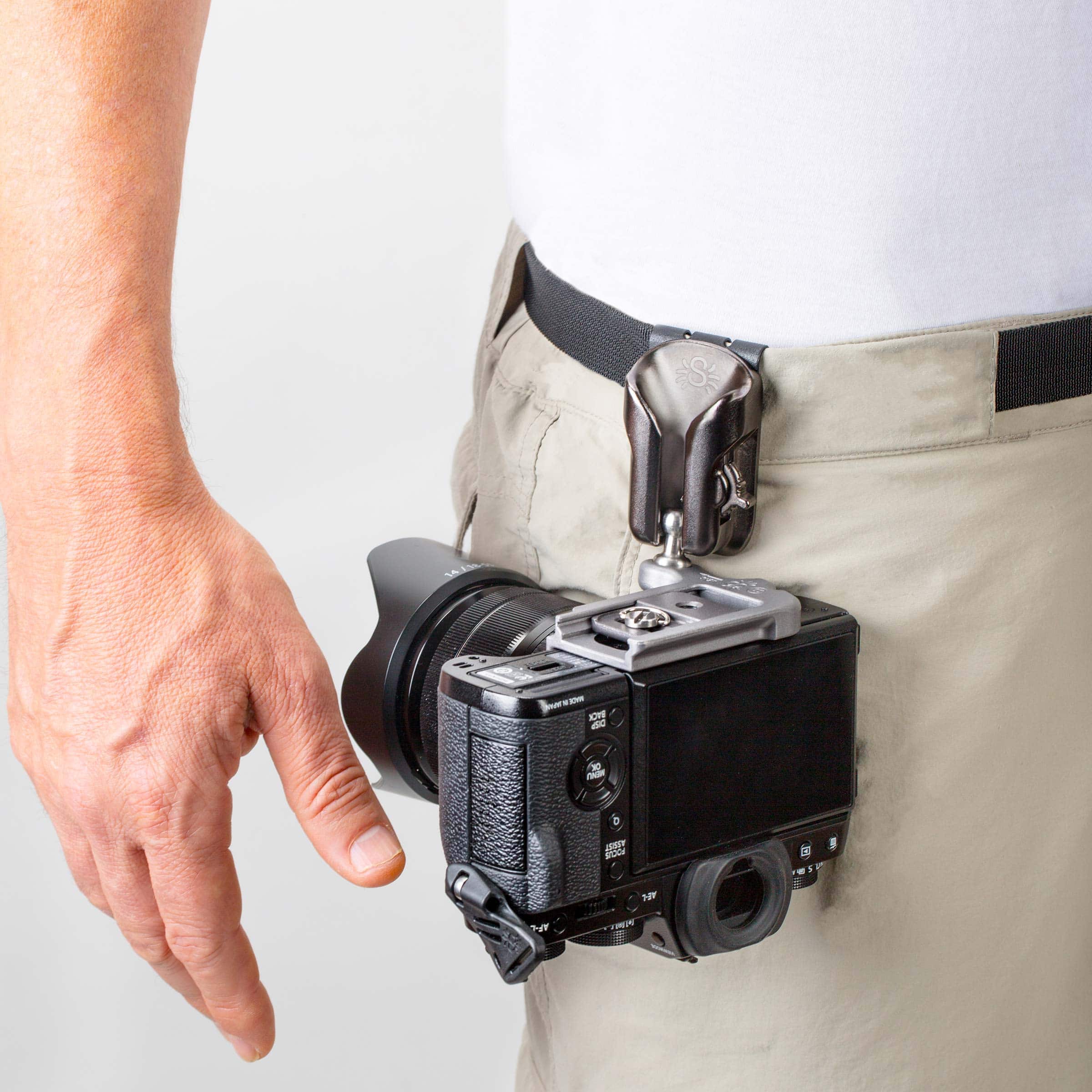
My biggest complaint about cameras is the terrible strap that comes with them at purchase.
The OEM straps are thin, uncomfortable, and just plain get in the way when you're trying to take photos.
That's why Spider Holster is such a game-changer, because they're responsible for getting your camera off your shoulders and onto your hips where you can carry your cameras with greater ease and security.
Just looking at the photo above, you can imagine how much more streamlined your workflow would be if you're using a Spider Holster.
You can carry one camera or two using the Spider Pro (for big DSLRs) or the SpiderLight (for compact, mirrorless, or small DSLR cameras).
They even make hand straps that put your camera right in your hand in the ideal shooting position, all without a long strap always getting in your way.
Spider Holster has revolutionized how to carry cameras. In 2018, I strongly recommend that you let Spider Holster revolutionize the way you work.
Learn more about Spider Holster
Next Insurance

When many people hear the word "insurance," they cringe.
But who can blame them? Buying insurance has historically been a process that's time-consuming and frustrating.
Not now.
Next Insurance has changed how photographers purchase insurance because they've cut out the middleman.
Instead of dealing with a broker, you can visit Next Insurance's website, get a free quote, and get the coverage you need faster and for less money.
By cutting costs, Next Insurance is able to pass those savings on to their customers, so you can get the best coverage without breaking the bank.
From equipment protection to liability for damages to advertising claims, Next Insurance has policies and coverages that will ensure your business will prosper for years to come.
Learn more about Next Insurance
CanvasHQ

Canvas is one of the oldest mediums that artists use for their work.
But, boy, is it still a gorgeous way to print your photos!
That's especially true if you order canvas prints from CanvasHQ.
Like many of the companies on this list, CanvasHQ demonstrates a commitment to crafting the highest-quality products using the finest materials.
And because of that, their canvases look like a million bucks. I should know - I have several in my house!
CanvasHQ gives you a mountain of options to customize your prints, and each print comes with a 100% satisfaction guarantee.
These guys are a small family business, so when you order your canvas, you'll feel like a member of the family, not just another customer.
If that's not enough to convince you to buy from CanvasHQ, I don't know what will!
Syrp

If filmmaking is your passion, then you need to see what Syrp has to offer in 2018.
As one of the most innovative companies in the photography industry, Syrp is always at the leading edge of what's new for filmmakers.
Their line of products helps videographers of all skill levels and experience to create breathtaking films.
Their Genie Mini motion control device (shown above) - which gives you control over your camera to create time-lapse videos using your cell phone - is just one of their incredible products.
They also have sliders, filters, ball heads, motion control bundles, and much more, so you can get outfitted for filmmaking quickly and without spending a ton of money, either.
Never before has making time-lapses and real-time videos been so easy!
Microsoft

I fully admit that I've been an Apple enthusiast for quite some time.
However, my love affair with Apple has waned in the last few years, and that's thanks to Microsoft.
Even though it's a household name and one of the largest companies in the world, Microsoft still approaches the process of creating products the same way - with the end-user in mind.
In particular, their Surface line of products is especially impressive for photographers because they have technologies that make the daily grind of business easier and make things like post-processing a more efficient process as well.
With touch-enabled screens, innovative tools like the Surface Pen and Surface Dial, and machines that are stocked with technology that makes them faster, more efficient, and with more battery life, there's a lot to love about what Microsoft is doing with the Surface product line.
If you want to maximize your workflow, consider seeing what Microsoft can do for you.
Wolverine Data

Sometimes, being innovative means helping bring the past into the present.
That’s precisely what Wolverine Data does.
Their new Wolverine 8mm & Super8 Reels to Digital MovieMaker is a fully automated gadget that digitizes all those old 3, 5, 7 and 9-inch film reels into high-quality movies at 1080p.
It’s a standalone machine that handles the frame-by-frame conversion without the need for software or drivers, or even a computer. The film scans directly to the machine where it’s saved to a SD/SDHC card (not included). The entire process requires just a few steps to complete.
The resulting movies are compatible with all Windows, Mac, and Linux systems, and you can playback the digitized movies directly to a TV with the included TV cable.
If you don’t have tons of old film reels collecting dust on a shelf in your house, I’m willing to bet you know someone that does...
Instead of letting those films degrade and take family memories along with them, this year, use Wolverine Data’s innovative new movie maker to convert your films to digital before those memories are lost forever!
Learn more about Wolverine Data
MyStudio
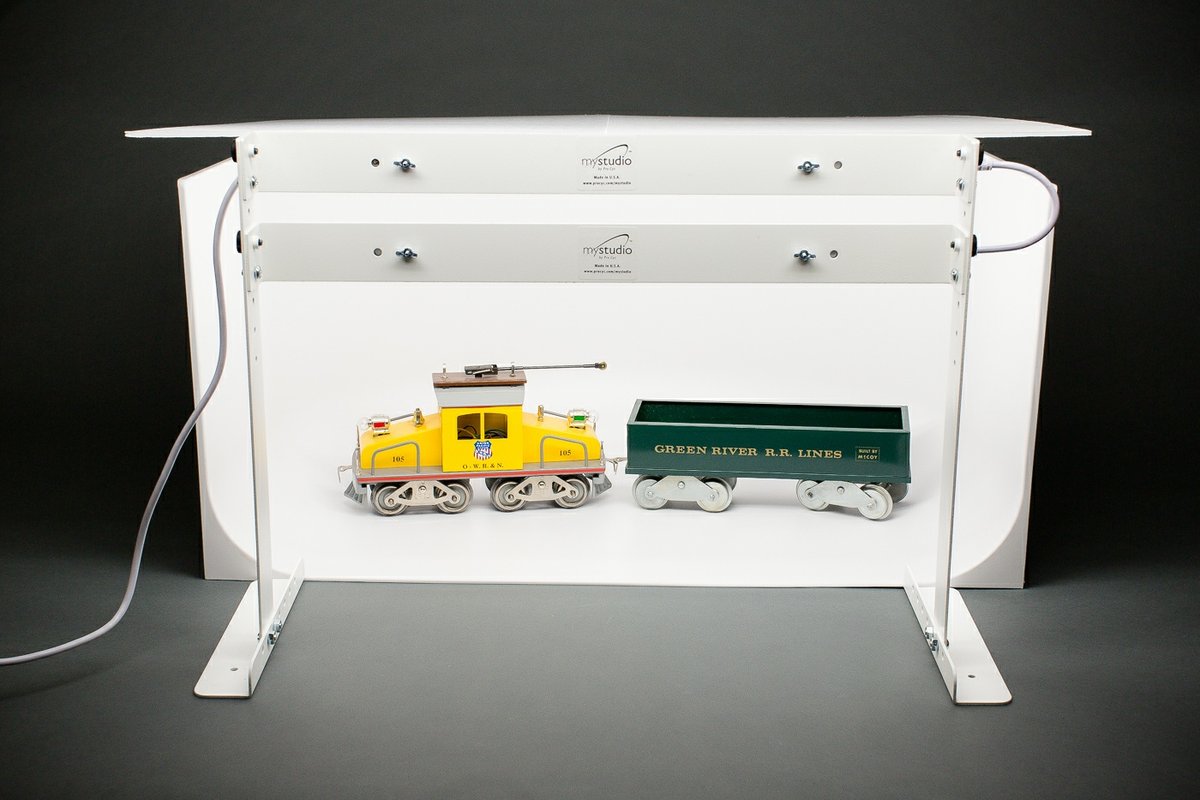
This company is so impressive, I decided to put them on this list twice!
If you photograph products that are bigger than what the MyStudio MS20PRO can accommodate, the MyStudio US31 tabletop photo studio is the perfect choice.
Measuring 31”x19”x16”, it gives you plenty of room to maneuver your products, and true to form, MyStudio has ensured that from every angle, your images benefit from a gorgeous infinity background.
This tabletop studio features two color corrected, 5000K ultra bright LED lights that bathe the studio (and your products) in bright, clean, even light. These lamps are so bright, in fact, that you don’t need any additional lighting whatsoever. Just set up the studio, place your products inside, and you’re ready to go!

You can see just how clean and even the lighting is in the sample photo I took of my camera gear and bag.
I took that image when I was at Photo Plus 2017. I had the pleasure of seeing the folks from MyStudio while I was there, and managed to closely inspect the craftsmanship and materials used in their US31 studio.
They clearly took no shortcuts in the quality of materials used or in the build quality. The design allows for even distribution of light, and quick set up. In short, I was more than impressed with the US31 Studio!
Joy
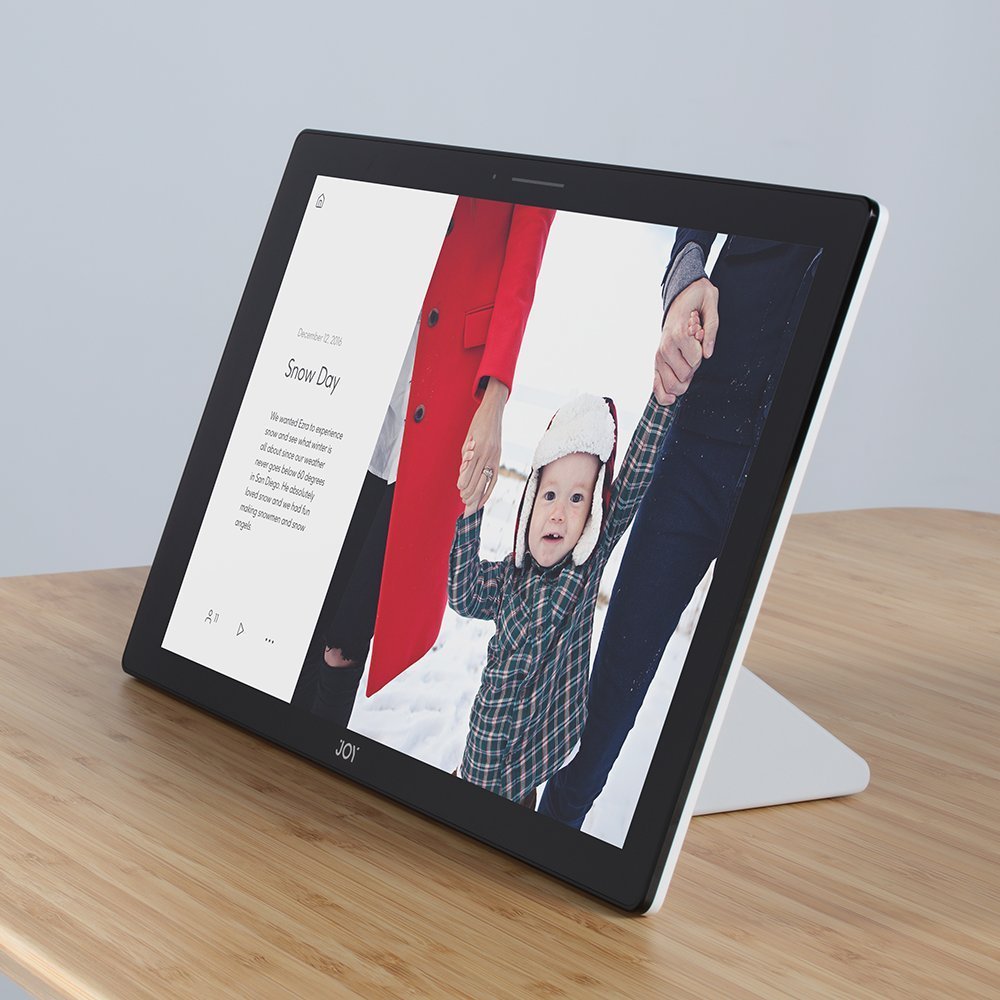
One of the downers about taking photos is that eventually you run out of room to display them.
But the Joy Smart Photo Album takes care of that issue...
It's not your everyday digital photo album, either. Instead, Joy is a storytelling device that allows you to connect with your friends, family, and loved ones because it has voice notes that allow you to narrate each photo memory. You can even conduct voice calls between two Joy devices and share a screen so you can share memories together with loved ones that are far away.
The great thing about Joy is that it doesn't have to remain on the shelf or table - you can take it with you to the couch to enjoy up-close.
And when you aren't enjoying the photo album in your lap, it has a wireless charging stand that charges its batteries and displays your photos in slideshow mode.
Joy has a companion mobile and web app that allows you to load new albums and even invite friends and family to add their photos for display. You can easily pull photos from social media as well.
And with a 13.3-inch full HD display, your photos will look beautiful, too!
Holdfast
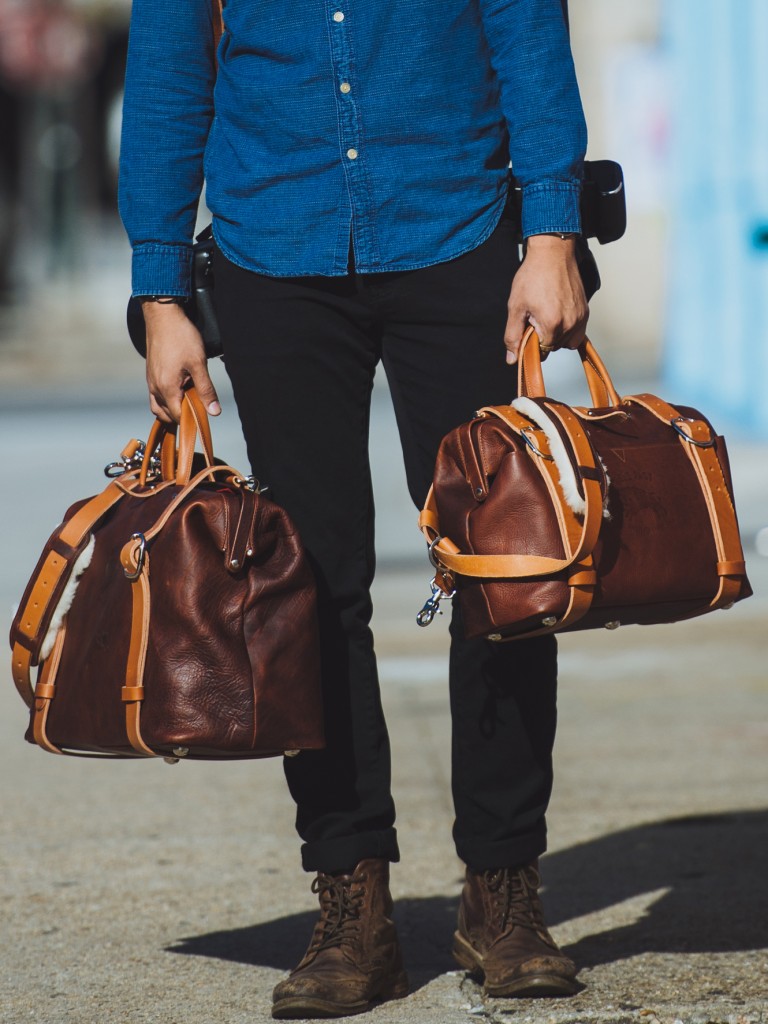
One of the hallmarks of a great photo is attention to detail - ensuring that each aspect of the image is perfect.
Well, that sentiment holds true for photography gear, and there's no one better at the details than Holdfast.
These guys make some of the most incredible camera bags I've ever seen. And that's saying a lot because I've owned plenty of great bags over the years.
But what sets Holdfast apart is that attention to detail I mentioned, as well as the amazing materials they use to craft their bags and other products.
We're talking about bridle leather, water buffalo leather, American bison leather, and even python skin.
On top of that, Holdfast's products are smartly designed so you can carry more gear, more efficiently, all while keeping each piece of kit safe and secure.
If you're looking to upgrade your camera bag in 2018, look no further than Holdfast.
Alpine Labs

When you talk about companies that have revolutionized how you take photos, Alpine Labs has to be in the conversation...
Their Pulse camera remote - and now their new Spark camera remote - have made taking great still photos, time lapse videos, long exposures, and real-time videos much easier and more accessible to even novice photographers.
These gadgets are packed full of powerful software and hardware that literally make it possible for you to create a time lapse video with just a few presses and swipes on your mobile phone.
Creating long exposures is equally as easy.
But don't think that because Alpine Labs has made things easy that their products are somehow cut-rate.
These are the best camera remotes on the market, and Alpine Labs is constantly making them better. That just makes me wonder what they have in store for us in 2018!
We Recommend
Camera Basics and Photography for Beginners
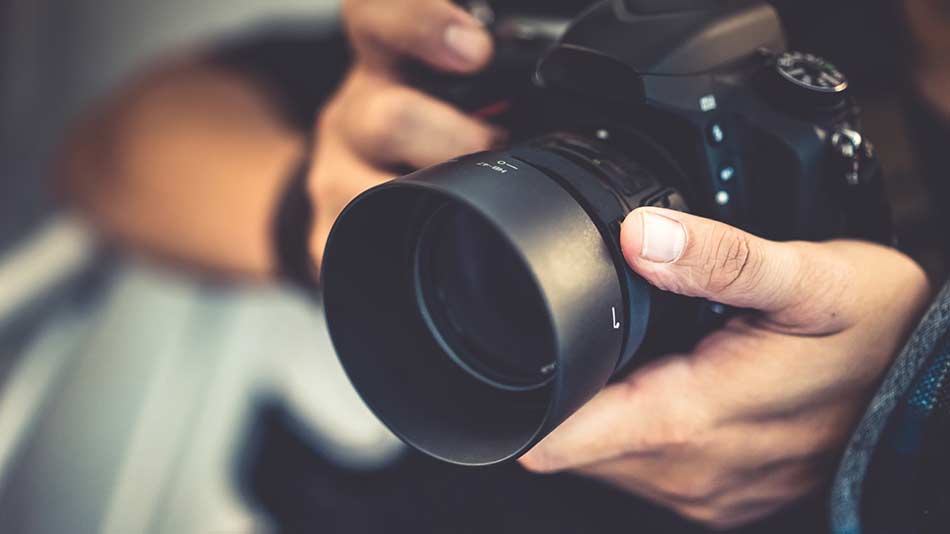
When I think back to my early days as a photographer, I recall how frustrating it was trying to figure out the photography basics like camera settings.
I'm talking about learning aperture, shutter speed, and ISO...
Though understanding these basics of photography is certainly needed, it's easier said than done.
It's just a lot to learn. And could the aperture scale be more confusing??
Thankfully, I've figured things out over the years.
But if you don't want to toil for years and years like I did trying to learn photography, perhaps this short tutorial photography tips for beginners will get you pointed in the right direction.
In the video above, Peter McKinnon offers a quick run-down of camera basics.
Below, I've expanded on Peter's discussion a bit and included links to relevant topics to give you an even more robust learning tool.
Let's get started!
Editor's Tip: Need to upgrade your lens but don't have the budget to do so? LEARN WHY BUYING A PRE-OWNED LENS IS THE WAY TO GO.
Photography Basics: Aperture, Shutter Speed, and ISO

The three camera settings that control the exposure are aperture, shutter speed, and ISO.
Here's what each element of the exposure triangle, does in a nutshell:
- Aperture controls the amount of light entering the lens. The aperture is controlled by a diaphragm in the lens that adjusts its width based on the f-stop being used. The higher the f-number, the smaller the aperture opening, and the less light coming into the lens.
- Shutter speed controls the duration of light that reaches the lens. It's controlled by a curtain in front of the camera's sensor. A fast shutter speed means that the curtain opens and closes quickly, thus minimizing how long the sensor is exposed to light.
- ISO is responsible for the sensitivity of the camera's sensor to light. The higher the ISO, the more sensitive the sensor becomes.
Of course, these three settings aren't that simple, nor do they operate in a vacuum.
That is, each setting has other responsibilities and they all work together to help you get the proper exposure, as shown in the graphic above.
Learn More:
- Aperture, Shutter Speed, and ISO: The Exposure Triangle Explained
- 10 Beginner Photography Tips and Camera Settings You Need to Know
Creative Elements of Aperture, Shutter Speed, and ISO
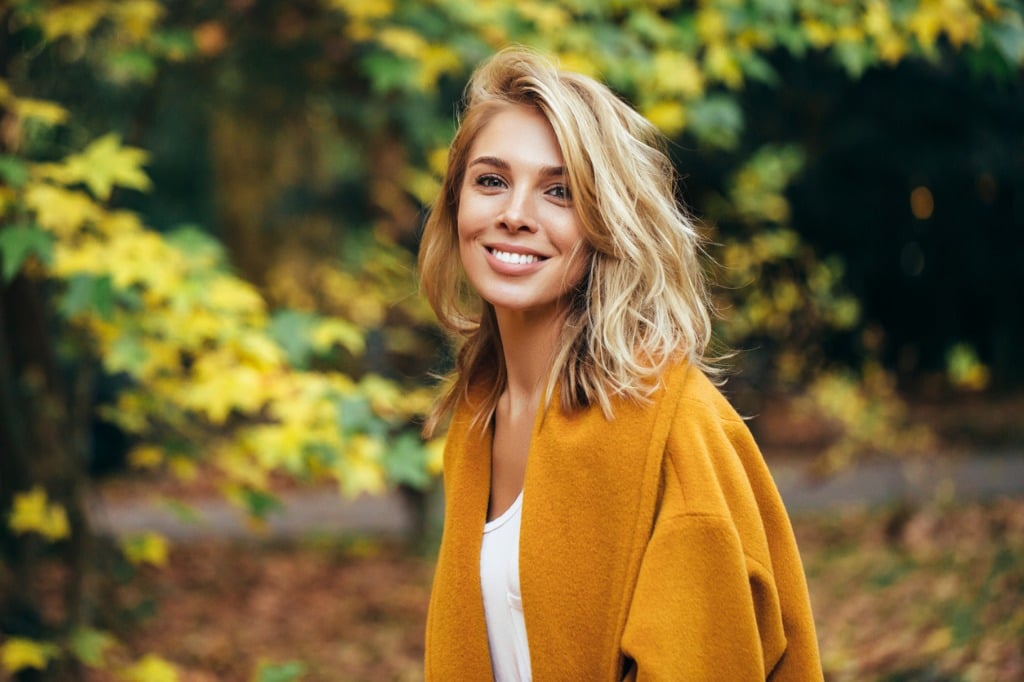
In addition to their responsibilities regarding exposure, aperture, shutter speed, and ISO impact your photos in a creative manner as well.
Let's start with aperture...
The size of the aperture impacts the depth of field in the photos you take. The depth of field refers to the area of the image that's in focus.
If you want a shallow depth of field with a blurry background as seen in the portrait above, you want to use a large aperture.
The confusing part for many people is that the size of the aperture is inversely related to the f-stop number, meaning, a large aperture is indicated by a small f-number.
So, f/2 is a very large aperture while f/16 is a very small aperture.
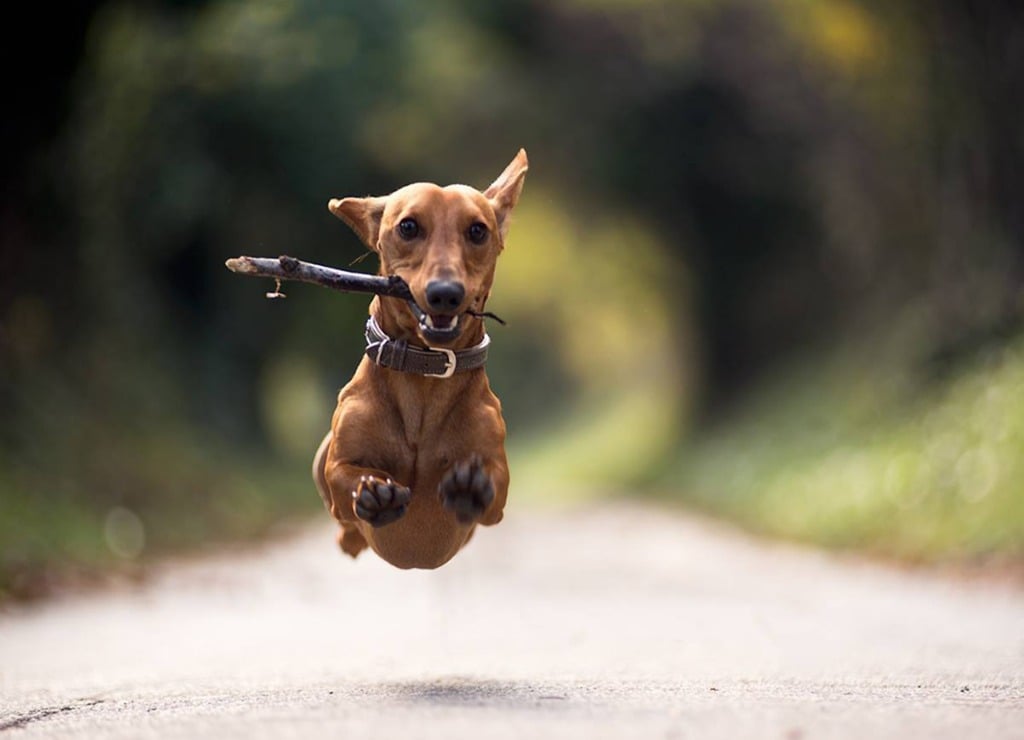
When it comes to shutter speed, it controls how movement is captured in a photo.
Shutter speed is measured in fractions of a second, like 1/30 seconds, 1/100 seconds, 1/500 seconds, and so on.
Naturally, the faster the shutter speed (i.e., 1/500 seconds), the more likely it will be that you can freeze the movement of a moving target, as shown above.
Conversely, if you slow the shutter down, you'll begin to see motion blur appear in the photo.
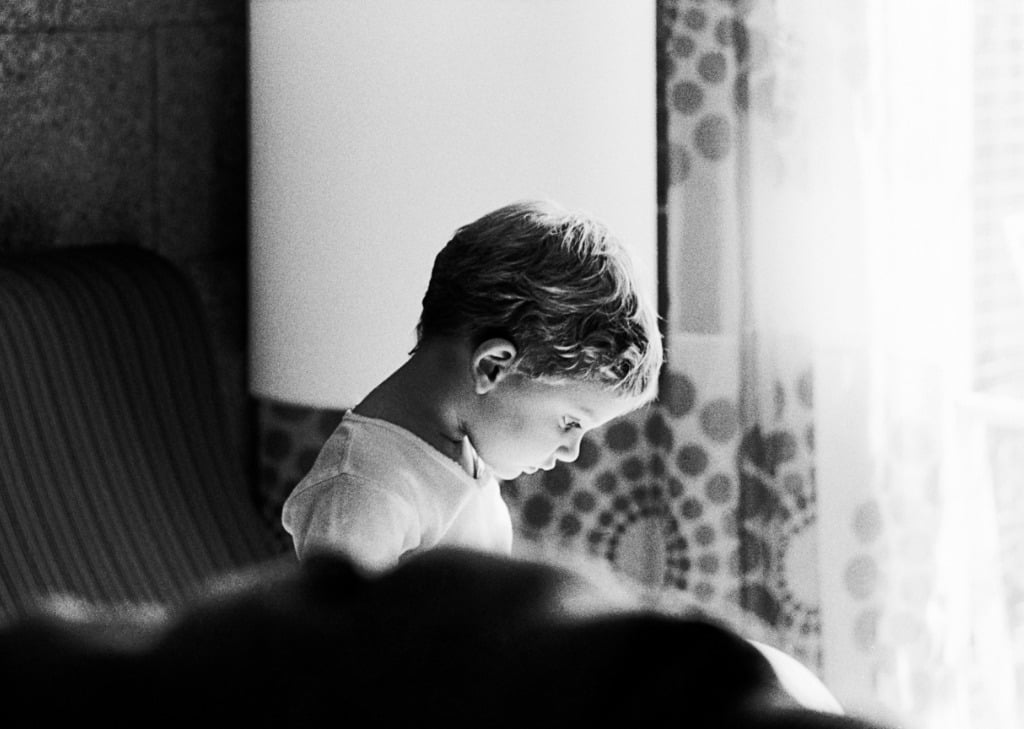
The last element, ISO, controls how much digital noise is in the shot.
Digital noise looks like film grain, and it can add a grittiness to your images, as seen above.
ISO is measured on a scale that extends from about 100-6400 on most entry-level cameras, though the scale can extend much, much further.
The higher the ISO you use, the more grain will be evident in the photos that you take.
Quick Tip: Another way to ratchet up the creativity of your images is to use a high-quality neutral density filter. These filters block out light, allowing you to extend the shutter speed to get beautiful motion effects, even in broad daylight. Something like a 10-stop ND filter will give you long shutter speeds to blur the motion of rivers, waterfalls, clouds, passing cars, and so forth, for a gorgeous, creative look. Not all filters are made alike though. When selecting a filter, go with something that's well-made, offers hyper-neutrality, and offers water and oil-repellent features, like this one.
Ease Your Way Into Changing Camera Settings
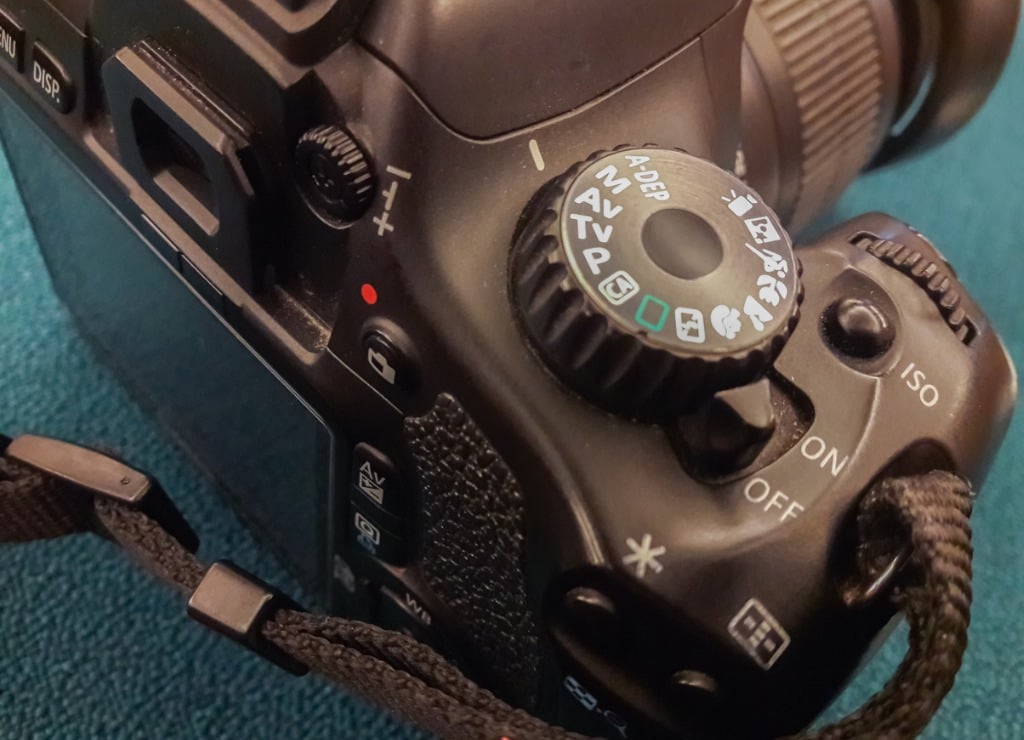
You don't have to shoot in manual mode in order to take more control over your camera.
In fact, a good way to transition from shooting in full auto to shooting in full manual is to utilize your camera's semi-automatic modes: aperture priority, shutter priority, and program.
As you might've guessed, aperture priority mode (A or Av on your camera's dial) prioritizes aperture, giving you control over that setting (you also control ISO).
However, the camera controls shutter speed, so when you make an adjustment to the aperture, the camera makes an adjustment to the shutter speed so that you get a good exposure. This is advantageous when the depth of field is the most important thing, like in a portrait.
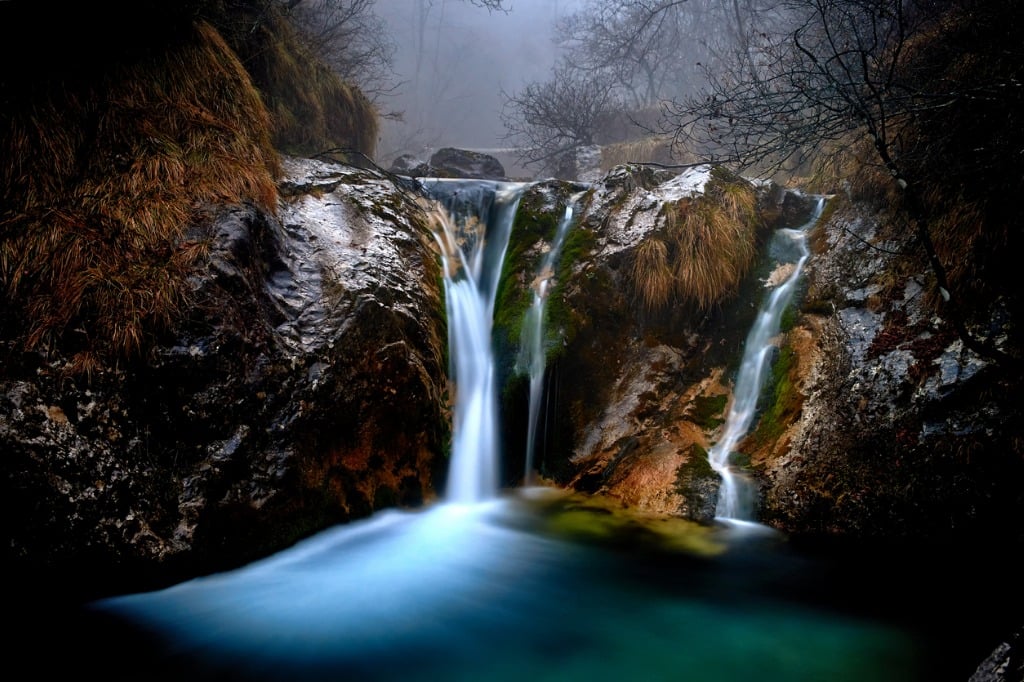
In shutter priority mode (S or Tv on your camera's dial), you control the shutter and ISO while the camera controls the aperture.
Again, when you make a change to the shutter speed, the camera will automatically change the aperture to get a well-exposed image.
This mode is ideal for controlling movement, like freezing the movement of your kids running around or blurring the motion of a waterfall, as was done above.
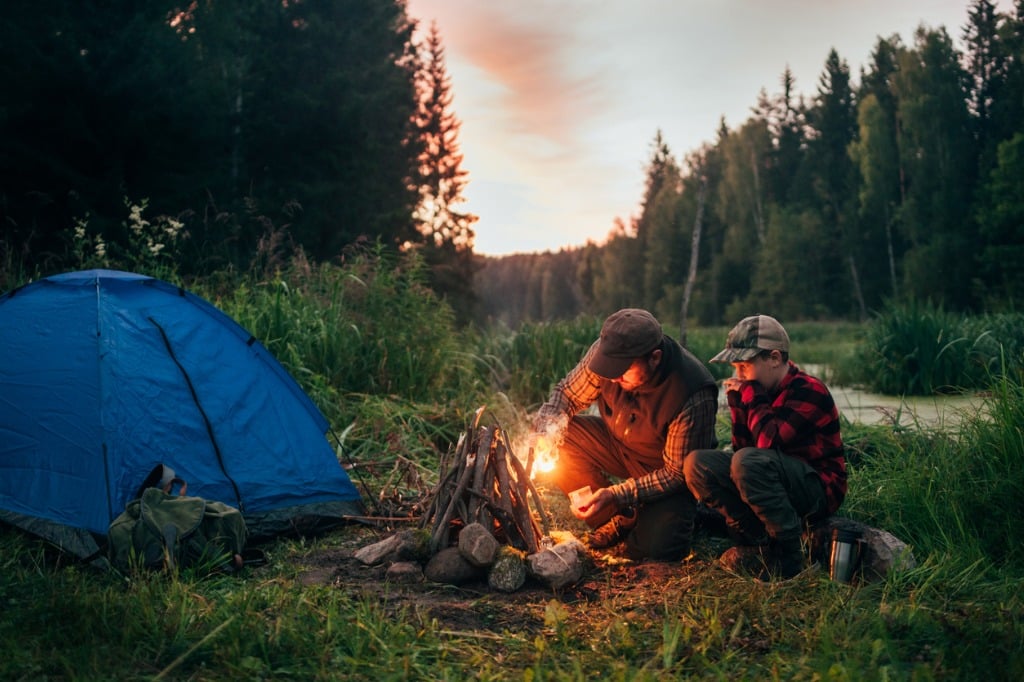
Lastly, program mode (P on your camera's dial) gives you even more control over your camera settings.
In this mode, the ISO is prioritized, so when you set the ISO, the camera will adjust the aperture and shutter speed accordingly. This is an ideal mode for low-light shooting when you need to be able to push the ISO, like when shooting at dusk, as pictured above.
However, you can override the aperture and shutter speed selections that your camera makes, whereas you can't do that in aperture priority or shutter priority.
That makes program mode a step closer to manual mode without actually being in manual mode.
So, the goal with learning about the photography basics of exposure, the exposure triangle, and various shooting modes is to help you get on track with getting out of auto and into manual mode.
This isn't to say that you have to shoot in manual mode all the time - not even the pros do that.
But equipping yourself with a better understanding of how your camera works will certainly have a positive impact on the photos you create.
Learn More:
We Recommend
Camera Lens Guide: Things to Consider When Buying a Lens
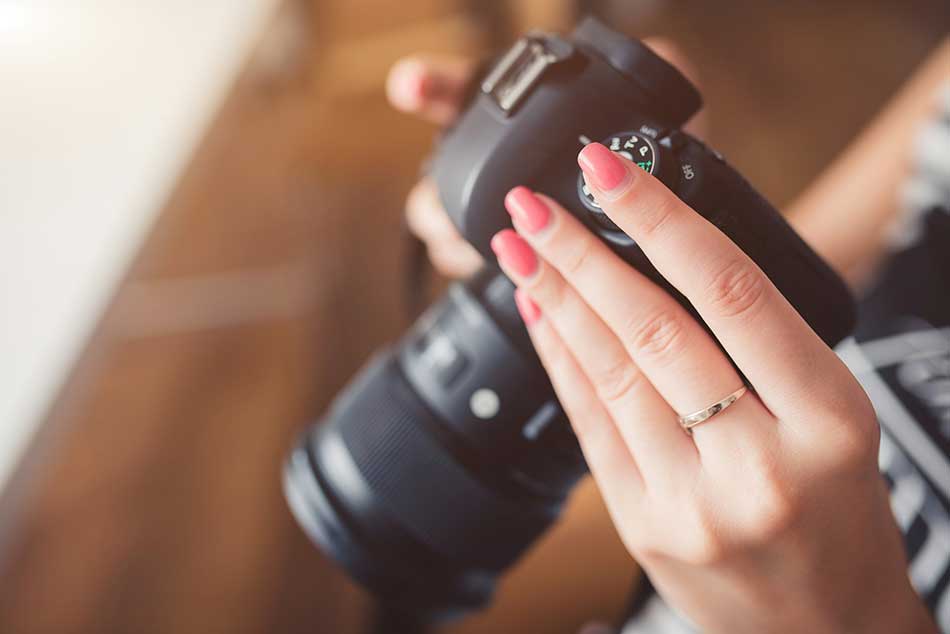
Though many new photographers focus their attention on the camera they buy, it actually has less to do with great photos than the lens that you use.
As such, it's important to give lenses some love in the gear-buying process.
In fact, you'd be better off using the camera you have or buying an entry-level camera and then finding a higher-end lens to work with that camera, than if you buy a brand new, high-end camera and use a low-end lens.
Camera lenses are that important!
In this camera lens guide, I offer up a few tips for what to look for when buying a lens.
Guide to Camera Lenses: Price
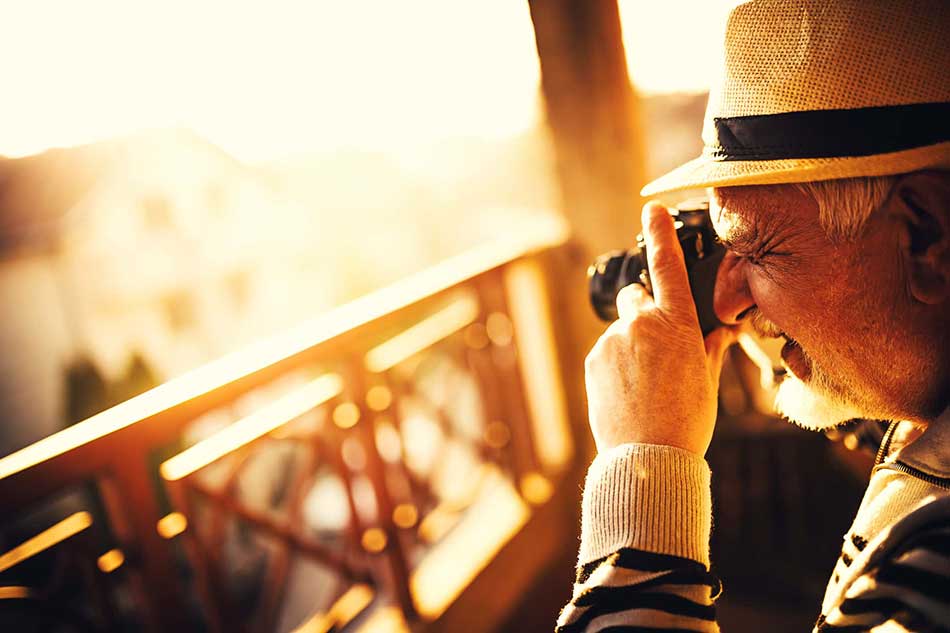
Obviously, price is the most significant factor for most people when buying anything.
The problem is that most of us don't have an enormous budget, and a lot of good lenses are not cheap.
That's because you really do get what you pay for when it comes to camera lenses.
Cheap lenses have cheap optics, aren't constructed that well, and don't give you the sharp results with minimal aberrations that we all want.
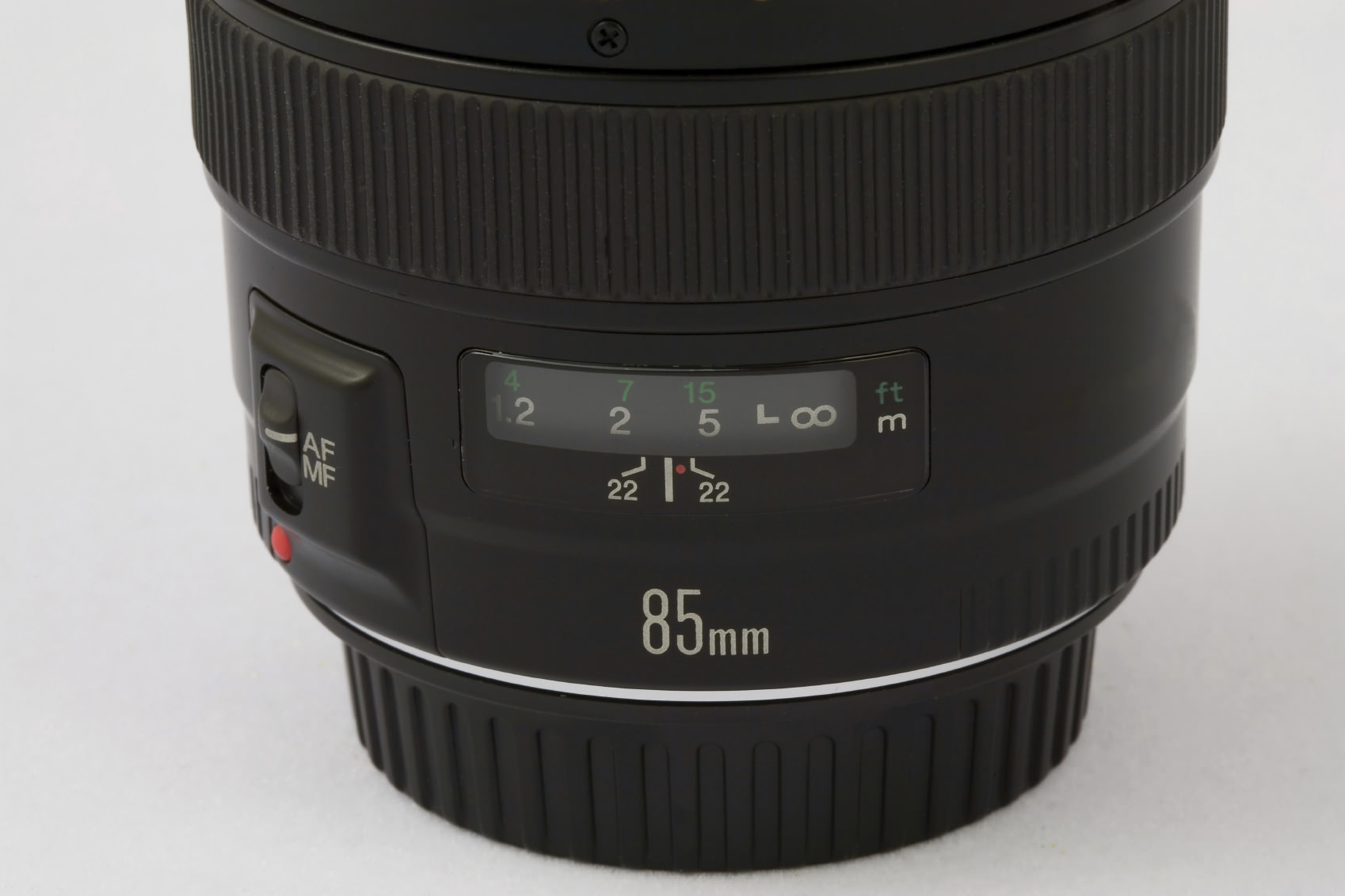
For example, if you took a photo with your camera's kit lens (the lens that came with it), and compared it to a photo taken with an 85mm f/1.4 lens, the latter would be sharper, clearer, have less distortion, better color contrast, and so forth.
That makes the higher-end lens worth it because it has a significant impact on the quality of the images you take.
Unfortunately, an 85mm f/1.4 lens runs around $1,600, making it out of reach for many photographers.

There are other options for great lenses, like the 50mm f/1.8 shown above, that perform well and are inexpensive.
Buying pre-owned lenses is also a smart move because you can often find higher-end lenses for far less than what they cost new.
That's especially true if you look for used lenses in the right place, where there are buyer and seller protections in place so you're sure you get the lens you pay for.
Learn More:
Lens Buying Guide: Lens Purpose/Versatility
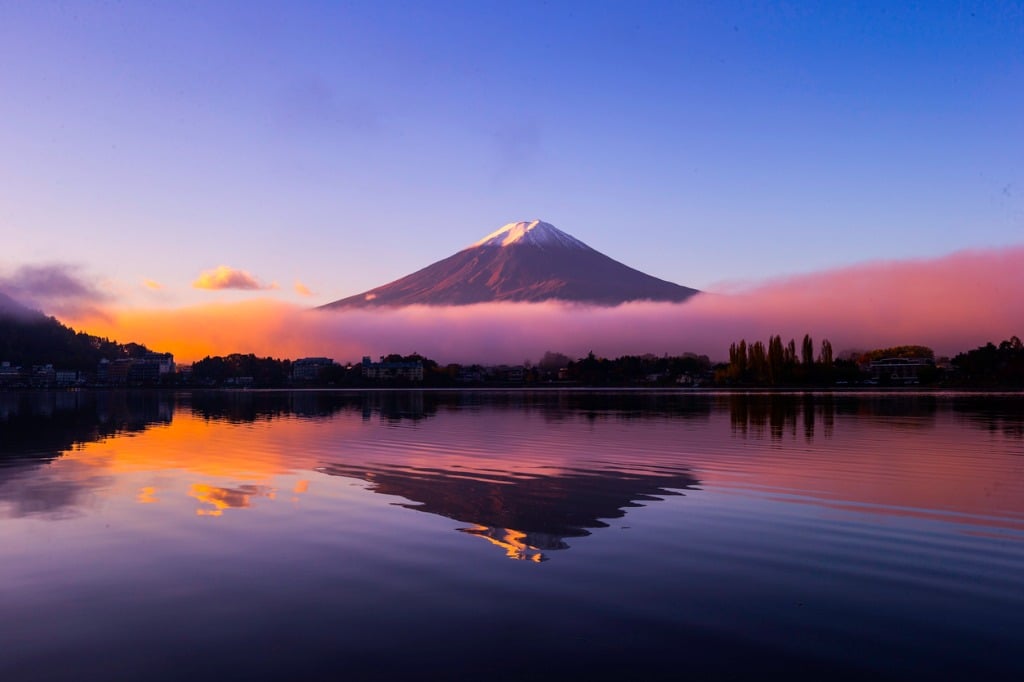
Another important factor to consider when buying a camera lens is the purpose of the lens.
For example, if at this point you take photos of a variety of subjects, a good all-purpose lens like a 24-70mm zoom might suit you the best.
On the other hand, if you've been behind the camera long enough to know that macro photography is your passion, buying a macro lens would make sense.
Along with that is the need to think about the versatility of the lens you buy.
Again, if you take photos of all sorts of subjects, you need a lens that can accommodate such varied subject matter.
As mentioned above, zoom lenses offer all sorts of versatility, particularly those in the wide-angle to short telephoto range.
These lenses allow you to shoot wide for landscapes, shoot at a standard focal length for things like portraits, and give you enough range on the short telephoto end to capture things like wildlife from short distances.
Editor's Tip: Find the lens you need at a price you like.
Camera Lens Features: Aperture is Important
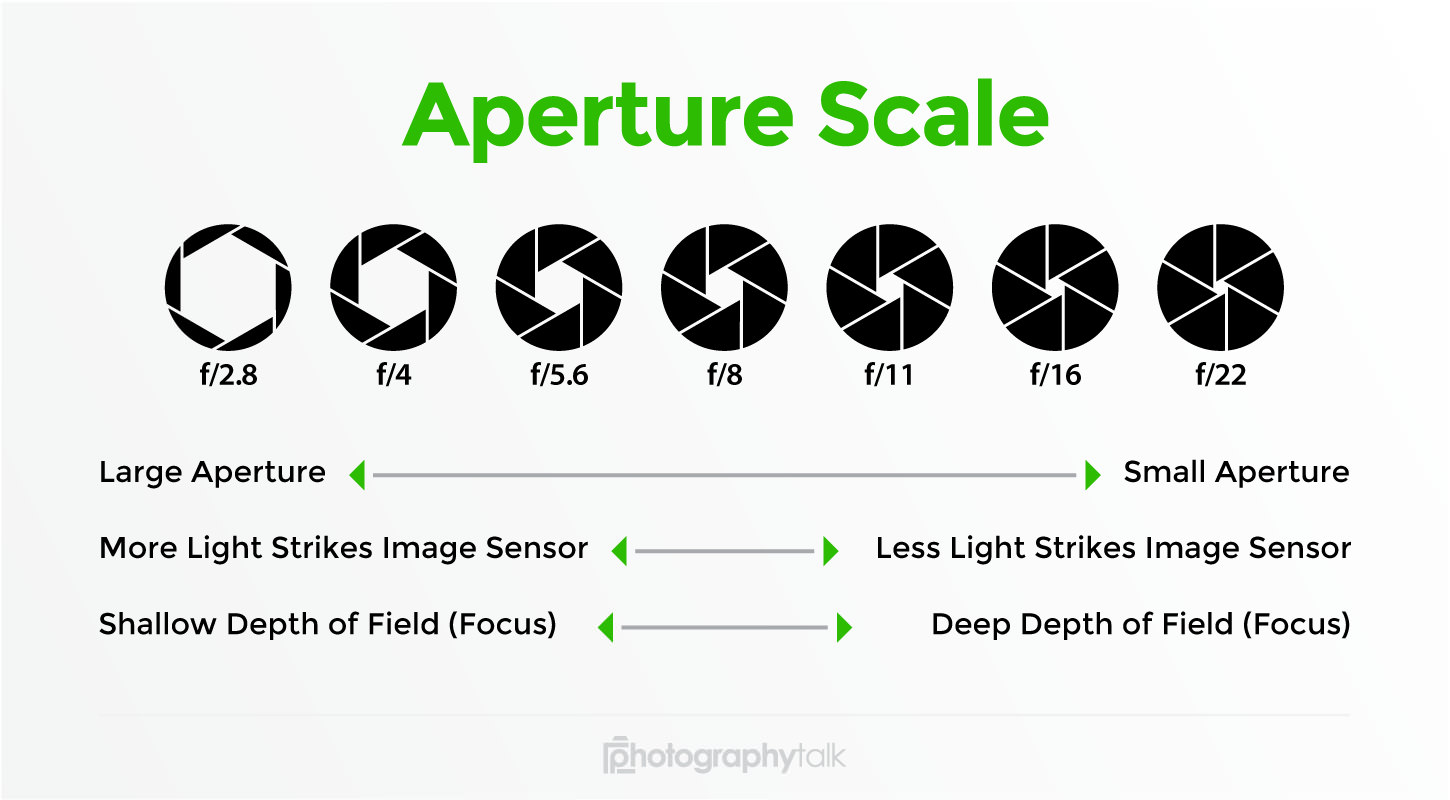
The aperture of a lens controls the amount of light that is allowed in. The larger the aperture the more light; the smaller the aperture, the less light.
When looking for a lens, the aperture range is an important factor because the wider the aperture goes, the better the lens will perform in low-light situations.
For example, a lens with a maximum aperture of f/1.4 will produce better images in low-light than a lens with a maximum aperture of f/5.6.
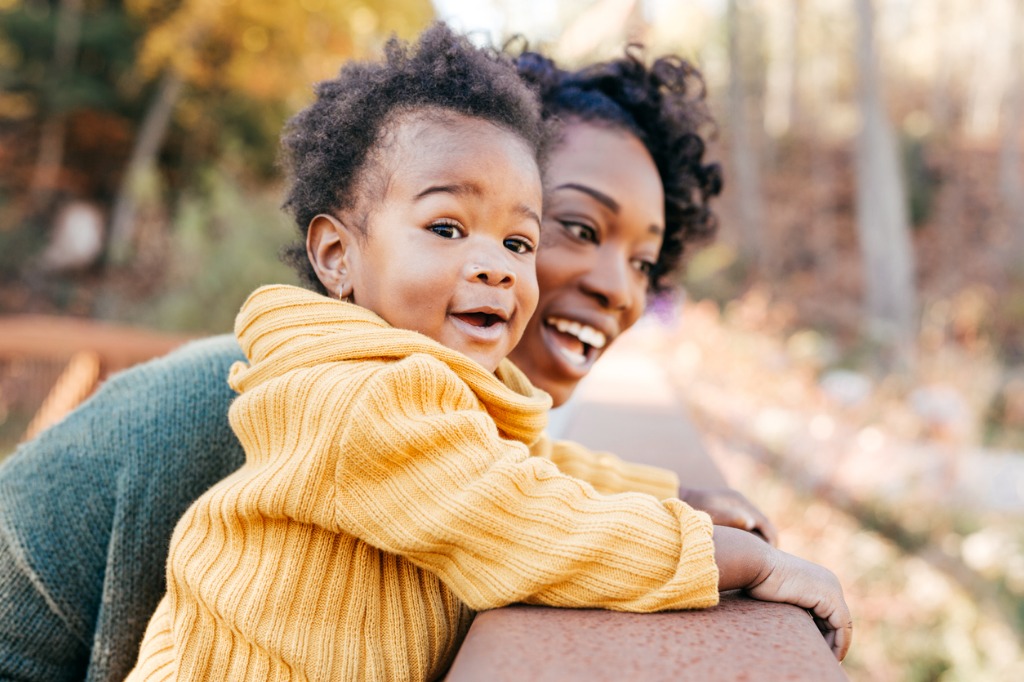
Additionally, aperture is one of the factors that influence the depth of field of an image, or the area of sharpness in the photo.
Large apertures produce a small depth of field, so if you find a lens with a large maximum aperture, it can help you create a soft, blurry background like the one shown above.
Many lenses that have large maximum apertures are pricey (though the 50mm f/1.8 mentioned earlier is quite reasonable).
But, again, if you buy pre-owned lenses, you might be able to find a good deal on a used lens that allows you to get a higher-quality lens for less.
There are other factors to consider when buying a lens, to be sure. But if you bear these three factors in mind, you'll be in a good position to get a lens that works well for you and works well for your budget!
Learn More:
We Recommend
Canon EOS R: What You Need to Know
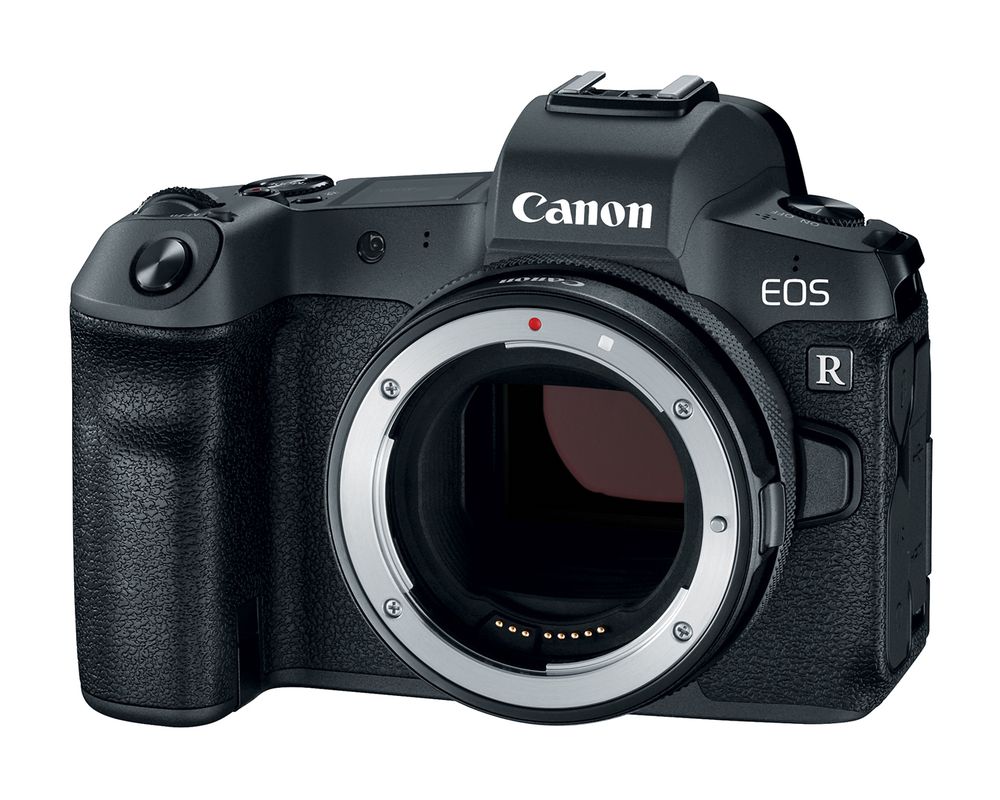
Earlier this week, Canon announced its EOS R - a full frame mirrorless camera that the company hopes will go toe-to-toe with Sony, Fujifilm, and other companies that have already established themselves in the mirrorless market. Read Canon EOS R review done by PhotographyTalk.com.
Canon no doubt hopes that the EOS R will also compete with Nikon's fresh duo of full frame mirrorless cameras, the Z6 and Z7, too.
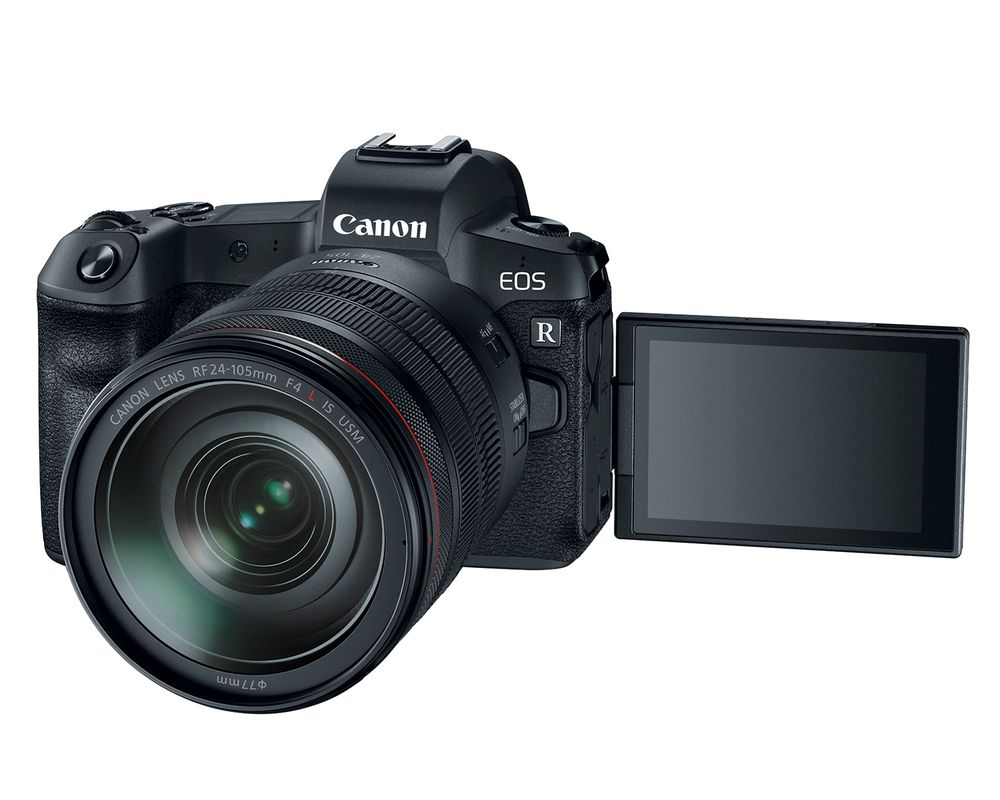
The EOS R system - it includes lenses as well - is Canon's first serious foray into mirrorless cameras, and not a moment too soon, either.
The camera includes a 30.3-megapixel sensor and sports a native ISO range of 100-40,000.
As expected, the sensor makes use of Canon's excellent dual-pixel autofocus and comes with Canon's latest DIGIC 8 imaging processor.
Editor's Tip: Not sure what all those markings on your lens mean? Learn how to read the markings on your lenses.
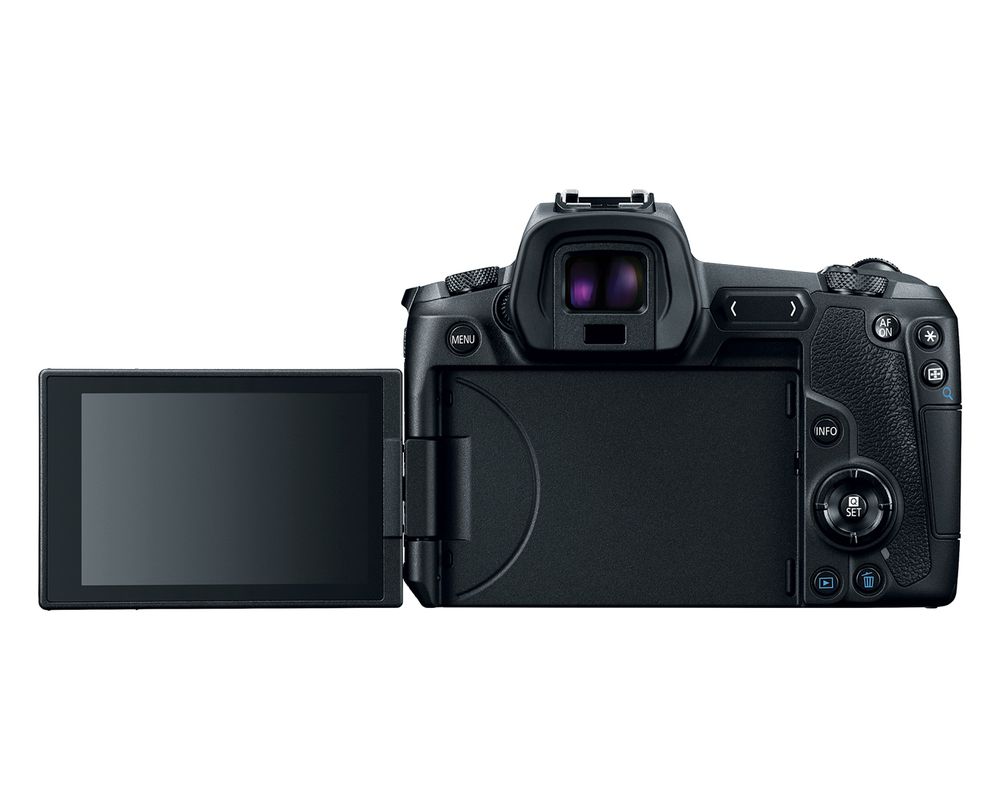
On back is a fully articulating touchscreen LCD and an OLED electronic viewfinder.
On top of the camera is a secondary information panel that gives you quick access to camera settings and so forth.
In fact, the EOS R looks an awful lot like the Canon 5D Mark IV, perhaps just a little trimmed down here and there.
But while it might still look like a typical Canon DSLR, the EOS R is definitely all mirrorless and all modern.
Specifically, the EOS R has a different control scheme than its DSLR cousins which is most noticeable with the presence of a dedicated control ring on the EOS R lenses.
What's more, there's also dials for zooming and manual focus, which, all taken together means that you can adjust certain settings - like aperture - on the lens itself.
See a first-look of this and other features of the EOS R in the video above by Kai W.
Editor's Tip: Thinking of upgrading your camera? Learn why upgrading your lenses could be more beneficial than upgrading your camera.
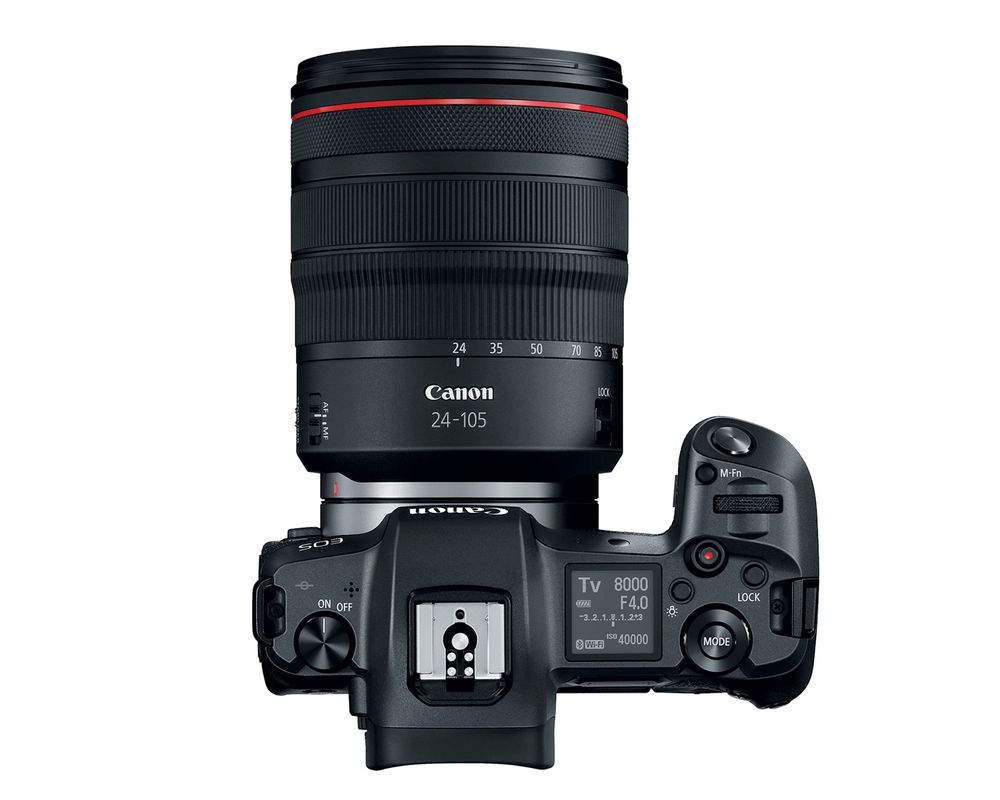
Like Nikon has done for their Z mirrorless system, Canon is releasing multiple lenses specifically built for the EOS R.
That includes a 50mm f/1.2 L, a 35mm f/1.8 macro, a 24-105mm f/4 L (shown above), and a 28-70mm f/2 L.
Also like Nikon, Canon has designed a lens mount adaptor (well, three of them, actually) such that Canon shooters with EF lenses can use their old glass on the new R system camera.
That's great news for photographers that have invested in loads of Canon glass, or who want to add well-priced, pre-owned lenses to their bag for use with their DSLR and with a future EOS R camera, too.
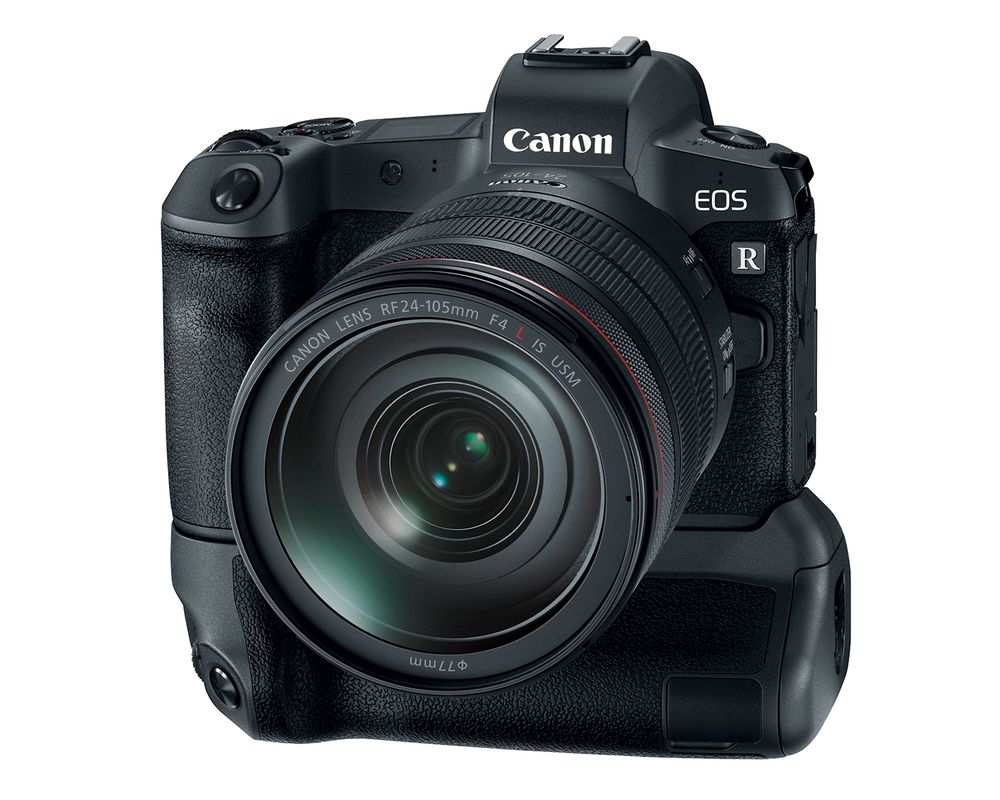
All told, the EOS R can be had for just a shade under $2,300 for the body by itself, or if you want to spring for the kit that includes the 24-105mm f/4 L lens, you'll need to pony up $3,399.
Either way, the EOS R camera and lenses will be available in the latter part of October. Pre-ordering will get underway in just a few days' time on September 12th.
Via The Verge
We Recommend
Canon Lens Terms You Need to Know
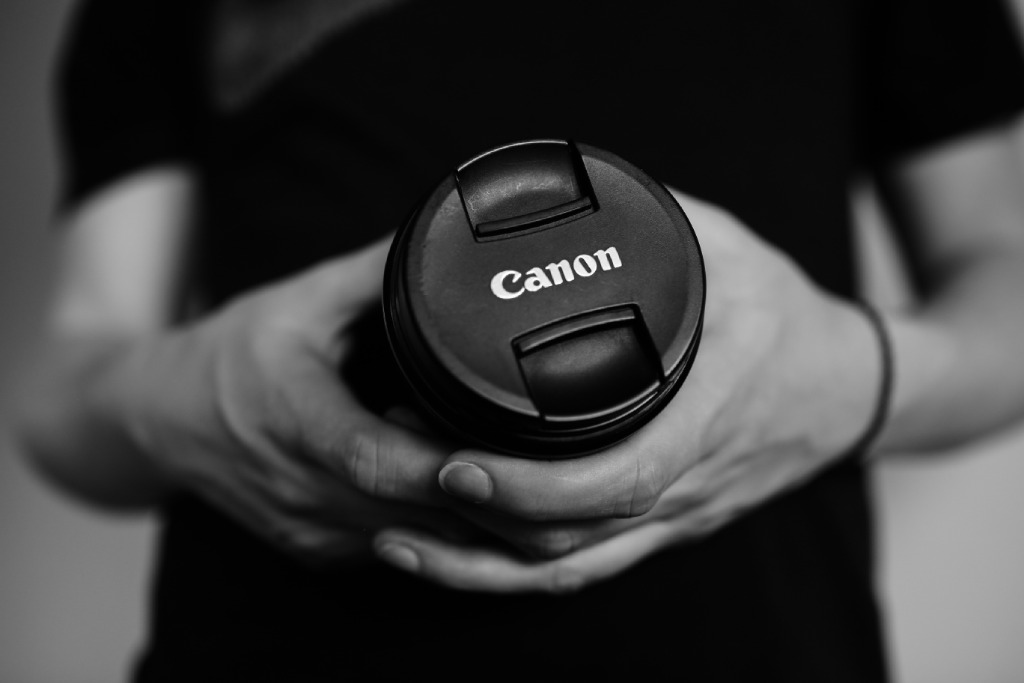 Photo by James Bold on Unsplash
Photo by James Bold on Unsplash
EF, STM, USM, IS...there are a ton of acronyms that Canon uses to describe different features on their lenses.
But what do they all mean, and why are they important?
In this Canon lens terms guide, you'll learn what some of Canon's most often used acronyms mean so you can make a more informed purchase next time you're in the market for a new lens.
Editor's Tip: If you're ready to upgrade your kit but don't have the funds to purchase a brand-new lens, you might consider buying used. In fact, if you're looking for used Canon lenses, you can often find great deals that allow you to save enough money that you might be able to afford two used lenses for what you'd pay for a single brand-new lens! Look for high-quality pre-owned Canon lenses to round out your kit.
Canon Lens Term: EF, EF-S, EF-M, and RF Indicate the Type of System for Which the Lens was Designed
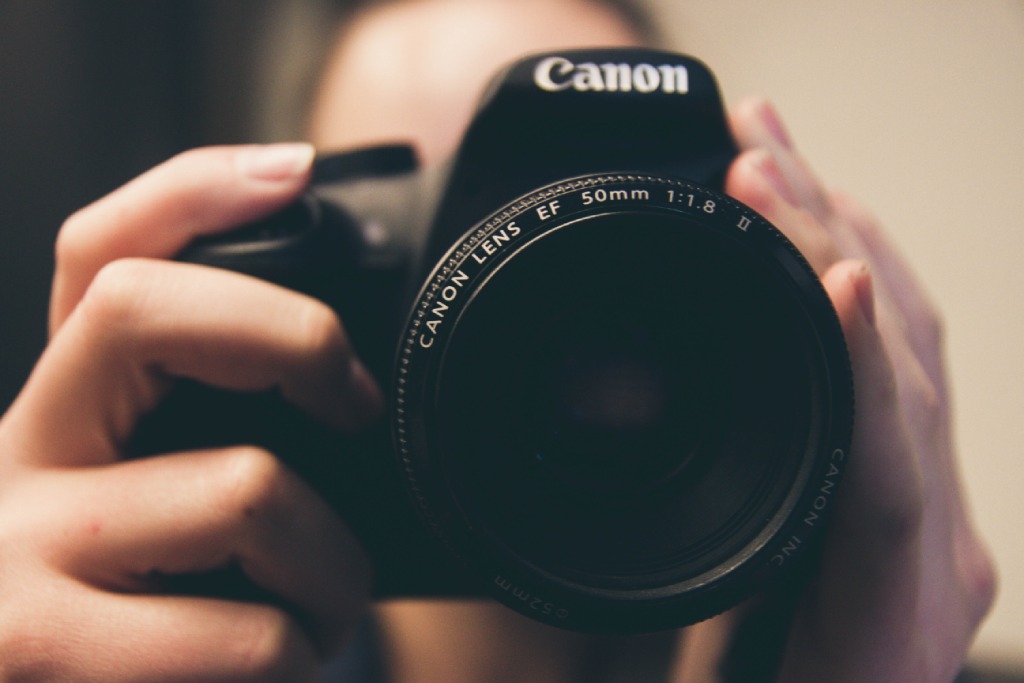 Photo by NeONBRAND on Unsplash
Photo by NeONBRAND on Unsplash
In Canon parlance, EF means "electro-focus" whether the lens is EF, EF-S, or EF-M. This means the camera controls the lens's focusing system.
The addition of the S and M designations indicates the Canon camera system for which the lens was designed.
So, EF lenses (like the one shown above) are designed for use with Canon full frame cameras, though EF lenses can also be used on crop sensor cameras as well as EOS-M cameras, so long as you have an adaptor.
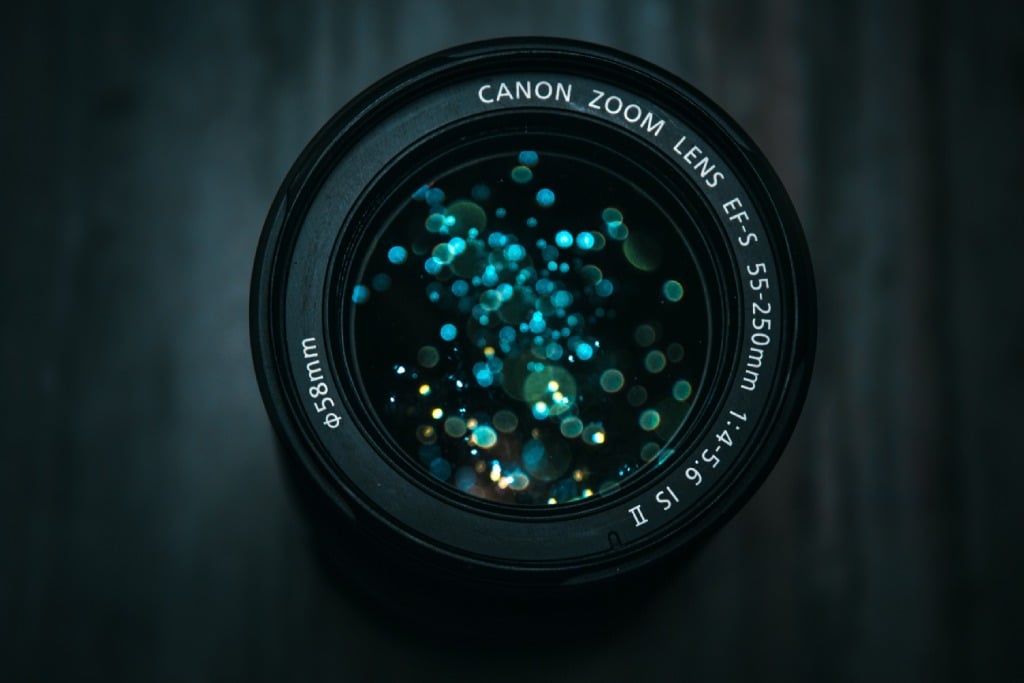 Photo by Dollar Gill on Unsplash
Photo by Dollar Gill on Unsplash
EF-S lenses (like the one shown above) are built for usage with Canon's crop sensor cameras. These lenses can only be used on crop sensor cameras.
EF-S lenses are often smaller than their EF counterparts, and are typically also less expensive as well.
EF-M lenses are specially designed for the EOS M system. They are smaller still than EF and EF-S lenses and can only be used with EOS M cameras.
The newest Canon lens type is the RF mount lens, which is designed for use with Canon's EOS R mirrorless system.
The RF lenses only work on EOS R cameras, though you can buy an adapter that allows you to use EF lenses on an EOS R camera.
Canon Lens Terms: STM and USM Indicate the Canon Lens Motor Types
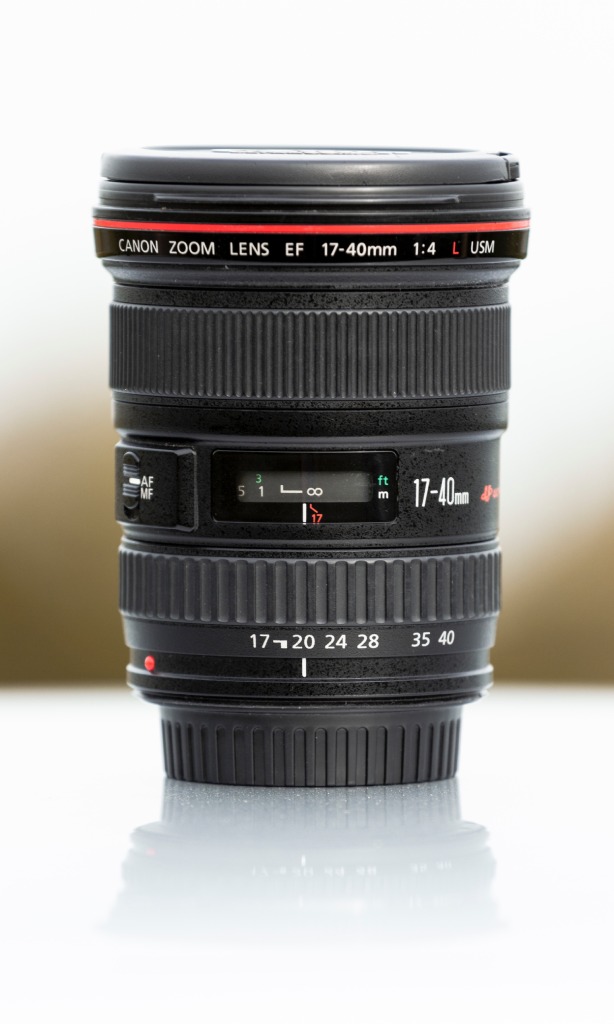 Photo by Maxime Agnelli on Unsplash
Photo by Maxime Agnelli on Unsplash
Most Canon lenses have an Ultrasonic Motor (USM), which is named as such because the lens converts ultrasonic vibration into rotational force.
Not only does this result in improved focusing for sharper images, but it also results in quieter focusing when shooting still images and improved speed with which the lens can acquire focus.
Canon's stepping motor (STM) design, on the other hand, is better suited for shooting video.
STM motors are extremely smooth and incredibly quiet, so when shooting video you hear the subject of the video rather than the lens working to acquire focus.
Editor's Tip: Not sure what all those markings on a lens mean? LEARN HOW TO READ THE MARKINGS ON YOUR LENSES.
Canon Lens Terms: IS Lenses are Stabilized
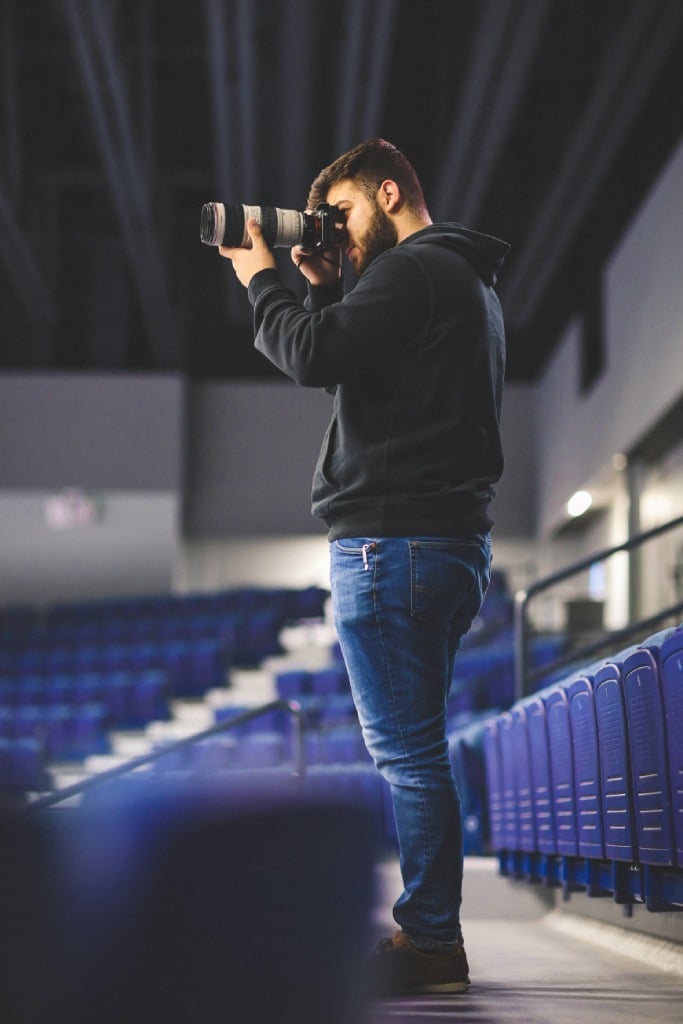 Photo by William Bayreuther on Unsplash
Photo by William Bayreuther on Unsplash
Canon lenses with the IS designation are image stabilized, meaning the lens has stabilization built into it rather than having to rely on in-body image stabilization in the camera.
Image stabilization is advantageous because it allows you to use a slower shutter speed (up to four or five stops more) when handholding the camera with less incidence of motion blur. Most Canon telephoto lenses (like the one shown above) have IS as these longer lenses are more susceptible to camera shake.
Image stabilization is achieved by elements inside the lens that move to compensate for movement induced by the photographer. The result is sharper images when shooting handheld.
Canon Lens Terms: L Stands for Luxury
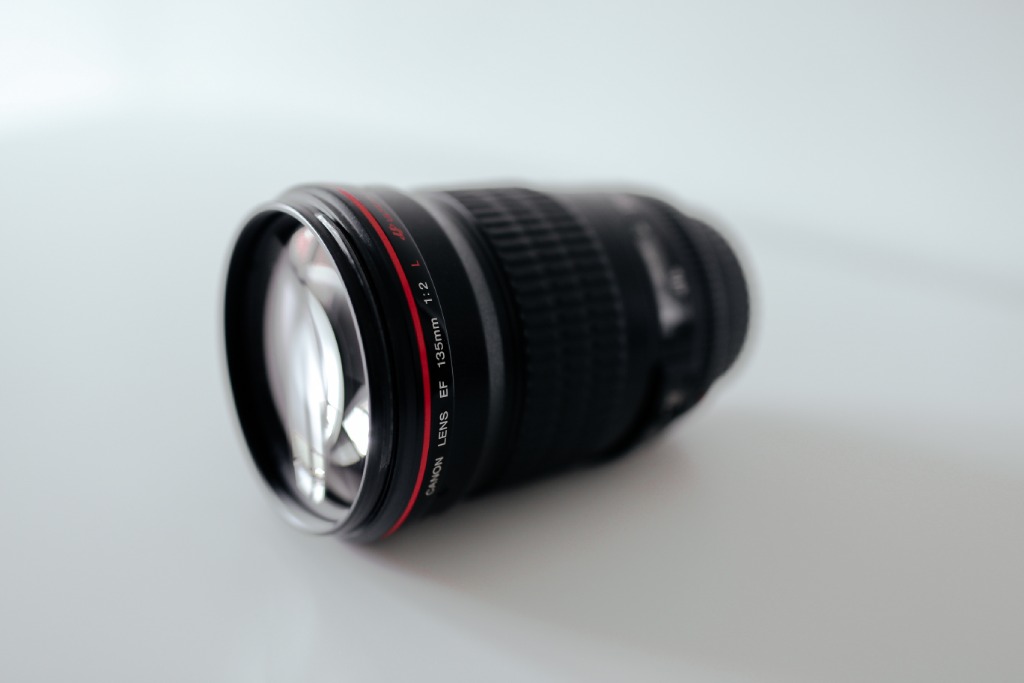 Photo by Tom Pumford on Unsplash
Photo by Tom Pumford on Unsplash
Canon's top-of-the-line lenses have the L designation, which stands for luxury.
These lenses are designed for professionals and have improved optics (like ultra-low dispersion elements), wider apertures (for improved background blur and low-light shooting), and weather sealing that keeps dust and water out of the lens.
As you can see above, L-series lenses have a red ring around the barrel near the end of the lens. You can also see the EF and L designations on the lens barrel.
Quick Tip: Canon lenses often have a II or III in their name. These numerals indicate the generation of the lens.
We Recommend
Canon Releases RF 50mm f/1.2L USM Lens for the EOS R Mirrorless Camera
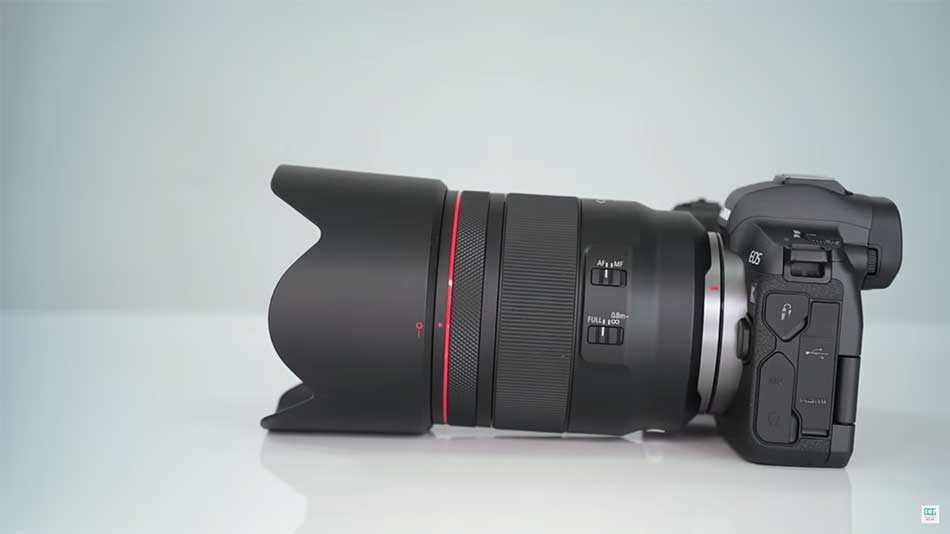 YouTube Screenshot/Digital Goja
YouTube Screenshot/Digital Goja
Canon's new mirrorless camera system - the EOS R - was announced back in September to great fanfare.
At the time, a 50mm lens was announced as well, but it wasn't available for order until now.
That lens - the RF 50mm f/1.2L USM - is ready to roll, and Canon EOS R shooters have reason to rejoice again.
It's no secret that Canon's existing EF 50mm f/1.2L USM lens is incredible glass, so it stands to reason that their new RF version will also be a superb lens.
In the video above, Digital Goja offers a first look at the new Canon lens, and by all accounts, all the hype around it being one of the best Canon lenses ever made seems to hold true.
All that hype has a lot to do with Canon's EF 50mm f/1.2L USM for its full frame line of DSLRs.
That lens gets tons of praise for its build quality, impeccable sharpness, and gorgeous bokeh.
One of the complaints about the old EF 50mm f/1.2, though, is that it has a few optical errors. Specifically, fringing can be an issue.
Editor's Tip: The most important part of your kit isn't your camera - it's your lens. Learn why upgrading your lens is such a good idea.
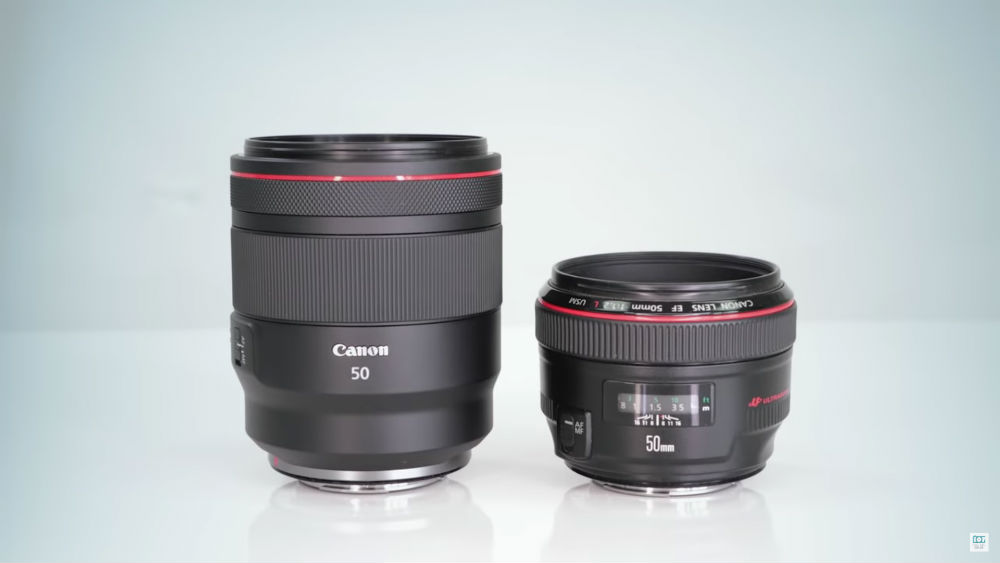 YouTube Screenshot/Digital Goja
YouTube Screenshot/Digital Goja
As discussed in the video, the new RF version seems to have carried over all the good qualities of its EF cousin while leaving the fringing issues behind.
There are differences between the two, though.
The EF 50mm lens has eight elements in six groups whereas the RF version has 15 elements in nine groups. That makes the RF lens a big lens that is both long and heavy, weighing in at nearly two pounds. You can see the size difference between the RF 50mm lens on the left above and the EF 50mm lens on the right.
The lens has a rounded 10-blade diaphragm (as opposed to the 8-blade diaphragm in the EF version) that helps produce the gorgeous bokeh Canon shooters are accustomed to with the 50mm focal length.
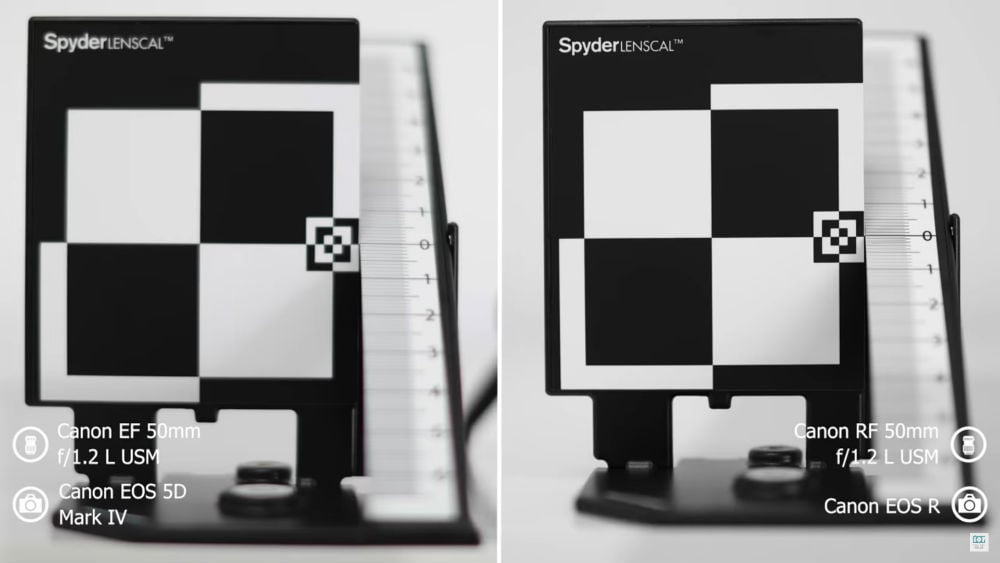 YouTube Screenshot/Digital Goja
YouTube Screenshot/Digital Goja
Another primary difference between the EF and RF 50mm lenses is that the RF lens is sharper.
For Canon shooters that have utilized the EF 50mm lens, this might come as a surprise given its reputation for superb sharpness.
But because the RF lens sits closer to the imaging sensor on the EOS R mirrorless camera, it produces sharper results, as you can see in the screenshot above.
Editor's Tip: Upgrading your lenses for your Nikon DSLR should include a top prime lens. Learn which Nikon prime lenses are the best.
Of course, this performance comes at a price, and a hefty one at that. The Canon RF 50mm f/1.2L USM is priced at $2,299, so it's not exactly something anyone can run out and purchase.
That being said, if you've invested in the EOS R system and spent all your money getting the camera, you can sell your old lenses to fund a new RF 50mm lens.

In the end, the RF 50mm f/1.2L USM lens is just one of the first steps in a completely new line of lenses from Canon.
Also in the RF lineup are a 35mm f/1.8 macro, a 24-105mm f/4 L, and a 28-70mm f/2 L, with plenty more to come in the next couple of years, I'm sure.
If the quality and performance of the RF 50mm lens is any indication, Canon shooters will have a field day with some truly excellent lenses for their mirrorless cameras.
For a complete review of this lens, be sure to check out the full video above, and for more gear reviews, have a look at Digital Goja's YouTube Channel.
We Recommend
Canon RF 85mm f/1.2 L USM: The Perfect Portrait Lens?
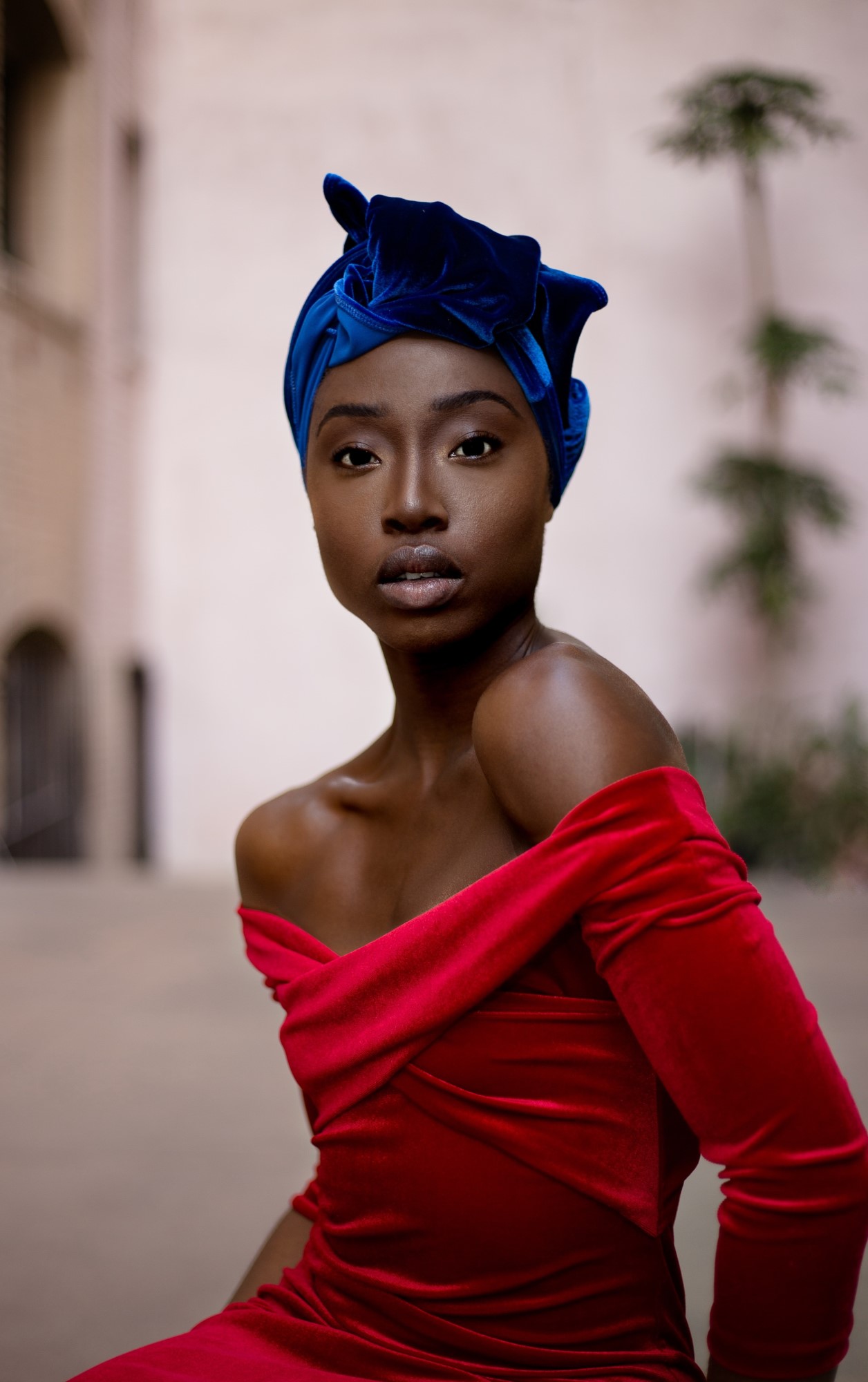
Photo by Carlos Vaz on Unsplash
I realize that many Canon shooters haven’t enjoyed the slow roll release of new glass for the EOS R system, but man, has it been worth the wait!
Just the other day, Canon unveiled their latest RF lens, the 85mm f/1.2, and it has been met with just about universal acclaim thus far.
In fact, it seems that Canon shooters have already started to dub this the perfect portrait lens. Let’s see why this might be an accurate statement.
Canon RF 85mm f/1.2 L Specs
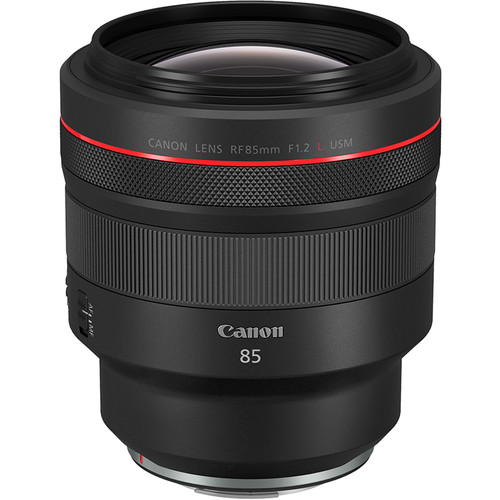
Let’s first have a peek at this lens’s specs to see what’s under the hood:
- Format: Full frame
- Maximum aperture: f/1.2
- Minimum aperture: f/16
- 9-blade aperture
- Angle of view: 28-degrees
- Optical design: 13 elements in 9 groups
- Minimum focusing distance: 2.79 feet
- Integrated control ring for changing lens settings
- 1 aspheric element and 1 UD lens
- Fluorine coating
- Blue Spectrum Refractive Optic (BR) to reduce chromatic aberration
- Air Sphere Coating (ASC) to minimize lens flare and ghosting
- Dust-resistant and weather resistant
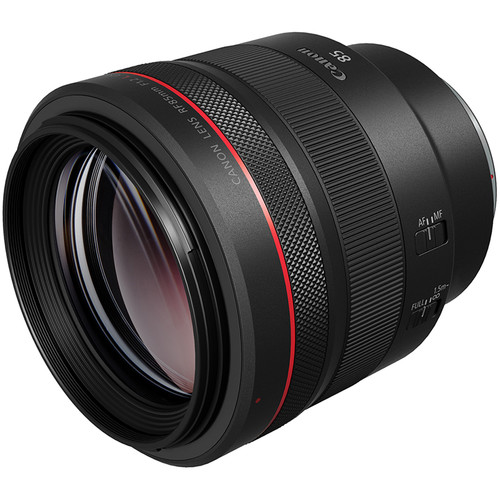
Clearly, Canon has made an effort to present us with a lens that’s at the top of its class in terms of performance.
The dust and weather sealing was a given since it’s an L-series lens, and I imagine when the weather turns and I can put it through its paces that it will reveal itself to be built like a tank.
All the coatings and optics that reduce aberrations, ghosting, and flare, is certainly a nice bonus too. The result of all that is clean, crisp images with a deliciously blurry background - ideal for portraits!
Canon RF 85mm f/1.2 L Autofocus & Image Quality
The autofocus on this thing is mind-blowingly good. That’s especially true of the face and eye detection. See it in action in the video above by TheCameraStoreTV.
You’ll find that when you’re tracking a subject, the lens is more than able to maintain its focus on them. More to the point, it can maintain tack-sharpness on the model’s eyes even as they move around.
Naturally, this means superb sharpness and excellent image quality, as you’d expect. Bokeh is off the charts. Compression is beautiful. It’s just a great look.
In fact, this lens at this focal length and at f/1.2 produces portraits that look almost like they were taken on a medium format camera. Even when shooting at f/1.2 with a flash, you still get jaw-dropping results in terms of sharpness, clarity, contrast, and minimal aberrations.
Canon RF 85mm f/1.2 L Build & Handling
As the daniel life explains in the video above, this isn’t a small lens, by any means, but it also isn’t cumbersome. In fact, it feels great when paired with the EOS R. At first, you might think that a lens of this size would feel like it overwhelms such a small camera, but that isn’t the case.
At just over 4.5 inches long and 4 inches wide, it is a beefy lens that feels good in the hand. Weighing in at 2.6 pounds, it feels like an L-series lens for sure.
In fact, this lens looks and feels a lot like Canon’s other L-series lenses.
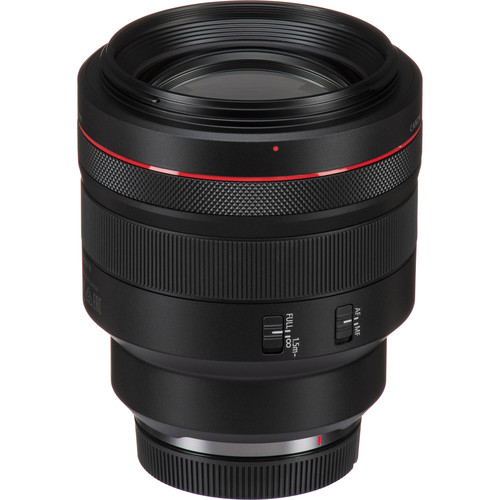
The programmable ring at the front, the focus ring, and the red “L-series” ring are all familiar components.
When you hold the lens, you immediately note the slightly rough, matte texture of the lens. This is a welcome addition because it makes the lens easier to grip. I suspect this will be a major benefit when shooting in the rain, cold, and other inclement weather. But I can assure you that even when it’s balmy and sunny out, it still gives you added confidence that you can grip the lens.
Like other RF lenses, this one is sleek and minimalist. There’s two autofocus switches (one to control the kind of focus and the other for focusing distance), and that’s it.
Canon RF 85mm f/1.2 L: The Perfect Portrait Lens?
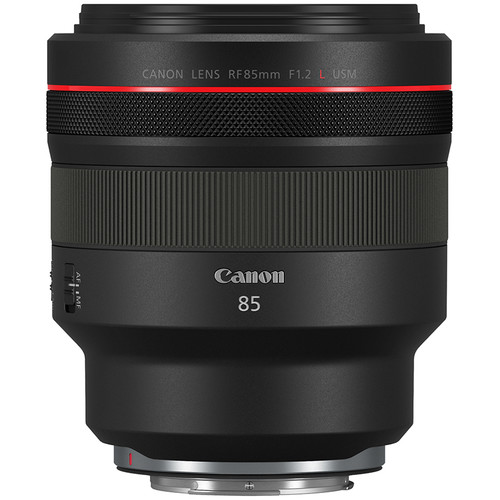
First impressions are that this is one of Canon’s best portrait lenses thus far. It truly produces results that will make your jaw drop to the floor.
Some will say that a 50mm is all you need for portraits, but I disagree. In this case, if you have the money to buy a $2,700.00 lens, go for it. You won’t be disappointed!
If however, you don’t have $2,700.00 laying around, it might be worth it to sell your old lenses to ease the financial hit that the new RF 85mm f/1.2 L would make on your bank account.

Sites like Lensfinder specialize in dealing with vintage and used lenses, so you can unload a couple of your older lenses (or newer ones for that matter) and start saving up for this bad boy.
I’ve used Lensfinder on multiple occasions to buy and sell old lenses, and it’s been smooth sailing every single time.
There’s no fuss, no muss, just a bunch of photographers coming together in one place to take care of their lens needs.
Give it a shot today and see how much you can get for your old lenses!
We Recommend
Canon Says 'Let's Do It!' and Creates a $70,000 50-1000mm Beast of a Lens
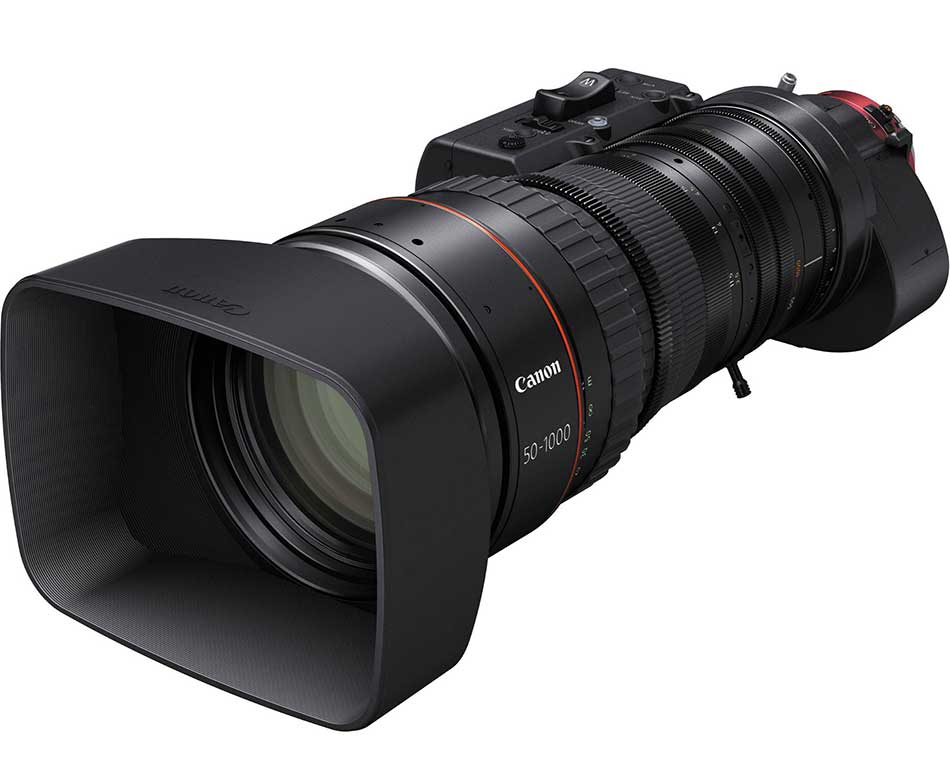
If you've never heard of Canon's CINE-SERVO 50-1000mm T5.0-8.9 cinema lens, you're not the only one.
For starters, it costs $70,000, so it's not exactly a budget friendly lens.
And secondly, it came to be because of a challenge laid down by a German wildlife photographer.
These aren't exactly factors that make it a mainstream 50mm or 100 lens...
But if you appreciate quality photography gear and interesting stories, you'll love this thing.
As explained in the video above by CanonUSA, Ivo Norenberg, a wildlife filmmaker from Germany, challenged Canon to create a virtually impossible lens back in 2010.
Interestingly, Canon accepted his challenge to make a dream lens that had the capability to do some pretty fantastic things:
- Full frame subjects between 4 and 5 feet tall from a distance of up to 350 feet
- The ability to shoot wide for landscapes
- Be compact and lightweight
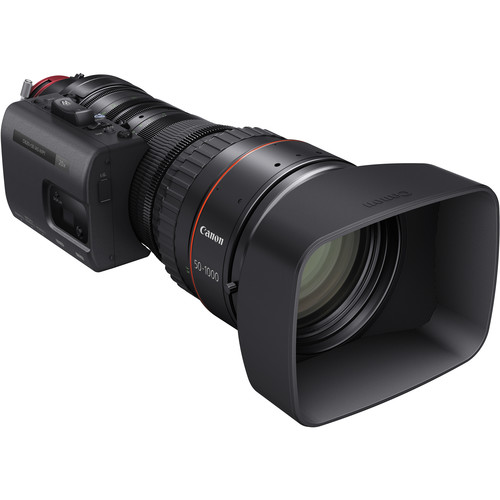
The problem with the specifications outlined above is threefold.
First, to fully frame subjects that small from that distance, the lens had to have a massive focal length, so Canon decided on 1000mm.
Second, to take wide views of landscapes, the lens needed to have a comparably wide focal length, so Canon decided on 50mm.
Editor's Tip: Learn how to buy a lens at a budget price with these tips for buying lenses.
And third, the lens needed to be lightweight and small, which is incredibly hard to pull off for a lens that needs to be 50-1000mm.
But Canon managed to get around that issue as well, creating a massive superzoom lens that weighs less than 15 pounds and comes in at under 16 inches long.
Granted, that doesn't sound very small and lightweight, but given this lens's capabilities, it's weight and length are impressively small.
The lens also shoots in 4K in 35mm format and has a built-in 1.5x extender, meaning it can shoot at up to 30x zoom at 1500mm.
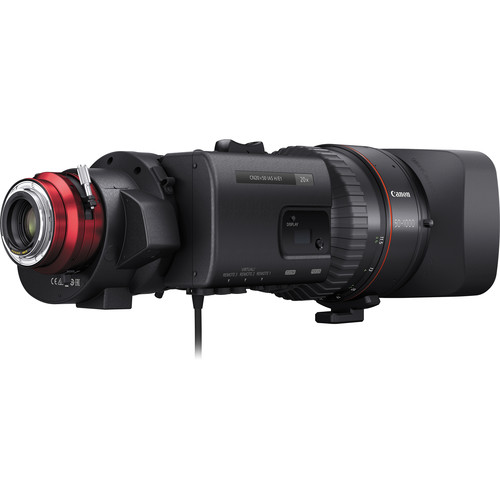
It took four years for Canon to brainstorm, design, and manufacture the lens, an understandably long time given how crazy the lens is.
It's interesting to see Ivo working with his dream lens for the first time.
I thought the best part was the fact that the lens was used in -40 degree weather and still worked like a charm. To say that this is one of the best Canon lenses ever made is an understatement.
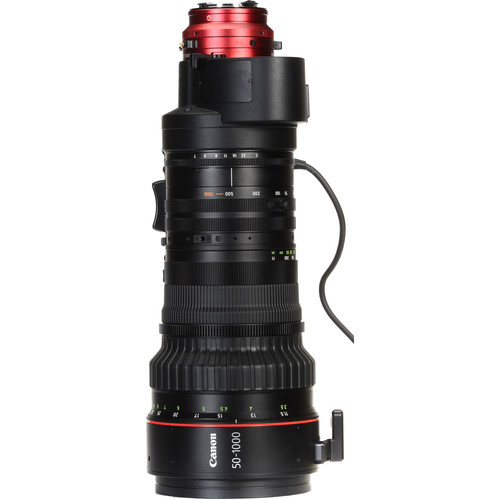
I don't have any idea what kind of features I'd request Canon to put in my dream lens. Maybe I should give it some thought and see if they'll make one for me.
If you're ready to buy this bad boy, head over to B&H Photo Video, but at $70,000, you'll need a credit card with a very high limit!
Via CanonUSA
We Recommend
Canon’s RF Lens Lineup is About to Get Much Better

Photo by James Bold on Unsplash
When Canon jumped full force into the mirrorless market with their EOS R (and now their EOS RP), they had just a handful of lenses to go with the new cameras.
Granted, Canon developed a handy FTZ adapter that allows shooters to use their old EF lenses with the new mirrorless bodies, but a great selection of RF lenses is a must.
Canon will soon deliver on that front, with six new RF lenses slated for release later this year.
Ready to upgrade your kit? Sell your old lenses and use the profits to get something new. Start the process now.
Current Canon RF Lenses
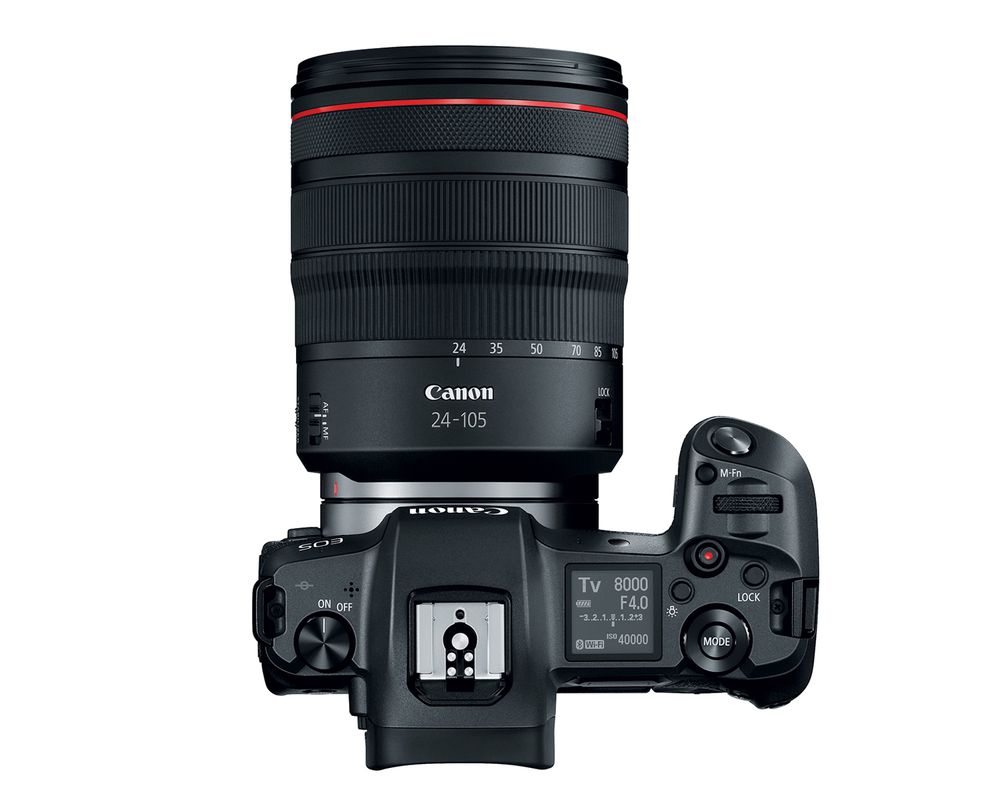
At the moment, the Canon RF lens family includes the following:
- 35mm f/1.8 IS Macro STM
- 50mm f/1.2L USM
- 24-105mm f/4L IS USM
- 28-70mm f/2L USM
There are obviously some glaring omissions, most notably the ever-popular 85mm and 70-200mm lens options.
Get a quick overview of each lens in the video above by Canon USA.
Future Canon RF Lenses
Sometime in the latter half of this year, Canon will unleash six additional RF options:
- 85mm f/1.2L USM
- 85mm f/1.2L USM DS (defocus smoothing)
- 24-70mm f/2.8L IS USM
- 15-35mm f/2.8L IS USM
- 70-200mm f/2.8L IS USM
- 24-240mm f/4-6.3 IS USM
Personally, I’m most excited about the 24-70mm f/2.8L USM, given that that’s a lens I often use as my daily shooter and primary lens when I’m traveling.
Portrait photographers will no doubt snatch up the 85mm options as well.
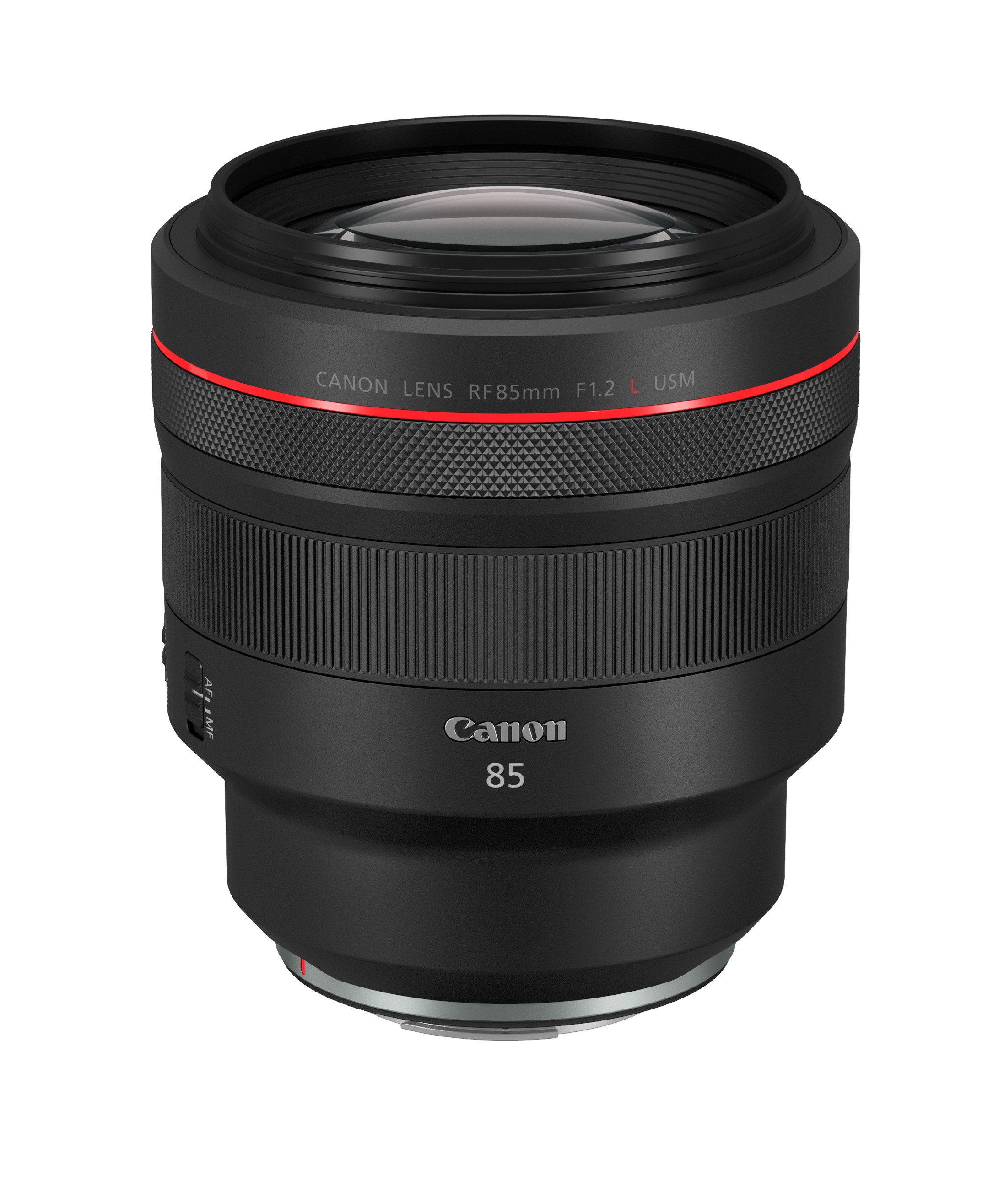
But the most intriguing lens in this group might be the 24-240mm f/4-6.3. It isn’t an L-series lens, so it can be expected to be cheaper than the others. It will likely be offered as part of a kit with the EOS R or EOS RP, which would give shooters a nice option for wide-angle to telephoto shooting right out of the box.
For a detailed discussion about what is known so far about these lenses and what we might expect, check out the video above by Jared Polin.
Can’t wait for the new RF lenses to come out? Pick up an FTZ adapter and find older Canon lenses to fit. SEARCH FOR USED CANON LENSES.
What the New RF Lenses Mean
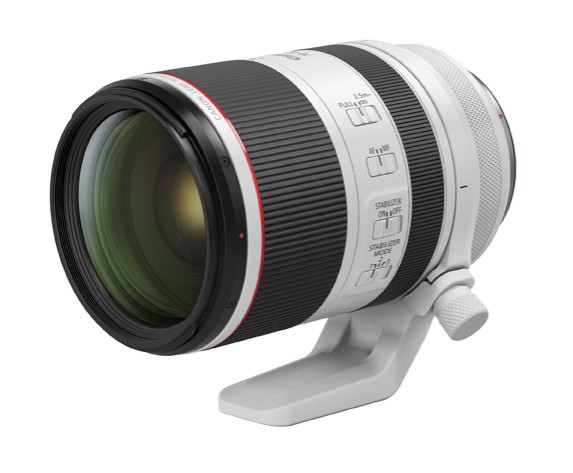
Ask anyone in the know about Canon’s foray into mirrorless cameras, and they’ll tell you that the company is only getting started.
While the EOS R is a really good camera, it is by no means a professional-grade rig. With the EOS RP positioned below it in the R lineup, that leaves a ton of room for future, higher-end cameras.
That’s where these new lenses come in…
What Canon is doing is really smart. If all goes according to plan, by the end of the year, they will have a full line of L-series RF lenses already available for when the next, presumably pro-level R camera is released.
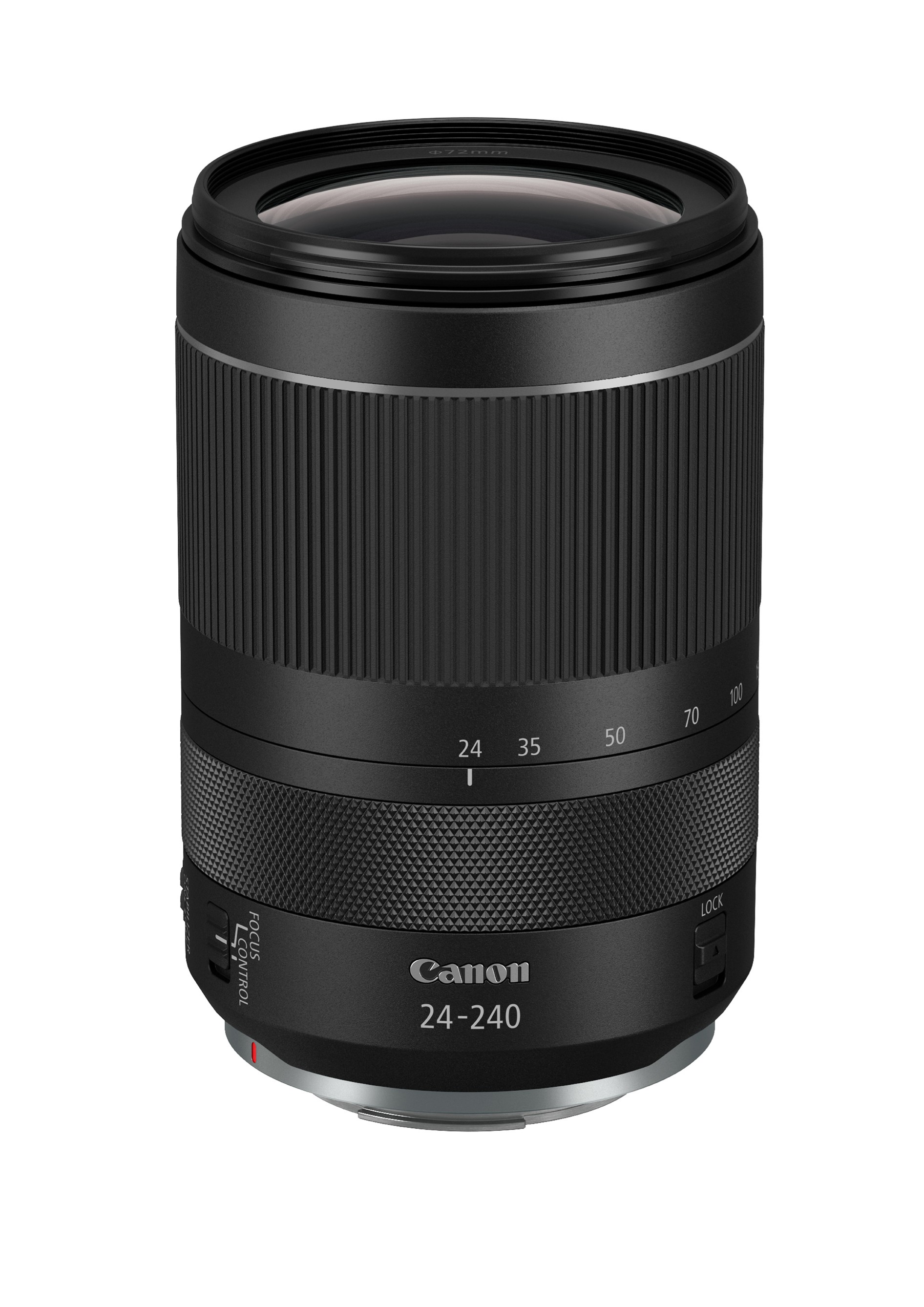
That means that shooters that want to immediately upgrade their existing DSLR or mirrorless system will be able to do so. While this is good news for Canon shooters, this is clearly a move by Canon to pull people away from Nikon, Sony, and others.
After all, Canon shooters can use the FTZ adapter to utilize their current glass, so the availability of pro-level lenses at this point isn’t as critical for that bunch.
But if you’re a Nikon shooter, for example, and you’re ready to jump ship, doing so will be much easier once all these lenses are available. Smart move, Canon!
Canon Rumors
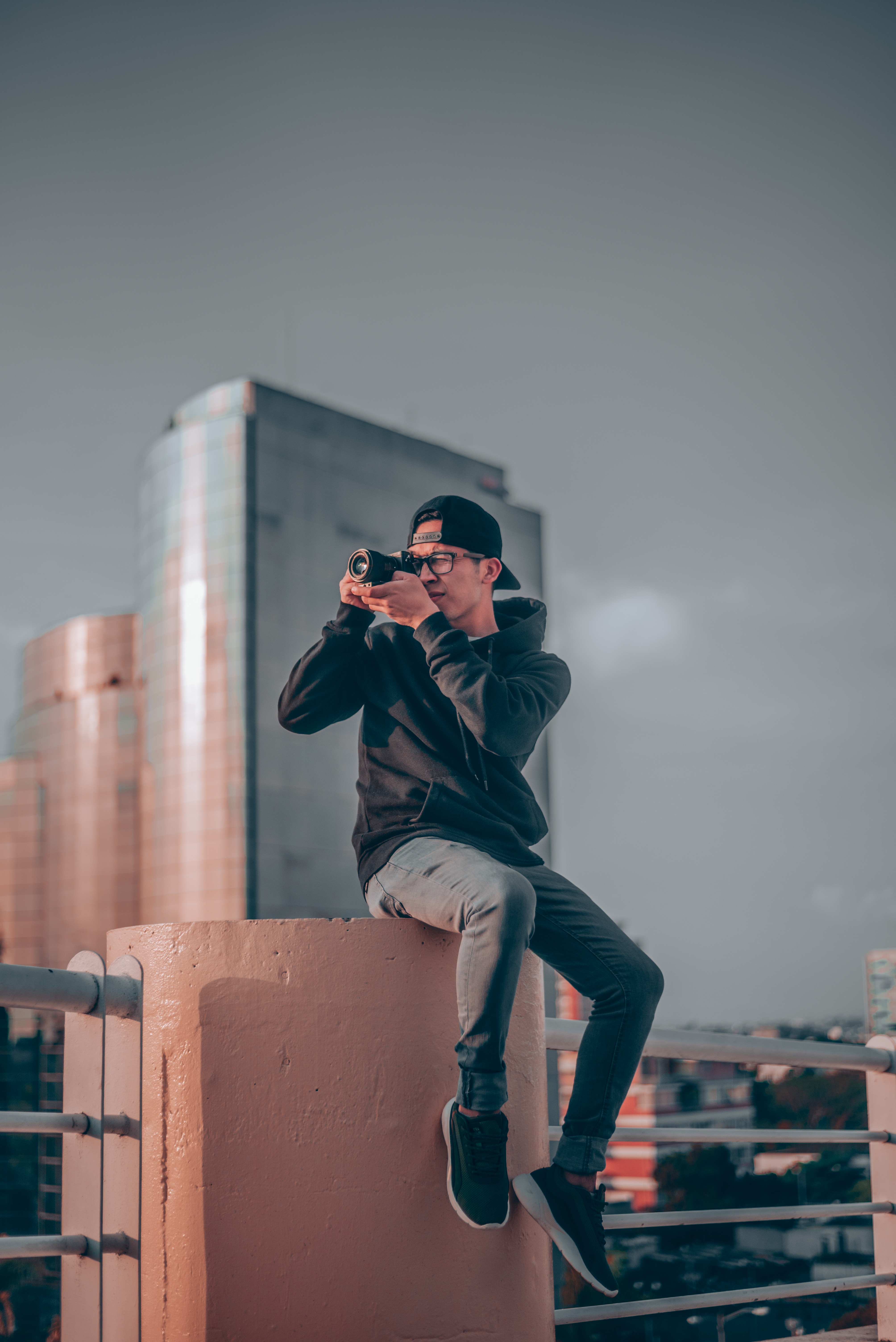
photo by Bryan Apen via Unsplash
The rumor mill is always churning and new details about already-announced lenses and proposed lenses is coming out seemingly every week.
Read up on the latest Canon RF lens rumors right here. You can also check in on the latest EOS R rumors as well.
We’ll post more news as it comes down the pike, so stay tuned!
Have Canon questions? Ask in the Canon Camera Forum.
We Recommend
Cheap Camera Accessories You Should Never Leave Home Without
 Photo by DieterMeyrl via iStock
Photo by DieterMeyrl via iStock
When you are on a budget or just getting started, stretching that hard-earned dollar as far as you can, can be the difference between not having enough photography gear and sliding on through...
Of course, you don't just want to slide by with the bare minimum, but you also don't want to spend a ton of money.
That's where this list comes in.
Below, I've outlined some of my favorite budget-friendly photography accessories. Whether you're a beginner, enthusiast, or a pro, this gear will work hard for you without busting your budget.
Cheap Camera Accessory: Filters
If you're been in the photography game for any amount of time, you know that a lot of the best gear is also very expensive.
Good filters, by and large, can set you back hundreds of dollars. That's a big hit to your budget after buying a camera, a lens or two, a tripod, and other accessories.
You can save money without sacrificing quality by getting Kenko filters, though.
Kenko has two must-have filters for your kit:
- Kenko Nyumon Circular Polarizer - This filter helps reduce glare, improve contrast in the sky, and reduces atmospheric haze for improved landscape photos. Prices start at around $15.00.
- Kenko Variable ND Filter - A neutral density filter blocks a certain degree of light from entering the lens, thus allowing you to use a much slower shutter speed when shooting in daytime conditions. This enables you to blur water, cloud movement, and so forth. Variable ND filters are circular and screw onto the lens, and are adjustable by turning the filter in its housing. This one filter is like having a whole set of ND filters in your bag. Prices start at around $240.00, which is a bargain when compared to other filter sets that are double or triple that price.
Editor's Tip: Get Kenko’s latest updates and access to promos for discounted gear. Click here to sign up.
Cheap Camera Accessory: Camera Strap
One of the top accessories you need to buy to upgrade your kit is a better camera strap.
Though some straps cost hundreds of dollars, there are excellent budget options out there.
The HiiGuy Camera Strap is a great example of affordability and functionality.
It has a big, comfy shoulder pad to soften the weight of the load you're carrying. There's even a zippered compartment to keep your spare memory cards!
The strap is highly adjustable, too - I'm over six feet tall and I can adjust this strap perfectly, as can my wife, who's barely over five feet tall.
What's more, this strap is high-grade metal components, so it can support a great deal of weight. I used it to tote my Nikon D-850 with an L-bracket and a 70-200mm zoom lens attached around Boston last fall, and never once did I think the strap wasn't up to the task.

Better still, HiiGuy throws in some swag with the strap, including a microfiber cleaning cloth, a memory card case, an eBook, and a 3-year warranty.
Best of all, this strap retails for under $30!
Cheap Camera Accessory: Tripod
Tripods can be among the most expensive photography accessories - some are in excess of $1,500!
But when you're on a budget, that's simply out of the question, and a good, solid, affordable tripod is needed.
The Vanguard Espod CX 204AP fits the bill with loads of features at a great price.

This tripod weighs just 2.2 pounds, even with the included pan/tilt head attached. It folds down to 20.7-inches, so it's easy to pack away in your bag, too.
It's got 4-section legs that extend the tripod to a height of 61-inches, quick-flip leg locks that make deploying the tripod a quick task, and a central column anti-shock ring to dampen vibrations that cause blurry photos.
You get all that for about $71.50!
Cheap Camera Accessory: Editing Software
Okay, so editing software is probably something that will stay at home (but hey, bring your laptop and find some free WiFi and you can edit on the go!).
If you've looking into getting something like Photoshop or Lightroom, it can certainly be sticker shock.
Though many companies have moved to the monthly fee-based model, one that still offers its (really good) product for a one-time fee is Skylum.

Their Luminar 3 software has all the bells and whistles you could want in an editor, and then some.
The well-designed and intuitive UI is easy to use and puts all the controls you need to make beautiful edits right at your fingertips.
Luminar 3 has a library feature, so you can sort, organize, and rate your images quickly and easily. It also has presets (called "Looks," shown above) that apply a range of edits to your images automatically. They're a great way to get the editing process started.

Luminar 3 also uses AI to make editing simpler and easier. In fact, their Accent AI filter applies about a dozen edits to the photo, so you can literally drastically improve the quality of your images in mere seconds. The AI Sky Enhancer (shown above) brings contrast and definition to otherwise plain Jane skies.
It's software that's easy to use for beginners, yet has all the tools that veteran photographers need and want to edit their photos.
It's only $69, too, so of all the affordable photography accessories you can buy, Luminar 3 is one of the best-priced.
Cheap Camera Accessory: Lenses
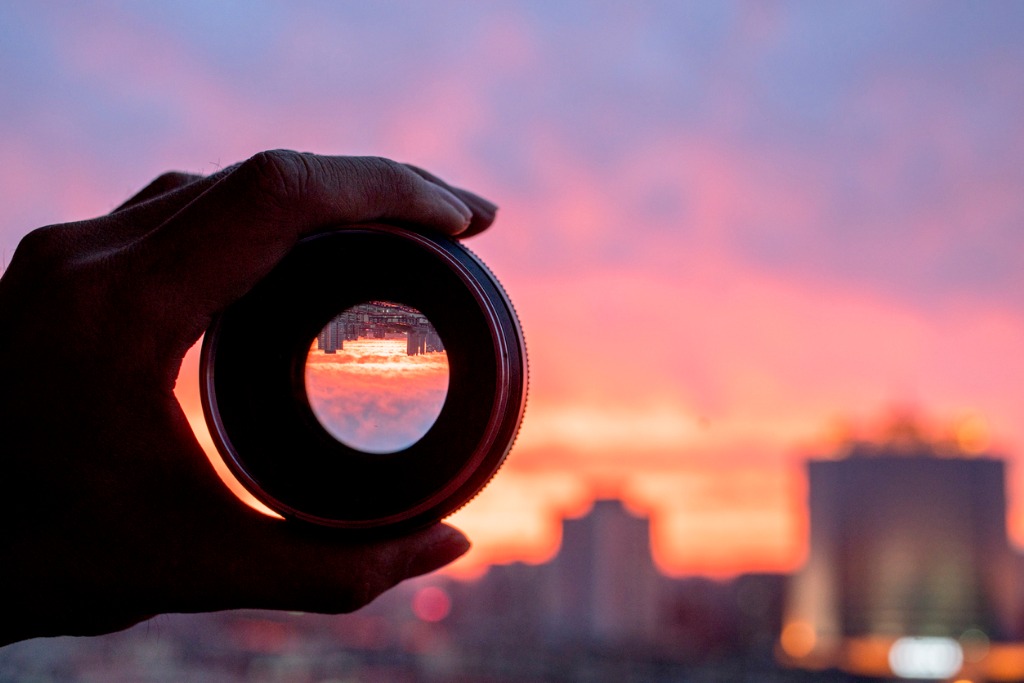 Photo by yipengge via iStock
Photo by yipengge via iStock
If there's anything you DON'T want to skimp on, it's the lenses you use.
Cheap lenses often produce cheap-looking results that aren't quite sharp, have ghosting, show vignetting, and so forth.
That means investing in the best glass you can afford is the way to go.
To save money, you can buy a better lens at a lower price by buying a used lens.
When buying used, where you get it is as important as what you're buying.
I use Lensfinder to buy and sell lenses, and it's been an awesome experience every time.
Lensfinder was built by photographers, for photographers, so the platform speaks to your specific needs.
You don't have to sift through all sorts of unrelated products like you do on eBay, and there's no scams like you often find on Craigslist.
Just enter the details of the lens you want (a 50mm f/1.8 is a great, inexpensive choice!), search the listings, find what you need, and proceed with buying it.
Everything is taken care of right on the Lensfinder platform, from product searches to communicating with sellers to leaving feedback.
And it's less expensive than paying all those eBay fees. Nice!
Cheap Camera Accessory: Cleaning Kit
It's shocking how many photographers don't clean their camera and lenses on a regular basis.
It's not a task that needs to be done weekly, by any means, but every few months, for sure.
You can pick up a good cleaning kit on the cheap with all the tools you need.
Look for a kit like the one shown above that includes a cleaning pen, a lens brush, an air blower, and lens-cleaning cloths.
This one also includes three microfiber cloths and a refillable plastic spray bottle.
Cheap Camera Accessory: Camera Bag
Of course, you need something to carry all your new accessories in, and a good, solid backpack is a great choice.
Like any other photography gear, you want to get something that's well-made and durable, but without breaking the bank.
The Vanguard VEO 42 backpack is a comfortable bag to carry thanks to the heavily padded shoulder straps.
You can fit a ton of gear in this thing as well - a mirrorless camera with a lens attached, 1-2 additional lenses, spare batteries and memory cards, a flash, a tripod, and a 13-inch laptop, too.
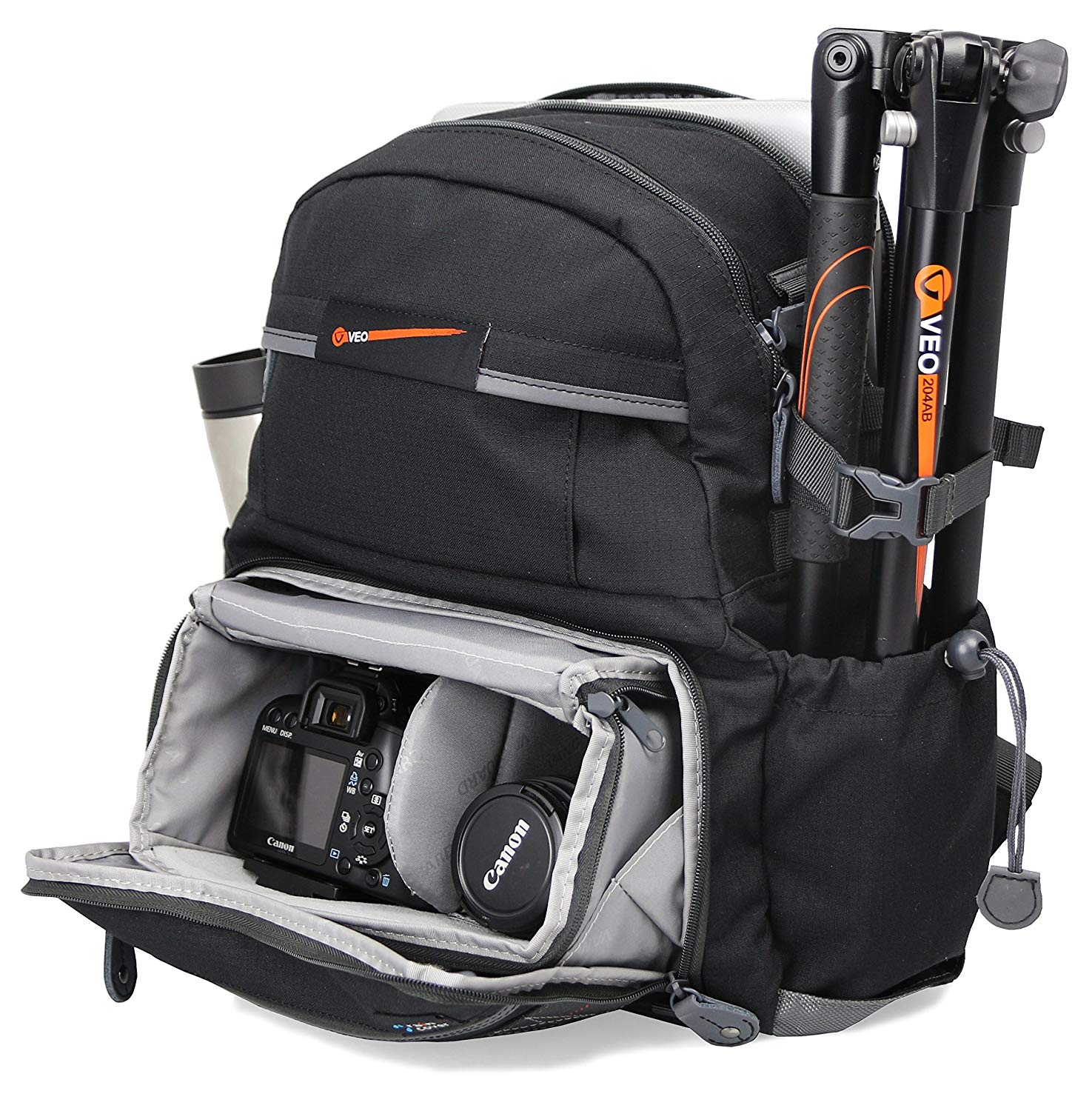
Vanguard has made it easy to get your gear out of the bag with a bottom access panel that makes swapping out your gear a quick task.
This bag is even convertible. Just remove the padded camera insert and you have a regular backpack that you can use for school books, clothes for a weekend trip, and so forth.
Best of all, this bag is just $49!
Cheap Camera Accessory: Camera
I know a camera isn't a camera accessory, but I still wanted to offer a recommendation for an inexpensive camera.
I've used the Sony Alpha a6300 for years now, and it has proven to be an excellent little camera.
It's mirrorless, so it's small and lightweight and easy to carry.

It's got a 24-megapixel sensor, an astounding 425-point autofocus system, and a water-resistant body.
Add to that a 2.36-million dot OLED viewfinder, 4K UHD video capabilities, WiFi, and NFC, and you have the makings of a highly capable little camera.
Brand new, these things go for about $750 for the body only, but if you buy used, you can pick one up in like-new condition for about $644 at MPB. That's not bad at all!
We Recommend
Cheap Nikon Lenses That Offer Amazing Image Quality for the Price
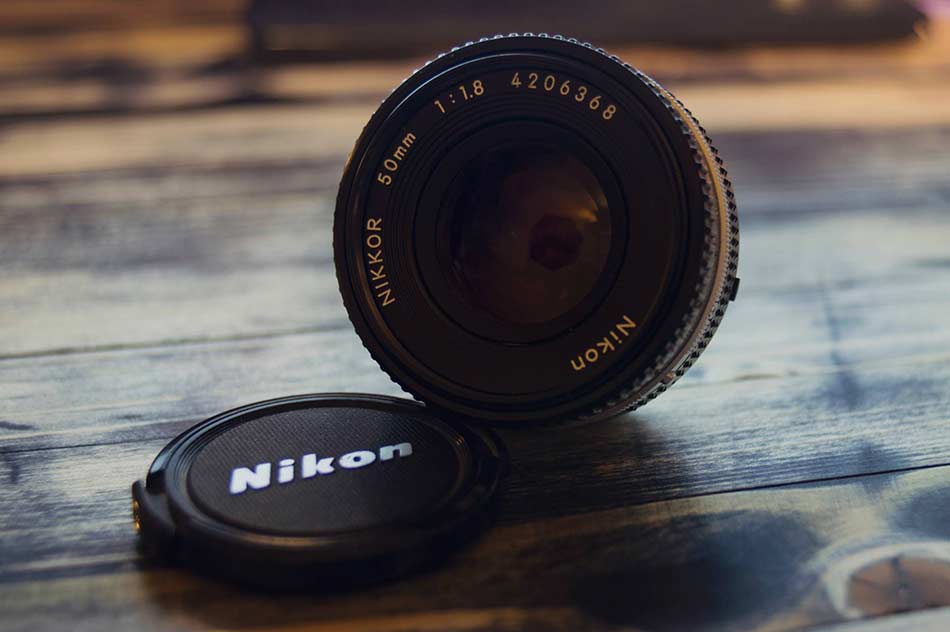 Photo by Connor Hancovsky on Unsplash
Photo by Connor Hancovsky on Unsplash
Looking for a cheap Nikon lens? You've clicked in the right article...
When buying an inexpensive lens, you don't want to sacrifice quality. That's the crux of the issue. Often, you can find cheap lenses, but they don't offer very good performance.
On the other hand, many top-shelf Nikon lenses are hugely expensive.
But there are some gems out there that perform well and won't cause your wallet to scream, either.
Here's just a sampling of some of the best budget-friendly Nikon lenses.
Editor's Tip: Need a new lens but don't have the cash to buy brand-new? Find great deals on pre-owned Nikon lenses.
Best Cheap Nikon Lens: 50mm f/1.8D
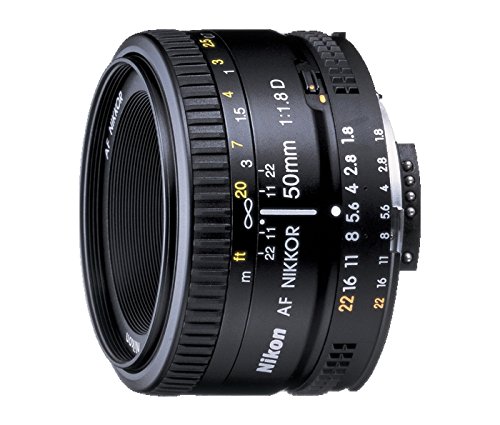
It doesn't get much simpler than this little 50mm lens, and that's one of the reasons why it's such a great addition to any Nikon shooter's camera bag.
With a big f/1.8 aperture you can more easily photograph subjects in low-light situations. It produces beautiful bokeh as well, which is great for separating portrait subjects from the background.
This lens has a Super Integrated Coating that's applied to individual lens elements, which reduced lens flare as well as ghosting for cleaner, crisper results.
Likewise, this lens offers superb color accuracy and contrast, even when shooting in challenging lighting conditions.
Though it was designed for use with Nikon's full frame FX camera bodies, it can also be used on crop sensor DX bodies, which gives this lens an effective focal length of 75mm. With all those features, the $132.00 price tag is pretty astonishing.
For further details about this awesome little lens, check out the video above by Eric Rossi.
Best Budget Nikon Zoom: 70-300mm f/4-5.6G
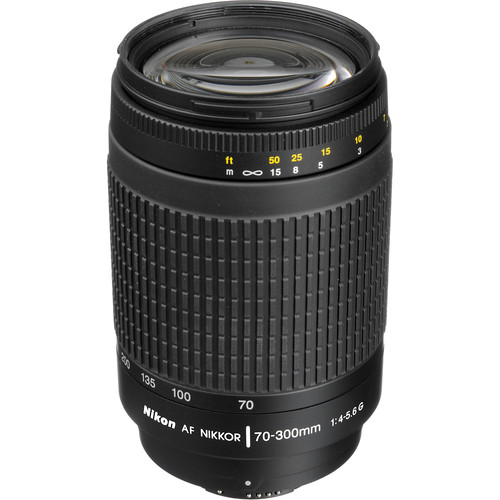
As good of a deal as the Nikon 50mm is, this 70-300mm zoom lens might be an even better buy from a price standpoint.
Brand-new, these lenses go for just $134.00 (and even less if you can find a used one!). Given that it has a massive zoom range of 70-300mm, that's a steal.
While this lens isn't going to win any awards for best lens ever made, it's still a solid rig that will help you get great photos.
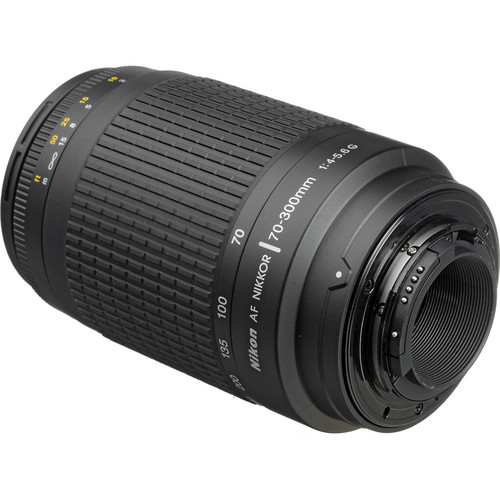
You have to love the versatility of a zoom like this - at 70mm, you can take nice-looking portraits. At 300mm, you can fill the frame with far-off subjects. And there's a ton of variance in between.
There are 13 lens elements in nine groups, and like the 50mm lens discussed above, this one also has Super Integrated Coating to keep ghosting and flare to a minimum.
The lens has a fast-acting autofocus system that's surprisingly precise. Manual focus is also available for those occasions when you need to be in control of focusing.
To top it off, for a lens with this zoom range, it's got a small form factor and it's lightweight, which makes it a great lens for travel photography.
Editor's Tip: Not sure if a zoom lens or a prime lens is for you? Use this guide to decide the best lens for your photography.
Best Inexpensive Nikon Wide-Angle Lens: 28mm f/2.8D
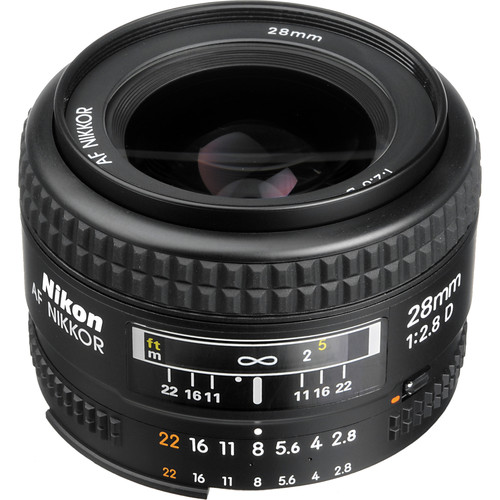
If you're a landscape photographer and you want a dedicated prime lens for wide-angle shots, it's hard to go wrong with the Nikon 28mm f/2.8.
For starters, it's small, compact, and lightweight, so it's easy to get in and out of your camera bag, and if you're hiking around looking for the ideal spot to take a photo, you don't have to worry about it sticking out so far from your camera that it will get caught on trees and other objects.
Though the f/2.8 aperture isn't as large as those on the other lenses noted above, it's still plenty big for typical landscapes and nature photos.
Again, we find Nikon's Super Integrated Coating to help the lens control lens flare and ghosting.
The result are images that have gorgeous colors and beautiful contrast, even when photographing in bright mid-day sun or backlit conditions.
When used on a DX crop sensor camera, this lens has an effective focal length of 42mm for a nice standard or normal view of the subject.
For more details about this and other great Nikon lens buys, see the video above by The Angry Photographer.
Bonus Tip: Put Good Glass in Front of Your Lenses
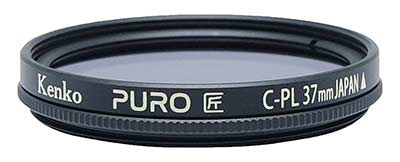
One of the best pieces of advice I can give to photographers that are looking at new lenses is to be sure to save some money to buy some good filters for those lenses.
There's really no point in getting a nice lens if you just put a cheap filter in front of it. After all, the light has to come through the filter first, so if it's of poor quality, it will negate the gains you make by having a nicer lens.
And just like you can find some good lenses that are easy on your budget, you can do the same with lens filters.

I've tested Kenko lens filters now for a couple of months, and for the money, I'm not sure there's a better buy out there.
Kenko's Puro Circular Polarizing Filter is inexpensive, yet is meticulously engineered such that you get the best results.
This filter is made with Japanese assai precision optical glass for excellent clarity. It has oil-resistant and stain-resistant coatings as well, which are a huge benefit for keeping the filter as clean as possible.

These filters are compatible with a wide range of lenses from Canon to Nikon, Sony to Fuji, Zeiss to Sigma, and many others.
They're also available in a variety of size, so no matter the size of the lens, you can find a Kenko filter.
Editor's Tip: Get Kenko’s latest updates and access to promos for discounted gear. Click here to sign up.
And since a polarizer reduces glare, maximizes the contrast in the sky, and minimizes atmospheric haze, it's an incredibly versatile filter.
Along with a new, more capable lens, a good circular polarizer is a perfect addition to your camera bag!
We Recommend
Cheap Photo Accessories That Are Just as Good as Expensive Ones
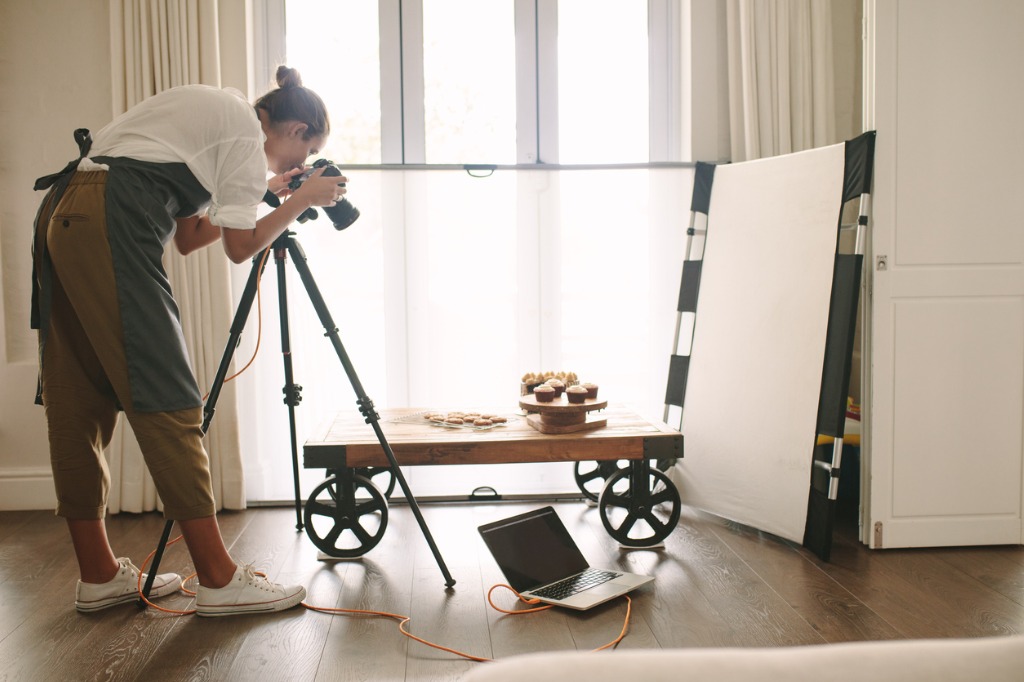
photo byjacoblund via iStock
One of my least favorite things about the photography industry is the fact that beginners, and oftentimes professionals who are well into their money-making photography careers, are looked down upon because they buy cheap photo accessories.
Don’t get me wrong, expensive photography gear has its time and place, but I’d much rather buy a cheap tripod and spend more money on my lenses.
So, what cheap photo accessories are worth the purchase?
Speedlights
NOM Creative, LLC takes this “cheap photo accessories” trend to a new high, or low depending upon how you look at it. He uses Amazon’s speedlight and puts it against a speedlight that costs ten times as much.
There are no better budget-friendly photography accessories than speedlights.
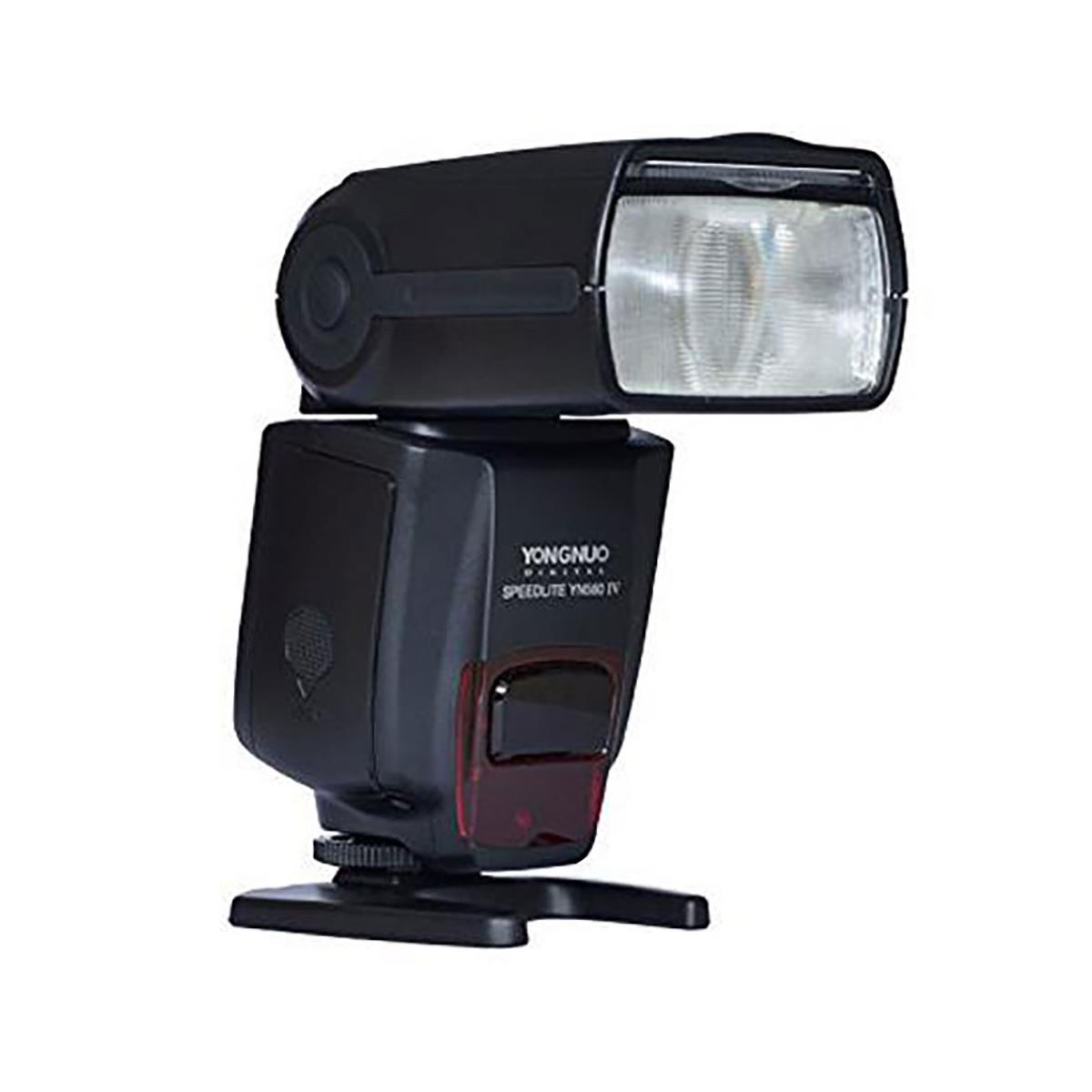
While I wouldn’t necessarily recommend Amazon’s basic speedlight, Yongnuo has a $65 speedlight that contends with any of the pros.
There used to be a stark difference between speedlights in different price ranges, but that’s a long gone era.
Plus, you have the added bonus of purchasing multiple speedlights when you save money on the first. It’s a win-win!
Reflectors
Jessica Whitaker so easily creates DIY reflectors for portrait photography because expensive reflectors are a sham, so much so that she makes one out of a posterboard.
While the movement against reflectors is building, I still think they can add something special to particular shoots, especially when the client is asking for a shoot to be completed by a specific day, no matter the weather.
If you, like me, need to deal with pesky clients who don’t understand the beauty natural lighting brings to a shoot, and is instead concerned about a marketing deadline, then a cheap reflector is the budget photography gear for you.
This 5-in-1 reflector pack is a great option if you want to forego making a DIY reflector and don’t want to bust your budget, either.
Learn More:
Camera Bodies
Blue Pacific Media’s video from 2014 still rings true today, many older (and cheaper) camera bodies are just as relevant as their newer (and more expensive) counterparts.
We feature plenty of cheap camera bodies on our site, and our reasoning is simple: camera manufacturers want you to think that a slighter larger ISO range or a camera battery that lasts for an additional 50 shots is truly going to make a difference for your day-to-day photography experience, and it’s not true.
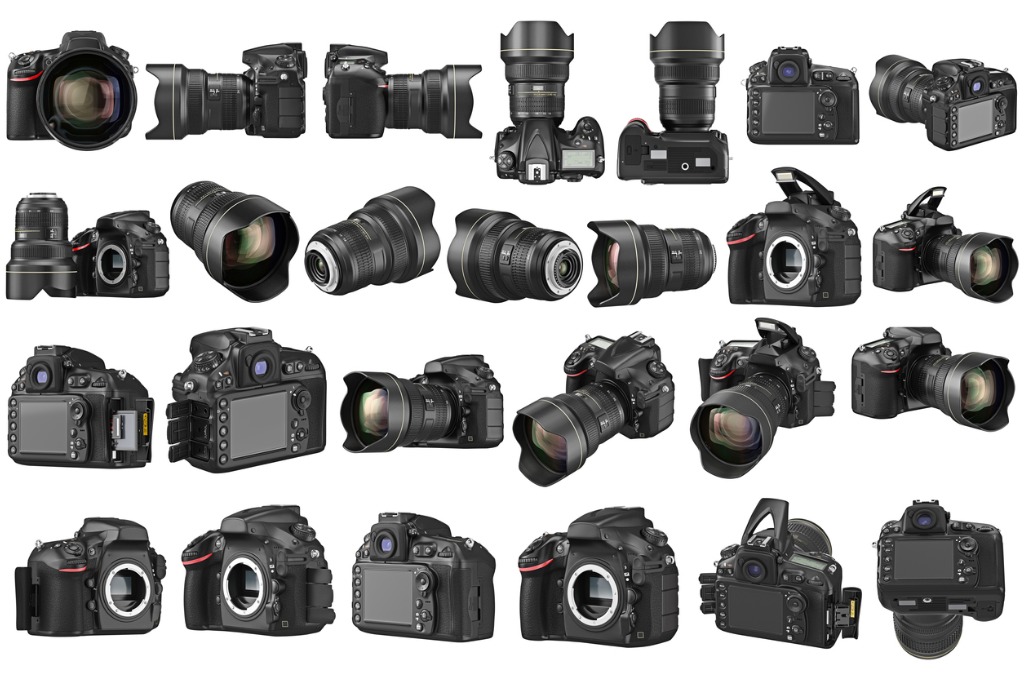
photo by ARTYuSTUDIO via iStock
Camera technology is so advanced now that cheap camera bodies, and cheap photo accessories, do the trick for all but the highest-performing photographers.
The holidays just finished and if you can save $200-700 on a cheaper camera body, I give you permission to do so, but spend that money you saved on our next item.
Don’t Skimp on Lens Quality
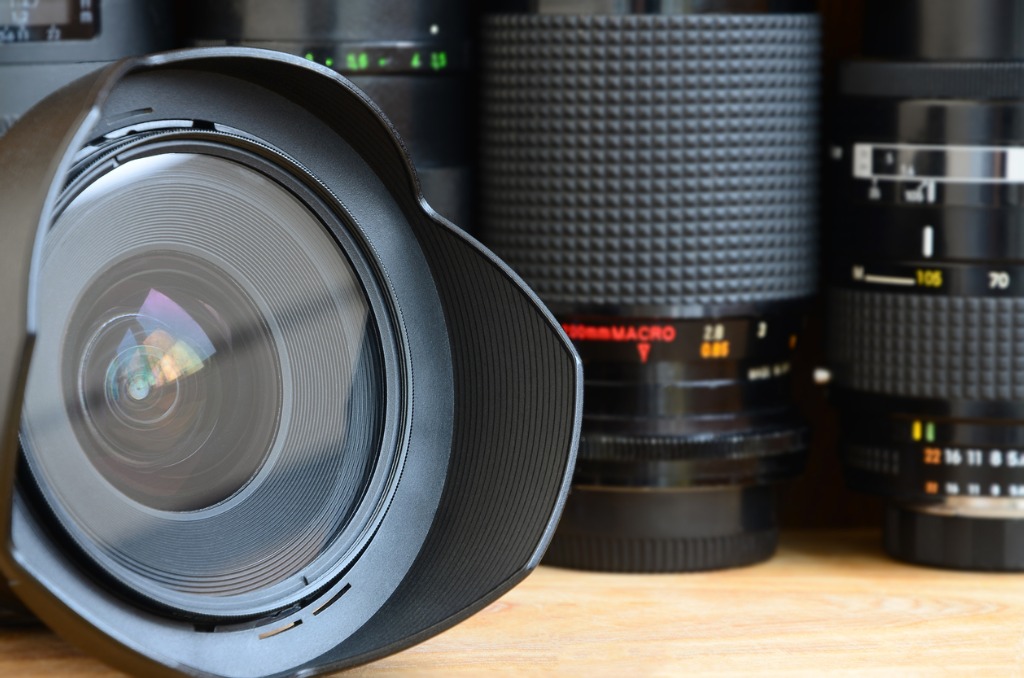
photo by Mehaniq via iStock
Lenses are the one photo accessory you should never spend less on.
Well, that’s not entirely true, because I spend less on all my lenses. I buy them used.
Lenses are in many ways the most important photo accessory in a photographer’s bag. In fact, an old camera body with a great lens will get you vastly better results than a new camera body with a cheap lens.
Furthermore, better lenses often have larger apertures, higher maximum shutter speeds, better build quality, and weather sealing, just to name a few options. In other words, the better the lens, the more capable it is of helping you achieve your creative vision.
Since really incredible lenses cost thousands of dollars, I buy all of my lenses used on Lensfinder.

Lensfinder is a used lens marketplace, and they go through hundreds of products every day, so you can find the best, new lenses, as well as antique, vintage or rare lenses depending upon the day.
I’ve definitely spent some hours at work perusing the site. I think you might too.
Now that the long holiday season is coming to a close, think about buying yourself something for a change at Lensfinder.
Learn More:
We Recommend
Common Photography Problems - and How to Fix Them
 Photo by Julian Santa Ana on Unsplash
Photo by Julian Santa Ana on Unsplash
If you're frustrated by photography and aren't sure how to get over the hump, it might be because you're making a silly mistake.
If so, you aren't alone...
Every photographer makes plenty of mistakes, especially when they're just starting out.
There's a lot to learn and understand, and simple mistakes along the way are just part of the growing pains of learning how to be a better photographer.
In this guide, I offer up a few common photography problems and what you can do to solve them.
Problem: Editing Photos Takes Too Long (and is Expensive)
 Photo by Anchiy via iStock
Photo by Anchiy via iStock
There are two common problems when it comes to editing photos.
One, it can take absolutely forever, and two, some photo editors cost a big chunk of change.
Though programs like Photoshop and Lightroom have an incredible array of tools and features that give you tons of options for editing your photos, learning how to use all those tools can take a good deal of time. What's more, the workflow in some editors can be a bit on the laborious side.
Additionally, paying a monthly fee for a photo editor is a bit of a bummer, especially when there are one-time-only fee options out there.
The solution to these problems is simple: Luminar 3.
Not only is Luminar 3 easy to use with built-in "Looks" to get the editing process started, but it's also loaded for bear with dozens of filters you can apply to correct problems or get creative.
These tools are adjusted using sliders, so it's a simple matter of moving the slider to the left to reduce the effect and moving the slider to the right to increase it.
Another feature that makes Luminar an efficient editor is the pre-made workspaces.
If you're working on a landscape, fire up the Landscape Workspace and make use of the recommended tools to make your landscape look like a million bucks. You can even add other tools to customize the workspace as you see fit.
There's workspaces for black and white photography, portraiture, street photography, and more, too.
While ease of use is certainly an important factor, Luminar's price is important to note as well.
It's just $69, and that's a one-time fee.
When you consider all the different tools and features that Luminar has, from AI-powered filters to dozens of filters to enhance your photos to an intelligent library that helps you organize, sort, and browse your photos, $69 is a great price.
See what Luminar 3 has to offer in the video above by Trey Ratcliff.
Learn More:
Problem: Your Photos Aren't Perfectly Sharp
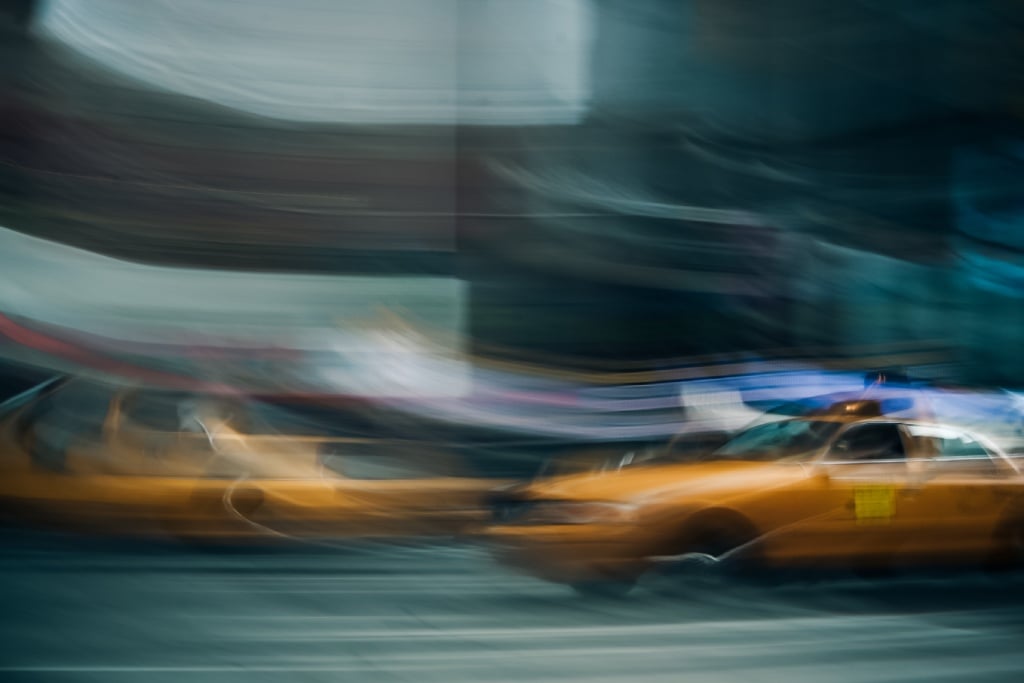 Photo by Scott Umstattd on Unsplash
Photo by Scott Umstattd on Unsplash
There are a number of reasons why your photos might not be sharp, but most commonly, a lack of sharpness is due to a lack of stability for the camera.
This is especially true if the scene is dark and you're shooting in fully automatic mode - the camera might choose a shutter speed that's too slow for you to hold the camera in your hand.
That means you need to stabilize the camera in some way, even if it's sitting it on a solid surface.
Of course, that's not a long-term solution to this problem...

Instead, invest in a good, solid tripod.
A tripod is a must-have photography accessory if for no other reason than it helps eliminate the camera shake discussed above.
But a tripod is valuable in other ways as well:
- Tripods help slow you down a bit, and that extra time can be used to perfect the composition.
- Many tripods have built-in bubble levels which help you keep horizons straight.
- Some tripods have multi-angle center columns which allows you to compose interesting low-angle shots.
In other words, a good tripod can help you minimize errors and create better photos in a number of different ways.
That being the case, it's important to invest in a good tripod that will last you for years and years.
I've used the SIRUI W-2204 tripod shown above for years, and it has served me well in all sorts of situations, from taking portraits of my family to taking landscape shots at the beach.
It's waterproof, so water, sand, snow, and mud won't harm it, and with easy twist-lock mechanisms on the legs, it's a breeze to set up.
Heck, one of the legs even detaches for use as a monopod, so it's a multi-functional, well-built, and reliable tripod that will help you get sharper, better-composed shots.
Learn More:
Problem: You Can't Get a Beautiful Blurry Background in Portraits
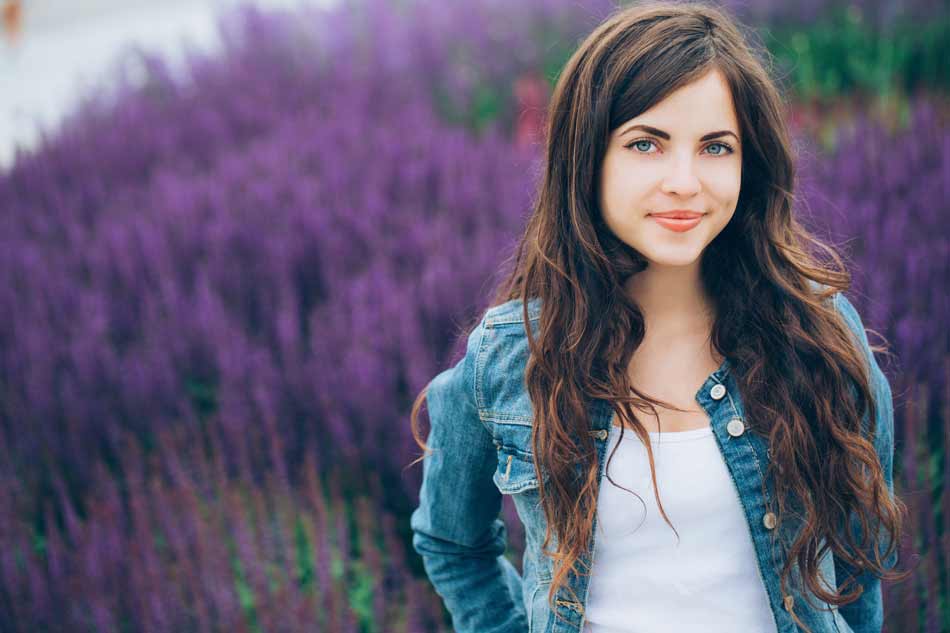
If you look at portraits like the one above and lament that you have problems duplicating the blurry background, what you need to do is learn about depth of field.
In a nutshell, depth of field refers to the area of an image that's in sharp focus. In most portraits, the depth of field is shallow (the subject is sharp but the background is not).
Conversely, in landscape photography, the depth of field is usually quite large with everything from the foreground to background in sharp focus.
The question is, how do you manipulate depth of field?

I wrote a comprehensive guide on this topic, but here's a quick rundown of the factors that influence depth of field:
- Distance to the subject - the closer you are to the subject, the blurrier the background will be.
- Distance from the subject to the background - the further away the background is, the blurrier it will be.
- Focal length of the lens - the longer the lens, the shallower the depth of field (i.e., using a 200mm lens to photograph a subject from 20 feet away will produce a shallower depth of field than using a 24mm lens on the same subject from the same distance).
- Sensor size - the larger the imaging sensor in the camera, the shallower the depth of field will be (i.e., using a 35mm full frame sensor to photograph a subject from 20 feet away will produce a shallower depth of field than using a smartphone on the same subject from the same distance).
- Aperture size - the larger the aperture opening, the shallower the depth of field.
In other words, if you want a blurry background for portraits, get close to the subject, maximize the distance between the subject and the background, and open up the aperture as large as it will go.
These methods of manipulating depth of field are much easier (and less expensive) than buying a new camera with a larger sensor or buying a new lens with a larger maximum aperture.
However, I will say that a better lens is a sound investment (just like a good tripod!).
I always recommend that beginner photographers pick up a 50mm f/1.8 lens (like the one shown above) because they have a much larger aperture (f/1.8) than typical kit lenses (which usually range from f/3.5-5.6) and you can pick one up quite inexpensively - Canon's version of this lens is about $125.00 brand new.
Of course, if you want a better lens with a larger aperture, you can always buy a pre-owned lens.
Though buying used gear from a place like Craigslist might (and should) induce a bit of panic, if you buy from a reputable photography company like Lensfinder, you can rest assured that you'll be able to find what you want and for a good price as well.
Lensfinder was built by photographers, for photographers, and is a nice little community where gearheads can go to buy and sell their stuff.
It's all self-contained, too - you can search for what you want, make an offer, ask the seller questions, submit payment, and provide feedback all without leaving the site.
I've used Lensfinder a few times now and have been thoroughly impressed with how easy it is to buy and sell gear.
Learn More:
Problem: Your Landscape Photos Lack Punch

If your landscapes look a little blah - perhaps there's not much contrast in the sky or there's a ton of glare off of the surface of water - there's an easy solution...
A polarizing filter.
Polarizing filters are a little like magic - just screw one onto your lens and your photos will have less glare, less atmospheric haze, and the sky will be a deeper blue with brighter white clouds.
Nice, right?!
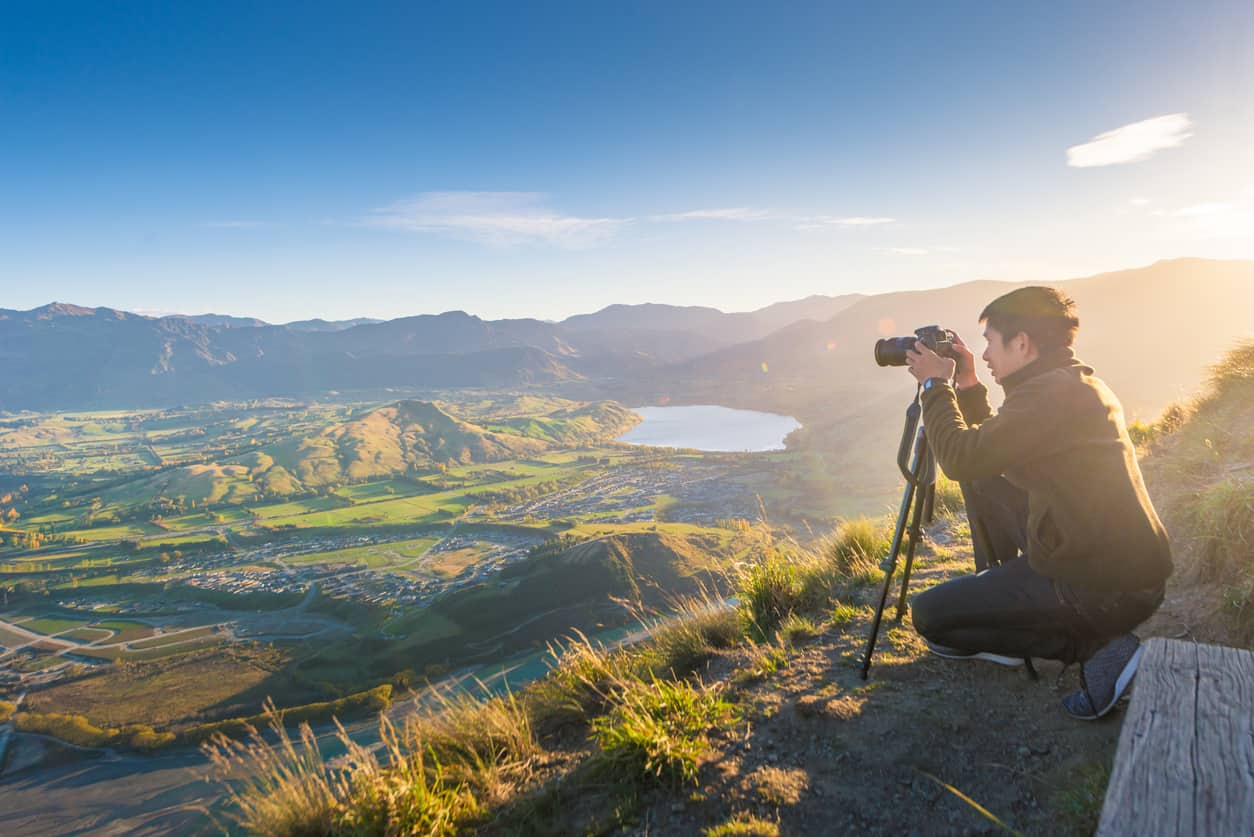
Though some polarizers are extremely expensive, you don't have to spend a mountain of money to get a high-quality filter that will help you take improved photos.
I've been testing Kenko Nyumon circular polarizer for several months, and it certainly hasn't let me down.
Kenko makes the best-selling filters in Japan, and their popularity makes sense - they are made with precision polished Asahi Japanese Optical Glass so you're sure to get clean, crisp, and clear results.
What's more, the filter has a slim profile alloy ring so it can be used with wide-angle lenses, yet won't cause vignetting.
No matter if you have a Nikon, Canon, Zeiss, Sigma, Tamron, or other major brand lens, Kenko has a circular polarizer for you!
Learn More:
- 4 Ways You Can Improve Your Photos This Weekend
- Step Up Your Landscape Photography Game With This Must-Have Filter
Editor's Tip: Get Kenko’s latest updates and access to promos for discounted gear. Click here to sign up.
Problem: You Have Neck and Shoulder Pain
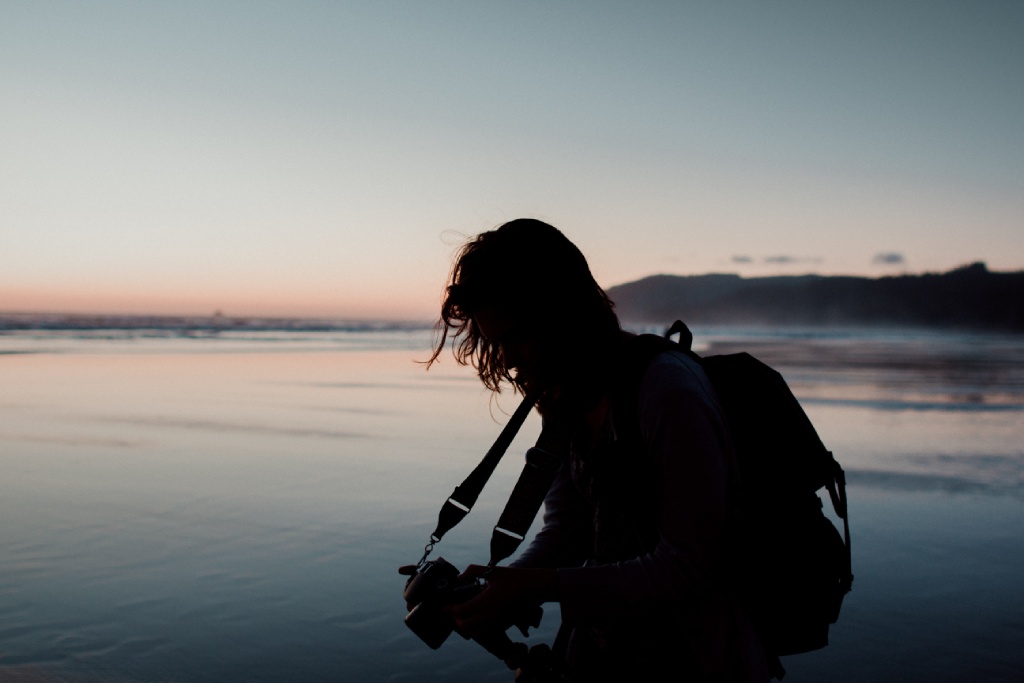 Photo by Ivana Cajina on Unsplash
Photo by Ivana Cajina on Unsplash
I don't know about you, but when I go out to take photos, I go out for hours on end. After all, I want to get my money's worth!
The problem with shooting for long periods of time is that you can get quite fatigued from having your camera slung over your shoulder.
That shouldn't be a surprise, either, because the camera straps that come with cameras are, in a word, terrible.
The flimsy material has no padding at all, so after a couple of hours of it cutting into your neck and shoulder, it's hard not to want to give up.
 Photo by Brandon Burk
Photo by Brandon Burk
The solution to this problem, is, of course, to get a better camera strap.
I know that a camera strap might not be the sexiest of photography accessories you can buy, but like a good tripod and a better lens, a quality camera strap will do you a ton of good.
I have a Holdfast MoneyMaker Solo, and it has been worth every penny I spent.
It's got a nice, big, padded shoulder pad that helps distribute the weight of my camera over a larger area of my shoulder, which means I don't get sore, even after hours of shooting.
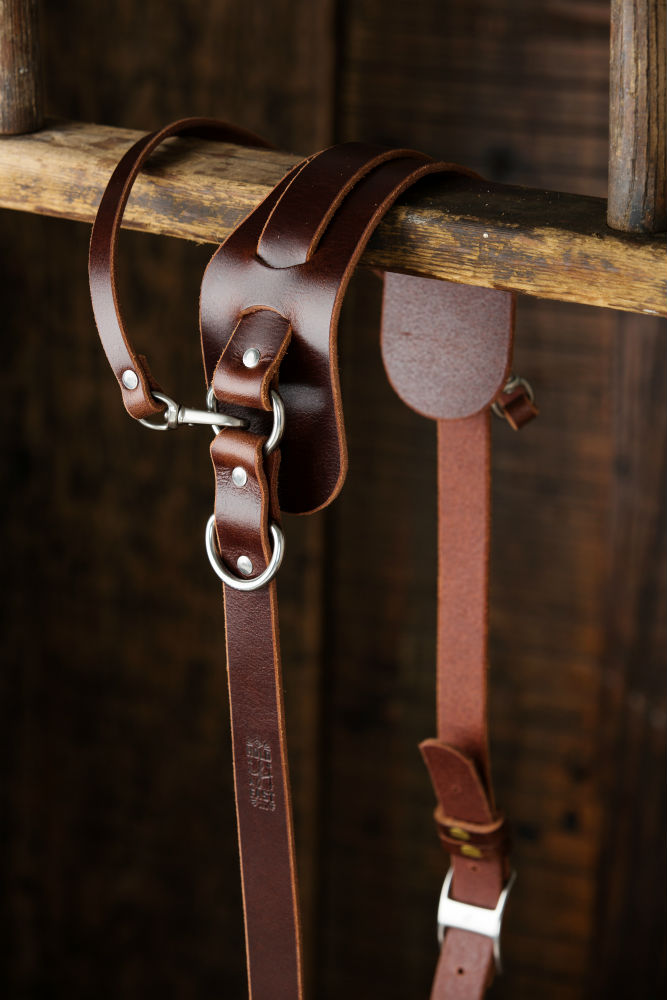 Photo by Brandon Burk
Photo by Brandon Burk
This MoneyMaker Solo has a stabilizer strap that keeps the shoulder pad in place, that way you don't have to be constantly fighting it to keep it in place.
Likewise, Holdfast has devised a belt anchor that secures your camera in place, that way it stays put no matter if you're walking or running, standing or kneeling. See what I mean in the video above.
Of course, you can't help but notice how beautiful this thing is, either.
Not that having a pretty camera strap is required to take great photos, but hey, you might as well look good, be comfortable, and have an ultra-functional camera strap all at the same time, right?!
Learn More:
- Awesome Photography Gear That Can Totally Change Your Workflow
- The Worst Mistake You Can Make With a New Camera
We Recommend
Crazy Camera Lenses You Won't Believe are Real
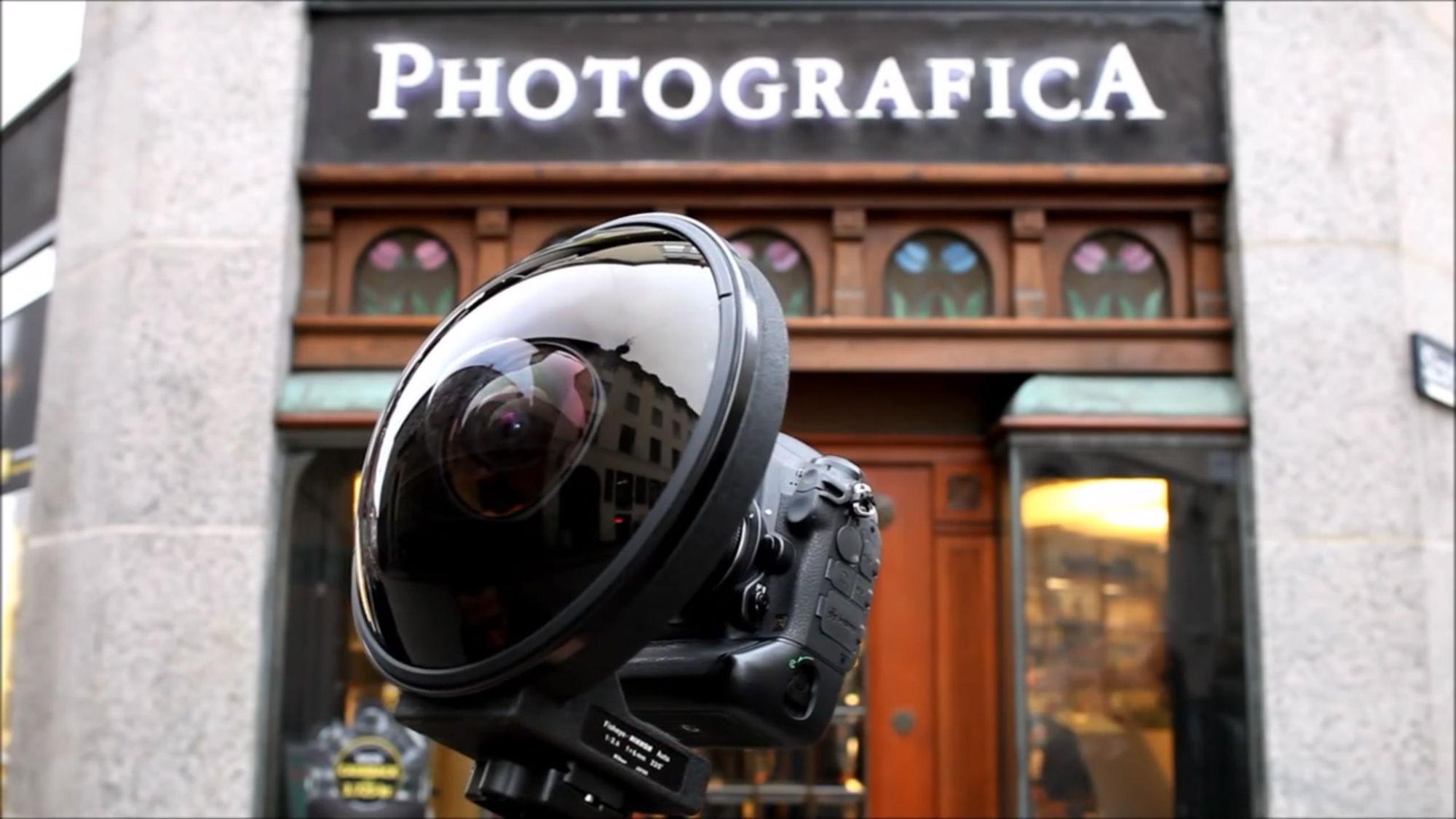
YouTube/Screenshot Photografica
Whether they've got crazy focal lengths, crazy angles of view, crazy-fast apertures or some other weird feature, these lenses take the cake for some of the strangest lenses ever made.
Most aren't available for purchase anymore, or if they are, they command a hefty price tag.
But some are still in production and can be ordered right now, today (but still for a hefty price tag).
Without further ado, check out the craziest camera lenses ever made.
Sigma 200-500mm f/2.8 APO EX DG
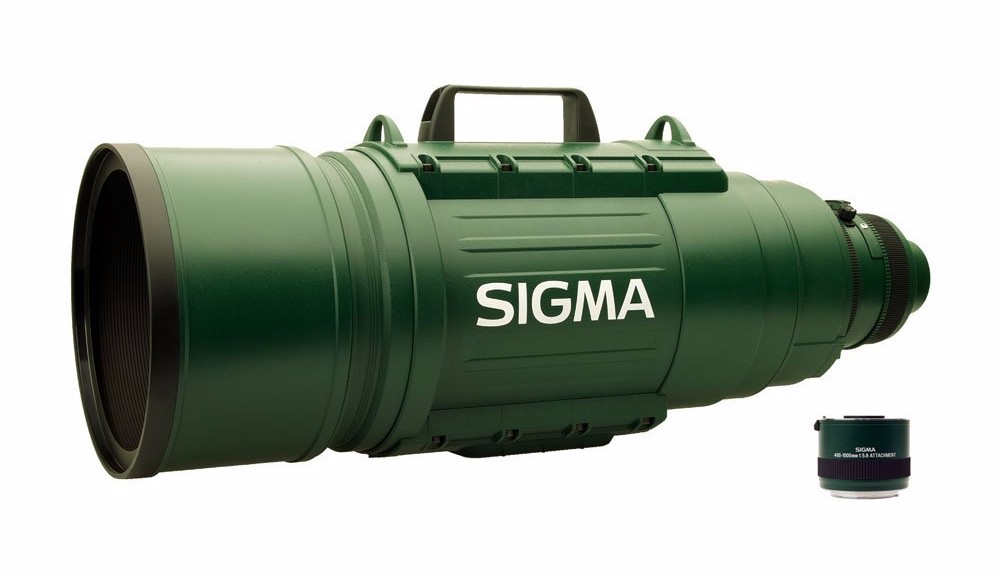
If you're looking for a small, discreet telephoto lens, this is definitely not it.
This giant Sigma is still in production and can be purchased for just under $26,000 (you get free shipping, though!).
Weighing in at nearly 35 pounds and almost 29 inches in lengths, this is one heck of a lens, that, with its military green paint, looks more like a rocket launcher than a camera lens.
You can even use the included 2x teleconverter to reach the 400-1000mm focal range if 500mm isn't enough.
It's got its own battery system to power the autofocus and zoom. It's also got a built-in LCD so you can easily read the focusing and distance numbers.
For wildlife, astrophotography, and sports photographers, this lens will surely get you some up-close and detailed shots!
Learn More:
Canon EF 1200mm f/5.6L USM
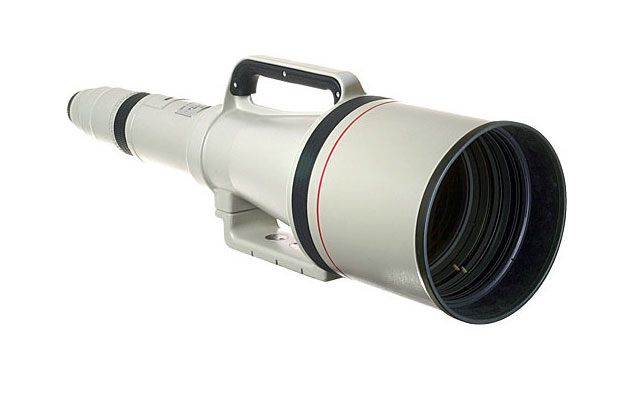
Image Courtesy of Canon Rumors
When this lens was originally developed in the 1980s, it was for Canon's FD mount cameras. Towards the late 80s they reappeared with an EF mount, but both times in small numbers.
Because of their enormity, each lens was handmade, which accounts for the small production numbers over the years.
That also accounts for the huge price tag of $80,000 back in the day. Yikes.
Most of these lenses were purchased by news organizations, wire services, and sports magazines to cover worldwide events. A few even went to government agencies like law enforcement who wanted a long lens to conduct surveillance.
These lenses are no longer in production, but every so often you'll find rumors on the internet that one is up for sale - for a giant price, too.
Canon 5200mm f/14 Mirror Lens
This enormous lens uses a host of mirrors that stretches its focal length to a precise 5,150mm. According to Canon's information sheet on this behemoth, they recommend using it for photographing objects that are between 18-32 miles away. Yes, miles.
In fact, its minimum focusing distance is 120 meters!
This isn't exactly a lens you can carry around with you, either, considering it weighs well over 200 pounds and is almost 76 inches long.
It's hard to wrap your mind around that sort of size, but if you watch the video above by HDCAMAN, you can get a feel for the sheer size of this thing.
Leica Noctilux-M 50mm f/0.95
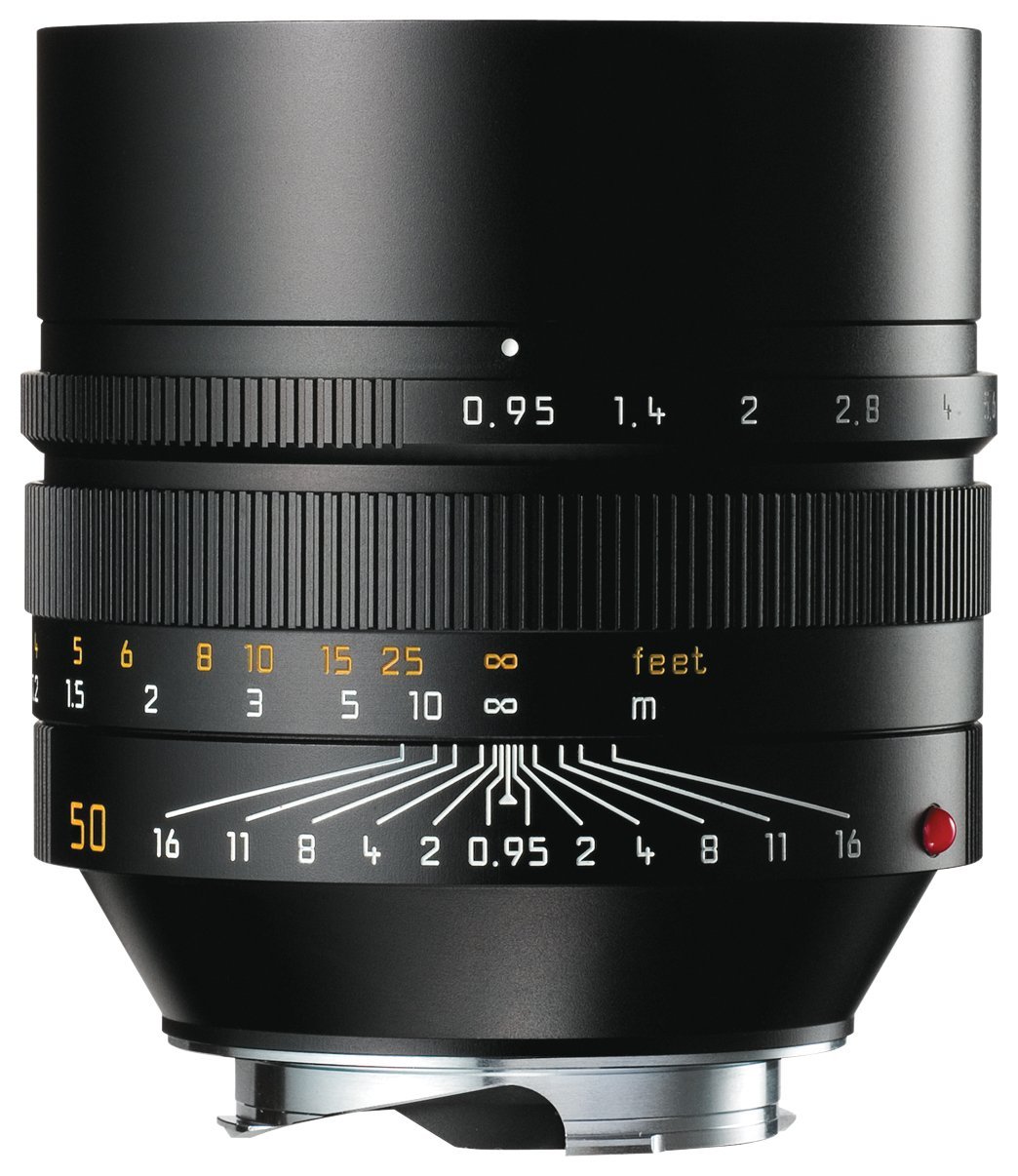
Way back in the 1970s, Leica introduced the Noctilux-M 50mm f/1 ASPH. At the time, it was one of the fastest lenses available.
Today, Leica offers an updated version of the world's fastest aspherical lens - the f/0.95 shown above.
It's called the "King of the Night" for obvious reasons...
Naturally, it also produces an incredibly shallow depth of field, just in case you want to take a portrait in the dead of night with a super blurry background.
This lens is actually still available, but doesn't come cheap. Brand new, you're looking at shelling out a shade under $11,000.
Learn More:
Carl Zeiss 50mm Planar f/0.70
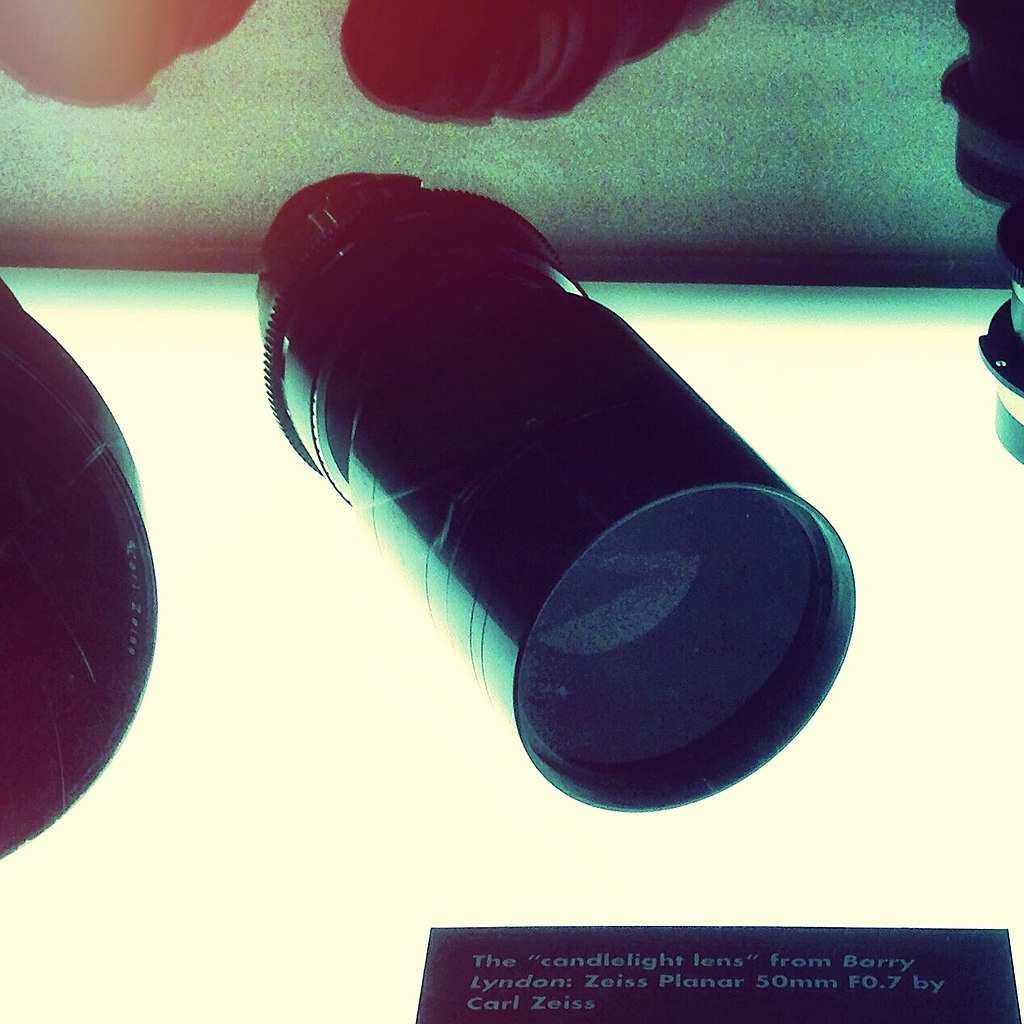
By SpeckledJim (Own work) [CC BY-SA 4.0 (http://creativecommons.org/licenses/by-sa/4.0)], via Wikimedia Commons
The next time you're at a dinner party and want to impress the other guests with your knowledge of rare camera lenses, you might mention this Carl Zeiss lens.
This little guy was made specifically for one purpose - to be the first lens to photograph the backside of the moon. Given that detail, it's understandable why it has a maximum aperture of f/0.70!
At that speed, this is the fastest lens ever made...
Another fun fact is that Stanley Kubrick used this Zeiss in his film Barry Lyndon. Who knew?!
Nikon 6mm f/2.8 Fisheye
Perhaps the most ridiculous looking lens on this list is the Nikon 6mm f/2.8 Fisheye.
The original version of this lens - which was released in 1969 - was the first lens in the world to offer a 220-degree viewing angle.
That lens was an f/5.6, so the modern f/2.8 version is not only much faster, but it doesn't require you to lock up the mirror like its predecessors did.
If you're wondering how the heck you mount a filter to this thing, you can't...
Instead, Nikon created an in-lens filter system with five different colored filters for creating artistic effects.
What These Lenses Have in Common...
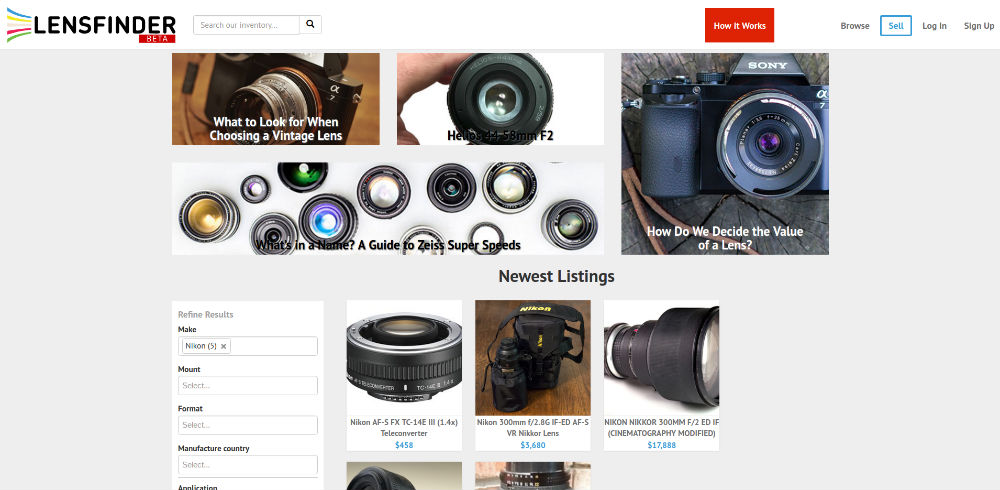
Apart from being odd, crazy, or expensive (or all of the above), what these lenses have in common is that they're rare, and in some cases vintage.
The great thing about vintage glass is that photographers like you and me take care of our gear, so there are all sorts of deals to be found on quality, pre-owned glass.
I'm of course talking about more mainstream lenses here, but hey, you never know when a crazy lens like one of those described above might pop up somewhere online!
Since we all know how expensive photography can be, buying quality used lenses is a great way to save some money. Heck, you might even be able to buy a couple of lenses for the price of one new one.
If you're in the market for new glass, there's no better place to look than Lensfinder.
Lensfinder is a marketplace by photographers, for photographers. Not only is it easy to search for the lens you want, but it's also easy to buy.
You can communicate with other Lensfinder members (creating an account is free) right within the platform. And when you find the lens you want, you pay via PayPal so everything is secure.
What's more, Lensfinder has fraud alerts built right in as well as a rating system so you know just how reputable each seller is.
There's lenses of all sorts and kinds (sorry...no Sigma behemoths at the moment), and with more and more folks choosing to use Lensfinder as their platform for buying and selling lenses, more inventory is constantly being listed.
I've used Lensfinder a couple of times already, and I have to say that it's been precisely the kind of experience I want - quick and painless!
Visit Lensfinder to search their inventory of pre-owned lenses and see what sort of lenses you can find.
We Recommend
Every Photographer Needs a 35mm Lens
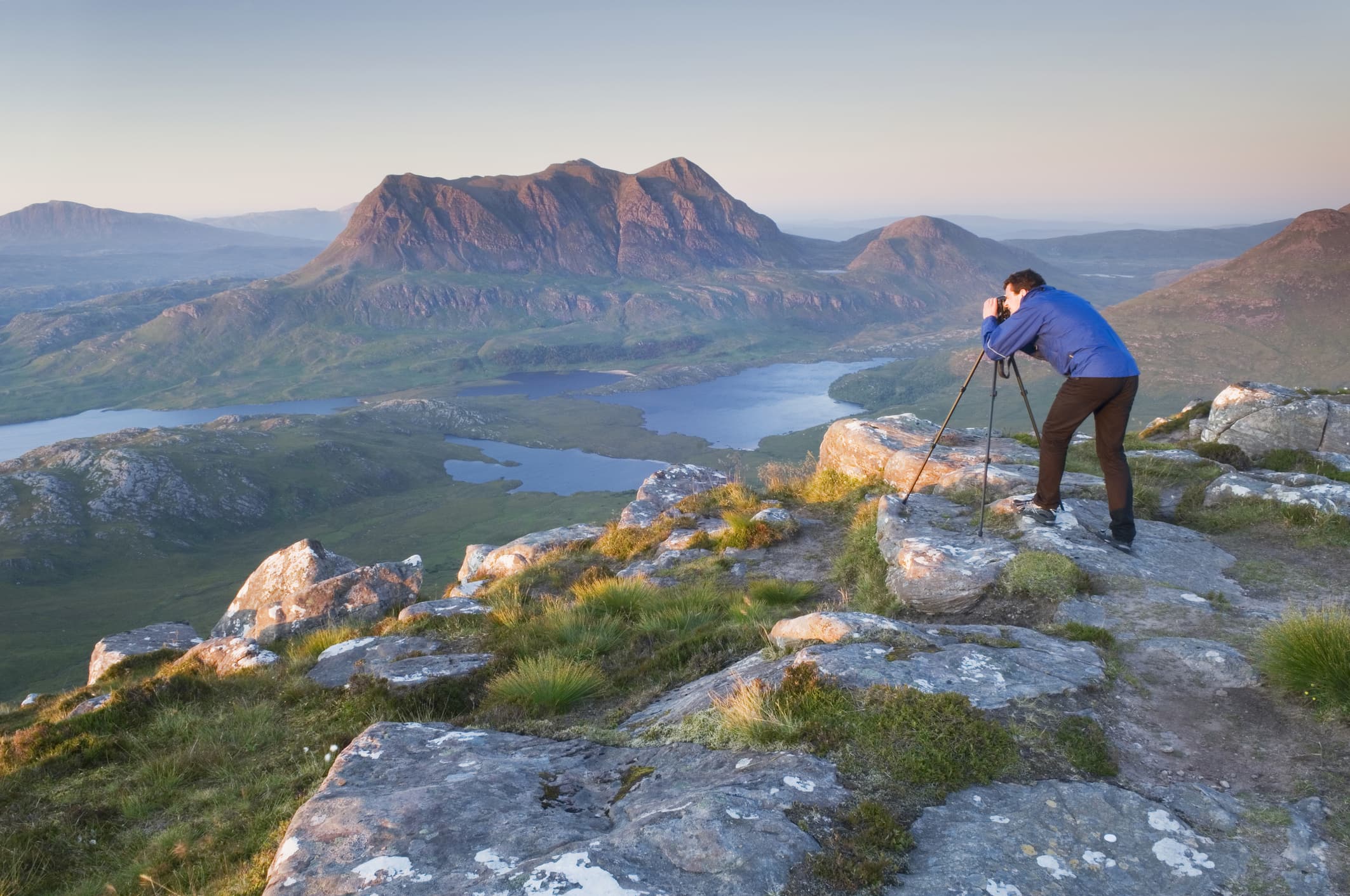
When you're buying lenses, there's a lot to consider.
Clearly, you need glass that fits in with the type of photography you do - a telephoto lens, for example, would be great if you photograph wildlife, but not so much if you like macro work.
You also need to buy quality glass, which, although it can be quite spendy, it's worth it to have the improved performance of a great lens.
Speaking of great lenses, one of the best focal lengths that you can have in your bag is a 35mm lens.
Let's review a benefits of 35mm lenses.
Editor's Tip: Don't buy that bargain lens before reading these essential tips.
Benefits of 35mm Lenses - They're Sharp
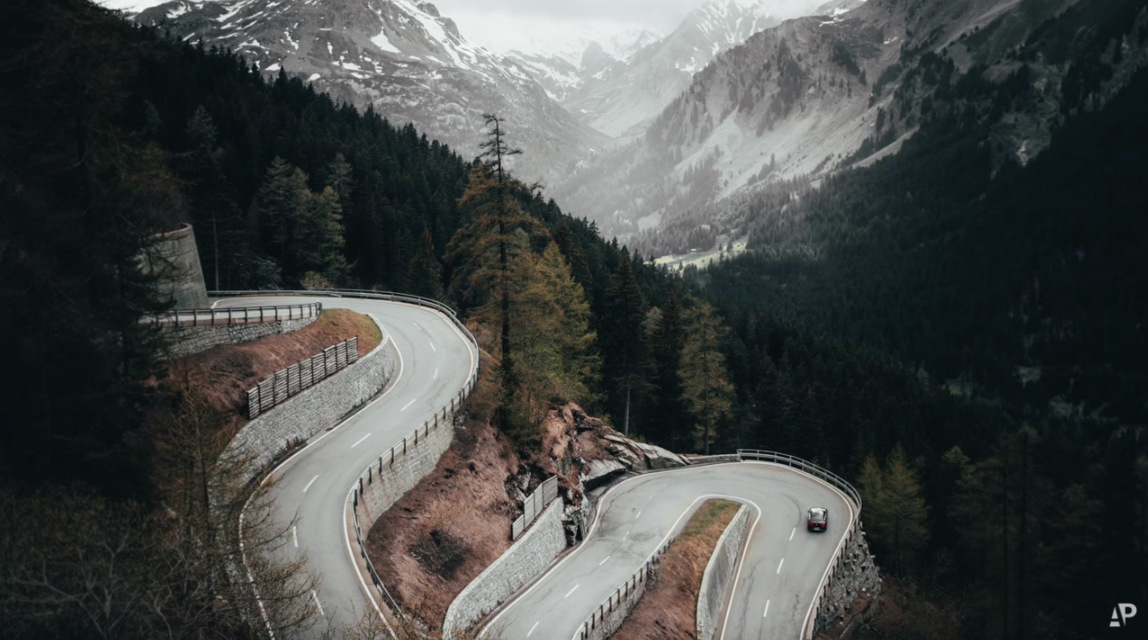 YouTube Screenshot/Alen Palander
YouTube Screenshot/Alen Palander
Since 35mm lenses are primes - they have a fixed focal length - there are fewer moving parts and elements inside the lens.
That means that the light has fewer barriers to make it through the lens and to your camera's sensor, resulting in clear, sharp images.
Granted, every lens has a sweet spot, or the aperture at which they perform the sharpest. But from one end of the aperture range to the other, a prime lens like a 35mm is going to give you sharper results at any aperture than most zooms lenses will.
That's true whether you're shooting landscapes, portraits, cityscapes, or something in between.
Learn More:
35mm Lenses are Versatile
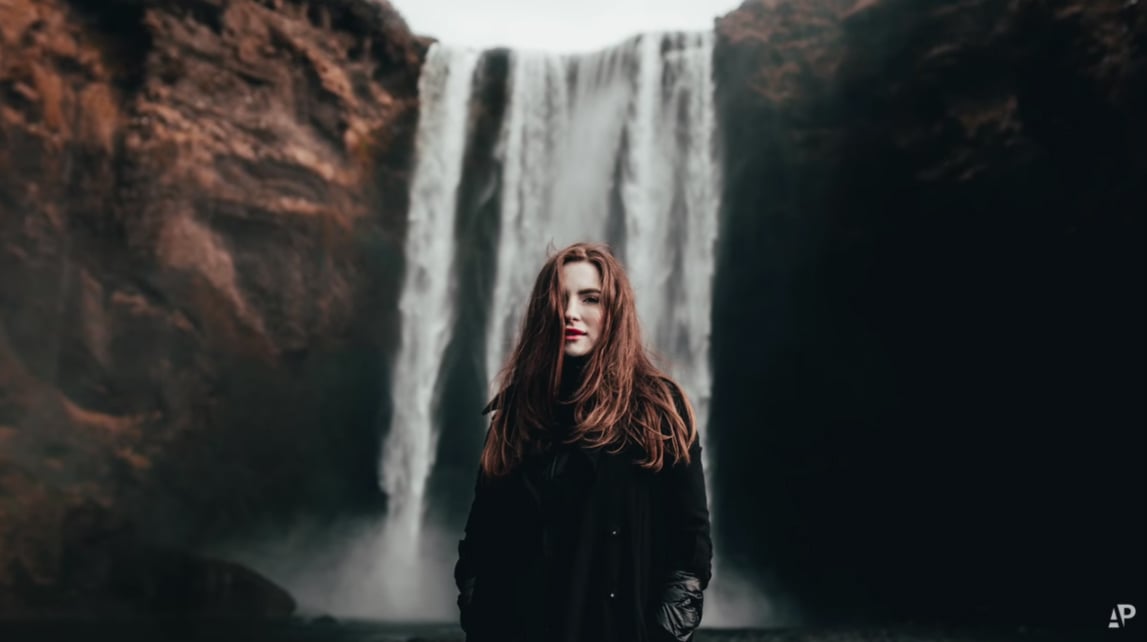 YouTube Screenshot/Alen Palander
YouTube Screenshot/Alen Palander
As noted above, you can shoot virtually any subject with a 35mm lens and get high-quality results.
That's because 35mm is a versatile focal length whether you have it paired with a full frame or crop sensor camera.
On a full frame camera, a 35mm lens produces images that look very similar to what we see with our own eyes.
As a result, these images have a familiarity and a comfort about them whether it's a portrait of a friend or a snapshot of an interesting building.
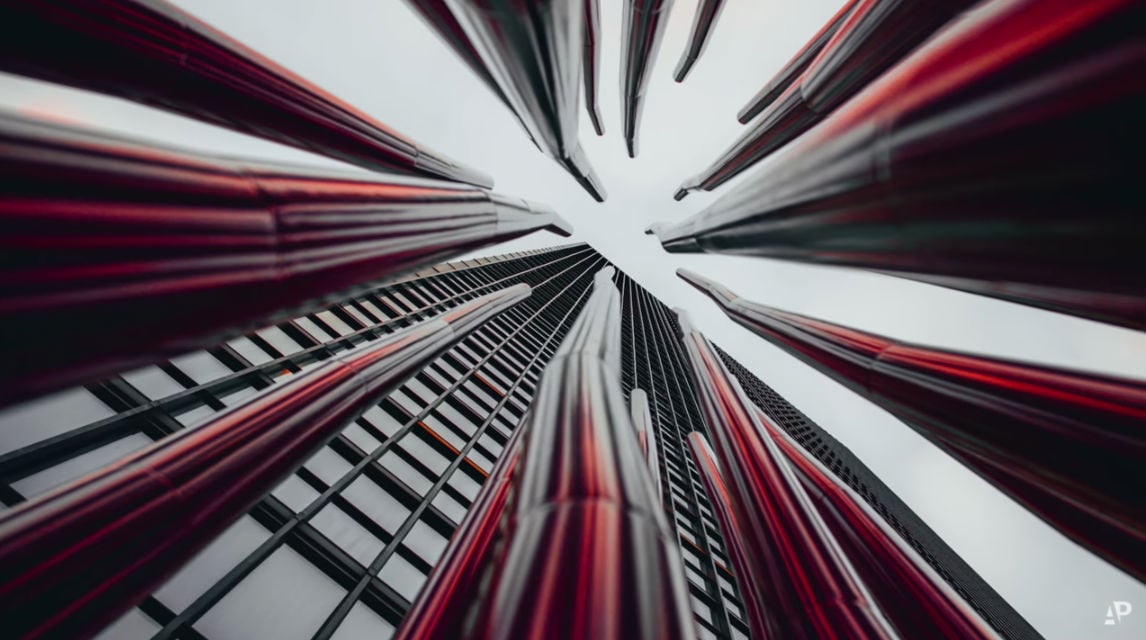 YouTube Screenshot/Alen Palander
YouTube Screenshot/Alen Palander
On a crop sensor camera, a 35mm lens is effectively "zoomed in," and performs like a much longer lens (in the 53-56mm range on most crop sensor cameras).
At that effective focal length, a 35mm lens is perfect for portraits, more intimate landscape photos, and even wildlife or sports photography in which the subject isn't a great distance away.
In fact, for full frame and crop sensor shooters, a 35mm lens could very well be the only lens you carry with you on certain outings - it's that versatile!
Editor's Tip: The larger a lens's aperture, the more expensive it will be. Upgrade your 35mm lens to a faster, more capable version without breaking the bank.
Use a 35mm Lens to Get More Creative
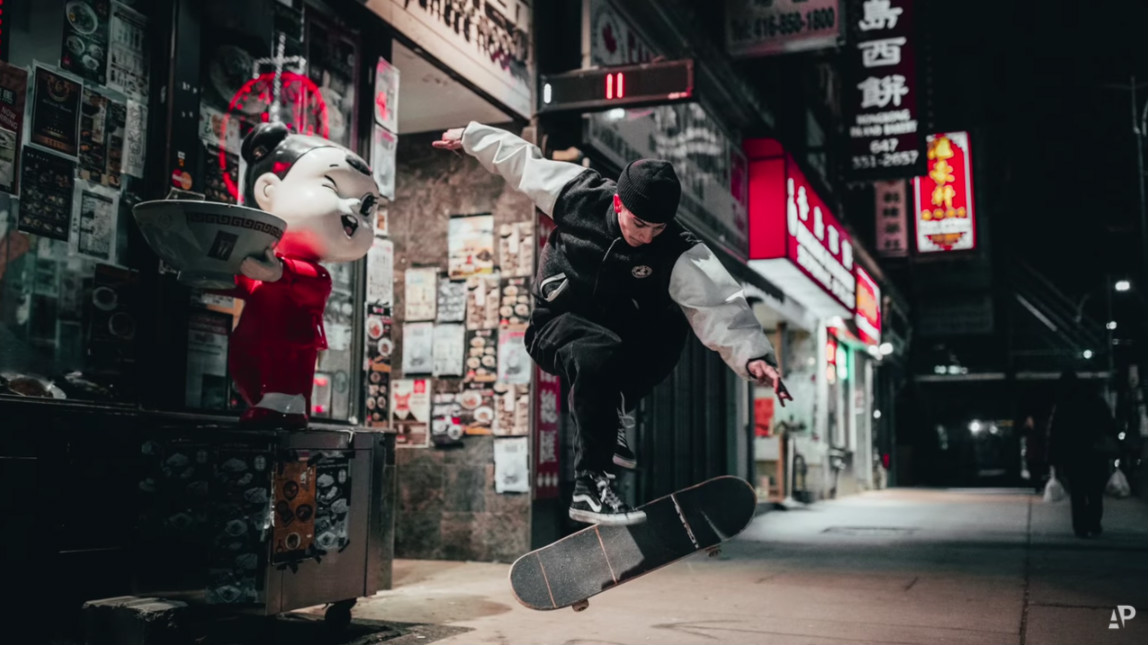 YouTube Screenshot/Alen Palander
YouTube Screenshot/Alen Palander
Perhaps one of the best benefits of 35mm lenses is that they allow you to get more creative than some other lenses.
That's especially true if you pick up a 35mm lens with a very wide aperture, like f/1.4.
With such a large aperture, a 35mm f/1.4 not only allows you to create a beautifully shallow depth of field for interesting portraits, but it also allows you to shoot in low-light conditions without ramping up the ISO.
That, in turn, means that you get cleaner shots with less noise.
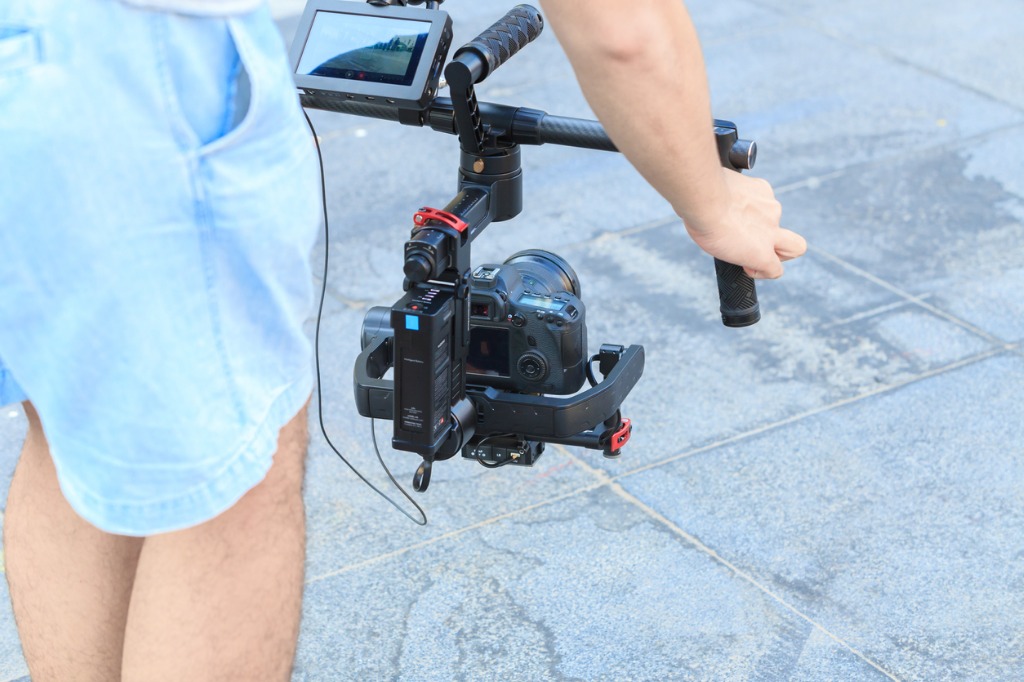
On top of that, wide-aperture 35mm lenses are great for videography.
These lenses aren't exactly light when compared to something like a 50mm f/1.8, but they're still small enough and light enough that you can easily shoot video without feeling like you're carrying around an enormous lens.
Learn More:
Final Thoughts
The benefits outlined above are just a few things you can expect to enjoy with a 35mm lens.
For more insights and a few tips on how to use a 35mm lens, check out the video above by Alen Palander.
He presents some compelling arguments in favor of shooting with this lens and has some beautiful sample images to show as well.
Editor's Tip: Short on cash? Fund a new lens purchase by selling your old lenses!
We Recommend
How to Be a Better Photographer - 5 Signs You’re Making Progress

photo by recep-bg via iStock
I love photography. But man, is it tough to master!
In fact, I’m not sure anyone truly masters photography. Even the greats will tell you that they never stop learning new things about the medium.
So, when you’re a beginner photographer, things can get a little overwhelming and you can feel like you aren’t really making much headway.
But if you stop and take stock of what you’re doing, you might see signs of progress…
If you’re wondering how to be a better photographer, do a self-assessment and see where you’re at with each of the following.
How to Be a Better Photographer: Learn How to Use the Histogram

If you check the LCD after every shot, you’re doing it wrong…
But if you regularly consult your histogram to get an idea of the exposure of your images, you’re definitely on the right track.
Where the LCD on your camera isn’t a reliable output of what the shadows, midtones, and highlights actually look like in the photo, a histogram is a super accurate representation of those qualities.
That makes the histogram a hugely important tool for taking improved photos. Using it also means that you’re more likely to get the exposure right in-camera, and that, in turn, means less time trying to fix exposure issues in post-processing. Nice!
Learn More:
How to Be a Better Photographer: Take Photos, Not Snapshots

photo by Nathan_Allen via iStock
Okay, so snapshots are fine, but as you learn the tricks of the trade in photography, it’s important to have an end-goal in mind of creating a photograph that reaches out and grabs people.
That is, a snapshot might be something you keep on your phone, but a photograph might be something you’re so proud of that you have it printed so you can hang it on your wall.
A photograph requires planning and preparation, the right camera settings and composition, a strong subject, an interesting point of view, great lighting, and so on and so forth.
It’s a lot of work…

Photo by Gemma Evans on Unsplash
But all that work pays off when you have a print that shows off your burgeoning prowess as a photographer, right?!
Personally, I enjoy having my prints made on canvas, and it’s something I highly recommend to you as well.
The slight texture of canvas adds an additional layer of interest to the shot. Canvas is just a classic substrate for photos, too.
If you get a canvas print, might I suggest you work with CanvasHQ.
I’ve gotten dozens of prints from them over the years (most of them of my son, shown above), and I’m astonished by the quality of their work each and every time.
Ready to see your photographs as a print? Get the process started now.
In fact, I did a secret shopper canvas test just last week, and CanvasHQ won hands-down. It really wasn’t a contest, either!
Their process of ordering a print was easy, they sent me a free digital proof, they offer touch-up services, have fast shipping...it’s the total package!

Part of the reason they won so handily is the quality of materials they use. Archival canvas, high-grade inks, handmade frames...you can’t go wrong with that!
As your skills progress, don’t be afraid to show off your work. To show off your work, you need a printer you can trust. That printer can most definitely be CanvasHQ!
Learn More:
- Things to Consider When Having Your Photos Printed
- Beginner Photography Mistakes and Tricks for Avoiding Them
How to Be a Better Photographer: Chase Good Light

photo by vkbhat via iStock
A surefire way to improve the quality of your photos is to seek out better lighting.
That is, the light at noon on a clear, sunny day is definitely not the same quality you find just after sunset.
The former is very harsh and bluish, and can create intense shadows or wash out the scene, as shown above.

photo by skynesher via iStock
Test it out for yourself - photograph a landscape at midday and the same landscape early in the morning or late in the evening when the sun is rising or setting.
The difference is quite incredible!
Learn More:
- 9 Spectacular Sunsets That Highlight the Beauty of Golden Hour
- The Best Lightroom Tools for Creating Amazing Sunset Photos
How to Be a Better Photographer: Manage the Light
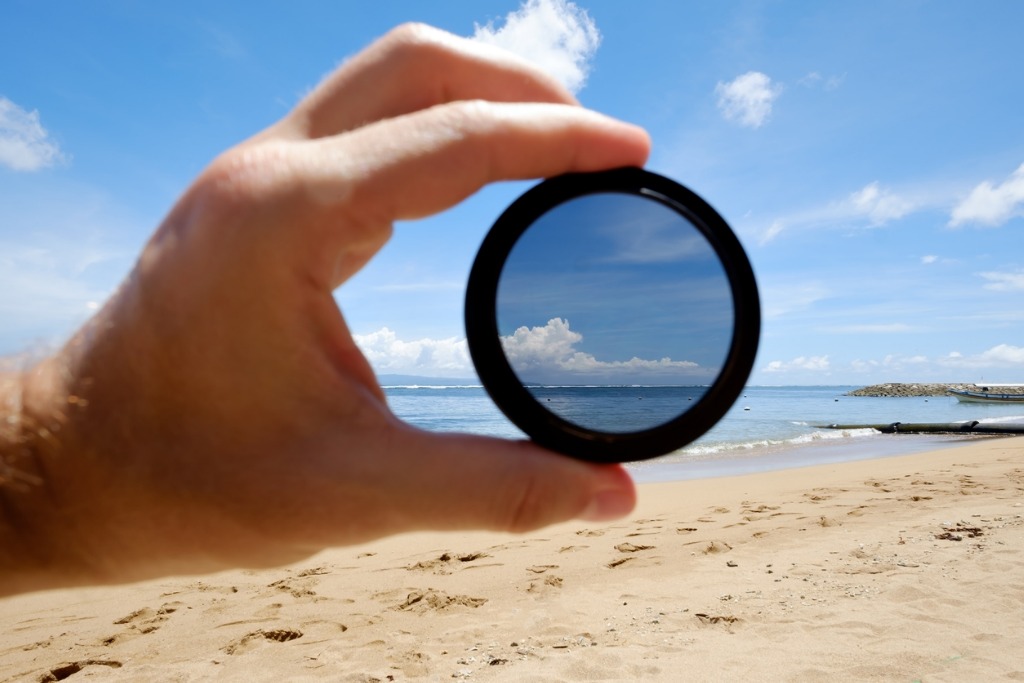
photo by Koldunov via iStock
If you want to get the best results when you take photos, you have to learn how to manage the light. After all, you can’t always be out at golden hour taking photos of its rich, golden light.
To manage light, you need lens filters. And if you ask me, the most useful filter is a polarizer.
A polarizing filter not only helps eliminate glare off of water and other non-metallic surfaces, but it also helps reduce atmospheric haze.
On top of that, polarizing filters also boost the contrast in the sky, so the clouds appear to be whiter and the atmosphere appears to be bluer.
The result of all this is certainly a much-improved photo.
I’ve been using the Kenko Nyumon Circular Polarizer for the last few months, and I have to say that I’ve been impressed.
This filter works like a charm thanks to its high-grade materials and high-quality construction.
The filter glass is precision polished for clear, sharp results, and the slim, low-profile alloy ring reduces the chances of vignetting.
Editor's Tip: Get Kenko’s latest updates and access to promos for discounted gear. Click here to sign up.
What’s more, Kenko has versions available for a wide range of lenses from Sony, Fuji, Canon, Nikon, and other major brands.
It’s budget-friendly as well, so it’s a win-win all the way around!
Learn More:
- Step Up Your Landscape Photography Game With This Must-Have Filter
- 4 Ways You Can Improve Your Photos This Weekend
How to Be a Better Photographer: Get Out of Full Auto
 photo by arisara1978 via iStock
photo by arisara1978 via iStock
Ask any photographer, and they’ll likely tell you that they first learned photography in full auto mode.
So it’s not like full auto is bad…
But if you want to be a better photographer, it’s time to ditch full auto and start taking more control over how the camera behaves.
You can do that in a couple of ways:
- For still subjects like landscapes or portraits, use aperture priority mode (A or Av on the camera dial). This gives you control over the aperture, which also gives you more control over the depth of field in the shot.
- For action shots like wildlife and sports, try shutter priority mode (S or Tv on the camera dial). This gives you control over the shutter speed, which allows you to control whether motion is blurred or frozen in the shot.
You can also try program mode (P on the camera dial), which prioritizes the ISO setting, though you can override the aperture and shutter speed the camera chooses, which gives you even more control over the exposure of the shot.
Of course, manual mode is floating around out there too. It’s not as big and scary as you might think it is, either.
The point is that better photos result from you having more input, not the camera. So if you’re still in full auto, it’s time to get out of your comfort zone and take more control over how the camera performs!
Learn More:
- Best Camera Settings for Landscape Photography
- Best Camera Settings for Portrait PhotographyBest Camera Settings for Portrait Photography
How to Be a Better Photographer: Use Better Lenses

photo by MarioGutivia iStock
Like full auto mode, the kit lens that came with your camera is a perfectly fine learning tool. But it’s not exactly a fantastic lens, either.
If you want better photos, you need to invest in better lenses. The problem is that good lenses can be hugely expensive.
That’s why you should buy used!
photo by Deagreez via iStock
Buying used lenses can be tricky if you don’t know where to look. Places like Craigslist can be a hotbed for scams when it comes to buying lenses, and eBay can be difficult to use to find the lens you want.
Instead, give Lensfinder a try. It’s where photographers can go to buy and sell lenses, so it’s a nice little community of like-minded folks that help make the process of buying and selling used glass super easy.
photo by PeopleImages via iStock
Just type in the lens you’re looking for, and Lensfinder will present you with all the matches. You can peruse them, ask the seller questions, and purchase a lens all right within the Lensfinder site.
Not only is it easy, but it’s less expensive than paying all those eBay fees, and since Lensfinder has built-in fraud protections and a rock-solid feedback system, you can rest easy that the lens you buy will be as described.
Search for lenses that will fit your camera.
Best of all, since used glass is less expensive, you might even be able to afford a couple of lenses, which will only expand your creative abilities for taking awesome photos.
What’s not to like about that?!
Learn More:
We Recommend
How to Buy and Sell Used Lenses
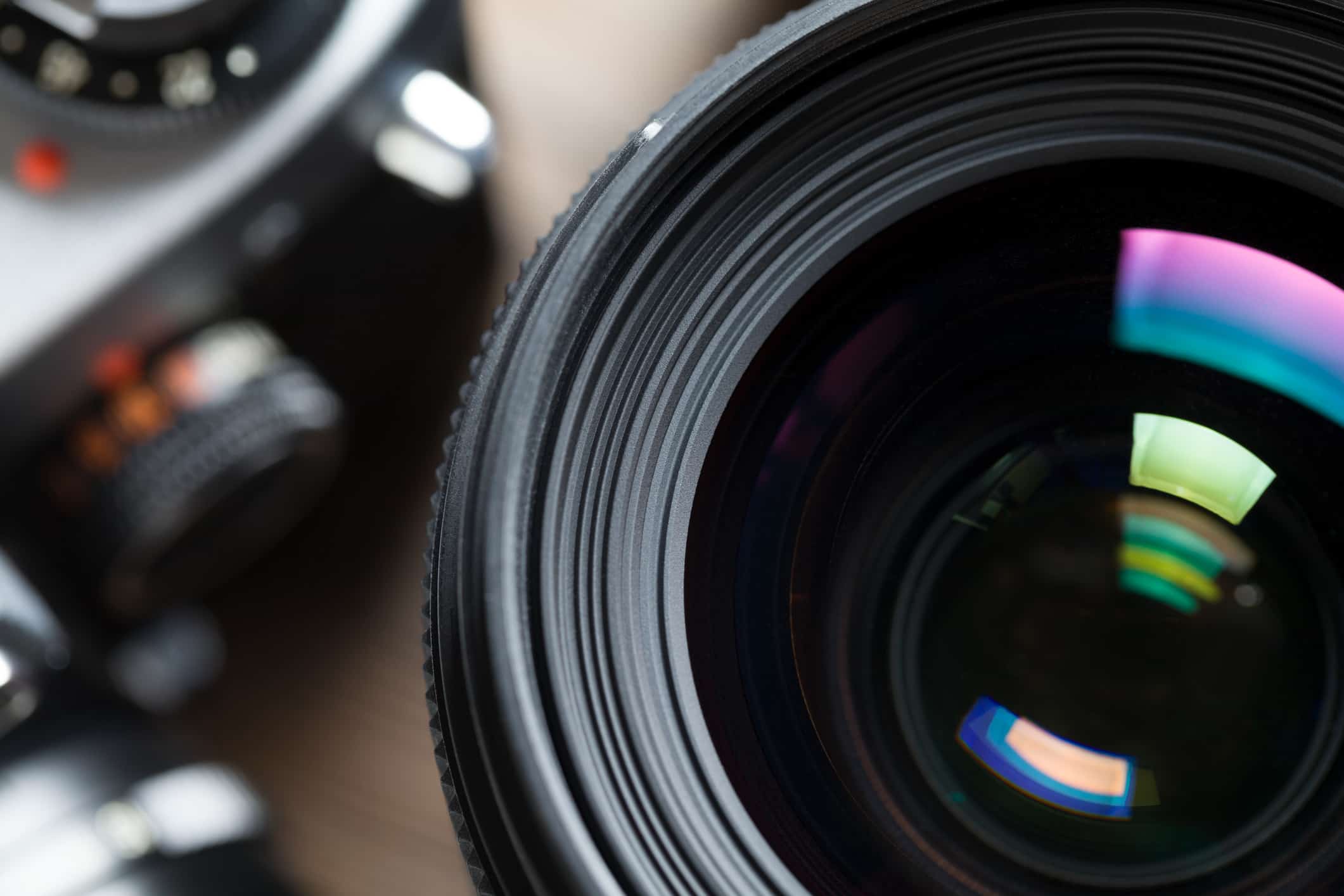
You've heard the horror stories of buying or selling used lenses, I'm sure...
It goes something like this: someone sees an incredible deal on a great camera lens on Craigslist, they inquire about it, the seller says all the right things, so the lens is purchased.
Then, when the lens comes in the mail, it's not at all as it was described.
The buyer contacts the seller but gets no response, and since the transaction occurred on Craigslist, there's really no recourse.
If only there were a better way to buy and sell used glass...
Now, there is!
Try Lensfinder

I discovered a brand new website called Lensfinder that really caught my attention because it's a used lens marketplace for folks like you and me that want quality glass but want a great deal, too.
The key term there is marketplace...
Lensfinder doesn't sell lenses itself. Instead, they're dedicated to creating a community in which photographers can buy and sell used lenses with confidence.
There's a few things about this marketplace that photographers will really enjoy.
Lensfinder is By Photographers, For Photographers

First, it's not a free-for-all. To list a lens for sale, sellers have to first sign up for a Lensfinder account. The account is free, but people that aren't serious about selling lenses (or those that might seek to hoodwink someone on a deal) are less likely to go through the steps to create an account.
Second, Lensfinder is nothing but lenses. If you want a lens, this is the place to come as you don't have to sort through a million other items you don't need. Similarly, if you want to sell a lens, what better place than a website that specializes in buying and selling nothing but lenses?
Lensfinder Makes Communication Easy
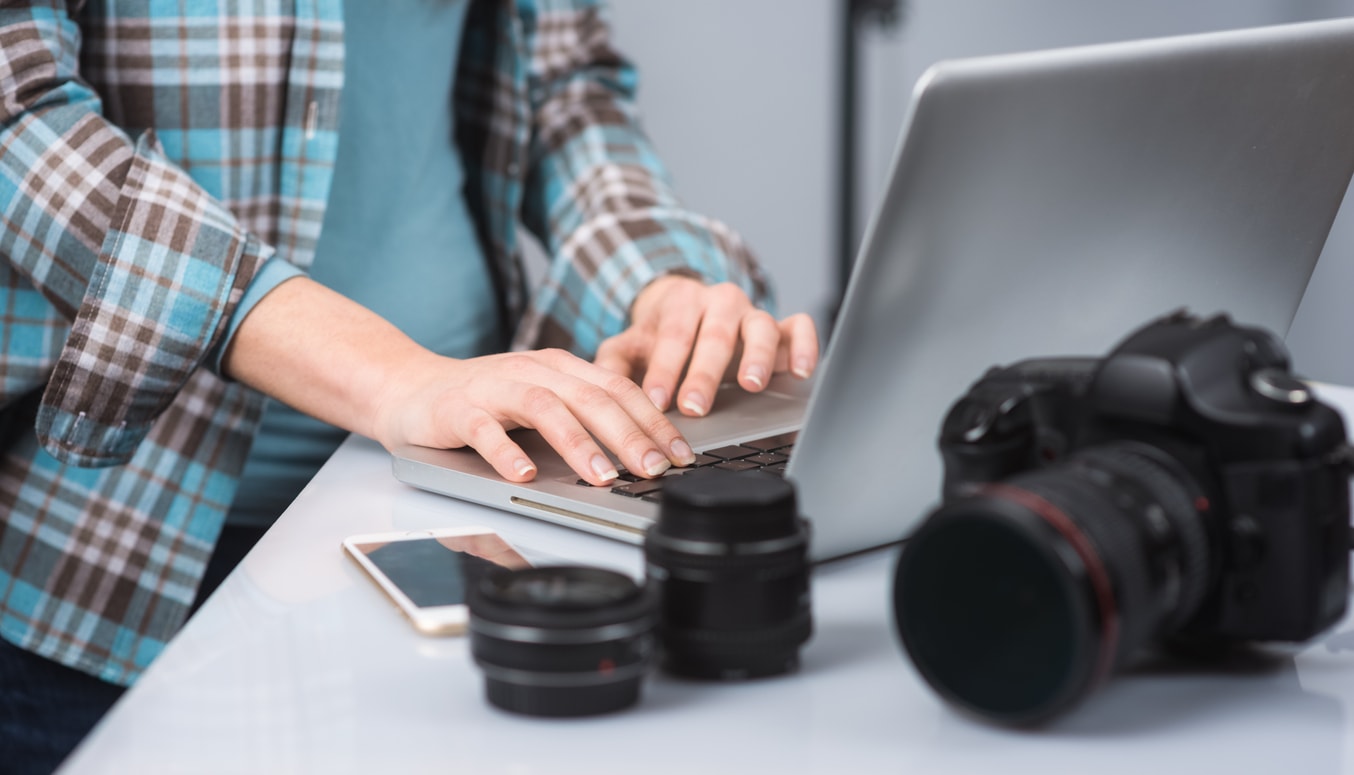
Something else that I like about Lensfinder is that buyers and sellers can communicate directly with one another via Lensfinder's messaging system. That means no giving out phone numbers or email addresses to strangers - communicate right there on the website to ask or answer any questions.
Lensfinder has a seller feedback system, too, that way people that conduct business on the site can rate one another on transactions.
That means you'll know pretty quickly if a seller has a solid reputation or not!
Lensfinder Makes Payment Easy, Too
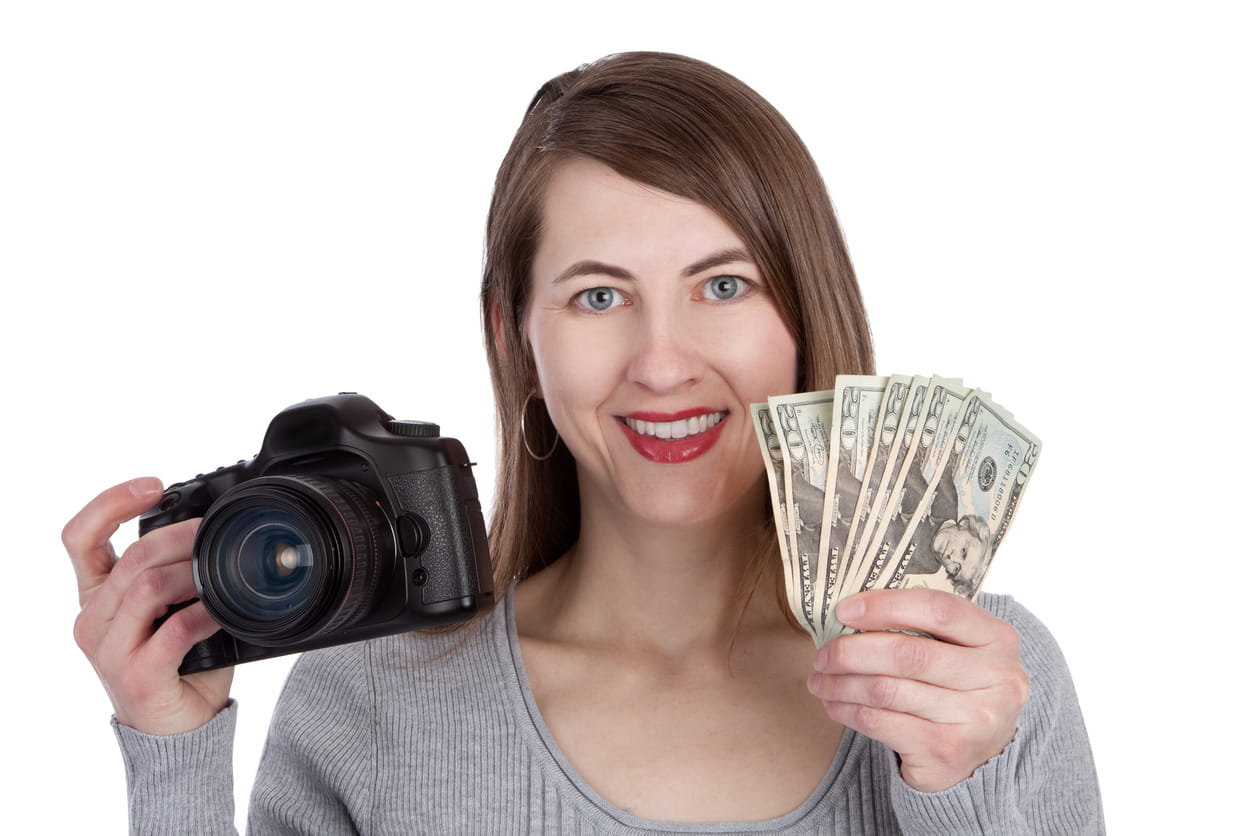
When it comes down to it, you want to buy and sell lenses on a platform that makes sending and receiving money a breeze.
Lensfinder does just that with PayPal as the preferred method of making the transaction.
Soon, though, Lensfinder will also support wire transfers and credit card payments to accommodate a wider range of payments.
And when it comes to paying Lensfinder, you don't have to worry...
There's no listing fees, so you can advertise your used glass all you want!
If your lens sells, a 3.99% transaction fee is included, but if you decide you don't want to sell your lens or your lens doesn't sell, just pull the listing, and you don't have to pay a thing.
Why Not Use eBay?
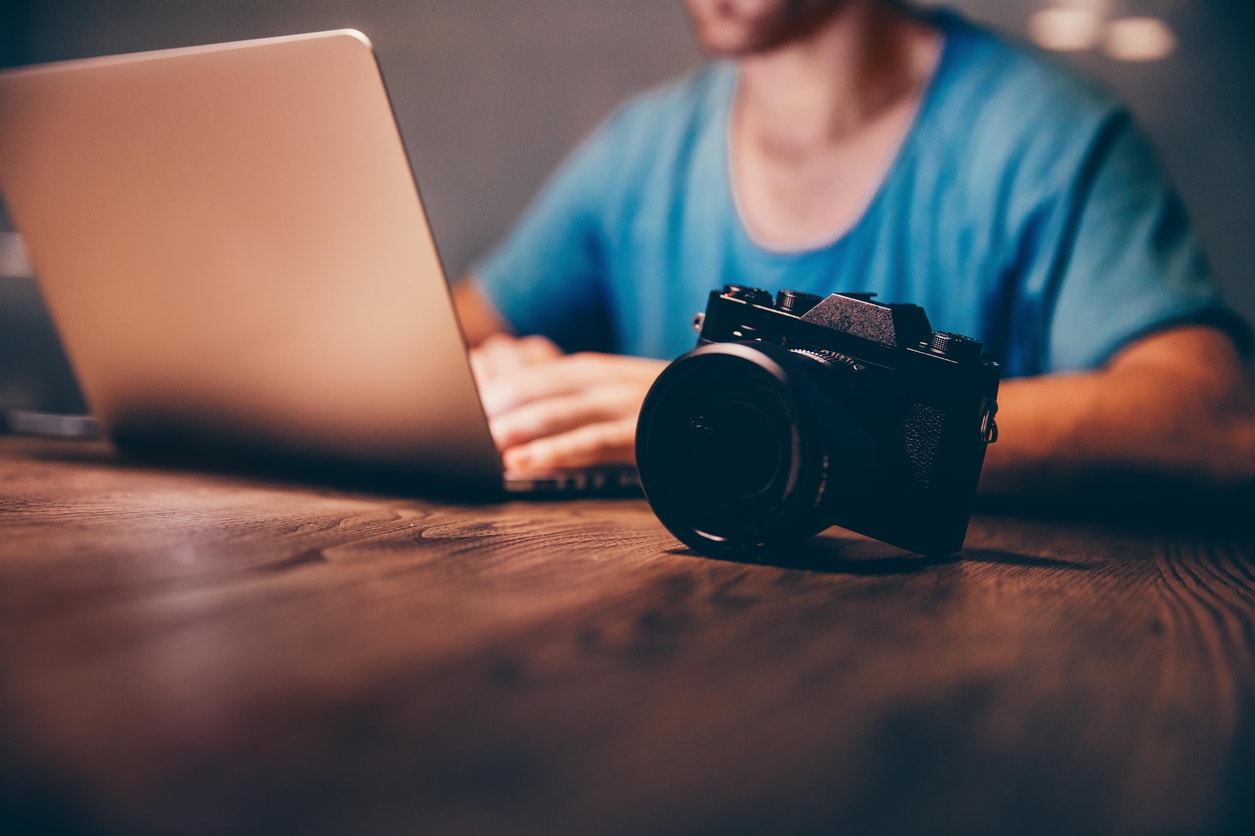
I'm sure some of you will wonder why you should use Lensfinder when you can just use another marketplace - eBay.
For starters, eBay's transaction fees are higher than Lensfinder's, so if you want more bang for your buck, Lensfinder is the way to go.
Speaking of which, I'd argue that since Lensfinder specializes in lenses, you might just find that you can get more money out of your used glass than you could on eBay.
After all, folks on Lensfinder are hobbyist and professional photographers and cinematographers, so rather than dealing with a bunch of potential buyers that have no idea what they want or what your lens is worth, you deal with knowledgeable buyers and sellers on Lensfinder.
What's not to like about that?
Besides, as I mentioned above, listing your glass on Lensfinder means it won't get lost in a sea of other stuff listed for sale like it does on eBay.
Instead, your lens will be front and center in a marketplace built specifically for glass.
Wrapping It Up
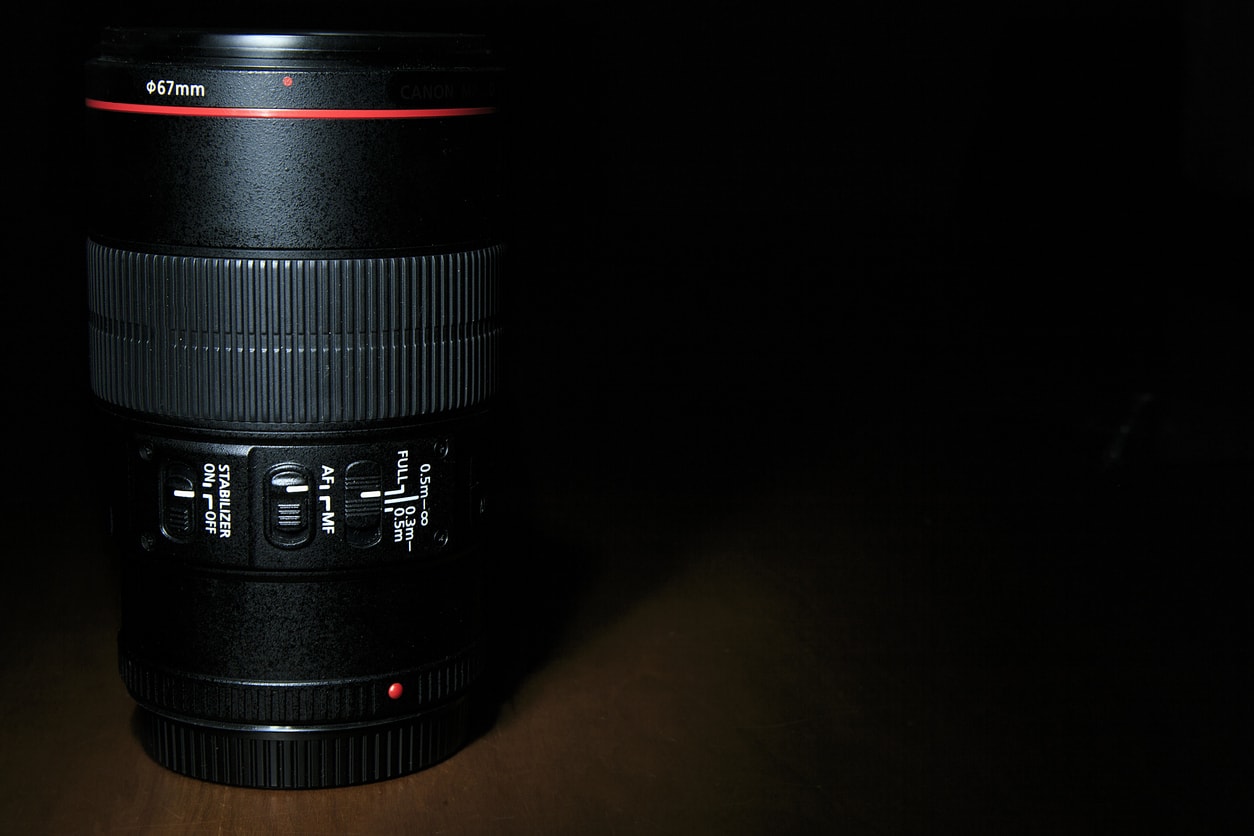
At the end of the day, we all just want a safe, secure, and easy way to buy and sell gear, and Lensfinder provides just that.
With eBay and Craigslist being the wild, wild west of buying and selling, Lensfinder offers a better alternative, one that's focused specifically on glass just for folks like you and me.
I've got a couple of lenses listed for sale on Lensfinder, and I can tell you that it's been a fast and easy experience - much more so than eBay or Craigslist.
Creating a listing and communicating with potential buyers is a breeze, and with PayPal payments, I know that getting my money will be easy as well.
If you've got some used lenses to sell, give Lensfinder a try!
We Recommend
How to Choose a Macro Lens
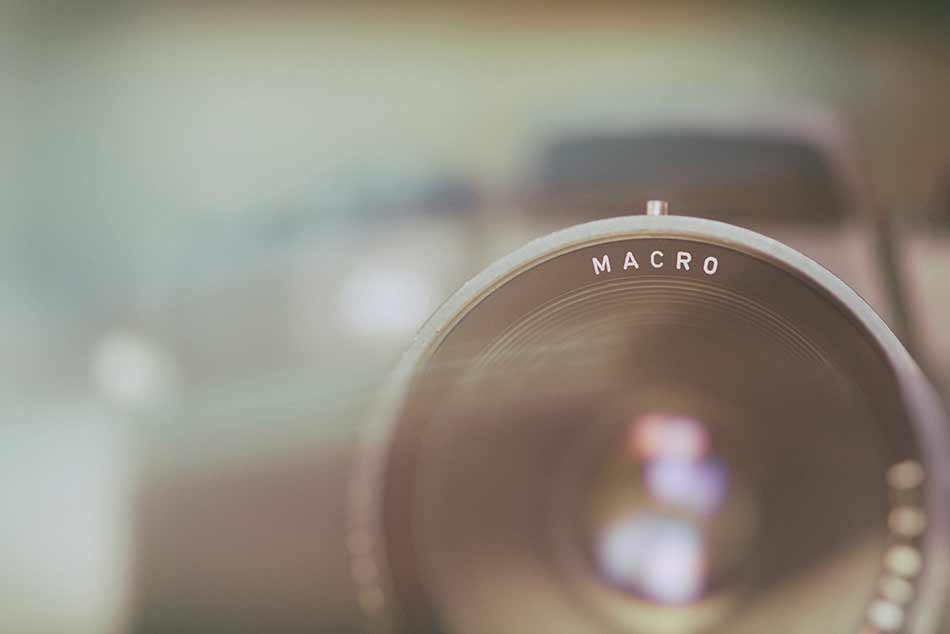
photo by amesy via iStock
In the market for a macro lens but aren’t sure what to look for?
You’re in the right place…
In this quick guide, you’ll learn how to choose a macro lens based on its features and your specific needs.
Let’s get started!
Need a macro lens but are short on funds? Save money and buy a quality used macro lens.
Macro Lens Defined
 Photo by Alex Keda on Unsplash
Photo by Alex Keda on Unsplash
Generally speaking, a true macro lens is one that has 1:1 magnification capabilities.
Though that might not sound all that impressive, when you think about the fact that an APS-C sensor is only about the size of a stamp, and you’re filling the entire frame with a very tiny object, that’s quite the feat.
Don’t be fooled by compact cameras that have a “macro” shooting mode. Just because macro is in the name doesn’t mean it actually achieves 1:1 magnification.
In fact, most macro modes only muster about 0.5x magnification, so they’re way off the mark of what a true macro lens can do.
Learn More:
- This Might Just Be Canon’s Most Versatile Lens - and You Need One
- Cheap Nikon Lenses that Offer Amazing Image Quality
What Makes a Good Macro Lens?
photo by kwanisik via iStock
For starters, the 1:1 magnification discussed above is the first thing that makes a good macro lens.
Secondly, when buying a macro lens, it’s best to avoid those that are specifically made for APS-C cameras.
The reason for this is simple - if you ever upgrade to a full frame camera, your macro lens won’t work with it. Conversely, a macro lens made for full frame cameras will work just fine on an APS-C camera.
By and large, full frame macro lenses aren’t terribly more expensive than those made for crop sensor cameras (that’s especially true if you buy used), so don’t worry too much about taking a big hit to your budget.
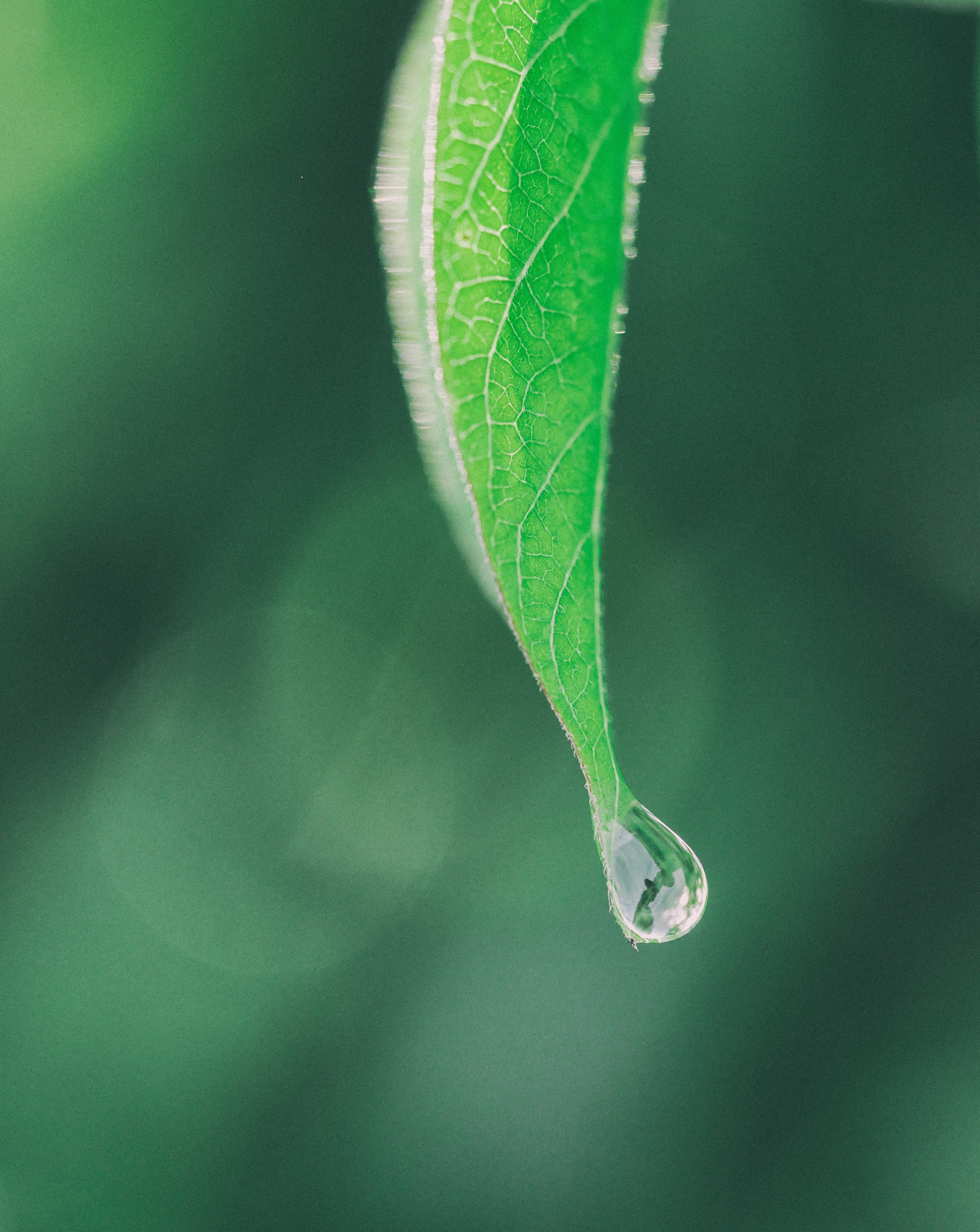
Photo by Aaron Burden on Unsplash
The focal length of the lens is an important factor as well.
Unlike normal lenses, shopping for a macro lens is much less about the reach of the lens or its ability to shoot wide. Instead, it’s much more about minimum focusing distance.
The longer the focal length of a macro lens, the longer the minimum focusing distance. That means more space between you and the subject with which to work. The more room you have to work, the easier time you’ll have composing photos.
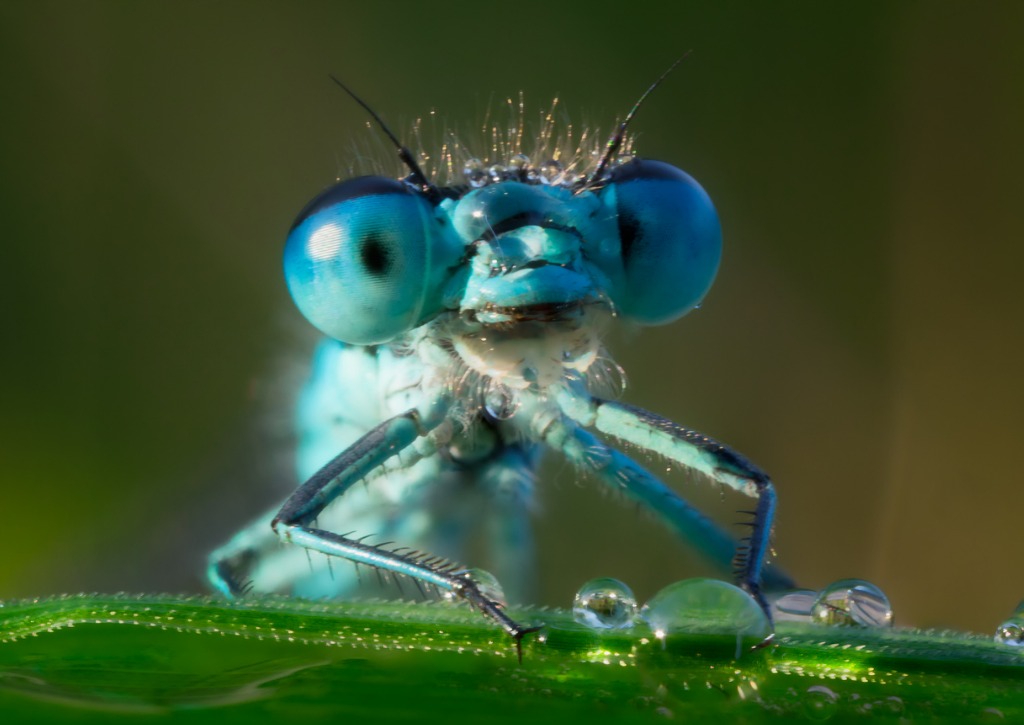
photo by DieterMeyrlvia iStock
Think of it like this - if you’re trying to photograph an insect, and your lens has a minimum focusing distance of an inch or two, the insect is more likely to be scared off than if you have a lens with a minimum focusing distance of five or six inches.
So, when shopping for a macro lens, pay close attention to the minimum focusing distance and try to find a lens that maximizes that space.
Quick Tip: Macro lenses with longer minimum focusing distances are less likely to cast shadows in the shot.
All told, the most popular focal lengths for macro lenses are around 90mm to 105mm. That’s because these lenses are generally quite affordable, have good minimum focusing distances, and aren’t too big or bulky, either.
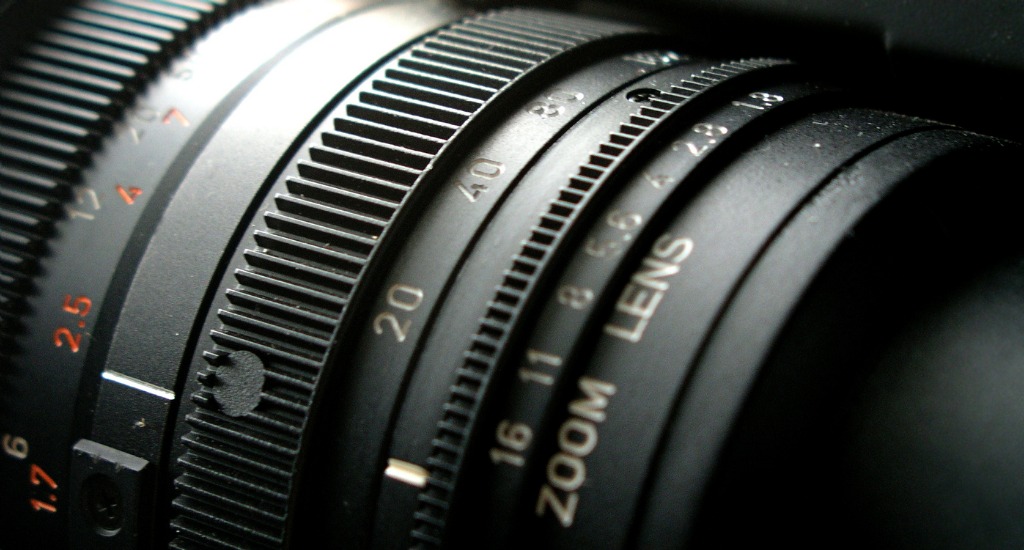
photo by jusantvia iStock
Another feature to look out for is a smooth manual focusing ring. While autofocus is great for things like portraiture (for which a macro lens is great!), when photographing insects, flowers, and other macro subjects, manual focusing is much more effective.
As such, the focus ring needs to operate smoothly and precisely so you can nail the depth of field and get a beautifully sharp image.
Have too many lenses, none of which is satisfactory for macro work? Sell the lenses you no longer need.
How to Choose a Macro Lens: Image Stabilization
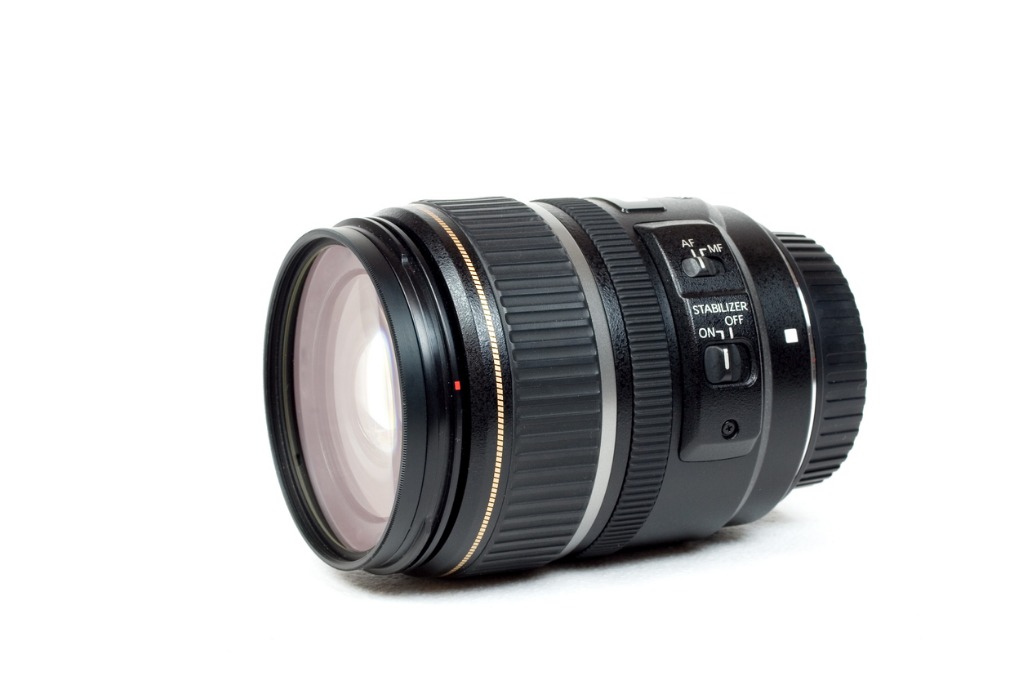
photo by FocusEye via iStock
In the past, macro lenses seldom, if ever, have image stabilization. That has now changed.
Image stabilization can help you take improved photos because they can dampen vibration or wobbling that occurs when you handhold the camera.
Likewise, image stabilization can correct horizontal and vertical movements in the camera to help you get sharper images.
The problem is that many image stabilization systems really don’t benefit you that much when taking macro photos.
That’s because in the vast majority of situations, you’ll shoot with your camera mounted to a tripod, and in that situation, image stabilization can actually make your photos blurrier.
Learn More:
- 4 Ways You Can Improve Your Photos This Weekend
- The Best Sony Lenses for Just About Any Type of Photography
The Best Macro Lens
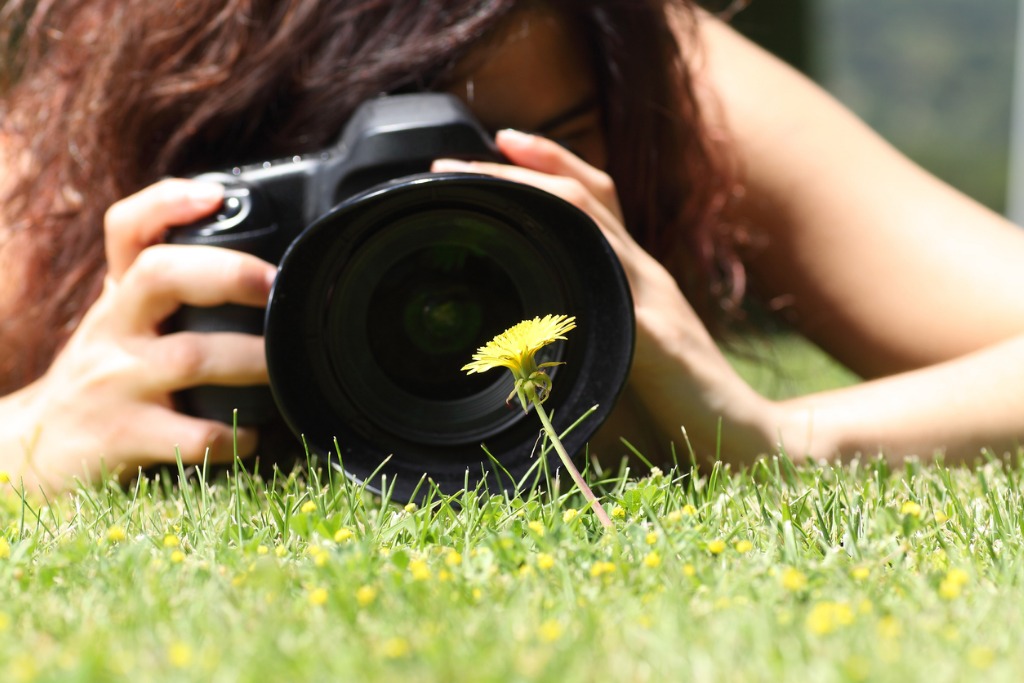
photo by AntonioGuillem via iStock
To recap, if you’re in the market for a macro lens, look for something with a focal length in the 90-105mm range.
Though autofocus will be nice for things like portraiture, the manual focusing abilities of the lens will be more important for macro work.
Image stabilization is something that could be beneficial when using a macro lens for non-close-up subjects, but if you’ll be working exclusively with close-up images, it’s not a feature that will prove all that beneficial.
Brand-wise, all the major players have macro lenses for their camera lineups. Do your due diligence and rent beforehand if possible so you can field test the lens. Doing so will help you find the best macro lens for you.
We Recommend
How to Choose a Travel Photography Lens
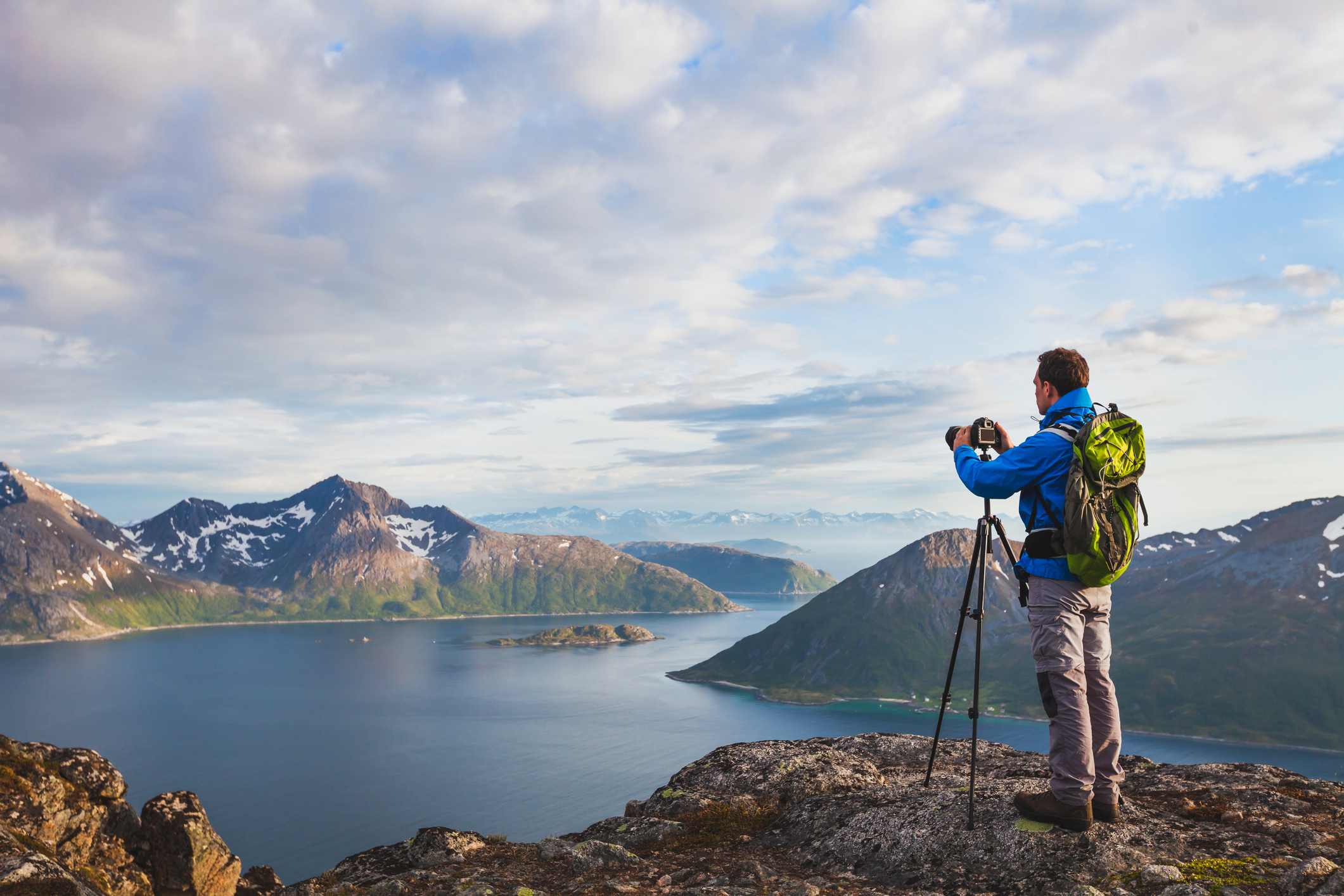
photo byanyaberkut via iStock
Hitting the road?
If so, you likely want a solid lens for tackling the varied subject matter you’ll encounter as you travel.
The question is, what lens is best for travel photography?
Learn how to choose a travel photography lens in this quick guide.
Editor’s Tip: Good lenses can be expensive, but don’t let that deter you. You want the best glass you can afford, and you can maximize your budget by buying a used lens. When looking for a good used lens, do your due diligence and ask questions of the seller: Is the lens in good working order? Are there any imperfections in the glass? Is there mold in the lens? Also be sure that the lens fits your camera!
How to Choose a Travel Photography Lens: Things to Consider
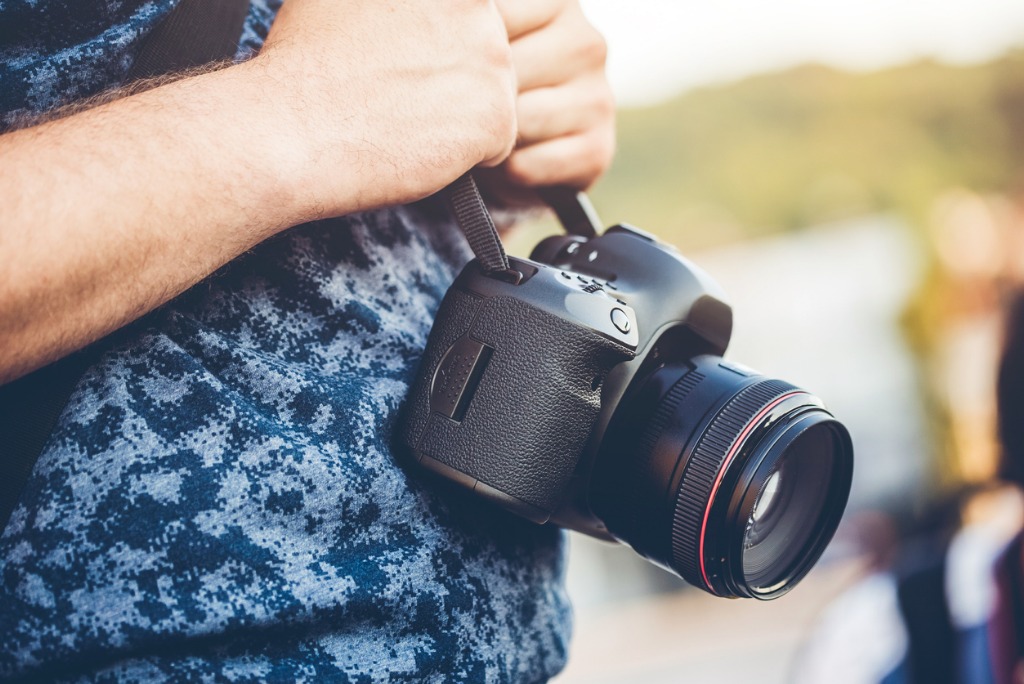
photo by urbazon via iStock
Deciding what lens is best for travel photography can be a bit of a complicated undertaking.
After all, in addition to deciding what focal length is best for travel photography, you also have to consider the size and weight of the lens since you’ll have a finite amount of space in your bags for your camera gear.
So, you want something versatile from a focal length standpoint and something that’s small and lightweight.
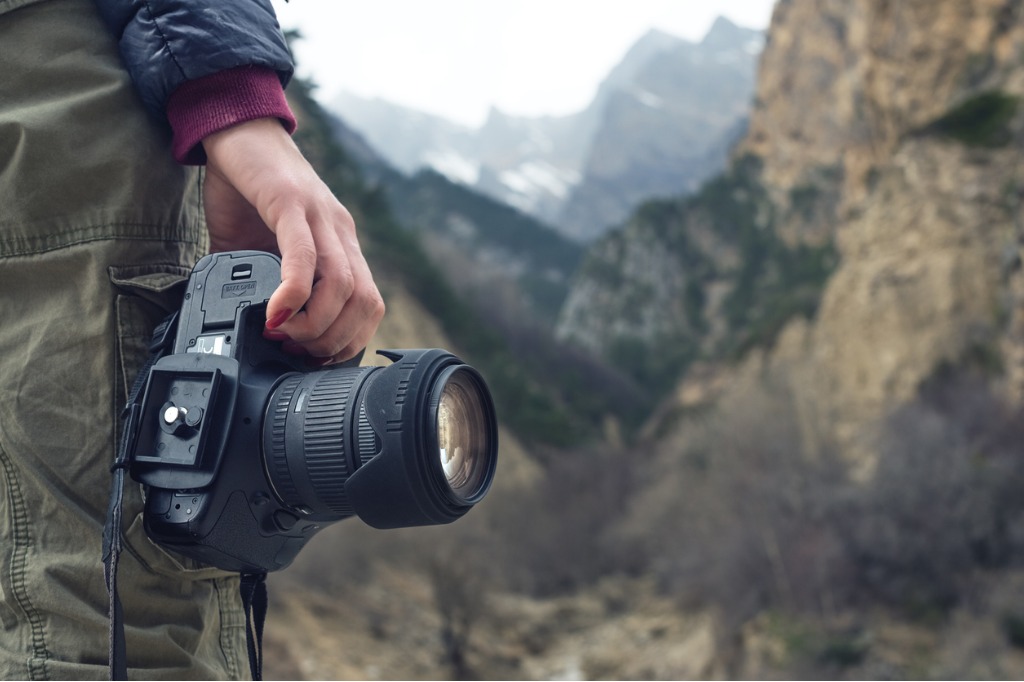
photo by yanik88 via iStock
This begs the question, is a zoom lens better for travel photography or is it best to have a couple of prime lenses?
That’s a tough question to answer because the answer will be different from one photographer to the next.
On the one hand, some travelers swear by a single zoom lens - something like a 24-70mm - because it covers a good focal range and is relatively small and lightweight.
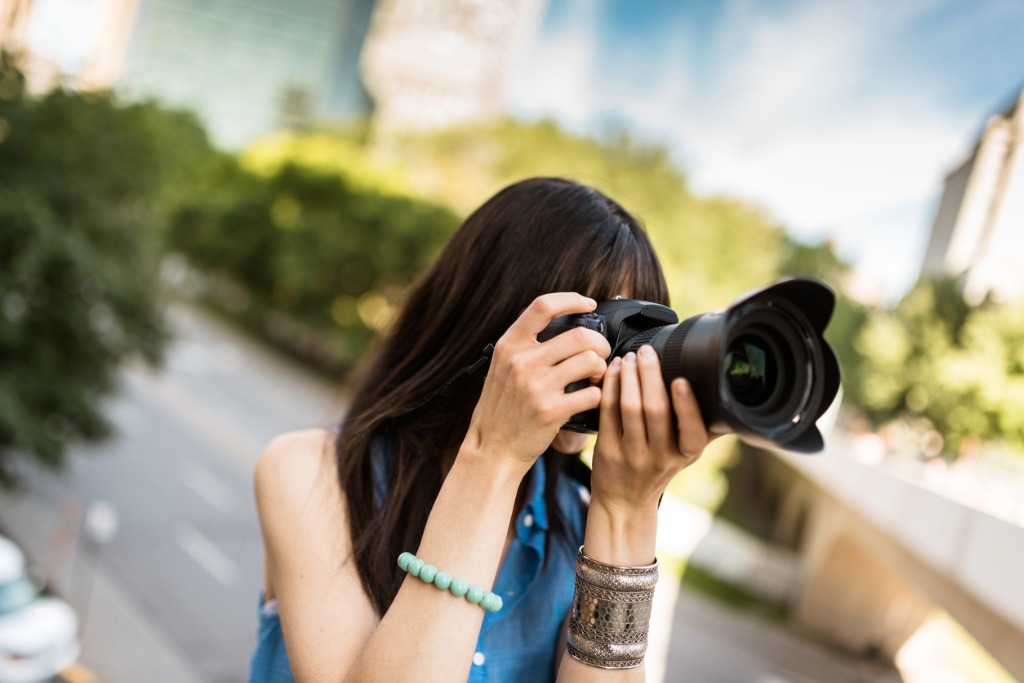
photo by franckreporter via iStock
However, other travelers prefer having a couple of fast prime lenses for travel photography like a 24mm f/1.4 and a 50mm f/1.8.
Both of these options are small and lightweight, and they offer versatility in that you can photograph a wide variety of subjects with either lens. I’ll dive into the zoom vs. prime debate more in a bit.
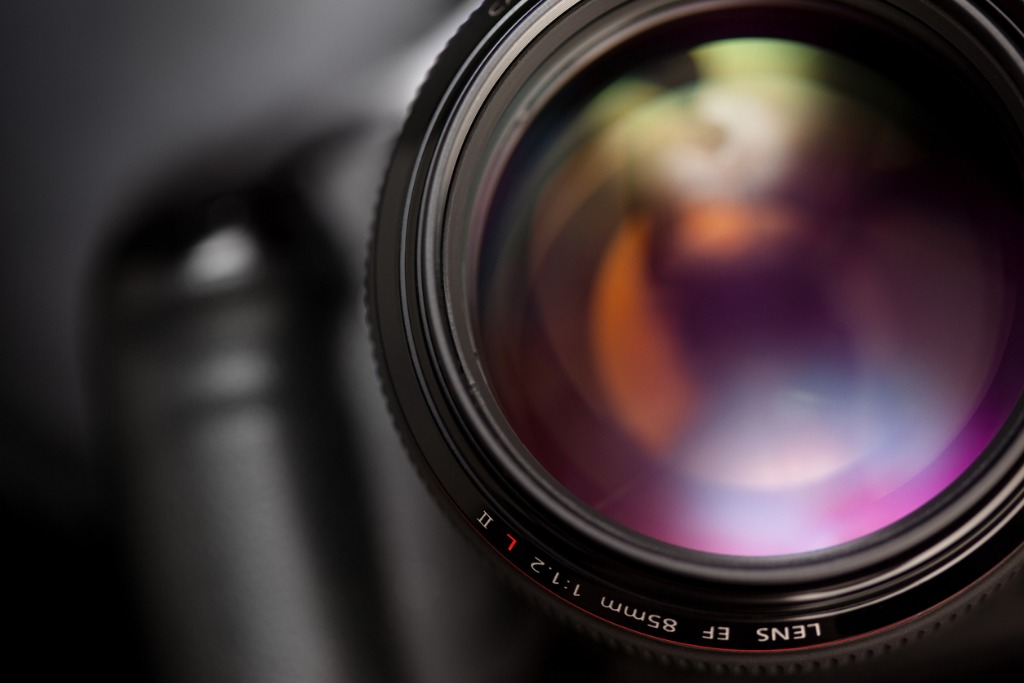
photo by Goldmund via iStock
Regardless of whether you get a zoom or a couple of prime lenses, one of the primary features you should look for is the size of its aperture.
Though lenses with large apertures like f/1.2, f/1.4, and f/1.8 tend to be more expensive, the performance upgrades they offer over lenses that have f/2.8 or f/4 apertures are worth it.
In addition to improving your ability to take quality photos in low-light situations, lenses with large apertures also more readily blur the background (all else being equal), so you can take beautiful portraits with nice bokeh.
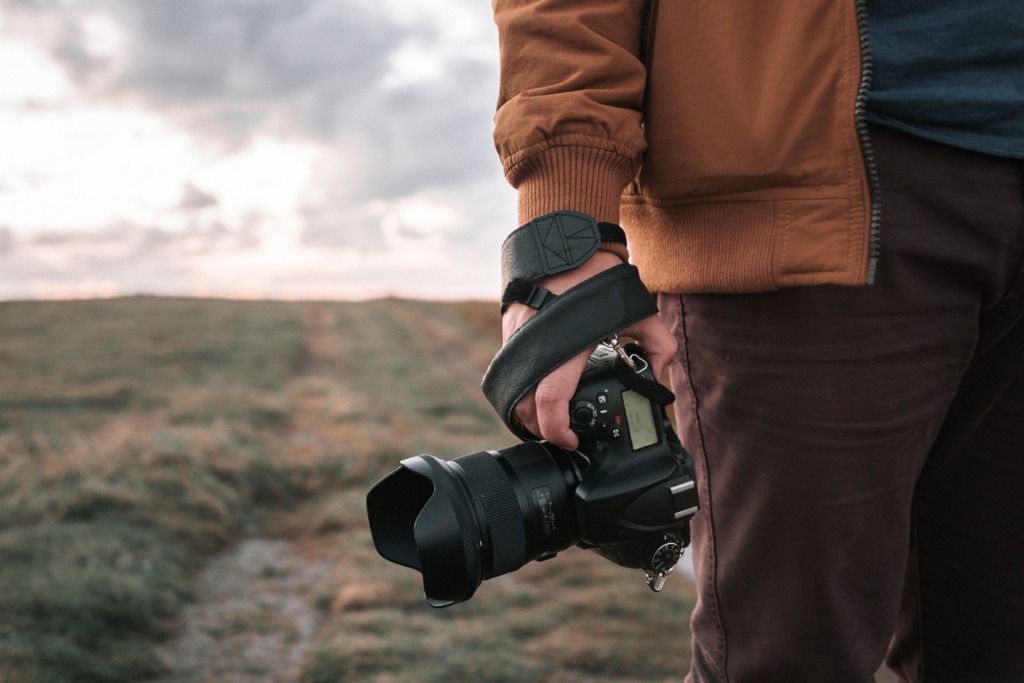
photo by MarioGuti via iStock
Of course, price is going to be a consideration as well.
The lens you use is much more important in terms of the quality of photos you take than your camera, so maximize your budget for your lens and buy the best you can afford.
I realize not everyone has $2,000.00 to spend on a lens, so keep your eyes out for bargains on used lenses.
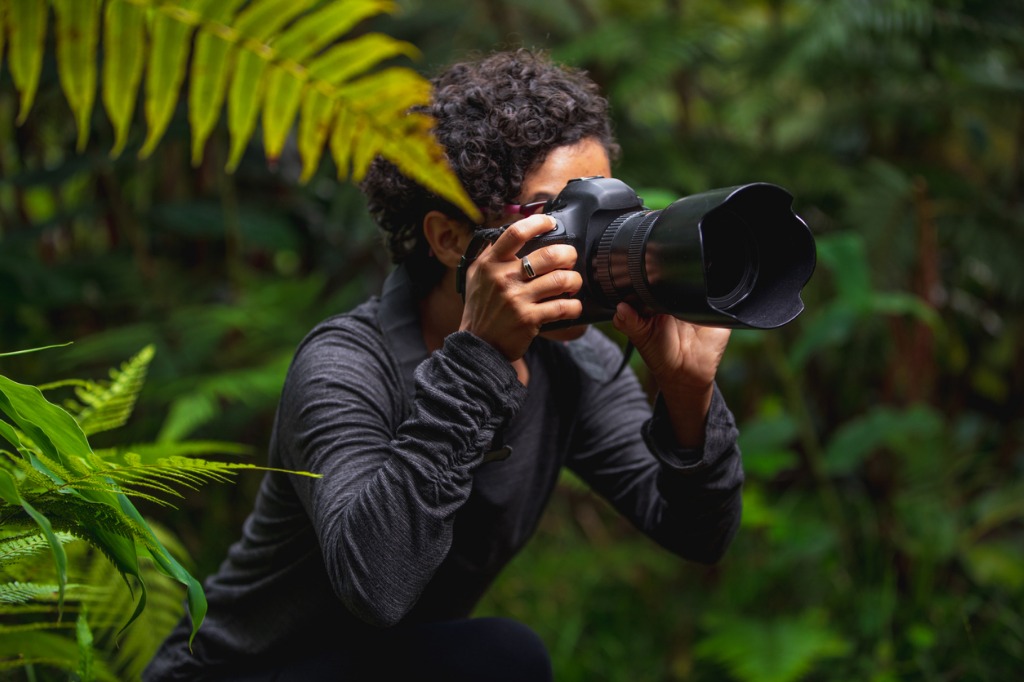
photo by JTSorrell via iStock
One piece of advice I would offer is to avoid buying lenses from the likes of Craigslist and eBay, and instead look for a travel photography lens on a website that specializes in lenses, like Lensfinder.
I’ve bought and sold lenses on Craigslist and eBay in the past, and it just wasn’t a good experience.
With Craigslist, there’s tons of scams, and on eBay, there’s high fees.
Lensfinder solves those issues by charging lower fees than eBay and they have built-in fraud protection so you can buy and sell with greater confidence.
What’s not to like about that?
Learn More:
How to Choose a Travel Photography Lens: Zoom vs Prime
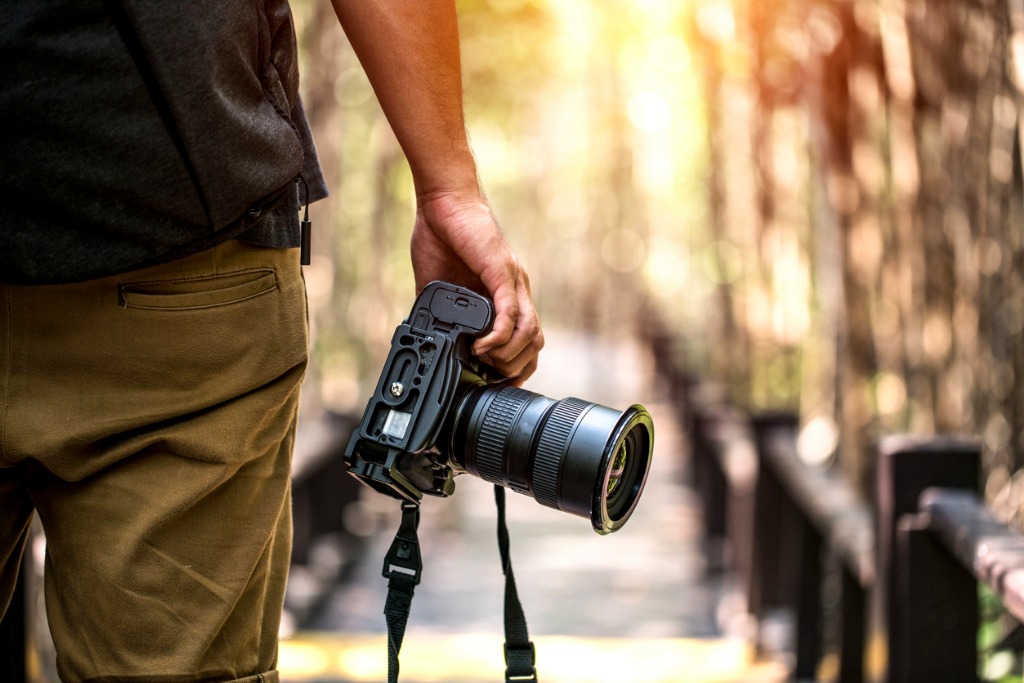
photo byWitthaya Prasongsin via iStock
Clearly, a single zoom lens is a good travel photography consideration because it offers the most bang for your buck from a focal length standpoint.
And, as noted above, lenses like a 24-70mm zoom aren’t all that big or heavy, so you get the versatility aspect while also saving on weight and space in your bag.
Some 24-70mm zooms also have quite a large aperture of f/2.8, so you can capitalize on the benefits of having a large aperture as well.
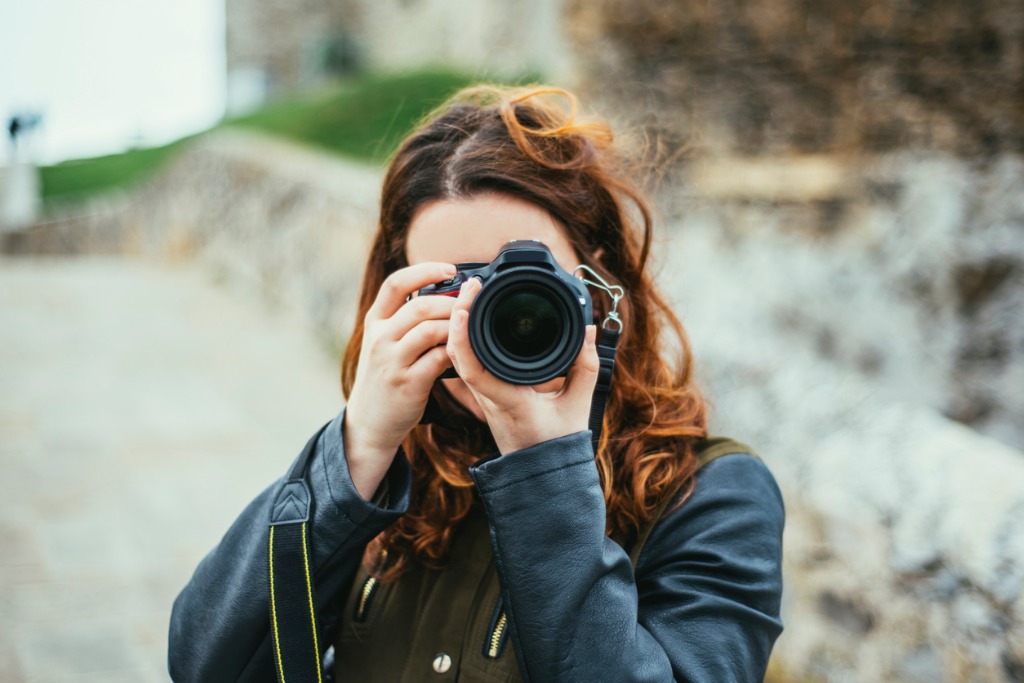
photo by MarioGuti via iStock
Of course, it’s possible to get a little too crazy in the pursuit of focal length variability.
For example, a 28-300mm lens is overkill for the vast majority of us, not to mention that such lenses violate the “small and lightweight” requirement for travel lenses.
Along with that point is something else to consider…
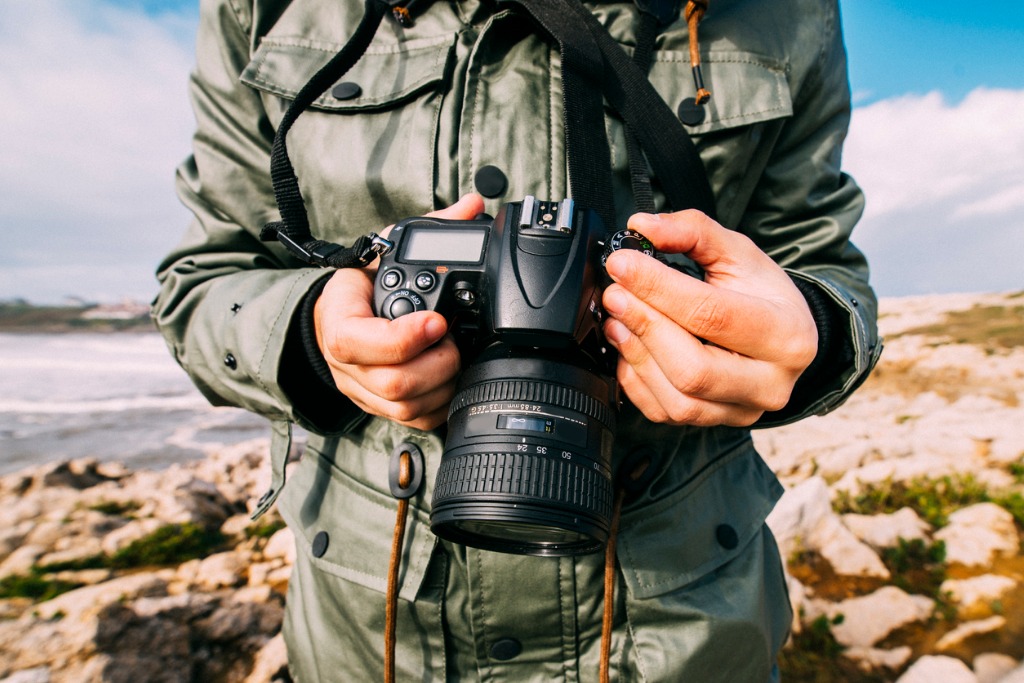
photo by MarioGuti via iStock
With a single 50mm lens, you can photograph much of the same subject matter just as effectively as you can with a 24-70mm zoom lens.
Additionally, prime lenses often make great lenses for video, so you can open up the possibility of getting stills and videos with the same prime lens.
And, as noted above, prime lenses tend to have larger apertures, which makes low-light photography, indoor photography, astrophotography, and so forth, a greater possibility.
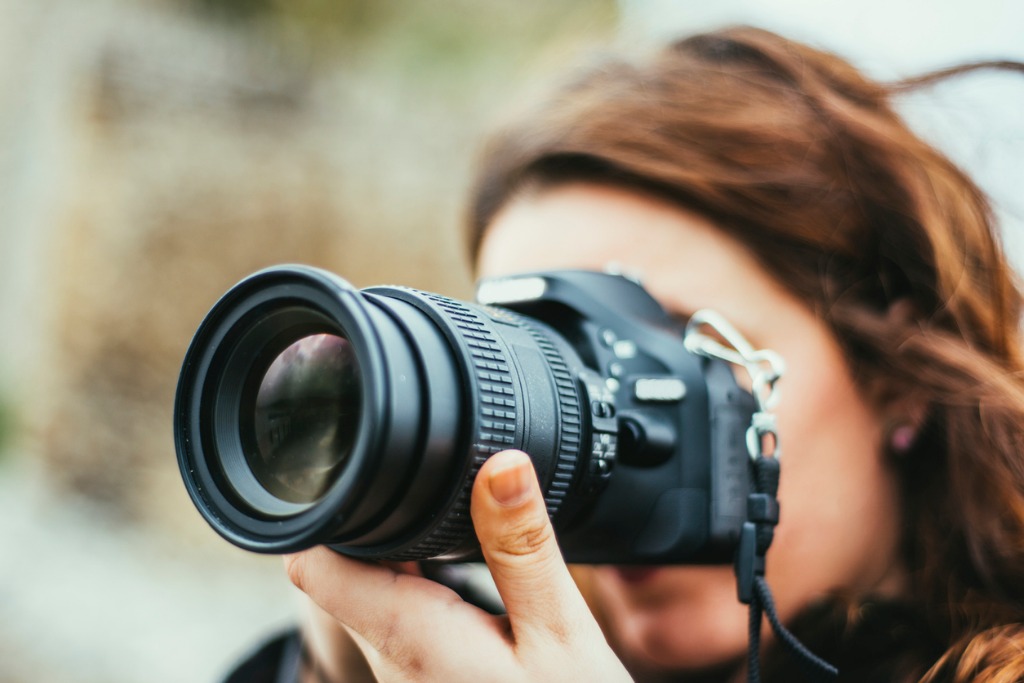
photo by MarioGuti via iStock
At the end of the day, zooms and primes offer their distinct advantages for travel photographers, but they are very evenly matched in terms of their abilities in the field.
Choosing a travel photography lens will probably come down to your personal preference and your specific needs on your trip.
Learn More:
- 3 Lenses Every Photographer Should Have in Their Camera Bag
- Want Ultra-Sharp Photos? Try These Lenses
We Recommend
How to Find the Perfect Portrait Lens
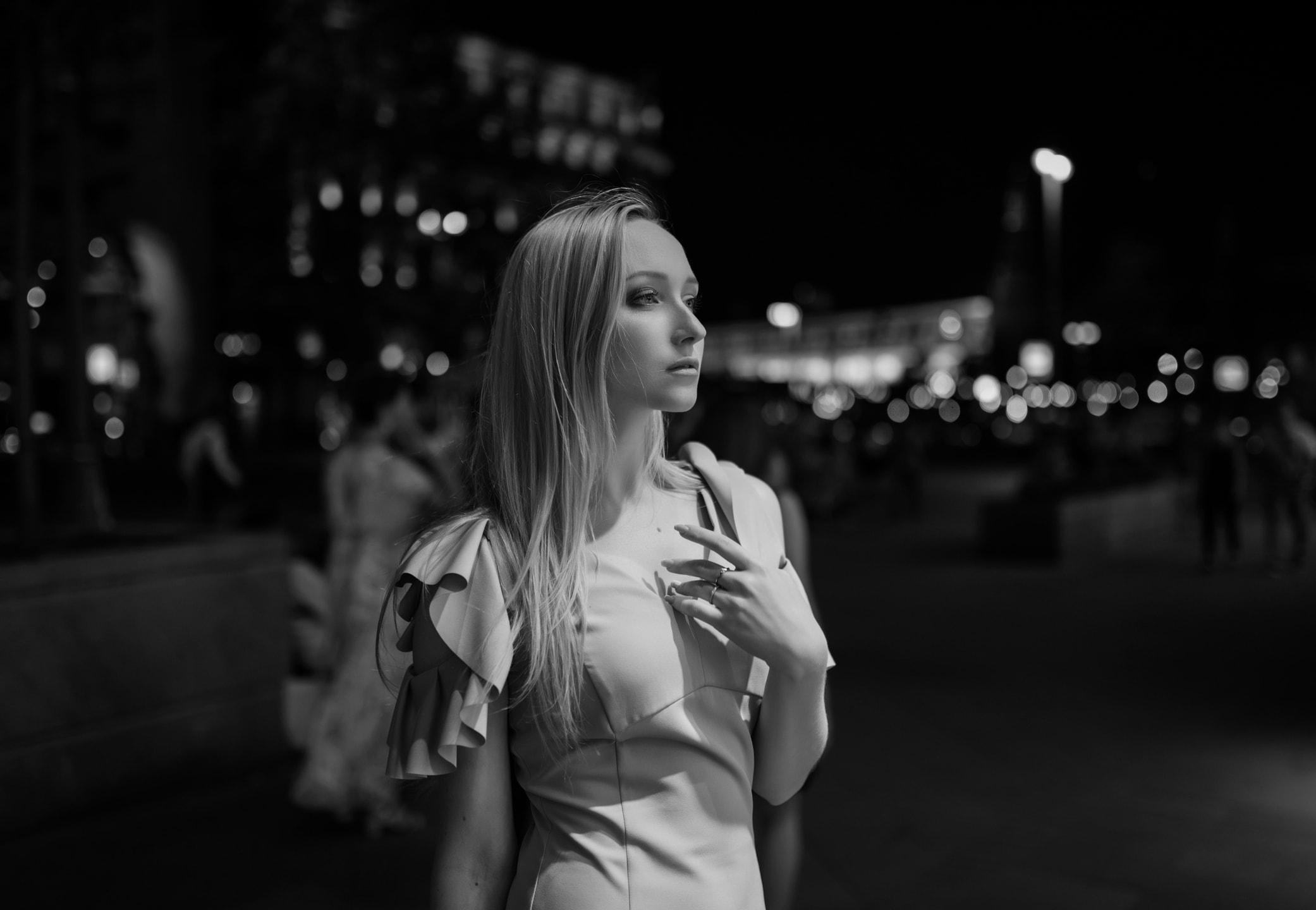
What lens is best for portraits?
It's a question often asked, but one that's more difficult to answer than it might first seem.
That's because the "best" lens depends on a ton of factors - the type of portraits you take, the gear you already own, and your budget, just to name a few.
However, there are some key questions to ask yourself when shopping for a portrait lens that will help you narrow the field down to something that will work for you.
Editor's Tip: Get a top-quality lens at a reduced price by shopping for a pre-owned lens at Lensfinder. Built by photographers, for photographers, it's the best online marketplace to find the lens you need (or sell one you already have). Find out how you can buy and sell lenses here.
Which Do You Need More: A Zoom or a Prime?
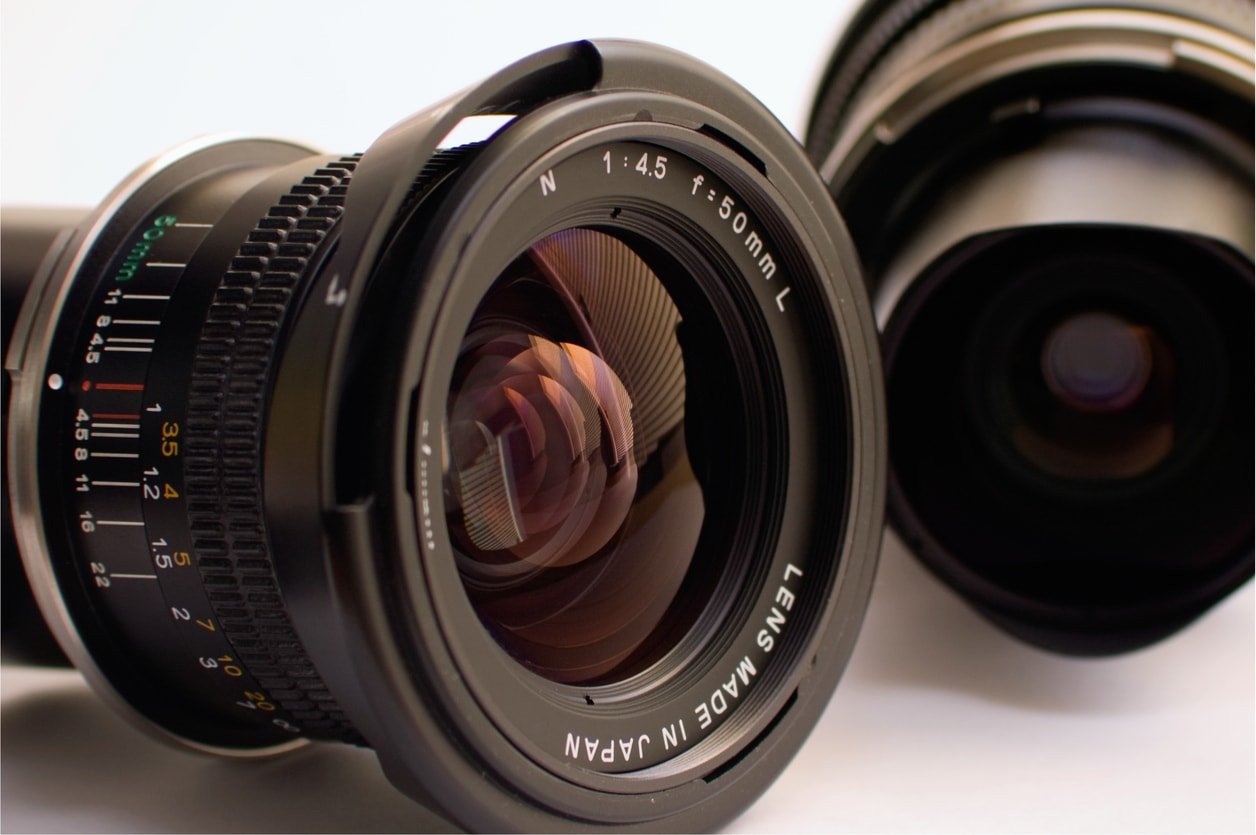
This question will help you address the type of portraits you take.
If you like beautifully blurry backgrounds or shooting in low light, a prime lens is the way to go.
Since primes have larger maximum apertures than zooms, you can shoot in dim lighting while retaining a fast enough shutter speed to avoid camera shake (unless it's really dark). You can also shoot with a lower aperture to avoid noise as well.
Likewise, since those large apertures help minimize depth of field, you can create portraits with buttery smooth bokeh that really sets your portrait subject apart from the background.
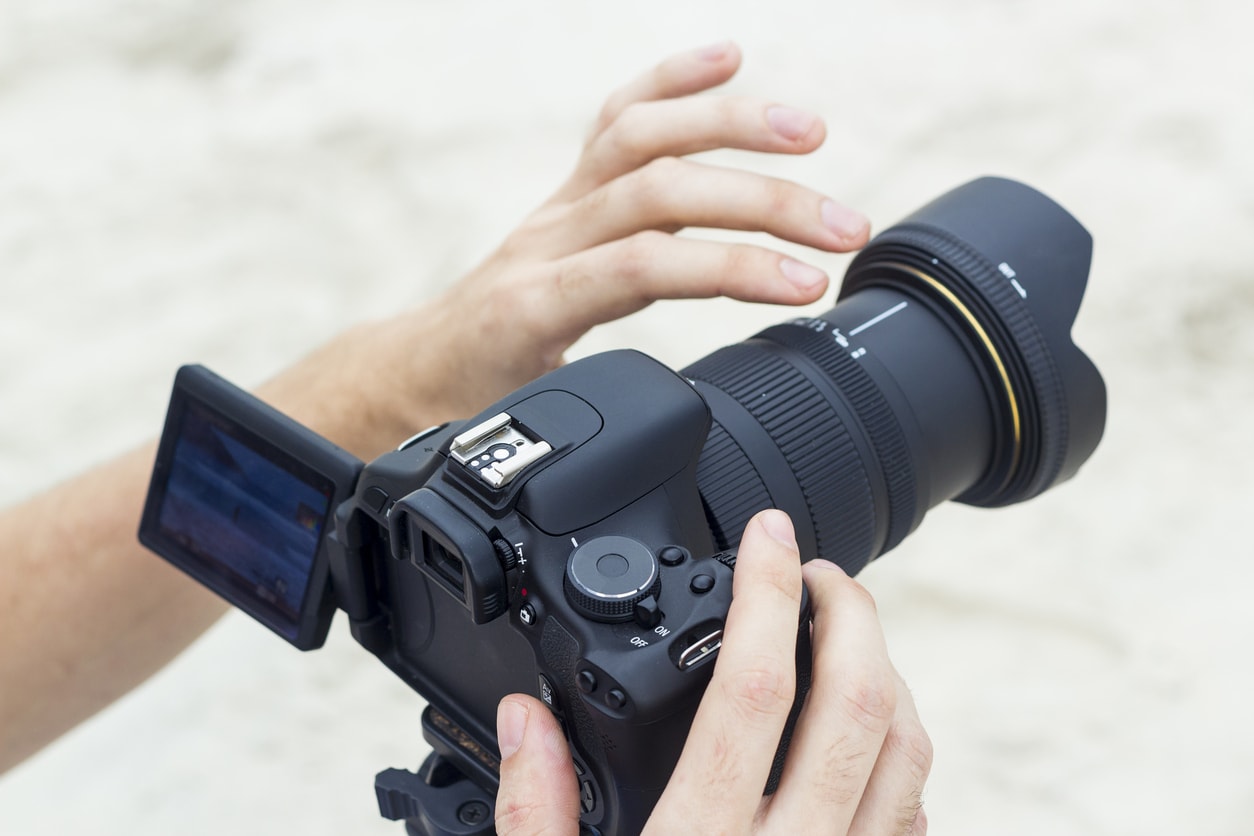
Zoom lenses, on the other hand, offer tons of versatility.
Where you're "stuck" with one focal length with a prime lens, a zoom can get you anything from a wide-angle to a telephoto shot. That can be advantageous if you want to work lean and mean with one do-it-all type of lens.
Another benefit of a zoom lens for portraiture is that it allows you to be further away from the subject, which can help them relax in front of the camera and generate more authentic portraits.
In the end, either option can work well for portraiture; it just depends on what your personal preference might be.
Learn More:
What Lenses are Already in Your Bag?
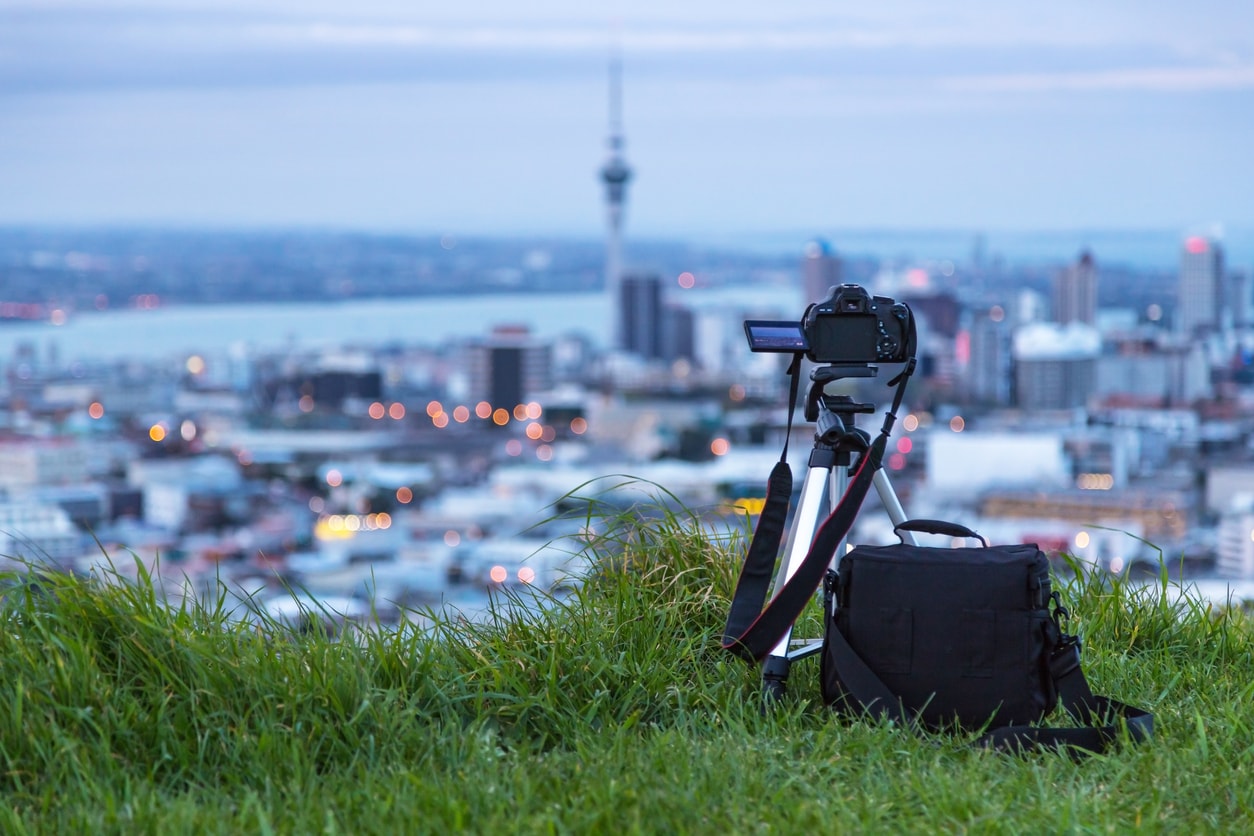
This might seem like a dumb question to ask yourself, but hear me out...
Obviously, if you already have a 50mm prime you don't need to buy another one just like it.
However, there are two other points here that need to be made.
First, if the 50mm prime you currently have is an f/2.8, and you've found a great deal on a 50mm f/1.4, then the upgrade might be worth it.
Second, what if one of the lenses you already own is one you'd never considered to be a portrait lens?
For example, though kit lenses get a lot of flack, they can actually be used to take some decent portraits as long as you know what you're doing.

Similarly, though your 100mm macro lens might not strike you as something to use for portraits, it can actually become quite the portrait lens.
The point here is that you don't want to duplicate lenses, but you don't want to discount the versatility of the lenses you have, either.
Keep those things in mind as you shop for a portrait lens, and you'll end up with something that helps meet your needs.
Learn More:
- Three Lenses Portrait Photographers Can't Live Without
- The Sharpest Canon and Nikon Lenses on a Budget
How Much Money Do You Have?
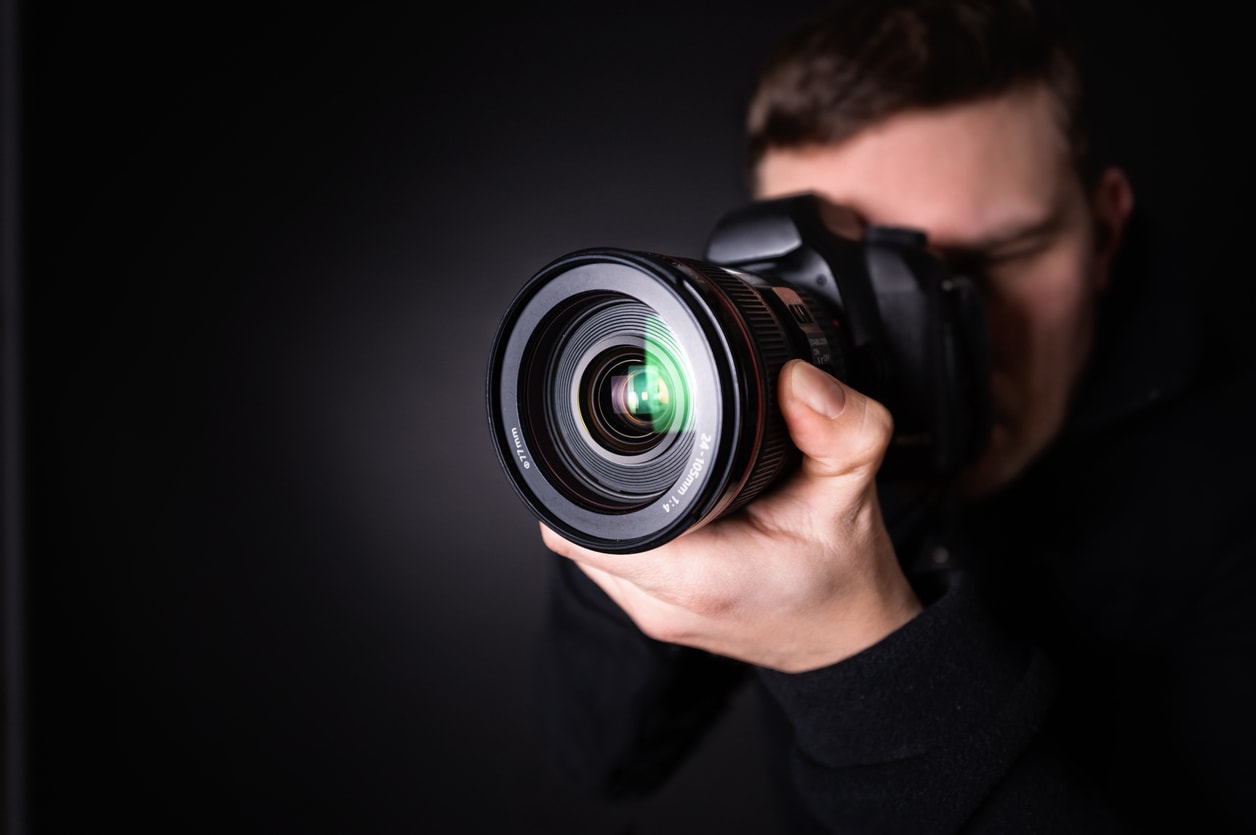
Since the majority of us don't have an unlimited budget for photography gear, the price tag of the lenses you're shopping for will likely be the most important factor when it comes to making a decision.
Good lenses usually come with a hefty price tag, but that higher price gets you a better-built lens (which means it will last longer than a cheap lens), improved optics, and sharper images with less flare, vignetting, and aberrations.
On top of that, higher-end lenses typically have improved autofocus mechanisms and are weather-sealed as well.
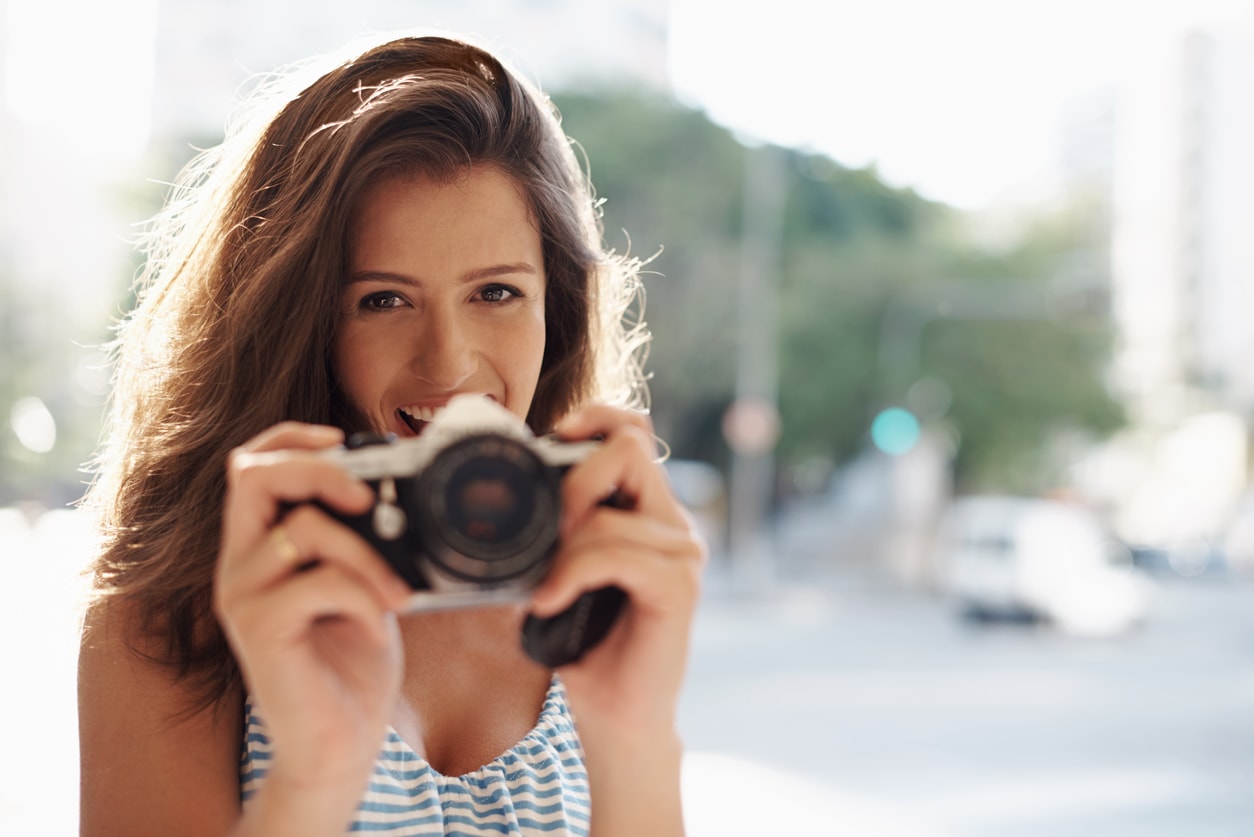
The extra expense is certainly worth all the benefits that a better lens brings to the table.
However, you can get a better lens without spending the big bucks by shopping for a pre-owned model.
If you're like me, you take impeccable care of your lenses, and most photographers are the same way.
That means that there are tons of well-cared-for lenses out there that you can pick up for a great price.
So, buying used is the best of both worlds - you can save some money while picking up a higher-end lens at the same time.
Editor's Tip: If you're in the market for a better lens, but don't want to shell out full price, shop for pre-owned lenses at Lensfinder. Their marketplace is safe and secure, with fraud filters in place to protect you when you buy a lens. You can communicate with sellers via direct message, read seller feedback, and even pay for your purchase via PayPal right then and there. Explore their inventory here.
We Recommend
How to Get a Blurry Background With a Cheap Lens
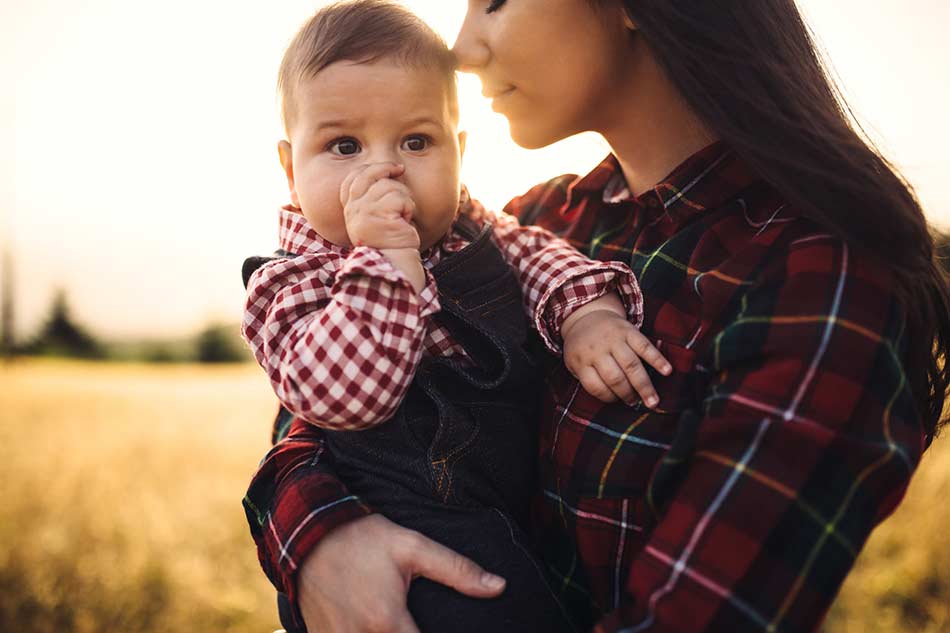
When you look at portraits like the one above, one thing you might notice is the beautifully blurred background.
That blur - or bokeh - helps separate the model from the background, which makes her a stronger subject while also giving the photo some artistic flair at the same time.
There are a lot of different factors involved in creating a blurry background, which I'll outline momentarily.
But as Benjamin Jaworskyj explains in the video below, blurry backgrounds are often easier to achieve with more expensive lenses. So what do you do if you have a cheap lens?
Fortunately, your ability to create a blurry background doesn't only rest on your lens.
That means that even if you use something like the kit lens that came with your camera, there are things that you can do to make that background blurry.
Below, I outline the factors that influence the depth of field, or the area of the image that's in focus.
With a shallower depth of field, the area of focus is smaller and the background is blurrier.
Let's get to it!
Editor's Tip: Are you ready to take your portraits to another level? LEARN WHY AN 85MM LENS IS IDEAL FOR TAKING PORTRAITS.
How to Get a Blurry Background - Use a Large Aperture

One of the primary factors in determining whether the background is blurry or not is the size of the aperture you use.
The larger the aperture, the shallower the depth of field (all else being equal). That means that in the graphic above, using the aperture on the right will generate a blurrier background than the one on the left.
So, if you take a portrait using an aperture of f/1.4 and then the same portrait again under the same conditions but use an aperture of f/3.5, the first image will have a blurrier background.
The problem here is that lenses with huge apertures like f/1.2 and f/1.4 are often very, very expensive. That means unless you can find a great deal on a used lens, you might need to rely on a cheaper lens like the one that came with your camera.
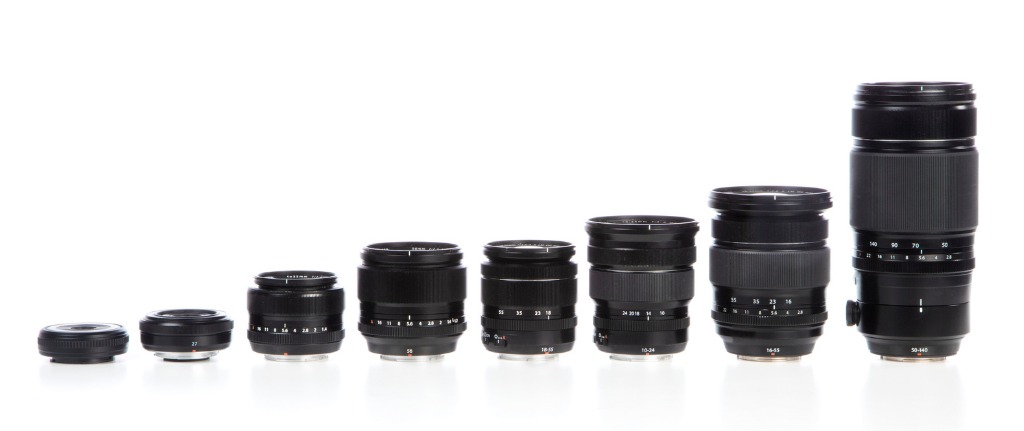
Let's assume that your kit lens is something like an 18-55mm f/3.5-5.6.
In that case, you'd want to use the largest aperture possible, which is f/3.5.
But note that on a zoom lens like this, that f/3.5 aperture is only possible when you're using the shortest focal length, in this case, 18mm.
As Benjamin notes in the video, the focal length you use also influences the blurriness of the background.
In this case, shooting at 18mm produces less background blur than shooting at 55mm, all else being equal. In looking at the image above, the lenses to the right would produce more background blur than those to the left.
What Benjamin does is prioritize the focal length over the aperture, and chooses to shoot at his lens's longest focal length (60mm) and the largest aperture at that focal length (f/5.6).
Learn More:
- A Beginner's Guide to Aperture and Depth of Field
- Camera Lens Guide: Things to Consider When Buying a Lens
But Wait...There's Other Factors That Influence Depth of Field
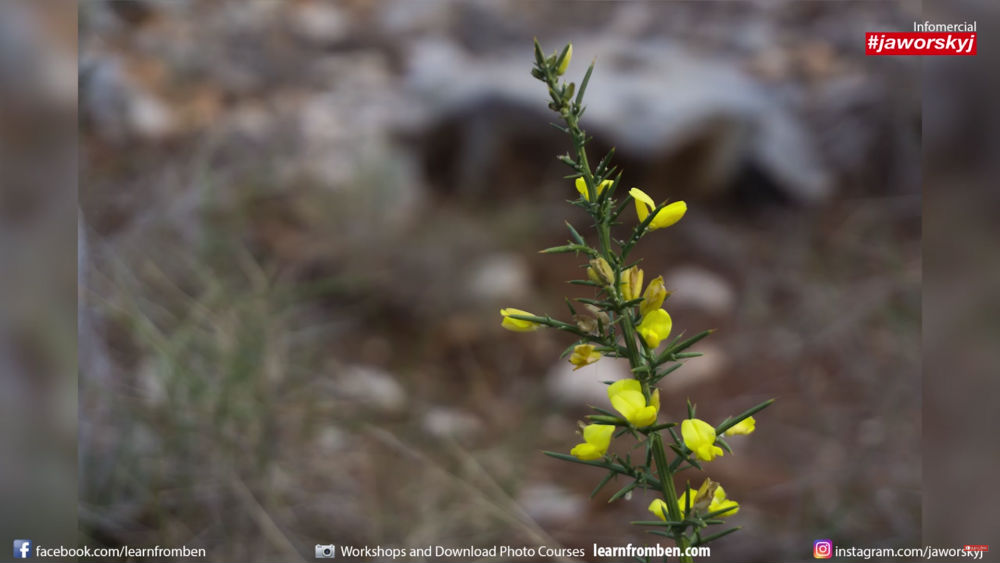 YouTube Screenshot/Benjamin Jaworskyj
YouTube Screenshot/Benjamin Jaworskyj
So, large apertures and longer focal lengths get you a blurrier background.
But another factor - distance from the camera to the subject - influences how blurry the background is as well.
As you can see in the screenshot above, shooting from a distance of about two feet away at 60mm and f/5.6 gets a nicely blurred background.
Editor's Tip: Prime lenses typically offer sharper performance than zoom lenses. LEARN WHY A PRIME LENS IS A GREAT INVESTMENT FOR ANY PHOTOGRAPHER.
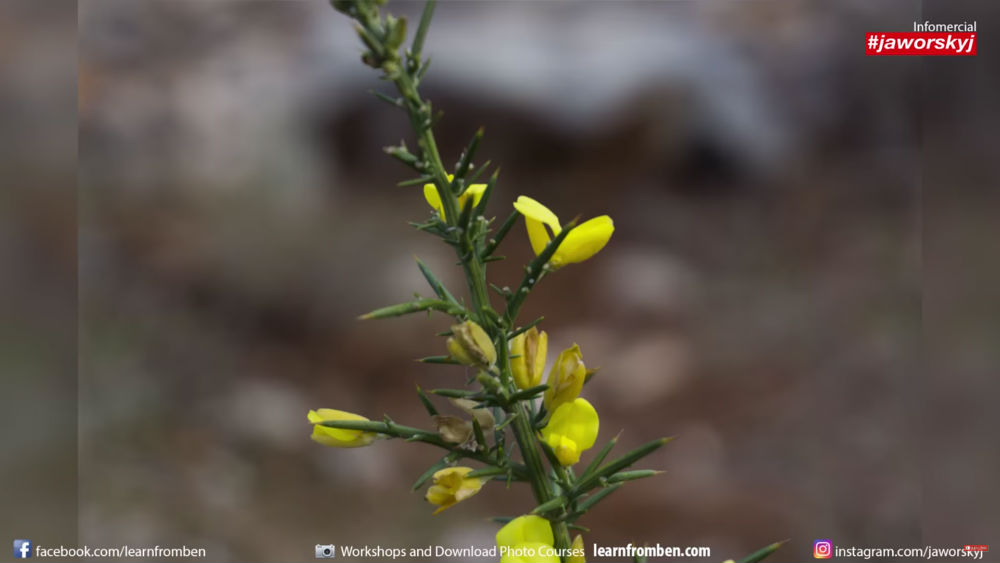 YouTube Screenshot/Benjamin Jaworskyj
YouTube Screenshot/Benjamin Jaworskyj
However, that background blur becomes even better when Benjamin gets in closer and takes a shot from just a few inches away from the flower.
What's more, the further away the background elements are from the subject, the blurrier they will be.
Granted, you don't have much control over the distance between objects in a landscape, but if you're photographing a person, moving them further away from the background features will result in better blur.
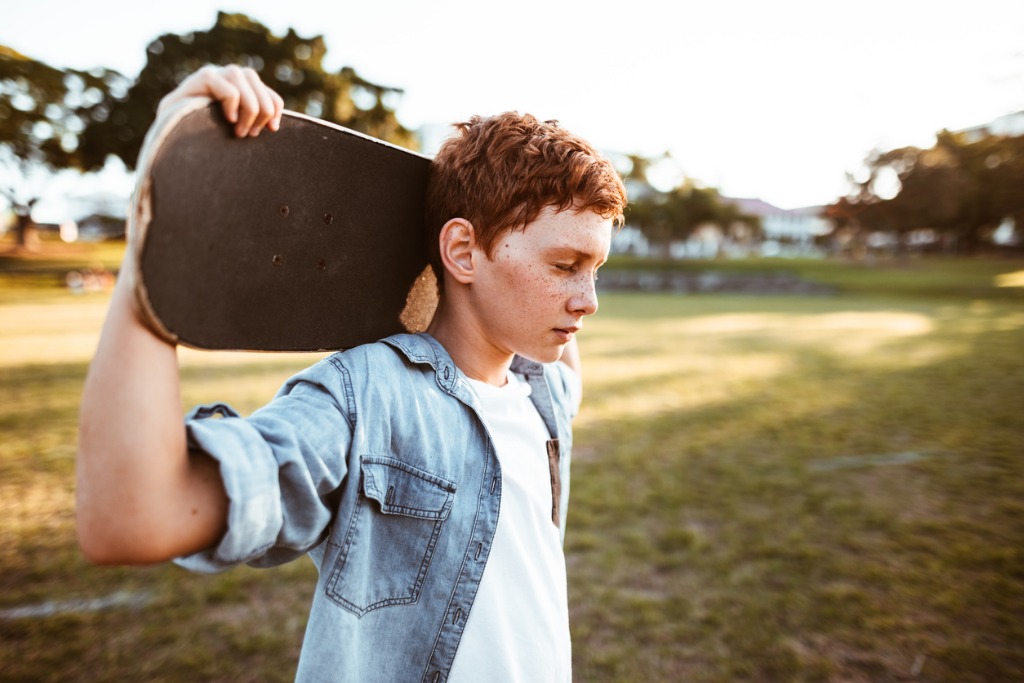
That means that when you're trying to blur the background in your images as shown in the image above, you need to balance the following factors:
- Use a large aperture (or the largest possible with your lens)
- Opt for a longer focal length
- Minimize the distance between your camera and the subject
- Maximize the distance between your subject and the background
If you can do that, you can get nicely blurred backgrounds, even with a cheap lens!
Speaking of cheap lenses...
If you want to upgrade your kit lens to something a little more capable, then consider buying a pre-owned, higher-end lens.
By buying used glass, you can stretch your budget further, get better blurry backgrounds, and get a more capable lens for less. What's not to like about that?
Learn More:
We Recommend
How to Get the Most Out of Your Nifty Fifty Lens
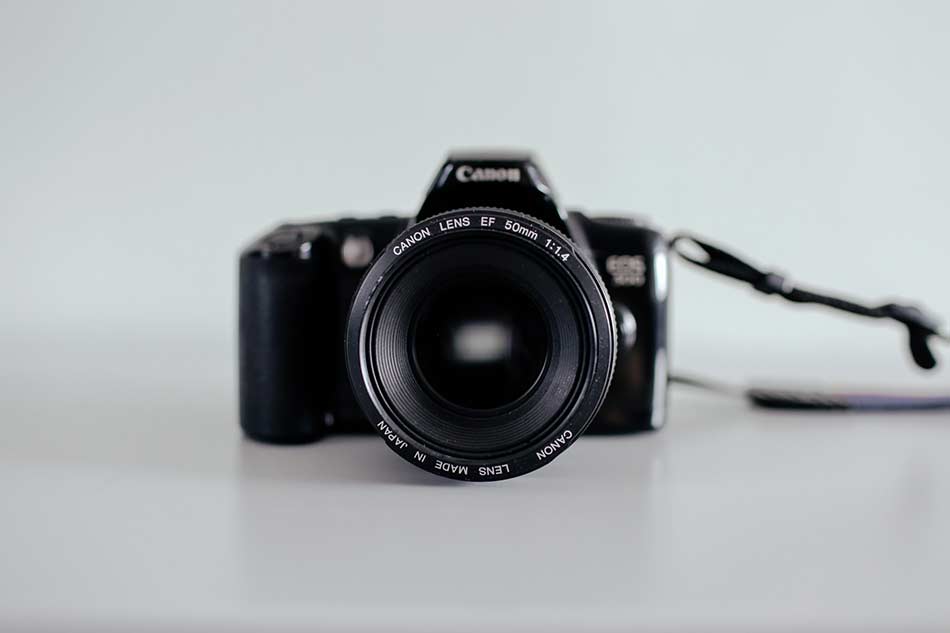
Photo by Thomas AE on Unsplash
Nift Fifty Lens
I felt like a real photographer the first time I purchased my own nifty fifty lens. It’s a quintessential piece of photography equipment, but it’s also a fairly confusing piece of equipment if you don’t know what you’re doing with it.
That’s why we are outlining 5 ways you can become a pro with your 50mm lens with our comprehensive 50mm lens tips.
Let’s get started!
How to Use a Nifty Fifty Lens? (Hint: With a Flash)
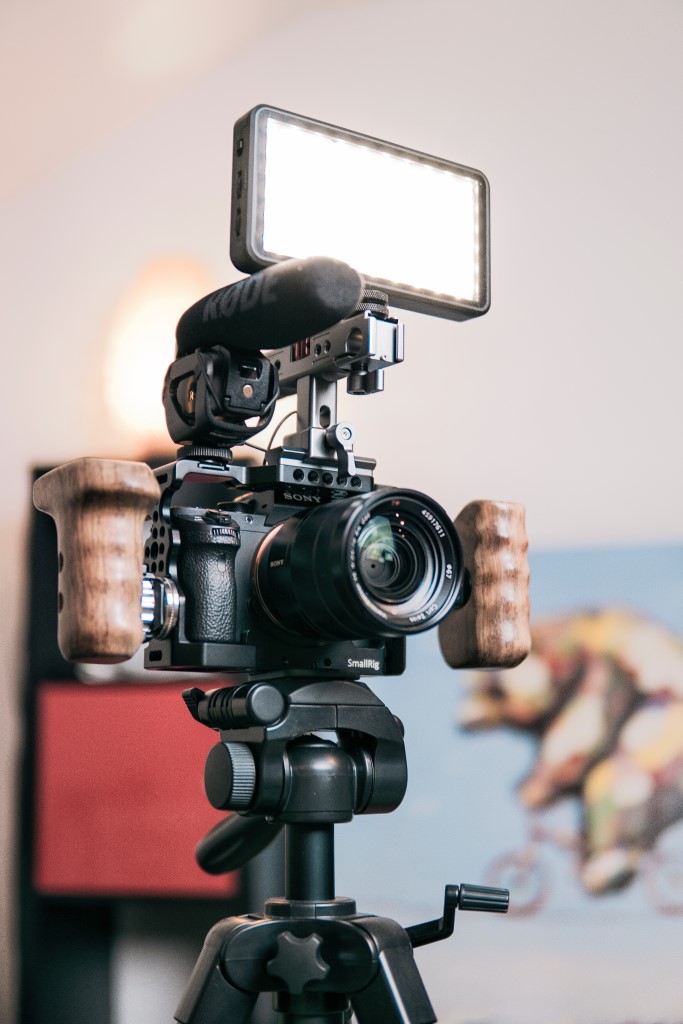
Photo by lucas Favre on Unsplash
No, your flash does not need to be this flashy (no pun intended) or expensive. Yes, you need a flash. Make it yourself for all I care, but please don’t be that photographer who forgets about it completely (or uses the pop-up flash on your camera - big mistake!).
While using natural light with your Canon nifty fifty is always preferable, there are times this is not realistic and this is when your flash can come out to play.
Using a flash with your nifty fifty allows you to create specular highlights in your photos that give the image depth and dimension.
Specular highlights can be catch lights in a model’s eyes that tell you what light direction is coming from in a photo.
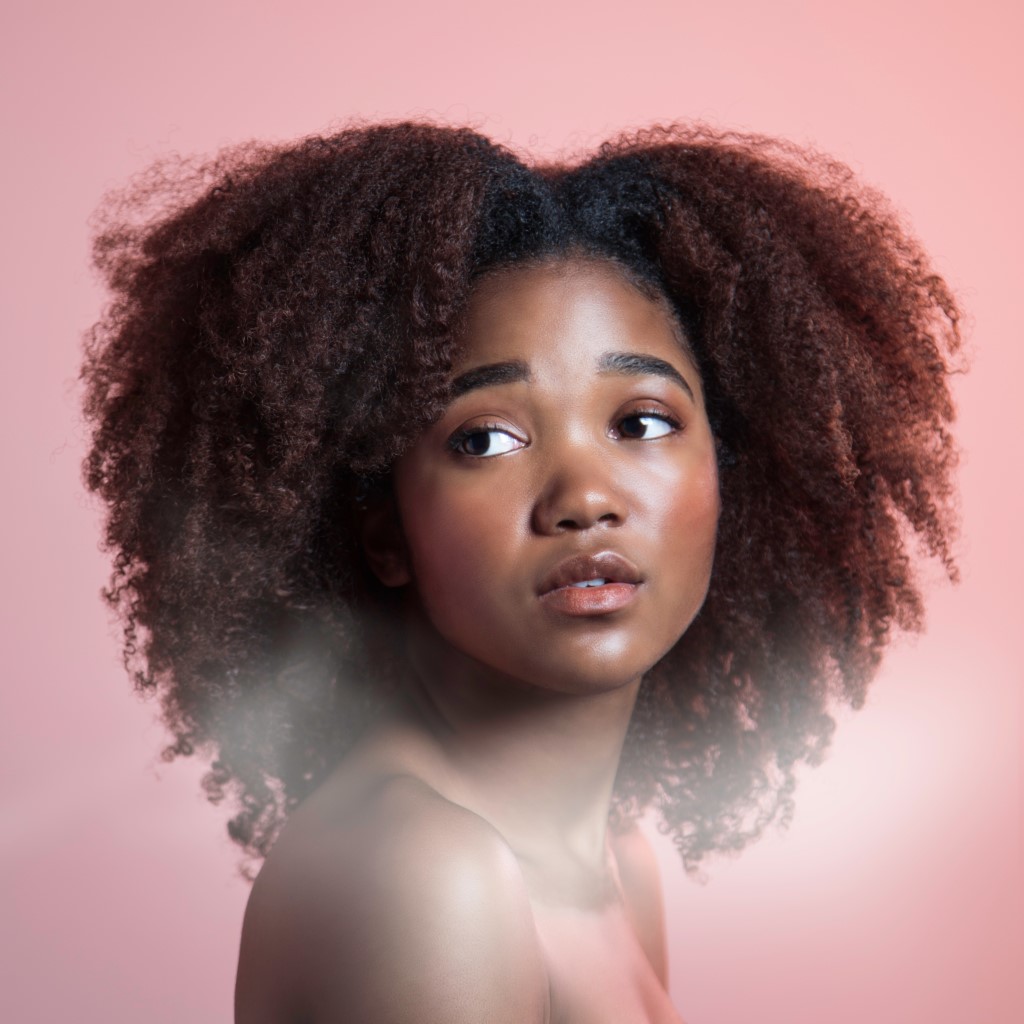
Photo by Jessica Felicio on Unsplash
Or, in this portrait, the highlights on the model’s forehead and inner cheeks create a portrait that feels three-dimensional.
Compare this photo with the one below and it’s easy to see that using a flash with your Nikon nifty fifty or Sony nifty fifty is a much better option than not understanding how to use natural light in your portrait photography.
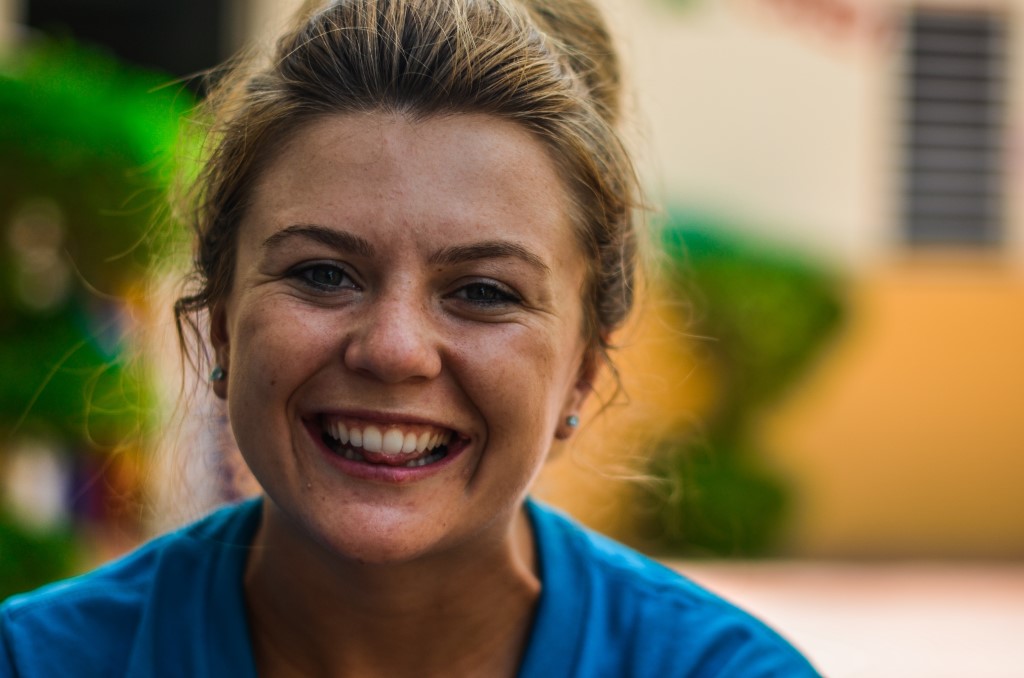
Photo by Michael Mims on Unsplash
Without a flash, this portrait is simply too dark. Besides that, it’s quite flat.
The photographer would have gotten much better results by using a flash to brighten up the model’s face (or by simply having the model face the bright wall behind her).
50mm Lens Tips Are Incomplete Without Learning to Stop Down
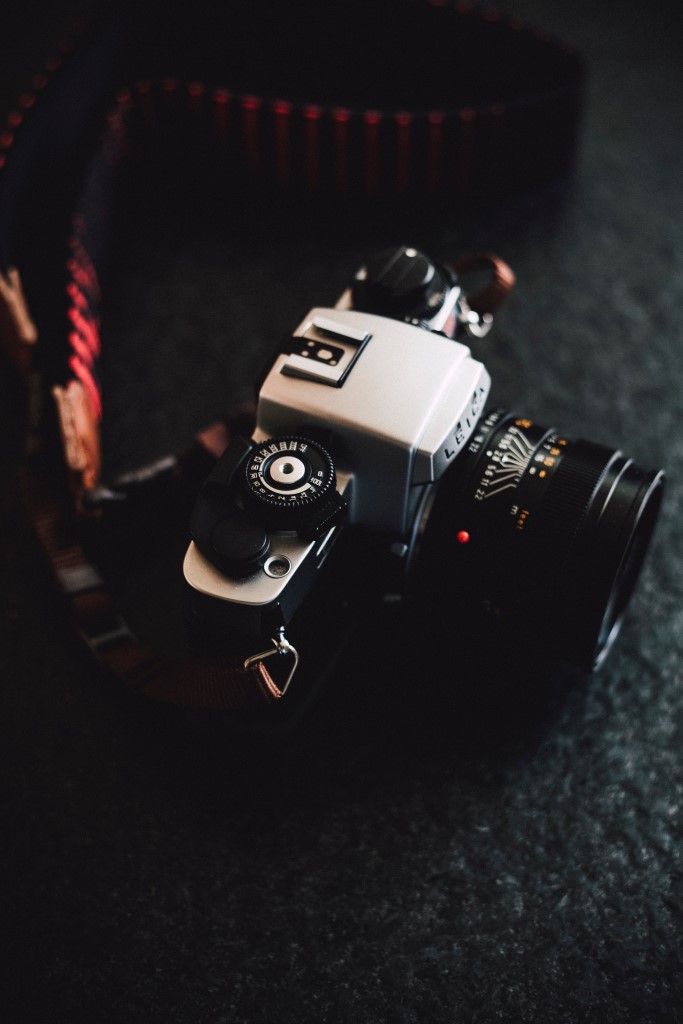
Photo by Markus Spiske on Unsplash
Learning to stop down your images to ensure they are the sharpest they can be is difficult.
By that, I don’t mean that it’s hard to change the aperture value, because that’s really easy. Instead, what I mean is that resisting the urge to slam the lens open to its widest aperture for every portrait you take just because you can is a little tough to do when you first purchase a nifty fifty lens.
The video above by Adorama shows you why most nifty fifty tips lists include stopping down. You can create better-focused photos if you use f/4 or f/5.6 as opposed to f/1.4 or f/1.8 that many beginner photographers are drawn to.
This is because no lens - not even professional-grade lenses - are their sharpest at their maximum aperture. In fact, most lenses have a sweet spotin the f/8 to f/11 range, and that’s the point at which they provide the most sharpness
The easiest way to learn how to stop down with your new 50mm lens is to practice shooting every photo twice.
So, shoot the photo at that huge aperture you can’t resist, like f/1.2, f/1.4, or f/1.8, and then stop down the aperture to f/4 or f/5.6 and take it again. Heck, stop down again to f/8 or f/11 just for the sake of experimentation, and see how changing the aperture changes the sharpness of the shot (and the depth of field, too).
Learn More:
Learn How to Manually Set Your Focus Point
When you were first learning how to use a camera, whether it was back as a child or this morning as a full-fledged adult, the point and shoot method you were most likely taught is to use the center focus point.
Don’t get me wrong - this works sometimes, but the problem you encounter is that not every subject is perfectly in the middle of the frame, nor should it be. This means you have to focus the shot using the center focus point and then recompose the image.
This raises another issue in that doing so messes with the focal plane, so the subject might not even be in focus anymore.
If you instead manually set your focus points to ones in the outer areas of an image, then you can avoid the whole focus-and-recompose issue.
If you aren’t sure how to manually select the focus point on your Canon or Nikon camera, give the video above by Photo Genius a quick look.
The Nifty Fifty Can Do More Than Bokeh
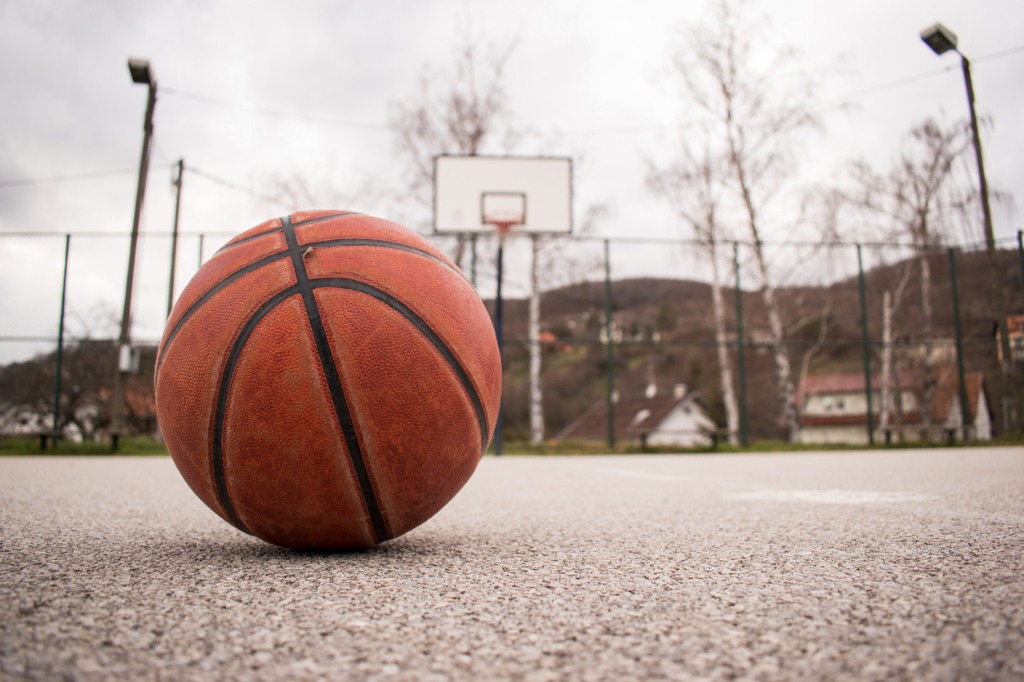
photo by Domagoj via iStock
We all follow that one photography mom on Instagram who found out about bokeh and never turned back. Your nifty fifty lens can do so much more than bokeh, and it saddens me when this is all it’s used for.
Sure, you can have your fun with bokeh, but don’t fall into the trap of using it all of the time or all of your pictures are going to look exactly the same… boring.
Instead, practice things like capturing low-angle or high-angle shots to change the perspective from which the viewer sees the scene. Work on how you frame your shots, too, like using a frame within a frame to create a greater sense of depth in the photo.
Nifty fifties are so easy to use and so versatile, so they’re a great learning tool. Use it to learn more than creating bokeh!
How to Use a 50mm Lens (Another Hint: In Manual Mode)
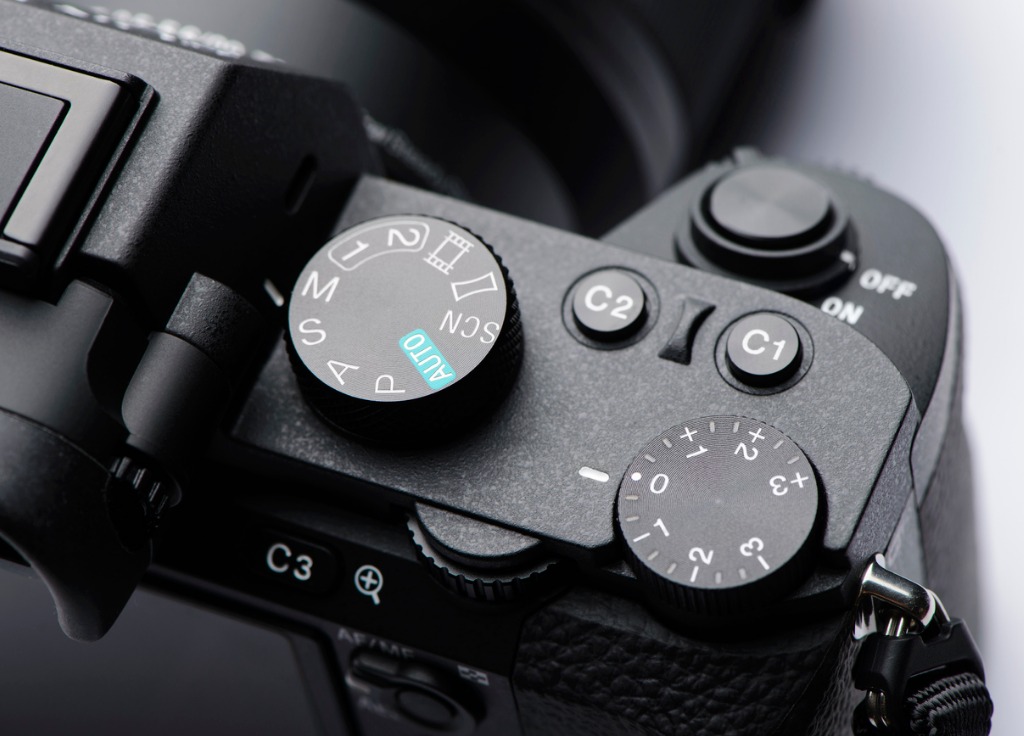
photo by viaBrostock iStock
When you’re learning how to use a nifty fifty lens, you should be working with this ultimate goal in mind: You should be able to shoot completely in manual.
Controlling your ISO, shutter speed, and aperture yourself allows you full creative control of your photos.
And though initially it will be a little overwhelming, at the end of the day, you’re a much better judge of the light in a scene than your camera is!
When switching from using fully automatic mode to manual mode, you will make a lot of mistakes. But through these mistakes you will learn what an under- or over-exposed photo looks like and you will further learn how to manually set your focus points. What’s not to like about that?
Where to Buy a Nifty Fifty
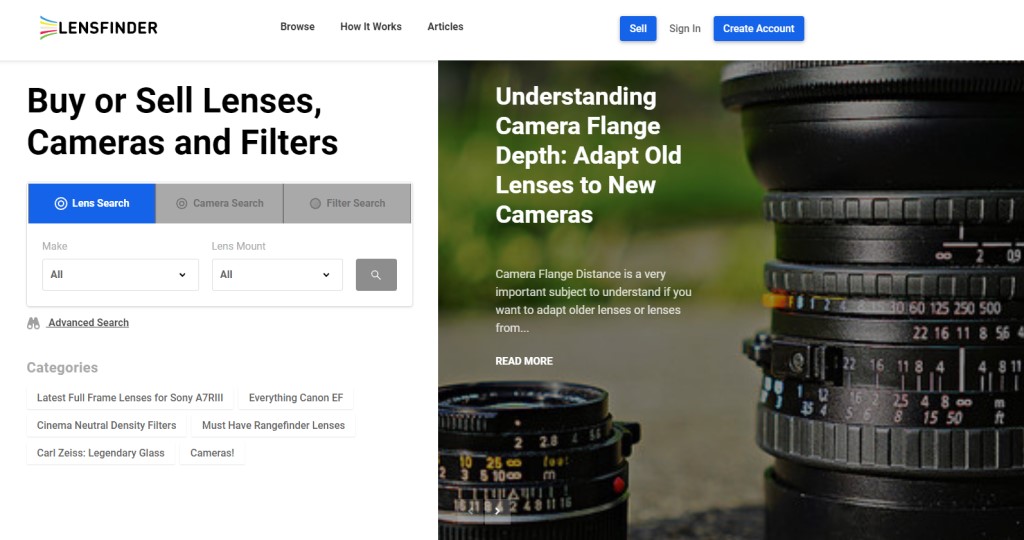
So now that you know how to use a 50mm lens, you may be wondering why you read this whole article and don’t actually own one.
Nifty fifty lenses are incredible because they are versatile, but also can be purchased relatively inexpensively.
I bought my last Nikon 50mm on Lensfinder for a better price than a similar product I found on Amazon.
Plus, Lensfinder is great because it’s a whole website of camera enthusiasts selling their cameras and camera gear to other camera enthusiasts. I’ve asked a slew of very in-depth questions to sellers before and most of them take the time to answer my questions in full. Try finding that on eBay!
Lensfinder, unlike other online platforms, works incredibly hard to ensure you’re never scammed on the website. I’ve bought camera lenses on eBay before and have had much worse luck.
So, they’ve got a great selection of lenses, fraud protections built right in, and lower fees than what you’ll find elsewhere. That’s not a bad combination if you ask me!
Check out their lenses here.
Learn More:
We Recommend
How to Safely Sell Your Used Lens

You know what sucks? Having to sell old gear.
As a matter of fact, I’m sure you can relate to this story...
Last year, I was selling one of my lenses (a 70-200mm) because I wanted to upgrade to the newer VRII.
I did what many photographers have done, and I listed it on Craigslist.
Feeling relieved that I actually got around to finally posting the ad, I put my feet up and waited for my phone to buzz with inquiries from excited buyers.
What came, though, was something I didn’t want. My phone was buzzing from a ton of people who wanted to buy my lens, but strangely, they were all from out of town.
On top of that, they offered to overpay for my lens and pay $150 for shipping without even seeing the lens or asking any legitimate questions.
Here's a screenshot of an actual conversation I had with a potential buyer:

Sketchy, right?
That experience made me wonder, how can I more safely sell my used gear?
Well, after some digging, I found the answer - Lensfinder.
Lensfinder is the Best Place to Sell Used Lenses
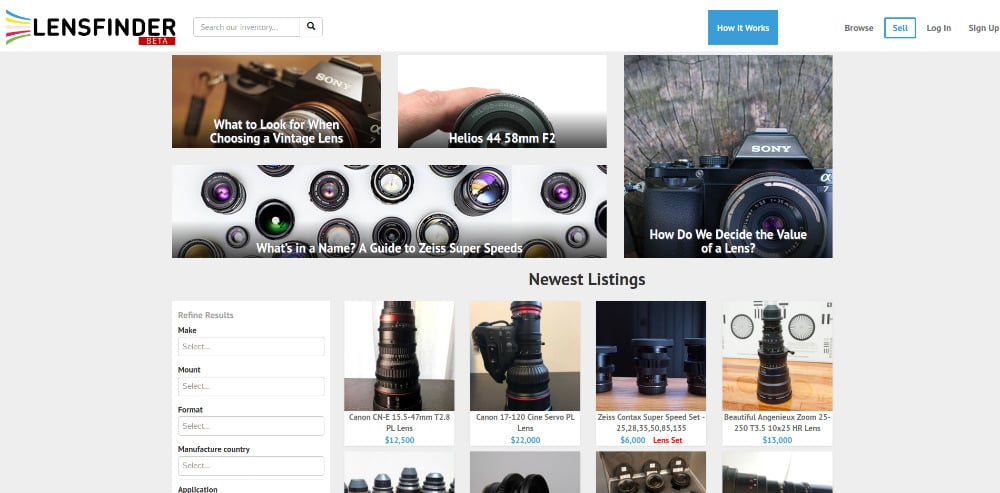
If we're talking about safely selling your used lenses, there's really no better option than Lensfinder.
If you haven't yet heard of this site, let me enlighten you just a little bit...
It's a marketplace for buying and selling used lenses that photographers are raving about.
Since it's a marketplace, Lensfinder doesn't actually sell anything but gives photographers like you and me the online space to sell used gear.
The beauty of Lensfinder is that it focuses solely on used lenses, so you don't have to compete with a bunch of other camera gear to get people's attention on your lenses.
Another great thing about Lensfinder is that it's a community built specifically for photographers.
By that, I mean that unlike eBay and Craigslist where scammers and questionable buyers and sellers seem to be in such great numbers, Lensfinder is a membership site just for photographers.
So, you have to create an account (which is free) before you list your lenses for sale (which is also free to do). That alone helps weed out the riff-raff, so to speak, so legitimate buyers and sellers can get together.
List your used lenses for sale today on Lensfinder!
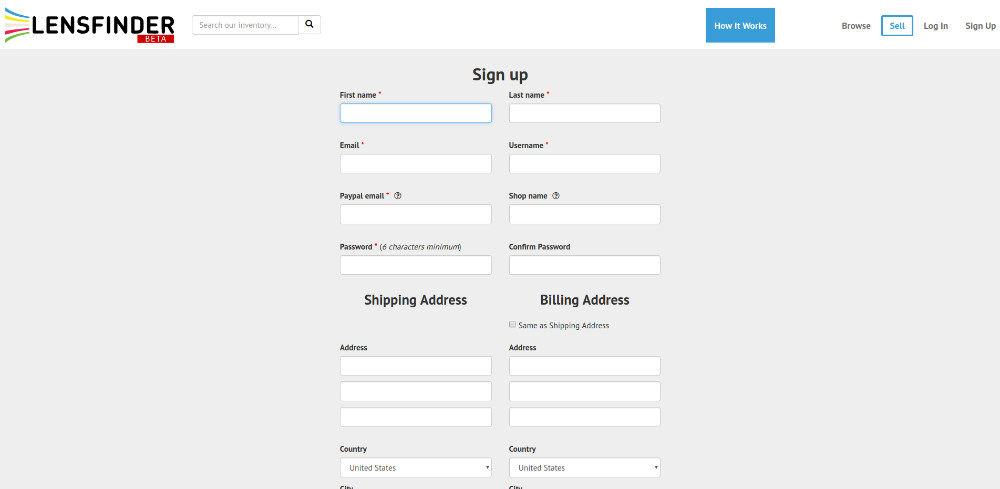
And once you create an account and list your lens, Lensfinder has plenty of other awesome features for you.
For starters, you can communicate with potential buyers right within the platform. I like that because it means I don't have to give out my phone number for crazy buyers to blow up my phone.
The other nice thing about Lensfinder is that you take care of payments right then and there. Lensfinder currently supports PayPal and will soon offer support for wire transfers and credit cards.
Again, that's great for folks like you and me who would prefer to have guaranteed payment rather than meeting a stranger in a random parking lot to hopefully get paid (and not get robbed!).
You get all that for free, too. The only fees you pay to Lensfinder are when your lens sells, and even then it's just 3.99 percent (with additional fees from PayPal or your bank, of course). Way less than eBay, in other words...
But as awesome as all that is, here's the kicker: Lensfinder is the safest way to sell used lenses because they have advanced fraud filtering software.
That means they vet both buyers and sellers, have seller protection options, and offer mediation if there's a problem.
There's also a Lensfinder feedback system, so as you complete successful transactions and have happy buyers, you build your credibility as a reputable seller.
In other words, Lensfinder is simply head and shoulders above those "other guys" eBay and Craigslist.
List your used lenses for sale today on Lensfinder!
Getting Ready for the Sale
Now that we've established the safest place to sell your used lenses, let's review the steps you need to take to get ready for the sale.
Take Good Photos
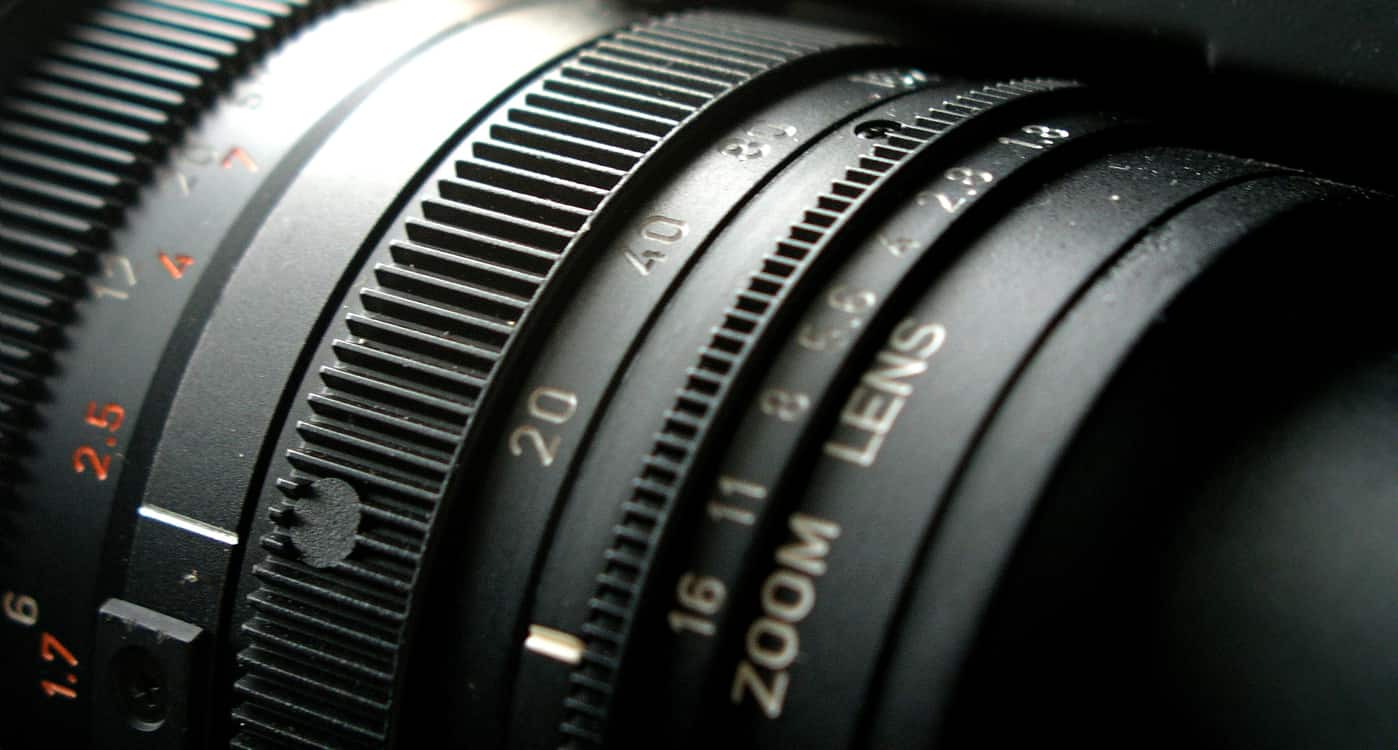
This is a real DUH moment, isn't it?
Since we're all photographers here, we all know that good photos are more likely to help you sell your lens than bad photos.
The better your gear looks, the more people that will click on the listing, and the more likely you'll be to sell the lens for the price you want.
More than just doing a better job of showing off the gear you have for sale, high-quality photos also show your attention to detail, which, in turn, tells sellers that you're the kind of person that takes care of gear.
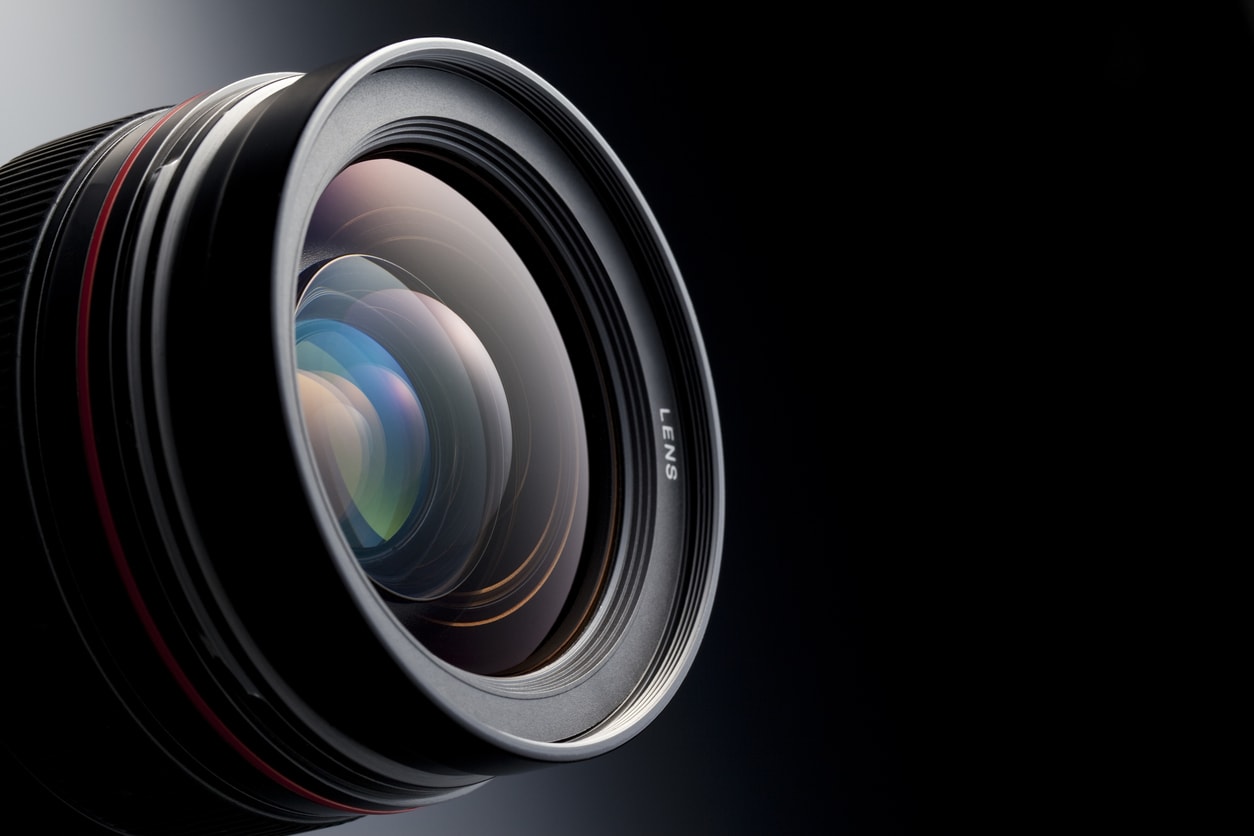
So, don't just slap your lens down on the dining room table and take a snapshot with your phone.
Set it up like you're taking a portrait of your baby - take care when posing the lens so it doesn't roll around, ensure you've got great lighting to highlight its features, and give it a good cleaning beforehand.
Think about using white cardstock for the background to give the lens some separation from the surroundings, take photos at different angles with different points of view, and include images of any accessories, too (i.e., the owner's manual, lens caps, lens hoods, or the original box).
Be Honest
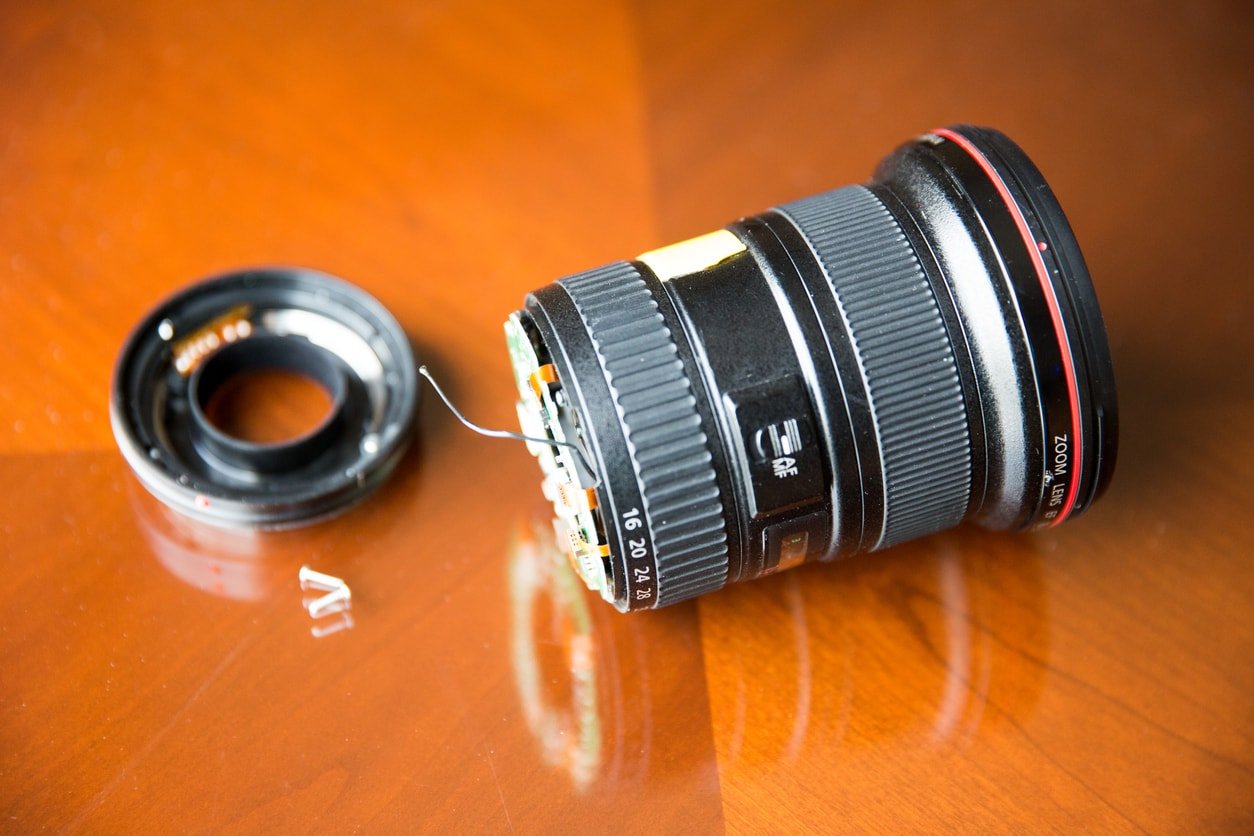
If you take high-quality photos, it'll be hard to disguise any exterior defects, even if you wanted to.
But this speaks to a larger point about giving an honest assessment of the gear.
If it's your most beloved lens, you need to take the rose-colored glasses off when you describe it.
For example, tell buyers about every defect you know of - scratches on the housing or the glass, any issues with the zoom or focus ring, and the like. Note if there's issues with the aperture, if it makes strange noises, if there's dust or fungus inside, and so forth.
When it comes down to it, just be ethical. Don't say it's in "like new" condition if it's really something that should be thrown in the dumpster.
List your used lenses for sale today on Lensfinder!
Be Open
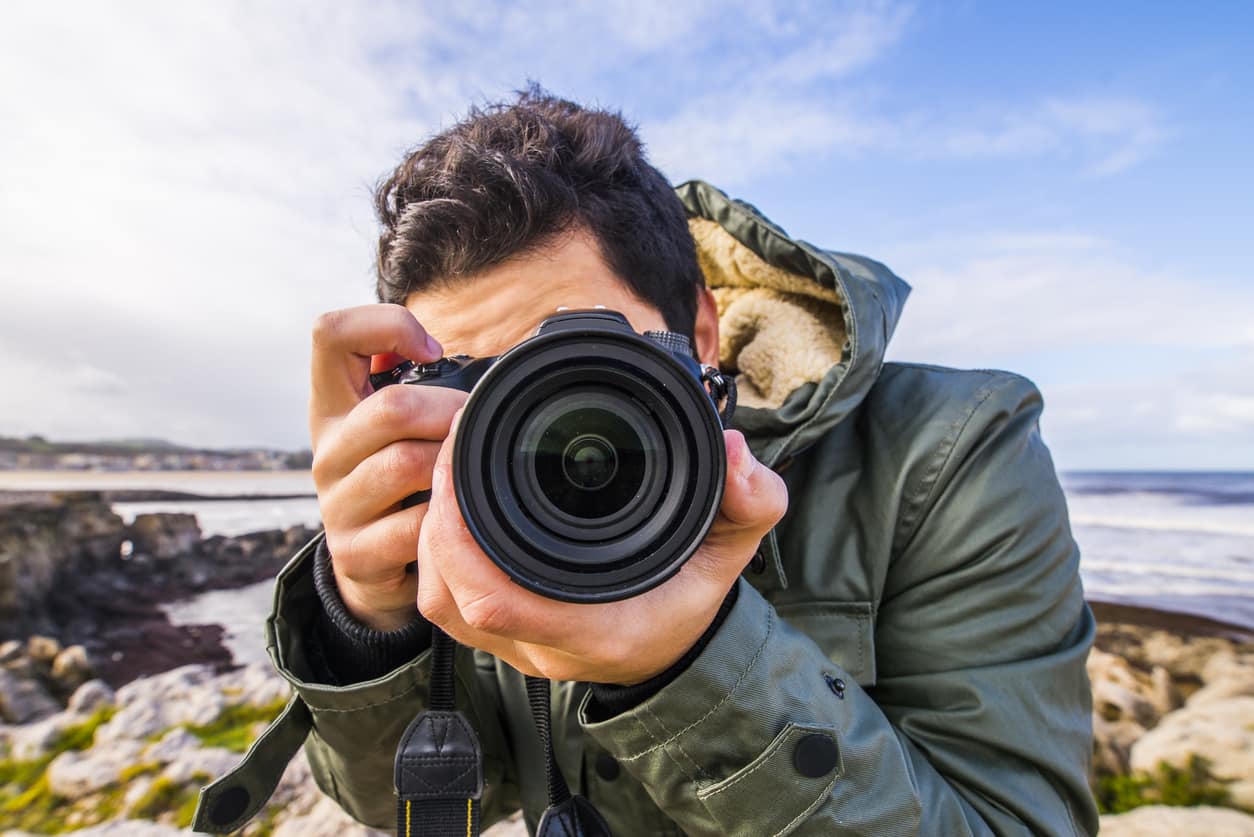
A great way to draw buyers in is to tell them why you're selling the lens.
In fact, if you can connect with potential buyers by telling a story, that's even better.
For example, in your Lensfinder listing, you could put something like:
I'm selling my 85mm lens. Don't need it anymore.
Or, you could put something a little more informative, like:
After saving up for a long while, I've finally purchased my dream lens - a Sigma 85mm f/1.4 DG HSM ART. Now that I have this bad boy, it's time to part with my trusted friend over the years, my Canon 85mm f/1.8 USM. It's served me well and now I'm offering it for sale so someone else can derive as much joy out of it as I have.
It literally took me an additional 20 seconds to write the second description than it took to write the first. Which one do you think will inspire buyers more?
Be Prepared for Questions

Any smart buyer will ask you questions about the lens, so be prepared by trying to answer as many of them upfront as you can.
Buyers will want to know when you bought the lens, if there are any accessories, if you still have the original box and receipt, and if the lens has ever had to have maintenance or work done to correct a problem.
Add this information to your listing, that way you don't have to spend a ton of time answering the same questions over and over again.
Speaking of answering questions, when you get a message from a potential buyer on Lensfinder, respond promptly.
Not only does a prompt response demonstrate that you're a top-notch seller, but it also shows regard for the buyer's time and effort to actually get in touch with you.
Putting It All Together
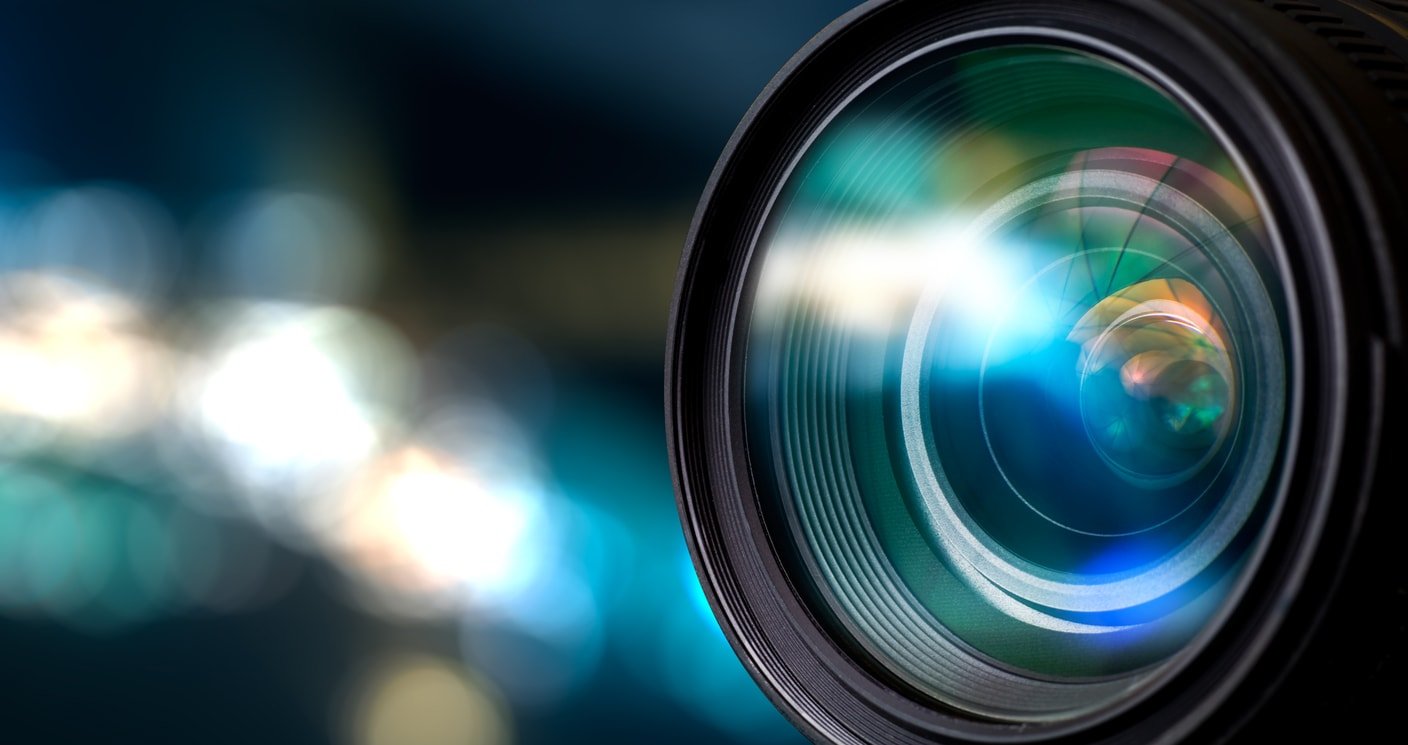
I'm sure you've had nightmare situations selling your old gear just like I have.
But those years of frustration, anxiety, and rip-offs are over now that Lensfinder is on the scene. It's simply the safest, most efficient means of selling your old lenses!
My experiences with Lensfinder have been refreshing compared to past dealings with whacked-out buyers on eBay and Craigslist, and I'm sure you'll find the same to be true.
And as I noted earlier, Lensfinder is free to join and free to list your items. If your lens doesn't sell, you're don't have to pay a dime.
Stop wallowing in the sorrow of trying to sell your old lenses elsewhere. Trust me, Lensfinder is a MUCH better choice.
List your used lenses for sale today on Lensfinder!
We Recommend
How to Take Epic Photos With Your Kit Lens
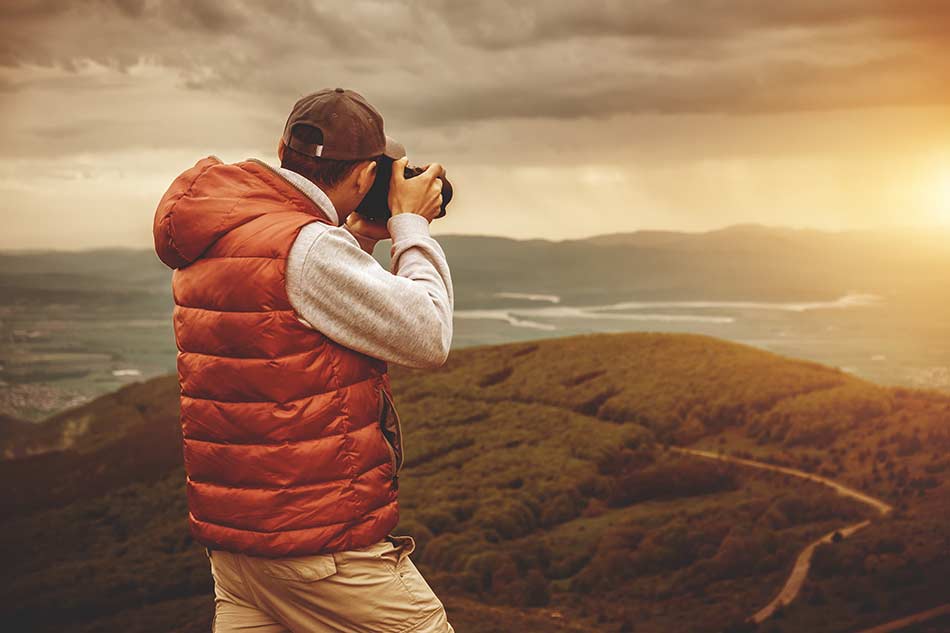
You've probably heard that kit lenses aren't that good.
Compared to high-end lenses, they aren't.
But that doesn't mean that they're so terrible that it's impossible to get great shots.
In fact, given the right set of circumstances, you can get epic photos with the lens that came with your camera.
Here's a few keys to unlocking the potential of your kit lens.
Editor's Tip: If you want to upgrade your lens experience, you can do so without breaking the bank. Find out how.
Don't Shoot in Full Auto
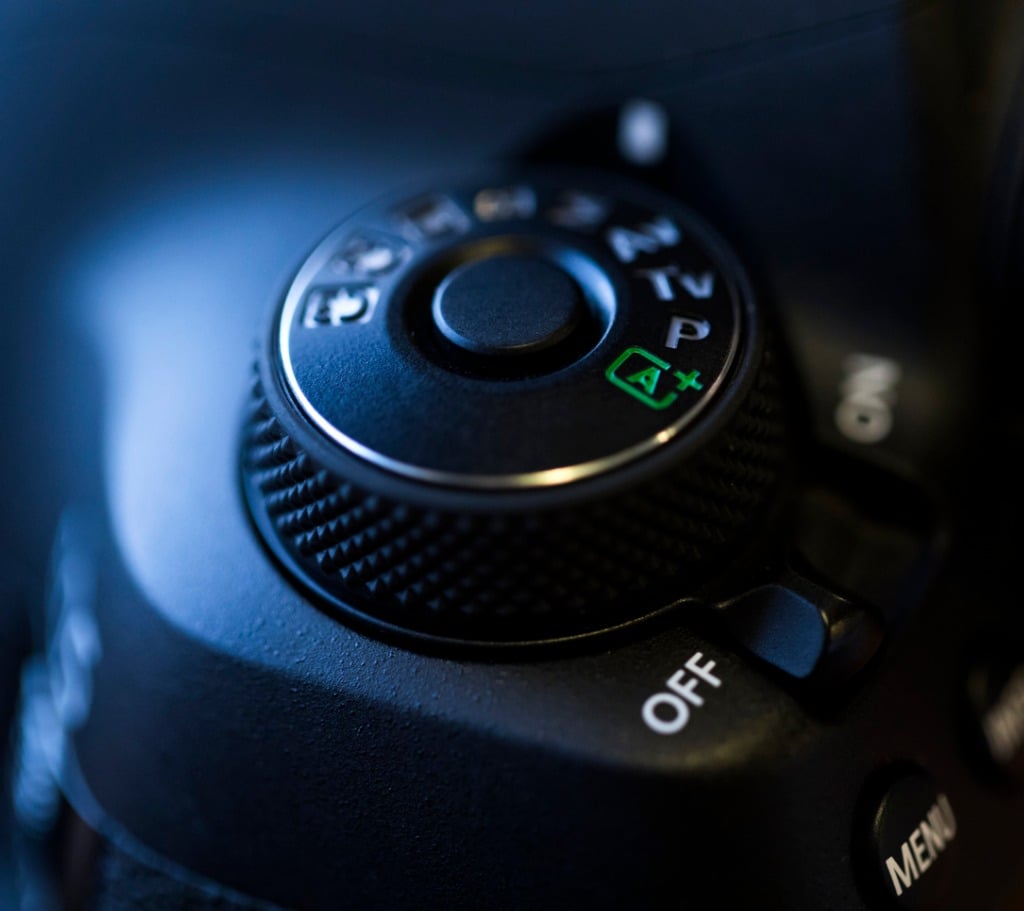
Okay, so this tip applies to using any lens, not just a kit lens.
Full auto mode is fine when you're a brand new photographer, but if you have any amount of time behind the lens, you need to take more control over what the camera does.
After all, the more control you have, the more you can get out of your camera and your lens.
That doesn't mean that you have to dive right into shooting in full manual mode, either.
If you shoot in aperture priority mode, you can control the aperture and ISO, and the camera controls the shutter speed.
And since you leave the ISO at its lowest setting in most situations, that means you really only have to adjust the aperture.
But what if you want to shoot a moving subject, like your kid playing soccer or a babbling brook at the local park?

In that case, give shutter priority mode a try.
Shutter priority allows you to control the shutter speed, that way you get to decide if motion is frozen or blurred. The camera controls the aperture.
And, again, you can control the ISO, but in most cases you can just leave it at its lowest setting to get solid results.
Learn More:
Find the Sweet Spot of Your Kit Lens
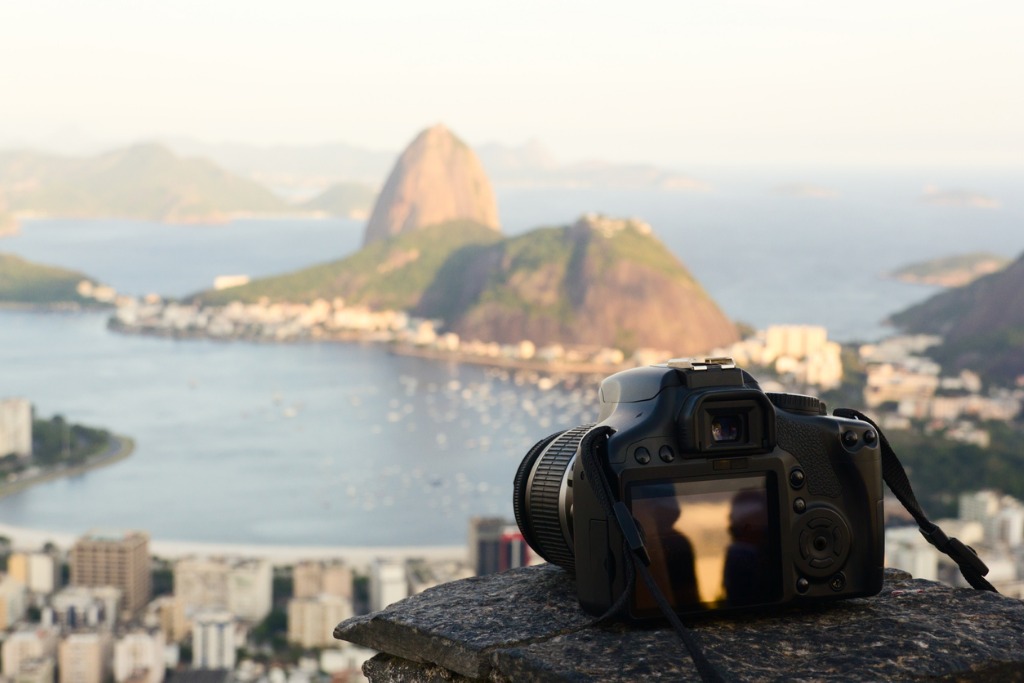
All lenses have a sweet spot, or an aperture setting at which they produce the sharpest results.
This varies from one lens to the next, but is usually in the f/8-f/11 range.
Now, you can't always shoot at that aperture, as evidenced by the previous tip to use f/5.6 when taking portraits to get a blurry background.
But, when you are able to, avoid using the smallest and largest apertures that the lens allows to get the best kit lens performance.
That's because at the extremes, the lens is less sharp and produces more distortion, vignetting, and other unsightly things in your photos.
Editor's Tip:Learn how to find the sweet spot of your lens.
Give Your Lens Some Light
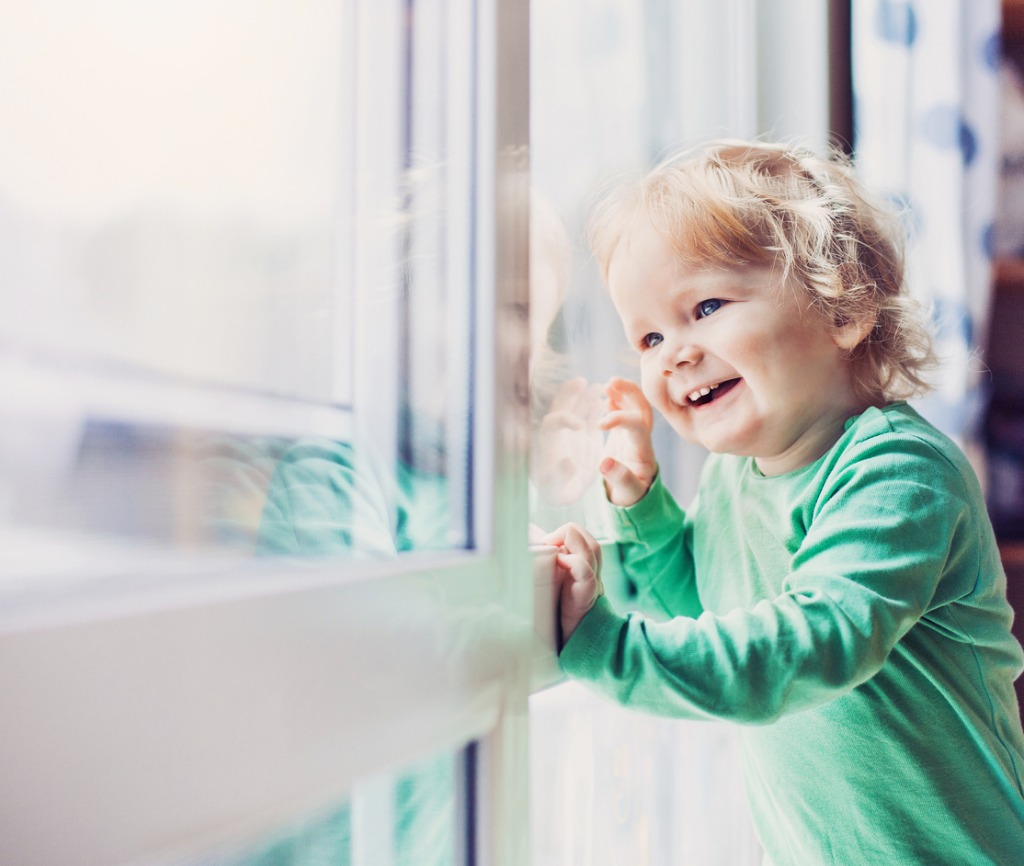
Because kit lenses don't have very large maximum apertures, they aren't the best for shooting images in low-light conditions, like outdoors at dusk or indoors with minimal artificial lighting.
So, to get the highest-quality images out of your kit lens, you'll need adhere to this kit lens photography tip: be sure there's plenty of light for the lens to collect.
That doesn't mean that you can only shoot outdoors during the middle of a sunny day, either...
If you're shooting indoors, turn on all available lights and open any curtains or shades to let in what natural light you can. You can also consider using a flash to brighten up the scene or a reflector as well.
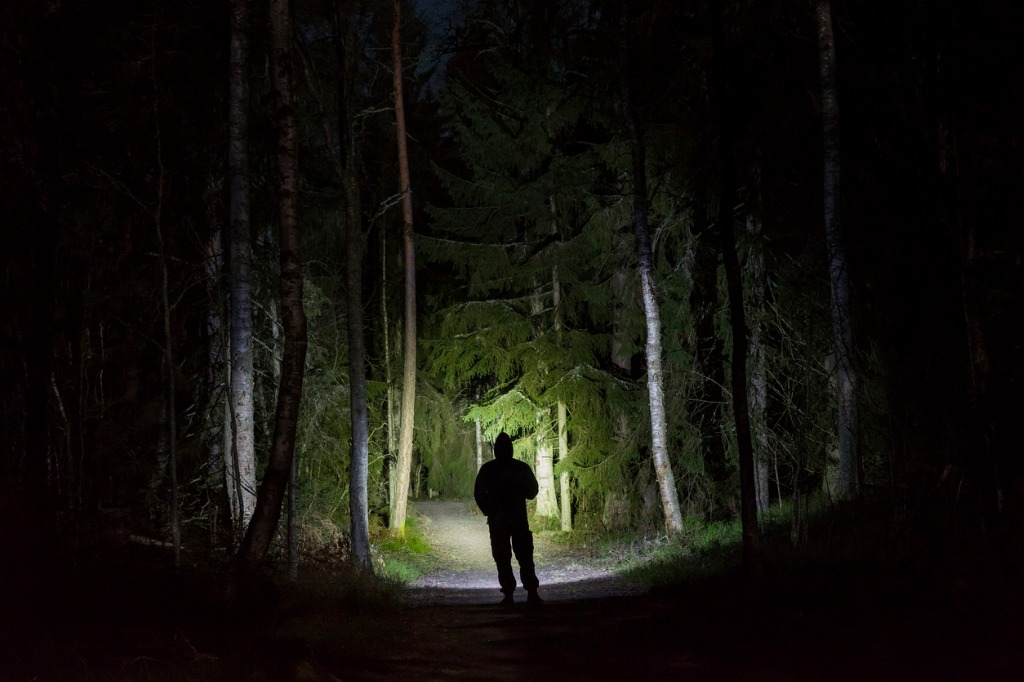
When shooting outdoors at dusk, incorporate light from a flashlight, the headlights of your car, street lamps, and so forth.
Again, these light sources will allow your kit lens to collect much more light so that you can get a cleaner shot and avoid having to boost the ISO to help the exposure.
Of course, you can also put your camera on a tripod and slow the shutter down to give the camera's sensor more time to collect light as well.
Learn More:
Use the Zoom Range to Your Advantage
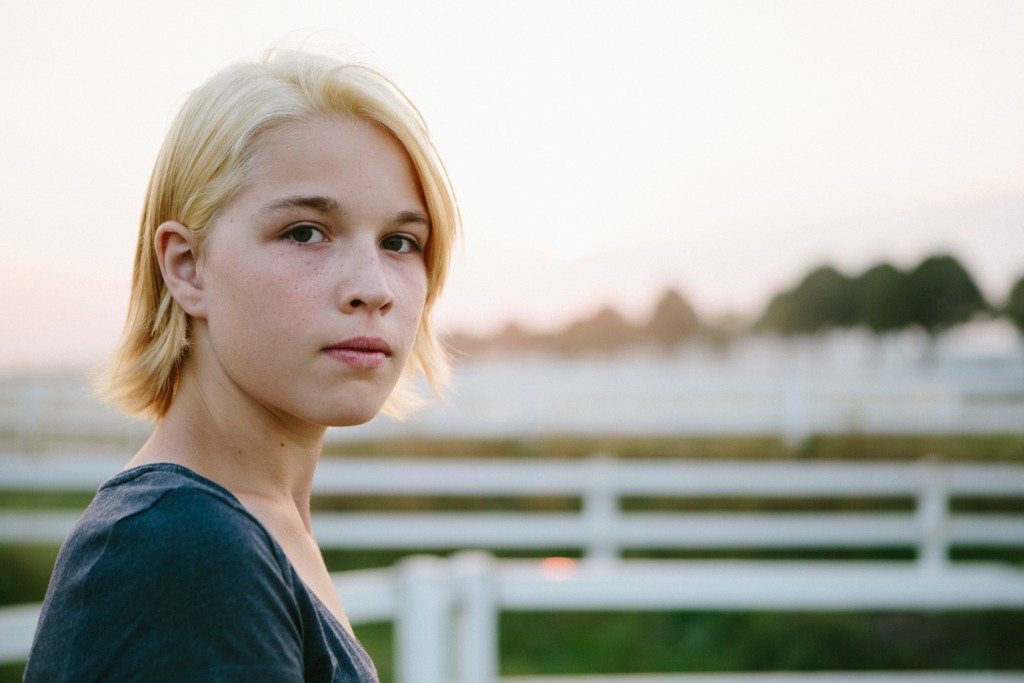
Perhaps the best part about a kit lens is that it has a variable focal length that ranges from about 18mm to about 55mm.
That means you can take wide-angle shots and standards shots with one lens.
So, use that to your advantage and vary the types of photos you take.
Shoot a portrait at 55mm to get a closer view of your subject.
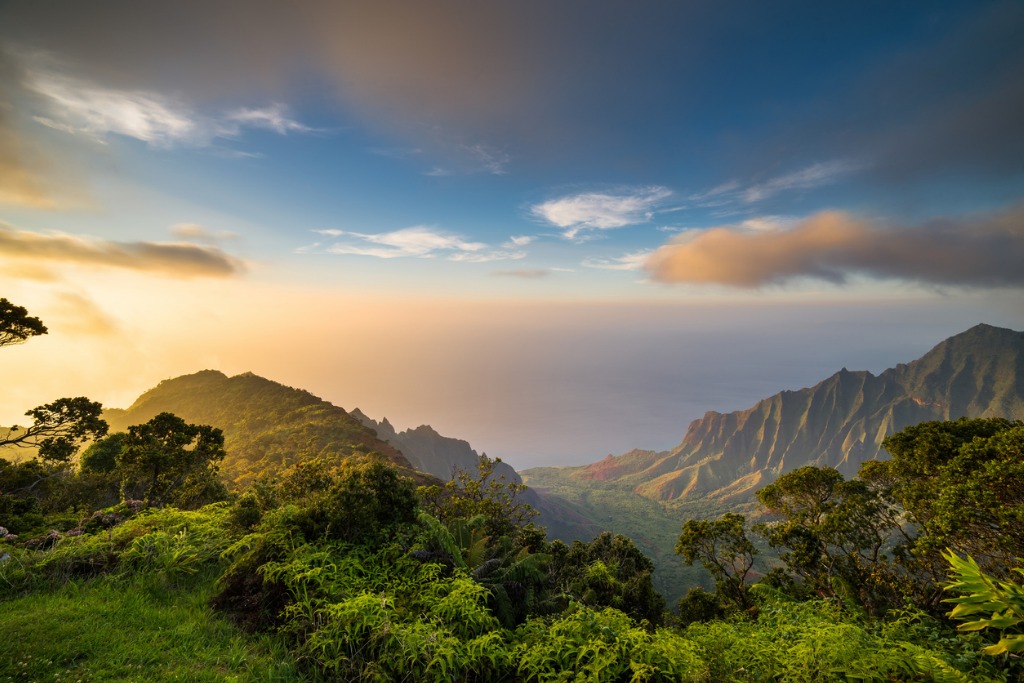
Then zoom out wide to 18mm to photograph a landscape.
Try 35mm for street photography or 24mm for architecture shots.
The point is that a kit lens is highly versatile, and that opens up many possibilities for you to take all sorts of photos!
Editor's Tip: Get rid of your old lenses and use the proceeds to buy new glass. Sell your old lenses today.
We Recommend
How to Take Good Photos with a Kit Lens

Photo by Luke Porter on Unsplash
This is going to be a crash course in all things kit lens.
For those of you who don’t know, the term “kit lens” can refer to any starter lens that probably doesn’t add much value to a camera kit’s price. Hence, the name. It’s a lens that comes in your camera’s kit.
Kit lenses are usually 18-55mm. Kit lenses act as a beginner’s guide to photography most of the time, but they also have a lot of pros for even the pros.
I’m going to walk you through some pros and cons of kit lenses, teach you some quick tips on how you take good pictures with a kit lens, and finally suggest some updates to your old kit lens.
Table of Contents
- Pros of Kit Lenses
- Cons of Kit Lenses
- How to Take Good Photos With a Kit Lens
- How to Get the Most Out of a Kit Lens
Pros of Kit Lenses

Photo by NeONBRAND on Unsplash
The number one pro of a kit lens is that is extremely versatile. I’m talking, “If I had to pick one lens to take to a deserted desert island,” versatile.
Kit lenses (like the one shown above, right) allow you to zoom up to take portraits, zoom out to take landscape photos, and they do so with decent precision, too.
Kit lenses also offer more freedom.
Fixed focal length prime lenses are great when you need them, but it wouldn’t be my first choice if it were going to be the only lens I could use for the rest of my dried out, sad desert island life.
Kit lenses do a bit of the walking for you when you can’t. Sure, you’d always zoom in with your feet in an ideal world. But, unfortunately, this isn’t an ideal world and unless I want to fight a security guard at the Picasso exhibit, I’m going to need a camera that can do some of my leg work.
Kit lenses in 2019 also possess most of the capabilities of the most expensive lenses from under a decade ago. Many are image stabilized, have improved optics, and other goodies that make them much better than they were years ago.
For example, almost all Canon kit lenses come with Canon’s Image Stabilization. This new update to kit lenses allows you to circumvent one of the biggest cons of kit lenses that professionals complain about… the inability of a kit lens to shoot in low light situations.
Canon’s image stabilization in its kit lenses means you can have a slower shutter speed, let more light into the camera, and do so while holding the camera without as much worry of camera shake becoming a problem.
Get more details about kit lenses in the video above by Nicole S. Young.
Cons of Kit Lenses
As I just mentioned, one of the biggest issues with kit lenses are their inability to take good shots in low-light situations.
While manufacturers continue to improve this issue with kit lenses, most still cannot even begin to compete (with Canon as a rare exception). See how you can get low-light shots with a kit lens in the video above by Jared Polin.
However, there are workarounds for this issue. Long exposure shots with a kit lens can be nearly as good as with a more expensive lens. Slowing down your shutter speed (if you’re using a tripod) also does the trick.
A lot of kit lenses also lack sharpness.
However, a lack of sharp photos is really nothing considering most photographers nowadays are used to shooting on an iPhone or Android and sharpening the images in post-production anyway.
Kit lenses also tend to suffer from chromatic aberration, or color fringing. While this problem will probably persist at least for the next few years of kit lenses, it’s a super easy fix in Lightroom and most newer kit lenses barely color fringe. See how to do it in the video above by Scott Kelby.
Learn More:
How to Take Good Photos with a Kit Lens

Photo by Sara Kurfeß on Unsplash
Here’s a quick checklist to get you the best-quality photos with a kit lens:
- Use a short focal length for any wide-angle photography.
- Normally, you would use a wide-angle lens for landscape and architecture photography, among other types. So, when you’re using a kit lens to shoot something you would otherwise want a wide-angle lens for, you need to use the shortest focal length possible.
- If your kit lens is a 18-55mm, crank that bad boy down to 18mm if you’re taking pretty pictures of Roman architecture in Italy.
- Use a long focal length for portraits.
- When you’re using your kit lens to shoot portraits, use a long focal length and shoot at a wide aperture, like 55mm and f/5.6, respectively. While f/5.6 isn’t exactly a huge aperture, it’s the largest available on most kit lenses when zoomed in. Besides, on a crop sensor camera, your kit lens has an effective focal length that’s much longer (i.e., 88mm on a Canon camera), so you get some nice compression that’s flattering for the subject.
- Use a tripod (as often as possible).
- You definitely need a tripod (or at least some other means of minimizing the camera’s movement) if you’re going to be shooting night scenes (kit lenses stink at low light photography, as we discussed) or if you’re shooting landscapes (maximize the sharpness in your photo, which we also discussed).
- Use natural light whenever possible.
- This is just plain good advice for your photography career as a whole, but it’s especially pertinent when it comes to a kit lens. Use natural light to your advantage (and your camera’s advantage) by buying a collapsible reflector kit and bringing it with you to photo shoots.
- Shoot RAW.
- Just don’t shoot in JPEG. Please, just don’t do it. You can’t fix your inevitable errors (and your lens’s shortcomings) in post-production if you don’t have an entirely editable file. RAW is the way to go!
- Use Filters.
- Using filters with your kit lens will get you better results each and every time. A Haida circular polarizer, for example, reduces glare, boosts contrast in the sky, improves saturation of plants, and minimizes atmospheric haze. The result? Much-improved landscape photos! Adding a graduated neutral density filter is also a good idea, as it helps balance out the brightness of the sky with the darkness of the landscape to get a well-exposed image throughout. If you want to get really creative, invest in a solid neutral density filter, which blocks out light and allows you to extend the shutter speed to get beautifully blurry movement of clouds, water, and other features.
How to Get the Most Out of a Kit Lens

Photo by ShareGrid on Unsplash
A 24-70mm lens offers similar versatility when compared to an 18-55mm, plus the added telephoto capabilities of this lens are great for wildlife photographers and photojournalists.
These lenses are also similarly durable to your old kit lens. A 24-70mm is essentially just a step up the ladder of your photography career, particularly because they often have much larger maximum apertures for improved low-light shooting capabilities.
One reason you may not have added to your lens collection yet is that you’ve heard how pricey some 24-70mm lenses can be. While this is true of some lenses in the 24-70mm range (I’m looking at you, Nikon AF-S 24-70mm f/2.8E ED VR), Lensfinder has some good, cheap options for a small upgrade to your kit lens.

I use Lensfinder for all of my lenses because their community was built by photographers, for photographers. I’ve found that sellers are knowledgeable and have taken care of their gear, and that’s a definite bonus when buying used.
I also live in a small town and travel all the time so it’s almost impossible for me to find a good camera store near me with many options.
Lensfinder allows me to find other camera enthusiasts who are willing to ship their old equipment right to my door and I just need to pay shipping (the cheapest shipping option available, unlike some other online dealers...eBay).
For the largest selection of upgrades to your kit lens, check them out.
Learn More:
- The Best Sony Lenses for Just About Any Type of Photography
- Rookie Photography Mistakes You Need to Avoid
We Recommend
How to Use Camera Lenses: Secrets for Becoming an Expert
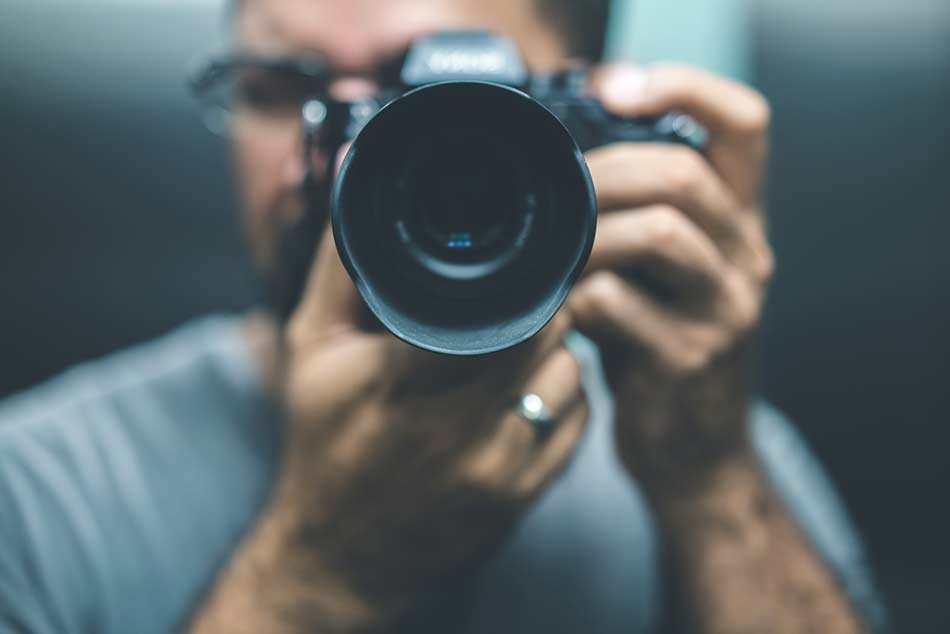
photo byPollyana Ventura via iStock
If you’re a new photographer, the chances are good that you’re spending a lot more time learning how to use your camera than you are learning how to use your lens.
That’s a bit of a mistake, though…
Don’t get me wrong - you need to learn how to use your camera. But neglecting a deep dive into your lens will only hurt your ability to capture the best shots.
That being the case, here’s a few tips on how to use camera lenses.
Mastering Your Lens Tip 1: “Zoom with Your Feet”
If you’re in the photography game long enough, you’re bound to hear the camera lens tip to “zoom with your feet.”
As Mike Browne explains in the video above, this means you need to be unabashed in your pursuit of the best photos. You can do that by getting as close to subjects as you need to get the shot as opposed to relying on your zoom lens to do all that work for you.
Sometimes, this means getting really uncomfortably close to the subject.
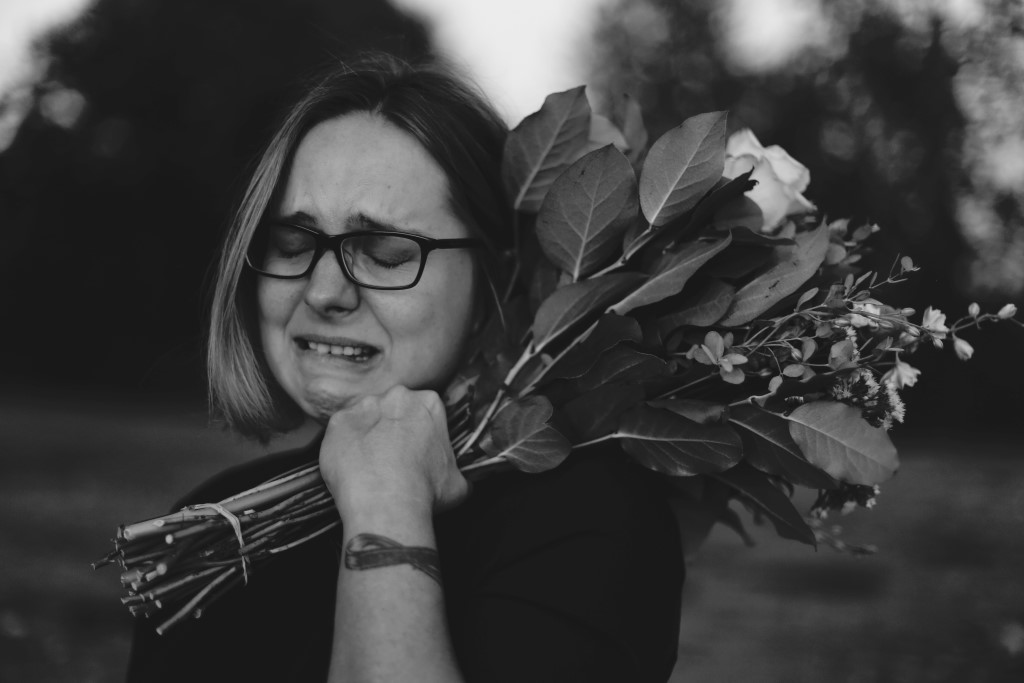
Photo by Ksenia Makagonova on Unsplash
Photojournalists are the ones who use this photography phrase most often because they oftentimes need to shoot horrific moments in a person’s life. A lot of times the person who is being photographed doesn’t want to have their picture taken.
But, it’s not just good advice for photographing the news. It’s also great advice for learning how to work with your new lens.
If you have an 18-55mm lens, then your subject will look much different at 18mm from five feet versus 18mm from 10 feet away.
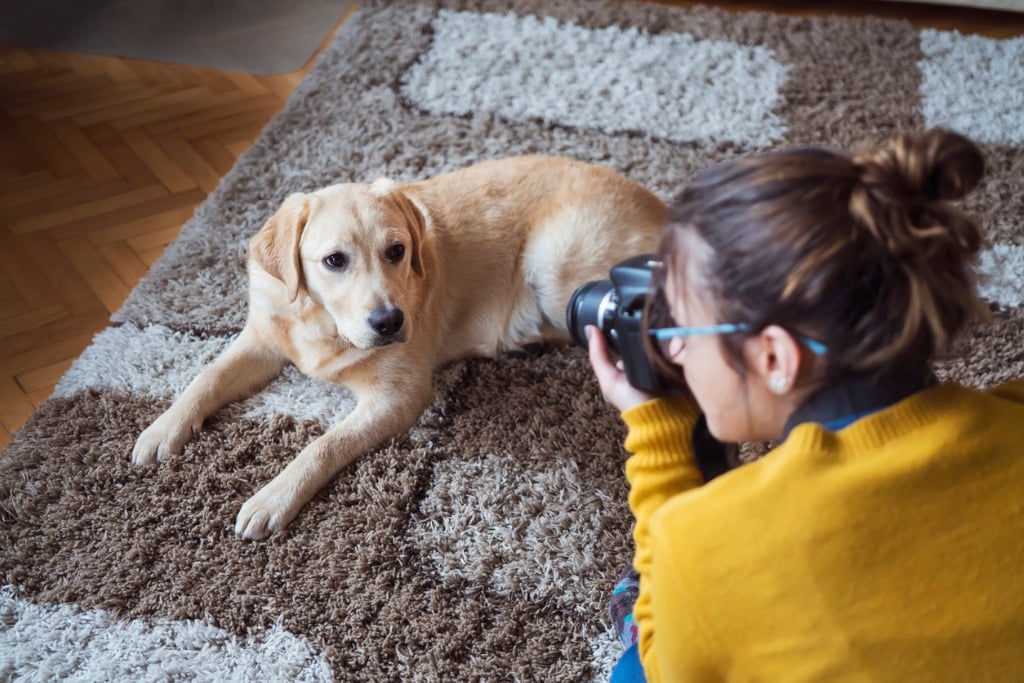
photo by Vesnaandjic via iStock
You’ll never learn how to shoot the best portraits or landscapes or street scenes with your lens if you’re always shooting from the same distance from your subject. You’re not pushing yourself far enough and you’re not educating yourself about your lens, either.
So, rather than simply turning the lens barrel to frame up a different shot, get moving, interact with the subject, and zoom with your feet instead!
Mastering Your Lens Tip 2: Use the “Wrong” Subjects
If you have a telephoto lens it’s pretty easy to shoot portraits. If you have a wide-angle lens, there’s a ton of educational material for you to learn how to shoot landscapes. But, simply using the typical lens that everyone recommends isn’t necessarily how you get the most creative shots.
Here’s a good DSLR camera lens tip: When you Google your lens type, try to shoot the opposite subjects that most people tell you to shoot with that lens.
For example, try using the 100mm macro lens you bought for food photography to shoot portraits instead or use the wide-angle lens you bought for landscapes to shoot architecture photos.
Shooting the “wrong” subjects with your lens enables you to figure out why the lens is used for certain subjects, and you might have the added bonus of finding a new, creative way to examine your subjects through a different lens.
Get more details on using the “wrong” lens in the video above by Park Cameras.
LEARN MORE:
Mastering Your Lens Tip 3: Use Different Focal Lengths
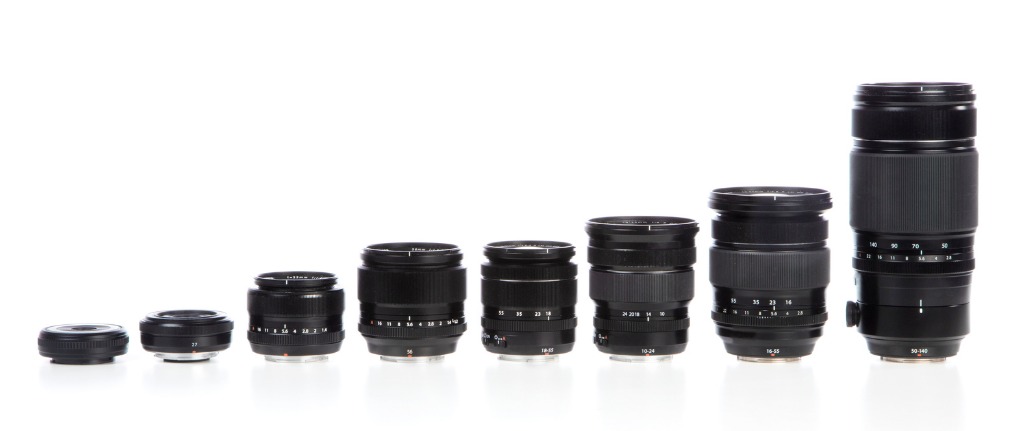
photo by RichLegg via iStock
The great thing about having a lens in your camera bag is that you have many different focal lengths you can test out in one package.
Typically, kit lenses range from 18mm to 55mm, so that gives you a wealth of opportunities to test out different focal lengths.
One trick professional photographers recommend is to think of your zoom lens as multiple prime lenses, just in easier packaging.
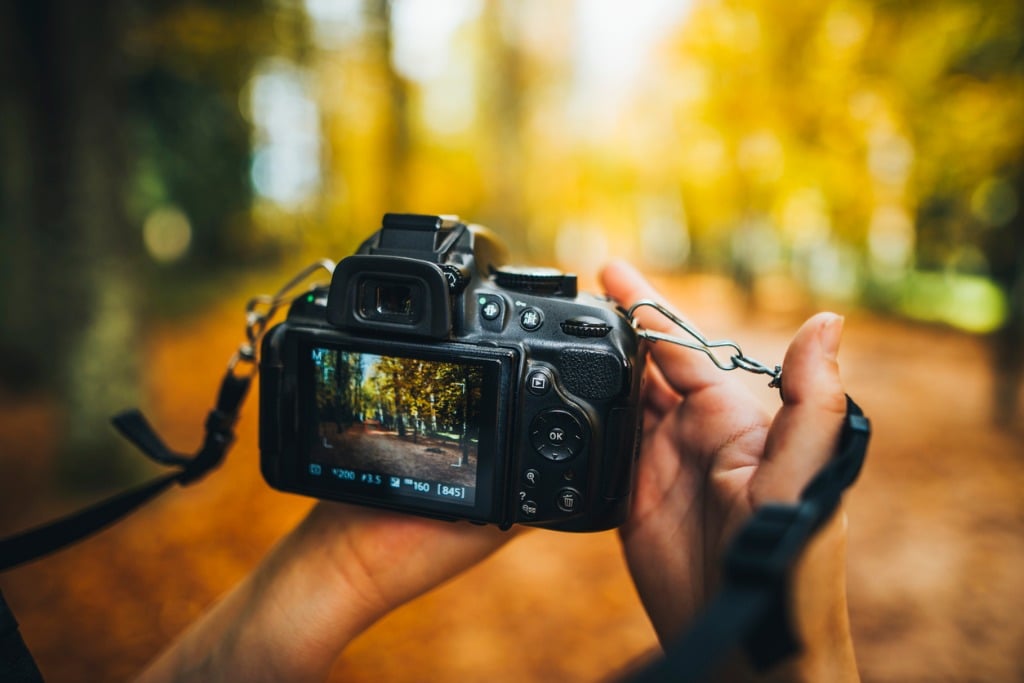
photo by MarioGuti via iStock
So, head out with your zoom lens and restrict yourself to shooting with only one focal length, say, 24mm. No matter what you do, don’t zoom in or out with the lens and instead zoom with your feet to see what you can do with a single focal length.
Then, the next time you go out shooting, choose a different focal length, like 35mm, and see what you can create at that focal length.
Working your way through your lens’s zoom range in this manner is an ideal way to get more familiar with and comfortable with your lens, while also learning how different focal lengths impact the way your photos look.
Mastering Your Lens Tip 4: Don’t Forget Certain Apertures
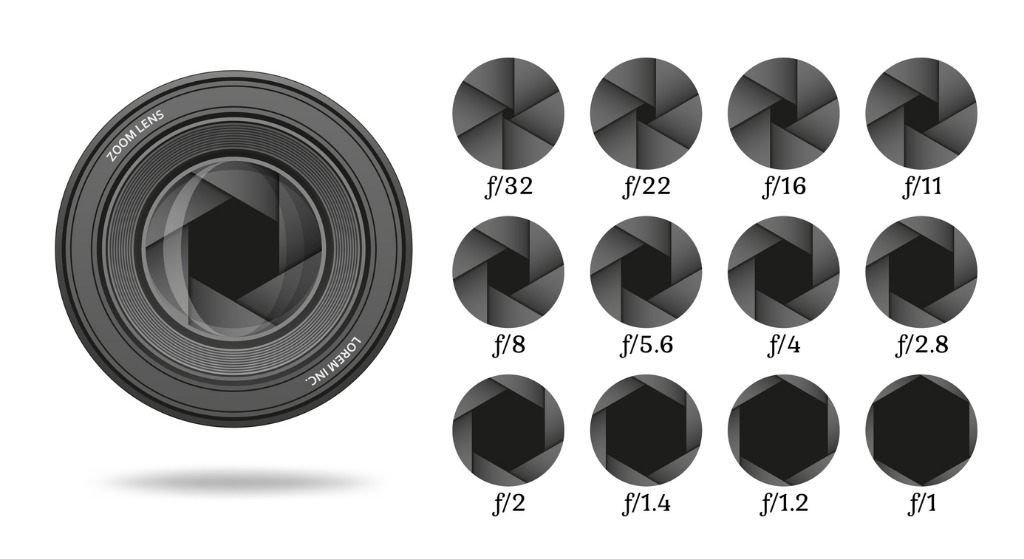
photo by klerik78 via iStock
Yes, your lens gives its optimal performance in its “sweet spot,” which is usually in the f/8-f/11 range. This is true for all lenses - even high-end professional ones.
But, that doesn’t mean you’re allowed to forget about the widest and narrowest aperture settings on your lens. Just because the image is going to be softer at f/2.8 or f/22 than it is at f/11 doesn’t mean that those apertures aren’t useful to you and your photography.
If you take a lot of photos using small apertures, there’s an issue called diffraction. Diffraction makes your photos softer the further you step down in aperture. So, while you are getting more depth of field, your images won’t be as sharp.
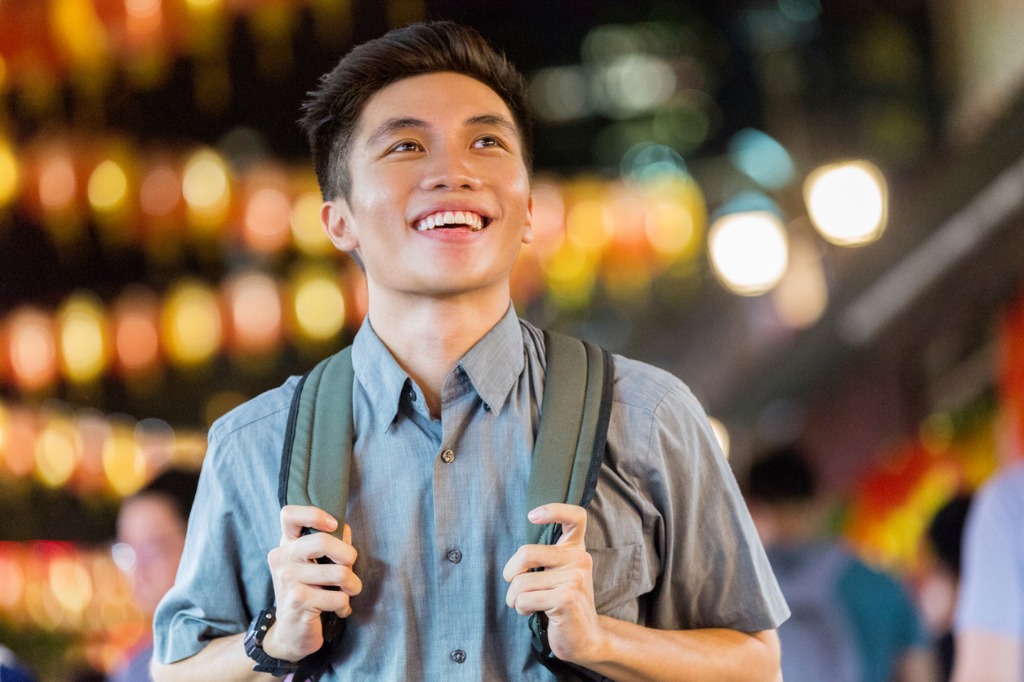
photo by asiseeit via iStock
You can also use different apertures to create bokeh, or background blur, as shown above. If you set your lens to its widest aperture, say, f/2, you’re probably doing so to create more bokeh in your photos.
When you step down your aperture (to something like f/16), your image will get sharper thanks to a larger depth of field, as shown in the landscape photo below.
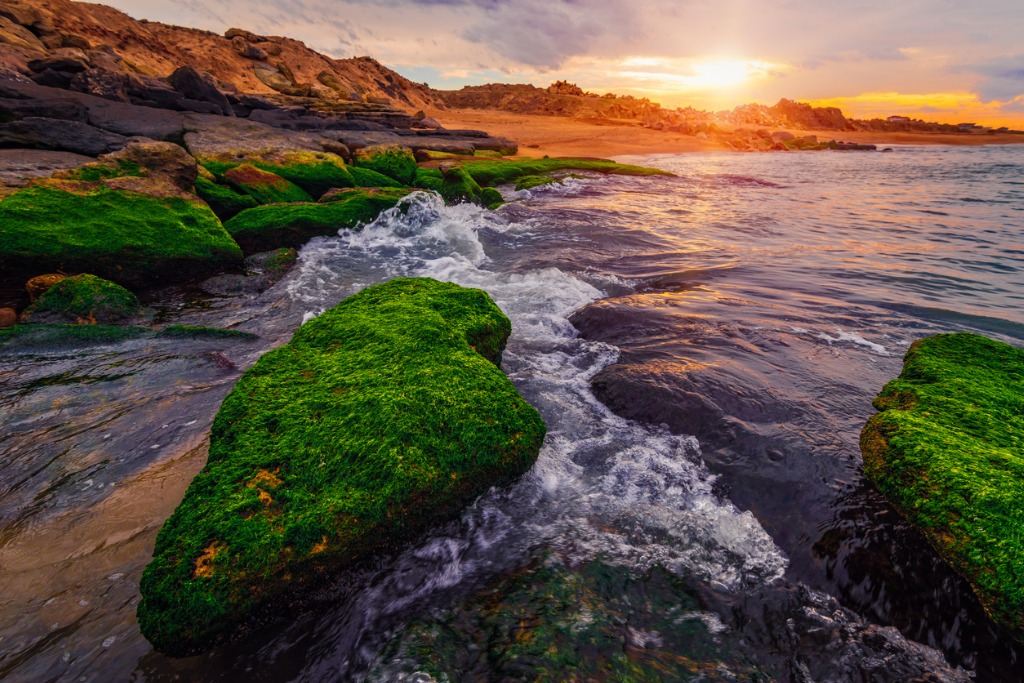
photo by Armastas via iStock
You’ll need to experiment with the aperture on your lens to see how changing it changes the depth of field in your shots. For more details about this topic, consult our beginner’s guide to aperture and depth of field.
Learn More:
Mastering Your Lens Tip 5: Use Just One Lens for a Long Period of Time
It’s no secret that practice makes perfect, but sometimes it’s really hard to practice as much as you need to with one lens. You might get distracted by different shoots and by the desire to add new equipment to your kit.
But, if you really want to master one lens, you need to commit to using it for a long period of time. This might mean using one lens exclusively for two weeks or a month or even longer. See how this challenge plays out over just 30 minutes of shooting video in the video above by Brandon Li.
Doing so allows you to learn the specific idiosyncrasies of the lens, learn its strengths, and its weaknesses. It also allows you time to inspect the images you create with the lens in post-processing to see what apertures are the sharpest or softest, where aberrations might appear, and so forth.
This exercise is more difficult with a zoom lens, but as noted earlier, just select a specific focal length and run with it for a while.
Mastering Your Lens Tip 6: Try Using Vintage Lenses
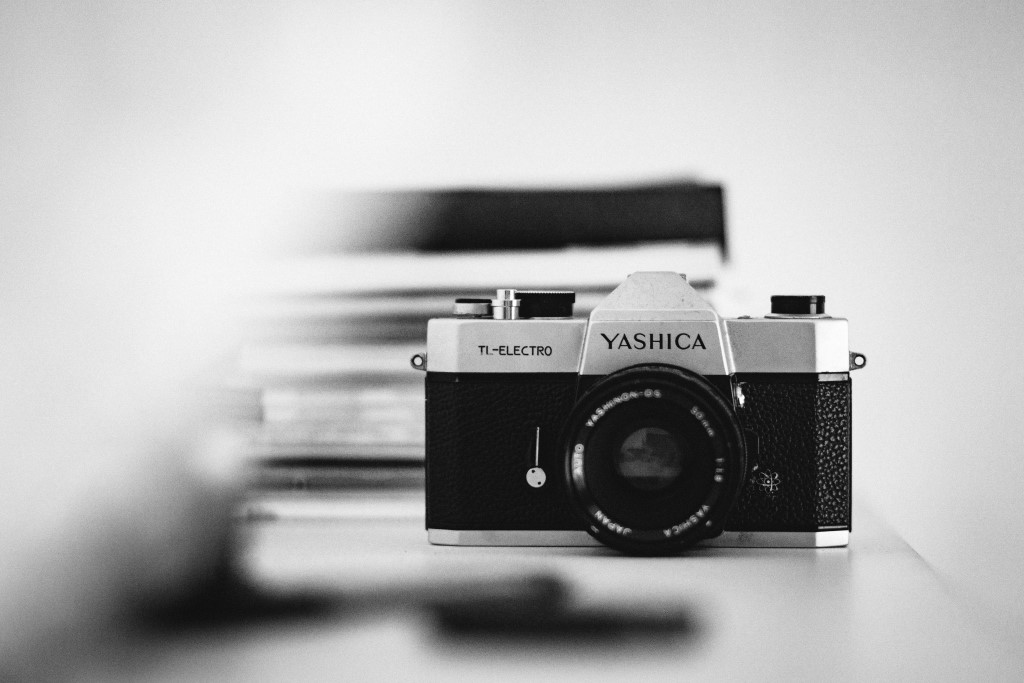
Photo by Bruno Nascimento on Unsplash
I always suggest that new photographers try using vintage lenses. The number one reason for this is because it saves so much money.
Newer lenses can cost a ridiculous amount for someone who is a hobby photographer or is trying to figure out if this may be the right career for them.
Plus, older lenses have great personalities. A lot of my favorite photographers, and a lot of my most creative photographer friends, swear by vintage lenses because they’re able to fill up their whole equipment bag for what I might spend on one lens.
I’ve purchased my fair share of vintage lenses from Lensfinder, which you can think of a bigger, better, and safer version of eBay that is made for camera enthusiasts.
Their website is easy to use, but more importantly, you can find pretty much any camera, lens, or filter you want being sold by another photographer who can answer any questions you might have.
When you find the lens you want, all of the fees are upfront and Lensfinder doesn’t make any money from you buying a lens. Instead, fees are collected from sellers.
You can also rate sellers and view sellers ratings so you don’t get scammed like you otherwise might off of eBay or Craigslist.
Another reason I use Lensfinder is because sellers on this website have some truly incredible vintage lenses.
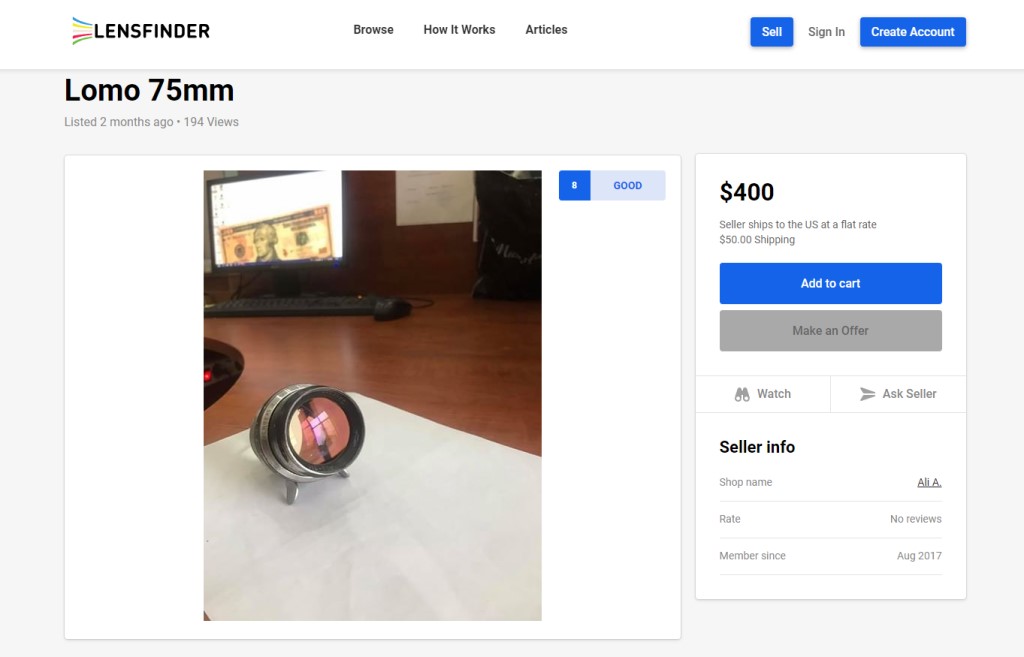
This Lomo 75mm from the 70s is one of the recent finds I found on Lensfinder. Not only would I definitely not be able to find something like this for sale in my city, but I think it’s a steal for the rarity of the lens.
Whether you use a vintage lens, restrict yourself to a specific focal length with your zoom lens, zoom with your feet, or one of the other tips I’ve outlined here, these tips on how to use camera lenses will help you learn more about your gear, learn more about photography, and help you develop a stronger creative eye. What’s not to like about that?
Learn More:
We Recommend
Is a 24-70mm the Best Landscape Photography Lens?
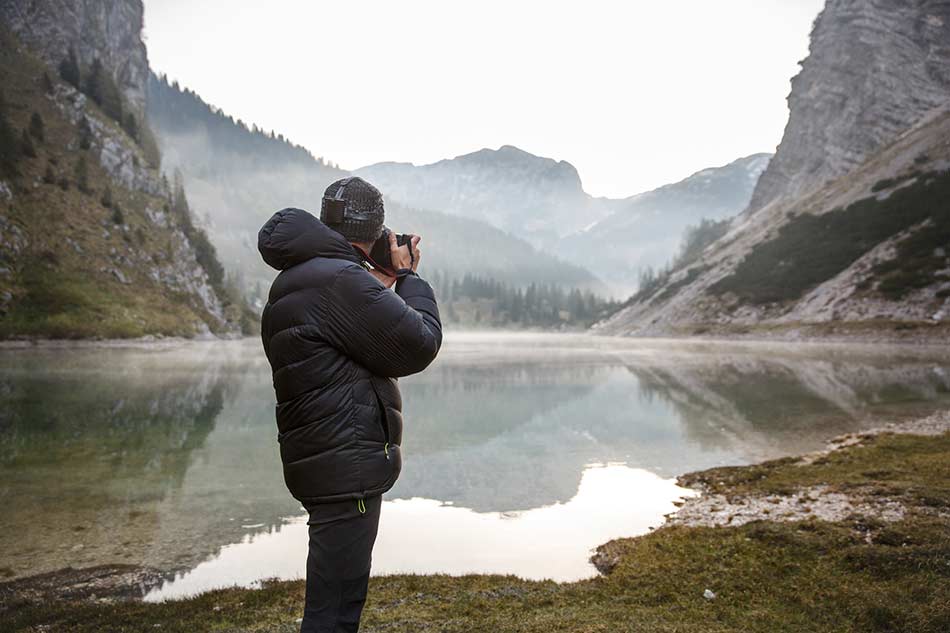
photo byzlikovec via iStock
The answer to the question posed in the headline of this article is probably one that will depend on who you ask.
Many landscape photographers will say no way - a 24-70mm is not the ideal landscape photography lens. Other landscape photographers will wholeheartedly agree that you can’t get much better than this lens for landscapes.
If you’re in the market for a new landscape photography lens, I’d like to argue that a 24-70 is where it’s at. Let’s explore why.
Need to replace an old, worn out lens? Find a new-to-you lens at a great price.
Best Landscape Photography Lens: A 24-70mm is Versatile
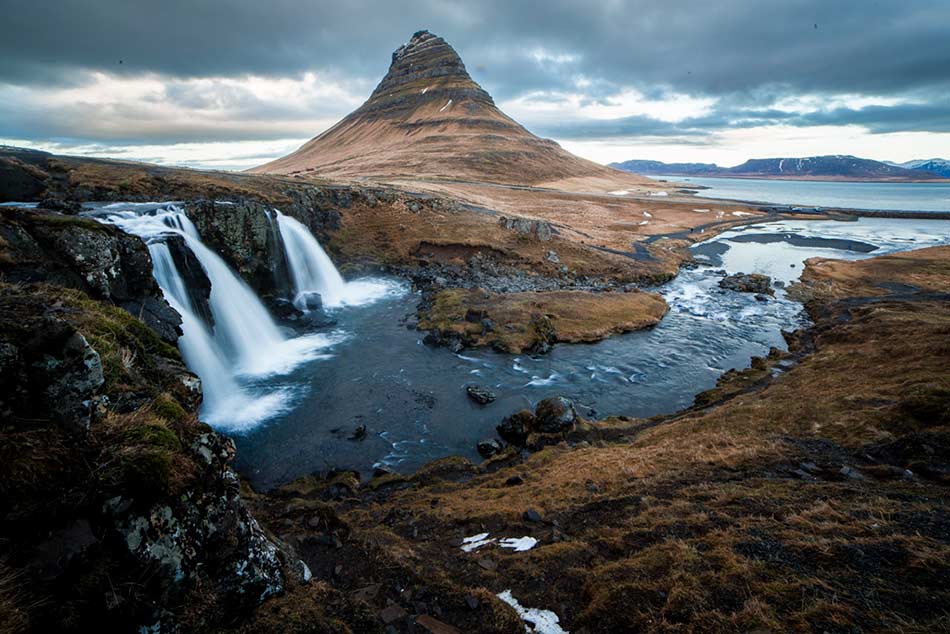
Photo by Martin Jernberg on Unsplash
If you’re shooting with a full frame camera, a 24-70mm lens offers tons of versatility for a landscape photographer.
At 24mm, you’re wide enough to get those glorious, wide-angle views of sweeping landscapes.
At 35mm, you get images that are beautifully framed with a standard view that’s so pleasing to the eye.
Zoom in a little further to 50mm and you can start creating more intimate landscape photos that bring more of the details of the larger landscape into focus.
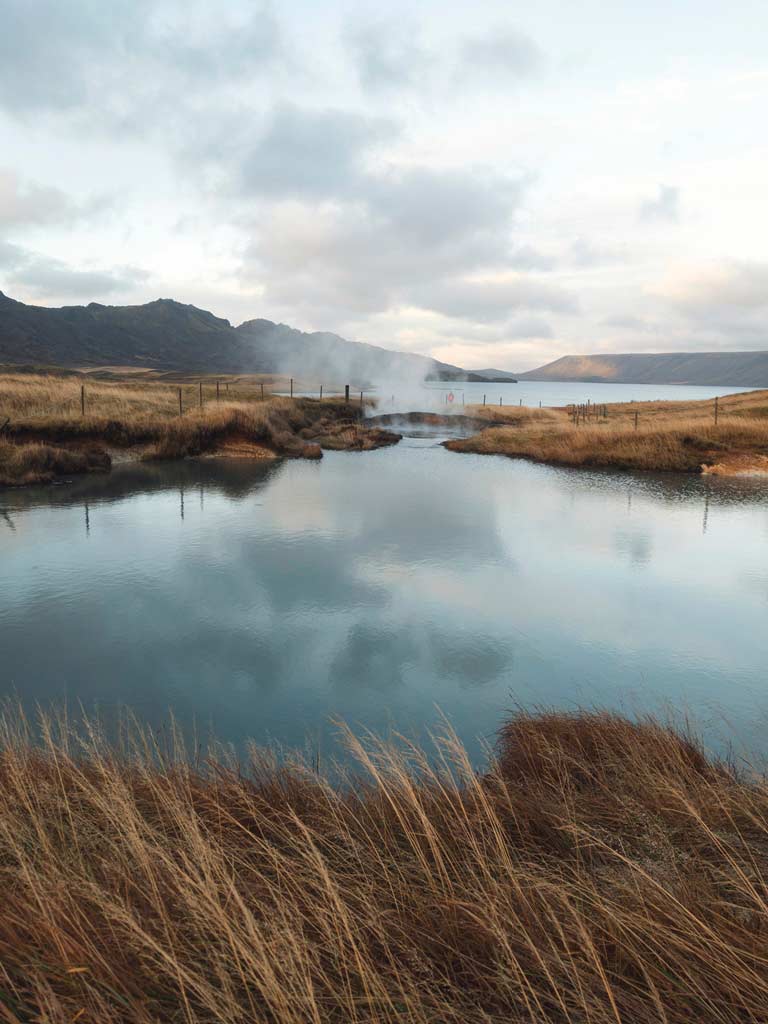
Photo by Gemma Evans on Unsplash
And at 70mm, you enter short telephoto territory that gives you enough reach to really play around with your composition and framing to create landscape images that explore much smaller vignettes.
Of course, you can do all of this with a flick of your wrist to adjust the level of zoom. It’s a super convenient way to approach landscape photography if you ask me.
Learn More:
24-70mm Lenses are Easy to Handle & Carry
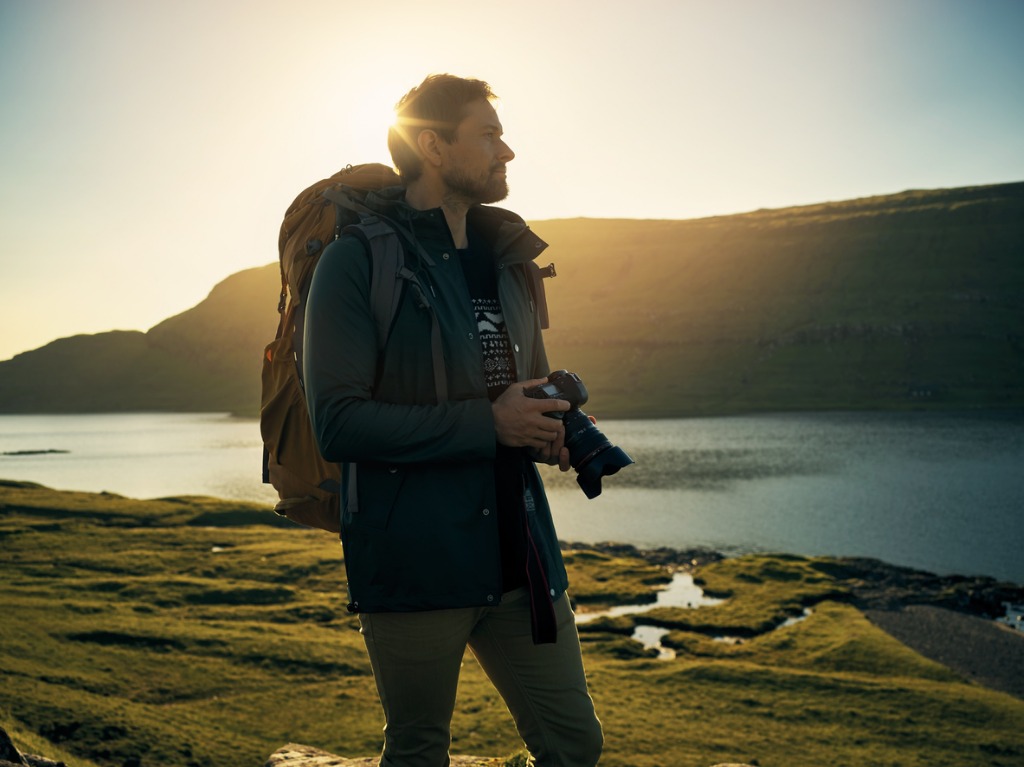
photo by pixdeluxe via iStock
What I appreciate most about many 24-70mm lenses is that they aren’t at all cumbersome to use.
In fact, a 24-70mm lens is just the right size for a landscape photographer. Though it’s a zoom lens, most aren’t overly heavy (perhaps around two pounds), nor are they too long.
When you’re hiking through the forest to find the perfect spot for a shot, you don’t want to carry around a ton of heavy gear.
And as was mentioned above, you get tons of versatility with a 24-70mm lens, so not only is it easy to handle and carry, but you can often get away with carrying just this lens on your landscape adventures.
Benefits of 24-70mm Lenses: Heavy-Duty Build
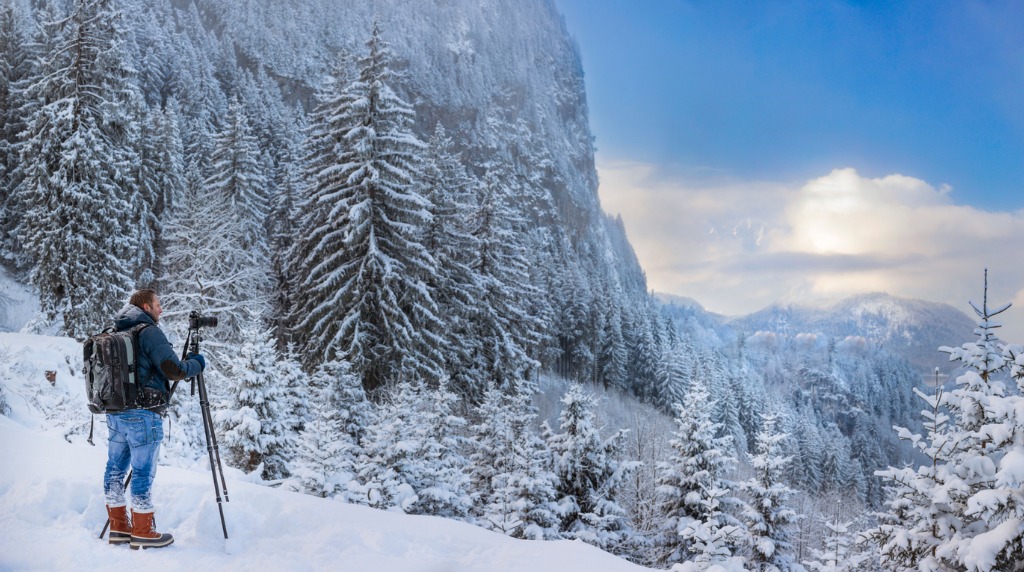
photo by DieterMeyrl via iStock
Most lens manufacturers have at least one 24-70mm lens that’s built like a tank.
Again, when you’re out and about in the elements, you want a lens that will stand up to use and abuse, a little rain or snow here and there, and some bumps and bruises along the way.
Clearly, you should take care of your gear and strive to protect them from damage.
But, generally speaking, 24-70mm lenses have a long-standing reputation as being rugged and well-built, and that’s precisely what you need when the focus of your time and energy is being outside photographing landscapes.
Learn More:
Learn Landscape Photography Composition With a 24-70mm Lens
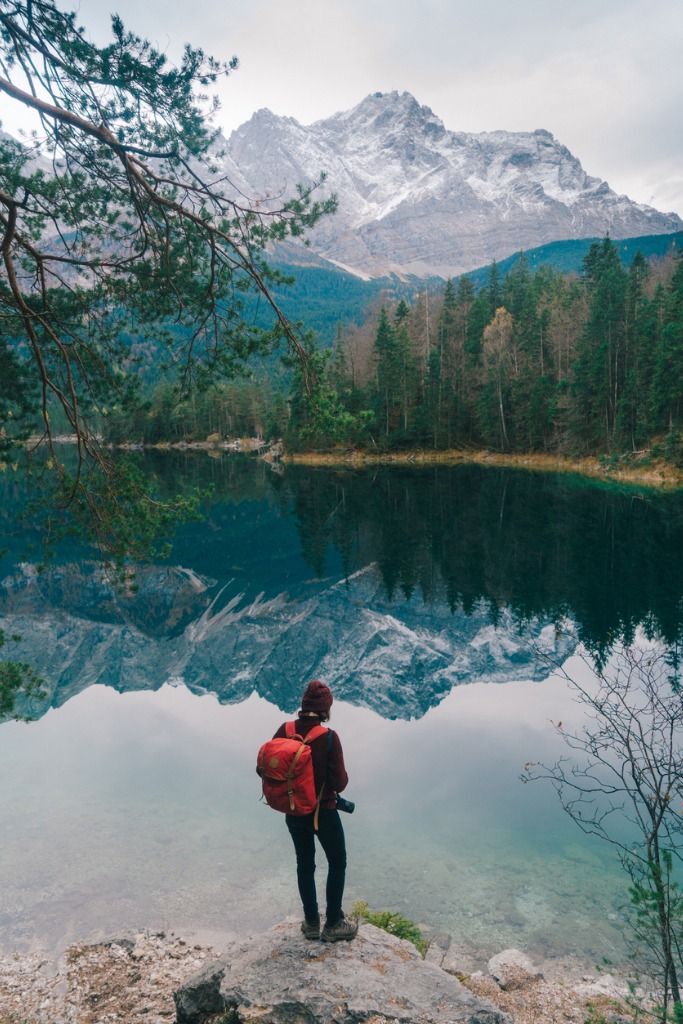
photo by Oleh_Slobodeniuk via iStock
Yet another reason to invest in a 24-70mm lens for landscape photography is because they are incredibly easy to use.
That is, 24-70mm encompasses the focal lengths that most closely match the human eye, so when you shoot with one of these lenses on a full frame camera, you’ll find that the images you create lack distortion and look very natural.
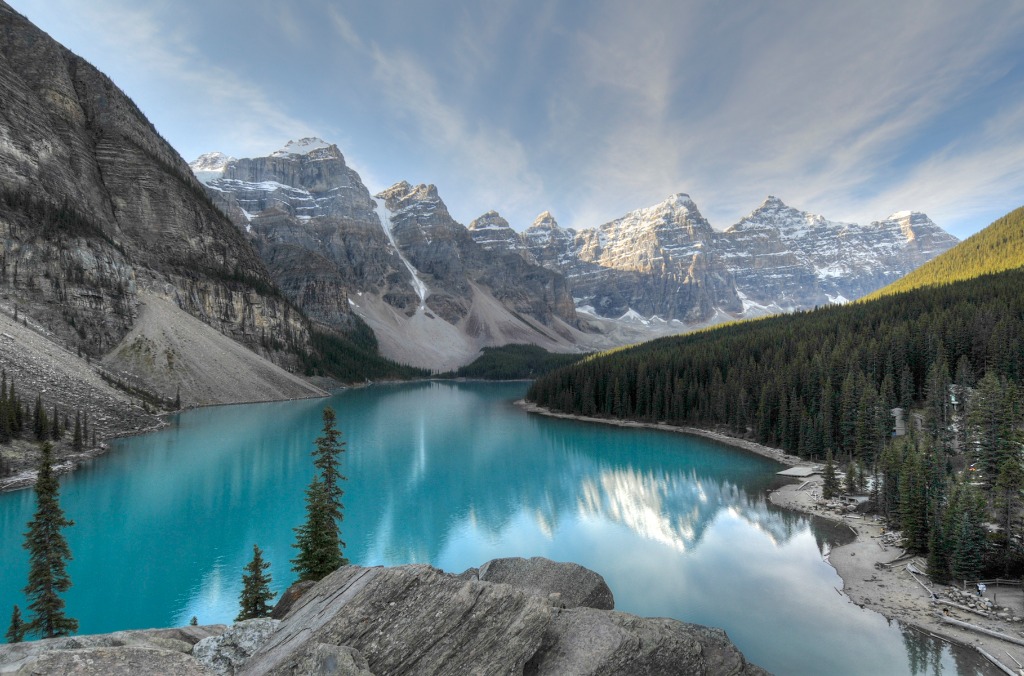
photo by Wildroze via iStock
That’s a big bonus, particularly for new landscape photographers, because the familiar look and feel of the images you create will help you hone your landscape photography composition skills.
So, instead of worrying about why your images look strange due to the optics of a lens, you can start shooting right away with a 24-70mm and concentrate on more important things, like how to frame a pleasing shot, how to use leading lines to connect the foreground and background, or how to use water reflections to create a symmetrical composition.
Do you have lenses you no longer use? Don’t let them collect more dust - sell your old lenses now.
Still Not Convinced a 24-70mm Lens is Ideal for Landscapes?
If you still aren’t sure if a 24-70mm lens is for you, be sure to check out the video above by Nigel Danson.
Nigel is a fantastic landscape photographer, and in his video, he takes you through all the reasons why this is such a great landscape lens.
His sample images are breathtaking, and they demonstrate how varying focal lengths in the 24-70mm range can be used to maximize the visual appeal of your photos.
Have a look, and you’ll be as convinced as I am that a you need a 24-70mm lens in your landscape photography kit!
Learn More:
- The Best Sony Lenses for Just About Any Type of Photography
- 4 Ways You Can Improve Your Photos This Weekend
We Recommend
Is the New RF 85mm f/1.2L USM Canon’s Best Portrait Lens Ever?
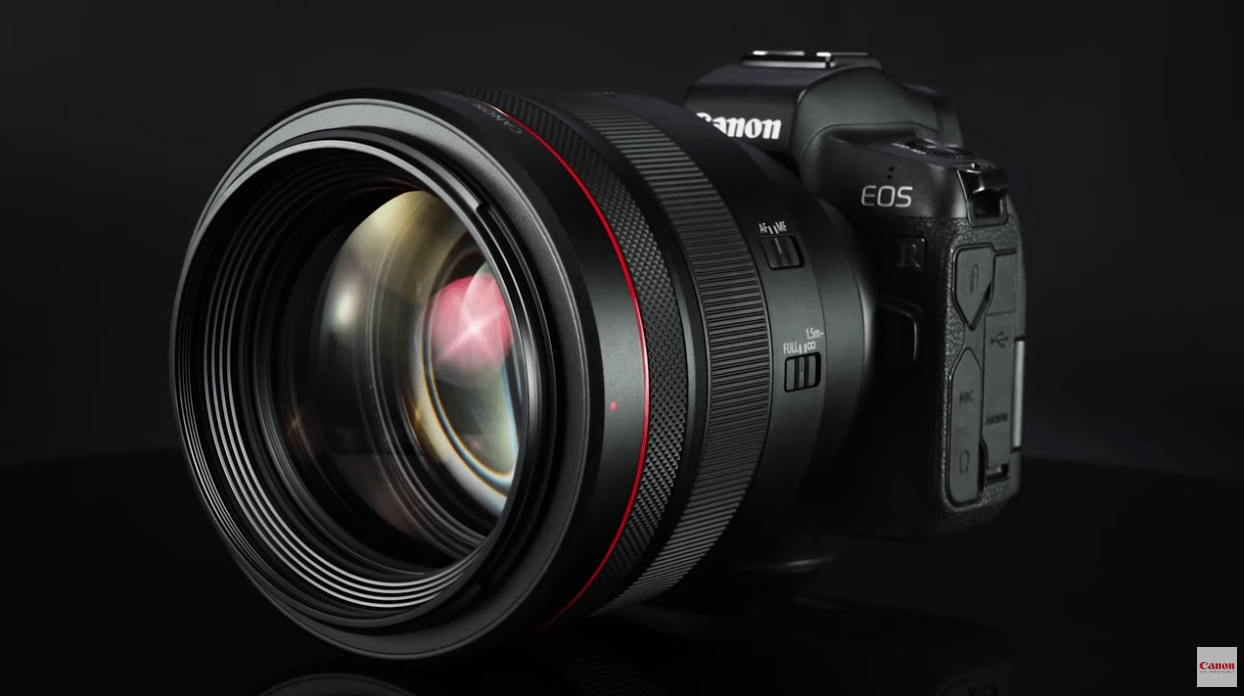
YouTube Screenshot/CanonUSA
When the Canon EOS R was released last fall, it debuted with four lenses: the RF 24-105mm f/4L IS USM, the RF 35mm f/1.8 IS STM macro, the RF 28-70mm f/2L USM, and the RF 50mm f/1.2L USM.
That’s a nice variety of lenses for a brand-new camera, but Canon shooters wanted more choices.
Canon has begun to deliver just that in 2019, with the release of the first of six new lenses this year. I think this first lens, the RF 85mm f/1.2L USM, might go down as the best Canon RF lens ever.
Canon RF 85mm f/1.2L Specs
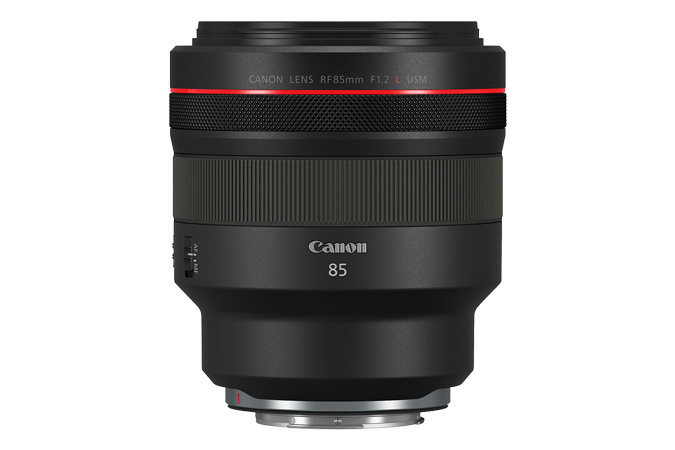
The RF 85mm f/1.2L obviously has a monster-size aperture that lets in tons of light (twice as much as f/1.4 lenses).
In addition to that, this lens will have a programmable control ring which enables you to change aperture, shutter speed, and ISO. There’s also a full-time manual focus ring to make switching between autofocus (more on that in a bit) and manual focus a much smoother, easier process.
Additionally, the RF 85mm f/1.2L will sport Air Sphere Coating (ASC), which eliminates ghosting and flare.
Of course, as an L-series lens, this bad boy will also be fully weatherproof, just like its Canon EF L-series counterparts, which can be found used in great quantities and at good prices if you’re looking for a cheap Canon lens.
Canon RF 85mm f/1.2L Gets Special Lens Elements
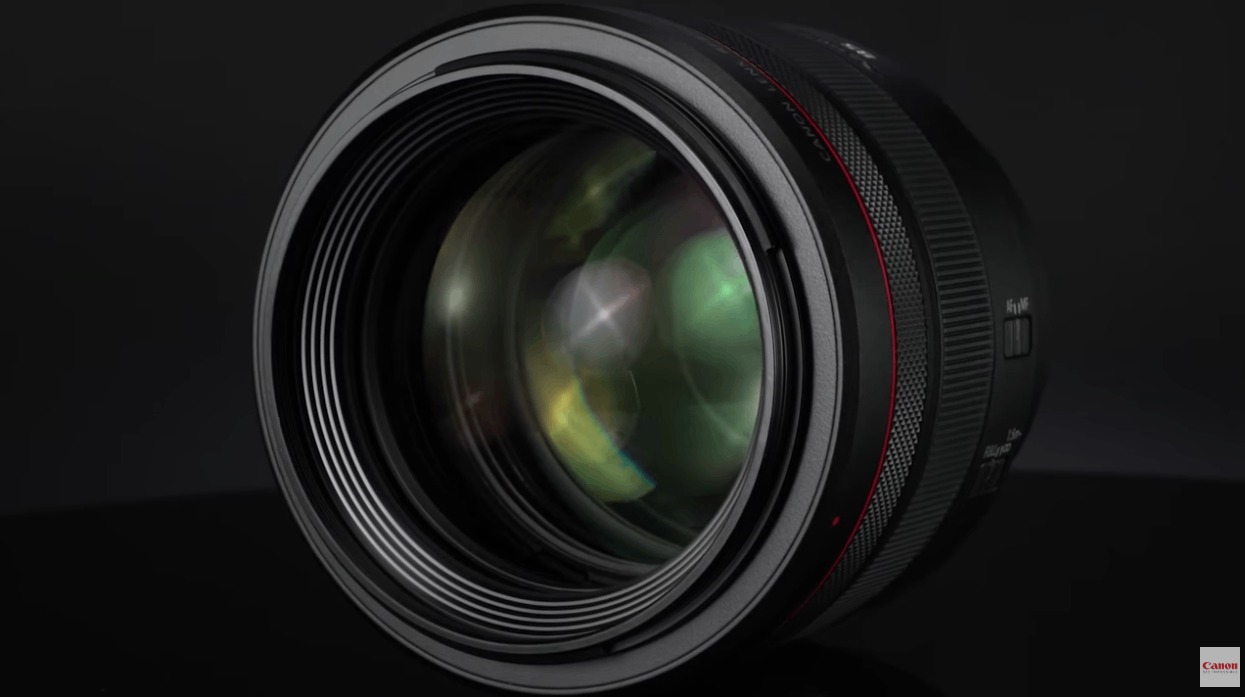
YouTube Screenshot/CanonUSA
Not only is it a light-collecting machine, but this lens also has Canon’s new blue spectrum refractive (BR) lens elements - just the second Canon lens to have this feature (the other being the RF 50mm f/1.2L).
What’s so special about BR elements is that they all but eliminate axial chromatic aberration. If you ever used the EF 85mm f/1.2, you know that this was a huge problem with that lens.
Axial chromatic aberration is an even bigger issue than traditional color fringing because where color fringing can be fixed relatively easily in post-processing, axial chromatic aberration is much softer and appears around shapes that are out of focus. As a result, it’s nearly impossible to remove.
Fortunately for Canon shooters, this lens solves that issue (and many others that diminish image quality). In fact, according to Canon the RF 85mm f/1.2L will produce the highest resolution images yet for any Canon lens.
Get more details about the Canon RF 85mm f/1.2L lens in the video above by CanonUSA.
Editor’s Tip: Getting new lenses - especially ones like the RF 85mm f/1.2L - requires a hefty expenditure of cash. If your bank account isn’t quite where it needs to be in order to purchase this lens, sell your old, unused lenses for extra cash. There’s tons of options for selling your lenses, but working with a lens-specific site like Lensfinder ensures that you reach an audience that’s interested in what you’re selling. What’s more, Lensfinder has fraud protections built in for a safe transaction for you and your buyer. GIVE IT A TRY TODAY.
Canon RF 85mm f/1.2L Autofocus
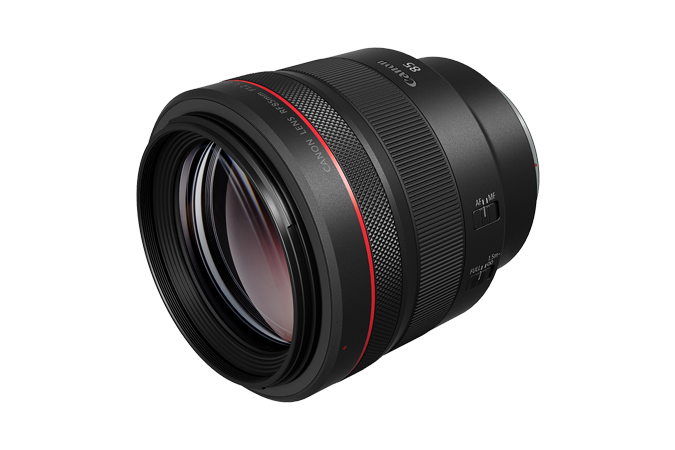
Being a portrait lens, Canon has prioritized autofocus speed to ensure that it’s more than capable of keeping up with fast-moving subjects.
The lens was designed to work in tandem with Canon’s excellent on-sensor Dual Pixel AF to accomplish that goal.
This lens uses the same ring-type USM AF motor that’s found on its cousin, the RF 50mm f/1.2L, though the 85mm f/1.2L will feature a new microprocessor, updated firmware, and a new CPU. The result of all that new hardware and software it an increase in data transfer speeds, which, in turn, means quicker autofocus performance.
Canon claims that this lens will be among the fastest and most capable in terms of subject tracking and autofocus acquisition. Furthermore, the company states that autofocus operation will be effective down to -6EV if shooting with the Canon EOS R and -5EV if shooting with the Canon EOS RP.
Who is the Canon RF 85mm f/1.2L Lens For?
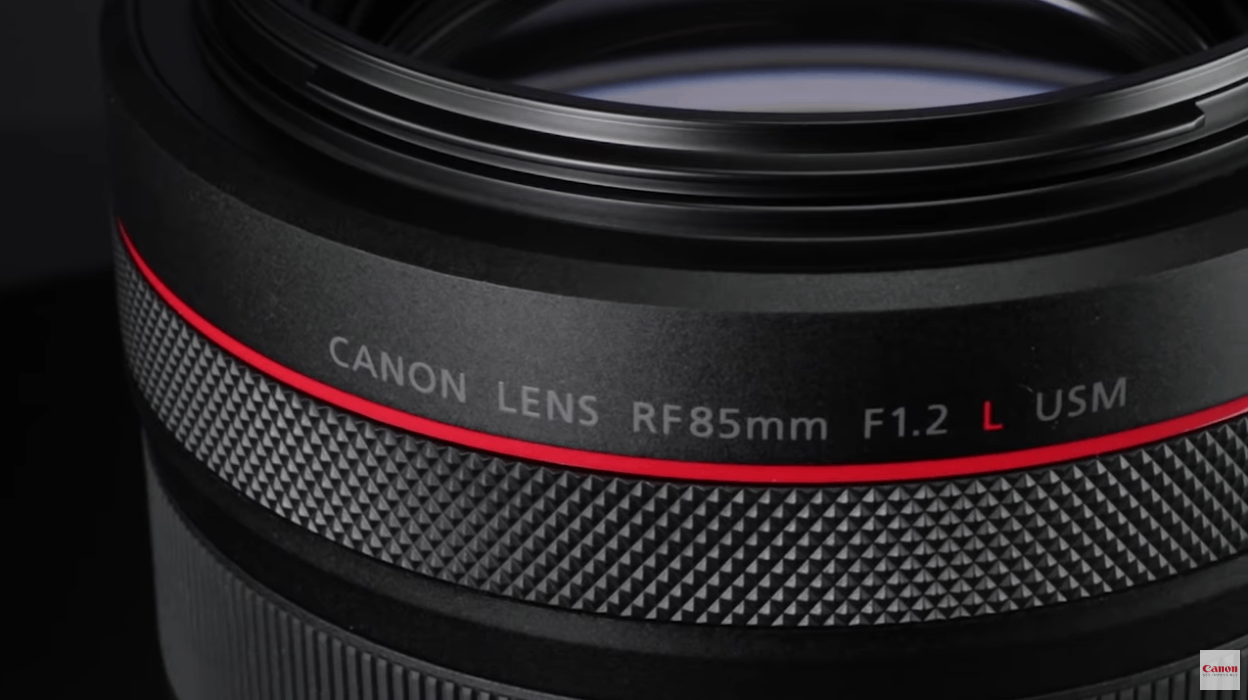
YouTube Screenshot/CanonUSA
If you’re a portrait photographer, this lens is for you.
More specifically, wedding photographers will likely be falling over themselves to get this lens because it’s already building a reputation as a top performing portrait lens that creates beautifully sharp images with gorgeous background blur thanks to the huge f/1.2 aperture.
Of course, the 85mm focal length is the perfect choice for portraits of all kinds. The longer length of the lens allows you to put some space between yourself and the subject, which generally makes them feel more comfortable in front of the camera.
Canon RF 85mm f/1.2L Release Date & Price
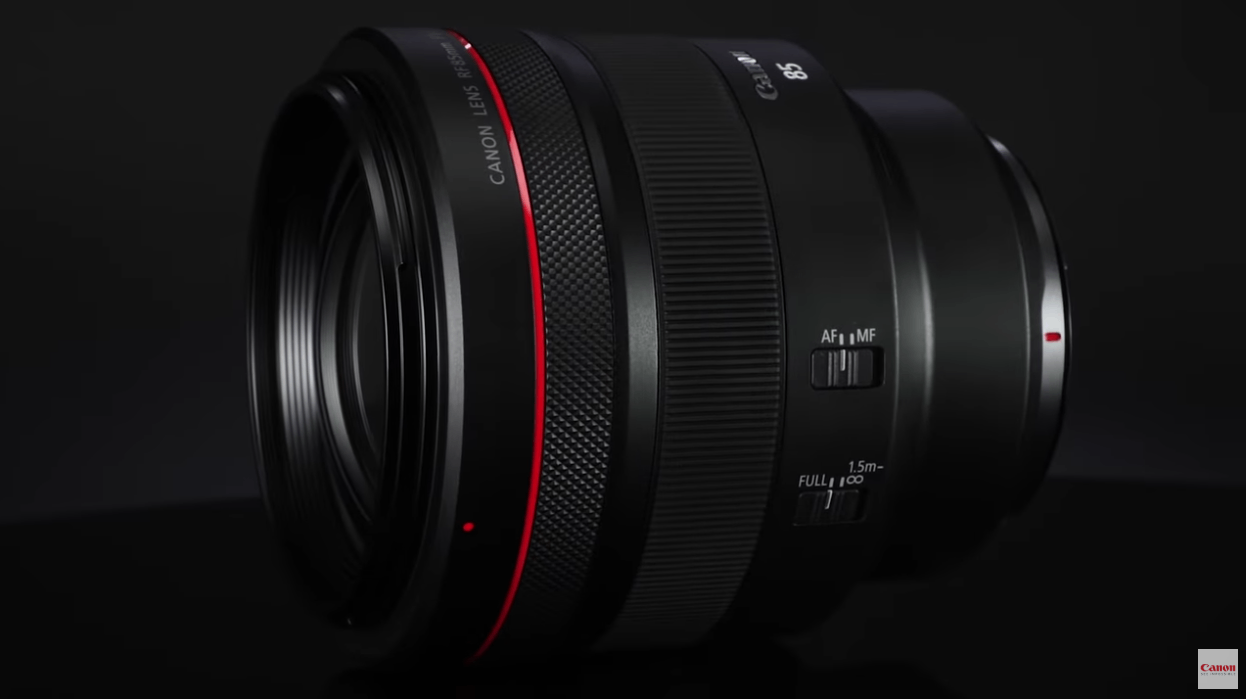
YouTube Screenshot/CanonUSA
I’m not even a Canon shooter, and I’m excited for the release of this lens, so I can’t imagine what all you Canon folks are feeling right now.
The Canon RF 85mm f/1.2L USM release date is June 2019, so there’s not too much longer to wait.
As you might expect, this is not a cheap lens. The price tag is $2,699.00.
That being said, if you’re a professional portrait photographer, from the looks of it, this might be the Canon’s best portrait lens ever. If that’s the case, $2,700.00 might be a good price to pay for what should be superb performance.
On the other hand, if you’re not quite ready to unload that kind of cash, you can always shop for quality pre-owned lenses to supplement your kit. After all, you can use older EF lenses with the EOS R system by using their EF-EOS R adapter.
We Recommend
Landscape Photography Tip: How to Master Wide-Angle Lenses
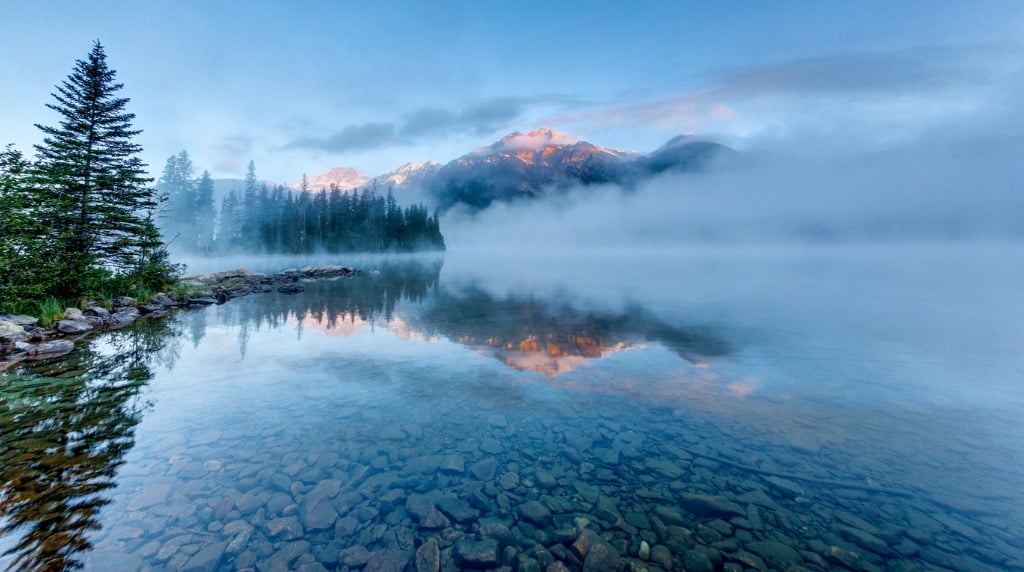
photo by MarcelloLand via iStock
Landscape photographers love their wide-angle lenses because they’re ideally suited to capture both near and far elements in the landscape.
With so much foreground and background in a wide-angle shot, viewers have that much more color, texture, shapes, tones, and so forth to take in.
Additionally, wide-angle lenses give landscape photos wonderful depth that helps draw the viewer into the shot.
If you’re new to landscapes, give these tips a try for mastering wide-angle lenses.
Editor’s note: Wide-angle lenses are typically 35mm or wider on a full frame camera and about 24mm or wider on a crop sensor camera
Wide-Angle Landscape Tip: Get Low
Because of their wide field of view, wide-angle lenses give you an opportunity to get up close to foreground elements and highlight them in the shot.
But don’t just get up close, get low, too.
Quick Tip: Experiment with the lenses you use to photograph landscapes to get the best results. Learn why telephoto lenses are great for landscapes.
If need be, sit down or lay down on the ground so you’re on the same plane as the foreground element (like the rocks in the image above). This will get you a much-improved composition because you’ll be shooting out toward the landscape rather than down at one element of the landscape.
A wide-angle lens will also emphasize the foreground elements, so they will appear much larger in the shot than distant elements in the landscape.
For that reason, ensure that whatever you’re photographing in the foreground is worthy of highlighting in the shot.
Need to upgrade your kit with a wide-angle lens? Find affordable wide-angle lenses for your camera.
Be Aware of Distractions
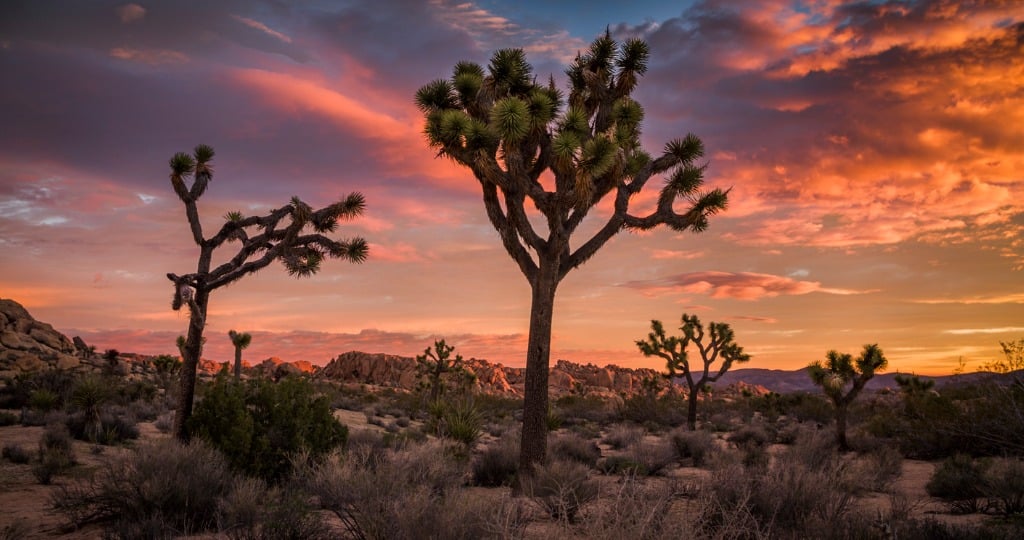
photo by Schroptschop via iStock
When photographing a beautiful landscape scene, it’s easy to get tunnel vision and focus only on the mountain or river or another element you’re featuring in the shot.
But when you use a wide-angle lens, you have to be diligent in “checking your corners” to ensure there aren’t distracting elements creeping into the sides of the shot.
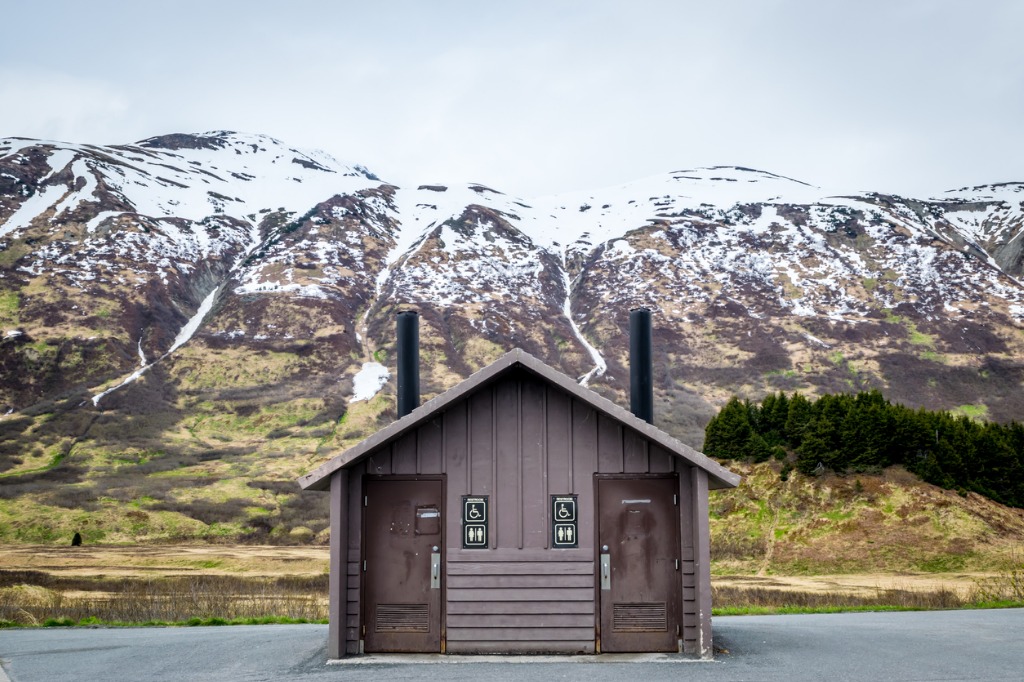
Distracting elements can be just about anything - a person or their shadow, a trash bin, a street sign, garbage, a bathroom and so forth.
Just get in the habit of looking at the edges of your shot before pressing the shutter button, that way if there are distractions present, you can adjust the composition to eliminate them.
Learn More:
- 4 Ways You Can Improve Your Photos This Weekend
- 3 Essential Lenses for Landscape Photography3 Essential Lenses for Landscape Photography
Landscape Photography Tip: Keep Your Camera Level
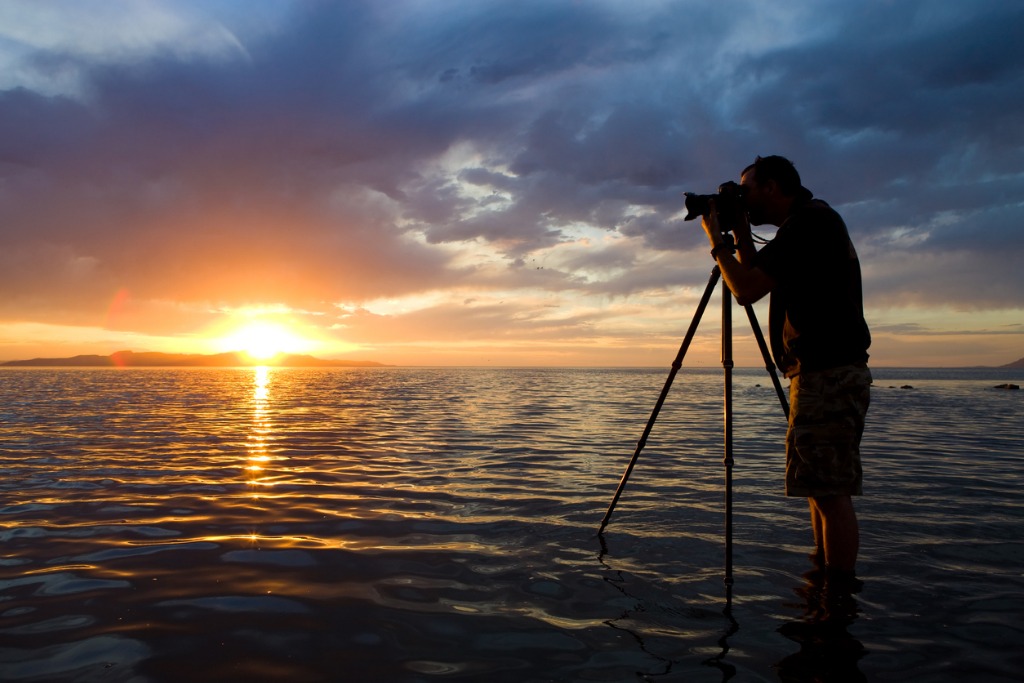
photo by avid_creative via iStock
Wide-angle lenses are well known for creating distortion, particularly around the edges of the shot.
That means that elements in the scene that have straight lines will have the appearance of bending inward when shooting with a wide-angle lens.
Quick Tip: Not sure what wide-angle lens to get for your Canon camera. Find out which lenses get top marks.
You can’t eliminate distortion altogether, but by keeping the camera level with the ground, you can at least minimize the impact of distortion on the shot.
Of course, this isn’t to say that you can’t embrace distortion as a creative tool…
Try angling the camera up and down and take sample images to see how distortion affects the scene. You might find that in some cases, the distortion adds an interesting element to the shot!
For more tips on using wide-angle lenses for landscape photography, check out the video above by Nigel Danson.
Need cash to buy a new wide-angle lens? Sell your old lenses today.
Fill the Frame
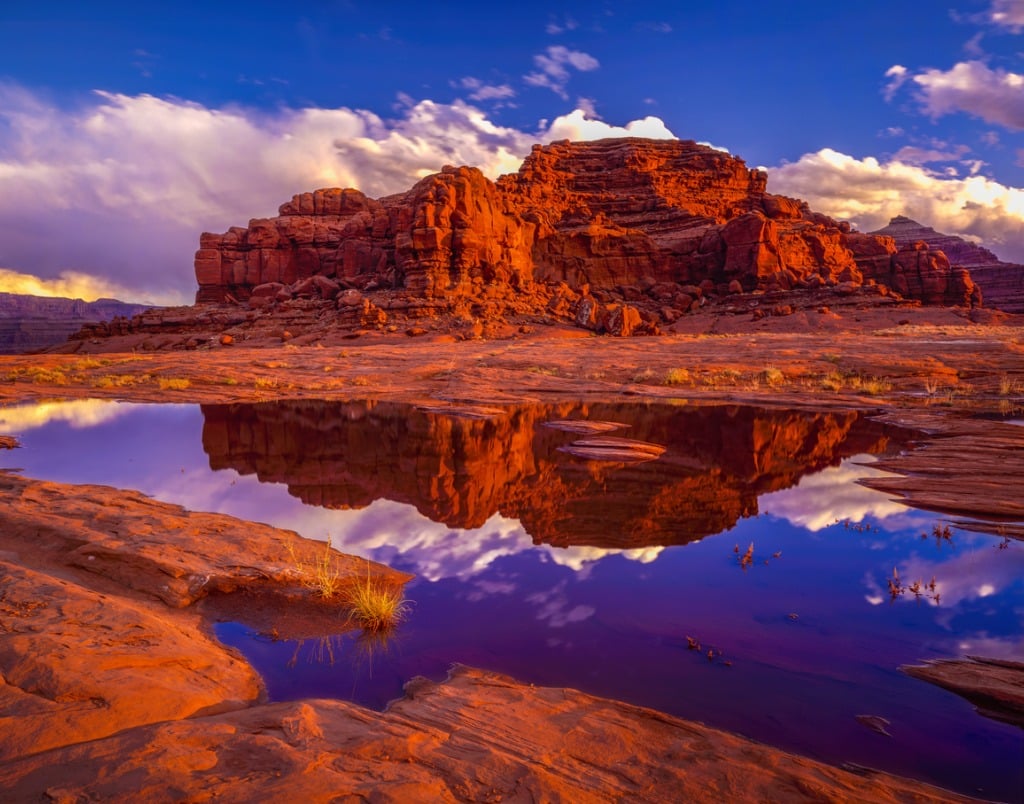
photo by Ron_Thomas via iStock
One of the most common wide-angle mistakes is that people leave much of the frame devoid of detail. It makes sense given that wide-angle lenses can capture so much of the landscape in one shot.
The problem is that with a bunch of territory in the shot dedicated to open space, the photo can be a bit on the boring side.
To rectify this problem, make a concerted effort to fill the frame.
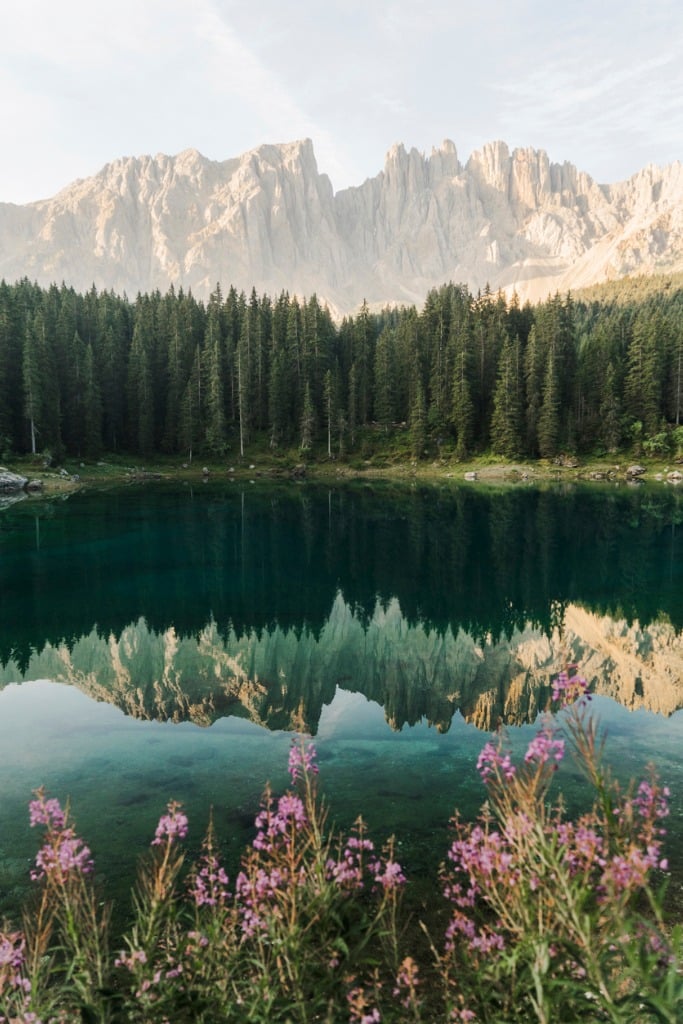
photo by Oleh_Slobodeniuk via iStock
This can be done in a variety of ways, from including foreground elements as discussed earlier to physically moving closer to the primary subject. You can also compose a vertical shot (like above) to maximize the impact of the elements in the image.
You can use a frame within a frame as well - trees on either side of the shot, for example - to help mask some of the empty space and direct the viewer’s eye to the primary subject.
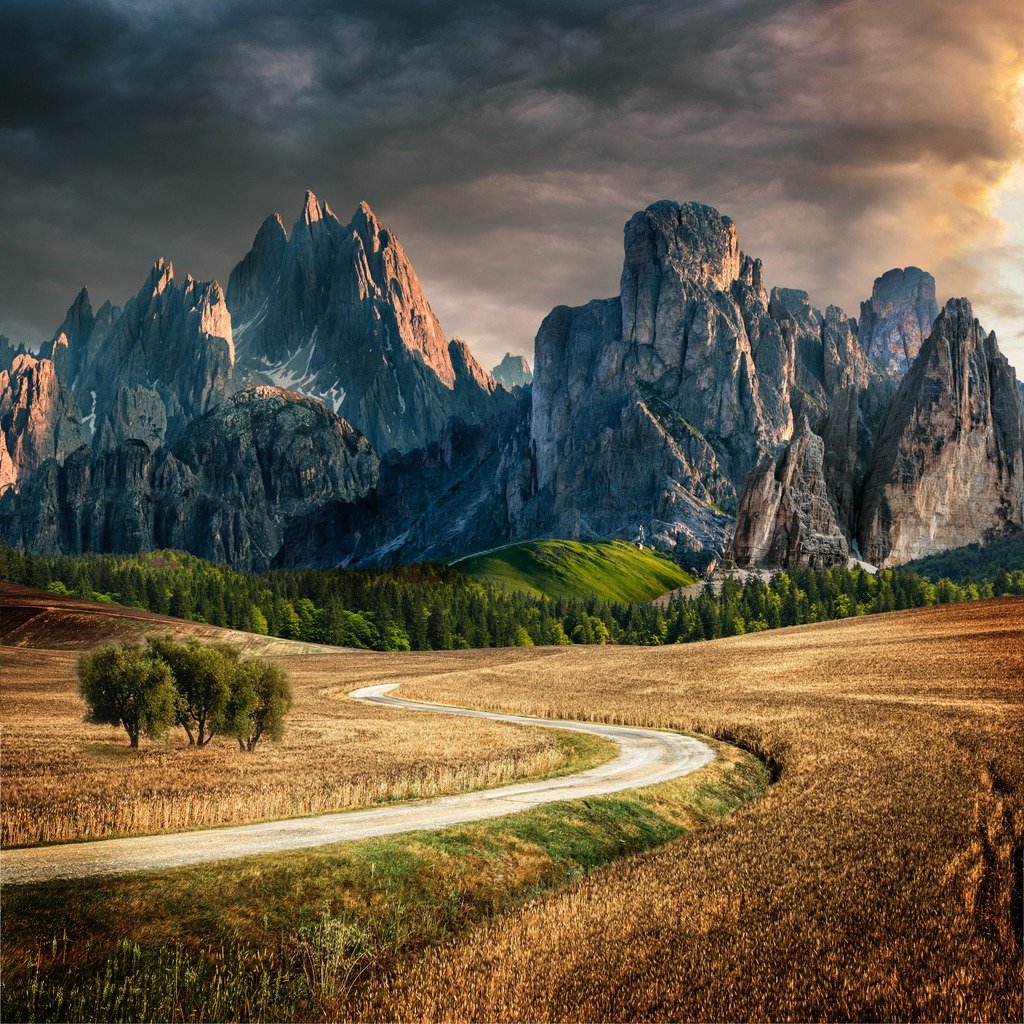
photo by katerinasergeevna via iStock
Likewise, using tricks like leading lines helps connect the foreground and background, so even if there’s some empty space, the viewer’s eyes will follow the line and not get stuck wandering around the shot.
Learn More:
Final Thoughts

photo by ronniechua via iStock
Capturing gorgeous landscape photos is dependent on a lot more factors than the lens you use. Learning how to use your lens and maximize its strengths while minimizing its weaknesses is paramount to your success.
If you can follow these tips, you’ll be in a much better position to capture eye-catching wide-angle landscape photos. But don’t neglect working on things like composition, framing, mastering camera settings, and so forth as well.
A final piece of advice - If you need to upgrade your lens, make smart decisions. Buy used lenses to save money without sacrificing quality. Try third-party lenses in lieu of name-brand lenses as they can often be cheaper. You might even try renting a lens before buying, that way you can get a feel for how it performs before committing to a purchase.
We Recommend
Leaked Photos Reveal Nikon's New Mirrorless Cameras - And They're Awesome
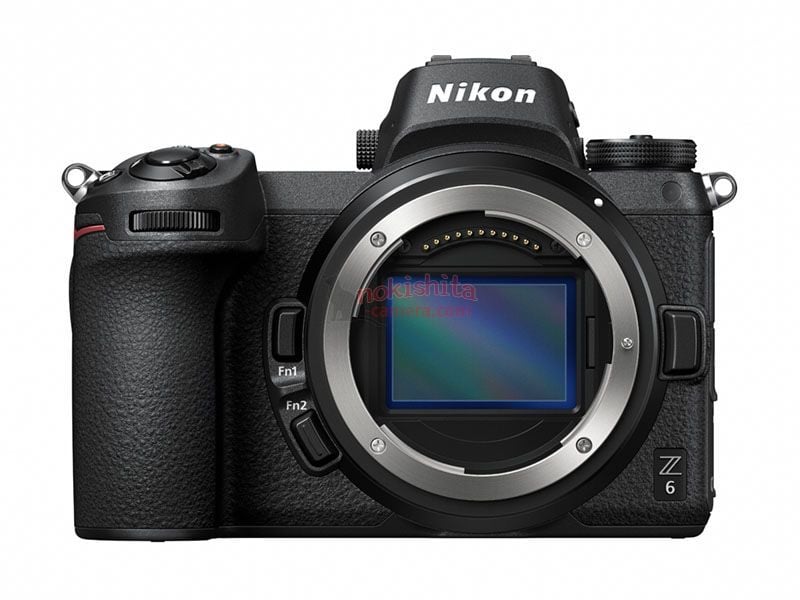
In about 24 hours on August 23, 2018, Nikon will officially unveil its pair of new mirrorless cameras, the Nikon Z6 and Nikon Z7.
Though Nikon has leaked a few photos and videos that show the cameras, none have been all that detailed thus far.
That is, until now...
Nokishita leaked these images earlier today, and they reveal Nikon's new cameras in glorious detail.
Editor's Tip: Ready to upgrade your camera? Learn why you might want to upgrade your lens first.
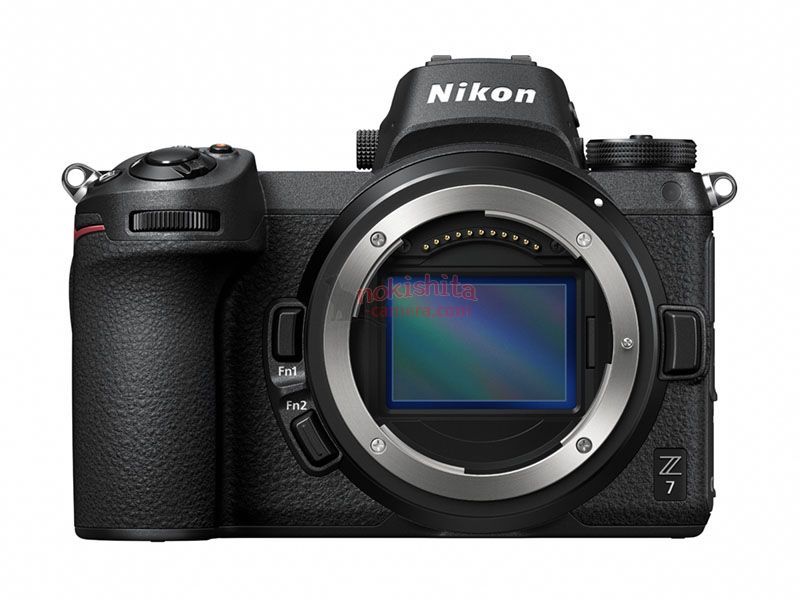
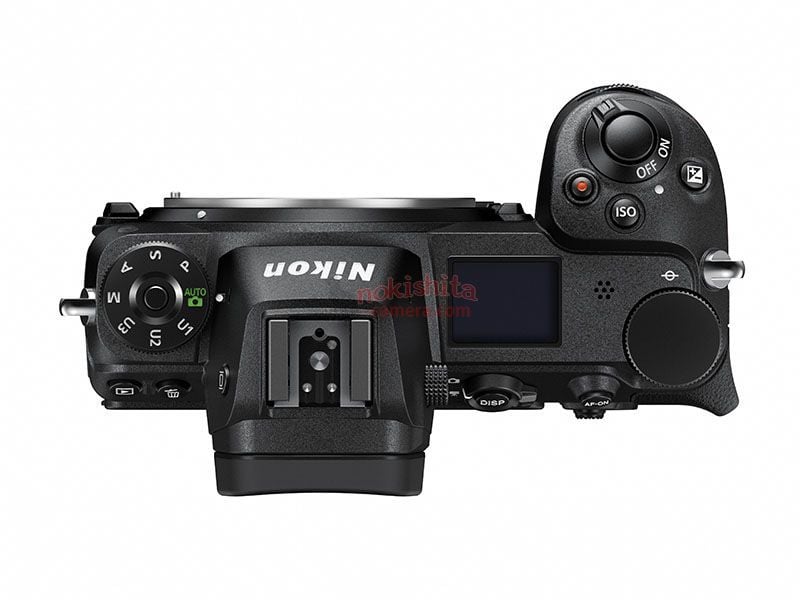
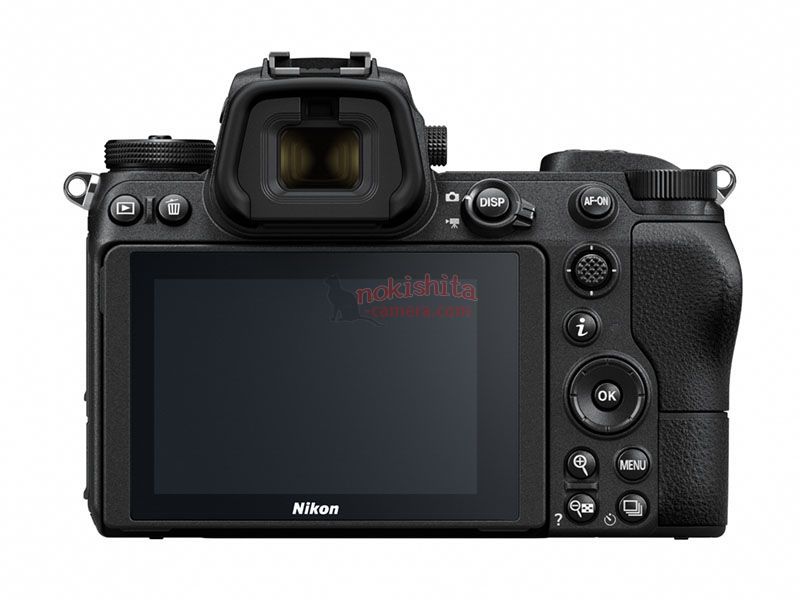
Above, you can see the front, top, and back views of the Nikon Z7. Below are the same views of the Nikon Z6.
It's clear that Nikon put a lot of time and effort into the design of these camera bodies in an attempt to keep in line with the aesthetics and layout of current Nikon cameras while also embracing the smaller body type of mirrorless cameras.

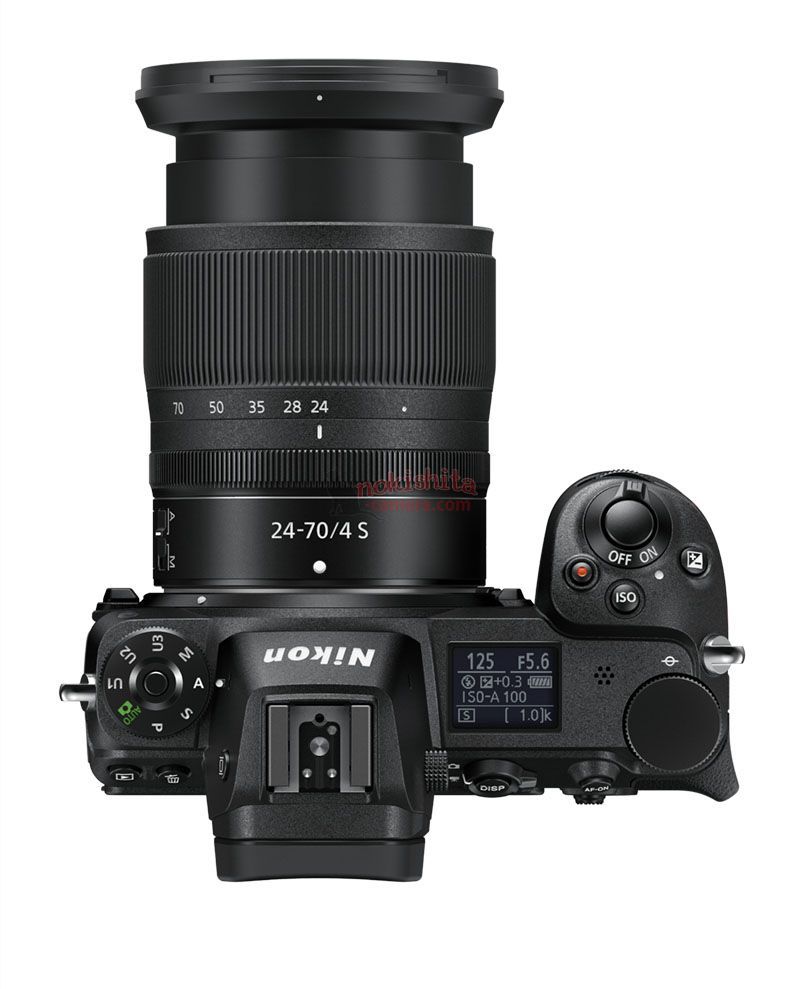

As you can see, the design of these cameras closely resembles the mirrorless heavy-hitters from Sony and FujiFilm.
It's apparent that these cameras have huge electronic viewfinders, which I imagine will be highly resolute as a means of helping separate these cameras from their competitors in the market.
Editor's Tip: Need a new lens for portraits? An 85mm lens might be the perfect choice for portrait photography.
The lenses that are featured look like a 24-70mm f/4, a 35mm f/1.8, and a 50mm f/1.8. The assumption is that the 24-70mm lens will be a kit lens offered with these new Nikon mirrorless cameras.
Also leaked is a photo of the F-to-Z adapter, which will allow Nikon F lenses to be used with these cameras.
That's good news for Nikon shooters that have a ton of F glass. It's also good news for photographers that want to pick up older, yet still functional F lenses to save a little money.
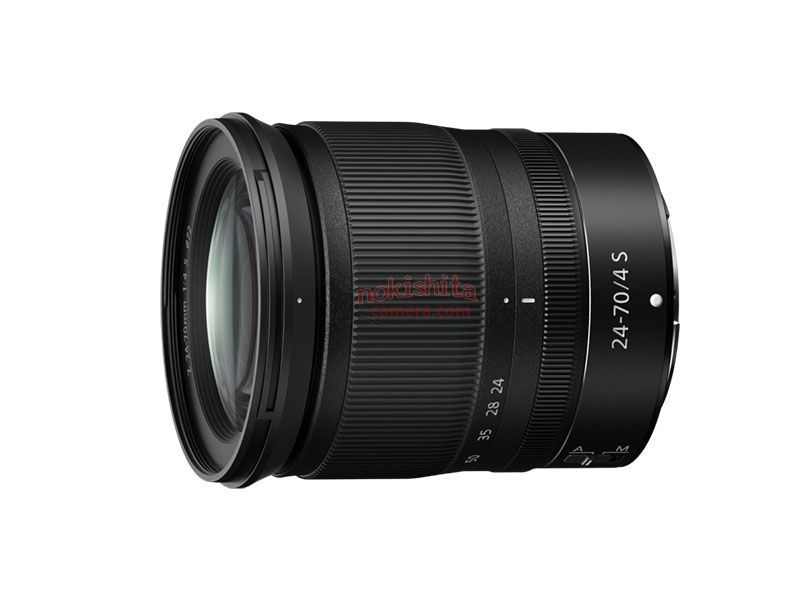
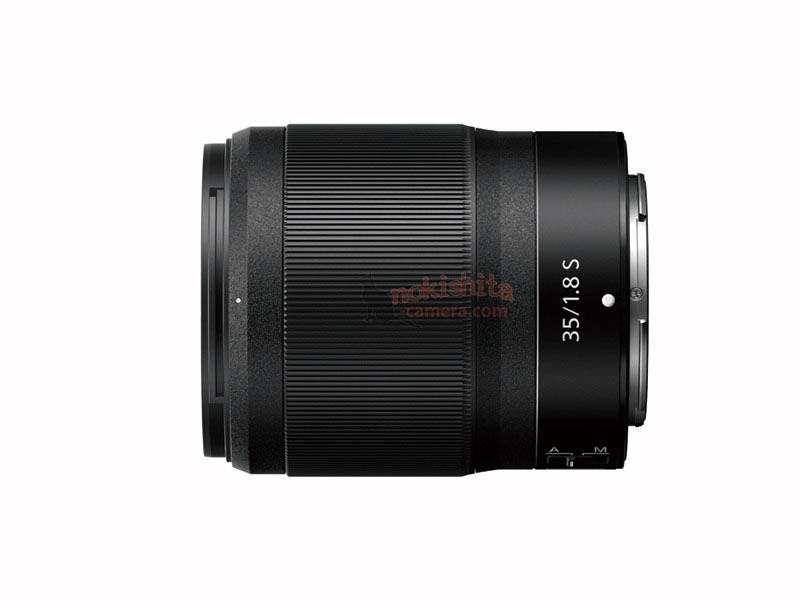
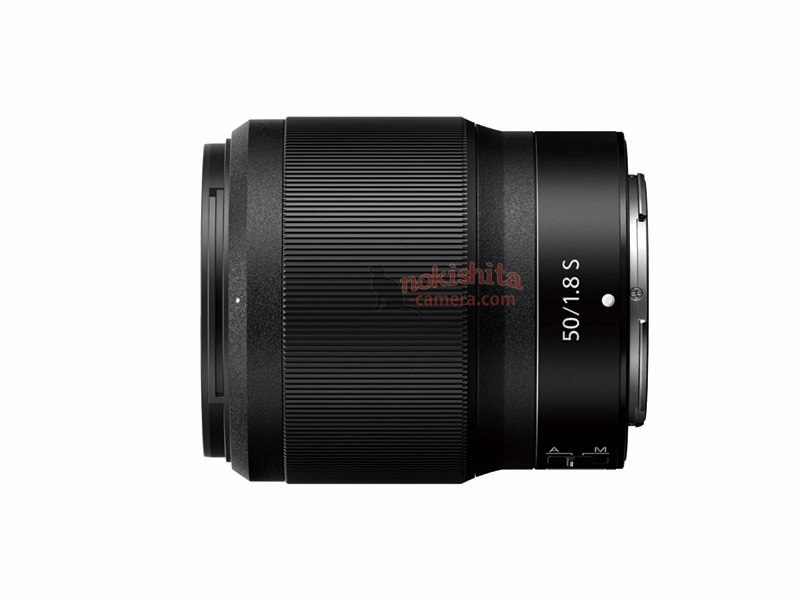
There's a lot to digest in these images, too.
Despite their small form factor, Nikon seems to have incorporated a nice, chunky grip, which for people like me with huge hands, that's a big bonus.
I like the ergonomics of the cameras as well - they look smartly designed, super functional, and as though they'll be an easy transition for Nikon shooters like me that have rocked DSLRs thus far.
The top screen is a nice touch as well, something I'd expect from a higher-end camera.
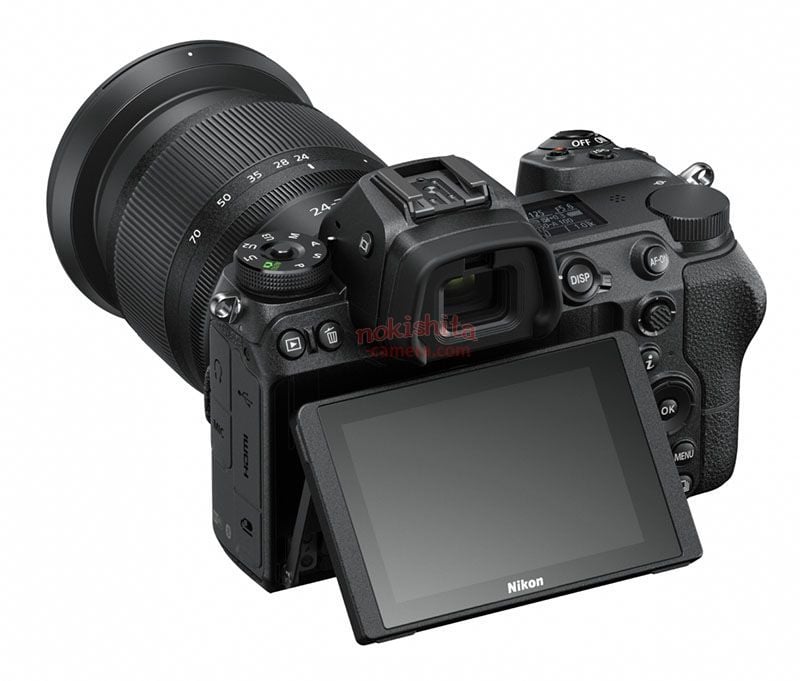
Though these images don't offer insight into the particular specifications of these cameras, it's still nice to finally see up close and personal what the Nikon Z6 and Nikon Z7 actually look like.
Stay tuned for the official announcement of these cameras with a complete breakdown of their specs tomorrow! In the meantime, head over to Nokishita to see even more photos.
We Recommend
Must-Have Beginner Photography Gear

photo by swissmediavision via iStock
If you’re just getting started in photography, you might be suffering a bit from sticker shock…
Cameras, lenses, tripods, filters, camera straps, and other photography gear can be extremely expensive. In fact, pros can easily spend tens of thousands of dollars on gear.
Since most of us don’t have that kind of money laying around, here’s a short list of must-have beginner photography gear that won’t break the bank, but won’t sacrifice performance, either.
A High-Performance, Affordable Camera Strap
Believe it or not, there are camera straps out there that cost hundreds of dollars.
But when you’re a beginner photographer, you don’t need to spend that kind of cash to get a top-quality camera strap.
I’ve been testing the HiiGuy Camera Strap for a few months now, and my initial impressions - that this was a well-made, well-designed, and comfortable strap - still remain today.
I use this strap to carry around my big and heavy Nikon D850 with a 24-70 lens and an L-bracket attached, and I’ve never once felt like the HiiGuy Camera Strap wasn’t up to the task.
Upgrade your camera strap today for less than $30
The construction of the strap is top-notch, with upgraded metal components that ensure your camera stays attached. There’s even dual attachment points - the primary clip and a safety tether - that way if one should fail, there’s a backup in place.

This strap is comfortable too. Like I said, I use it to tote around my big full frame DSLR, and I don’t experience any shoulder or neck fatigue thanks to the big, padded shoulder pad.
The shoulder pad even has a grippy underside so I don’t have to constantly adjust the strap on my shoulder. It also features a handy zippered pocket that’s ideal for keeping a spare memory card.

This strap is highly adjustable, so as a big dude, it allows me to carry my camera exactly where I want on my body. My wife - who’s about a foot shorter than me - can do the same.
Best of all, this strap is less than $30, so you don’t have to break the bank to get a strap that’s comfortable, functional, and provides your camera with the security it needs.
Learn More:
Must-Have Beginner Photography Gear: An Easy-to-Use Photo Editor

When you're just starting out in photography, one of the things that can overwhelm you the most is trying to learn how to edit your photos.
Smartphone apps have made the process of editing a little easier, with pre-made filters and easy-to-use controls. The problem, of course, is that these apps often lack the power and tools that full-blown editors boast.
Now, though, there's a photo editor that combines powerful features with an intuitive UI and tools that are simple to understand and use, even if you're a brand-new photographer. That editor is Luminar 3.

There are several things that set Luminar apart from the competition.
First, there are dozens of "Looks" that add style to your images or correct common problems instantaneously.
Start making beautiful edits of your photos today.
You can adjust the amount of the Look by manipulating a slider (sliders are also used to adjust filters, as shown below), so you still have control over how the Look changes your image, but in a way that's super streamlined.
These Looks are a perfect starting point for your editing process, and as you hone your post-processing skills, you can even create and save your own Looks!
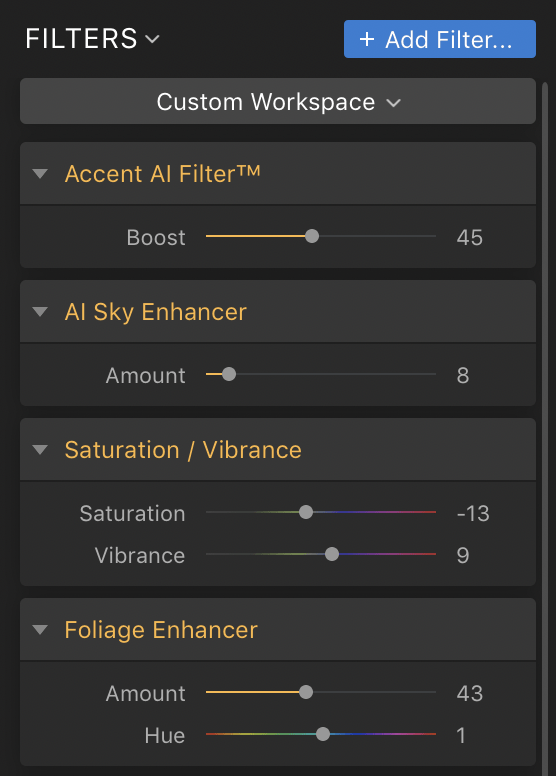
Another feature of Luminar that's of great benefit to beginner photographers is that you can make precise adjustments without making selections.
If you've ever watched a post-processing tutorial on YouTube, you know that making selections can be a very time-intensive task.
But with Luminar, there's no need to make selections when you use one of the image aware filters that are available to you.
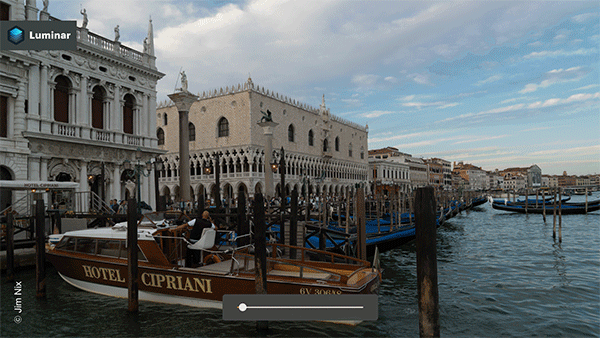
For example, if you want to give the sky in a landscape image more pop, you can use the AI Sky Enhancer, which uses artificial intelligence to analyze the image, masks everything but the sky, and applies the effects of the filter to give the sky more color, contrast, and definition.
And, just like with the Looks discussed earlier, you can fine-tune how the AI Sky Enhancer is applied by adjusting a single slider (as shown above).
There are other image aware filters, too - one to enhance foliage, one to enhance details and sharpness, one to precisely adjust tonal contrast, and another to selectively enhance cool and warm tones in an image.
These filters can help you create gorgeously rich photos and without spending a ton of time doing so. It's a win-win!

I'd be remiss if I didn't mention the value that Luminar 3 brings to the table.
Where you have to pay a recurring fee to use other photo editors, Luminar is $69. That's a one-time fee for lifetime access.
When you have to pay for a camera, lenses, filters, a tripod, a camera bag, and other necessities, it's nice to be able to get a powerful, feature-rich photo editor without spending an arm and a leg.
Learn More:
A Budget-Friendly Zoom Lens
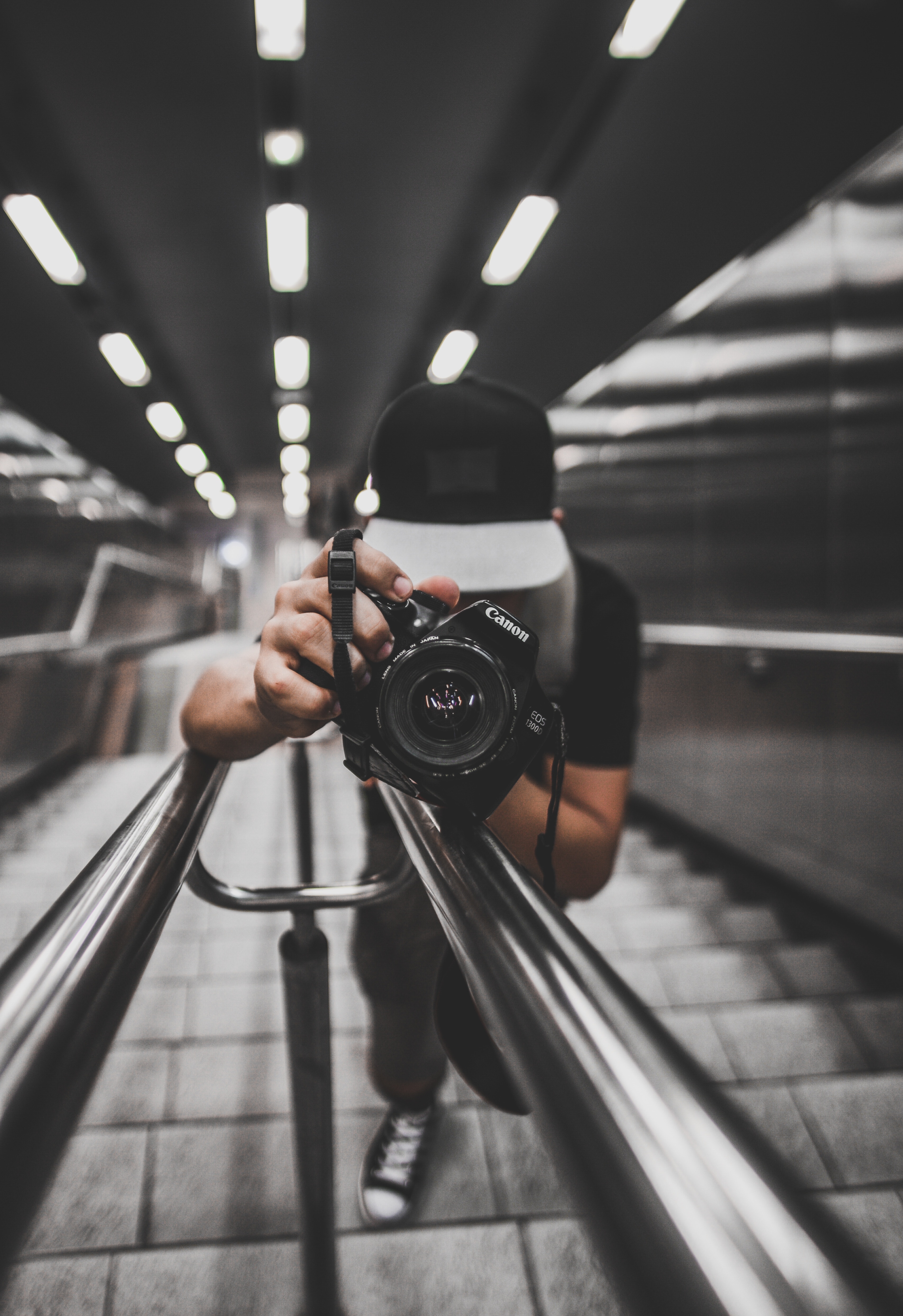
Photo by Sami Boudjelti on Unsplash
When you bought your first camera, chances are that it came with a modest zoom lens, likely something along the lines of an 18-55mm f/3.5-5.6.
And while kit zoom lenses have their merits as a beginner’s learning tool, they aren’t the best lenses in the world.
Get a better lens without breaking the bank
For sharper photos with less aberrations, consider upgrading to a better zoom lens.
Again, you don’t have to spend a mountain of money to get a lens that will perform better for you than your current kit zoom. In fact, there’s quite a selection of budget-friendly zoom lenses from which to choose.
In the video above, Art of the Image outlines three excellent zoom lenses for Canon crop sensor cameras that are worthy of consideration:
- Canon EF-S 10-18mm f/4.5-5.6 IS STM Lens (currently $279.00 brand-new)
- Canon EF-S 18-135mm f/3.5-5.6 IS STM Lens (currently $279.99 brand-new)
- Canon EF-S 55-250mm f/4.0-5.6 IS II Telephoto Zoom Lens (currently $131.95 brand-new)
The beauty of the lenses listed above is that they offer improved performance over a standard kit lens. For example, if you like to photograph landscapes, the EF-S 10-18mm lens allows you to capture more of the scene with its much shorter focal lengths.
Alternatively, the EF-S 18-135mm and EF-S 55-250mm lenses allow you to photograph all sorts of subjects due to their huge focal range.
In fact, with the 18-135mm option, you can photograph wide landscapes, intimate portraits, distant subject like wildlife, and just about anything in between.
Better still, even though these lenses are all budget-friendly brand-new, if you can find a used version, you can save even more money.
I have bought numerous pre-owned lenses on Lensfinder over the last few months, and it’s been a great experience every time. Same goes for selling old lenses I no longer need!
The beauty of Lensfinder is that it was built by photographers, for photographers, so you don’t have to deal with hunting through dozens of unrelated items like you do on eBay or worry about scams like you do on Craigslist.
Instead, you just enter your search terms, find what you need, buy and pay for it right on Lensfinder, and await your purchase to arrive. You can even communicate with the seller and leave feedback, and with fraud protections in place, you can have peace of mind too.What’s not to like about that?
Learn More:
If You Shoot Landscapes, You Need a Polarizing Filter

Having lens filters enables you to improve the quality of your photos in-camera, which means less time trying to fix things in post-processing and more time actually out shooting.
For beginner landscape photographers, one of the best filters you can invest in is a polarizing filter.
Polarizers offer a whole host of benefits:
- They reduce glare off non-metallic objects (like water), which reduces distractions and enhances your ability to create an eye-catching shot.
- Polarizers boost the contrast in the sky, making the blue color of the atmosphere deeper and more dramatic while enhancing the bright white of the clouds.
- These filters also reduce atmospheric haze, so distant landscape features appear more clearly in the shot.
In other words, a polarizer is a sort of one-stop shop for improving the quality of your landscape photos.
And while some polarizing filters are well over $100, Kenko Circular Polarizers are super budget-friendly.
Depending on the size of the filter you need, you’ll spend between $15.00 and $50.00 for a high-quality filter.
Kenko utilizes precision-polished Asahi Japanese optical glass in these filters, so you’re assured of crystal clear results.
The low-profile slim housing is a benefit too, as it help prevent vignetting, even when used with a wide-angle lens.
There’s a reason why these filters are the best-selling lens filters in Japan!
For quality and performance, Kenko is tough to beat at this price point, as are the other products reviewed above.
The moral of the story is that you don’t need to spend all your money on expensive gear to get better results. Give these budget-friendly items a try, and you’ll see what I mean!
Editor's Tip: Get Kenko’s latest updates and access to promos for discounted gear. Click here to sign up.
Learn More:
We Recommend
My Ideal Landscape Photography Kit

photo byMaridav via iStock
Over the years, I’ve tested all kinds of landscape photography gear. I’ve owned all kinds of landscape photography gear too…
But I keep coming back to the same gear as being part of my ideal landscape photography kit. There are tried-and-true items that I’ve found to be what works best for me, and there’s also relatively new items that I’ve only begun using recently that have quickly earned a spot in my kit.
Below, I’ve outlined some of my favorite landscape photography gear in the hopes that it sheds a little light on what gear might work for you as well.
Remember...these are just a few items that I personally use and that work great for me and my workflow. Some might work great for you but others might not. You’ll still need to do some research and experimentation with gear, but this should at least give you a compass for what direction to go!
Table of Contents
- Nikon Z7
- Nikon Nikkor Z 14-30mm f/4 S Lens
- E-Image EK650 Tripod
- Kenko Puro Circular Polarizing Filter
- Litra Torch LitraPro
- Holdfast Sightseer Backpack
My Pick for the Best Landscape Photography Camera: Nikon Z7

I’ve had the Nikon Z7 for about a year at the time of this writing, so it’s a relatively new addition to my kit. Before it, I had a Nikon D850, which I absolutely loved. In fact, I wrote this article about how it was the best landscape photography camera.
The only problem with the D850 is that it is big and heavy - two qualities you might not want if your focus is on landscape photography.
The Z7, however, is nearly a pound lighter and has a much smaller form factor than its D850 cousin. Those features alone make it a more useful camera for me when I’m out exploring landscapes because it’s easier to carry and easier to handle, too.
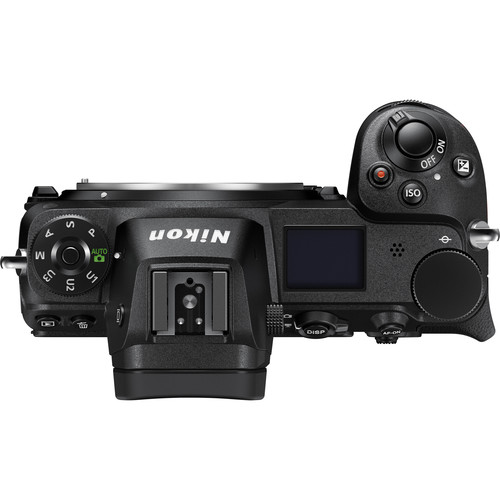
And don’t think that because it’s a smaller mirrorless camera that the grip is tiny and that your fingers will be dangling off the bottom…
The Z7 has a nice, chunky grip that feels good in the hand and is comfortable for all-day shooting of beautiful landscapes.
One of my other favorite features of the Z7 for landscape photography is its live view autofocus.

This system is the best Nikon has ever had - it’s fast, accurate, and honestly rivals the results I get when I manually focus. It’s that good!
It helps that the Z7 has a 3.2-inch LCD that has a 3:2 aspect ratio, so the LCD seems even larger and easier to see.
That’s just a few reasons why the Z7 is such a valued addition to my landscape photography kit. You can get all the details of the Z7’s landscape photography features here.
Be sure to check out my real world review of the Z7 in the video above too!
My Pick for the Best Landscape Photography Lens: Nikon Nikkor Z 14-30mm f/4 S

I personally love this lens because it gives me those frame-filling wide-angle views that really envelop the viewer in the scene.
I especially appreciate that Nikon extended the zoom range to 30mm rather than stopping at the more typical 24mm - that extra focal range is nice for framing up slightly narrower images.
It’s also a tiny lens - roughly the same size as the 24-70mm f/4 S kit lens and it weighs just over a pound. When you need to shed weight so your backpack isn’t full of 50 pounds of gear, having a small, versatile lens like this is a major bonus.

Of course, that weight savings is the result of lots of plastic parts, which are good-quality plastic, but still, that fact will scare some of you away from using this lens in a rough-and-tumble setting.
I’ve had no issues with the build quality of the lens thus far, so it’s performed like a champ whenever I have pressed it into service - even in extreme temperatures in Death Valley and Norway.
I like this lens’s autofocus accuracy, which is very quick and virtually silent, too.
I will say that this lens suffers from a crazy level of distortion. However, Nikon and Adobe alike have built-in lens profiles that corrects this issue.
But where this lens shines is in the sharpness department…

It’s a little soft at 14mm (as you’d expect), but dialing it back to 16mm improves things greatly. I’ve found it to be crazy sharp throughout its focal range.
And that’s just what you want in a landscape lens - beautiful sharpness, quick and accurate autofocus, and lightweight design.
Learn more about this lens in my Nikon 14-30mm f/4 S landscape review.
My Pick for the Best Landscape Photography Tripod: E-Image EK650 Tripod

I often use my ProMediaGear Pro-Sticks 34 Series tripod when I’m out for short jaunts to get landscape photos, but at $900, it’s not exactly cheap…
So to add a budget-friendly component to this list, I recommend the E-Image EK650 tripod shown above and below.
It weighs about the same as the ProMediaGear tripod and is close in collapsed size as well.
But it’s $700 cheaper, which is clearly a significant savings!

This isn’t a cheap tripod from a build quality standpoint, though…
The aluminum construction makes it durable yet lightweight, and the 11-pound load capacity is more than enough to securely support my Z7 and 14-30mm lens with other goodies attached, if need be.

The leg locking mechanisms make for quick set up and take down, while the mid-level spreader gives you that added degree of stability.
Speaking of stability, this tripod also has big anti-slip rubber feet and removable metal foot spikes for terrain that’s uneven or slippery.
The included fluid head with fixed pan drag, variable tilt drag, and continuous adjustable tilt drag is a nice bonus too!
My Pick for the Best Landscape Photography Filter: Kenko Puro Circular Polarizing Filter

I’m not sure I can remember how many different filter brands that I’ve tested over the years.
Like any kind of photography gear, there have been some really good filters along the way. But few have offered the level of performance and the budget-friendly price as the Kenko filters I’ve been using as of late.
Any landscape photographer needs a good circular polarizer, and Kenko’s Puro circular polarizing filter certainly fits the bill.

These filters are crafted from high-quality Asahi optical glass and feature 16 layers of multi coating that help repel water and dust while also making the filters extremely easy to clean.
The slim, low-profile ring is a nice touch as it helps minimize vignetting on the 14-30mm lens. The filter housing also has a black anti-reflective mounting ring that helps reduce reflections and flare from the housing.
It’s touches like that that you don’t often see in budget-friendly filters!
Editor's Tip: Get Kenko’s latest updates and access to promos for discounted gear. Click here to sign up.
I’ve also been using Kenko’s Variable NDX filter, and have been supremely pleased with the results.
Besides, it’s nice carrying around a single variable ND filter rather than an entire ND filter set!
My Pick for the Best Landscape Photography Light: Litra Torch LitraPro

I don’t do a ton of light painting, but I’ve found the small-yet-powerful Litra Torch LitraPro to be an ideal companion for light painting landscape scenes.
For starters, this thing is just 2.75 x 2 x 1.2 inches in size and weighs a whopping 6 ounces, so it’s a perfect, lightweight addition to my landscape kit.
And it puts out an incredible amount of light thanks to its 60 LEDs that are good for 1200 lumens.

The light is bi-color, clean and crisp, and you won’t find any flicker here, either.
It’s adjustable from 3000-6000K so you can dial in just the right color temperature for light painting your landscape subjects. It’s even waterproof for those messy spring and winter shoots in the rain and snow and offers 10 hours of battery life!
Sure, I use this light more in my studio and for portraiture, but, hey, who doesn’t like camera gear that’s super versatile?!
Get more details about this awesome little light in my LitraPro Review.
My Pick for the Best Landscape Photography Bag: Holdfast Sightseer Backpack

Photo by Brandon Burk
Of course, you need something to carry all your gear in, and one of my all-time favorite bags for landscape photography is the Holdfast Sightseer Backpack.
There’s several levels of awesomeness that this bag brings to the table…
First, the construction is off-the-charts with an attention to detail you just don’t find in many bags.
The waxed canvas and leather exterior is weather resistant, so rain, snow, and other elements won’t penetrate the bag and soak your gear. The zippers are even waterproof!
Inside, you’ll find a beautiful Aztec flannel lining that cradles your gear in the ultimate softness while also preventing scratches as you put your gear in and take it out.

Photo byBrandon Burk
The organization possibilities with this bag are also worth mentioning.
As you can see above, the flap unzips from top to bottom, allowing you to open it completely for a look inside. There, you’ll find multiple cubbies for your camera body, lenses, and other accessories.
You can customize the arrangement of these cubbies, too, so depending on your needs now and in the future, this bag can accommodate your gear.

Photo by Brandon Burk
I also appreciate the little things that Holdfast has integrated into this bag.
It has a breathable mesh back to help keep your back cool as you hike around finding those ultimate landscape shots.
The metal fixtures on the bag are stainless steel - not plastic made to look like stainless steel - so you get the benefit of something highly durable that won’t rust.
Of course, all those leather loops on the back of the bag are prime real estate for adding lens pouches and a cell phone pouch. With the ability to expand the carrying capacity of the bag, you have the makings of a modular system that you can customize to your specific needs.
What’s not to like about that?!
We Recommend
Need a Lens? Try These Excellent Budget Options
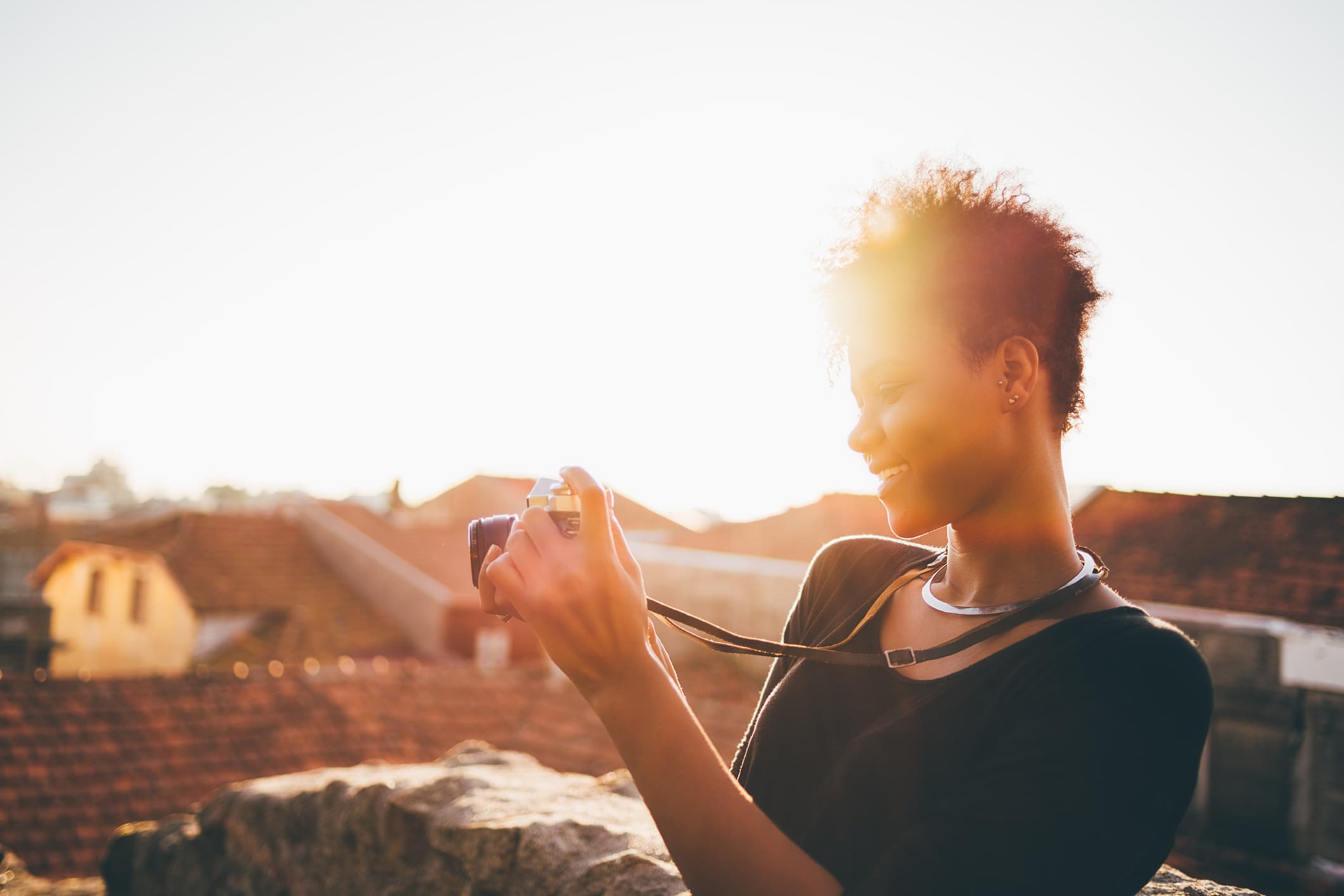
With the new year upon us, a lot of photographers will spend a lot of time lusting after the new gear they want to buy.
However, not everyone has an unlimited budget for gear, which is precisely why I'm writing this article.
There are plenty of great lenses out there that will get you good results without busting your budget.
Below, I've outlined a couple of my favorites for Nikon and Canon cameras.
Nikon 18-55mm AF-S DX f/3.5-5.6G VR II
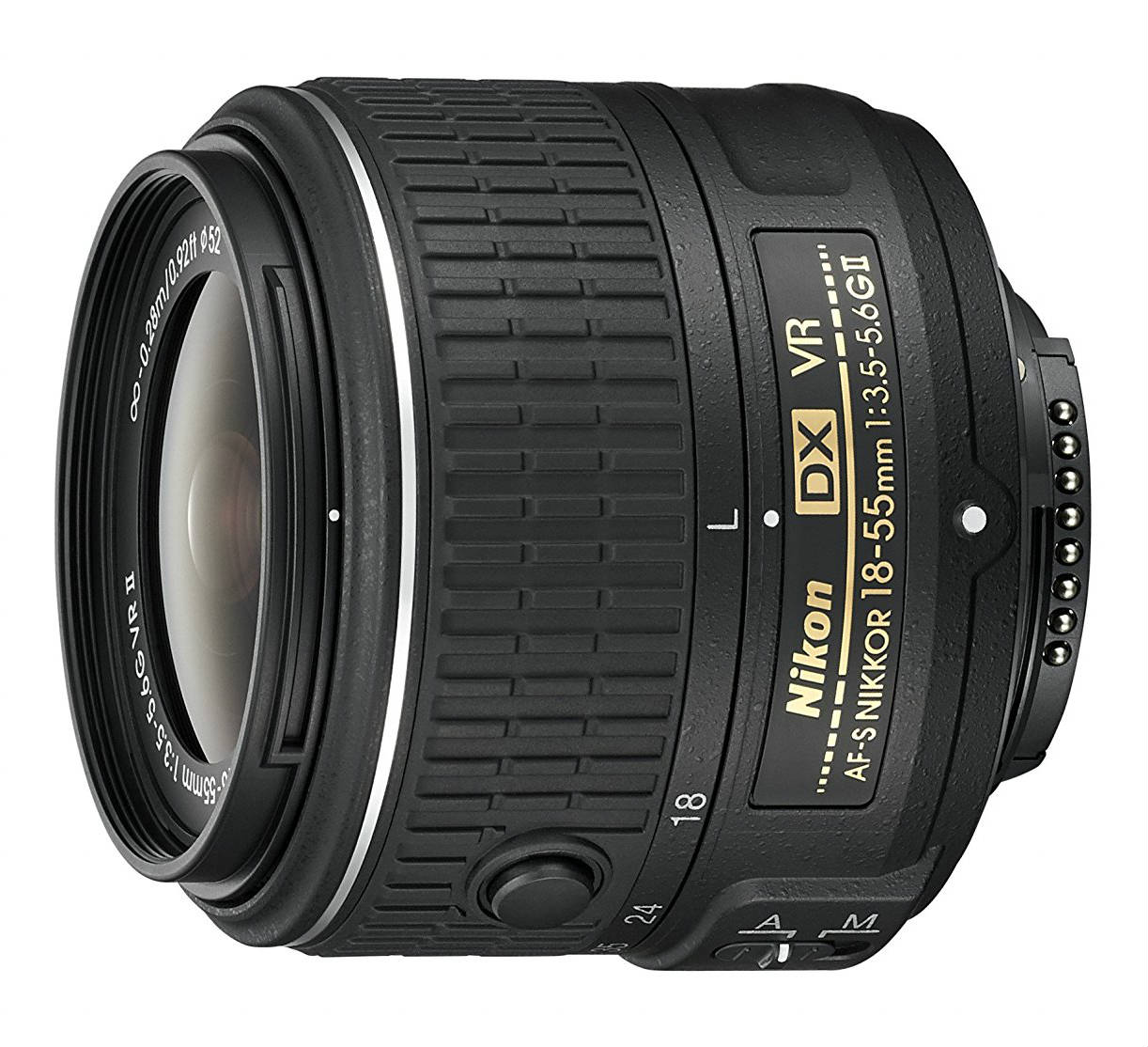
This little guy is an ideal lens for a beginner photographer.
It's got a nice focal range of 15-55mm, which on a crop sensor camera extends from wide-angle to short telephoto.
That means that you can photograph everything from landscapes to street scenes to close-up portraits, all with one lens.
It's got a small form factor and is lightweight, too, making it a good companion for travel photography when you want to work lean and mean.
Additionally, this lens comes with Nikon's vibration reduction technology, which gives you four extra stops of handheld shooting without any blurriness.
Granted, this lens has a maximum aperture range of just f/3.5-5.6, which means it's not going to be ideal for low-light shooting.
However, all the other features you get, and the fact that it's well under $300 brand new, is quite enticing.
Get more details on this lens in the video above by Angus Davidson.
Editor's Tip: Want to get even more for your money? Consider buying a pre-owned lens from Lensfinder. You can explore their marketplace of used lenses with ease, communicate with sellers to inquire about their lenses, and even pay via PayPal, right there in Lensfinder. See what lenses they have available by clicking here.
Learn More:
Nikon 50mm AF-S FX f/1.8 G
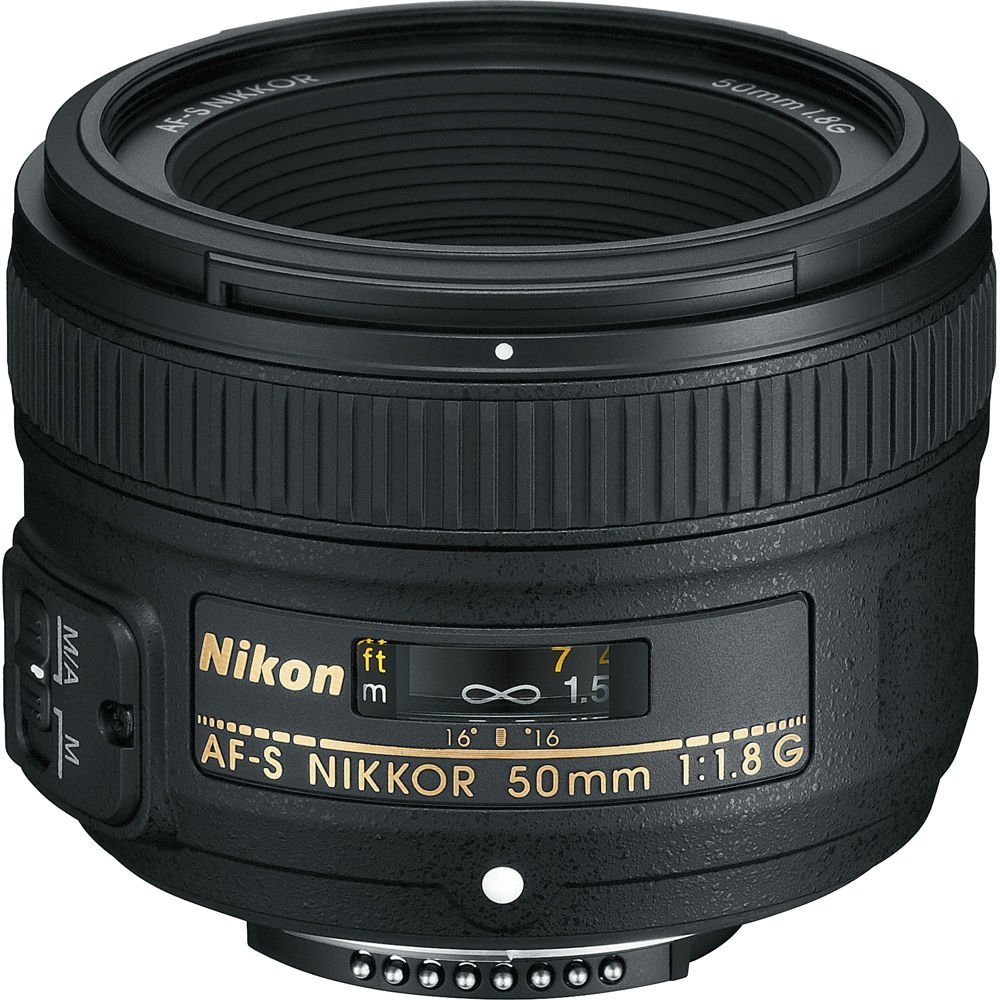
Every beginner photographer should have a 50mm lens.
And for Nikon shooters, the best bang for your buck is the 50mm f/1.8G.
Not only do you get a huge maximum aperture for low-light shooting, but it comes with a new price tag of well under $200. As far as budget buys go, this lens is tough to beat.
It performs well, too.
The lens produces images that are sharp from edge to edge, with minimal vignetting or chromatic aberrations.
And like the previous lens I noted above, this one is also small and lightweight.
You can use a 50mm lens for anything, too - weddings, nature, macro, and everything in between.
See this lens in action in the video above by PhotographyTV.
Learn More:
Canon EF-S 10-18mm f/4.5-5.6 IS STM
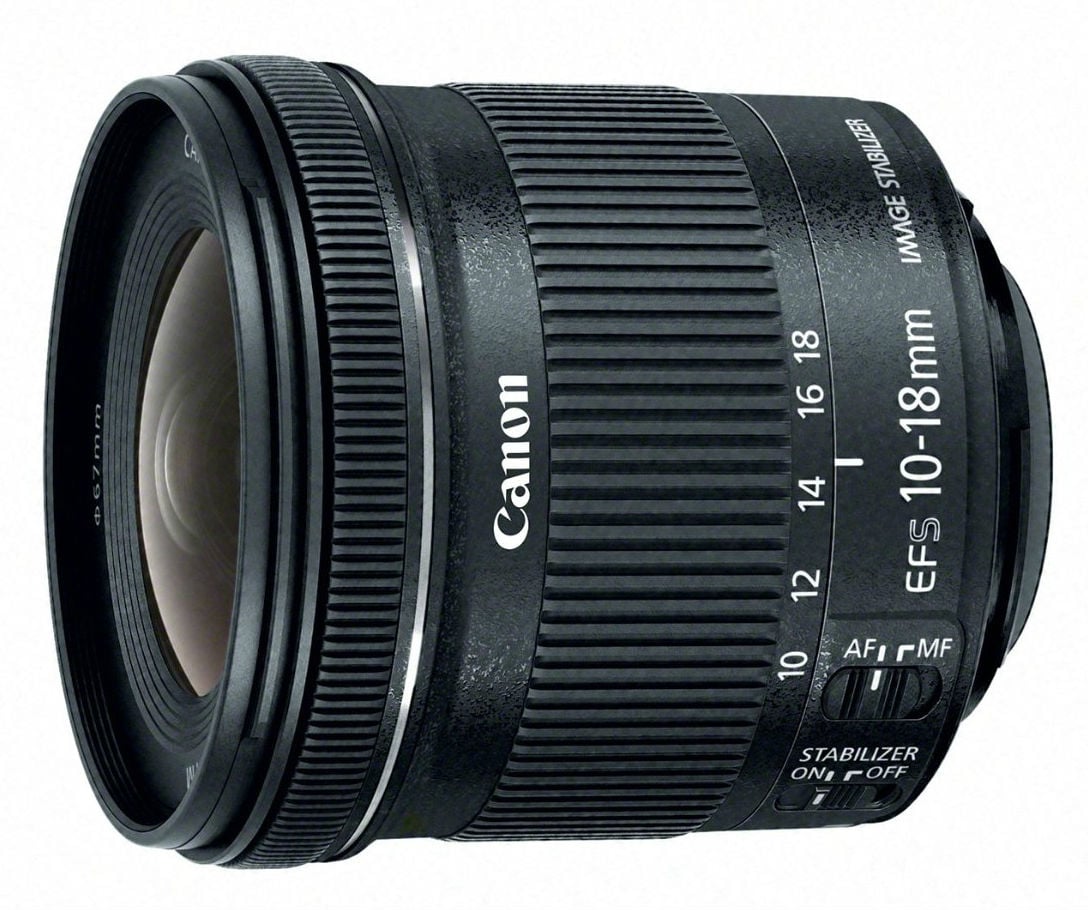
Like the first Nikon lens on this list, this Canon 10-18mm lens doesn't exactly have a huge aperture.
But that's okay, because this lens is ideal for photographing landscapes under normal lighting conditions.
The wide-angle 10-18mm focal range allows you to capture wide vistas, even on a crop sensor camera.
With an optical image stabilizer built in, you can also shoot handheld with greater confidence and less blur due to camera shake.
If you fancy taking some videos while you're out shooting, this lens's stepping motor ensures ultra-quiet operation so your videos are about what you see, not about how much noise your lens is making.
Even though its priced under $300 brand new, it delivers the reliability and performance you'd expect out of a much more expensive lens.
Get more information about this lens in the video above from Christopher Frost Photography.
Editor's Tip: Whether you need a lens for your Canon camera, Nikon, Sony, Olympus, or other major brand camera, you can find great deals on pre-owned lenses at Lensfinder. Not only that, but you can sell your old lenses on Lensfinder to fund your new-to-you lens. Find out how to sell your lenses here.
Learn More:
Canon EF 50mm f/1.8 STM
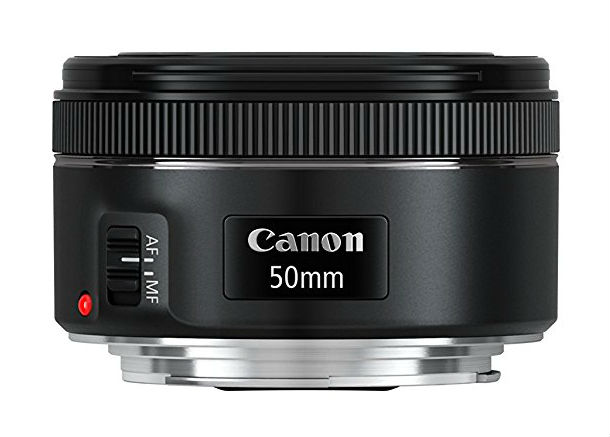
Of course, Canon shooters would do well to invest in a 50mm lens.
Like the Nikon discussed above, this 50mm Canon lens offers a maximum aperture of f/1.8.
That translates into excellent low-light performance and beautifully blurred backgrounds.
Though you can use this lens on a full frame camera at 50mm, on a crop sensor camera, the 80mm effective focal length gets you firmly into short telephoto territory.
That means that this lens is ideal for landscape photography, portraiture, and even sports photography because of its reach on a crop sensor camera body.
Like the other Canon lens on this list, this 50mm has a stepping motor for quiet operation as well, so it's a great little lens for stills and video.
And as the cheapest lens on this list at just $125.00 brand new, it's a steal as well!
Get an in-depth review of this lens in the video above by DigitalRev TV.
Learn More:
We Recommend
New Camera Lenses for 2019
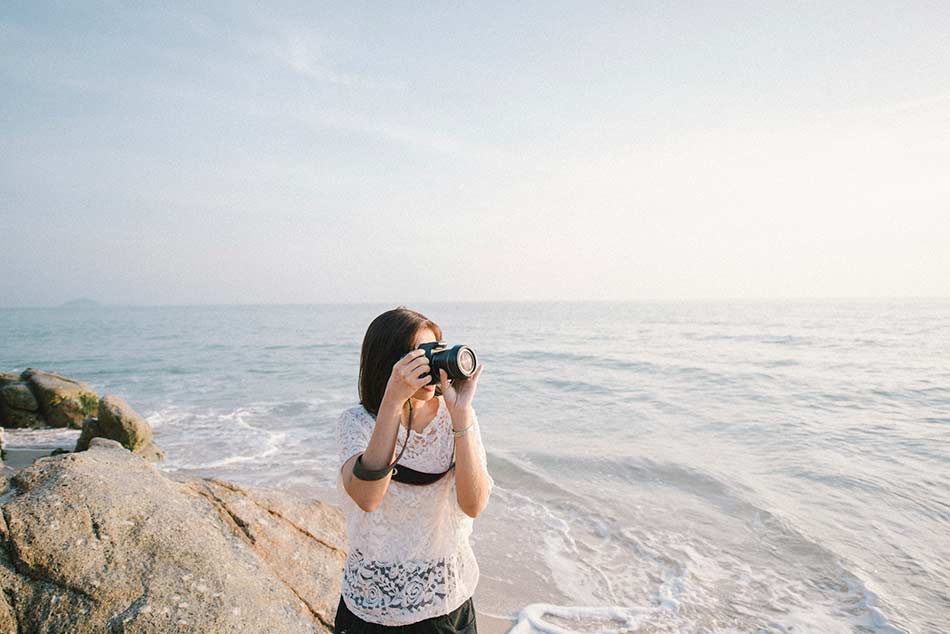
Photo by Sunny Au8ust on Unsplash
There’s a lot of exciting new lenses coming in 2019 (and some that have already been released).
Whether you’re a Nikon shooter, a Sony shooter, a Canon shooter, or somewhere in between, there’s a lot of new tech to drool over when it comes to lenses.
Below, I’ve outlined just a few of the most exciting lenses coming to market this year.
Need a new lens but don’t have the budget to buy new? Shop for a quality used lens for your camera.
New Lenses for 2019: NIKKOR Z 14-30mm f/4S
At CES 2019 in January, Nikon unveiled a new lens for their Z-system cameras, a NIKKOR Z 14-30mm f/4S.
This is the first wide-angle zoom for the Z6 and Z7 cameras, which undoubtedly has excited Nikon landscape shooters around the globe.
At just 17 ounces, this lens is ultra-light and makes an excellent companion for photographers that need a capable lens but don’t want to lug around a big, heavy kit.
It has 14 elements (which includes four EDs and four aspherical elements), an anti-reflective Nano Crystal Coat to reduce flare and ghosting, and a fluorine coating to prevent fingerprints from gunking up the front and rear elements. It’s also the first 14mm lens for Nikon full frame cameras that accepts lens filters.

As one would expect, Nikon has incorporated its Stepping Motor technology, which means this is a quiet, fast lens that photographers will appreciate when they’re out shooting and need to keep a low profile. Videographers will appreciate its quietness as well as it won’t interfere with getting high-quality audio.
Keep an eye out for the lens coming to market this April for about $1,300.
Learn More:
New Lenses for 2019: Venus Optics Laowa 9mm f/2.8 for DJI Drones

If you’ve got a DJI drone as part of your kit, you might be interested in the new 9mm f/2.8 lens from Venus Optics.
The lens has 15 elements in 10 groups, including three extra-low dispersion elements and two aspherical elements. It also has a 113-degree view and a seven-blade aperture.

The lens is a scant 2.36-inches long and weighs less than half a pound, which is great for all those drone photography adventures you have planned.
It’s the widest lens available for DJI’s Inspire 2 drones and their X7 cameras, so if it’s wide-angle you want, this is the lens for you.
The Venus Optics Laowa 9mm f/2.8 lens is currently available for $499.
Need to get rid of old lenses you no longer use? Sell them and use the proceeds to buy new gear! List your old lenses for sale now.
New Lenses for 2019: New Canon RF Lenses for EOS R System
At CES earlier this year, Canon announced six new lenses for their EOS R mirrorless system.
Running the gamut from a 15-35mm f/2.8L to an 85mm f/1.2L to a 70-200mm f/2.8L IS USM, there is certainly a lot to choose from if you’ve adopted the EOS R system.
These lenses are not for sale yet, and some are still in development. However, you can get a sneak peek at what they look like and some of their features in the video above by Newsshooter.
Again, though not all the lenses outlined here are available yet, they will be soon. That’s exciting news, especially for Canon and Nikon shooters that have been waiting for a larger lens choice for the mirrorless cameras each company released late last year.
Stay tuned for more news and notes on upcoming lenses and other gear!
Learn More:
- Landscape Photography Tip: How to Master Wide-Angle Lenses
- 4 Ways You Can Improve Your Photos This Weekend
We Recommend
New Year's Resolutions for Photographers
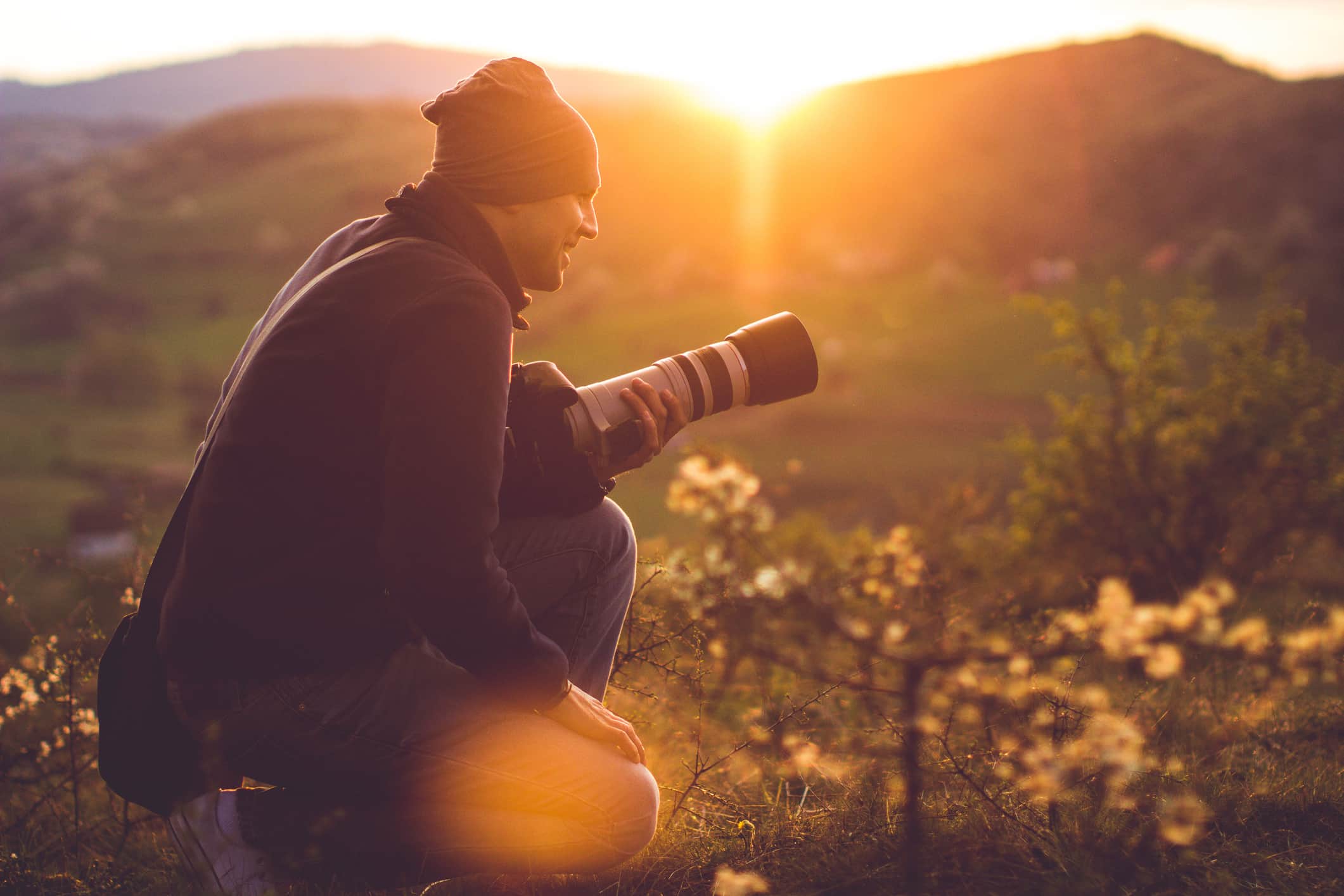
It'll be 2018 soon, and that means we'll have a whole new year to improve our photography.
If you're like me, you look at the new year as an opportunity to further develop the skills you already have while also expanding your horizons.
That's what this post is all about...
If you want to step up your game in 2018, here's a few ideas for New Year's resolutions for photographers.
Shoot More
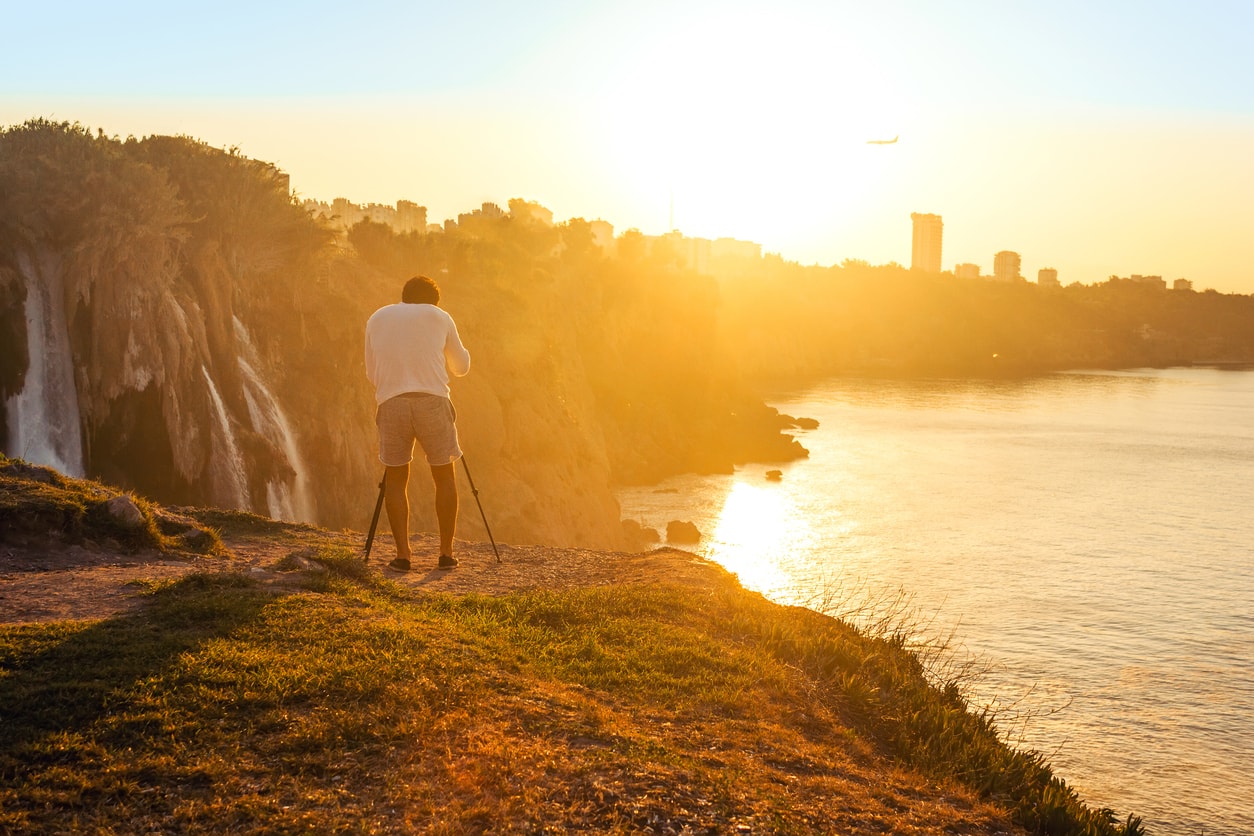
No one has ever said, "Gee, I spend too much time taking photos."
The more photos you take, the better the photographer you'll be.
That's because you'll have a chance to work with more subjects, in a greater variety of conditions, and potentially with more varied gear as well.
In 2018, stretch your boundaries. If you usually shoot landscapes, try portraiture. If you like wildlife photography, try macro.
You can even set a goal to take at least a photo a day for the entire year, or if that's a little too much commitment, try doing a weekly challenge in which you take photos every day that fits into a theme.
Whatever you do, just commit yourself to getting behind the lens more often.
They don't say "practice makes perfect" for nothing!
Shoot More Comfortably, Too
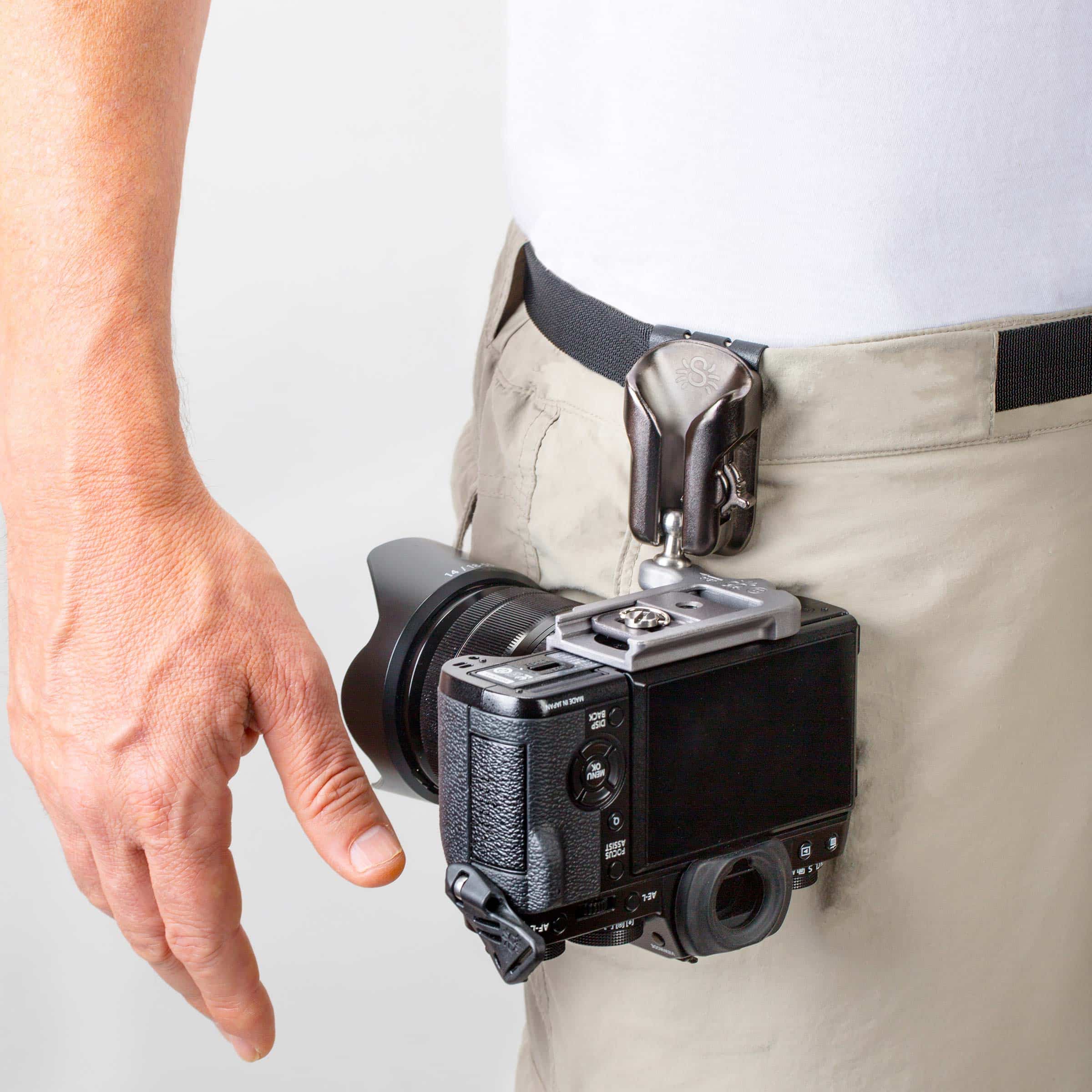
If you're still clinging to the camera strap that came with your camera, you're doing it all wrong.
Those cheap, flimsy straps offer nothing in the way of comfort, nor do they help with your workflow, either.
When I first started in photography, I don't know how many times I got that damn strap caught on something as I was walking around.
But, now, that's not a worry because I use the Spider Holster SpiderLight.

The SpiderLight puts my Sony a6300 right on my hip, where it's both out of the way, yet easily accessible.
I shoot a lot of landscapes, so it's nice to be able to walk around with my hands free in case a rock or a tree root jumps up and tries to trip me.
I also like the fact that the SpiderLight keeps my camera safe and secure. Even if I do stumble on a trail, my camera won't go anywhere.
But don't think that the SpiderLight is just for landscape photographers...
I use it when I'm taking portraits of my family, when I'm in the city for some fun street shoots, and even when I'm traveling.
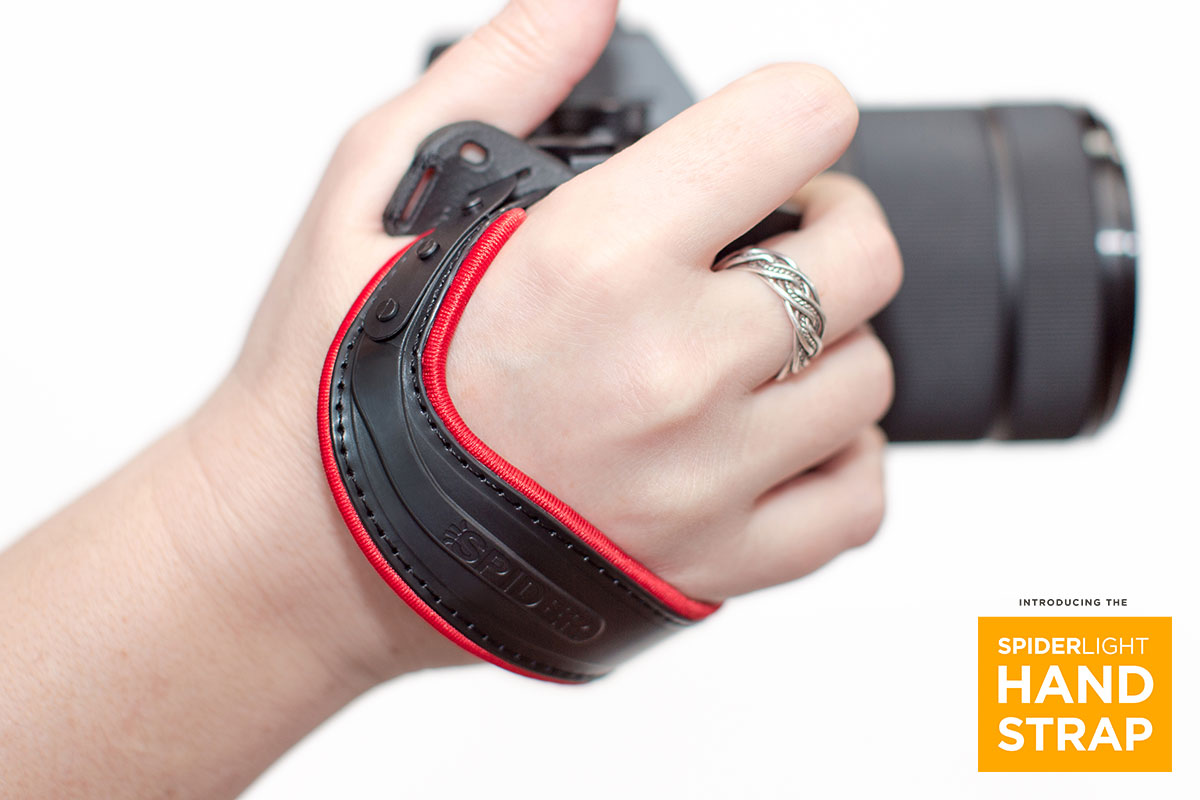
I use my holster with the SpiderLight Hand Strap, too, that way when I'm taking shots, I have a good, solid grip on my camera and a strap to act as a failsafe.
Just like the SpiderLight Holster, the Hand Strap is designed to stay out of your way.
The unique shape makes it easy to slide your hand in and out, and it puts your hand in the ideal shooting position so you can reach all the needed buttons and dials on your camera.
Together, the SpiderLight Holster and Hand Strap have helped me transform my workflow, and be way more comfortable as I work, too.
Learn More:
- Get the Specs and Pricing on the SpiderLight Holster and SpiderLight Hand Strap
- Good and Bad Ways to Carry a Camera
Get More Feedback
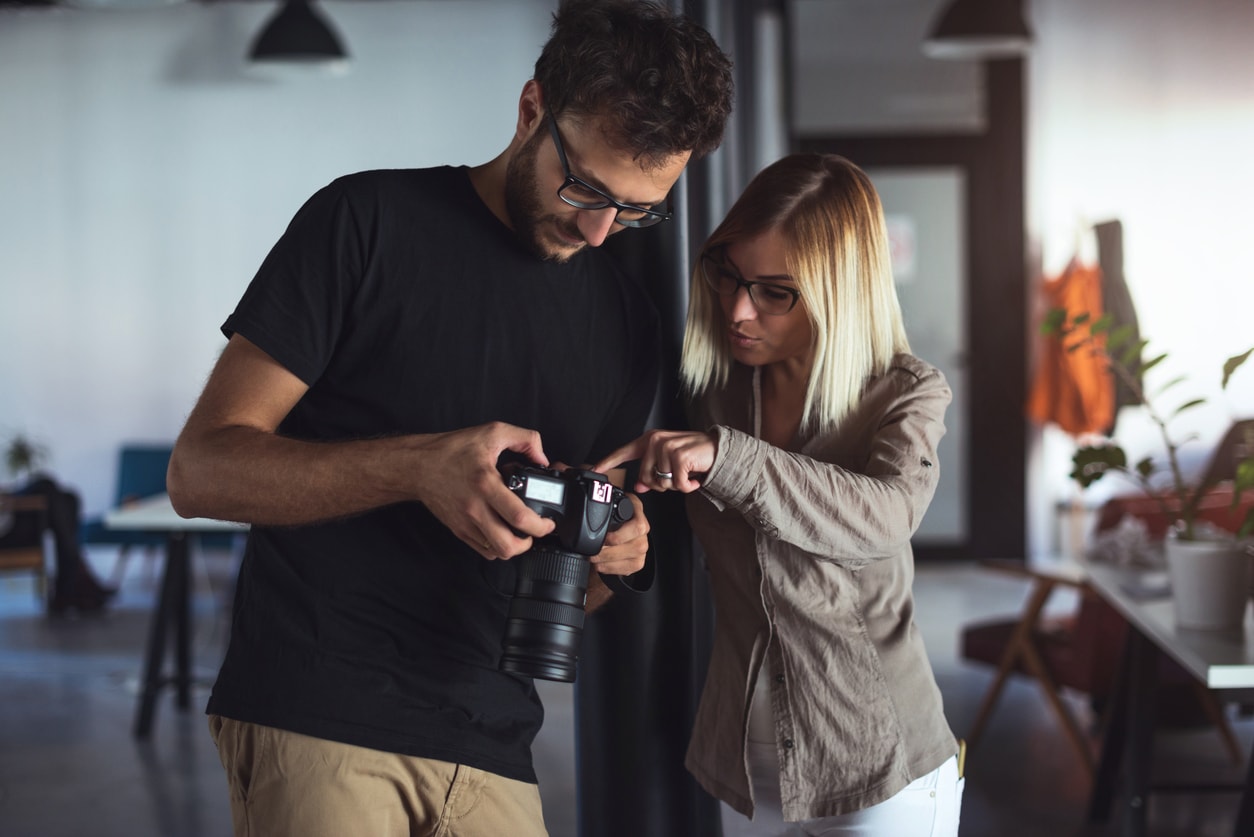
When I say "get more feedback," I don't mean ask your Instagram followers to tell you what they think...
Instead, I mean to get more critical feedback from other photographers.
That might require you to join a photography site and upload your images to galleries or joining a photography club in your local area.
It might also mean asking photographers you respect for some feedback or finding a mentor to help you develop your skills.
However you go about it, getting constructive feedback on your work will only help you grow as a photographer, and by the end of the new year, you'll see much-improved results.
Get a New Lens

A great way to challenge yourself in the new year is to learn how to shoot with a different lens.
The things you can do with your kit lens, for example, are vastly different than the things you can do with a 50mm f/1.8 or a 200mm f/4-5.6.
By outfitting yourself with a new lens, you can develop more improved compositional skills, develop your creative eye even further, shoot in more varied lighting conditions, and take photos of more varied subjects.
And don't think that you have to spend a lot of money to get a great lens, either.
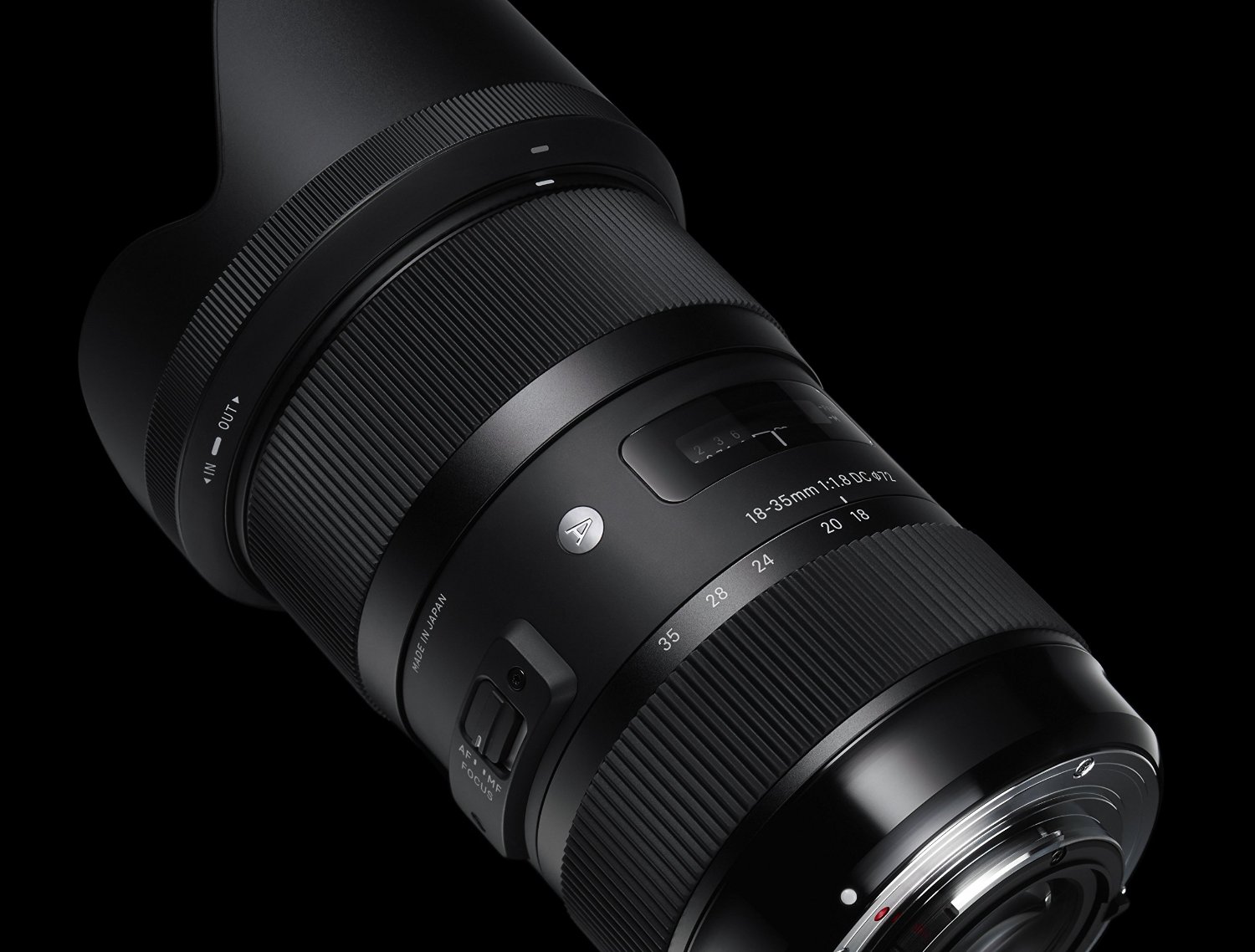
If you buy a pre-owned lens from Lensfinder, you'll not only get a great lens but you'll save some money as well.
Since Lensfinder uses advanced fraud filtering for both buyers and sellers in their marketplace, you can trust that the lens you buy is exactly as its described.
You can communicate with the seller right within the Lensfinder platform, read seller feedback (and leave feedback once your transaction is complete), and even pay via PayPal in the platform as well.
It's easy, convenient, safe, and you save money. What's not to like?
Learn More:
Commit Yourself to Honing Your Post-Processing Skills

I remember a time when some people thumbed their nose at the idea of processing their images. Somehow, it was viewed as cheating.
Well, if you ask me, processing isn't an option these days, as there are so many incredibly powerful tools available to improve the quality of your photos.
Whether you go with Photoshop or Lightroom, a newer player like Luminar or Pixlr, or do all your processing with smartphone apps like VSCO or Snapseed, dedicate yourself to developing a solid post-processing workflow so you can get every last ounce of awesome out of your photos.
Get a Better Computer for Post-Processing
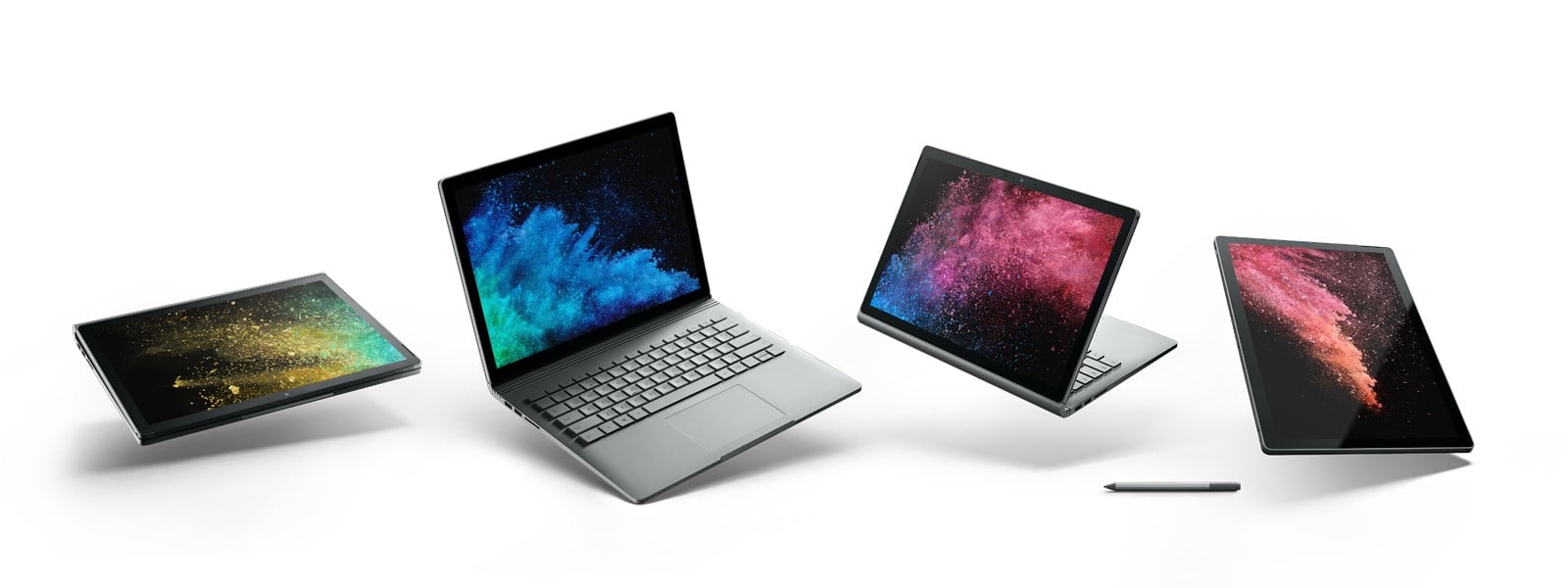
Speaking of post-processing...
I've been an Apple fan for years, but they've fallen behind in terms of offering tools and features on their machines that make photo processing easy.
But you know who hasn't slouched in that department?
Microsoft.
I still have my MacBook Pro, and I still use it for some tasks. But when it comes to editing my photos, that job falls to my Microsoft Surface Book 2.
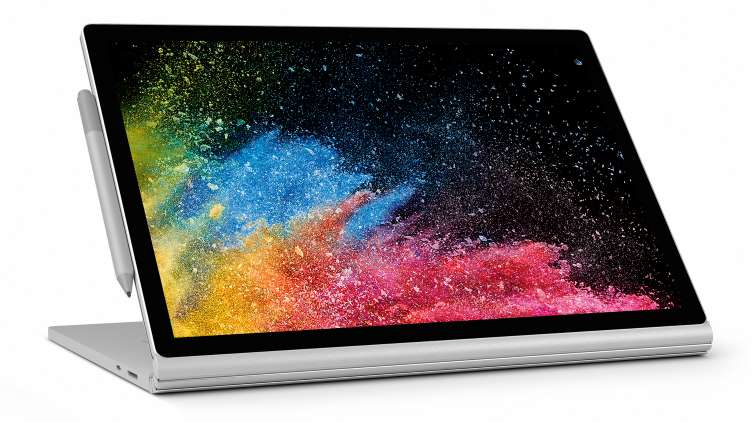
This thing is awesome, to say the least.
Not only does it have a glorious 13.5-inch detachable touchscreen (there's a 15-inch version available, too) but it also has giant trackpad, an awesome backlit keyboard, and a high-end graphics card.
On the inside, the Surface Book 2 now has Intel i7 quad-core processors available for the first time, which translates into lighting-fast speed, even when you're doing power-hungry tasks like editing photos.
You can get 8GB or 16GB of RAM, up to 1TB of storage, and it comes loaded with the surprisingly good Windows 10 as well.
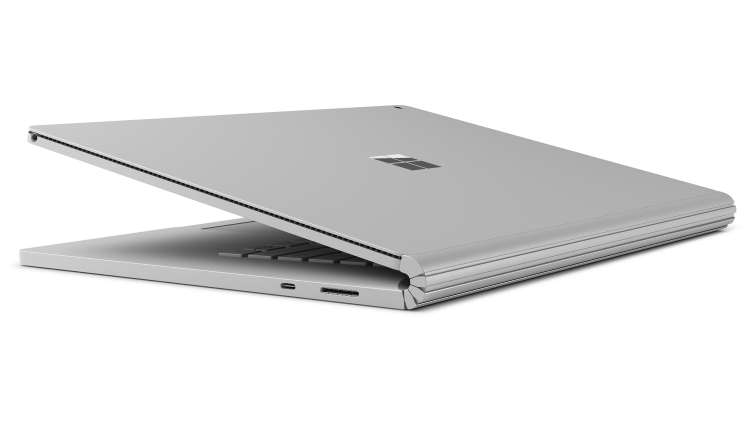
On top of all that, the Surface Book 2 is the perfect companion to the awesome Surface Pen, which makes photo editing a total breeze. If you pick up a Surface Dial, it's compatible with the Surface Book 2 as well.
That means that this thing is an innovative, power-packed, feature-rich workhorse that is incredibly versatile.
If you're still using your old MacBook Pro for photo editing, I suggest that in the new year you give the Surface Book 2 a good, long look.
Learn More:
- Get the Specs and Pricing on the Microsoft Surface Book 2
- The Microsoft Surface Book 2 is a MacBook Pro Killer
Get More Organized
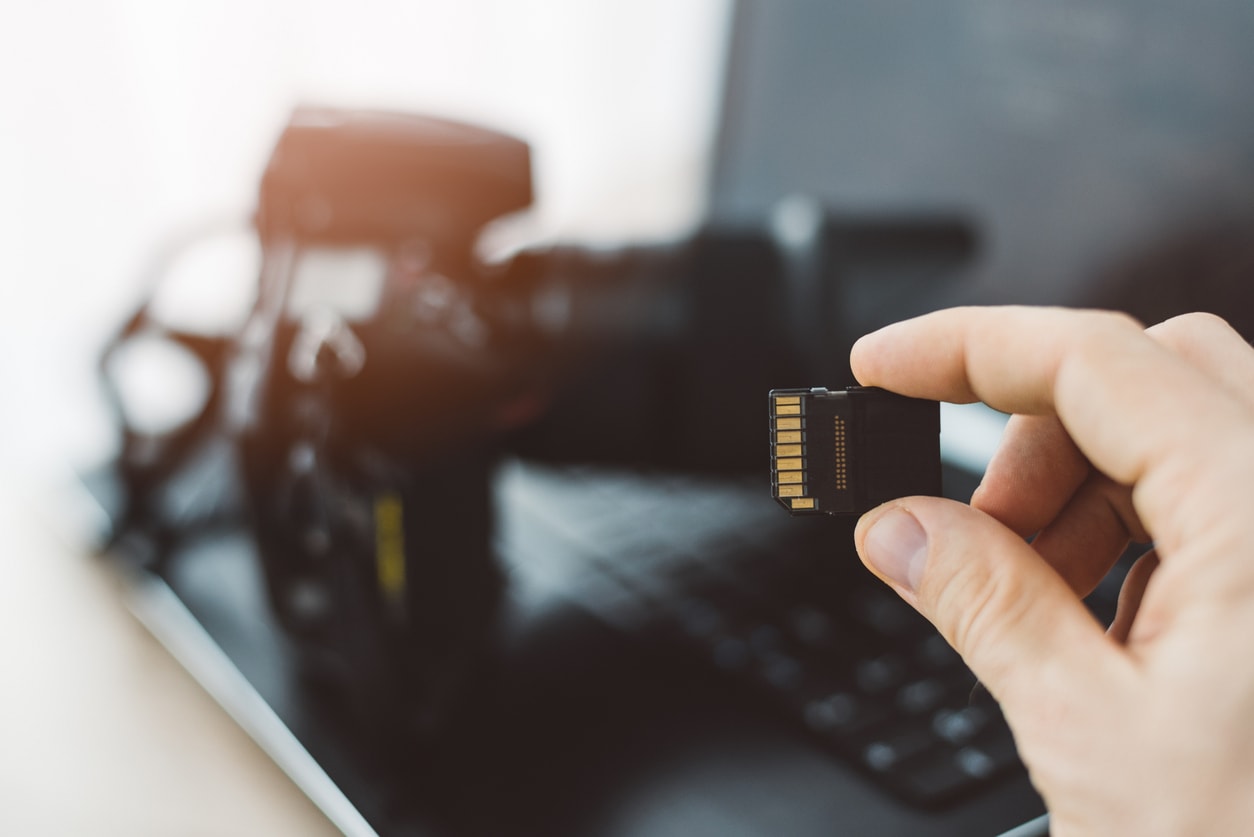
I fully admit that my image files can be a hot mess. My guess is that yours probably are too.
In 2018, I'm definitely setting out to be more organized, to get all my images labeled and into folders so I can actually find the things I'm looking for when the time comes.
I'm also going to endeavor to dump my photos more quickly. I have a tendency to go shoot, and then by the time I get home, I just want to veg on the couch, which leaves my images on the memory card for a few days after the fact.
That's a dangerous game to play, and though I've not lost any images yet, I'm certainly not doing everything I can to protect against image loss in the future.
If this sounds like you too, join me next year in getting more organized!
Give Time-Lapse a Try
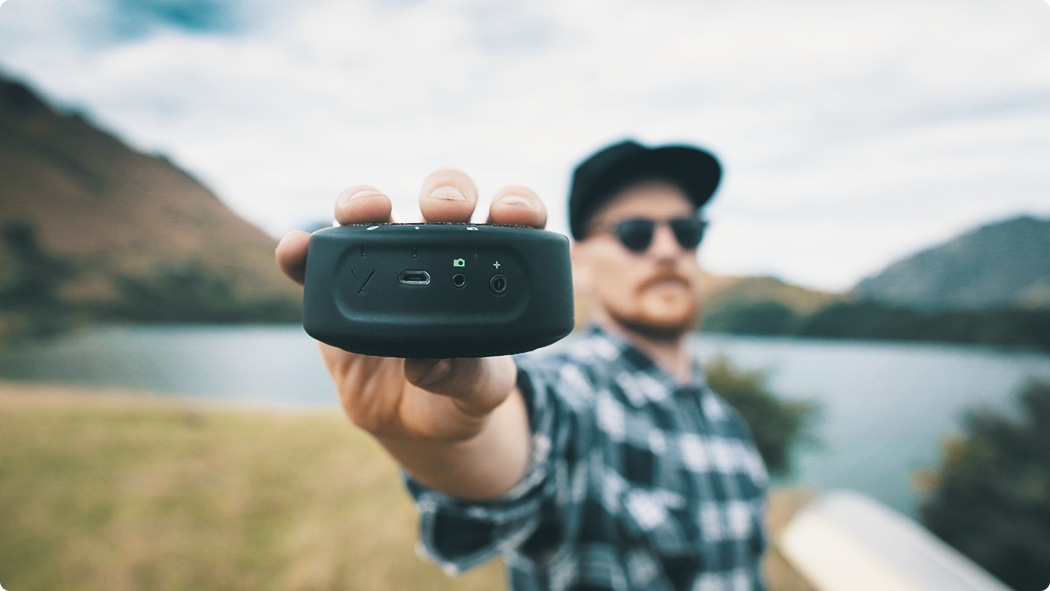
When I need a break from the grind, I often go to YouTube or Vimeo and check out time-lapse videos.
I find that time-lapses of gorgeous landscapes helps me pause, take a breath, and get my batteries revved up to get back to work.
In short, I love time-lapses, but never really considered trying to make them myself, that is, until now.
Syrp, a New Zealand-based company, makes a little gadget called the Genie Mini that makes time-lapse photography loads easier.
The Genie Mini is a pint-sized motion control device that allows you to create smooth panning time-lapse videos (and real-time videos for that matter).
It connects wirelessly to your phone via a companion app, which gives you tons of control over what the Genie does and when.
And since you control this little guy from your phone, that means you can sit back, relax, and dial in your desired settings while you hang out and enjoy the view.
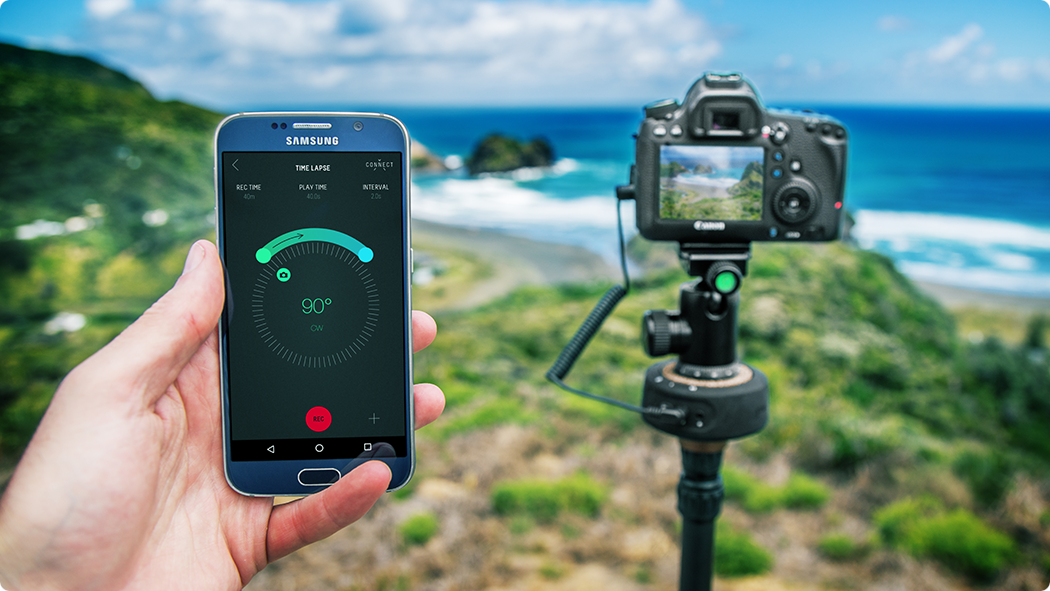
In addition to being small, lightweight, and packed with features, Genie Mini makes time-lapse videos a breeze.
That's because the Genie Mini app comes with factory presets so you can shoot time-lapses right out of the box. You literally don't need to know a thing about time-lapse video in order to make one!
Just mount Genie Mini to your tripod, connect your camera, fire up the app, and shoot away.
We're all busy and short on time, so when you can try something new without having to invest every waking moment of your free time to do it, I say go for it!
Learn More:
Help Out Other Photographers
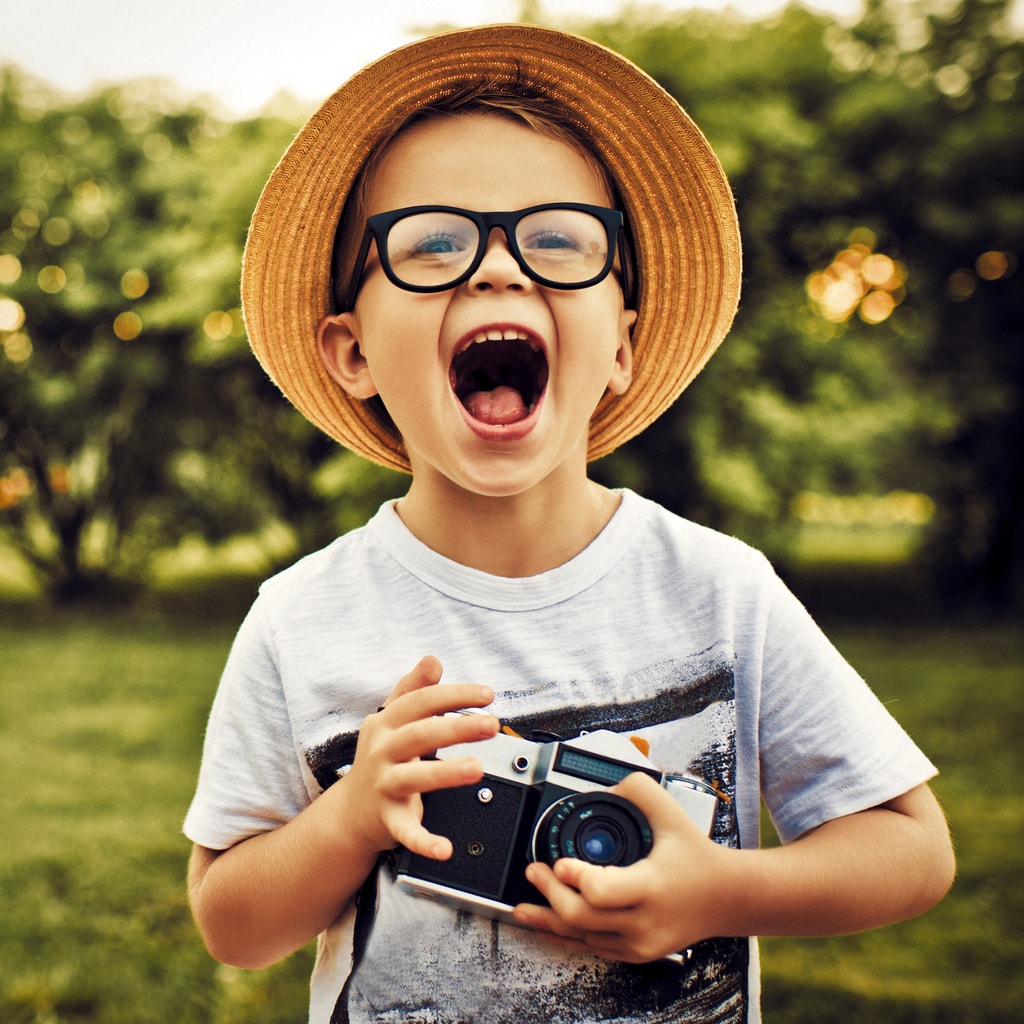
It might sound a little sappy, but photography really can change the world.
In the new year, you can be part of that by helping other photographers realize their potential.
Maybe that's getting your kid their first camera. Perhaps that's offering to teach your kid's class a little bit about photography.
However you go about it, getting other people involved in photography and helping them improve their skills is a great way to spend your free time in the coming year.
Additionally, see what you can do to use your photography skills for good.
Whether that's volunteering to take photos of the animals up for adoption at the local animal shelter, offering to take some candid photos at your neighbor's family reunion or something in between, see if you can pay it forward a little in 2018 in order to make the world around you just a little bit better.
We Recommend
Nikon's Best All-Purpose Lenses
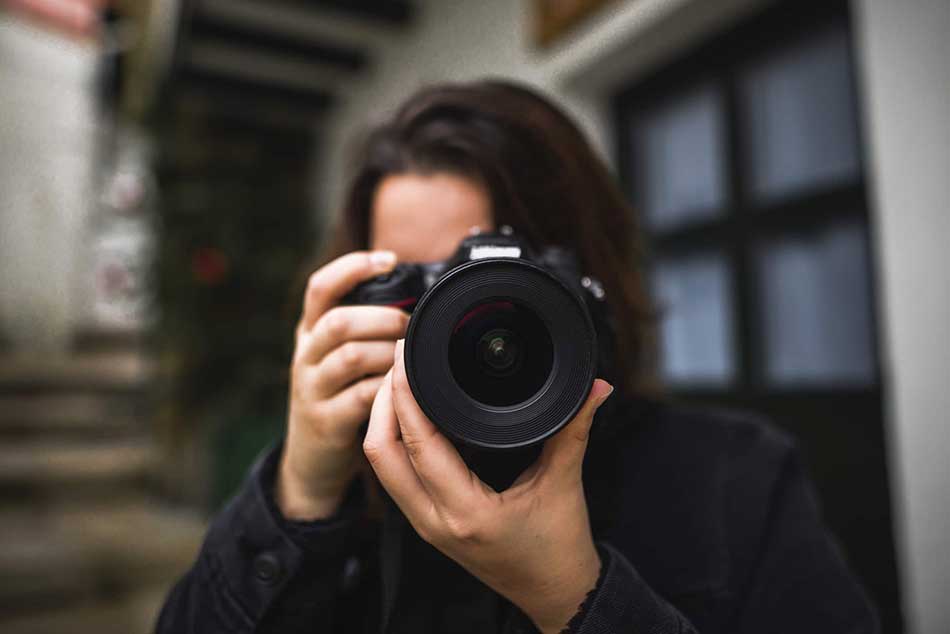
If you own a Nikon camera, you might have wondered what lenses are the best bet for your rig.
That's a tough decision to make given how many great lenses Nikon has put out over the years...
However, if we break it down into focal lengths - wide-angle, standard, and telephoto - we can narrow a rather lengthy list down to just three top-notch lenses you should consider buying.
With that in mind, here's my picks for Nikon's three best all-around lenses.
The Best Nikon Wide-Angle Lens: 24mm f/1.8G ED
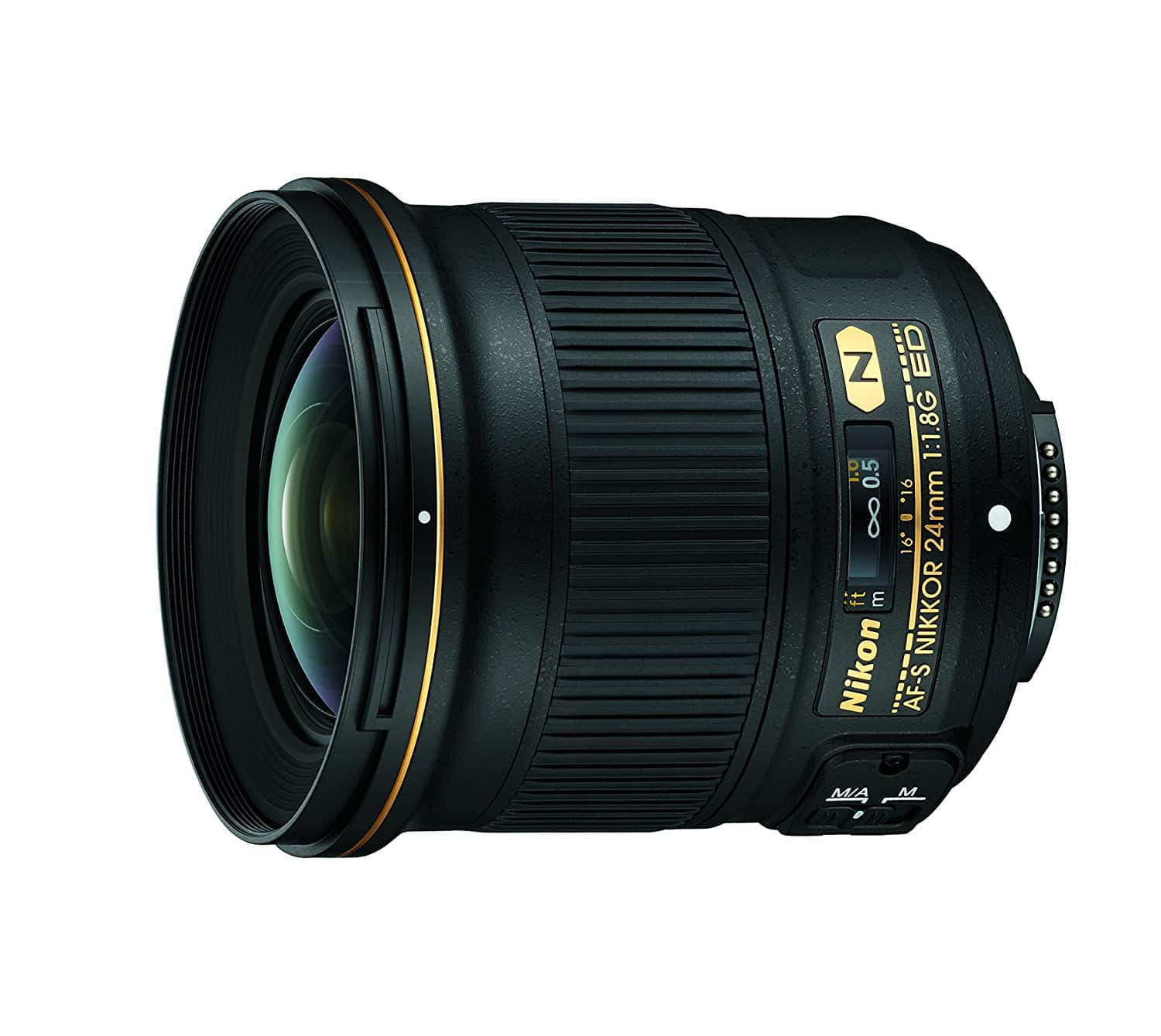
On a full frame camera, the 24mm f/1.8G ED lens offers an ideal wide-angle view for taking landscapes with gorgeous depth, and even for taking portraits of large groups.
The large maximum aperture means you can shoot in varying lighting conditions and still get a good exposure without boosting the ISO.
And at 12.6 ounces and 3.1-inches by 3.3-inches, it's a small, discreet, lightweight lens that you can take with you virtually anywhere.
On top of that, this lens produces images that are incredibly sharp.
In fact, DxOMark pitted this lens against top choices from Sigma and Zeiss, and they found this little guy to produce sharper images.
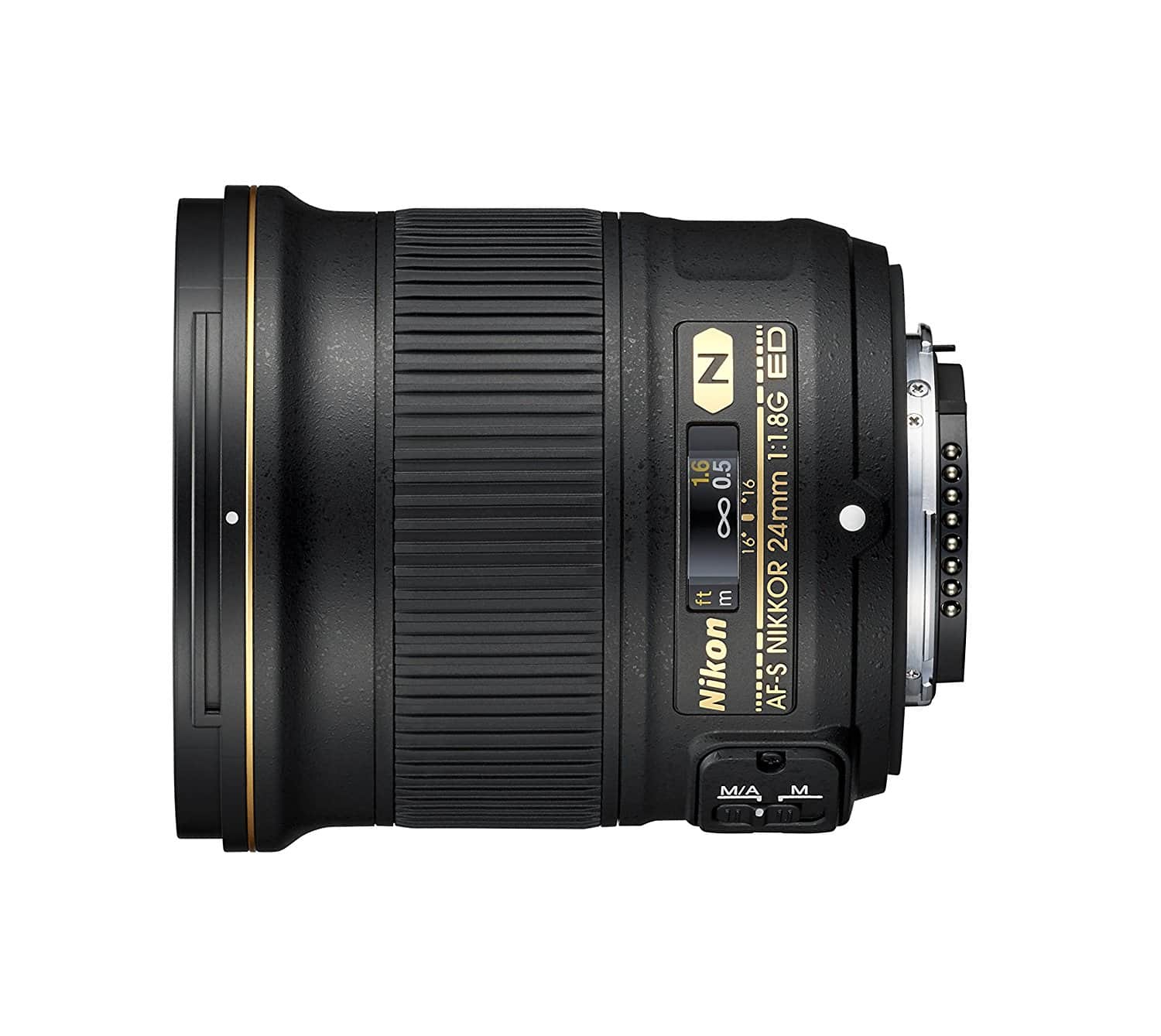
Another nice thing about this lens is that it's compatible with DX crop sensor Nikon cameras as well.
Since Nikon's DX cameras have a crop factor of 1.5x, this lens has an effective focal length of 36mm.
That puts it at the top of the wide-angle range, but it's nevertheless an excellent focal length for taking photos of just about anything from landscapes to street scenes to portraits.
And therein lies what I think is the best feature of this lens - its versatility.
Put it on a full frame or crop sensor camera, use it in variable lighting conditions, take it with you virtually anywhere...what's not to like about that?
Learn More:
The Best Nikon Standard Lens: 50mm f/1.8D AF

A standard or normal focal length lens like the 50mm f/1.8D AF is every bit as versatile as the wide-angle lens I outlined above.
Compatible with both full frame and crop sensor Nikon cameras, this Nifty Fifty is small and lightweight but packs a punch with features that make it incredibly easy to use.
In fact, many Nikon shooters will tell you that this is the first lens they bought and that you should make it the first lens you buy as well.
It makes sense that this is a popular lens, too.
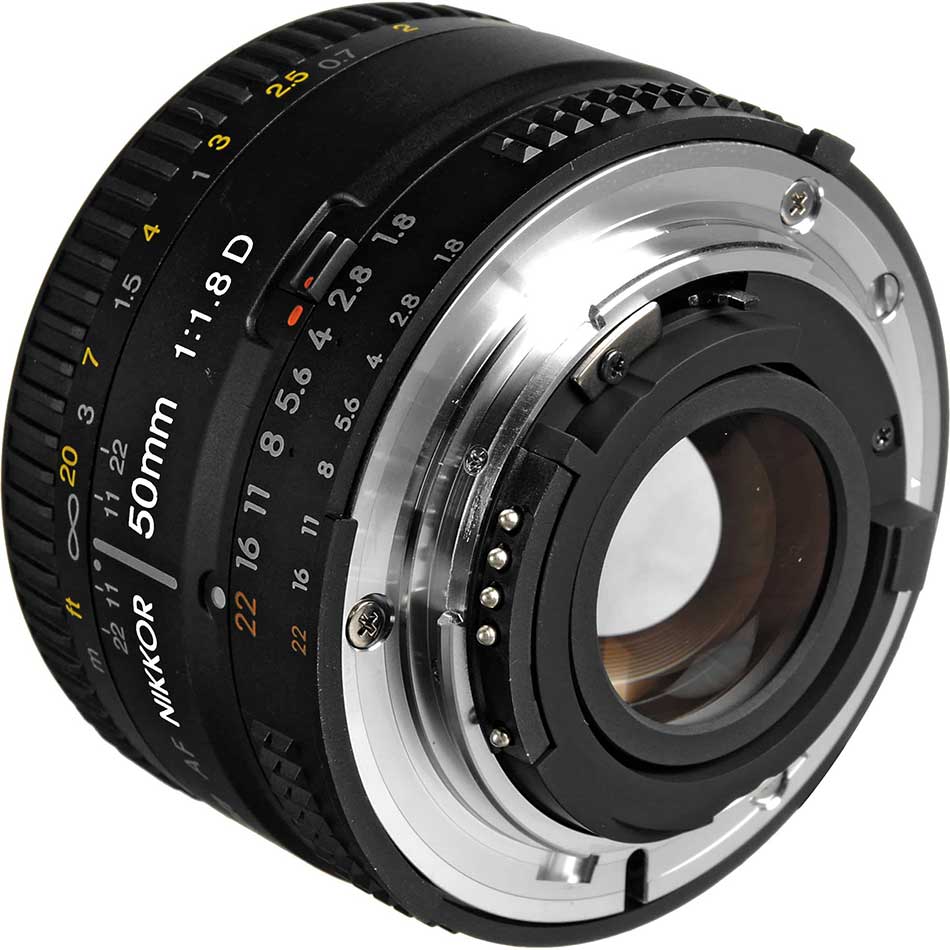
It's amazingly sharp (even more so than the 24mm lens discussed earlier), has lightning-fast focus speed for any action shots you wish to take, and produces those results even in less-than-ideal lighting due to its large f/1.8 maximum aperture.
This thing is built well, too, meaning you get a lens that not only performs well but will be durable and might just outlive your Nikon camera!
In fact, I have owned this very lens for quite a few years now, and despite a few drops along the way, it still works just as good as the day I bought it.
On a full frame camera, this lens gives you wide latitude for capturing all sorts of subjects day and night. I especially like it for portraits on my D810.
However, on a crop sensor body, this lens has an effective focal length of around 75mm, making it a nice short-telephoto option for sports, nature and wildlife photography, and even portraits.
Learn More:
The Best Nikon Telephoto Lens: 18-300mm f/3.5-6.3 ED VR

Though this lens is not compatible with Nikon's full frame cameras, it certainly represents one of the best lenses that reach the telephoto range for crop sensor shooters.
Sure, this lens isn't the best lens when it comes to optic performance, but it's certainly no slouch, either.
Like the other lenses on this list, this one is supremely versatile.
However, where the first two are prime lenses, this zoom lens gives you an incredible range of focal lengths from 18mm on the wide end to 300mm on the telephoto end.
That means that with one lens you can photograph landscapes scenes, take close-up portraits, and sit in the stands at the game and get up-close shots of the action as well.
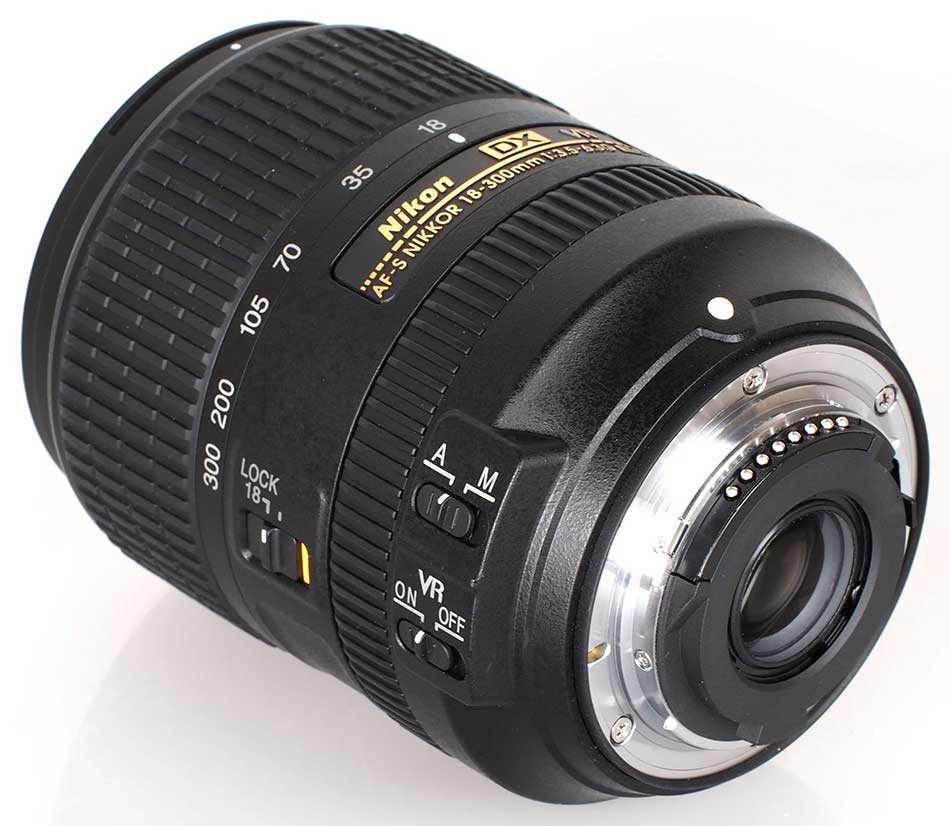
It's heavier than the other two lenses - 19.4 ounces - but it still isn't a behemoth that makes you feel like you're lifting weights each time you bring your camera to your eye to take a photo.
While this lens isn't going to do you any favors in low-light conditions, what it will do is give you the ability to take photos of just about any subject during the daylight hours, and if you ask me, that's not a bad tradeoff at all.
And on those occasions when it's a little too dark, this lens has Nikon's Vibration Reduction, so you can get up to four stops of extra shutter speed without getting motion blur.
If you're looking for a single lens to buy, this is probably your best bet, simply because of its incredible range of focal lengths.
Learn More:
Wrapping It Up

A key thing to remember when looking for a new lens is that you don't have to buy a new lens at all.
There are plenty of photographers out there that have well-cared-for gear that they want to sell, so buying used is a great idea if you want good glass at a good price.
Better yet, there's places like Lensfinder that, as you can tell by the name, specialize as a marketplace for finding lenses.
If you're in the market for a lens, just head over to their website, enter your criteria, and they'll show you a selection of lenses that are currently for sale.
What's great about Lensfinder is that it's a community of photographers that are interested in buying and selling lenses.
That means the lenses listed for sale on the site aren't bogus ripoffs - they're listed by real, actual people that have signed up for a free account.
You can communicate with other buyers and sellers right from within Lensfinder, so you don't have to worry about giving out your phone or email address.
On top of that, Lensfinder has a rating system, so you can quickly determine if a seller has been on the up-and-up.
And once you find a lens, you can pay for it via PayPal, making it a safe, easy way to get yourself a new lens or two.
See Lensfinder for yourself, and see what lenses you might want to pick up!
We Recommend
Nikon’s Best Lenses: 5 Lenses You Need in Your Bag
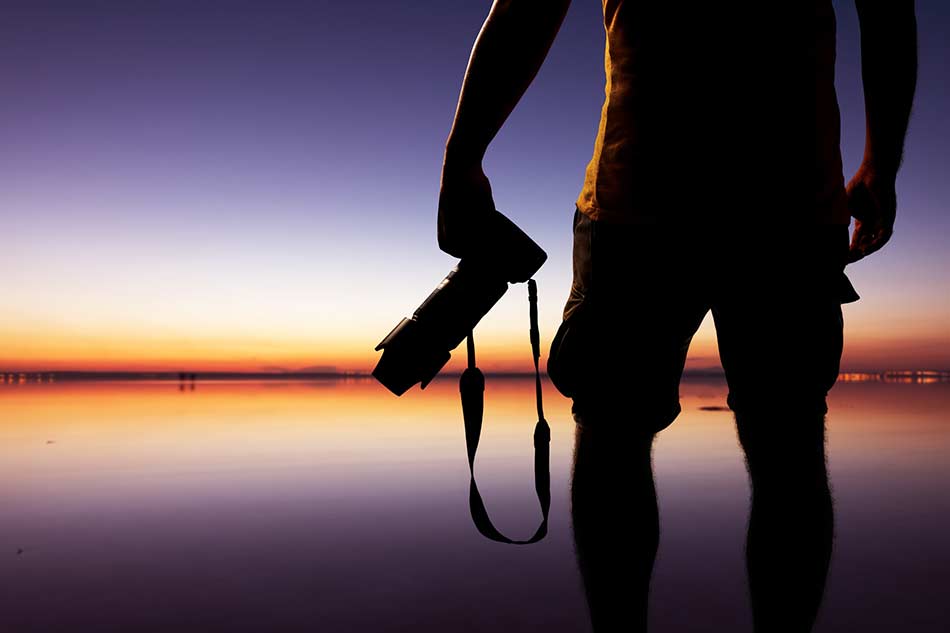 Image Credit: SonerCdem via iStock
Image Credit: SonerCdem via iStock
If you're a Nikon shooter, there are plenty of lens options for you whether you enjoy portraits or landscapes, wildlife or macro.
Naturally, some lenses are better than others, so you want to be sure to invest in glass that gives you the most bang for your buck.
In the video above, TheTechMag offers up a list of five of the best Nikon lenses money can buy.
Some of the lenses are prohibitively expensive for most photographers, but some of the lenses on their list are surprisingly affordable - especially if you can find them used.
So, have a look at the video to learn what Nikon lenses to buy, and for a quick overview of the lenses from the video, check the article below!
Editor's Tip: Are your photos just not coming out the way you want? You might need to learn how to use your lens. Learn what all the markings on your lens mean.
Nikon AF-S Nikkor 200-500mm f/5.6E ED VR
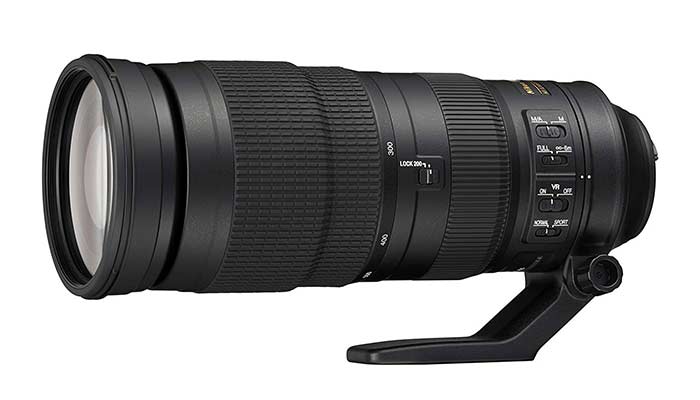
This compact super telephoto lens is ideal for wildlife photography, bird photography, sports, events, and more.
The 500mm of zoom on full frame cameras and 750mm of effective focal length on APS-C cameras makes this one of the longest lenses consumers can buy for Nikon cameras.
The constant f/5.6 aperture isn't especially large, but under normal lighting conditions, it performs beautifully.
Even better, this lens has vibration reduction technology, which gives you an additional 4.5 stops of shutter speed when shooting handheld.
New Pricing: $1,396.95 on Amazon
Check Pre-Owned Pricing for This Lens
AF-S VR Micro-Nikkor 105mm f/2.8G IF-ED

If you're a macro photographer, it's tough to beat this versatile lens.
Not only does this lens have an internal focusing mechanism that provides fast and quiet autofocusing so as not to disturb insects and other up-close subjects, but it also weighs just 279 ounces, so it's easy to hand hold.
With Nikon's VR II vibration reduction technology, you can take hand-held photos with greater confidence that camera shake won't be a problem, either.
It's got nano-crystal coating and ED glass elements as well, which help enhance image quality by minimizing chromatic aberrations and lens flare.
New Pricing: $896.95 on Amazon
Check Pre-Owned Pricing for This Lens
AF-S Nikkor 70-200mm f/2.8E FL ED VR
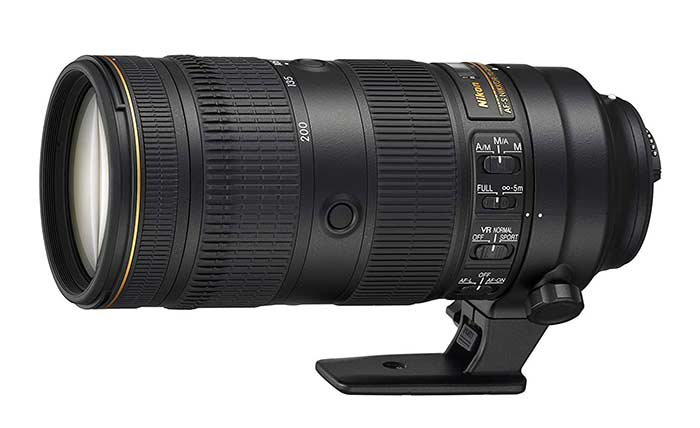
One of the most versatile zoom lenses money can buy, Nikon's 70-200mm f/2.8 has all sorts of features that make it well worth its big price tag.
For starters, having a zoom range of 70-200mm allows you to do everything from portraiture to wildlife photography to sports photography, and many other pursuits in between.
Having a wide, constant aperture of f/2.8 is also helpful as that allows you to take photos in dim lighting without using a higher ISO and introducing noise as a result.
Like the previous lenses on this list, this one also has vibration reduction technology so you can shoot more confidently without a tripod.
New Pricing: $2,796.95 on Amazon
Check Pre-Owned Pricing for This Lens
Editor's Tip: Not satisfied with the portraits you take? A better lens might be in order. Learn why 85mm is the ideal focal length for portraits.
Nikon AF-S FX Nikkor 50mm f/1.8G
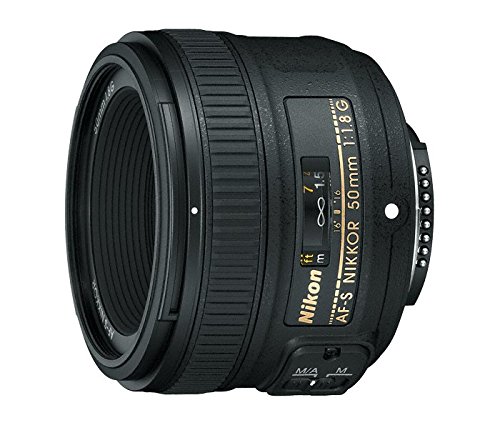
Everyone should have a fast prime lens in their bag, and one of the first ones you should buy is the 50mm f/1.8G.
At f/1.8, this lens (and the next one on the list) are the fastest of the bunch.
That's helpful for low-light shooting, getting nice, blurry backgrounds in portraits, and for freezing movement when a faster shutter speed is needed.
This lens is also small and lightweight, yet incredibly durable. Its versatility is a bonus, too, as it can be used for just about any type of photography, making it a perfect "daily driver" or travel photography lens.
New Pricing: $216.95 on Amazon
Check Pre-Owned Pricing for This Lens
Nikon AF-S DX Nikkor 35mm f/1.8G
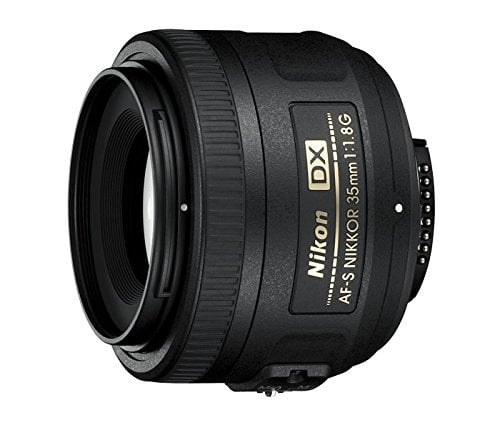
Like the 50mm lens described above, this 35mm lens sports a large f/1.8 aperture, a small form factor, and lightweight construction.
At 35mm, it's a wider angle lens than the 50mm, but it's still as equally as versatile.
In fact, 35mm is an ideal focal length for all kinds of photographic pursuits, from portraits to landscapes to architecture.
With one aspherical element, it minimizes distortion as well as aberrations, resulting in images that look normal and have minimal optical distractions.
Again, with a fast prime like this, you have endless options in what you photograph, making it perfect for day-to-day use.
New Pricing: $196.95 on Amazon
Check Pre-Owned Pricing for This Lens
We Recommend
Photography Gifts to Buy Yourself in 2021
 Photo by anyaberkut via iStock
Photo by anyaberkut via iStock
Not happy with the gifts you got for Christmas?
Or did you get a little money from Santa to spend on new photography gear?
Either way, there's no lack of awesome photography gifts to buy yourself in the new year.
Here's a few of my favorite photography accessories that I've enjoyed using over the course of the last year.
Holdfast MoneyMaker Solo

One of the best photography accessories I bought this year was hands-down the Holdfast MoneyMaker Solo.
I've been a Holdfast customer for a long, long time, and I have their original MoneyMaker dual camera strap.
The "problem" - if you can call it that - with the original MoneyMaker is that it was purpose-built for two-camera shooters. I'm not always a two-camera shooter, though.
So imagine my excitement when Holdfast unveiled the MoneyMaker Solo, which is specifically designed for single-camera shooters.

It's made of the same impeccable materials as the original MoneyMaker, with gorgeous full-grain leathers and high-quality metal components.
That makes it a durable (and beautiful!) addition to any photography kit.
It's also functional, too, with an innovative Belt Anchor that keeps your camera right next to your body. When you're ready to shoot, you can release the Belt Anchor with one hand for taking a quick shot. You can reattach it one-handed as well!

The comfort level of the MoneyMaker solo is next-level, too.
The shoulder strap is nice and large, which helps distribute the weight of your gear evenly across your shoulder.
The stabilizer strap helps keep the shoulder pad in place as well, so you don't have to worry about constantly adjusting it as you work.
This camera strap really is the pinnacle of form, function, and comfort. I highly recommend spoiling yourself a little bit by giving one a try!
Learn More:
CanvasHQ Prints

As with Holdfast, I've been a customer of CanvasHQ for years now, and I keep coming back over and over again because the quality of their canvas prints is simply outstanding.
What I like about canvas is that it gives my photos a little more depth and character thanks to the texture of the canvas.
And since CanvasHQ is at the top of their game and uses only the finest canvas, inks, and wood for the frames, I know that when I order a print, it'll look spectacular.

Heck, even if there's something wrong with the print, I don't have to worry...
That's because CanvasHQ has a 30-day money-back guarantee. I've never had to utilize that guarantee, but if I did, it would be as simple as returning the print and getting my money back (or getting a new print sent to me).
On top of that, CanvasHQ has a lifetime guarantee against cracking, bubbling, or fading. Talk about peace of mind!
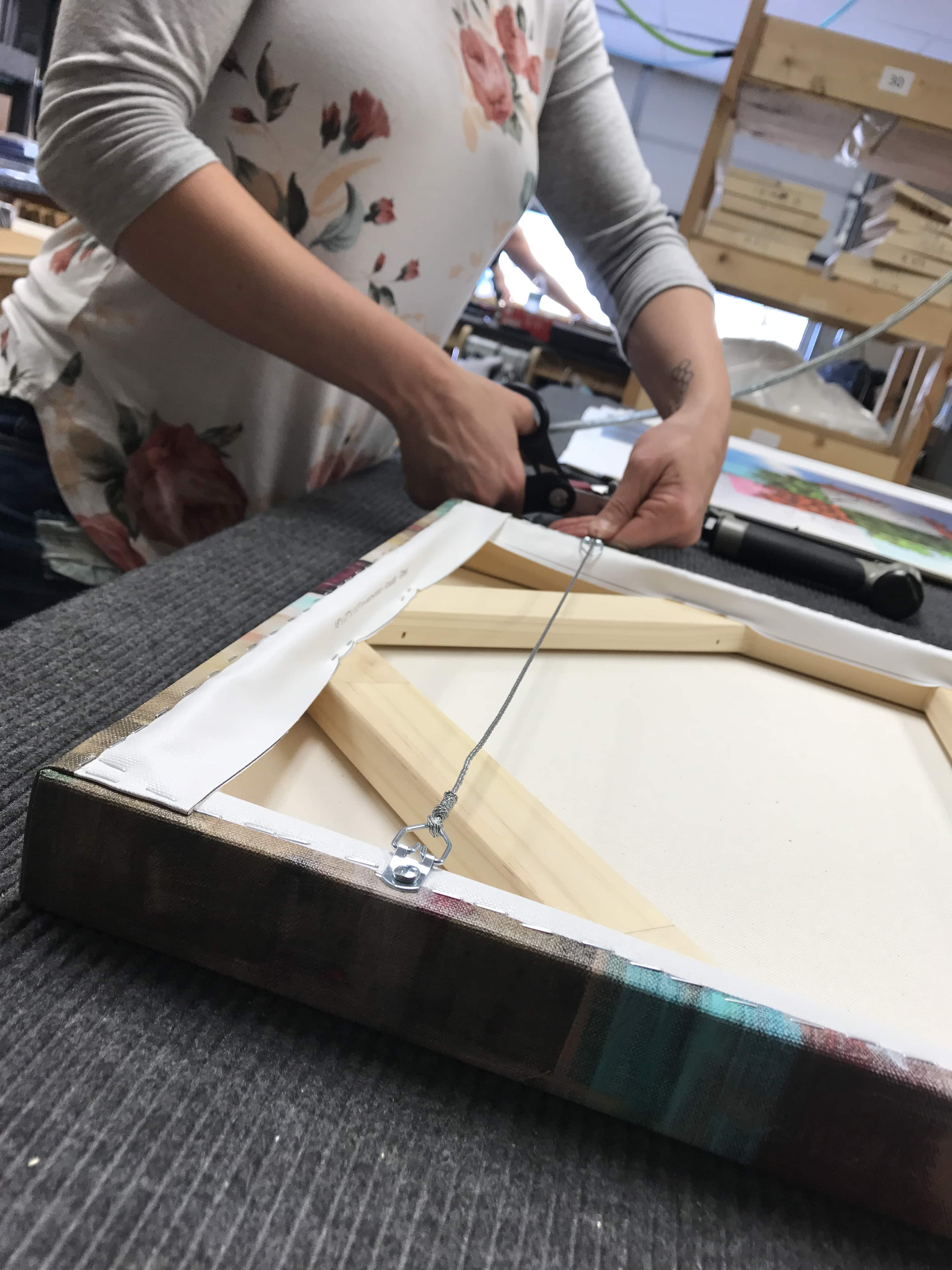
The process of getting a print is easy, too.
Just upload your image and CanvasHQ will give you tips for sizing, color adjustments, and so forth. You even get free proofs emailed to you before your image is printed.
Once it's printed, you'll get your artwork in a jiff - current turnaround time is just two days!
In other words, you can really treat yourself to something nice in the new year by getting a gorgeous, handcrafted print made of your favorite photo. And since it'll have a prominent place on the wall in your home, it's a gift that will keep on giving!
Learn More:
- Why Your Photos are Bad - and How to Fix Them
- Reignite Your Love of Photography With These Simple Tips
Wolverine Data F2D Titan
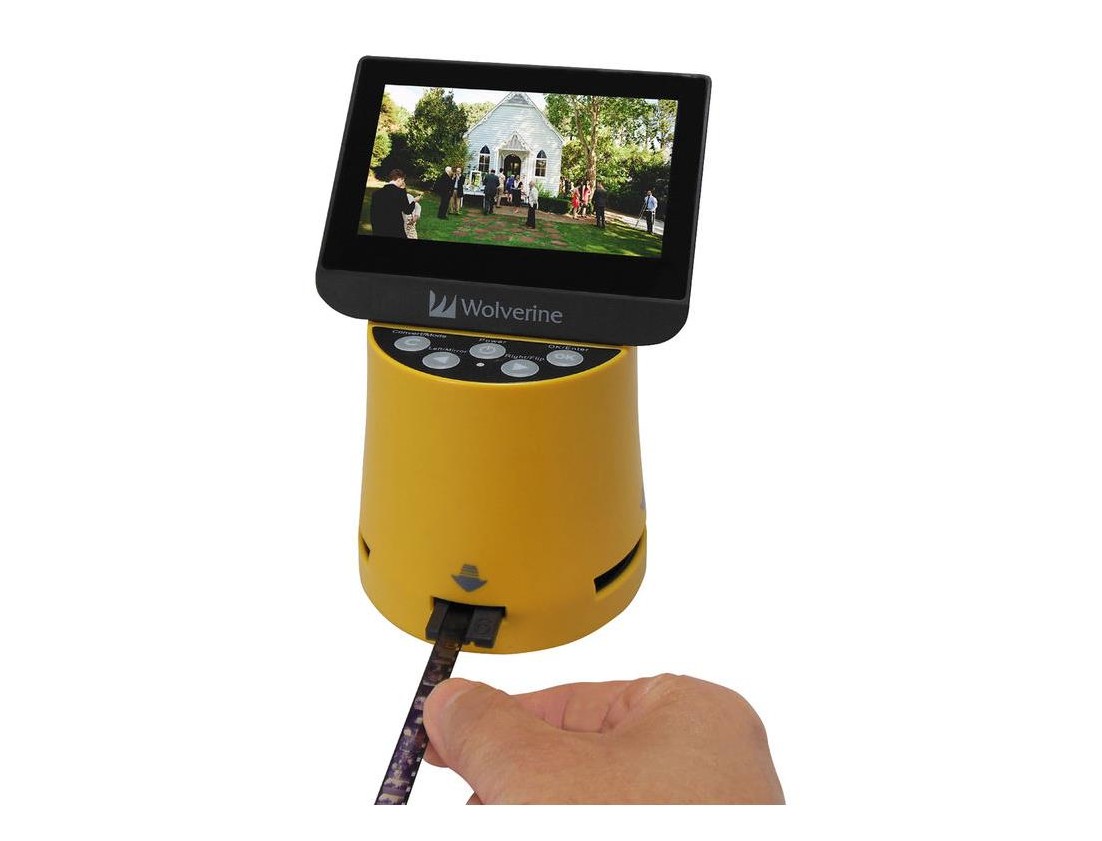
What I like about the Wolverine Data F2D Titan is that it's an 8-in-1 rig that converts my slides, 8mm movies, and Super 8 movies, as well as 35mm, 110, 126, 127, and APS film to digital.
And the digital copies are beautiful thanks to the Titan's 20-megapixel high-resolution sensor.
You can use the F2D Titan to scan, too - it takes a mere three seconds to complete the process thanks to the Titan's innovative speed-load adapters that are sized just right for each format of slide or negative you're scanning.
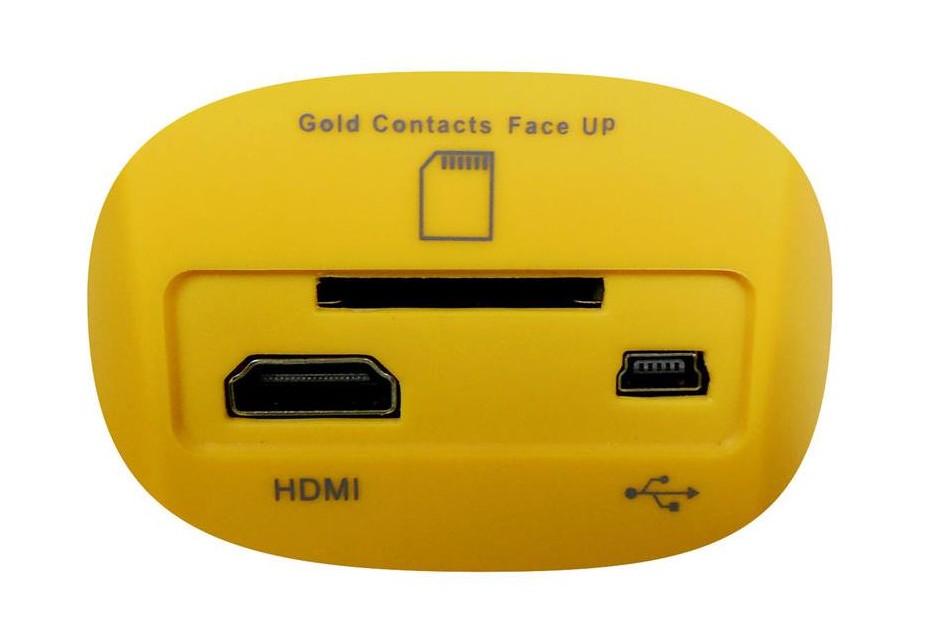
Not only is this thing easy to use, but you can also see the digitized images on the 4.3-inch color LCD. You can also connect the unit to a computer or TV to view the results on a larger screen.
There's internal memory for storing images or you can use your own SD/SDHC memory card for more storage capacity.
Best of all, the F2D Titan is fully self-contained. You don't need a computer or monitor or software of any kind.
Just plug it into a power source and you'll be ready to preserve your memories!
Learn More:
Inexpensive Lenses are a Great Gift for Yourself
 Photo by yanik88 via iStock
Photo by yanik88 via iStock
As we all know, photography can be one heck of an expensive hobby or profession.
That's why I've started to buy used lenses to help stretch my budget a bit further.
Think about it - if you can find good-quality lenses for a fraction of the price, that's a lot of money you can save over the long haul.
What's more, when you buy used lenses, you might even be able to buy a couple of them for the price of one new one. That's a deal if you ask me!

Though I've tried buying used lenses on places like Craigslist before, it was usually a shady deal that made me uncomfortable.
Then I found Lensfinder, and those troubles have gone away completely.
Lensfinder was built by photographers, for photographers, which makes it the ideal place to find great used glass.
There's no sifting through a million unrelated items on eBay, no creepy sellers on Craigslist to deal with, either.
 Photo by FatCamera via iStock
Photo by FatCamera via iStock
Instead, you just enter what you're looking for, and Lensfinder will present you with lenses that match your criteria.
Better still, it's an all-in-one platform, so once you sign up for a free account, you can buy all the lenses you want, pay for them via PayPal, communicate with the seller, and leave feedback without having to leave the site.
Not bad, right?!
If you're in the market for a new lens, pop over to Lensfinder and see what you can find. You might be surprised at just how much you can save versus buying new!
Learn More:
Make Editing Videos Simpler and Faster in the New Year

It's become apparent over the last couple of years that photography and videography are merging more and more.
That being the case, many photographers aren't just creating beautiful photos, but they're also creating compelling video content.
Given that video production is taking a much more important role in the lives of photographers, in the new year, I'd suggest investing in one of the best video platforms available - Kizoa.

What I appreciate about Kizoa most is how easy it is to use.
Whether I'm using their cloud-based platform online or using their free iOS app, I can edit my videos and turn them into professional-looking creations in short order.
Kizoa has a huge suite of tools that make the process of editing so much easier. That includes the ability to add transitions and special effects as well as music and text overlays.
There's even a collection of pre-made video templates to help you get started. Naturally, basic tools for straightening, cropping, and rotating, among others, are also available.

Once I'm done editing my videos, sharing them couldn't be more streamlined.
I can share the video via the built-in YouTube or Facebook integrations, download it in various file formats, burn it to a DVD, or even email it.
And since Kizoa starts at just $29.99 for a lifetime premium membership, it's a gift you can get yourself without breaking the bank!
Learn More:
Kenko Nyumon Circular Polarizing Filter
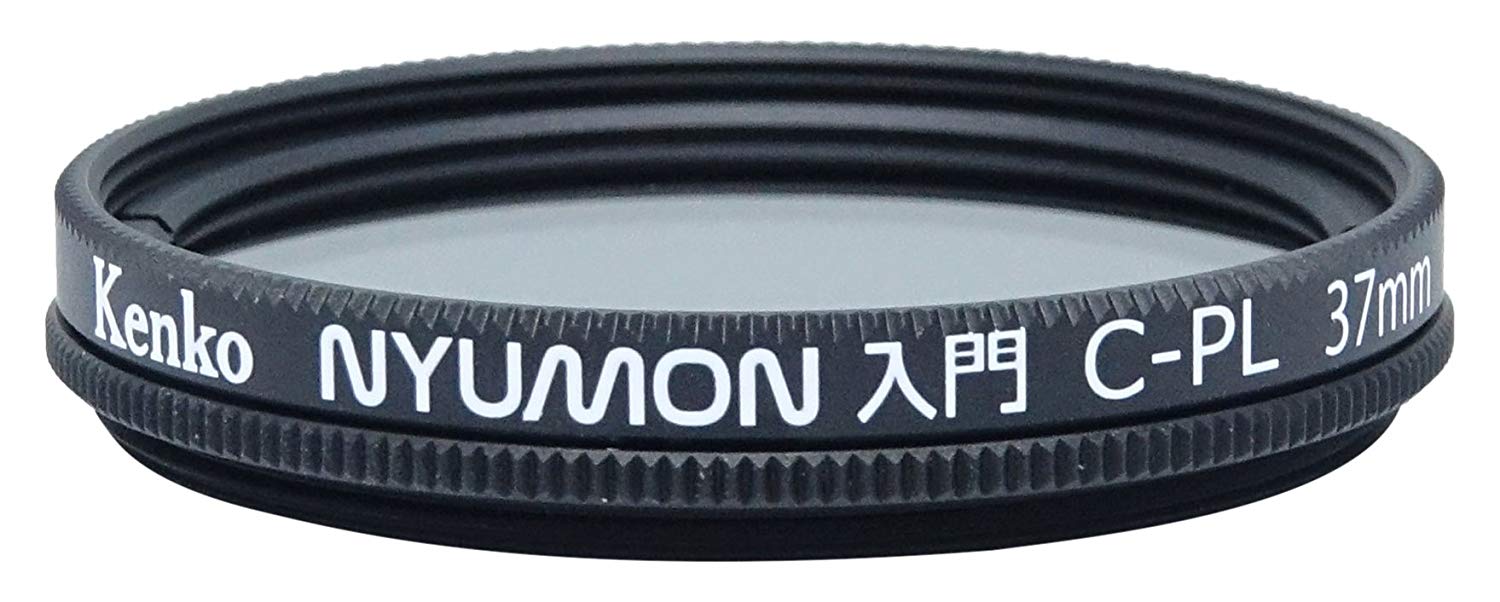
If you're like me and you shoot a lot of landscapes, a circular polarizing filter is a must-have.
Not only do they help minimize glare off non-metallic surfaces like water, but they also reduce atmospheric haze and boost contrast in the sky.
The result of all that is a landscape photo that's cleaner, crisper, and has more drama. What's not to like about that?!

Buying a lens filter is a lot like buying a lens - you get what you pay for.
But that doesn't mean that you have to spend an arm and a leg to get a great polarizer.
I've used a Kenko Nyumon Polarizing Filter for a while now, and it has performed beautifully.
Its optical-grade class is polished and coated to aid in resisting water and oil from your skin.

On top of that, these filters have a SLIM mounting ring, which minimizes vignetting when you're shooting with a wide-angle lens.
Kenko offers these filters in various sizes from 37mm to 82mm, and also offers models that fit Nikon, Canon, Sony, Fuji, and many other brands of lenses.
If you invest in one filter in 2021, make it a circular polarizer. It simply offers too many benefits not to have one in your bag!
Editor's Tip: Get Kenko’s latest updates and access to promos for discounted gear. Click here to sign up.
Learn More:
Syrp Genie II Linear

One of my New Year's resolutions for 2021 is to shoot more timelapse videos. To do that, I'll be using the Syrp Genie II Linear.
I haven't used this rig yet, but I've used its predecessor many times and to say that I've been impressed with it is an understatement.
Syrp really has made making timelapse videos so much easier thanks to the innovative features they've packed into their little motion control device.
And when I say little, I mean it - the Genie II Linear is every bit as small as the original Genie, so you can pop it in your camera bag and you'd never know it was there.
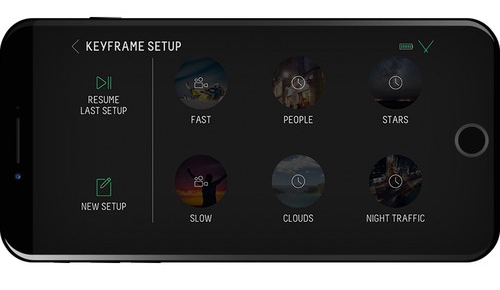
This little guy can attach to any slider on the market and can even work with cable cam systems up to 328' in length.
That means you can quickly and easily upgrade your timelapse setup to get beautiful timelapse videos and real-time videos as well.
On top of that, you can control the Genie II with your smartphone and tackle tasks like key-framing, shooting interviews, creating timelapses, and shooting B-roll as well. Syrp is working on future features that include live view and camera control for ramping exposure, among others.
It really doesn't get much easier than that to create a timelapse video!
Learn More:
The Vest Guy Colorado Vest

Even though I've only had my Colorado Vest from The Vest Guy for a couple of weeks, I'm already at the point of being so happy with it that I had to include it on this list.
Seriously - if you don't have a photography vest, you need one!
I never thought I would ditch my camera bag in favor of a photography vest, but now that I've experienced how much easier it is to carry gear on me instead of in a bag, I'll never go back.
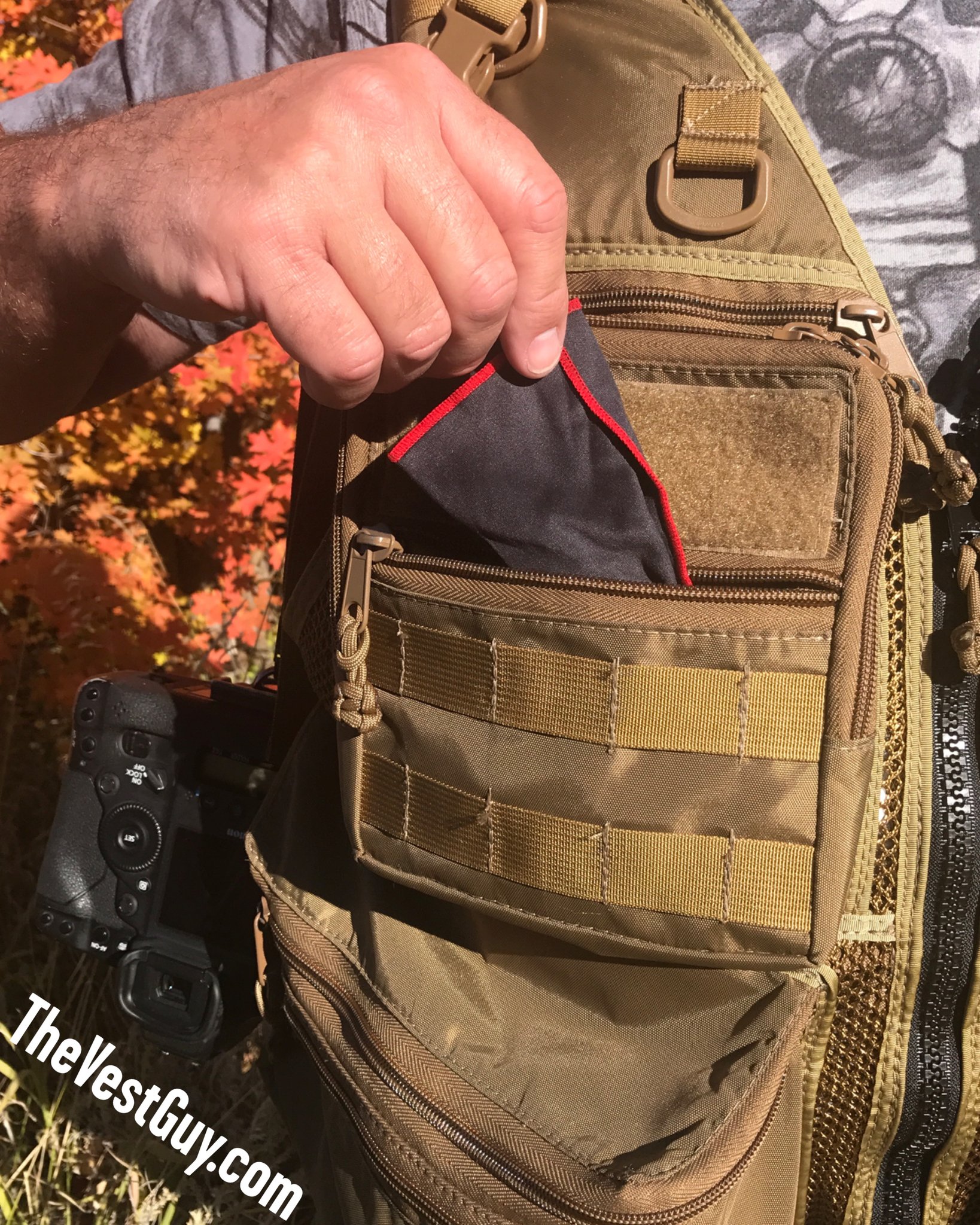
For starters, these vests are designed and made in the U.S., which as a veteran of the armed forces, I really appreciate.
The design of the vest makes shooting photos so much easier with large cargo pockets on the front where you can carry a couple of lenses up to 400mm in length.

The integrated camera strap is highly adjustable for a custom carrying experience, and keeps your camera right at your fingertips for quick shots.
There's even a scratch-proof pocket for filters as well as optional accessories like padded shoulders, an additional camera strap, a hydration pack, and custom name tags, just to name a few.
Why not make 2021 the year you step up your game, streamline your workflow, and shoot in greater comfort?! You can do that with a photography vest from The Vest Guy!
Learn More:
Luminar 3

As someone that's used Photoshop and Lightroom for years and years, I understand how difficult it is to switch to a new editor.
Recently, though, I made the move to Luminar 2018, and once the new Luminar 3 was released, I jumped on board with it. Talk about a great decision!
What sets Luminar apart from programs like Lightroom is that it's much, much easier to use.
There are a host of presets (called Looks) that you can apply to your images with just one click for quick editing, but you still have the option of making fine adjustments with a variety of slider controls.

Luminar 3 also has artificial intelligence-powered editing tools that make dozens of adjustments simultaneously to further speed up the editing process.
That includes AI tools for enhancing the sky as well as the Accent AI filter (shown above) that applies about a dozen changes to your image that improve the colors, detail, and tone of your image, among others.
With non-destructive editing, a new library for organizing and sorting your photos, customizable workspaces, precise adjustments without having to make selections, and a host of other innovative tools, Luminar isn't just powerful, but it's also easy to use and affordable!
Learn More:
Click Props Backdrops

I know not everyone is a portrait photographer, but if you are, you can step up your game in 2021 with a high-quality backdrop from Click Props.
I've known the Click Props team for years, and I've even spent time with them at their Las Vegas studio. I've seen these backdrops up close and personal, and they're gorgeous!
These backdrops are made of 550gsm vinyl, so not only are they super strong, but they're also easy to clean when your shoot is wrapped up.
You can use and abuse these things without worry that they'll be trashed - they're that durable!

The backdrops come with reinforced grommets along the top, which makes it easier to hang them and swap them out between shoots. You can even order your backdrop without grommets and set it up on a roller system if you prefer.
Either way, the backdrop will hang straight and clean, so you don't have to worry about folds or creases causing a distraction in the background.

There's a huge selection of backdrops (and floors) to choose from as well - more than 200 unique designs that will help you fulfill your creative vision.
When you create portraits, the background might not be the star of the shot, but the background certainly matters when it comes to the quality of the photo.
Boost the appeal of your portraits in the new year with a gorgeous backdrop!
Learn More:
SIRUI SR-Series Tripod

I got my hands on SIRUI's new SR-3004 tripod a couple of months back, and this thing is an absolute beast.
I've used SIRUI tripods for the better part of a decade, and the quality of craftsmanship of these things is what has kept me a loyal customer over the years.
My old tripod - the SIRUI W-2204 - is a great tripod. But I got the SR-3004 because it's a bigger, beefier tripod that can extend to 80 inches in height with the optional two-stage center column and can hold up to 55 pounds of gear.
And even though it's not advertised as being waterproof, as you can see in the image above, my trip to the beach involved a lot of water. So long as I rinse the tripod off and dry it before I head home, I've experienced no problems whatsoever from sea water or sand.

SIRUI has loaded this thing for bear with features as well.
That includes a flat top plate with 3/8" mounting screw for maximum stability, a removable top plate for quickly converting the tripod into a video tripod, a multi-function hook with built-in adjustment tool, and a 1/4" socket built into the spider for quick and easy attachment of accessories.
Add to that simple 1/2 twist leg lock mechanisms and three-position leg angles, and you have the makings of a tripod that's the ultimate in functionality and ease of use.
What a great gift to buy yourself in 2021!
Learn More:
We Recommend
Photokina 2018 Update: Sigma Announces 5 New Lenses
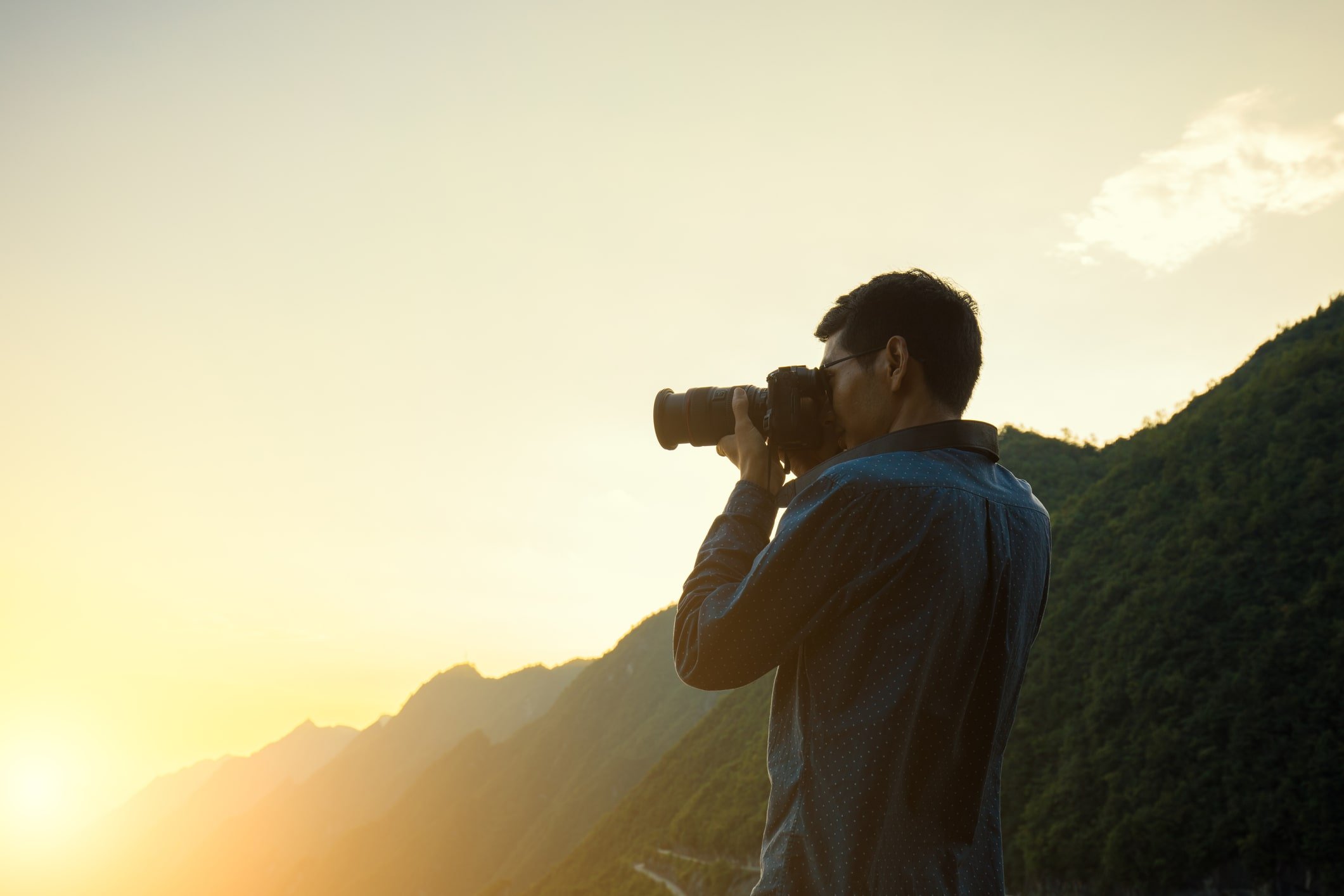 Image Credit: xijian via iStock
Image Credit: xijian via iStock
Photokina 2018 is rocking and rolling in Cologne, Germany, and camera and lens manufacturers certainly came to play this time.
That includes Sigma, which unveiled five - yes, FIVE - new lenses as part of their "Global Vision" series.
If you ask me, Sigma makes some of the best glass on the market today. That's a sentiment shared by many of my colleagues in the industry.
What makes that even more impressive is that it wasn't all that long ago that many photographers would never have considered putting a Sigma lens on their camera.
Here's the scoop on Sigma's incredible new line of lenses.
Editor's Tip: Becoming a better photographer means knowing how to use your gear. Learn how to read the markings on your lens.
Sigma 28mm f/1.4 DG HSM Art

I'm particularly excited about Sigma's new 28mm wide-angle option since I typically photograph landscapes.
This f/1.4 DG HSM Art lens offers water-repellent and oil-repellent coating on the front element, dust-proof and splash-proof weather-sealing, and reduced chromatic aberration and sagittal coma flare due to a new optical design.
The hypersonic motor is combined with an updated algorithm to offer high-speed autofocus that's extraordinarily accurate, too.
Sigma has designed versions of this lens for Sigma, Canon, Nikon, and Sony E mount cameras.
Sigma 40mm f/1.4 DG HSM Art
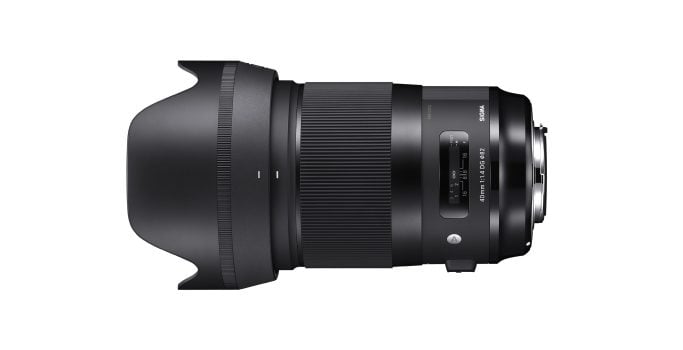
Next up is a 40mm f/1.4 lens that was developed specifically for low-light photography.
This is the first lens Sigma has developed to offer a cinematic angle of view and performance.
With three F low dispersion glass elements and three special low dispersion elements, the lens has minimal chromatic aberration and magnification chromatic aberration.
The lens produces less than one percent distortion and virtually non-existent sagittal coma flare, offering shootings gorgeously clean and sharp results, even at maximum aperture.
The lens is compatible with 8K resolution and offers gorgeous bokeh as well.
Sigma has designed variants of this lens for Sigma, Canon, Nikon, and Sony E mount cameras.
Learn More:
Sigma 56mm f/1.4 DC DN Contemporary
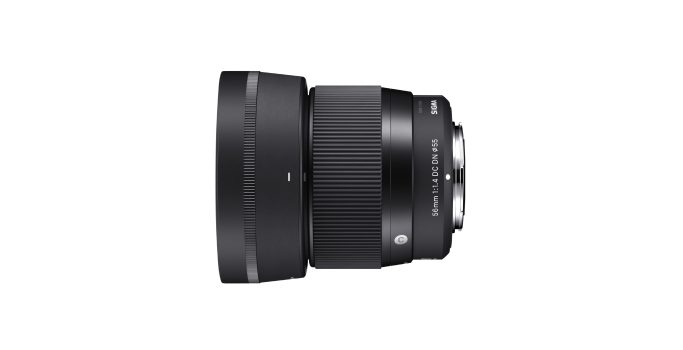
Designed specifically for Micro Four Thirds and Sony E mount cameras, the Sigma 56mm f/1.4 lens offers an effective focal length that provides a telephoto view.
The compact and lightweight design of this Contemporary lens will be appreciated by any photographer that wants excellent performance without having to carry a big, bulky lens.
The image quality is, unsurprisingly, top of the line, with particularly beautiful bokeh that will act as the perfect backdrop for everything from portraits to wildlife photography.
This lens is also designed for video shooting, with a quiet autofocus that operates smoothly and won't cause distracting noise in the background of your videos.
Editor's Tip: Not sure what lens to add to your bag next? Learn why every photographer needs a 50mm lens.
Sigma 70-200mm f/2.8 DG OS HSM Sports
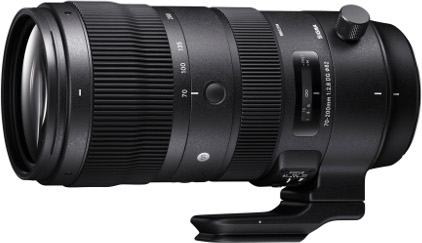
Far and away, the biggest news from Sigma this year at Photokina was the announcement of the much-anticipated 70-200mm f/2.8 DG OS HSM Sports lens shown above.
This flagship lens is aimed squarely at professional photographers that need a large aperture telephoto zoom lens in their camera bag.
Sigma managed to pack this lens full of high-end features while keeping the lens feather light (thanks to its magnesium body).
It's dust-proof, splash-proof, and like the 28mm lens discussed earlier, it also has a water-repellent and oil-repellent coating on the front element.
The lens incorporates Sigma's Intelligent OS with an acceleration sensor as well as Sigma's latest algorithm capable of panning in all directions.
With 10 low dispersion glass elements, this lens is capable of extraordinarily high resolution images from corner to corner.
Available for Canon, Nikon, and Sigma camera systems, this lens is ideal for sports photography and portraiture.
Sigma 60-600mm f/4.5-6.3 DG OS HSM Sports
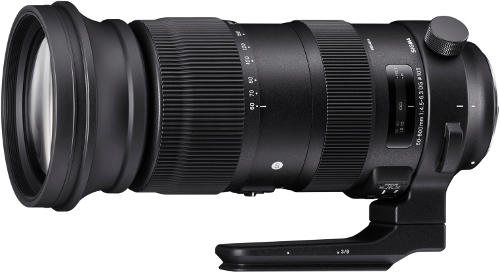
If you're looking for a lens with incredible reach, Sigma's 60-600mm sports lens might be the one for you.
This is the first lens in the world with 10x optical zoom that reaches 600mm. It has a whopping 25 elements in 19 groups that give it superb image quality from 60mm to 600mm and all points between.
The intelligent OS offers excellent image stabilization, giving you four extra stops.
Likewise, the optical design guarantees maximum correction of chromatic aberrations.
But this lens isn't just for telephoto work. Instead, at 200mm, it can be used for telephoto macro photography thanks to its 1:3.3 magnification ratio.
Learn More:
Final Thoughts
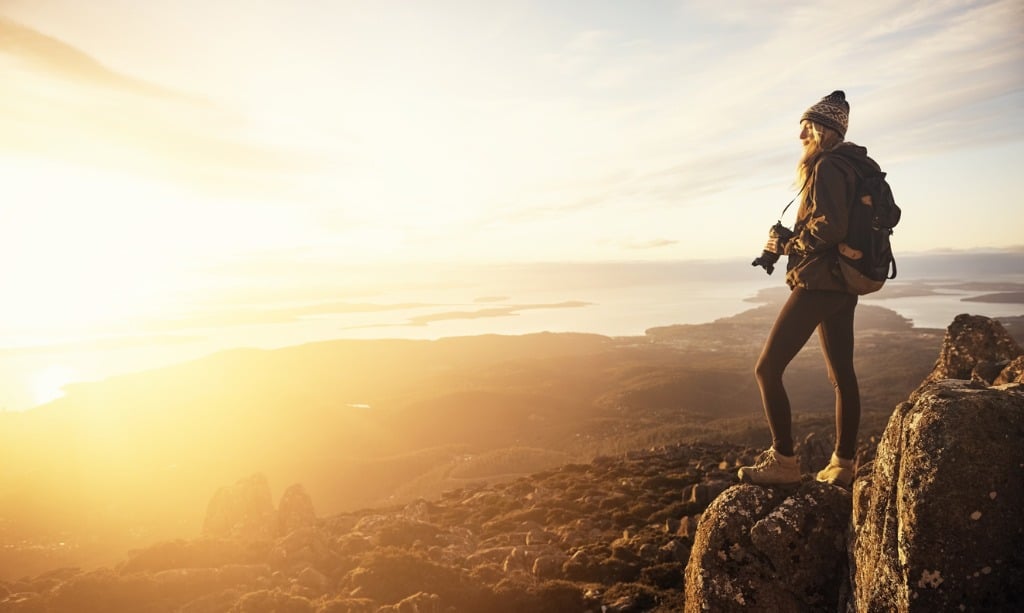 Image Credit: pixdeluxe via iStock
Image Credit: pixdeluxe via iStock
Whether you're in the market for a wide-angle, standard, or telephoto lens, this new Sigma line of lenses has you covered and covered well.
I mean, seriously - a 60-600mm lens?? Crazy!
Better still, Sigma traditionally has excellent lenses that are offered at competitive prices, so once the pricing details on these lenses come out, you likely won't have to prepare to have a heart attack.
That being said, buying a new lens is definitely harder on your pocketbook than buying a pre-owned lens, so if you're strapped for cash, I highly recommend looking for a quality, pre-owned lens to save some money.
Either way, an upgraded lens is going to have a bigger impact on the quality of your photos than a new camera, so whatever your budget is, put it toward a better lens!
Via Sigma
We Recommend
Problems Photographers Face
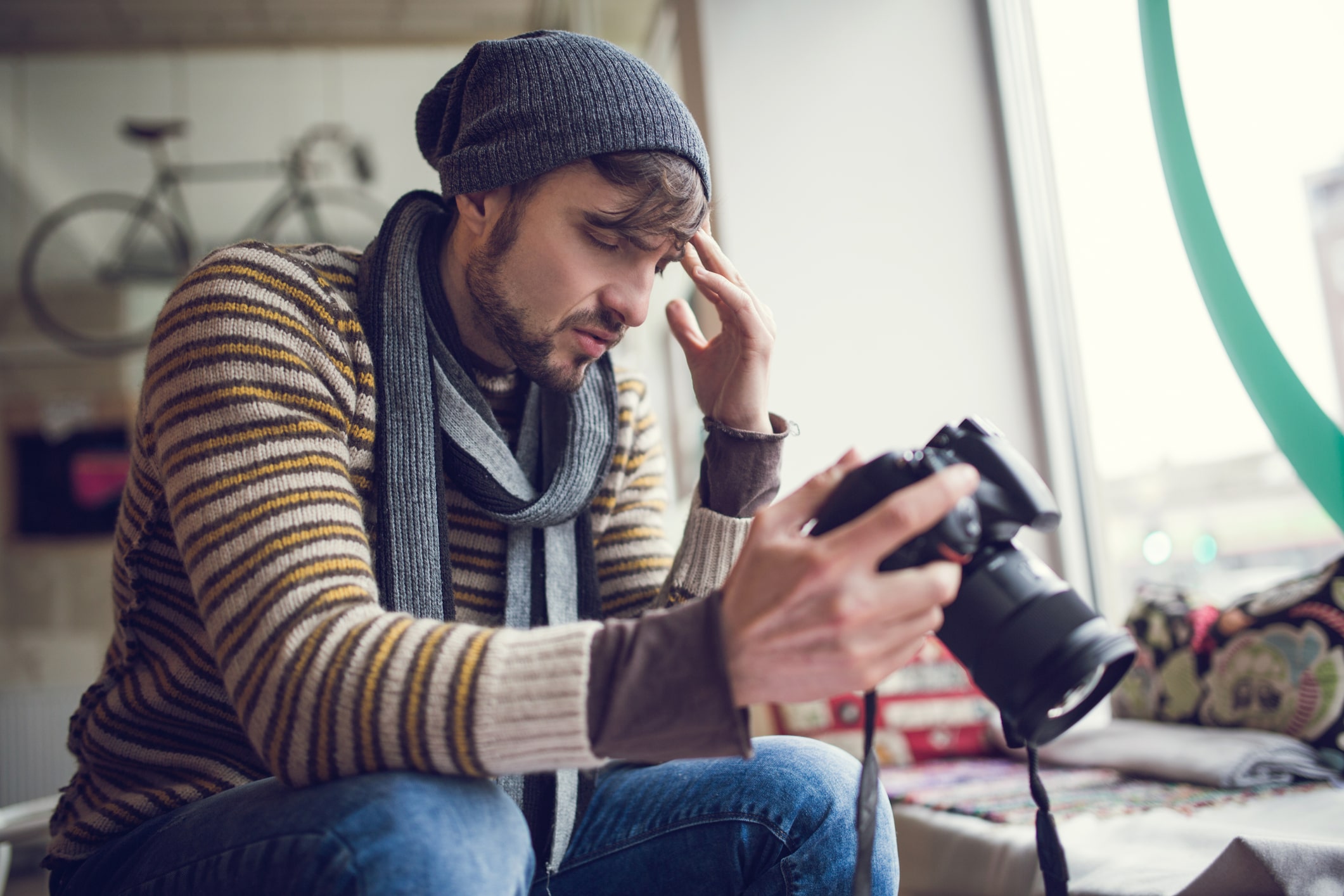 Image Credit: BraunS via iStock
Image Credit: BraunS via iStock
There's no doubt about it - photography is a fun and rewarding hobby.
But it isn't all sunshine and roses all the time...
Us photographers have lots of problems to overcome, from lusting after new gear to having way too many photos to having an impossibly unorganized Lightroom library, there's some trials and tribulations that can set us back.
But not anymore!
Since I'm such a genius (wink, wink), I've solved all of photography's greatest problems.
Okay, well, maybe not all of them, but I've come up with solutions to five really big ones...
Photography Problem #1: Too Many Prints
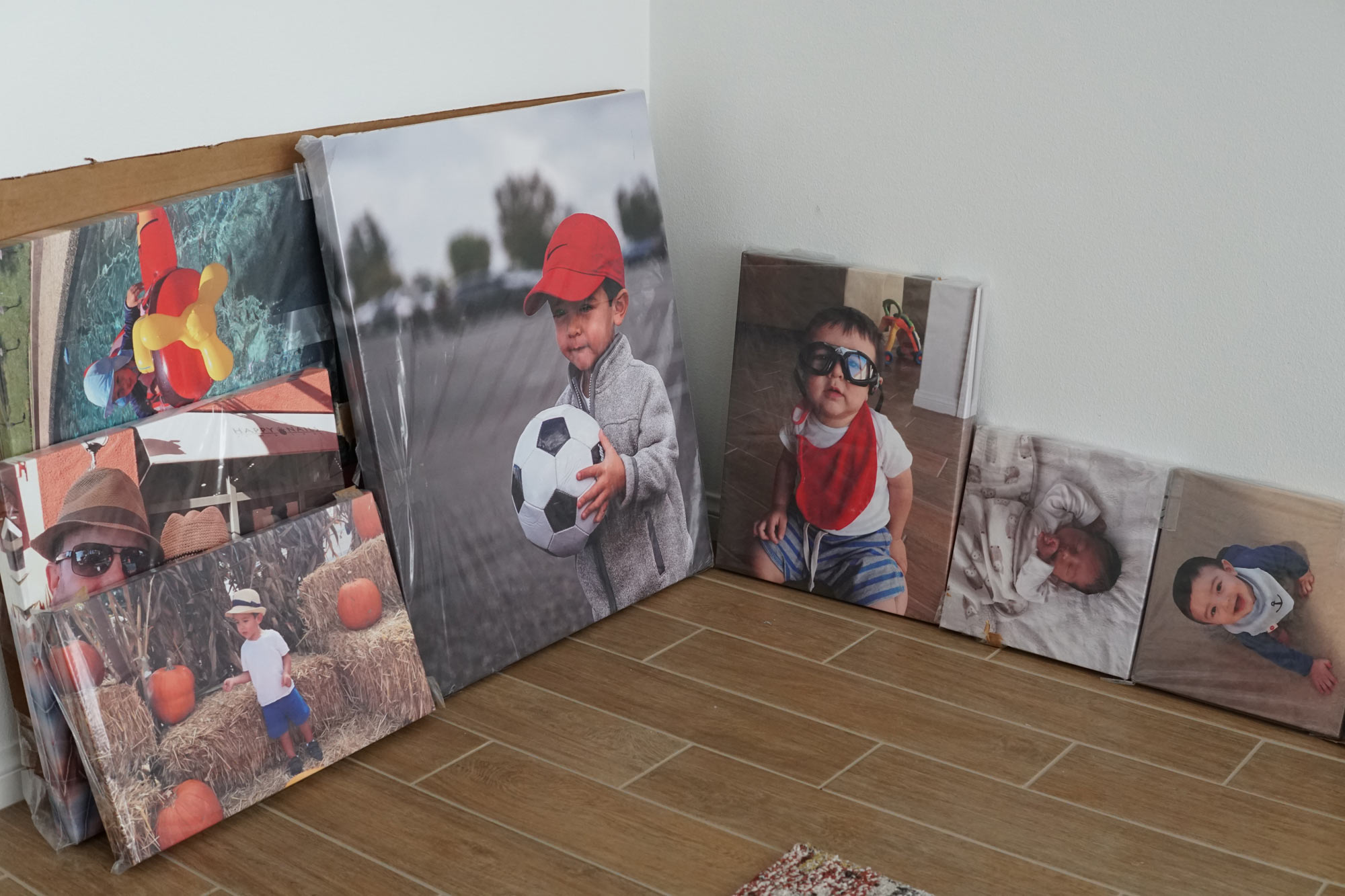
As photographers, it's natural to want to turn our best work into beautiful prints to hang on the wall.
And since I became a father, that's only become a bigger problem because my house is now overrun with canvas prints of my little guy.
My son is only three-and-a-half years old, though, so the fact that I have dozens and dozens of prints of him already in my house means I don't have room left to hang photos that document the rest of his life, or even the rest of his childhood!
Others have suggested that I simply take older prints down and replace them with new ones. Though that frees up wall space, it's not like I have an unlimited amount of storage space for my old prints (I have my wife's giant shoe collection to thank for that...).
So, that got me thinking, and I have to say that my idea for solving this problem is brilliant (college is finally paying off! LOL).

My master plan is simple - whenever I order a new print, I use it to replace an old one on the wall.
THEN, I package up the old print and send it to a friend or family member as a gift.
So, really, I've actually solved three different problems with one genius idea...
I've figured out how to save space on my walls, I've figured out how to save storage space, and with the holidays coming up in a few months, I've also figured out how to give beautiful, meaningful gifts to people I love. Virtual high-five!
Now, this isn't regifting as far as I'm concerned because I only get the best canvas prints.
Over the last ten years, I've tested tons of different prints from tons of different companies, and no one does it better than CanvasHQ.
These things are beautifully made with high-quality materials, they're backed with a 100 percent satisfaction guarantee, and they ship quickly, so it's really the best of all worlds!
If you haven't tried them out, you need to! Order a small print and you'll see for yourself why so many professionals (myself included, obviously...) give them such high marks.
Seriously...check out CanvasHQ out here.
Photography Problem #2: Gear Acquisition Syndrome (GAS)
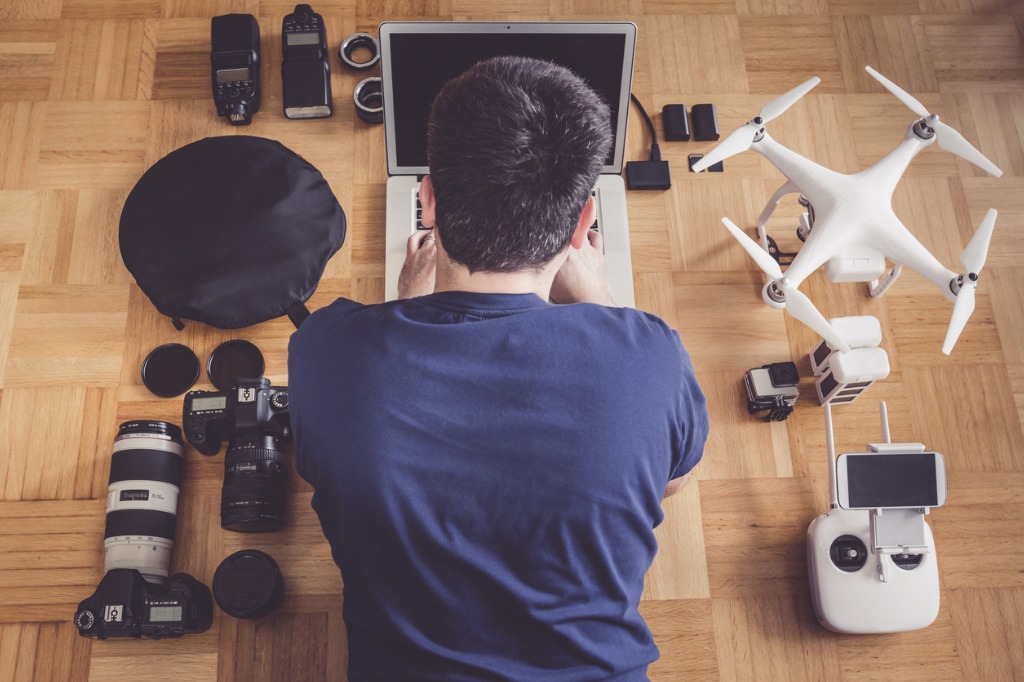 Image Credit: nullplus via iStock
Image Credit: nullplus via iStock
I'll just come right out and say it - any photographer that tells you that they don't have GAS is a giant liar...
We're constantly tempted to get newer gear because camera manufacturers are putting out more and more awesome stuff each year.
Here's a perfect example...
I shoot with a Nikon D850, which is an excellent camera and one of the best that Nikon has ever made, in my opinion.
But of course Nikon had to get us all hot and heavy with the recent introduction of their gorgeous and feature-rich Z6 and Z7 full frame mirrorless cameras.
Do I want one? HELL YES.
Heck, even the Canon EOS R looks fantastic, and that's coming from a Nikon guy through and through!
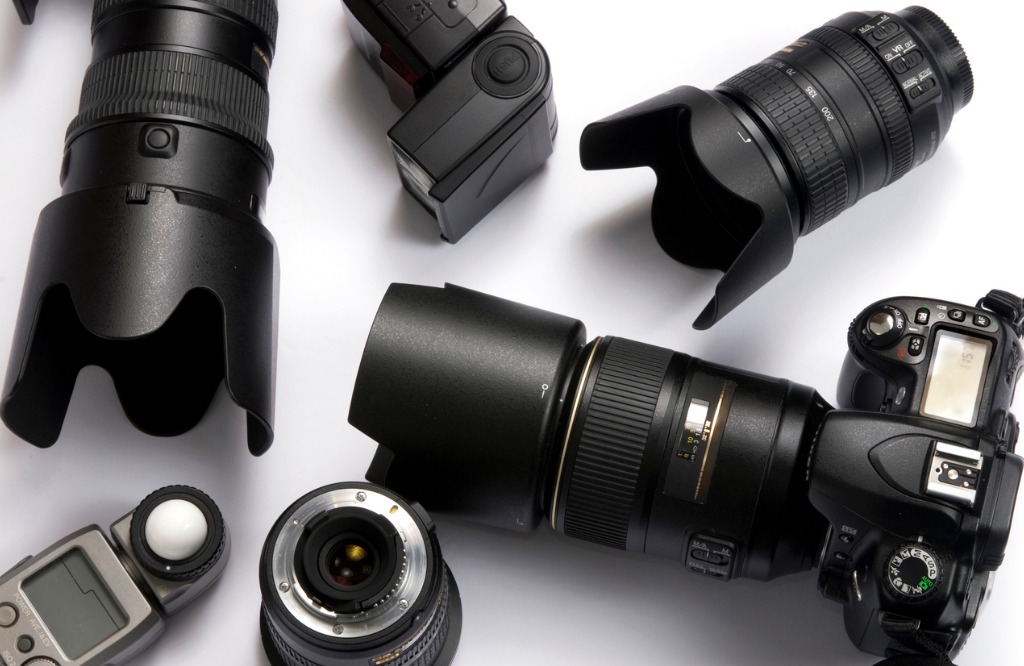 Image Credit: perkmeup via iStock
Image Credit: perkmeup via iStock
And it's not just cameras that we lust after, is it?
No...if you take a little time to reflect, you'll find that deep down you have an affinity for new lenses, too.
That new f/1.2 prime you see is something you have to have, right? And that 24-70mm zoom with image stabilization? OH YES.
Now, you could take the solution from my first example and just give away your current cameras and lenses, but that would be a little stupid, don't you think?
I mean, I love my family, but I'm not going to give them free swag just because I can't control myself when it comes to new gear.
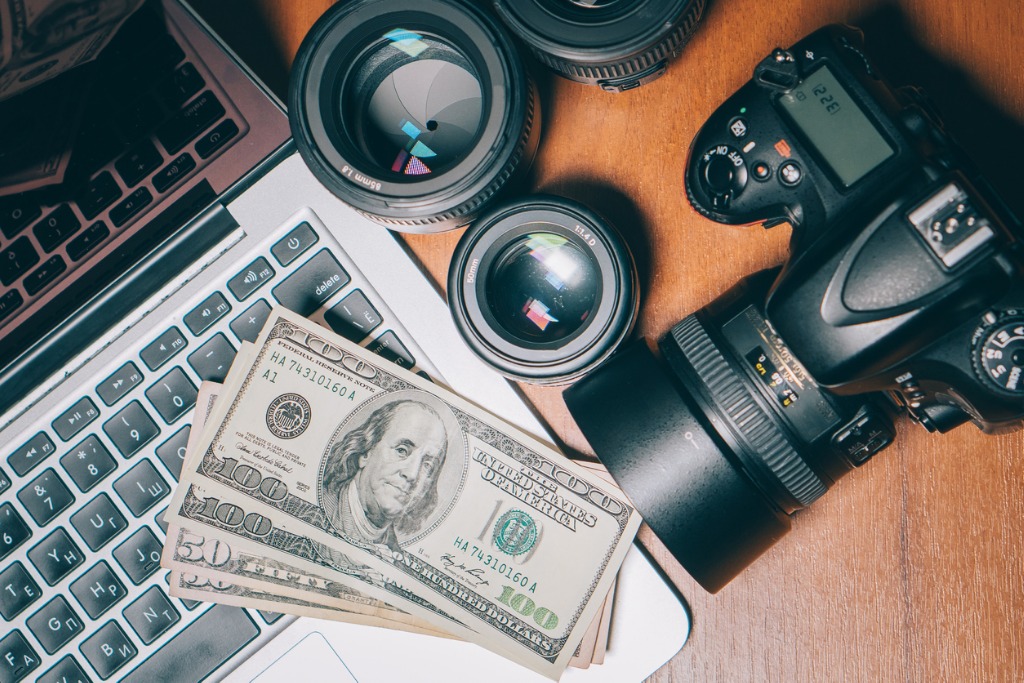 Image Credit: ielanum via iStock
Image Credit: ielanum via iStock
Instead, the ideal solution is to make a little cash off your old stuff.
If you're sick of your old camera, trade that sucker in and use the proceeds to fund a new one. Or even better, head over to a place like MPB and buy a pre-owned camera to spare yourself the embarrassment of having to squeeze every last penny out of your debit card.
Don't let your old camera go to waste. Trade it in so you can trade up to something new!
Likewise, if your GAS has given you way too many lenses, sell the ones you don't use all that often to clear out the clutter.
I've listed a bunch of lenses for sale over at Lensfinder, and it's been a quick, easy, and simple process to do so. Heck, I've bought a couple of used lenses over there, too!
I guess the point here is that if you can't stop GAS, you might as well make it cost a little less by buying used!
Find the lens your camera's always dreamed of.
Photography Problem #3: You Get the "Are You Kidding Me?" Look When You Want to Take a Photo
We're photographers, so of course we want to take a lot of photos.
Unfortunately, that means dealing with the "Are you kidding me?" look from our significant others from time to time.
You know, this look:
What am I talking about?
Imagine you're driving along during Golden Hour and you're having a great conversation with your significant other.
Amidst this deep and meaningful conversation, you see it out of the driver's side window - the beginnings of an epic sunset.
You keep driving, trying desperately to maintain attention on the road (and on what your significant other is saying), but you find yourself mesmerized.
Before you know it, you're in an internal deathmatch, trying to decide if you fake the need for a potty break so you can then say "Oh hey, while we're stopped I should take a photo..." or if you're just going to go for it, pull over, set up your gear, and face the wrath of a displeased loved one later on.
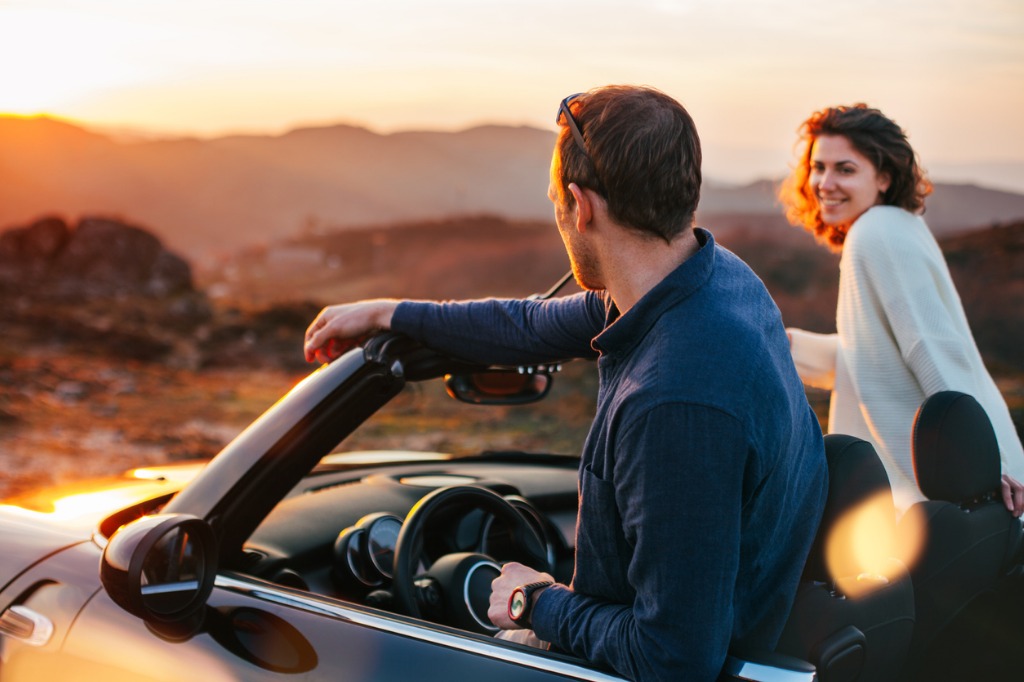 Image Credit: littlehenrabi via iStock
Image Credit: littlehenrabi via iStock
No matter which approach you take, the outcome won't be good.
You'll get "the look," your significant other will feel like photography is more important again, and you'll be sleeping on the couch.
That is, unless you make your beautiful sunset photo opportunity about them.
Sure, it's sneaky, but hey, if you tell your loved one that the perfect sunset you're sharing in the car would make an even more perfect background for a photo of them, you can kill two birds with one stone!
You can get that shot of the sunset you want and avoid a big fight about why you love photography more than your loved one. Not bad, right?
Photography Problem #4: Pack-Ratting Photos
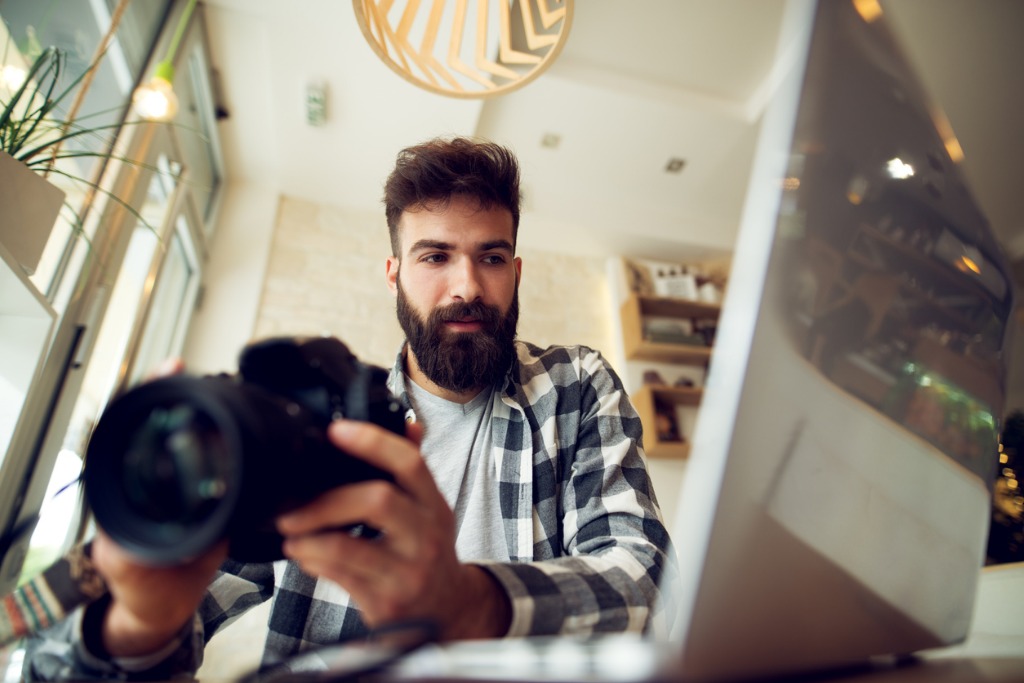 Image Credit: dusanpetkovic via iStock
Image Credit: dusanpetkovic via iStock
In the old days, photographer packed away rolls and rolls of film, slides, and prints.
Today, photographers like me come home from a great shoot, download about 9 billion photos into Lightroom, and walk away.
And don't act like you don't know what I'm talking about! LOL.
Who has the time to sit and catalog and keyword all those photos? I know I don't...
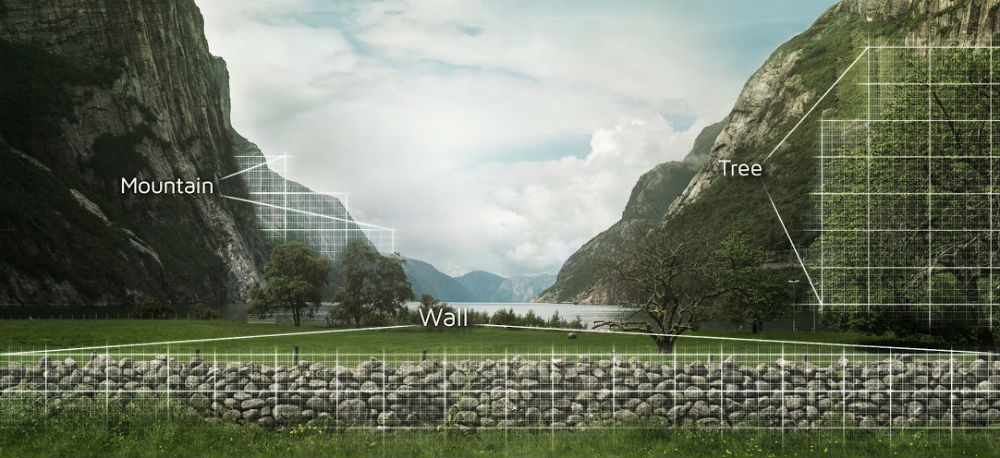
The solution to this problem is easier than you think.
Just recently I came across a program called Excire Search Pro that does some absolutely mind-blowing things with your Lightroom catalog.
A group of doctors, engineers, and other super smart folks over in Germany created a program that can "read" your photos and identify common features like "mountain," "motorcycle," and so forth.
Then, the program organizes all those images you've downloaded by keyword, that way you can search your library for photos that match specific criteria.
That means that you don't have to sit there for days on end keywording your images - Excire Search Pro does it for you!
And here's the exciting part - I see tons of software come across my desk. Some is awful, some is so-so, and some is outstanding.
Excire Search Pro isn't 100 percent awesome yet (it's damn close, though), but despite that, it's already in the outstanding category!
Clean up your act in Lightroom with Excire Search Pro.
Photography Problem #5: Carrying Too Much Gear
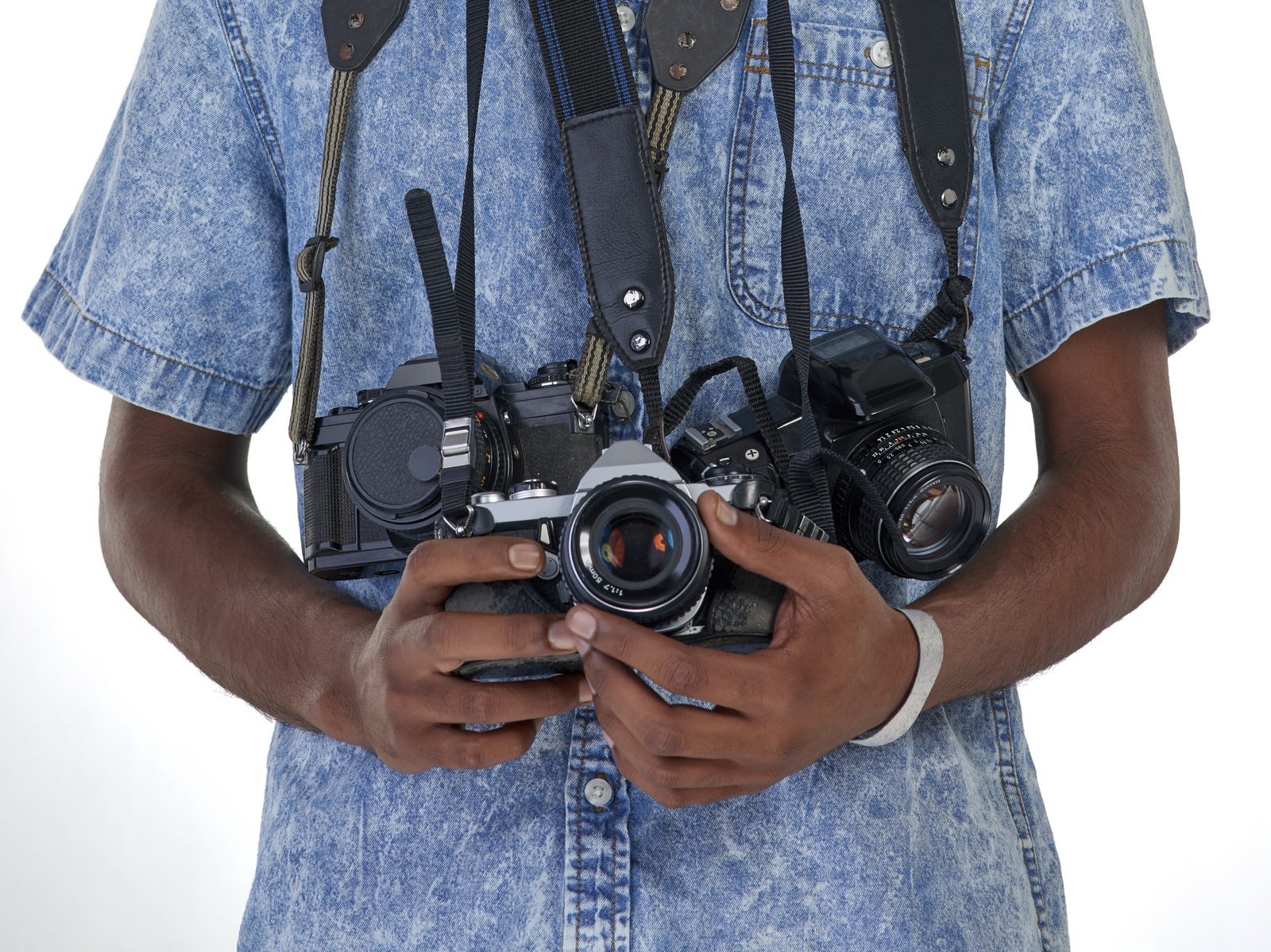
Not only are photographers famous for acquiring too much gear, but we're also well known for carrying too much gear as well.
I mean, even though you have a 24mm prime, a 35mm prime, a 24-70mm zoom, an 85mm prime, a 100mm macro, and several other lenses, you might as well pack the 50mm prime too, right?!
All that gear means a couple of things. First, you're weighed down by a crap ton of gear that you don't need, and second, your hands are constantly full with a different camera body, lens, and so forth.
And I know what you're thinking - Alex, that's what camera straps are for!
But not all camera straps are made alike. In fact, most of them are trash.
Even when I manage to shoot lean and mean with just one camera body and one (or maybe two) lenses, it's still important to have a strap that's comfortable and functional, too.
I have two go-to straps for those occasions that couldn't be more opposite.
On the one hand, I love my Peak Design strap because it's rugged and priced well.
On the other hand, I also love my new Holdfast MoneyMaker Solo.
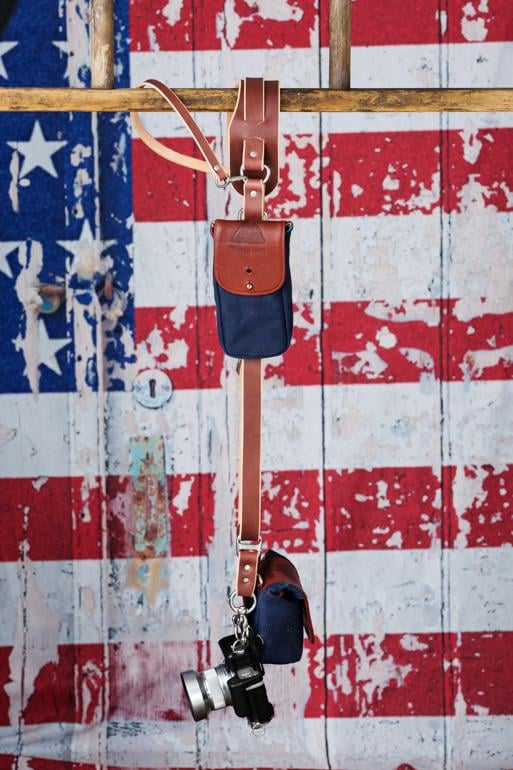
This thing was introduced by my friends over at Holdfast just a couple of months ago, and I was so impressed when they told me about it that I immediately ordered one (it was a GAS moment, okay?!) in American Bison Leather.
Talk about a great purchase...
The Holdfast MoneyMaker Solo is impeccably designed, perfectly functional, and incredibly comfortable. I look damn good in it too.
In all seriousness, though, it's tough to take great photos when all you're doing is swapping out cameras and lenses and have your hands full with the gear your taking on and off.
This little strap solves that problem because it forces you to streamline the way you work.
You get one camera and lens, and with an added lens pouch, you can bring along a second lens for the ride. In many cases, that's all the gear you need to take great photos!
Feel the freedom of carrying your gear in comfort and style. Check out Holdfast now!
And with that, you have the solutions to five common photography problems!
We Recommend
Rookie Photography Mistakes You Need to Avoid
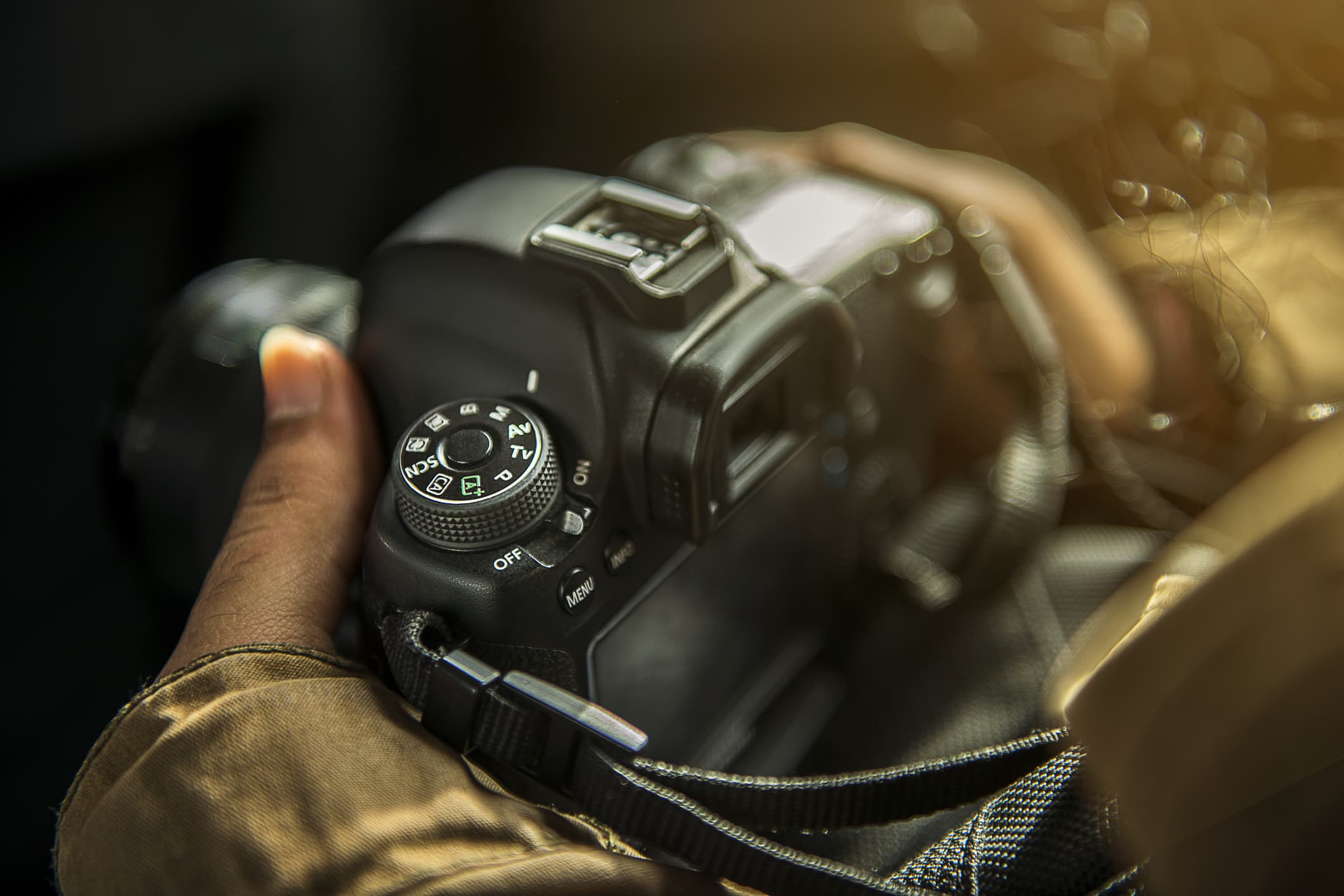
Let's face it...
When you're just learning how to be a photographer, there's a lot of mistakes that can derail you.
Heck, even after years and years behind the lens, you can still make tons of mistakes! The process of learning never ends.
However, with a few tips, you can get a head's up on some of the most common rookie photography mistakes that you need to avoid.
Here's a short list to get you started.
Mistake #1: You Rush Through Your Shots
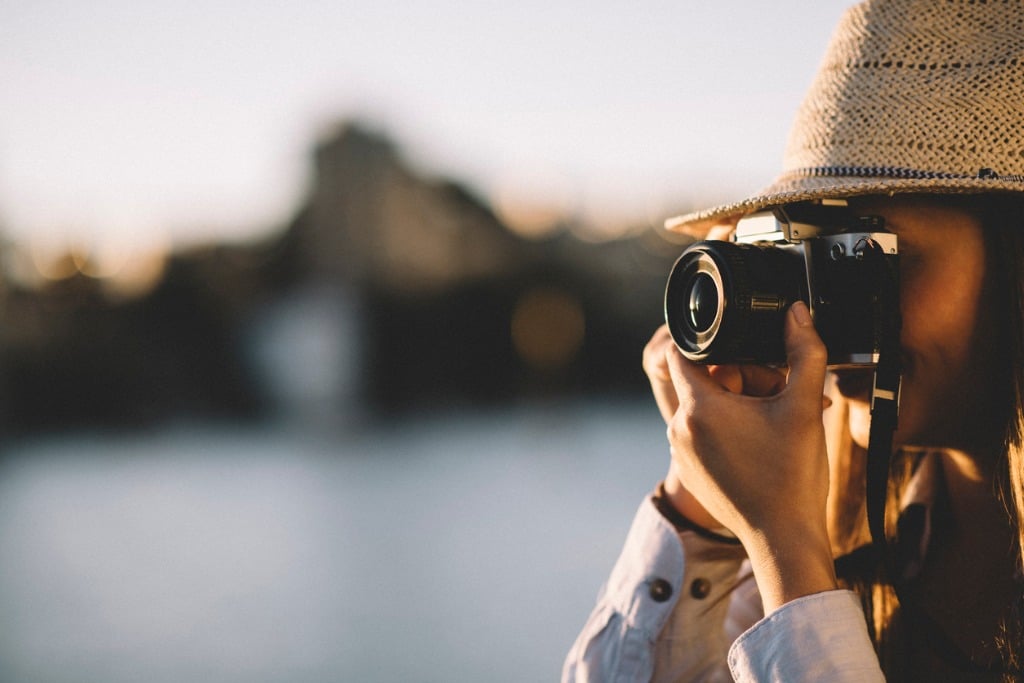
I remember a long, long time ago, I was taking photos of a sunset.
There were spectacular colors in the sky and beautiful cloud formations that made it a sight to see.
So, I rushed through as many shots as I could so I could capture that brief moment.
The problem is that because I rushed my shots, I got 30 or so really bad photos and none that were worthy of showing the world.
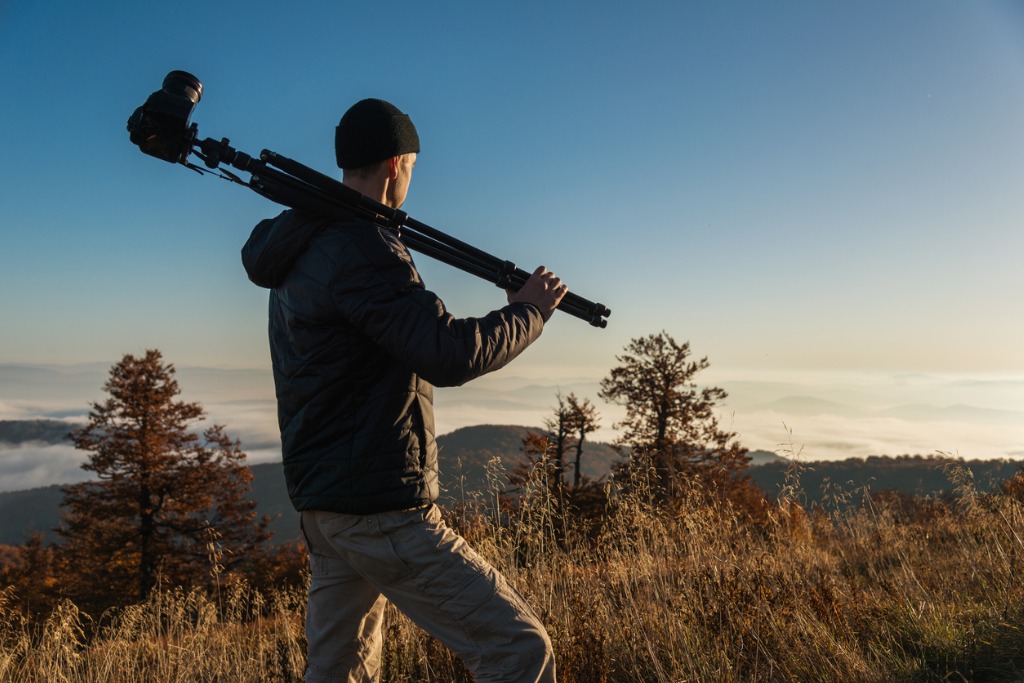
Whether it's not quite getting the image focused, having a crooked horizon, cutting off a portrait subject's head, or some other dumb mistake, rushing through your shots won't do you any favors.
Instead, if you force yourself to take an extra 10 seconds per photo to double-check your camera settings, composition, framing, and so forth, you'll find that you have better quality photos.
Editor's Tip: Using a tripod will help you slow things down and help you get sharper photos to boot.
Mistake #2: You Buy Brand New Gear
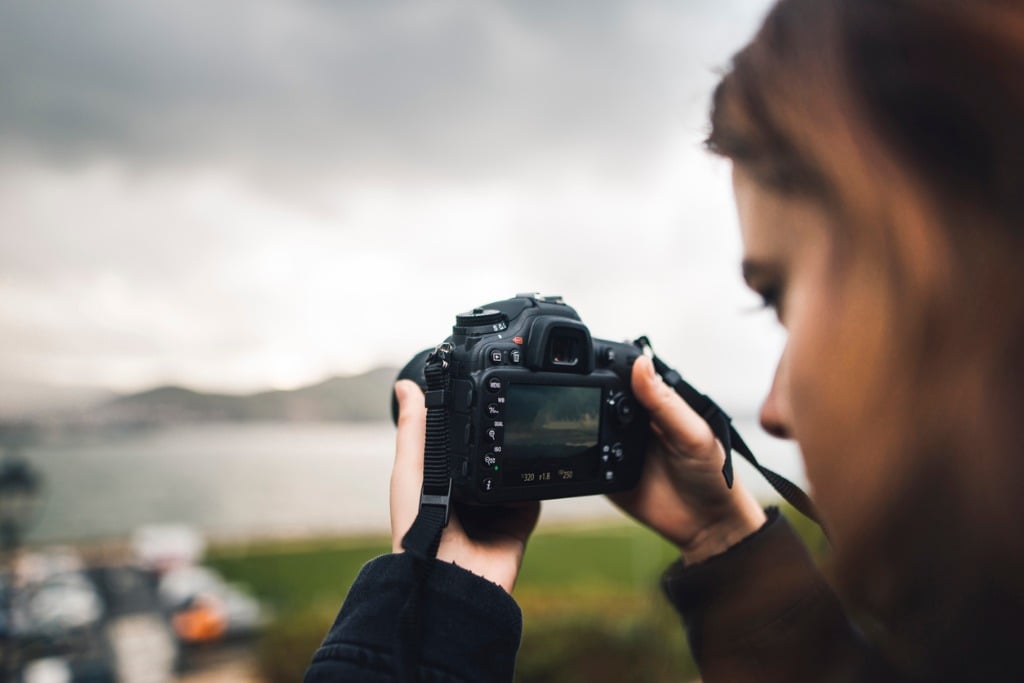
I understand the desire to have brand new, fancy gear. After all, I bought a Nikon D850 right off the shelf.
However, when you're starting out, you can find smokin' deals on pre-owned photography gear, which saves you money in the short-term, but also helps you fill out your kit as well.
A lot of new photographers mistakenly believe that it will be most helpful to get a nice, new camera, but that's just not the case.
It's the lens that makes the most difference - you'll get better results with an old camera and an upgraded lens than you will with a new camera and an old lens.
But even as important as the lenses you use are to the quality of your photos, you still don't have to buy brand new lenses.
Instead, you can search for high-quality, pre-owned lenses on sites like Lensfinder.
Lensfinder is a marketplace for photographers to list their used gear for sale so people like you can snatch it up for a great deal.
It's a comprehensive platform, too.
You can contact sellers and communicate any questions or concerns you have.
You can also rate sellers after the fact, that way other buyers know who they're dealing with.
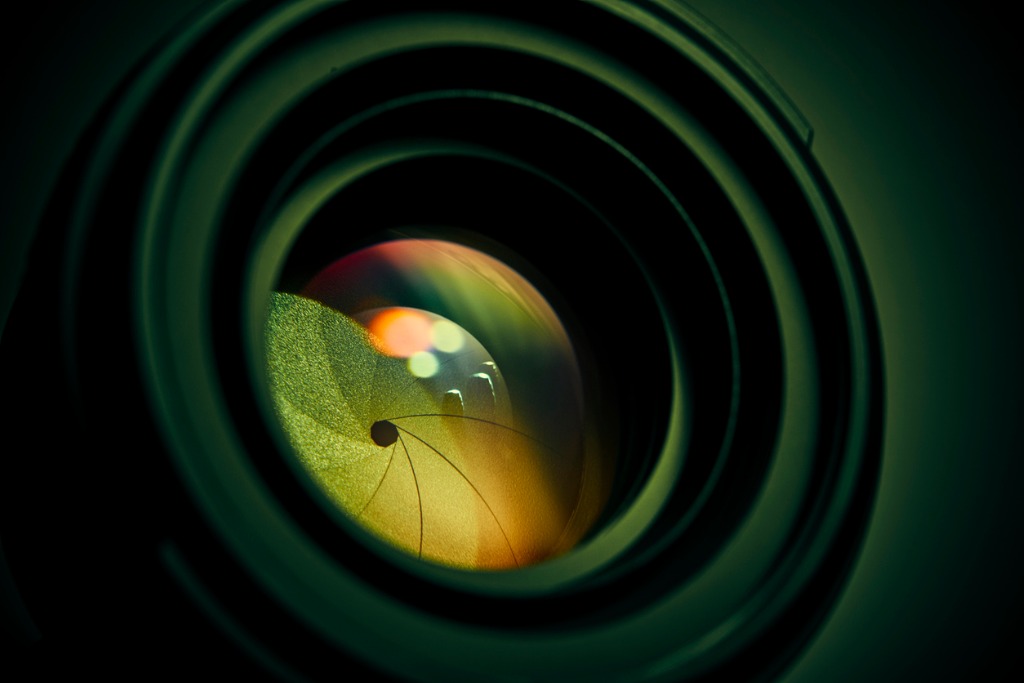
Lensfinder has fraud protections in place as well, so you can rest assured that the transaction is safe.
And with payment right there in Lensfinder via PayPal, you don't have to worry about your sensitive banking data finding its way into the wrong hands.
They've got a great selection of all kinds of lenses, and since they're pre-owned, you might be able to snag a couple of lenses for the price of one new one!
Learn More:
Mistake #3: Not Taking the Time to Learn How to Use Your Camera
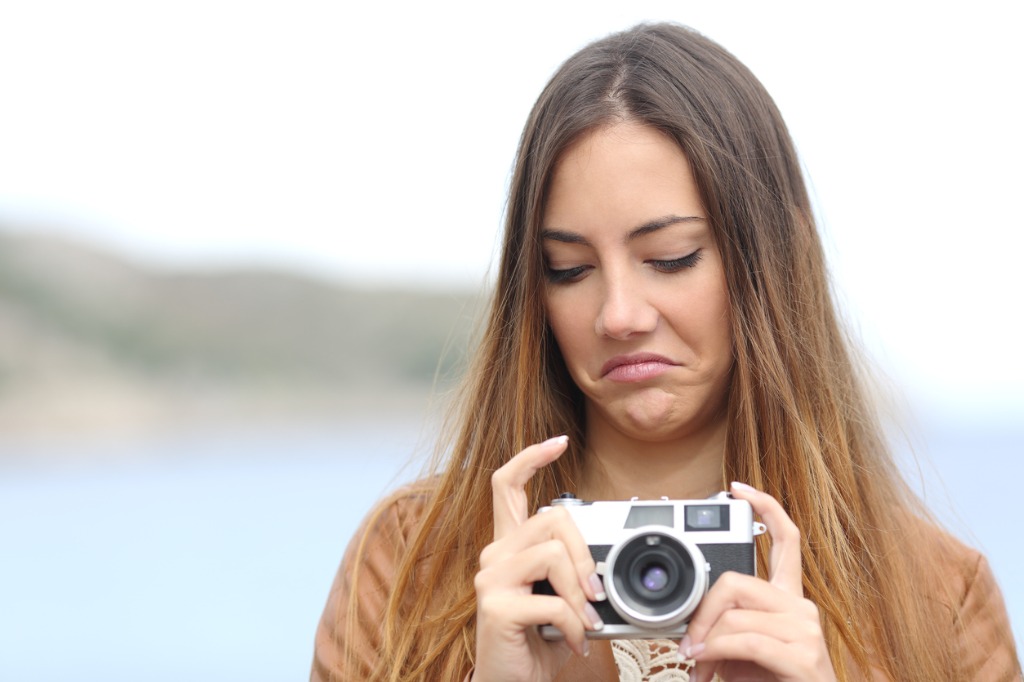
I will be the first to say that reading an owner's manual is zero fun.
But it's a necessary evil if you want to take better photos.
That's particularly true these days, as cameras - even entry-level models - have an incredible array of features that can help you capture improved shots.
In particular, learn how to:
- Select a focus point
- Adjust the white balance
- Use aperture priority, shutter priority, and program modes
- Change manual exposure settings for aperture, shutter speed, and ISO
- Bracket exposures
- Use and read a histogram
And that just scratches the surface...
Editor's Tip: If you're overwhelmed by what you read in the owner's manual, hop on YouTube and find a tutorial video that explains the topics you're struggling with.
Final Thoughts
There's hundreds more beginner photography tips that can help you take control of your photography and get better results, but these three tips are certainly a good place to start.
Ultimately, it's all about taking the time to learn your craft, getting the right gear for the type of photography you like to do, and committing yourself to practicing a lot.
If you can do that, improved photos will be yours to have!
For more insights into beginner photography mistakes and how you can fix them, check out the video above by Sawyer Hartman.
We Recommend
Rumor: Canon’s New Cameras and Lenses Might Come With Fingerprint ID

By now, most of you reading this probably have a smartphone with fingerprint ID capabilities.
And while that technology has become virtually a standard feature for smartphones, it's not something that's made its way into the realm of DSLRs, mirrorless cameras, and lenses.
But that might soon change...
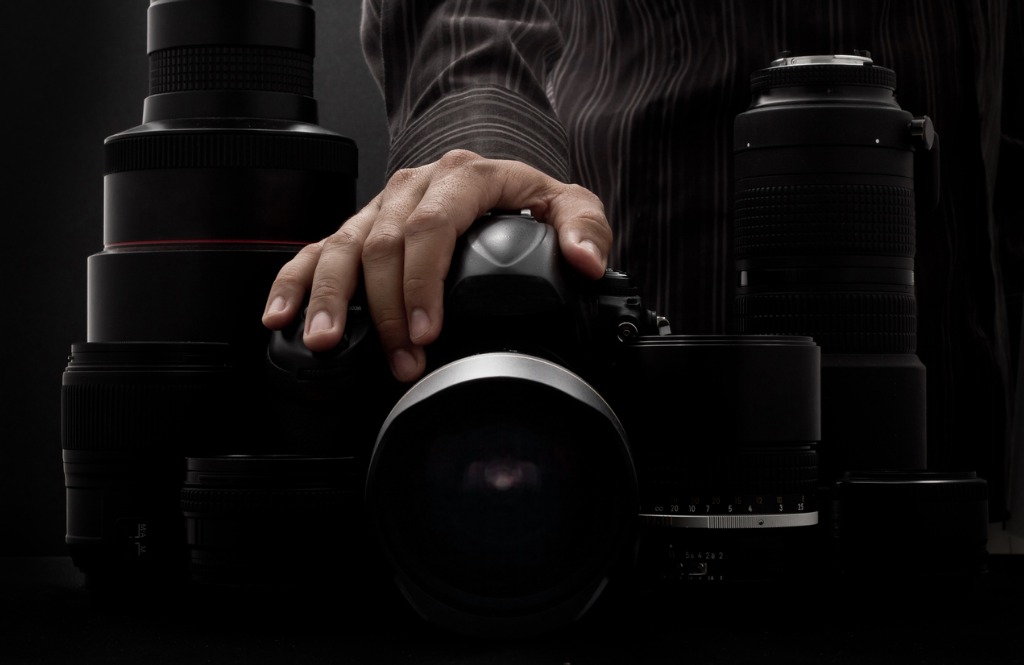
Canon is rumored to be in the development stage for a fingerprint ID system for its future cameras and lenses.
The rumor, first reported by Canon Rumors, is based on a recently published patent by Canon that describes an "electronic apparatus having finger authenticating function."
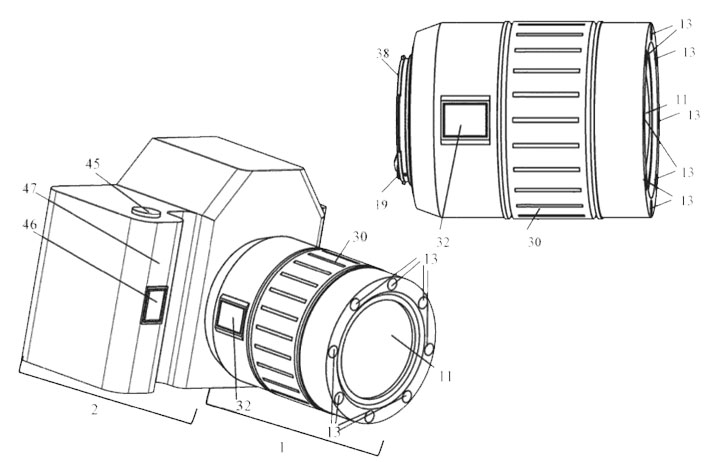
Not only could this provide enhanced security for photography gear, but it could also be a theft deterrent. After all, there's no point in stealing gear you can't use, right?
In the graphic above, you can see where the fingerprint ID scanners would be placed, at locations "46" and "32."
Editor's Tip: Start saving up for a new fingerprint ID Canon lens by selling your old lenses. It's fast, easy, and secure. Start selling today.
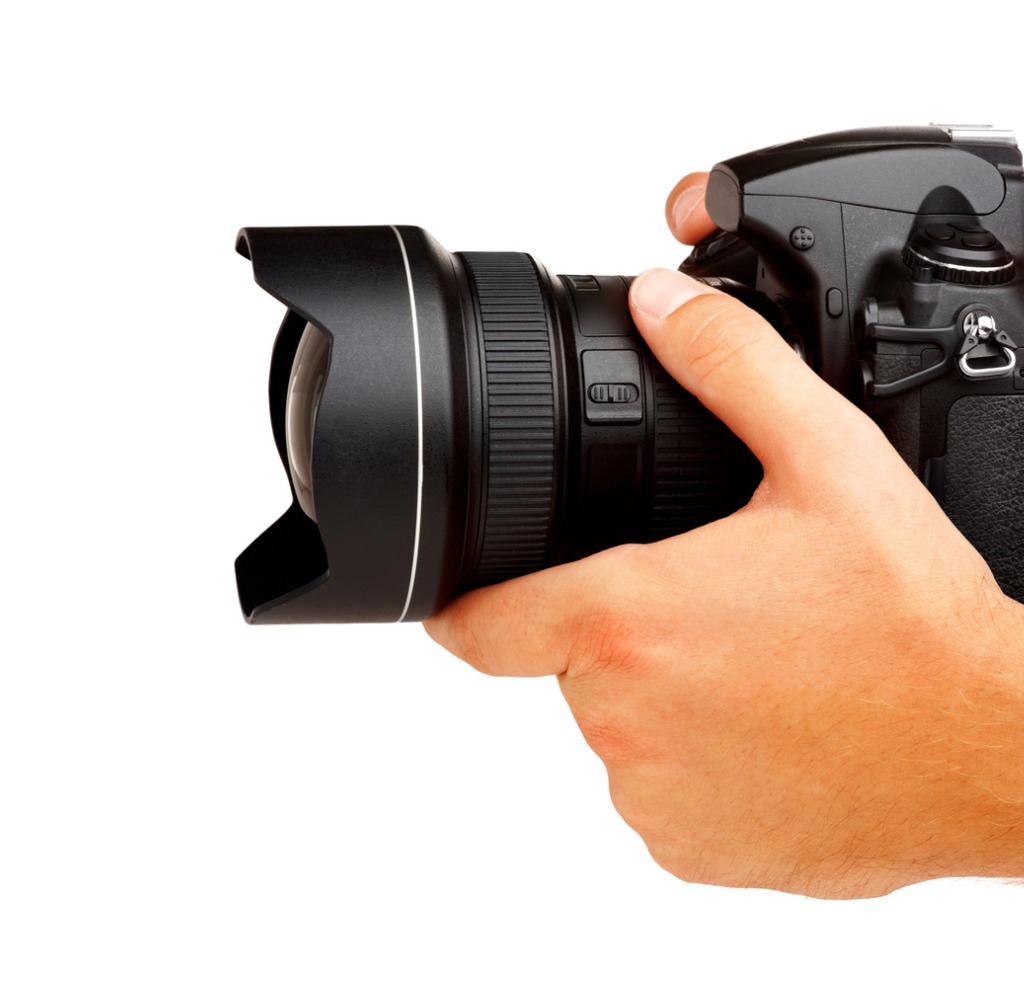
More than that, though, is the notion that a camera shared amongst colleagues, for example, could load specific functions for each photographer when their fingerprint is detected.
From white balance settings to image stabilization to autofocus and everything in between, your fingerprint could tell your camera and lens precisely how you want it to be set up.
One might even be able to set different camera profiles to different fingers, too.
That is, have one profile load when the pointer finger is scanned, another when the ring finger is scanned, and so forth, giving photographers quick access to various camera setups.
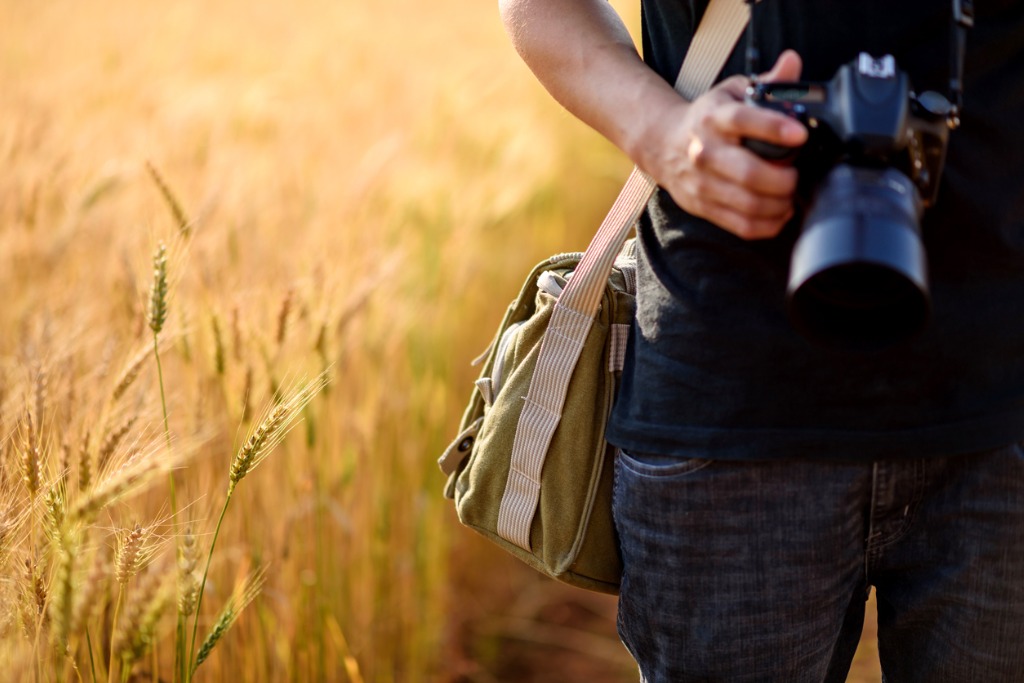
There are some downsides, though.
If time is of the essence, the fingerprint activation may cause you to lose an opportunity for a once-in-a-lifetime photo because it will no doubt take longer than simply turning the camera on as we do now.
Additionally, the efficacy of the fingerprint scan when fingers are sweaty or dirty could be problematic. There's also the problem of not being able to wear gloves when shooting in cold climates, or at least full gloves, anyway.
Granted, just because Canon filed the patent doesn't mean that the technology will ever come to fruition.
But if it does, it could be a game-changer for the industry and for photographers that want even more functionality out of their cameras.
Editor's Tip: Need to upgrade your lens? Find exactly what you're looking for and save money at the same time. Find out how.
Via Canon Rumors and Digital Trends
We Recommend
Rumor: Nikon’s New Nikkor Z 58mm f/0.95 S Noct Lens Will Cost a Cool $8,000
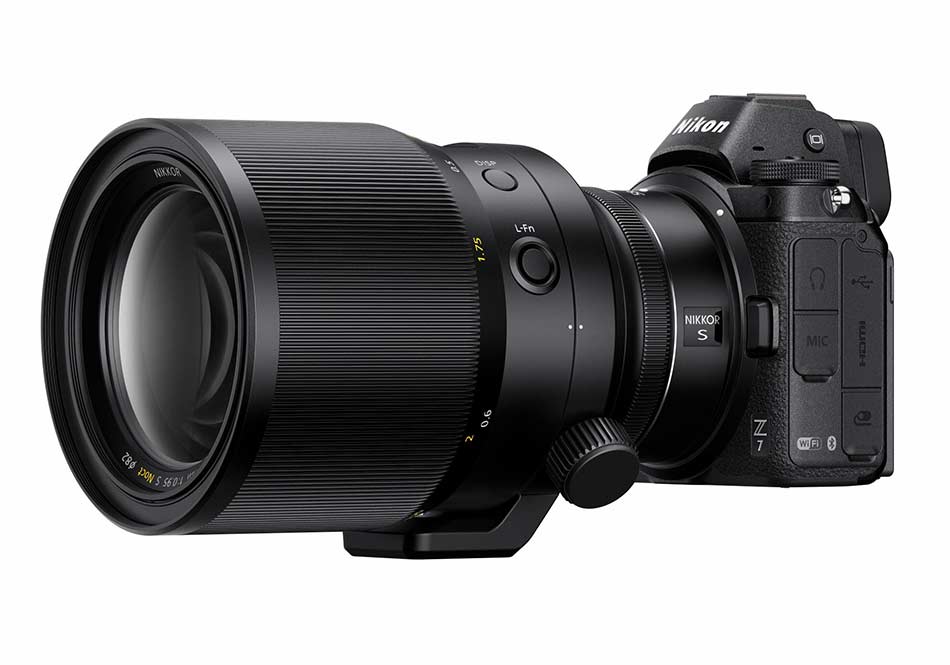
Rumors have swirled for a good long while about the Nikkor Z 58mm f/0.95 S Noct lens.
But while specs have leaked over the last year or so, the price had remained a mystery - until now.
The lens is due to launch imminently, but before Nikon could get the lenses onto store shelves, its massive $7,996.97 price tag was leaked by Nokishita.
Granted, we’re talking about the fastest Nikkor lens ever made, so a big price tag was expected. I, for one, didn’t expect the price to be quite that large.
For the longest time, most Nikon cameras enthusiasts expected it to be in the $6,000 ballpark. Turns out that estimate wasn’t even close!
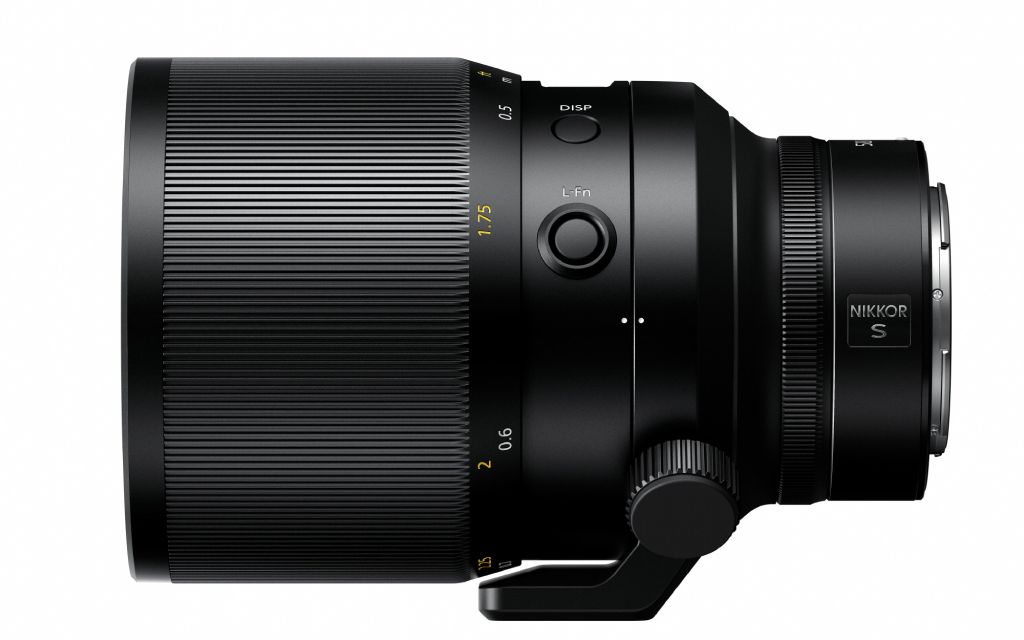
Designed specifically to highlight the capabilities of the Z-series cameras, this lens is described by Nikon as having “thrilling new capabilities” including “vast depth-of-field control and elaborate bokeh for portraiture.”
Furthermore, Nikon purports that this lens offers “superb point-image reproduction and low-light performance for night landscapes and astrophotography.”
On the construction side of the lens, it’s positively enormous (as you’d expect with such a fast lens) and looks awfully sleek and beautiful, as you can see in the video below by NewsShooter:
I can imagine there are plenty of Nikon shooters out there salivating at the opportunity to try this lens. I cannot imagine, however, that there are as many photographers jumping at the chance to drop $8,000 on it.
Aside from the price, another potential turnoff for some shooters is that this lens is manual focus only. We’ll see if this factor and the price point lead to sluggish sales or if these things fly off the shelves. Rumor has it that this lens will launch this week.
A better option (and a less painful one) is to get rid of older gear that you no longer need or use.
And I’m not talking about selling it on eBay, either. Instead, I use Lensfinder to sell my old lenses, filters, and cameras, that way I keep my gear collection nice and streamlined while getting a fair price for my gear.
Lensfinder doesn’t buy your gear directly. Instead, it’s a marketplace designed by photographers, for photographers, where you can buy and sell used gear without the games you find on Craigslist or the hassle (and expense) of eBay.
With built-in tools like fraud protection, seller ratings, and direct communication with sellers, it’s your one-stop-shop for unloading your old stuff.
Give Lensfinder a try today, and see if you can start saving up for that $8,000 lens you covet!
We Recommend
Sony Rumors: Four New Sigma Lenses to Be Unveiled This Week
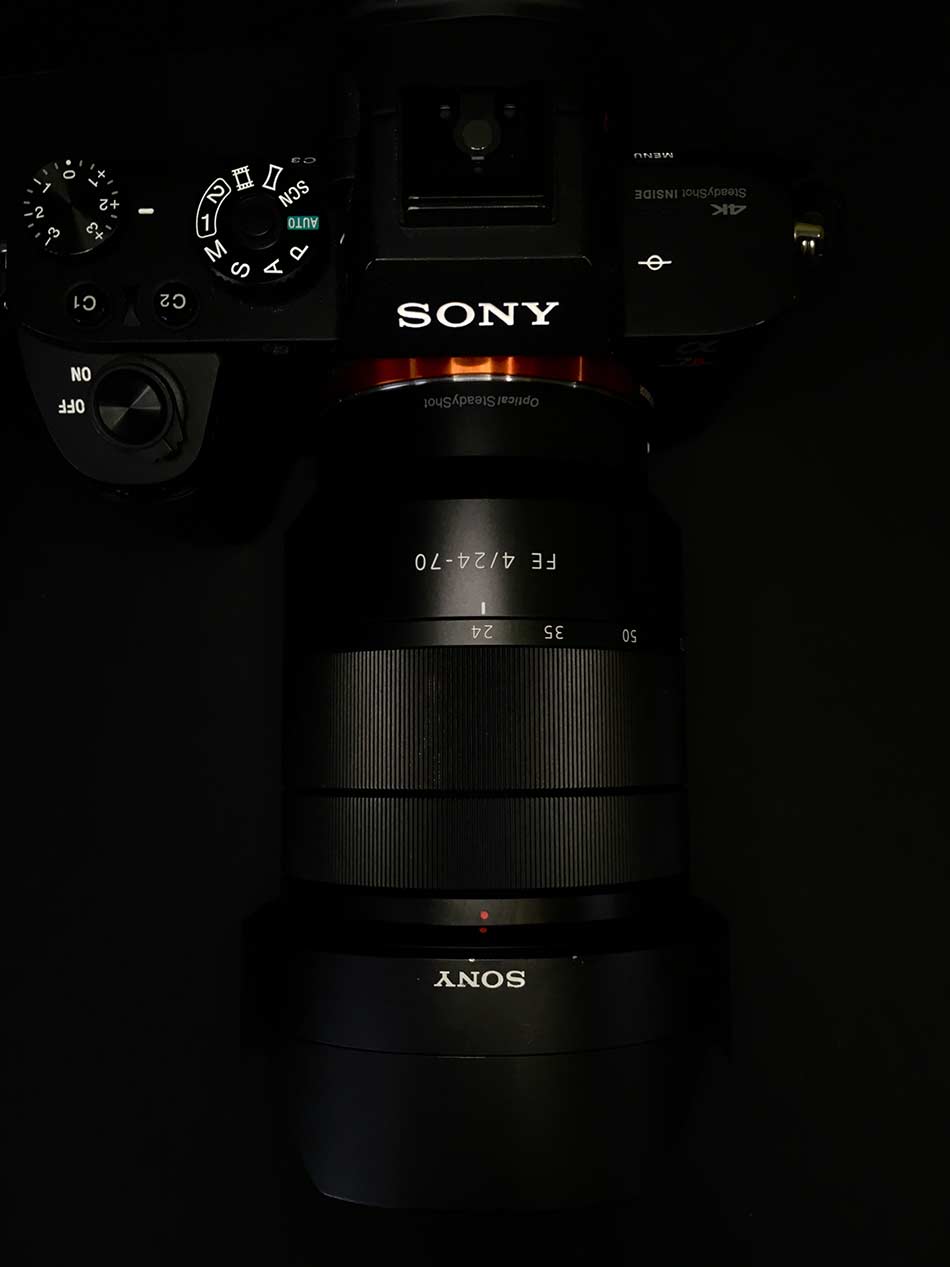
Photo by Mark Chan on Unsplash
Sony Rumors About New Sigma Lenses for Sony Camera
If you’re a Sony shooter like I am, you have to be excited about the recent news that Sigma has four - yes, FOUR - Sony FE lenses in the works.
These new Sigma lenses were confirmed last week, and the unveiling will take place this Thursday, July 11 at 1 am Pacific Time.
The lenses in question are a tantalizing array of glass:
- 35mm f/1.2
- 45mm f/2.8
- 14-24mm f/2.8
- 24-70mm f/2.8
The only question mark is the 24-70mm f/2.8 - that lens has not been confirmed yet as part of Sigma’s big announcement.
These New Sigma Lenses Aren’t Just for Sony
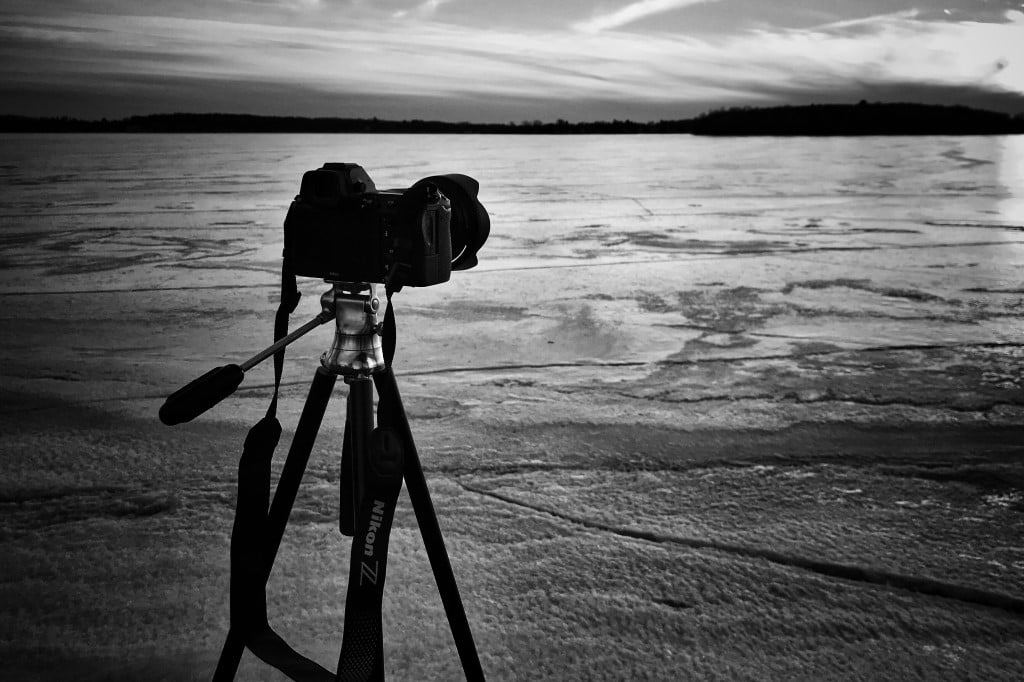
Photo by Patrick Donnelly on Unsplash
And while those of us that follow Sony rumors late at night are excited about three or possibly four new Sigma FE lenses, Nikon and Canon shooter should rejoice as well.
That’s because Sony Alpha Rumors reports that there will be versions of these lenses for the Panasonic/Leica L-mount cameras in addition to versions for Canon’s RF-mount and Nikon’s Z-mount.
The L-mount versions are reportedly going to be unveiled alongside the Sony FE-mount lenses with the Nikon and Canon versions coming at a later date.
Additionally, it’s important to note that all of these lenses - whether for Sony, Panasonic, Leica, Canon, or Nikon - will be only for mirrorless cameras. Sorry DSLR folks :(
Learn More:
Sony Rumors: Sigma Lens Specs
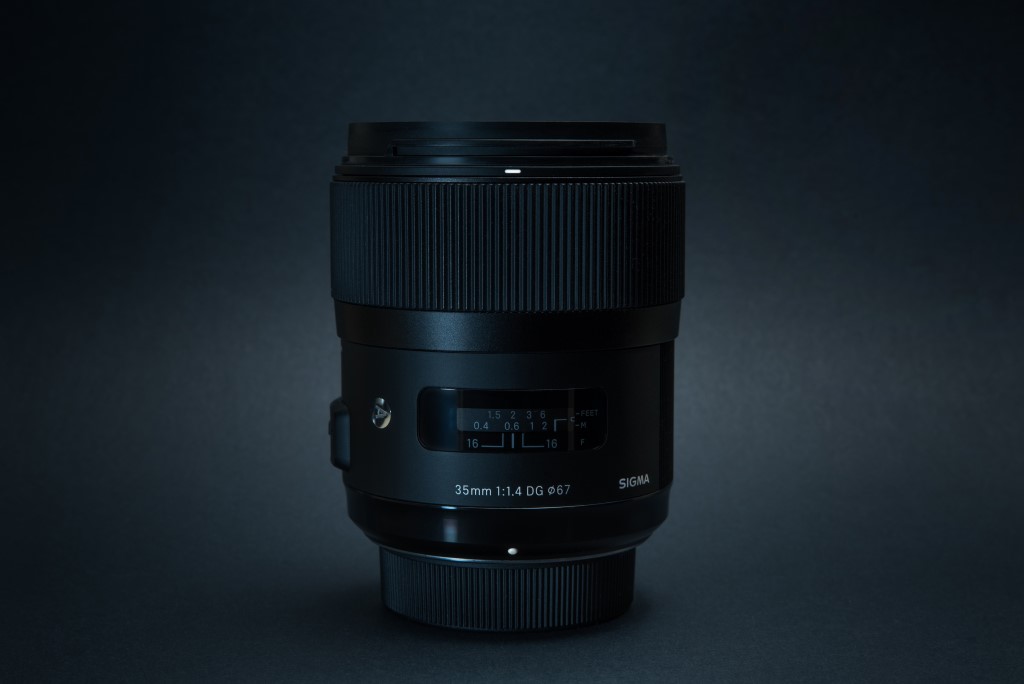
Photo by asoggetti on Unsplash
If all that isn’t enough to get you excited for Thursday, consider this: Sony Alpha Rumors also reports that the 35mm f/1.2 lens will be a high-end, professional-grade lens with premium construction, ultra-fast AF, silent AF, and record low aberrations.
There is no word on price yet, but I think it’s safe to say these lenses will not be cheap.
Can’t Afford a New Lens? No Problem!
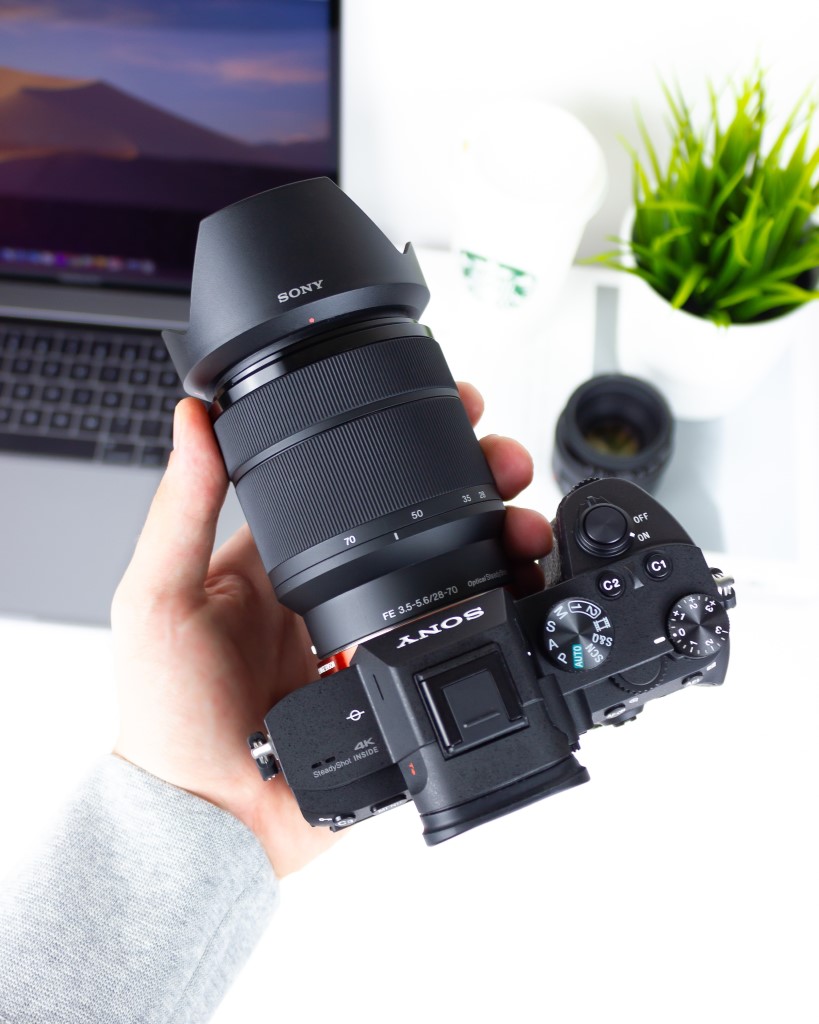
Photo by Daniel Korpai on Unsplash
If you’re not in a financial position to snatch up one of these new Sigma lenses, there’s no lack of excellent used Sony FE-mount lenses out there (as well as L-mount, Z-mount, and RF-mount lenses as well).
I know, I know...used glass is an iffy proposition sometimes.
I agree with that statement if we’re talking about buying off of Craigslist. I’d even agree if we’re talking about eBay.
However, there are other places where you can find quality used gear and reap the benefits of fraud protection too.
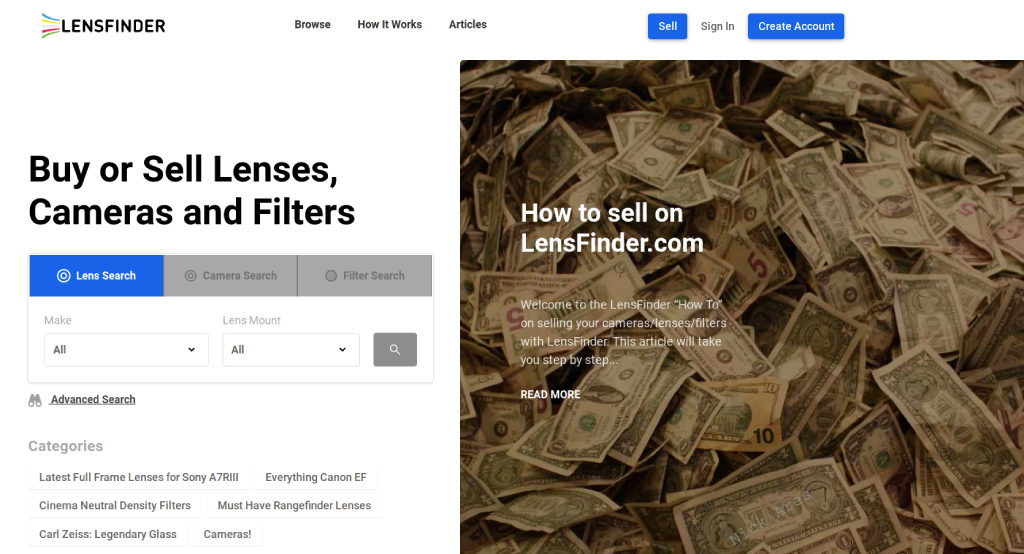
I use Lensfinder because it was built by photographers, for photographers. It’s all photography gear, so there’s no sifting through listings that have nothing to do with what you need as is so common on eBay.
And since the entire transaction is done on Lensfinder (apart from payment, which is done via PayPal or BlueSnap), you don’t have to worry about meeting a shady seller in a random parking lot like you do with Craigslist.
Better still, you can communicate with the seller directly on Lensfinder, leave feedback, and Lensfinder has advanced fraud protections to keep things legit. There’s even a built-in mediation service if things go awry.
It’s just the best way to get quality glass without paying full price, or, if you’re like me and you’re simply too impatient, it can be your go-to for getting an older version of a lens when you just can’t wait for the new one to come out.
Check out Lensfinder today and see what lenses you can get on the cheap.
Learn More:
Via Sony Alpha Rumors and PetaPixel
We Recommend
Tamron Announces Four New Lenses for Sony E-Mount Cameras
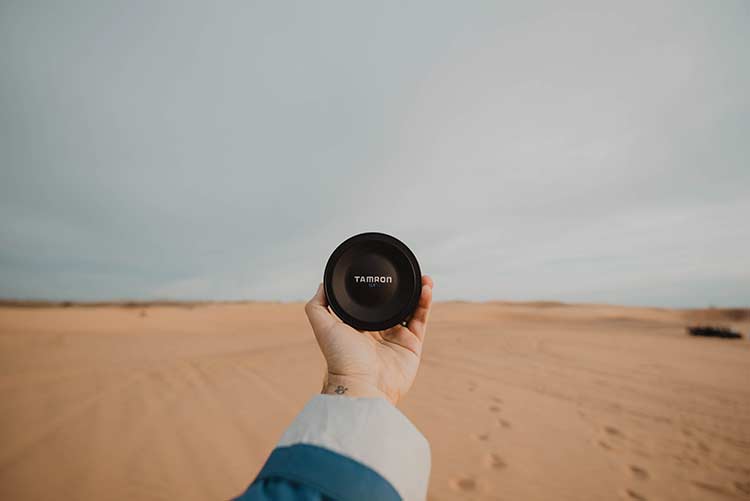
Photo by Hayden Scott on Unsplash
Tamron just released a teaser video for four new lenses for Sony E-mount cameras, and people are excited.
You can see why in the video below:
Now, it’s pretty clear that this video was meant to cause excitement, rather than give us much information about the new lenses.
It’s obvious from the video that the four new Tamron lenses will be full-frame mirrorless lenses.
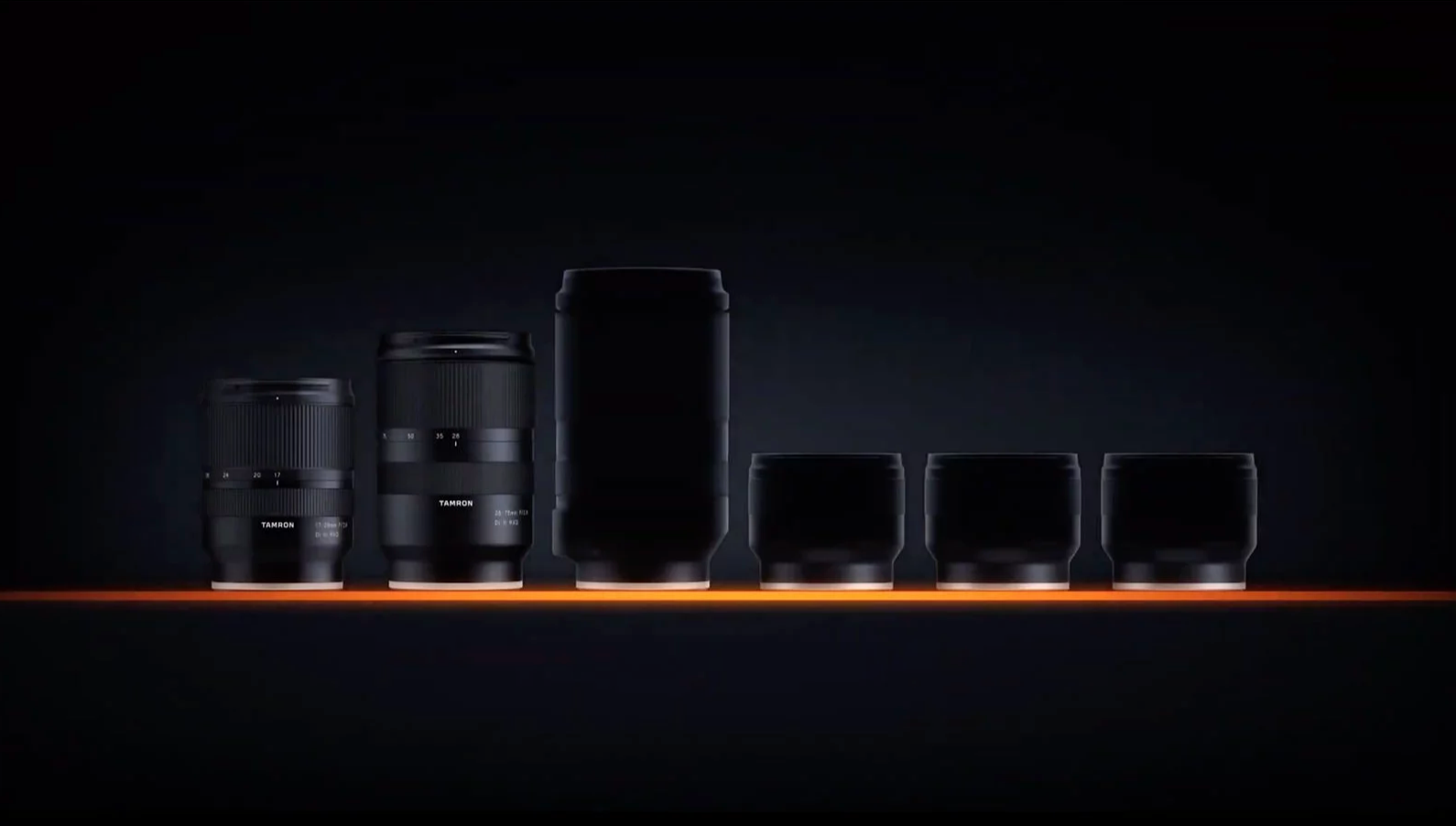
YouTube Screenshot/TamronVids
It looks like we can be expecting one zoom lens and three prime lenses. And, Sony Alpha Rumors is going on record saying the lenses will be officially announced at the PhotoPlus Show this October. Exciting!
This new line of lenses will be joining some heavy-hitters from Tamron that have been on the market for awhile. Let’s examine a couple of them below.
Learn More:
Tamron 28-75mm f/2.8 Di III RXD Lens Overview
These new lenses will be joining the Tamron 28-75mm f/2.8 Di III RXD, which DPReview reviewed in length back in June of last year.
But, here’s a shorter rundown.
This Tamron lens is a full-frame-compatible lens for Sony E-mount mirrorless cameras. It’s moisture-resistant and fluorine coated so the lens is protected from dust, ice and smearing. As a result, Tamron lenses are known for their versatility in inclement weather conditions.
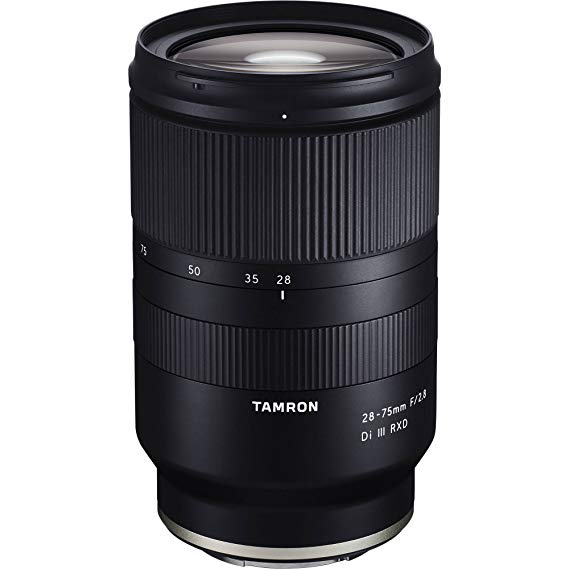
This specific Tamron lens is also world-renowned for its bokeh and can take close-up shots because of its minimum focusing distance of .19 meters.
Here’s a breakdown of its specs:
- 28 to 75mm focal length
- f/2.8 maximum aperture
- 2.87 inches x 4.6 inches
- 1.2 pounds
In terms of some possible errors with the lens, when you’re shooting at full aperture, the lens produces a lot of vignetting. This lens also lacks image stabilization.
However, if you’re looking for a lens that performs beautifully as a standard lens with a characteristic Tamron bokeh - which is to say if you’re a portrait photographer - then this lens is absolutely worth the price!
Speaking of price, you can pick one of these lenses up brand-new for $879.00.
Tamron 17-28mm f/2.8 Di III RXD Lens Overview
In the video above, Dustin Abbott covers the other Tamron lens that these four new Sony E-mount lenses will be joining.
The Tamron 17-28mm f/2.8 Di III RXD is a classic zoom for full-frame Sony E-mount cameras. This lens is best for those of us who are shooting ultra-wide angles, like architecture photographers.
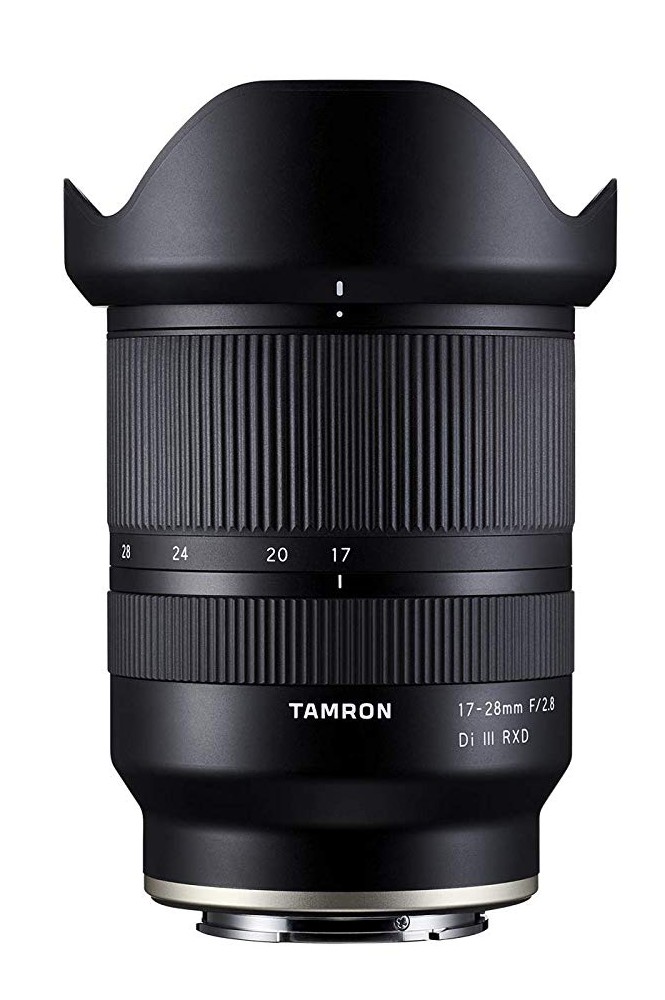
The specs on this camera include:
- A 17 to 28mm focal length
- f/2.8 maximum aperture
- 103 to 75 degree angle of view
- 2.87 inches x 3.9 inches
- 14.82 ounces
One of my favorite characteristics about this zoom lens is that the length of the lens does not actually change during zooming. That internal focusing is nice if you happen to find yourself in cramped quarters.
If you’re looking for an ultra wide-angle lens, this Tamron is worth a look. Get a brand-new one for about $980.00.
How to Save on a Tamron Lens

And, if you decide you want to purchase one of these older Tamron lenses before the newer (more expensive) Tamron lenses drop in October, I recommend you do so on Lensfinder.
All of the sellers on Lensfinder are vouched for by Lensfinder, so you know you’re not going to get ripped off like you otherwise might on sites like eBay or Craigslist.
They also grade each lens so you know exactly why one lens is $300 less than the same lens by another seller.
I always tell photographers to buy their photography gear used to save money. I almost always do the same, and each time I have a new lens on my mind, I buy my new-to-me gear on Lensfinder. You should do the same!
Check out Lensfinder’s inventory of pre-owned lenses.
Learn More:
We Recommend
The Basics: What You Need to Know About Camera Lenses
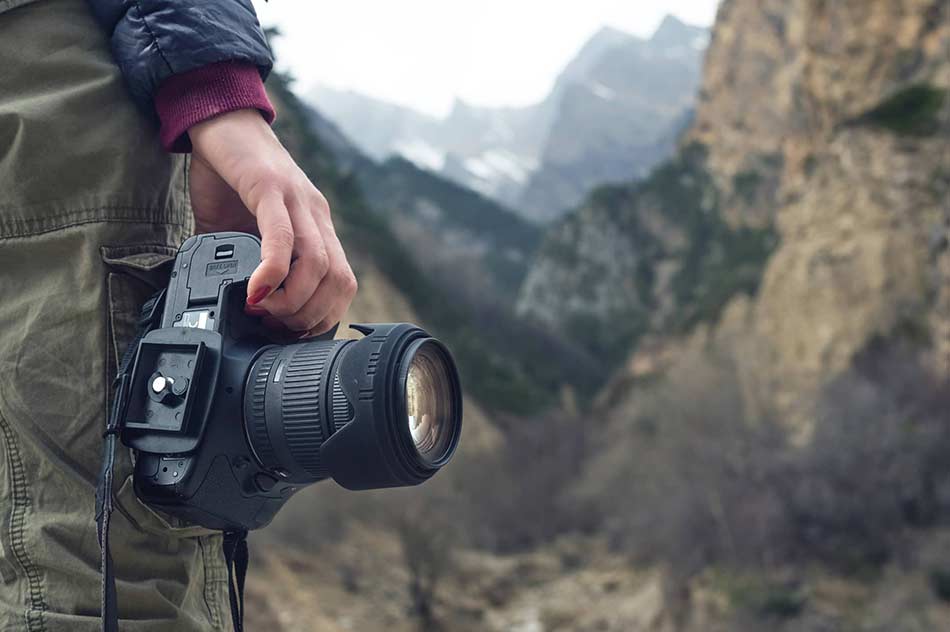
Camera Lens Basics
So, you're new to photography and are quickly discovering that there's a lot more to this than simply holding the camera to your eye and pressing a button.
Aside from mastering things like composition and camera settings, you also need to have an understanding of the different pieces of gear you need to take a quality shot.
Well, one of the most important components that determines the quality of your images is the lens you use...
Editor's Note: Looking to upgrade your lens, but don't want to break the bank? Buying pre-owned lenses means you can get a better lens for less money. To search for pre-owned lenses for your camera system, visit Lensfinder, our preferred marketplace for buying and selling used camera lenses.
It's the Lens, Not the Camera
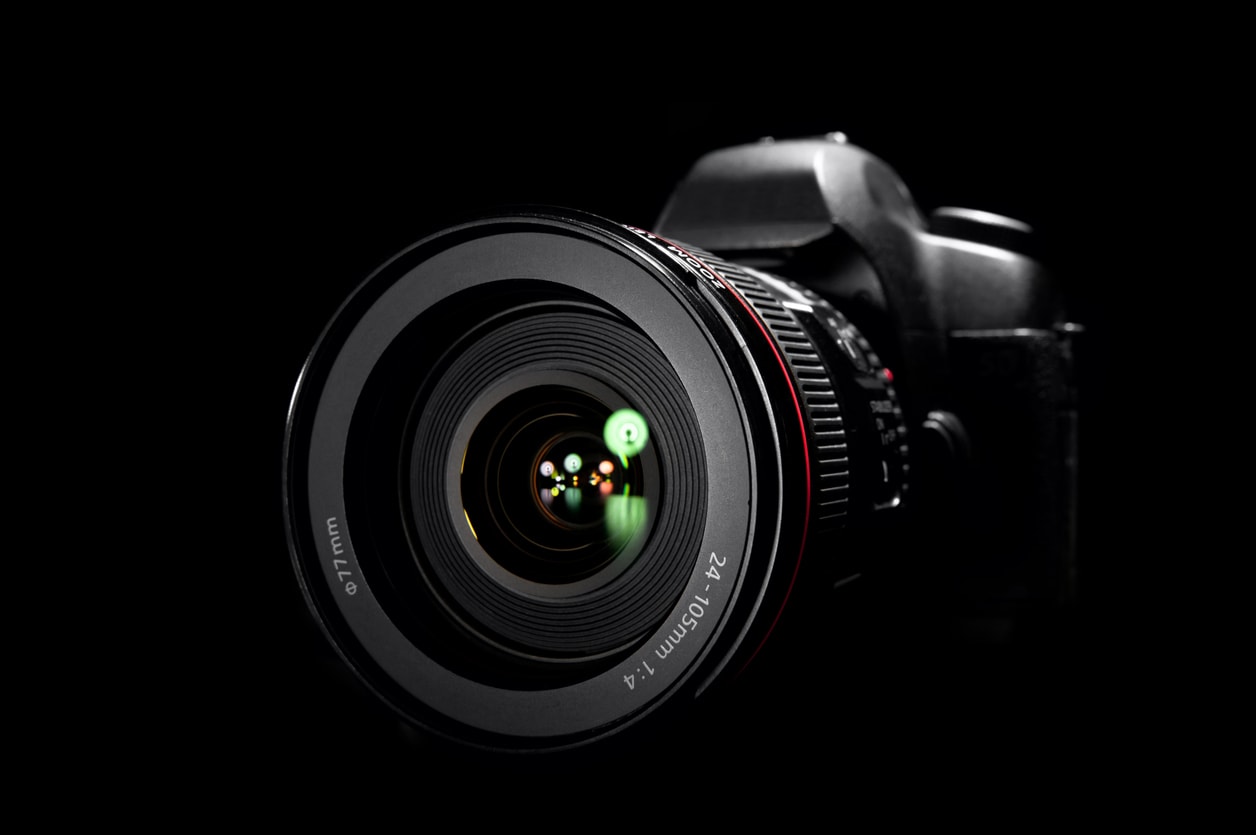
The first thing to understand is that when you take an image, the quality of it has much more to do with the lens than the camera.
In fact, you can have the best camera money can buy, but if you pair it with a poor-quality lens, you'll have a poor-quality image.
Conversely, if you have a run-of-the-mill camera and pair it with a high-quality lens, guess what? You'll have images that are crisper, sharper, and better to look at.
That being said, if you find yourself in a position in which you want or need to upgrade your photography gear, upgrade your lens first. Put as much money toward your glass, and your images will benefit greatly!
Be Wary of "All-Around" Lenses
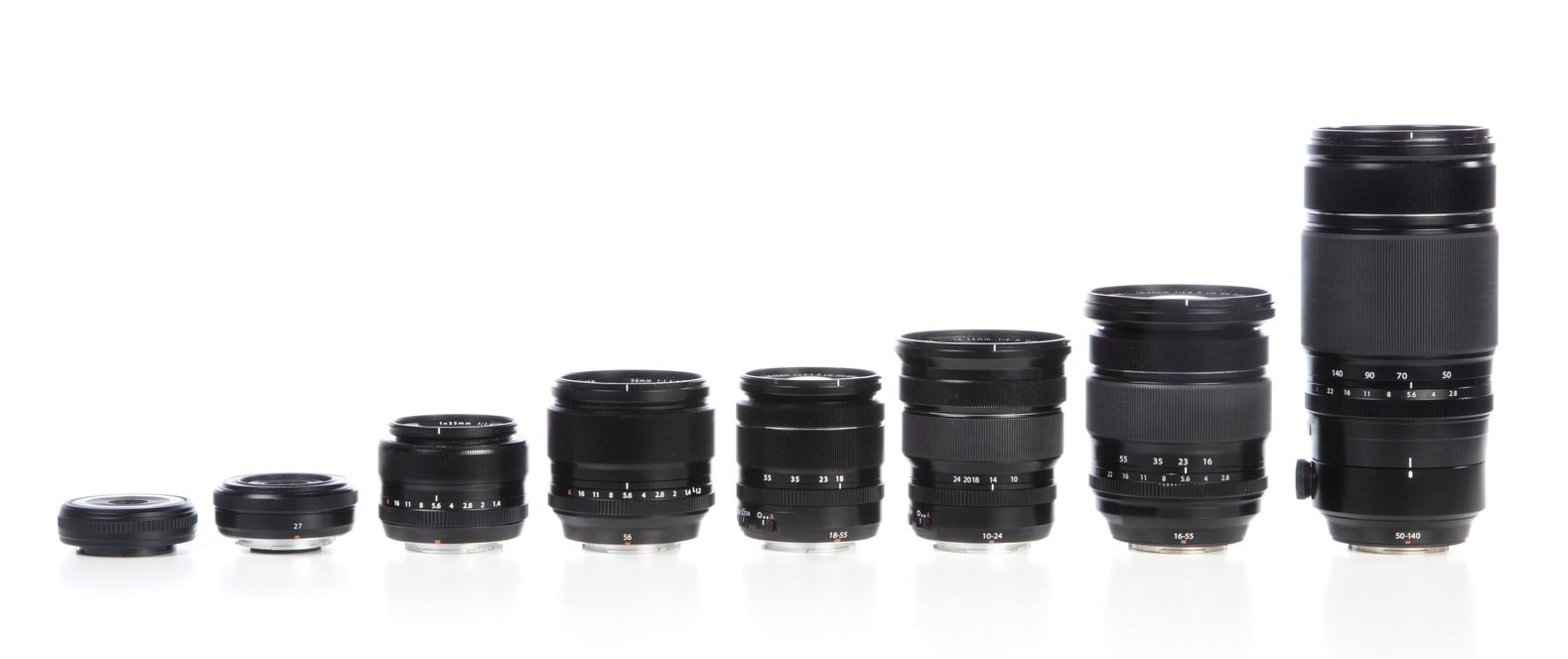
A lot of photographers swear by good "all-around lenses" that work well for a variety of purposes.
And though things like a 50mm prime lens or a 70-200mm zoom lens do offer tons of versatility, it might behoove you to find a lens that's more ideally suited to your particular kind of photography.
For example, if you really love to take macro photos, neither of the lenses mentioned above are going to be your best bet.
Similarly, if your thing is wildlife photography, a much longer focal length would be advisable.
The moral of the story is that if you've already found your passion, buy a lens that allows you to pursue it to its fullest extent. But if you're still trying to figure things out, an all-purpose lens might be a better short-term solution.
Learn More:
What Those Numbers Mean
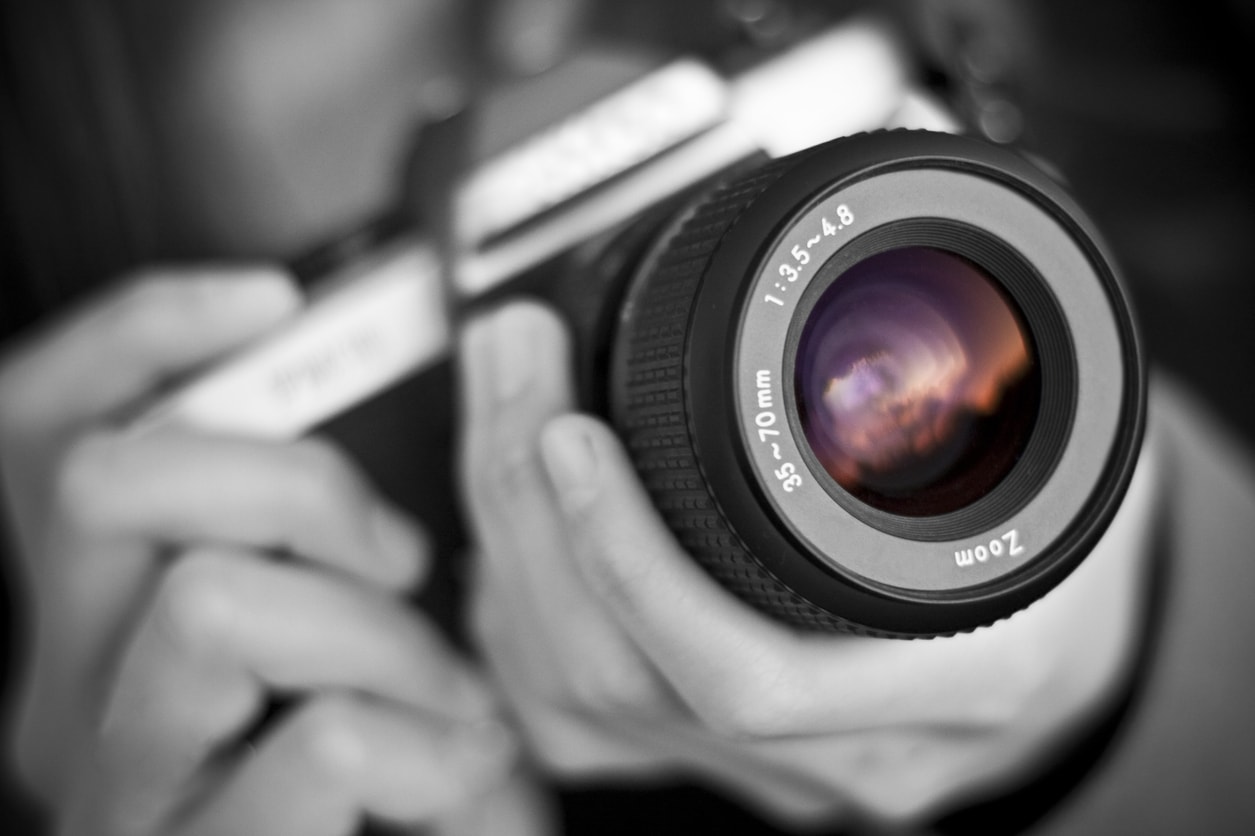
When you look at lenses, there's a bunch of numbers written on the end of the lens (and on the top, too).
In looking at the lens above, you see that it's 35-70mm. That's the measurement of the length of the lens, given in millimeters.
Since there's two numbers listed, it's a zoom lens, with a range of 35-70mm. If there is just a single number, like 50mm, that means the lens is fixed, which is often called a prime lens. In other words, prime lenses do not have zoom capabilities.
When considering focal length, the smaller the number, the wider the field of view, so something like a 10mm lens would offer a very wide field of view while something like a 400mm lens would offer a very narrow field of view.
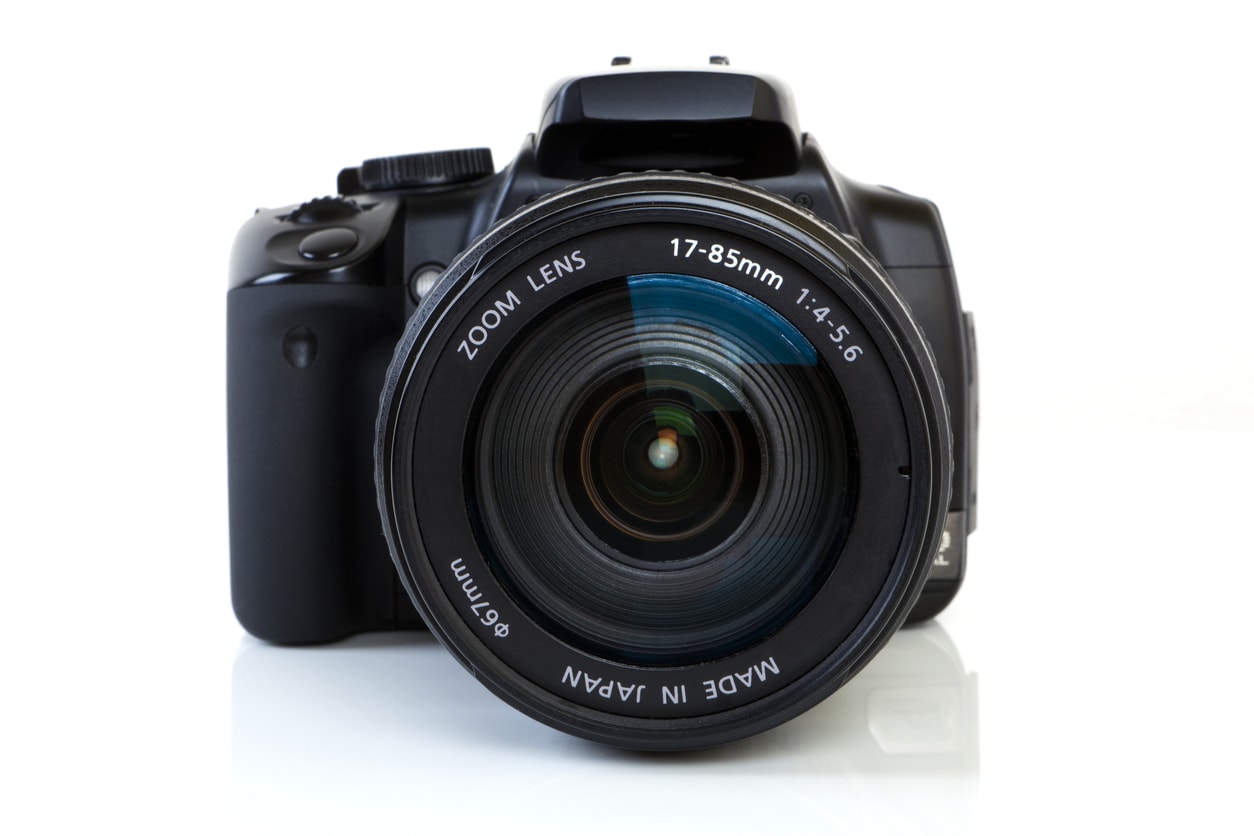
The other numbers to be aware of are those that indicate the aperture of the lens.
In the image above, the aperture is denoted as 1:4-5.6.
This means that this particular lens has a maximum aperture range of f/4-f/5.6.
Because it's a zoom lens, the maximum aperture it can achieve will change based upon the focal length being used.
So, at 17mm, this lens can achieve an aperture of f/4. At 85mm, it can achieve an aperture of f/5.6.
That's important because the size of the aperture determines the low-light capabilities of the lens. The smaller the number, the better the lens will perform in dim lighting.
For a few more insights into the basics of camera lenses, check out the video above by Phillip McCordall.
Learn More:
- Focal Length and Field of View Explained in 4 Steps
- A Beginner's Guide to Aperture and Depth of Field
Types of Camera Lenses
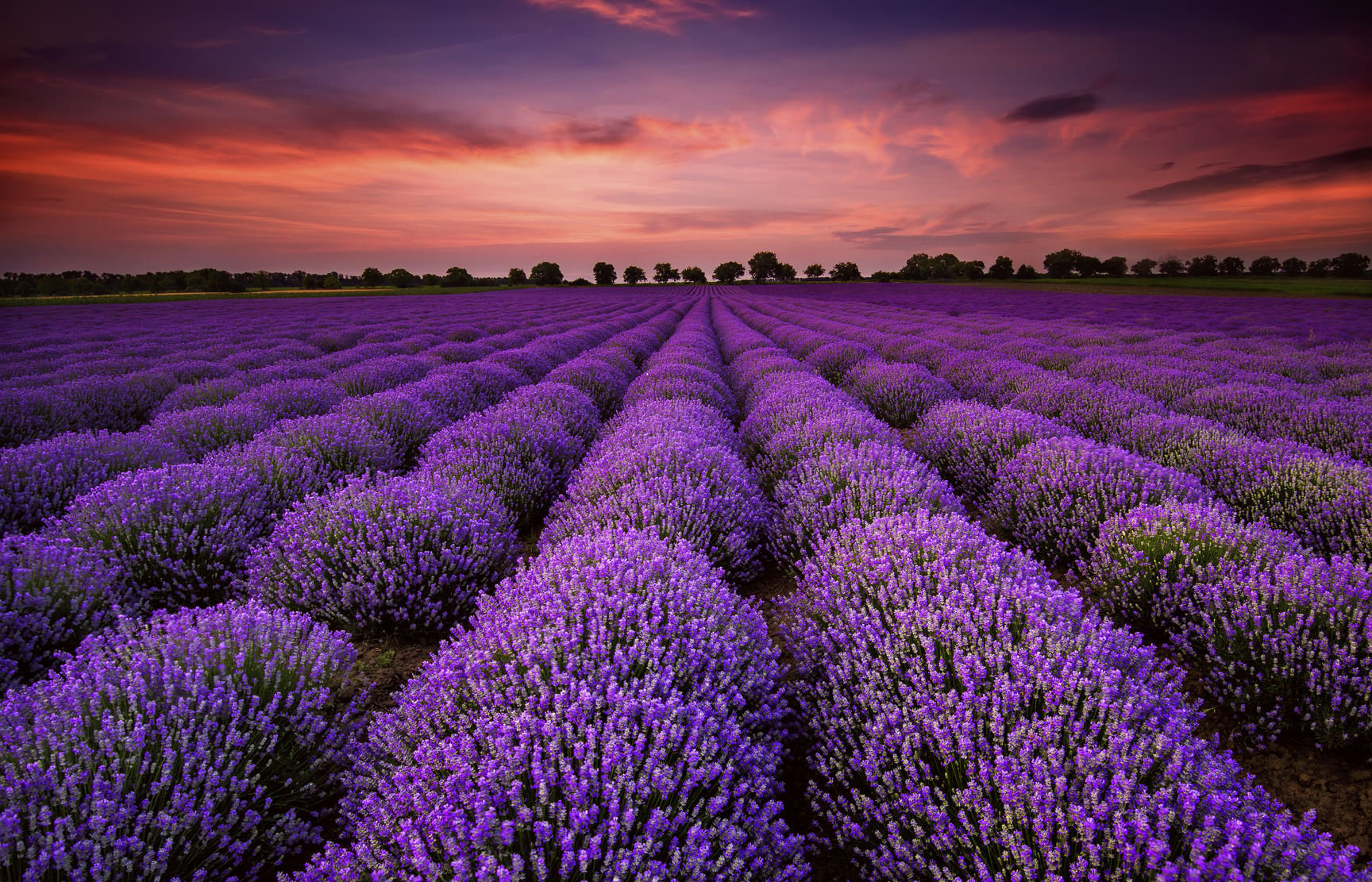
As I noted earlier, there are two basic types of lenses - primes and zooms.
But there are other features that you have to consider when thinking about buying a lens.
Wide-angle lenses are generally considered anything 35mm or shorter (on a full frame camera).
This type of lens allows you to capture a wide scene, making them ideal for landscape photography, as shown above.
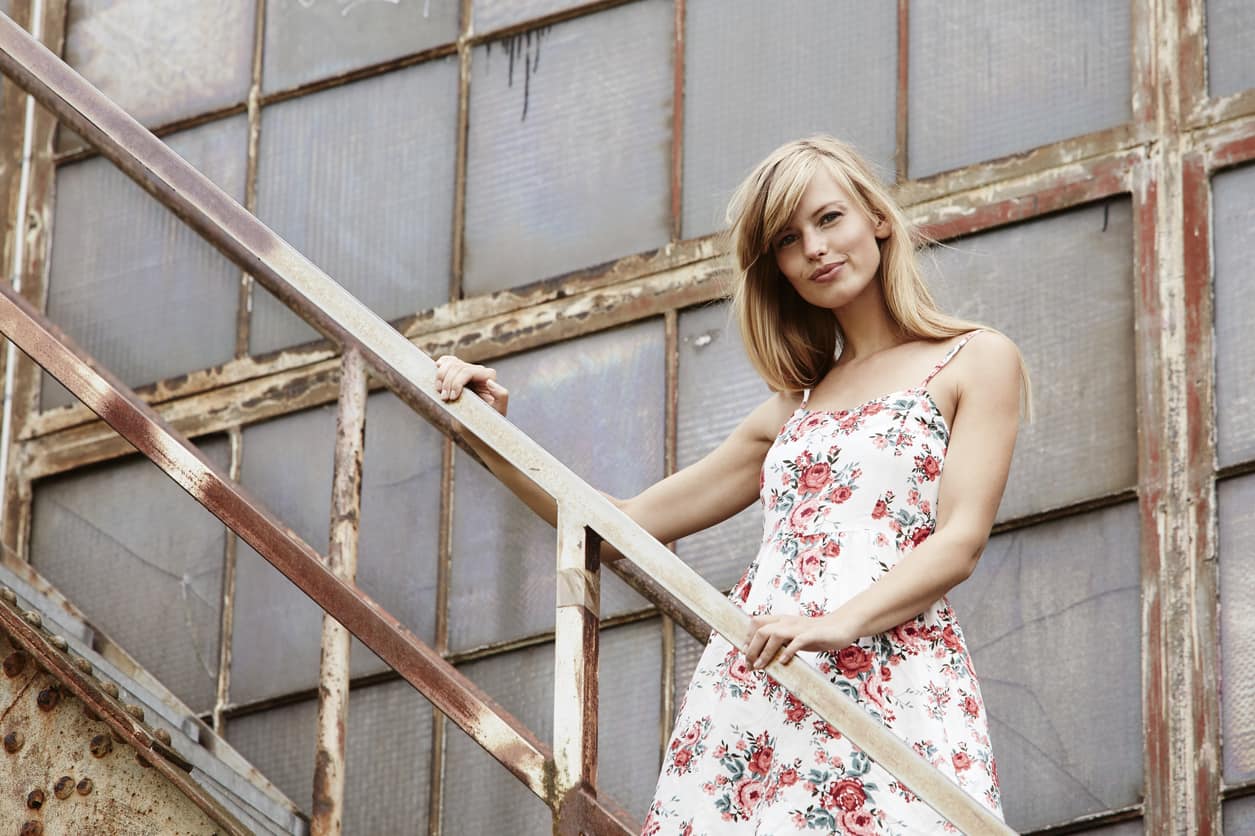
Another popular type of lens is a normal or standard lens.
The range of these lenses again depends on the type of camera you have.
If you shoot with a full frame camera, a normal focal length is considered to be around 50mm. On a crop sensor camera, a normal lens is about 28mm.
Normal lenses get their name because they produce images that very closely resemble what we see with our own eyes.
That makes them great options for portraiture (as seen above), but they can also be used for landscapes, travel photography, street photography, and various other pursuits.
In fact, if you were to buy just one lens, a normal lens might be your best bet.
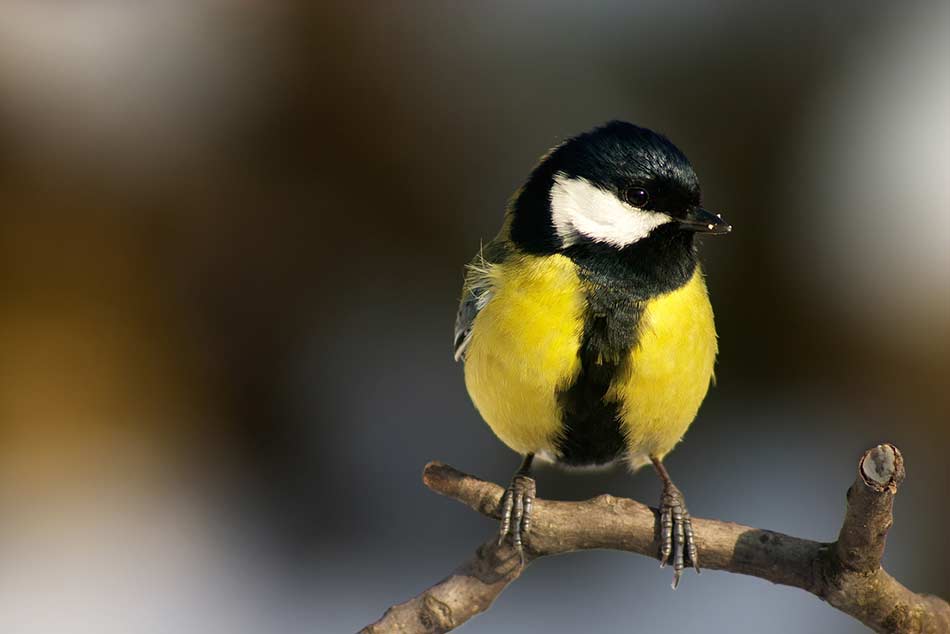
Longer focal lengths - above 85mm on a full frame camera and 50mm on a crop sensor camera - are considered telephoto lenses.
These lenses have excellent reach for photographing distant subjects, as you can see in the image above.
That is, where a wide-angle lens allows you to photograph a large scene, a telephoto lens allows you to get up-close to a subject without necessarily being close to it.
That's a valuable feature for photographers that specialize in sports or wildlife, though telephoto lenses can be used for other pursuits, like landscapes or portraiture as well.
Editor's Note: Do you have a lens or lenses that you just don't use anymore? Instead of letting them sit around collecting dust, try selling them to other photographers. Not only does that help you declutter your house, but it also puts money in your pocket to buy gear you'll actually use! List your pre-owned lenses for sale today on Lensfinder.
Learn More:
Go Even More In Depth
What I've covered so far is just the basics of lenses. There's actually much more you need to know!
For that, I'll direct you to the video above by Newtography.
It's a detailed guide that covers the topics I've outlined above, and goes into more detail about things like compression, bokeh, buying filters, and what the different rings, buttons, and switches on a lens are used for.
Check it out so you can be even more enlightened about the ins and outs of camera lenses.
We Recommend
The Best Camera Lens for Under $500 - and Why You Need One
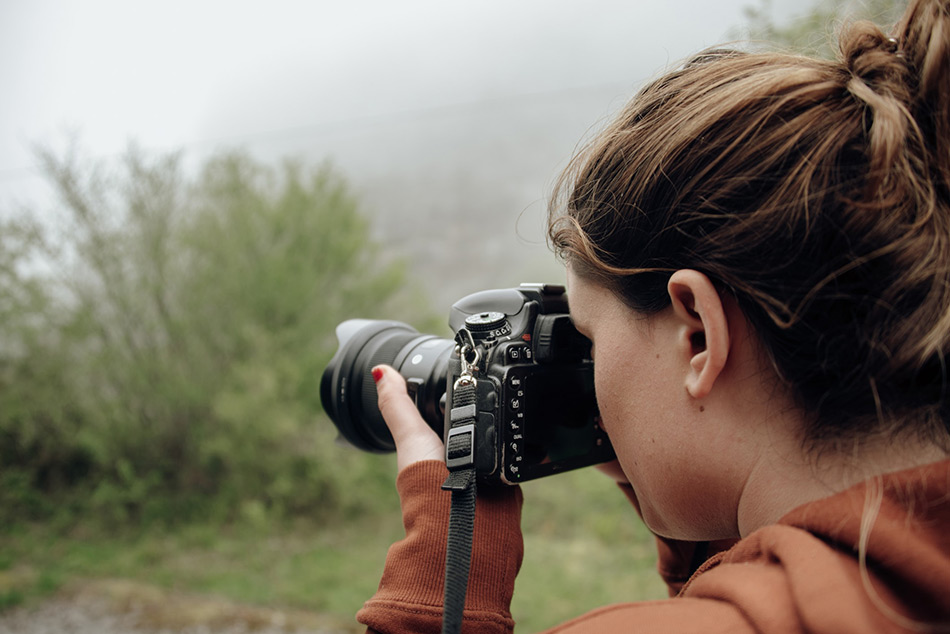
You might be thinking that $500 for a single camera lens seems pretty steep, but I assure you, it's not!
There's lenses out there that will set you back more than a good used car, so $500 by comparison isn't much...
The thing about lenses is that you really do get what you pay for.
A good lens will typically be more expensive, but that's because it's simply a better lens with better optics and more capabilities that give you a better chance of taking improved photos.
But that doesn't mean that there aren't bargain lenses that give you great value and performance at the same time.
So, what's the best camera lens for under $500?
Editor's Tip: Not sure what all those numbers and letters mean on your lens? LEARN HOW TO READ LENS MARKINGS and take more control over the quality of your photos.
Best Cheap Lens for Canon: 50mm f/1.4
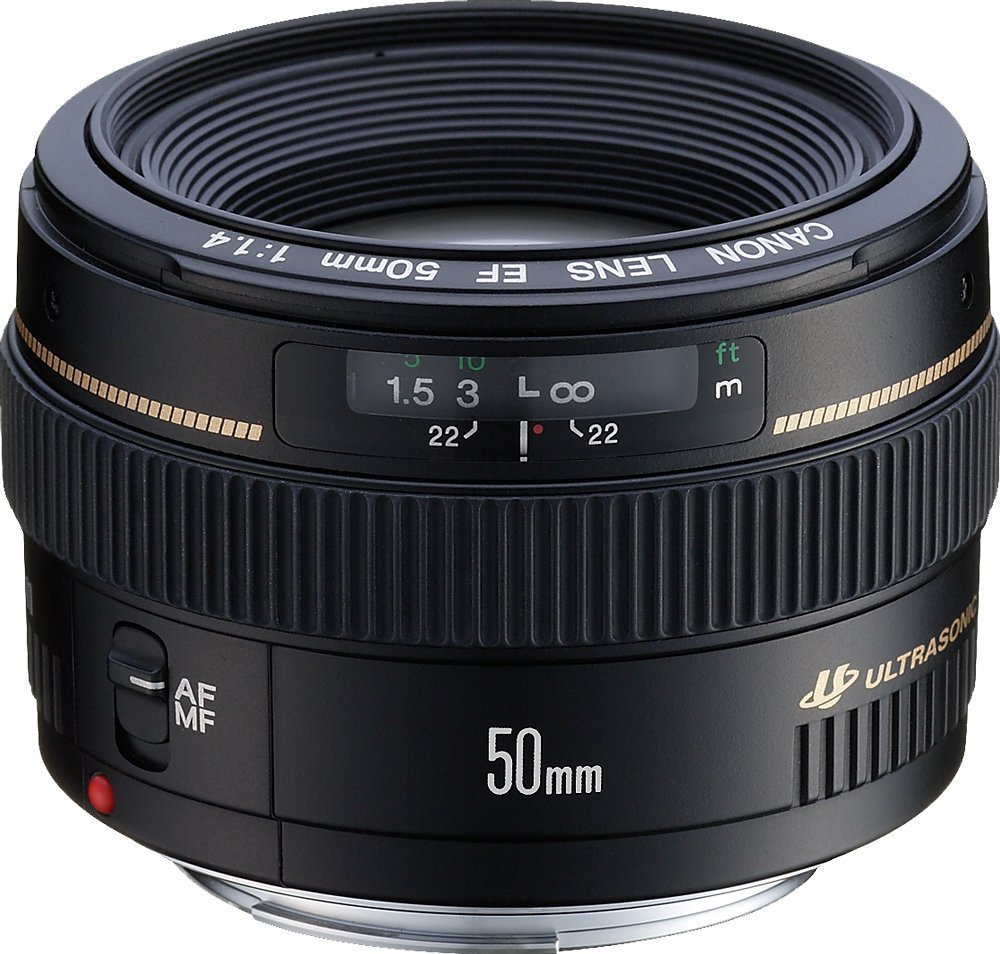
I've written many times about why every photographer needs a 50mm lens in their bag.
For starters, it's a wonderful focal length that's incredibly versatile whether you shoot with a crop sensor or full frame camera.
You can use it for landscapes, portraits, street photography, travel photography - you name it!
Additionally, 50mm lenses are small, lightweight, and allow you to work relatively inconspicuously, which is nice when you're trying to take candid street photos or travel photos.
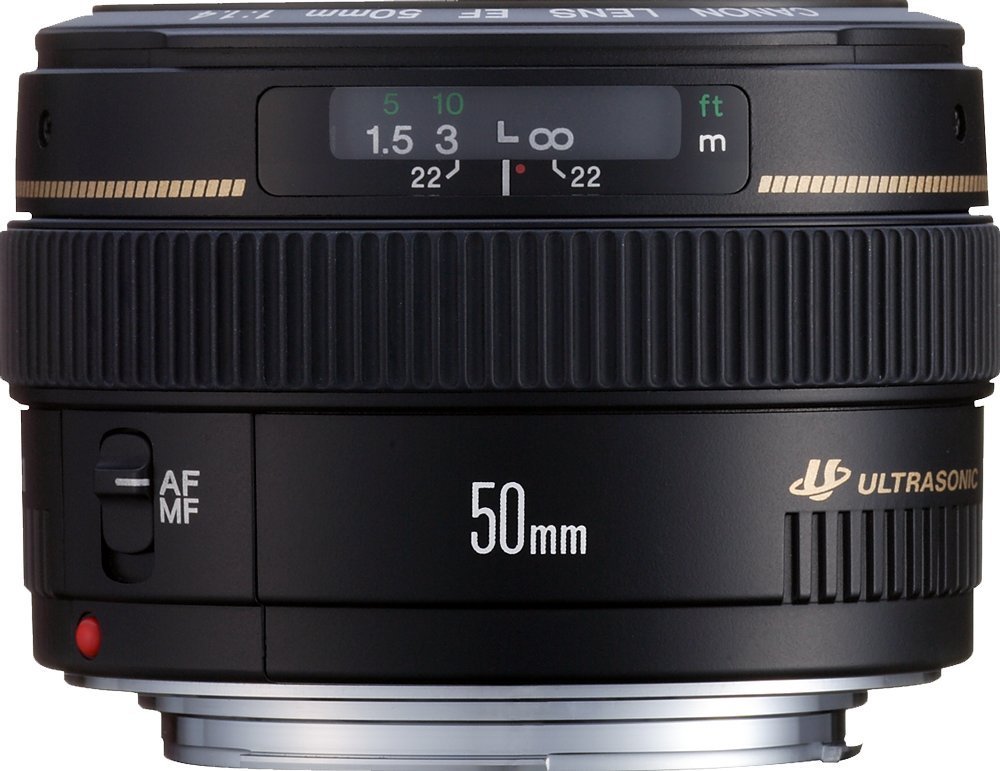
On top of that, prime lenses typically produce sharper photos.
That's because unlike zoom lenses, prime lenses have fewer elements inside. That means fewer obstacles through which light must travel, giving you sharper results.
And since a prime lens has no zoom capabilities, they're more challenging to use - in a good way.
Rather than relying on a zoom lens to do everything regarding framing the shot, with a prime lens, you have to physically move closer to or further away from the subject.
That means you can more thoroughly develop your creative eye because you're forced to move around and find just the right spot from which to shoot. Learn more about this lens in the detailed review in the video below by Christopher Frost Photography:
With the 50mm f/1.4, you also get a huge aperture that allows you to do some really creative things with your photos.
Since larger apertures allow more light into the lens, an f/1.4 rig lets you take photos in low-light situations without having to boost the ISO or slow down the shutter speed.
In other words, you can get higher-quality shots even when the lighting isn't all that great. That's ideal for taking photos indoors, as well as photos at dusk or even at night with ambient lighting outdoors.
Editor's Tip: Prime lenses are great additions to your camera bag. LEARN WHICH PRIME LENSES ARE MUST-HAVES.
Additionally, since the larger the aperture, the shallower the depth of field, an f/1.4 lens allows you to blur the background in portraits.
That means that the quality of your portraits can be elevated because with your subject sharp and the background nicely blurred, the subject will stand out in the image.
Perhaps best of all, a Canon 50mm f/1.4 lens is only about $329 brand new, and you might be able to find a good used lens for even less.
That means you get a lens that has tons of capabilities and can help you become a better photographer, all without breaking the bank.
Best Alternative: Canon 50mm f/1.8
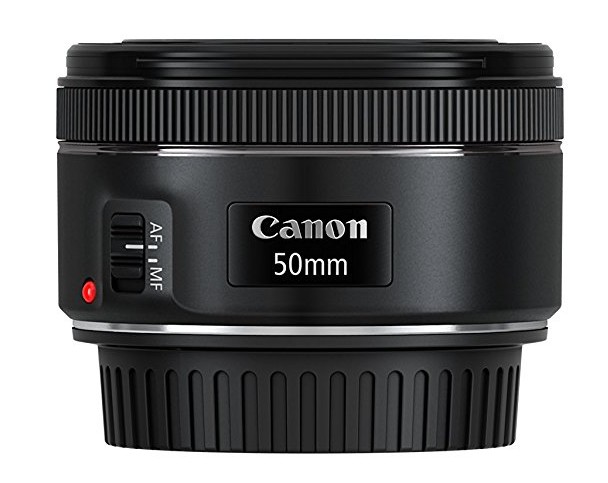
If $329 is still too steep, a good option is the Canon 50mm f/1.8.
It isn't as sharp and the f/1.8 aperture doesn't let in as much light, but considering it's $125 brand new and even less pre-owned, it's a sound investment for not much money at all.
Learn More:
Best Cheap Nikon Lens: 50mm f/1.4
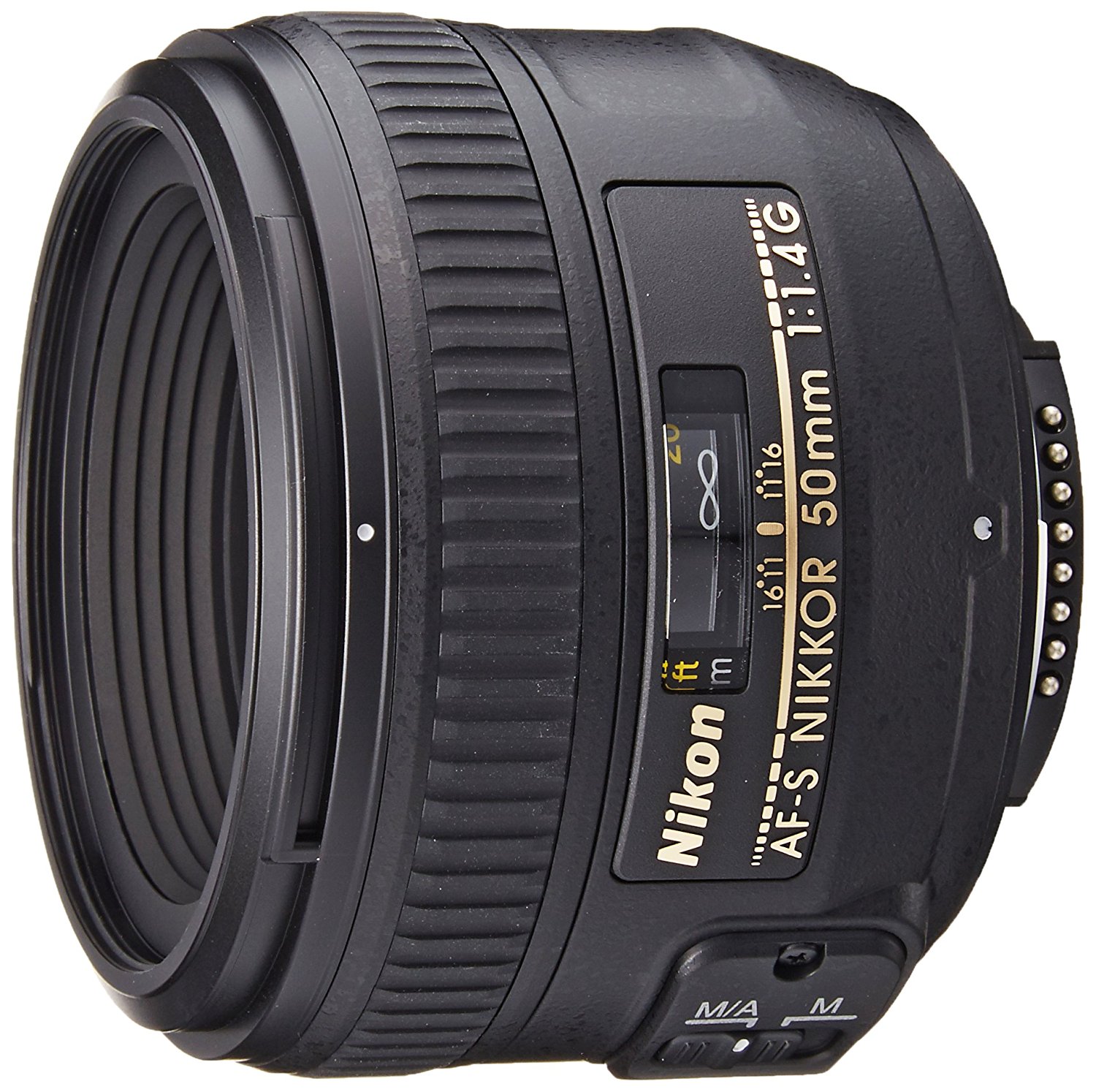
Not surprisingly, Nikon makes its own excellent 50mm f/1.4 lens.
Like the Canon, this lens is sharp, has a small form factor, and is incredibly versatile.
And with the same f/1.4 aperture, low-light shooting and nice, blurry portrait backgrounds are easy to achieve.
Watch an in-depth review of this lens in the video below by JKLenses:
Where this lens differs from the Canon, though, is in its price.
It's much more expensive, at nearly $450 brand new.
Again, compared to professional-grade lenses that cost thousands of dollars, a $450 price tag is nothing to sneeze at.
But not everyone has a spare stack of hundreds to throw towards a lens, which is why buying a pre-owned lens is such a smart investment.
Whether you're after this Nikon 50mm, a Canon 50mm or another focal length or lens from another manufacturer, finding good, used lenses will help stretch your budget further. Who knows, you could find such great deals that you can afford two lenses!
Best Alternative: Nikon 50mm f/1.8

One of the best camera lenses for Nikon cameras is the 50mm f/1.8.
As noted earlier, though f/1.8 doesn't allow as much light in as a f/1.4 lens does, it's still much more than what a typical f/3.5-5.6 kit lens can do.
Besides, when brand new prices are just over $200, you get a great lens without busting your budget.
Learn More:
Final Thoughts

There are a lot of great lenses out there, some of which like the 50mm f/1.4 aren't too expensive.
And while a 50mm f/1.4 might not be for everyone, by and large, I think most photographers will greatly benefit from adding one to their kit, or as a quality alternative, adding a 50mm f/1.8 to their kit.
As noted earlier, you get what you pay for when it comes to lenses, so when it's time to upgrade your glass, either save up and buy the best lens you can, or keep your eyes peeled for good used lenses.
Either way, getting the best camera lenses will help your photography much more than if you spend your money on a fancy new camera.
We Recommend
The Best Canon Lenses for Beginner Photographers
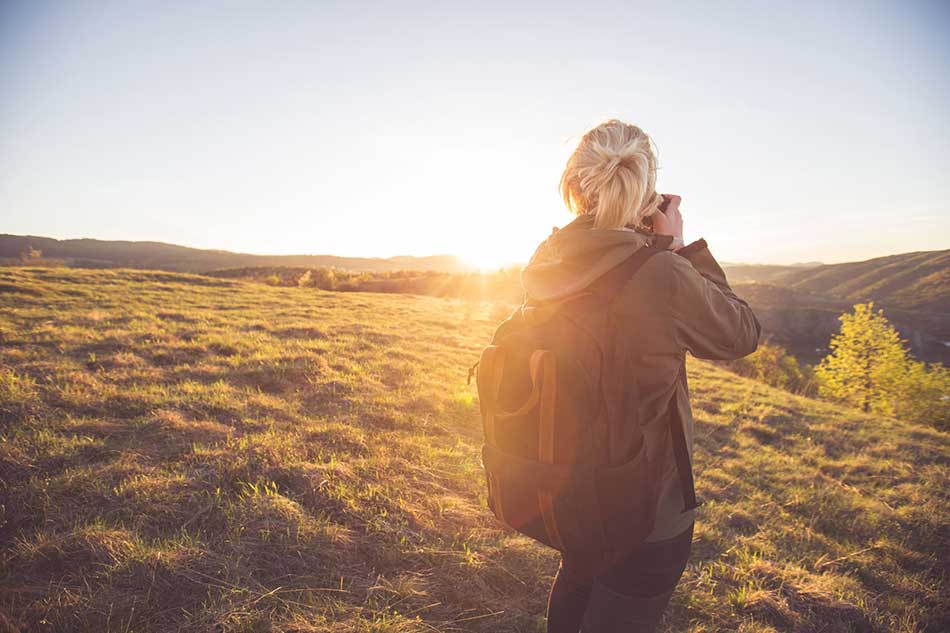 Image Credit: freemixer via iStock
Image Credit: freemixer via iStock
One of the best things about Canon is that they have a ton of lenses available.
That means that no matter what kind of lens you need, chances are that you'll be able to find just what you want for your Canon camera.
Of course, there can be too much of a good thing, so you might find yourself crippled with indecision because of the sheer number of choices you have...
That's where this list comes in.
I've whittled Canon's entire collection of lenses down to just three of the best for beginner photography needs.
Editor's Tip: If you typically take portraits, read this before you buy a new lens.
Best Canon Lens for Landscapes
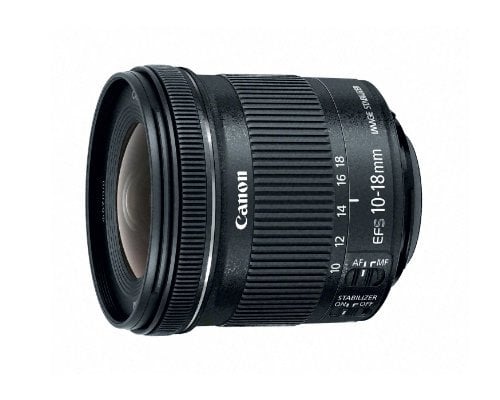
There are plenty of options for landscape photographers in the Canon lineup, but as far as mix of value and features are concerned, I especially like the Canon EF-S 10-18mm f/4.5-5.6 IS STM for shooters with an APS-C camera.
The lens is super lightweight, so it's easy to work with, but it doesn't feel cheap. That's a good combination when you need to carry it around outdoors all day long.
What's more, this lens produces images that are detailed and contrasty, with excellent color rendition.
It's also got image stabilization, which helps you take sharper photos when shooting handheld. In fact, with this lens, you can take sharp handheld images with a shutter speed of just 1/5 seconds.
The wide-angle range is obviously well-suited to landscapes, but you can give it a try for other pursuits, too, like architectural photography.
Perhaps best of all, this lens is just $280 brand new, and used pricing is even lower!
Get a complete review of this lens in the video above by Christopher Frost Photography.
Best Canon Lens for Wildlife & Sports Photography

If you're a beginner or enthusiast photographer and you want to expand your skills into wildlife and sports photography, a good lens to begin with is the Canon EF 70-300mm f/4.5-5.6 IS II USM.
The EF mount fits Canon APS-C cameras as well as full frame rigs, so if you upgrade your camera in the future, you can still use this lens.
Aside from upgradability, this lens offers excellent build quality, so it'll stand up to some abuse in the field.
Additionally, this lens has a fast autofocus system, which is exactly what you need when you're photographing animals or people that are moving at a rapid pace. It's also silent so as not to disturb wildlife when you're trying to get the shot.
Like the previous lens, this one also has built-in image stabilization that allows you to shoot at slower shutter speeds without inducing camera shake.
In other words, this is a great mid-range lens that has a lot of great features for photographers that need performance but don't have a huge budget.
Coming in at $449 brand new, this lens is more expensive than the first, but it's still certainly budget-friendly!
Editor's Tip: Are you struggling with your new lens? The problem might be that you aren't familiar with how to use it. Learn how to read the markings on your lens.
Best Canon Lens for Everyday Use
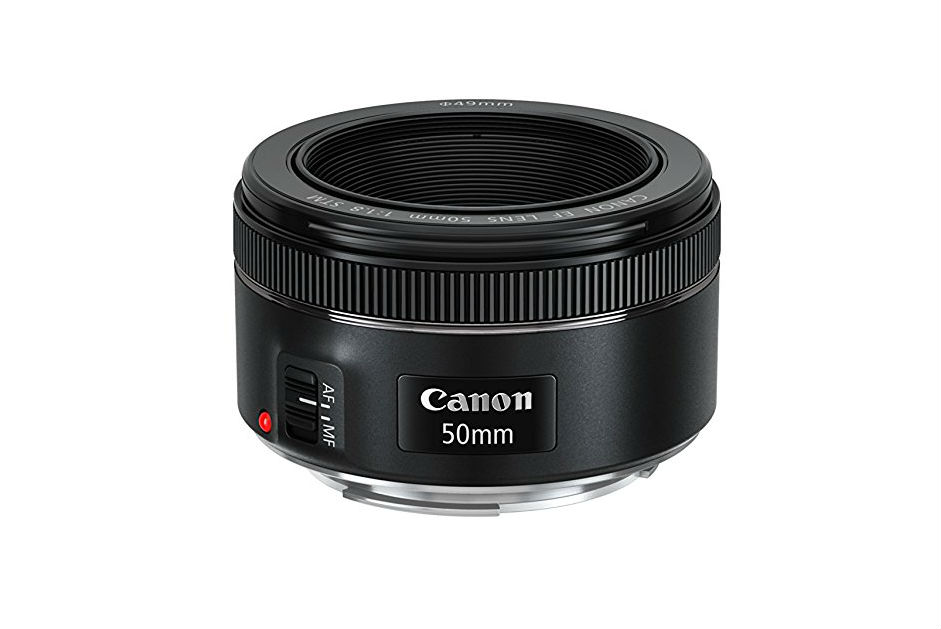
Again, it's a tough decision to determine the best Canon lenses for everyday use, but ultimately I have to recommend the Canon EF 50mm f/1.8 STM.
This little guy is actually one of Canon's best lenses, but it's also one of their least expensive.
It has excellent build quality, especially for a lens that costs $125 brand new. Better still, you can find used versions of this lens for much less!
This lens has a superb autofocus system that performs well and is smooth and quiet. The sharpness of images that can be achieved is impressive as well.
It works on APS-C and full frame cameras, too, so like the previous lens on this list, when you upgrade your camera, you can still use this glass.
I would actually recommend this as the first lens any beginner Canon shooter should buy because it's incredibly functional, extremely versatile, and, as I mentioned, inexpensive, too!
Really, no matter which of these lenses you choose to buy, you'll be getting a great deal, especially if you can find good, used lenses.
We Recommend
The Best Canon, Sony, and Nikon Lenses for Full Frame Cameras
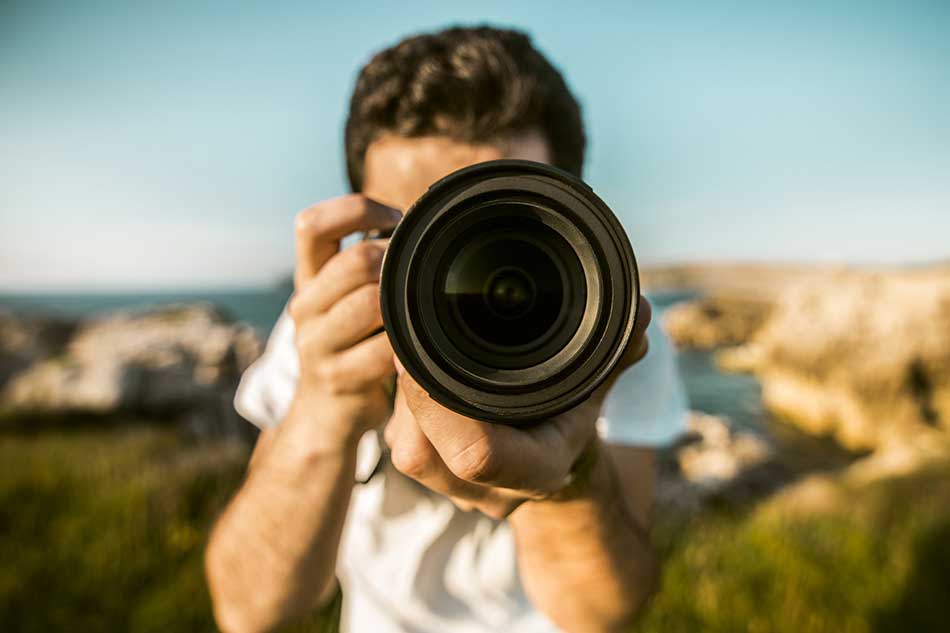
There's a lot to love about full frame cameras.
They have great low-light performance, outstanding image resolution, better dynamic range than crop sensor bodies, and since they have a crop factor of 1:1, there's no change in the effective focal length of lenses.
Better still, there's plenty of lenses for full frame cameras these days, including wide selections for Canon, Sony, and Nikon.
If you've picked up a full frame camera body from one of these manufacturers, consider the following as the best full frame lenses you can buy.
Table of Contents:
- Best Lens for Canon Full Frame Cameras: EF 24-70mm f/2.8L II
- Best Lens for Sony Full Frame Cameras: FE 16-35mm f/4
- Best Lens for Nikon Full Frame Cameras: FX 28-300mm f/3.5-5.6 ED VR
- How to Stretch Your Lens Budget
Best Lens for Canon Full Frame Cameras: EF 24-70mm f/2.8L II
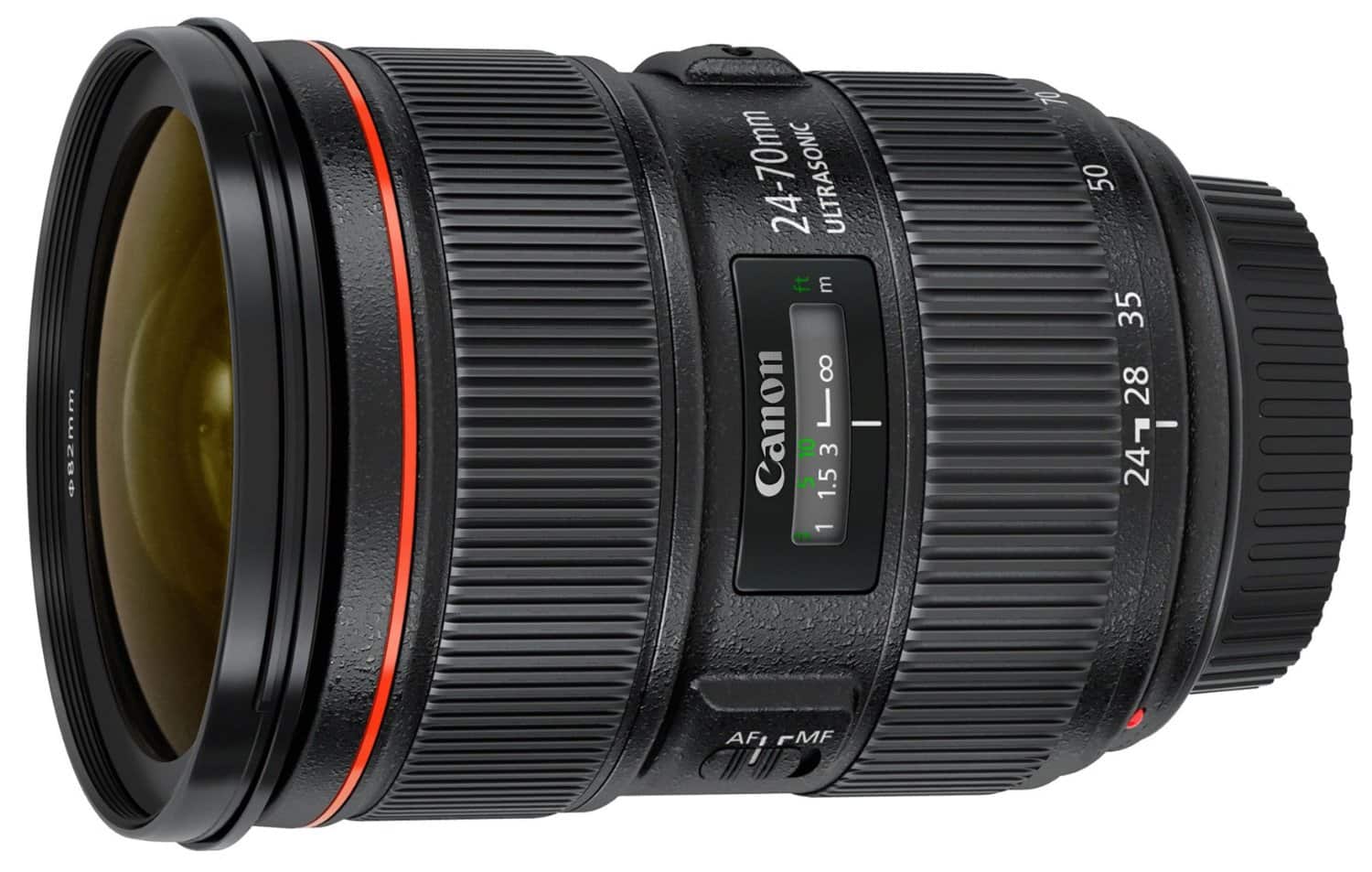
If you're only in the market to buy a single lens for your Canon full frame camera, it's hard to beat the EF 24-70mm f/2.8L II.
For starters, it's got a decent maximum aperture that'll help with low-light performance no matter the subject.
Where many other top choices max out at f/4, this one clearly beats that mark.
Additionally, it's in Canon's L-series of lenses, so you know you get premium optics and a tank-like build quality. That means sharp, clear images and a lens that'll last you for years and years.
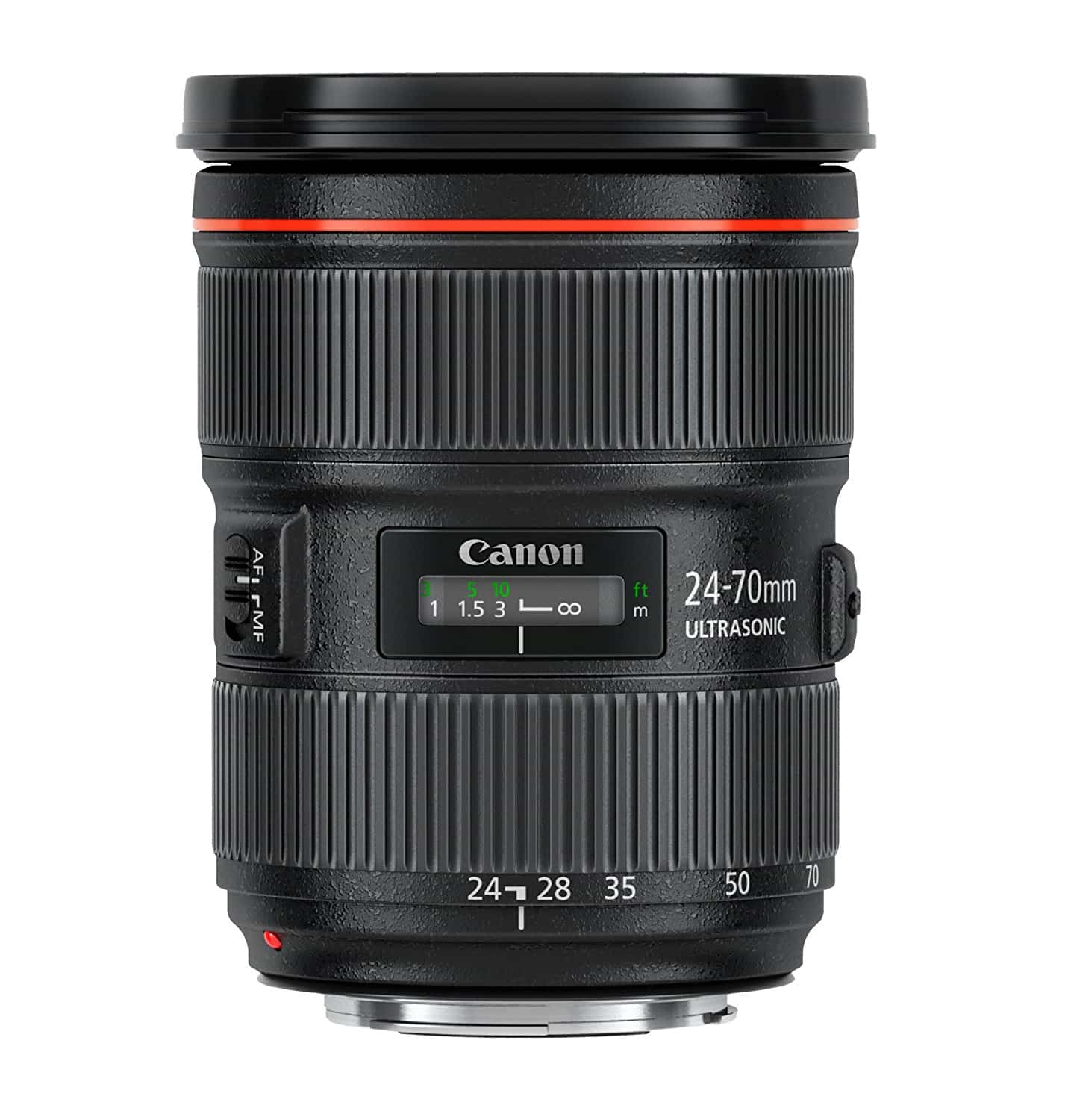
The other primary benefit of buying this lens is that it's a 24-70mm zoom.
That means you can open it up for wide-angle shots and zoom into nearly short telephoto range.
With that kind of variability, you can use just one lens for landscapes, cityscapes, street scenes, portraits, traveling...you name it.
In fact, you might find that once you have this lens, it seldom comes off. It's that good!
Learn More:
Best Lens for Sony Full Frame Cameras: FE 16-35mm f/4
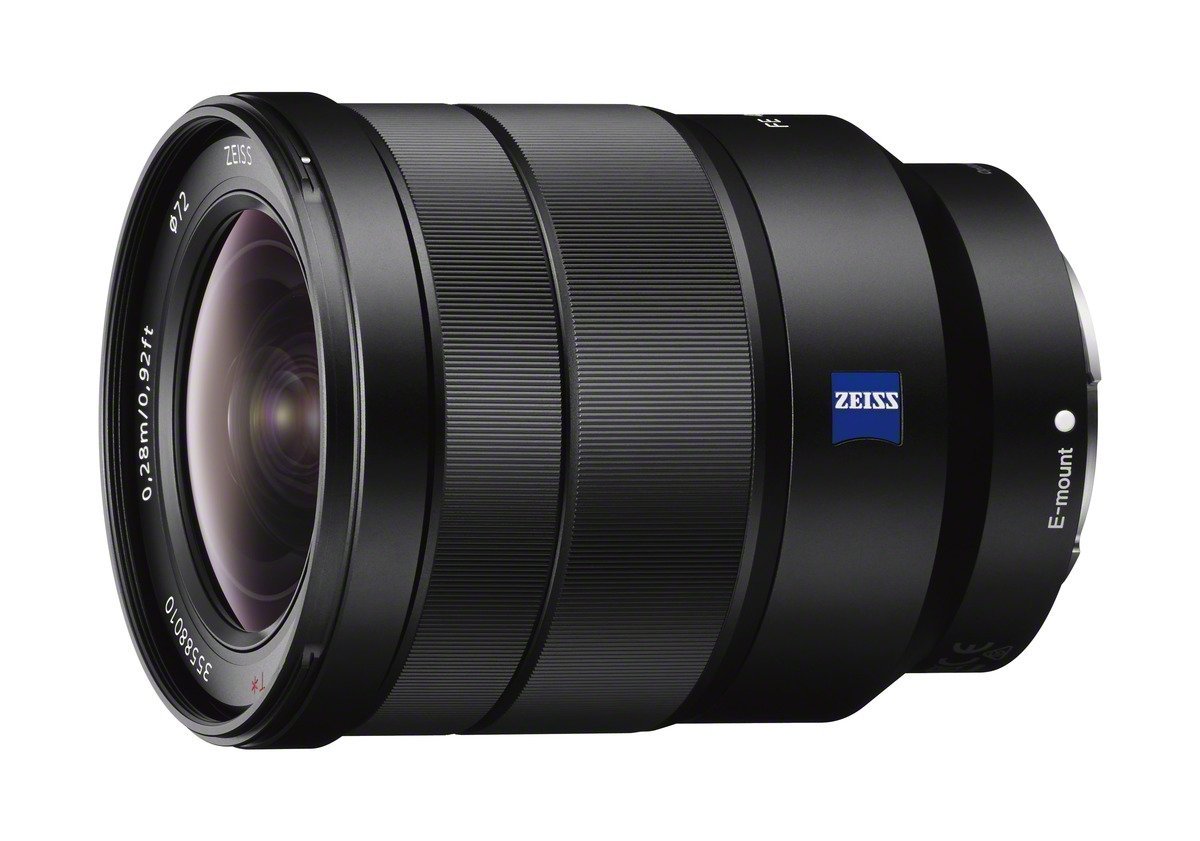
If you have an FE-mount Sony Camera, one of the first lenses you should consider buying is the FE 16-35mm f/4.
This is a great lens all the way around, but particularly if you're a landscape photography enthusiast.
It's wide-angle of view has minimal distortion, focuses fast, and is incredibly sharp - just what you want in a landscape lens.
It's also weather-sealed, so you don't have to worry about ruining your lens if it starts to rain or snow.
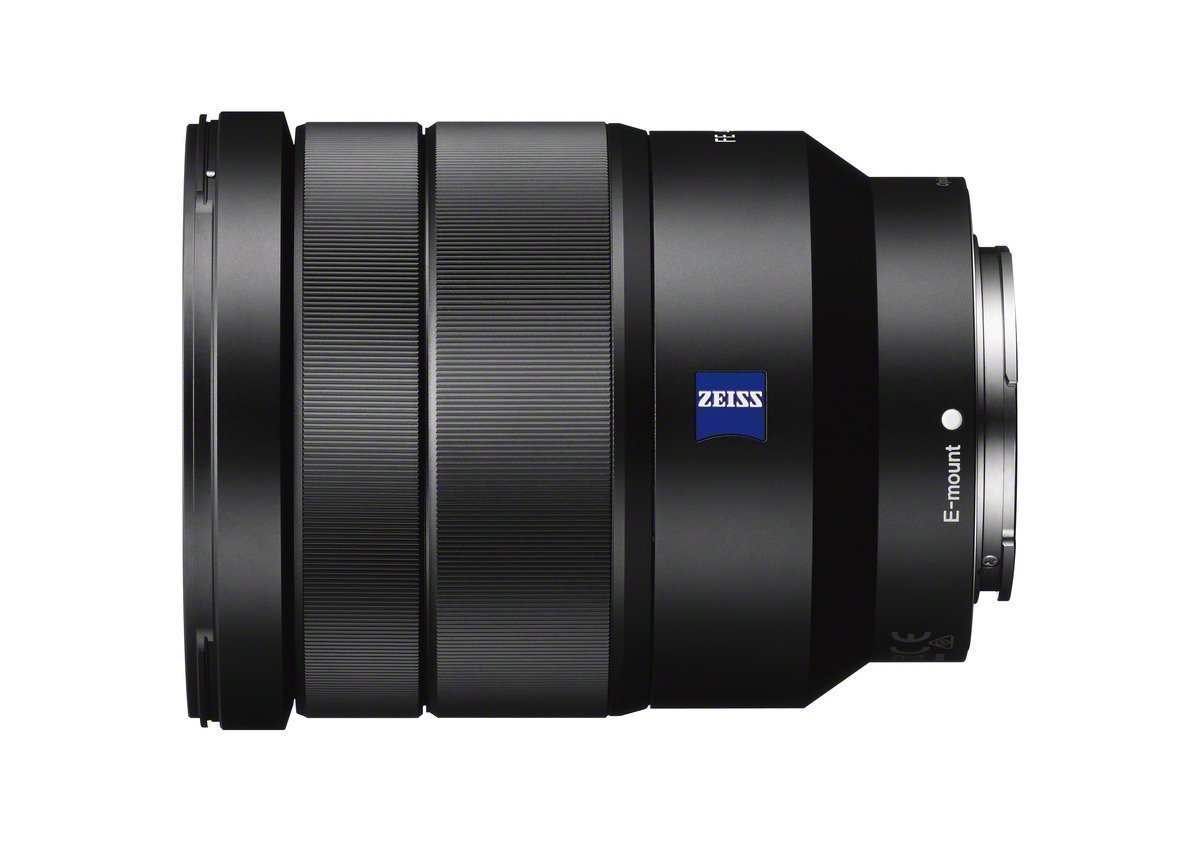
This isn't an especially big or bulky lens, either, which is nice when you're out in nature hiking from one shoot location to the next.
Some photographers thumb their nose at the fact that this is an f/4 lens, but since it's built more for landscape photography - which usually takes place when there is plentiful light - f/4 is plenty wide.
Besides, this lens is nearly $1,000 less than another top Sony pick, the FE 24-70mm f/2.8 GM.
Granted, you can get much more bang for your buck by buying a pre-owned lens, but even so, a used 16-35mm f/4 will be significantly cheaper than a used 24-70mm f/2.8.
Learn More:
Best Lens for Nikon Full Frame Cameras: FX 28-300mm f/3.5-5.6G ED VR
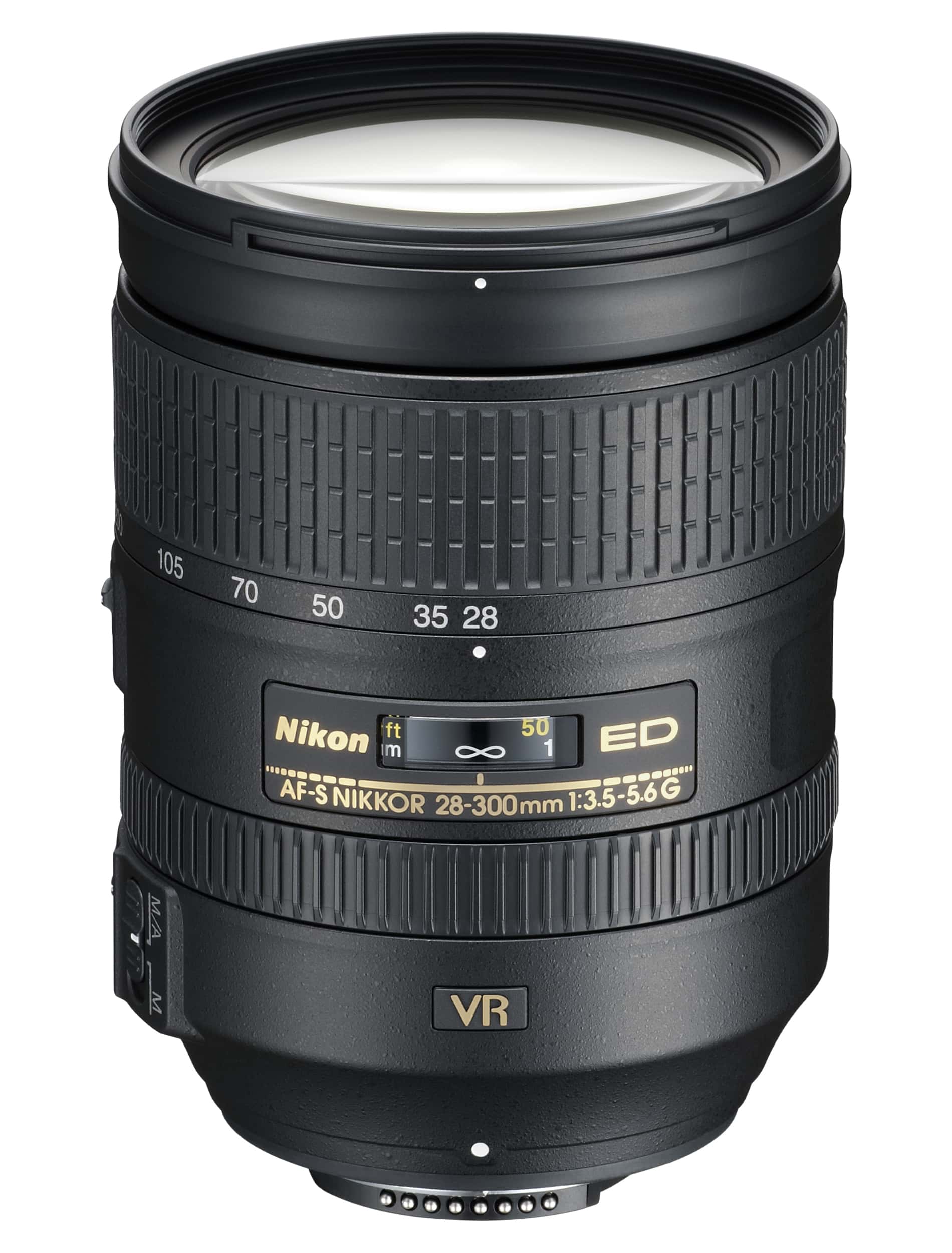
Photographers that have bought into Nikon's full frame system - the FX line - enjoy one of the most robust collections of lenses available today.
And though there are other lenses that might have better low-light performance or faster focusing or less distortion at the ends than the 28-300 f/3.5-5.6G ED VR, it holds one very important feature over other Nikon lenses - versatility.
It's just impossible to beat a lens that allows you to take wide-angle, standard, and telephoto shots without having to swap out lenses!
Like the Canon lens I discussed earlier, if you're looking for a one-size-fits-all sort of lens, this is it.
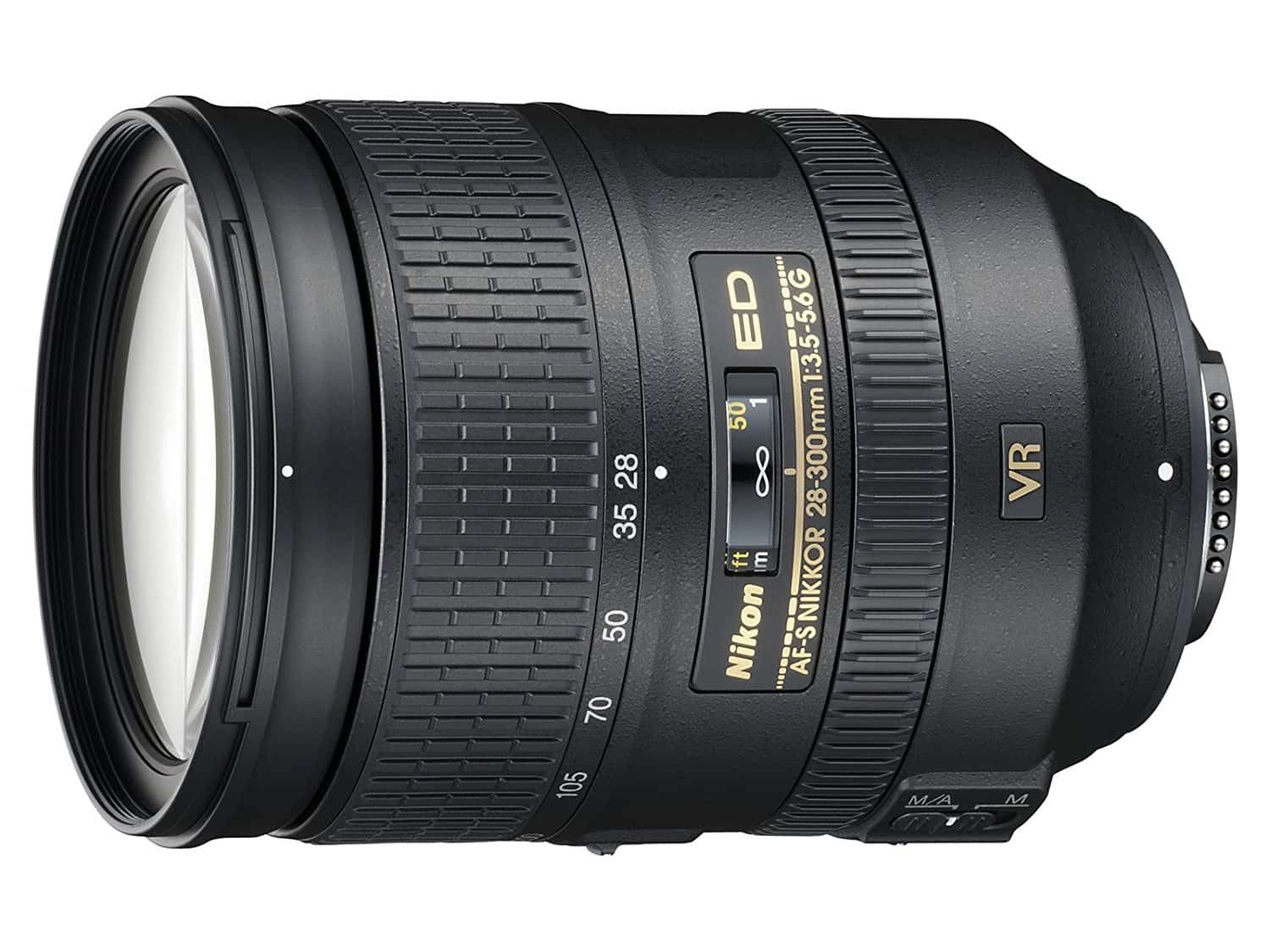
Apart from some noticeable distortion when shooting toward the minimum and maximum focal lengths, this lens offers sharp results throughout its focal range.
It also has Nikon's Vibration Reduction feature, so you can more effectively hand hold your camera at slower shutter speeds without worrying as much about camera shake.
Another feature that's worth noting is its size. At just over 28 ounces, it's not a featherlight, that's for sure. However, compared to many of Nikon's other zoom lenses, it's actually on the lighter side of the FX line.
So, if you're in the market for a single lens that can do it all with your Nikon FX camera, give the 28-300mm f/3.5-5.6G ED VR a good, long look.
Learn More:
How to Stretch Your Lens Budget
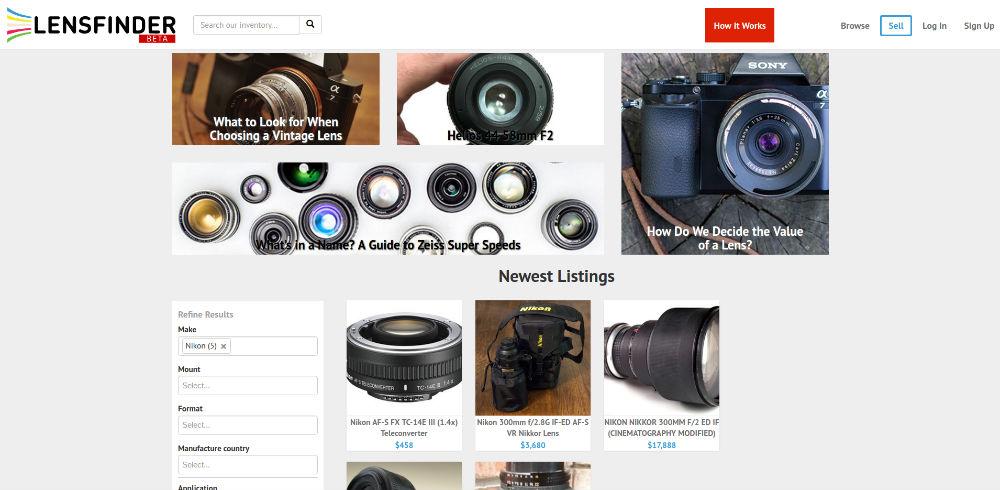
Full disclosure, none of the lenses on this list are what I would call affordable for most people. After all, at just under $1,000, the Nikon lens is the cheapest of the bunch.
But good lenses like these are typically quite pricey, and since good glass is much more important for getting a high-quality image than any other piece of photography gear (the camera included!) it's worth it to splurge on a good lens.
Of course, buying a new lens doesn't have to be so expensive because there's all sorts of ways to get your hands on a good used lens.
I've tried things like eBay and Craigslist over the years, and though I had a couple of good experiences, they mostly left me feeling like I was assuming all the risk of the deal. That's when I switched to using Lensfinder for buying and selling used lenses.
What's so great about Lensfinder is that it's all about lenses. That means that if I'm looking for a specific lens, I don't have to sift through a bunch of unrelated posts (like eBay) to find what I need.
Likewise, if I want to sell one of my old lenses, the process is a breeze. Just create the listing (which you can do for free), communicate with potential buyers right within the Lensfinder marketplace, and when the lens sells, you collect your money via PayPal.
It doesn't get much easier than that...
Plus, Lensfinder has buyer and seller protection options, mediation services in case something goes awry, and a seller feedback system so you know who's been operating on the up-and-up. Lensfinder even uses advanced fraud filtering to ensure the listings in the marketplace are legitimate.
In other words, it's simply the best option for buying and selling pre-owned lenses (and for saving a few bucks, too!).
If you want a lens for your full frame camera, see what you can find on Lensfinder.
We Recommend
The Best Lens for Landscape Photography
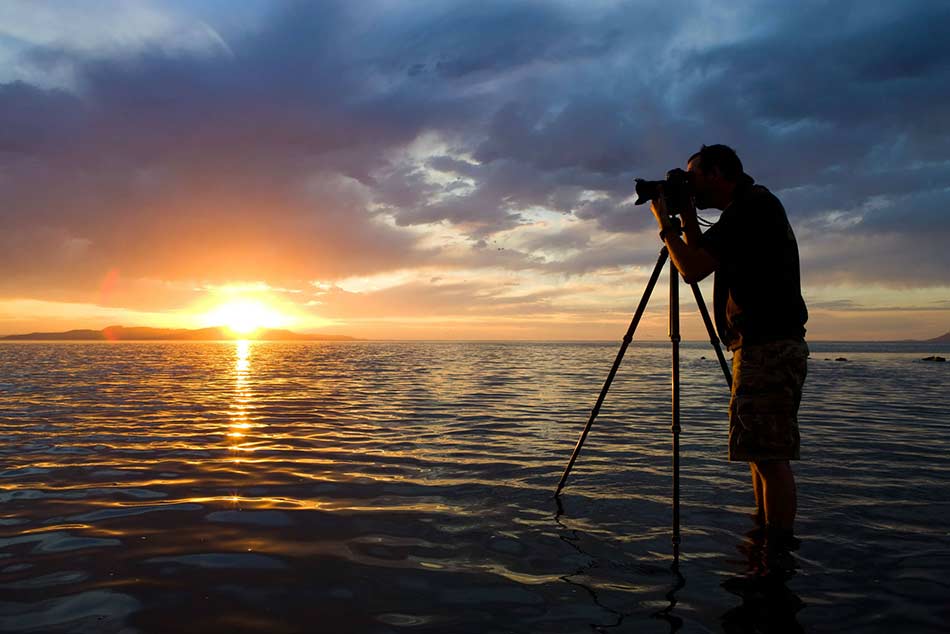
If I took a poll and asked 100 photographers to answer the question - "What's the best Canon lens for landscape photography?" - I wouldn't be surprised at all if the vast majority of them answered "wide-angle."
And while there's nothing wrong with that answer, there's a problem.
The best landscape lens for one situation isn't necessarily the best one for another situation.
That means that while wide-angle lenses are awesome for many landscapes, sometimes the situation calls for something different.
Let's explore a few options for the best lens for landscape photography and discuss why they are considered the best. You can read about Nikon wide angle lens on our website PhotographyTalk.com.
Editor's Tip: Looking for the best landscape photography lens to add to your bag? FIND AWESOME LENSES FOR GREAT PRICES.
Best Lens for Landscape Photography: Wide-Angle Lenses

Depending on your camera system, wide-angle lenses are usually 35mm or less (for full frame cameras) and 24mm or less (for crop sensor cameras).
Shooting landscapes with a wide-angle lens has its advantages and disadvantages.
On the positive side, a wide-angle lens allows you to capture more of the scene. This can be beneficial when you're photographing a vast landscape like the one shown above.
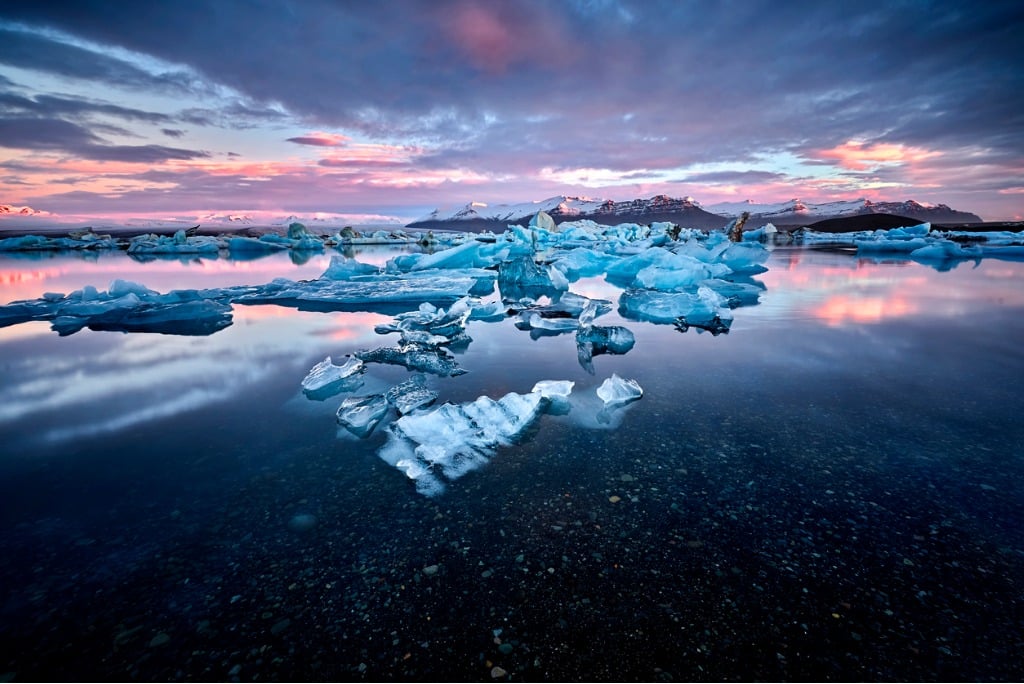
What's more, wide-angle lenses have a larger depth of field at any given aperture than other lenses. That means you can keep more of the scene in sharp focus.
These lenses are also helpful for incorporating foreground interest into the shot.
As you can see below, the inclusion of the elements in the foreground help draw the eye into the photo, thereby encouraging us to explore the image more fully.
But those benefits come at a cost.
Far-off features will appear quite small in a wide-angle shot. Sometimes, that makes landscapes look a little empty.
Additionally, if you shoot with a super-wide-angle lens, like a 12mm or a fisheye, there's significant distortion of the scene.
Sometimes that distortion can be used creatively, but in some cases, it just doesn't look right for the landscape shot. Nevertheless, a wide-angle lens is considered by many to be the best lens for landscape photography.
Get a few top tips for shooting landscapes with a wide-angle lens in the video above by Adorama TV.
Best Lens for Landscape Photography: Standard Lenses
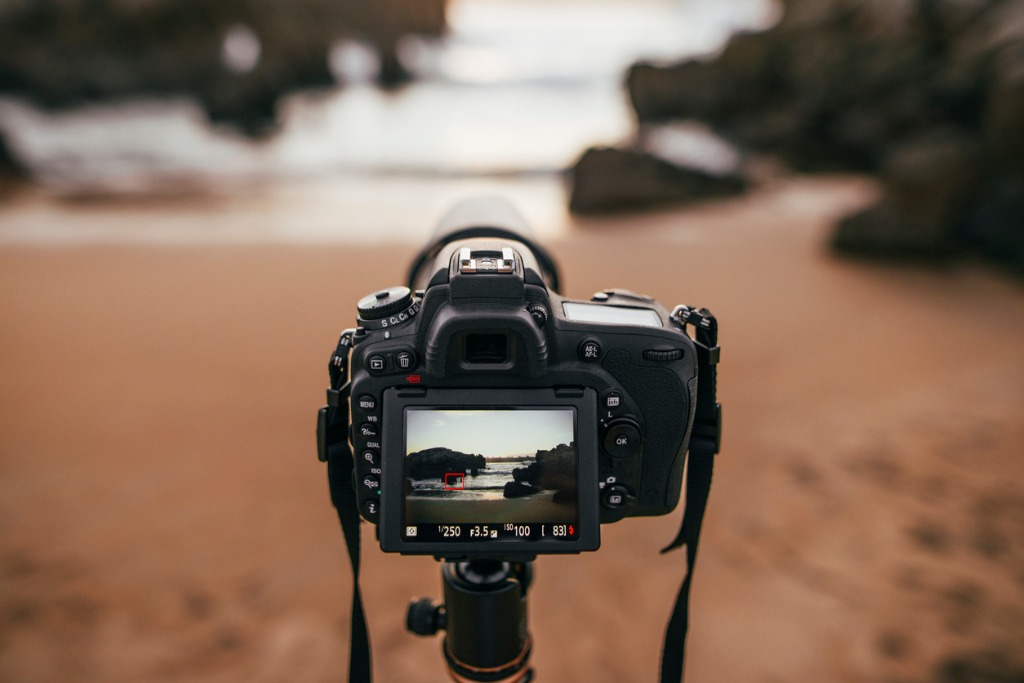
With a field of view that's similar to what we see with our own eyes, standard lenses (in the 50mm range on full frame cameras and 35mm on crop sensor cameras) capture landscapes in a way that looks and feels familiar.
Additionally, with slightly more focal length, standard lenses help you create landscape images that are more intimate and focused - focused in the sense that there is a narrower field of view in the shot due to the increased focal length.
Standard lenses are often prime lenses as well - with a fixed focal length.
And since prime lenses often have a very large aperture, they are ideal for photographing landscapes in low-light situations because of all the light that their larger apertures can collect.
Prime lenses are typically sharper than zooms, too, so you can get nicely detailed, sharp photo with a prime lens for landscape photography.
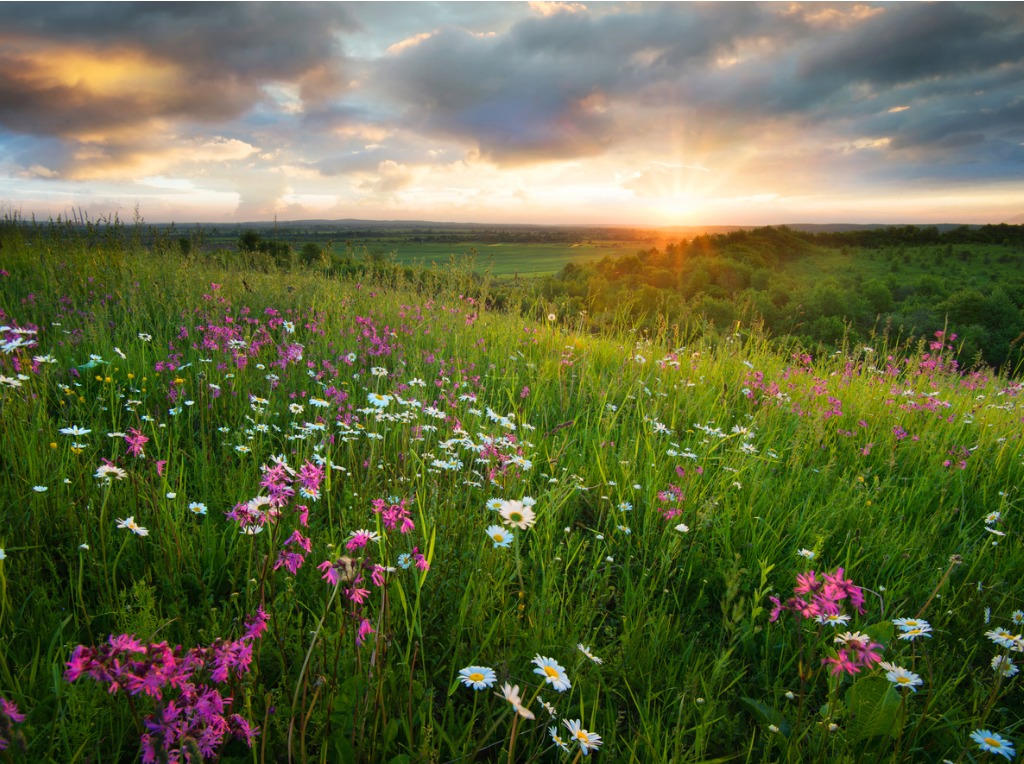
The only downside to a standard prime lens is that with a fixed focal length, you're perhaps more limited in how you frame the shot than you would be with a zoom lens.
However, all you have to do to get around this "obstacle" is to zoom with your feet, and physically get nearer or further away from the subject.
This can take some getting used to, but once you get the hang of not reaching for your lens to adjust the focal length, you can create some magical results with a prime lens for landscapes.
Best Lens for Landscape Photography: Telephoto Lenses
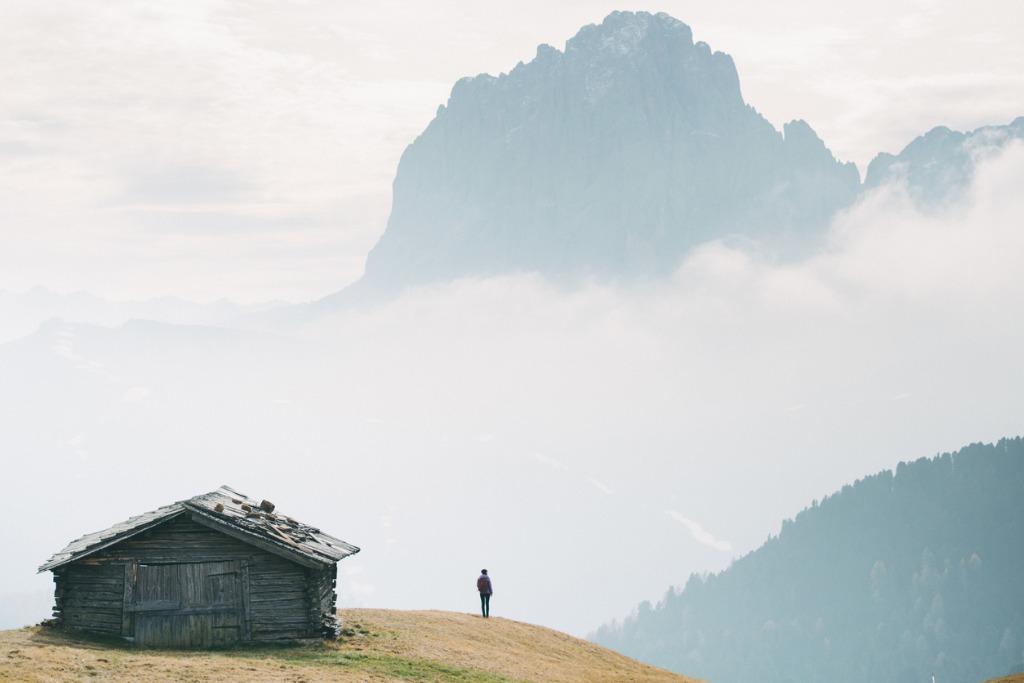
With all that focal length (about 85mm and above on a full frame camera and 50mm and above on a crop sensor camera), a telephoto lens can get you up close and personal with elements in the landscape.
That's on the opposite end of the spectrum from a wide-angle view, but that's not a bad thing. Sometimes capturing the details of a landscape is what's most important.
Filling the frame with a mountain peak, a tree, or another landscape element can have a highly dramatic effect.
What's more, telephoto lenses compress distance, so far-off elements appear larger in the frame.
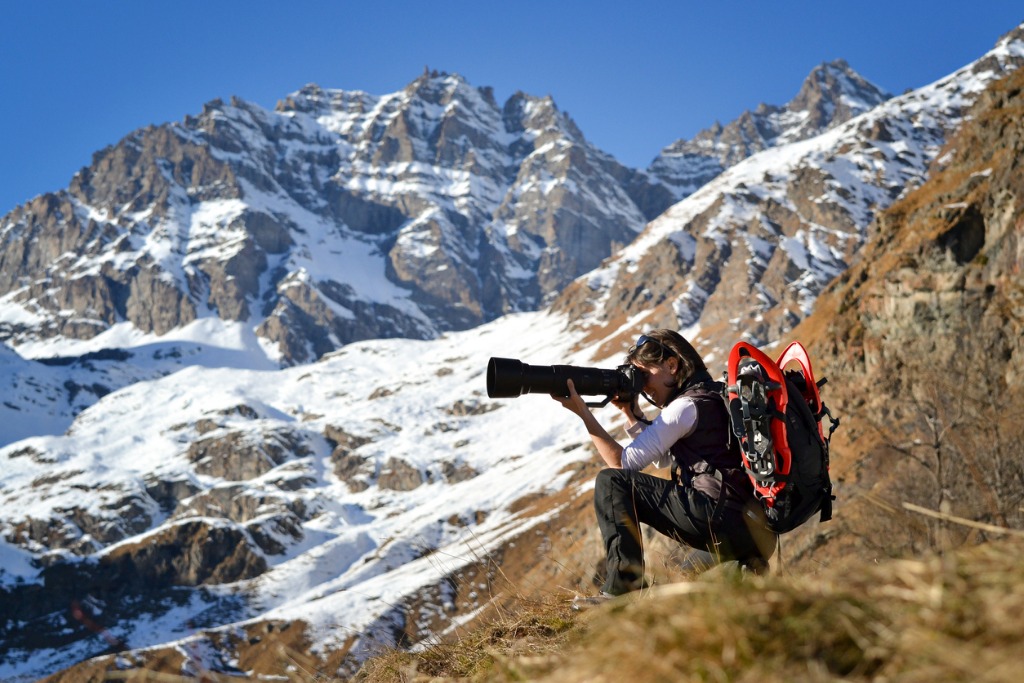
Of course, these benefits come at a cost...
Not only are telephoto lenses typically more expensive (especially the longer the focal length) but they are also much bigger and heavier.
Editor's Tip: Get outfitted with a high-quality telephoto lens without busting your budget. Start your search here.
If you're adventuring for a day and carrying a big telephoto lens, your shoulders and back will likely start to feel it.
Telephoto lenses can be a bit unwieldy, too, requiring a monopod or tripod in many situations to keep them stable.
The Verdict: The Best Lens for Landscape Photography
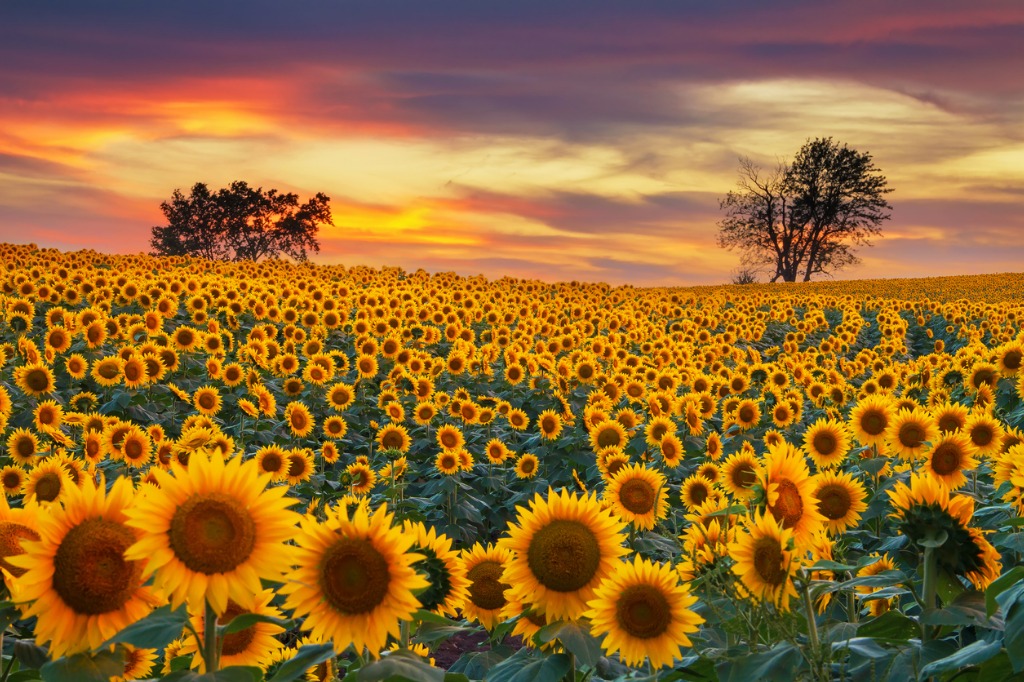
When it comes down to it, the answer to our question - what's the best lens for landscape photography - is that it depends.
The lens you choose to photograph landscapes with should jive with what interests you most about the landscape and how you feel the landscape would be best photographed.
If you're particularly drawn to the compressed look that's achieved with a long focal length, go with a telephoto lens.
If you prefer the wide, vast vistas captured with a wide-angle lens, go that route.
Some lenses actually bridge the gap between wide-angle and telephoto.
One of the best Nikon lenses for landscape photography is the Sigma 24-105mm f/4 Art DG OS HSM. On a full frame camera, you can shoot wide at 24mm, standard at 50mm, and telephoto at 105mm.
One of the best Canon lenses for landscape photography is the Canon EF 17-40mm f/4L USM. On a crop sensor camera, it gives you wonderful range from standard to telephoto, and on a full frame camera, it offers excellent wide-angle and standard views.
Hopefully, with the breakdown of the pros and cons of wide-angle, standard, and telephoto lenses, you can make an informed decision about what the best lens for landscapes is for you.
For more insights on landscape photography lenses, check out my video above!
We Recommend
The Best Lenses for Travel Photography
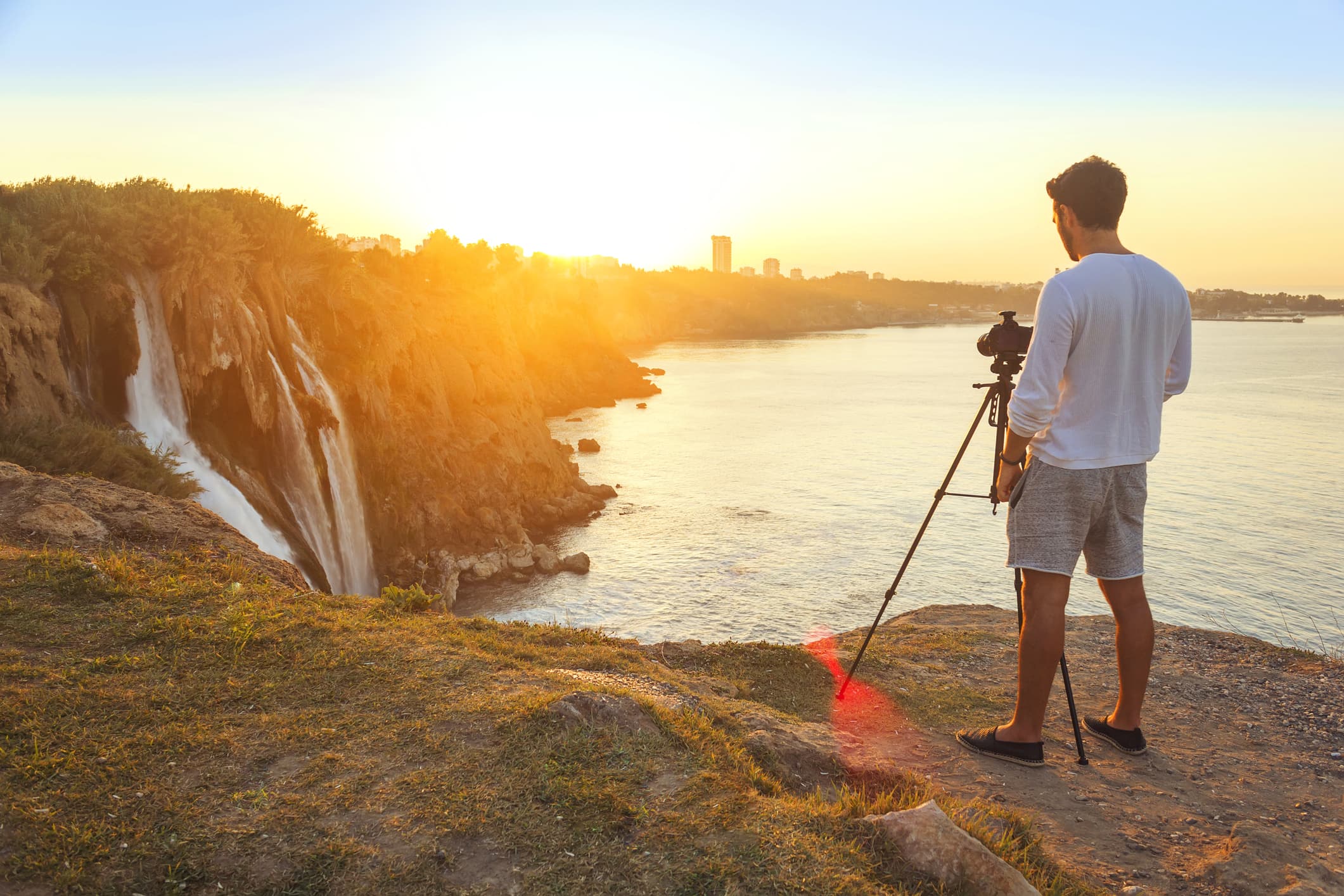
Buying any lens is a big deal because you want to be sure you get something that helps you take better photos.
But when you're looking for the best lenses for travel photography, the stakes are a bit higher...
Why?
Well, once you head out on your travels, it's a little hard to change your mind about the lenses that you've brought with you!
That being the case, it's necessary to do your due diligence and ensure that you pick up the very best lens for your travels.
Fortunately, we have experts like MitchellKPhotos to offer some advice regarding the best travel photography lenses.
In the video above, Mitchell draws on his expertise to provide a number of high-quality recommended lenses that will take you places on your travels.
Below, I've provided a few features you should look for in the ideal travel photography lens and provided links to some recommended lenses as well.
Editor's Tip: Not sure what lens to add to your bag next? Learn why a 50mm lens is a good choice for any photographer.
What to Look for in a Travel Photography Lens
Though every trip is a little bit different and each photographer has slightly different needs, there are a few features that are vitally important for any travel photography lens.
Size and Weight
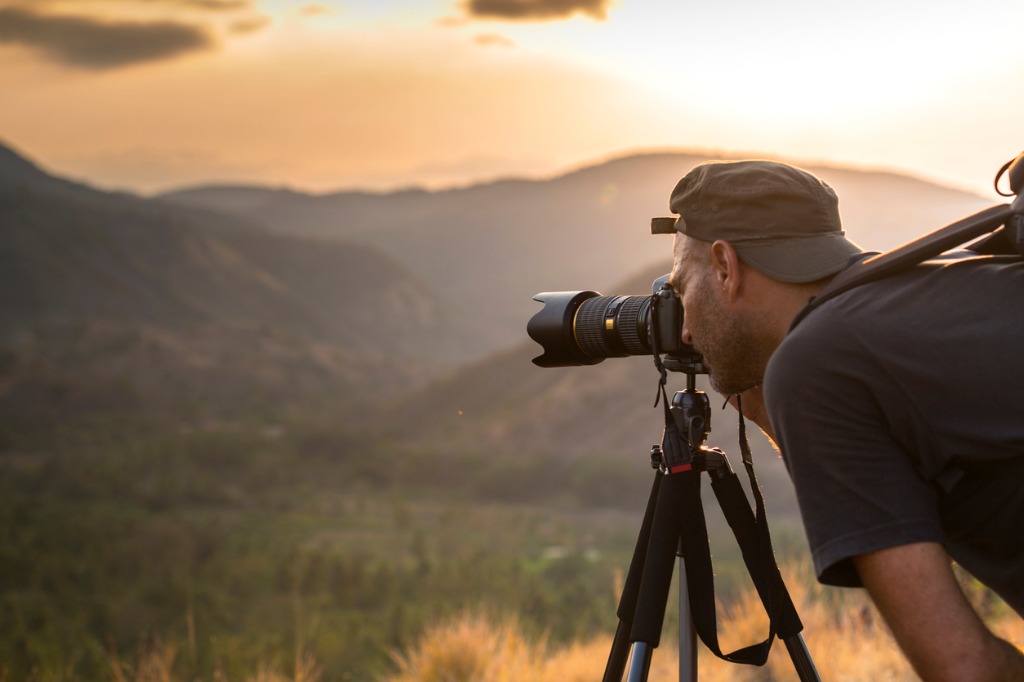
When you're traveling, you don't want a 14 pound 600mm super telephoto lens to lug around...
Instead, you want a travel photography lens that's easy to pack and carry around. That means finding something that's got a relatively small form factor and which doesn't weigh a ton.
This is important not just from the perspective of being able to fit all your gear in your bag, but it's also important from the perspective of meeting airline bag size restrictions.
Naturally, you don't want to lug a big, heavy bag around, either, so you want to maximize how much you can carry by opting for lighter weight lenses.
As an aside, not only do you want a smaller, lightweight lens, but you also don't want to take every lens you have in your kit.
The more gear you take, the more gear you have to carry, to lose, or to get stolen!
In this case, less is often more, so opting for a solid lens or two is usually best.
Lens Speed
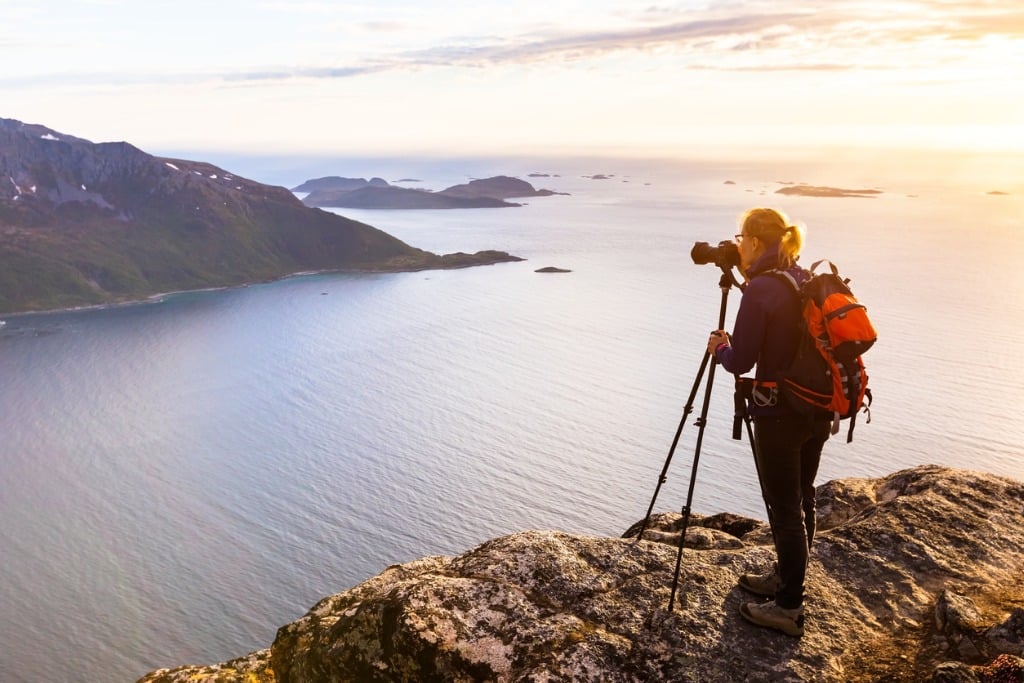
Because you'll only be taking a couple of lenses on your trip, you want to be sure that you've got something that can be used from sunup to sundown, indoors and out, and everywhere in between.
To accommodate those low-light shots indoors and out, you need a lens that's got a wide maximum aperture.
By taking a f/1.4 lens, for example, you're better equipped to take photos in museums, galleries, and other indoor locations in which a flash might not be allowed.
Paired with boosting the ISO, you can take high-quality low-light shots without having to slow the shutter speed down or dealing with the possibility of camera shake.
Granted, f/1.4 lenses can be quite spendy, so if that's something that's out of your budget, get the fastest lens you can afford (many f/1.8, f/2, and f/2.8 lenses are priced very well).
Lens Versatility
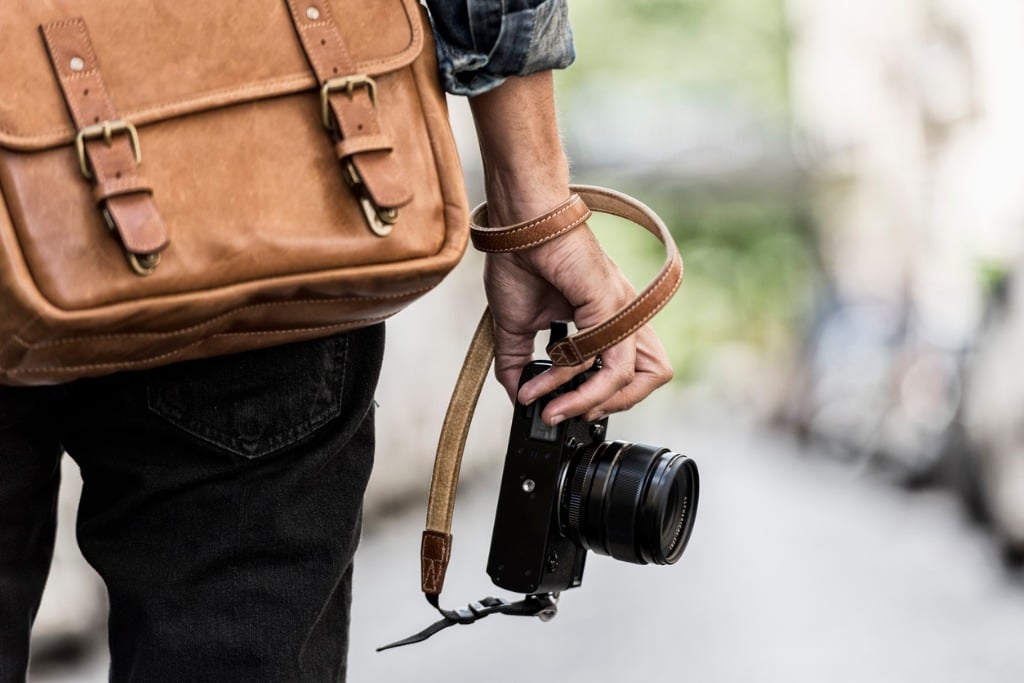
Versatility is the name of the game for travel photography lenses.
As I noted earlier, taking a 600mm super telephoto lens on your trip is silly (unless you're only photographing wildlife, I suppose) not just from a size and weight point of view, but also from a versatility point of view.
On your travels, you need a lens that can accommodate landscapes, portraits, architecture, and everything in between.
Additionally, you need something that can be used from near the subject, far away, in bright light and in low lighting as well.
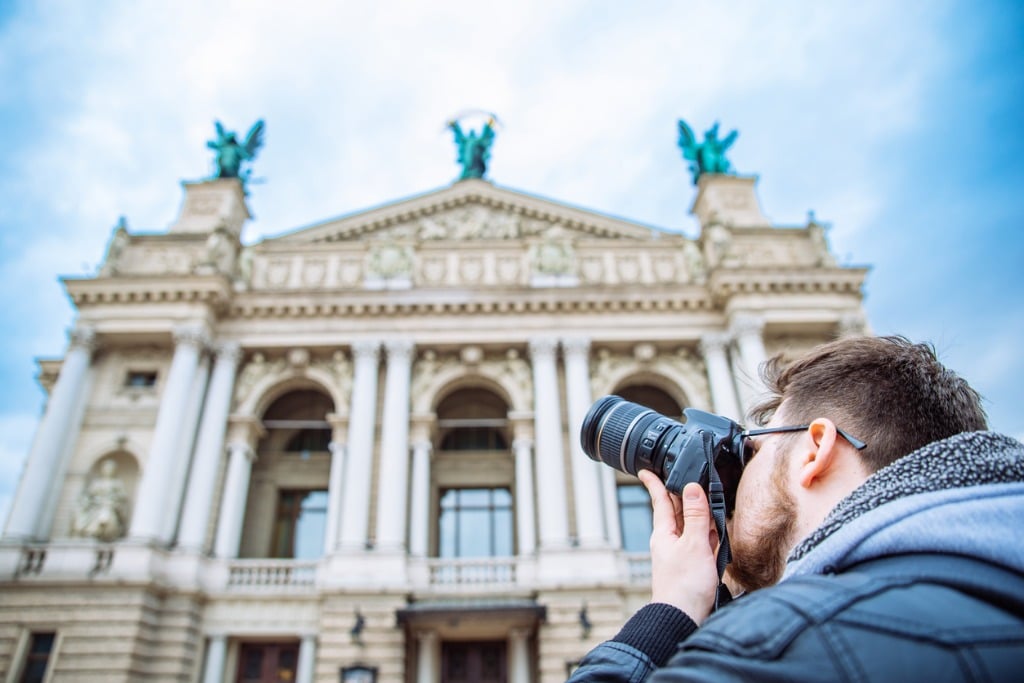
For many travel photographers, this means having a single zoom lens that has a wide focal range to accommodate everything from close up portraits to distant landscapes.
For other travel photographers, that means taking a couple of versatile prime lenses.
Perhaps for you, a good zoom lens and a good prime lens is the way to go.
Of course, the lenses you choose will depend on where you're going and the subject matter you intend to photograph, but there are a few lenses that Mitchell recommends above all others...
Learn More:
- This 18-400mm Lens Might Be the Only Lens You Ever Need
- Camera Lens Guide: Things to Consider When Buying a Lens
Best Lenses for Travel Photography
As noted above, there's no "perfect" lens for every single travel photographer.
However, there are some that stand head and shoulders above the rest as the best options for most travel situations.
Best Travel Zoom Lens for Full Frame Cameras: 24-70mm
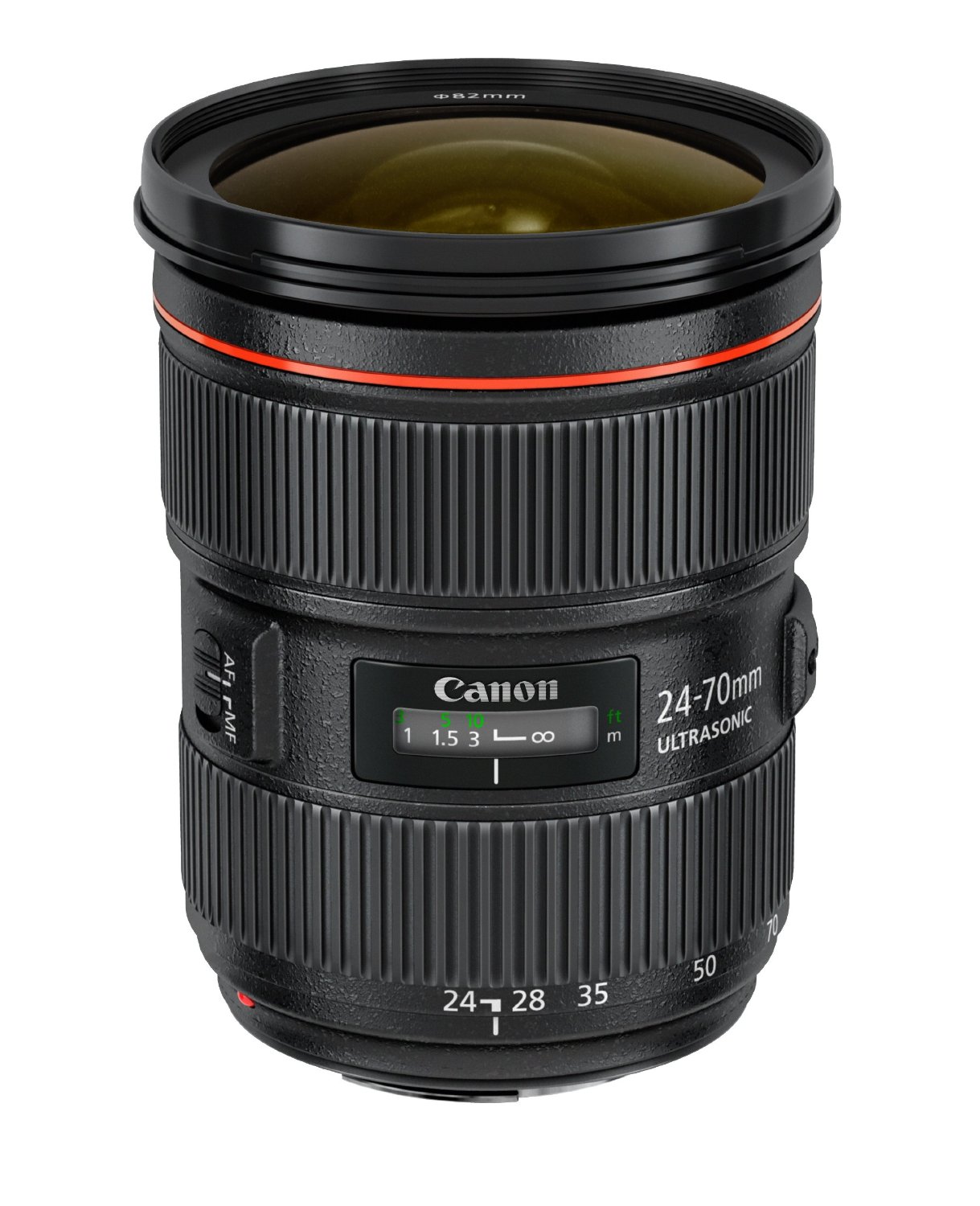
The best thing about at 24-70mm lens is its versatility.
On a full frame camera, you can shoot wide-angle to short telephoto, which means you can photograph just about any subject with this single lens.
Some versions of this lens have a nice, wide aperture, too, so they can accommodate low-light shooting as well.
Many 24-70mm lenses (like the Canon 24-70 f/2.8 shown above) are also small and lightweight, so they're easy to carry around and won't draw too much attention when you're walking the streets of a foreign city taking photos as you go.
Best Travel Zoom Lens for Crop Sensor Cameras: 17-55mm
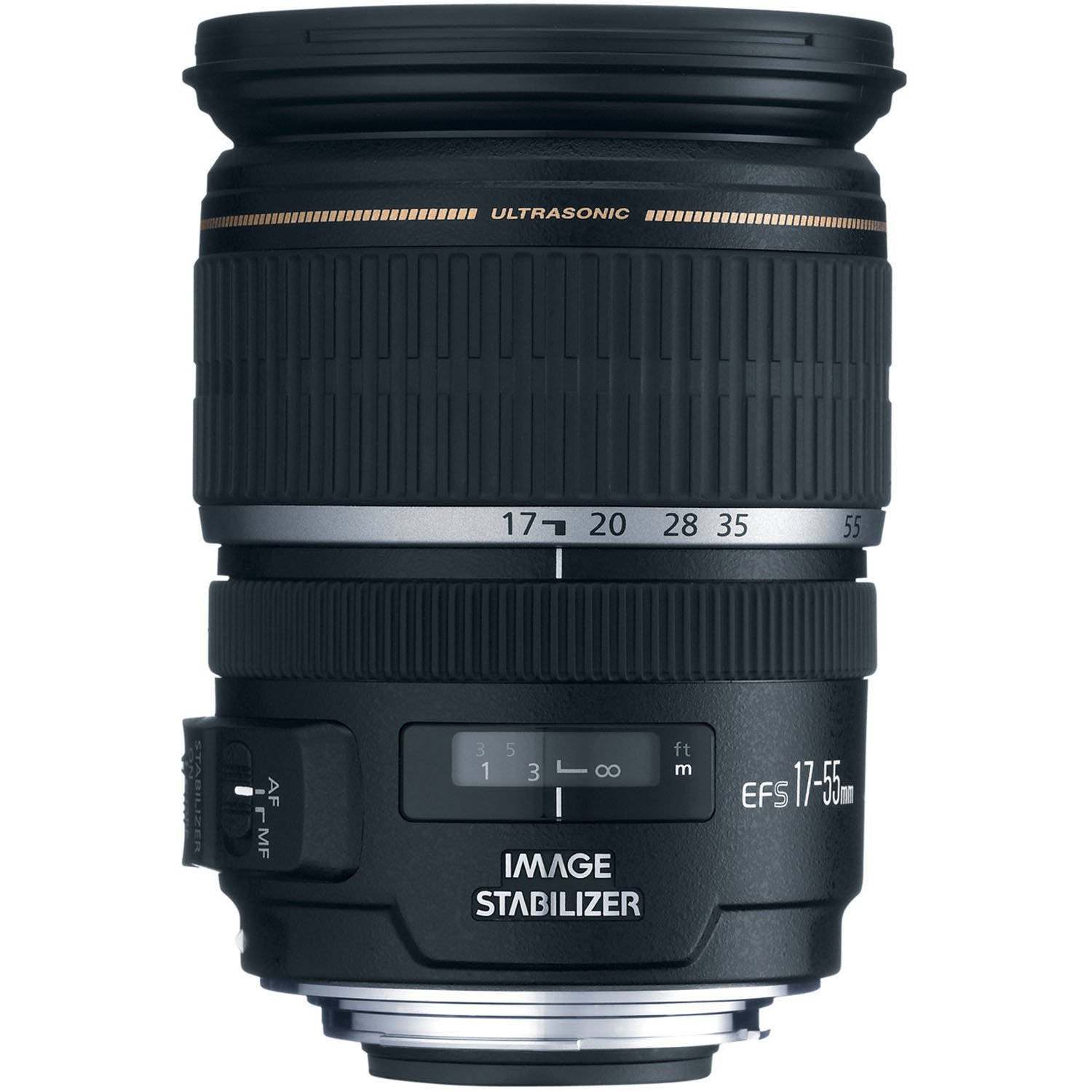
Since crop sensor cameras have a smaller sensor than a full frame, they increase the effective focal length of the lens that's used with the camera.
For example, on a full frame camera, a 50mm lens behaves like a 50mm lens.
However, that same lens on a Canon crop sensor camera might behave like a 75mm lens, an 80mm lens, a 100mm lens, or somewhere in between depending on the crop factor of the camera.
That being the case, it's wise to opt for a zoom lens in the 17-55mm range because once crop factor is factored in, you get roughly the same focal range as a 24-70mm lens.
Again, the range of focal lengths that these lenses offer is ideal for traveling because many of your subjects will be ideally suited for wide-angle to short telephoto lens work.
Though cameras often come with kit lenses that are in this focal range, it's prudent to upgrade your kit lens with something else that's faster. The Canon 17-55mm f/2.8, for example, is a nice choice for upgrading your kit lens.
Best Travel Prime Lens: 35mm
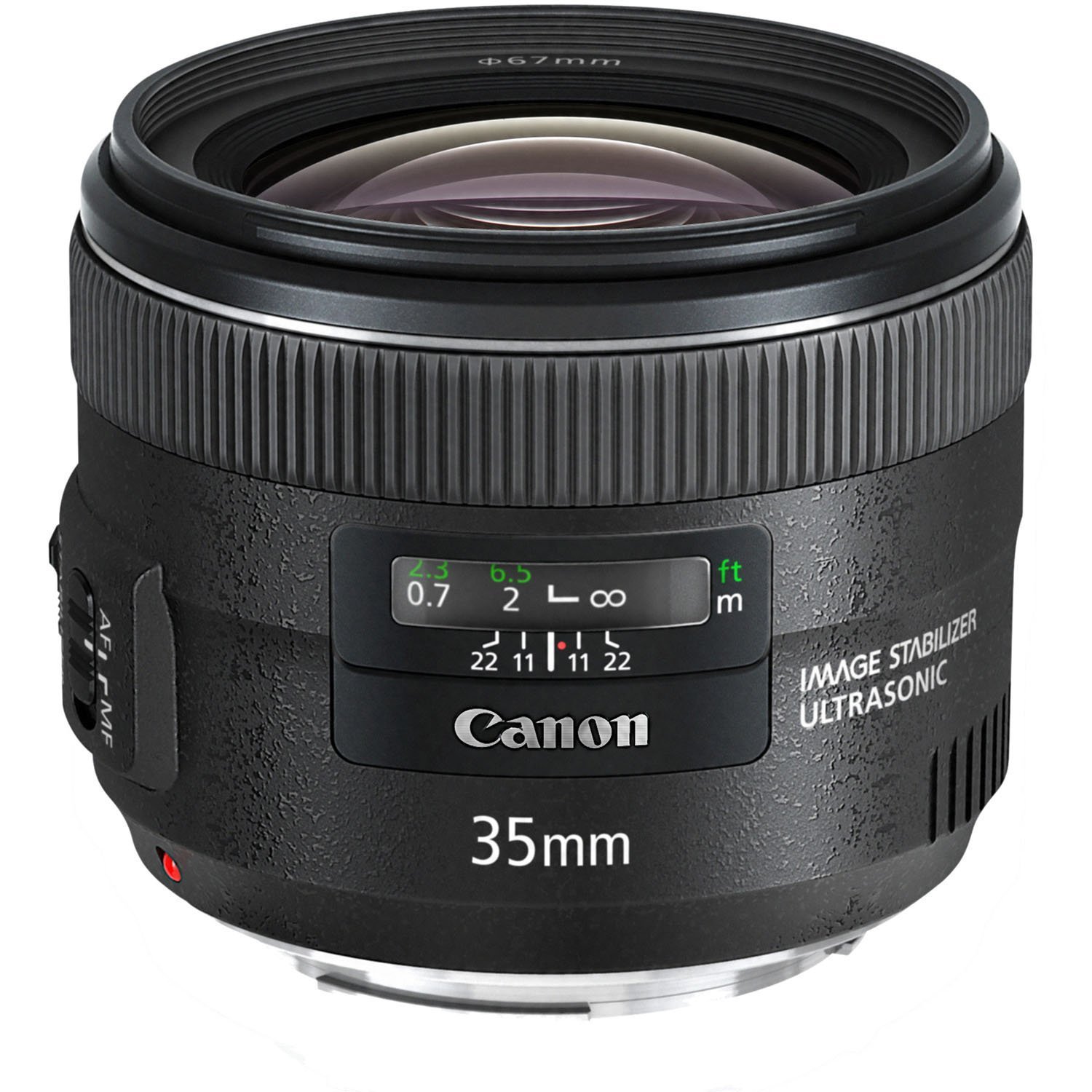
Whether you have a full frame camera or a crop sensor, a 35mm lens (like the Canon 35mm f/2 shown above) is a great option for travel photography.
These lenses check all the boxes when it comes to travel photography lenses - there are small, lightweight options that are fast and versatile.
You can use a 35mm lens for taking portraits of locals on the street, wide shots of nearby landscapes, photos of the night sky, daytime shots of architectural gems, and virtually anything in between.
In fact, a 35mm prime lens is one of the best walkaround lenses you can have in your bag, simply because of the incredible versatility of this focal length.
Just zoom with your feet to change the framing of the shot, and you can probably get away with using a 35mm lens - and only a 35mm lens - most days that you travel.
Editor's Tip: Not sure what all those numbers mean on your lens? Learn how to read the markings on your lens.
Buy Pre-Owned Travel Photography Lenses
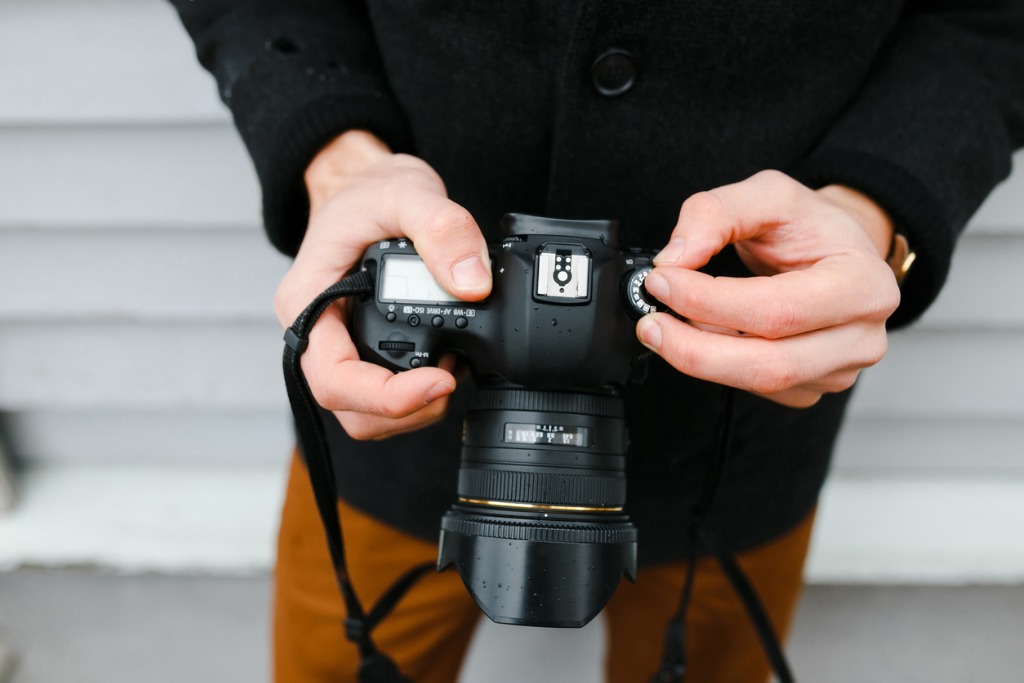
As noted earlier, fast lenses tend to be pricey, which is why you should strongly consider buying a pre-owned lens.
Finding a high-quality used lens allows you to get more lens for the money without breaking the bank.
That, in turn, means that you might be able to get two used lenses for the price of one new one, which is a nice tradeoff!
Additionally, you can always sell your old lenses and use the money you make to finance your travel photography lens purchase.
Just be smart about where you buy and sell your lenses, and you'll find that it makes the job of finding travel photography lenses much, much easier.
Learn More:
We Recommend
The Best Lenses for Wedding Photography
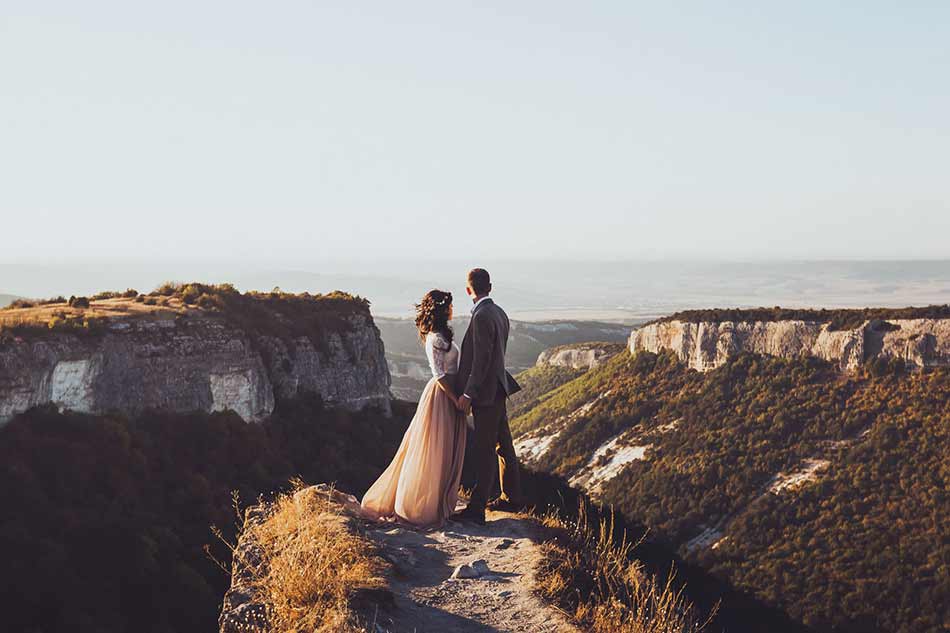
One of the great things about being a photographer these days is the incredible array of gear that's available to us.
I mean, you can shoot with anything from your smartphone to a Canon 5D Mark IV to a Leica film camera and get great results.
Likewise, you can use anything from a wide-angle to a telephoto lens for beautiful portraits.
But with all that selection comes a little confusion. I think that's particularly the case when it comes to lenses.
So, the question is, what are the best lenses for wedding photography?
In the video above, Mango Street provides their answer to the question.
Granted, just about every wedding photographer is going to give you a slightly different version of the answer, but this is a great place to start.
Editor's Tip: If you need another lens for your camera bag, don't buy one until you read about THE VIRTUES OF HAVING A PRIME LENS.
Best Canon Lens for Weddings: 35mm f/1.4 II
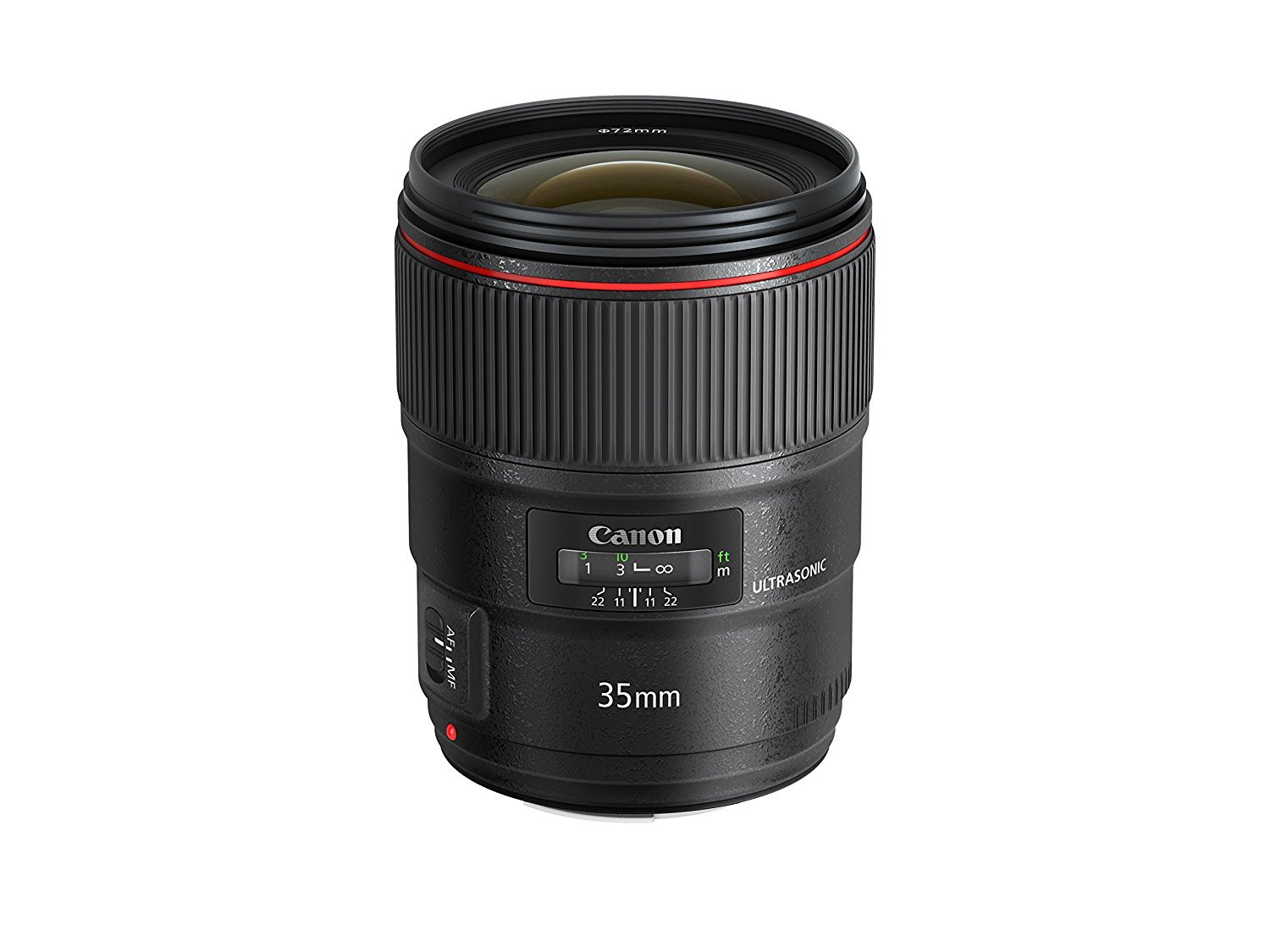
Released in August of 2015, the Mark II version of this lens quickly became a favorite of wedding and portrait photographers.
It's easy to see why, too.
Not only is the 35mm focal length ideal for portraiture when shooting with a full frame camera, but this particular lens also offers excellent performance.
The dual aspherical elements combined with the Ultra Low Dispersion element means that chromatic aberrations and color fringing are minimized, which gets you clear, sharp images.
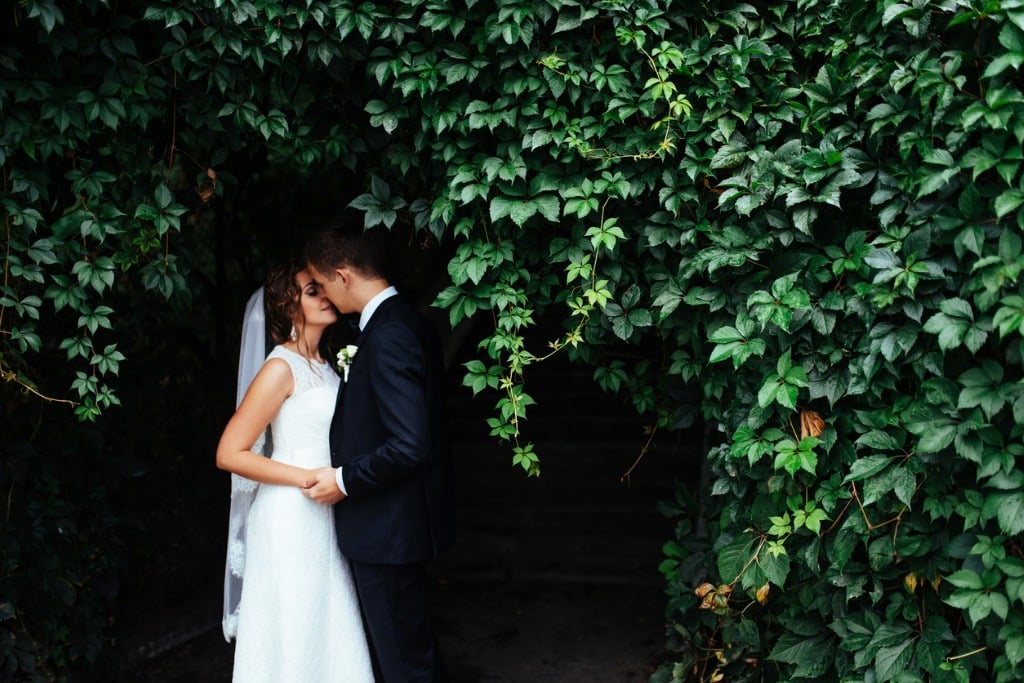
Additionally, this lens has a Subwavelength Coating, which helps reduce lens flare and ghosting, the result of which is improved contrast and color accuracy when compared to the original version of this lens.
Another feature that's hugely important for wedding photography is the Ultra Silent Motor, which doesn't just provide you with virtually silent autofocus, but it's also very fast. That means no waiting around for the lens to focus on the subject, instead allowing you to capture the shots you need.
With full-time manual focus override, you can take control of focusing whenever it's necessary. That can prove to be advantageous in tricky lighting situations when the autofocus isn't quite up to the task.
Learn More:
- 3 Must-Have Portrait Lenses for Crop Sensor Cameras
- Canon Says 'Let's Do It!' and Creates a $70,000 50-1000mm Beast of a Lens
Next Best Canon Lens for Weddings: 85mm f/1.2 II
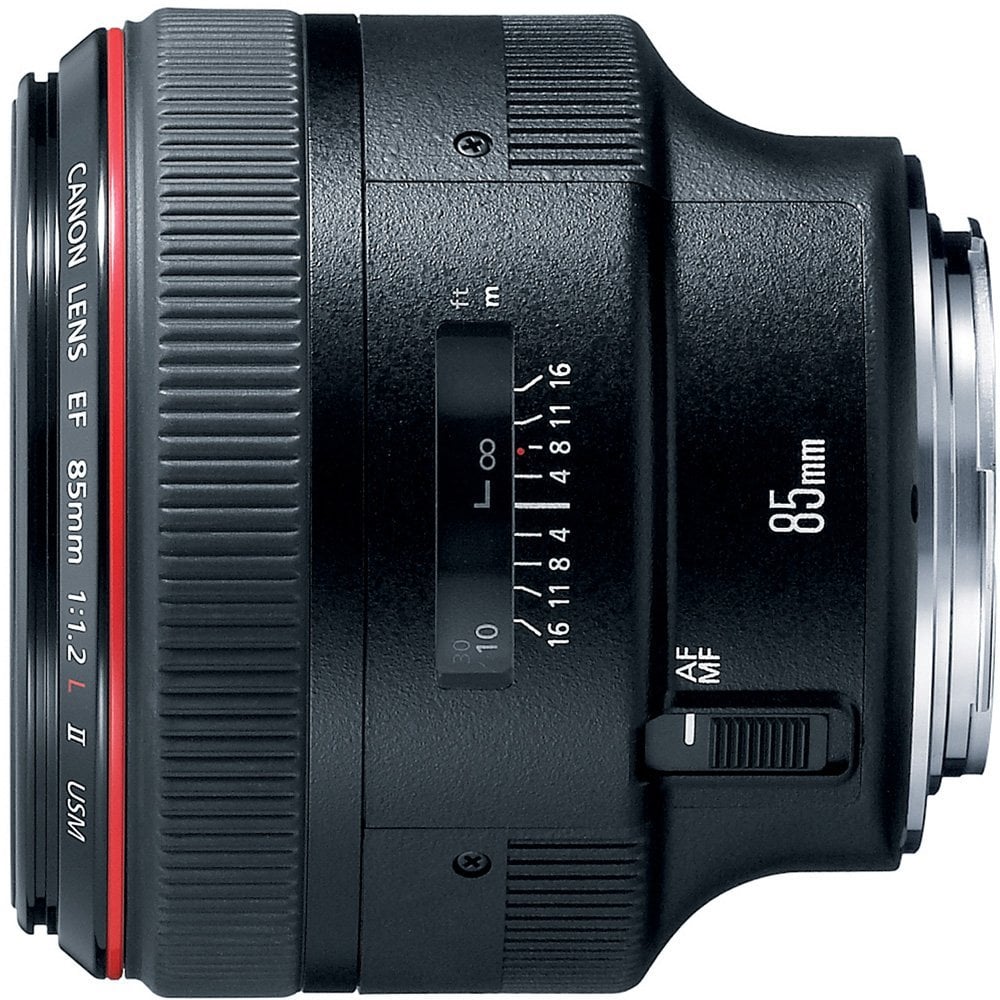
While a 35mm lens is a fantastic primary lens for weddings, having something with a little more reach will give you the ability to vary your shots and get in tighter on the subjects without cramming the lens in their face.
For that task, the Canon 85mm f/1.2 is an excellent choice.
Released in 2006, this is a much older lens than the 35mm f/1.4 discussed above.
But don't let its age fool you...
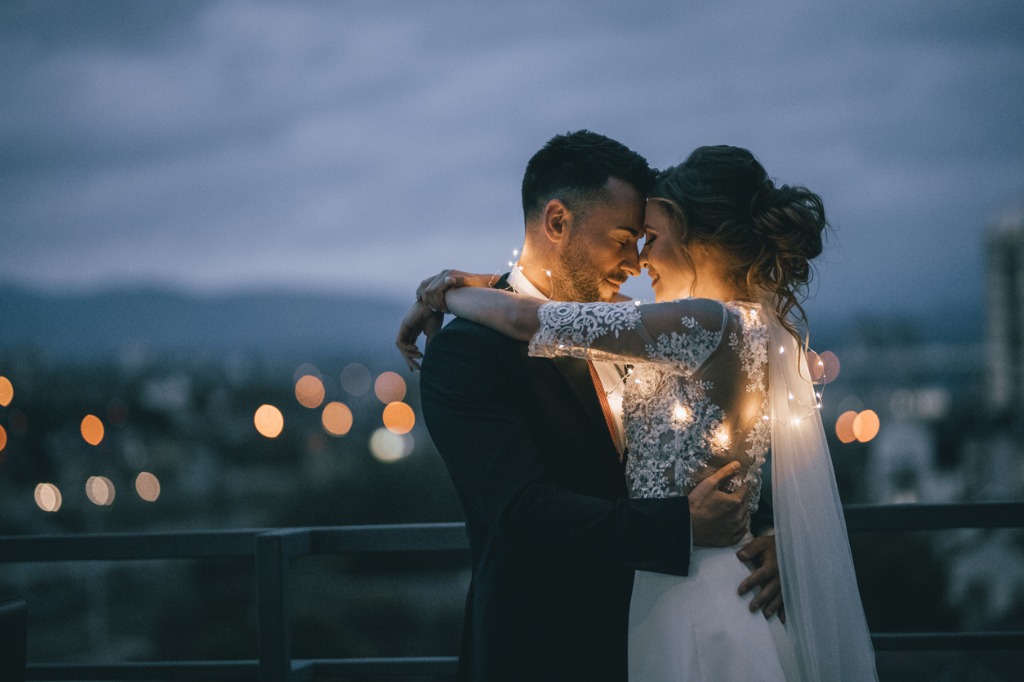
Like just about any prime lens, this thing produces supremely sharp images thanks to a fewer number of optical elements in the lens.
Not only that, but the floating optical system that Canon used in this lens helps suppress aberrations like ghosting and flare to help you get even better results.
Like the 35mm lens discussed above, this rig also has a lightning-fast autofocus system, the importance of which cannot be understated when you're tasked with snapping quick shots of a wedding.
And as far as shallow depth of field and bokeh go, it's tough to beat this lens, which creates buttery smooth bokeh for gorgeous, artistic-looking results.
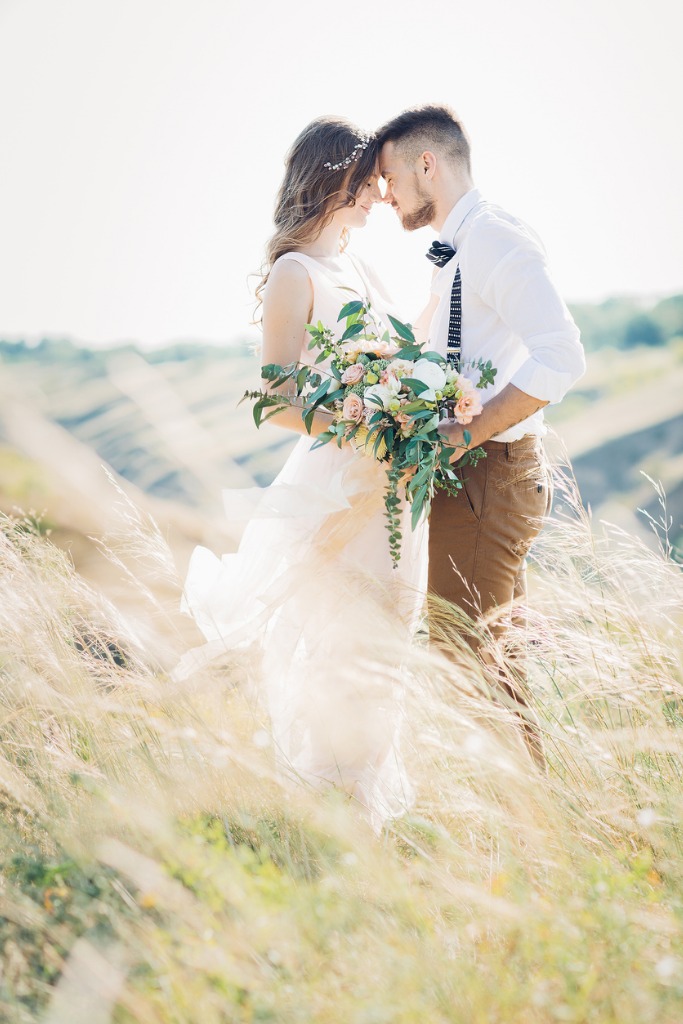
There's a problem with both of these lenses, though...they're expensive.
The 35mm f/1.4 II is around $1,650 brand new, and in the case of the 85mm f/1.2 II, you're looking at a new price of well over $1,800. Yikes.
Editor's Tip: Stretch your gear budget to the max by buying pre-owned lenses. SEARCH FOR HIGH-QUALITY USED LENSES RIGHT NOW.
Why Not Zoom Wedding Photography Lenses?
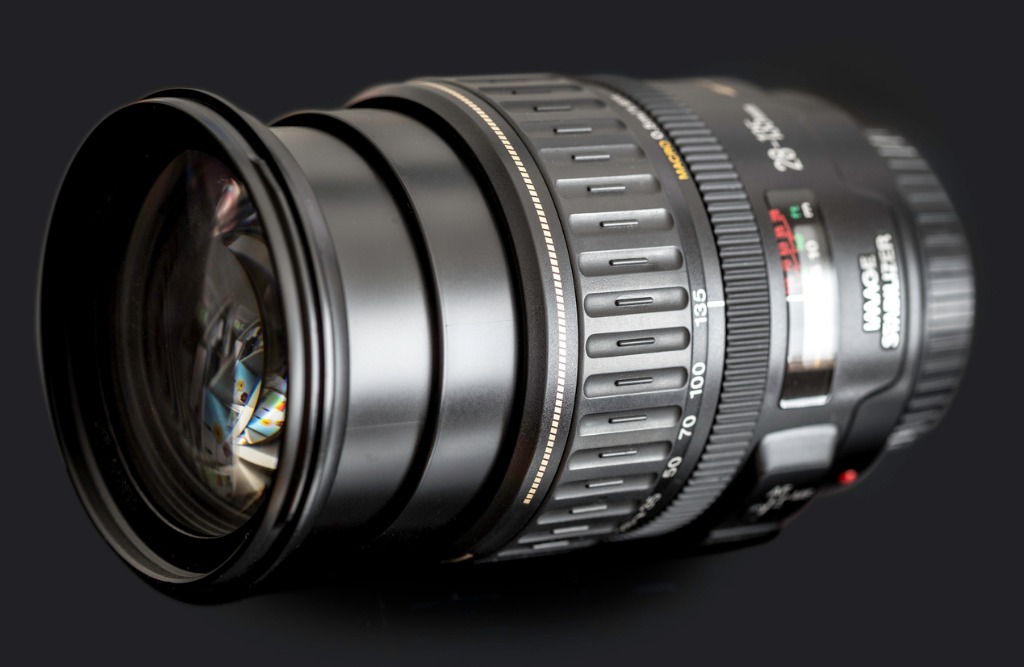
A lot of wedding photographers have a zoom (or two or three) in their kit, and there's certainly nothing wrong with that.
Something like a 24-70mm or 70-200mm lens has many excellent applications for weddings.
But if you're just starting out in wedding photography, it's hard to beat the advantages that prime lenses have over zooms.
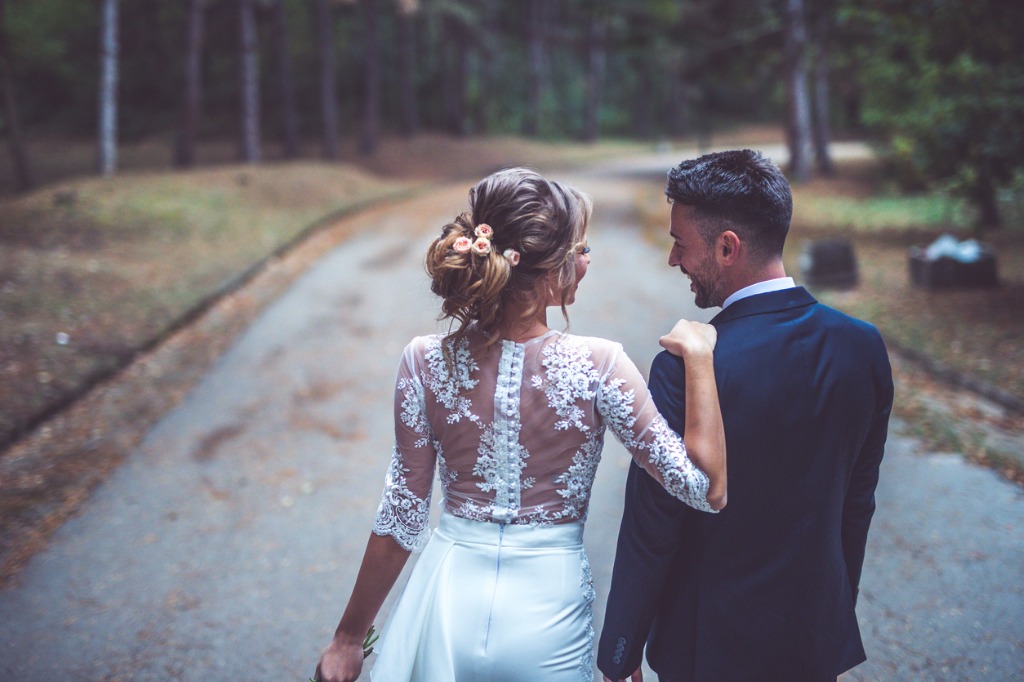
Chief among those advantages is the ability to shoot with a larger aperture, which allows you to create a gorgeously shallow depth of field.
Not every photo you take will be carefully curated in front of a gorgeous background, so being able to fill the background with bokeh is definitely a plus.
Another advantage of the large apertures that prime lenses have is that it allows you to shoot in low-light situations without using a flash or using an obscenely high ISO.
Again, that gives you the ability to get more creative and take more shots while also keeping the images more natural looking and without worrying about graininess.
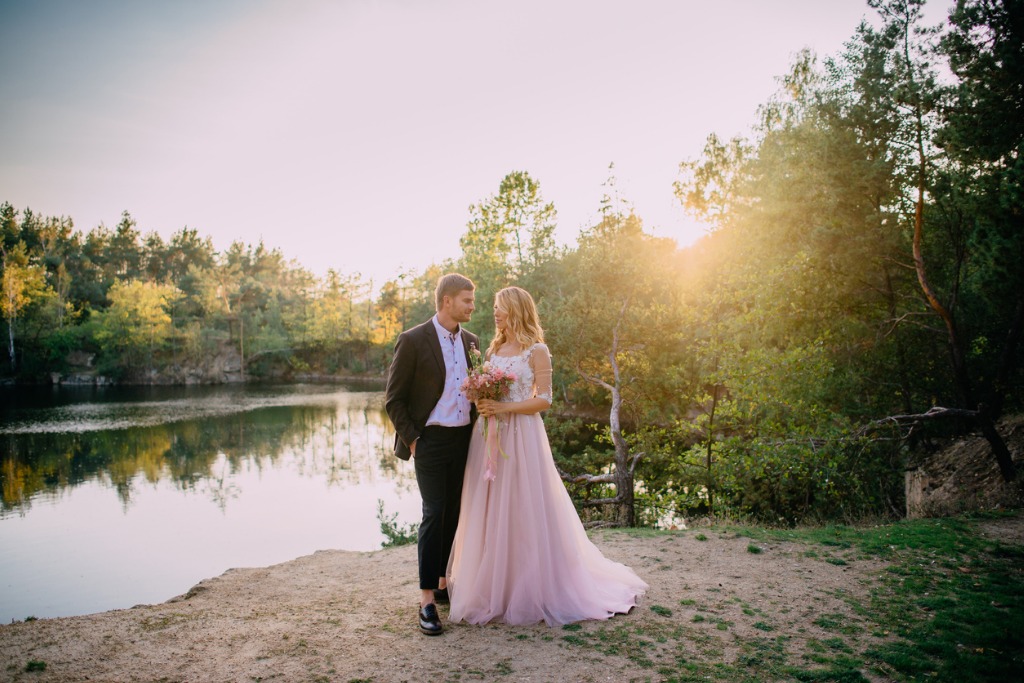
These Canon lenses are among the best wedding lenses for another reason - they're incredibly versatile.
It can be hard to make the transition from shooting with a zoom lens to shooting with a prime lens, but once you get the hang of it and understand that you need to simply move around a little more to get the shot you want, I think you'll find that prime lenses are a Godsend for your photography.
And, if nothing else, prime lenses are durable, tend to have a smaller form-factor, and in some cases, are less expensive than zoom lenses.
That's a whole lot of reasons that advertise why a 35mm or 85mm prime is the best canon lens for weddings!
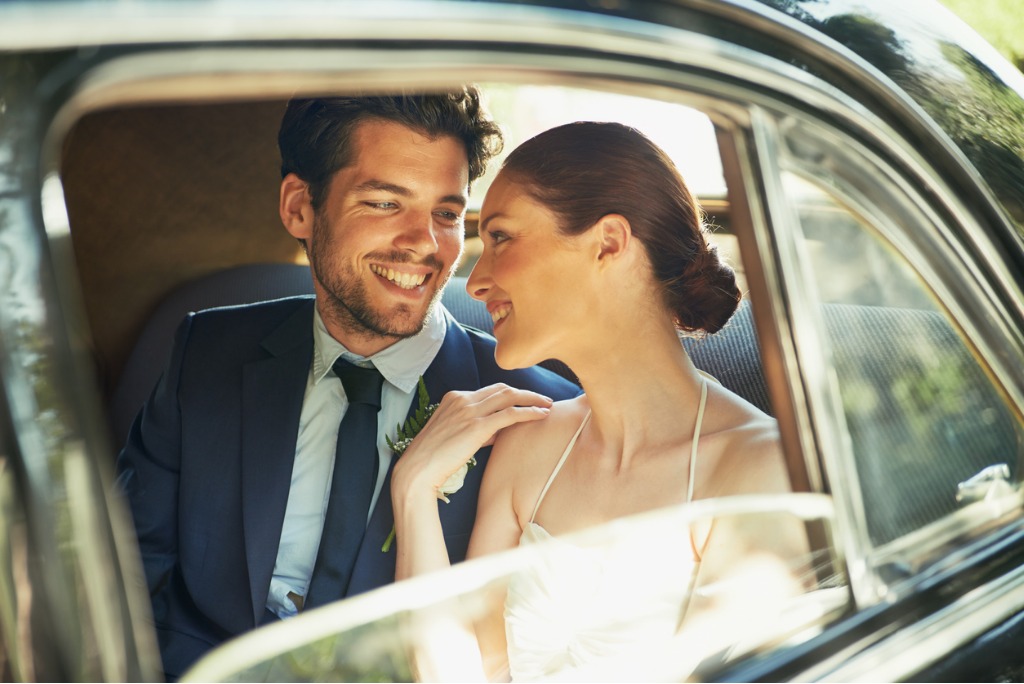
And, due to the popularity of these lenses, there are plenty of used versions out there that you can buy.
Buying used lenses not only helps you stretch your budget to upgrade to a lens that might otherwise be out of your price range, but that also means that you can sell your old lenses and use the proceeds to finance your purchase.
What's not to like about that?!
Learn More:
- Camera Lens Guide: Things to Consider When Buying a Lens
- The Sharpest Canon and Nikon Lenses on a Budget
We Recommend
The Best Sony Lenses for 2019
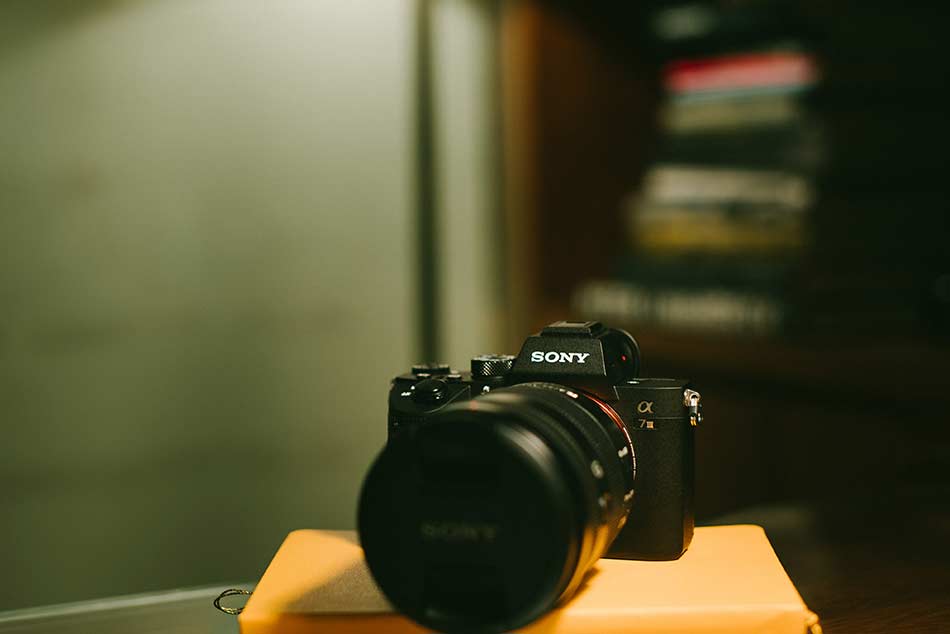
Photo by GMax Studios on Unsplash
Best Sony Lenses
Whether you shoot with a Sony full frame or APS-C camera, the company has created an enviable lineup of excellent lenses.
From primes to zooms to macro glass, the following lenses should be at the top of your list if you’re in the market to get a new Sony lens this year.
The three lenses listed below were designed for use with Sony’s full frame Alpha cameras. However, these E-mount lenses can be used on Sony’s APS-C format cameras as well.
Best Sony Zoom Lens: Sony FE 16-35mm f/2.8 GM
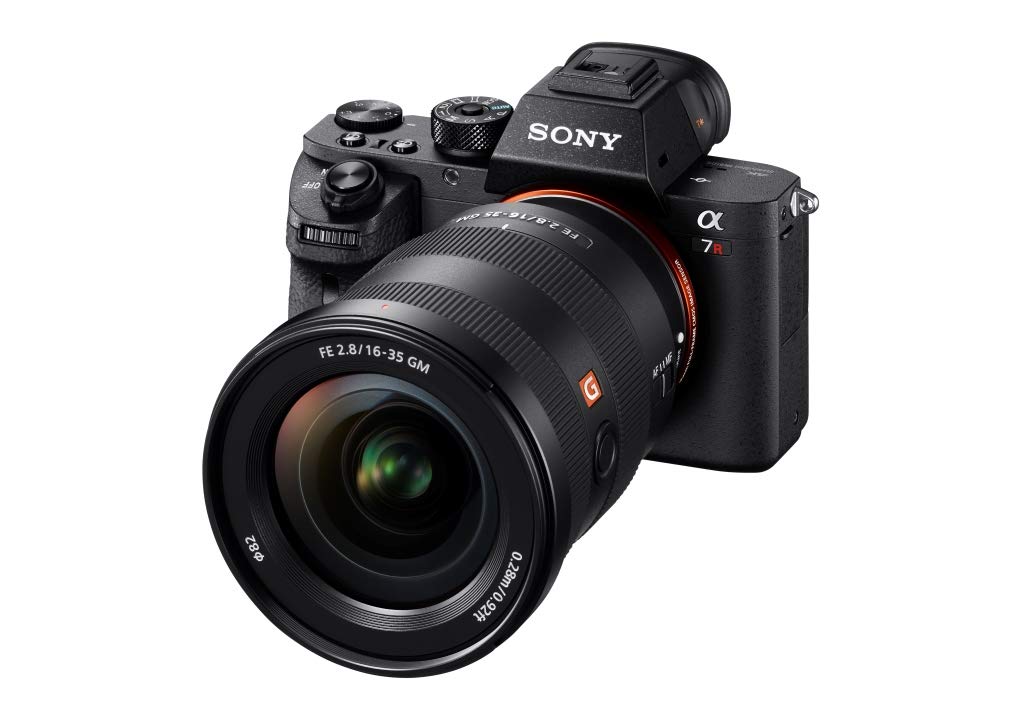
Perhaps the best feature of this lens is its build quality. It’s fully weather-sealed for all you landscape photographers out there, and with 11 rounded aperture blades, it produces bokeh that is deliciously smooth for portraits.
With a big f/2.8 aperture, it’s an excellent performer in low-light situations, and its fast (and silent) focusing system is something that you’ll appreciate whether shooting stills or video.
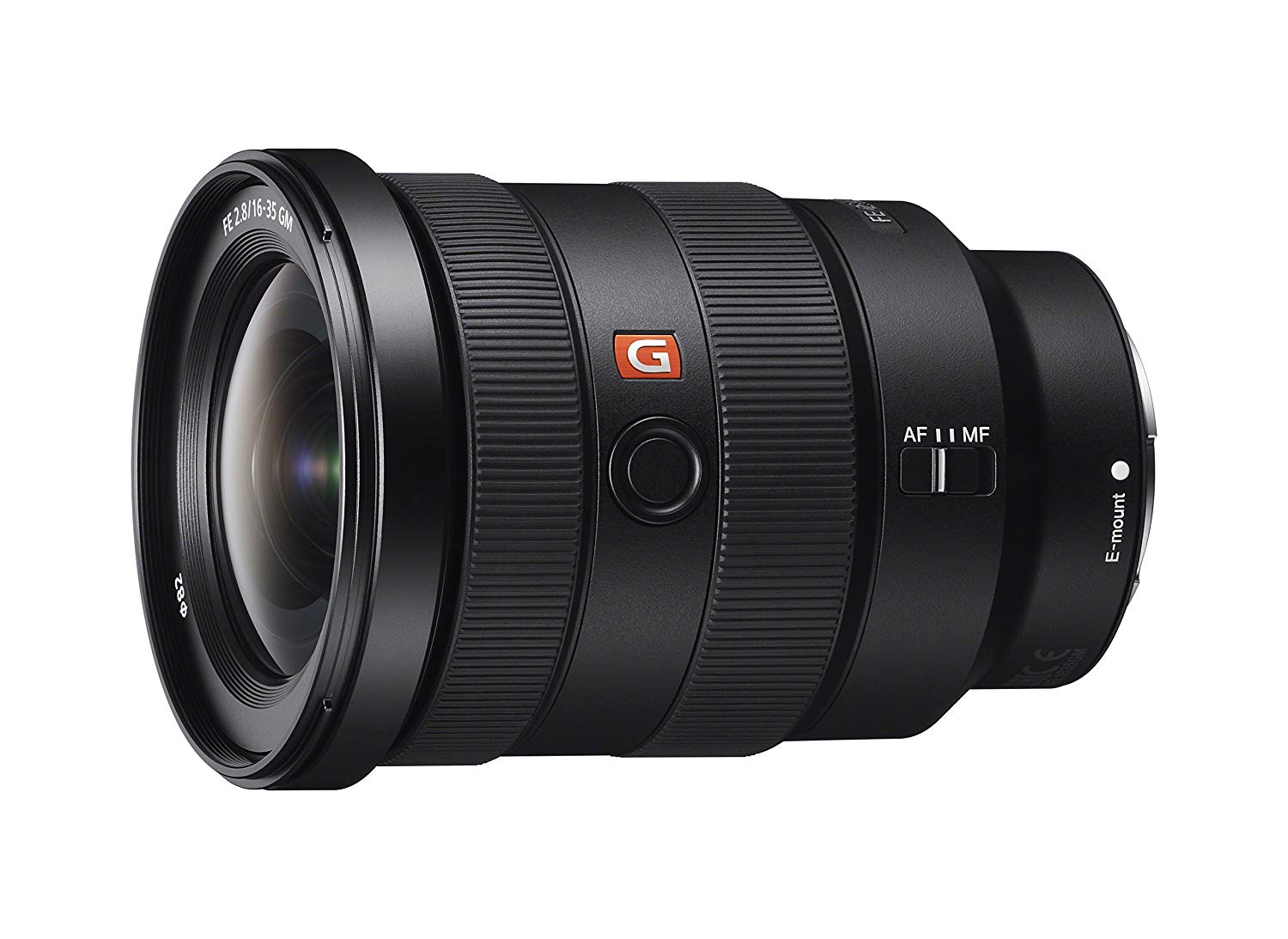
Above all, the image quality with this lens is next level. The sharpness is superb, colors and contrast are spot-on, and aberrations are at a minimum. The variable focal length from ultra-wide-angle to standard is nice too.
The only issues with this lens are that it’s heavy (1.8 pounds) and very expensive ($2,200 brand-new).
However, if you want to invest in a top-quality lens that is a durable workhorse, this is it. Besides, you might be able to find a good pre-owned version and save some cash.
Best Sony Prime Lens: Sony FE 85mm f/1.4 GM
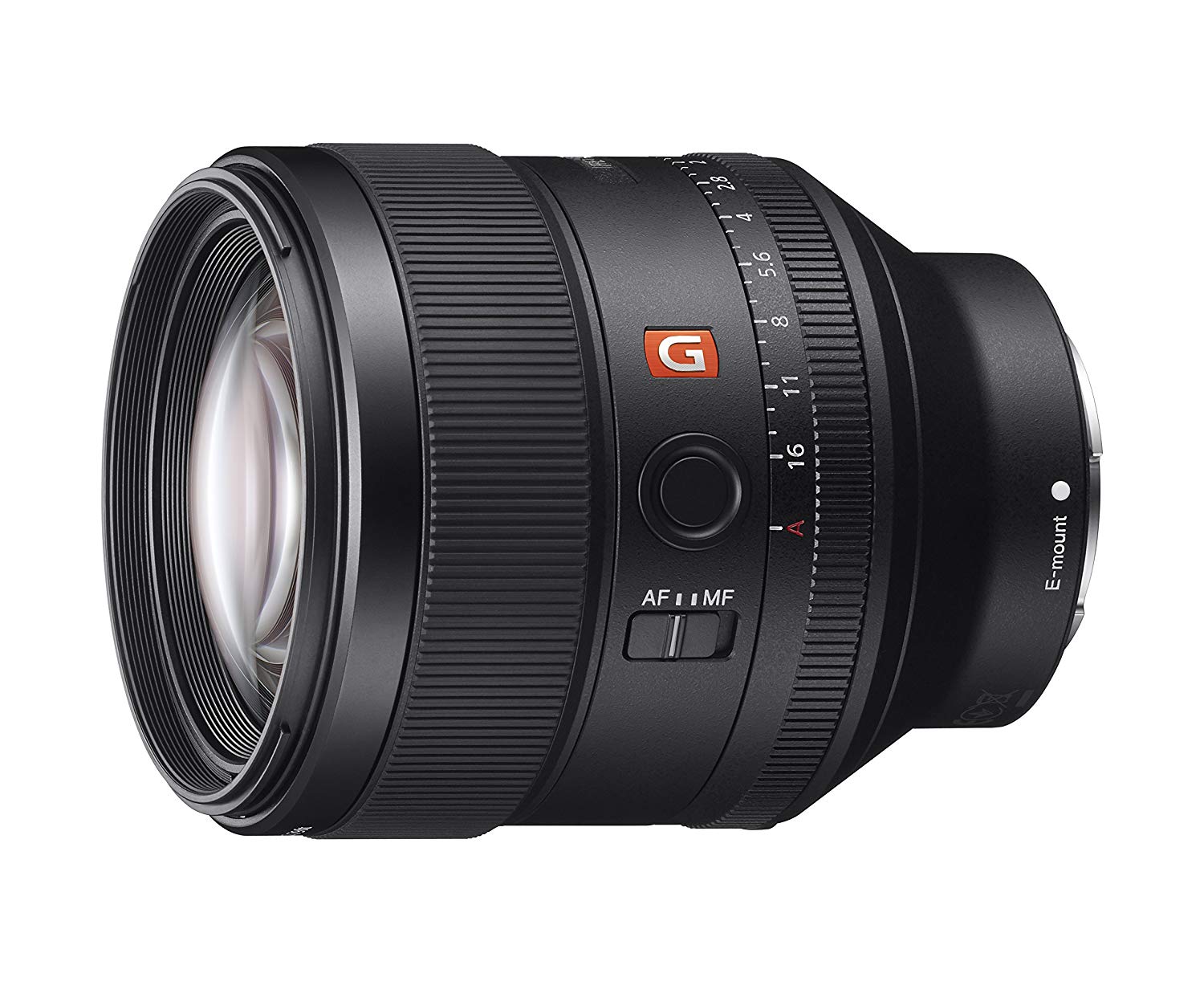
The Sony FE 24mm f/1.4 GM was a strong candidate for the best Sony prime lens of 2019. However, the 85mm wins out on this list simply because it is one of the best portrait lenses on the market - Sony or otherwise. It’s also one of the four prime lenses you definitely should own.
Like the 16-35mm lens discussed above, the 85mm f/1.4 GM features 11 rounded aperture blades that produce stunning bokeh - just what you want for portraits.
But more impressive is how sharp this lens is. Even wide open at f/1.4, sharpness is good from corner to corner. Open it up to f/2.8 and the sharpness becomes unbelievably good.
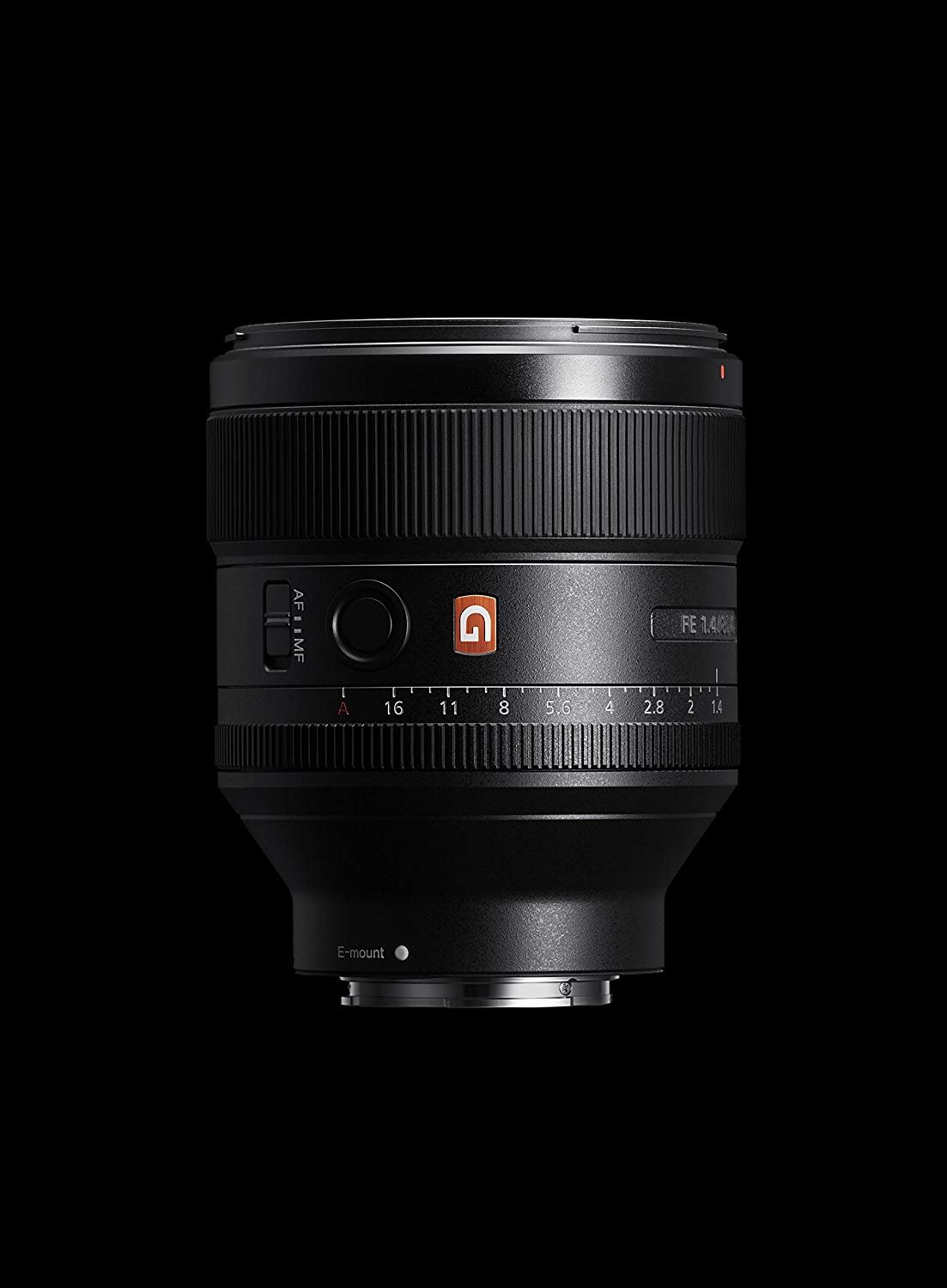
The lens has minuscule fringing, and Sony’s NANO AR coating keeps flare and ghosting at bay as well.
Video enthusiasts will also appreciate the de-click aperture ring option.
Again, this is an expensive lens ($1,800.00), but it’s well worth the price of admission given its absolutely superb performance.
If you covet this lens but don’t have the cash, you can always sell your old, unused lenses and use the proceeds to upgrade your kit with this bad boy!
Best Cheap Sony Lens: Sony FE 50mm f/1.8
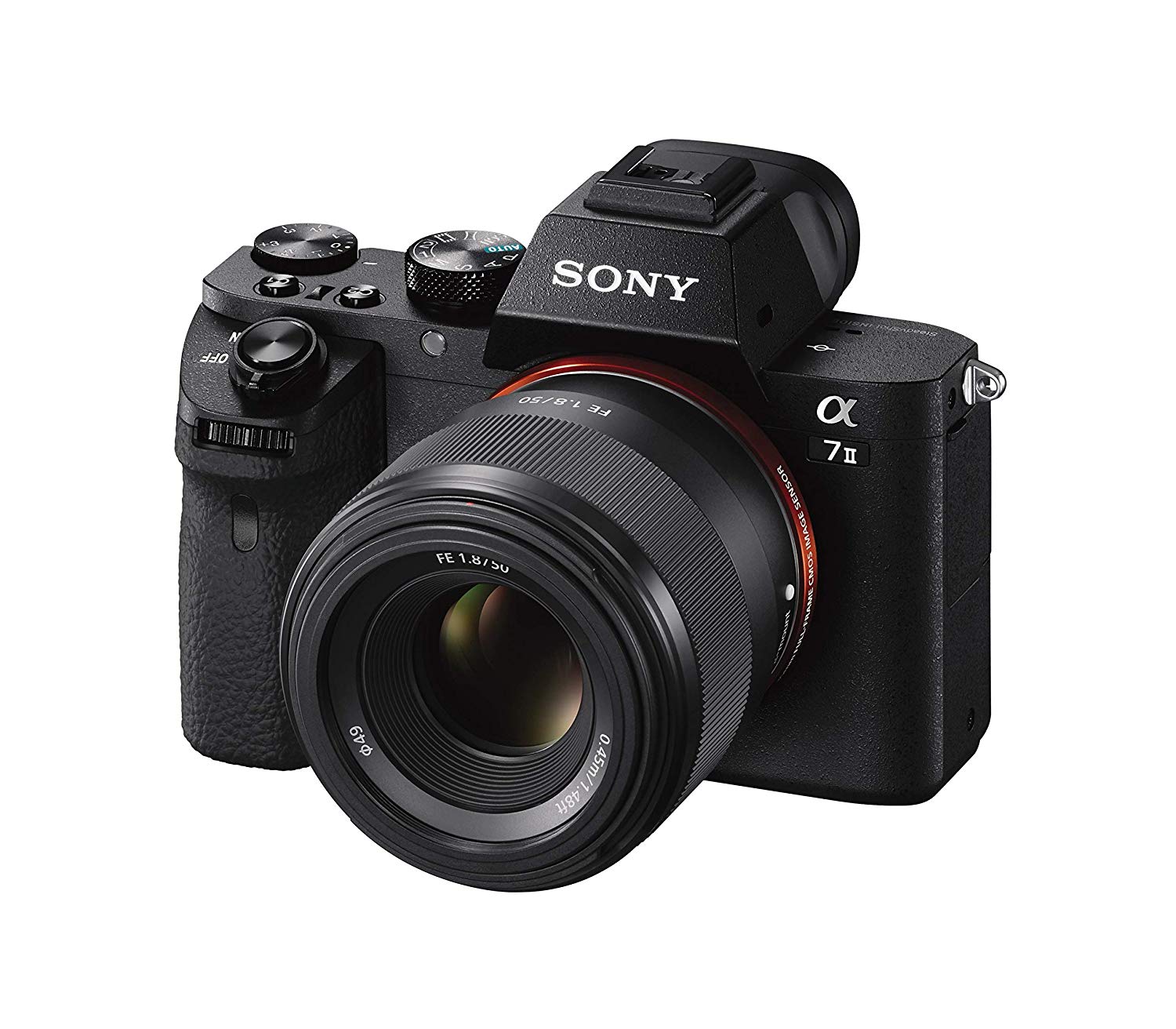
As if there were any doubt a cheap nifty fifty would be on this list…
Far and away, the best feature of this lens is its price - a paltry $250.00 brand-new.
But don’t think that because this is a cheap lens that it isn’t a great lens at the same time.
Sure, it doesn’t match the sharpness of the 85mm above, nor is its autofocus system whisper quiet like the one found on the 16-35mm.
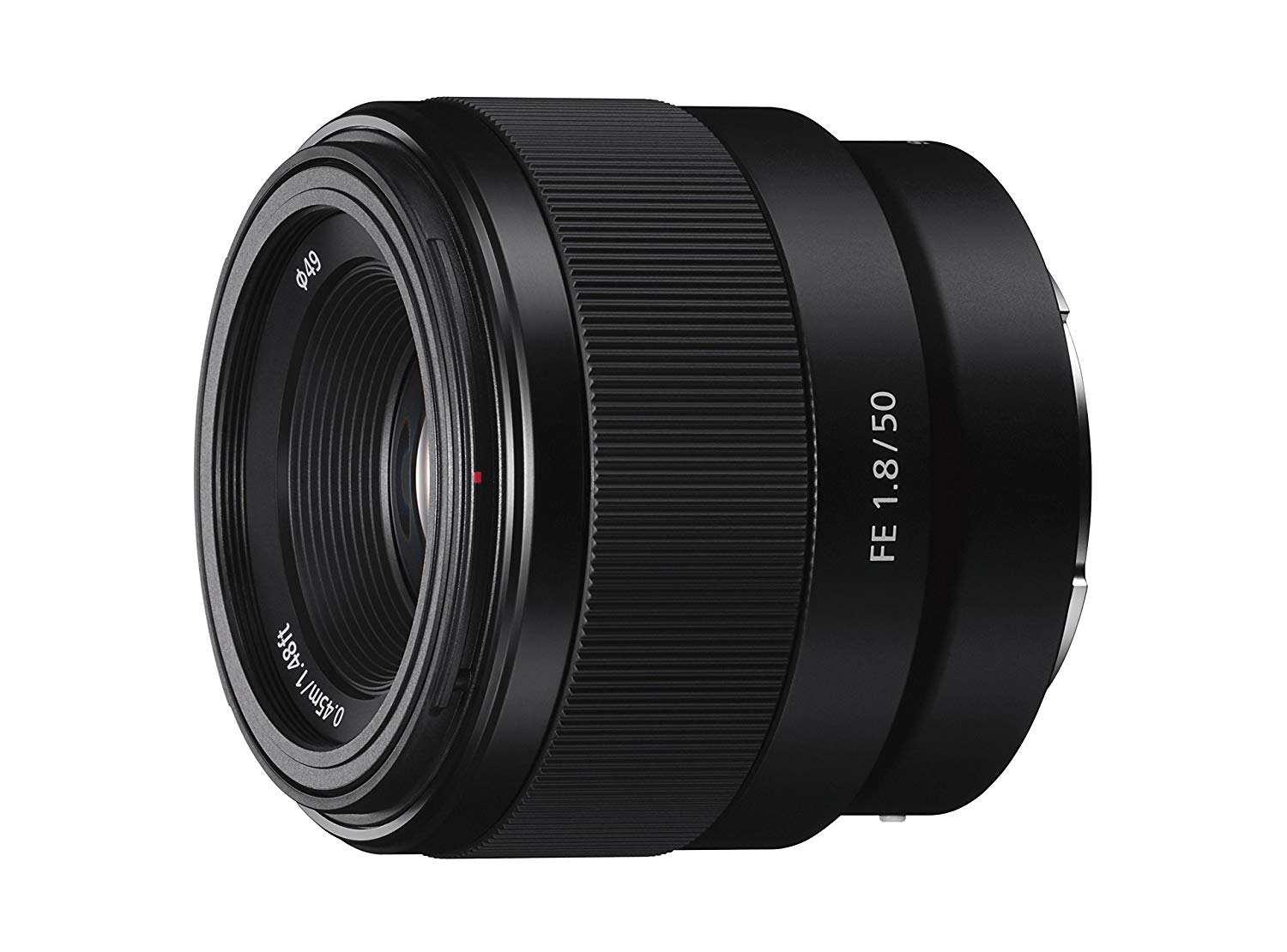
However, this lens is small and lightweight, which makes it an ideal everyday or walk around lens. It has good sharpness from edge to edge and excellent contrast, even when shooting wide open.
The only issue is that vignetting is a problem at f/1.8. But if you close it down a stop or two, that problem can be avoided.
The versatility and affordability of this lens cannot be denied. In fact, it’s one of the three lenses every photographer should have in their bag. If you don’t have one, now’s the time to get one!
Wrapping It Up: Top Sony Lenses 2019
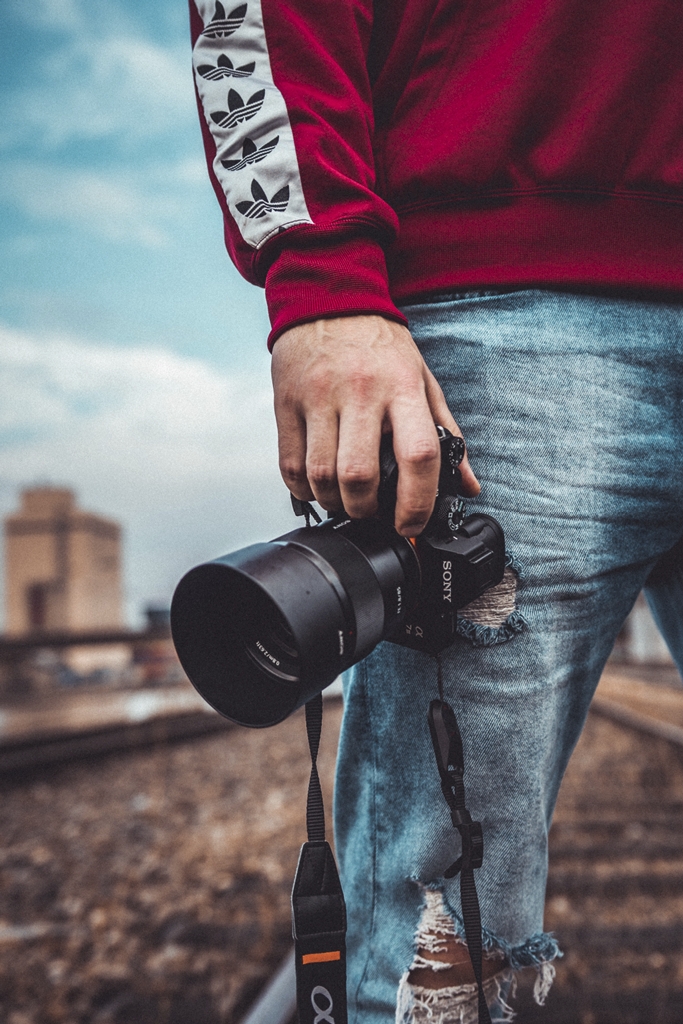
Photo by William Krause on Unsplash
As I noted in the introduction, Sony has an excellent lens lineup, so this is by no means an exhaustive list of their best lenses.
However, given the performance, build quality, and versatility of these lenses, I think it would be hard to argue against these three as occupying the top spots for Sony glass.
Don’t let the huge price tag of the first two lenses on this list scare you off, either. Look for sales and specials to get discounts on new lenses or shop around for good used glass to save even more money. Either way, you can add these lenses to your kit and save money at the same time.
We Recommend
The Best Sony Lenses for Just About Any Type of Photography
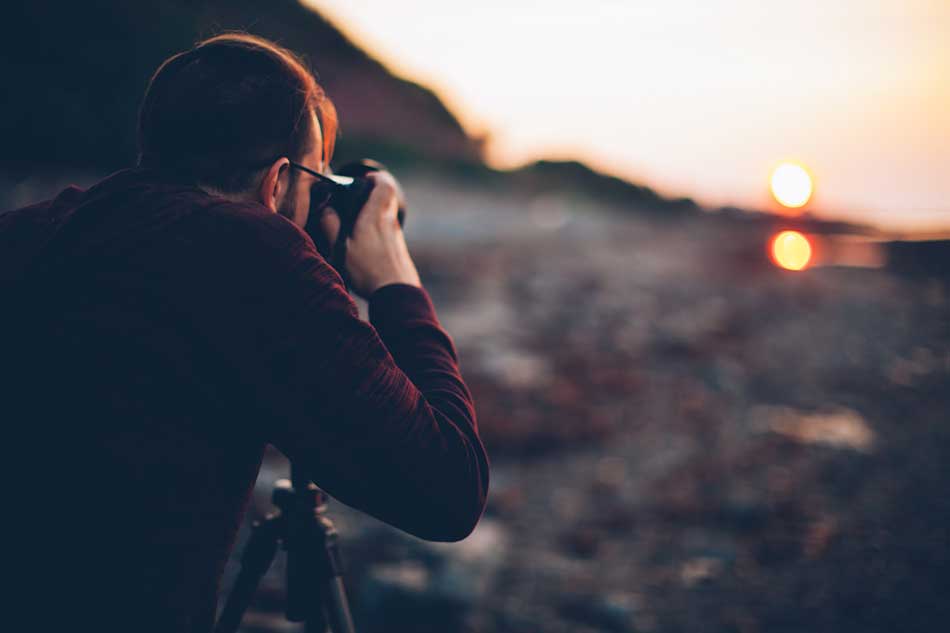 Image Credit: MmeEmil via iStock
Image Credit: MmeEmil via iStock
It's no secret that Sony has pushed itself to the forefront of photography with excellent cameras and excellent lenses to go along with them.
That's especially true of Sony E mount lenses, which are among some of the best lenses on the market today, regardless of manufacturer.
If you're a Sony shooter like me, the hardest part of buying a lens is often simply deciding which lens to get.
In this guide, I review a variety of the best Sony lenses for virtually any kind of photography.
Editor's Tip: Not sure if you should get a prime lens or a zoom? Consult this lens buyer's guide to figure out if a prime or zoom is best for you.
For Budget-Conscious Photographers: Sony FE 50mm f/1.8
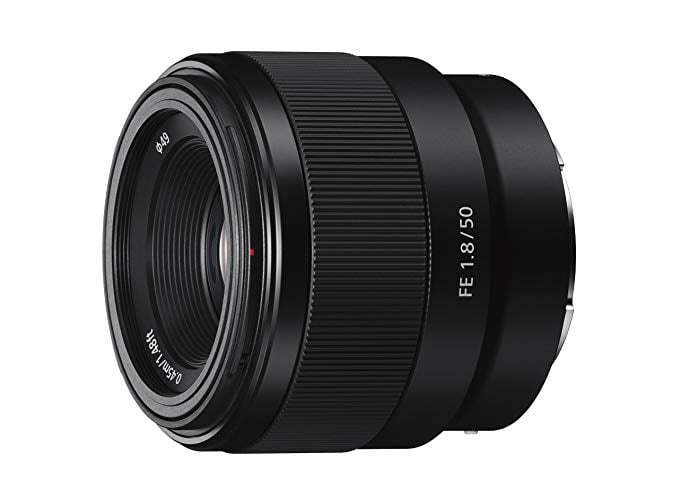
Many of Sony's lenses can cost a pretty penny, which is why the 50mm f/1.8's under-$250 price tag is so nice.
Having an affordable prime in your bag is handy as well.
Not only does this lens have a nice, big f/1.8 maximum aperture that enables low-light shooting, but it's also small and light, measuring just 4.09 x 3.43 x 4.69 in and weighing in at 6.56 ounces.
This makes the 50mm f/1.8 a great option for everyday photography, travel photography, and street photography as well.
Additionally, this Sony E mount lens is compatible with full frame and APS-C cameras, where its effective focal length is 75mm.
It has an ultra-quiet autofocus system, excellent sharpness, and great contrast.
Learn More:
- What to Consider When Buying a New Camera Lens
- A Short List of the Best Prime Lenses for Mirrorless Cameras
For Portrait Photographers: Sony FE 85mm f/1.4 GM
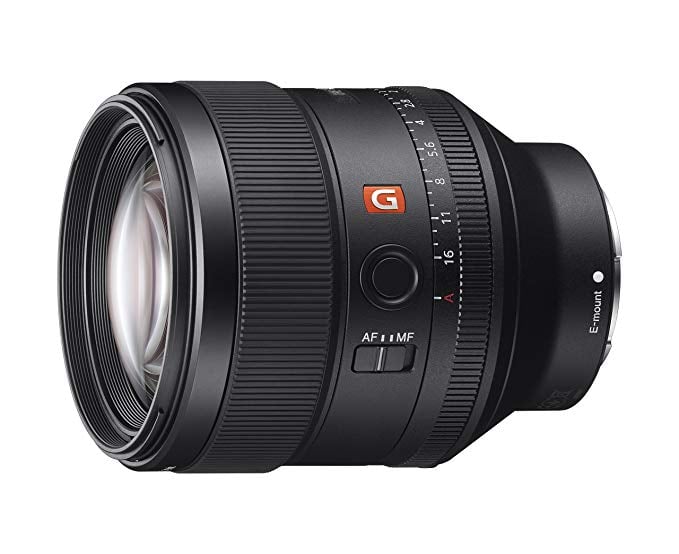
If you're hunting for the best Sony lenses, the impeccable FE 85mm f/1.4 GM should definitely be on your radar.
Sure, it costs about $1,450 more than the 50mm f/1.8 discussed above, but if you're a portrait photographer, that added expense will be well worth it.
The lens has an 11-blade rounded diaphragm that produces gloriously soft bokeh. That high-quality bokeh is a major selling point because it helps separate the subject from the background.
What's more, this lens performs very well in the sharpness department across the range of apertures, even wide-open at f/1.4. The sharpness is best at f/2.8 and above, though.
With Sony's proprietary Nano AR coating, there's little worry of flare and ghosting and fringing is kept to a minimum.
You can even use this lens to shoot video!
In that regard, it's more than just a portrait lens, but if portraiture is your forte, this lens should definitely be in your camera bag.
Editor's Tip: Does effective focal length throw you off? Learn how to calculate effective focal length.
For Landscape Photographers: Sony FE 16-35mm f/2.8 GM
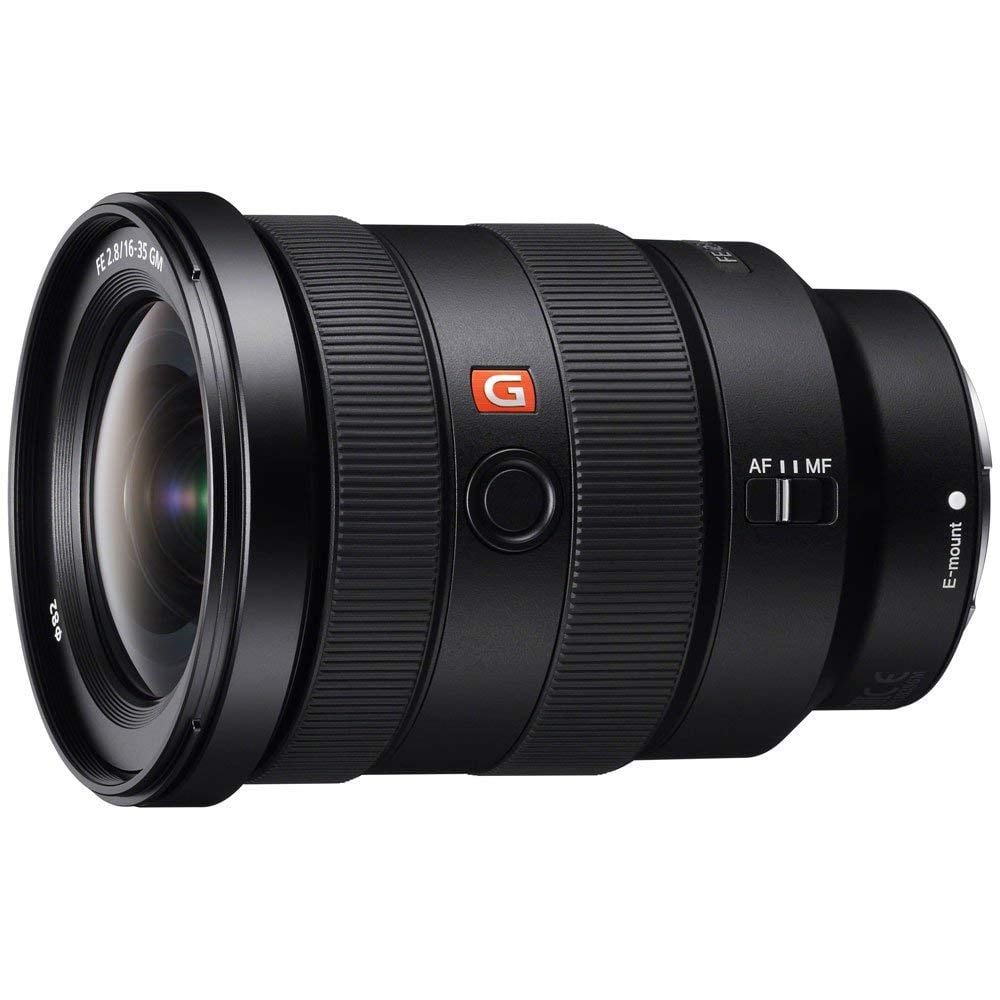
To capture those breathtaking vistas of gorgeous landscapes, a wide-angle lens is a must, and for Sony shooters, one of the best wide-angle lenses available is the FE 16-35mm f/2.8 GM.
This is a pretty beefy lens, weighing in at nearly 1.5 pounds.
However, that weight is thanks to superb build-quality, including a full complement of weather sealing.
With a maximum aperture of f/2.8, you can shoot more low-light landscapes, and all that light-collecting power is excellent for astrophotography as well.
But don't think that this lens is only for landscapes...
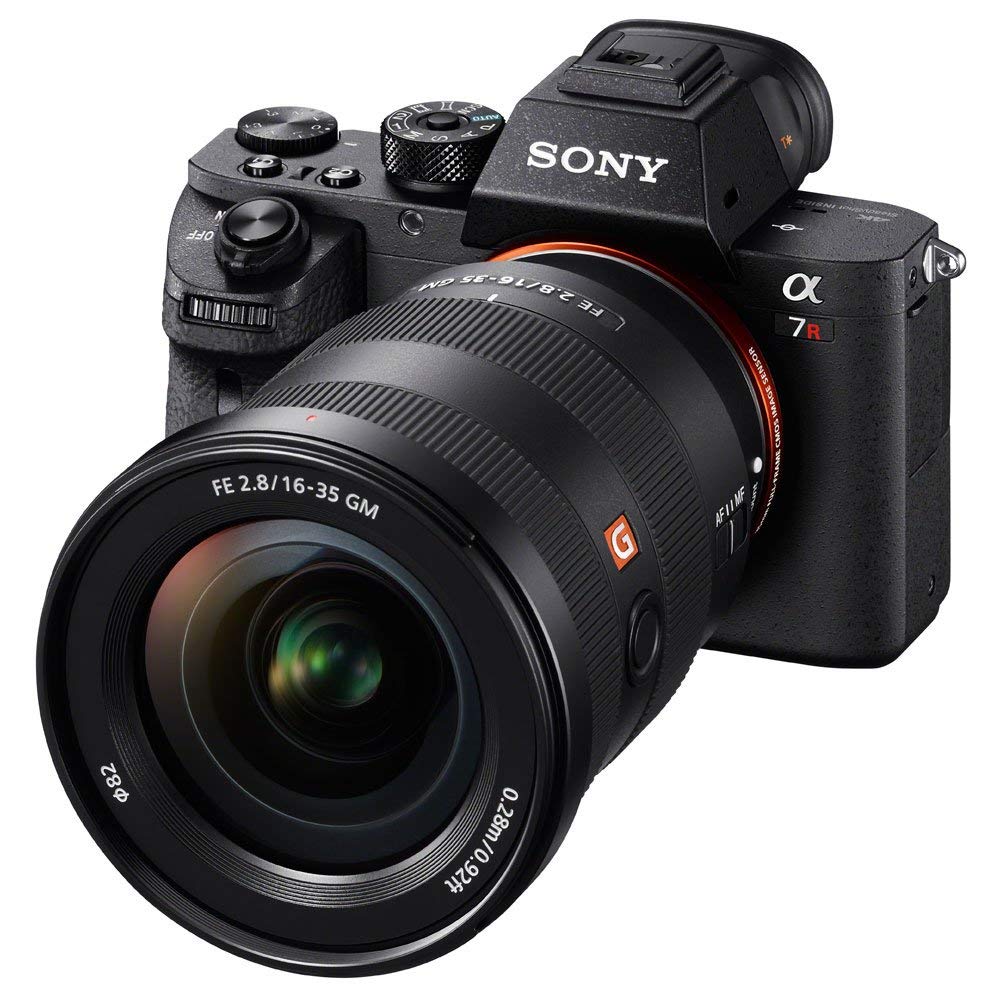
With a range of wide-angle focal lengths, you can use this lens for anything from street photography to portraiture.
The 11 rounded blades in the aperture diaphragm produce gorgeous bokeh, not unlike the 85mm lens discussed earlier.
Focusing on this lens is nearly silent and is fast, too, so you could conceivably use it for action photography, provided you're close enough to the action.
This is not a cheap lens, though, coming in at $2,250 brand new. So if you want one and you're on a budget, see about finding a good-quality used version to save some money.
Learn More:
Final Thoughts
This is certainly not an exhaustive list of the best Sony lenses, but for most photographers, one of these three lenses will get the job done.
For a bonus entry on our list, check out the video above in which Max Yuryev makes the case for the Sony EF 24-70mm f/4 being one of Sony's best lenses at the moment.
Give the video a look, and then decide - do you need a prime or a zoom lens, what's your budget, and what is the primary type of photography you typically undertake?
Considering all those questions should help you narrow down the field of excellent sony full frame lenses to buy.
We Recommend
The Best Travel Photography Lens

photo byDieterMeyrl via iStock
When you’re traveling, the last thing you want to do is take all of your camera gear.
Aside from the obvious benefits of not having to carry around a ton of stuff, airlines have made it maddeningly difficult (and expensive) to get your stuff from one place to the next.
So, if you could only take one lens with you on the trip of a lifetime, what would it be?
For me, and many other photographers, for that matter, it would be the 24-70mm f/2.8.
Let’s explore just a few benefits of this best travel photography lens.
Editor’s Tip: Get geared up for your travels and save some money at the same time. Buying a used 24-70mm f/2.8 allows you to stretch your gear budget without sacrificing the quality of the lens you use. Find the perfect 24-70mm lens now.
The 24-70mm f/2.8 is Enormously Versatile

photo by kunchainub via iStock
One of the biggest 24-70mm f/2.8 benefits is its sheer versatility.
On a full frame camera, it gives you wide-angle to nearly telephoto range, which allows you to snap large landscapes, close-up portraits, and everything in between without having to do a single lens change

photo by PeopleImages via iStock
What’s more, you can get many different looks of the same subject thanks to being able to reframe the shot with a simple twist of the focus ring.
In both cases, this lens helps you minimize the time you’re fiddling about with your gear and maximize the time you’re actually taking photos. When you’re traveling, that’s a definite bonus!
Learn More:
The 24-70mm f/2.8 is a Great Size

photo by nortonrsx via iStock
I enjoy shooting with my 70-200mm lens, but it’s a behemoth that has no place in my travel photography bag.
Instead, the 24-70mm f/2.8 is a great size: usually in the range of about 3.3 inches wide and less than 5 inches long.
Additionally, many of these lenses weigh around two pounds, so they’re relatively lightweight too.
Granted, the 24-70mm is heavier and larger than a typical kit lens, but the image quality you get with the 24-70mm f/2.8 is far superior than what you get with a kit lens, irrespective of the brand. Besides, being a relatively small and lightweight lens makes it easy to carry, easy to handle, and easy to travel with. That’s certainly something you want in the best travel photography lens.

photo by Brian Williams via iStock
Quick Tip: Many camera lens manufacturers have weather-sealed 24-70mm f/2.8 lenses with robust builds that can handle the rough-and-tumble world of travel photography. These pro-level lenses are more expensive than non-weather-sealed versions, but are certainly worth the added expense if you’ll be shooting in inclement weather. To save money, look for used 24-70mm f/2.8 lenses, as you can often find them in good to like new condition at a greatly discounted price.
The 24-70mm f/2.8 Lacks Much Distortion
The focal range of this lens closely mirrors that of the human eye, and as such, photos taken with these lenses lack much distortion at all.
This is certainly a benefit from the standpoint of how your images look, but it’s also a great benefit for learning how to improve your composition.
That is, with the natural-looking results you get with this lens, you can concentrate more on things like composition and framing and less on how the lines in the photograph bend and bow.
On the wide end at 24mm, you’ll find that there is little or no ultra-wide-angle distortion, yet you can still get those beautifully wide shots of landscapes as you travel. It’s the best of both worlds!
Get more details about why the 24-70mm f/2.8 is such a great lens in the video above by Tony & Chelsea Northrup.
Learn More:
- 3 Lenses Every Photographer Should Have in Their Camera Bag
- Landscape Photography Tip: How to Master Wide-Angle Lenses
The 24-70mm f/2.8 Takes a Common Filter Size

photo by Dimitris66 via iStock
If you shoot with a Canon or Nikon system, their 24-70mm f/2.8 lenses take a 77mm filter, which is extremely easy to find. Furthermore, many other lenses from these manufacturers take 77mm filters, so you can utilize your filters with multiple lenses.
What’s important when searching for the right filter for this lens is getting one with a slim housing, that way there’s no vignetting when shooting at 24mm.

Filters like the Kenko Smart Slim Polarizer shown above are ideal for 24-70mm lenses for this very reason. And, of course, polarizing filters like this offer tons of benefits for your outdoor photos:
- They reduce glare off of water and other non-metallic surfaces.
- They boost the contrast in the sky, making the white clouds pop on a deeper blue sky.
- They minimize atmospheric haze and reduce the softness of distant elements.
So, with the right filter paired with your 24-70mm lens, you can get outstanding photos on your travels, and do so without having to spend a ton of money or use up all your time making filter or lens changes!
Editor's Tip: Get Kenko's Latest Updates and Access to Promos for Discounted Gear. Click Here to Sign Up.
We Recommend
The Most Underrated Lens Everyone Needs
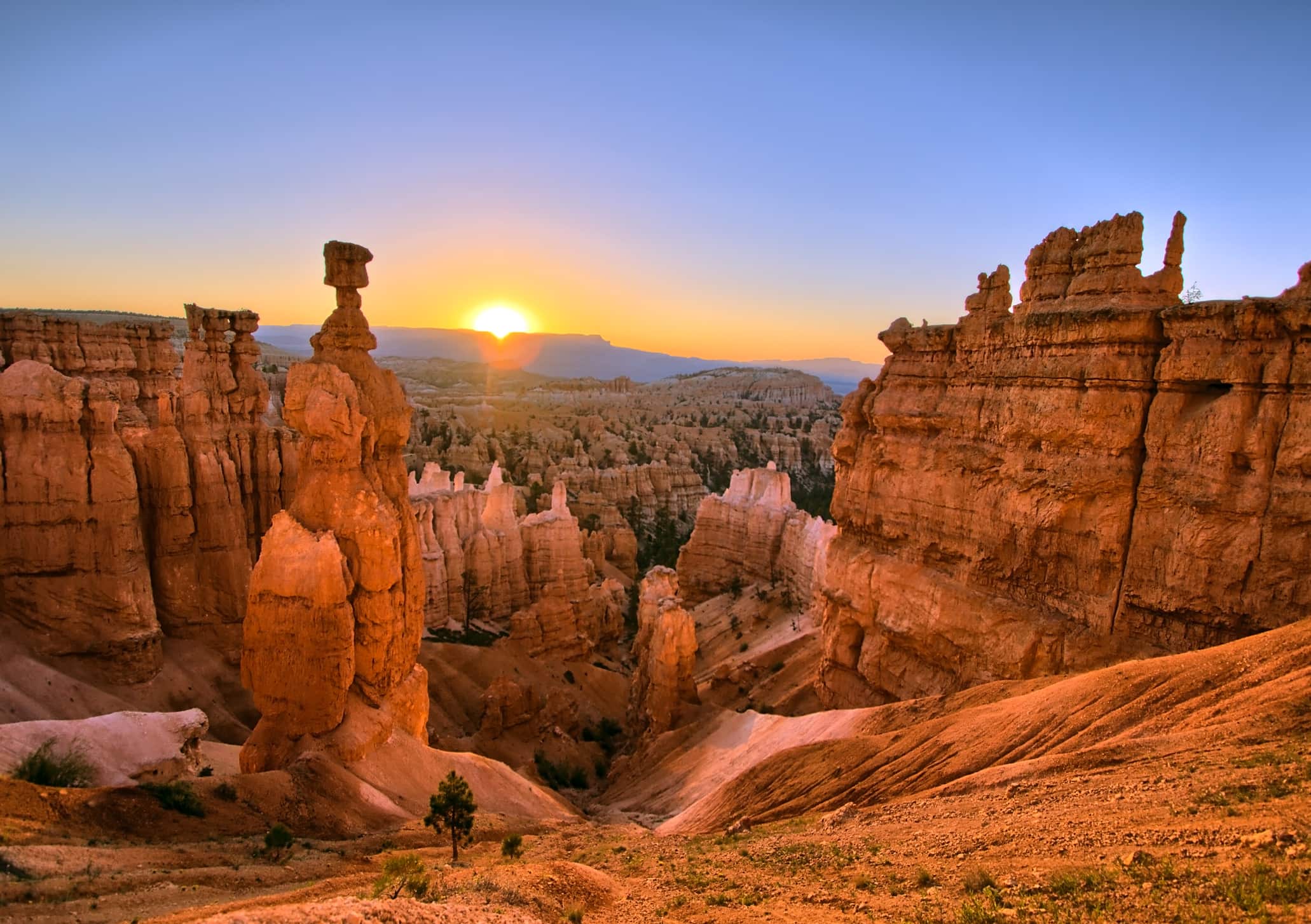
If you had to peg one lens as the most underrated of them all, what would you pick?
I know what my pick would be - the trusty Nifty Fifty.
For my money, there's just not a better buy than a 50mm lens.
And you know who agrees with me? Peter McKinnon.
In the video above, Peter gives a quick rundown of why the 50mm is the best bang for your buck. Specifically, he reviews the Canon 50mm f/1.8.
He makes some excellent points about the 50mm's value, which I've outlined in detail below.
Editor's Note: Want a nifty fifty? You can find great buys on pre-owned 50mm lenses (and a whole bunch of others, too) on Lensfinder. Lensfinder is a premium marketplace for photographers to buy and sell their lenses. With an easy process to find what you need, and with payment via PayPal and advanced fraud filtering for buyers and sellers, it's secure as well. Check out Lensfinder today.
The 50mm Lens is a Bargain
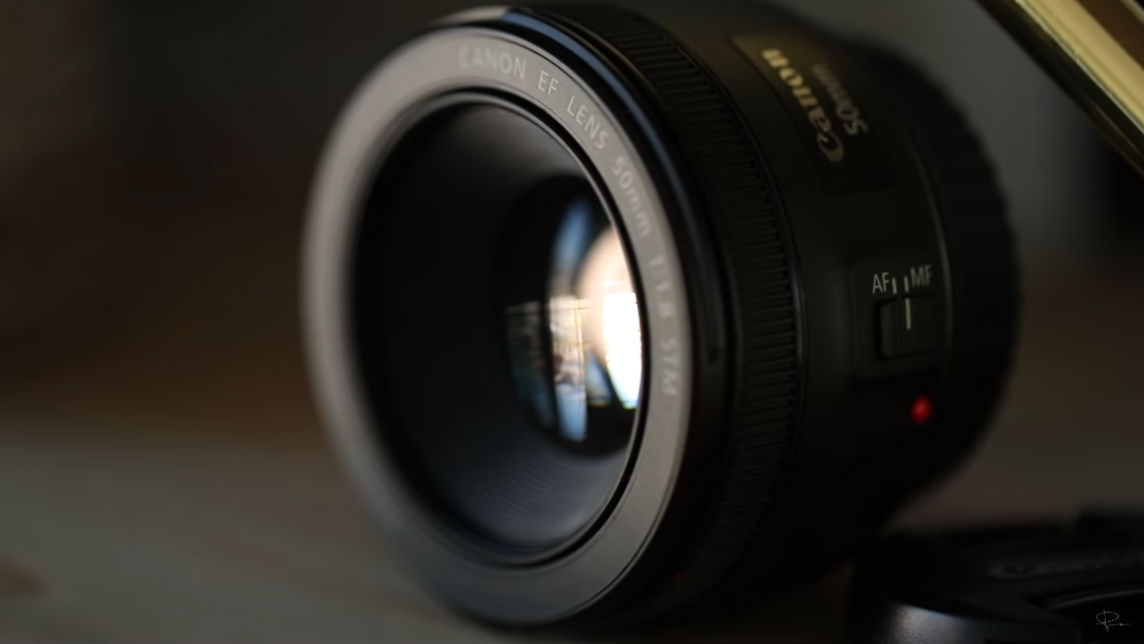 YouTube Screenshot/Peter McKinnon
YouTube Screenshot/Peter McKinnon
The first lens I bought after getting my new camera was a 50mm.
And as Peter points out in the video, it should be the first choice for you, too.
That's true whether you have just a kit lens or you have a whole slew of other lenses as well. The 50mm is that good!
I'll get into why it's so good in a moment, but first, let's talk price.
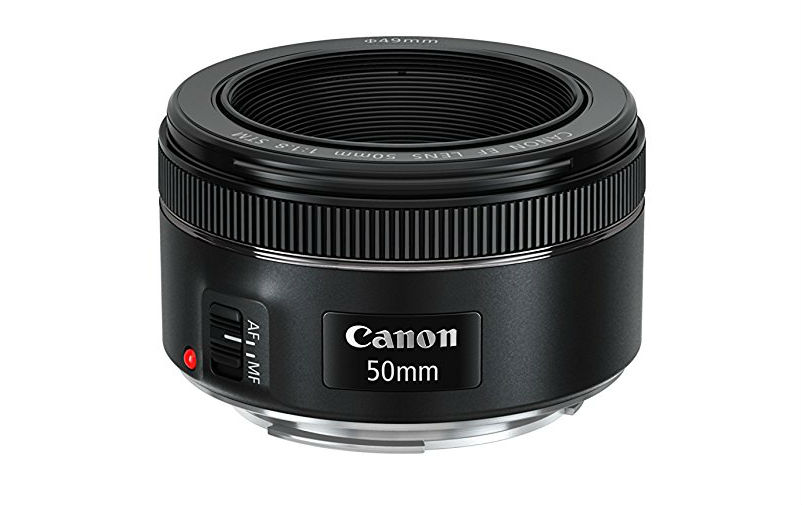
At just $125 on Amazon, the Canon 50mm f/1.8 STM is a steal.
And don't think that because it's so inexpensive that it's incapable of helping you take awesome photos...
Instead, you get a top-notch lens that offers you tons of versatility. More on that next.
50mm Lenses are Incredibly Versatile
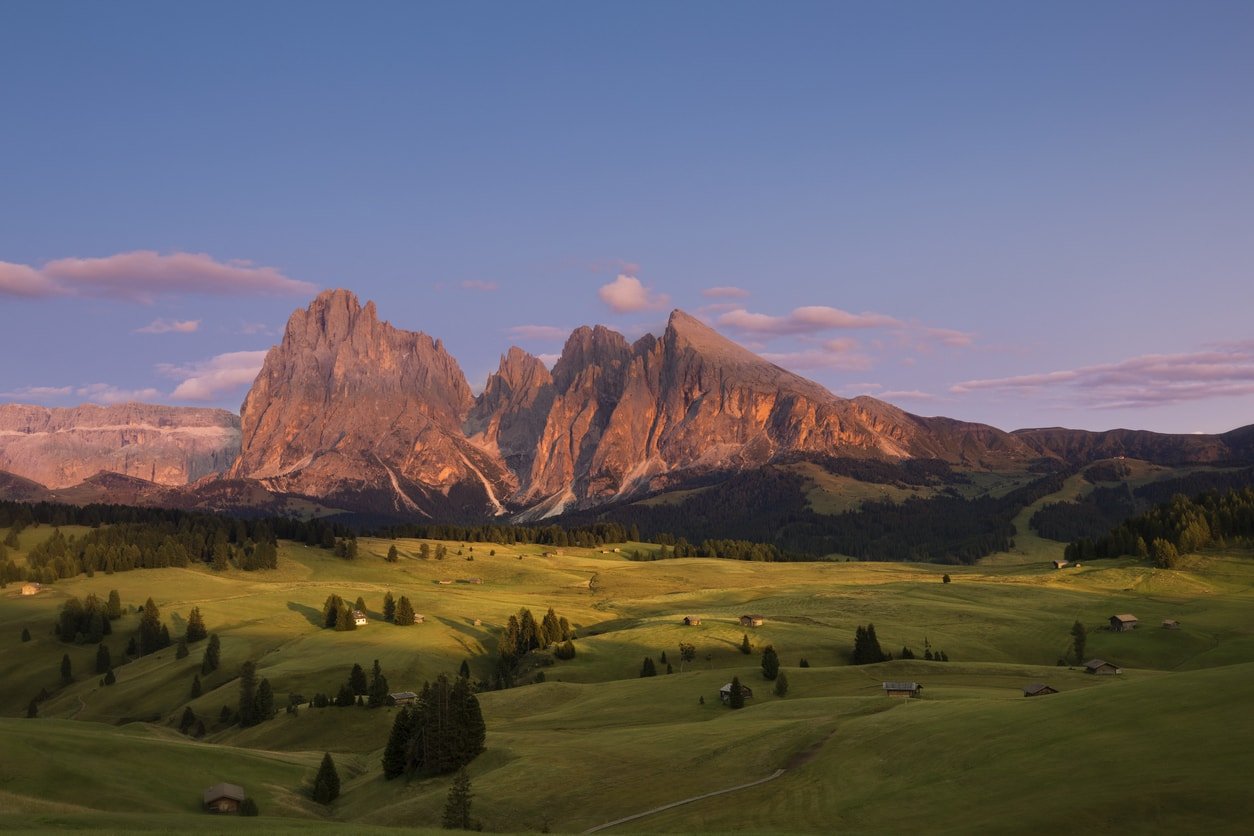
First of all, 50mm is a great focal length whether you shoot with a full frame or a crop sensor camera.
On a full frame camera, a 50mm lens is considered a standard lens, so you get a pleasing perspective on your subjects.
On a crop sensor camera, a 50mm lens acts like an 80mm (or thereabouts, depending on the camera's crop factor), which is on the short end of the telephoto range.
Either way, you get a lens that you can use for portraits, landscapes, architecture and street photography, and even macro photography if you reverse mount the lens to your camera.
Talk about versatile!
Learn More:
You Get Tons of Light
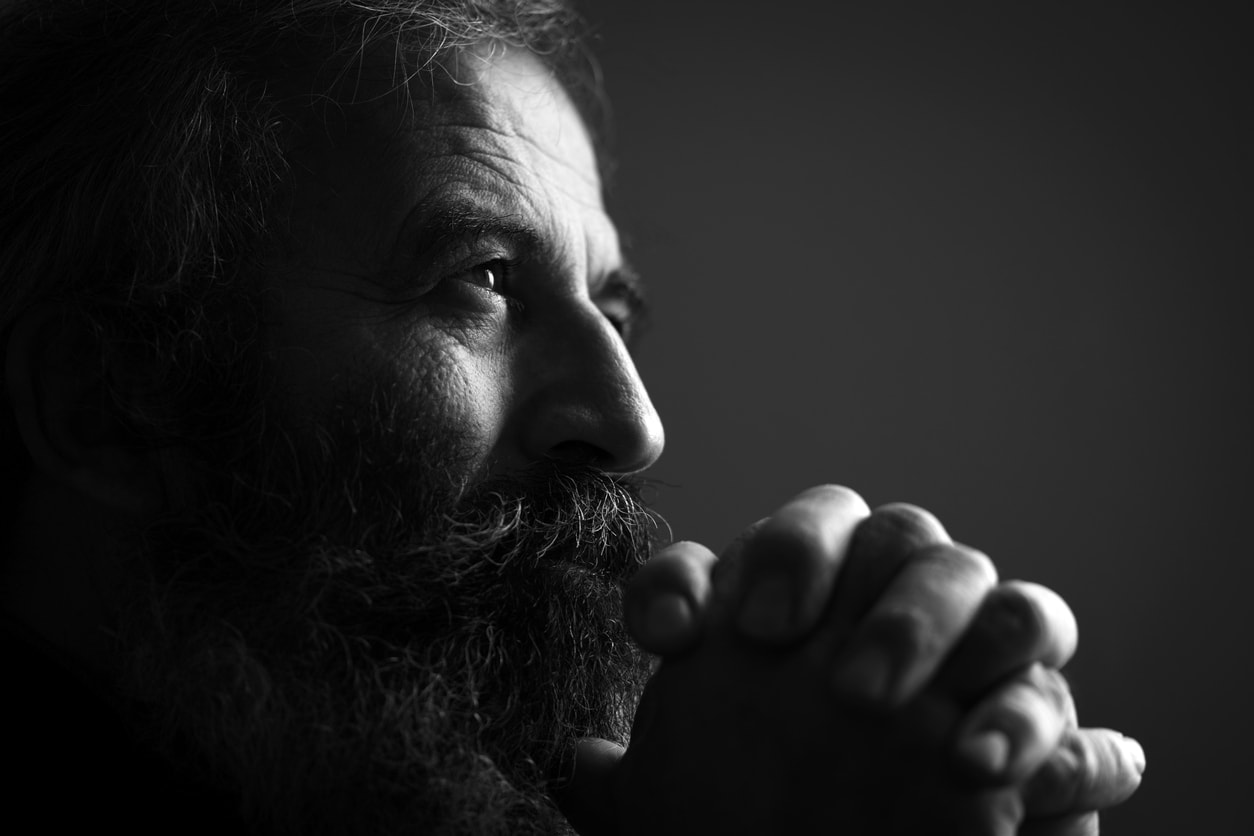
The 50mm f/1.8 has a huge aperture, which allows in tons of light.
That means a couple of things.
First, you can use these lenses even in dim lighting conditions, like taking photos outdoors at dusk or portraits indoors.
Second, all that light means that you can use faster shutter speeds, too.
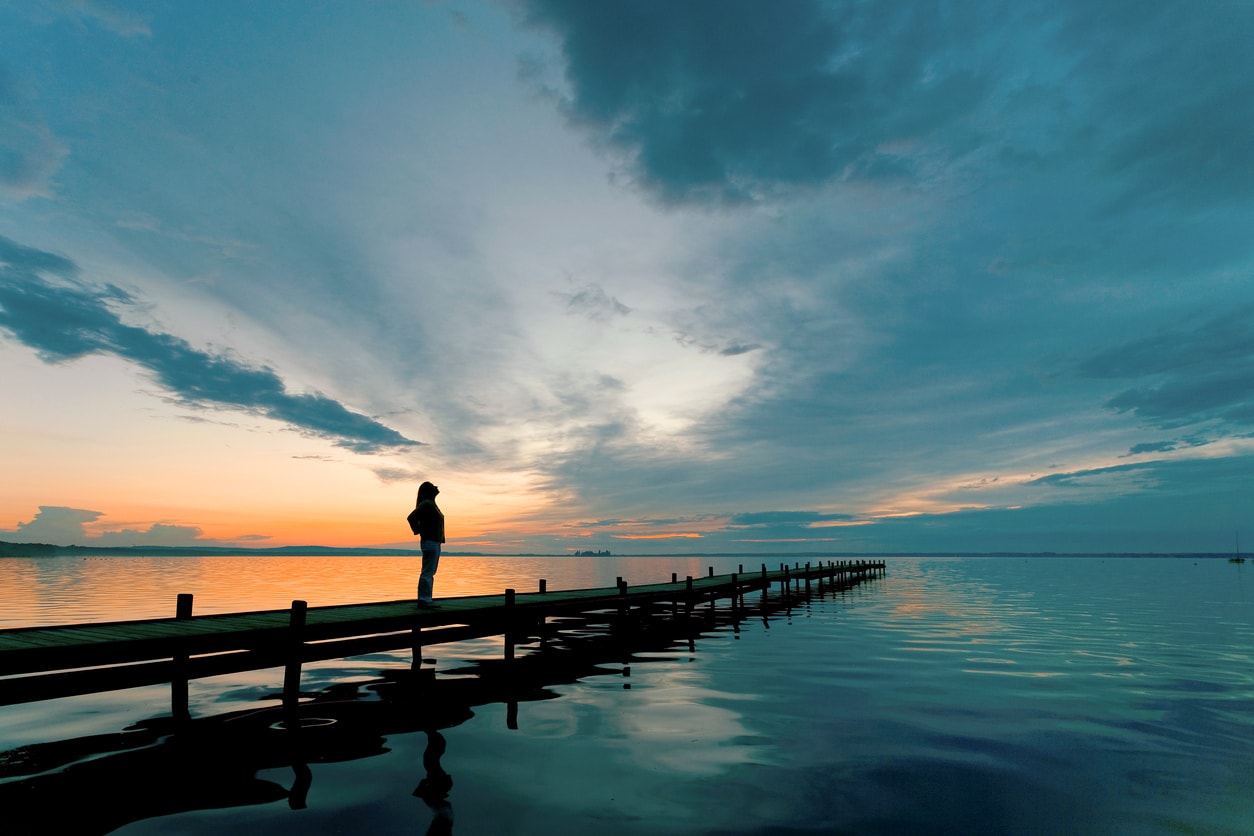
So, instead of having to rely on artificial light or your flash to get enough light for a reasonable shutter speed, you can simply rely on the lens's huge aperture to collect a bunch of light.
With faster shutter speeds, you can shoot handheld in dim lighting and forget about your tripod, making it easier to shoot lean and mean without sacrificing image quality.
Sure, there are other 50mm lenses with even larger apertures (i.e., f./1.4 or f/1.2), but those lenses are WAY more expensive than the f/1.8.
Editor's Note: Have an old 50mm lens (or another lens) you'd like to get rid of? Lensfinder is just the place to do it! There's no fees to list your lens, and when it sells, Lensfinder collects a minimal fee. It's a great way to clear out your stock of old lenses, make a few bucks, and even find a new-to-you lens for your kit. List your lenses for sale today.
It's Small and Lightweight
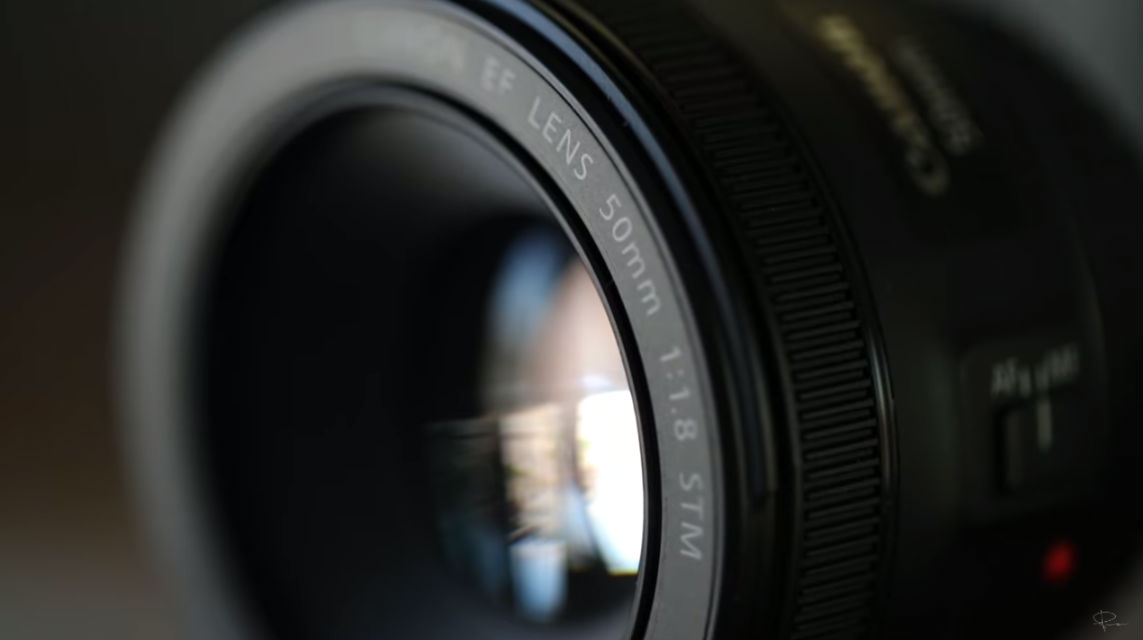 YouTube Screenshot/Peter McKinnon
YouTube Screenshot/Peter McKinnon
Another nice thing about 50mm lenses like the Canon f/1.8 is that it's super small and lightweight.
You can easily add it to your camera bag without taking up tons of room or being concerned about how much weight you have to carry around.
And that goes for when the lens is mounted to your camera as well.
Since it's so small and lightweight, you can work easier and for longer periods of time.
That makes it ideal for weddings, where you're on your feet for hours on end, as well as street photography, when it helps to have a smaller, less conspicuous lens as you take your photos.
And if you're the kind of photographer that gets a little rough with gear, this little guy is well-built and can stand up to some abuse. What's more, if you accidentally drop it or otherwise damage it, it's not like it's hard to replace without spending a ton of money!
Learn More:
The Bokeh is Beautiful
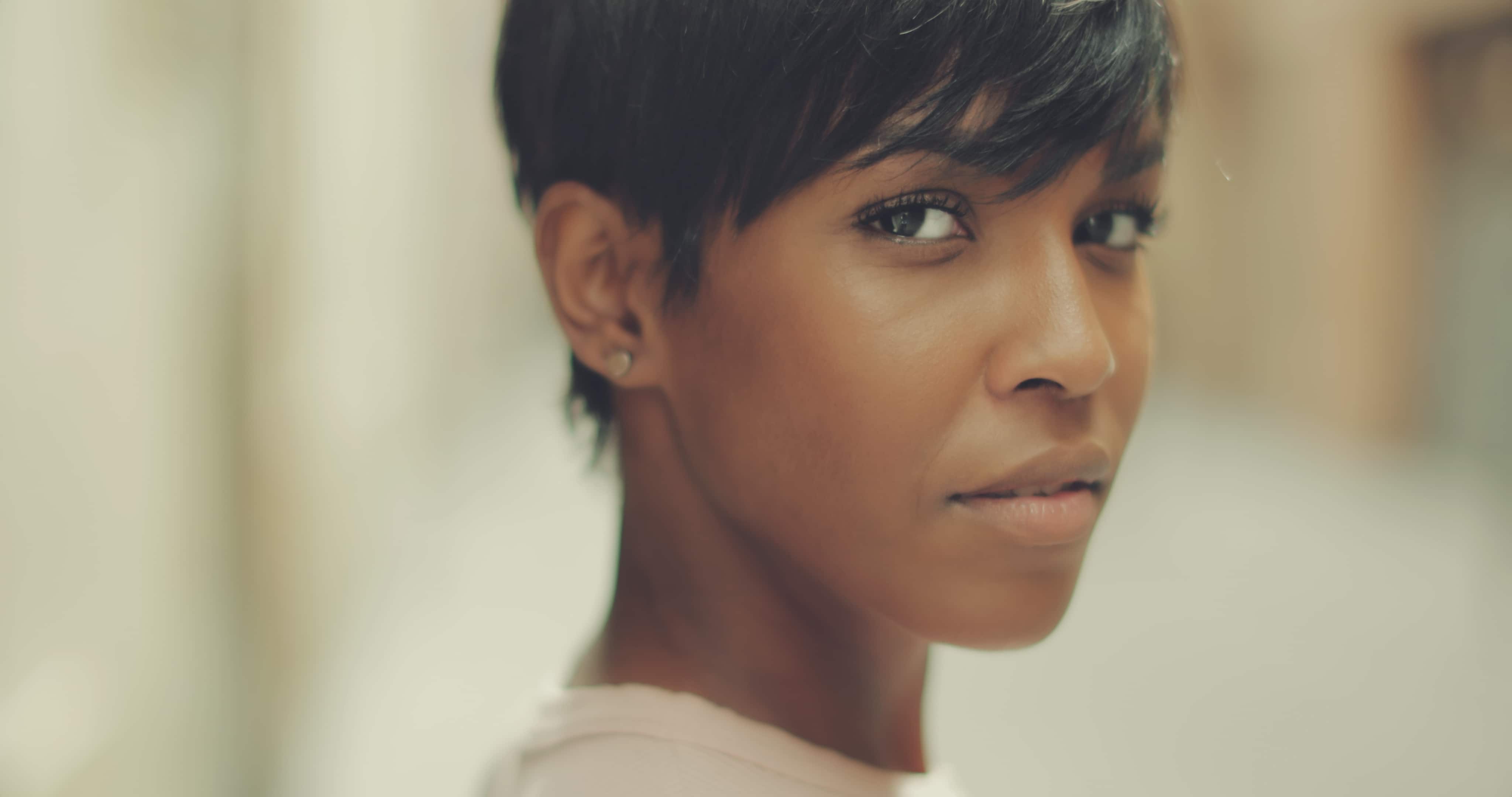
Another consequence of that huge f/1.8 aperture is that you can open up the lens and get beautifully blurry bokeh.
That's handy for all sorts of situations, but in particular for portraits.
By blurring the background, you help separate the subject in the shot, bringing more attention to them in the frame, as seen above.

Having the ability to blur the background is also advantageous if you're shooting in a location in which the background isn't especially attractive.
In other words, this lens is simply one of the best buys out there. Not only is it great for all types of photography, but it produces sharp, detailed images without blowing your budget.
What's not to like about that?!
We Recommend
The Sharpest Canon and Nikon Lenses on a Budget
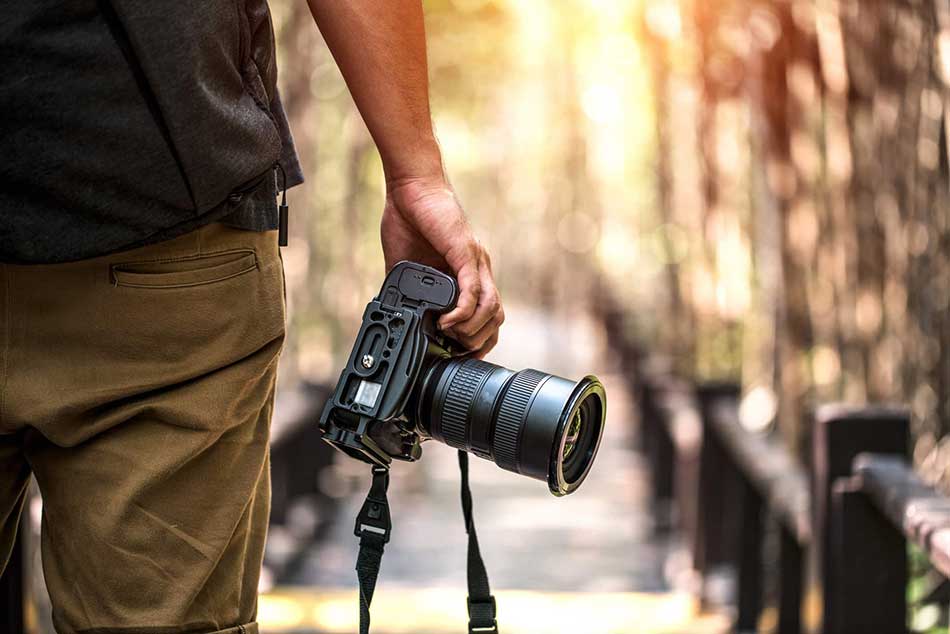
I've said it before, and I'll say it again...
One of the ways to ruin a photo real fast is to have it not be sharp.
There are tons of factors that can lead to a blurry photo, among them, a poor quality lens. Read about the best Nikon lens on our website PhotographyTalk.com.
If you want the sharpest images possible, and you shoot with a Canon or Nikon Camera, consider the following lens recommendations.
Editor's Tip: In the market for a new lens? A pre-owned lens offers plenty of benefits, not the least of which is a better price point. Get a higher-dollar lens without spending as much money at Lensfinder.
Table of Contents:
- Canon EF 35mm f/1.4L II USM
- Sigma 50mm f/1.4 ART DG HSM for Nikon
- Wrapping It Up: The Sharpest Canon and Nikon Lenses on a Budget
Canon EF 35mm f/1.4L II USM
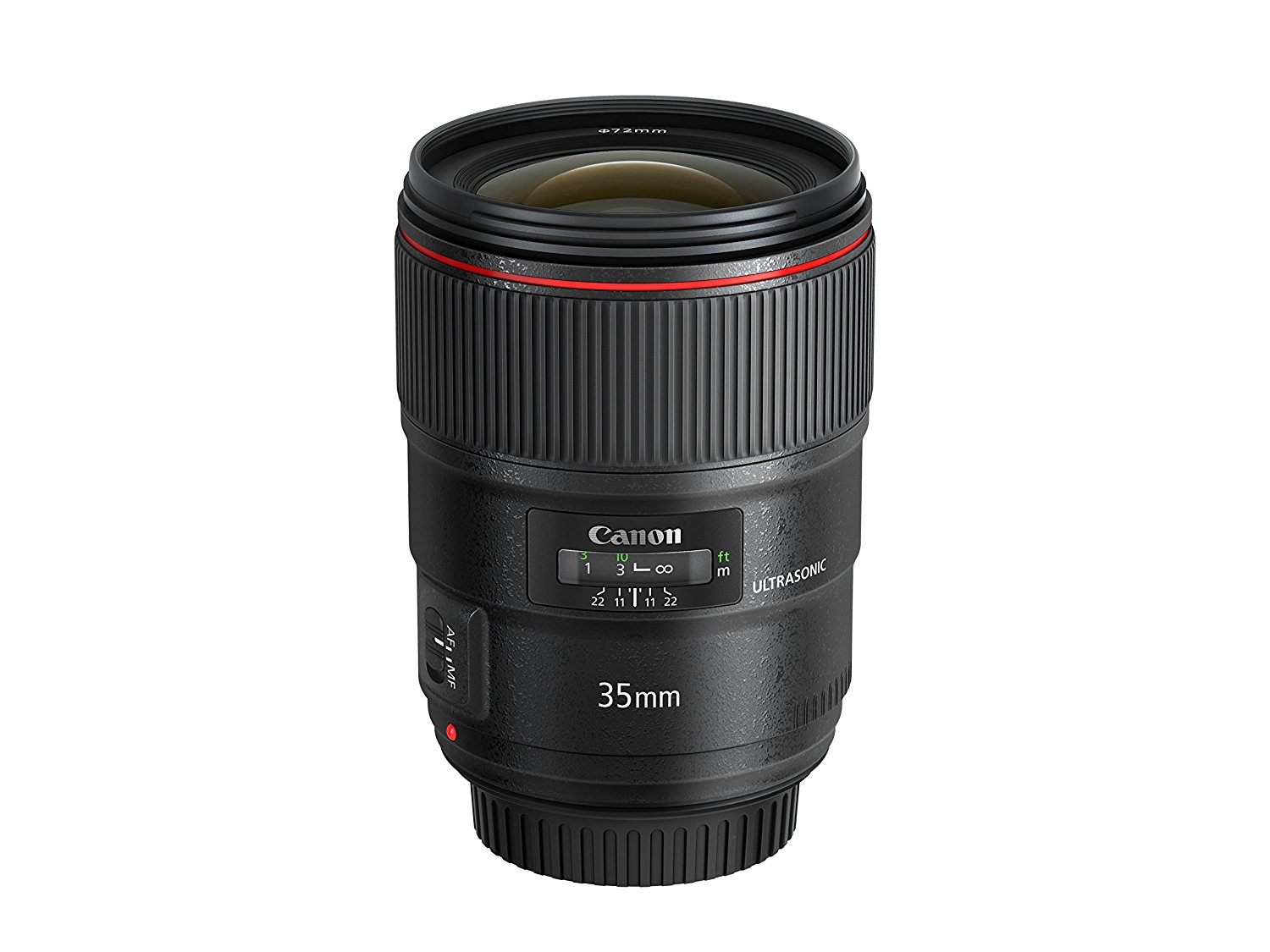
With a price of around $1,650, the Canon EF 35mm f/1.4L USM isn't a cheap lens.
However, the pricetag is certainly justified given the performance of this lens.
Not only is it ultra sharp, earning an "excellent" rating from DxO Mark, but it also produces images that have impeccable clarity.
At 35mm, it qualifies as a wide-angle lens on a full frame Canon camera. On an APS-C camera, its effective focal length of 56mm puts it squarely in the standard lens territory.
The lens produces minimal aberrations and color fringing, a result of a new BR optics element that Canon implemented into the lens. See the lens in action in the video above by DigitalRev TV.
With a maximum aperture of f/1.4, it's a low-light beast as well, offering you incredible low-light performance - with sharp results, too.
Better still, since it's a luxury lens, it's sealed to prevent dust and water from getting inside, so you can use it in inclement weather without as much worry about your $1,650 investment getting ruined.
It's got a small form factor and is lightweight, too, making it ideal for photographers that need to shoot on the move, like for landscapes, weddings, and street photography.
Versatile. Lightweight. Unbelievable sharpness...
There's a lot to like about the Canon EF 35mm f/1.4L USM!
Editor's Tip: If the Canon EF 35mm f/1.4L USM is out of your price range, try the Canon EF 35mm f/2 IS USM. It gets good marks from DxO in the sharpness department, and commands a price roughly one-third of the f/1.4L. You can also find great deals on pre-owned lenses to save yourself some money!
Sigma 50mm f/1.4 ART DG HSM Lens for Nikon
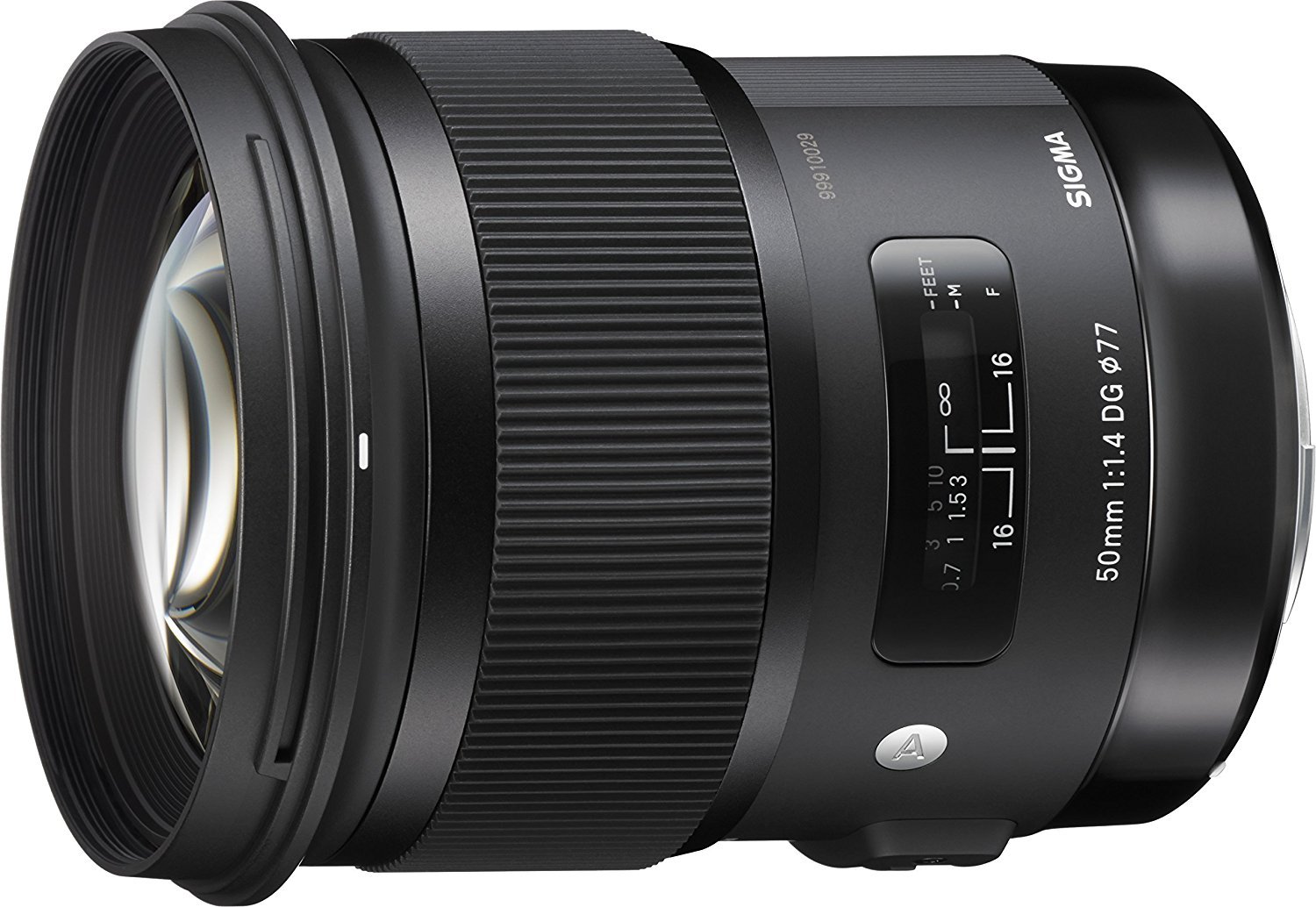
When it comes to sharp lenses for Nikon, it's tough to beat the Sigma 50mm f/1.4 ART DG HSM.
Unlike the Canon 35mm f/1.4 discussed above, this Sigma lens is actually affordable at around $850 brand new.
This lens got an "excellent" score from DxO Mark as well, placing it among the sharpest lenses around for Nikon camera systems.
The 50mm focal length is ideally versatile - offering a standard field of view when mounted to a full frame camera and a short telephoto view (75mm) when mounted to a crop sensor body.
Either way, this lens will perform admirably indoors or out, light or dark, and for a wide range of subject matter.
It's Hyper Sonic Motor (HSM) means it's quiet as a mouse for situations like street photography or wedding photography when you want to go as unnoticed as possible.
The Special Low Dispersion glass and multi-layer coating mean the images you produce will be sharp and clear. The lens's autofocus system helps ensure that moving targets are sharply in focus as well. Watch a detailed review of the lens in the video above by Dustin Abbott.
The lens has 13 elements in eight groups, which means you get unparalleled performance, even when you open the lens up to its maximum f/1.4 aperture.
In short, this lens is one of the best you can buy, not just because it's so sharp, but because of it's all-around stellar performance. The price helps too!
Editor's Tip: For an even more affordable Nikon lens, try the Nikon AF-S FX NIKKOR 24mm f/1.8G ED. At less than $700 brand new, you can get a sharp, versatile lens without breaking the bank.
Wrapping It Up: The Sharpest Canon and Nikon Lenses on a Budget
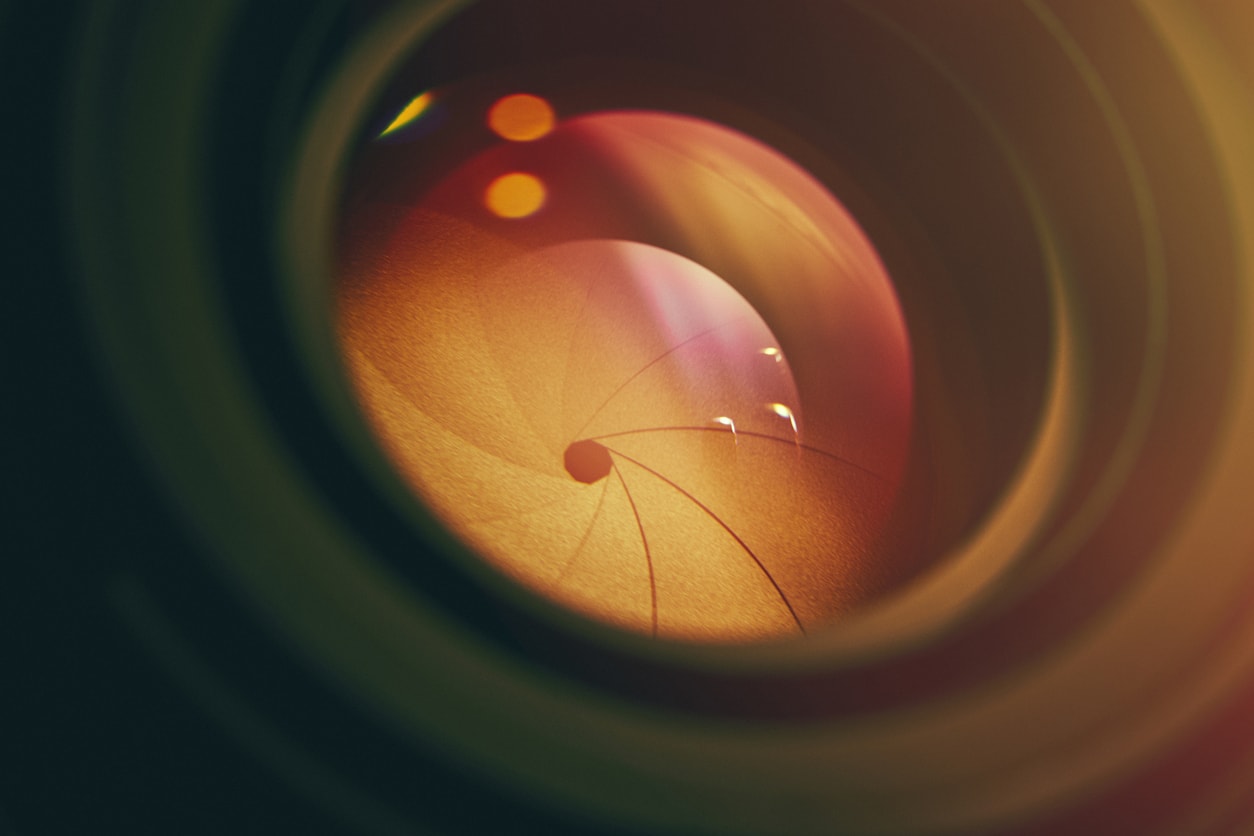
As I noted in the introduction, there are certainly a lot of factors at play when it comes to getting a sharp image.
But outfitting yourself with a high-quality lens is definitely something you can do to improve the quality of the images you take.
But remember, you don't have to spend a ton of money to get better results.
Whether budget is a concern or not, buying pre-owned glass is a smart move.
Check out Lensfinder today and see what lenses you can find!
We Recommend
The Top 3 Lenses You Need to Buy
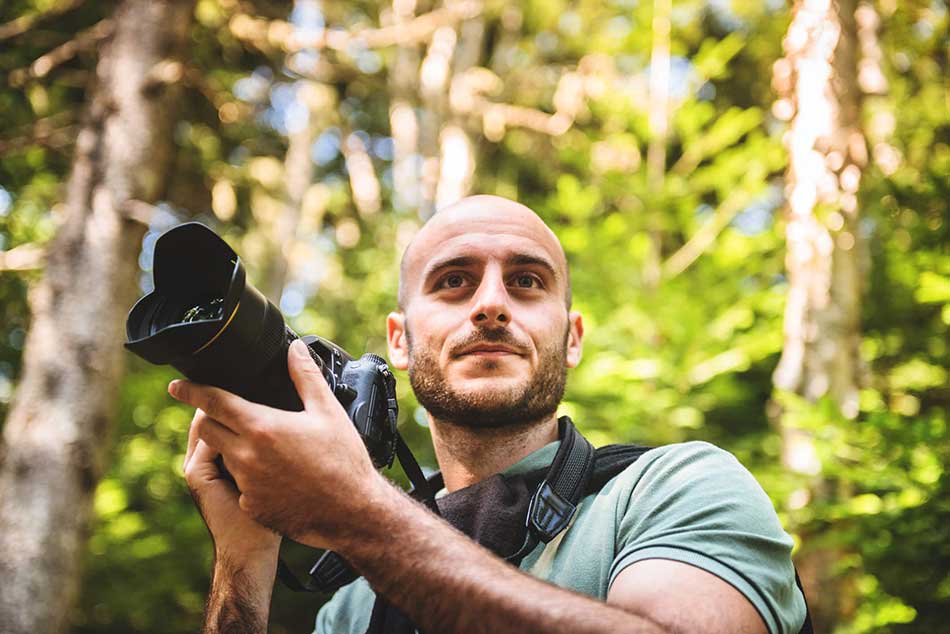
If you're like most beginning photographers, you probably had a bit of sticker shock when you bought your first gear.
Today's cameras aren't cheap, nor are lenses - good ones, anyway.
In the past, that meant that most of us had to either scrimp and save to get one great lens or just muddle along with the cheap kit lenses that usually come with cameras.
But that's not the case anymore...
I discovered a way that you can get multiple lenses while saving a ton of money.
I'll expound on that in a bit, but first, let me offer up a list of the top three lenses you should have in your camera bag.
50mm Prime

Ask a group of photographers to name the first lens a new photographer should buy, and I'm willing to bet the majority of them will say a 50mm prime.
Many 50mm prime lenses have huge maximum apertures like f/1.2, f/1.4, or f/2, giving you greater flexibility for shooting in low-light situations. The bigger the aperture, the more expensive the lens, though, unless you find great deals on pre-owned 50mm lenses, of course.
Those massive apertures are also great for blurring the background in portraits.
Additionally, because they're a fixed lens with fewer elements, 50mm primes (well, all primes...) tend to be extremely sharp - much more so than their zoom counterparts.
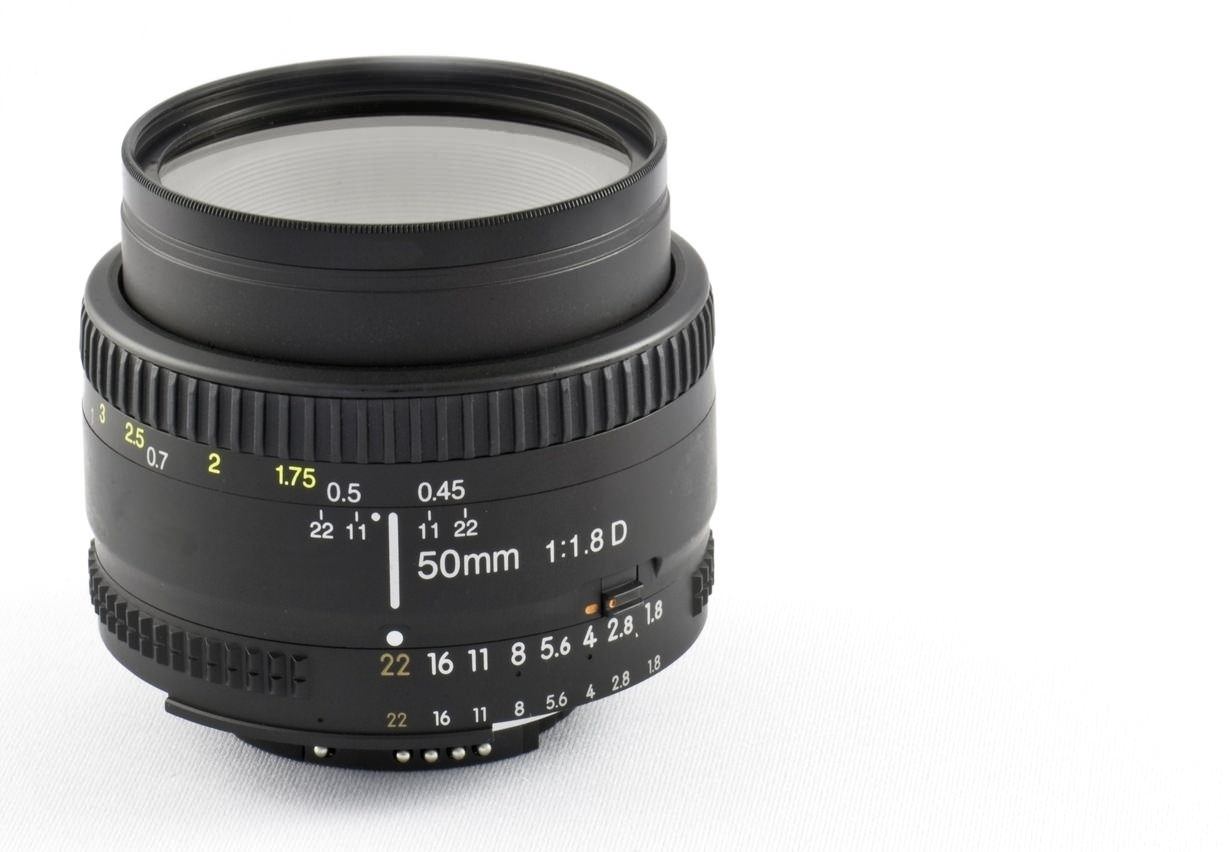
These lenses are also incredibly versatile, making them a great walkaround or travel photography lens.
You can take portraits with great background blur, pleasing landscapes with a narrower field of view, intimate street scenes, and you can even reverse-mount a 50mm lens and use it for macro photography, too.
Because of that versatility, a 50mm lens is a great learning tool. It can expose you to different genres of photography while also forcing you to learn how to "zoom with your feet" in the absence of a zoom.
That means you'll develop a better understanding of composition and framing, and with their great low-light performance, you can learn more about lighting as well.
Learn More:
70-200mm Zoom
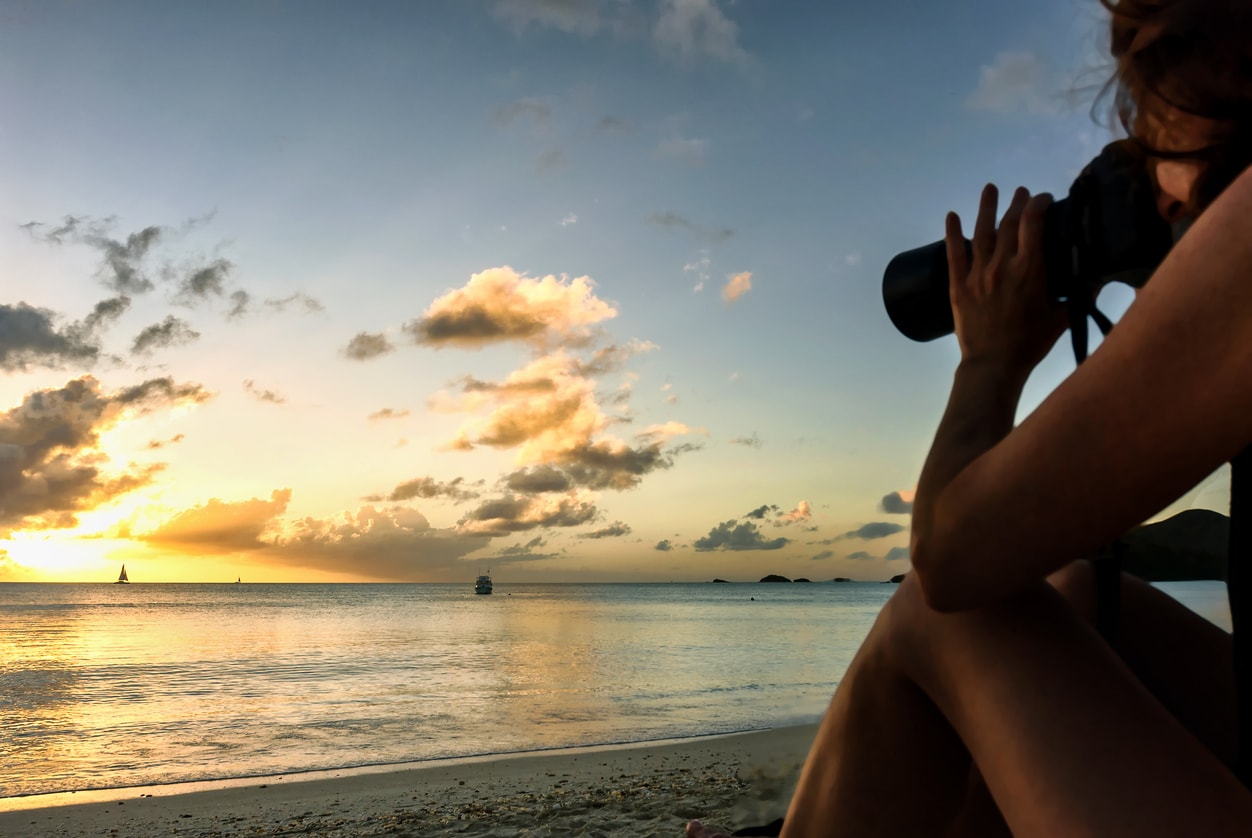
The nice thing about zoom lenses is that they're incredibly versatile. That's why camera manufacturers often include a zoom lens as the kit lens that comes with the camera at purchase.
But your kit lens has limitations, including the build quality (they don't want to give away a top-notch lens!) and its zoom range.
Usually, kit lenses are of the 18-55mm variety, which is fine, but as you gain skills, you'll want something more robust.
A 70-200mm zoom fits the bill.
Like the 50mm lens discussed above, 70-200mm lenses are incredibly versatile.
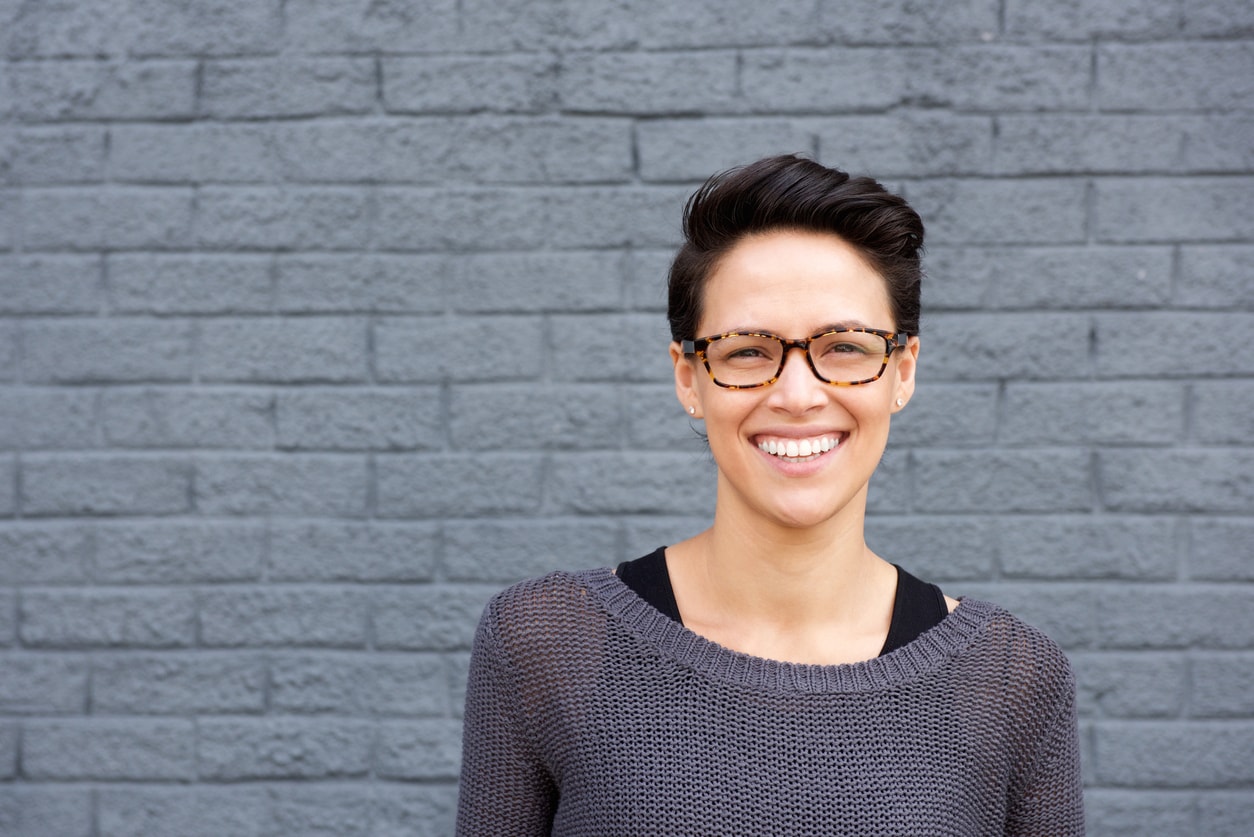
On the 70mm end, you can take portraits with a nice field of view and slight compression for a pleasing look.
On the 200mm end, you have plenty of focal lengths to take photos of distant subjects like wildlife and still fill the frame.
And with the wide range of focal lengths in between, you can take photos of sporting events, nature, cityscapes - you name it.
These lenses are typically built tough, too. That means you can go out shooting in the rain or snow, and by and large, these lenses will perform admirably.
Additionally, higher-end 70-200mm lenses have large apertures, making them both versatile and fast.
And if you can find a deal on a pre-owned lens, that means you get excellent glass and save money too.
What's not to like about that?!
Learn More:
24mm Wide-Angle
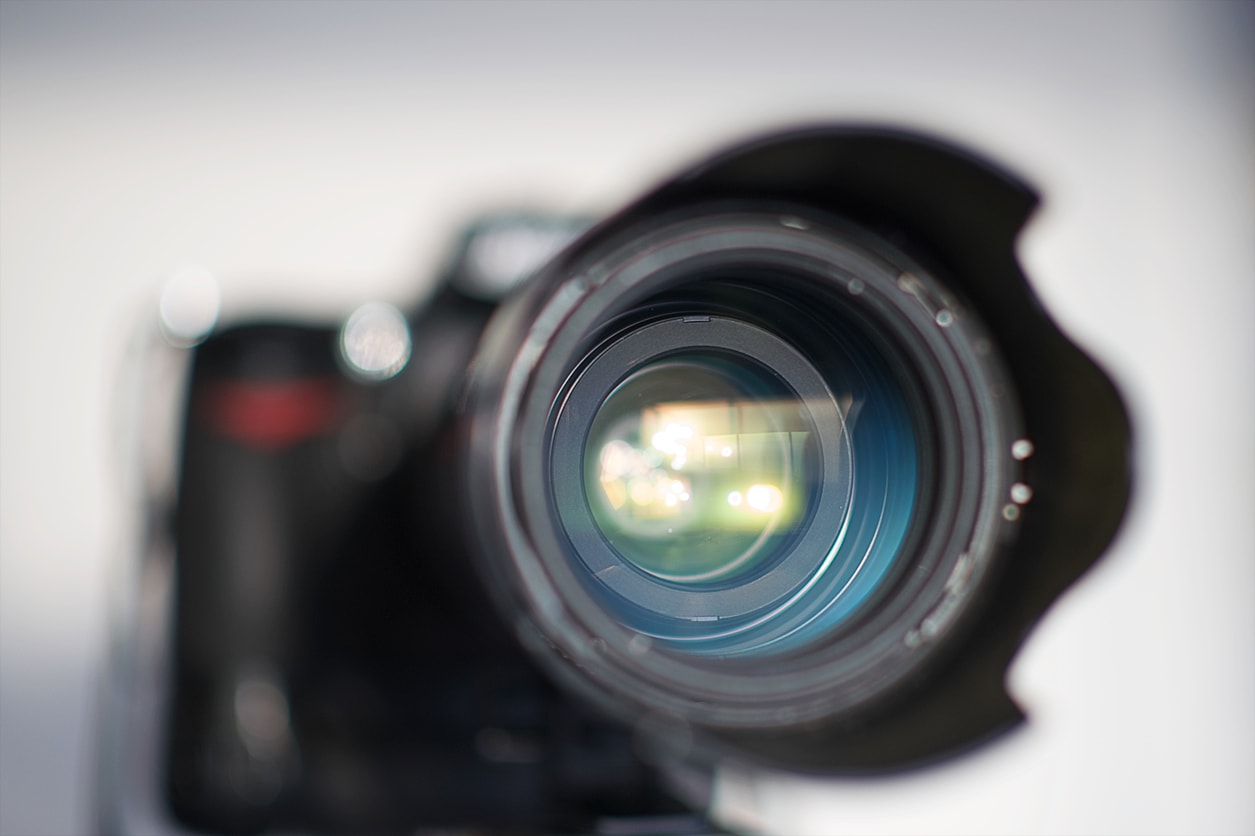
There's a lot of landscape photography enthusiasts out there, and if you count yourself among them, a good wide-angle lens will likely be your favorite glass.
Wide-angle lenses are great for landscapes because they offer such a vast field of view.
That means that you can capture more of the scene in one shot, more closely replicating what you see with your own eyes.
In other words, something like a 24mm lens will be able to capture the vastness and grandeur of a landscape much more easily than either of the other lenses discussed above.
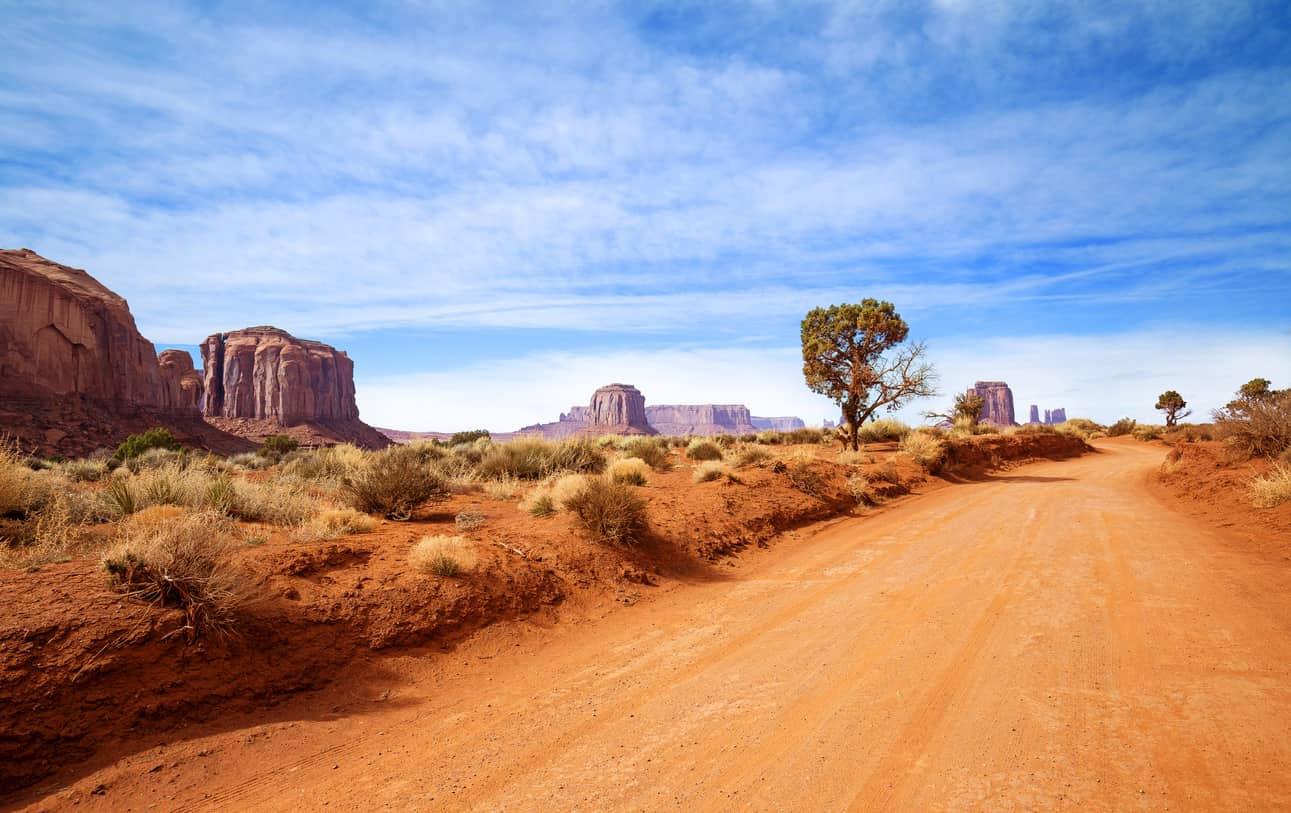
Like 50mm lenses, 24mm lenses typically have large maximum apertures for low-light shooting and excellent optics for sharp results.
That makes them ideal for shooting landscapes during the day and the night, and even for tackling astrophotography as well.
You can even use a 24mm lens for group portraits, street photography, and photos of events, like concerts or weddings, in which you want to capture large crowds or venues.
In other words, like the other lenses listed above, a 24mm lens is a great choice if for no other reason than it's a versatile piece of glass.
Learn More:
How to Get All These Lenses Without Breaking the Bank

As I mentioned in the introduction, camera lenses aren't cheap, especially higher-end models.
But if you commit yourself to looking for the right lenses in the right places, you can often find great deals.
I recently came across a great website for doing just that - Lensfinder.
As the name indicates, the site is all about lenses, so you don't have to sort through cameras, tripods, flashes, and other gear that you don't need.
With an easy-to-use search engine, you can type in the specs you're looking for in a lens and have a look at the matching listings.
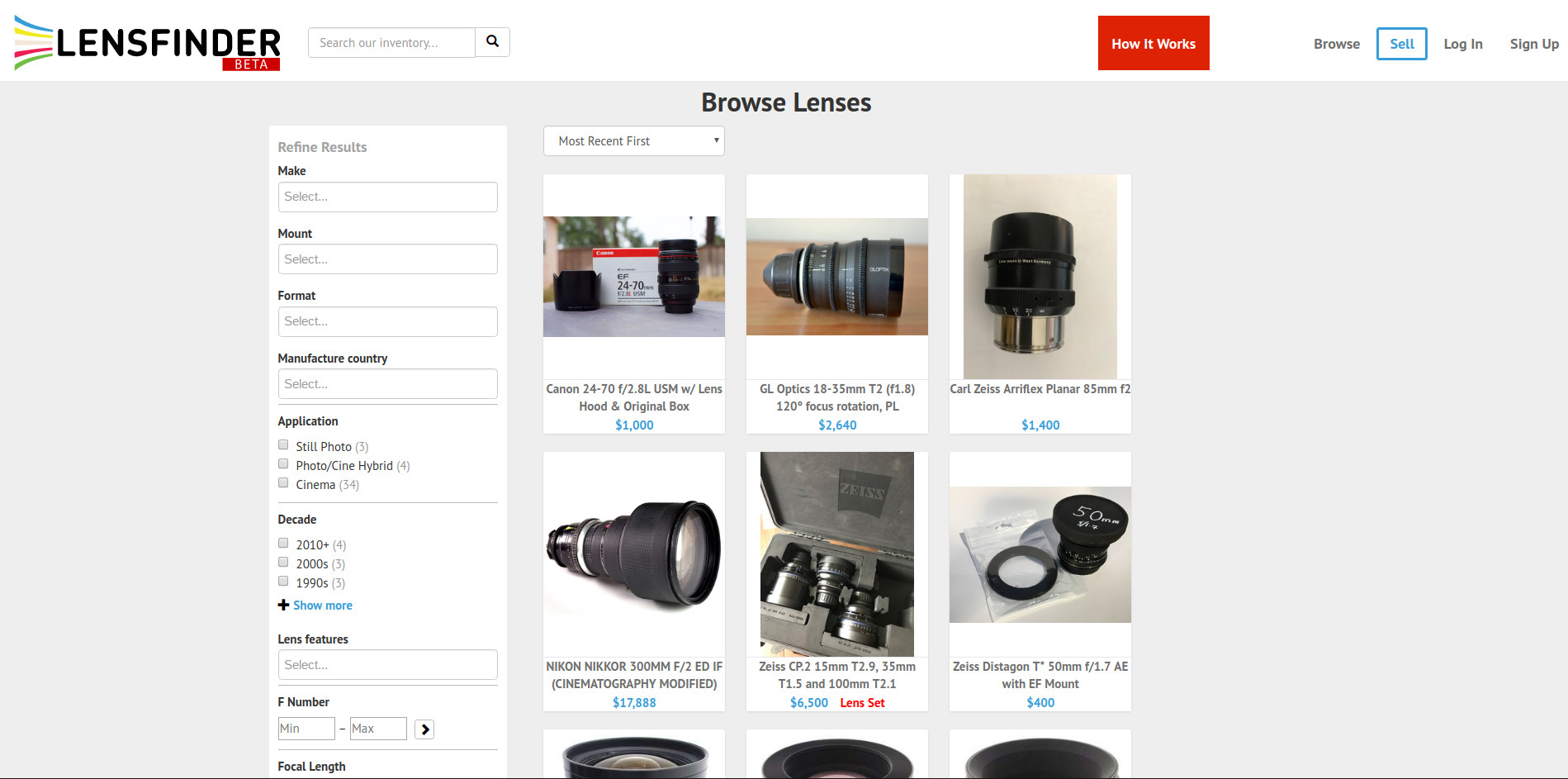
And since Lensfinder's listings are of used gear, you can find what you're looking for at much better prices than you'll find on new glass.
Talk about making the most of your budget!
And don't think that this is some sort of Craigslist for lenses where you run the risk of getting ripped off...
Lensfinder has a built-in protections, like a communication system so you can ask questions quickly and easily about the gear you're interested in.
And once a transaction is complete, there's a rating system, so everyone knows how the experience was for you.
Speaking of transactions, you can pay via PayPal, and in the future, you can pay via wire transfer or with a credit card, too.

Maybe the best part of Lensfinder is that you can also sell your old gear.
List your items for free, and if they don't sell, you don't pay a dime. If they do sell, there's a nominal 3.99 percent transaction fee.
That's a small price to pay for getting eyes on your old lenses!
At the end of the day, we all want to have great kits with awesome gear, but the cost is prohibitive to a lot of folks.
But Lensfinder changes that dynamic by offering a marketplace where people like you and I can buy great pre-owned lenses in a way that's safe and secure, and sell our old lenses when the time comes.
If you want to add a lens or two to your bag, be sure to check out what Lensfinder has to offer.
We Recommend
The Top 4 Lenses Landscape Photographers Wish They Had
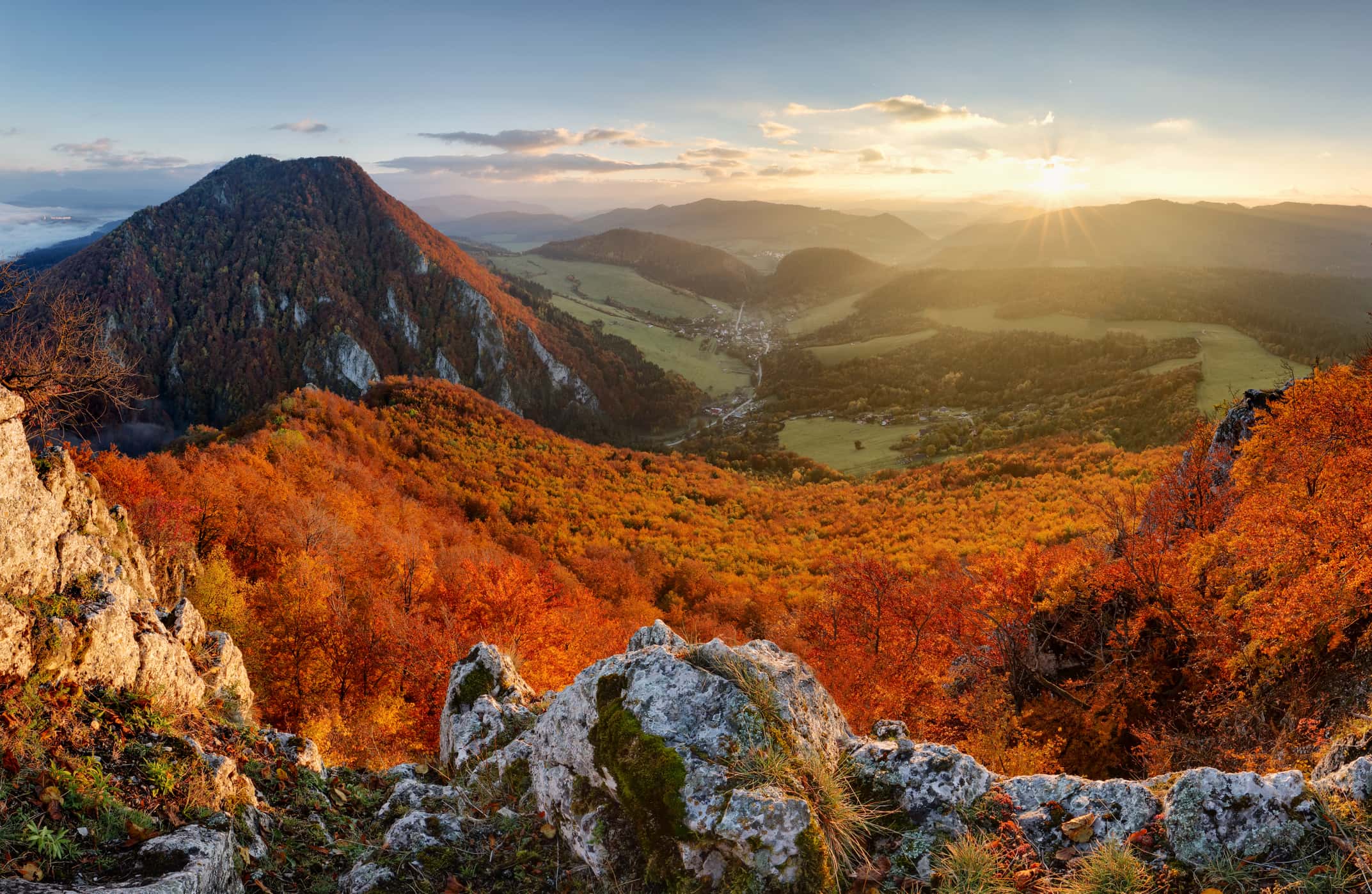
The lens a photographer uses helps them portray the world around them.
In some cases, they offer a wide, grand view of the scene. In other cases, they get viewers up close and personal with a single landscape element.
There are a variety of lenses in between these two extremes as well, giving landscape photographers all sorts of choices regarding how to capture their subject.
Perhaps more so than other genres, in landscape photography, the choice of lens you make has a significant impact on the manner in which your vision comes to life.
That's because you can't just manipulate the subject as you would in a portrait. Instead, you have to manipulate how you capture the subject with your lens to change the look of your image.
The problem for many photographers, however, is that lenses (good ones, anyway) are expensive.
Fortunately, there's plenty of ways to save a few bucks and still get a great lens by buying pre-owned glass.
With that in mind, here's four types of lenses to keep your eye on if you're a landscape photographer.
Ultra Wide-Angle Lens
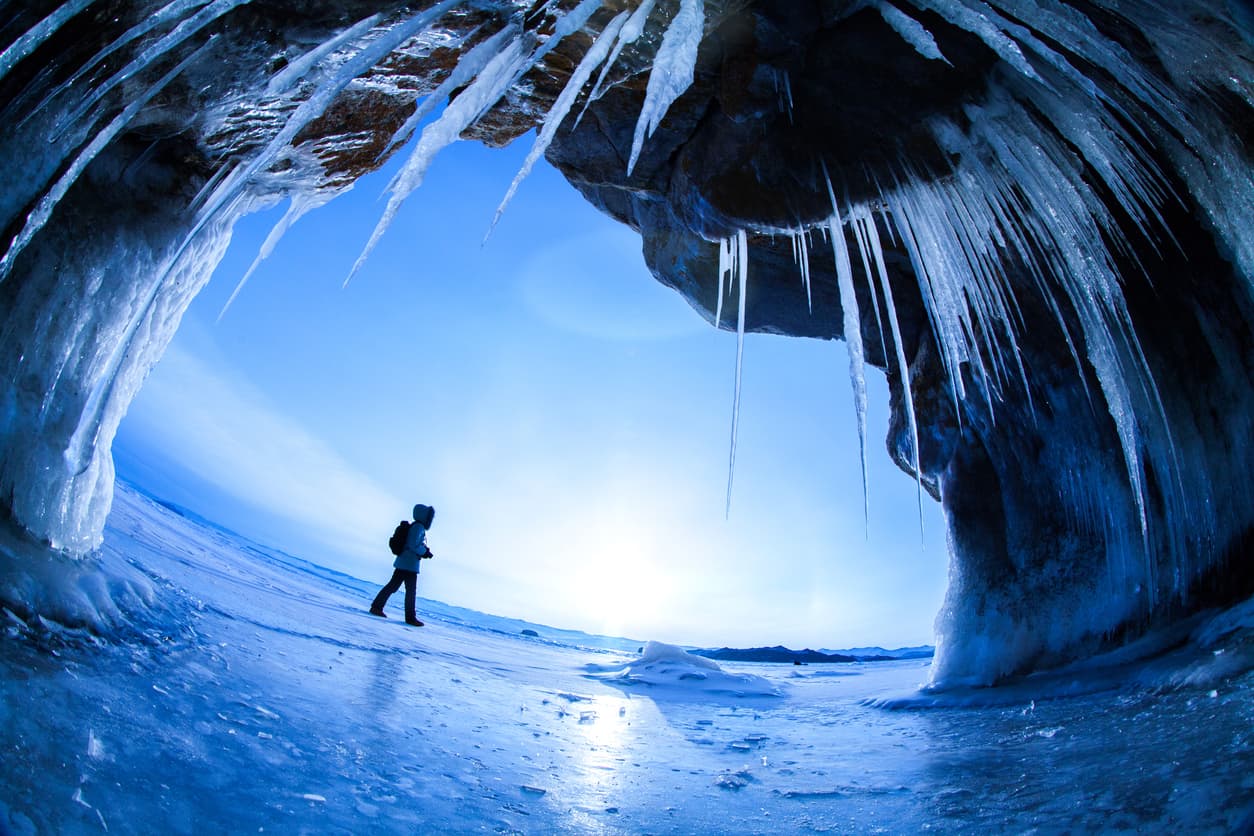
By far, the most popular landscape lens is a wide-angle (more on that in a minute). But if you go wide-angle, why not try ultra wide-angle while you're at it?
These lenses offer an interesting angle of view that's so wide that it actually bends the horizon line, as seen in the image above.
Sure, images like the one above are clearly not a natural representation of a landscape as we see it with our own eyes, but it's nevertheless an impactful way of capturing a landscape.
What's more, these lenses are ideal for situations in which you don't want to decide which elements of the landscape to include and which ones to exclude in the shot.
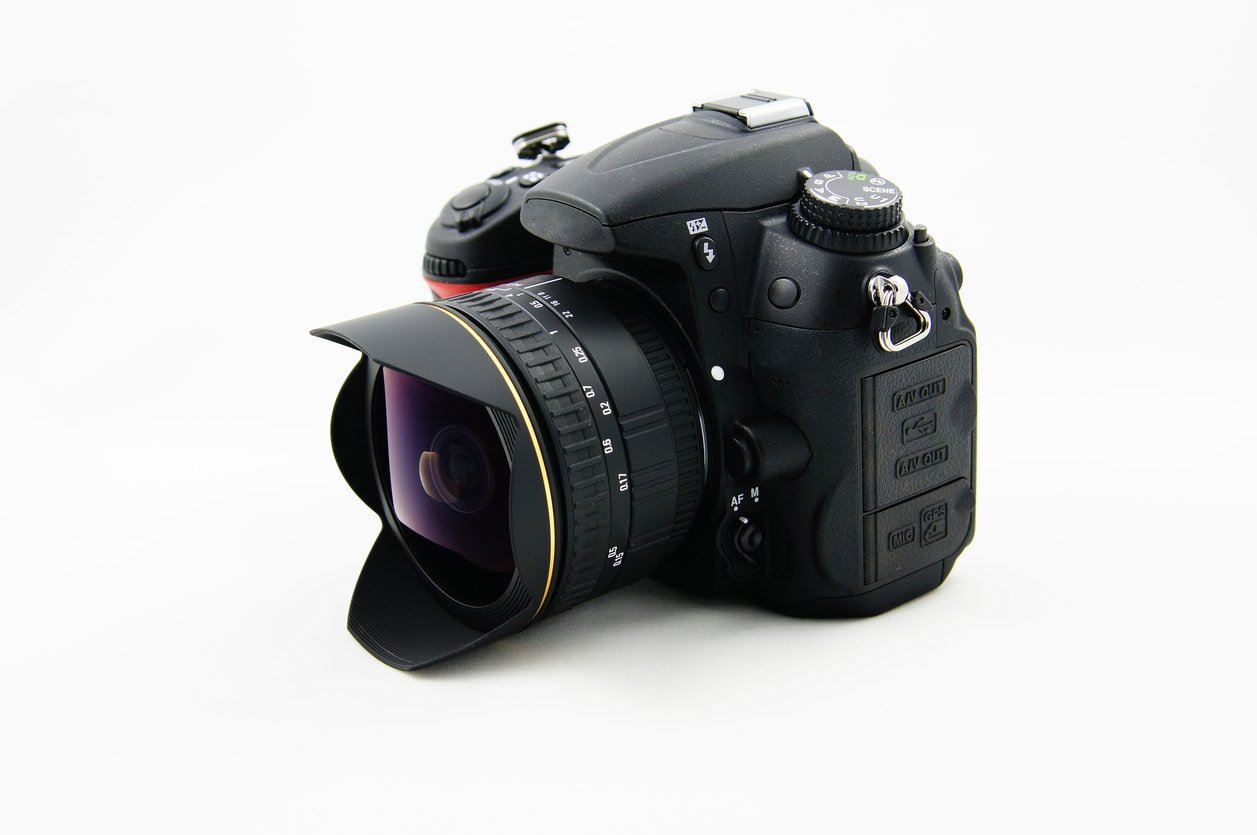
Ultra wide-angle lenses are considered to be anything shorter than 24mm on a full frame camera and anything shorter than a 15mm lens on an APS-C camera (the fisheye lens seen on the camera above is considered an ultra wide-angle).
The difference, of course, is due to the difference in sensor size between the two types of cameras. If you're unclear about sensor size and how it impacts effective focal length, check the "Learn More" section below.
Ultra wide-angle lenses might not be as popular as some of the others on our list, but that doesn't mean there isn't a huge selection of them out there.
No matter if you shoot with a Canon, Nikon, Panasonic, FujiFilm, Sony, or some other brand, you can find an ultra wide-angle lens to fulfill your landscape photography vision.
Learn More:
Wide-Angle Lens
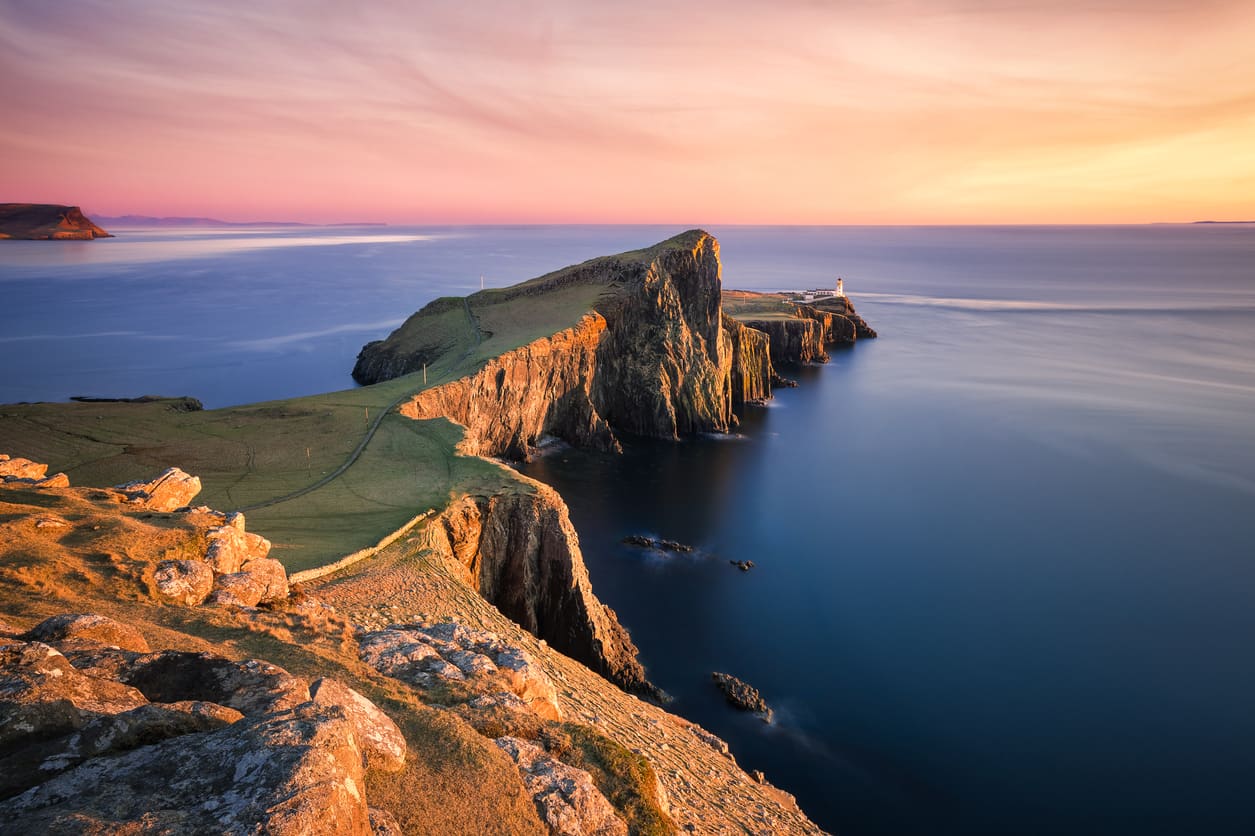
As noted earlier, wide-angle lenses are the most popular for landscape photography.
Though they don't have the vast field of view of an ultra wide-angle, they are still able to incorporate plenty of real estate from left to right so that viewers get the full view of the scene, as seen above.
Likewise, wide-angle lenses are top choices because they can incorporate lots of foreground and background, meaning you can capture both the land and the sky with ease, again, as seen in the image above.
Paired with the appropriate aperture, that means you can get an entire landscape in sharp focus due to a large depth of field.
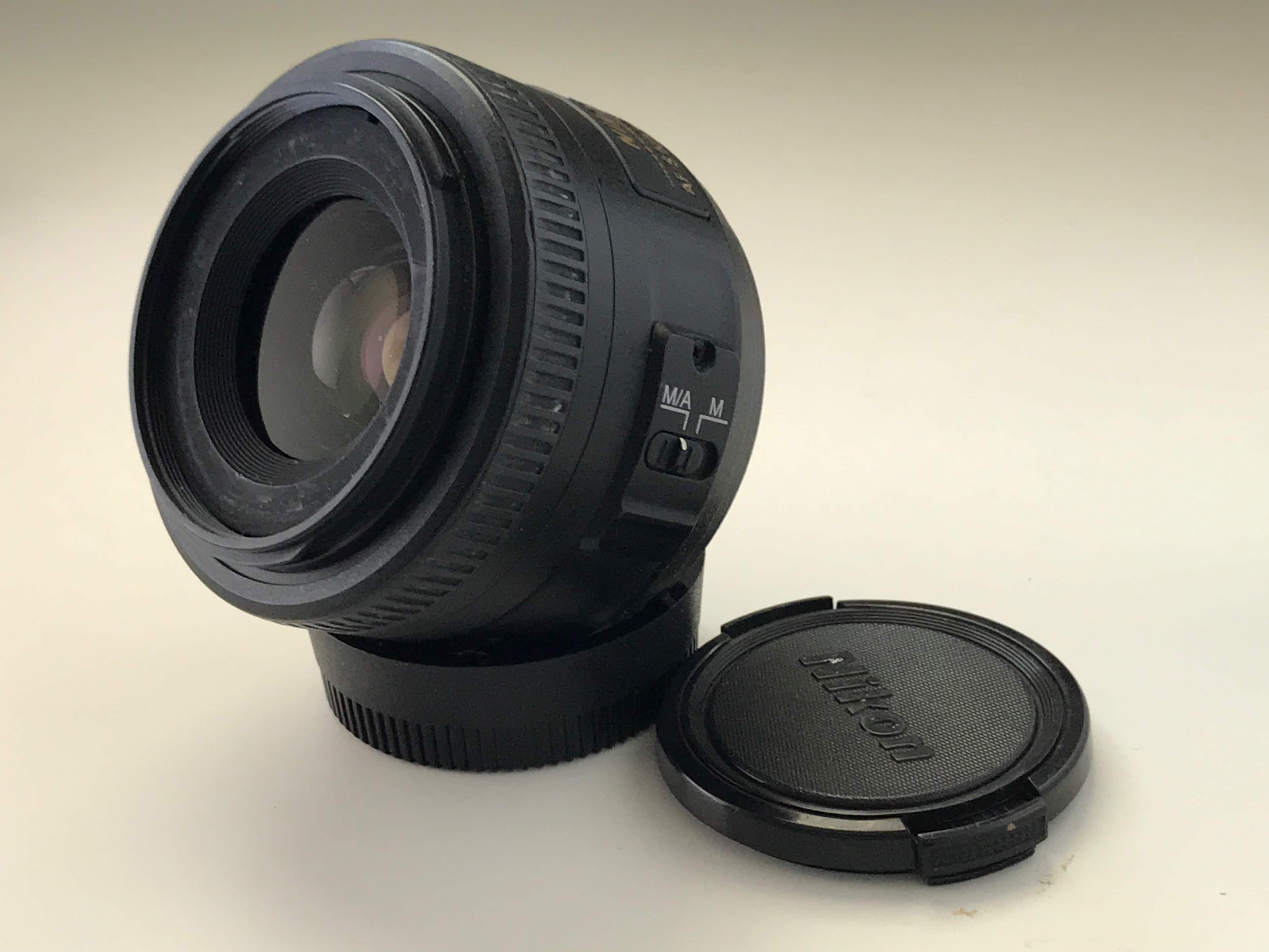
A consequence of using a wide-angle lens is that they exaggerate the perceived distance between objects.
That means that the mountain range that looks so impressively large to your naked eye might seem a little small in a wide-angle shot.
Therein lies the tradeoff - you can capture more of the scene in front of you with a wide-angle lens, but the elements in the scene, especially those in the background, will appear smaller.
Still, if you're after a grand, dramatic feel to your landscape shots, a wide-angle lens is the way to go.
Typically, these lenses are considered to be less than 35mm on a full frame camera and less than 24mm on an APS-C camera.
Learn More:
Standard Lens

Standard lenses, which on a full frame camera is considered around 50mm and on an APS-C camera is considered around 35mm, most closely replicate what we see with our own eyes.
That makes standard lenses an optimal choice if your goal is to portray the landscape in a way that looks familiar and feels comfortable, as the image above does.
With an angle of view that's typically in the 50-55 degree range on the diagonal, standard lenses offer a much tighter view of the landscape than ultra wide-angle and wide-angle lenses.
But, because our eyes have a similar angle of view, images taken with a standard lens are quite pleasing.
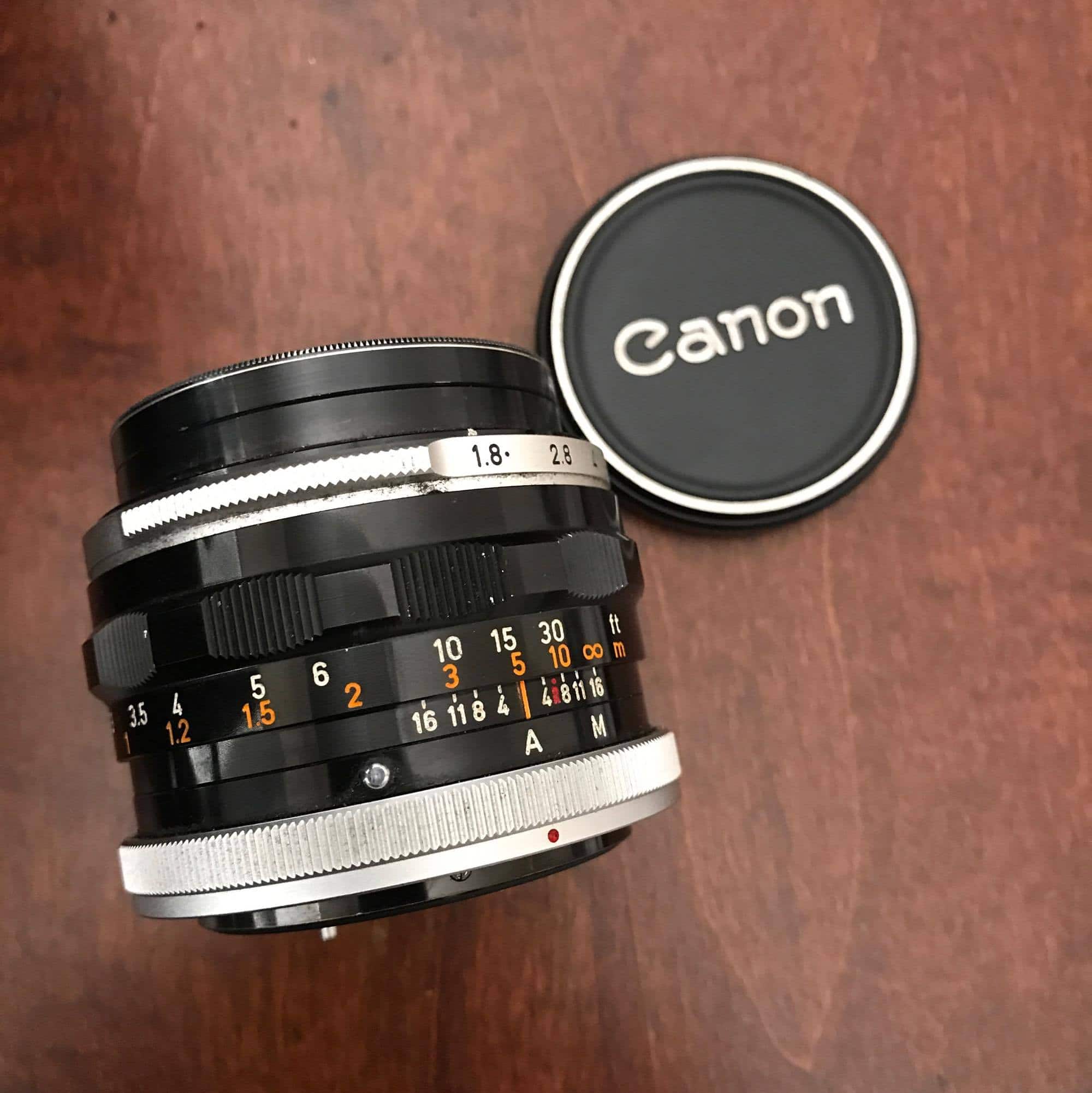
Another advantage of using a standard lens is that they help drive attention toward the subject. So, rather than offering a wide, grand view, you get a more focused shot that highlights the primary subject more than anything else.
Likewise, standard lenses are incredibly versatile. For example, if you shoot with an APS-C camera and pair that with a 35mm lens, you can get pleasing landscape shots, great portraits, tackle street photography, and just about anything else you wish.
These lenses - especially prime lenses that have a fixed focal length (like the 50mm Canon lens shown above) - also tend to have very large maximum apertures, which is great for low-light shooting.
So, if you want a lens that produces pleasing results, that's versatile, and allows you to shoot low-light landscapes with greater ease, give a standard lens a try.
Learn More:
Telephoto Lens
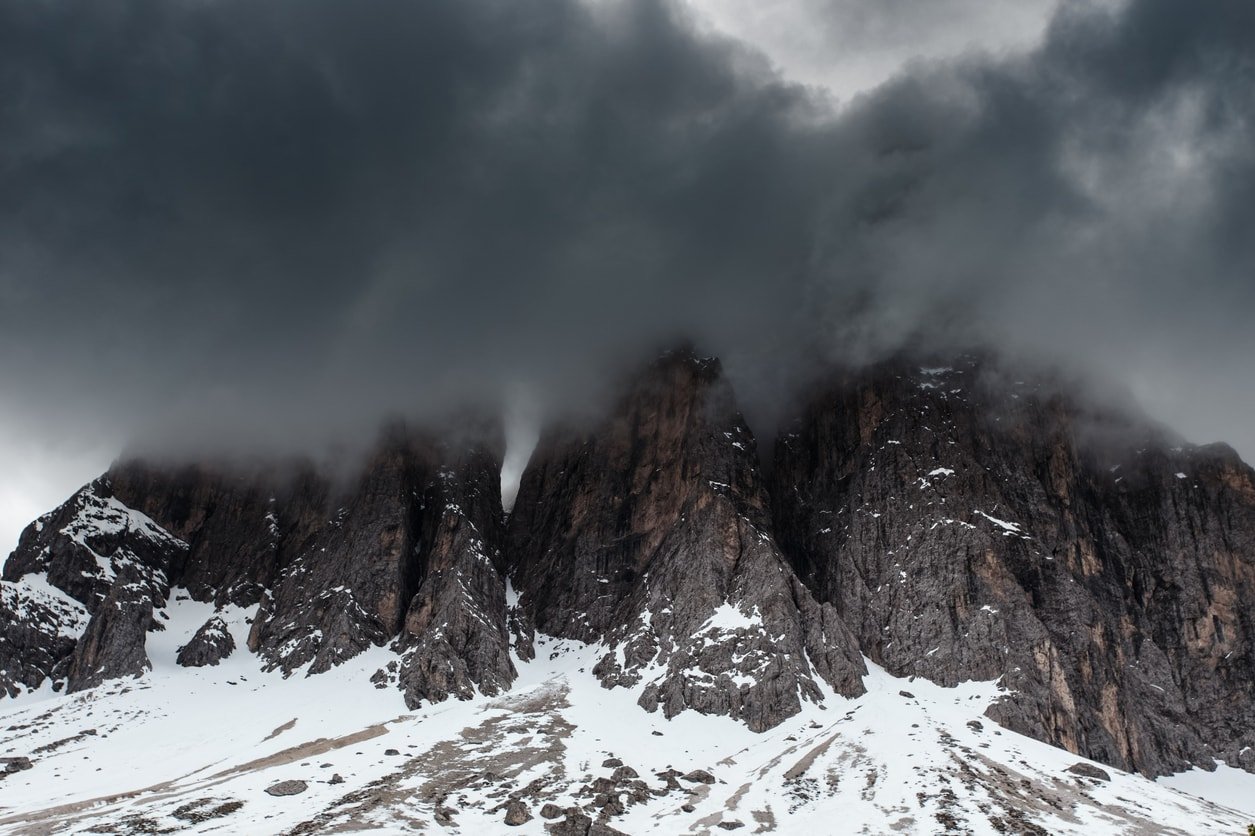
On the opposite end of the spectrum from ultra wide-angle lenses are telephoto lenses.
These lenses are big, bulky, and offer the narrowest angle of view among all the lenses on this list. Typically, telephoto lenses are anything above around 85mm on a full frame camera and 50mm on an APS-C camera and extend up to 600mm or more.
That narrow angle of view means that you can very easily highlight a specific area of the larger landscape and fill the frame with it, much like has been done in the image above.
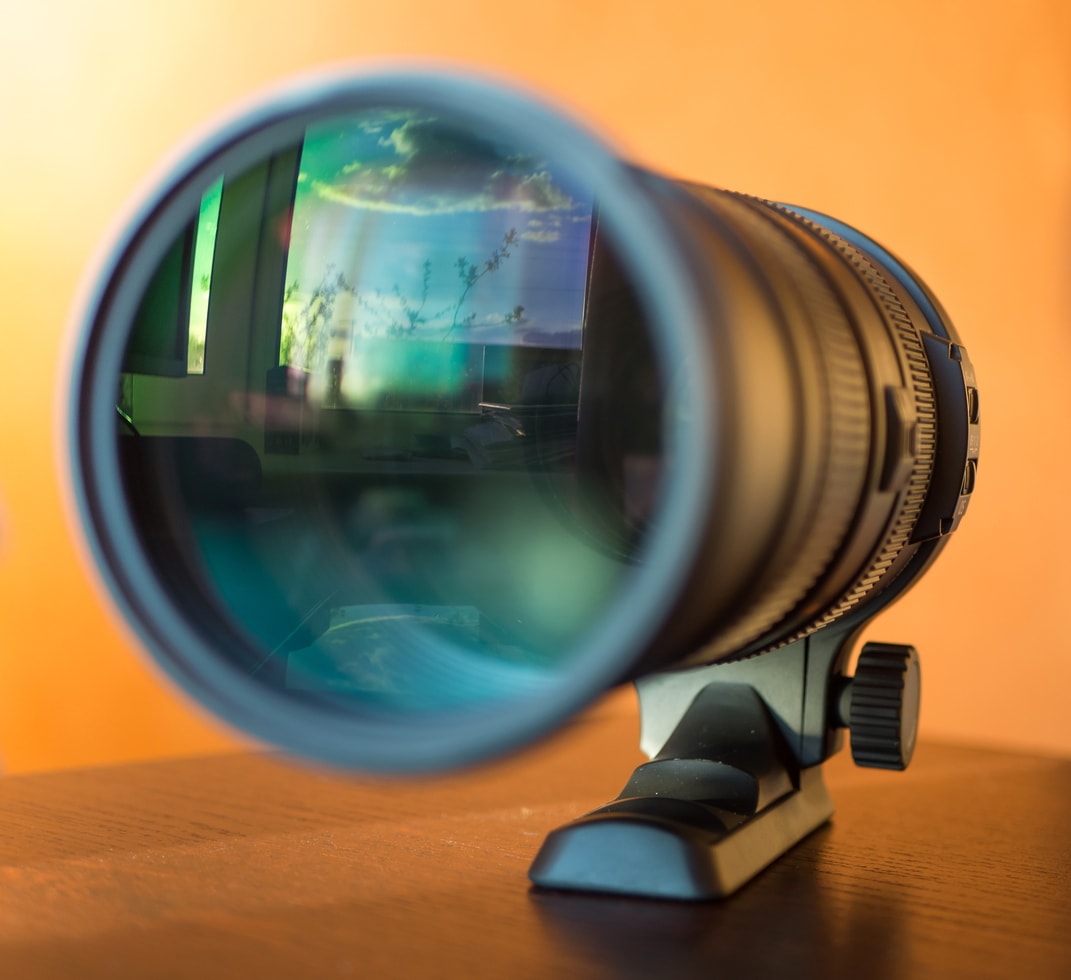
Where a wide-angle lens has the effect of exaggerating distance in the shot, a telephoto lens has the effect of compressing distance.
That means that it's an ideal choice for photographing far-off elements but making them quite large in the frame.
They are also a good choice for situations in which you want to show foreground and background elements in the same shot, but make those elements appear closer to one another than they actually are.
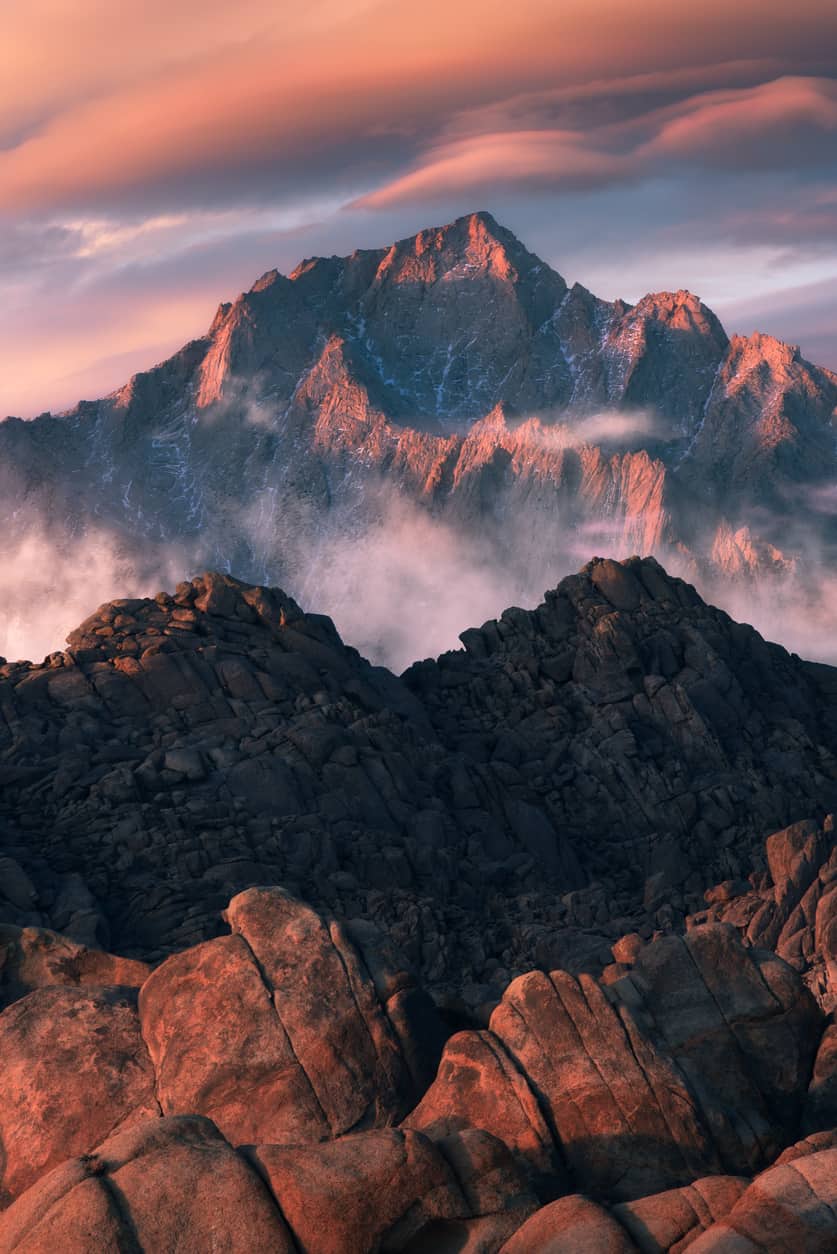
In terms of drama, telephoto lenses are hard to beat when it comes to making landscape elements like mountain peaks look impressive.
However, just like the lenses on the wider end of the focal range, telephoto lenses don't produce results that look natural. But as you can see in the sample image above, even though it's not a natural view, it's sure a good view!
Learn More:
Final Thoughts
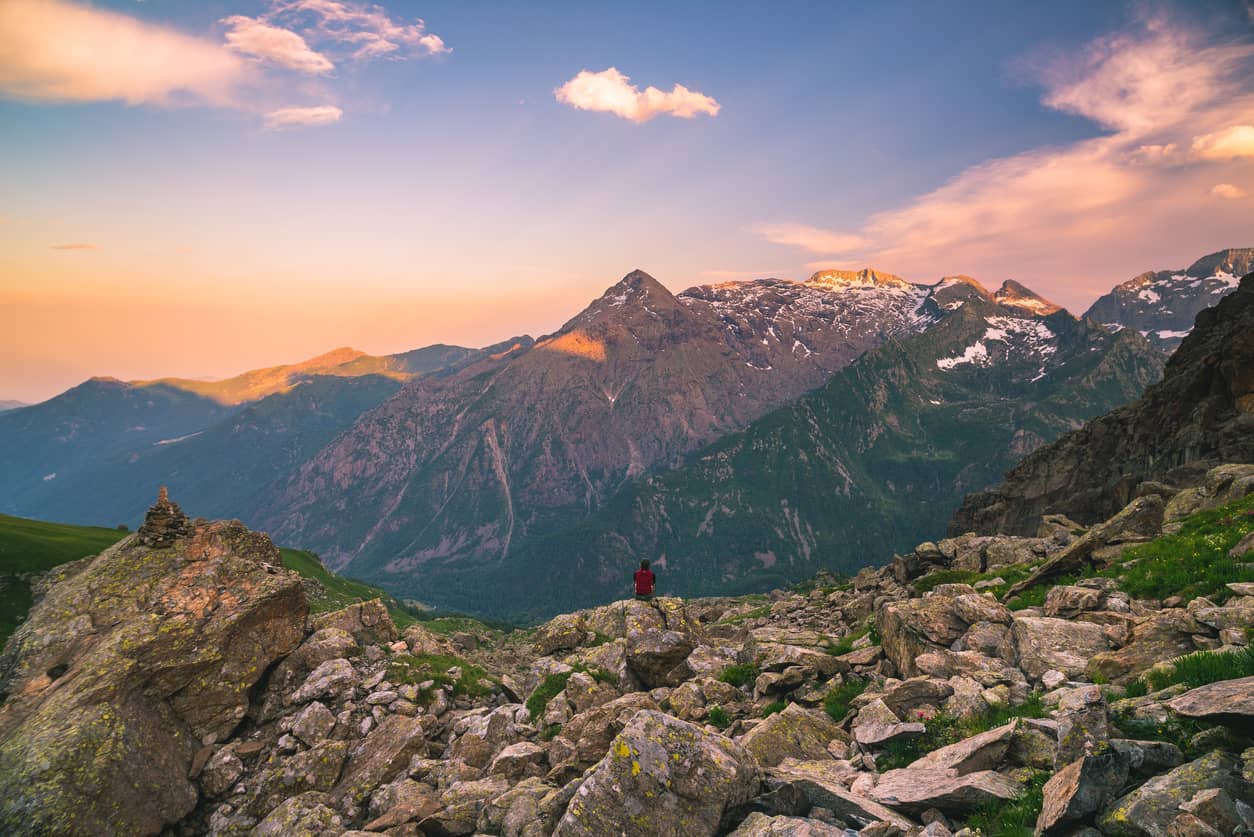
No matter what focal length lens you use for landscapes, there's opportunities to create stunning imagery. What it comes down to in the end is personal taste and how you want your images to look.
Of course, the budget is a huge factor in buying lenses, too, so finding ways to make your money stretch a little further is always a bonus.
Rather than buying a single brand-new lens, I strongly recommend using services like Lensfinder to get a couple of great pre-owned lenses instead.
As the name states, Lensfinder is nothing but lenses, so you don't have to search through a bunch of photography gear you don't need or want.
Not only does Lensfinder make it easy for you to find the lenses you want, but they also make it easy for you to purchase.
Just find the lens you want, communicate with the seller directly within Lensfinder, and pay for the lens via PayPal.
It's fast, easy, and allows you to get more bang for your buck.
That's not a bad deal if you ask me!
We Recommend
The Top Canon Lenses You Need in Your Bag
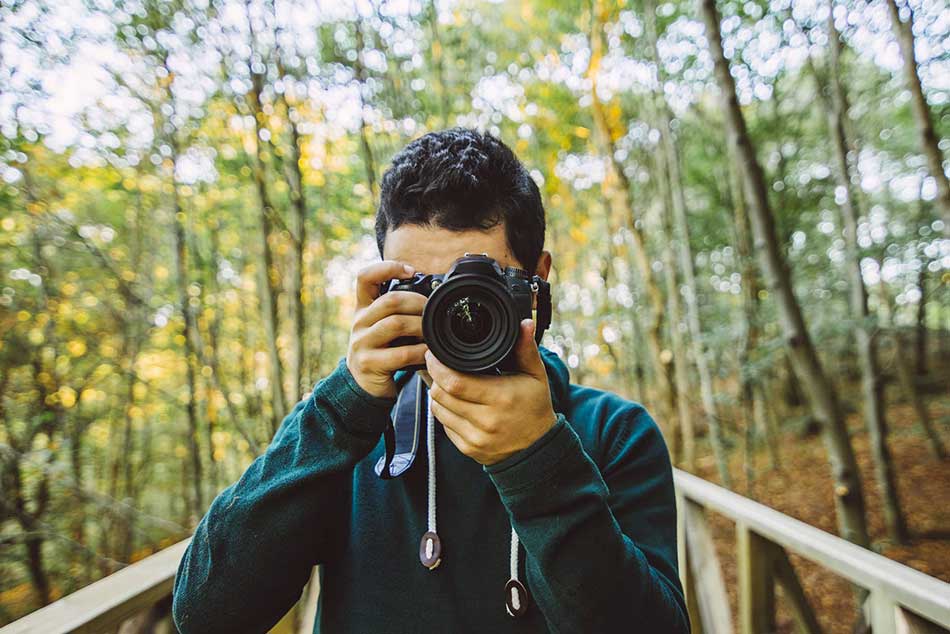
If you're a Canon shooter, you've probably encountered a problem...
There's a ton of great lenses out there for Canon cameras, both full frame and crop sensor.
It's a good problem to have!
Choosing amongst the sea of options can be a little daunting, so I've put together this list of four of the best Canon lenses available today. I'll even give you some tips for finding lenses for your Canon camera on the cheap, too!
Let's get to it...
The Best Canon Upgrade Lens: Sigma 18-35mm f/1.8 DC HSM
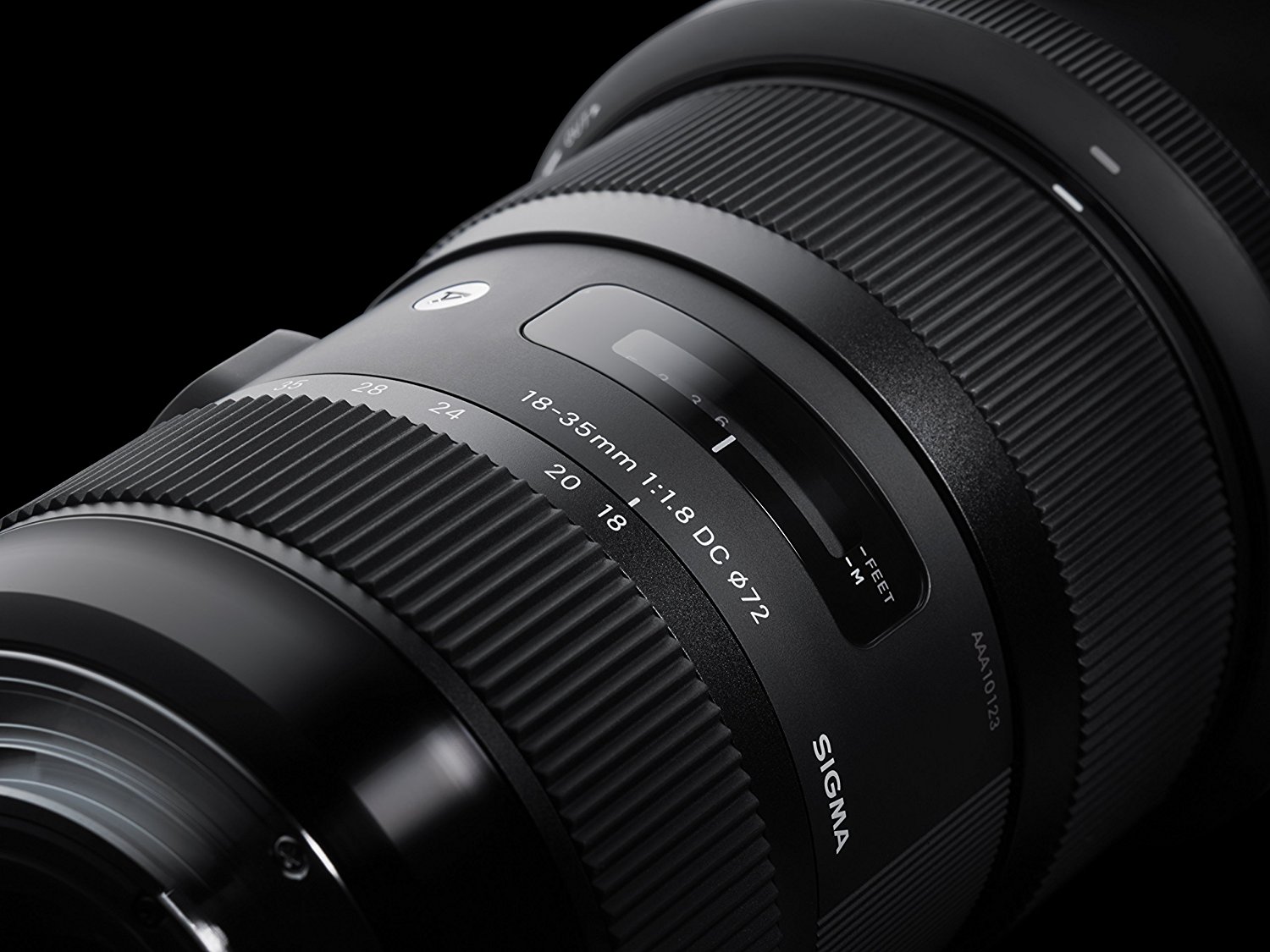
I'm a fan of kit lenses because I think the 18-55mm focal range is perfect for all sorts of photography. At 18mm it's wide enough for beautiful landscapes. At 35mm it's an ideal portrait lens. And at 55mm you get just enough zoom to cut out the clutter and snap a photo that's simplified.
But kit lenses aren't known for much quality, which is why the ideal upgrade lens for a Canon camera is the Sigma 18-55mm f/1.8 DC HSM.
Not only is the f/1.8 aperture far superior to what most kit lenses offer, but this lens can essentially take the place of four prime lenses - an 18mm, a 24mm, a 35mm, and a 50mm.

That means that you can save a ton of money, but it also saves you a ton of room in your camera bag!
This lens also produces images that have excellent sharpness, great color fidelity, and beautiful contrast that help bring your images to life.
And since it has an internal zoom and focus design, there's no barrel extension. That means this lens is nice and compact for easy carrying and storage.
If you want to upgrade your kit lens, this is a top choice for sure.
Learn More:
The Best Canon Prime Lens: 50mm f/1.8 STM

Some photographers will say that Canon's 50mm f/1.4 and f/1.2 options are better choices, but I disagree.
Yes, with a larger aperture you have more low-light shooting options, but the f/1.4 and f/1.2 lenses are also more expensive than the f/1.8. A lot more expensive...
Aside from a pretty great starting price, the 50mm f/1.8 also produces excellent image quality, great bokeh, and a fast and accurate autofocus system.
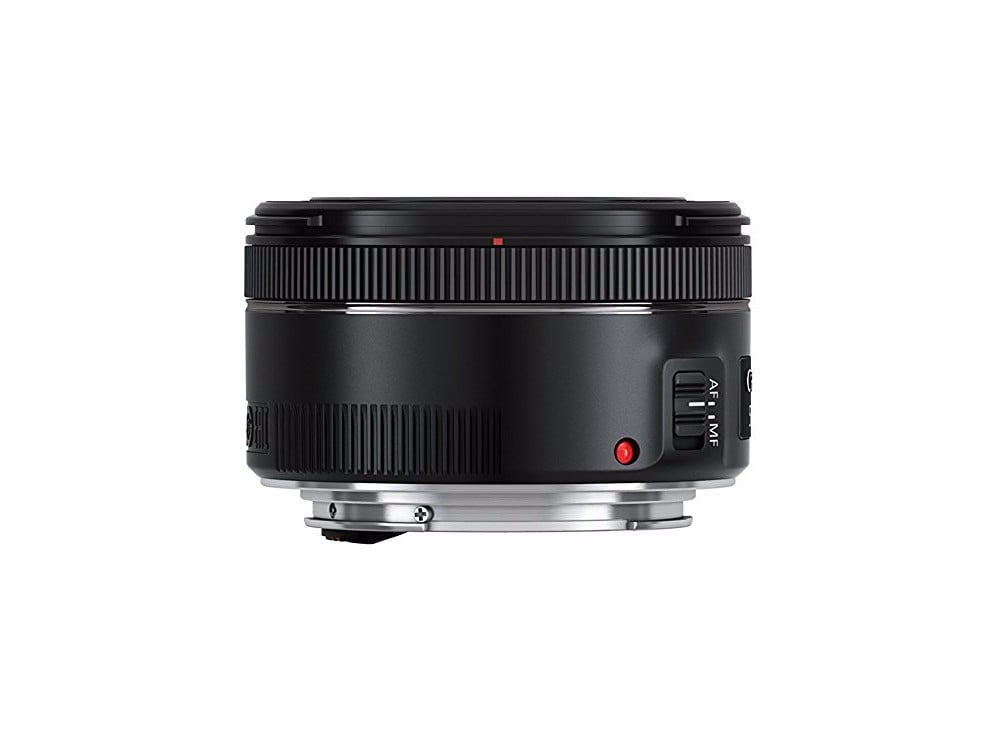
Even better, this lens will fit on any Canon EOS camera made in the last 30 years, so even if you sport an oldie but a goodie camera, this lens will work.
It's also a versatile little thing...
On a full frame camera it's a great landscape lens, offering a field of view that's pleasing to the eye and helps you restrict the amount of real estate you display.
On a crop sensor camera, the 50mm acts like an 80mm lens, so it's ideal for portraiture. Open it up to f/1.8 and get delicious bokeh to help set your portrait subject off from the background.
It's lightweight, too, so you'll feel free to move around without the bulk and weight of more expensive 50mm lenses from Canon.
Learn More:
The Best Canon Zoom Lens: EF 24-105mm f/4 L IS USM

There's a lot to love about this lens.
For starters, it's got an ideal focal range for shooters that want to be able to shoot wide-angle to telephoto with just one lens.
Secondly, it offers superb optical performance throughout its zoom range, meaning you get clear, sharp results from wide-angle to telephoto.
It's got some distortion and vignetting at the wide end, but both of those issues can be solved quickly in Photoshop or Lightroom.
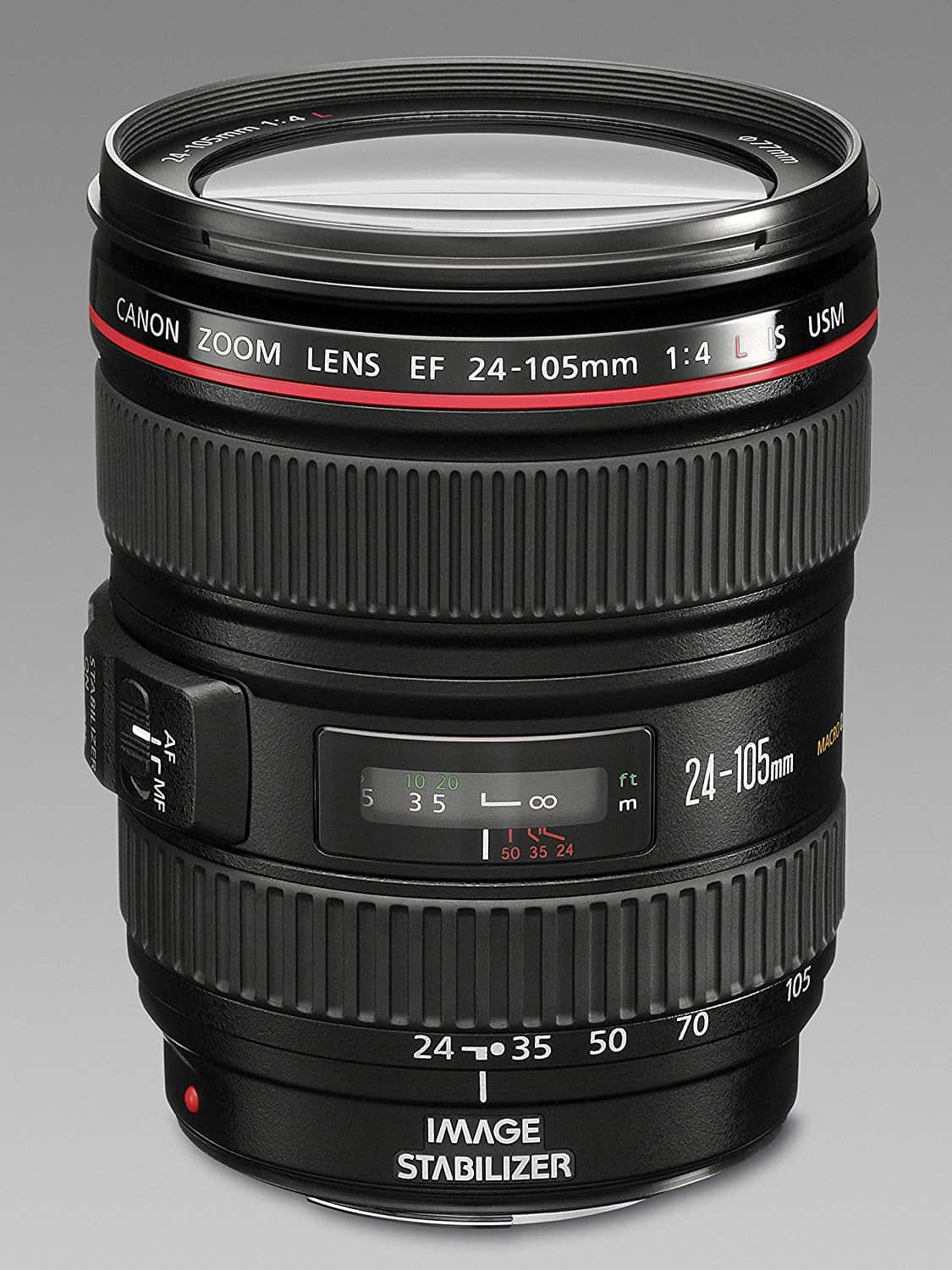
Since this rig is an L-series lens, it's also built impeccably well. After all, the L stands for luxury, and when you hold this lens (and see the sharpness of the images it creates) you'll see the value of the L-series line.
It's got image stabilization that gives you three stops of added performance, gloriously smooth action on its focus and zoom rings, and it produces robust colors and excellent contrast thanks to its excellent optics.
All in all, this is an ideal mid-range lens that is versatile, well-built, and offers you unparalleled performance.
In fact, if you're going to buy just one lens, this should be it!
Learn More:
The Best Canon Long Prime Lens: EF 135mm f/2L USM
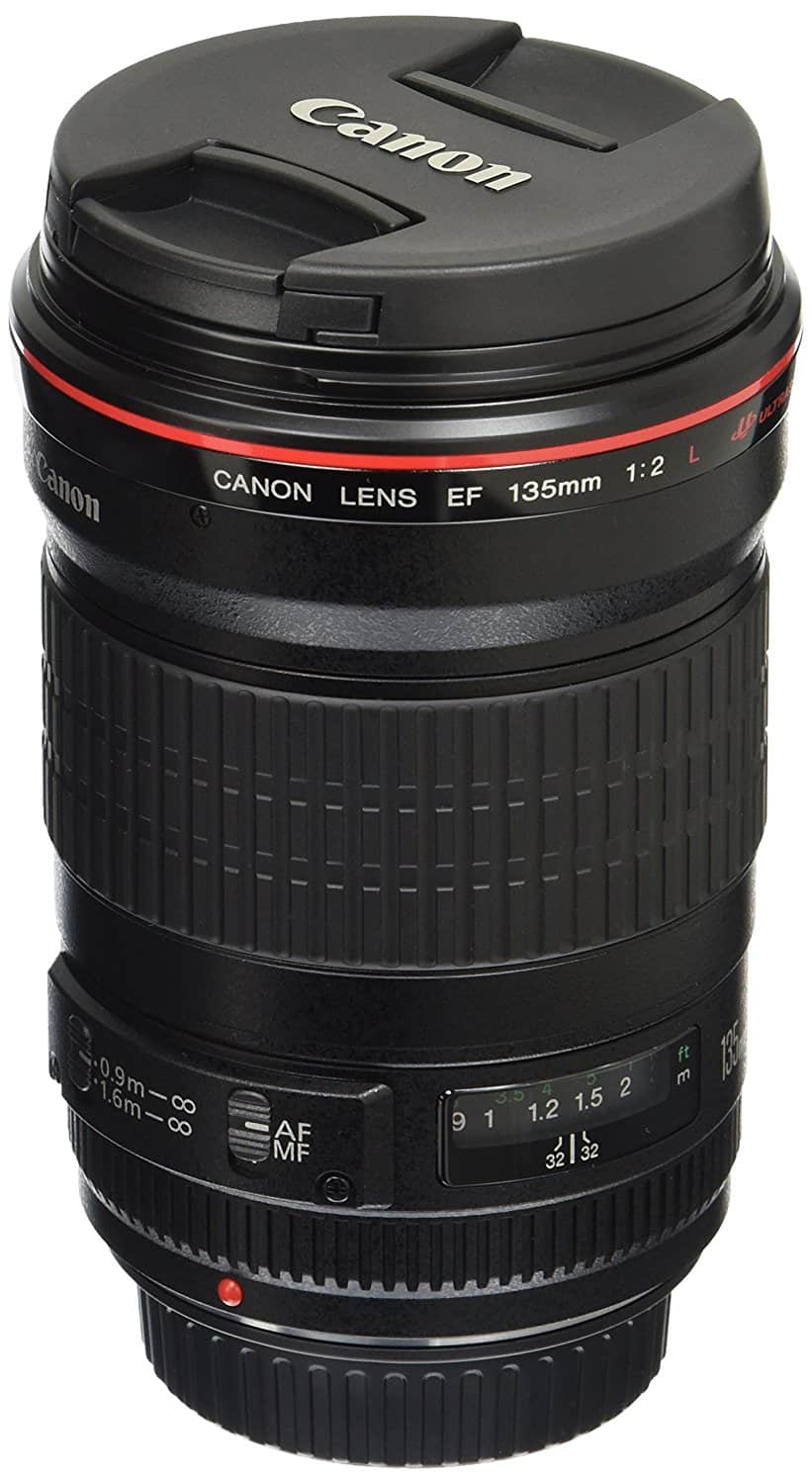
Widely regarded as one of the best Canon lenses of all time, the 135mm f/2L USM has been rocking excellent results since it debuted in 1996.
Yep, it's that old!
But despite its age, it still produces gorgeous contrast and excellent colors that are sure to impress. It's got a reputation for creating some of the best bokeh around, too.
This lens feels good in the hand as well. It's got some weight to it - which I like - and has been ergonomically designed so it feels like it was made just for your hand.
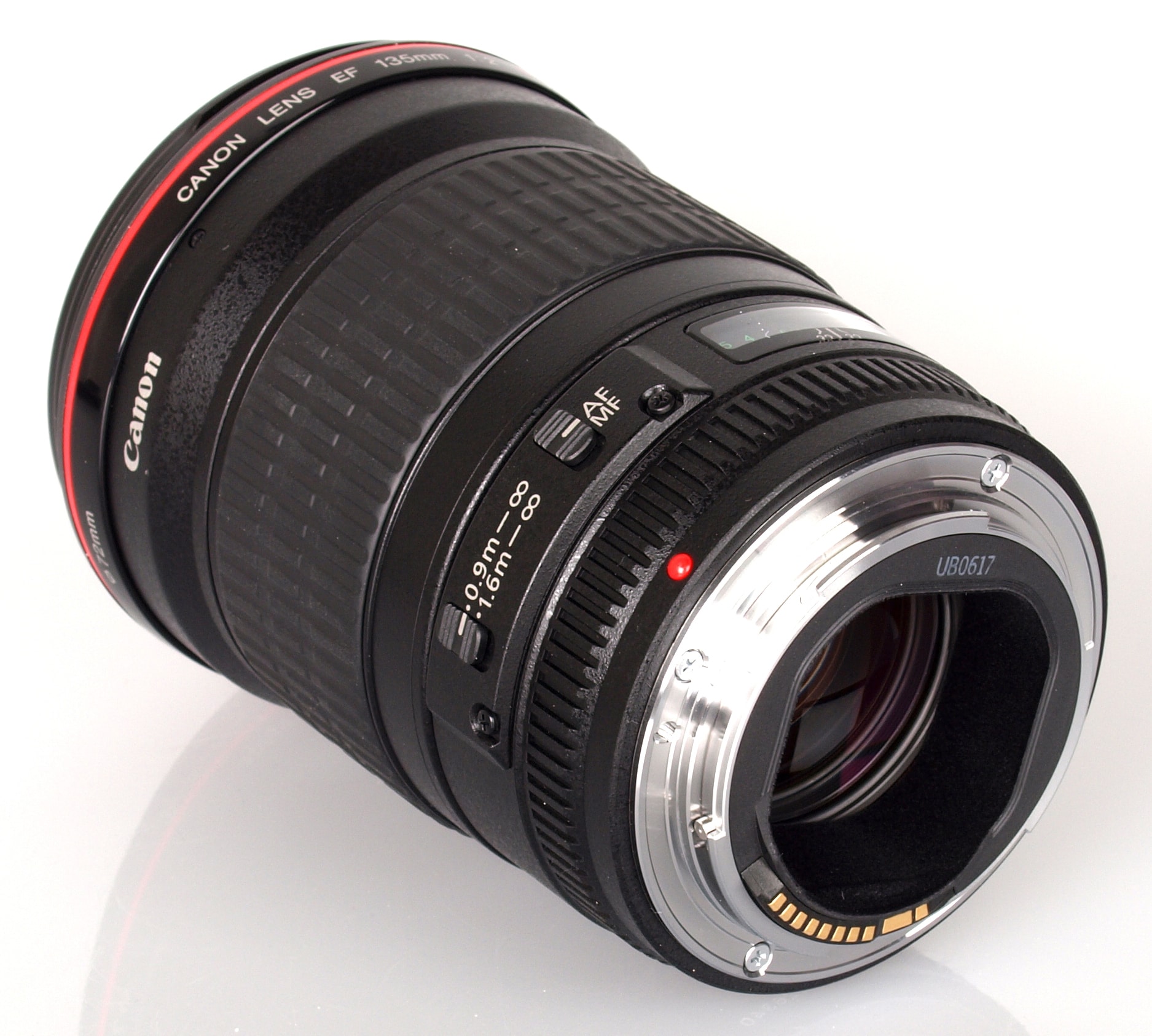
Sure, the 135mm focal length isn't as versatile as the others on this list, but if you shoot weddings, events, sports, or wildlife, it's a wonderful focal length that will help you get your subject nice and sharp on a beautifully blurry background.
What's more, the 135mm lens is smaller, more compact, and black, so it's not nearly as flashy as some of Canon's other L-series long lenses that come in off-white.
That means you can blend into the crowd a bit more and have a better shot at candid photos than if you're hauling around a giant Canon telephoto lens.
If you want a top prime lens with some focal length to it, this is an ideal choice.
Learn More:
Final Thoughts

In the grand scheme of things, none of these lenses are particularly expensive, all things considered.
But that doesn't mean that you can't find these lenses for much less than what you'd pay brand new. You just have to know where to look!
I've become a big fan of Lensfinder lately, and give it my highest recommendation to photographers looking for good buys on good glass.
That's because it's a marketplace built for photographers to buy and sell nothing but used lenses.
That means when you want a lens, you don't have to search through a million listings of things you don't want or need.
Instead, you simply go to Lensfinder, enter your search criteria, and the lenses that meet your criteria will pop up. Easy, right?
You also communicate with sellers right within Lensfinder and pay via PayPal, so your transactions are fast and secure.
I've used Lensfinder a couple of times now, and have been more than pleased with my experience.
If you're a Canon shooter, head over to Lensfinder to see what deals you can find on lenses!
We Recommend
The Ultimate Nikon Full Frame Lens Kit
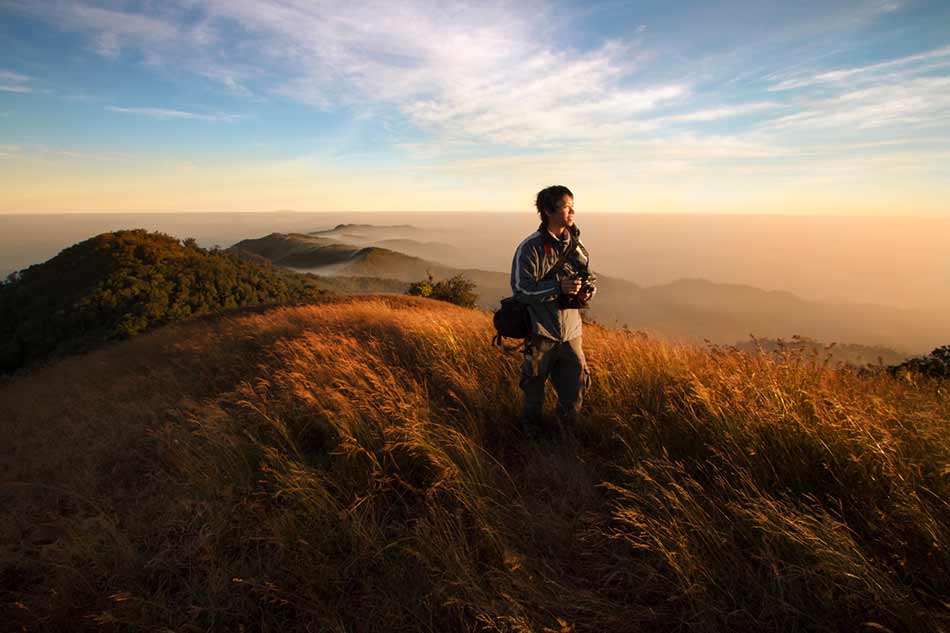
If you're a Nikon shooter with a full frame camera and you're stumped as to what lenses you absolutely need to get, this article is for you!
I've been a Nikon shooter for years and years now, and I have some personal favorites that I would never leave the house without.
Jared Polin also has a few favorite Nikon lenses, which he outlines in the video below.
This "ultimate" collection of Nikon lenses is pretty fantastic, if I do say so myself.
But not many enthusiast photographers need nine lenses...
My kit includes three of the nine lenses that Jared has in his kit, and as he points out, if he had to pare it down, he'd take just four lenses with him on a trip around the world.
Have a look at Jared's video to get his insights on each of these best Nikon lenses, and for more details on the "big three," check the outline below.
Editor's Tip: Are you itching to buy a new camera? Before you do, learn why upgrading your lens is a much better idea than upgrading your camera.
Nikon AF-S NIKKOR 14-24mm f/2.8G ED
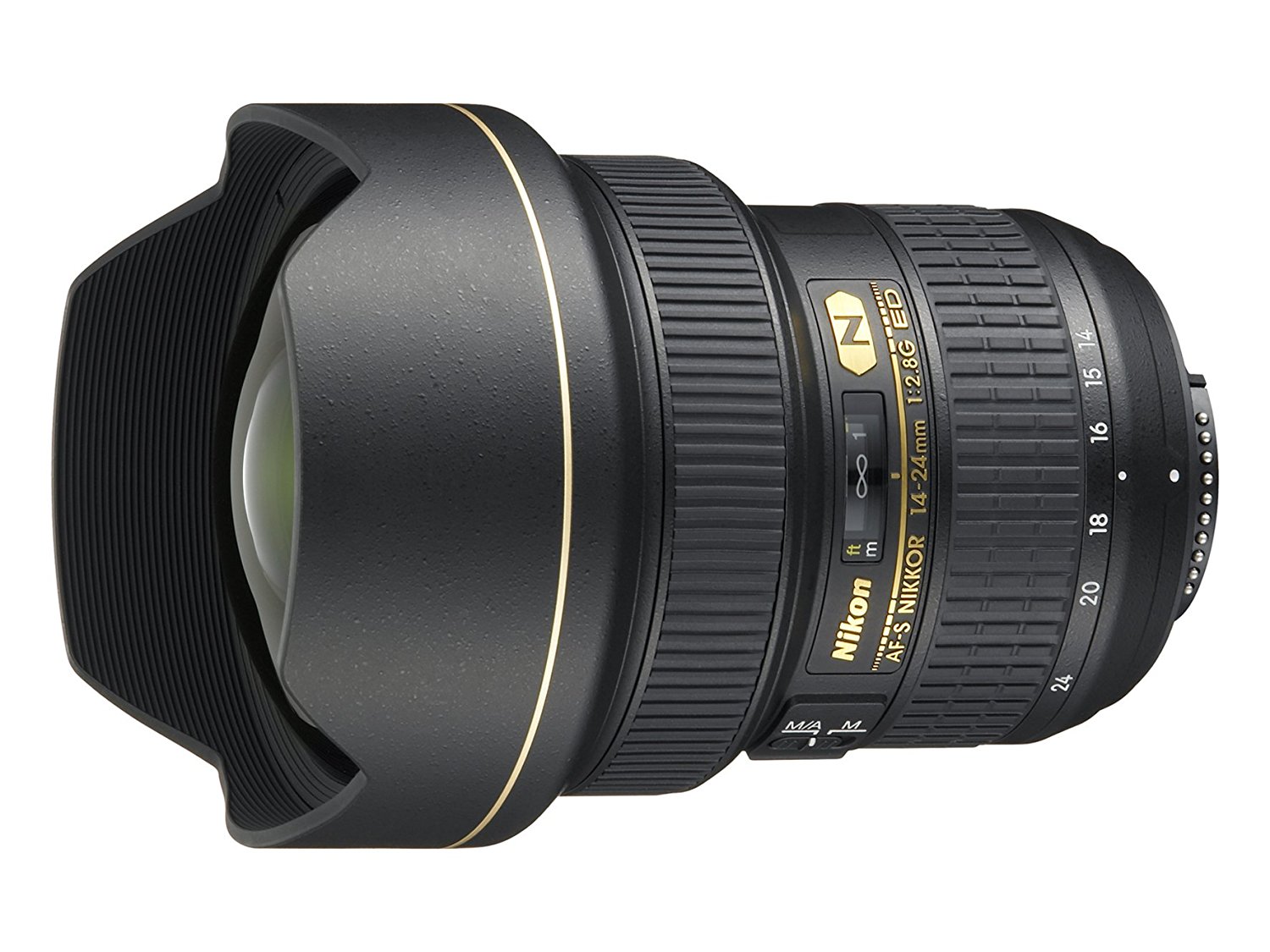
You've got to have a lens in an ultimate full frame kit that can handle wide-angle shots, and the 14-24mm f/2.8G certainly fits the bill.
Its 1.7x ultra-wide-angle zoom is ideal for landscape photography.
Get in close to foreground elements - like the flowers in the shot below - and bring the viewer in with gorgeous detail that introduces them to the scene.
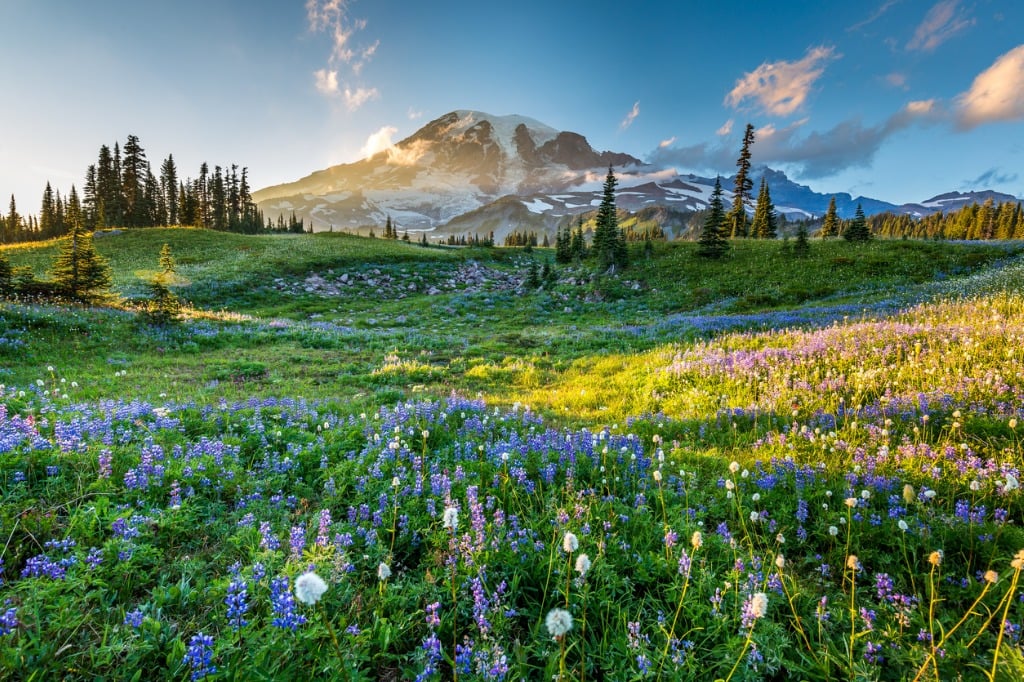
This is one of Nikon's newer lenses, and it's packed with features that ensure you get superb shots.
That includes incredible sharpness, color rendition, and contrast that make your images pop.
The lens is also built to last - it's tough, durable, and will stand up to the rough and tumble ways of landscape photography.
Granted, this is a professional lens, which means that it's very spendy. Unless you have a pile of cash laying around, you might look for a pre-owned 14-24mm f/2.8 lens.
Nikon AF-S NIKKOR 24-70mm f/2.8E ED VR
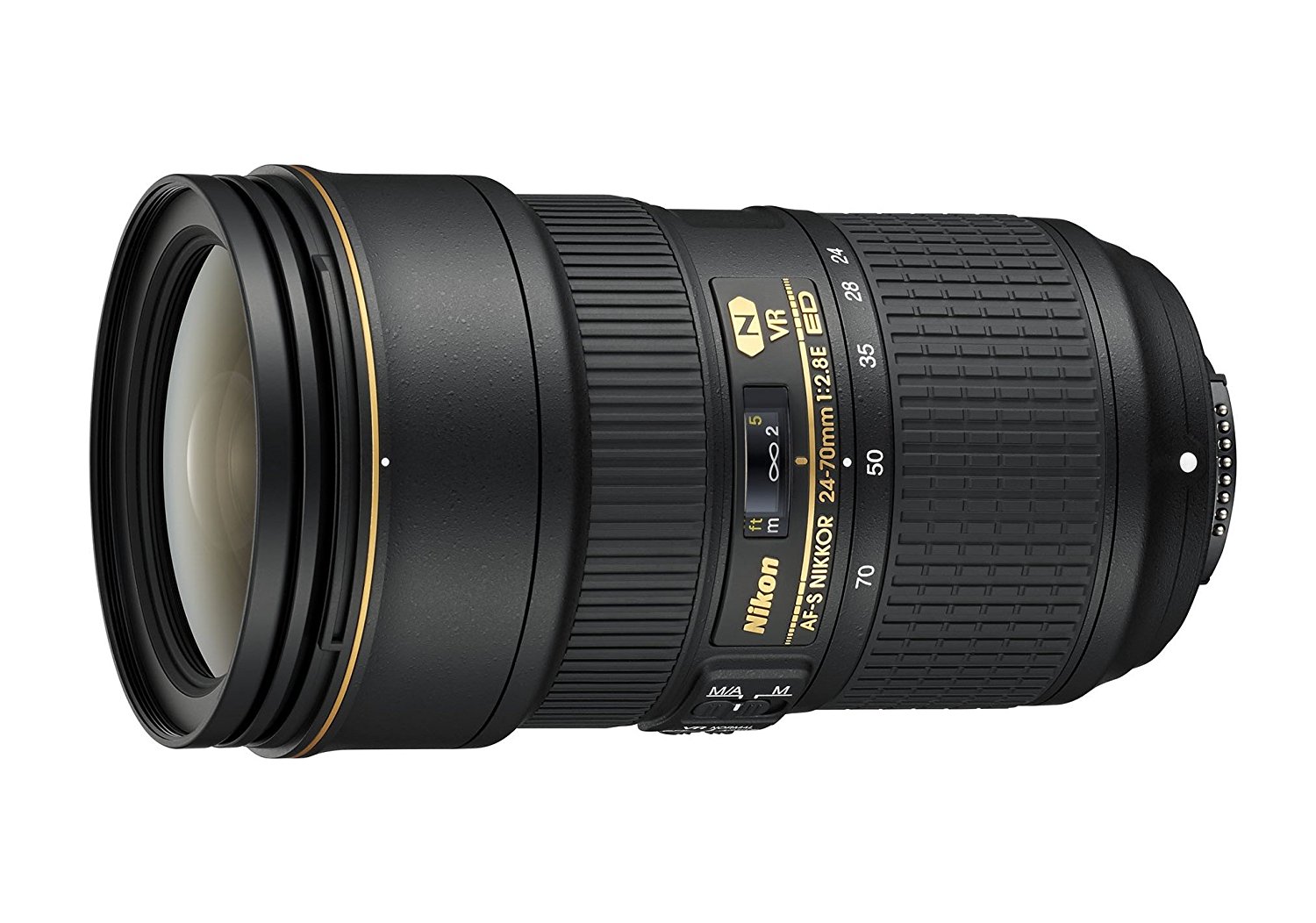
Like the 14-24mm lens discussed above, this one also has a large f/2.8 aperture that gives you more creative freedom.
You can easily blur the background of portraits at f/2.8 as well as shoot in dim lighting conditions without having to boost the ISO or slow the shutter down.
This lens is also supremely sharp, and produced little to no distortion throughout its zoom range. Of course, at this price, you should expect impeccable performance.
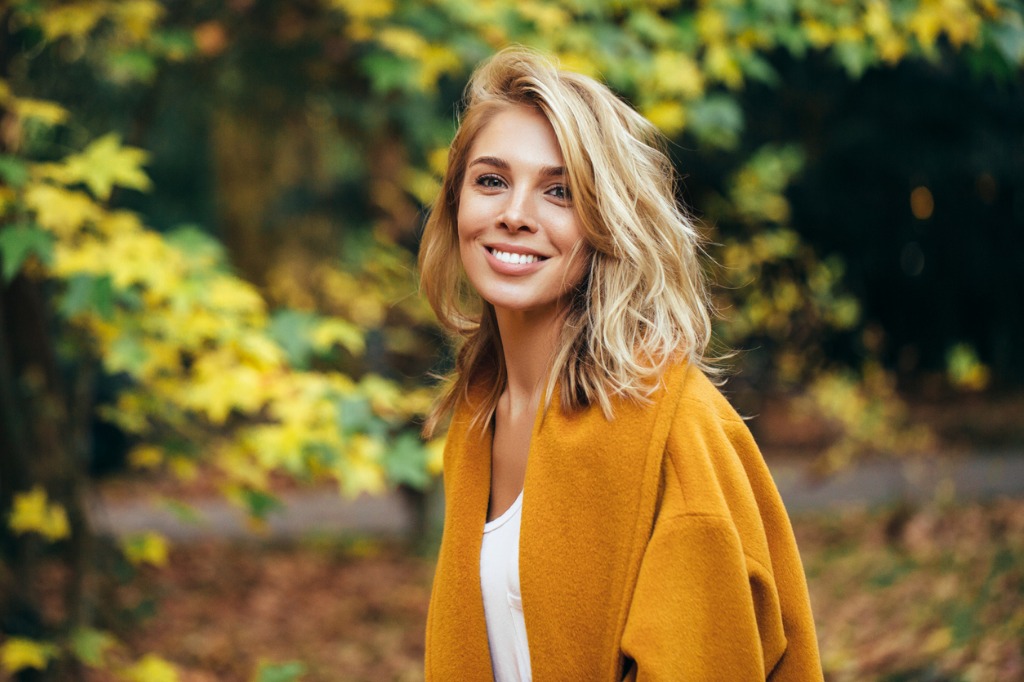
Another prime feature of this lens is its vibration reduction technology.
With VR, this lens gives you up to four extra stops, meaning you can handhold it at lower shutter speeds and still get tack-sharp images when you'd need to tripod-mount your camera with non-VR lenses.
And since 24-70mm is such a versatile focal length, you can use it for landscapes, portraits (as shown above), street photography, and just about everything in between! That's why it's counted among the best full frame Nikon lenses on the market.
Editor's Tip: If you're after a solid Nikon prime lens, learn which Nikon primes are the best.
Nikon AF-S NIKKOR 70-200mm f/2.8G ED VR II
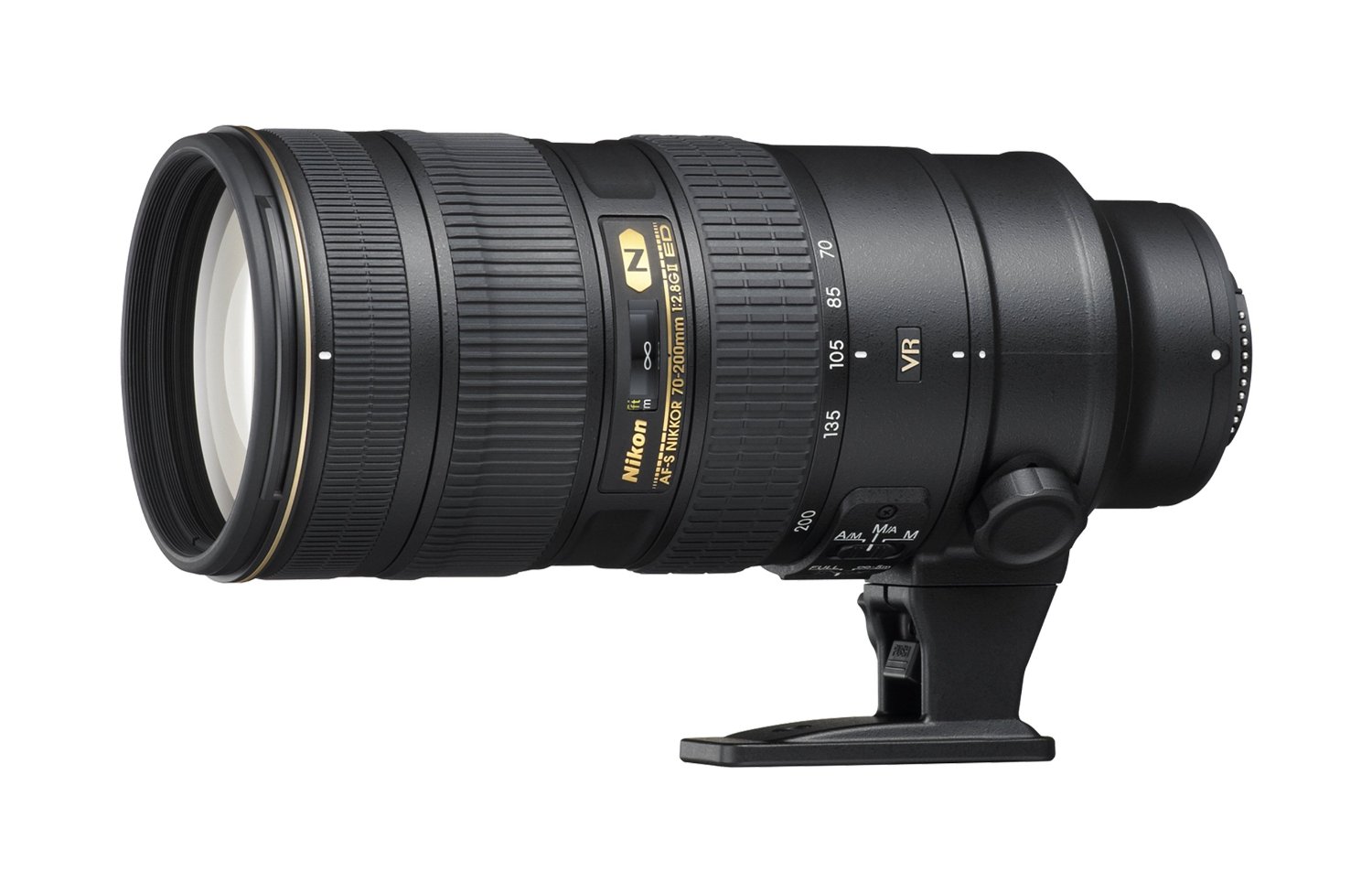
Again, with this lens, we see a common theme, the large f/2.8 aperture being a part of that.
And, like the previous lens, this one is also equipped with Vibration Reduction technology.
Picking up where the 24-70mm lens leaves off, this lens extends your focal range to 200mm.
That makes this a fantastic choice for wildlife photography, sports photography, close-up landscapes, and, of course, everyday subjects like portraits, too.
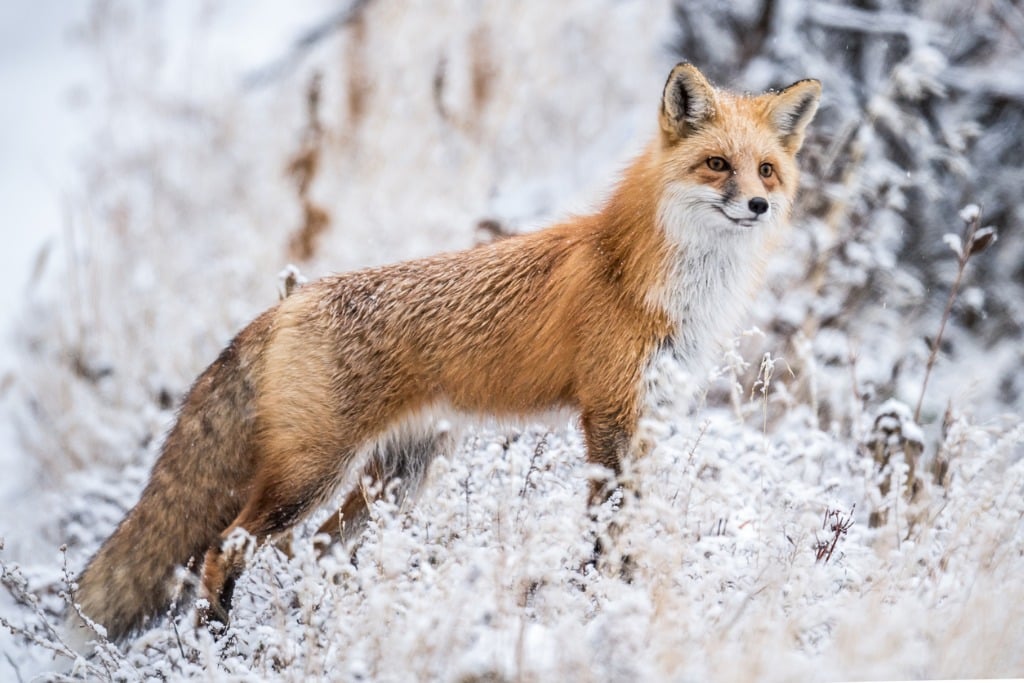
Th 70-20mm f/2.8G ED VR II also has a lightning-fast autofocus system, which is a definite bonus when your subject is on the move. It's a pricey lens, but that autofocus system is worth it!
This is an excellent lens choice for still subjects as well, if for no other reason than it produces gorgeous bokeh.
You can also use this lens for videography (you can use the previous two for videos as well), which gives you even more flexibility in terms of what and how you shoot.
From 24mm to 200mm, this Nikon lens kit has you covered from wide-angle to telephoto shots and everything in between.
If you're looking for the ultimate Nikon lenses, it would be tough to beat these three, especially if you can find a good deal on a pre-owned version and save a bit of money!
We Recommend
These Canon Lenses are Excellent - and Cheap
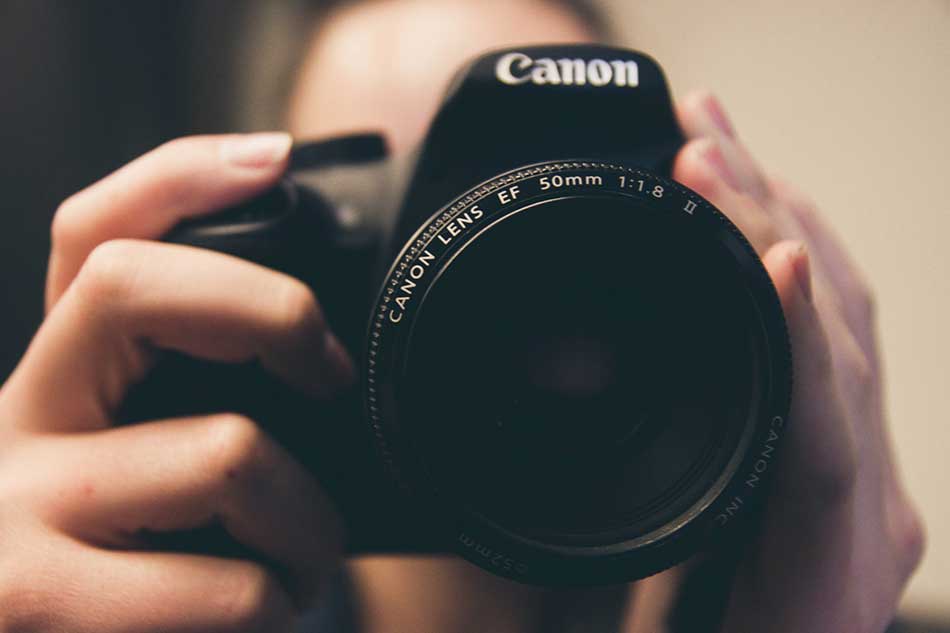 Photo by NeONBRAND on Unsplash
Photo by NeONBRAND on Unsplash
I know that the mantra in photography is that really good lenses are expensive.
But that's not always the case...
In fact, you can find some really great glass on the cheap - you just have to know what to look for.
That's where this quick guide comes in.
If you're in the market for a better Canon lens, look no further than these budget-friendly options.
Editor's Tip: Learn more about your gear and how to use it by learning how to find the effective focal length of a lens.
Best Cheap Camera Lenses for Canon: EF 40mm f/2.8 STM
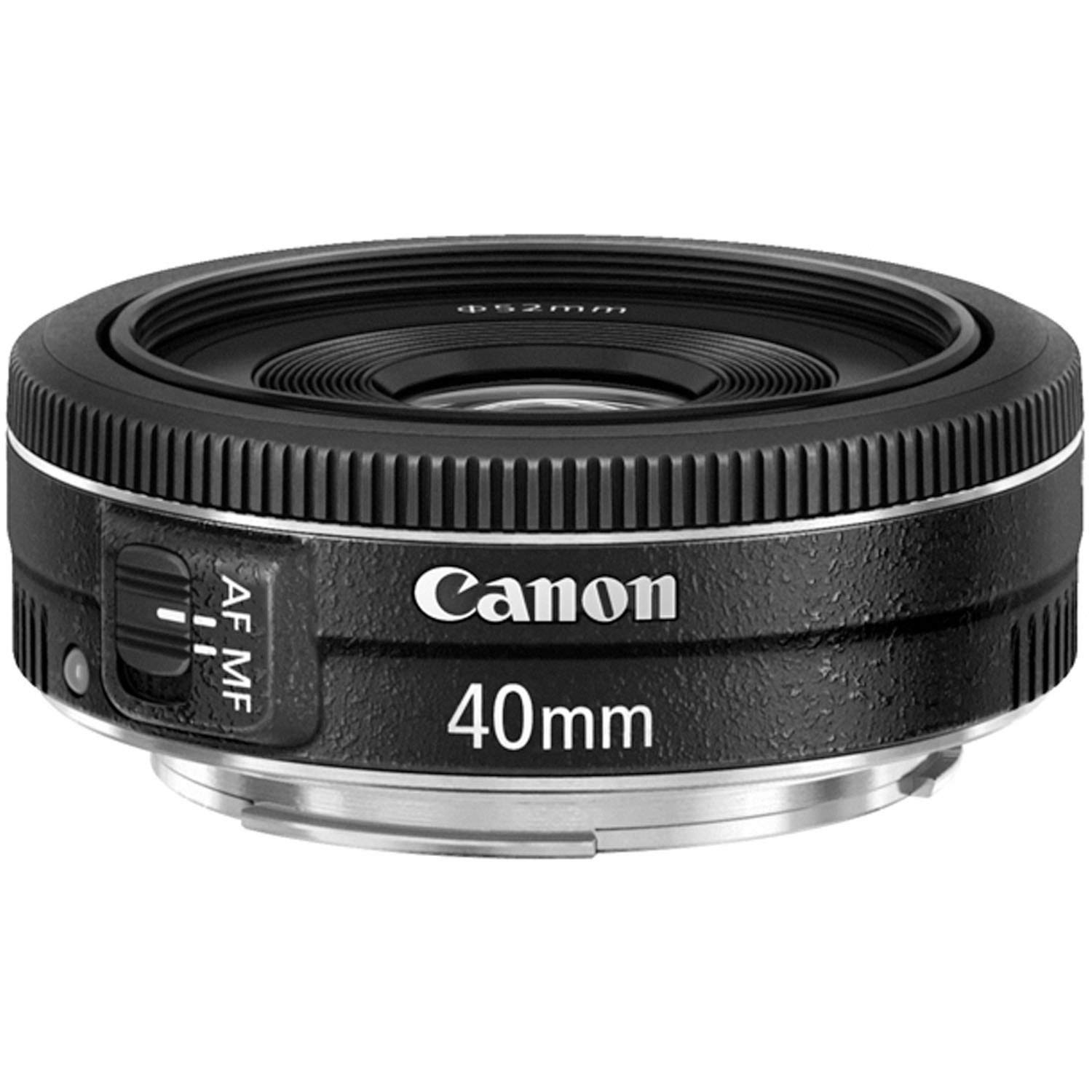
If you're a Canon shooter, the 40mm f/2.8 STM is a great option for everything from travel photography to street photography. Heck, use it for video as well!
It's thin, pancake design makes it beautifully easy to use thanks to its small form factor and featherlight weight.
The f/2.8 aperture isn't the biggest in the world, but if you're upgrading your kit to include a good prime lens, f/2.8 is certainly a step up from what a kit lens offers.
This isn't a lens just for beginners with crop sensor cameras, though. Pros often use this lens on a full frame rig to get a beautiful standard view of the subject that's a little narrower than a typical 35mm wide-angle view.
Better still, this lens has one aspherical element that limits distortion and spherical aberrations. The addition of a Super Spectra Coating further eliminates ghosting and flare while boosting color neutrality and contrast.
For $129 brand new, that's an awful long list of features! You might even be able to find one for less if you buy pre-owned. Get more details on this great lens in the video above by Christopher Frost Photography.
Another option to consider: The Canon EF 50mm f/1.8 USM is one of the sharpest in Canon's lineup and is supremely versatile, too.
Best Budget Canon Zoom Lens: EF 75-300mm f/4.5-5.6 III
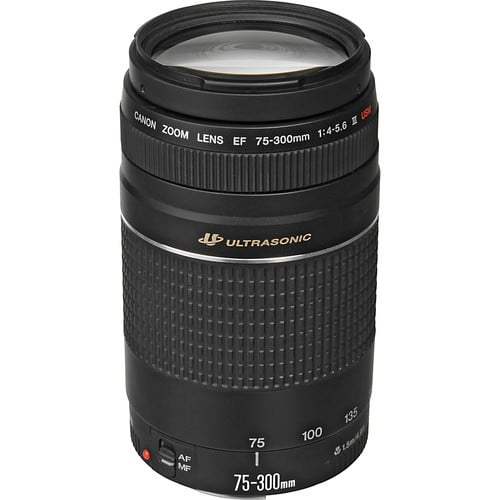
The EF 75-300mm f/4-5.6 III is not the best the Canon has ever made. In fact, it feels super cheap when you hold it.
However, just because it can't compete with Canon's L-series professional lenses doesn't mean that it's not a good lens for the price.
In fact, for $179 brand-new (or perhaps much less used), you get a huge focal range of 75-300mm. That means that with a single lens, you can photograph everything from portraits to sports to wildlife.
The maximum f/4.5-5.6 aperture isn't going to blow anyone away, but in good lighting conditions, this lens will perform admirably. See the lens in action in the video below by Christopher Frost Photography:
For a telephoto lens, it's quite small and lightweight, which makes it an ideal companion for travel photography.
Like the 40mm lens discussed above, this one sports Canon's Super Spectra coating, and with its seven-blade diaphragm, this lens produces nice-looking bokeh.
Another option to consider: If you have a Canon crop sensor camera, it doesn't get much better than the EF-S55-250mm f/4-5.6 IS II.
Editor's Tip: Need an ideal lens for portraiture? Learn why 85mm is the perfect focal length for portraits.
The Best Canon Lens for Beginners: EF 50mm f/1.8 STM
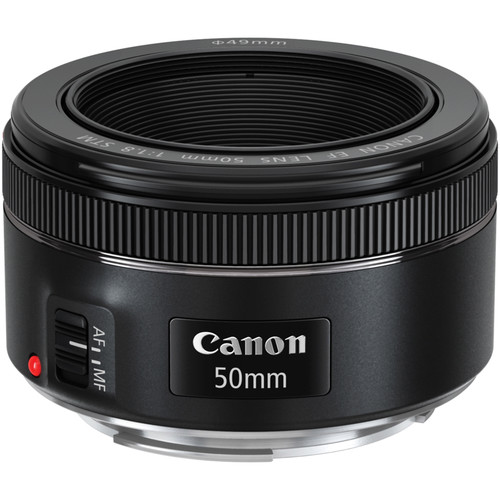
Honestly, if you're going to purchase a Canon lens, there's really no better choice than the EF 50mm f/1.8 STM.
Sure, it's made of plastic, but it's one of the best lenses Canon has made (outside the L-series). It's only $129 brand-new, too.
What's great about this lens - apart from the f/1.8 aperture, the silent motor, and the small form factor, it's unbelievably versatile.
Use it for portraits or landscapes, or even video work for that matter. On an APS-C camera, it acts like an 80mm lens, so you can even do a little short telephoto work.
And though it's plastic, it's made well and is durable, so it can take a few lumps and still work perfectly.
Still, if you're on a budget, it's an awesome little lens that you can pick up for next to nothing at all, especially if you can find a nice pre-owned one!
Another option to consider: If you have a bit more money, go for the EF 50mm f/1.4 STM.
We Recommend
These Crazy Camera Lenses Have to Be Seen to Be Believed
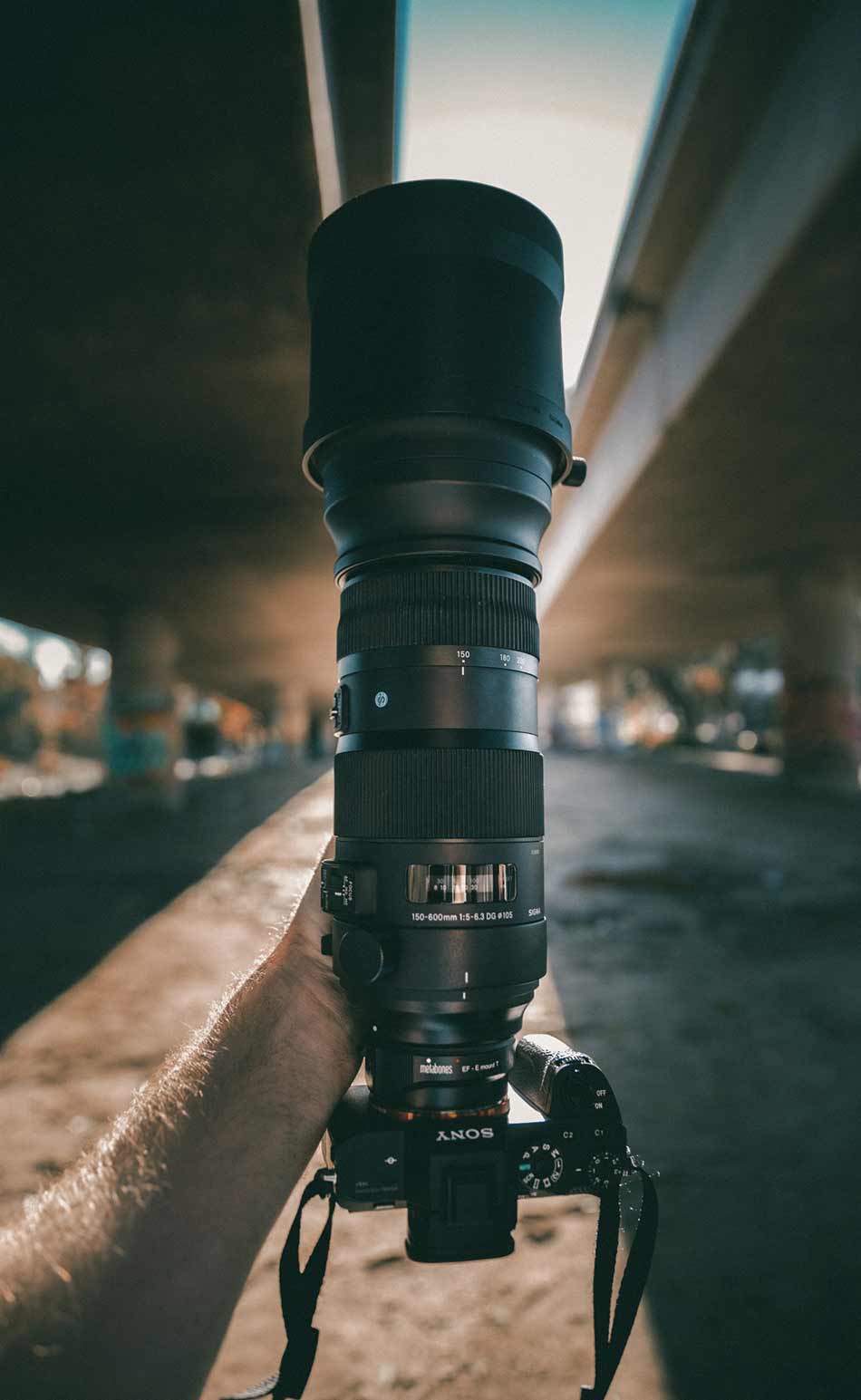
Photo by Jakob Owens on Unsplash
People have been fascinated with crazy camera lenses since the dawn of photography, when crazy camera lenses were any camera lenses.
Now, unique camera lenses are a sight to behold. Sometimes, they’re ridiculously large and sometimes they’re ridiculously vintage. However, I’d bet money you’ve never seen all of these 7 rare camera lenses.
Table of Contents
- Fujifilm XF 56mm f/1.2 R APD
- Canon MP-E 65mm f/2.8 1-5x Macro
- Leica Noctilux-M 50mm f/0.95 ASPH
- Lomography Petzval 85mm f/2.2
- Sigma 200-500mm f/28 APO EX DG
- Venus Optics Laowa 15mm f/4 Macro
- Canon EF 1200mm f/5.6L USM
- Where to Buy Your Crazy Camera Lenses
Fujifilm XF 56mm f/1.2 R APD
The first on my list of unique camera lenses is this apodization filter Fujifilm lens. Fujifilm released an XF 56mm f/1.2R exactly 9 months before they released this lens, the exact same lens except for the addition of the apodization filter.
Now, apodization filters are very rarely included in lenses because you could just as easily buy an attachable apodization filter. An apodization filter is a type of graduated neutral density filter that allows you to achieve very creamy bokeh and a very dramatic blurring in shallow depth-of-field photos.
It also features 2 aperture values: one aperture value for the f/stop value and one for the depth of field.
See this lens in action in the video above by Zed Pro Media.
Canon MP-E 65mm f/2.8 1-5x Macro
The Canon MP-E has an insane range for macro photography, and no range for anything else. If you’re looking to photograph something in high-magnification, though, this bad boy is for you.
As an example of the power behind this macro lens, you can fill a full-frame sensor with just one ant, and the way it pulls it off is by only allow photographers to shoot objects up to 4 inches away from the front of the lens.
You heard me right, in order to use this macro lens, you have a whole 3.4 inches of wiggle room; you can shoot from 1.6 inches to 4 inches away from your subject.
The interesting focusing range aside, this camera comes with an Ultra Low Dispersion glass element which helps clear your photos of any distortions or chromatic aberrations so those ants look as crisp as they do vibrantly black or red.
Learn more about this lens in the video above by Snazzy Labs.
Leica Noctilux-M 50mm f/0.95 ASPH
Okay, I admit you may have heard of this Leica lens before but I had to touch on it because of its cult status.
This Noctilux was a replacement that came out in 2008, a mere 30 years after it’s predecessor, the f/1.2 Noctilux of 1966 was released.
This lens features an incredibly bright maximum aperture (obviously) which lets you shoot incredibly well in low light. But, it also shoots unlike any lens I’ve ever shot with. No, it isn’t even close to Leica’s sharpest lens but it has character. Your shots come out looking almost vintage with a softness that can make even the ugliest of places look almost pristine.
Plus, it’s only 1.5 pounds which is a feat for the unique camera lenses on this list.
Check out this lens in the video above by Leica Review.
Lomography Petzval 85mm f/2.2
This is hands down the most beautiful, unique camera lens on this list, and that’s because it’s a recreation of the 175-year-old Lomo Petzval lens (except this time you can use it on Canon and Nikon DSLRs).
The Kickstarter for this Petzval recreation rapidly raised over $1 million from over 3,000 camera enthusiasts. This happened, in part, thanks to the glowing history of the original Petzval lens which revolutionized photography.
Each one of these recreated Petzval lenses are crafted out of brass, and comes with a Waterhouse aperture set (f/2.2, f/4, f/5.6, f/8, f/11 and f/16).
This Petzval also does what the original Petzval did: it takes incredible portraits.
Get a hands-on review of this lens in the video above by Irene Rudnyk.
Learn More:
Sigma 200-500mm f/28 APO EX DG
I’ve always hated the look of this Sigma lens because it looks like it belongs on the top of a tank shooting missiles instead of in the hands of a photographer.
This lens remains the longest zoom to feature a f/2.8 max aperture. It also weighs 25 pounds and features a rechargeable battery to power the incredible zoom.
My favorite aspect of this crazy camera lens is that it doesn’t unscrew from its camera, the back of the lens unlocks so you can unscrew the camera out of the lens.
However, you really need to watch the above video in order to see what this ridiculous creature looks like.
See Matt Granger with this massive lens in the video above by PhotoNewsReviews.
Venus Optics Laowa 15mm f/4 Macro
I actually got the chance to use this macro lens a few years back, and everything they say is true. You can shoot from 0.2” away from your subject with this funky little lens and create a 1:1 magnification ratio.
It’s known as a wide angle lens and a macro lens because it does both. It comes with a shift mechanism to move the optics up or down the lens mount (hint: panoramas, anyone?).
Plus, I love a camera lens maker that thinks about the little people, the little people being broke photographers. The filter thread allows you to use filters easily without splurging on expensive square filter systems.
When you’re using this camera lens as a wide-angle, you’ll either love or hate the results. The center of your photo will be extremely sharp if you’re shooting at a close distance, but the corners of your shot may appear almost smudged like a painting.
But, for a macro/wide-angle/do-it-all lens, it handles chromatic aberrations like a champion. Your shots may still suffer from chromatic aberrations in the corners (like the above-mentioned problem), but they will be very consistent, easy to take out in post-production, and won’t happen when shooting low contrast shots stopped down.
DSLR Video Shooter takes a closer look at this lens in the video above.
Canon EF 1200mm f/5.6L USM
One of these beautiful lenses was sold on B&H back in 2016 for just $180,000, which is a steal if you ask me.
It only took the lens 8 years on the market to sell (who woulda’ guessed).
This lens is the longest fixed telephoto lens ever built by Canon and it focuses down to 49.5-feet. It’s rumored that Canon never made more than 20 of these lenses, which helped me to understand why someone would buy this instead of a home.
The lenses were made in the 1990s, and Canon was only able to produce 2 of them a year thanks to the time it took to “grow fluorite crystals large enough to be ground and polished for use in the lens.”
It weighs 36 pounds, which also makes it the heaviest crazy camera lens on our list, and looks seriously hilarious when strapped onto a regular-sized DSLR.
Get a complete overview of this lens in the video above by B&H Photo Video.
Where to Buy Your Crazy Camera Lenses
Though many of these crazy camera lenses are tough to come by, you might be able to find a few of them on the used market.
And even if you can’t, the used market is a great place to find more traditional lenses that you can use every day.
I use Lensfinder for buying my used glass because it’s such an easy process.
Just logon to the site, search for what you need, and peruse the listings other folks have posted.
But unlike eBay, you don’t have to look through tons of unrelated search results (or pay tons of fees, either).
And unlike Craigslist, you don’t have to worry about scams because Lensfinder has built-in fraud protection. You also can communicate with sellers directly on the platform if you need to ask questions.
It’s just a clean, simple way to buy used gear. You can sell your old gear on Lensfinder and make a bit of money too!
Learn More:
We Recommend
These New Panasonic Lumix S Pro Lenses are Something to Behold
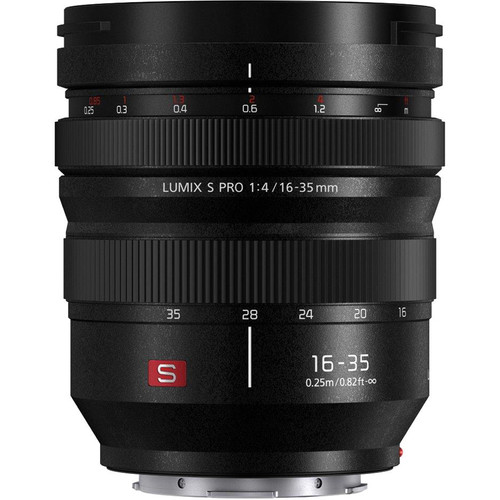
Panasonic is dropping two new Panasonic Lumix S Pro lenses in January, and while they’re both expensive, it’s looking like they’re going to be worth it.
Let’s take a look.
Panasonic Lumix S Pro 16-35mm f/4
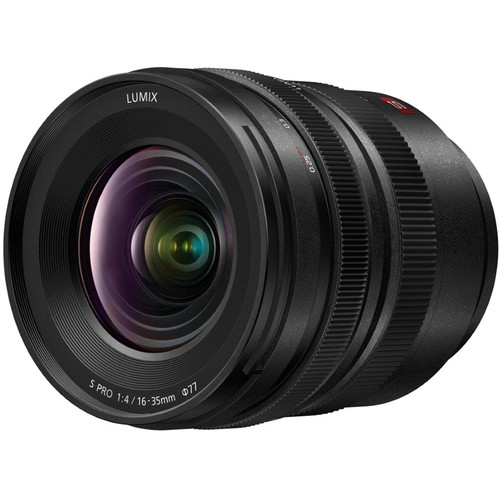
The Panasonic Lumix S Pro 16-35mm f/4 is an L-mount lens that is set to suppress double-line bokeh, while ensuring the entirety of the image is high resolution, meaning no vignetting in the corners.
This lens features 12 elements in 9 groups and an extra-low dispersion element to achieve superb image quality.
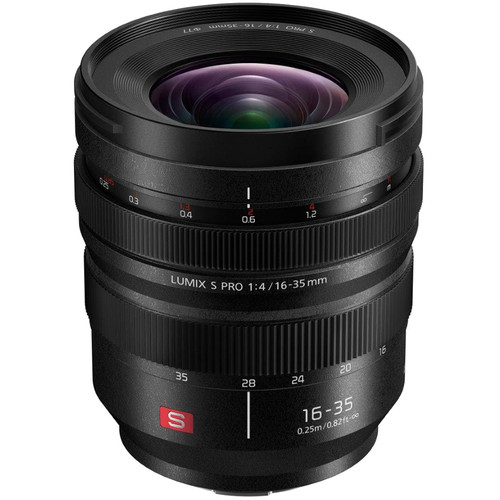
The autofocus is something to behold, too - it’s a double magnet linear autofocus motor, but you can also switch to manual focus incredibly quickly.
It’s water, dust, and weather resistant up to -10 degrees Fahrenheit, and we’ll keep you updated when it eventually drops if these new Panasonic lenses are really all they claim to be.
Learn More:
Panasonic Lumix S Pro 70-200mm f/2.8 O.I.S.
I’m not sure Panasonic’s marketing of this lens, which is built for “professional field shooting,” really makes a lot of sense to those of us out in the field. It seems Panasonic is trying to appeal to every photographer without excluding anyone, but that doesn’t mean I’m not excited for this Panasonic Lumix S Pro 70-200mm.
It features 22 elements in 17 groups with both ultra extra-low and extra-low dispersion elements.
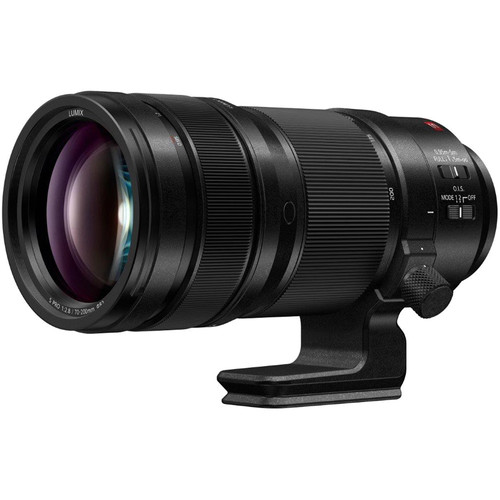
This lens features Panasonic’s Optical Image Stabilizer and is compatible with the 1.4x and 2x Lumix S L-mount teleconverters for up to 400mm focal lengths.
This lens itself features instant manual focus switching and is also water, dust and weather resistant at up to -10 degrees Fahrenheit.
Get more details on these lenses and other new product announcements from Panasonic in the video above from B&H Photo Video.
When Will These Panasonic Lumix S Pro Lenses Be Available?

These lenses aren’t expected to drop until January of 2020. The 16-35mm will be available for $1,500 and the 70-200mm will be available for $2,600.
If you aren’t exactly looking to drop $2k on one lens, though, a good option for you is to buy your photography equipment used, and I try to buy all of my lenses on Lensfinder.
Lensfinder is essentially the eBay of used lenses, meaning you can find some extremely rare lenses on it, but without all the woes of buying camera gear on eBay (sky-high shipping, scams, and badly damaged equipment).
You can stretch your budget and get a couple of lenses, or you can sell some of your old glass to finance a new lens purchase, like one of the incredible S Pro lenses detailed above.
Lensfinder also has a selection of used filters and camera bodies (or you can list yours for sale), so it really is a one-stop shop for photographers that need gear or need to unload gear!
Learn More:
We Recommend
This 18-400mm Lens Might Be the Only Lens You Ever Need
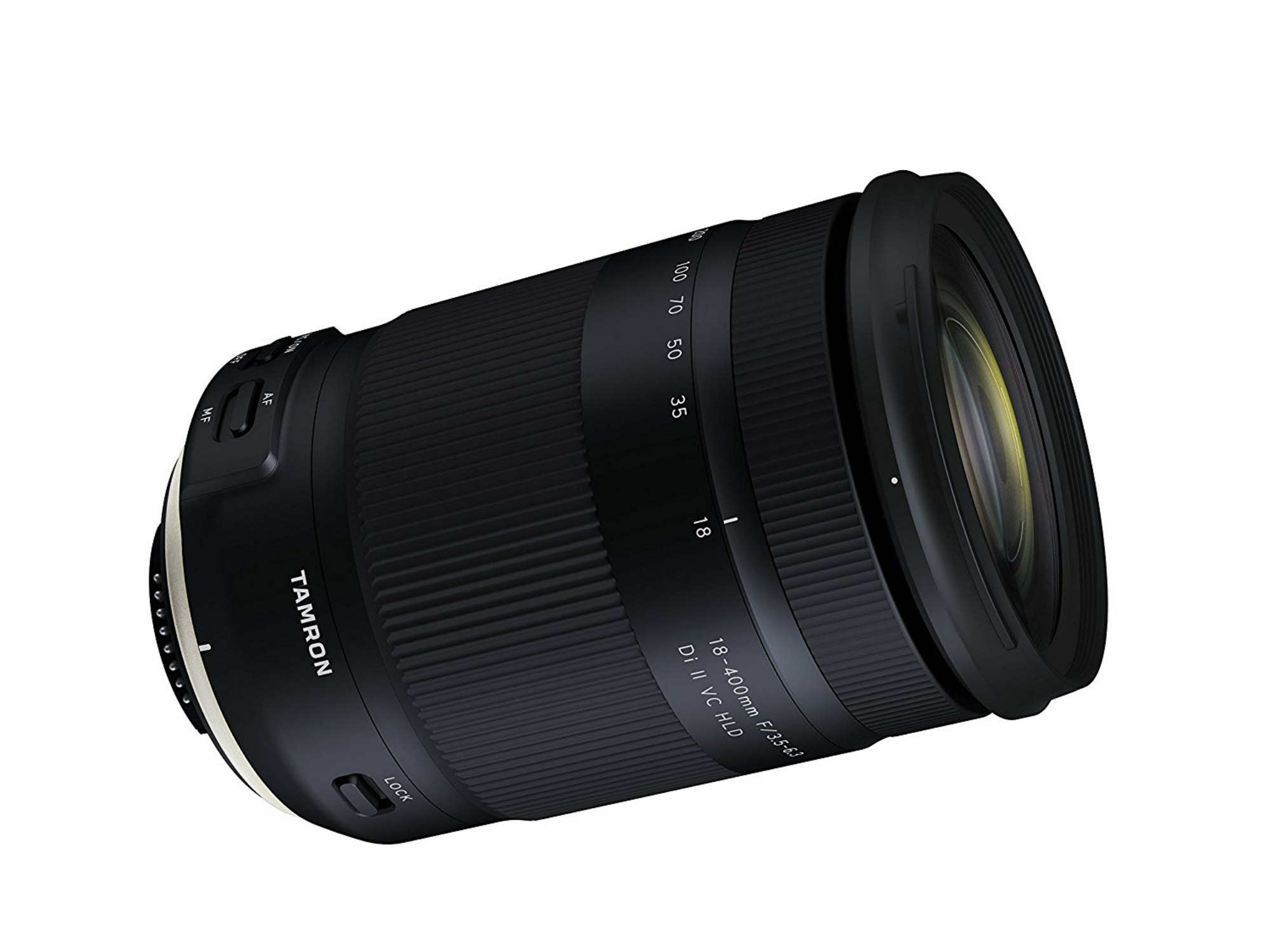
A while back, I wrote a feature on some crazy camera lenses that were various levels of amazing, though some of them were downright impractical.
But now there's a crazy camera lens that actually has the makings of an excellent lens - and one that's quite inexpensive as well at less than $600 brand new as of this writing.
The Tamron 18-400mm f/3.5-6.3 Di II VC HLD lens obviously has the focal range to get you from wide-angle to super telephoto.
With that versatility, you could spend time taking sweeping shots of big landscapes at 18mm, switch gears and take some portraits at 80mm, photograph nearby wildlife at 200mm, and then hit up a sporting event to get action shots of athletes from a good distance away zoomed in at 400mm.
Here are some other features about this lens that are of note.
Editor's Tip: Looking for a smaller lens? Consider these reasons why prime lenses are such great buys.
It's Small
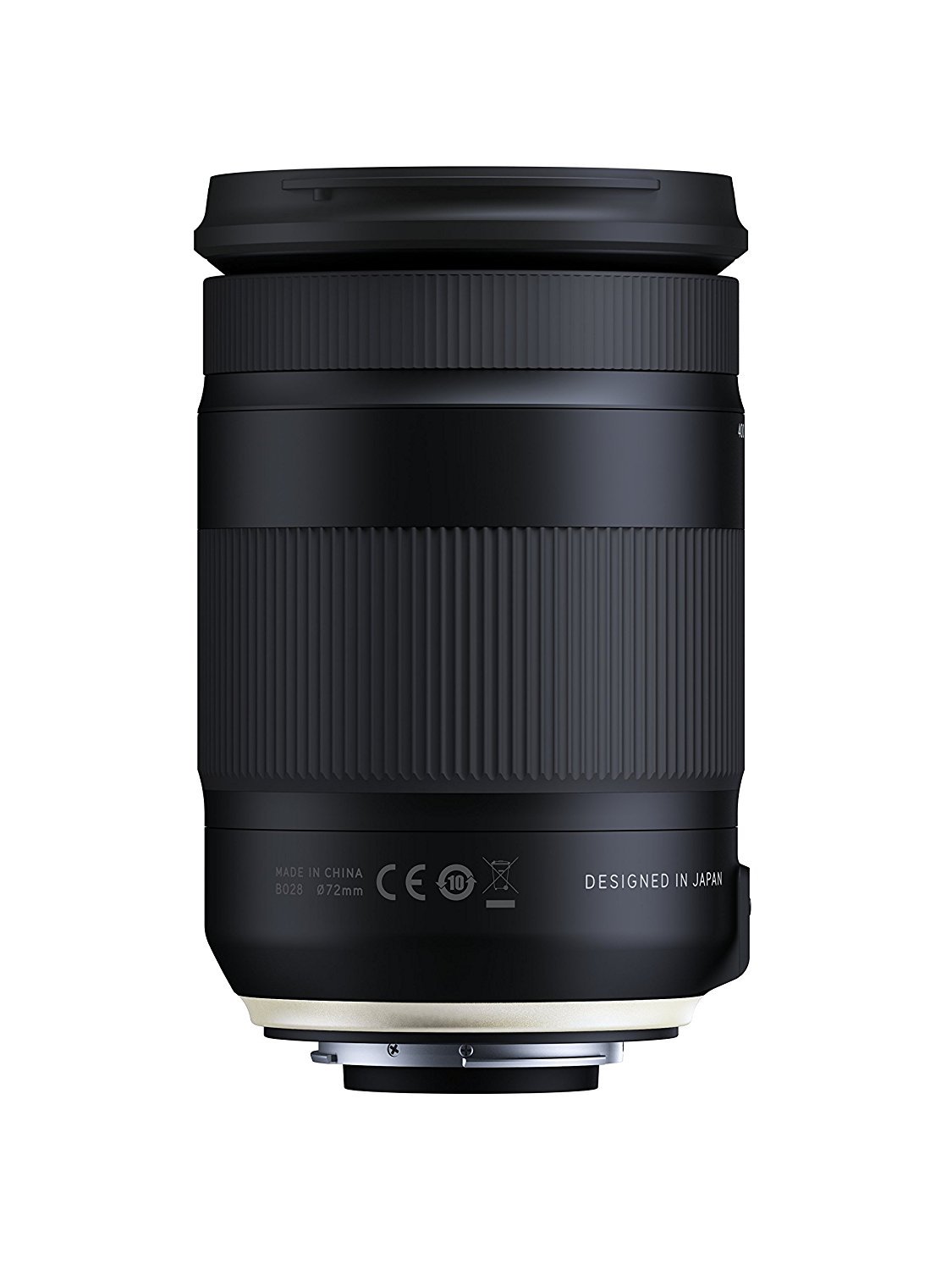
Okay, so "small" is a relative term, but for a lens that ranges up to 400mm, this one is small by comparison.
At just 4.8 x 3.1 x 3.1 inches, it's not a lens that will feel unwieldy or in your way when it's not in use.
And it weighs just 1.55 pounds - an amazingly light lens for something with such a long focal length.
With those specs, this lens would make a killer walk around lens or travel photography lens where carrying a big, heavy load would be zero fun. Either way, it's one of the best lenses for photographers if you ask me.
It's Built Specifically for APS-C Cameras

Perhaps the best feature of this lens is that is was designed for use with APS-C cameras - thus the small form factor of the lens to match the smaller form factor of crop sensor cameras.
But that also means that this lens has even more reach due to the crop factor associated with APS-C sensors.
On a Nikon rig, this lens has the equivalent focal length of 27mm-600mm, and on a Canon camera, it's effective focal length is roughly 29mm-640mm.
With that kind of reach, there's not much that you can't get a photo of.
Learn More:
- Canon Says 'Let's Do It!' and Creates a $70,000 50-1000mm Beast of a Lens
- The Best Lens for Landscape Photography
The Image Quality is Good
Granted, this isn't a Sigma ART lens by any stretch of the imagination, but having said that, the image quality this lens produces is more than acceptable.
There is noticeable degradation in sharpness as you proceed from wide-angle to telephoto, with the most noticeable lack of sharpness occurring when shooting at 400mm.
However, when shooting on the wide end, the results are quite sharp, even around the edges of the frame.
What's more, sharpness in the center of the image is quite good at all focal lengths.
There is the issue of distortion to worry about as well as chromatic aberration, but both of those problems can be corrected easily in post-processing.
You can see this lens in action and view sample images in the video above by Christopher Frost Photography.
Editor's Tip: What lens should you buy? Learn why a 50mm lens is an ideal choice for an inexpensive lens with excellent performance and sharpness.
Tamron Has Improved Build Quality as Well
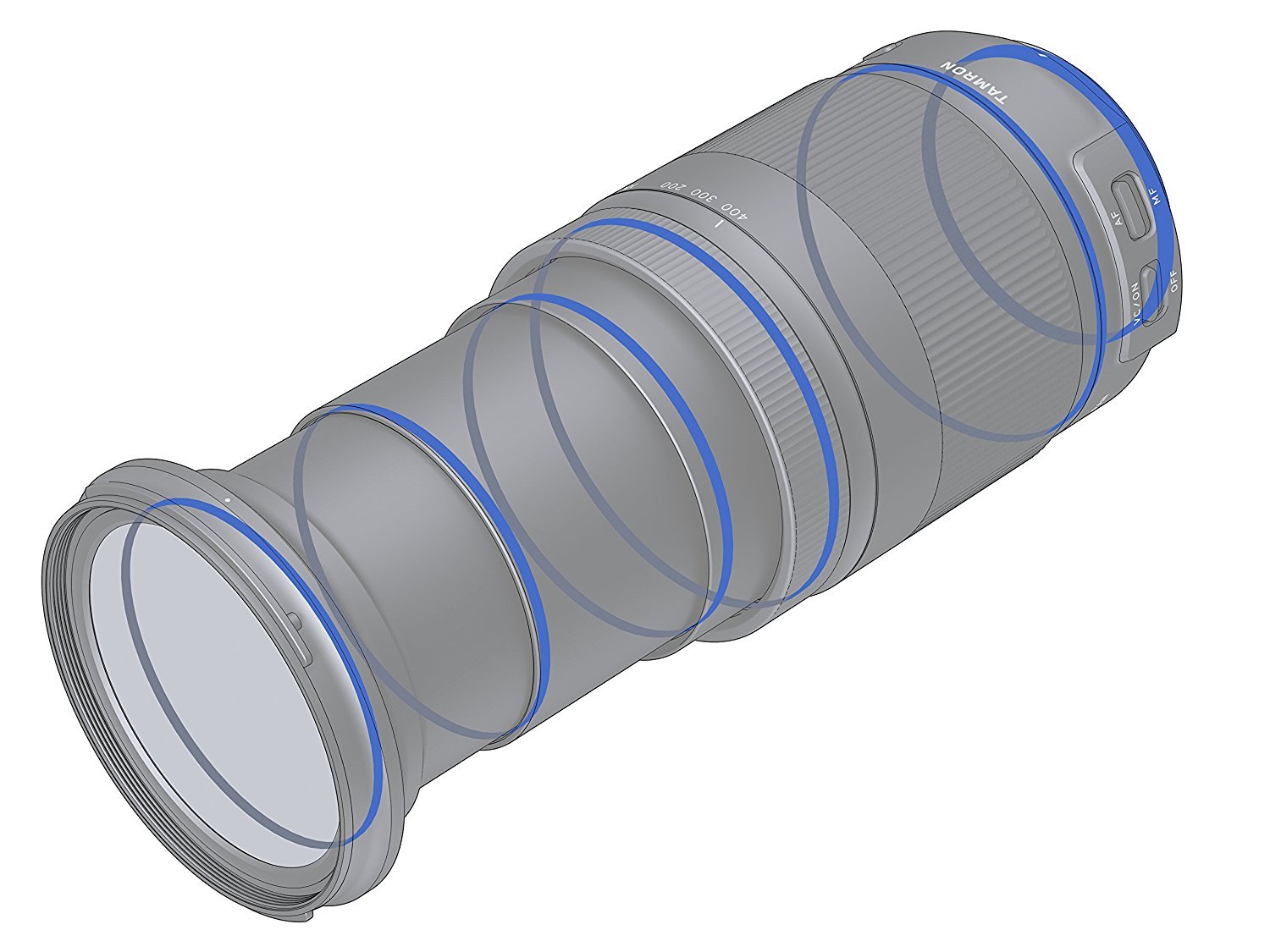
There was a point not all that long ago that I would never, ever consider buying a Tamron lens.
Things have changed though, particularly in recent years, with lenses that feel far more solid.
This lens is also weather-resistant, which comes in handy when shooting landscapes and other outdoor subjects.
The hard plastic construction won't fool anyone that's used to shooting with something like a Canon L-series lens, but at the end of the day, it gives the lens a bit of heft and durability that should make it a long-lasting lens, provided you take care of it.
Wrapping It Up
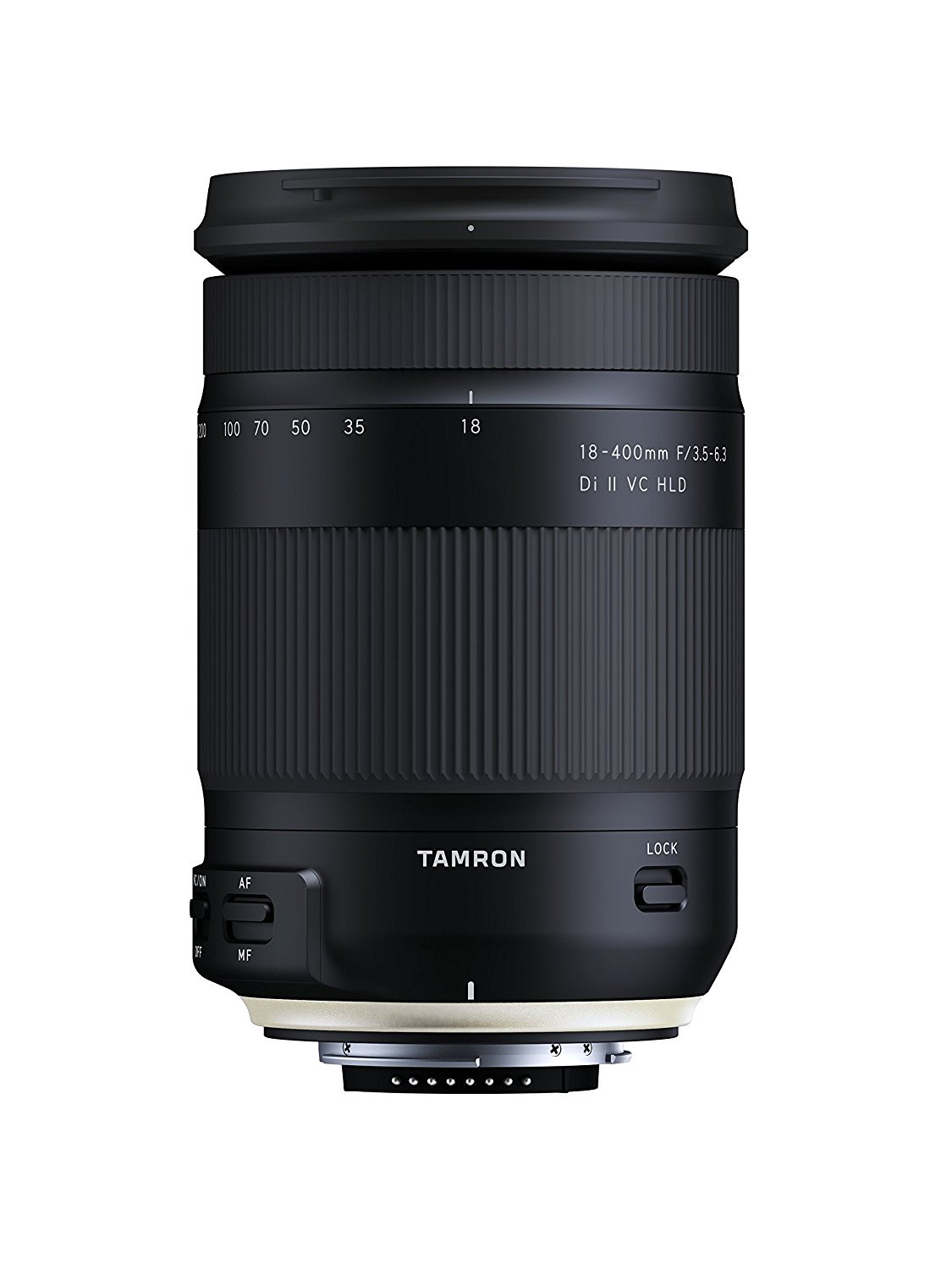
Sure, the Tamron 18-400mm f/3.5-6.3 Di II VC HLD isn't the ideal lens for every photographer. I wouldn't recommend it if you're just starting out.
However, for a lot of enthusiast photographers, this most versatile lens represents a great buy, particularly at its current price point of $599 and with all the versatility it offers. It's simply tough to beat this bargain camera lens.
If that's still a little too rich for your blood, a great way to get a better, more capable lens is to find a pre-owned lens to suit your needs.
Buying pre-owned can stretch your budget, and if you go about it the right way, you can find high-quality used lenses and buy them in a completely secure platform.
So, with all these options for upgrading your lens, now is the time to start filling out your kit with better glass!
Learn More:
We Recommend
This is Why a Telephoto Lens is a MUST for Landscape Photographers
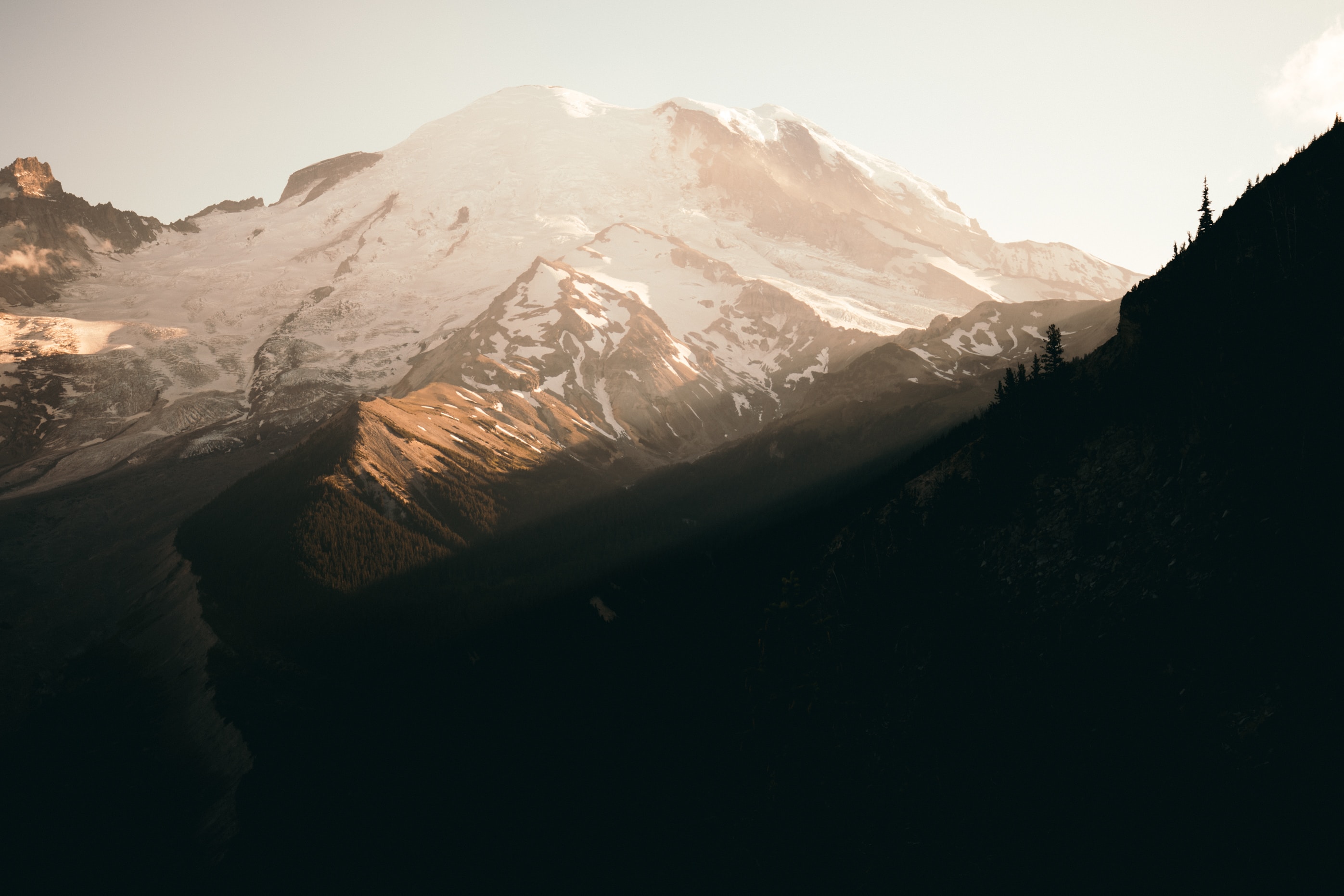
Photo by KAL VISUALS on Unsplash
Growing up I always thought I wanted to work as a park ranger. I think a lot of photographers are naturally drawn to the outdoors at an early age, although we might not realize exactly what to do with that passion at that point.
I think that’s why so many photographers devote their work to conservation of our land.
Landscape photography is one of the purest forms of photography. In landscape photography, it is just you, your camera, and your hiking gear. Plus, if you’re smart, your telephoto lens.
Experience Different Perspectives
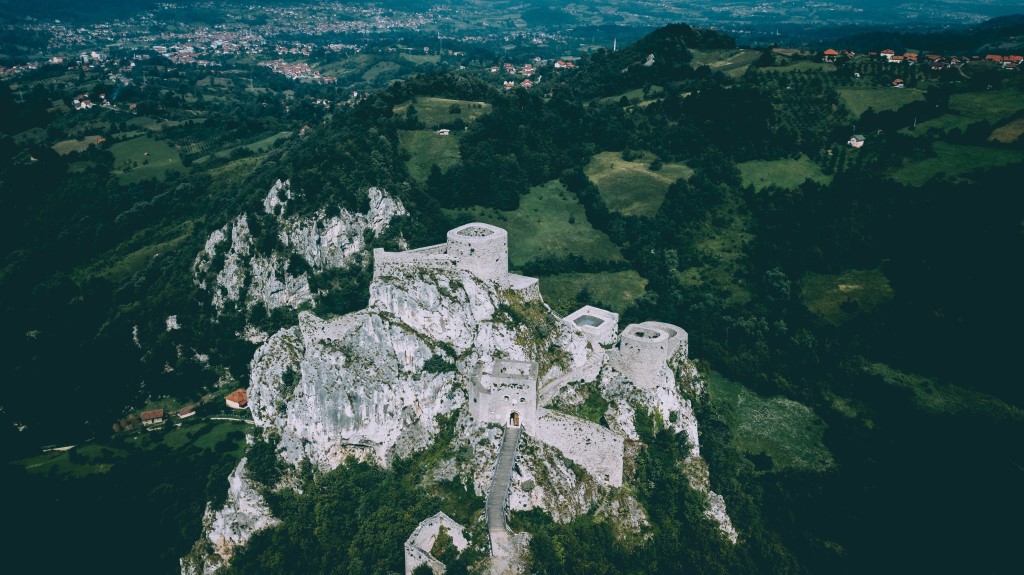
Photo by Ramiz Dedaković on Unsplash
Telephoto lenses are one of the most important landscape photography lenses because they allow you to experience different perspectives.
I actually purchased my first telephoto lens for landscapes because I was visiting one of the most breathtaking landscapes you can find - Hawaii.
Hawaii is crawling with tourists and photographers and models, which can make it a challenge to photograph the beauty of the landscape. Since I knew every inch of Oahu had already been shot by someone before me, I was hoping to add my own perspective to my shots.
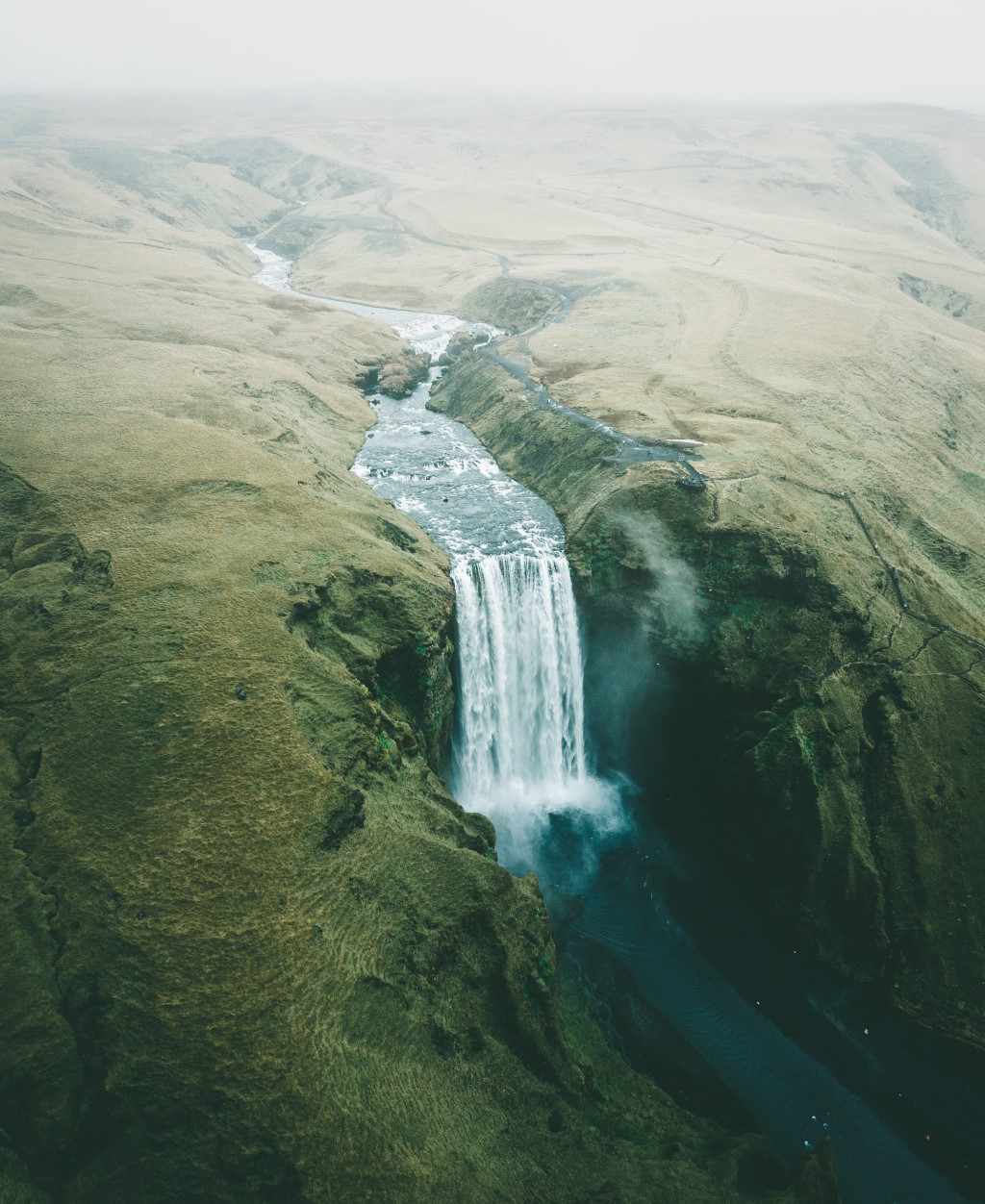
Photo by Rolands Varsbergs on Unsplash
Telephoto lenses are one of the most important landscape photography lenses because they allow you to experience different perspectives.
I actually purchased my first telephoto lens for landscapes because I was visiting one of the most breathtaking landscapes you can find - Hawaii.
Hawaii is crawling with tourists and photographers and models, which can make it a challenge to photograph the beauty of the landscape. Since I knew every inch of Oahu had already been shot by someone before me, I was hoping to add my own perspective to my shots.
Capture Distant Layers
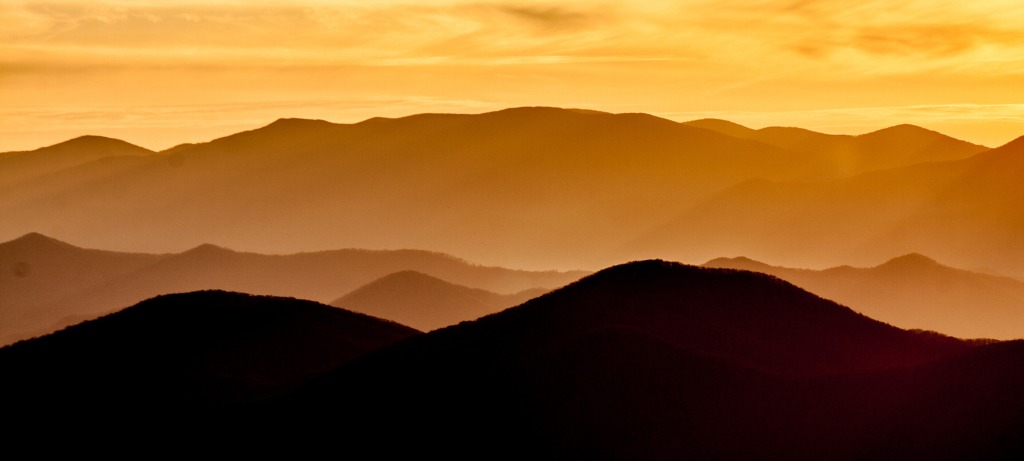
photo bybenjaminjk via iStock
Landscape photography should never be two-dimensional, and yet many landscape photographs come off in exactly this way.
It can be difficult to capture the depth, warmth and contrast in a landscape photo without the proper landscape photography lenses.
When shooting with telephoto lenses, though, you need to be mindful of the weather.
In the above photo, for example, the photographer is working with the elements to create a dream-like photo. Their camera probably could not have produced a photo with extreme clarity on this day, because of the water in the air, so they refocused and shot this picture instead.
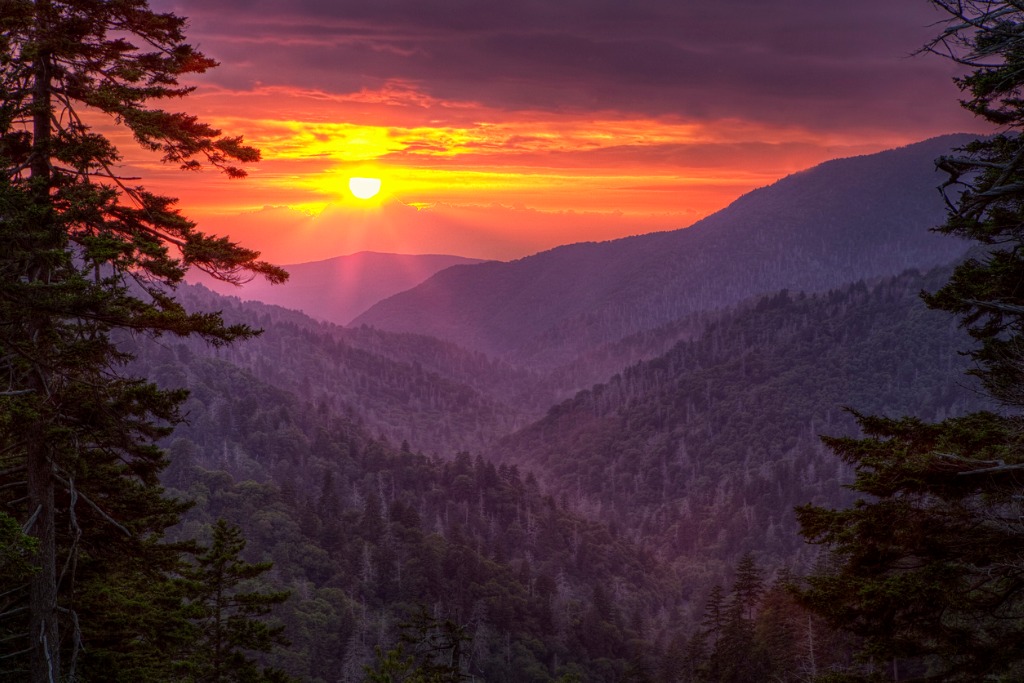
photo byAndrewSoundarajan via iStock
Telephoto lenses for landscape photography are especially useful when you’re trying to add depth to photos of distant mountains because clouds always rest on the tops of mountains and create that layer for you.
All you need to do is catch it!
Learn More:
Take More Creative Photos
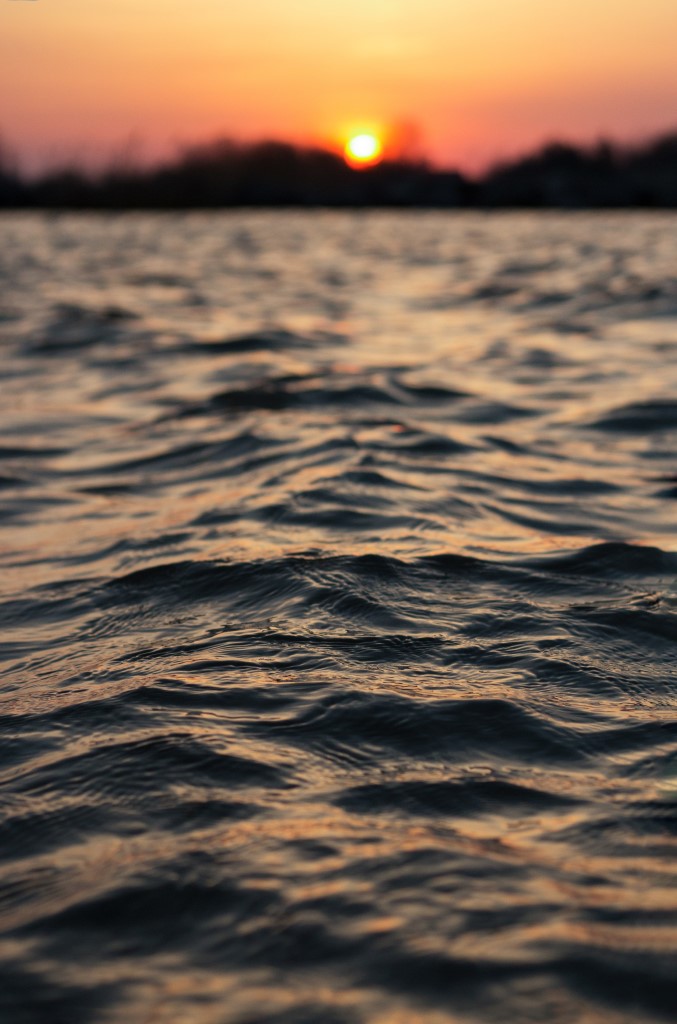
Photo by Brad Mann on Unsplash
Composition in landscape photography is important, don’t get me wrong, but sometimes you need to focus on a small subsection of your wide-angle photo.
Instead of examining the entirety of your landscape, your telephoto lens allows you to examine just part of it and to take incredibly creative photos.
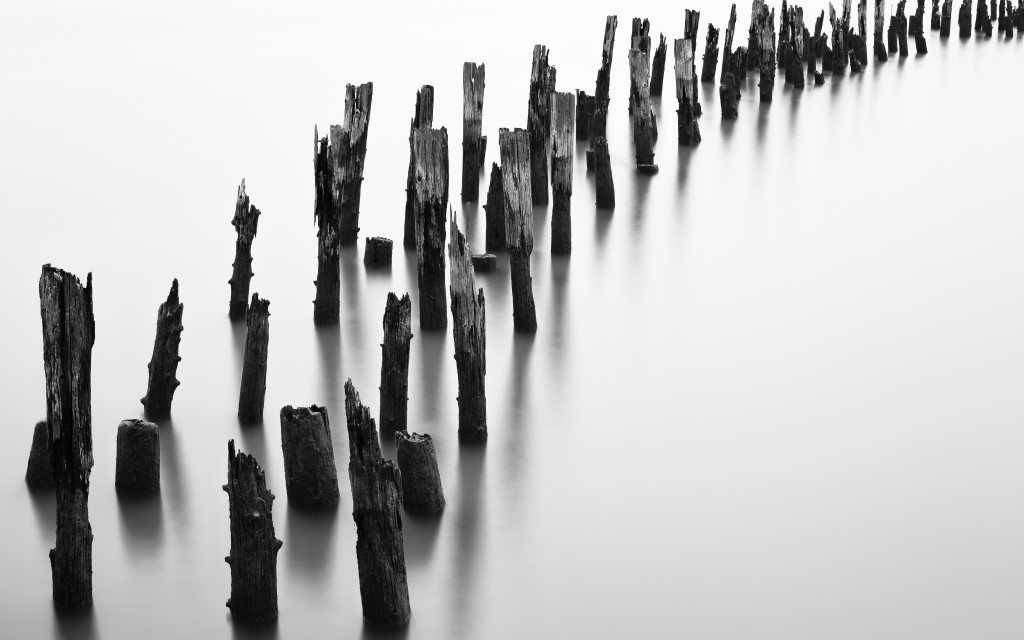
Photo by Dave on Unsplash
I think telephoto lenses forces you to become an artist in a photography niche that could otherwise easily become all about the science of the shot.
Include Only What You Want in Your Photos
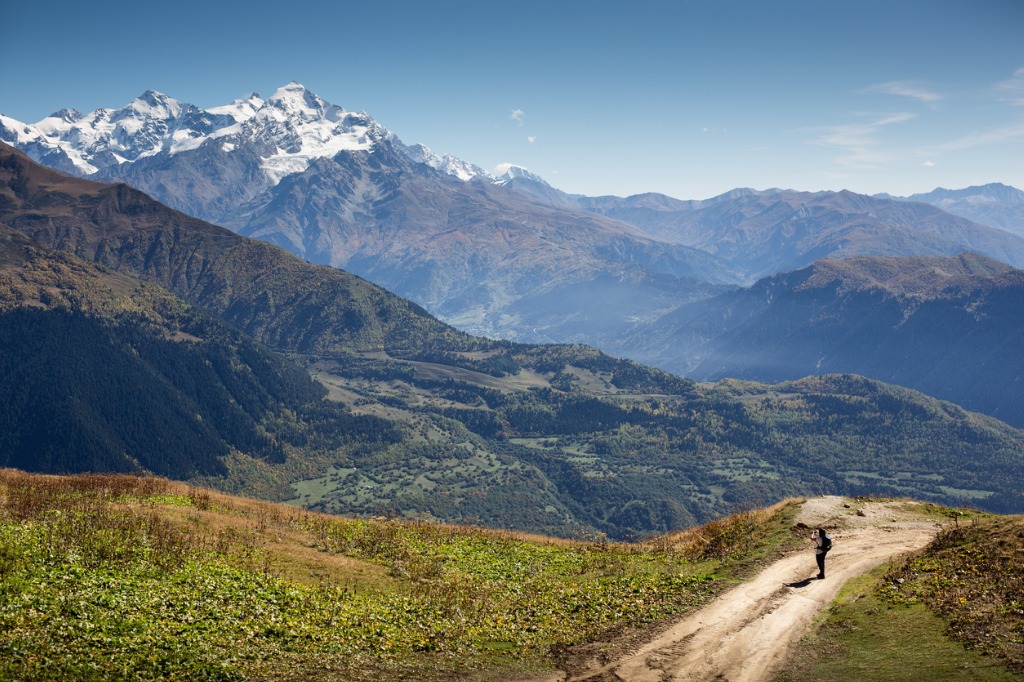
photo bylyosha_nazarenko via iStock
Wide-angle lenses are obviously designed to capture everything, and while this is great for some photos, it isn’t for others.
Take, for example, the above photo. If I had to guess, I’d say there’s no way the entire landscape was that beautifully rust-colored. There were probably some farmhouses, or roads or different colored plants. But, the photographer didn’t want to capture all of these elements. Only what they did.
Telephoto lenses allow you to do this.
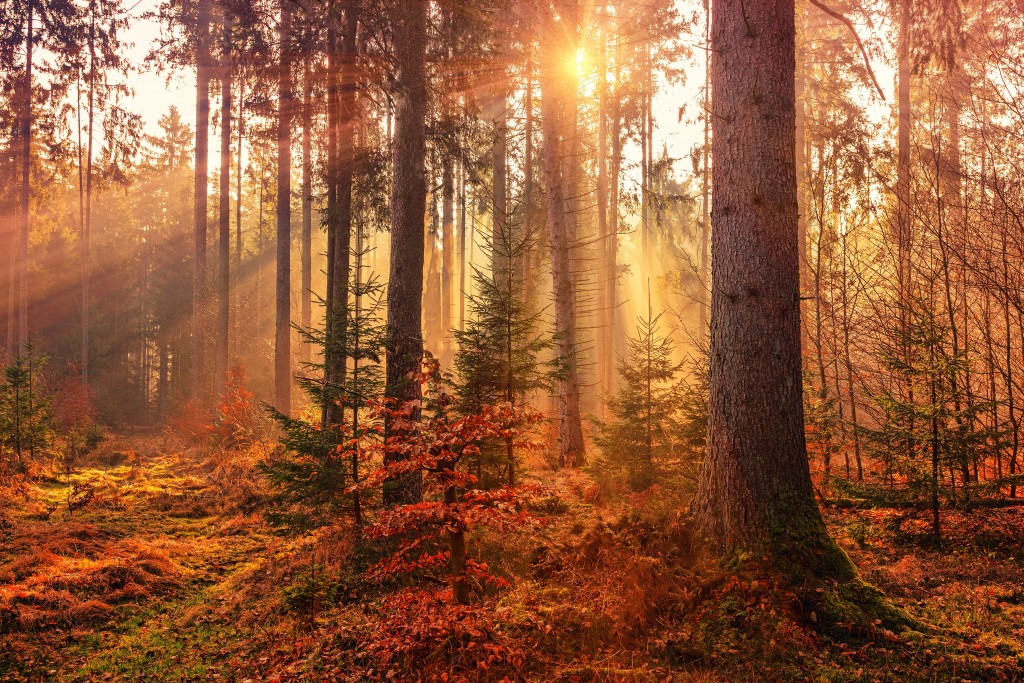
Photo by Johannes Plenio on Unsplash
Telephoto lenses in photography are all about getting rid of the distractions. But, telephoto lenses are wildly expensive. It’s why I’ve kept my first telephoto lens for so long.
Thankfully, I was recently able to pick up another version because I started working with Lensfinder.
Lensfinder sells used lenses, ranging from the ultra-rare to the ultra-cheap, and their site features the best telephoto lenses for landscapes.
I tried to up my landscape photography game for years before finally caving and purchasing a telephoto lens, and I’d like that decision to be just a little easier for you.
Head over to Lensfinder and see if you can’t find a telephoto lens for cheap.
Learn More:
We Recommend
This Might Just Be Canon’s Most Versatile Lens - and You Need One
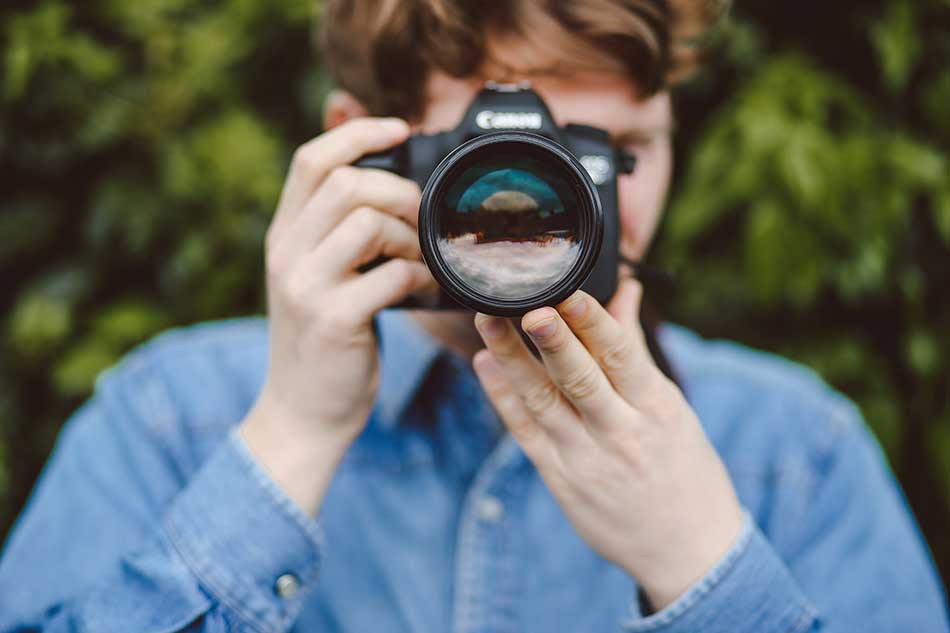
Photo by James Bold on Unsplash
Back in August of 2016, Canon unveiled their 24-105mm f/4L IS II USM lens to coincide with the release of the 5D Mark IV.
Canon felt that their new flagship camera needed some new optics, and the 24-105mm was one of two new lenses released by the company, the other being the 16-35mm f/2.8L II USM.
And while the 16-35mm is a great lens, the 24-105mm is simply more versatile for more photographers.
Of course, its predecessor is one of Canon’s most successful lenses of the last decade or so, so it had big shoes to fill. If you ask me, it’s more than met expectations over the last two-and-a-half-years.
Here’s why the Canon 24-105mm f/4L II needs a spot in your camera bag.
Editor’s Tip: Want to upgrade your lens but don’t have the money to buy new? Find high-quality pre-owned lenses.
The Canon 24-105mm f/4L II is a Single Lens Solution
As noted above, perhaps the biggest selling point of this lens is its versatility.
With such a wide focal range, you can use this lens for any manner of photography, from wide-angle landscapes to intimate, frame-filling portraits to wildlife photography and just about anything in between.
That also makes it an ideal travel photography lens because you can photograph virtually anything on your travels without ever having to swap out lenses.
If you want to streamline your workflow and minimize how much time you spend messing about with lenses, this could be the solution for you.
Get a hands-on review of this lens in the video above by Kai W.
L-Series Glass Means Professional Optics
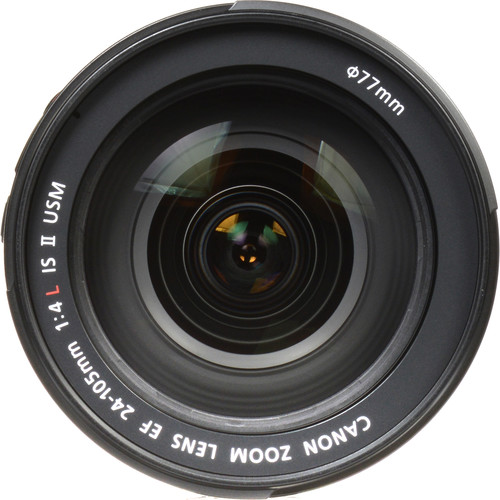
Of course, since this lens is part of Canon’s L-series, you get improved optics and better overall performance.
In fact, the 24-105mm f/4L II features revised optics that make it more resolute and with greater edge-to-edge sharpness than its predecessor. This is due in part to the new optical design that features 17 elements in 12 groups with 10 aperture blades. Compare that to the original lens that had 18 elements in 13 groups with eight aperture blades.
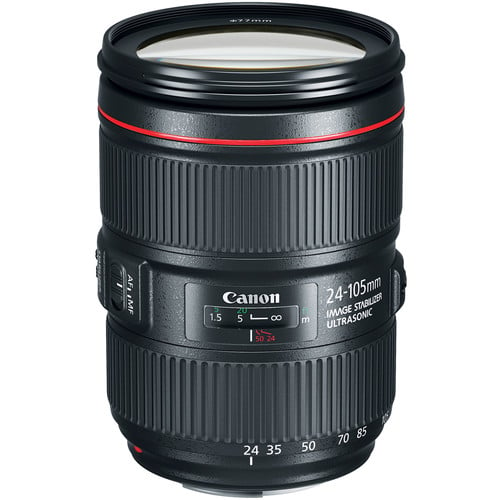
Of course, being an L-series lens, it also has Canon’s optical image stabilizer to help counteract camera shake. The original version of this lens offered stabilization up to 2.5 stops, but the revised Mark II version offers 4 stops.
Additionally, the f/4 aperture remains constant throughout the zoom range, making this a more effective light-capturing lens at any aperture than Canon’s cheaper standard zooms.
This Lens Offers a Host of Handy Features
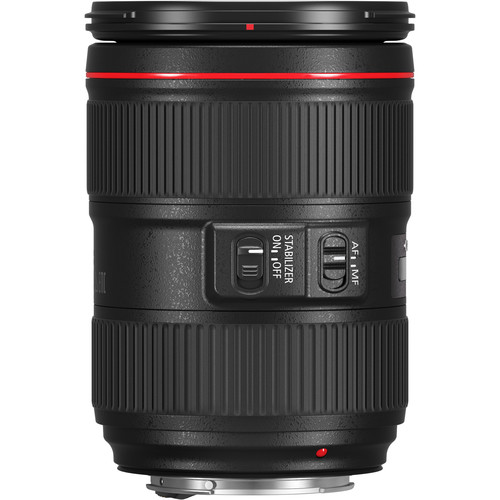
Not only does the 24-105mm f/4L II USM have an ultrasonic motor that makes autofocus quiet (and fast!), but it also has a full-time manual focus ring so you can fine-tune the focus of your shots without having to switch to manual focus.
Though that feature might not be high on the list of priorities for a brand new photographer, enthusiasts and professionals certainly appreciate the ability to have that added level of control.
Additionally, as an L-series lens, this rig benefits from an added emphasis on build quality and durability.
That means that this lens can take some lumps, has improved resistance to shock, better vibration reduction, and weather sealing to keep dust and moisture out.
Canon also implemented a new electronic aperture diaphragm system (EDM) that provides ultra-smooth aperture changes when shooting video.
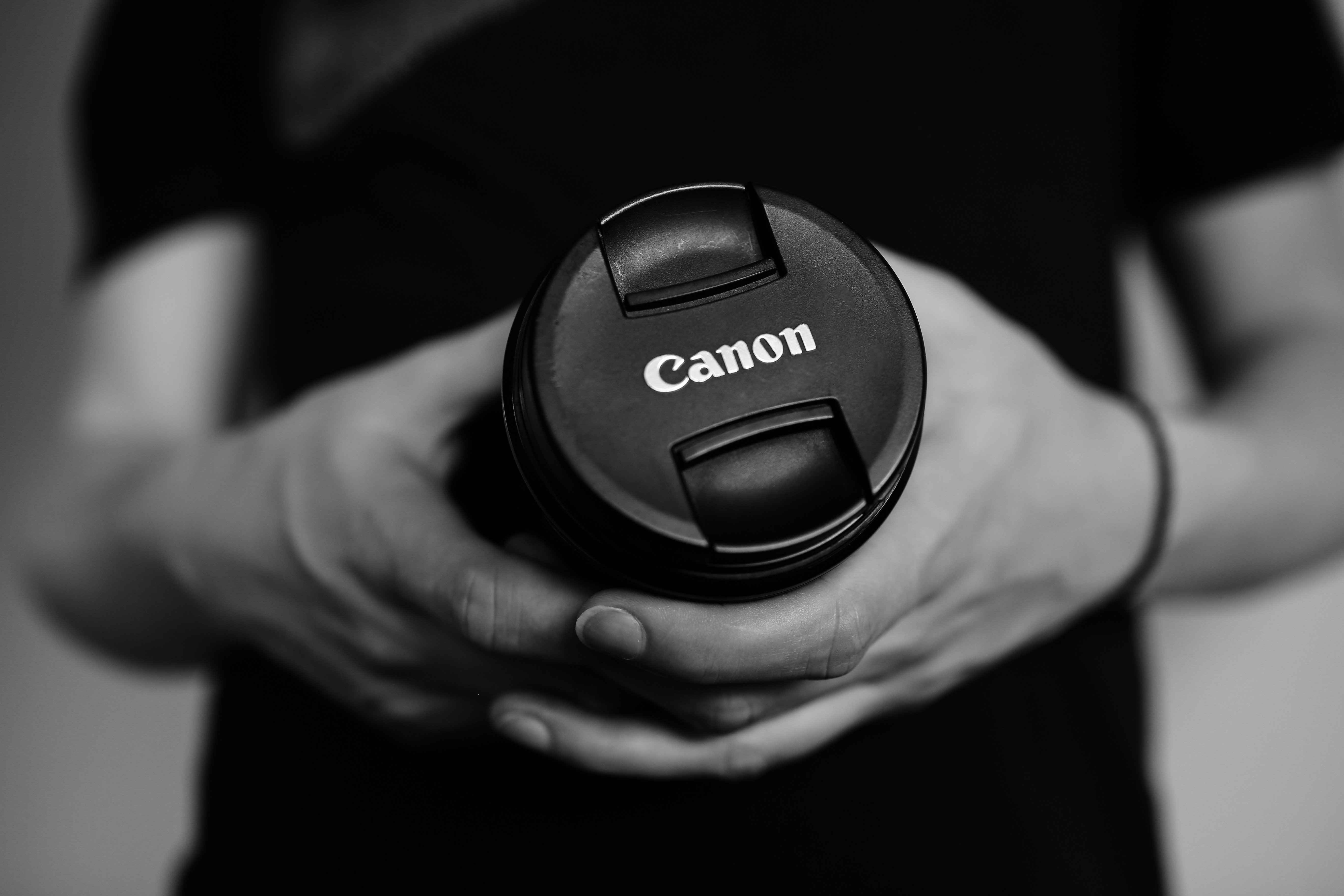
Photo by James Bold on Unsplash
In other words, this lens not only has the optical pedigree of Canon’s professional-grade lenses, but it also has the build quality and features you’d expect for a high-end lens.
And while it isn’t a cheap lens - brand-new it costs about $1,100.00 - it isn’t prohibitively expensive like some of Canon’s other L-series lenses (which is especially true if you can find a good, pre-owned version).
That makes this lens ideal for enthusiasts and pros, but it’s also a good upgrade option for newer photographers that want to upgrade their kit to something more functional.
Versatility, top-of-the-line optics, lots of handy features...this lens has it all, and that’s why you need one in your camera bag.
We Recommend
This New Portrait Lens Might Be a Game-Changer
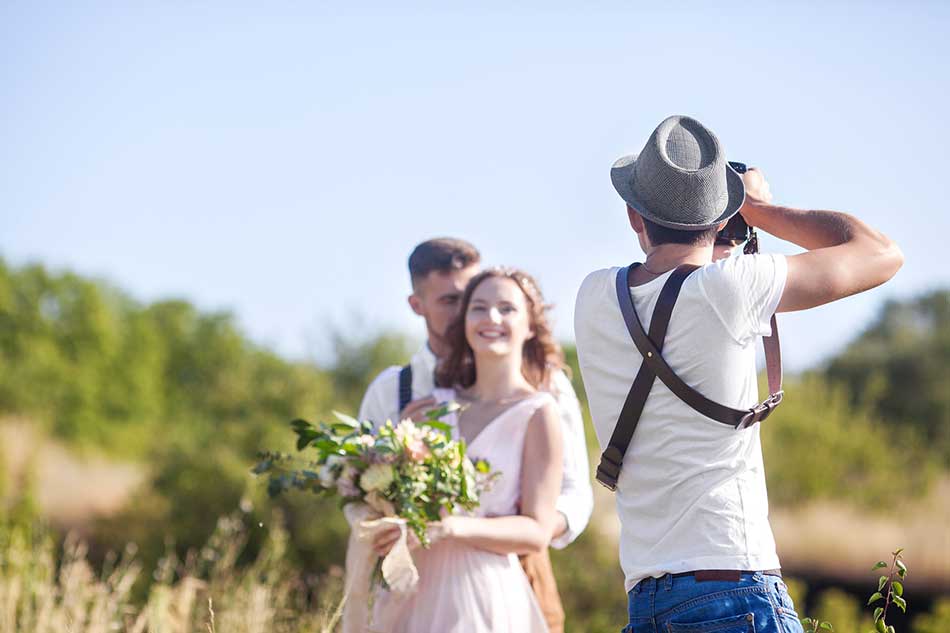
photo byErstudiostok via iStock
Ready to take better portraits? Tamron might have a lens for you.
Sure, taking great portraits is about much more than the lens you use, but having a high-quality portrait lens at your disposal certainly won’t hurt.
The question is, why is Tamron’s new 35-150mm f/2.8-4 Di VC OSD lens a game-changing portrait lens?
Top Portrait Lens Features: This Portrait Lens is Small and Lightweight
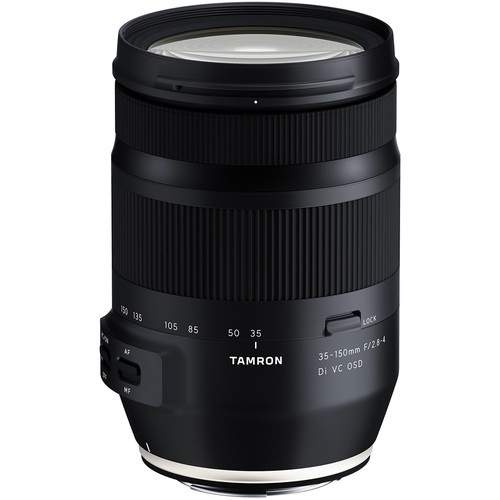
Tamron 35-150mm f2.8-4 Di VC OSD
For me, the size and weight of this lens are ideal for portraiture.
After all, you don’t want to lug around big, heavy behemoth of a lens as you’re working with your model, right?
At less than five inches long and just over 27 ounces, this lens has a small form factor that allows you to feel a little freer to move about. Besides, a smaller lens can make the model feel more comfortable in front of the camera, as there isn’t an overwhelmingly large lens in their face.
Learn More:
You Want Fast Autofocus in a Portrait Lens
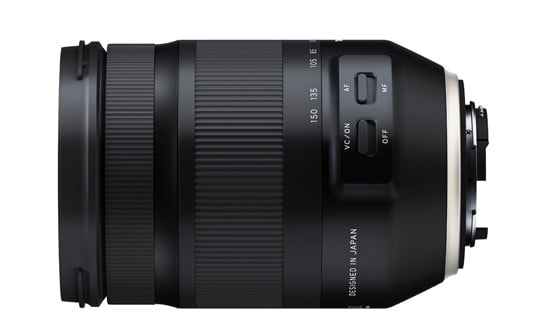 Tamron 35-150mm f2.8-4 Di VC OSD
Tamron 35-150mm f2.8-4 Di VC OSD
Whether you shoot still portraits or action portraits, having a solid autofocus system is definitely a benefit, and Tamron has delivered with this lens.
It has Dual Micro Processing Units that speed up autofocus performance so you’re sure to get the clear, sharp, focused shots you want. The Optimized Silent Drive motor makes autofocusing extremely precise, quiet, and fast, which are features for a portrait lens you definitely want.
On top of that, this lens has built-in vibration compensation to the tune of five stops, so you can shoot more freely without a tripod without the worry of inducing camera shake.
Editor’s Tip: Upgrading your lenses is one of the best gear investments you can make. Though there are some great inexpensive lenses, typically, the best lenses have steep price tags. You can avoid the hit to your wallet if you buy used lenses. Buying used requires a keen eye and a platform that protects against fraud. Lensfinder is a prime choice for buying used glass because it’s a community made by photographers for photographers. Search for your new-to-you lens now.
Portrait Lens Features: Lens Elements That Enhance Performance
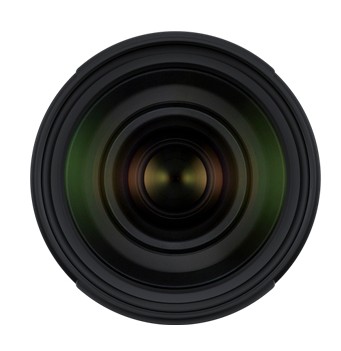 Tamron 35-150mm f2.8-4 Di VC OSD
Tamron 35-150mm f2.8-4 Di VC OSD
Some of the best features of the Tamron 35-150mm f/2.8-4 Di VC OSD are under the hood.
It features special lens elements that reduce optical aberrations, which give you improved image quality.
In addition to that, Tamron has implemented its Broad-Brand Anti-Reflection (BBAR) coating, which minimizes flare and ghosting.
Tamron has also coated the front lens element with fluorine, so it’s resistant to water and oils from your skin.
The result of all that is a lens that works hard for you to reduce or eliminate aberrations, fingerprints, and water droplets so you can spend more time shooting portraits and less time cleaning your lens or removing smudges in post.
See this lens in action in the video above by Matt Granger.
Learn More:
- 3 Lenses Every Photographer Should Have in Their Camera Bag
- Cheap Nikon Lenses That Offer Amazing Image Quality
Tamron 35-150mm f/2.8-4 Di VC OSD Specs
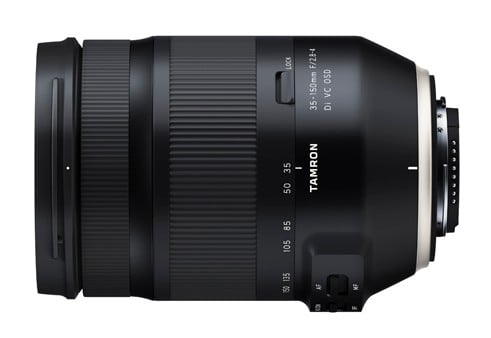
This is sure to be one of the best portrait lenses on the market not just because of the features listed above, but because of all the other specifications it brings to the table.
It offers a minimum object distance of just 17.7 inches, so you can get gorgeous up-close portraits.
The nine-blade aperture creates buttery smooth, pleasing-looking bokeh to help separate your subject from the background.
The lens even boasts moisture-resistant construction, so on those days when it’s overcast and you want to capitalize on the soft, even lighting, you can do so without worrying if rain showers are going to ruin your lens.
Editor’s Tip: Not sure you can afford a brand-new lens? Sell your old lenses to offset the cost! If you have lenses you no longer use, it only makes sense to get rid of them. Selling them to other eager photographers ensures that your old lenses will continue to be used and loved and produce excellent images. Get started selling your old lenses.
Tamron 35-150mm f/2.8-4 Di VC OSD Price
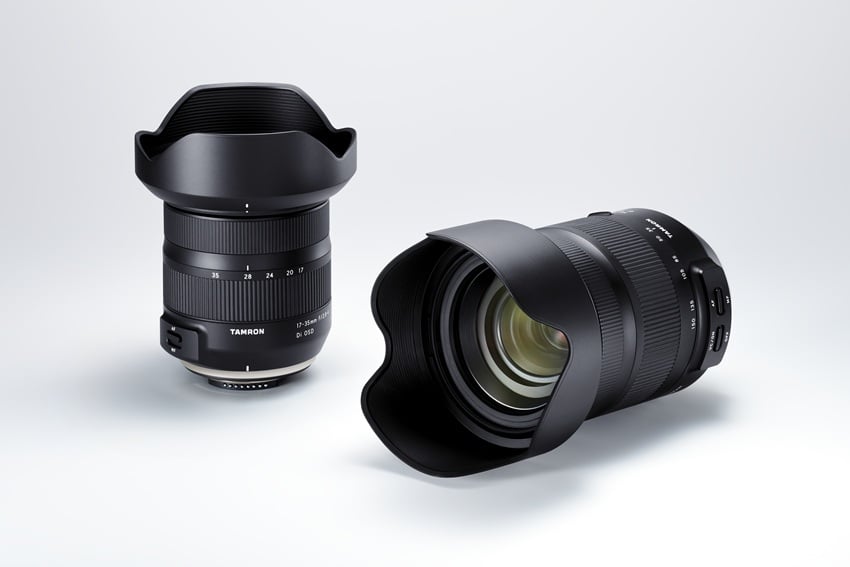
The Tamron 35-150mm f/2.8-4 Di VC OSD will be released for Nikon F-mount cameras on May 23, 2019, and for Canon EF-mount cameras on June 20, 2019.
Pre-ordering is available right now for $799.00 for both Nikon fit and Canon fit.
Learn more:
We Recommend
Three Killer F-Mount Lenses for Nikon Z Cameras
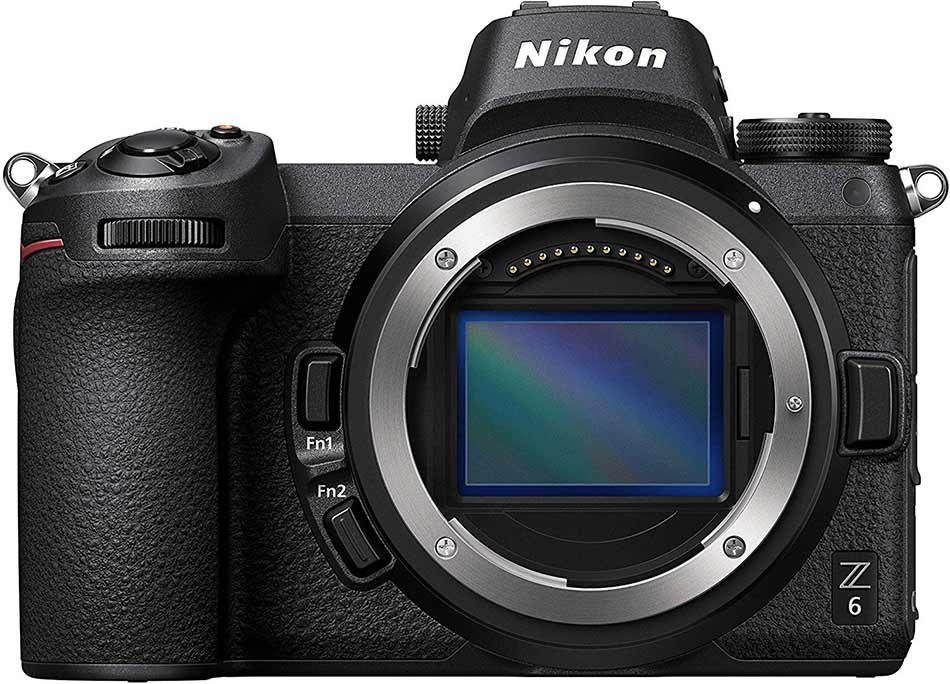
If you’re like me, you adore your Nikon Z6 (or Nikon Z7, for those of you who could afford one because you don’t have kids!).
But, you might not have adored the fact that there weren’t many Z-mount lenses available when the Z6 and Z7 were launched. That’s changed now, thankfully, but there’s still way more F-mount Nikon lenses out there that make great companions for these cameras.
All you need is the FTZ adapter to make F-mount lenses work with your Z-series camera, and boom, you have dozens and dozens of lenses you can use.
The question is, which ones are worth the money?
Sigma 14mm f/1.8 DG HSM Art
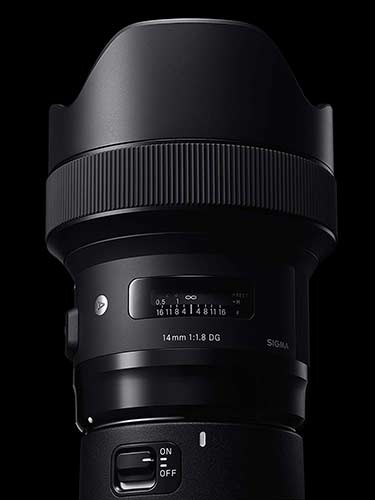
I love a super-wide prime lens, because I’m all about capturing wide landscapes, and this ultra-wide angle from Sigma does the trick.
This Sigma features an aperture range of f/1.8-f/16. It comes with 9 rounded aperture blades and weighs in at a whopping 39.2 oz (you need somewhere to fit all the greatness, right?).
Unfortunately, this Sigma doesn’t have image stabilization, but it is weather sealed, so it’s best for astrophotography, landscape photography and architecture photography.

As a bonus, this lens is also compatible with Z-system cameras with the FTZ adapter.
You can purchase this Sigma 14mm f/1.8 DG HSM Art for $1,300 on Amazon.
Nikon AF-S NIKKOR 50mm f/1.8G
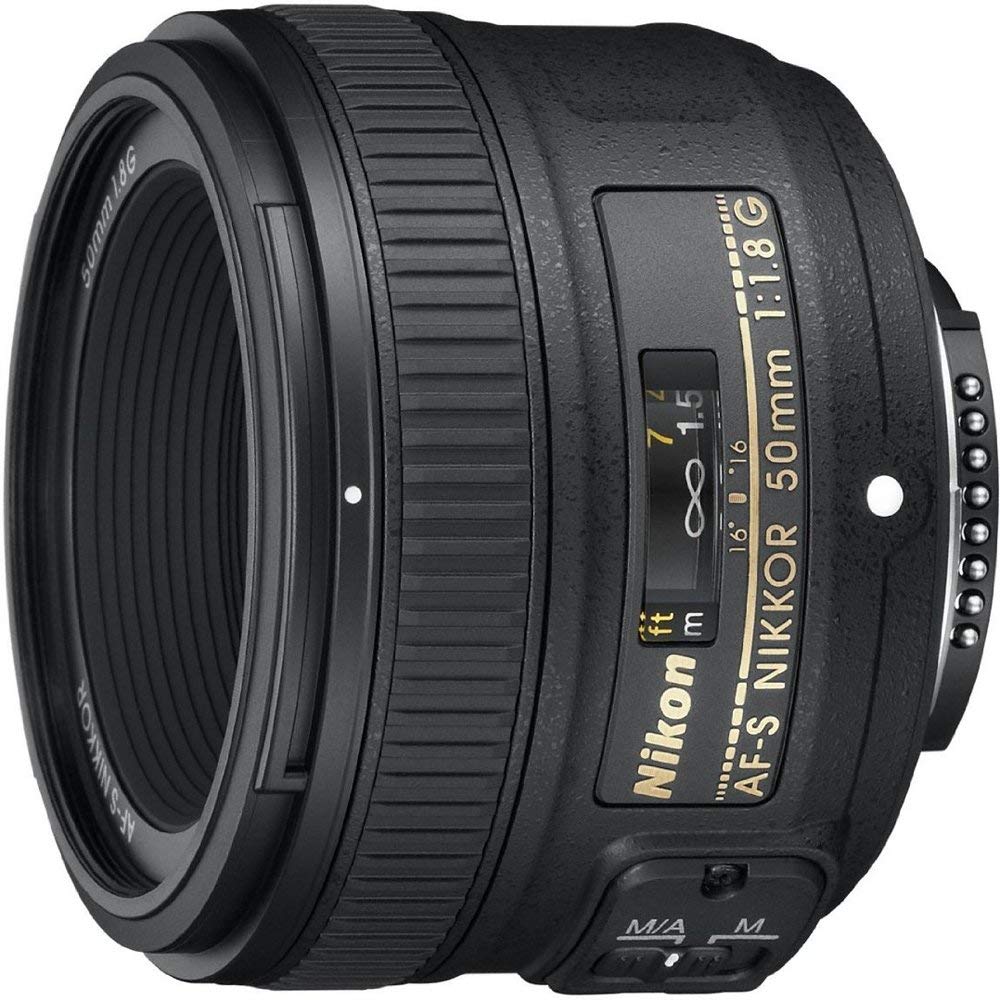
This NIKKOR 50mm, as opposed to Nikon’s 50mm f/1.8 lens for its Z system, is cheaper and smaller.
While F-Mount lenses for Nikon Z6 and F-Mount lenses for Nikon Z7 can be made to fit both cameras, this NIKKOR 50mm may work a bit better with the Nikon Z6, primarily because you can use it wide open, which will create a softer photo.
However, the NIKKOR 50mm comes with Nikon’s Silent Wave Motor (SWM), an aspherical lens, and it works beautifully with the in-body image stabilization on the Z cameras that makes it the perfect lens to carry around with you any day of the week.
PhotographyTV did an in-depth look at this lens; you can view it above.
You can purchase the AF-S NIKKOR 50mm f/1.8G starting at around $175 on Amazon.
AF-S NIKKOR 24-120mm f/4G ED VR
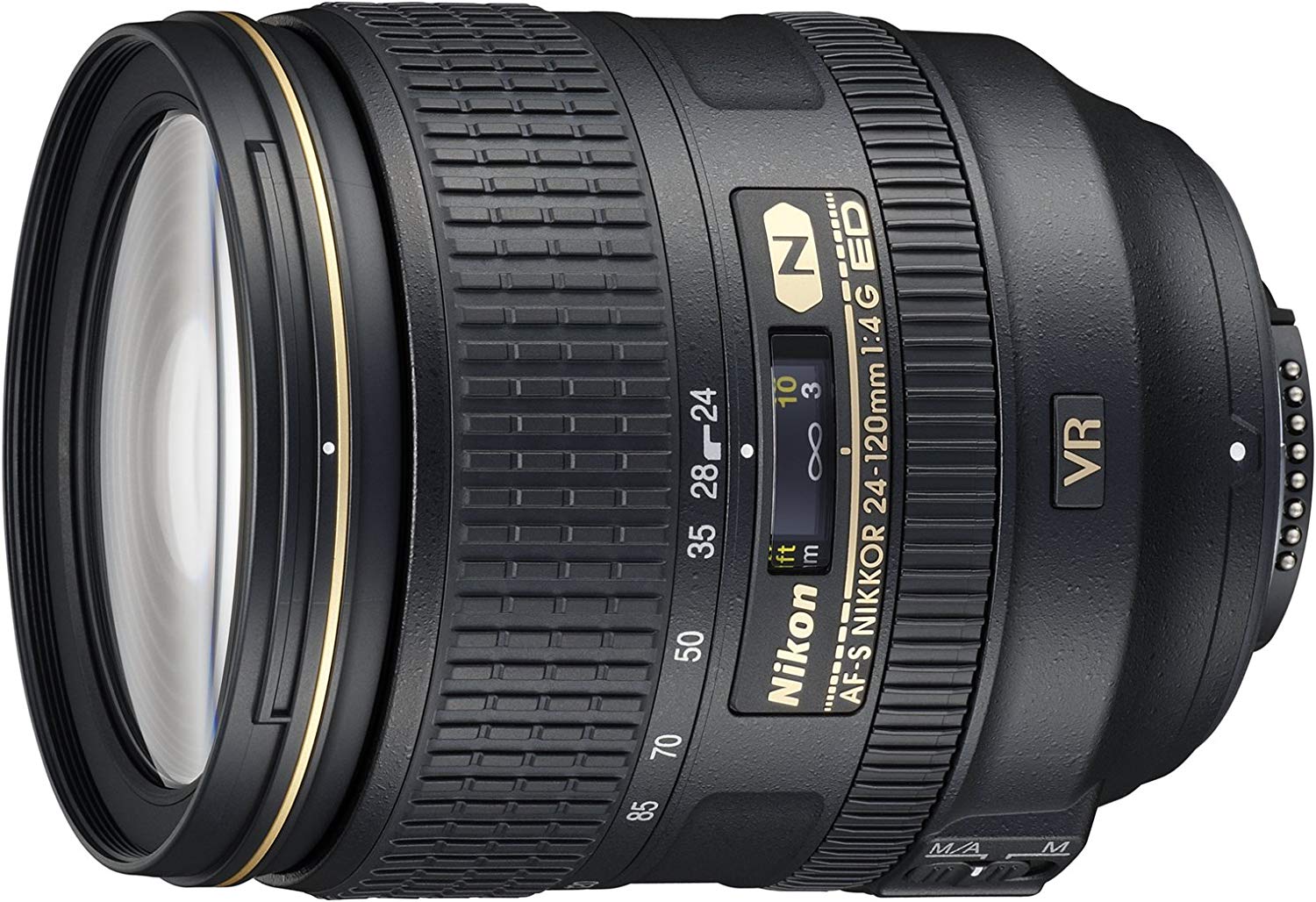
If you’re looking for a step up from the NIKKOR 50mm, this AF-S NIKKOR 24-100mm f/4G ED VR lens definitely fits the bill thanks to its sheer versatility.
With much more reach than a more typical 24-70mm zoom, this lens opens up possibilities for shooting wide landscapes at 24mm, intimate portraits at 100mm, and all sorts of subjects in between.
Sure, it’s only an f/4 lens, but the added focal range makes up for it in my book.
This lens also has vibration reduction, and working with the in-body image stabilization in the Z6 or Z7, you can use it in low-light situations with great success despite the f/4 aperture.
With so much versatility to offer, this is a great option if you’re looking for an all-day lens for tackling all kinds of subject matter.
JKLenses reviews this NIKKOR in more depth in the video above.
You can purchase the AF-S NIKKOR 24-120mm f/4G ED VR for $1,100 on Amazon.
Looking for a Better Bargain?
Lensfinder is my go-to for newer lenses that are definitely not cheap, because I can buy them used but know they’re still in phenomenal condition.
I can also get all of my questions about the lenses answered in the same place I buy them, because this site is built exclusively for photographers.
Gone are the days of trying to purchase lenses on eBay, where whatever is going to show up in the mail is basically a total surprise.
Plus, if you can’t find any of these three killer F-Mount lenses there, you’re bound to stumble on something that’s too good to pass up!
Visit Lensfinder today to find the lens for you.
We Recommend
Three Lenses Portrait Photographers Can't Live Without
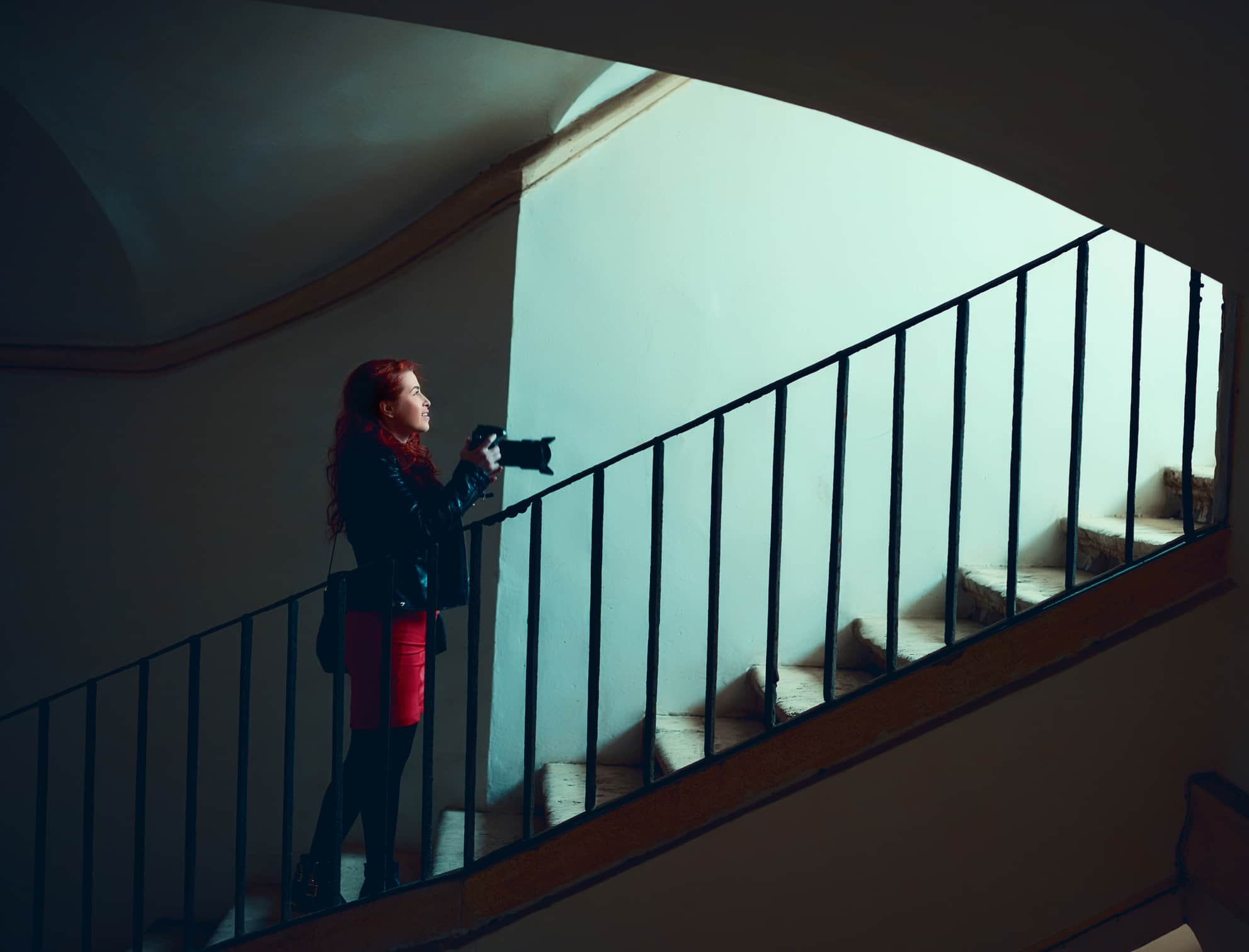
If you ask a group of photographers what lens is the best for portraiture, you're going to get a lot of answers.
But a lot of times, you'll hear something about a 35mm, a 50mm, and an 85mm lens.
There are plenty of variations of these lenses, but some of the best ones are those with large apertures - in the range of f/1.2-f/1.4.
As I'm sure you already know, the larger the maximum aperture, the larger the price tag.
But, that doesn't change the fact that these wide-open lenses are among the best for portraits. That's something that Jessica Kobeissi explores in the video above using Canon glass.
Give the video a quick view, and for more detailed information about these lenses, read on below!
Editor's Note: The lenses featured in this article are spendy when they're purchased brand new, but you can find great deals on pre-owned lenses to save yourself some money. To do so, we recommend Lensfinder, a marketplace that's devoted specifically to letting photographers buy and sell pre-owned lenses. You can check out their inventory here.
Canon 85mm f/1.2 L II USM
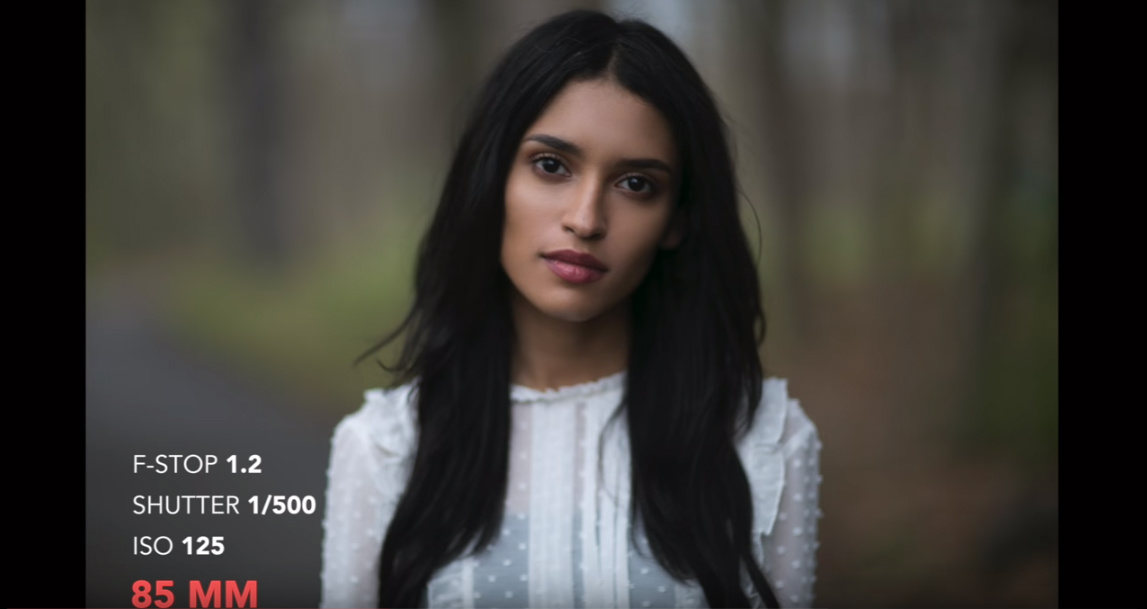 YouTube Screenshot/Jessica Kobeissi
YouTube Screenshot/Jessica Kobeissi
If you're a Canon shooter, it doesn't get any better than their L-series glass.
These professional lenses are among the best in the industry with fine optics and mechanics that render beautiful images with sharp detail and little aberrations.
The 85mm f/1.2 is ideal for portraiture for a couple of reasons.
First, it gives you a little more focal length so you can have some separation between yourself and the model.
With that little bit of extra room, the model might feel more relaxed and comfortable, which will certainly show up in the shot.
Secondly, with a huge f/1.2 aperture, you're able to shoot in low-light situations without using artificial lighting.
That big aperture also means a greater ability to create a bokeh-filled background that helps separate your subject in the shot.
The compression of an 85mm lens is also quite pleasing because it flattens out facial features ever so slightly to create a flattering portrait.
Learn More:
Canon 50mm f/1.2 L USM
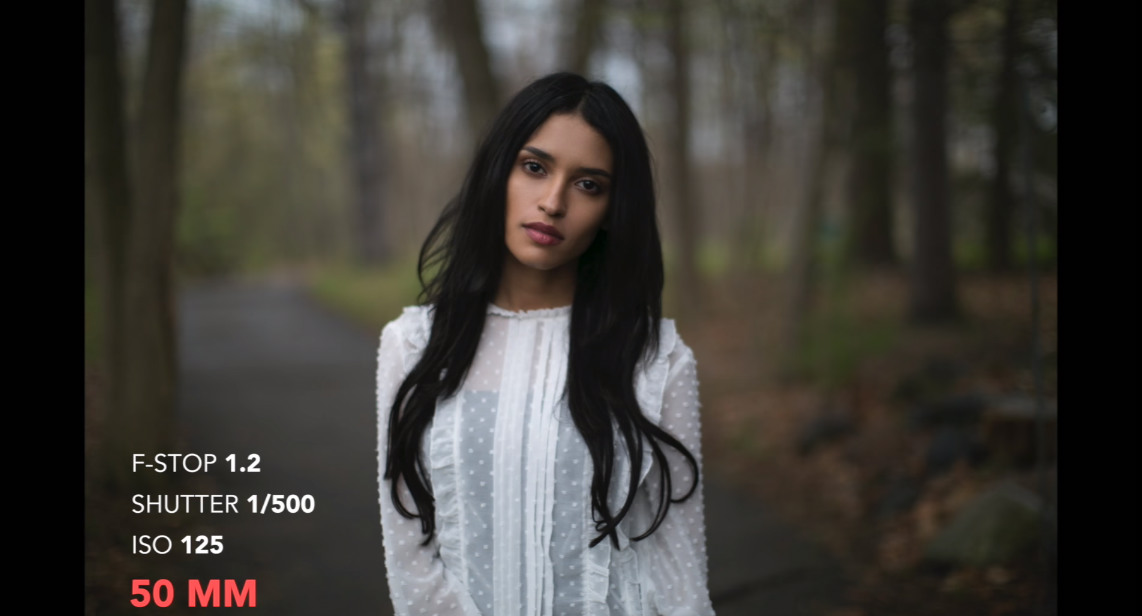 YouTube Screenshot/Jessica Kobeissi
YouTube Screenshot/Jessica Kobeissi
Let me start by saying that the f/1.4 version of this lens is less expensive by a mile (by around $1,000) and still produces excellent results.
Having said that, the f/1.2 is something to behold, a lens that can do just about anything and help you produce eye-catching results no matter the subject.
This thing is built like an absolute tank, too, with 8 different lens elements crammed into a lens that's just under 3.5 inches long.
Sure, that means it's a heavy lens, but that added weight is worth the results.
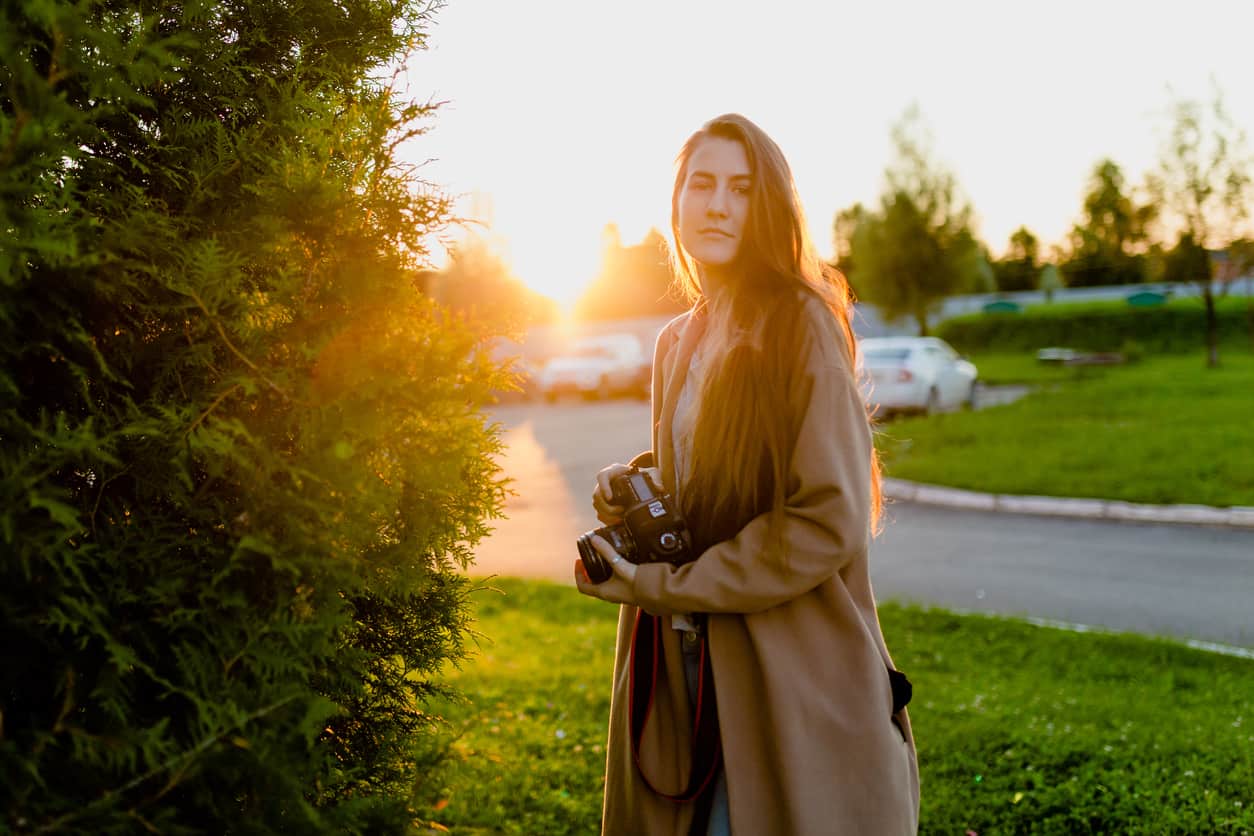
Like any other 50mm lens, this one is incredibly versatile - something you can take with you to the wilderness to photograph landscapes and then back home again to take portraits of your kids and then out to a wedding to photograph the day's events.
What makes it a great portrait lens, though, is that it's got an incredibly fast and accurate focusing system, so you don't have to constantly hunt for the right focus on your portrait subject.
Now, shooting wide-open at f/1.2 makes it more difficult to nail the focus, given that the depth of field can be razor thin.
However, with that big of an aperture, this lens creates some of the best bokeh out there - a nice feature to have in a portrait photography lens.
Learn More:
Canon 35mm f/1.4 L II USM
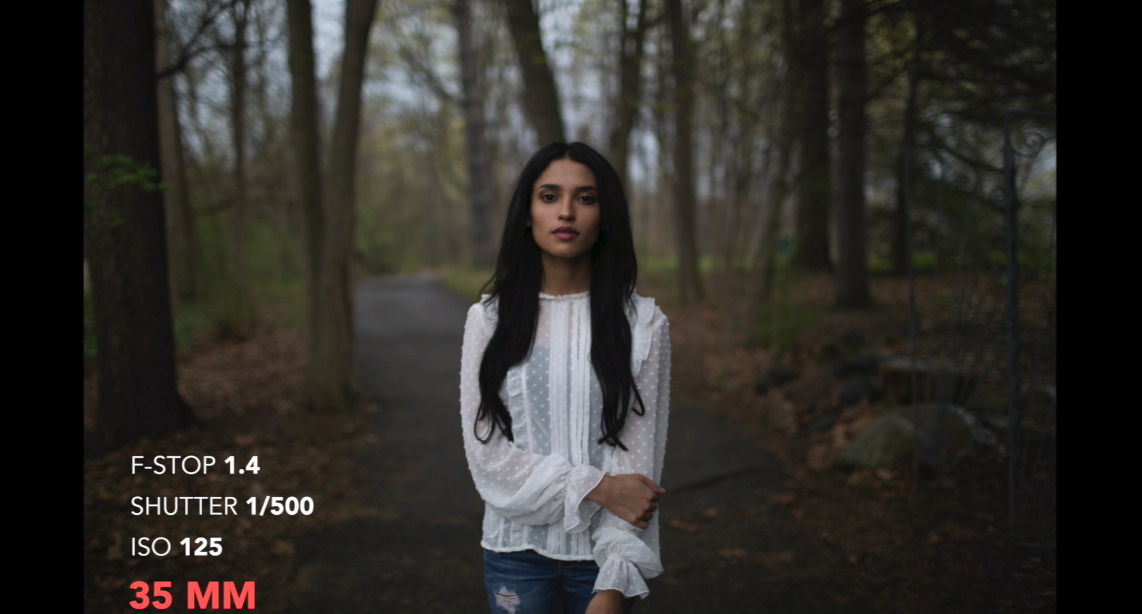 YouTube Screenshot/Jessica Kobeissi
YouTube Screenshot/Jessica Kobeissi
Perhaps the most traditional portrait lens on this list, the 35mm f/1.4 offers a much wider field of view than the other two lenses, but without being so wide that it creates portraits with a ton of distortion.
In fact, it's nearly as versatile as the 50mm, allowing you to take everything from detail-oriented close-up shots to environmental portraits that incorporate the subject's surroundings.
It's a great walkaround lens, too, giving you enough length to make your subject stand out in the frame but without having to lug around a long and heavy lens.
As far as image quality goes, this lens is at the top of the heap.
It produces images that are clean and sharp, particularly in the center of the image, and produces very little distortion. And like the other lenses on this list, the bokeh is absolutely fantastic.
Better still, this isn't just a one-trick-pony lens. You can use it for portraiture, cityscapes, architecture, landscapes...you name it.
 YouTube Screenshot/Jessica Kobeissi
YouTube Screenshot/Jessica Kobeissi
Some photographers swear by the 85mm, others don't shoot with anything but their 50mm, and yet others love the flexibility of a 35mm lens.
At the end of the day, any one of these lenses will suit you just fine for portraiture.
Editor's Note: Ultimately, your decision will come down to the type of portraits you want to take, and, of course, budget. Fortunately, you can stretch your budget by shopping for pre-owned lenses. Even better, if you have old lenses lying around, you can list them for sale today, use the money you earn from selling them, and then apply that money to a new-to-you lens.
We Recommend
Tips for Better DSLR Video
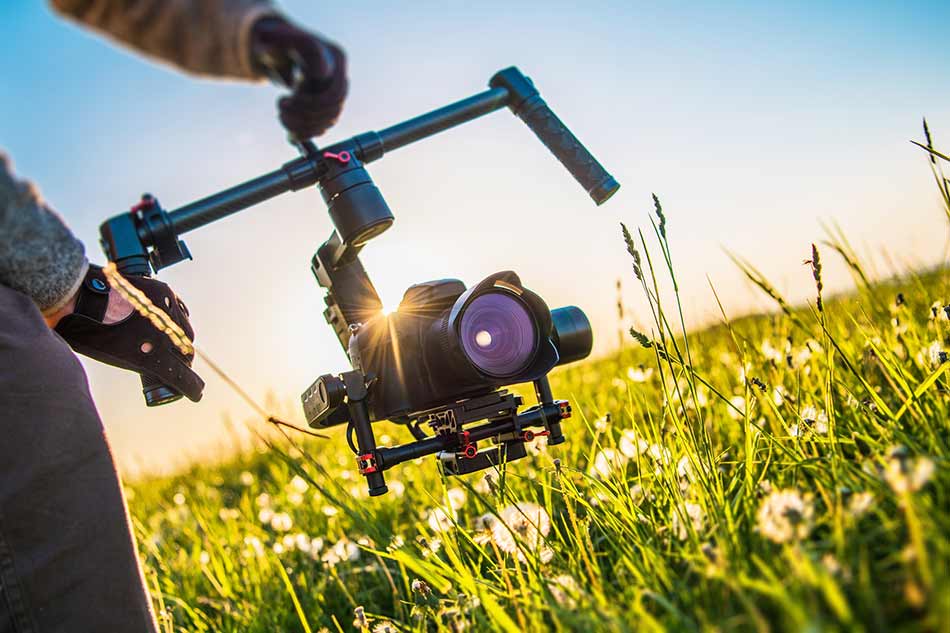
photo bywelcomia via iStock
One of the best features of modern DSLRs is their video recording capabilities.
And while some DSLRs offer better video specs than others, with these tips, you can improve the quality of the videos you produce in short order.
From getting the right accessories to learning how to shoot in manual mode, the following tips will enable you to fulfill your creative vision.
Let’s get started!
Table of Contents
- How to Shoot Professional Video With a DSLR: Stabilize the Camera
- How to Shoot Professional Video With a DSLR: Learn Manual Mode
- How to Shoot Professional Video With a DSLR: Ditch Autofocus
- How to Shoot Professional Video With a DSLR: Invest in Good Glass
How to Shoot Professional Video With a DSLR: Stabilize the Camera
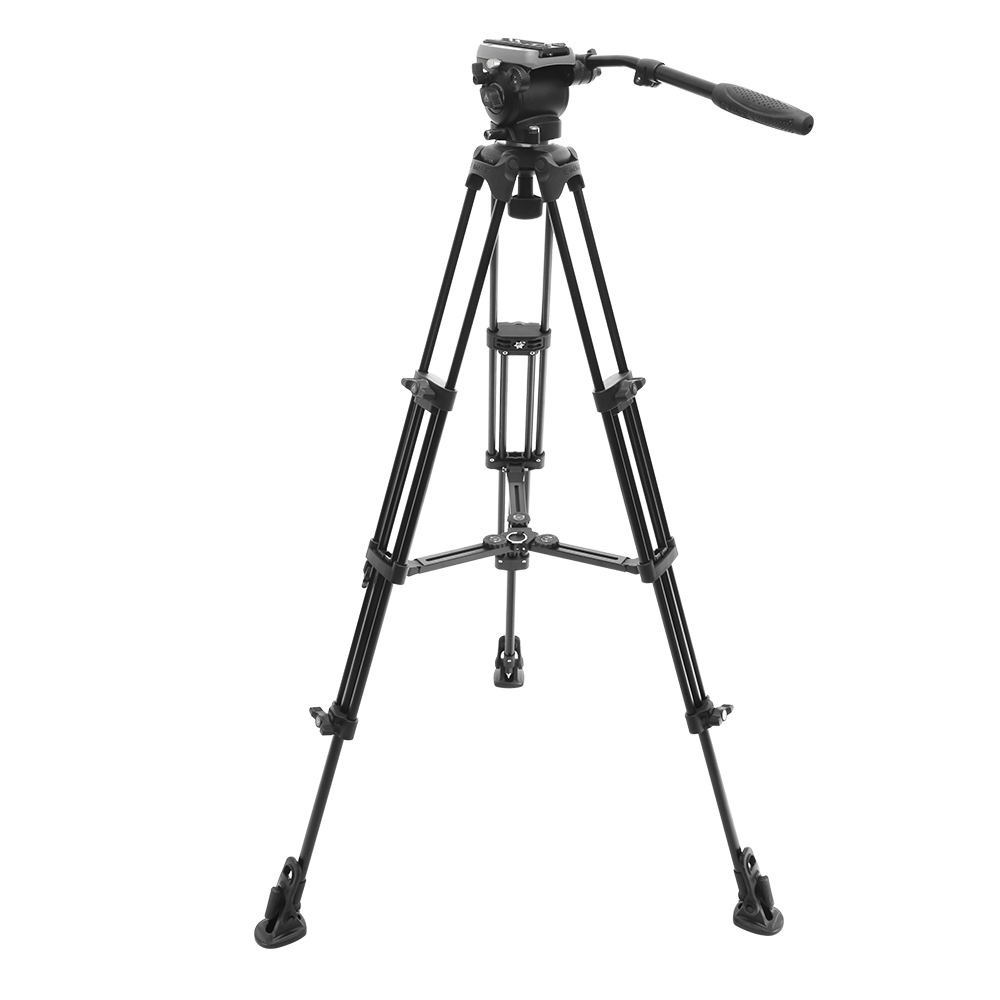
Having a solid, stable base is important for getting clear, sharp still photos. But it’s even more important when shooting video.
After all, you’re recording a moving picture, so if the camera isn’t steady, the footage will give viewers a seasick feeling because the video is bouncing around all over the place.
The simplest means of stabilizing the camera during video recording is to use a tripod.

You can pick up a good video tripod, like the E-Image EK650 shown above, for under $200.
This particular tripod is specifically designed for video shooters and features a fluid head with a 75mm bowl and a fixed counterbalance that enables the head to support up to 11 pounds of gear.
To increase stability, the EK650 has a mid-level spreader and quick leg locks for easy and secure setup.

Tripods like this one offer fixed pan drag, variable tilt drag, and continuous adjustable tilt drag for more precise adjustments to the camera positioning.
It also comes with a GP1 plate that is compatible with various E-Image and Manfrotto heads.
The aluminum legs are strong and sturdy, yet lightweight, so the tripod is easily transportable. There’s even anti-slip pads on the feet to increase stability even further.
It’s virtually impossible to get the highest-quality footage unless you stabilize the camera, so investing in a high-quality tripod like the E-Image EK650 is one of the best tips for better DSLR video.
Editor's Tip: Every great DSLR video needs an awesome soundtrack that adds interest, depth, and helps you tell a better story. One of my favorite places to get audio is Epidemic Sound. They have an incredible selection of tracks, albums, and sound effects that will bring your videos to life. Hop over to Google and search "Epidemic Sound" and see what deals they have going on right now!
How to Shoot Professional Video With a DSLR: Learn Manual Mode
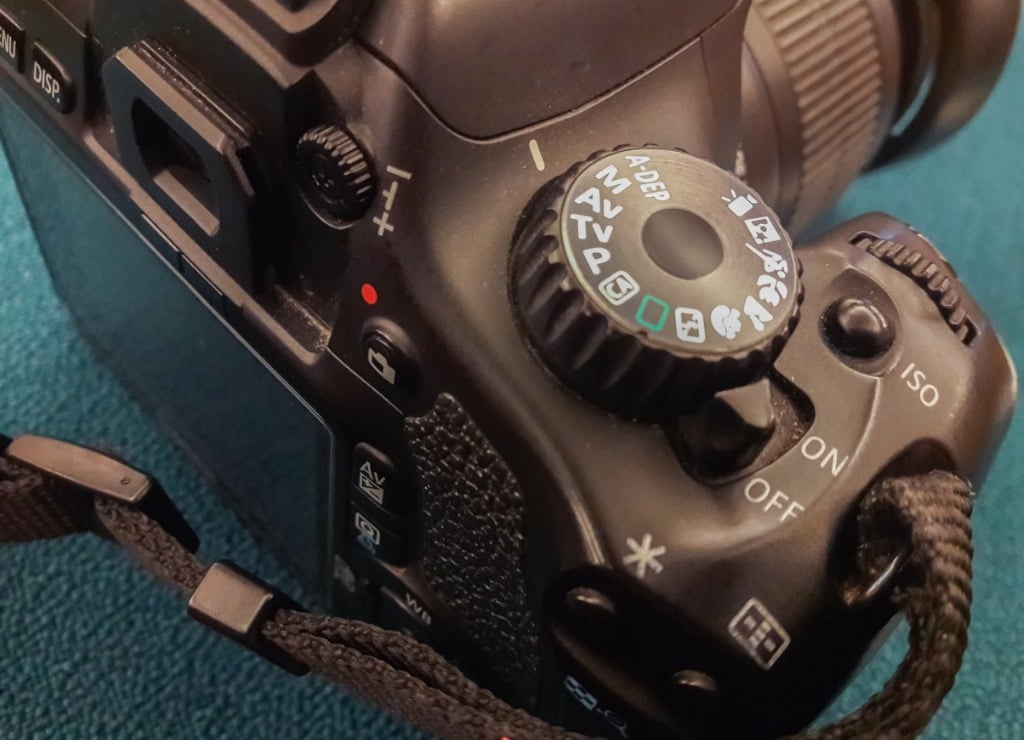
photo by arisara1978 via iStock
Shooting in manual mode when creating videos is a slightly different exercise than when shooting in manual mode for still photos.
First, the shutter speed needs to be double the frame rate. So, if you’re shooting at 24 frames per second (fps), the shutter speed needs to be at least 1/50 seconds.
Of course, this means that if you’re shooting at 30 fps, a shutter of at least 1/60 seconds is needed, and if you’re shooting at 60 fps, the shutter speed needs to jump to 1/125 seconds.
If you don’t follow this guideline, the video footage you take will end up looking choppy, rather than the smooth continuous video footage you want.

photo by Arndt_Vladimir via iStock
On the aperture front, it’s used just the same in video as it is in still photography.
If you want to reduce the depth of field, maintaining the subject in nice, sharp detail but having a blurred background, open the aperture. If you want the entire scene sharp, close down the aperture.
Naturally, if you use a large aperture to blur the background there will be lots of light coming into the lens. Conversely, if you close the aperture down to increase the depth of field, there will be much less light.
To help even out the exposure, you’ll need to manipulate the ISO.
As in still photography, you want to keep the ISO as low as possible to avoid digital noise. This isn’t an issue when shooting with a large aperture, because there’s plenty of light. As such, you can keep the ISO to a minimum.
However, when you close down the aperture, the ISO will need to be increased. A good rule of thumb is to do test footage at various ISO levels so you can determine the absolute lowest ISO setting you can use to get a good exposure with minimal noise.
Get more details on manipulating aperture, shutter speed, and ISO for shooting video in the video above by DSLR Video Shooter.
Learn More:
How to Shoot Professional Video With a DSLR: Ditch Autofocus
I’ll be the first to admit that DSLR autofocus systems are better than they’ve ever been for shooting still photos.
But in most cases, autofocus for shooting video results in the camera hunting for the right focus point if you’re using continuous autofocus.
A better option is to use manual focus so you have total control over what’s in focus and what isn’t.
Manual focus might sound scary, but as this tutorial explains, it’s really not as hard as some people think! If you need to know how to shoot video with a DSLR, learning manual focusing should be one of the first steps you take.
For additional tips on manual focusing for video, check out the video at the beginning of this section by ZY Productions.
How to Shoot Professional Video With a DSLR: Invest in Good Glass
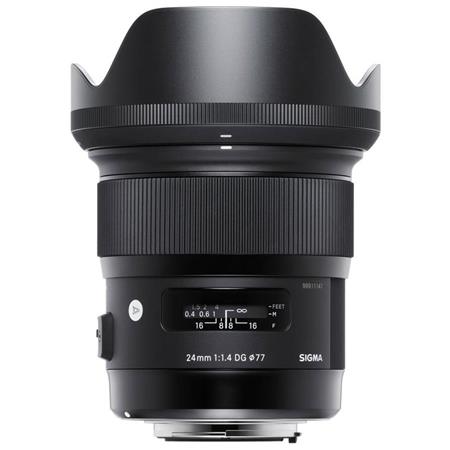
One of the best DSLR video accessories you can get is the best lens you can afford.
After all, the lenses you use for shooting video have more impact on the quality of the footage than anything else - even your camera!
Many experienced DSLR videographers will tell you that the best lenses for shooting video are primes with a large aperture like the Sigma 24mm f/1.4 HSM Art Lens.
The 24mm focal length is ideal for wide shots while the huge f/1.4 aperture enables you to control the depth of field and shoot in low-light situations with relative ease.
The problem, of course, is that this particular lens is spendy at $850.00.
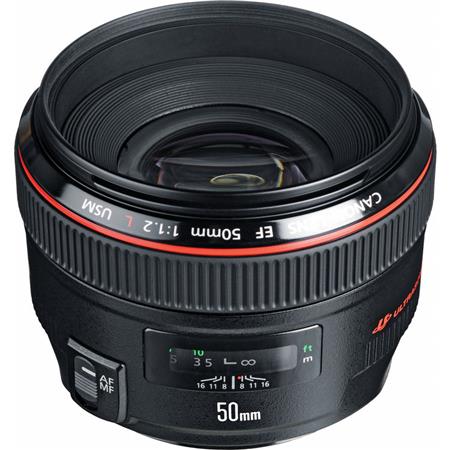
You can shoot excellent quality video with a longer prime lens, say, a Canon EF 50mm f/1.2.
Again, you get an ideal focal length and an even larger aperture than the Sigma lens, but it comes at a price of $1,500.00.

You can use a zoom lens for videography as well, but be sure you invest in a good zoom lens (so, not the kit lens that came with your camera).
A good normal zoom lens for shooting video is the Sigma 24-70mm f/2.8 DG OS HSM Art, which is a cool $1,100.00.
The 24-70mm focal length is extremely versatile and the f/2.8 aperture is large, albeit not as large as the previous two lenses that are mentioned.
Nevertheless, you can expect good image quality throughout its focal range and the optical image
stabilization is a nice bonus.

Of course, not everyone can afford to spend so much money on a good video lens.
For DSLR video accessories like great lenses that cost less, I recommend Lensfinder.
Lensfinder is a marketplace where photographers can buy and sell lenses with the peace of mind that there are fraud protections in place.
What’s more, you can communicate with sellers directly, that way you can ask questions before your purchase.
After the purchase, you can leave feedback so other community members know how good the seller is. There’s even a mediation service in case things go awry!
It’s simply the most secure and easiest way to get your hands on great lenses while saving a buck.

photo by basketman23 via iStock
Ultimately, how to shoot video with a DSLR comes down to many factors, but the ones outlined here are among the most important.
Do yourself a favor and get geared up with a good lens and solid tripod, learn how to shoot in manual mode, master manual focusing, and you’ll be in good shape for fulfilling your creative vision with your videos.
We Recommend
Tokina’s New 11-16mm f/2.8 Lens is a Great Option for Landscape Photographers
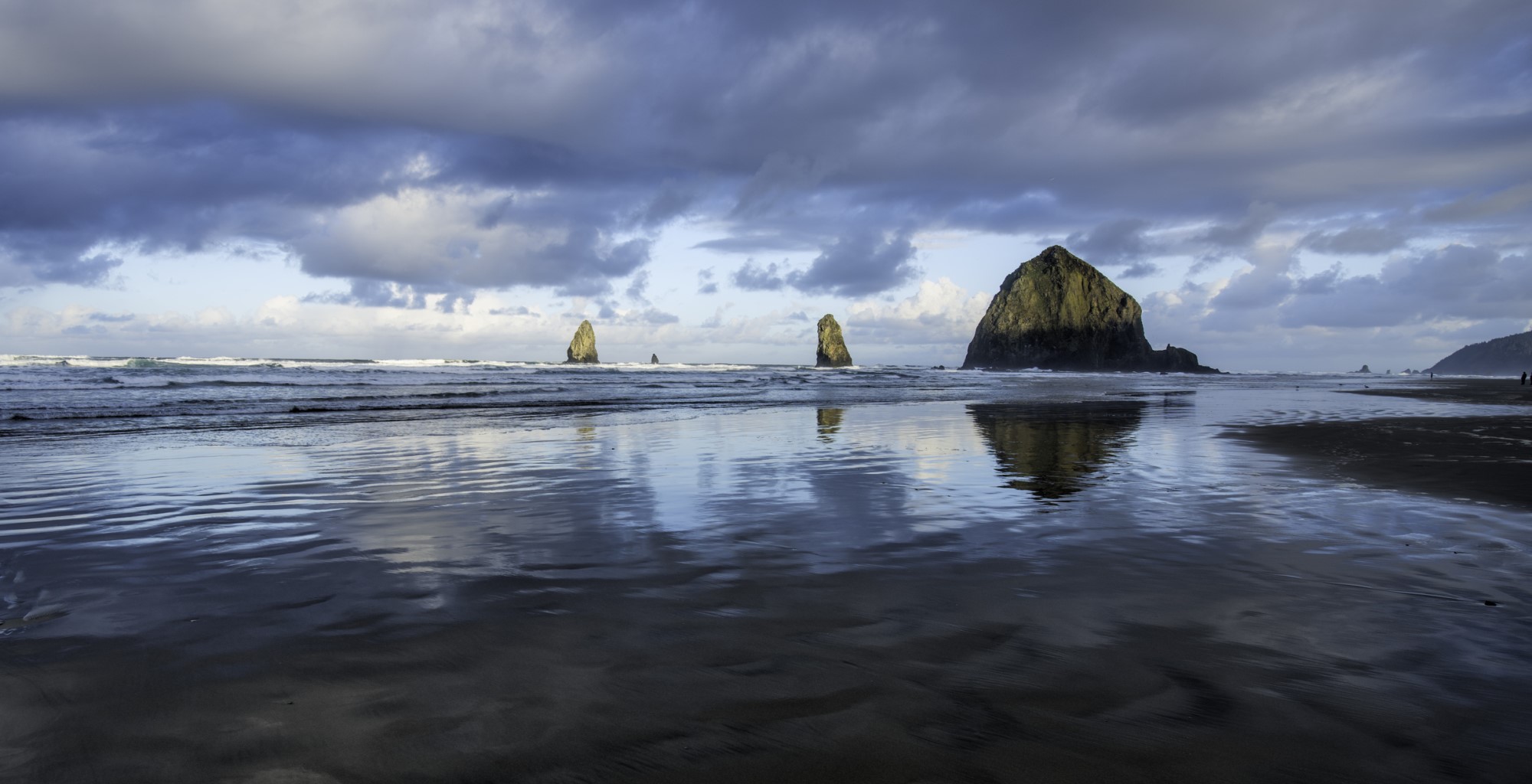
photo byBobbushphoto via iStock
Tokina just announced a new APS-C lens that is compatible with both Canon and Nikon DSLRs, and it’s beautiful.
This lens, an ultra-wide-angle zoom lens, is an incredible lens for landscape photographers because it’s affordable, and fast, which is something you rarely see with landscape photography lenses.
All the Tokina 11-16mm f/2.8 Specs
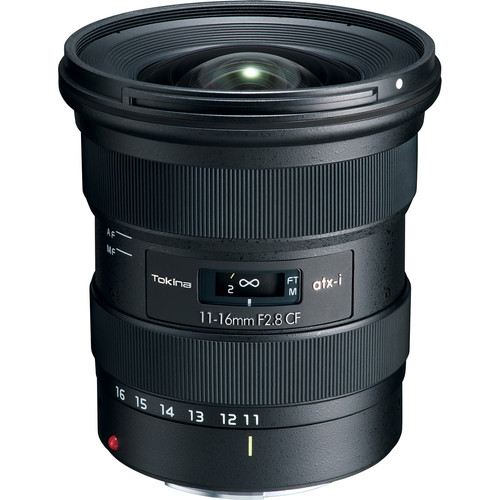
This lens includes 2 aspherical lenses and 2 all-glass molded Low-Dispersion elements, alongside an additional 9 optical formula elements, to create beautiful shots with minimal chromatic and spherical aberration.
It features a One-Touch Focus Clutch Mechanism that acts as a manual focus with hard stops that are more traditional to manual lenses.
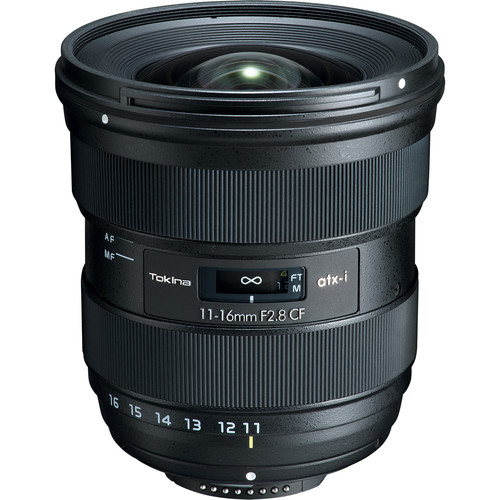
Plus, the focus ring matches your other Canon and Nikon lenses.
Tokina is selling this lens as a lens that is “ideal for photographers and video content creators who specialize in landscape, architecture, documentary, environmental portraits, and night sky imagery.”
But, I’m biased and think it’s beautiful for those searching for affordable landscape photography lenses.
Learn More:
Why This Tokina is the Perfect Lens for Landscape Photographers
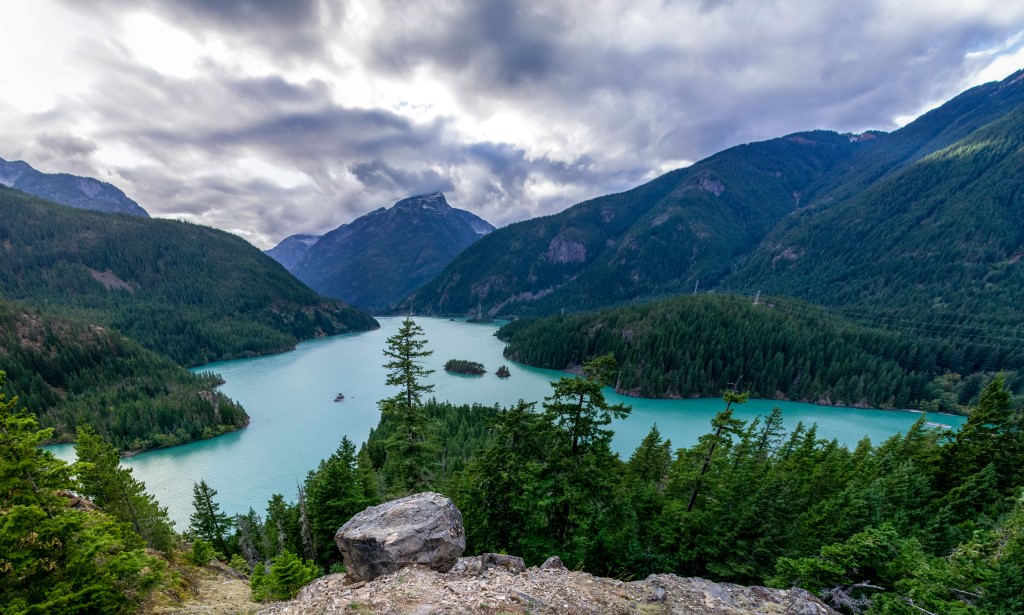
Photo by Sergei Akulich on Unsplash
If you’re looking for affordable landscape photography lenses, you have found the ones.
If you’re shooting with a Nikon APS-C camera, the focal length of this lens is essentially 17-24mm, and if you’re shooting with a Canon APS-C camera, the focal length is 18-26mm.
So, the Tokina 11-16mm f/2.8 allows you to get large side-to-side views while still including incredible details in the foreground of your shots.
I know my landscape photography gear is also lacking something as quick as f/2.8 because typically wide-angle lenses that are also fast are so expensive.
Tokina 11-16mm f/2.8 Pricing
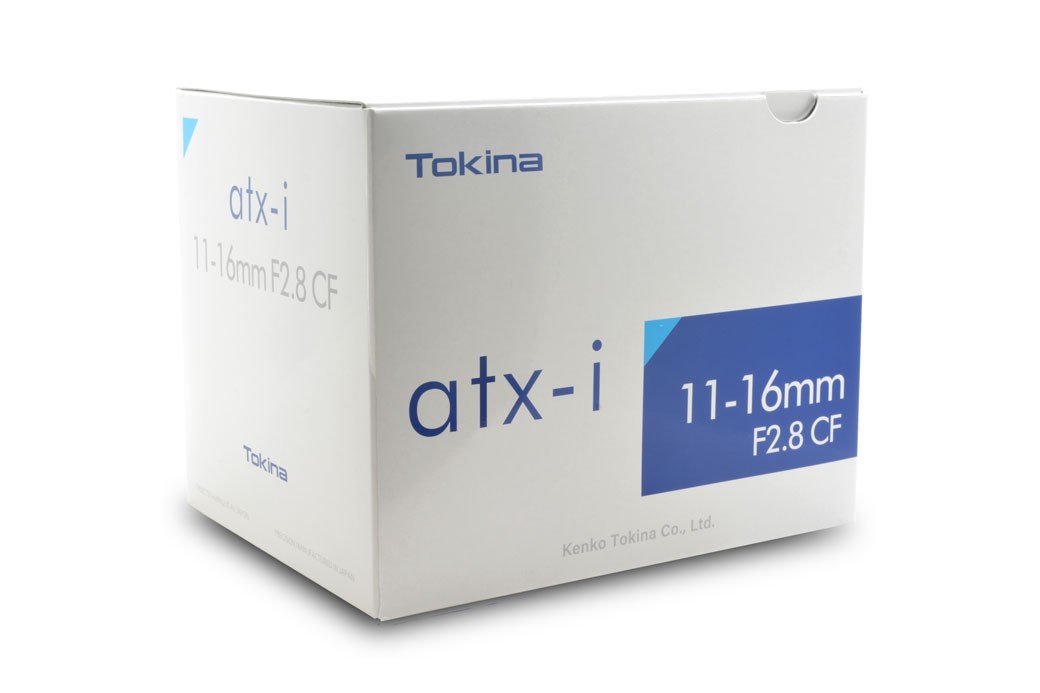
You can pick this ultra-wide angle lens up for only $450, but it won’t ship out until November 8th.
You can pick up the Nikon version here, and the Canon version here.
But, if you are like me and prefer to buy the used version of new equipment because of how quickly it drops in value, then head over to Lensfinder.

Lensfinder is my go-to for used lenses for a ton of reasons, but “used” lenses end up on this website so fast after the original release date so I wouldn’t be shocked if we saw the Tokina 11-16mm f/2.8 pop up here in a few weeks.
Lensfinder is also run by and for actual photographers, so you can ask questions about the used photography gear on their website without fear of being lied to, or not getting a response at all.
Lensfinder also doesn’t charge buyers any fees, so there aren’t going to be any hidden costs to you when you decide to pick up one of the many lenses for landscapes on their site.
If you’re ready to upgrade your kit with a pre-owned lens, visit Lensfinder and see what you can find!
Learn More:
We Recommend
Top 10 Gifts for Photographers Under $1,000 - 2018 Edition
 Image Credit: eclipse_images via iStock
Image Credit: eclipse_images via iStock
Need gift ideas for photographers in your life?
Look no further!
We're in a bit of a golden age of photography, with cameras, lenses, and photography accessories that enable us to take better photos than ever before.
And it's no secret that a lot of photography gear is expensive...
But you might be surprised at what you can get with a budget of $1,000 or less.
Here's some of the best gifts for photographers for 2018.
Lensfinder

Let’s face it - photography gear can be expensive. Really expensive.
That’s a problem year-round, but when you’re holiday shopping and have tons of gifts to buy, it’s even more difficult to justify getting your loved one the $1,000 lens that they really want.
Fortunately, Lensfinder can help in more ways than one.
On the one hand, you can find great deals on pre-owned camera lenses at Lensfinder.
That means that you can get a truly top-notch lens for the photographer in your life but do so without busting your budget. It’s a win-win!
On the other hand, if you have some old lenses that you don’t use anymore, you can list them for sale on Lensfinder. When the lens sells, you can use it for holiday spending money for the photographer in your life.
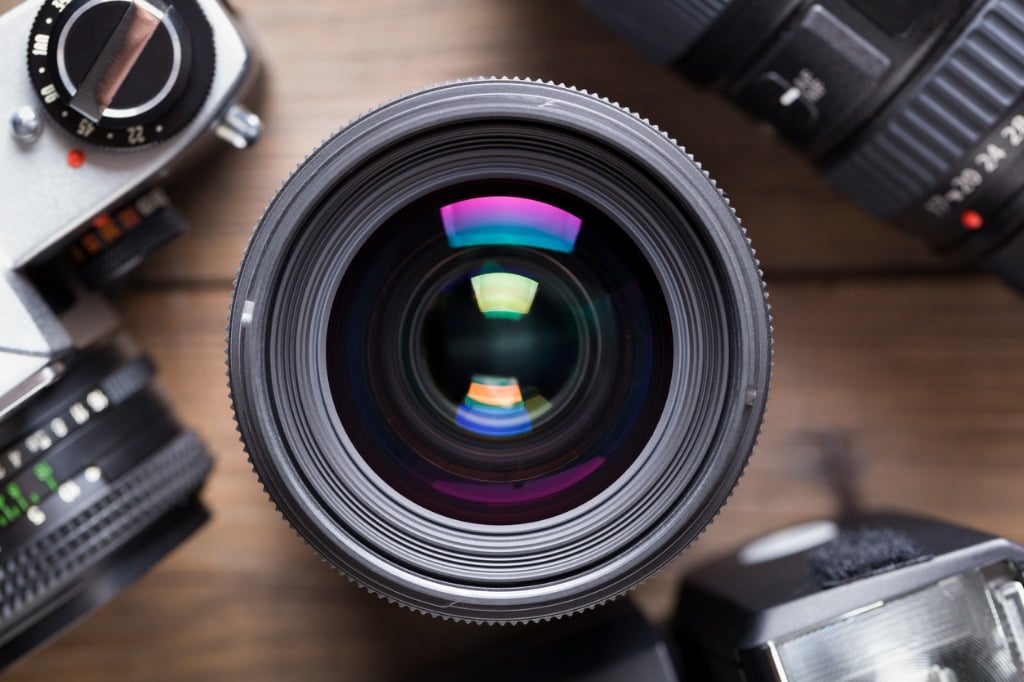 Image Credit: xxmmxx via iStock
Image Credit: xxmmxx via iStock
The best part? You can list your lenses for sale for free.
There’s only a transaction fee (just 3.99%) when the lens sells (with a maximum fee of $500). If your lens doesn’t sell, there’s no charge at all!
And for peace of mind, the Lensfinder platform has advanced fraud filtering for both buyers and sellers as well as mediation services in the event that there’s a problem.
Payments are made and received via PayPal, so you can rest easy knowing that the transaction is safe and secure.
In other words, Lensfinder is the ideal solution for your holiday shopping needs. Either use it to find a loved one a killer lens or use it to sell old gear to pad your pockets for holiday spending!
Holdfast Roamographer

With a $1,000 holiday budget, you can give the photographer on your list a gift that is impeccably designed, highly functional, and way under budget, too.
The Holdfast Roamographer bag is one of the finest leather camera bags on the market. It offers gorgeous aesthetics with an American Bison leather exterior that’s beautiful and rugged at the same time.
Not only will this leather stand up to the elements and age with grace, but it’s also weather resistant so you can be sure the contents of the bag remain safe and dry.

It’s a big bag and can carry lots of gear, but carrying it is a breeze with an adjustable shoulder strap with a shearling-lined shoulder pad for comfort.
Or, if you prefer, you can carry the Roamographer using the Holdfast MoneyMaker for even more functionality and comfort, as seen above.

The inside of the bag must be mentioned as well.
The removable camera insert means that no matter how much or how little gear your favorite photographer needs to carry, the Roamographer will help them keep it organized.
The padded insert has cubbies specifically for cameras, lenses, flashes, and other accessories, while there’s interior and exterior pockets for other goodies like a phone, car keys, and a tablet.
The insert is removable, too, so on weekends when they’re not on the job, the photographer on your list can use this as a weekend bag, too.
That makes the Holdfast Roamographer a beautiful, functional, and multi-purpose bag!
Learn more about the Holdfast Roamographer
GDU O2 Drone

What’s so great about the GDU O2 drone is that it’s designed to be used by pilots of all experience levels. For beginners, it’s easy to use and extremely portable. The obstacle avoidance system will assist in preventing crashes, and the vision positioning system allows the drone to maintain complete stability whether flying indoors or out. That makes this the ideal drone with which to learn about flying.
Beginners and more advanced pilots alike will appreciate the host of smart features that the O2 has. That includes gesture recognition for taking photos and videos, as well as burst shooting, time-lapse shooting, slow-motion shooting, and selfie mode. The three-axis stable video capture feature allows you to take gorgeous panning 4K videos as well.

There are multiple flight modes, too. Instruct the drone to fly in a circle around you, take off like a rocket, or follow you as you walk, hike, ride your bike, or otherwise move around. No matter which mode the O2 is flying in, it can use its return to home function to land in virtually the exact same spot from which it took off.
The O2 also comes with a smartphone app to make using this drone even easier. Connect to your drone to see what it sees on your smartphone screen. You can also fly the drone with your phone. Add in built-in editing and sharing functions, and you have the makings of a total drone experience, from flying to taking photos and videos to editing and sharing your work quickly and easily online.
Learn more about the GDU O2 Drone
Meural

If you’ve got someone on your holiday shopping list that has everything, the Meural Canvas is the ideal gift for them.
Looking a the same old painting or photograph over and over again is so 20th Century…
With a Meural Canvas, your loved one can view their favorite artwork from Meural’s curated library or upload their own images to enjoy. Whichever is the case, artwork is displayed instantly for them to enjoy.
Better still, they can control their Meural Canvas via the web, the Meural App, or with gesture control. It’s the easiest way to enjoy art!

The Meural Canvas brings artwork to life by using TrueArt Technology, a proprietary blend of hardware, firmware, and software that renders images in beautiful detail and texture. To say that the Meural Canvas makes artwork look lifelike is an understatement!
This canvas looks great in any setting, too, with different sizes, frame types, and frame colors to suit any decor. It can even detect if it’s hanging on a vertical or horizontal plane, and will automatically adjust its display accordingly. There’s also a built-in light sensor so it will automatically increase or decrease the brightness of its display to suit the surroundings.
On top of all that, Meural gives 60 percent of its earnings to artists on their platform, so not only do they have an awesome product, but they also give back. It’s a win-win!
Learn more about the Meural Canvas
Canon M50
As mirrorless cameras continue to grow in popularity, it only makes sense that you consider giving your favorite photographer a mirrorless camera this year.
Whether a photographer is a beginner and needs a new camera, an enthusiast that wants a capable mirrorless camera for everyday shooting, or a professional that wants to add a small mirrorless camera to their kit to serve as a second or third shooting option, the Canon M50 fits the bill.
The M50 is outfitted with a 24-megapixel APS-C CMOS sensor that offers surprisingly good image quality at this price point.
This camera also offers Canon’s Dual Pixel CMOS technology, which, among other things, offers superior focus tracking performance and a wider area of focus coverage when photographing moving subjects.
Additionally, the M50 features 99 autofocus points with most EF-M lenses while some EF-M lenses offer even more - 143 AF points, to be exact. Not only that, but the M50 sports excellent low-light autofocus capabilities, so even when shooting in less-than-ideal lighting, this camera’s autofocus system will perform well.
This camera has plenty of features that make it easy to use, too.
The DIGIC 8 processor makes quick work of processing image data while the 1.04-million dot LCD is fully articulating for easier viewing when shooting in live view. It’s also touch-enabled for quick work of navigating the camera’s menu system.
The 2.36-million dot OLED electronic viewfinder gives photographers a clear, crisp view of what they’re photographing while the built-in Wi-Fi, NFC, and Bluetooth make sharing photos and connecting to other devices a breeze, too.
For video enthusiasts, the M50 offers HD video shooting at 1080/60p and 720/120p. You can also shoot in 4K UHD at 24p.
And if the photographer on your list already has Canon lenses, they can be used with the M50 with an adaptor. That means they don’t have to invest in new glass if they don’t want to, and simply use their EF and EF-S lenses.
All of those bells, whistles, and features make this a highly capable entry-level or enthusiast camera. If you want to give the gift of a more capable camera, the Canon M50 is it!
Best of all, Paul’s Photo has this camera in stock and for a great price so you can give an awesome gift without busting your budget!
Learn more about the Canon EOS M50
NiSi 100mm System V5-Pro Advance Filter Kit

There's a gear mantra to live by, and that's that the lens you use is more important than the camera.
Good glass can make or break your photos, and if you spend the money on good glass, you definitely want good filters in front of it.
That's why NiSi's 100mm System Advance Filter Kit is such a great gift idea for the photographer on your holiday shopping list.
This kit is loaded for bear and includes:
- 1 x NiSi V5 PRO Holder includes 67mm 72mm 77mm Adaptor Rings+82mm Main Adapter+86mm Pro CPL
- 1 x NiSi Glass 100x150mm Multi-coated Soft 0.9 (3-stop) +1 x Reverse 0.9 (3-stop) Graduated ND Filter
- 1 x NiSi Glass 100x100mm Nano Multicoated Filter IR ND 0.9(3-Stop) Filter + 1 x IR ND 1.8 (6-Stop) Filter + 1 x IR ND 3.0 (10-Stop) Filter
- 1 x NiSi All in One Case(can hold V5 or V5 PRO, adaptor rings and 8pcs filters at most)
- 1 x V5 Lens Cap + 1 x Square Filter Cleaning Eraser + 1 x Cleaning Cloth+ 1 x Air blower

I can personally attest to this filter system as being one of the very best that I've ever owned.
The filters expand the creative abilities of your camera, allowing you to create gorgeous long exposures and manage difficult dynamic range while giving you the highest color and contrast fidelity with minimal aberrations.
Not only that, but the filters and filter holder are beautifully designed and made of high-quality, durable materials, so your favorite photographer can get the shots they want without worrying about whether their filters are going to make it back home.
Having lens filters is a must for landscape photographers. Get the landscape photographer on your shopping list the best filters money can buy!
Learn more about the Nisi 100mm System V5-Pro Advance Filter Kit
Synology DiskStation DS1817+

Photographers can never have enough storage space for all their images and other files, which is why we're including the Synology DiskStation on our list.
This expandable storage device can store up to 60TB of data. Start small with 12TB and expand as your needs grow.
The unit has upgradable memory, a PCIe slot to install a 10GbE network card for lightning-fast data transmission, and remote access, so your favorite photographer can access their files from any device anywhere in the world.

Perhaps even better, this rig allows for backing up all computers, servers, and other devices, that way all data is backed up and safe from ransomware, viruses, hacking, and human errors.
The DiskStation can be backed up to a cloud service or offsite location as well, giving you yet another layer of data protection.
While this might be overkill for some photographers, for professionals that have tens of thousands of images and other files, the Synology DiskStation can be a God-send.
Learn more about the Synology DiskStation DS1817+
Pre-Owned Sony A6500 From MPB

I've been a Nikon shooter since the beginning, but a few years ago I picked up a Sony A6300 and have loved every minute of using it.
It's brother, the Sony A6500, is a fantastic camera as well, and can be found for under $1,000 if you buy pre-owned.
This mirrorless APS-C camera has a 24.2-megapixel Exmor CMOS sensor, a BIONZ X image processor, and an ISO range that extends to 51200.
It can shoot 4K video, has a continuous shooting speed of 11fps, and has 5-axis SteadyShot image stabilization, which helps minimize camera shake when working at slower shutter speeds.

Something I love about my Sony is how small and lightweight it is, and both of those factors apply in this situation as well.
This camera weighs just 16 ounces (without a lens attached), so you can easily take it for a day of shooting or on a long trip and never be in a situation in which you feel like your camera is drawing tons of attention.
What will draw attention, though, is the fact that this camera has an incredible 425-point phase-detection autofocus system that has 169 area contrast detection autofocus points.
What that means is that this camera performs unbelievably well when it comes to rapid and precise focusing.
If you have a photographer on your list that's been thinking about upgrading their camera, this is an ideal choice!
Learn more about the Sony A6500
Microsoft Surface Pro 4

I have a number of Microsoft Surface products, and as an Apple guy, I was skeptical when I got my first Surface.
But I quickly found that my reservations were misplaced because the Surface lineup is fantastic from top to bottom.
I particularly like the Surface Pro 4 because I don't always need a full-blown laptop to get done what needs to get done.
Yet, the Surface pro could easily replace a laptop by adding the optional keyboard and relying on the devices excellent suite of hardware.
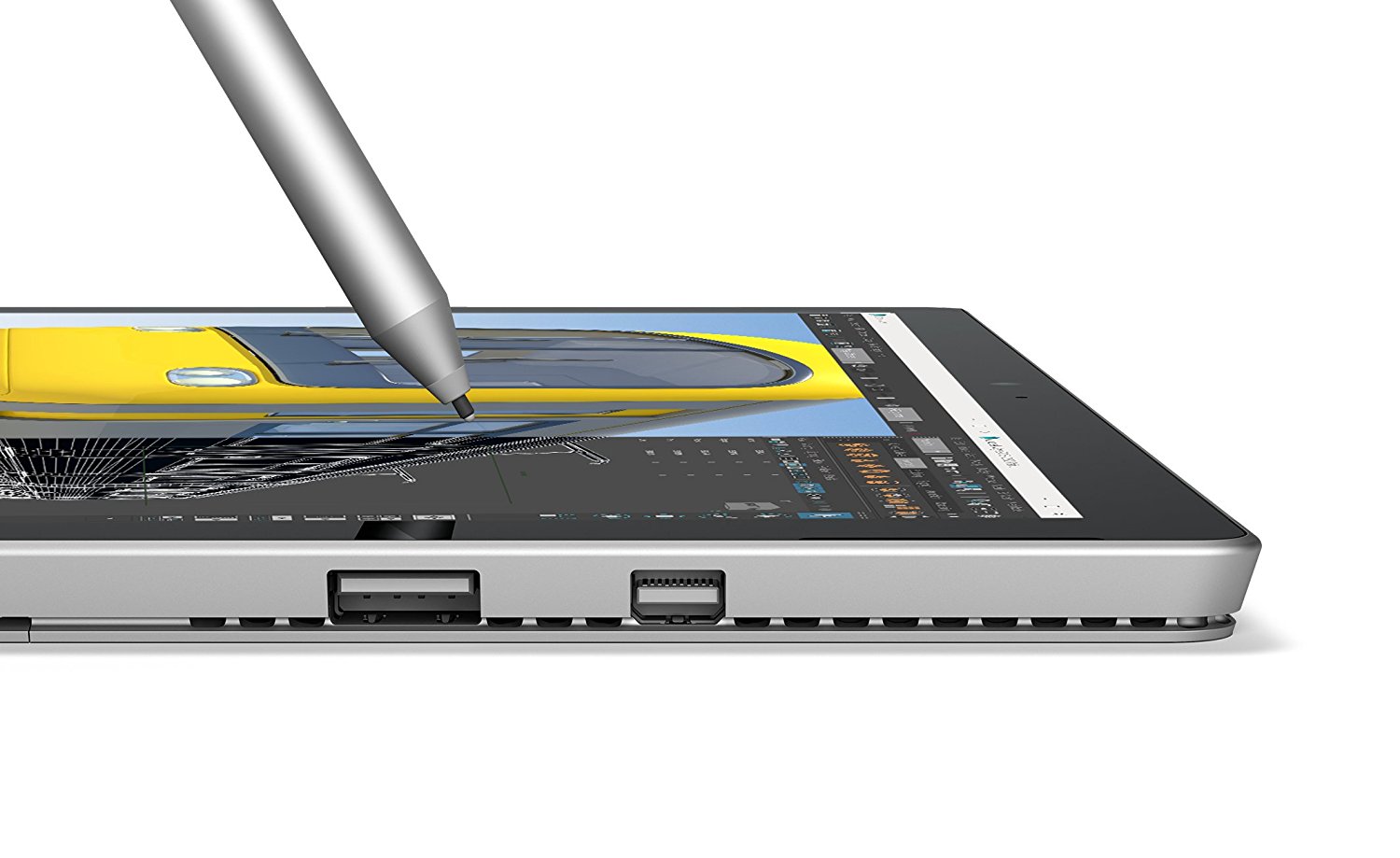
This particular model has a 128GB hard drive, 4GB of ram, and an Intel Core i5 processor.
While those specs aren't going to be enough to be a primary computer for a photographer, for daily tasks like posting on social media, doing billing, emailing clients, and so forth, this little Surface will be all you need.
I love the PixelSense touchscreen display, especially when I'm slumming it on the couch and catching up on work as I watch TV.
And when I need to be a little more precise than with my big, clumsy fingers, the Surface Pen is ideal for getting the job done.
If you want to give the gift of technology this holiday season, try giving a Surface Pro 4! They're even on sale at the moment, so you can snag one for well under $1,000.
Learn more about the Microsoft Surface Pro 4
Surui SR-3204

Sirui has been making excellent tripods for years now, but their latest SR-series tripods are likely the best they've ever made.
The Sirui SR-3204 is a four-section tripod that extends from just 4.7-inches above the ground to 59-inches.
And all that height compacts into just over 21-inches, that way you have the height you need without having a large, bulky tripod to carry around.

Better still, the SR-3204 can hold up to 55-pounds of gear, a three-position leg angle mechanism for quick deployment of the tripod, and easy-to-use twist leg locks that also facilitate quick setup.
This tripod also has an integrated bubble level, a flat top plate with 3/8-inch mounting screw, and an integrated 1/4-inch socket on the spider for adding accessories.
In other words, this is a capable, functional, and durable tripod that will last the photographer on your list for years and years to come!
Learn more about the Sirui SR-3204 tripod
Formatt-Hitech 100mm Firecrest Ultra Ken Kaminesky Signature Edition Master Filter Kit

Yet another top gift idea for photographers is the Formatt-Hitech 100mm Firecrest Ultra Ken Kaminesky Signature Edition Master Filter Kit.
This kit comes with everything a photographer needs to capture gorgeous and breathtaking landscapes, cityscape, and long exposures, just to name a few.
Included in this bundle are several ND Filters (ND 0.9, 1.8, and 3.0), a graduated ND 0.6, a graduated ND 0.9, and an UltraSlim circular polarizer.
On top of that, the kit includes a 100mm filter holder and adapter and step-up rings, as well as filter pouches, a holder case, and a Ken kaminesky booklet.

What sets these filters apart from the rest is the lap and polish technique that makes them perfectly flat with consistent filtering power to enhance images.
What's more, the Firecrest Ultra line of filters have incredible clarity as well as lower reflectivity than other filters.
This makes them a prime choice for photographers that wish to enhance their photos!
Bonus Gift Idea: Formatt-Hitech 100mm Firecrest Ultra Elia Locardi Signature Edition Travel Filter Kit

If the photographer on your list is more of a travel photographer, then the Elia Locardi Signature Edition Travel Filter Kit by Formatt-Hitech is a great choice.
This kit includes a variety of filters and related gear that will make the task of travel photography easier and more productive.
That includes a Firecrest Ultra ND 1.2 filter, a Firecrest Ultra ND 3.0 filter, a Firecrest Ultra Graduated ND 0.9 filter, a Firecrest 82mm UltraSlim Circular Polarizing Filter, and a 100mm filter holder as well.
Additionally, the kit comes with adapter rings, step-up rings, filter pouches, a holder case, and a booklet from Elia Locardi to provide your favorite photographer with a few tips and inspiration for their photos.

Like the Ken Kaminesky Kit describes earlier, this kit's filters are manufactured to the highest of specifications so photographers get the best possible results.
With unmatched clarity and sharpness, these filters won't get in the way of getting the shot, but will instead enhance photos with gorgeous detail.
Between the options of creating long exposures with the included ND filter, creating better-exposed images with the included graduated ND filter, and controlling glare, haze, and contrast with the included polarizing filter, this kit gives any photographer all the options they need to improve their photos.
Promaster Unplugged TTL400
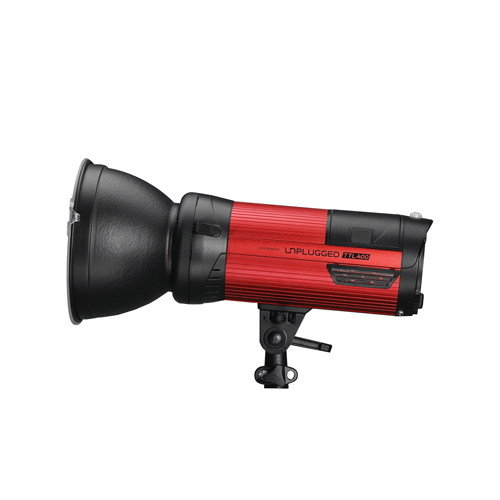
Shooting serious outdoor portraits requires that photographers have artificial lighting.
And while learning how to utilize artificial lighting can be tough, finding excellent lighting to give to a photographer this holiday is a breeze!
The Promaster Unplugged TTL400 is the ideal lighting solution for breathtaking outdoor portraits for a variety of reasons, not the least of which it's battery-operated, so your favorite photographer won't have to be bogged down by the availability of power.

This high-powered strobe light uses a camera's TTL system to create beautiful light that can be finely-tuned by photographers for a specific look.
This light offers TTL control with exposure compensation, multi-flash mode, high-speed sync, and manual mode, too.
There's 15 channels with 99 IDs, A, B, and C groups with ratio control, an audible alarm function, and FEB flash exposure bracketing mode as well.
In other words, the photographer on your list will have all the features and options they need to get the highest-quality outdoor portraits possible!
Just be sure to include the right trigger that correlates with the camera system being used, like Canon or Nikon, to complete this awesome gift idea!
Learn more about the Promaster Unplugged TTL400
We Recommend
Top 10 Gifts for Photographers Under $100 - 2018 Edition
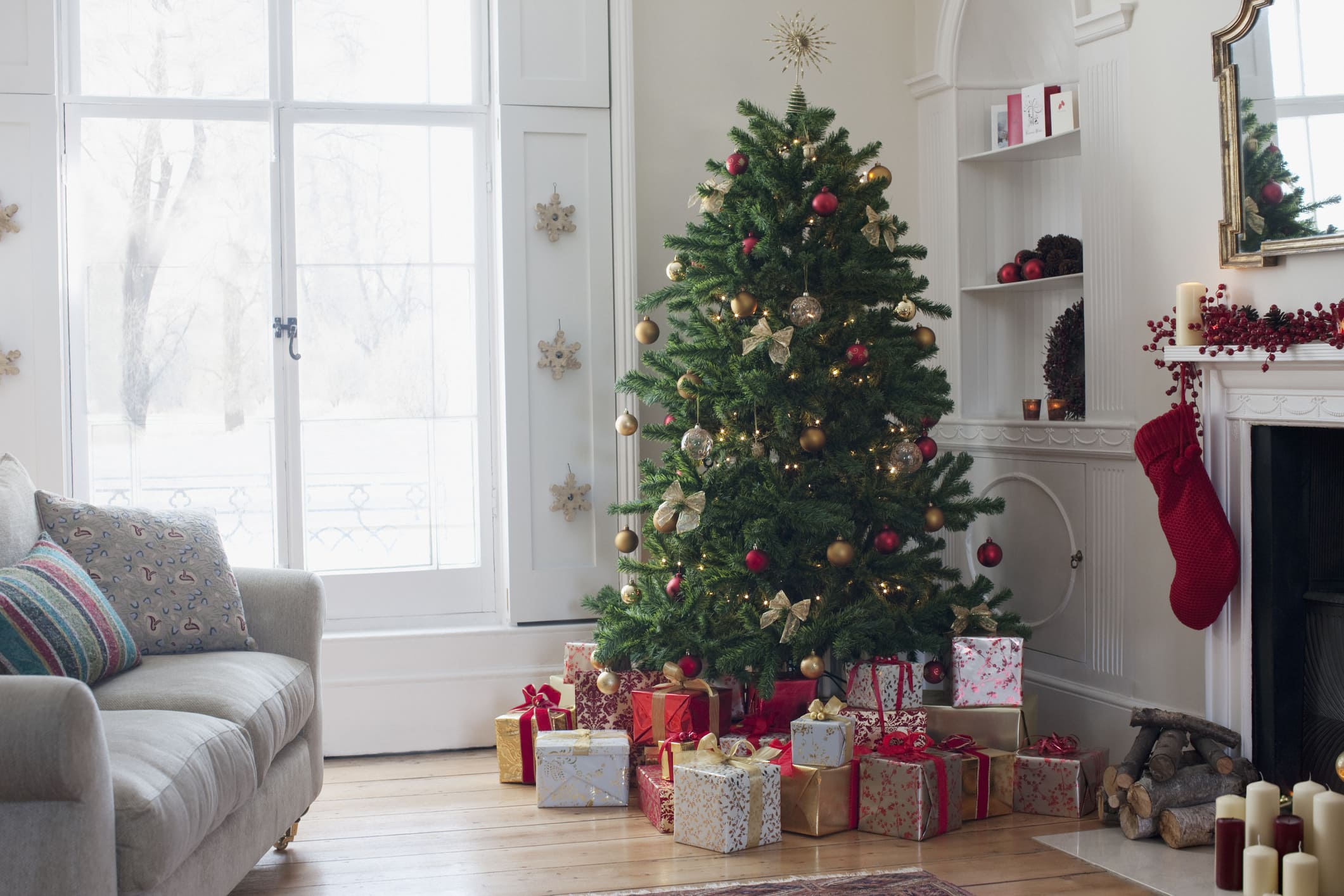 Image Credit: Tom Merton via iStock
Image Credit: Tom Merton via iStock
Even though we're still firmly in summer, it never hurts to start thinking about what the photographer in your life might like for the holidays this year.
And with a budget of $100, there's some pretty cool things you can get them, too. There's functional items as well!
You might not think that $100 can go very far when it comes to photography gear, but as our list of the best gifts for photographers shows, there's some great ideas that don't break the bank.
Lensfinder

Let’s face it - photography gear can be expensive. Really expensive.
That’s a problem year-round, but when you’re holiday shopping and have tons of gifts to buy, it’s even more difficult to justify getting your loved one the $1,000 lens that they really want.
Fortunately, Lensfinder can help in more ways than one.
On the one hand, you can find great deals on pre-owned camera lenses at Lensfinder.
That means that you can get a truly top-notch lens for the photographer in your life but do so without busting your budget. It’s a win-win!
On the other hand, if you have some old lenses that you don’t use anymore, you can list them for sale on Lensfinder. When the lens sells, you can use it for holiday spending money for the photographer in your life.

Image Credit: xxmmxx via iStock
The best part? You can list your lenses for sale for free.
There’s only a transaction fee (just 3.99%) when the lens sells (with a maximum fee of $500). If your lens doesn’t sell, there’s no charge at all!
And for peace of mind, the Lensfinder platform has advanced fraud filtering for both buyers and sellers as well as mediation services in the event that there’s a problem.
Payments are made and received via PayPal, so you can rest easy knowing that the transaction is safe and secure.
In other words, Lensfinder is the ideal solution for your holiday shopping needs. Either use it to find a loved one a killer lens or use it to sell old gear to pad your pockets for holiday spending!
SANDMARC Telephoto Lens for iPhone XS Max
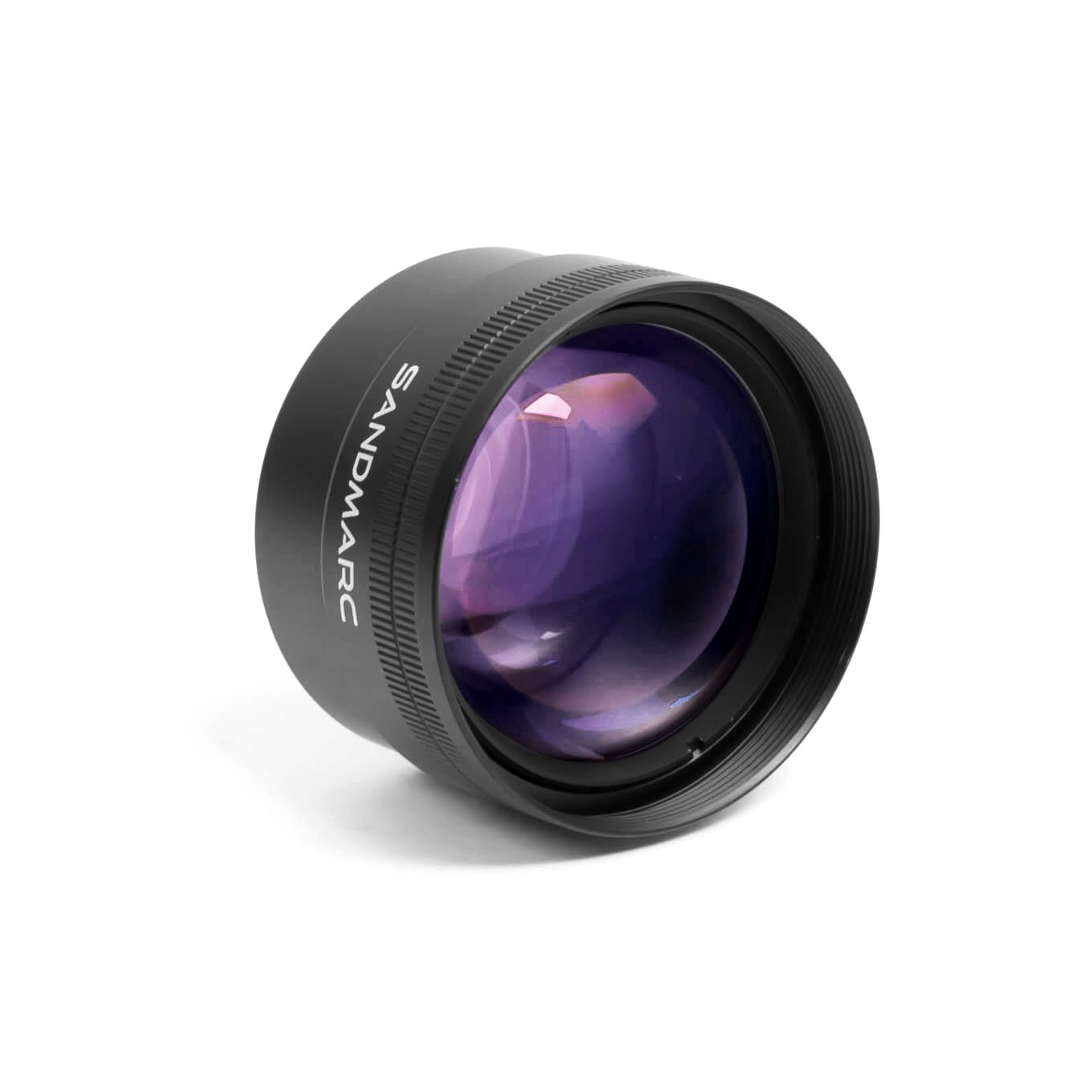
With Apple's new iPhone XS Max just hitting the market, an ideal gift for the photographer on your list is a high-quality aftermarket lens to extend the iPhone XS Max's capabilities even further.
And for that, SANDMARC offers a 60mm telephoto lens with 2x magnification.
This lens has multi-coated glass that minimizes aberrations. It attaches to the iPhone in two ways - either as a clip-on lens or with the included case, which is the world's thinnest lens case mount.
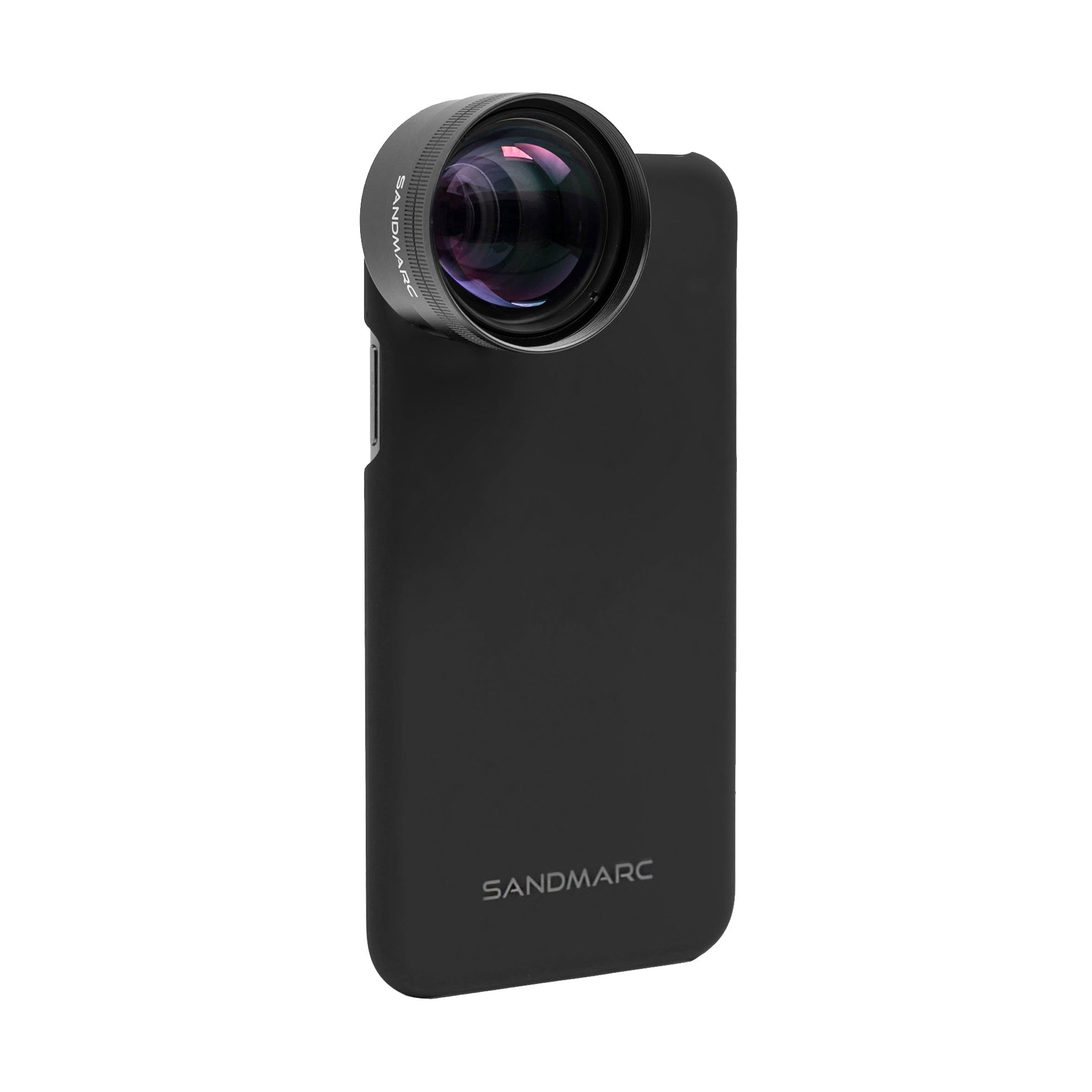
The construction of these lenses is impeccable - I know firsthand because I have a set of SANDMARC lenses for my iPhone X!
In fact, I've used a ton of lenses for my phones over the years, and I have to say that none have come close to the quality and performance of SANDMARC.
This packages includes the telephoto lens, lens cap, a clip-on mount, a lens case mount, and a carrying pouch.
Best of all, you get high-performance optics for less than $100. Just imagine the possibilities of pairing the best iPhone yet with the best lenses for iPhones that money can buy!
Learn more about the SANDMARC Telephoto Lens for iPhone XS Max
Marumi EXUS 55mm Circular Polarizer Filter
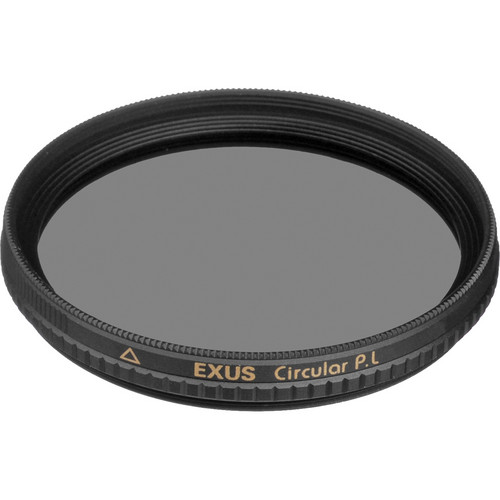
One of the best gift ideas for photographers is a good circular polarizing filter.
A polarizing filter can help a photographer create better photos in a variety of ways...
They reduce glare off non-metallic surfaces like water and also boost the contrast in the sky by making white clouds pop off the blue atmosphere.
Additionally, polarizing filters reduce haze so distant features in the landscape look crisper.
But not all filters are made alike, so be sure to give your favorite photographer the quality and durability of a Marumi polarizing filter.
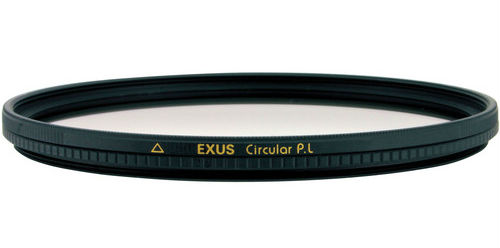
Marumi has integrated anti-static and stain-resistant coatings to protect the filter and make it more user-friendly.
What's more, it's made from optical-grade glass to ensure photos are as clear and sharp as possible.
Add to that the fact that this filter has a thin profile with low reflectivity, and you have the makings of the perfect gift for photographers under $100!
Learn more about the Marumi EXUS 55mm Circular Polarizer Filter
BlackRapid Curve Breathe Camera Strap
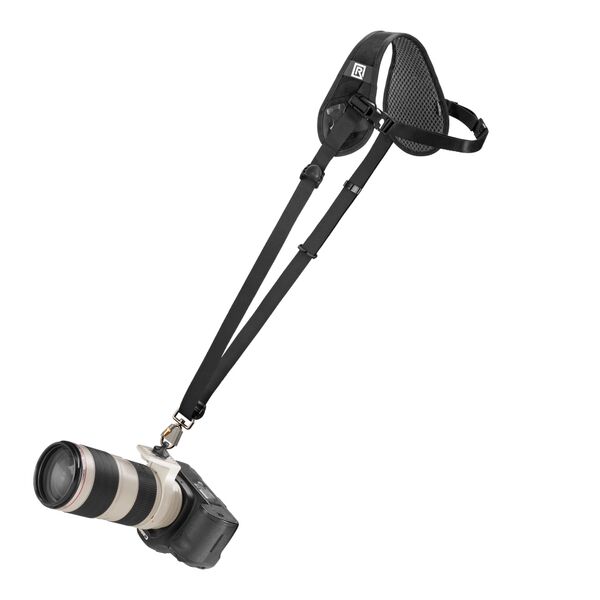
The great thing about the BlackRapid Curve Breathe Camera Strap - well, one of the great things about it - is that it's one of the most comfortable camera straps money can buy.
That's thanks to the fact that it gets the weight of the camera off your neck into a more comfortable carrying position so you can go out and shoot all day long.
That's why this is a fantastic gift idea for photographers this year!
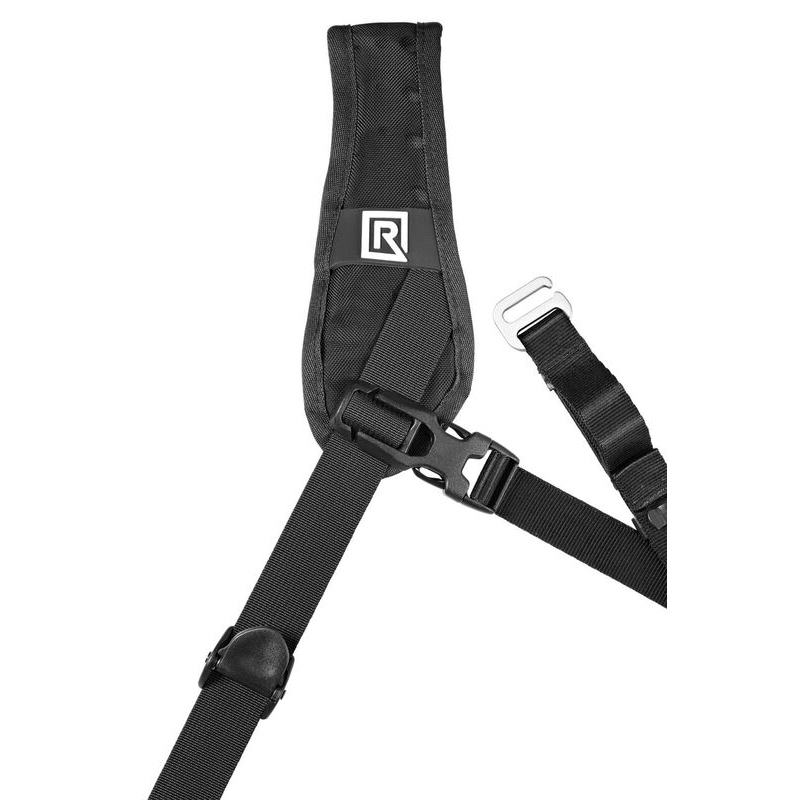
The shoulder pad has moisture-wicking qualities and has a Brad Breathe Stabilizing Strap to ensure that no matter if your favorite photographer is walking through city streets or hiking long trails that the camera stays put under their left shoulder.
Designed to be worn across a right-handed shooter's body, the strap drapes toward the right hip where a connected camera rests upside down. This is the ideal place to carry a camera because it's at one's fingertips yet out of the way when not in use.
In other words, photographers love these straps because they're the height of comfort, they provide excellent functionality, and because with its brass and zinc-alloy hardware, it's durable, too.
Learn more about the BlackRapid Curve Breathe Camera Strap
PolarPro DJI Mavic Air Cinema Series Filter 3-Pack
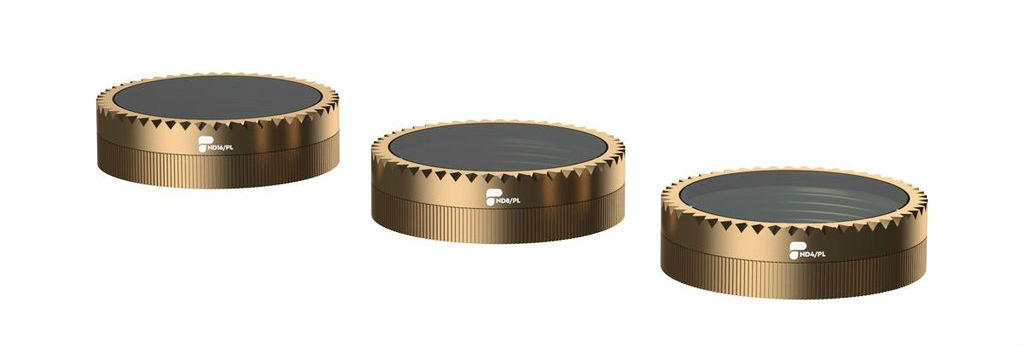
As popular as drones are these days, it makes sense to include top-notch drone camera filters on our list of must-have gifts for photographers for the upcoming holiday season.
And as far as the best drone filters go, it’s hard to beat PolarPro’s DJI Mavic Air Cinema Series Filters.
Available in two variations - the Vivid Collection and the Shutter Collection - you can help your favorite drone pilot step up their aerial photography game with production-grade, multi-coated glass filters that have an airframe aluminum construction that won’t add undue weight to their drone.
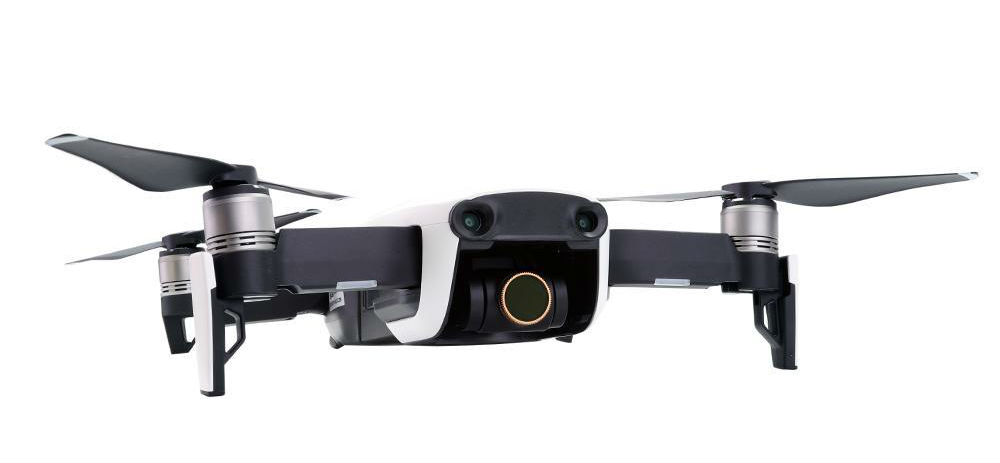
In the Vivid Collection, you’ll find three neutral density/polarizer filter combinations that allow you to slow the shutter for gorgeous, cinematic videos while also reducing glare off of non-metallic surfaces and boosting the contrast of the sky.
In the Shutter Collection, you get three straight neutral density filters that allow you to extend the shutter speed for smooth video captures without changing the color profile of the footage you take.
In both cases, these collections come with other goodies, namely a hard case to safely store the filters and a lifetime warranty. They simply thread on in place of the stock lens bezel for easy installation, too. That makes these filter packs ideal holiday gifts for the drone enthusiasts in your life!
Learn more about PolarPro’s DJI Mavic Vivid Collection and Shutter Collection Filters
Marumi 77mm DHG ND-100000 Solid Neutral Density 5.0 Solar Eclipse Filter
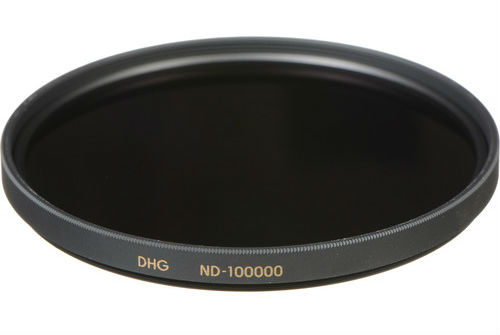
We had an incredible solar eclipse here in the U.S. last year, and another one is on the way in 2024.
But there's solar eclipses all around the world quite often, so get the photographer on your list prepped and ready with a high-quality solar eclipse filter from Marumi.
This solid ND filter has a 92,000x filter factor that gives it a whopping 16.5-stops of exposure reduction.
The 5.0 density darkens the whole image, that way the sun can be photographed safely without damaging any of the delicate internal components of a camera.
But this isn't just for solar eclipses...
Because it's so dark, photographers can use it with a big aperture or slow shutter speed to have more control over depth of field and how movement appears in images.
In other words, this is the perfect gift idea for photographers that want to get more creative in the coming year!
Learn more about the Marumi 77mm DHG ND-100000 Solid Neutral Density 5.0 Solar Eclipse Filter
Excire Search AI Plugin for Lightroom

The great thing about Lightroom - well, one of the many great things about it - is that you can use it for processing your images as well as organizing them into catalogs based on keywords so you can easily find the images you want later on.
The problem, though, is that most photographers (myself included) simply upload their images to Lightroom without taking advantage of its organizational capabilities because manually tagging every image takes tons of time. And even if you catalog every single shot you upload to Lightroom, at some point, you’ll have thousands and thousands of images which makes it hard to keep track of them all.

That’s why Excire Search is such a fantastic gift idea for photographers…
That’s because Excire Search takes all the time and effort out of tagging your photos in Lightroom by utilizing artificial intelligence to identify content in every single image in the Lightroom catalog. There’s 125 different keywords in Excire Search, so it makes tagging photos with common features a breeze.
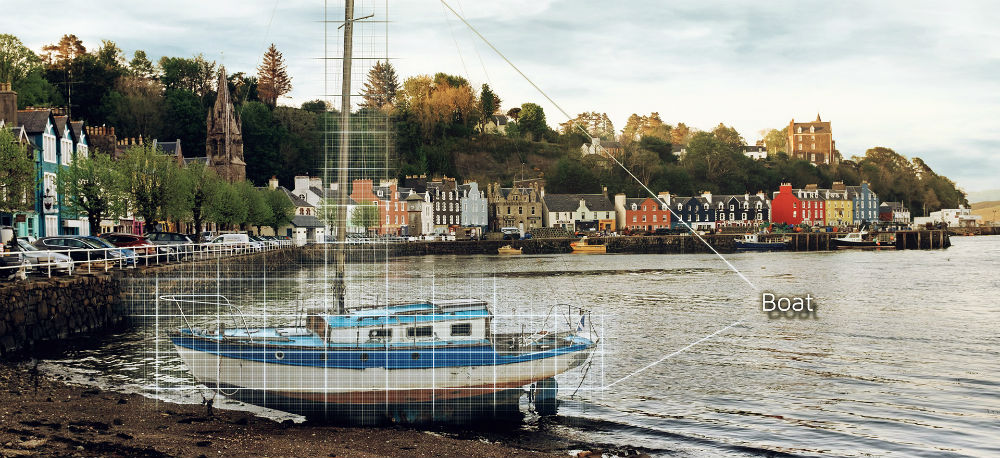
That process not only results in the identification of objects in photos like “mountain,” “boat,” and “dog,” but it also identifies properties of each photo, like the predominant color.
Then, all you have to do is use Excire Search to find the images you need from the catalog whether you’re looking for something that’s blue or green, something with a beach or a desert, and so on.
Even better, the folks at Excire have a deep love of photography and a strong commitment to helping photographers further their education and give back to their communities. That’s why with every purchase of Excire Search, they set aside a small portion that goes into a special fund for supporting non-profits throughout the U.S.
In other words, for just $69.00, you can give the photographer on your list the ultimate gift of helping them organize all their photos while also helping give back to the community as well!
Learn more about Excire Search AI Plugin for Lightroom
Sew Trendy Bean Bag and Wrap Set
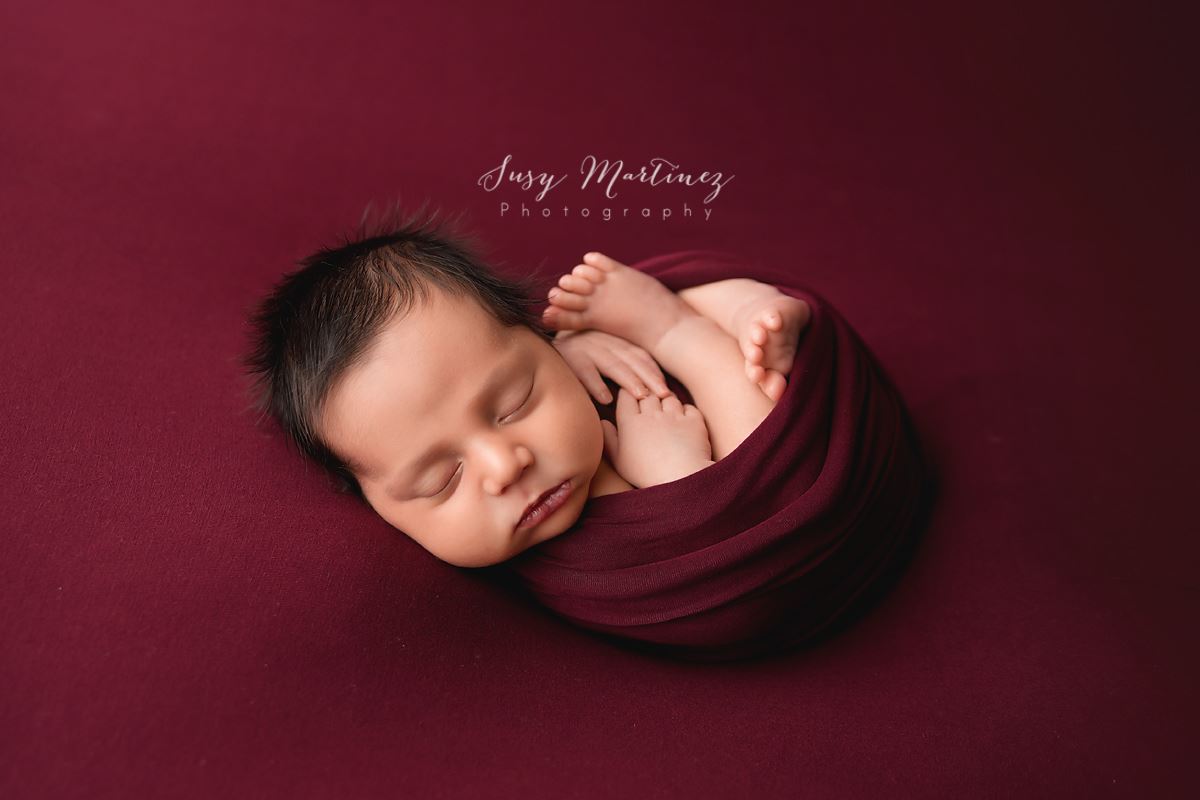
If the photographer you’re shopping for photographs newborns, then this beautiful Bean Bag and Wrap Set is an ideal holiday gift idea.
Not only will an accessory like this help the photographer on your list elevate the quality of his or her work, but the soft, high-quality Jersey fabric is delicate on baby’s skin, too.
An absolute studio essential, a bean bag allows photographers to support a baby’s delicate head, neck, and spine while photos are being taken. What’s more, they provide a perfect backdrop for their photos.
And adding a wrap not only helps baby stay warm and comfortable, but it also helps photographers create the heartwarming, cuddly look you see in the photo above.
Better still, since the newborn set can be matched to a variety of Sew Trendy gowns, photographers can create a cohesive look in their photos of mom and baby.
Learn more about the Sew Trendy Newborn Bean Bag and Wrap Set
Pacific Inkjet 11x14” Professional Luster Inkjet Photo Paper
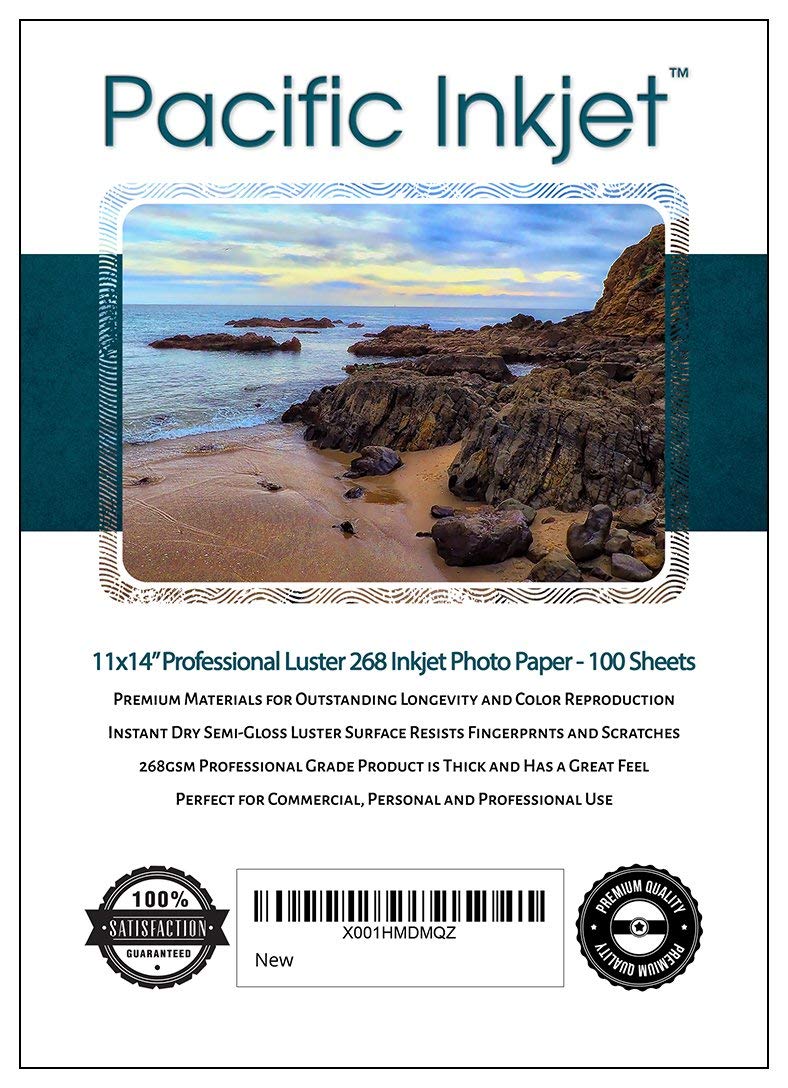
When photographers print their images at home, they need the best equipment and supplies to get the best prints.
And for my money, it’s tough to beat the quality that Pacific Inkjet brings with their 11x14” Professional Luster Inkjet Photo Paper.
I know that inkjet printing might conjure up thoughts of paper that’s a curled mess, but Pacific Inkjet’s paper is a totally different story.
At 268gsm, it’s thicker than paper offered by many professional printing labs, which means you can help the photographer on your list print gorgeous photos right from home.
The semi-gloss texture adds depth to photos while the luster finish brings out all the beautiful details and colors in the image.
Images printed on this paper have fingerprint and scratch resistance, too, meaning photos last far longer.
In other words, for under $100, you can give your favorite photographer the gift of at-home, professional printing with this 100-sheet pack!
Learn more about Pacific Inkjet 11x14” Professional Luster Inkjet Photo Paper
Peak Design SL-AS-3 Slide Camera Strap
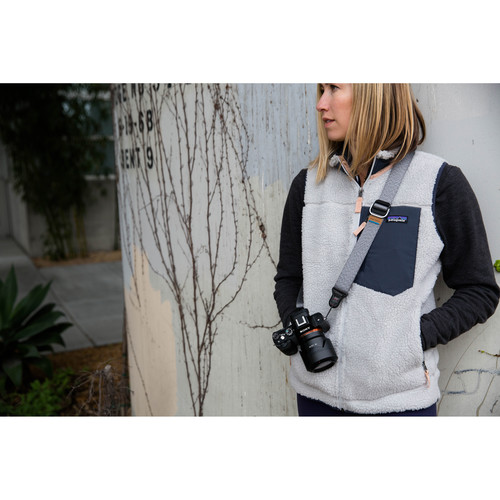
One of the most important photography accessories money can buy is a good camera strap, and the Peak Design SL-AS-3 certainly fits the bill.
For under $70, you can give the photographer on your list a strap that's not just stylish, but also functional and comfortable, too.
The strap has strong, removable anchor connectors that attach to the eyelets of a camera, so it can easily support both DSLR and mirrorless systems.
Paired with the strap's adjustable length from 39 inches to 57 inches, it can work as a neck strap, shoulder strap, or sling strap to fit any photographer's preferred workflow.
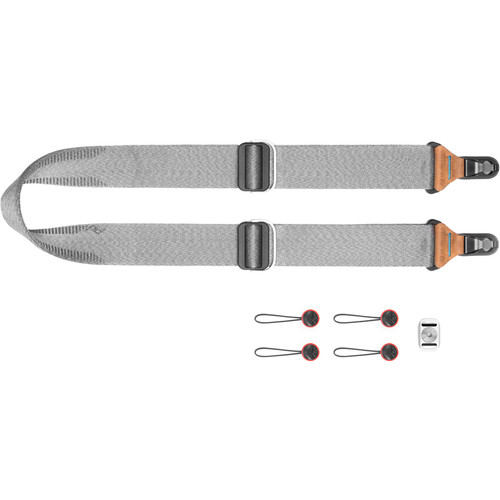
At 1.8-inches in width, this strap is nice and wide to help distribute the weight of the load across more surface area. The internal padding helps in that department, too.
The two sides of the straps have different properties as well - one side is smooth for sliding your camera to your eye when using the strap as a sling, and the other has a grippy silicone finish that prevents slippage when using it as a neck or shoulder strap.
Having a multi-functional camera strap is one of the best things a photographer can have in his or her arsenal, and as far as multi-functional straps go, it's hard to beat this one!
Learn more about the Peak Design SL-AS-3 Slide Camera Strap
FRDM Midweight Photography Gloves
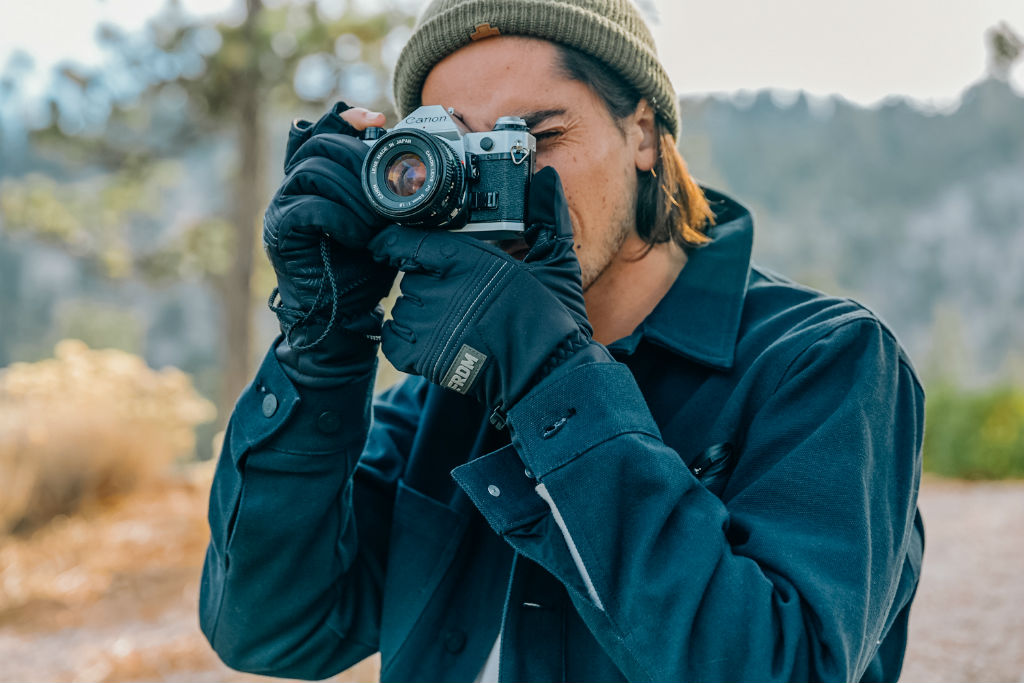
The worst part of winter (if you ask me, anyway) is trying to stay warm when you’re out taking photos of winter’s beauty.
And the toughest part of your body to keep warm is your hands, because with traditional gloves, you have to take them off to operate your camera.
Not anymore…
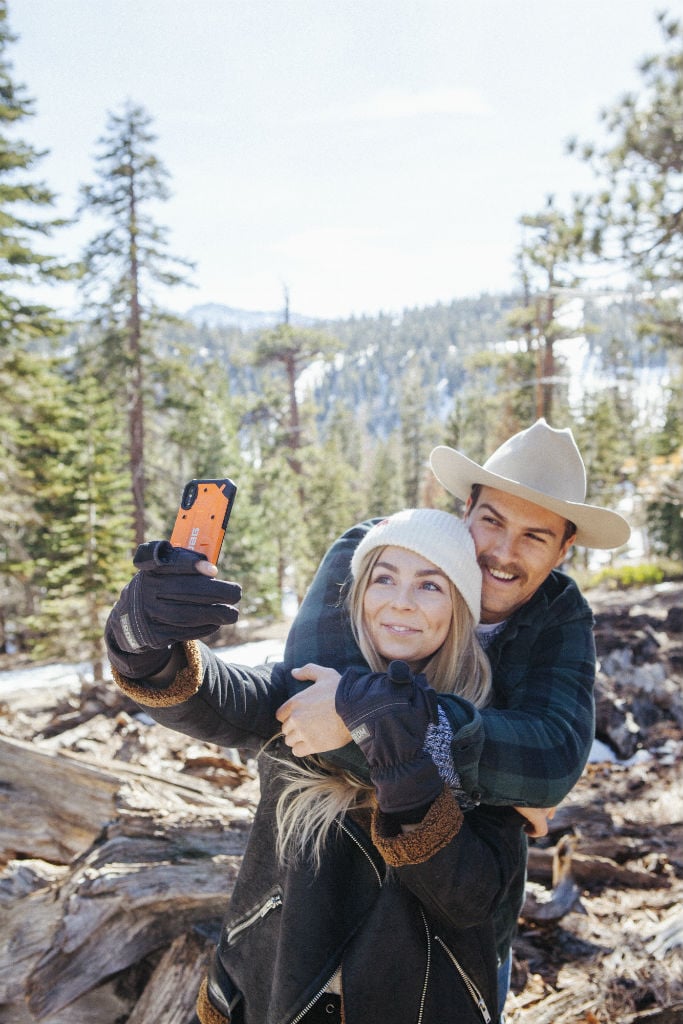
The FRDM Midweight Photography Gloves have a three-layer shell that’s breathable, water-resistant, and windproof. If that doesn’t keep your hands nice and warm, I don’t know what will…
But because these gloves were made with photographers in mind, the index fingers and thumbs on both gloves have magnetized caps that pull back, that way you can more effectively press the buttons on your camera and use touch-enabled screens. Not bad, right?
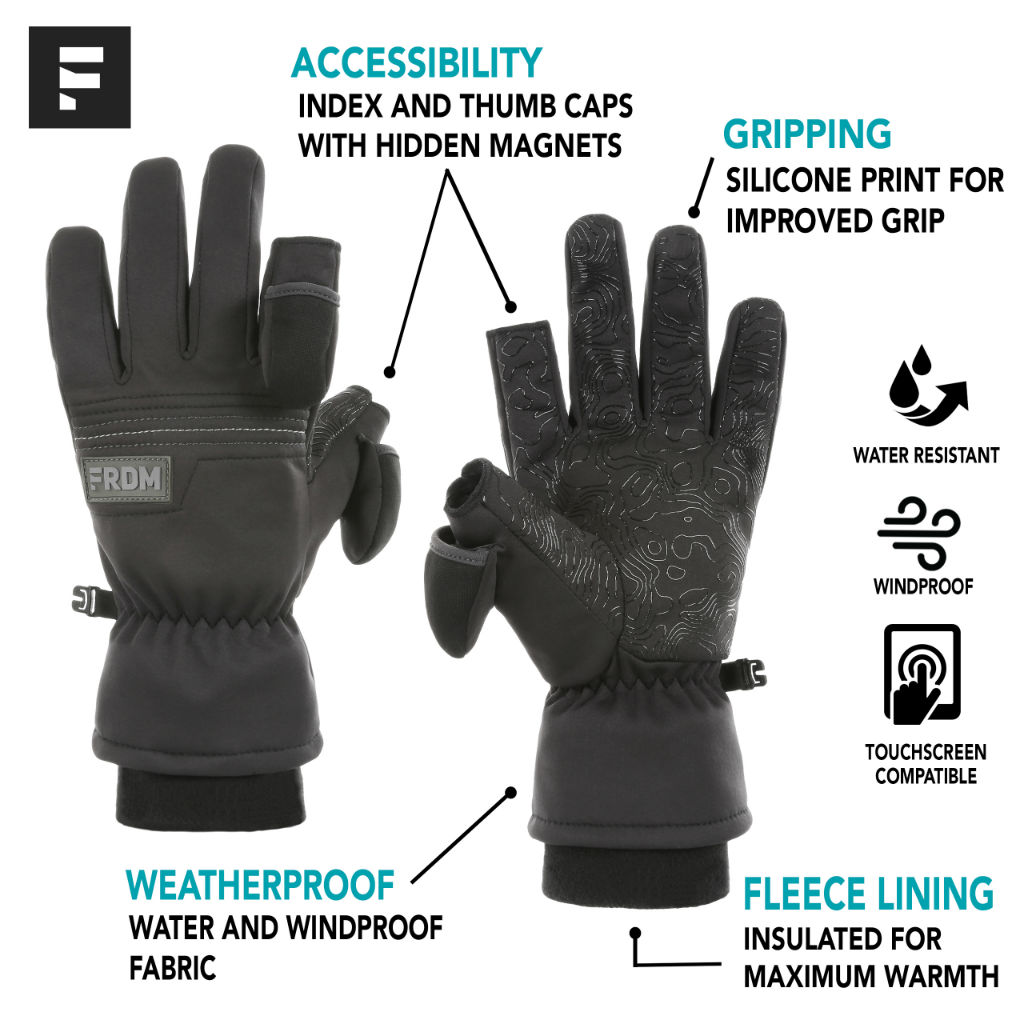
What’s more, there’s touchscreen conductive material on the index fingers and thumbs, so if you don’t want to unfurl the finger caps, you don’t have to!
These gloves also have a silicone screen-printed graphic on the palms that make them extra grippy so you can maintain a solid grip on your camera.
Learn more about the FRDM Midweight Photography Gloves
Bonus Gift Idea - Vanguard ALTA Rise 43 Sling Bag
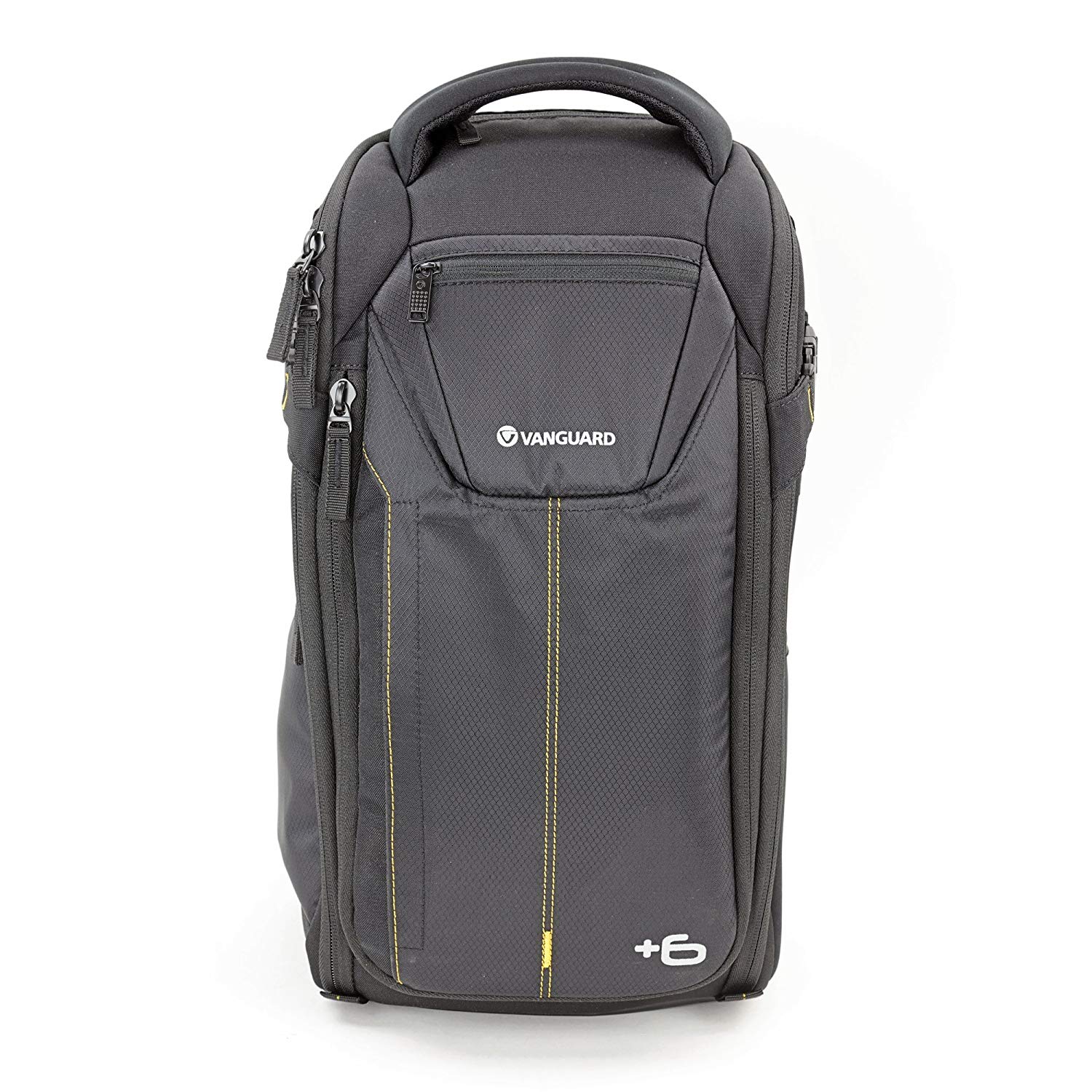
For the photographer on your holiday shopping list that wants a versatile bag that can carry a ton of gear, the ALTA Rise 43 Sling Bag should be on your radar.
Built to hold a professional DSLR body, 4-5 lenses, a flash and other photography accessories as well as a tablet or small laptop, this bag has plenty of space for all of your favorite photographer’s necessities.
Carrying the bag is a breeze with its Air System back, padded sling strap, and securing strap to keep the load evenly distributed on the body. The bag is protected with padding all the way around, too, so gear will be safe from bumps and bruises along the way.
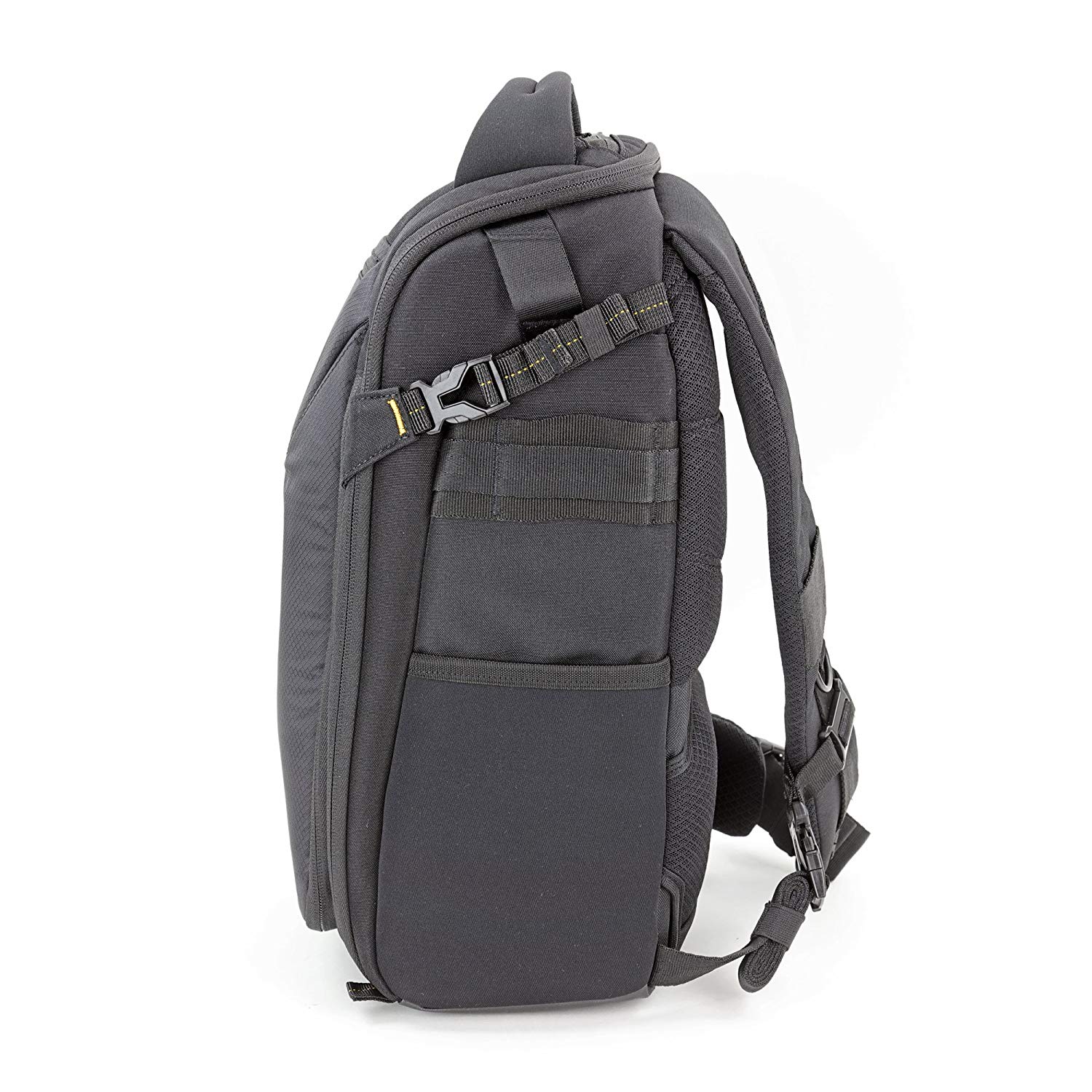
When it’s time to take a photo, this bag has quick access with side zippers that make reaching gear incredibly easy. The brightly colored interior further makes for ease of use, as your favorite photographer won’t have to dig around in a dark bag to find what they need. And since it’s a sling bag, it’s quick and easy to take on and off, too.
In short, this bag is feature-rich, comfortable to carry, and priced right at under $100!
Learn more about the Vanguard ALTA Rise 43 Sling Bag
We Recommend
Top 10 Gifts for Photographers Under $100 - 2019 Edition
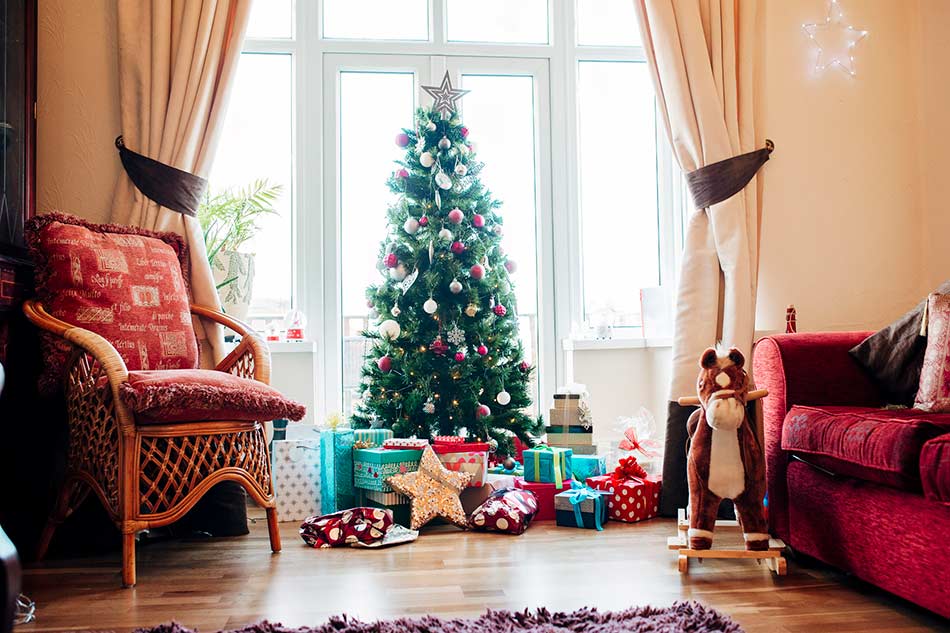
photo bySolStock via iStock
While you might think that $100 isn’t much of a budget to buy photography gear for your loved one, think again…
As the products on this list clearly show, there is no shortage of awesome photography gift possibilities with $100 in your hand!
From software to keep their photos organized to camera bags that are comfortable and functional, this list has a wide variety of ideas to help you check off the photography lovers on your holiday shopping list.
Gifts for Photographers Under $100: CanvasHQ Print
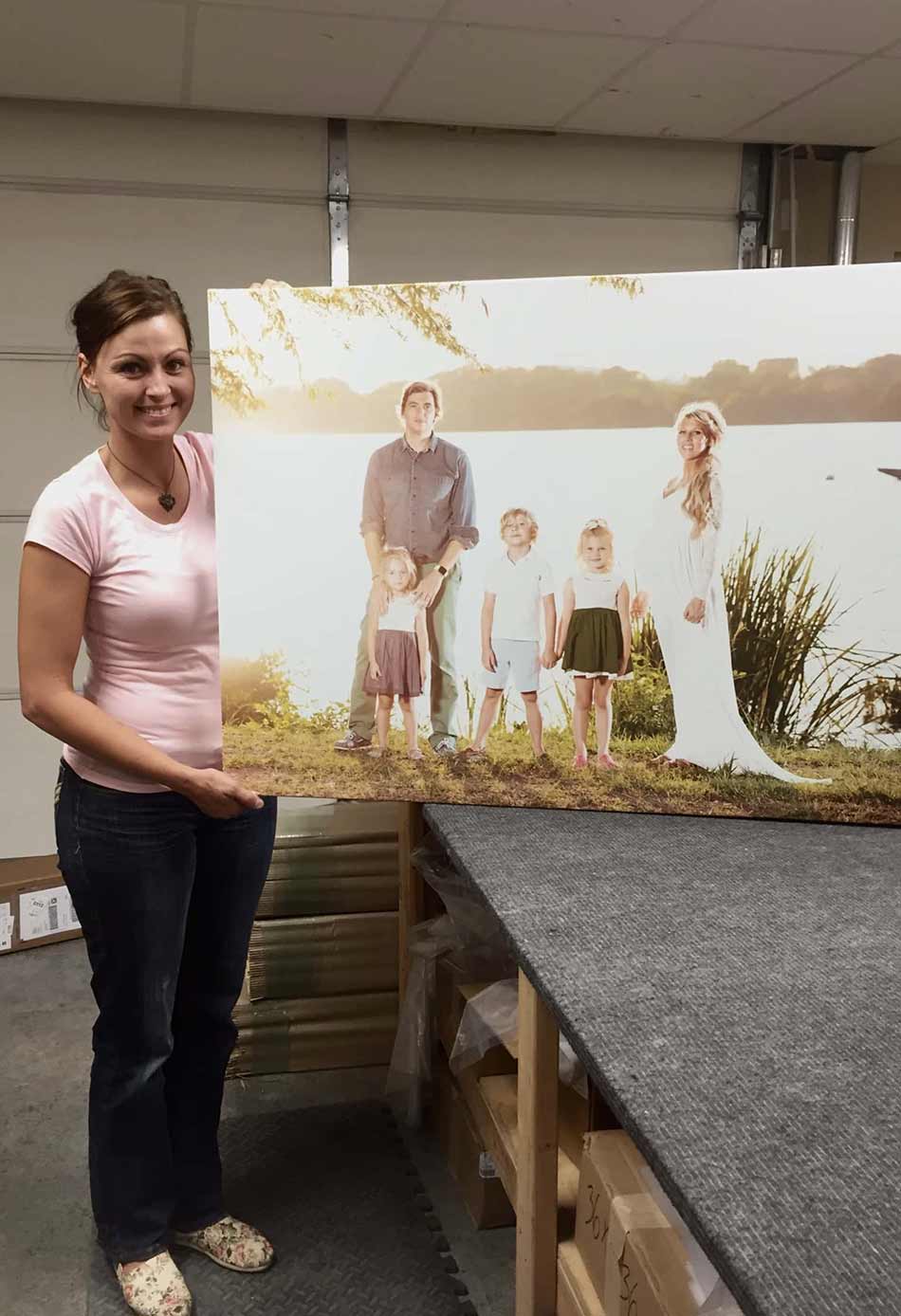
If you’re like me, sometimes finding the perfect gift for certain loved ones is a long, drawn-out process that causes tons of stress, and often you still don’t get something that totally blows them away.
I think a lot of photographers fall into this category. We have specific likes, and many of us already have most of what we want or need gear-wise, and what we don’t have is usually too expensive to put on a Christmas wish-list anyway.
But for all those hard-to-shop-for photographers on your 2019 holiday shopping list, I have the perfect solution - a canvas print.
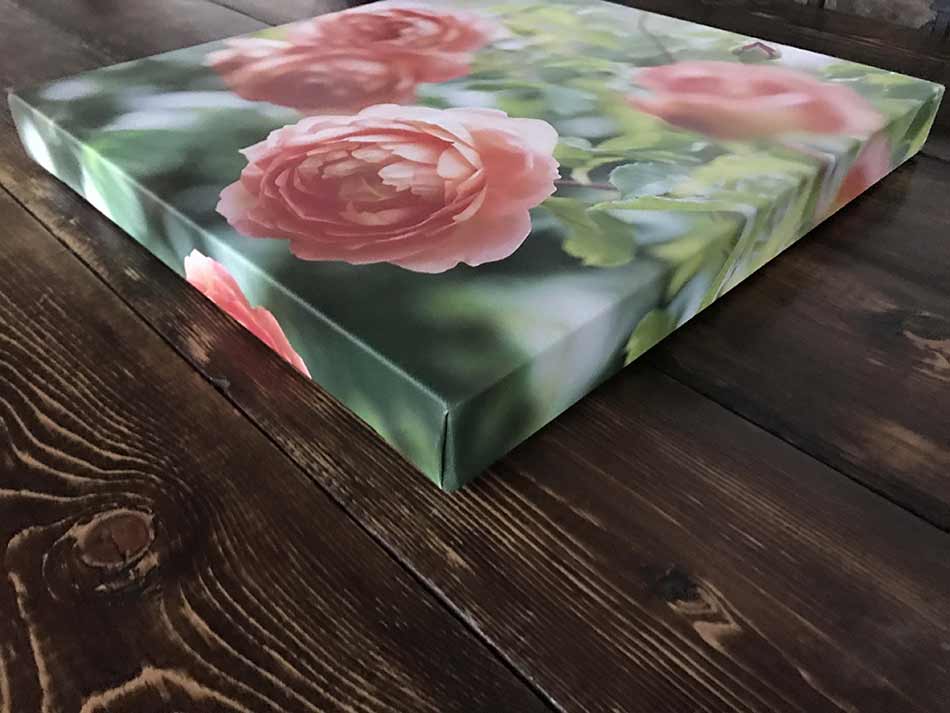
Think about it…
A canvas print is a gift that keeps on giving.
Not only can you immortalize one of your favorite images from your favorite photographer, but you also give them a means to showcase their work in a format that’s drop-dead gorgeous.
I have tons of canvases in my home, the vast majority of which are from CanvasHQ.
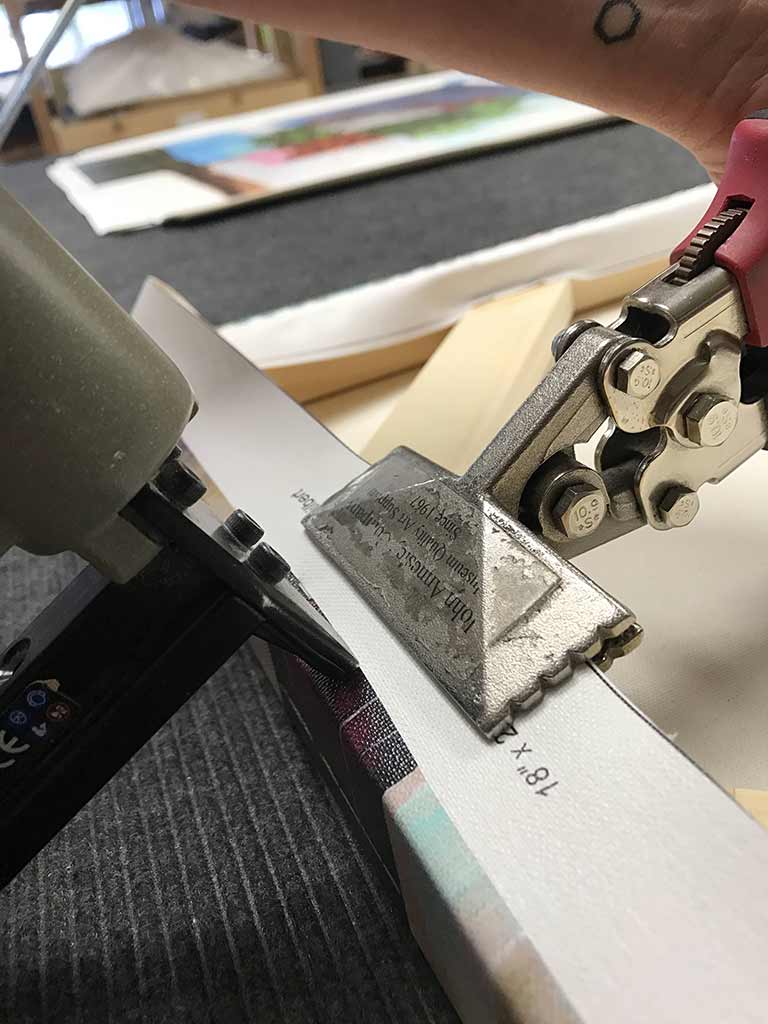
Now, I know what you’re thinking - canvas is old school.
Sure, maybe it is, but I’m telling you that these canvas prints from CanvasHQ are mind-bogglingly beautiful. In fact, they go head-to-head with any metal or acrylic print I have in my home.
The attention to detail is just amazing, and the materials they use are top-of-the-line. We’re talking archival-grade canvas, commercial-grade inks that are water and UV resistant, and kiln-dried pine frames to keep everything straight and true.
I love the personality that the canvas texture gives my images. That’s true whether it’s a portrait of my son or a landscape photo.
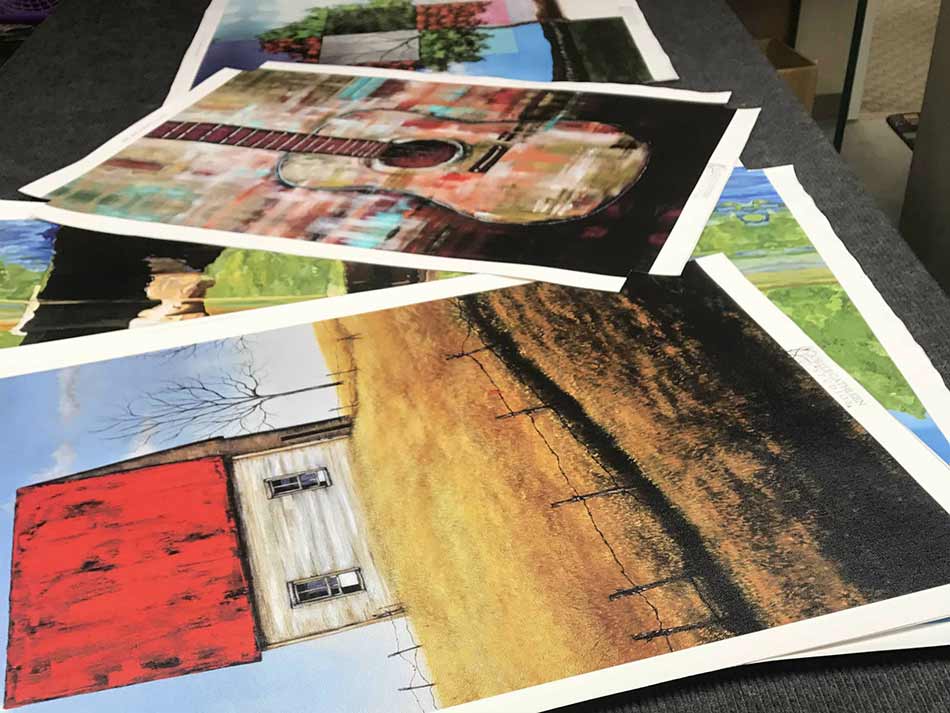
I’d be remiss if I didn’t mention the customer service you get with CanvasHQ.
These guys are committed to getting it right, so if something doesn’t go as planned, you won’t be hung out to dry.
If you have questions, they’ll answer them. If you have a problem, they’ll fix it. If you need assistance with uploading your photo or even picking the best finishes for your canvas, they’ve got your back.
In the video above, I explain why I highly recommend a CanvasHQ canvas print as the ideal gift for the photographer on your holiday shopping list.
Start shopping for your favorite photographer today on CanvasHQ!
Gifts for Photographers Under $100: Holdfast Bolo Strap

The Holdfast Bolo Strap looks like a million bucks, but in actuality, it’s well under the $100 budget limit ($45 in fact!).
What’s so great about the Bolo Strap is that it’s specifically designed for photographers to use with a small camera, like a point-and-shoot. In that regard, this strap is all about streamlined, off-the-cuff shooting to capture candid moments.
Keep your camera safe and sound around your neck, at-the-ready for taking quick photos.

Additionally, this strap pulls triple duty because it can be used as a wallet chain or as a lanyard for your keys.
That makes this little guy well worth the price tag because that functionality makes it well worth more than its price!
You will need a Camera HoldFast for this to be compatible for use with a tripod, but other than that, this sucker is ready to use right out of the box.
Learn more about the Holdfast Bolo Strap
Gifts for Photographers Under $100: LitraTorch 2.0

I know what you might be thinking - this tiny light is worth $100??
Well, I’ve used the LitraTorch 2.0 for a few months now, and I can tell you it’s worth well more than $100…
Though it weighs just over three ounces, and is about 1.5 inches square, Litra packed 16 LEDs into it, so it has some serious light output!
In fact, you can adjust the output from 100 to 450 to 800 lumens depending on what you’re doing.

Better yet, this little light puts out beautiful light that’s clean and crisp and flicker-free, too. It has a wide 70-degree beam angle to illuminate your subject and offers a color temperature of 5700K - right in the sweet spot of natural-looking light.
On its low setting, the LitraTorch 2.0 will give you four hours of illumination while you get 35 minutes of light on full power. That’s a 10 percent improvement over the original LitraTorch.
It’s also waterproof up to 60 feet, has a magnet for easily attaching it to metal surfaces, and it’s built like a tank, so it’ll withstand some use and abuse.
This is simply a versatile, go-anywhere, do-anything light!
Learn more about the LitraTorch 2.0
Gifts for Photographers Under $100:Hex Ranger DSLR Sling Bag

I recently had an opportunity to head up to Los Angeles and meet the masterminds behind HEX.
Aside from having a great time getting to know the folks responsible for this bag, I also got to see it first-hand (and bring one home with me to test out as well).
First impressions are good, to say the least!
Honestly, I’m a bit of a camera bag snob, so I look for things that others might skim over.

For instance, I check the stitching inside and out to see how well put together it is, and with this bag, it’s very well put together.
It’s part of thoughtful construction and design processes that also make this bag an excellent choice for a gift for the photographer on your holiday shopping list.
One of the things I like most about the bag is the collapsible interior dividers - including the bottom divider. This gives you a bag that can not only be customized to your gear for each photoshoot, but you can also fold up or remove the dividers to allow the bag to be packed totally flat for travel inside another bag.
Speaking of customizations, this bag has side adjustable load straps and adjustable bottom carry straps so you can carry even more gear when needed.
This bag is also packed full of pockets to help you keep track of your stuff. There’s a front access organizer for small items, a faux fur lined pocket on the front for your phone or a pair of shades, a faux fur lined pocket for your table, and multiple hidden velcro stash pockets. And the bag sits very well when worn. It’s comfortable and easy to access your gear and really hugs your body.

With genuine Cordura material and YKK zippers with metal pulls, this bag will stand up to use and abuse, too. And since it’s so compact (just 1.3 pounds and 14.5"L x 7.25"W x 4.75"H), you can rock it in the urban jungle without worrying that it’ll be knocking into people as you move from shot to shot.
Something that really stood out to me was that, although the bag is listed at 8 liters, there is no wasted or negative space. In fact, I easily transferred all the gear I would normally carry in my Peak Design 10L Sling into the HEX Ranger Sling. I have to say that I am a big fan of the efficient use of space in this bag and the collapsible potential of the HEX bag certainly gives it a leg up.
With eight liters of storage space, a streamlined design, and looks that don’t quit, this is definitely a gift for photographers that will put a smile on their face! I have to say that I was skeptical on my drive up there, but, man, HEX definitely impressed!
Learn more about the Hex Ranger DSLR Sling Bag
Top Gifts for Photographers Under $100: Luminar 3 & 4 Bundle
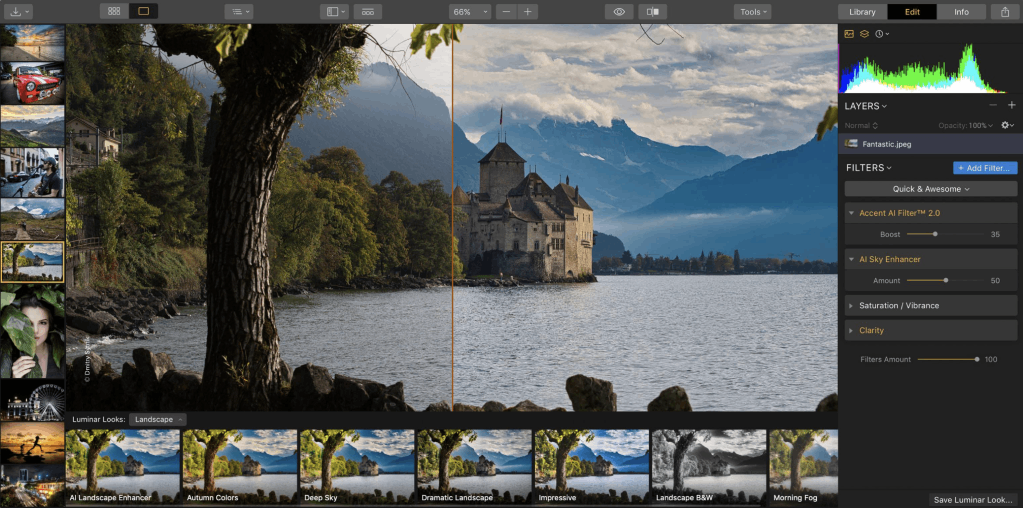
If the photographer on your list is like me, the last thing they want to do is engage in a laborious process of editing their photos.
While many photographers enjoy the creative process of taking and editing photos, it’s a process that can certainly be streamlined and improved. Doing so allows photographers to be more productive and creative.
Fortunately, the mad scientists at Skylum have made this achievable with Luminar 3 (and the upcoming Luminar 4) to reduce the time spent on editing without reducing the quality and beauty of the final product.
I’ve used Luminar 3 since its release in December 2018, and I can tell you first-hand that Skylum’s claim that you can “transform your photos into masterpieces, in no time” is one-hundred percent true.
That’s because Luminar 3 is one of the most intuitive photo editors you’ll find.
It’s loaded for bear with tons of tools and features, yet, as you can see above, the layout of the editor organizes everything into a format that makes sense and gives you quick access to the things you need.
Additionally, Luminar has advanced features that take the guesswork out of editing and make it a much simpler process.
For example, the Accent AI 2.0 filter allows you to make dozens of adjustments using a single slider, such as fixing detail and exposure, depth and color, tone and much more.
This technology is so advanced (thanks to its “human-aware” technology) that it recognizes people and applies adjustments selectively for results that are more realistic.
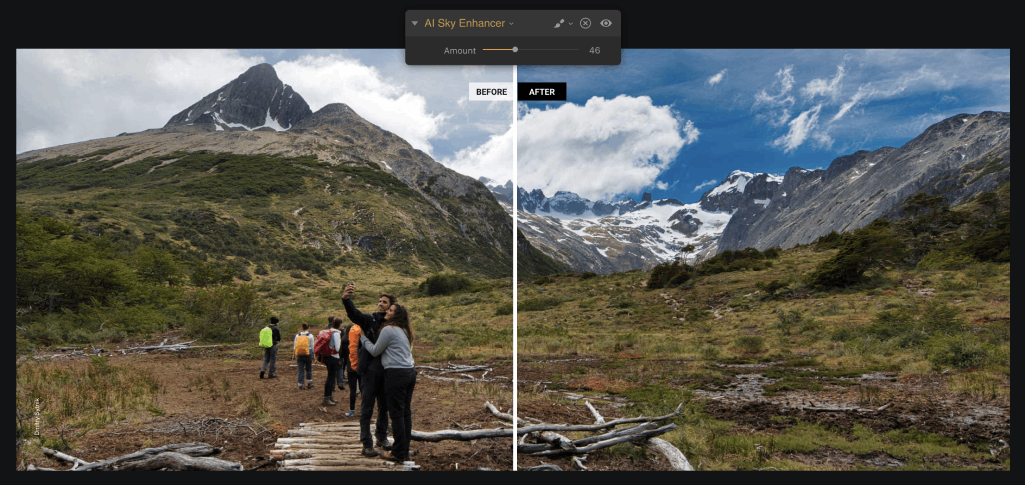
If the photographer you’re shopping for this holiday season specializes in landscapes, they’ll love Luminar 3’s AI Sky Enhancer, which analyzes the photo to detect the sky (no matter how large or small, bright or dark the sky might be) and applies an invisible mask to the sky to enhance it based on its colors, texture, size and more.
And like the Accent AI 2.0 filter, this is all done by manipulating a single slider. It couldn’t get any easier!
Add to that more than 70 professionally crafted looks (with hundreds more available to download) and you have the makings of an editor that your favorite photographer will absolutely love.
Best of all, Skylum is offering Luminar 3, a set of Inspiration Looks, and Luminar 4 in one awesome bundle for $99.
With Luminar 4, photographers will get even more incredible tools to edit their photos, like the AI Skin Enhancer, which uses human-aware technology to locate any skin in the picture (not just the face), smooth it out, and remove blemishes all the while preserving pores, texture, and hair.
Better still, this is done in one click, gives you the ability to adjust its strength, and it works for any age and skin type.
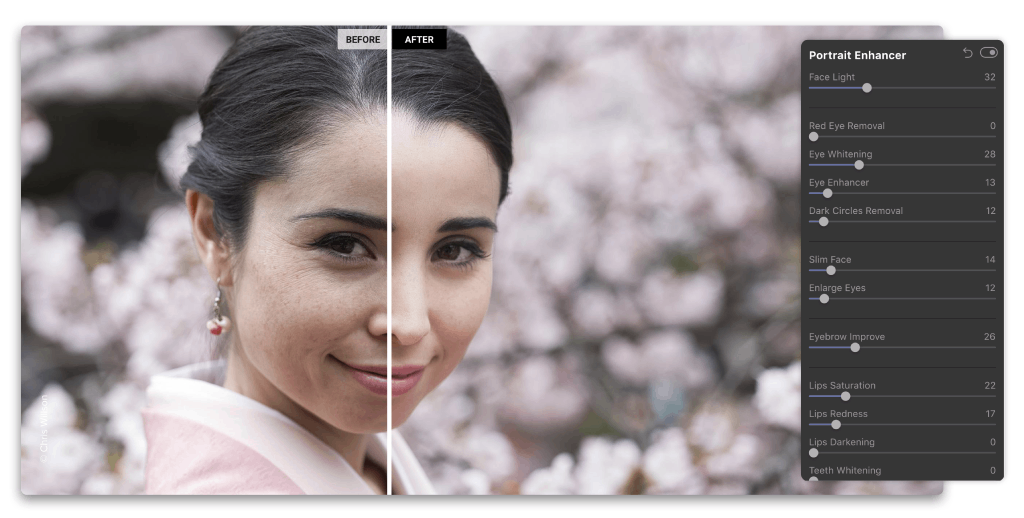
Luminar 4 will also introduce the AI Portrait Enhancer, which has 12 tools that allow you to make picture-perfect changes to the face, eyes, and mouth with the utmost precision and control.
Not only that, but presets that you create will automatically adjust to each new photo, that way you can batch edit your images for a lightning-fast workflow.
Luminar 4 has goodies for landscape photographers too.
As you can see in the video above, with the AI Sky Replacement tool, you can automatically change the sky in any photo without making selections or creating masks.
Better still, the AI Sky Replacement tool relights the entire image so the colors and lighting match that of the sky.
These are just a few examples of the exciting new tools coming in Luminar 4, and with this package from Skylum, you can give the gift of Luminar 3, a set of Inspiration Looks, and Luminar 4 for under $100!
Head over to the Skylum website to explore Luminar 3 and Luminar 4 in more detail. You can even download it yourself and try it for 30 days knowing that there is a money-back guarantee!
Gifts for Photographers Under $100: Snaptiles
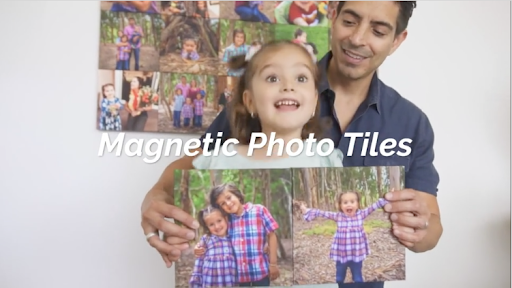
These are not your ordinary Photo Tiles! One of the challenges with traditional photo tiles is that you need to level and space every single one that you hang up. Then they say that you can mix the tiles around but after a few times the adhesive wears out and they just don’t hold up well.
Not so with Snaptiles…
These 8x8” magnetic photo tiles can be hung on the wall in a matter of seconds! You hang the first time (anchor tile) and level it with the built-in level, then all the other tiles snap onto the first!
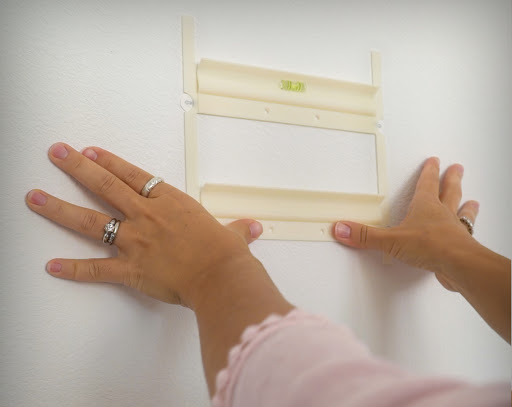
Just peel the backing off the adhesive strips, place the wall mount where you want it, level it up using the built-in level, and PRESS FIRMLY against all four strips for 10 seconds. That’s it!
You can snap up to 12 photo tiles on one anchor tile and add additional anchor tiles along your wall.. Or you can push in the 4 thumbtacks included for additional support and mount up to 30 tiles onto the first. This way gives you way more options and only puts 4 small pin holes in your wall which let’s you hang 30 prints!
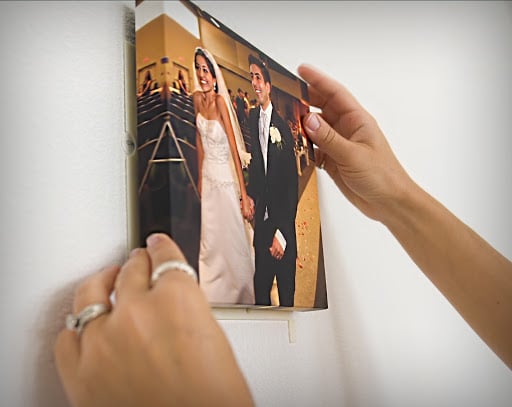
Next, you just place the anchor tile on the mount and slide it down to lock in place. Then you can begin to place tiles to the left, right, top, or bottom of the anchor tile, which snap together with magnets. The result? A beautiful array of mixed tiles.
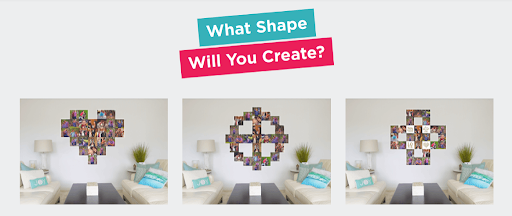
You can create all kinds of designs with your tiles, too, so it truly gives you the freedom to display your images in the way you want, and when you want to change up the design or swap out tiles, you can do so quickly and easily while having a blast.
Giving prints to someone for the holidays is a special way to help them look back on fond memories. With Snaptiles, you can do that in a completely new, unique, and fun way with this innovative photo tiles!
Gifts for Photographers Under $100: Photomatix Pro 6

Whether the photographer on your shopping list is a newbie or a pro, they will probably tell you that one of the hardest parts of photography is getting the exposure right.
What makes it so complicated to perfect is that there are so many variables involved, one of which is dynamic range.
When dynamic range, or the values of light tones in the shot, is too much, the camera can’t accommodate it. That means that highlights might be blown out or shadows might be too dark.
But by bracketing exposures, merging them together, and using HDR software, photographers can overcome this difficulty.
For less than $100, you can give the gift of gorgeous exposures by putting Photomatix Pro 6 in your loved one’s stocking.
Since 2003, Photomatix has enabled photographers to easily create HDR images.
Over the years, the software has changed and added tons of new features, including built-in presets, dozens of HDR settings, tools like selective ghost removal, and batch processing in Photomatix Pro 6. And that’s just the start!
There’s also multiple HDR styles so no matter if the photos are landscapes, portraits, real estate, or something in between, you can customize how they look with Photomatix.
That’s why HDR software like Photomatix Pro 6 is such a valuable tool for photographers!
Learn more about Photomatix Pro 6
Gifts for Photographers Under $100: Excire Search Pro

Lightroom is a fantastic tool for processing and organizing your images. But as good as it is on its own, it can be made much better.
That’s because many photographers like yours truly just upload photos without taking the time to tag them. And since Lightroom doesn’t do that for you, the photos become a jumbled, hard-to-search mess. That’s where Excire Search Pro comes in…
Excire Search Pro is a Lightroom plugin that makes tagging photos in Lightroom a breeze.
That’s because it uses AI to identify specific objects and features in your photos. Exire then tags and organizes your photos for you. Not bad, right?!

Excire Search Pro has 500 different keywords, so no matter if you’re looking for a photo with a sunset, a little girl, or a boat, it’ll find it for you.
It’ll even identify photos based on certain criteria, like the predominant color in the shot. It even recognizes faces and can categorize images based on gender and age.

I’ve used Excire Search Pro for awhile now, and I can tell you firsthand that it has been a Godsend in terms of streamlining my workflow.
Now instead of taking hours to tag everything myself and even more time trying to find what I need, I let Excire do all the heavy lifting!
Learn more about Excire Search AI Plugin for Lightroom
Gifts for Photographers Under $100: Camera Canopy

If you want a unique, yet functional gift for the photographer in your life, the Camera Canopy is an ideal choice.
Photographers that spend any time outdoors understand that when it rains, it can really put a damper on their ability to get the photos they want. That’s because even weather-sealed gear isn’t completely water-tight.
And trying to manipulate camera controls with a traditional bag-like rain cover for a camera is a huge pain in the rear. That’s why Camera Canopy is a much better alternative.
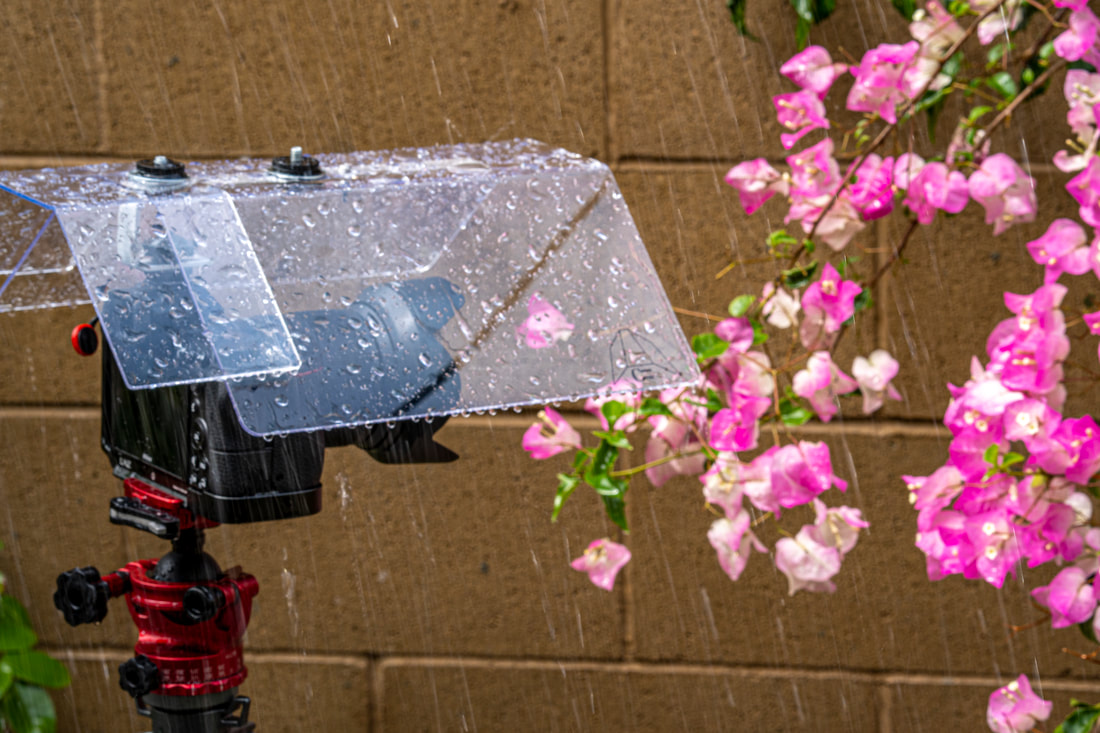
Camera canopy attaches to a camera via its hot-shoe mount, and then acts like a roof to protect the camera and lens from rain. It even protects the from glass of the lens so there’s no water droplets messing up the shot.
Better still, it’s adjustable for lenses up to 500mm in length, and there’s even a smaller version for mirrorless setups (shown above). Add in a 30-day money-back guarantee, and you’ve got the perfect gift for this holiday season!
Learn more about Camera Canopy
Gifts for Photographers Under $100: Kenko Puro Slim Circular Polarizing Filter

By far, one of the most valuable camera accessories a landscape photographer can have is a circular polarizing filter.
That’s because in a single filter, you get all of these benefits:
- Reduced glare off of non-metallic surfaces like water
- Enhanced contrast in the sky with a deeper blue atmosphere and brighter white clouds
- Minimize atmospheric haze, so objects far away appear crisper and more defined
But like lenses, not all filters are made alike, so buying a cheap one won't do you any favors.
That doesn't mean that all high-quality filters are expensive - just consider Kenko Puro Slim Circular Polarizing Filters as a prime example.

These Japanese-made filters have an exclusively formulated multi-coating that resists water, dust, and oils. Not only does that mean a cleaner shot, but it also means less damage over time to the filter itself. That’s a great benefit when you’re giving one to a photographer for the holidays!
The filter shown above also has a SLIM ring for mounting to the lens, which has a minimized profile to prevent vignetting, even on wide-angle lenses.
As far as improving your favorite photographer’s ability to get a better shot in short order, it's tough to top what a good polarizer can do!
Learn more about Kenko Puro Slim Circular Polarizers
Gifts for Photographers Under $100: Pre-Owned Lens From Lensfinder

Let’s face it - photography gear can be expensive. Really expensive.
That’s a problem year-round, but when you’re holiday shopping and have tons of gifts to buy, it’s even more difficult to justify getting your loved one the $1,000 lens that they really want.
Fortunately, Lensfinder can help in more ways than one.
On the one hand, you can find great deals on pre-owned camera lenses at Lensfinder.
That means that you can get a truly top-notch lens for the photographer in your life but do so without busting your budget. It’s a win-win!
On the other hand, if you have some old lenses that you don’t use anymore, you can list them for sale on Lensfinder. When the lens sells, you can use it for holiday spending money for the photographer in your life.

Image Credit: xxmmxx via iStock
The best part? You can list your lenses for sale for free.
There’s only a transaction fee (just 3.99%) when the lens sells (with a maximum fee of $500). If your lens doesn’t sell, there’s no charge at all!
And for peace of mind, the Lensfinder platform has advanced fraud filtering for both buyers and sellers as well as mediation services in the event that there’s a problem.
Payments are made and received via PayPal, so you can rest easy knowing that the transaction is safe and secure.
In other words, Lensfinder is the ideal solution for your holiday shopping needs. Either use it to find a loved one a killer lens or use it to sell old gear to pad your pockets for holiday spending!
Gifts for Photographers Under $100: RODE VideoMicro

This tiny shotgun microphone is perfect for a GoPro.
It's compact and lightweight, but audio quality isn't sacrificed. In fact, it has a high-quality cardioid condenser mic capsule so you can get clear, crisp audio.
And since it's a directional mic, it minimizes sounds from the periphery so your video has focused audio from the subject.
Add to that a thermoplastic suspension structure for minimizing vibrations as you adventure around with your GoPro, and you have the ideal audio companion for the best adventura camera on the market!
If the photographer on your list is an adventurer and utilizes a GoPro, this is the perfect gift idea!
Learn more about the RODE VideoMicro
We Recommend
Top 10 Gifts for Photographers Under $150 - 2018 Edition
 Image Credit: Memorystockphoto via iStock
Image Credit: Memorystockphoto via iStock
You'd be surprised at what you can get a photographer for $150.
Bigger-ticket items usually get all the glory, but there are tons of things that photographers want and need that aren't priced out of this world.
Here's some of my favorite photography gift ideas for photographers under $150 that are sure to impress this holiday season!
Lensfinder

Let’s face it - photography gear can be expensive. Really expensive.
That’s a problem year-round, but when you’re holiday shopping and have tons of gifts to buy, it’s even more difficult to justify getting your loved one the $1,000 lens that they really want.
Fortunately, Lensfinder can help in more ways than one.
On the one hand, you can find great deals on pre-owned camera lenses at Lensfinder.
That means that you can get a truly top-notch lens for the photographer in your life but do so without busting your budget. It’s a win-win!
On the other hand, if you have some old lenses that you don’t use anymore, you can list them for sale on Lensfinder. When the lens sells, you can use it for holiday spending money for the photographer in your life.

Image Credit: xxmmxx via iStock
The best part? You can list your lenses for sale for free.
There’s only a transaction fee (just 3.99%) when the lens sells (with a maximum fee of $500). If your lens doesn’t sell, there’s no charge at all!
And for peace of mind, the Lensfinder platform has advanced fraud filtering for both buyers and sellers as well as mediation services in the event that there’s a problem.
Payments are made and received via PayPal, so you can rest easy knowing that the transaction is safe and secure.
In other words, Lensfinder is the ideal solution for your holiday shopping needs. Either use it to find a loved one a killer lens or use it to sell old gear to pad your pockets for holiday spending!
MyCaseBuilder Custom Foam Inserts

Ask any photographer how valuable a solid camera bag with protective inserts is to their business, and they’ll likely put it at or near the top of their list.
After all, a photographer can’t make money unless their gear makes it from point A to point B in one piece, and MyCaseBuilder is a rockstar in making that happen.
For nearly a decade, MyCaseBuilder has been crafting custom foam inserts for photographers that protect their specific gear for their specific hard camera case.
Not only does that mean that a photographer can rest easy knowing that their camera gear is supremely protected, but MyCaseBuilder also allows customization for how the gear is laid out in the foam insert.
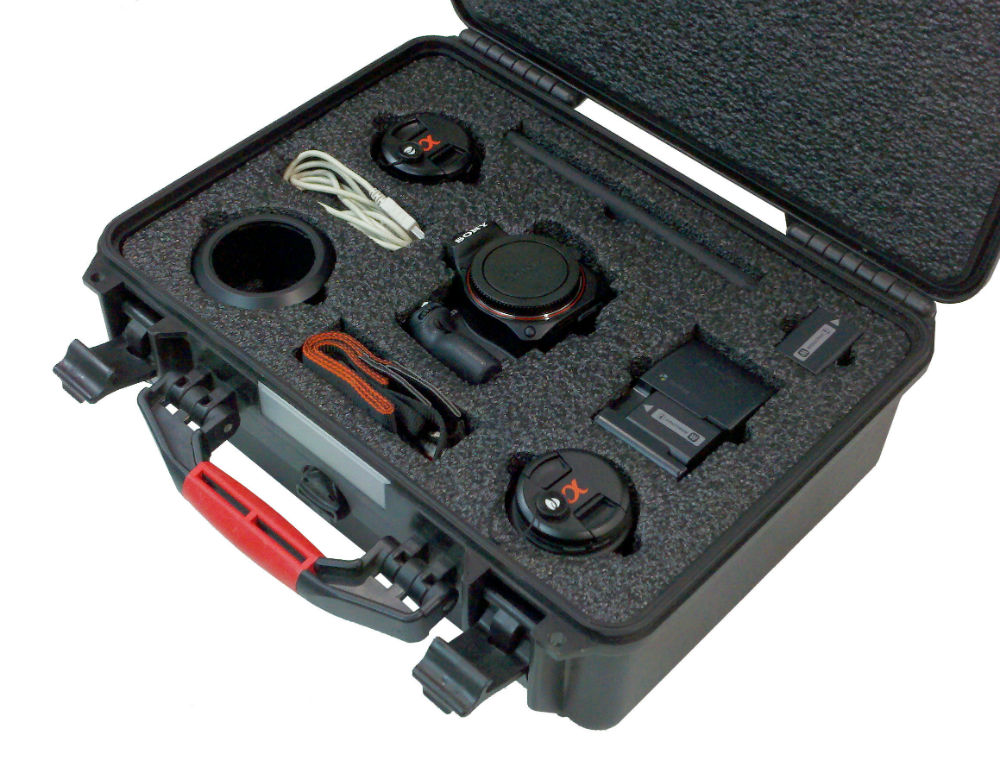
If a photographer wants their cameras on the right side of the insert - can do! Lenses on the right instead? No problem!
Given how delicate cameras and lenses are, having a total protective solution like a custom foam camera case insert is exactly what photographers need to keep on shooting.
That being the case, since you might not know what gear the photographer on your list is using, give them the gift of protection with a gift certificate to MyCaseBuilder so they can custom-create the ideal gear insert from scratch. If you want to spend $50, $150 or whatever your budget will allow, it’s simple to purchase a gift certificate on the MyCaseBuilder.com website.
It’s easy, too - they just pick their case or custom-sized foam, design the layout online by using the Shape Library from MyCaseBuilder (or by using their Photo Tracer technology), and MyCaseBuilder will handle the rest!
Learn more about MyCaseBuilder
Wolverine Data F2D Titan 8-in-1 High Definition Film to Digital Converter

A question that a lot of photographers have on their minds is, “What can I do with my old 35mm negatives and slides?” If you have one such photographer in the family, think about getting them the ultimate photography gift this holiday season - the Wolverine Data F2D Titan.
This bad boy allows you to convert your old 35mm/127/126 & 110 negatives, slides, 8mm and Super 8 movies into 20-megapixel digital images in mere seconds. Literally - you push a button, and the Titan does the rest without the need for any additional software or even a computer!
Each scanned image is saved to the Titan’s internal memory, or you can opt to save them straight to an SD/SDHC memory card. You can transfer the images to your Mac or PC for storage or editing, or if you want to quickly view the images, you can hook the Titan up to your TV to watch a slideshow (TV cable not included).
In other words, this is an ideal gift for photographers that have a ton of old negatives, or even a friend or family member that’s been hanging onto their old memories, but unable to do much with them. Give them the gift of organizing their photos and being able to enjoy their old memories quickly and easily too!
Learn more about the Wolverine Data F2D Titan 8-in-1 High Definition Film to Digital Converter.
Holdfast Sightseer Small Lens Pouch

The great thing (well, one of many…) about the Holdfast Sightseer line of bags is that they are modular, so as your kit grows, your bag system can grow along with it.
Part of that modular system is the Sightseer Small Lens Pouch shown above.
These waxed canvas and American Bison leather pouches are lined with Aztec flannel fleece that cradles your lens. The outside is weather resistant and the inside is scratch resistant, giving you the ultimate gift idea for the photographers on your holiday list.
Better still, these pouches can be worn on any belt, on the Holdfast MoneyMaker, or on the exterior of the Holdfast Sightseer Bag, so there’s many different ways for photographers to have their favorite lens right at their fingertips.
Learn more about the Holdfast Sightseer Small Lens Pouch
Capturing Couture Camera Bag - Where Fashion Functions for You
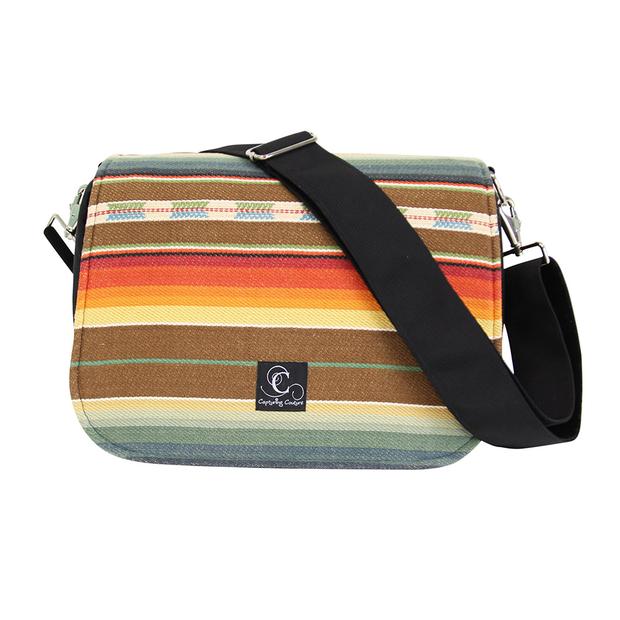
Who says that carrying a camera requires a boring bag with no style?
The photographer on your holiday shopping list will love a beautiful, trendy, and functional camera bag like the Capturing Couture bag shown above.
These bags are meticulously crafted with premium fabrics and choice hardware to be both stylish and durable.
With room for a DSLR camera with lens, an additional lens or flash, and other odds and ends, these bags are perfect size to go to the mountains, the beach or anywhere in between.
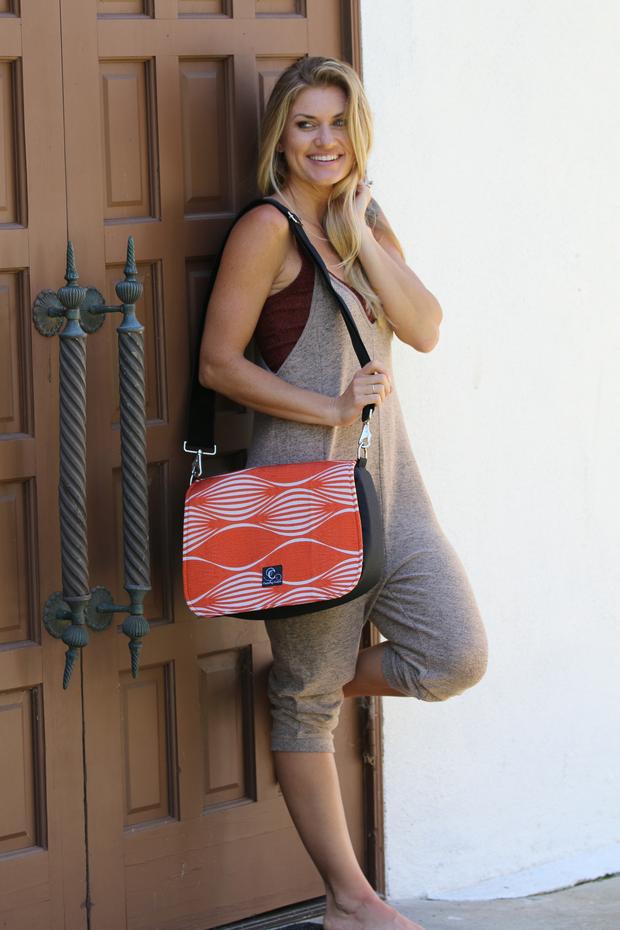
The full zipper closure and padded interior of the bags to keep all the expensive gear inside safe and sound. With the removable divider, photographers can customize the interior space to their liking as well.
There’s front stash pockets for a smartphone, card readers, car keys, and other accessories, while the exterior pocket on the back boasts a 12-inch-wide by 6.5-inch deep space that’s perfect for carrying a small tablet. There’s even a small interior lined pocket for hiding extra money or credit cards!
The velvet-lined shoulder strap will have your favorite photographer in ultimate comfort. The adjustable length from 22-inches to 42-inches allows it to be worn over the shoulder or cross-body.
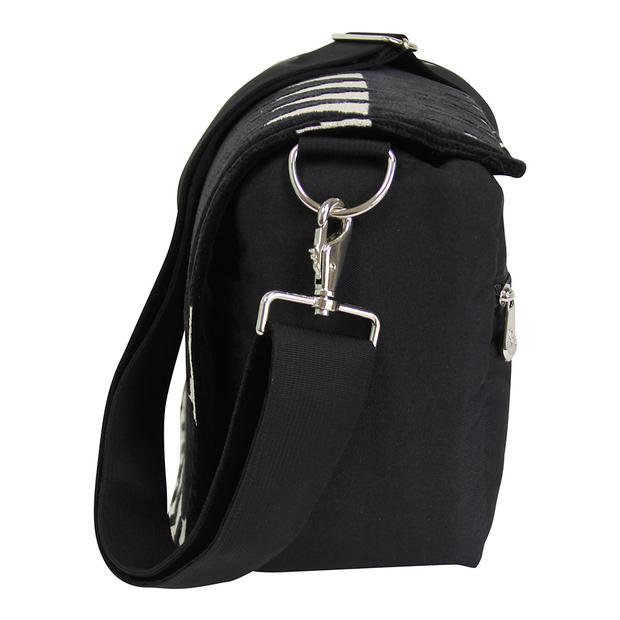
These bags also feature beautiful polished nickel hardware.
And speaking of looks, Capturing Couture has designed these bags with a removable decorative flap that zips off. That means that with a few extras, photographers can customize the look of their bag to their outfit or the occasion.
With tons of options in terms of styles, there’s no better bag for the fashion-conscious photographer!
Learn more about Capturing Couture Camera Bags
CanvasHQ 36x24 Canvas Print

If you really want to make a statement with a gift that has true wow factor, a 36x24 canvas print should do the trick!
For the best canvases, you can’t go wrong with CanvasHQ, an experienced printer with a commitment to creating top-quality products. Trust me - I have a number of CanvasHQ prints in my home!
This 36x24 canvas is a great size for a showcase piece on the wall of your loved one’s home. The .75-inch thickness offers just enough depth on the sides of the canvas to give it a little separation from the wall, but without distracting the eye from the gorgeous print. You can even have the canvas placed in a frame later on if you wish, making it a flexible option to meet your gift-buying needs.
And don’t think that ordering a print of this size is a tough process, either. With CanvasHQ, you get free digital proofs so you’re sure that the image meets your wishes. And even if the proofs don’t turn out how you’d expected, no worries! CanvasHQ will make minor tweaks to help you achieve your artistic vision.
Even better, since CanvasHQ is a small, family-owned business, they’re at-the-ready to help make your experience one that you’ll rave about to your friends and family. Call, write, or hit up the live chat with questions or concerns, and a real, live CanvasHQ employee will help you out!
Learn more about CanvasHQ 36x24 Prints
PolarPro DJI Mavic Air Filter Cinema Series 6-Pack
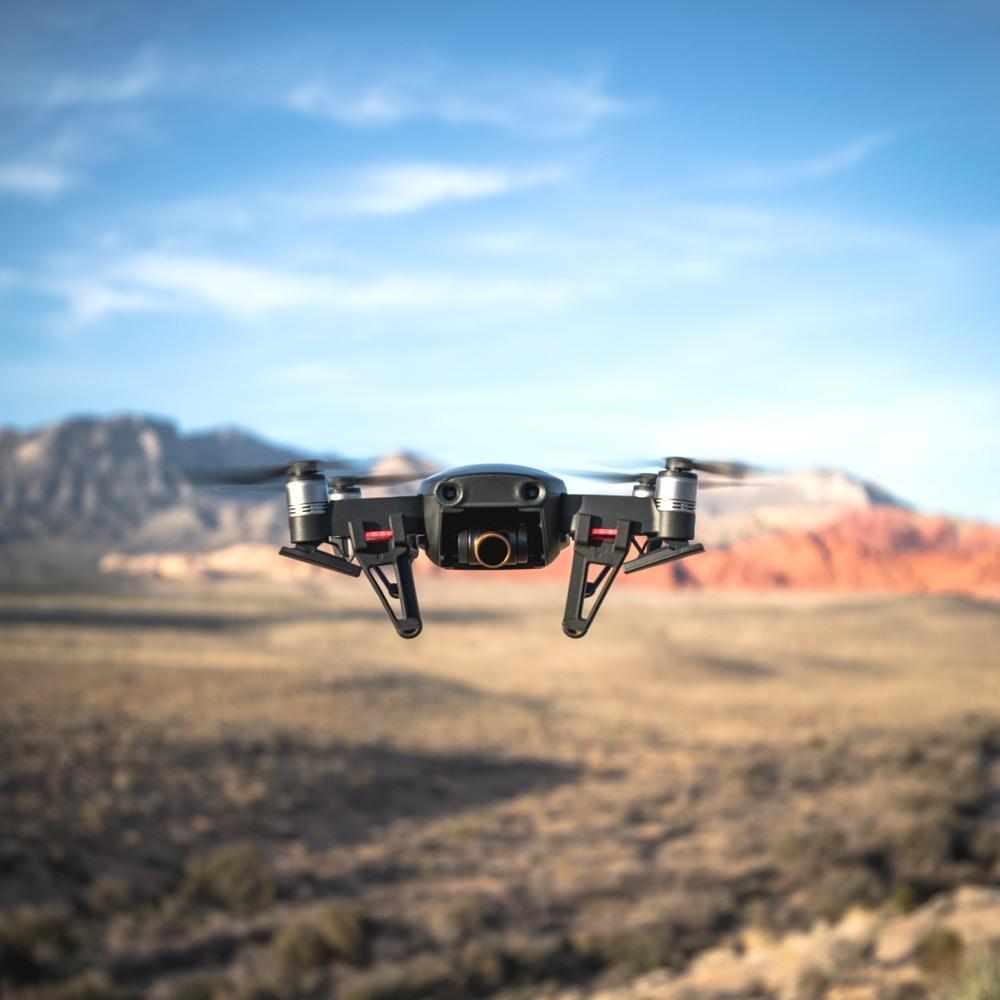
If you’ve got a loved one on your holiday shopping list that’s a drone enthusiast, we’ve got an excellent gift recommendation that will complete their drone experience.
Paired with the awesome capabilities of the DJI Mavic Air, PolarPro’s Cinema Series filters will help your loved one take their drone photography and videography skills to another level with three neutral density filters (ND4, ND8, ND16) and three neutral density/polarizer hybrids (ND4/PL, ND8/PL, ND16/PL).
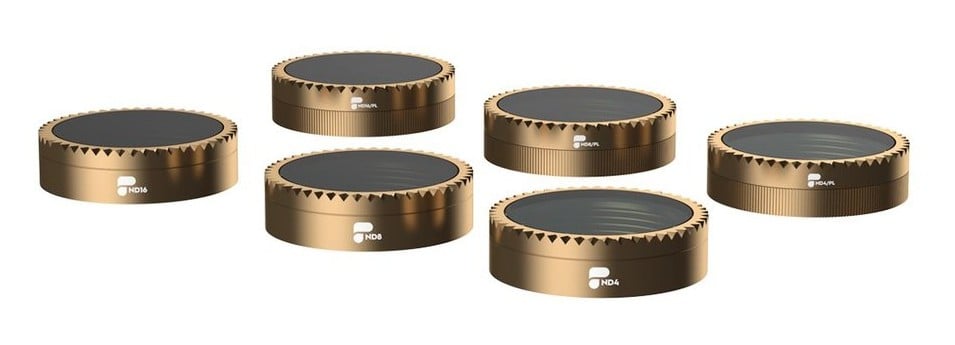
On the one hand, PolarPro’s DJI Mavic Air neutral density filters help reduce the shutter speed so video recording has an ultra-smooth, cinematic feel. On the other hand, PolarPro’s Vivid Collection of neutral density/polarizing filters help reduce glare and boost the contrast of the sky.
Amongst all the ways that this filter pack can enhance photos and videos, it’s important not to lose focus on the impeccable construction. After all, you want to give a gift that will keep on giving, not one that falls apart in short order.
Since PolarPro is dedicated to manufacturing the best filters, you get a product that is ultra-light (just 0.59 grams) thanks to its airframe construction, yet is packed with features like production-grade multi-coated glass with eight layers of coatings on each side. You can see these filters in action in the video above.
And since these filters thread on in place of the stock lens bezel that comes with the Mavic Air, installation is a breeze and you get better gimbal balance, too.
Throw in free shipping and a lifetime warranty, and you have a recipe for the ideal gift this holiday season!
Learn more about the PolarPro DJI Mavic Air Filter Cinema Series 6-Pack
Parrot Teleprompter V2 Kit by Padcaster
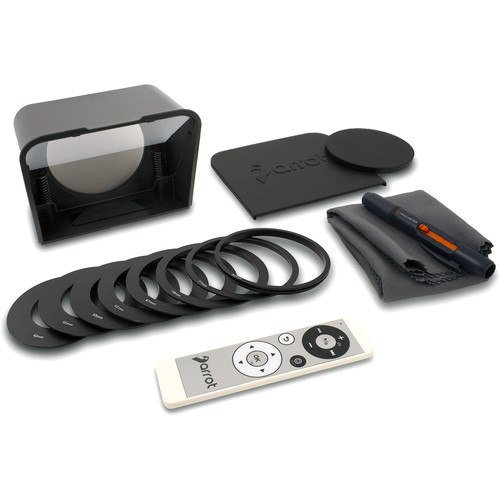
Photographers these days aren't just taking still photos. Instead, they're creating video content like vlogs to build a following on platforms like YouTube.
To make the videos that the photographer on your list creates even more professional, the Parrot Teleprompter V2 Kit is an ideal Christmas gift.
The teleprompter uses an iOS or Android device and the Parrot Teleprompter app to turn your phone into a teleprompter virtually anywhere. It's simply crazy how portable this thing is!
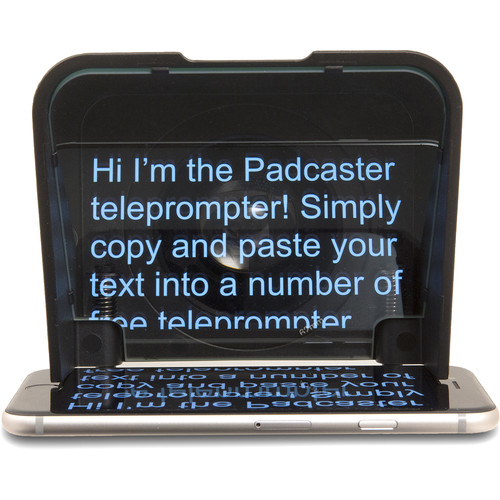
The 70/30 beamsplitter glass on the teleprompter then clearly displays the text that's to be read. Never again will your loved one have to fear messing up what they want to say on camera!
With quick and easy setup, a variety of step-down rings to adapt the teleprompter to most threaded lenses, and a Bluetooth remote that allows you to start, stop, and adjust the speed of the scroll, this rig has everything your favorite photographer will need to say what they want to say in their videos in a professional manner.
Learn more about the Parrot Teleprompter V2 Kit
Excire Search Pro AI Plugin for Lightroom

Ask any photographer what they love most about Lightroom, and my guess is that a large percentage will say the cataloging and organizational tools that the program offers.
But follow that up with a question about the worst thing in Lightroom, and you’ll likely get a lot of answers along the lines of “manually tagging my photos really sucks.”
If only there were something to address that problem quickly and easily…
Lucky for the photographer on your holiday shopping list, there is. It’s called Excire Search Pro.
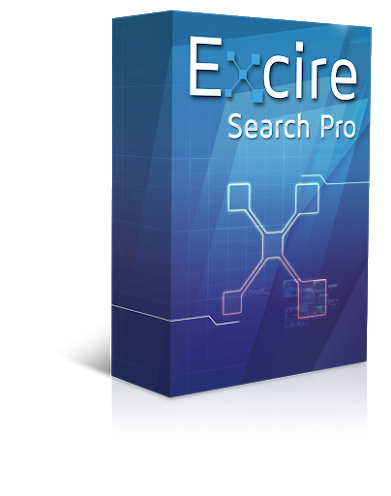
Since we apparently already live in the future, Excire Search Pro uses artificial intelligence to scan each photo that’s uploaded to Lightroom and tag them according to what’s found in the image. Excire Search Pro has a set of more than 500 keywords that can be transferred into a photographer’s Lightroom catalog, making it the easiest way to tag photos.
For example, if there’s a photo of a mountain scene on a cloudy day with a cabin in the foreground, Excire Search Pro will tag that image with “mountain,” “clouds,” and “cabin.” It’ll even determine the predominant color in the shot and add that tag, too. Not bad, right?!
Excire Search Pro offers an expanded keyword transfer function, too, making it the perfect partner for professional photographers that have tens of thousands of images that need to be highly organized for easy image searching.
So, let’s say that you need a photo of a river at sunset with yellow as the predominant color. Excire Search Pro makes it incredibly easy to find that specific kind of photo.
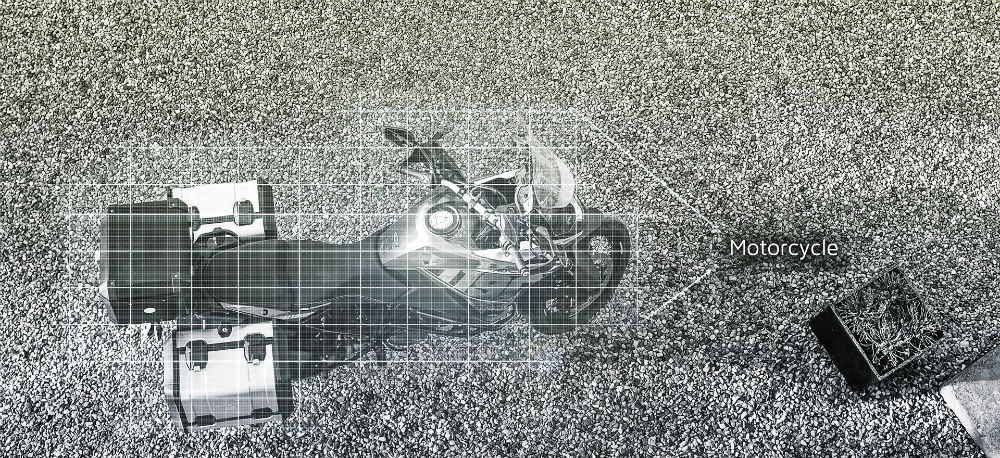
As if the technology behind Excire search isn’t impressive enough, consider this - these guys are passionate about imaging and want to make a positive mark on the community. That’s why they set aside a small portion of the proceeds of each Excire Search pro purchase into a fund to support non-profit organizations throughout the U.S.
That makes the gift of Excire Search Pro not just a great idea for the photographer in your life, but for people around the country, too!
Learn more about Excire Search Pro
Sew Trendy Libby Bodysuit
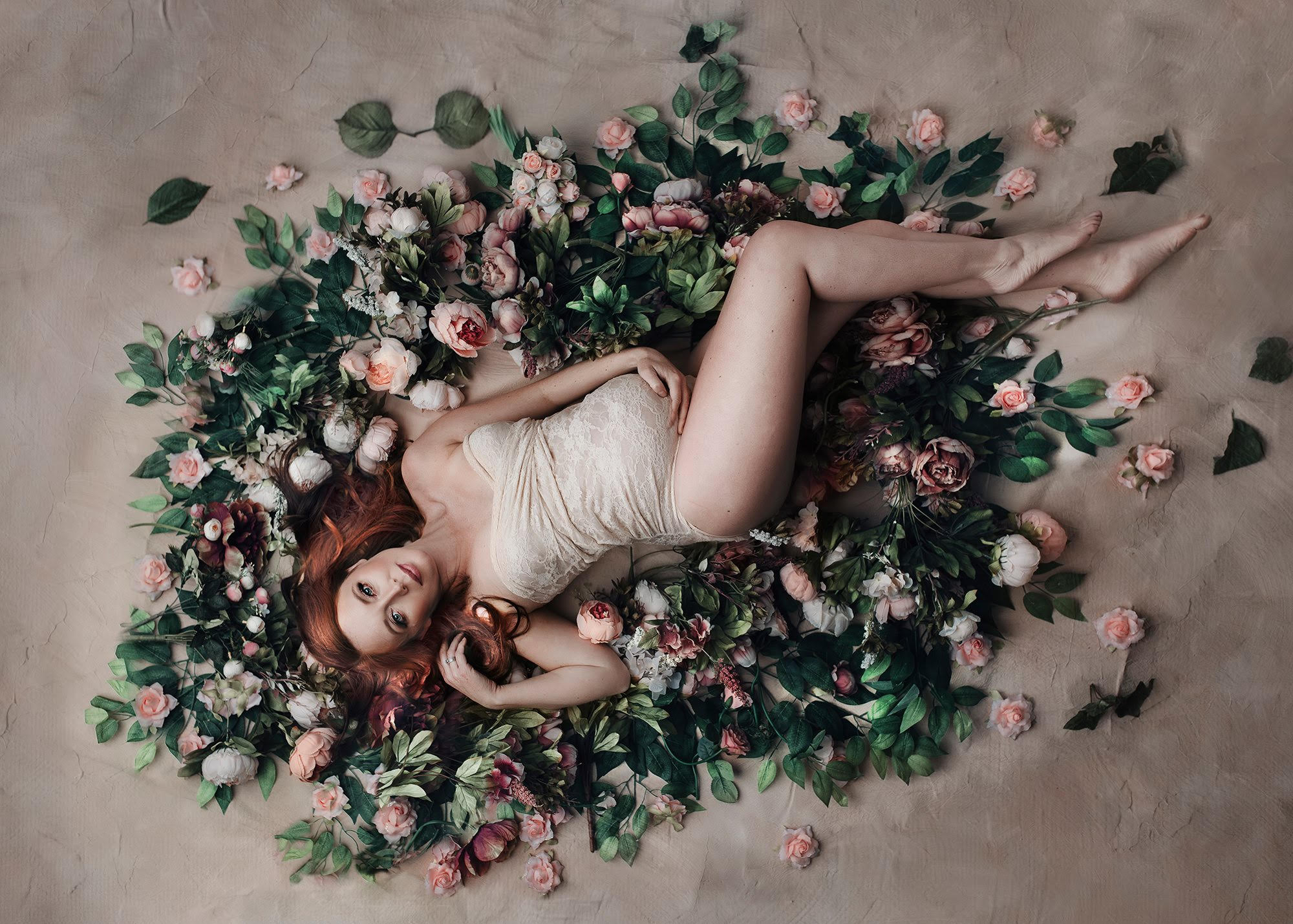
A perfect gift for the maternity or boudoir photographer on your holiday shopping list is the Libby Bodysuit by Sew Trendy Fashion & Accessories.
This all-lace strapless bodysuit is simple, yet elegant, and will complement any maternity or boudoir portrait nicely.
The soft stretch bodice offers a comfortable fit, as does the adjustable sweetheart top. The bodysuit is double-layered for full belly coverage as well.
With soft elastic in the legs, this bodysuit will fit snugly, but won’t ride up.
Better still, Sew Trendy offers this gorgeous bodysuit in 40 colors and various sizes from XXS-XXL, so no matter what, your favorite photographer can find the exact look they want!
Learn more about the Sew Trendy Libby Bodysuit
Bonus Gift Idea: Petzl ACTIK CORE Headlamp
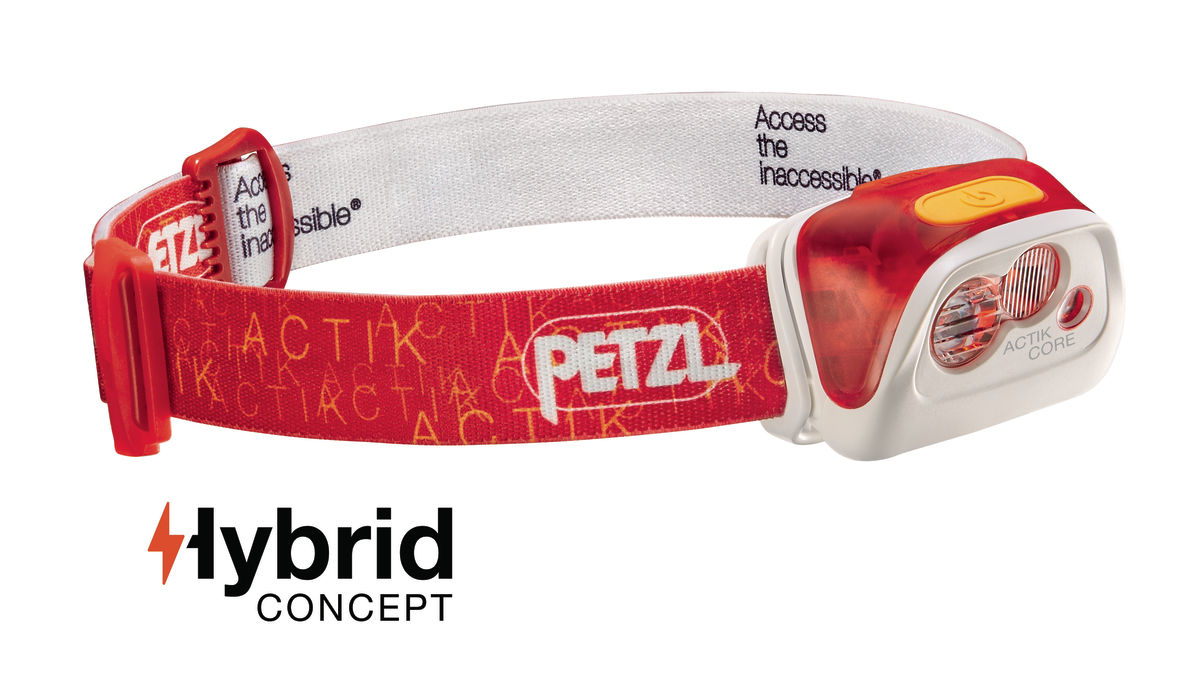
For the photographer on your list that head’s out early and stays out late to shoot, a bright yet small headlamp is a must-have.
That’s why the Petzl ACTIK CORE Headlamp is such a great gift idea for photographers this holiday season.
This little guy puts out an impressive 350 lumens, so your favorite photographer can see exactly what’s in front of them.
There’s two beam patterns - wide and mixed - so photographers can select whichever one meets their needs, and the option to use red lighting prevents blinding others in the party (and from interfering with images, too). Of course, the standard beams can be used to light paint to create awesome nighttime images with a beautifully illuminated foreground.
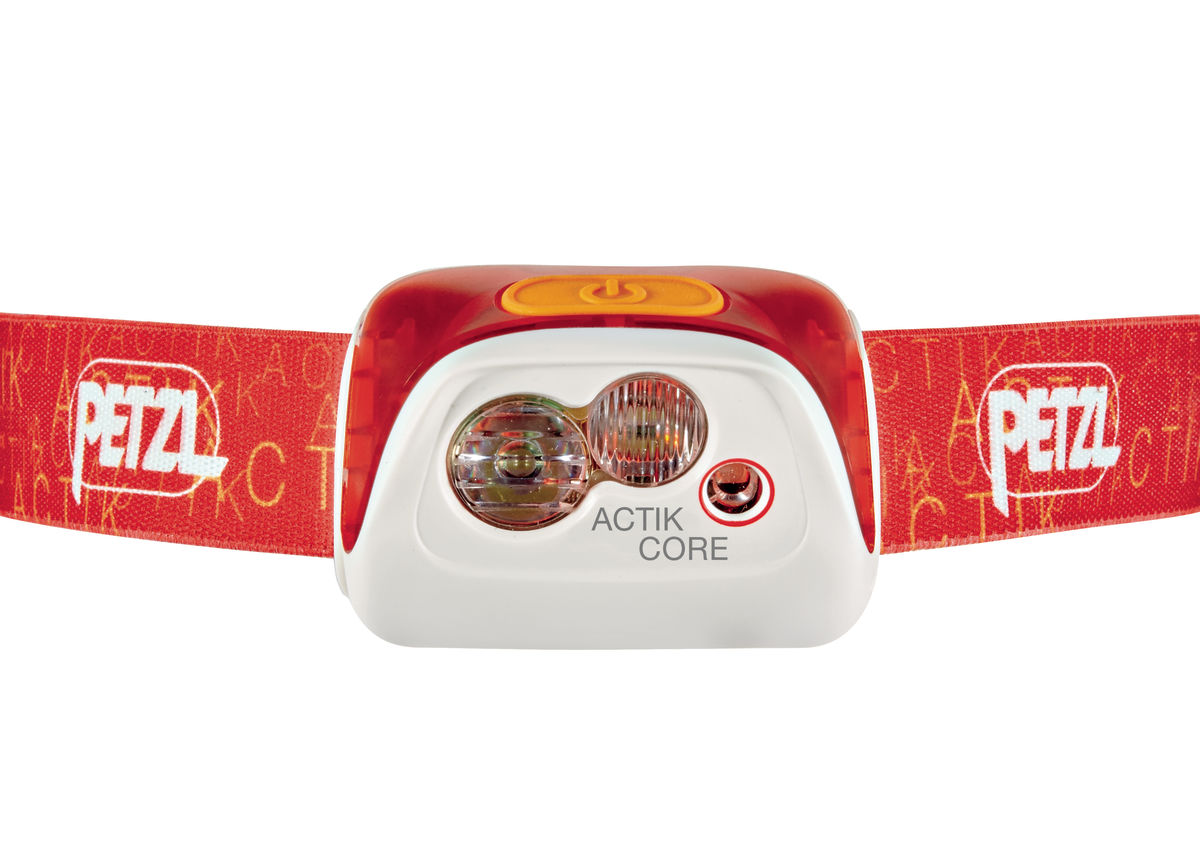
This headlamp uses Petzl’s CORE battery technology, which means a couple of important things…
First, it’s rechargeable, and second, you get long-lasting performance between charges.
Better still, the CORE battery can be charged via USB port for those occasions when actual plugs are at a premium. This awesome headlamp can also use standard batteries without the need for an adaptor, too.
If you’re looking for a practical and functional gift for a photographer, this headlamp is it!
Learn more about the Petzl ACTIK CORE Headlamp
We Recommend
Top 10 Gifts for Photographers Under $2,500 - 2018 Edition
 Image Credit: Linda Raymond via iStock
Image Credit: Linda Raymond via iStock
One of the great things about shopping for a photographer is that there are virtually endless possibilities of gifts you can get them.
That's especially true with a budget of $2,500...
From computers to cameras, lenses to drones, printers to giant canvas prints, and lots of things in between, you can give a thoughtful and functional photography gift this holiday season.
Here are our top picks for gifts for photographers under $2,500.
Lensfinder

Let’s face it - photography gear can be expensive. Really expensive.
That’s a problem year-round, but when you’re holiday shopping and have tons of gifts to buy, it’s even more difficult to justify getting your loved one the $1,000 lens that they really want.
Fortunately, Lensfinder can help in more ways than one.
On the one hand, you can find great deals on pre-owned camera lenses at Lensfinder.
That means that you can get a truly top-notch lens for the photographer in your life but do so without busting your budget. It’s a win-win!
On the other hand, if you have some old lenses that you don’t use anymore, you can list them for sale on Lensfinder. When the lens sells, you can use it for holiday spending money for the photographer in your life.
 Image Credit: xxmmxx via iStock
Image Credit: xxmmxx via iStock
The best part? You can list your lenses for sale for free.
There’s only a transaction fee (just 3.99%) when the lens sells (with a maximum fee of $500). If your lens doesn’t sell, there’s no charge at all!
And for peace of mind, the Lensfinder platform has advanced fraud filtering for both buyers and sellers as well as mediation services in the event that there’s a problem.
Payments are made and received via PayPal, so you can rest easy knowing that the transaction is safe and secure.
In other words, Lensfinder is the ideal solution for your holiday shopping needs. Either use it to find a loved one a killer lens or use it to sell old gear to pad your pockets for holiday spending!
Nikon D750
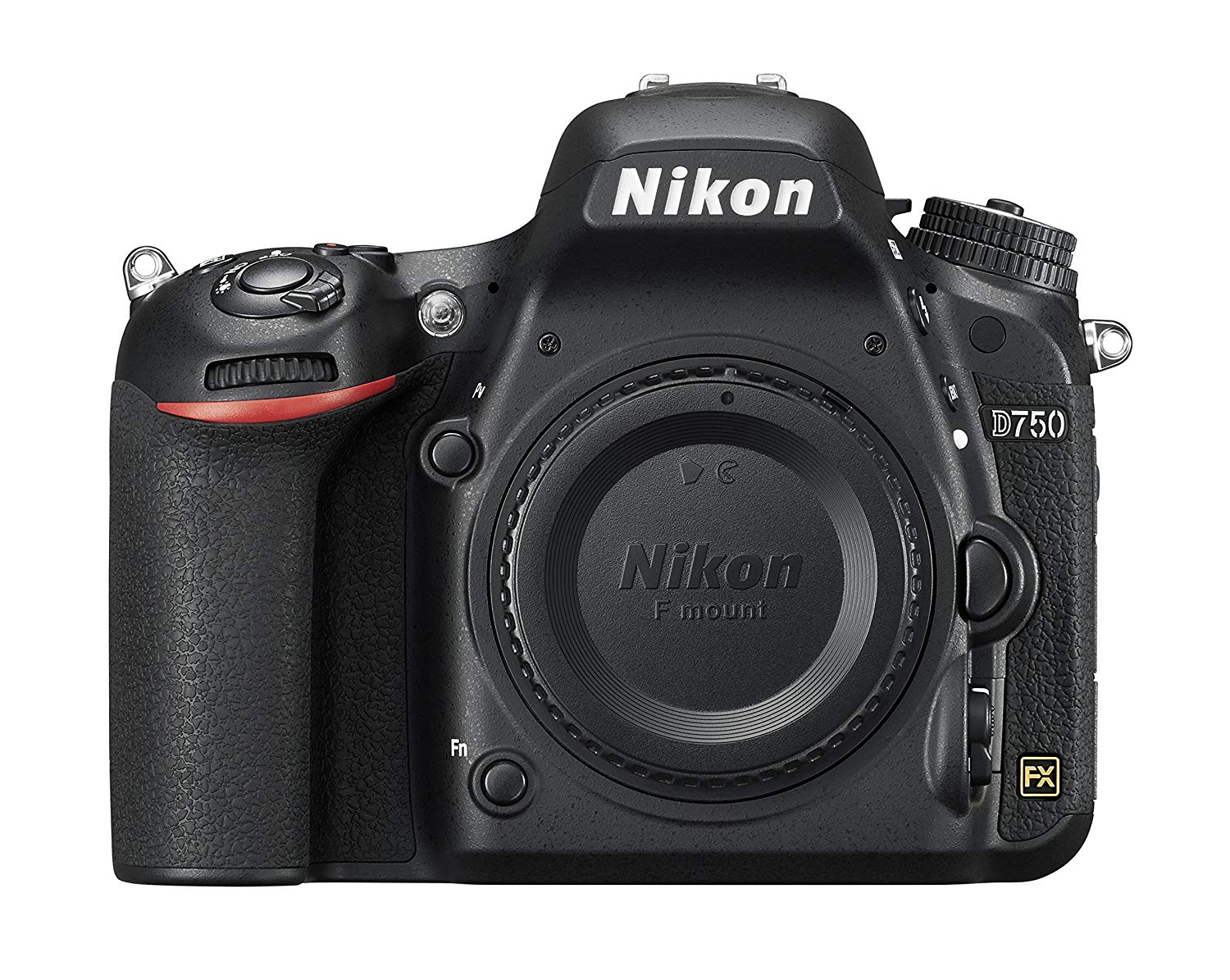
One of the things that many photographers don’t like about photography is that cameras can be quite spendy, especially for higher-end full frame rigs.
But there are ways that you can help your favorite photographer get the gear upgrade they want by buying previous models of top-shelf cameras.
The Nikon D750 is the perfect gift idea this holiday season not only because it offers great performance, but because it has been updated with new models a few times now, it can be found for a good price.
In fact, Paul’s Photo has D750s in stock for hundreds below the $2,500 mark. You can opt for the camera body by itself for just $1,699.99 or you can opt for the camera and a 24-120mm lens for $2,199.99. That means you can give the gift of professional-grade gear without even coming close to your $2,500 budget.
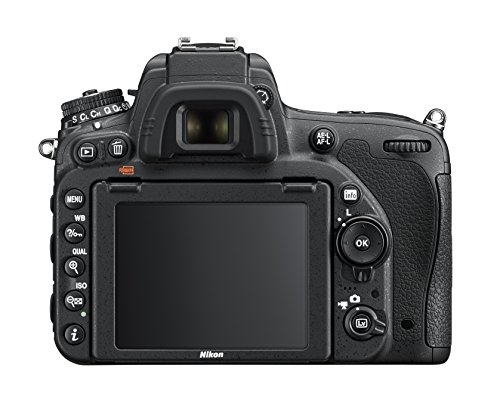
The 24-megapixel sensor on the D750 is superb, with an excellent level of sharpness and detail as well as impressive noise control, even when shooting at the camera’s maximum extended ISO, which is a healthy 51200.
Additionally, the D750 has a big 3.2-inch LCD with 1.229 million dots, giving photographers a bright, detailed view of the images they take. To assist in high-angle and low-angle shooting, the D750’s LCD also tilts to give photographers a better view.
There’s headphone and microphone ports for photographers that want to pursue videography - which they can do in full HD at up to 60p - and the body is weather-sealed to protect against rain, snow, dust, and other environmental elements that you definitely don’t want getting into the camera. Speaking of the body, it’s made of magnesium alloy and carbon fiber, so it’s strong and durable while also being lightweight.
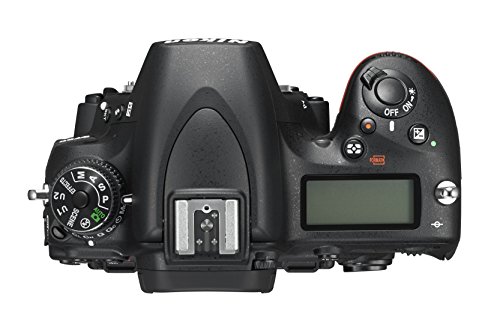
For photographers that need a fast camera to capture action, the D750 is a solid choice with a quick and responsive 51-point autofocus system and a continuous shooting speed of 6.5fps.
And don’t think that this camera is just for professional photographers, either.
Though it has many professional features, the D750 is certainly a camera that enthusiast photographers will appreciate.
That’s due in part to the fact that the D750 has features like Wi-Fi for quick sharing of photos as well as a layout that’s familiar to Nikon shooters that got their start on cameras like the Nikon D7200.
In other words, whether the photographer on your list is a seasoned veteran that needs a good second or third camera or an enthusiast that wants to upgrade from an APS-C camera to a full frame, the D750 is a great choice that’s packed full of features.
And, as noted earlier, you can find D750s for a great price at Paul’s Photo!
Learn more about the Nikon D750 Body Only or the Nikon D750 Kit with a 24-120mm Lens
DJI Mavic PRO Platinum MaXX Mod Kit
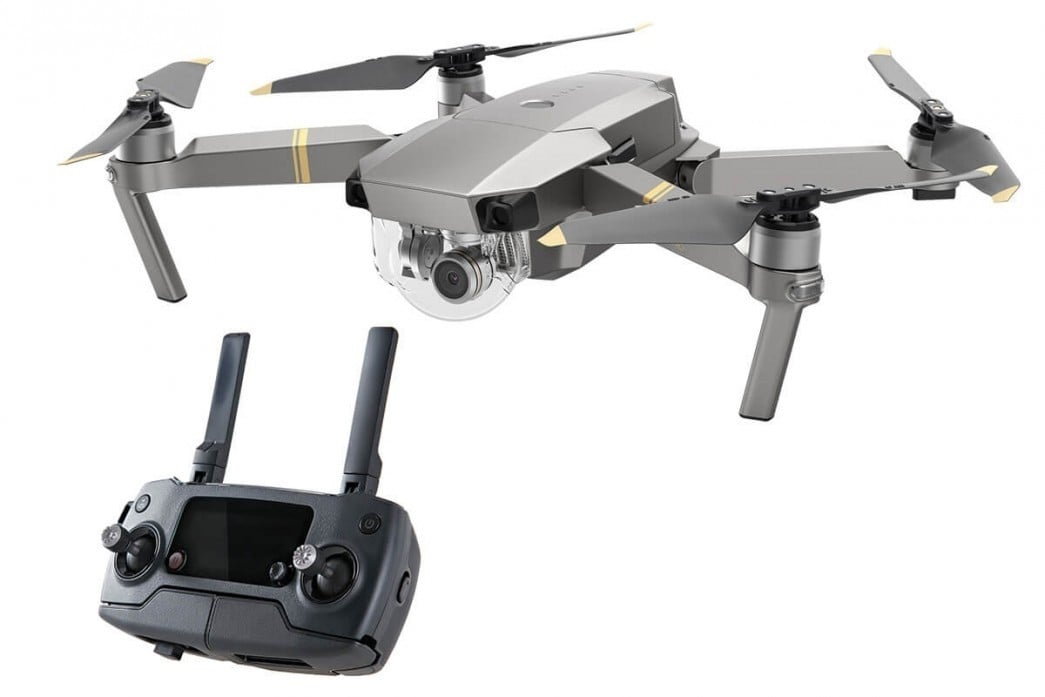
For serious drone pilots, the DJI Mavic PRO Platinum MaXX Mod Kit from Drone World is an ideal holiday gift idea.
This drone has been meticulously designed and tested to ensure the best flying experience possible. With advanced technology, this is one of the most capable drones on the market today.
That’s thanks in part to the MaXX Mod Kit’s world-first Hot-Swap antenna system. The system includes three custom-made antennas that allow you to fly with a stronger signal for further distances because these antennas gain up to four times more coverage than stock antennas. The carbon fiber propellers also aid in achieving better balance, improved acceleration, and faster speeds.
But this drone kit isn’t just about flying faster and further. It also includes a Thor Super-Charging Station that charges the Mavic Pro’s batteries four times faster than the stock charger. What’s more, you can charge four batteries and one remote at the same time so you spend less time waiting for your drone to charge and more time actually flying it.
Additionally, this kit includes all the accessories that you need to make the most of having a drone. That includes a backpack and a hard case for transporting your gear, L-series lens filters for taking more pleasing photos and videos, a sunshade for viewing the drone’s live feed in bright conditions, a memory card, a battery bank, prop guards, and much, much more.
In other words, the DJI Mavic PRO Platinum MaXX Mod Kit is a drone enthusiast’s dream!
Learn more about the DJI Mavic PRO Platinum MaXX Mod Kit
Epson SureColor P800 Printer
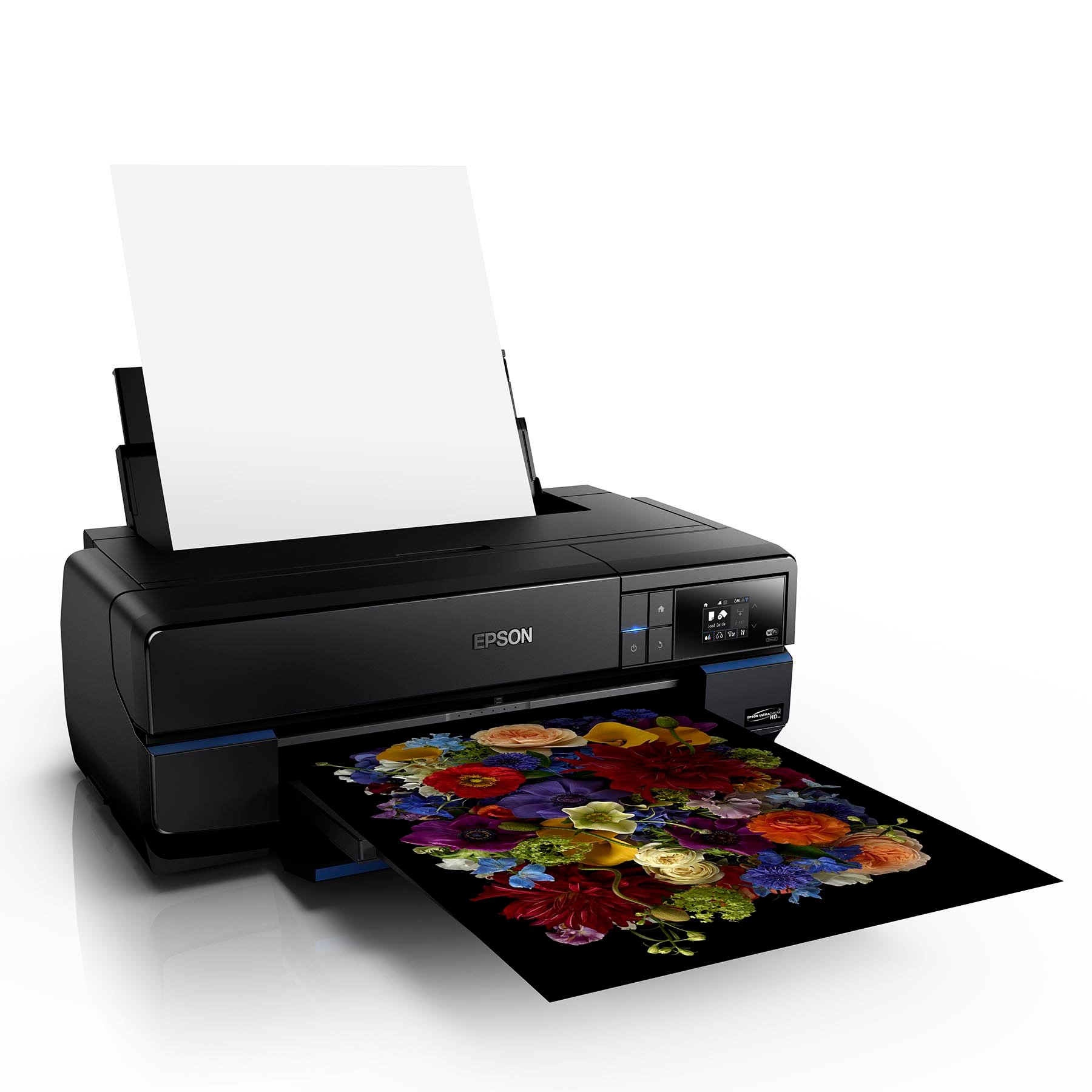
The final piece of the puzzle for creating gorgeous photos is printing them, and there is no better printer for doing so at home than the Epson SureColor P800.
The SC-P800 was designed for unparalleled print quality. It uses Epson’s UltraChrome HD inks that ensure printed images have both vivid colors and unmatched density of blacks, as well as a significantly improved longevity.
What’s more, the photographer on your shopping list this year can print media up to 17-inches wide whether that’s on poster board, photo paper, or fine art paper.
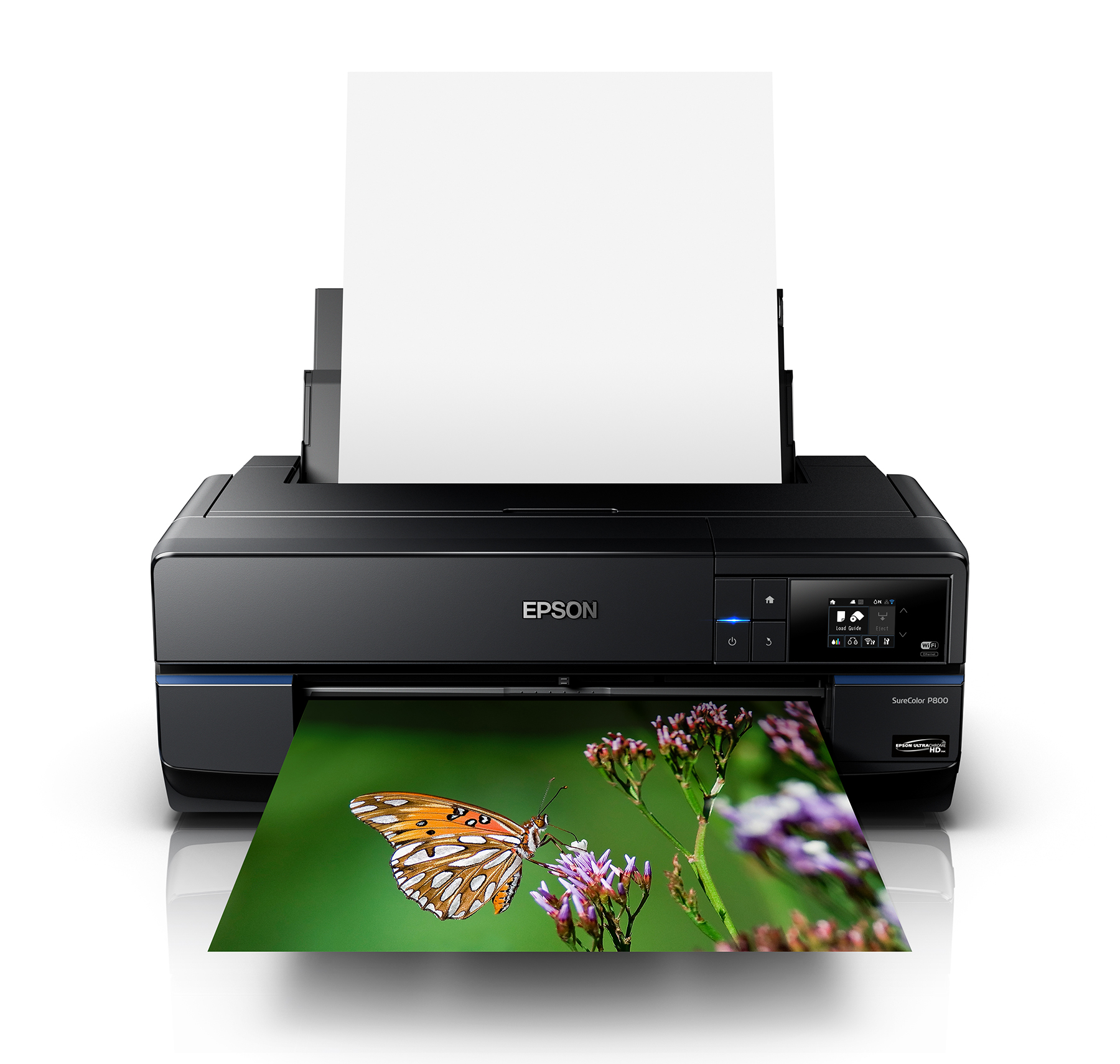
Does your favorite photographer love black and white photos? The SC-P800 delivers on that front with a special black-and-white mode for beautifully toned professional-looking prints with three-level black ink technology.
What’s more, they won’t run out of ink anytime soon with the SC-P800’s production-capacity cartridges that hold 80ml of ink each.
“While I’ve been using this printer for a short period of time, I’ve noticed very quickly what cards Epson holds over my Canon photo printers. This thing rocks!” - Alex Schult, Founder of PhotographyTalk
Something else photographers will appreciate about this printer is that it has complete connectivity options. That includes Apple AirPrint as well as Google Cloud Print. The printer also supports USB 2.0, wireless n3, Wi-Fi Direct3, and 100mbit ethernet.
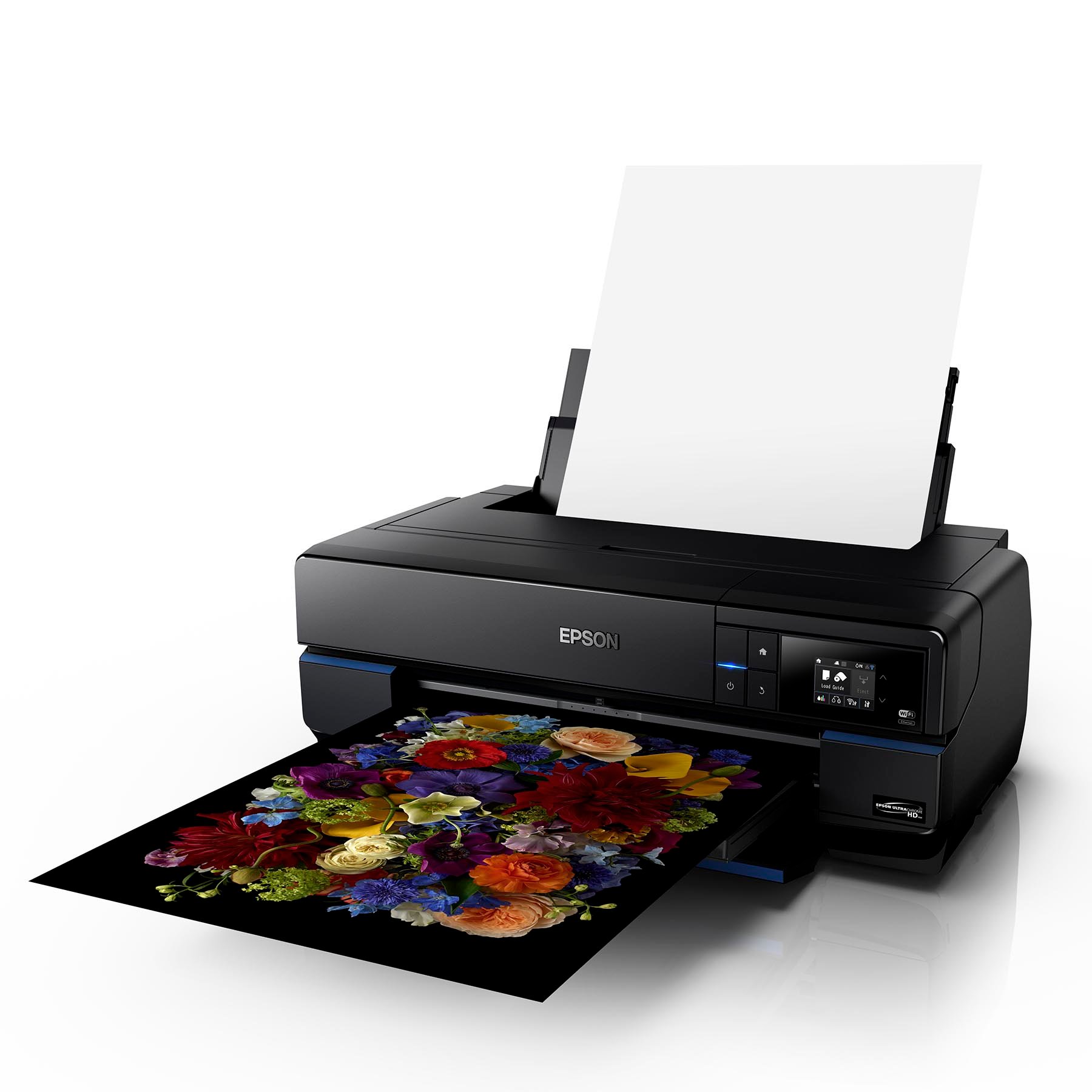
This printer also features Epson’s Print Layout utility, which is a standalone application for both Windows and Mac. Print Layout gives photographers a step-by-step selection of frequently used printing options, including color settings, layout, and printer selection that makes printing quick and easy. Just what photographers want!
Add to that an intuitive interface with an easy-to-use 2.7-inch tilting touch panel color LCD, a compact design that doesn’t take up too much space, a sheet feeder for photo or matte media, and the option of adding a 17-inch-wide roll paper adapter for creating panoramas of up to 10 feet in length, and you have the all the makings of a top-of-the-line printer that any photographer would love to receive this holiday season.
Learn more about the Epson SureColor P800 Printer
CanvasHQ Canvas Prints
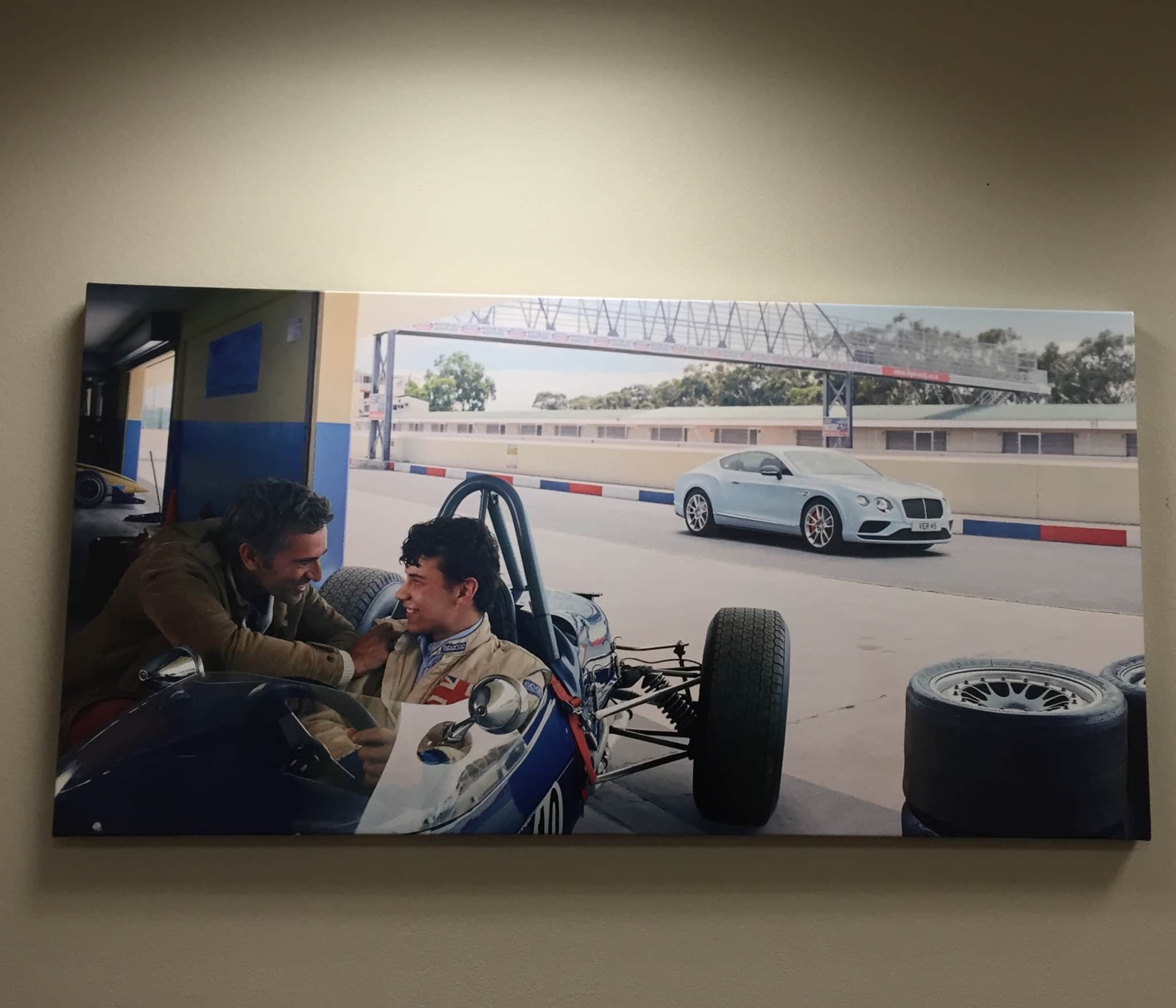
What's so great about giving the gift of a canvas print to a photographer is that they can have their own work or the work of someone else printed.
Not only that, but companies like CanvasHQ work with you to create custom-sized prints that will fit perfectly wherever your favorite photographer wants them to hang.
The problem, of course, is that many online printing companies are just plain bad, so a lot of people end up giving prints that either wear out over time or just look terrible right from the start.
That's not the case with CanvasHQ, though...

CanvasHQ uses only the finest canvas and inks to create prints that have ideal color, contrast, and vibrancy.
What's more, they handcraft the frames behind the canvas using kiln-dried wood that's true and straight.
That means that their canvases don't just look like a million bucks, but they're also constructed to last a lifetime.
Speaking of lifetime, their prints come with a lifetime guarantee from fading, cracking, and bubbling. There's also a 30-day money-back guarantee in case you don't fully love your print.
Talk about peace of mind!
And with a budget of $2,500, you can order the photographer on your list a whole house worth of awesome prints!
Learn more about CanvasHQ Canvas Prints.
Holdfast Roamographer Duffle Bag, Camera Bag, and MoneyMaker
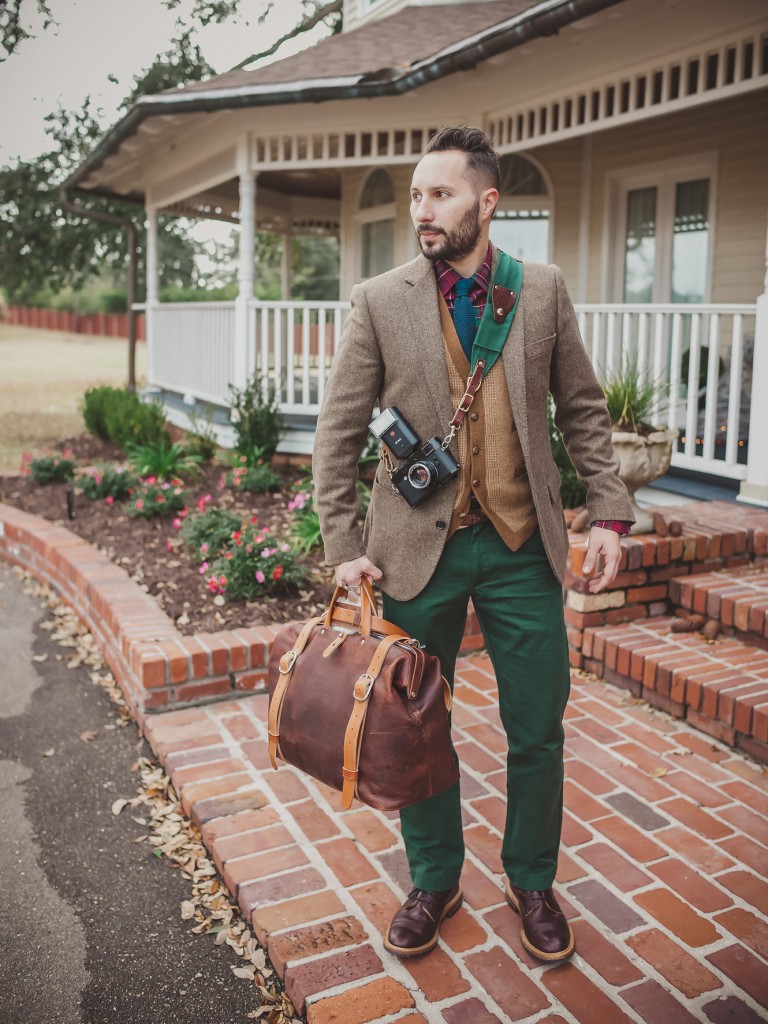
This might just be the ultimate photography setup...
If you want to impress a photographer, go ahead and give them a bundle of products from Holdfast.
Holdfast's venerable Roamographer bags not only look incredible, but they're also incredibly functional, too.
Give them the Roamographer Duffle Bag for those long weekends out taking photos.
The duffle is handcrafted out of American Bison hide and has a shearling lined shoulder strap for easy carrying. It's the perfect bag for a quick trip, and with a metal frame that keeps the bag open during packing and unpacking, two boot bags to keep your shoes away from your clothes, and tons of pockets for small items, it'll become their favorite getaway bag.
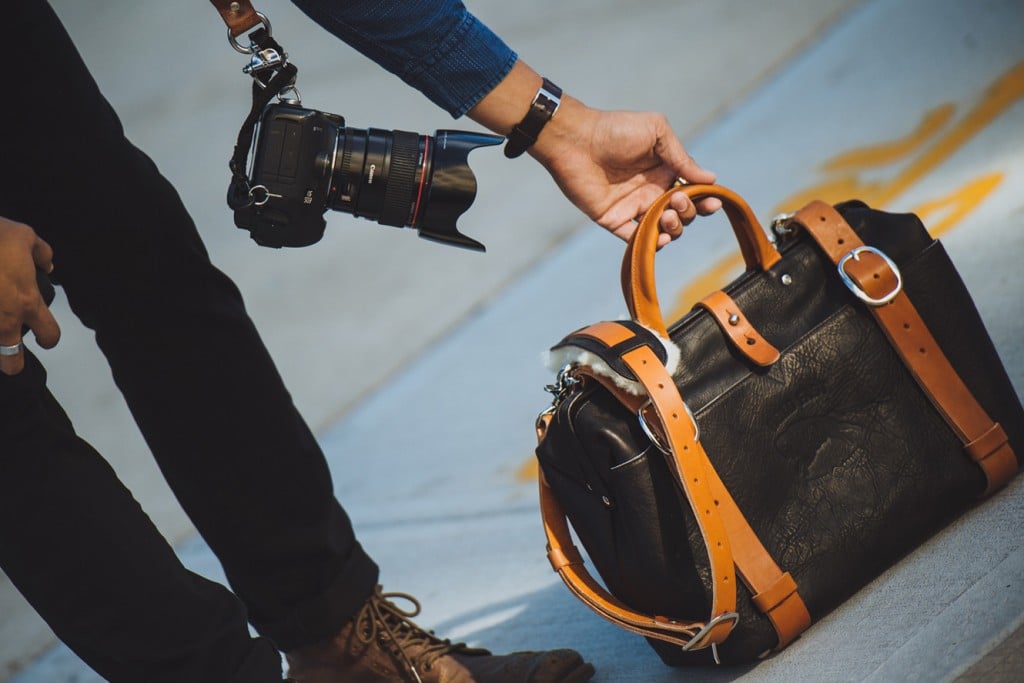
To carry their gear, you can include a Holdfast Roamographer Camera Bag as well.
Like the duffle, the camera bag has a vintage aesthetic but with modern features.
The camera insert cradles each camera item, ensuring their safety during transit.
The carrier straps accommodate a tripod for easy carrying, and the shearling lined shoulder strap makes it easy on your favorite photographer's shoulder to carry the bag, too.
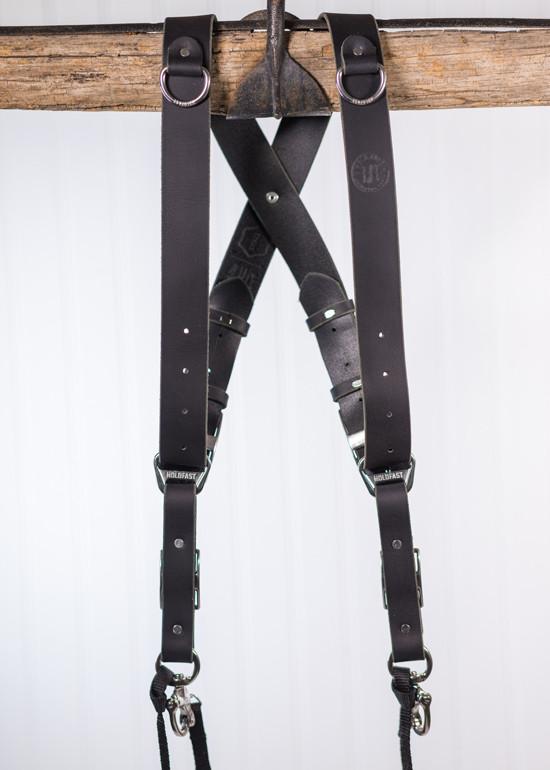
While you're at it, you can throw in a Holdfast MoneyMaker dual camera system.
The dual straps mean that a photographer can carry up to three cameras in ultimate comfort, and with their gear right at their fingertips for safe carrying.
What's more, for quick shots, their cameras are easy to reach, making the MoneyMaker just about the most functional gear you could give a photographer this holiday season.
And, like all other Holdfast products, the MoneyMaker looks like a million bucks.
You can pick up all three of these products and still have money to spare with a $2,500 budget!
Learn more about Holdfast products.
Microsoft Surface Book 2 Intel Core i7, 16GB RAM, 512GB SSD Storage
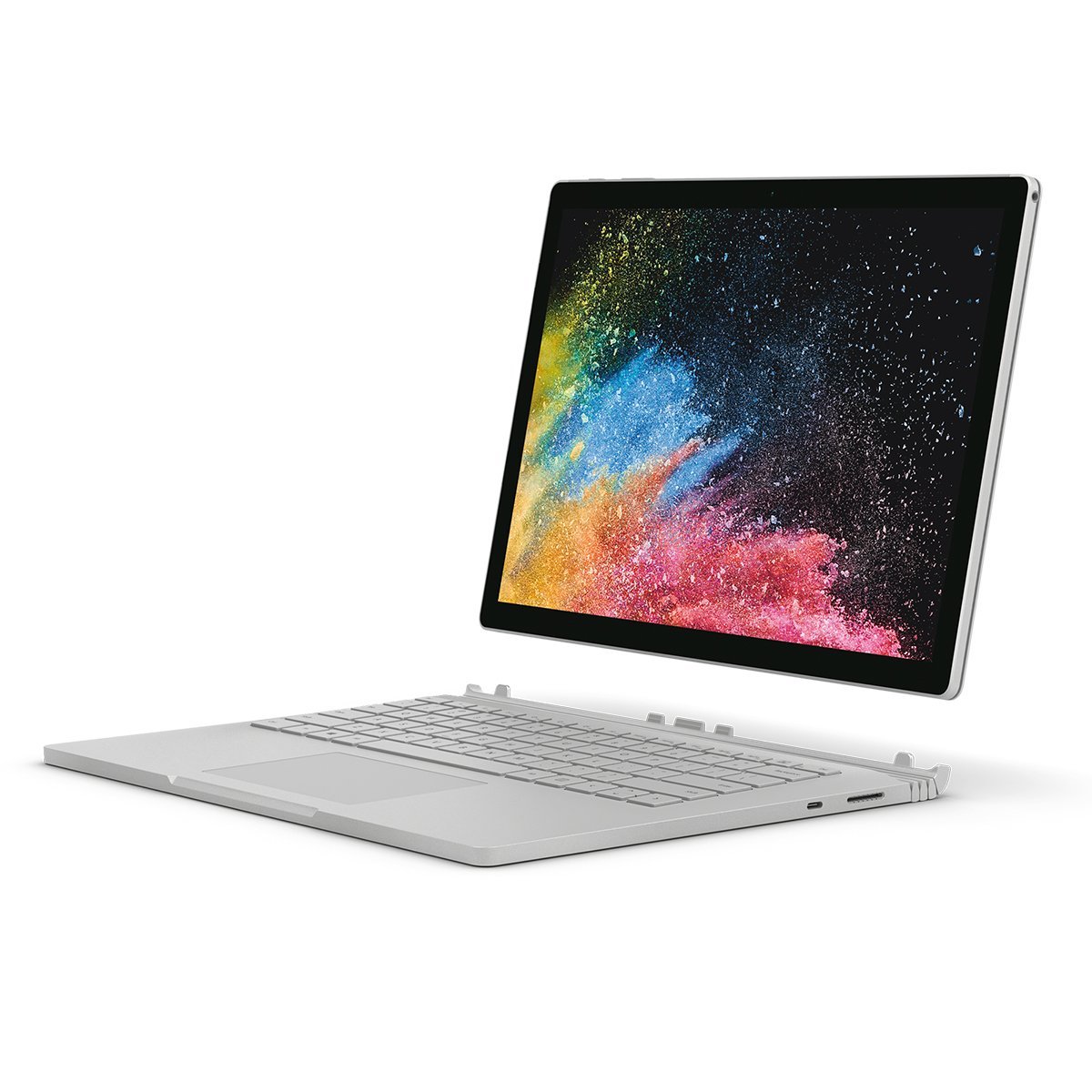
Microsoft's second-generation Surface Book is a great gift idea for photographers because it's such a versatile and functional computer.
For starters, the Surface Book 2can be used as a traditional laptop or you can fold the screen back and use it as a tablet.
The gorgeous 13.5-inch PixelSense Display offers a 3:2 viewing ratio that's perfect for editing photos, and with improved glass, better sensing elements, and improved touch accuracy over its predecessor, this thing is the height of functionality.
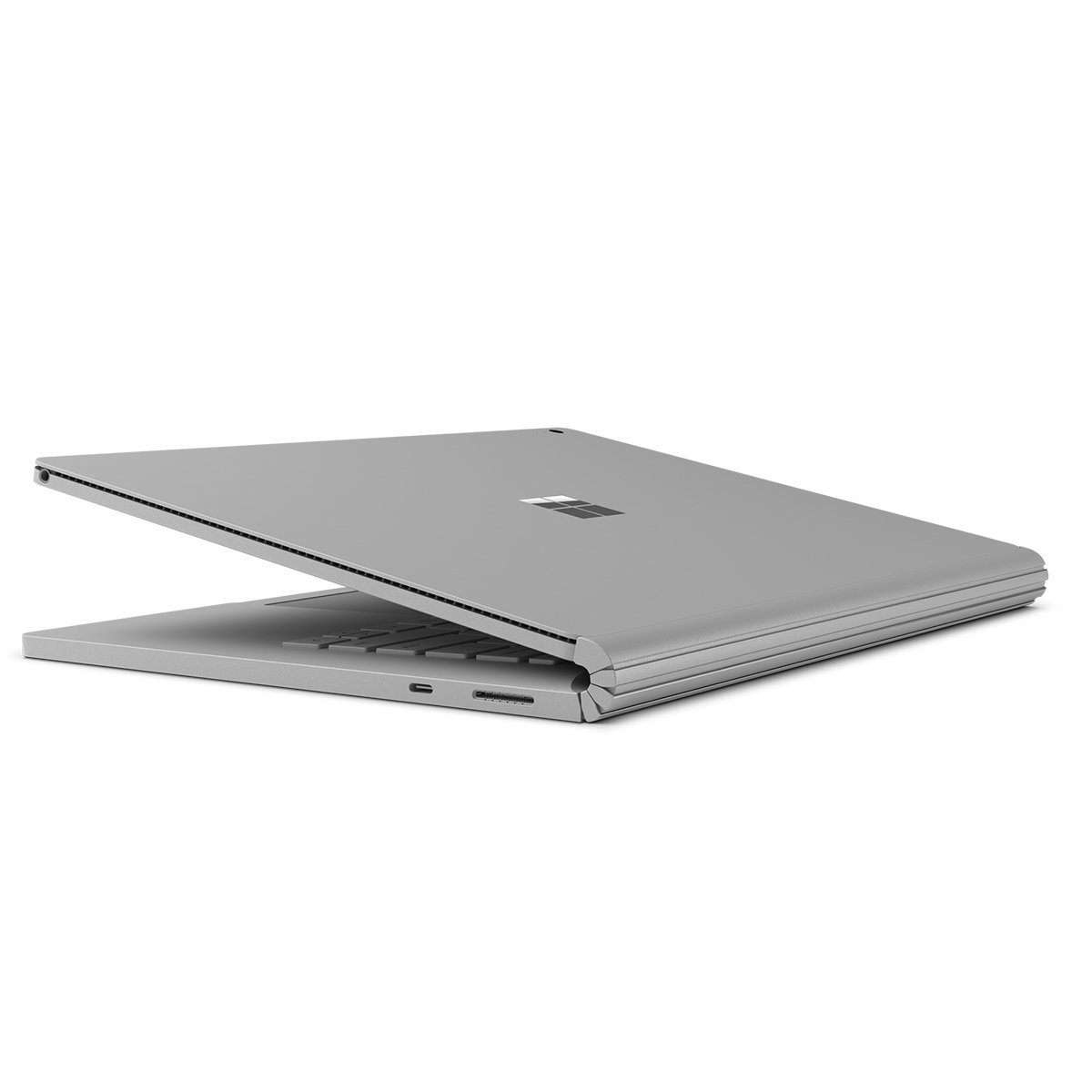
The Surface Book 2 also got an upgrade in the processor and GPU departments, so it can handle more tasks more quickly.
The improved graphics card selection gives photographers better performance when editing videos as well.
Not all photography tasks require a huge desktop computer, nor do they require a traditional laptop.
That's what makes the Surface Book 2 such a great gift idea for photographers...
They can use it in laptop mode when editing photos, switch to tablet mode to quickly take notes at a client meeting, and continue to switch back and forth as they need throughout the day.
Plus, the Surface Book 2 is available for well under $2,500, so you'll have money left to spend!
Learn more about the Microsoft Surface Book 2
Canon 6D Mark II
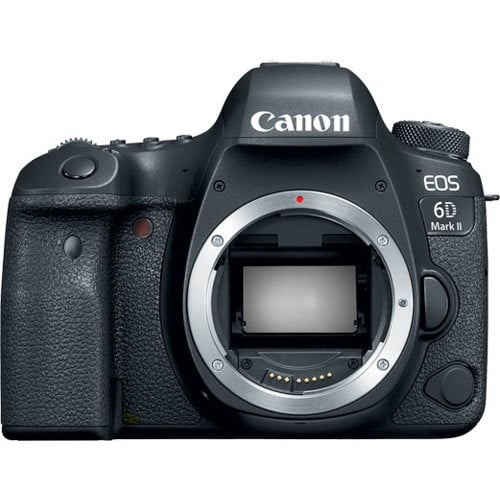
If the photographer you're shopping for is a Canon fan, and they want to upgrade their shooting experience, a Canon 6D Mark II is a great choice for doing so.
Priced at $1,999.99 at Paul's Photo, the 6D Mark II won't bust your budget, yet it provides tons of features that make it such a great camera.
It has a new 26.2-megapixel full frame sensor that offers excellent resolution and a wide dynamic range. That means photographers can take photos that have brighter highlights and deeper shadows without the risk of losing detail in those areas.
Additionally, the 6D Mark II has a massive ISO range that extends to 40,000 natively and 102,400 in its expanded range.
That means that this camera offers excellent low-light performance.
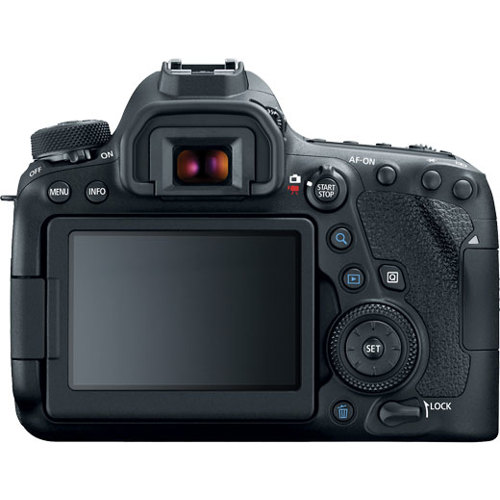
And though this camera's LCD is on the smallish side, it folds out, is fully articulating, and is touch-enabled.
Not only does that give photographers more leeway when composing low-angle and high-angle shots, but the touchscreen capability also improves the functionality of the camera.
Add in a solid autofocus system, up to +/- 5 EV exposure compensation, 6.5fps burst shooting speed, and features like Wi-Fi, Bluetooth, NFC, and GPS, and you have the makings of a highly capable, modern camera that will perform well for years and years to come.
Learn more about the Canon 6D Mark II
Sony Alpha a7III With 28-70mm Lens
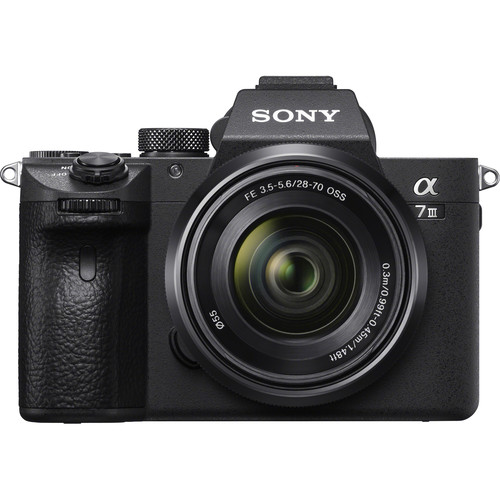
There's no doubt that Sony makes some of the best cameras in the world - I can attest to that fact given that I own one.
So why not impress the heck out of the photographer on your holiday shopping list with an awesome Sony a7III with a 28-70mm lens?
This camera might be small and lightweight, but it packs a mighty punch with a 24-megapixel full frame Exmor R backside illuminated CMOS sensor.
Paired with that is a BIONZ X image processor and front-end LSI for beautifully fast performance.
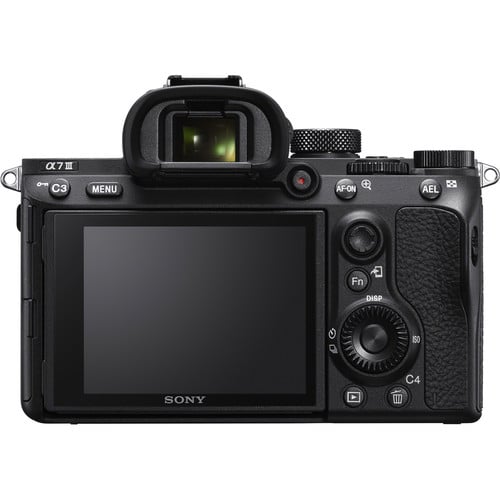
Speaking of performance, it's tough to beat the a7III's autofocus system, which sports a whopping 693 AF points.
Add to that 10fps shooting, UHD 4K video capabilities at 30p, and 5-axis SteadyShot INSIDE stabilization, and you have the makings of one incredible camera...
Of course, this Sony has more tricks up its sleeve with a 2.36-million dot Tru-Finder OLED electronic viewfinder, a 922k-dot tilting LCD with touchscreen capabilities, Pixel Shift multi-shooting, built-in Wi-Fi and NFC, and a weather-sealed body.
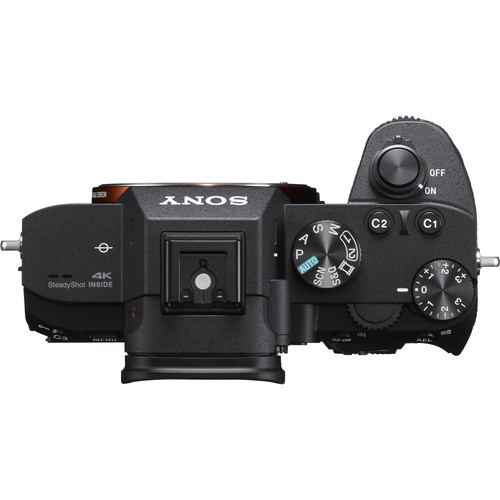
Trust me - this camera is an awesome rig that any photographer would appreciate getting this holiday season.
But what makes it even better is that an FE 28-70mm f/3.5-5.6 OSS lens is part of the deal.
If you ask me, one of the most versatile lenses is the 28-70mm because it gives you all the range you need to work from wide-angle to short telephoto.
Perhaps best of all, this gift idea is $2,199.99, so it's not even close to your $2,500 budget!
Learn more about the Sony Alpha a7III with 28-70mm lens
ProMediaGear TR424L Carbon Fiber Tripod
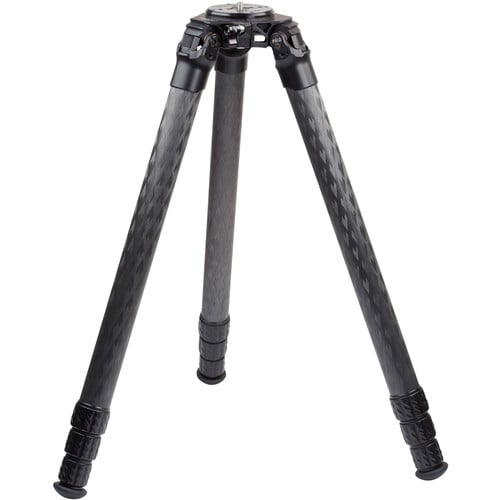
When it comes to the best tripods on the market, it's tough to argue against ProMediaGear.
These professional-grade tripods are built with versatility and durability in mind.
I own this particular model, and I can tell you without a doubt that no other tripod is going to match the quality of this thing.
It can hold up to 125 pounds of gear, thanks in part to its thick carbon fiber legs. That's a ton of gear!
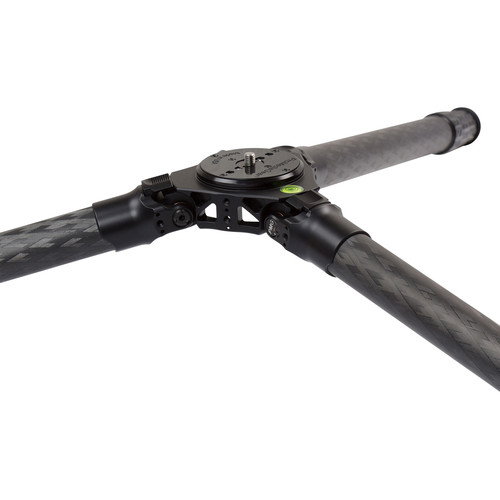
The legs also have an independent spread and three-position angle locks, that way you can adjust the tripod to be level no matter the terrain.
The quarter-turn twist locks are a favorite feature of mine because they allow you to set up the tripod in short order, that way you don't miss must-have shots.
I photograph a lot of landscapes, so I appreciate the fact that this tripod has big rubber feet to give it more stability, even on soft soil. There's even metal spikes stored inside the bottoms of each leg for added grip when need be!
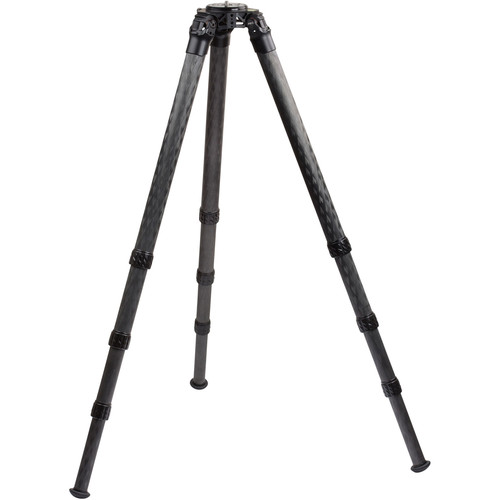
When folded, the TR424L is just 26.3-inches tall. It's not exactly lightweight, but at least it's small enough to fit into your camera bag.
This rig also offers tons of versatility in terms of height.
From a low of just 6.7-inches to a high of 77-inches, you can frame up just about any shot imaginable with this tripod.
If you have a professional photographer on your holiday shopping list, this tripod is a great gift idea. And with a price of $1,200, you'll still have loads of cash left over from your $2,500 budget!
Learn more about the ProMediaGear TR424L Carbon Fiber Tripod
We Recommend
Top 10 Gifts for Photographers Under $25 - 2018 Edition
 Image Credit: gpointstudio via iStock
Image Credit: gpointstudio via iStock
Given how expensive some photography gear can be, you might be thinking that there's not a whole lot you can get a photographer this holiday season without spending a giant sum of money.
That's just not the case, though...
From cool to practical, our best gifts for photographers under $25 will delight anyone whether they are a newbie or a pro.
Lensfinder

Let’s face it - photography gear can be expensive. Really expensive.
That’s a problem year-round, but when you’re holiday shopping and have tons of gifts to buy, it’s even more difficult to justify getting your loved one the $1,000 lens that they really want.
Fortunately, Lensfinder can help in more ways than one.
On the one hand, you can find great deals on pre-owned camera lenses at Lensfinder.
That means that you can get a truly top-notch lens for the photographer in your life but do so without busting your budget. It’s a win-win!
On the other hand, if you have some old lenses that you don’t use anymore, you can list them for sale on Lensfinder. When the lens sells, you can use it for holiday spending money for the photographer in your life.
 Image Credit: xxmmxx via iStock
Image Credit: xxmmxx via iStock
The best part? You can list your lenses for sale for free.
There’s only a transaction fee (just 3.99%) when the lens sells (with a maximum fee of $500). If your lens doesn’t sell, there’s no charge at all!
And for peace of mind, the Lensfinder platform has advanced fraud filtering for both buyers and sellers as well as mediation services in the event that there’s a problem.
Payments are made and received via PayPal, so you can rest easy knowing that the transaction is safe and secure.
In other words, Lensfinder is the ideal solution for your holiday shopping needs. Either use it to find a loved one a killer lens or use it to sell old gear to pad your pockets for holiday spending!
Epson Legacy Paper Sample Pack
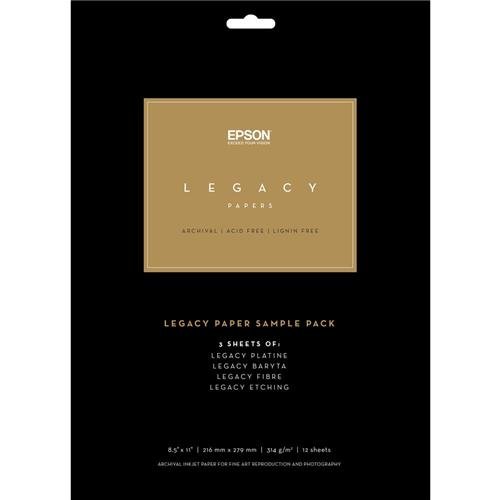
Photographers can be very picky when it comes to the paper they use to print their photos.
That’s why the Legacy Paper Sample Pack from Epson is such a great gift idea this holiday season.
Your favorite photographer will get a sampling of all current Epson Legacy Papers - Legacy Platine, Legacy Baryta, Legacy Fibre, and Legacy Etching.
With three sheets of each paper to try, photographers can decide which is best to fulfill their vision for their photos!
Learn more about the Epson Legacy Paper Sample Pack
Pacific Inkjet Canvas Textured Inkjet Photo Paper
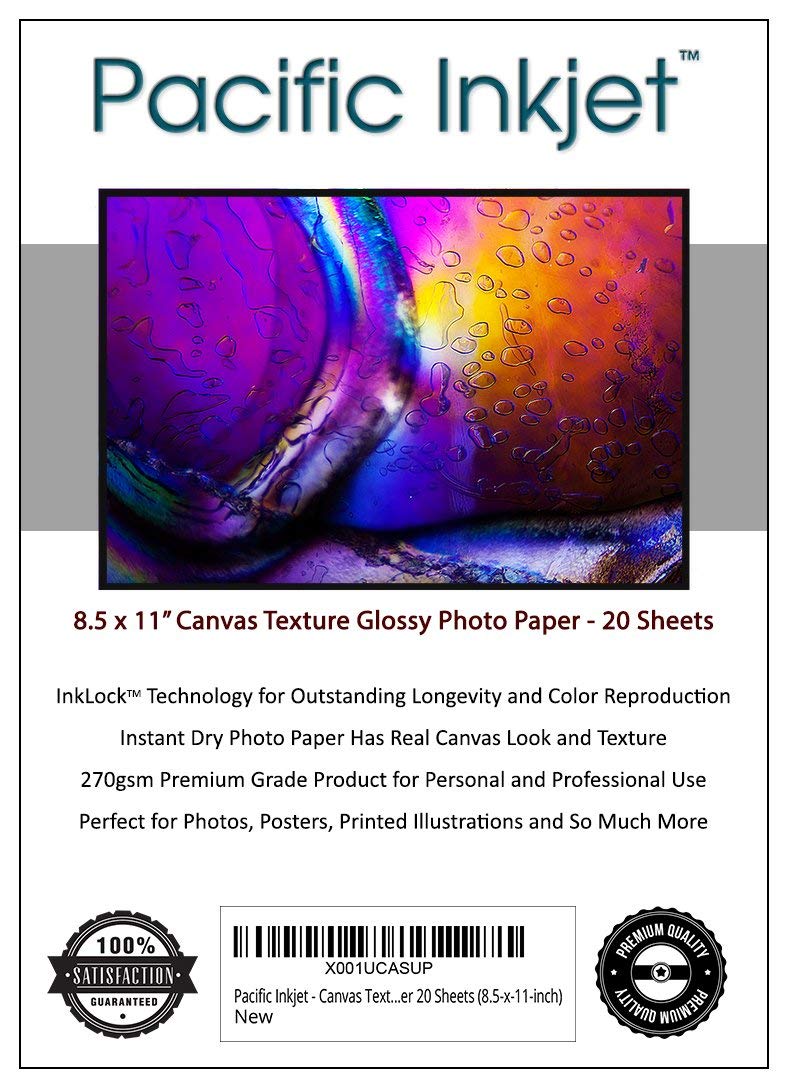
I know that printer paper doesn’t sound like the sexiest of holiday gifts for photographers, but just hear me out on this…
I gave Pacific Inkjet’s Canvas Textured Inkjet Photo Paper a try, and it worked great.
The glossy canvas-like texture looks great and gave tons of dimension to the test photo that I printed, which is shown below.
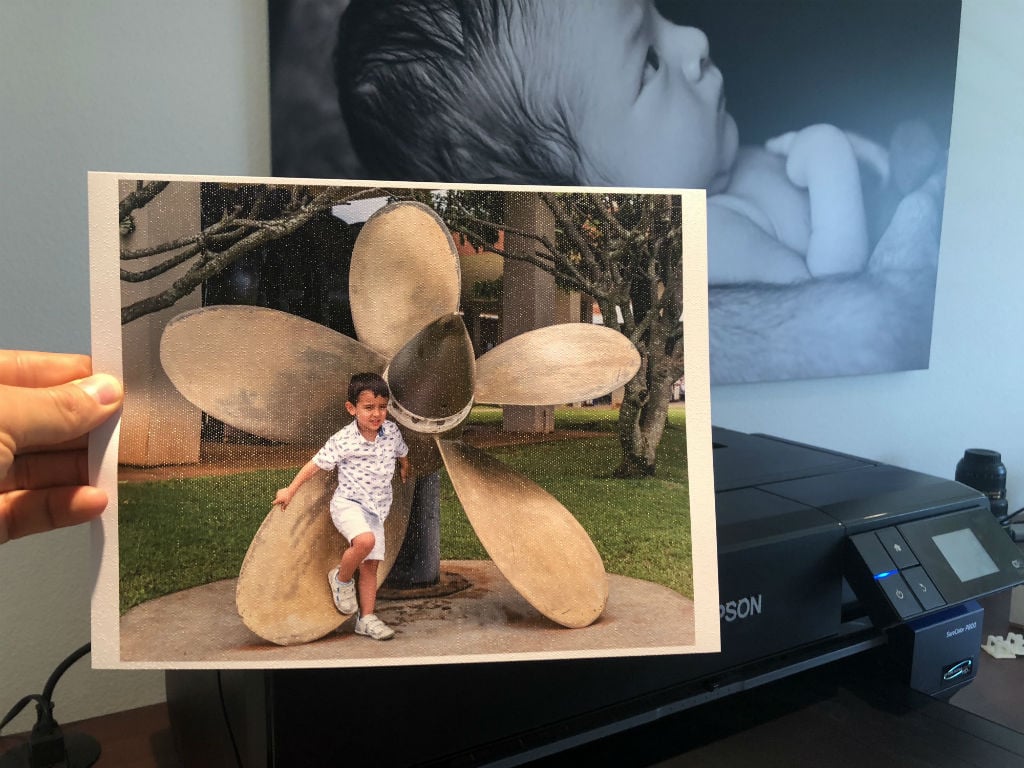
There were no issues with the paper curling in the printer, no problems with smudges or smears, as you can see.
What I got instead was a great-looking print that has a richness and depth to it with vibrant colors and excellent contrast.
I obviously used it to print a portrait, but it’s also great for nature and wildlife photography, wedding photos, landscapes, and much more.
If the photographer on your shopping list is picky about their photo paper, this 20-pack of paper is a great holiday gift idea!
Learn more about Pacific Inkjet Canvas Textured Inkjet Photo Paper
CanvasHQ 8x12 Canvas Print
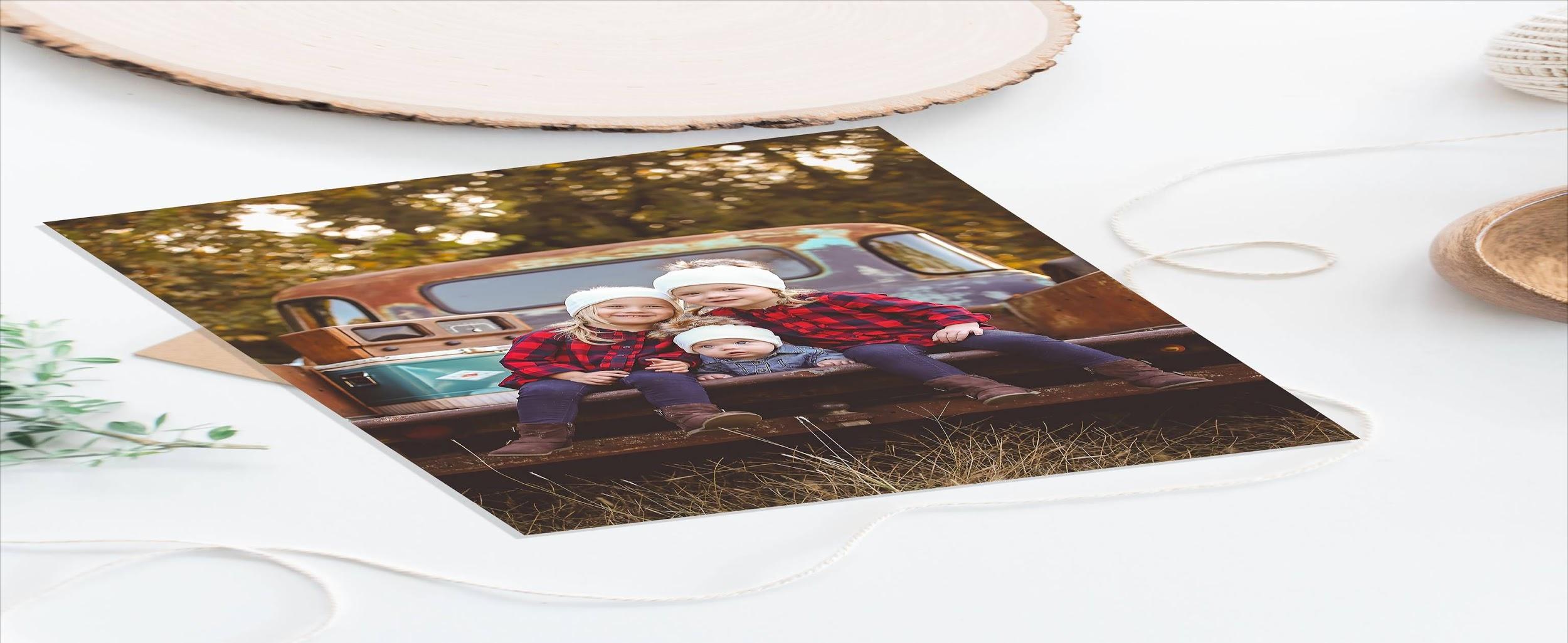
A flat 8x12 canvas print is just big enough to have impact on a wall but not so big that you spend your entire holiday shopping budget on one item.
These prints make ideal gifts for photographers (and anyone else on your list) because they're ideal for all kinds of photos. Get a print of a family portrait, the family pet, a landscape, or anything in between.
CanvasHQ offers a number of different 8x12 options with varying frame depths and finishes to get a custom look. The flat option is priced at just $19.95, too, so it's quite a bargain!
No matter what the options you select, you can rest assured that the print you get will have beautiful colors, gorgeous contrast, and be made to last for generations.
Giving art - especially personalized art - is a great gift idea for photographers. See what CanvasHQ can do for you!
Learn more about CanvasHQ 8x12 Prints
Fotodiox Pro 42" 5-in-1 Reflector
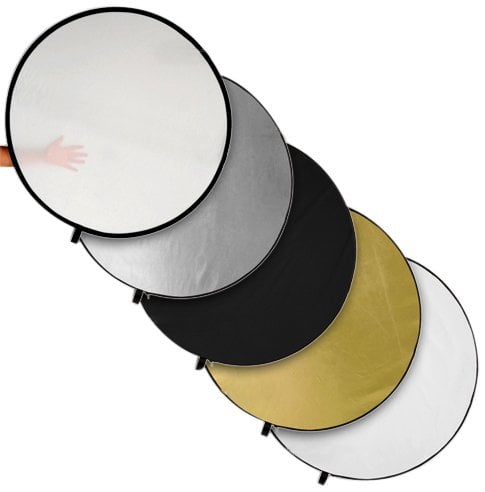
A reflector is one of the most useful gifts for photographers that take portraits.
This 5-in-1 reflector pack offers even more versatility with a translucent diffuser to filter light and a black anti-reflector to block light or change the contrast of light on the subject.
Additionally, there's a soft white reflector to reduce shadows, soft silver for brightening the image and increasing contrast, and a soft gold reflector that warms up light in the portrait.
In other words, the photographer on your list can reflect light, diffuse it or even block it!
The reflector pack collapses into itself for easy transport in the accompanying carrying case too.
Learn more about the Fotodiox 5-in-1 Reflector
HiiGuy Camera Strap
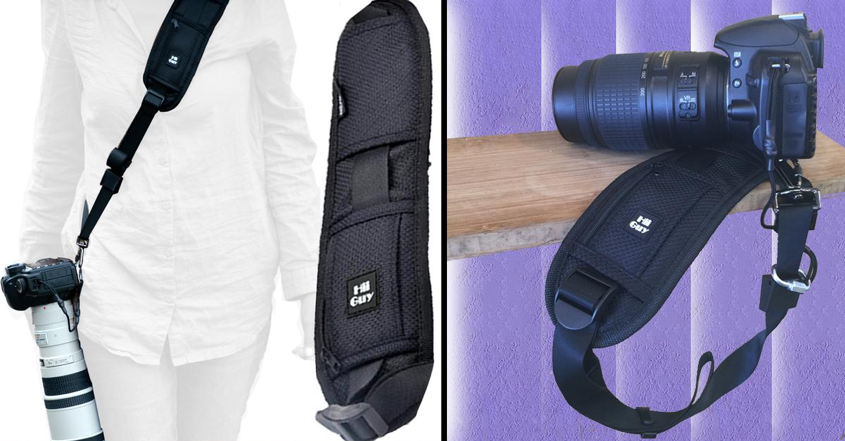
If photographers need anything, it’s a good camera strap.
After all, they can’t very well take a lot of photos if all they do is feel the aches and pains in their neck and shoulders from carrying around their camera all day on the flimsy strap that came with their camera...
That’s where the HiiGuy Camera Strap comes in!
This thing is the perfect upgrade for any photographer’s camera, be that a big, expensive DSLR that a professional uses or a little mirrorless camera that your mom bought for holiday photo-taking.
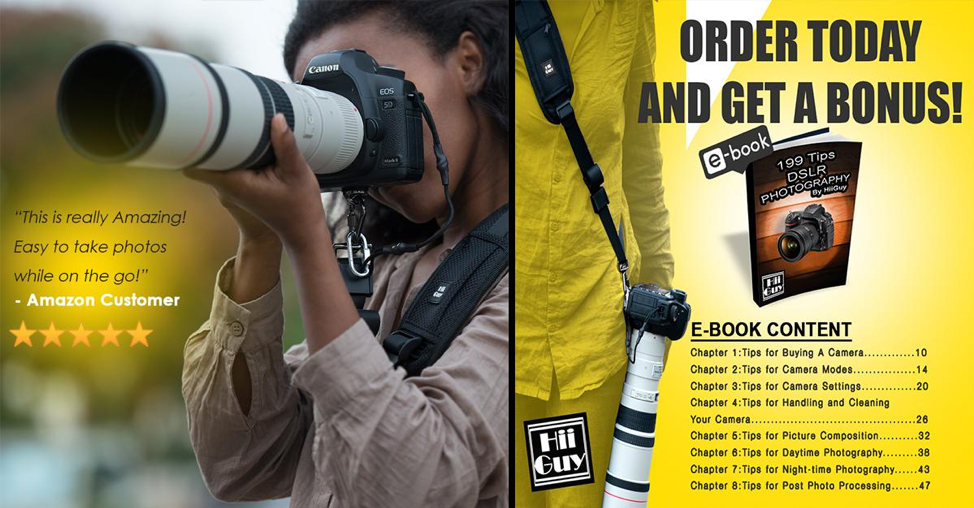
Either way, HiiGuy has the photographer on your list covered with a strap that’s uber comfortable with a big, beefy shoulder pad to help distribute the weight of the camera. The strap is also adjustable, too, so no matter if the photographer on your list likes their camera up high or down low, this strap will serve them well.
You have peace of mind as well because the strap’s mount plate is padded to prevent scratching the camera. What’s more, there’s a three-year warranty guarantee so if something goes awry with the strap, you’re covered.
Best of all, for well under $25, you get a microfiber cloth, an SD/Micro SD Case, a safety tether, and an eBook on the 199 Best Tips for DSLR photography in addition to the strap. That makes this the perfect gift bundle for your favorite photographer!
Learn more about the HiiGuy Camera Strap
Giottos Rocket Air Blaster
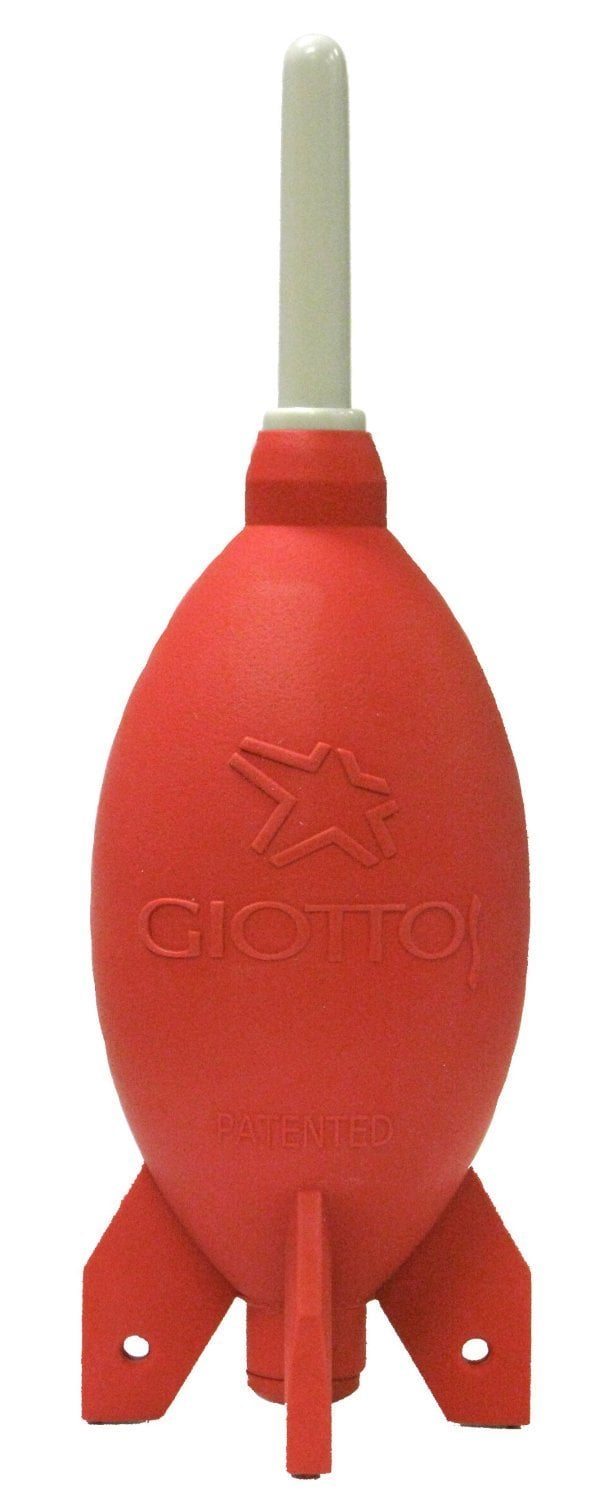
Every photographer needs the proper tools to clean their gear.
This holiday season, give the gift of a Giottos Rocket Air Blaster so your favorite photographer can keep their camera's sensor free of dust and debris.
The 7.5-inch-long blaster has a 2.5-inch nozzle that produces a large blast of clean air to get rid of particles on the camera's sensor.
The one-way valve brings in clean air instead of sucking up dust that it's just dislodged, too.
It's easy to carry, durable, and invaluable for keeping photography gear operating at its best!
Learn more about the Giottos Rocket Air Blaster
band.it

This innovative little gadget might not look like much, but trust me, it very well could be one of the most useful tools in a photographer's kit.
It's called band.it, and it not only helps photographers find the focus or zoom ring more quickly to get the shots they need, but it also helps improve grip on the lens.
That means photographers can hold their camera and lens more steadily, resulting in sharper photos.
But that's not all...
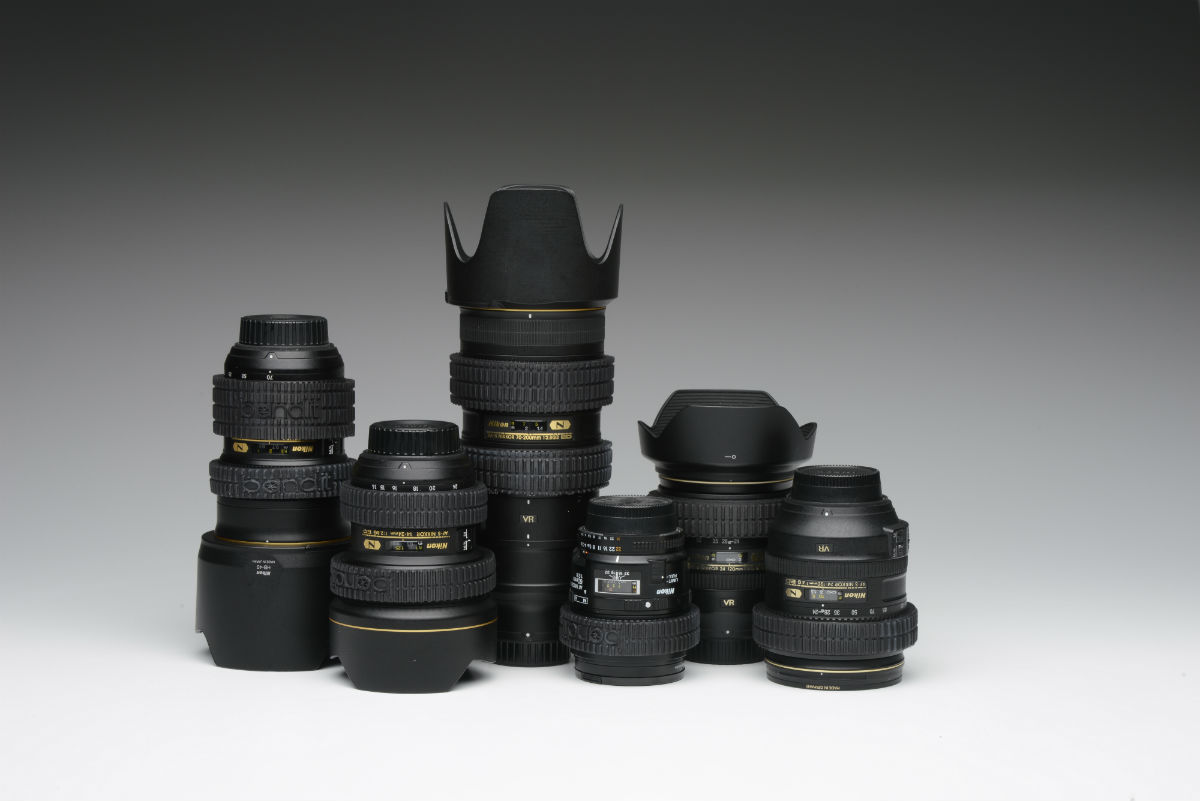
Having band.it on the focus or zoom ring also protects it from damage, so for less than $25, you can help prevent the $200 (or more) lens rings from getting damaged.
The soft, elastomer band fits any camera lens - the photographer on your list need only stretch it out, put it in place on the zoom or focus ring on their lens, and they're good to go!
This ingenious gizmo even helps prevent lens creep, which can occur when the lens is pointed up or down at a steep angle.
So, if you want to give the photographer on your list a gift that's practical, functional, and can help them take better photos at the same time, get them band.it.
Anwenk 18% Gray Card
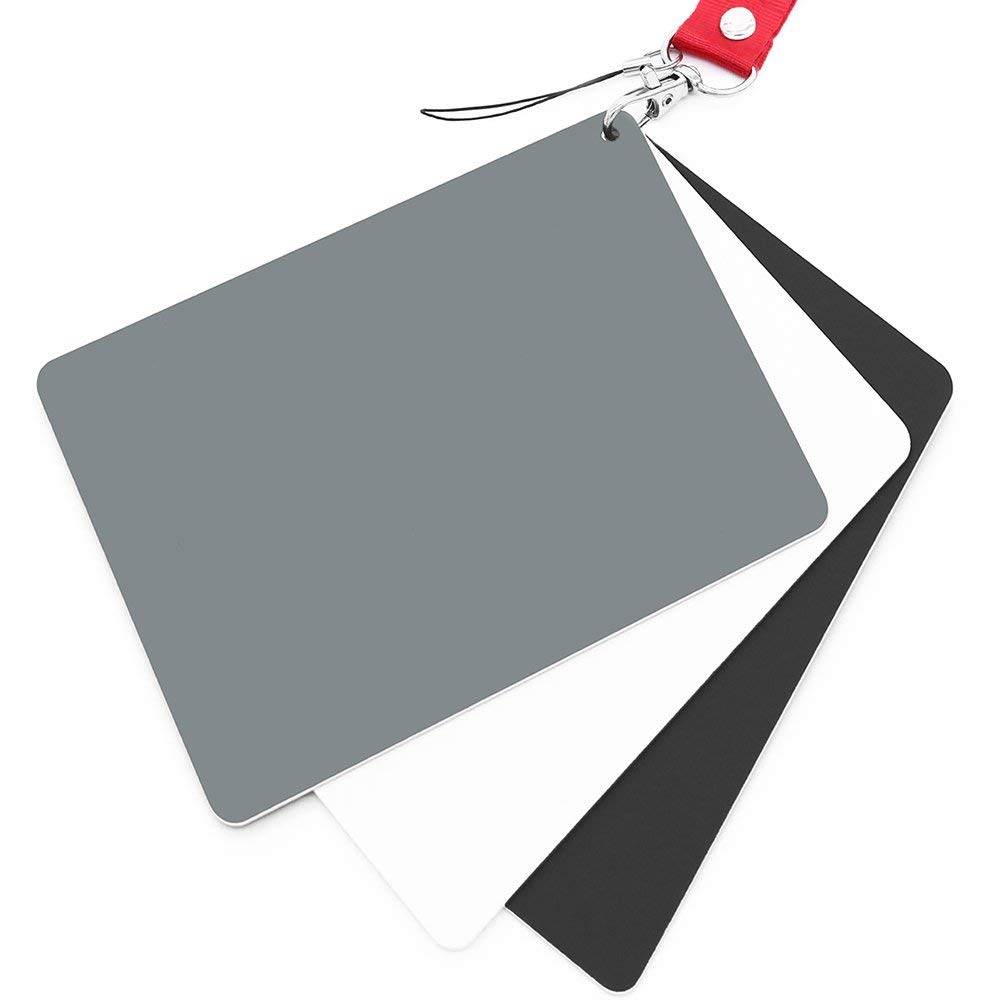
Getting the white balance just right in a photo is imperative to it having its maximum impact. The photographer on your list can do that with an 18% gray card.
This gray card pack has a matte finish that makes it scratch resistant and non-reflective. It's also waterproof, so even in the rain, sleet, and snow, if your favorite photographer is out shooting, they can get the correct white balance in their shots.
Sized at 5x4 inches, these cards are ideally suited for daily use. They're compact, lightweight, sturdy, and can be slipped easily into a camera bag, a pocket, or worn around the ned with the included lanyard.
Learn more about the Anwenk 18% Gray Card
Amazon Gift Card
![]()
Totally stumped regarding gift ideas for photographers on your list?
Why not go the easy route and get them an Amazon gift card?
Though a gift card isn't exactly the sexiest gift, when the photographer in your family sees that you dropped $25 into a gift card, they'll love it just the same.
With an Amazon gift card, they can buy whatever they want - a new lens, a second camera body, lighting gear, a laptop - you name it!
As far as flexibility goes, there's nothing better to give a photographer than a gift card with some serious money loaded onto it!
Learn more about Amazon gift cards
We Recommend
Top 10 Gifts for Photographers Under $250 - 2018 Edition
 Image Credit: mikkelwilliam via iStock
Image Credit: mikkelwilliam via iStock
Here we are in August, and before you know it, December will be here and you'll be in a panic with your holiday shopping.
So why not be prepared this year and start searching for that perfect gift for the photographer on your list?
To help you get your holiday shopping started early, we've put together this top 10 list of gifts for photographers.
Each of these items is priced below $250, so you can get your favorite photographer an awesome gift without breaking the bank.
Without further ado, here's our favorite gift ideas for photographers for 2018.
Lensfinder

Let’s face it - photography gear can be expensive. Really expensive.
That’s a problem year-round, but when you’re holiday shopping and have tons of gifts to buy, it’s even more difficult to justify getting your loved one the $1,000 lens that they really want.
Fortunately, Lensfinder can help in more ways than one.
On the one hand, you can find great deals on pre-owned camera lenses at Lensfinder.
That means that you can get a truly top-notch lens for the photographer in your life but do so without busting your budget. It’s a win-win!
On the other hand, if you have some old lenses that you don’t use anymore, you can list them for sale on Lensfinder. When the lens sells, you can use it for holiday spending money for the photographer in your life.
 Image Credit: xxmmxx via iStock
Image Credit: xxmmxx via iStock
The best part? You can list your lenses for sale for free.
There’s only a transaction fee (just 3.99%) when the lens sells (with a maximum fee of $500). If your lens doesn’t sell, there’s no charge at all!
And for peace of mind, the Lensfinder platform has advanced fraud filtering for both buyers and sellers as well as mediation services in the event that there’s a problem.
Payments are made and received via PayPal, so you can rest easy knowing that the transaction is safe and secure.
In other words, Lensfinder is the ideal solution for your holiday shopping needs. Either use it to find a loved one a killer lens or use it to sell old gear to pad your pockets for holiday spending!
Vanguard Alta Pro 2+ 263AP Tripod
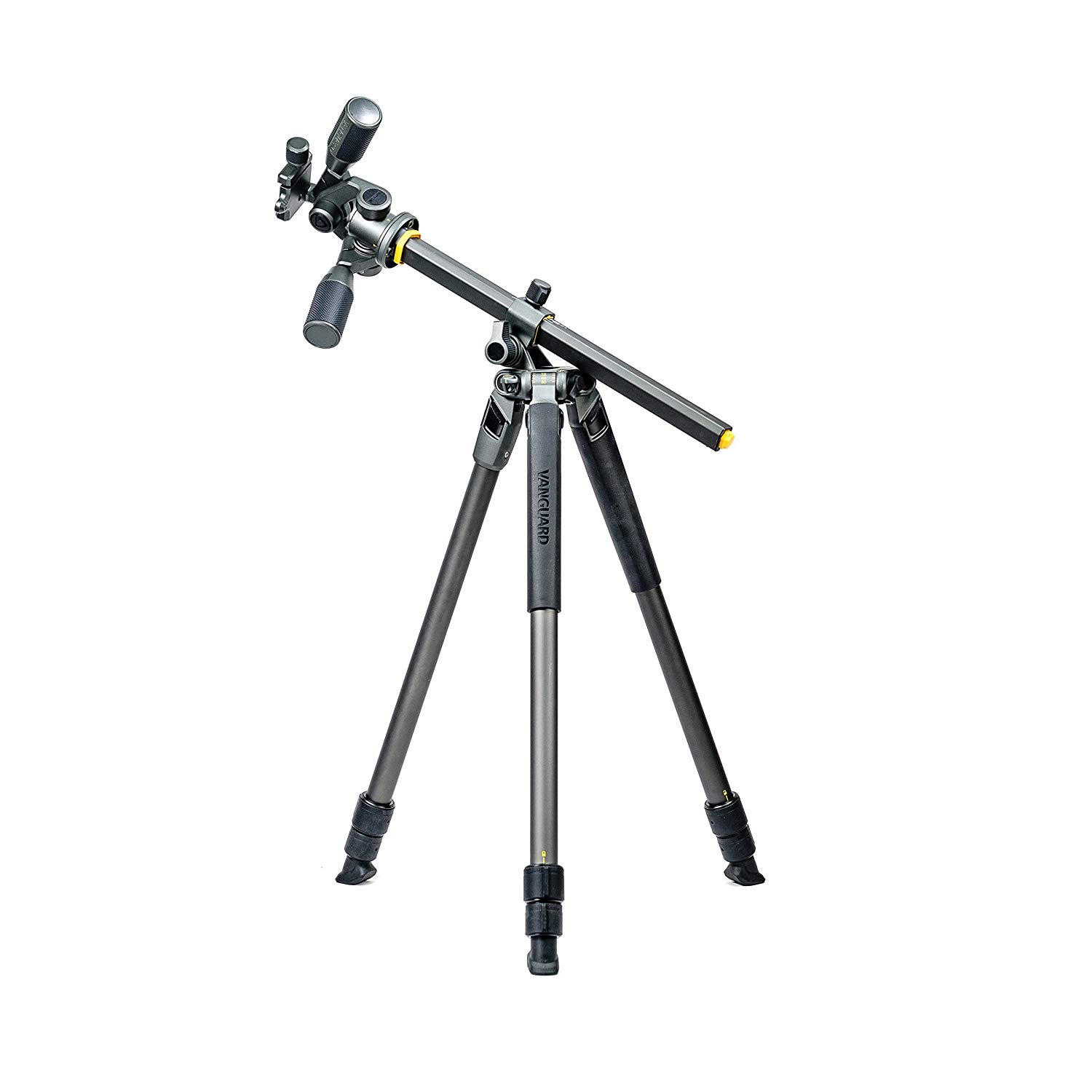
When it comes to tripods, it's hard to beat the combination of innovative features and pricing that you get with Vanguard.
Their Alta Pro 2+ 263AP tripod kit gives the photographer on your list everything they need, from a 3-way fluid pan head for smooth panning to a multi-angle center column for positioning the camera for unique points of view to the angled rubber feet that keep the tripod right where it needs to be.
This tripod is also lightweight due to its aluminum and magnesium construction, but it can still hold a solid 11 pounds of gear.
Its three-section legs offer various angle positions - 20, 40, 60, and 80-degrees - that way your favorite photographer can get the tripod positioning just right for the specific shot they want.
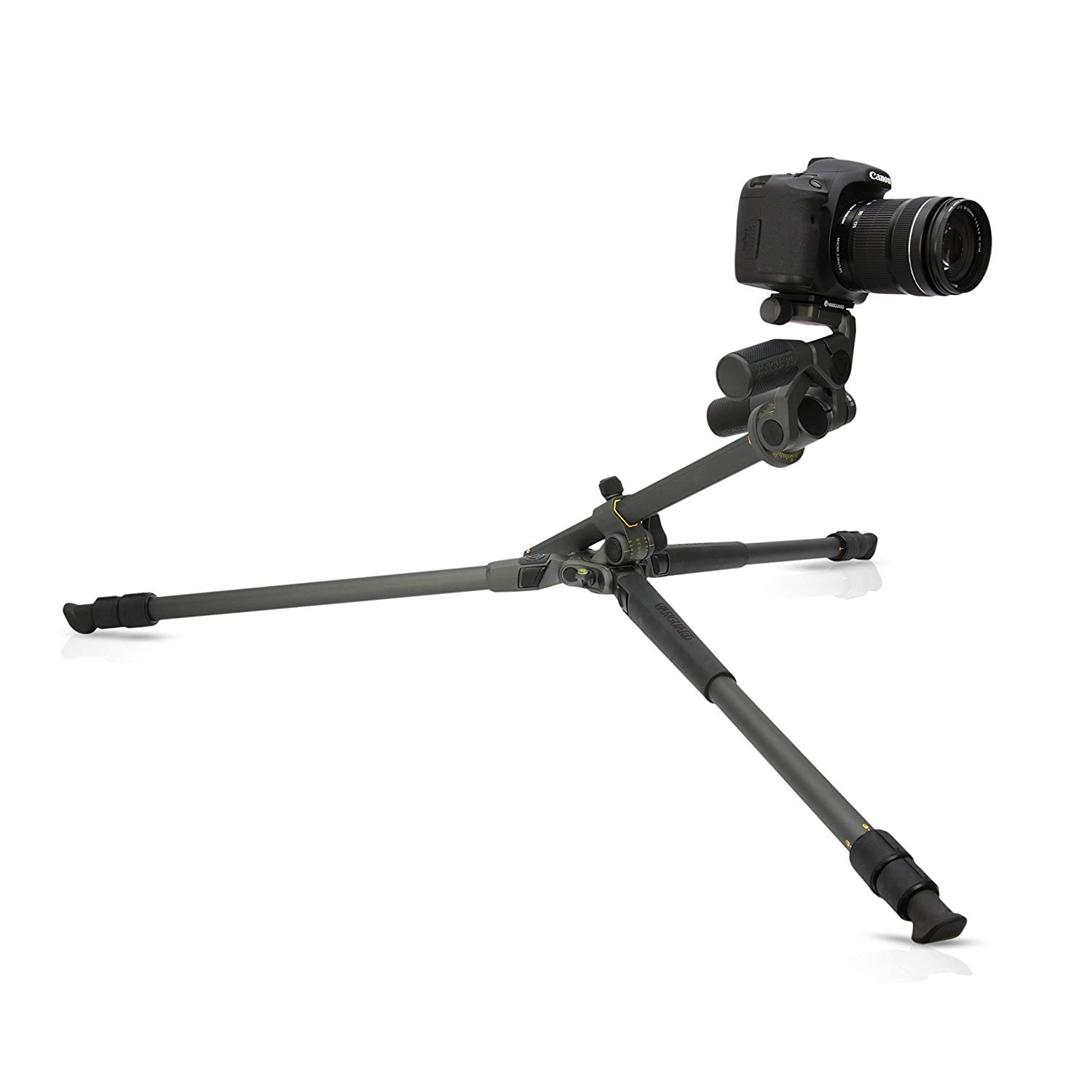
What's more, Vanguard has added features that make this a highly practical tripod.
There's a canopy suspension loop where weight can be added to improve stability.
There's also an integrated bubble level to help keep the horizons straight in landscape photos.
The bonus Alta Link 3/8-inch thread connection is great for adding accessories like a reflector, articulated arms, or other needed tools.
Add in non-slip, all-weather TPU grips on two legs, an included bag with shoulder strap, and quick and easy setup, and you have the makings of an awesome tripod for less than $250!
Learn more about the Vanguard Alta Pro 2+ 263AP tripod
Holdfast MoneyMaker Solo
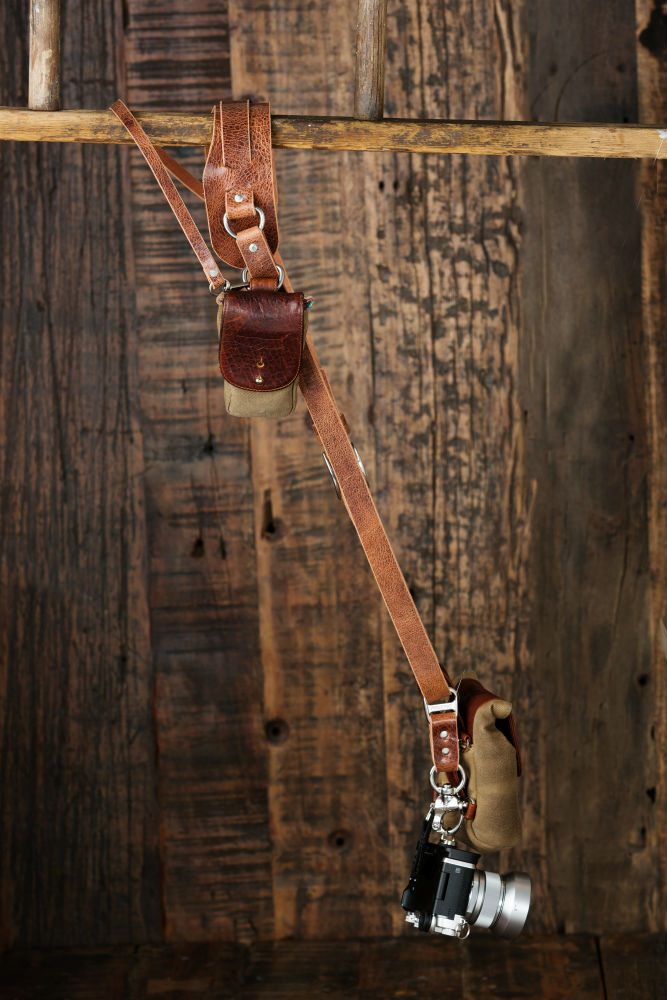 Photo by Brandon Burk
Photo by Brandon Burk
Designed specifically for single camera shooters, the Holdfast MoneyMaker Solo is a perfect choice for the photographer on your holiday shopping list.
Famed for their MoneyMaker dual camera strap, Holdfast has now brought their impeccable designs and commitment to quality products to bear for shooters that don’t need two or three cameras on their person.
Worn as a sling strap, the MoneyMaker Solo has a big, soft, contoured shoulder strap that ensures that you’ll have a comfortable carrying experience whether you’re only out shooting for a couple of hours or if you’re out shooting for an entire day.
With an integrated stabilizer strap, the MoneyMaker Solo will stay put on your shoulder so you don’t have to worry about it slipping off.
What’s more, you can use the Holdfast Belt Anchor to give the Solo even more stability, it locks the camera to your belt, no more flopping around as you maneuver and bend over while working. Then a quick pull on the release tab as you grab your camera and you’re ready to take the shot!
As well, you can also use all of the Holdfast Gear accessories with the Solo like a Holdfast Cell Phone Pouch or Lens Pouch. See how it all comes together in the video above.
Just like the original MoneyMaker, the MoneyMaker Solo gives you unparalleled freedom of movement so you can get the shots you want without having your gear in the way.
In that regard, the MoneyMaker Solo ticks all the boxes - it’s highly functional, incredibly comfortable, works without getting in your way, and it looks like a million buck!
Learn more about the Holdfast MoneyMaker Solo
Pana-Vue Pana-Scan Portable Stand-Alone Combo Scanner
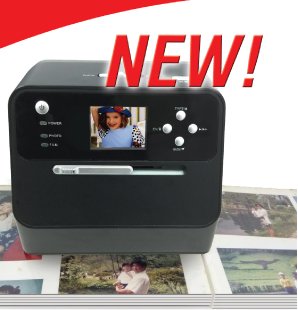
You’re certain to have a special someone on your holiday list this year who has tons of old photos, negatives, and slides lying around their house.
And for that person, the ideal gift this holiday season is the Pana-Vue Pana-Scan Portable Stand-Alone Combo Scanner from Argraph.
Going digital has never been so easy as it is with this high-tech, easy-to-use scanner.
Whether your loved one has photos, 35mm negatives, 110 and 126 Instamatic negatives, or 35mm slides, they can bring their memories into the 21st Century.
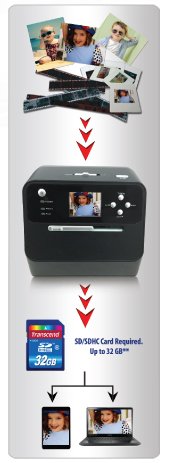
Not only is this scanner quick and efficient, but with its anti-glare technology, users can scan photos right from existing photo albums without removing the prints - especially important for old, fragile photos.
If they have loose photos, this rig will scan up to 4x6 prints (as well as slides and negatives) into 14-megapixel digital files. All this can be done without a computer, too!
It takes just moments to complete the scan, and at that point, users can view the scanned images on a TV, send the images via email, share the images on social media, or even print the images.
There’s simply not an easier way to digitize old photos than with Argraph’s Pana-Vue Combo Scanner!
Learn more about the Pana-Vue Pana-Scan Portable Stand-Alone Combo Scanner
PolarPro Quartzline Filters
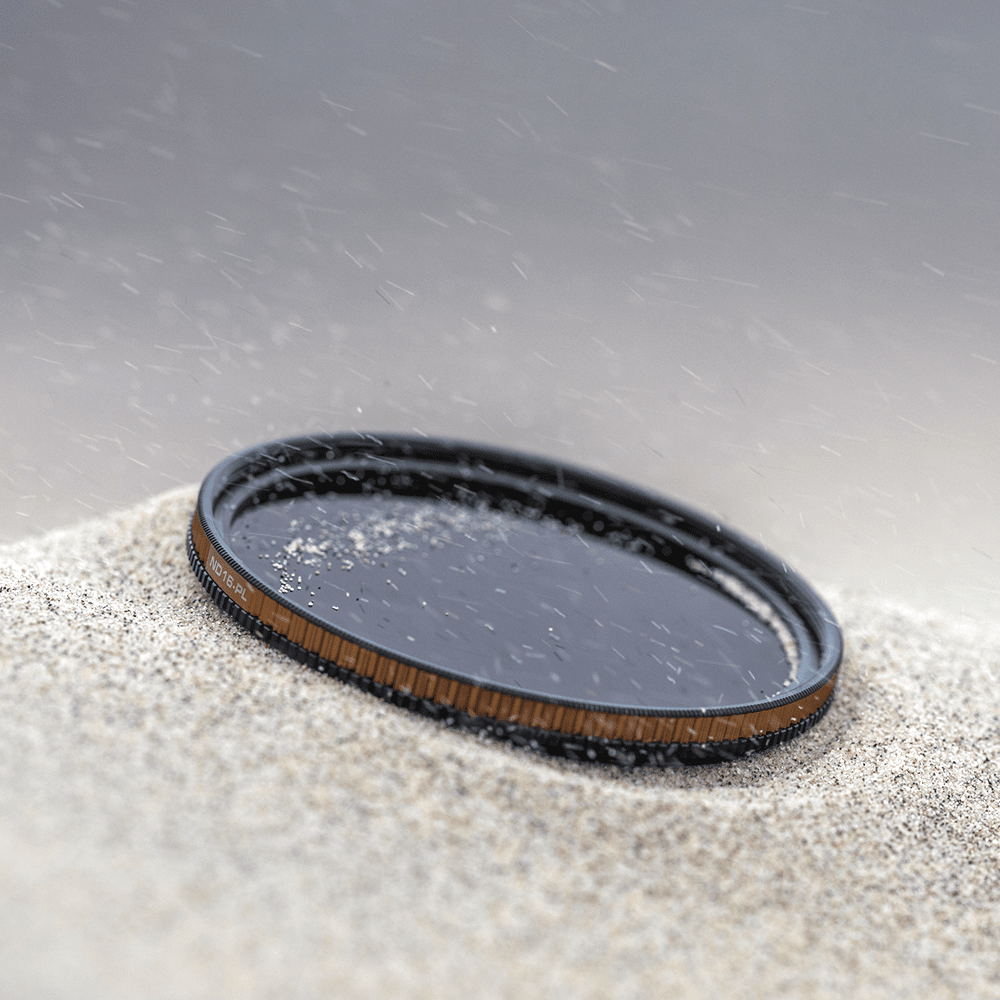
Lens filters are by far one of the most valuable accessories you can buy to improve the quality of your photos, which is why filters are such a great holiday gift idea for the photographer in your life.
But not all lens filters are made alike. In fact, most filters out there aren’t worth the money.
There are other lens filters that absolutely knock it out of the park, though. At the top of that list are the Quartzline Filters from PolarPro.
What sets these bad boys apart from the competition is the fact that they’re made of 99.9% pure fused quartz.
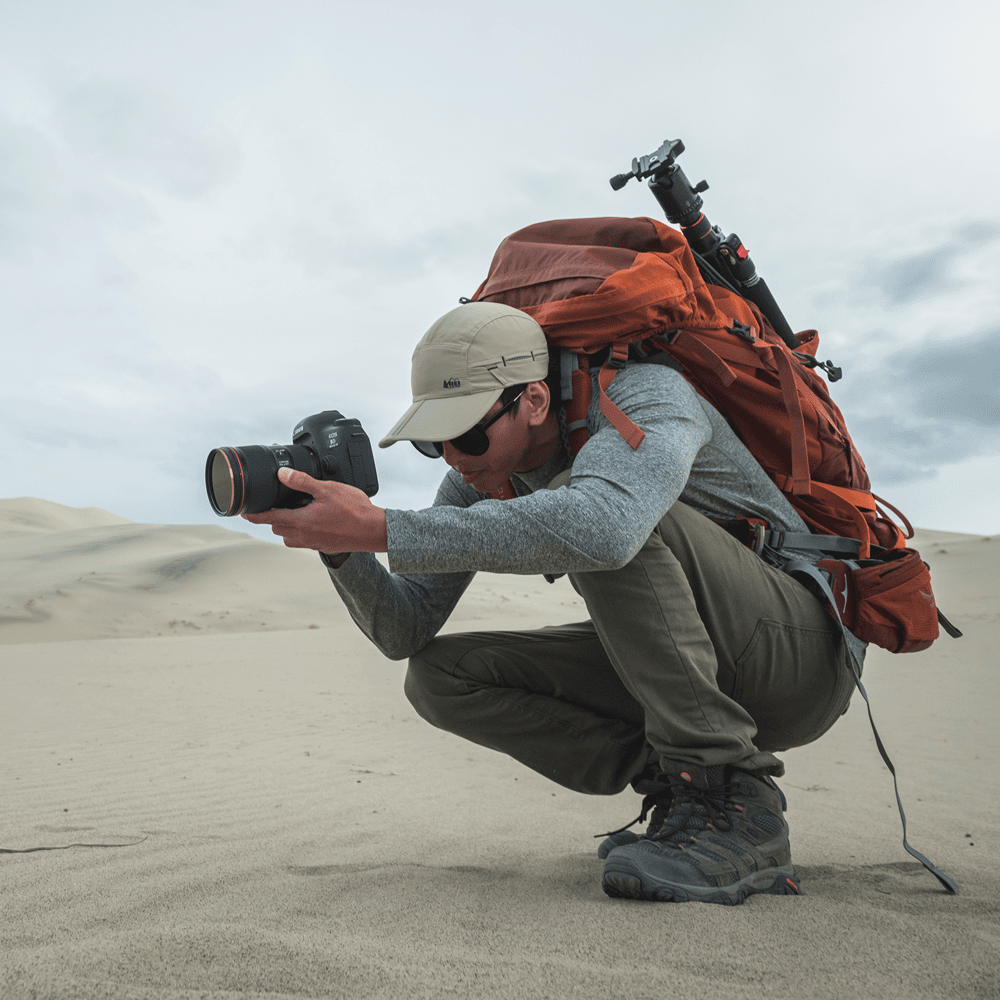
Not only does quartz offer better optical clarity than glass, but it’s also far more durable, too.
That means you can buy your loved one an awesome filter that has a lifetime warranty. That mean it will last them a good long while!
These filters have a single lens element that produces a very low refractive index of 1.46. They have excellent temperature stability as well. With a hyper neutral color profile, near perfect target transmission, multi-coatings (16 layers!) for enhanced resistance to scratches, anti-reflectivity technology, an anti-oil coating, water resistance, and reduced vignetting, these filters are among the best performers on the market today.

Paired with the top-notch quartz element is an over-engineered brass filter frame that makes threading it onto a lens a breeze. Naturally, the brass frame is highly durable, too.
You get a microfiber lens cloth for cleaning, a soft filter pouch, and a hard case for storage as well. There’s even a lifetime warranty that covers you if anything happens to the filter (apart from losing it).
With UV, circular polarizers, 3-stop to 15-stop neutral density filters, and polarizer/neutral density filter combinations available in a range of sizes, you’re sure to find the right lens filter for the photographer on your list.
Learn more about PolarPro Quartzline filters
CanvasHQ

If you ask me, one of the best gifts you can give someone during the holidays is a photo of a memory that you’ve shared together.
And I don’t mean a 4x6 paper print in a cheap frame, either…
This holiday season, you can make a bold statement by giving the gift of a fine art canvas print from CanvasHQ.
Whether it’s a photo of you with a loved one, a landscape photo that a loved one took, or something in between, turning it into a large-format canvas print is a perfect gift.
CanvasHQ does it right, too.

Their commitment to quality is second-to-none, that way you’re assured of a canvas print that has vibrant and long-lasting colors. That’s thanks to the water-resistant, UV-resistant, and scuff-resistant inks they use on their fine art poly-cotton blend canvases.
Even the frames behind the canvas show a commitment to quality - they’re handcrafted from artist-quality, kiln-dried stretcher bars that will keep the canvas tight and flat for a lifetime.
Add to the equation the fact that there’s a 100 percent satisfaction guarantee, quick turnaround times, complimentary proofs, and tons of customization choices, and you have the makings of a great gift for loved ones this holiday season!
Learn more about CanvasHQ canvas prints
Holdfast MoneyMaker Original
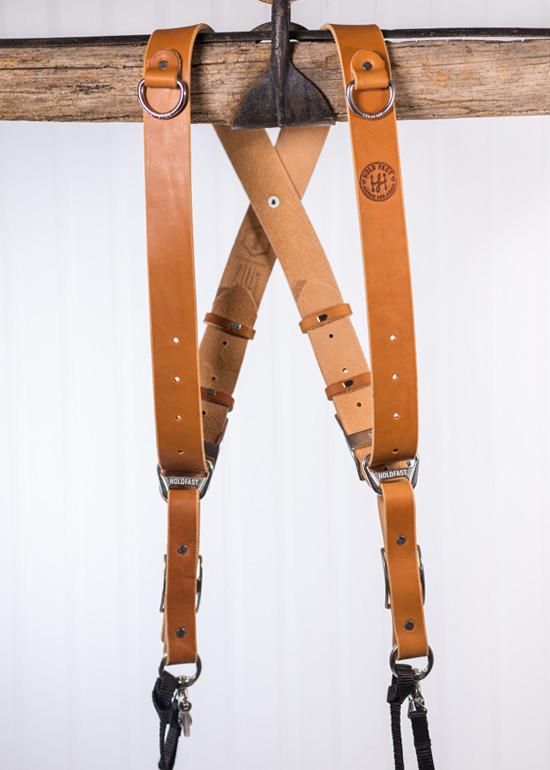
Earlier on this list, I suggested the Holdfast MoneyMaker Solo for single camera shooters on your holiday list. Well, if you have a loved one that needs two (or even three) cameras right at their fingertips, the original Holdfast MoneyMaker is for them!
This rig puts two cameras right at your sides, and with an optional camera leash, you can carry a third camera on your chest. That means more variety of shots with cameras with different lenses, an elimination of lens changes, and no more having to dig through your camera bag to find the gear you need.
Instead, the MoneyMaker puts all your gear right where you need it most - on you! And if you think that carrying three cameras with lenses and other accessories would be uncomfortable, you’re probably right - if you carry all that stuff with another camera strap.
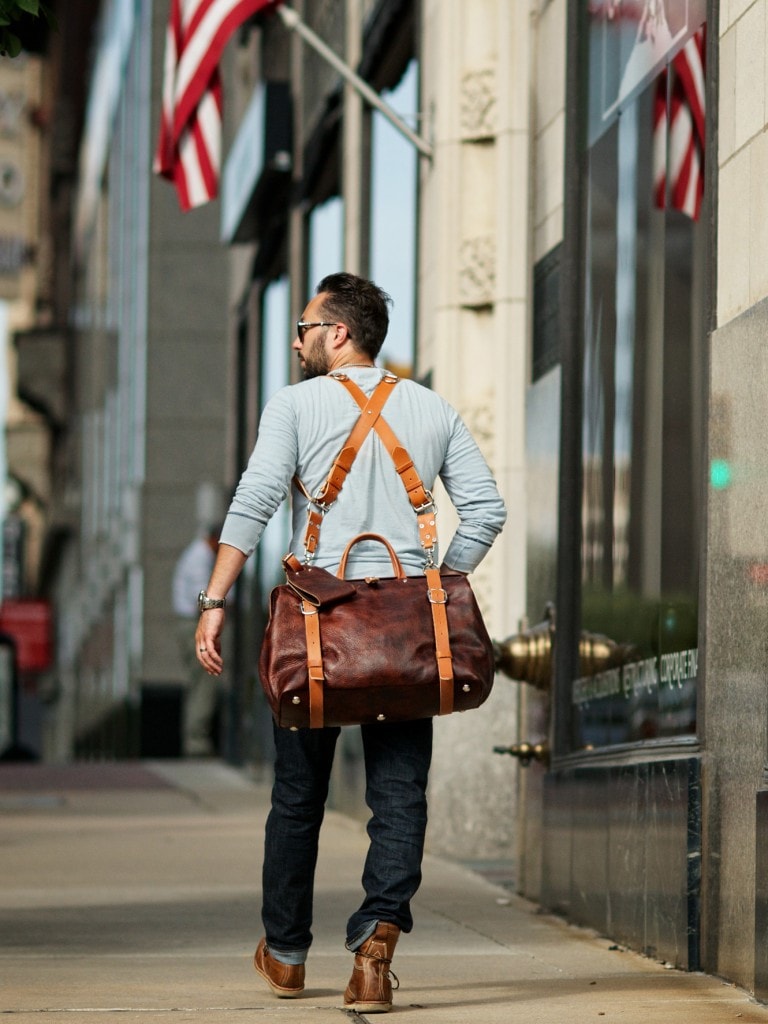
But because the MoneyMaker is so well made, it distributes the weight of your gear evenly across your shoulders and back. What’s more, the bridle leather will mold to your body over time, meaning it will fit like a glove. There’s nothing more comfortable than that!
On top of it all, the MoneyMaker looks fantastic, has stainless steel hardware that’s durable and won’t rust, and is weather-resistant. You can even carry a Holdfast bag on the MoneyMaker to make it an even more appealing way to transport your gear.
In other words, this thing is a game-changer for photographers. The combination of form, function, and price is hard to beat!
Learn more about the Holdfast MoneyMaker Original
Sew Trendy Jaden Gown
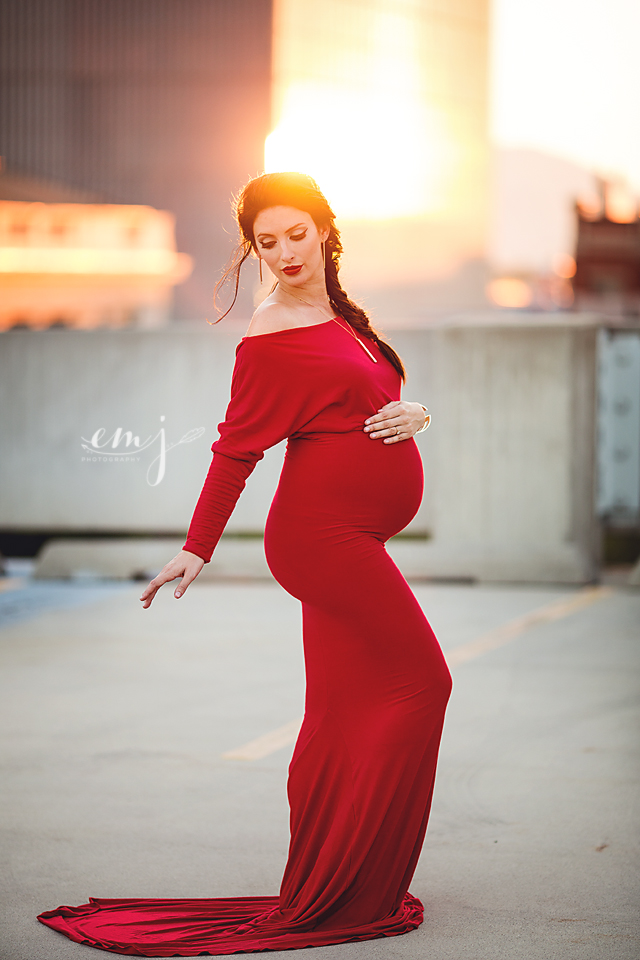 Emj Photography
Emj Photography
Maternity photographers are always on the lookout for beautiful clothing and accessories for their clients, which is why this stunning gown from Sew Trendy Fashion & Accessories would make such a great holiday gift!
The Jaden gown features a fashion-forward design from the slouch 3/4 style sleeve to the elegant form-fitting bodice that hugs the curves of the model to the widening of the gown at the knee for the height of elegance.
The soft heavy-knit stretch fabric offers the ultimate in comfort without sacrificing a sophisticated look, too.
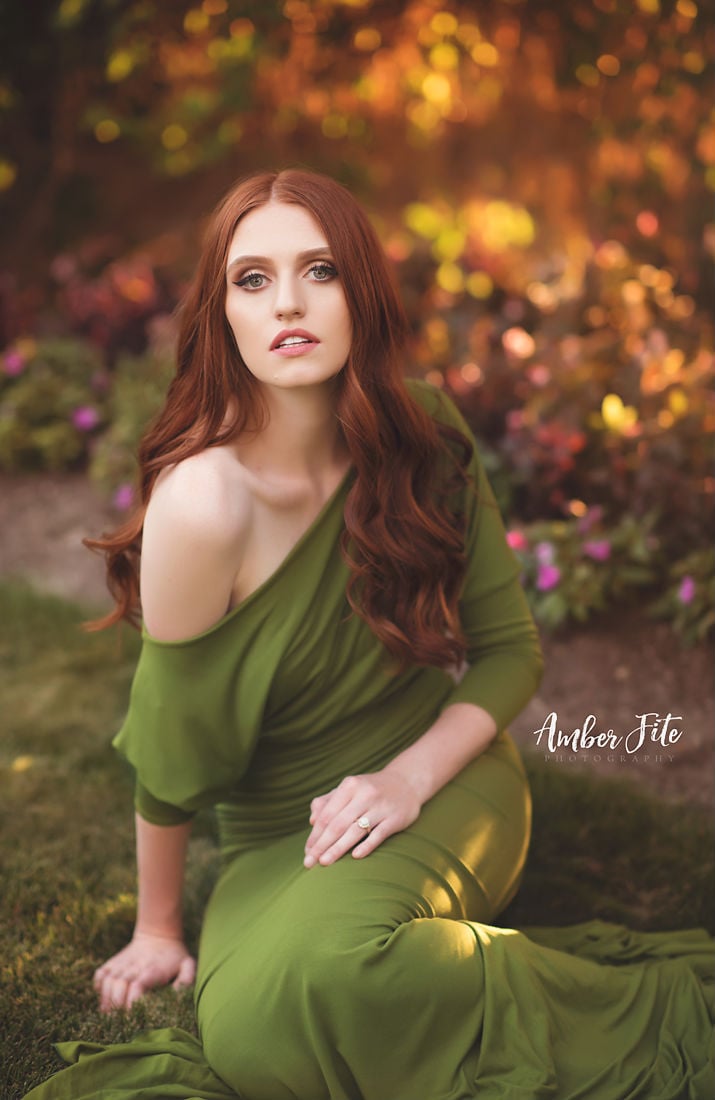 Amber Fite
Amber Fite
This gown - which is handcrafted in the USA - is offered in both maternity and non-maternity versions, making it an even more versatile gift for the photographer on your list.
The non-maternity version could easily be worn for engagement photos, family portraits, senior photos, and more.
Sew Trendy has been in the business of helping photographers style their maternity and non-maternity photo shoots as well as newborn photo shoots since 2012, and in that time, has established itself as one of the premier clothing and accessories companies for photographers in the world.
If you have a photographer on your holiday list that needs to step up their styling game, the Jaden gown (or any other number of gowns, crowns, and other accessories) from Sew Trendy will make the ideal gift!
Learn more about the Sew Trendy Jaden gown
Petzl NAO + Headlamp
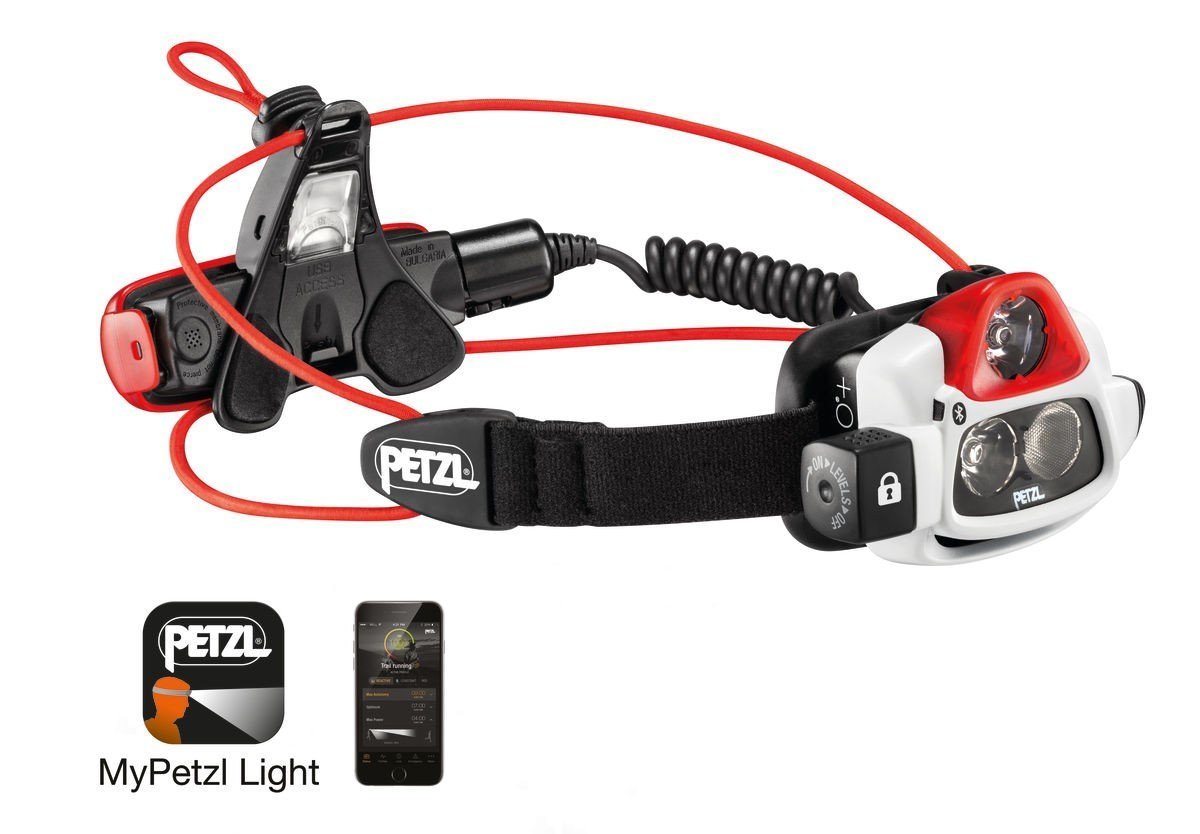
A good headlamp is a great asset for a photographer to have, and with a budget of $250, you can give your favorite photographer the ultimate headlamp in the Petzl NAO +.
I can attest that this is a rockstar of a headlamp because I own one!
It's got an incredibly powerful and bright beam that puts out a whopping 750 lumens that allows me to see what I'm doing when I'm out late at night in Joshua Tree, Yosemite, and other deep, dark locations.
It's an intelligent headlamp, too...
It can be programmed via the MyPetzl Light app, which can also be used to monitor remaining burn time. If you find that juice is running low, simply use the app to adjust how the headlamp is performing to extend the battery life.
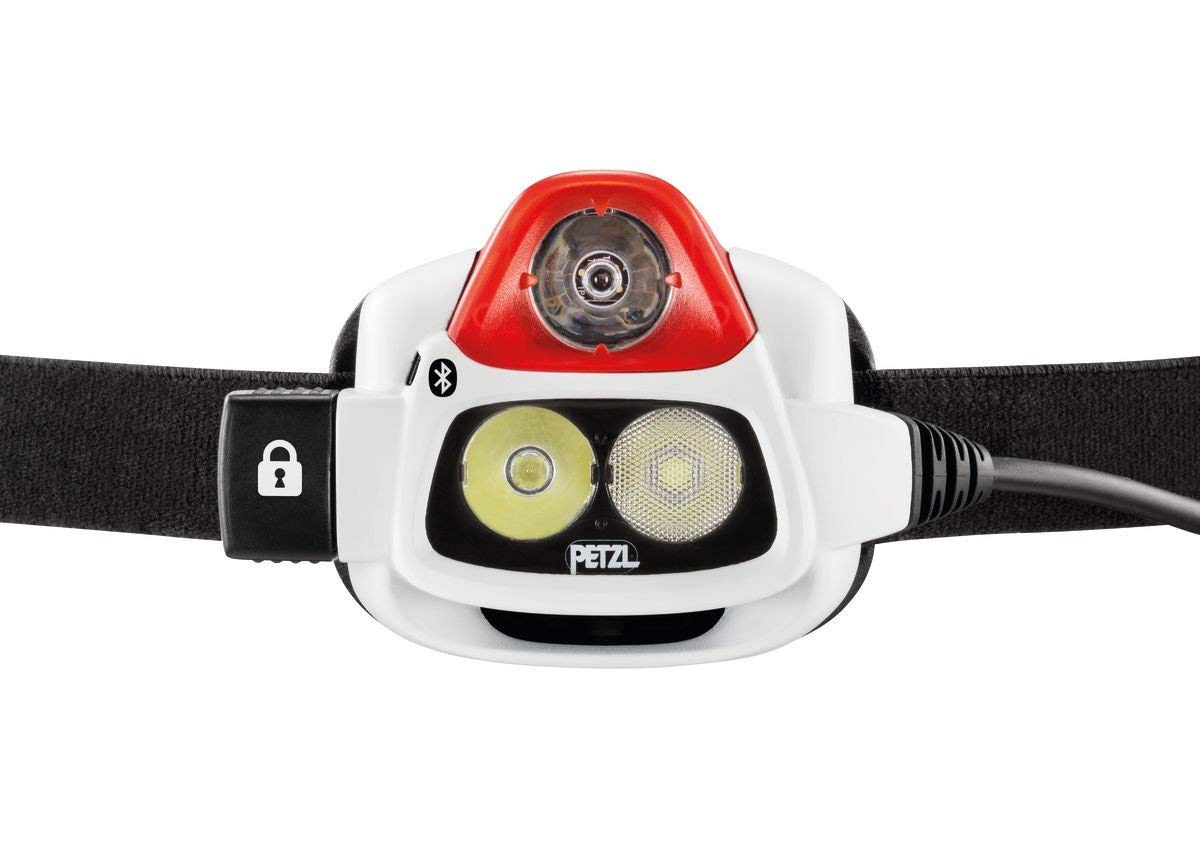
On top of that, this rig has Reactive Lighting technology, which gives it the ability to adapt its light output to your needs.
It does so by analyzing the ambient light and instantaneously adjusting the brightness of the light to suit the conditions.
If it sounds like a crazy, futuristic device, that's because it is!
Petzl has outdone themselves with this thing because it's not just packed with features and incredibly functional, but it's comfortable to wear, too.
Learn more about the Petzl NAO + Headlamp
Formatt-Hitech 100 x 100mm Firecrest Ultra ND 3.0 Filter
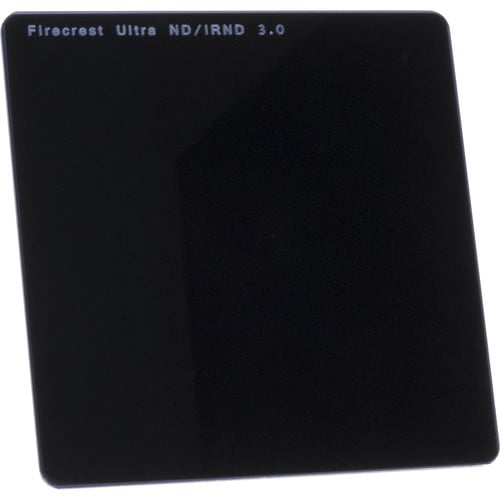
The Firecrest Ultra line of filters from Formatt-Hitech are among the best you can buy for the photographer on your list.
This 100 x 100mm ND 3.0 filter is no exception...
With impeccable construction with excellent clarity and reduced reflectivity, this solid ND filter will be the perfect gift for photographers that want to experiment with long exposure photography.
The 3.0 density darkens the entire image, allowing photographers to reduce the exposure by 10 full stops.
The result of that is gorgeous indicated movement with blurry clouds, water, cars, and other moving elements.
This filter undergoes multiple lapping and polishing processes as well, which ensures that it's ultra flat and provides excellent sharpness.
In other words, if you're looking for a perfect gift for photographers under $250, this is it!
Learn more about the Formatt-Hitech 100 x 100mm Firecrest Ultra ND 3.0 Filter
Bonus Gift Idea: Formatt-Hitech 100mm Firecrest Filter Holder Kit
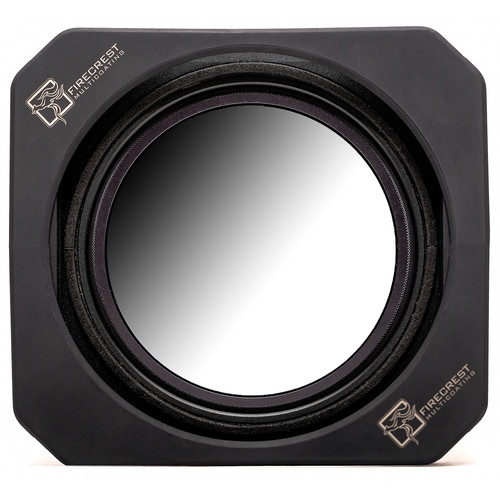
The great thing about the 100mm Firecrest Filter Holder Kit from Formatt-Hitech is that it's designed with both convenience and functionality in mind.
The photographer on your holiday list will be able to use up to two 100mm filters up to 2mm thick (sold separately), along with an included circular polarizer.
The kit is fully assembled, so it's a simple matter of attaching it to the desired lens, adding the filters, and starting shooting.
The holder has light-eliminating covers that minimize stray light, that way photographers get the shot they want without any aberrations.
Additionally, the aluminum-alloy filter holder has plastic filter slots in place, so adding filters is a breeze. What's more, these slots are held in place by four screws, which applies pressure to the filters to keep them in place.
If you want to give the best filter holder on the market to your favorite photographer, consider this feature-packed holder kit!
Learn more about the Formatt-Hitech 100mm Firecrest Filter Holder Kit
Bonus Gift Idea: A Nifty Fifty Lens
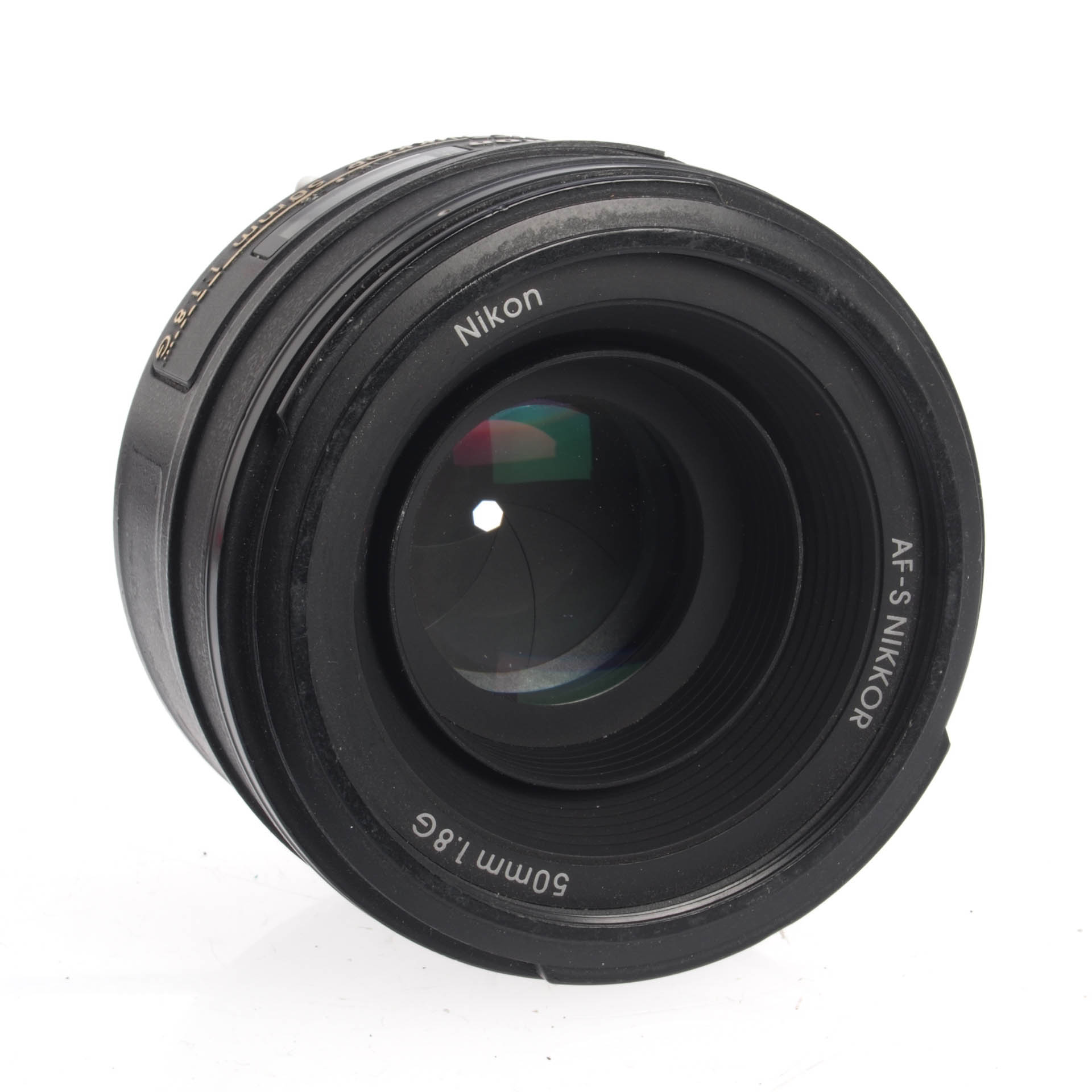
Ask just about any photographer what their first lens purchase was, and they'll say a Nifty Fifty. That makes it the ideal gift idea for photographers this holiday season!
There's a lot to love about 50mm lenses, too...
For starters, it's a great focal length for learning all kinds of photography, from landscapes to portraits and everything in between.
That also makes it an incredibly versatile lens.
In fact, put a 50mm lens on your camera, and you can shoot all day long without ever needing a different focal length. They're even great for shooting video!
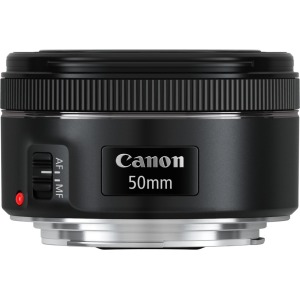
You can find 50mm lenses with large apertures, too, like the Canon EF 50mm f/1.8 STM shown above.
At f/1.8, photographers can more readily shoot in low-light conditions without having to push the ISO too high, which helps reduce digital noise.
Having a large aperture like that is also beneficial for gathering tons of light, that way a faster shutter speed can be used. It's also helpful for blurring the background in portraits to get a more professional-looking shot.
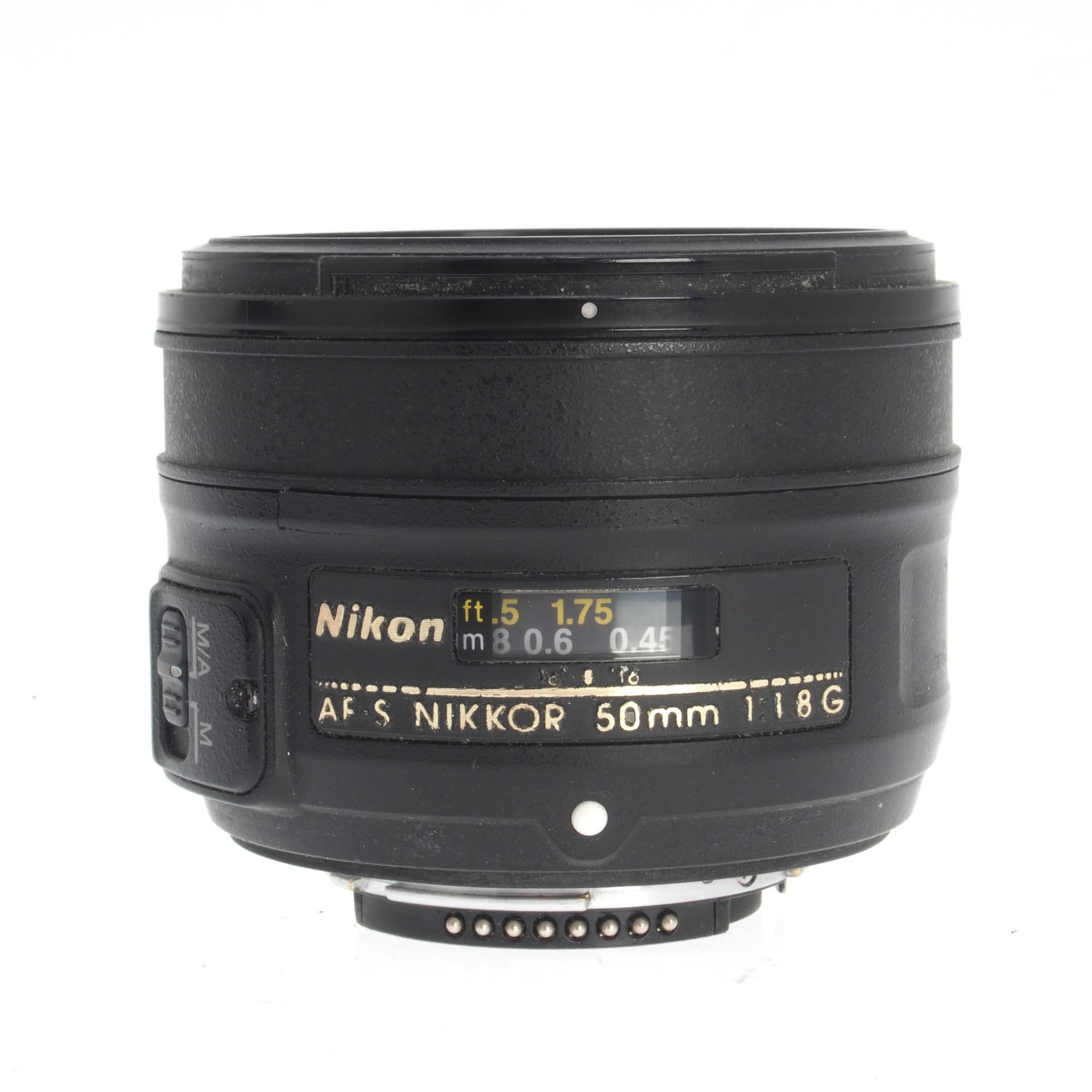
Another benefit of a 50mm lens, like the Nikon AF-S 50mm f/1.8G shown above is that they force you to think more creatively about how you frame up your shots.
That is, since 50mm lenses have a constant focal length of 50mm, there's no zoom to rely on for getting close-up or wider shots.
By using a 50mm lens and "zooming with your feet," becoming a master of composition can be an easier task because you're forced to physically move further away or closer to the subject.
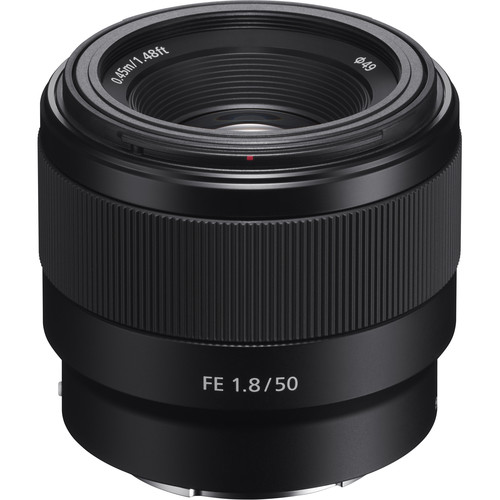
Of course, the biggest benefit of 50mm lenses is the price. You can find Nifty Fifties for any camera system, like Canon and Nikon as mentioned above, as well as Sony and others, like Panasonic, as well.
Regardless of the manufacturer, these lenses are well-priced so you can bestow a great little lens with tons of functionality and versatility upon your favorite photographer without busting your budget.
That sounds like a win-win deal to me!
Learn more about 50mm lenses from Canon, Nikon, Panasonic, and Sony
We Recommend
Top 10 Gifts for Photographers Under $5,000 - 2018 Edition
 Image Credit: evgenyatamanenko via iStock
Image Credit: evgenyatamanenko via iStock
With a budget of $5,000, you can go hog wild on photography gear for the photographer on your list.
Whether they want a camera or a photography trip, a new drone or a new computer, there are tons of options to consider.
Honestly, the hardest part of having a $5,000 budget is simply deciding how you're going to spend it!
Here's our list of the best gifts for photographers under $5,000.
Lensfinder

Let’s face it - photography gear can be expensive. Really expensive.
That’s a problem year-round, but when you’re holiday shopping and have tons of gifts to buy, it’s even more difficult to justify getting your loved one the $1,000 lens that they really want.
Fortunately, Lensfinder can help in more ways than one.
On the one hand, you can find great deals on pre-owned camera lenses at Lensfinder.
That means that you can get a truly top-notch lens for the photographer in your life but do so without busting your budget. It’s a win-win!
On the other hand, if you have some old lenses that you don’t use anymore, you can list them for sale on Lensfinder. When the lens sells, you can use it for holiday spending money for the photographer in your life.
 Image Credit: xxmmxx via iStock
Image Credit: xxmmxx via iStock
The best part? You can list your lenses for sale for free.
There’s only a transaction fee (just 3.99%) when the lens sells (with a maximum fee of $500). If your lens doesn’t sell, there’s no charge at all!
And for peace of mind, the Lensfinder platform has advanced fraud filtering for both buyers and sellers as well as mediation services in the event that there’s a problem.
Payments are made and received via PayPal, so you can rest easy knowing that the transaction is safe and secure.
In other words, Lensfinder is the ideal solution for your holiday shopping needs. Either use it to find a loved one a killer lens or use it to sell old gear to pad your pockets for holiday spending!
DJI Inspire 2 Eagle Edition Kit

Designed especially for prosumers, commercial applications, and business applications, the DJI Inspire 2 Eagle Edition Kit by Drone World represents one of the top drone kits that’s currently available.
The DJI Inspire 2 was already a great drone, but after Drone World’s engineers worked their magic, you truly have a beast of a machine. The new HD Helical Antenna offers four-times better performance, including 720p resolution with minimal latency. That means you get more consistent and reliable video feed performance from the drone. You can see this drone kit in action in the video below:
This kit also comes packed with lens filters that allow you to enhance the images you take with the drone. That includes two dual-stacked neutral density/polarizer filters, a polarizer, and a variable neutral density filter that ranges from ND 2 to ND 64.
And to minimize the time you’re charging your Inspire 2’s batteries, this kit includes a battery hub and charger that charges two items simultaneously. Even better, you can plug four devices into the hub and it will automatically charge the two that have the highest battery percentage so you can get back to flying sooner rather than later.

Other accessories in the Inspire 2 Eagle Edition Kit include a power bank portable battery charger, a 64GB memory card, a controller sunshade for easier video viewing in bright conditions, and an FPV mini drone, among many other items. That’s not to mention that a hard-sided rolling case is also included with room for the drone, up to 16 batteries, a remote, monitors, lenses, and all the other gear you need to tackle professional drone work.
This drone kit takes what was already a fantastic drone and makes it even better. Between the expertly designed and crafted accessories outlined above and the Inspire 2’s inherent capabilities - up to 5.2K recording, a top speed of 67 mph, a dual-battery system with 27-minute flight time, intelligent flight modes, obstacle avoidance, and other technologically-advanced features - you have the makings of a professional filmmaking drone like no other. See these and other features in the video above.
Learn more about the DJI Inspire 2 Eagle Edition Kit
National Photographic Adventures

National Photographic Adventures is one of the premier photography tour companies in the world.
Spearheaded by master photographer Kevin Vandivier, a 40-year veteran of photography, National Photographic Adventures will put the photographer on your holiday list in some of the most breathtaking scenery in the world, providing opportunities to learn and grow as a photographer along the way.
With Kevin's expertise - he's won multiple awards, been published in Life Magazine, National Geographic, and Texas Monthly, and shown his work all over the world - photographers of all skill levels will find a wealth of opportunities to learn from Kevin's experiences.

Speaking of experiences, National Photographic Adventures specializes in taking participants to unforgettable places.
From Texas Hill Country to Iceland, Monument Valley to Teton National Park, there's no shortage of places for your favorite photographer to experience the beauty of the world with their camera.
Better still, each adventure is limited to just seven people, so each attendee can benefit from one-on-one learning time with Kevin.
From composition to lighting to processing images, photographers on these adventures will learn essential techniques for improving their images.
Each participant's work will also be published in National Photographic Magazine, with several copies given to each attendee for sharing with friends and family.
Taken together, all these benefits make a trip with National Photographic Adventures the ultimate photography gift for 2018!
Learn more about National Photographic Adventures
Canon EOS 5D Mark IV

If the photographer on your shopping list is a Canon fan, why not upgrade their camera experience with a top-of-the-line Canon EOS 5D Mark IV?
The 5D Mark IV is a workhorse of a camera that offers tons of features for photographers that want to step up their game.
The 30.4-megapixel full frame CMOS sensor captures clean, bright images, and the camera's DIGIC 6+ image processor makes the camera a powerful addition to any photographer's kit that's looking for images that have fine detail and high resolution.

The 5D Mark IV offers excellent low-light shooting capability with a native ISO range of 100-32000.
For occasions when the ISO really needs to be pushed, the camera is capable of shooting at up to ISO 102400.
Even at higher ISOs, the 5D Mark IV offers low-noise images with excellent sharpness in a variety of shooting conditions.

Of course, the camera is packed with modern features that any photographer will appreciate.
That includes GPS, Wi-Fi, and NFC, an enhanced autofocus system, a weather-sealed body, and a 3.2-inch touchscreen LCD monitor, among many other amenities.
Any Canon shooter would love to have this camera, and with pre-owned models going for around $2,500, you can make that dream come true for your favorite photographer while saving half of your budget!
Learn more about the Canon EOS 5D Mark IV
Nikon D850
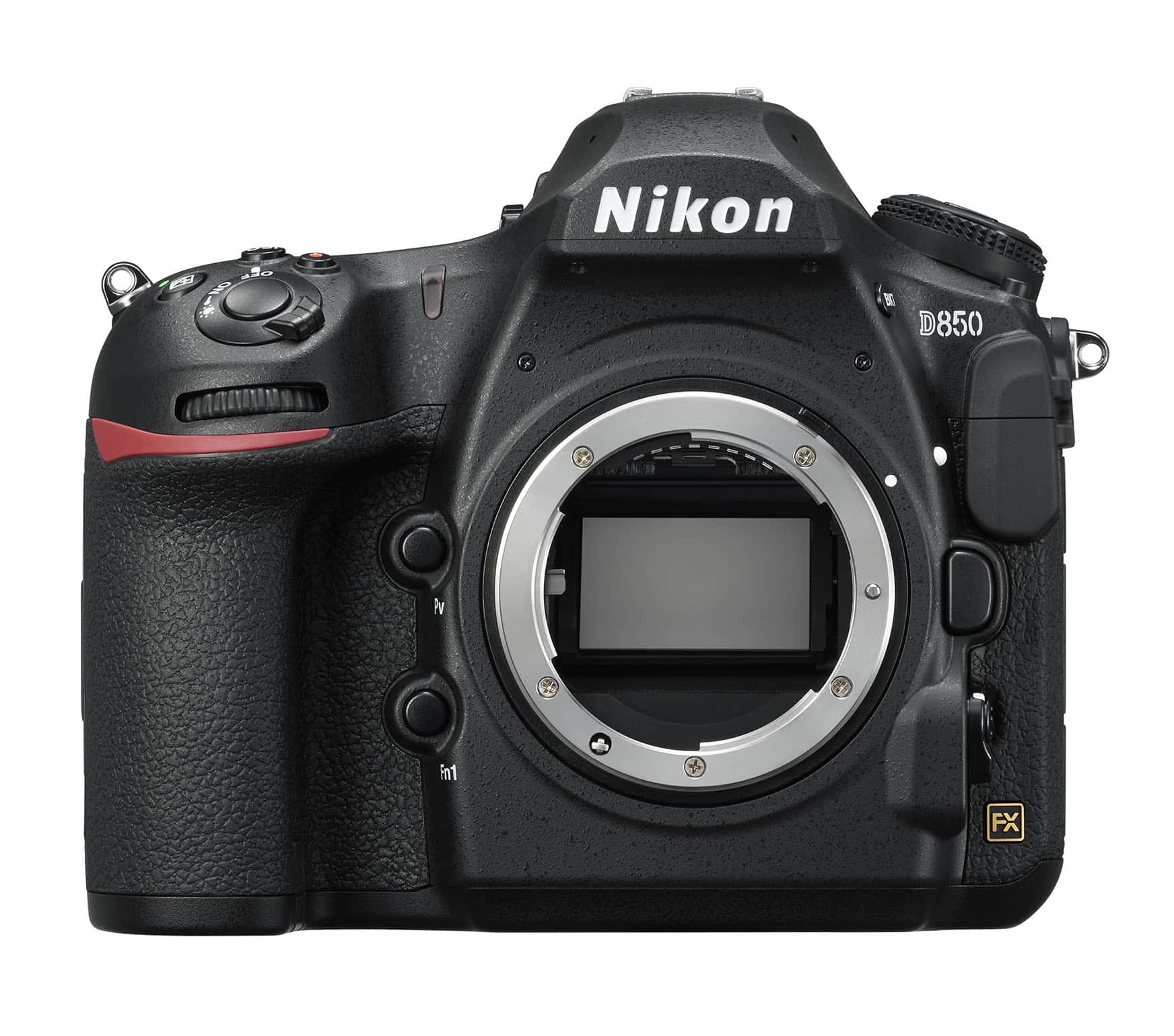
I shoot with a Nikon D850, and I can personally attest that this is one of the best cameras on the market today. I can say that because I’ve tested and owned cameras from Sony, Nikon, Pentax, FujiFilm, and other manufacturers over the years. In a word, this camera is incredible, and any professional photographer would love to get this for the holidays this year!
Perhaps that most impressive feature of the D850 is its sensor, a 45.7-megapixel back-illuminated behemoth that produces jaw-droppingly detailed images.
In fact, no other camera has beaten the Nikon D850 when it comes to image quality testing from DxOMark. The D850’s sensor was the first to achieve a perfect 100/100 score, and only the Sony A7R III has ever matched that mark.
Not only does the sensor produce gorgeously detailed images, but it also offers excellent dynamic range so you get beautiful highlights and shadows without losing detail, even when the lighting conditions would challenge other cameras. The sensor also performs beautifully in low-light situations, offering an unmatched level of noise control, even when pushing the ISO to the limits.

The D850 also has a fantastic 153-point autofocus system with 99 cross-type points that gives you the ability to set and maintain focus on a variety of subjects, even those that move quickly, like wildlife. The 7fps burst shooting speed is an excellent feature for capturing action as well, and with an optional battery grip, the burst shooting speed can reach 9fps.
The massive buffer - it can handle 170 12-bit RAW files - is a much-appreciated feature for photographers that need to shoot a lot of photos in rapid fashion as well.
As if all that isn’t enough, the D850 has cutting-edge features that truly make it a one-of-a-kind camera.
It’s got built-in focus stacking that allows you to combine up to 300 images, a silent shutter mode that’s perfect for things like wedding photography, wireless control via Nikon’s SnapBridge, a tilting touchscreen LCD, a weather-sealed body...the list goes on and on.
Aside from the incredible list of specifications this camera has, it’s just a great camera to use.

The beefy grip feels good in your hands, and the layout of the buttons and knobs on the camera has that familiar Nikon feel. That makes it easy to learn where everything is so you can make on-the-fly adjustments without even taking the camera away from your eye.
And for a big, professional camera, it doesn’t feel like you’re carrying around a giant rig. I wouldn’t say that the D850 is lightweight, but it at least feels like it’s a svelte camera, even after carrying it around for a few hours.
So, the moral of the story here is that if you’ve got a budget of $5,000, the Nikon D850 should get strong consideration as the ideal gift for the photographer on your holiday shopping list.
Best of all, with incredible pricing at Paul’s Photo, you can pick up the D850 for your favorite photographer without even coming close to the $5,000 mark!
Learn more about the Nikon D850
Microsoft Surface Studio

If you really want to impress the photographer on your holiday shopping list, it's hard to go wrong with the Microsoft Surface Studio.
With a gorgeous 28-inch PixelSense display to delight their eyes, the Surface Studio is a fantastic computer for editing photos.
And since the screen is both tilting and touch-enabled, it's also highly functional for editing photos and other daily tasks of being a photographer.

Throw in the Surface Pen and Surface dial, and you have the ultimate computing package for photographers.
Plus, since the Surface Studio's giant screen has a Zero Gravity Hinge, it's super simple to adjust - very light pressure on the screen will move it backward or forward as needed.
This particular model has an Intel Core i7 processor for fast computing, 32GB of RAM, and 2TB of disk space, so it'll be a fast companion with tons of storage for your favorite photographer for years to come!
Learn more about the Microsoft Surface Studio
Nikon Z7 Mirrorless Full Frame Camera and 24-70mm f/4 S Lens
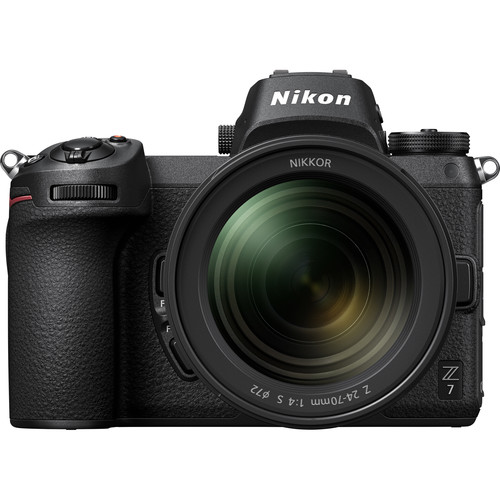
Nikon just released the Z7 full frame mirrorless camera to much fanfare, and any professional photographer that you're shopping for this holiday season would no doubt love to have one of these in their camera bag.
For starters, the Z7 has a top-of-the-line 45.7-megapixel back-illuminated CMOS sensor that captures beautifully detailed shots.
Paired with an EXPEED 6 Image Processing Engine, this camera makes quick work of taking photos, even in sub-optimal conditions.

The 493-point phase-detect autofocus system helps ensure photographers get their subjects in sharp focus, and the built-in 5-axis vibration reduction comes in handy for handheld shooting without worrying as much about camera shake.
Like any modern camera should have, the Z7 also sports ultra high definition 4K video capabilities at 30p.
Whether shooting photos or video, photographers will appreciate the large 3.2-inch tilting touchscreen LCD as well.

The Nikon Z7 features a 3.6m-dot electronic viewfinder, 9 fps continuous shooting, and a native ISO range of 64-25600.
There's a top panel dot-matrix OLED screen, an XQD card slot, and the Z7 is compatible with current FX lenses (with an adaptor).
In other words, this little full frame mirrorless camera packs a solid punch, and at just under $4,000 from National Camera Exchange, you can give this camera and a new NIKKOR 24-70mm f/4 S lens this year without even coming close to your $5,000 budget!
Learn more about the Nikon Z7 Full Frame Mirrorless Camera
eMotimo spectrum ST4 Run & Gun Bundle

For the photographer on your list that's itching to add videography to their repertoire, the eMotimo spectrum ST4 Run & Gun Bundlespectrum ST4 Run & Gun Bundle is a perfect gift with a $5,000 budget.
Included in this bundle are a spectrum ST4 4-axis motion control unit, a eMotimo heavy duty L-bracket for mounting a camera, an eMotimo Fz focus motor, and iFootage Shark Slider with both two-foot and four-foot lengths.
Also included is an iFootage integration kit with the motor of your choice, a uSD card with instructions, an Arca compatible quick release clamp for tilt, and an Arca compatible plate for pan axis.
In other words, this bundle is loaded for bear with all the fixings a photographer needs to create breathtaking cinematic films and time-lapse videos!
Learn more about the eMotimo spectrum ST4 Run & Gun Bundle
Arca-Swiss F-Classic 4x5 View Camera

For discerning photographers that enjoy working in medium format, it’s tough to beat the Arca-Swiss 4x5.
This is a professional-grade tool that is both easily transported and produces high-quality images.
It’s made specifically for 4x5 medium format film and digital backs made to fit medium format digital camera systems.
It’s a fully modular system, too, with a wide array of accessories for everything from viewing to conversion.
Whether it’s used for film or digital prints, this camera will bring a smile to any photographer’s face!
Best of all, it's well below the $5,000 budget mark, so you can give an awesome gift and save a ton of money, too!
Learn more about the Arca-Swiss F-Classic 4x5 View Camera
Amazon Gift Card
![]()
Totally stumped regarding gift ideas for photographers on your list?
Why not go the easy route and get them an Amazon gift card?
Though a gift card isn't exactly the sexiest gift, when the photographer in your family sees that you dropped $5,000 into a few gift cards (there's a $2,000 limit per card), they'll love it just the same.
With an Amazon gift card, they can buy whatever they want - a new lens, a second camera body, lighting gear, a laptop - you name it!
As far as flexibility goes, there's nothing better to give a photographer than a gift card with some serious money loaded onto it!
Learn more about Amazon gift cards
We Recommend
Top 10 Gifts for Photographers Under $50 - 2018 Edition
 Image Credit: Handemandaci via iStock
Image Credit: Handemandaci via iStock
If you think photography is an expensive endeavor, you aren't wrong.
I mean, you can easily drop a few thousand dollars on a camera body before you even get to lenses, tripods, camera bags, and other accessories.
But that doesn't mean that there aren't plenty of excellent gift ideas for photographers that won't break the bank.
Below, I've outlined some of my favorite budget-friendly photography gear for your consideration for this year's holiday shopping season.
Lensfinder

Let’s face it - photography gear can be expensive. Really expensive.
That’s a problem year-round, but when you’re holiday shopping and have tons of gifts to buy, it’s even more difficult to justify getting your loved one the $1,000 lens that they really want.
Fortunately, Lensfinder can help in more ways than one.
On the one hand, you can find great deals on pre-owned camera lenses at Lensfinder.
That means that you can get a truly top-notch lens for the photographer in your life but do so without busting your budget. It’s a win-win!
On the other hand, if you have some old lenses that you don’t use anymore, you can list them for sale on Lensfinder. When the lens sells, you can use it for holiday spending money for the photographer in your life.
 Image Credit: xxmmxx via iStock
Image Credit: xxmmxx via iStock
The best part? You can list your lenses for sale for free.
There’s only a transaction fee (just 3.99%) when the lens sells (with a maximum fee of $500). If your lens doesn’t sell, there’s no charge at all!
And for peace of mind, the Lensfinder platform has advanced fraud filtering for both buyers and sellers as well as mediation services in the event that there’s a problem.
Payments are made and received via PayPal, so you can rest easy knowing that the transaction is safe and secure.
In other words, Lensfinder is the ideal solution for your holiday shopping needs. Either use it to find a loved one a killer lens or use it to sell old gear to pad your pockets for holiday spending!
Kizoa Online Movie and Video Maker

An under-the-radar gift you should consider for the photographer on your holiday shopping list is Kizoa, an online movie and video maker that can help any photographer create breathtaking, high-quality videos with excellent production value.
If you’re wondering why a photographer might want to create videos, the answer is simple…
As camera manufacturers have increasingly added more capable video tools to their cameras, it’s easier now than ever before for photographers to take video. And not just any video either, even entry-level and mid-range DSLRs and mirrorless cameras now offer 4K video recording.
But simply taking videos is a lot different than creating beautiful movies. That’s where Kizoa comes in.

With Kizoa, you get an online video maker that offers a vast library of ready-to-use templates, music, text, special effects, transitions and more. Effortlessly assemble a movie in a matter of minutes with intuitive photo and video editing tools for rotating, straightening and cropping in just a few clicks.
Once you’re done with the video, you can quickly and easily share it on Facebook or YouTube, send it to friends and family via email, burn it to a DVD, or download it as a video file in multiple formats including MP4, AVI, MOV, MPEG2, and even GIF.

Aside from comprehensive editing tools, Kizoa also works as a secure online cloud storage solution for virtually any photo and video file type including RAW images.
With an array of advanced features to choose from, Kizoa offers different levels of Premium memberships tailored to your photography needs. Starting at only $30 dollars for a lifetime, every membership is a one-time payment that will never have to be renewed again.
That’s a ton of benefits for photographers that are looking to expand the footprint of their business by offering additional services. With Kizoa, a photographer can provide professional-looking videos to their clients quickly, easily, and without much overhead.
Oh, by the way, Kizoa even has a free iOS app that makes it even more functional for photographers that want to get into videography.
That makes Kizoa an ideal gift this holiday season for the photographer on your list!
CanvasHQ 8x12 Canvas Print

An 8x12 canvas print is just big enough to have impact on a wall but not so big that you spend your entire holiday shopping budget on one item.
These prints make ideal gifts for photographers (and anyone else on your list) because they're ideal for all kinds of photos. Get a print of a family portrait, the family pet, a landscape, or anything in between.
CanvasHQ offers a number of different 8x12 options with varying frame depths and finishes to get a custom look.
No matter what the options you select, you can rest assured that the print you get will have beautiful colors, gorgeous contrast, and be made to last for generations.
Giving art - especially personalized art - is a great gift idea for photographers. See what CanvasHQ can do for you!
Learn more about CanvasHQ 8x12 Prints.
Sew Trendy Newborn Mesh Wrap
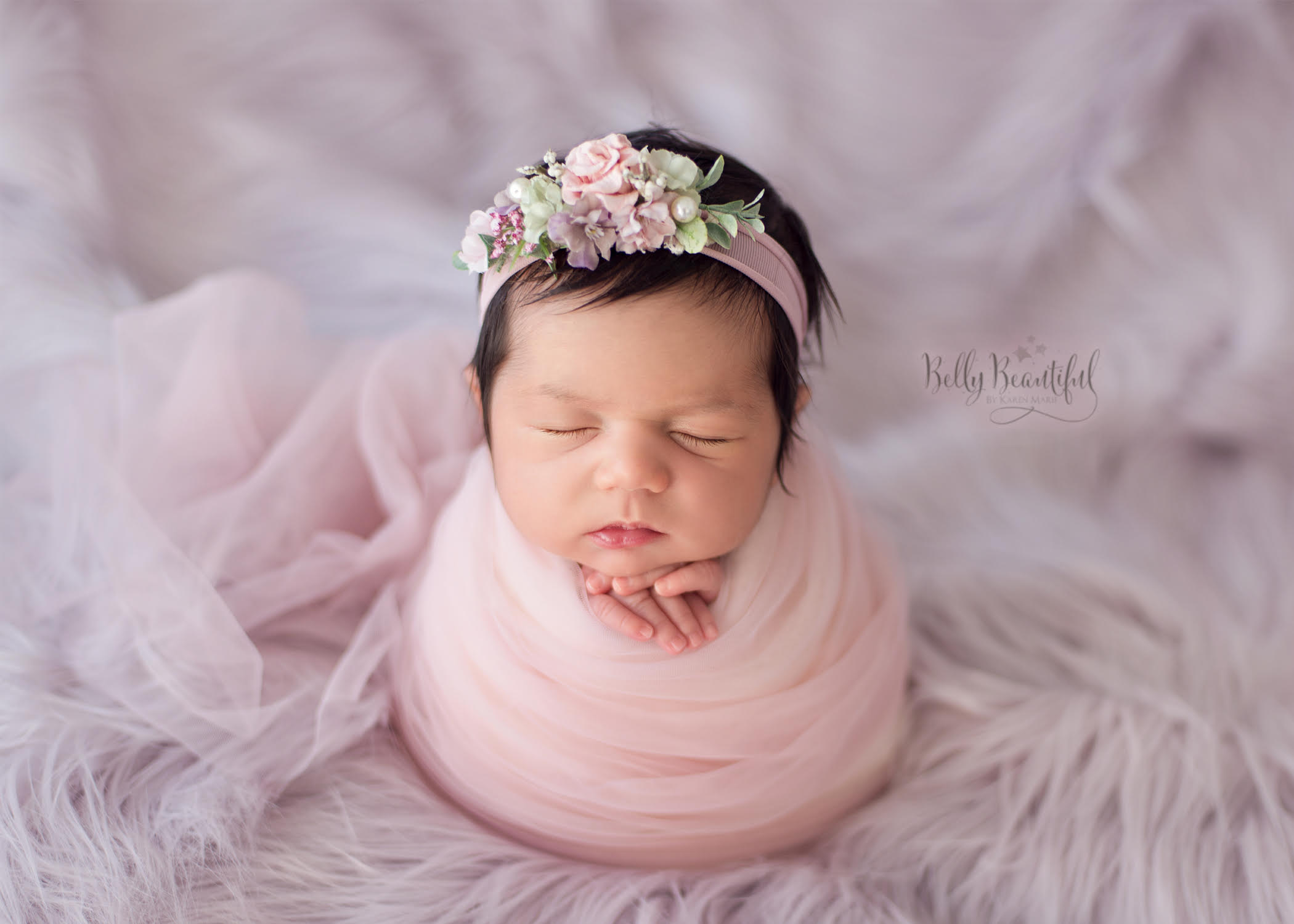 Belly Beautiful Photography
Belly Beautiful Photography
Sew Trendy Fashion & Accessories has built a reputation for crafting some of the finest newborn and maternity clothing, props, and accessories in the industry.
That being the case, if you have a photographer on your list that specializes in newborn photography, an ideal gift idea for them is a Newborn Mesh Wrap from Sew Trendy.
Created with a soft, high-quality mesh fabric, this set is a studio essential for any newborn photographer and is a Sew Trendy exclusive.
The mesh is both soft and stretchy, making it a perfect accessory for wrapping a newborn. It can be used as a base layer or layered with other fabrics.
The photographer on your list can even match this newborn set to Mama's gown to create an even more beautiful studio experience for mom and baby!
Learn more about the Sew Trendy Newborn Mesh Wrap
Drone World DJI Mavic Sling Bag
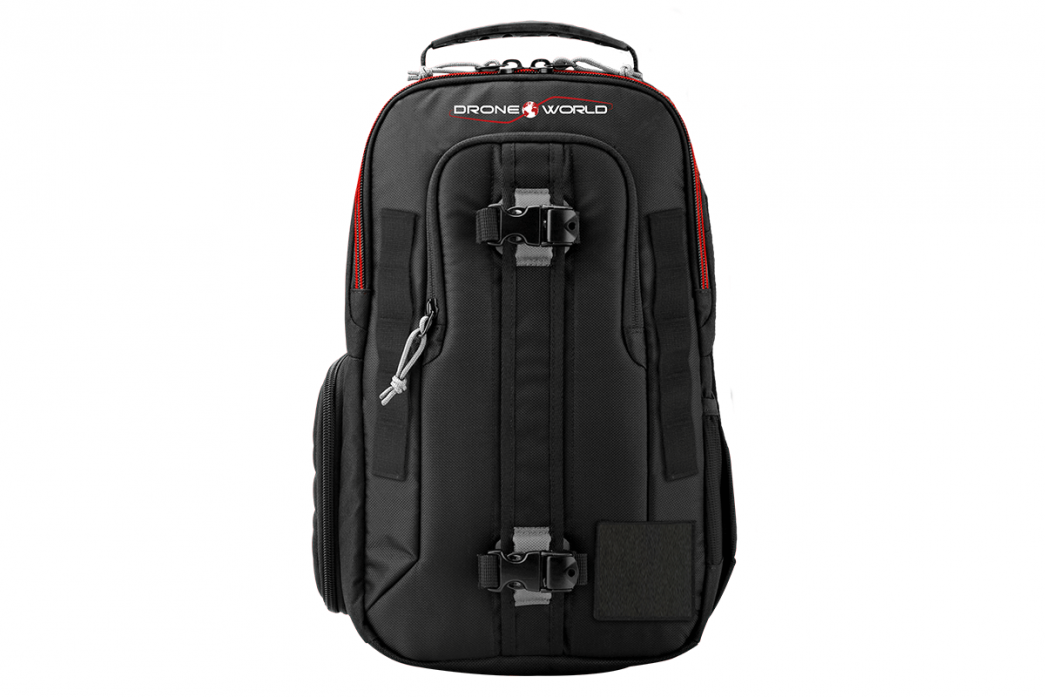
Drones are becoming the go-to photography device for a lot of folks, which is why a bag to carry their drone and accessories is such a great gift idea for photographers.
Drone World has developed a sling bag system to carry a number of DJI products, including the Mavic Air, Mavic Pro, Mavic Pro Platinum, and the Spark.
The bag offers a lightning-fast deployment system so your favorite photographer can get their drone out and into the sky in a flash.
The bag can be rotated to the front, the side-access can be unzipped, and the drone can be taken out and launched.
The bag has fully adjustable padded dividers and an all-weather cover to keep things dry, too.
Not bad for under $50, right?!
Learn more about the Drone World DJI Mavic Backpack
HDRsoft Photomatix Essentials
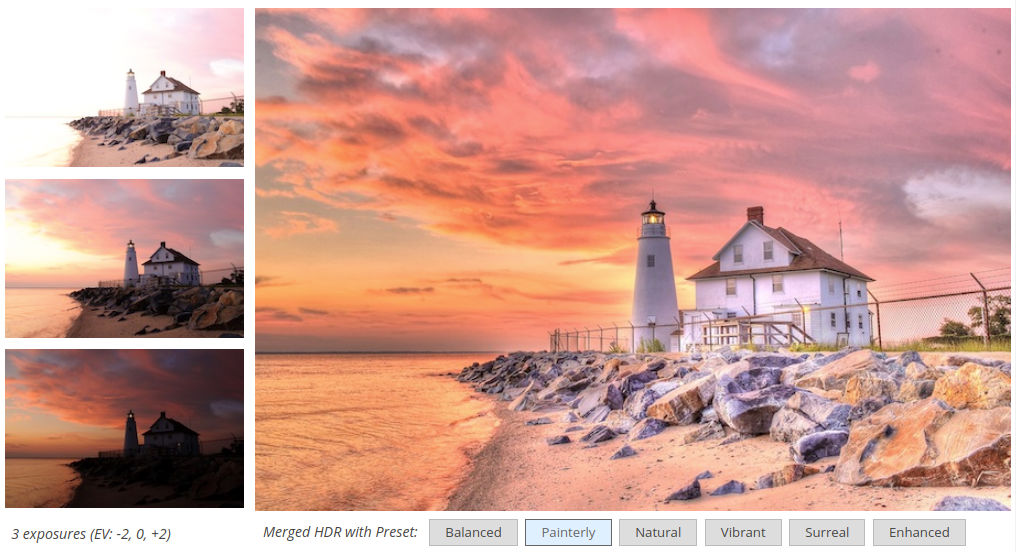
One of the most difficult things to master in photography is exposure.
Oftentimes, the highlights in a photo are too bright or the shadows are too dark.
But HDR - high dynamic range - photography takes care of that by combining multiple exposures into one photo, that way photographers have a well-exposed image throughout.
Photomatix Essentials by HDRsoft is an easy-to-use program that allows photographers to easily create HDR photos, even from source images taken when the camera is handheld.
The program has automatic ghost removal as well as 33 HDR settings and 30 built-in presets for perfecting HDR images.
There's even four HDR styles for further customizations.
Creating beautiful, well-exposed images has never been easier!
Learn more about HDRsoft Photomatix Essentials
Sirui Tabletop Tripod Kit
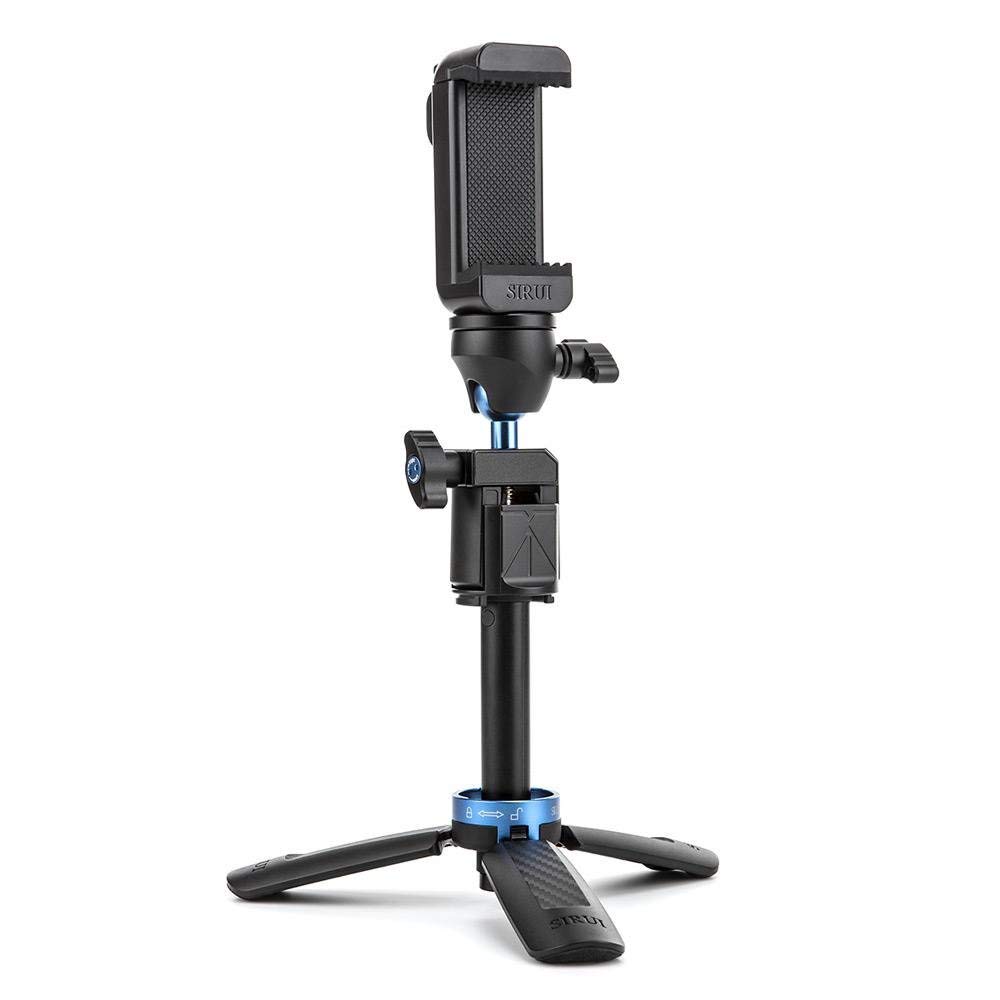
With the addition of powerful cameras, lenses, apps, and other features on smartphones that make them excellent cameras, it only makes sense that more and more photographers are using their phones as one of their primary camera systems.
That being the case, they need a compact, easy-to-use tripod to stabilize their smartphone for picture-taking.
The Sirui Tabletop Tripod Kit is a perfect complement for smartphone photography.
It includes a 3-stage folding tripod, a mobile phone clamp, a multi-function mini clamp ball head, and a Bluetooth shutter release.
The tripod can even be extended for use as a selfie stick!
Help the photographer on your list expand their creative abilities with their smartphone camera by hooking them up with a top-notch tabletop tripod.
Learn more about the Sirui Tabletop Tripod Kit
The Most Comfortable Camera Strap Available
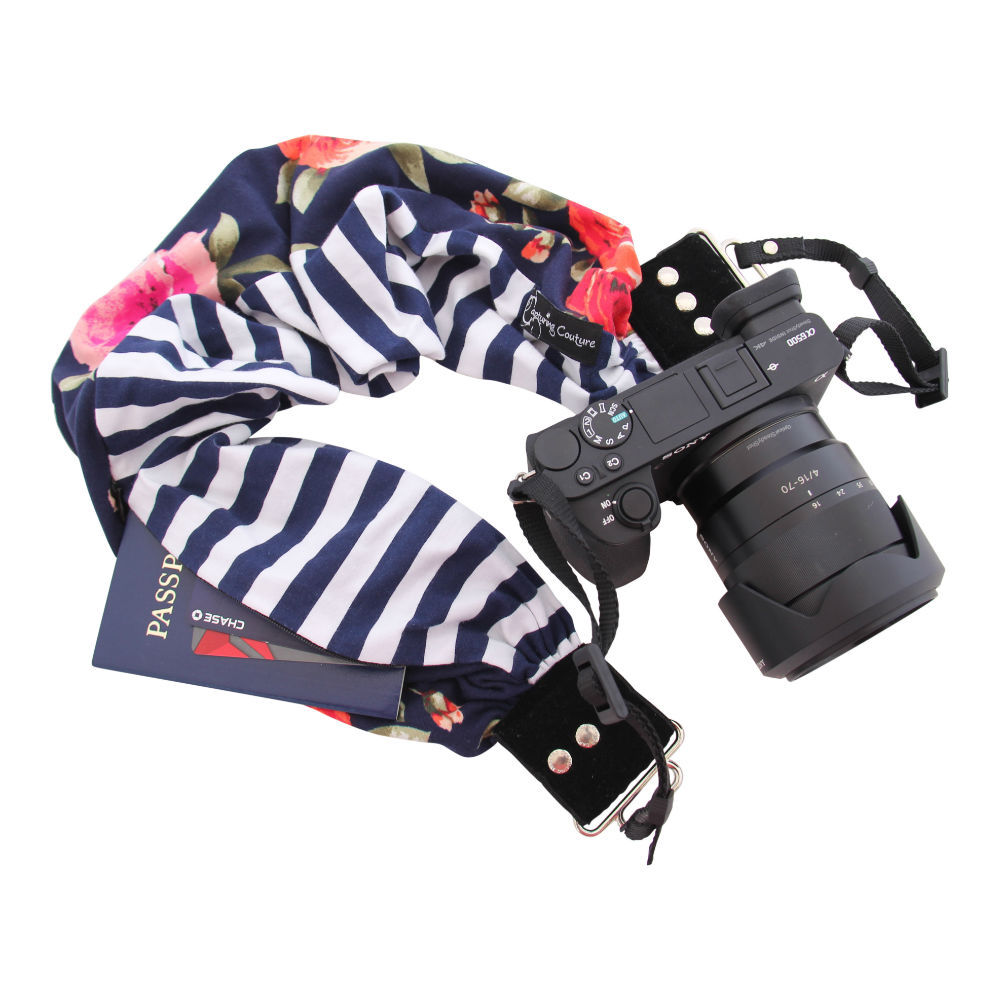
There is no doubt about it…scarves make the most comfortable camera straps!
For the photographer on your holiday list that wants something functional and fashionable, consider giving them the gift of a Capturing Couture Scarf Camera Strap.
On the functional side, these beautiful and unique camera straps, like the Sammie|Allie Model shown above, have all the strength and adjustability of any strap out there. With high-quality knit fabrics and strength-tested connector webbing, this strap can go from over-the-shoulder to across the body with no problem with a 35” to 53” variable length strap.
On the comfort side, the knit/cotton blend fabric is super soft to the touch and gives any outfit a trendy, updated look.
Exclusive to Capturing Couture is the added hidden pocket for your phone, lens cap, spare memory card and more! This patent-pending design won’t be found anywhere else.
No matter whether it’s hot or cold, whether it’s needed for a big or small camera, or whether the photographer on your list is a pro or an amateur, this strap is an easy choice to make. The hardest part is picking out a color!
Learn more about Capturing Couture Scarf Camera Straps
Freehands Photography Gloves
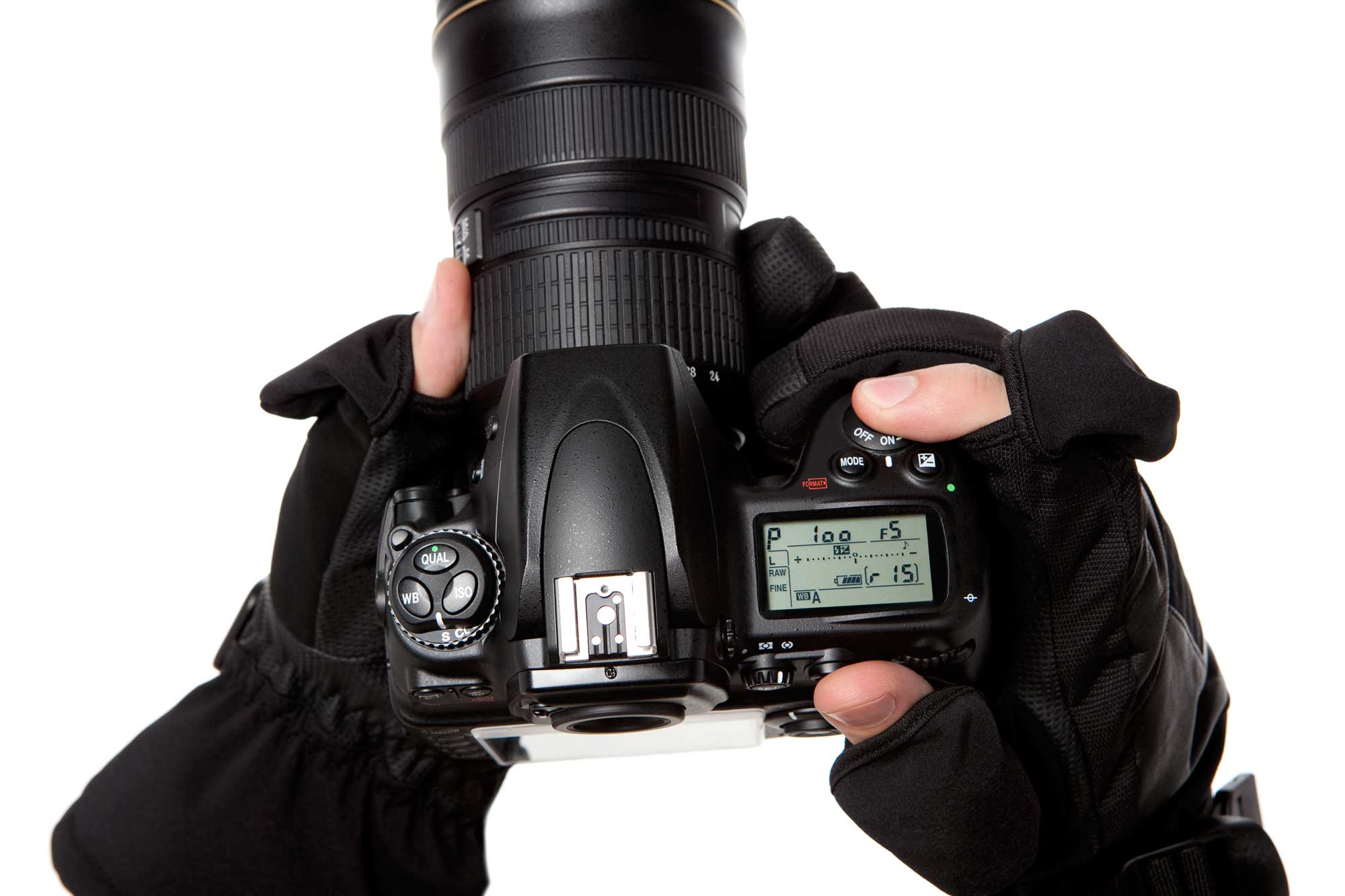
Just over a decade ago, New York City-based designer Josh Rubin realized that he needed to design gloves that provided more functionality than what he could find in traditional gloves.
His epiphany moment?
Answering his iPhone with his nose.
Josh didn’t want to take off his gloves, nor did he want to continue answering the phone with his nose. So, while at dinner one night with his father, Stanley Rubin - who is a glove maker, no less - the idea for the Freehands gloves was born.
Fast-forward to 2018, and Freehands is going strong with the third generation of family glove makers responsible for crafting gloves that are comfortable, aesthetically pleasing, and functional.
Though Freehands has tons of different gloves and has a world-recognized brand, I've outlined just a few of my favorite models below, each of which costs less than $50:
Stretch Glove (Mens and Womens)
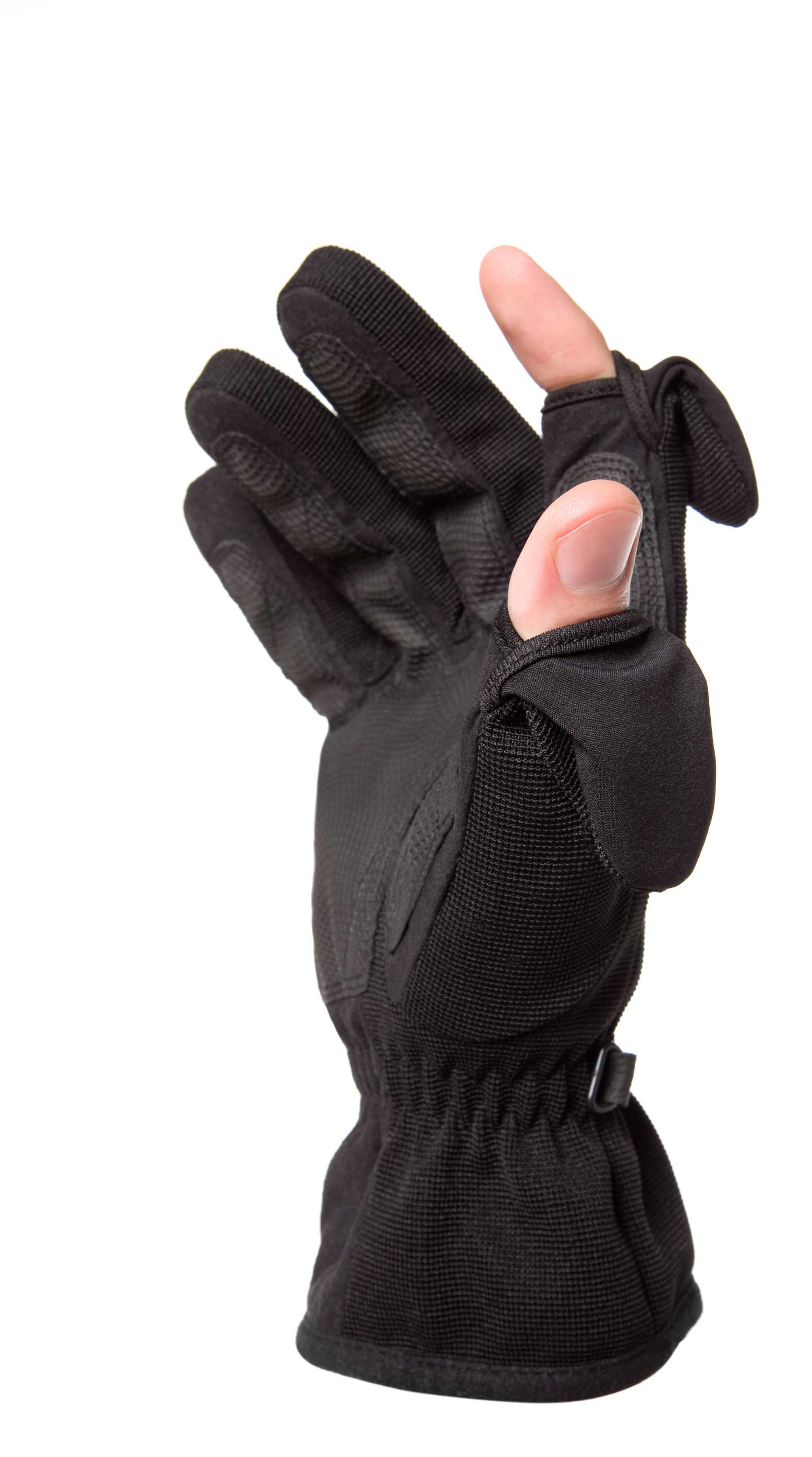
The windproof/waterproof barrier on the back of the glove and the full Thinsulate lining will keep your hands warm and dry while the finger cap edges are reinforced for long-lasting durability.
These gloves have a palm patch for added security when holding your phone or camera while the finger caps on the index fingers and thumbs are magnetically secured to ensure easy calling, texting, or operating your camera.
Fleece Glove (Mens and Womens)
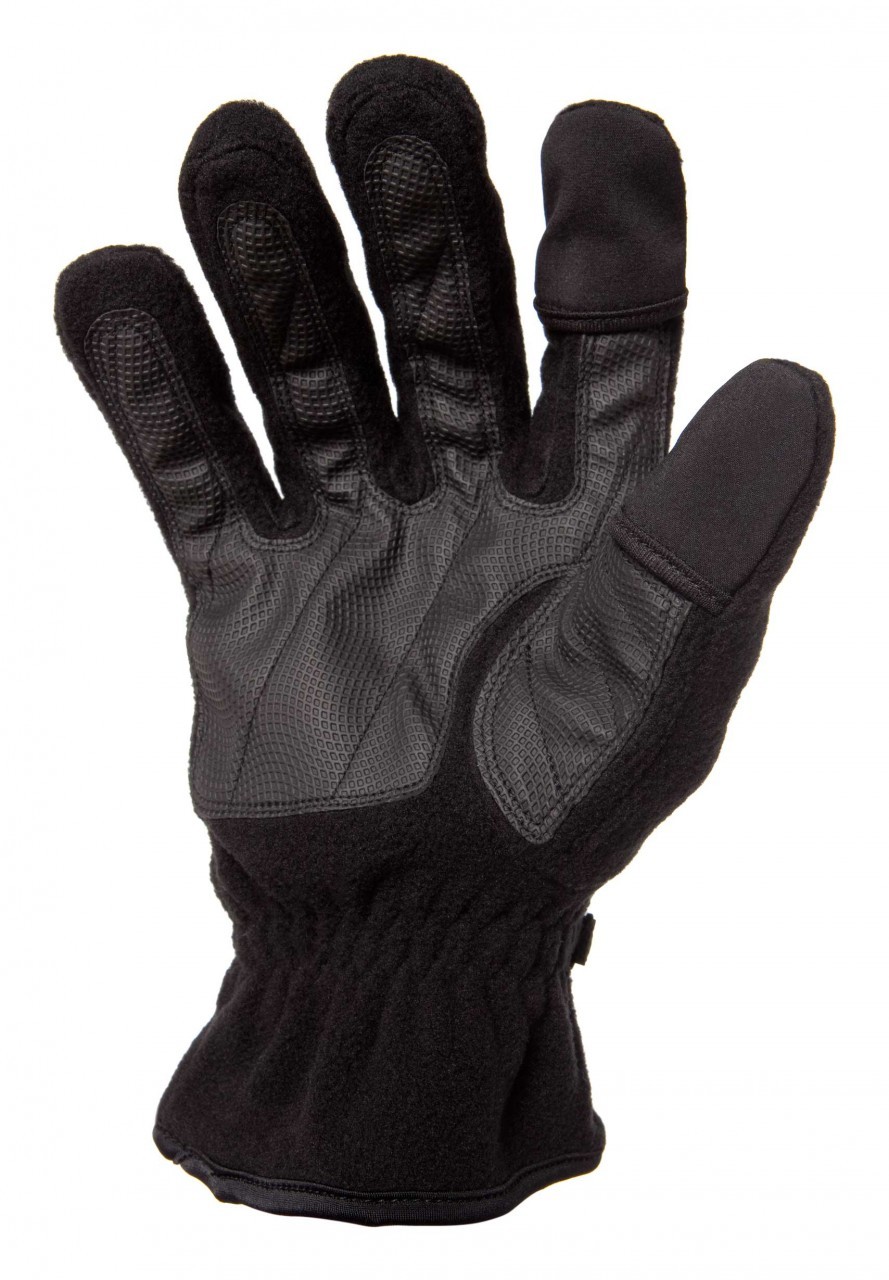
If you or someone on your list needs an unlined fleece gloves for cool days, the Fleece glove is an ideal choice.
The full digital grip on the palm helps you keep a grip on your phone or camera while the improved finger flap overlap keeps cold air out when your fingers are covered.
There's a handy elastic wrist cinch and plastic hook to keep the gloves together, too.
Soft Shell Photography Gloves (Mens)
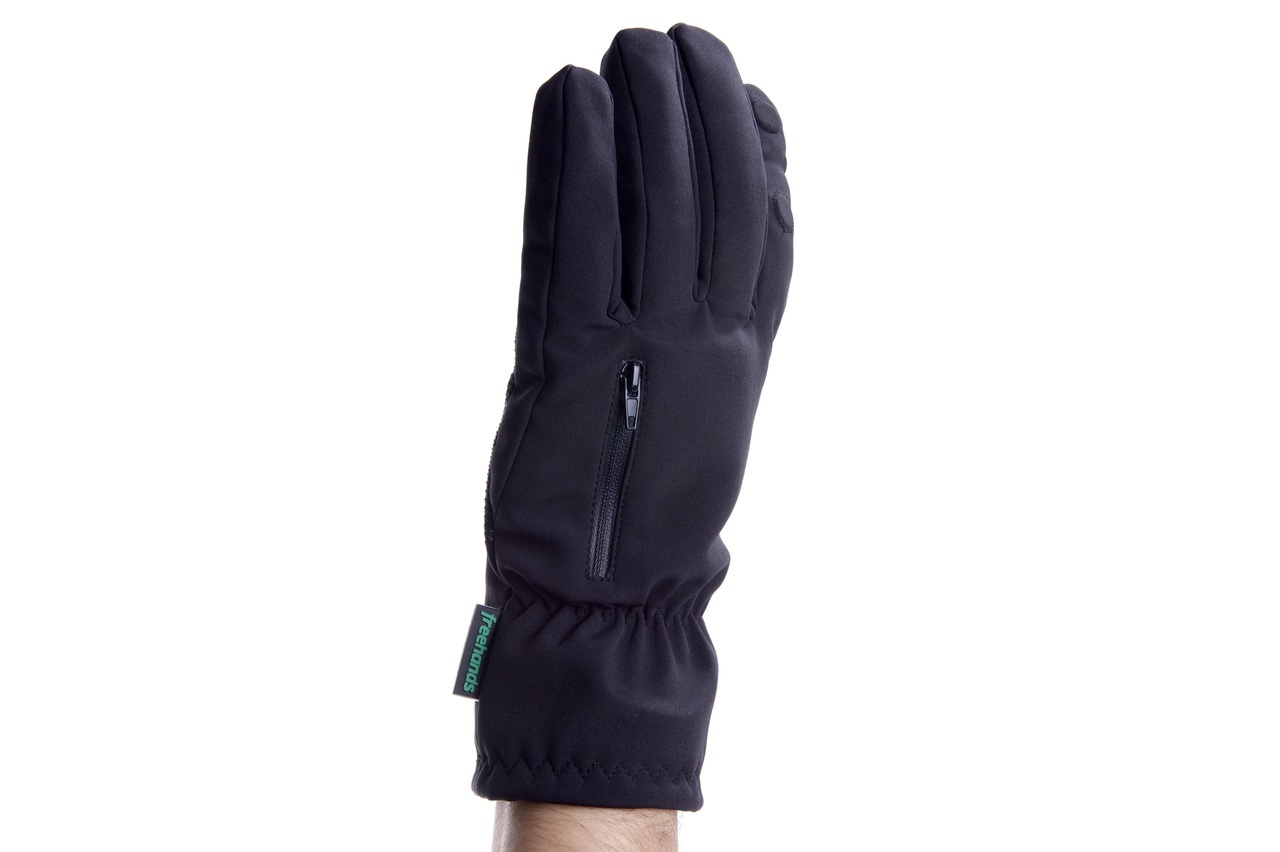
Designed specifically for photographers, this soft shell glove not only has the flip back caps on the index fingers and thumbs, but there's also an integrated zipper pocket on the back of the left hand that's a perfect spot for carrying a spare memory card.
Like Freehands' other gloves, this soft shell model offers superb warmth, performance, and durability. By customer request this style has a thin lining to cover the exposed finger or thumb when the cap is pulled back.
Finger Mitten (Mens)
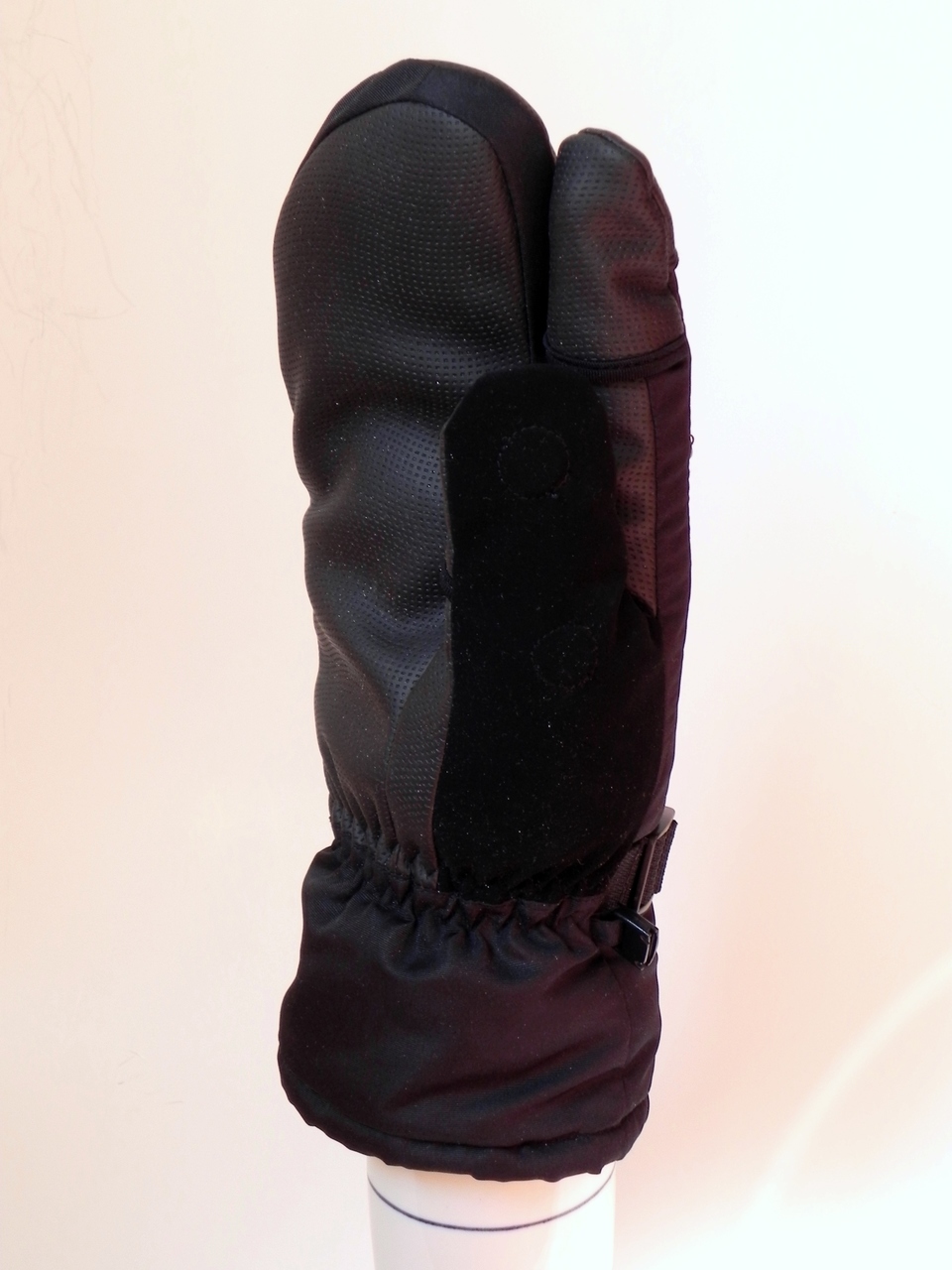
What your favorite photographer will appreciate most about these mittens is that they provide the warmth of a mitten while also having the functionality of an index finger and thumb.
Both the index finger and thumbs have flip back caps that are magnetized to keep them out of the way.
And with a Velcro-closure pocket on the back of the hand for a memory card or hand warmer, these mittens are ideal for photographers that have to work in chilly conditions!
Soft Shell Ski/Snowboard Glove (Mens)
The photographer on your holiday shopping list needs to unwind from time to time, and for those that ski or snowboard, the Freehands Soft Shell Ski/Snowboard Glove is a great gift.
It's got a soft shell outer layer, a soft velour lining, and a digital grip palm.
Add to that a storage pocket over the knuckles, an adjustable web strap, a cord lock, suede thumb, and water-repellent/breathable construction, and you have the makings of one heck of a cold-weather glove!
PhotographyTalk members can use the 20% off coupon code "PHOTOGRAPHYTALK" through 12/1/2019 at freehands.com
PhotoLogo
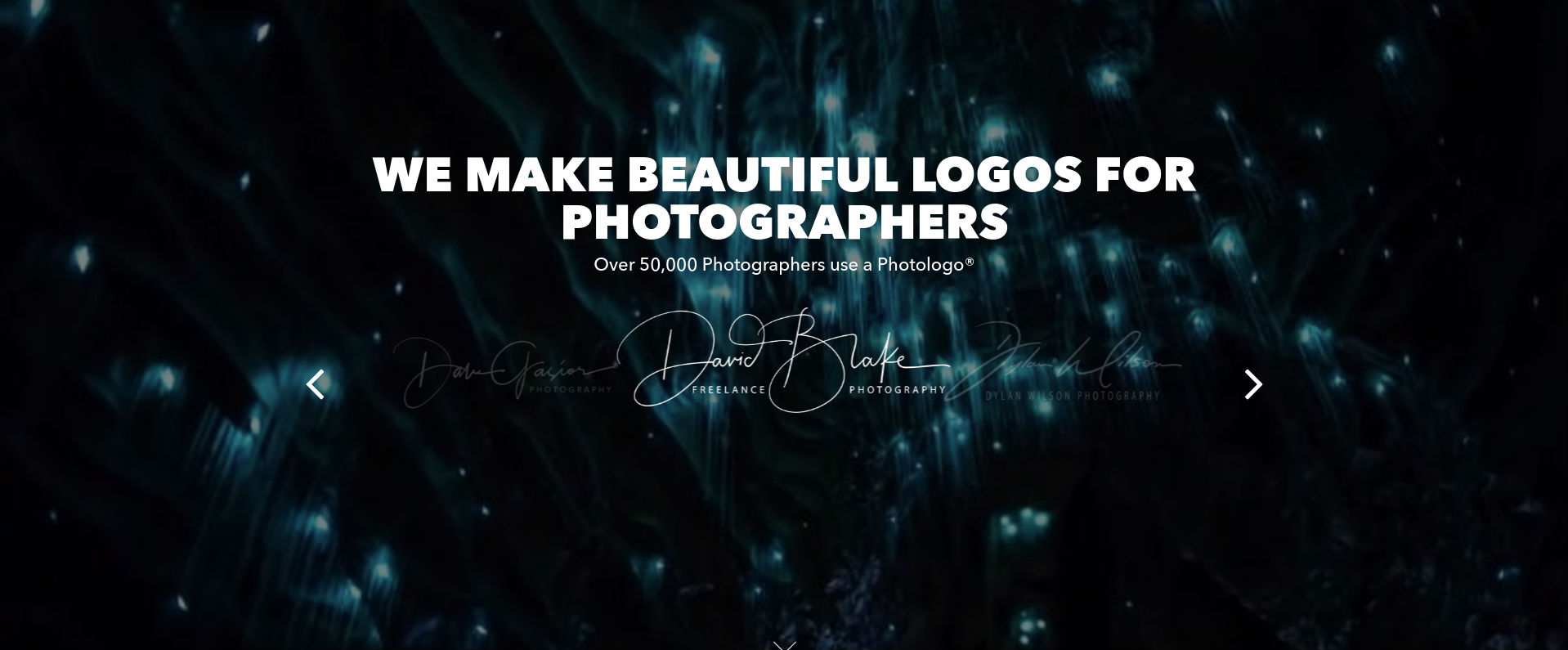
There are two things that many photographers worry about when they post their images online.
First, photographers have to be concerned about someone stealing their photos and passing them off as their own. It’s an unfortunate byproduct of the world we live in.
Second, photographers (myself included) worry about using signatures, logos, or watermarks on images because if they aren’t done well, they detract from the quality of the image, as shown below.
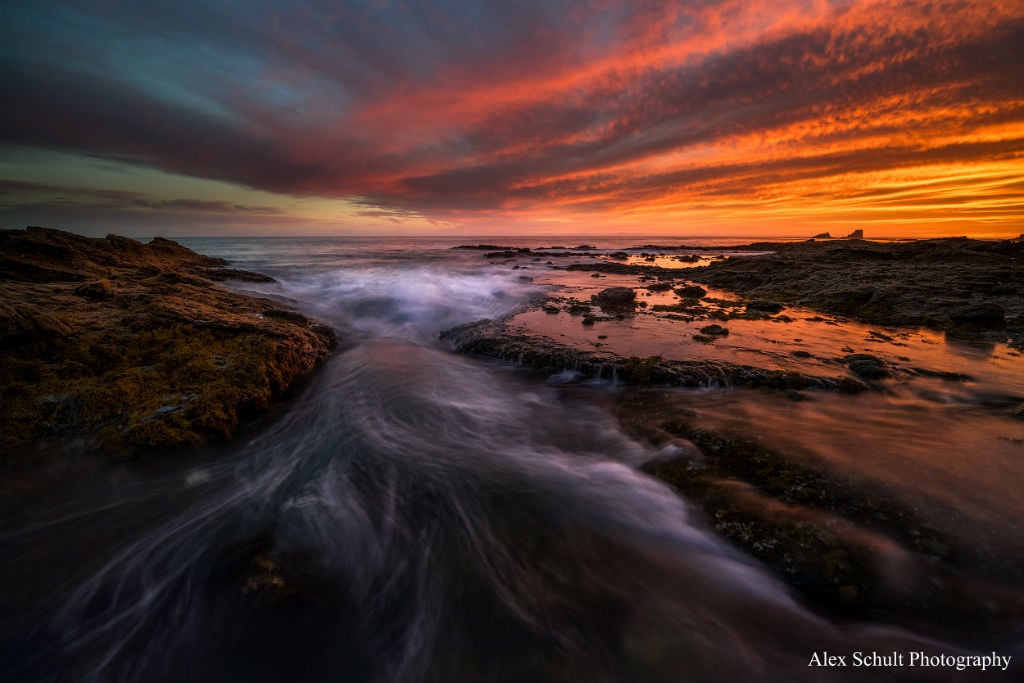
So, if you’ve got a photographer on your holiday shopping list, you might consider giving them a gift that addresses both of these issues. That gift is PhotoLogo.
For under $40, you can give your favorite photographer a custom-designed, handmade signature made by real humans that they can use to watermark all of their images.
It’s easy as pie, too. Just direct your loved one to PhotoLogo’s website where they can choose from a wide variety of samples to customize the look of their signature. In as little as 48 hours, they’ll receive a proof of the signature. If something’s off, a free revision is included, that way they get the exact signature they want.

Over 80,000 photographers and counting can’t be wrong. I mean, check out my PhotoLogo above. Not bad, right?!
This holiday season, help the photographer in your life identify their photos in style and sign their work, just like artists have for hundreds of years. Get them a PhotoLogo!
We Recommend
Top 10 Gifts for Photographers Under $50 - 2019 Edition
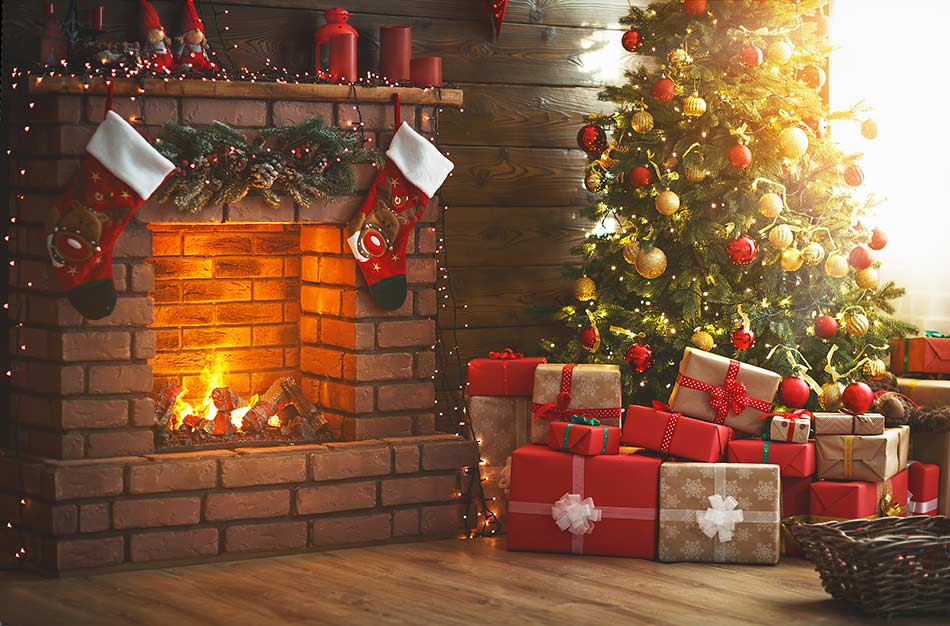
photo byevgenyatamanenko via iStock
Sure, it’s only August, but before you know it, it’ll be December 24th, and you’ll have zero gifts for your favorite photographer.
Why not get a head start this year and scope out a few items that photographers will love?
This list runs the gamut of photography gadgets and accessories, all of which are under the $50 threshold.
See what you can find to impress the photographer on your holiday shopping list!
Gifts for Photographers Under $50: CanvasHQ Print
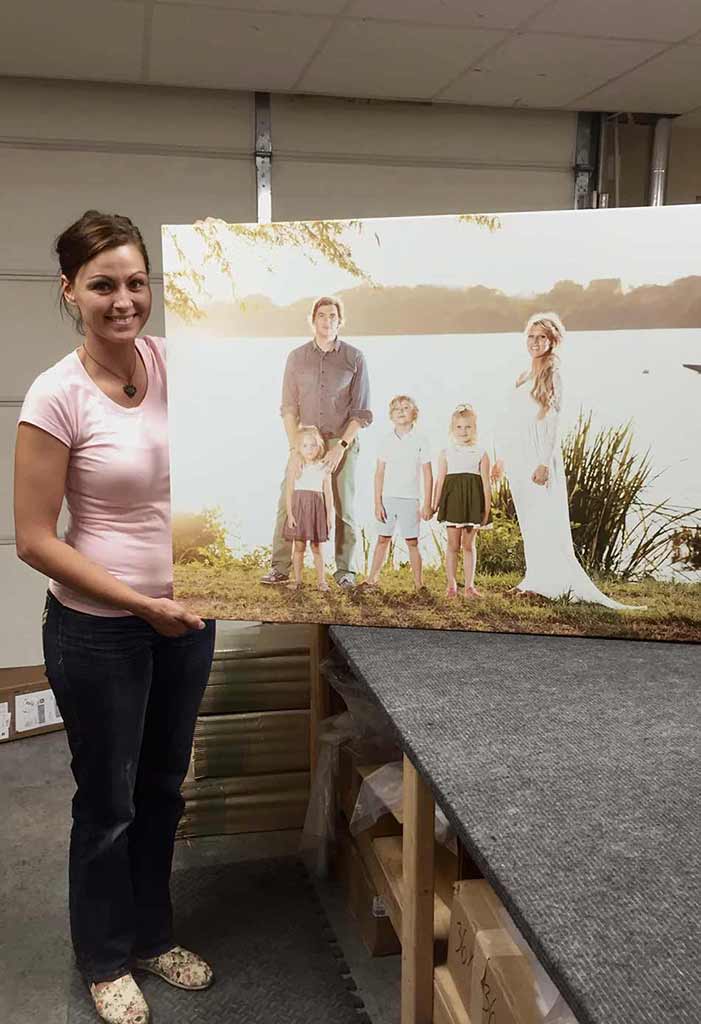
If you’re like me, sometimes finding the perfect gift for certain loved ones is a long, drawn-out process that causes tons of stress, and often you still don’t get something that totally blows them away.
I think a lot of photographers fall into this category. We have specific likes, and many of us already have most of what we want or need gear-wise, and what we don’t have is usually too expensive to put on a Christmas wish-list anyway.
But for all those hard-to-shop-for photographers on your 2019 holiday shopping list, I have the perfect solution - a canvas print.
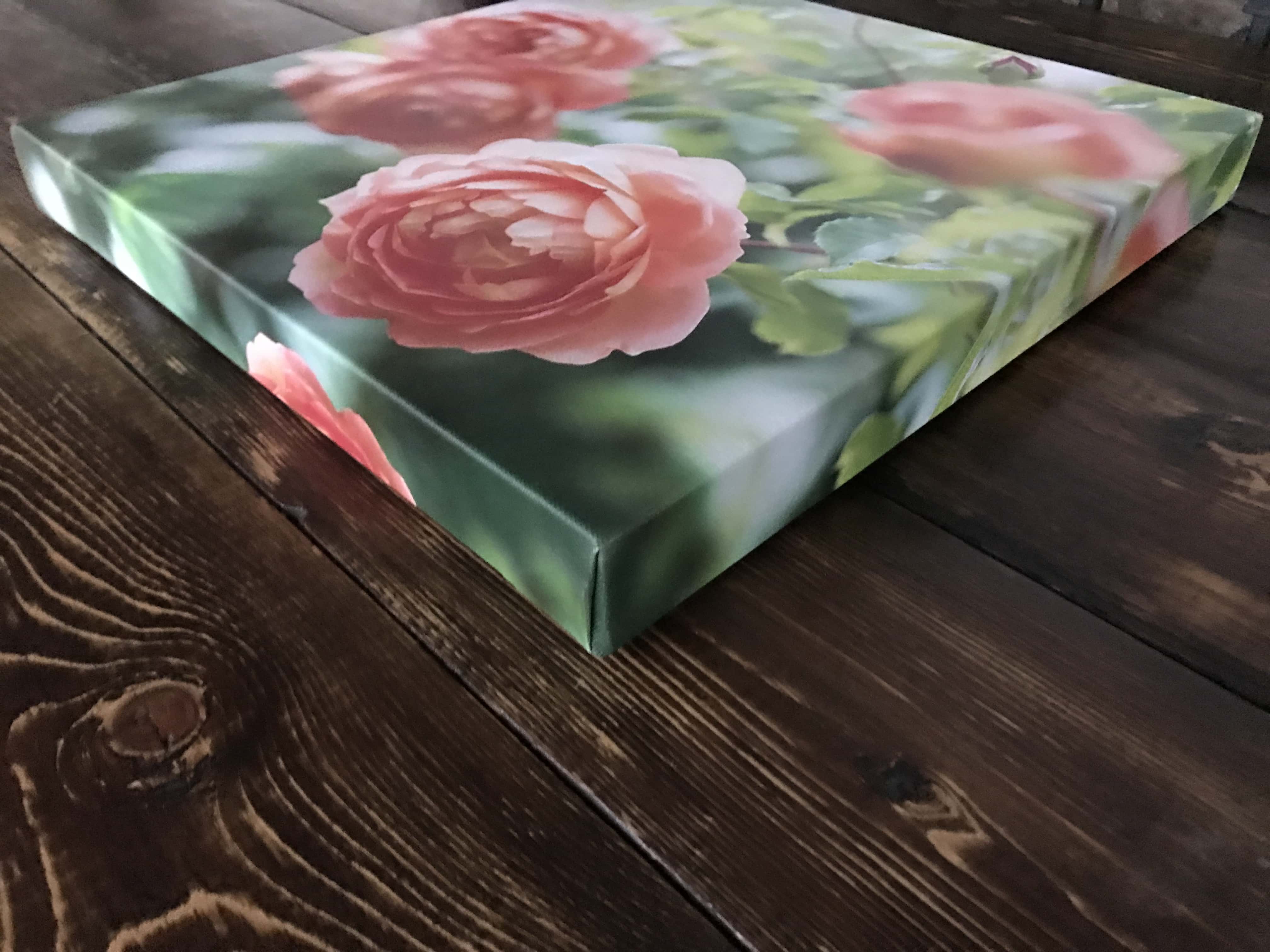
Think about it…
A canvas print is a gift that keeps on giving.
Not only can you immortalize one of your favorite images from your favorite photographer, but you also give them a means to showcase their work in a format that’s drop-dead gorgeous.
I have tons of canvases in my home, the vast majority of which are from CanvasHQ.
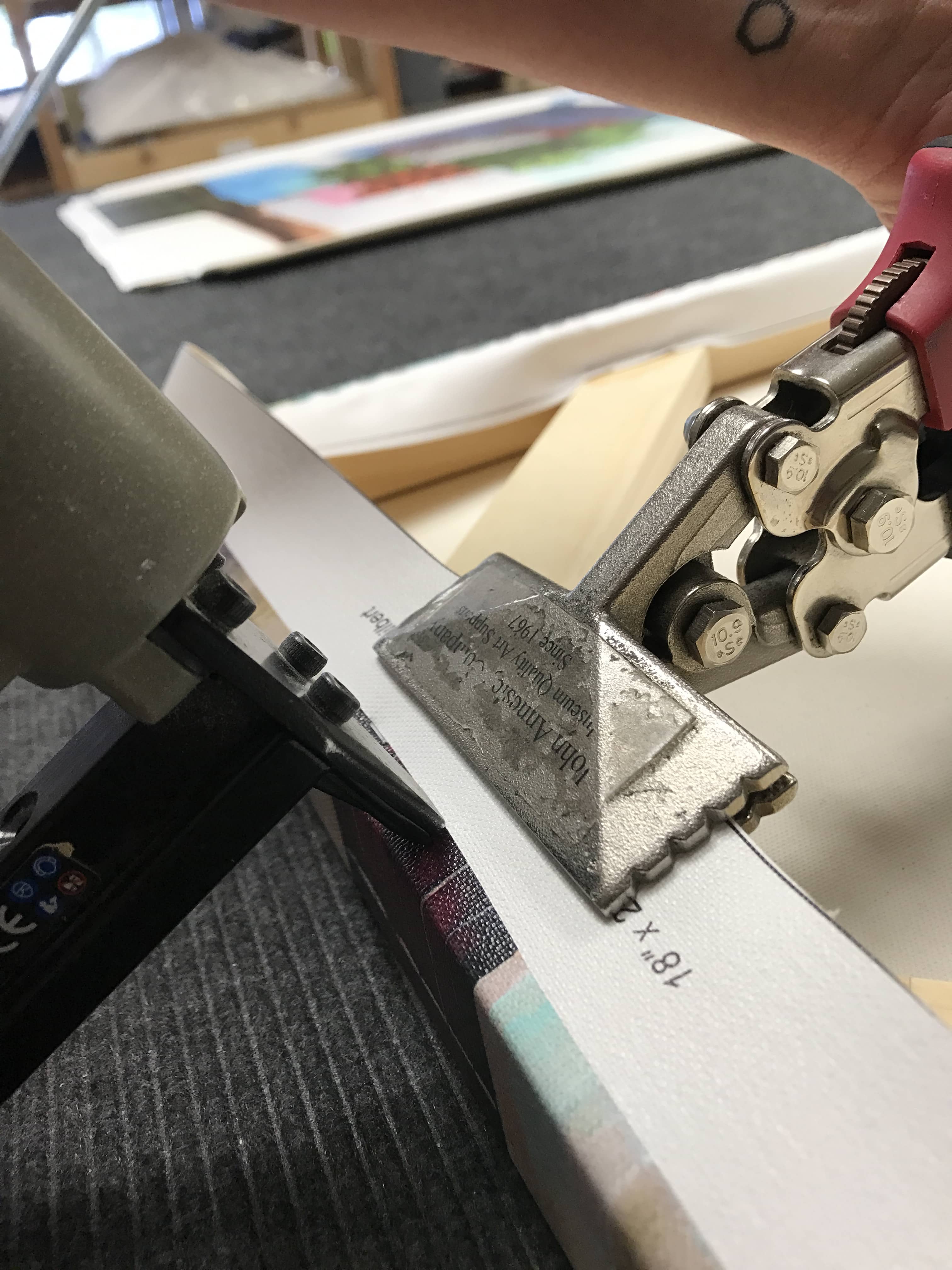
Now, I know what you’re thinking - canvas is old school.
Sure, maybe it is, but I’m telling you that these canvas prints from CanvasHQ are mind-bogglingly beautiful. In fact, they go head-to-head with any metal or acrylic print I have in my home.
The attention to detail is just amazing, and the materials they use are top-of-the-line. We’re talking archival-grade canvas, commercial-grade inks that are water and UV resistant, and kiln-dried pine frames to keep everything straight and true.
I love the personality that the canvas texture gives my images. That’s true whether it’s a portrait of my son or a landscape photo.

I’d be remiss if I didn’t mention the customer service you get with CanvasHQ.
These guys are committed to getting it right, so if something doesn’t go as planned, you won’t be hung out to dry.
If you have questions, they’ll answer them. If you have a problem, they’ll fix it. If you need assistance with uploading your photo or even picking the best finishes for your canvas, they’ve got your back.
In the video above, I explain why I highly recommend a CanvasHQ canvas print as the ideal gift for the photographer on your holiday shopping list.
Start shopping for your favorite photographer today on CanvasHQ!
Gifts for Photographers Under $50: Holdfast Camera Leash Leather Wrist Strap
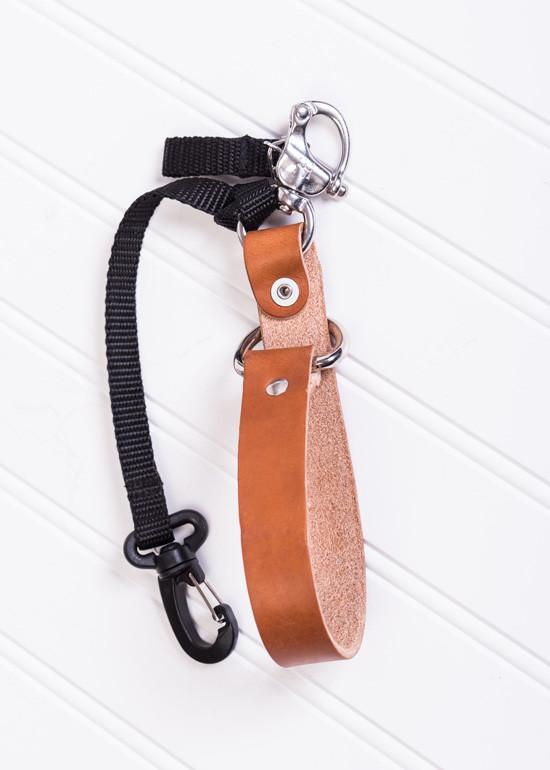
Not every photographer wants or needs a neck strap or camera harness, so why not give them the gift of a tough, useful, and gorgeous leather wrist strap?
The Camera Leash by Holdfast is impeccably made and comes in a variety of materials, including bridle leather, water buffalo leather, American bison leather, and python skin. There are also several colors available to suit your favorite photographer’s specific tastes.
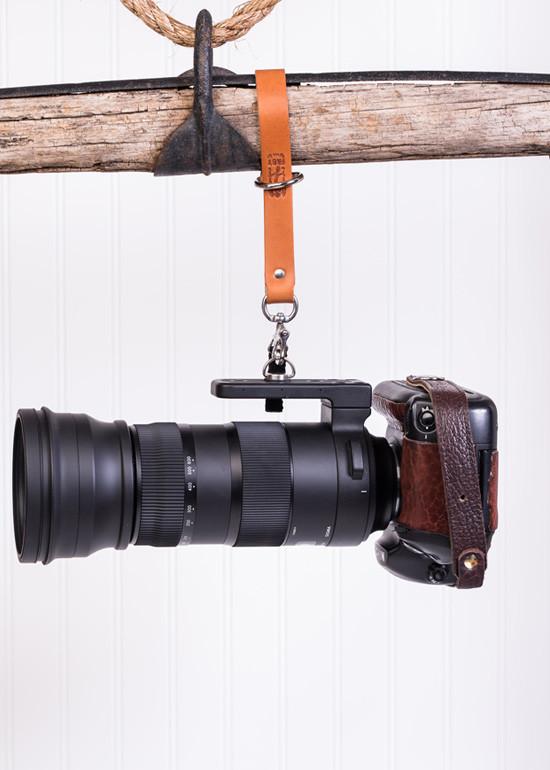
This strap is multi-functional, too.
Use it to carry your keys and attach them to a belt loop. Secure a water bottle to your backpack. Use two of them together to carry a third camera on the Holdfast MoneyMaker harness. There’s few products under $50 with that much functionality!
Plus, these things look absolutely incredible with fine details that scream, “I’m handcrafted!”
It’s a photography gift that your favorite photographer is sure to love.
Learn more about the Holdfast Camera Leash
Gifts for Photographers Under $50: Excire Search
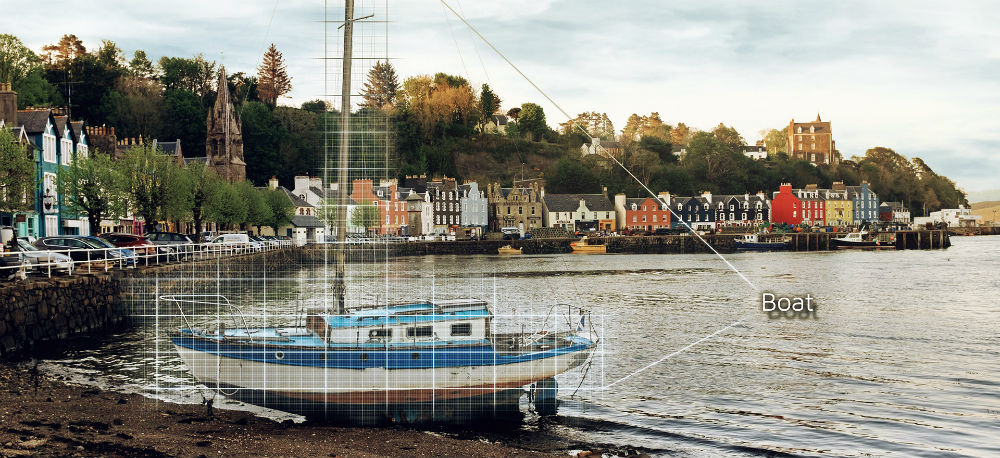
Give a gift this year that will make your favorite photographer’s life much, much easier by giving them Excire Search.
This software for Lightroom Classic CC has an AI-powered search engine that supercharges one’s ability to search Lightroom catalogs for photos.
In fact, it allows photographers to search for images by keyword (i.e., “dog,” or one of the other 124 keywords available) or by example, (i.e., by selecting a sample reference image of a boat from Excire’s library so it will find boat photos in the Lightroom catalog).
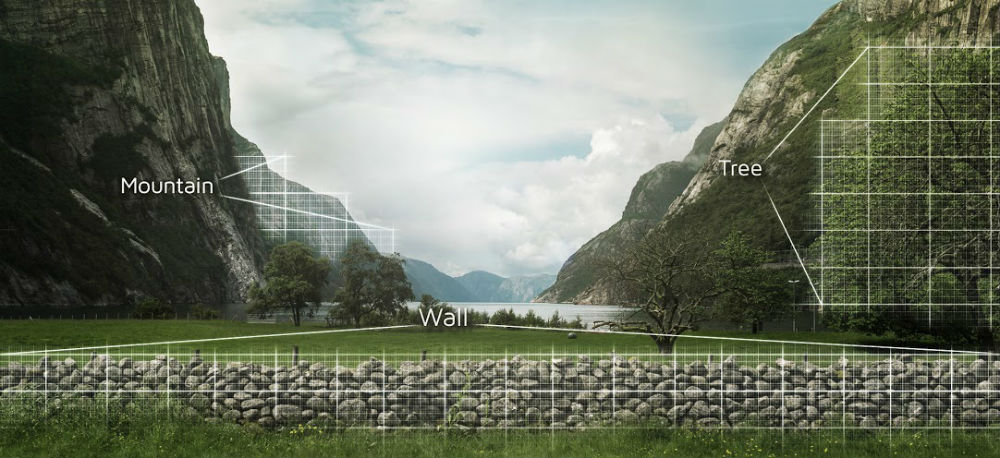
Additionally, Excire recognizes faces, so photographers can search for images of one, two, or multiple faces, for women or men, children or adults, and so forth.
In other words, Excire Search is the ultimate way to organize and search Lightroom catalogs. That means less time searching for the desired photos and more time actually editing them or taking new photos. What photographer wouldn’t like that?!
Learn more about Excire Search
Gifts for Photographers Under $50: Kenko Nyumon Slim Circular Polarizing Filter
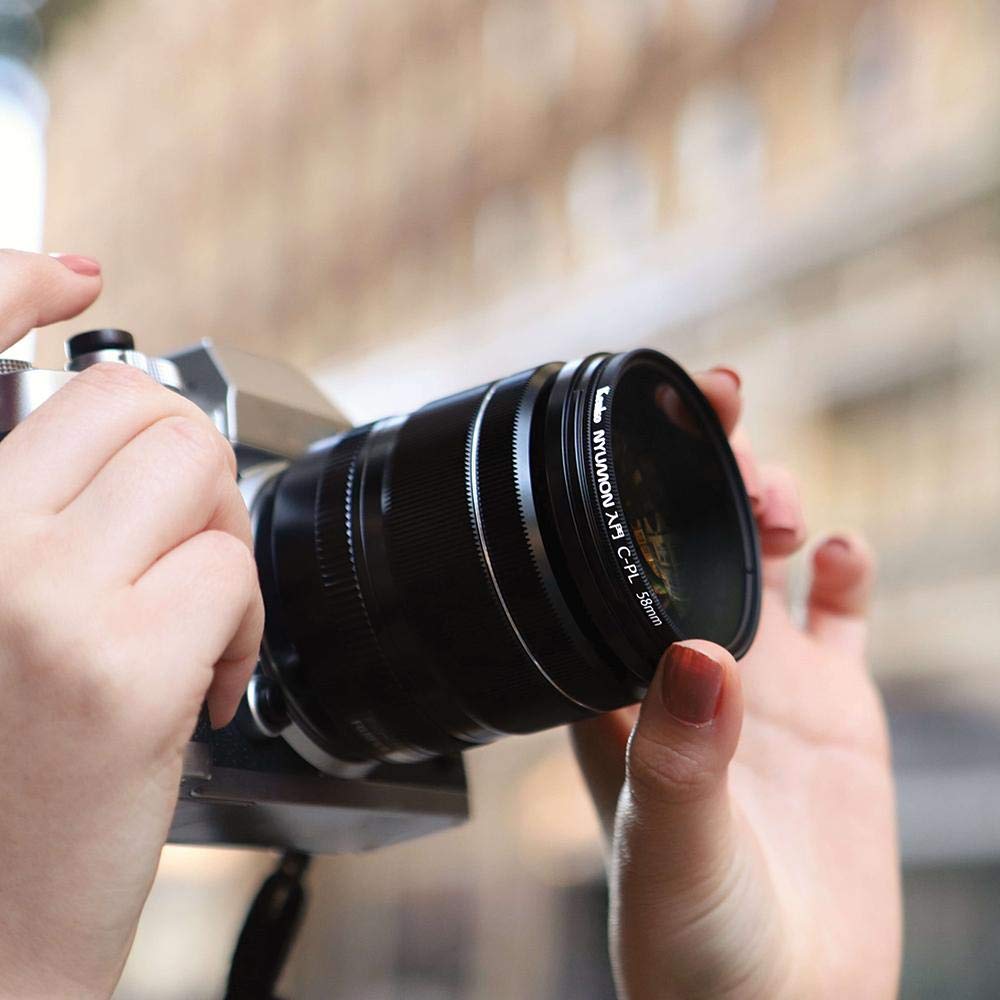
If the photographer on your list primarily takes landscape photos, an ideal gift for them is a high-quality circular polarizing filter.
The great thing about polarizing filters is that they can impact a photograph in many ways:
- They reduce glare off of water and other non-metallic surfaces like wet rocks or plants
- They minimize atmospheric haze so far-off features of the landscape appear more clear and crisp
- They boost the contrast of the sky with a deeper blue atmosphere and whiter clouds
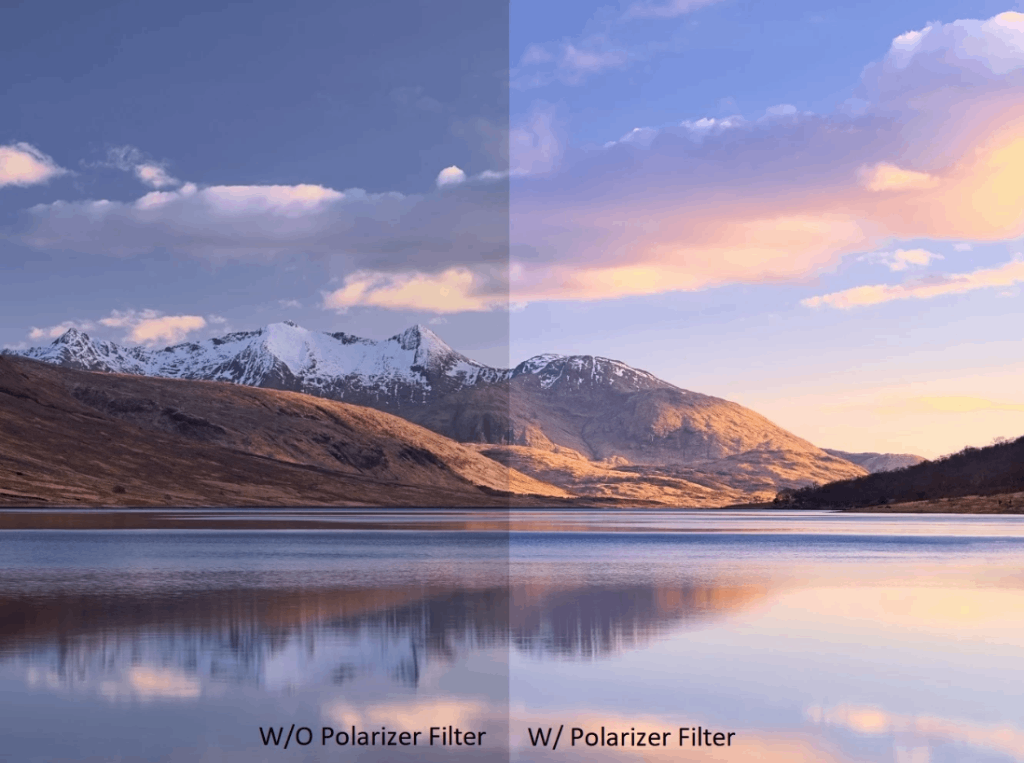
But not all polarizing filters are made alike…
Kenko Nyumon filters are the #1 selling polarizer in Japan because they are crafted of precision optical glass. That means you get optimum performance and control without busting your budget.
Additionally, this filter has a slim mounting ring to prevent vignetting and it has a multi-layer coating that repels dust, water, and fingerprints. What’s not to like about that?!
Learn more about the Kenko Nyumon Circular Polarizing Filter
Gifts for Photographers Under $50: HandlePod 3-Axis Action Cam Mount
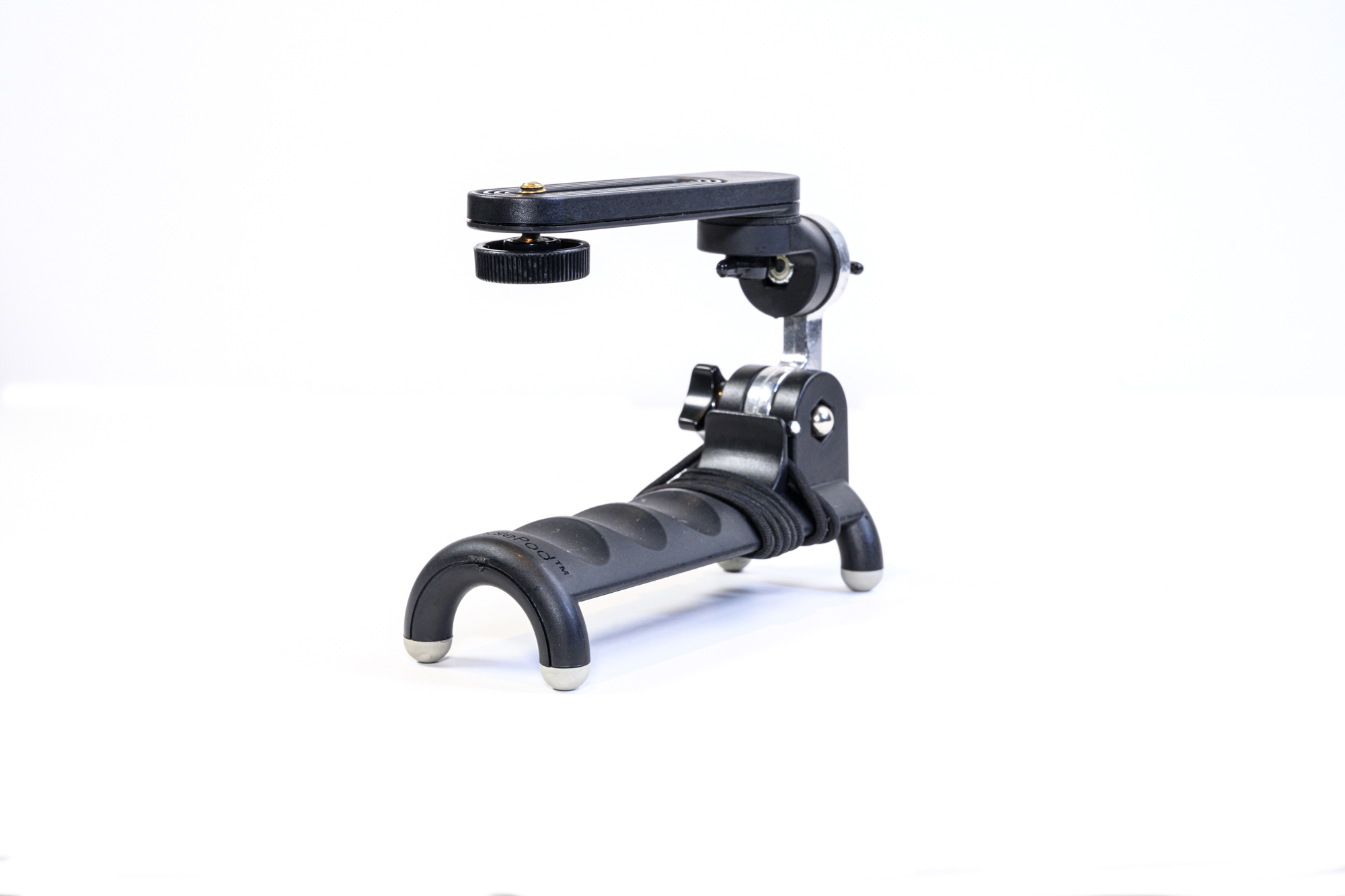
Does the photographer on your shopping list like to go out and adventure with their GoPro or other action cam?
I have the ideal gift idea for them - the HandlePod 3-Axis Action Cam Mount.
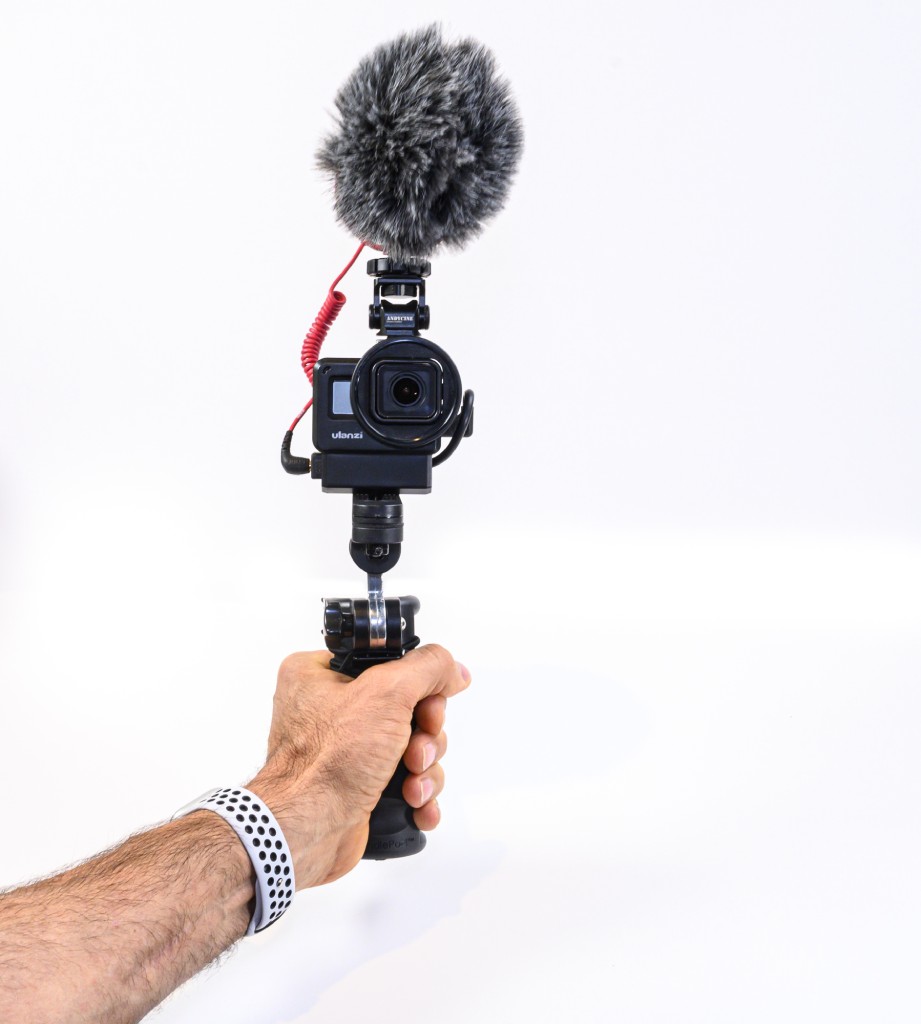
This ingenious gadget is a comfortable grip for shooting handheld video as well as a handy tabletop stand (or a stand for any horizontal surface for that matter).
Furthermore, it has an integrated elastic cord so you can lash it to stationary objects (i.e., a lamp post) for super steady hands-free recording.
The mount has 360-degree movement so you can capture smooth video and easily position it for the ideal still image as well.
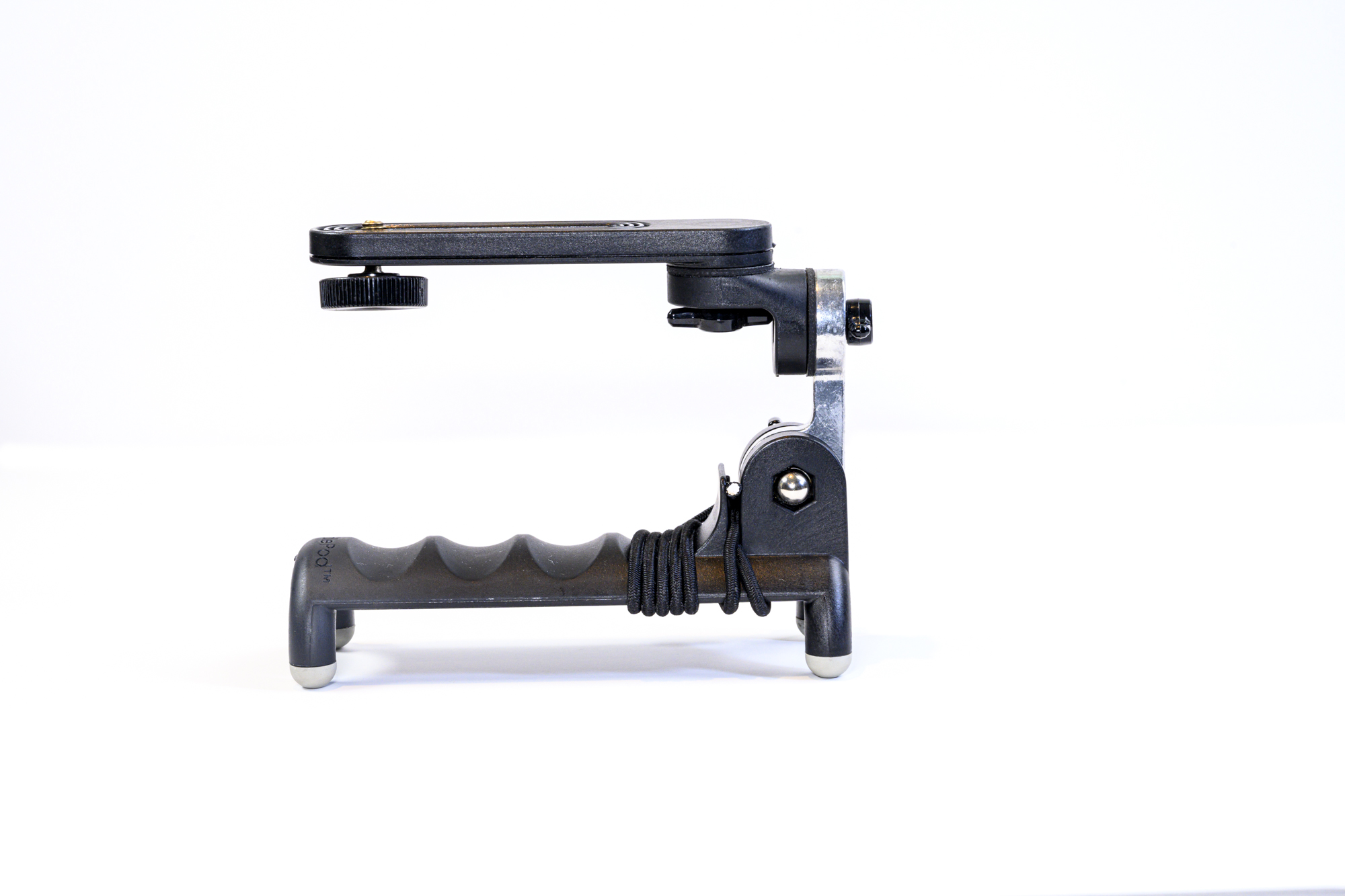
When used as a tabletop stand or lashed to a vertical surface, its four rubber feet keep it in place for anti-slip performance.
Perhaps best of all, it weighs just 4 ounces and fits in your pocket, so your favorite photographer can always have a stabilizing mount with them for their GoPro activities.
Learn more about the HandlePod 3-Axis Action Cam Mount
Gifts for Photographers Under $50: Kenko Puro UV MC Protector Filter

One of the biggest threats to a photographer’s lens is scratches. Add to that dust, smudges, and environmental contaminants, and you have a bevy of things that can negatively impact the front glass element of a lens.
That’s where the Kenko Puro UV MC Protector comes in…
Offered in sizes that range from 37 to 82mm, this UV Protection filter is made of precision optical glass.
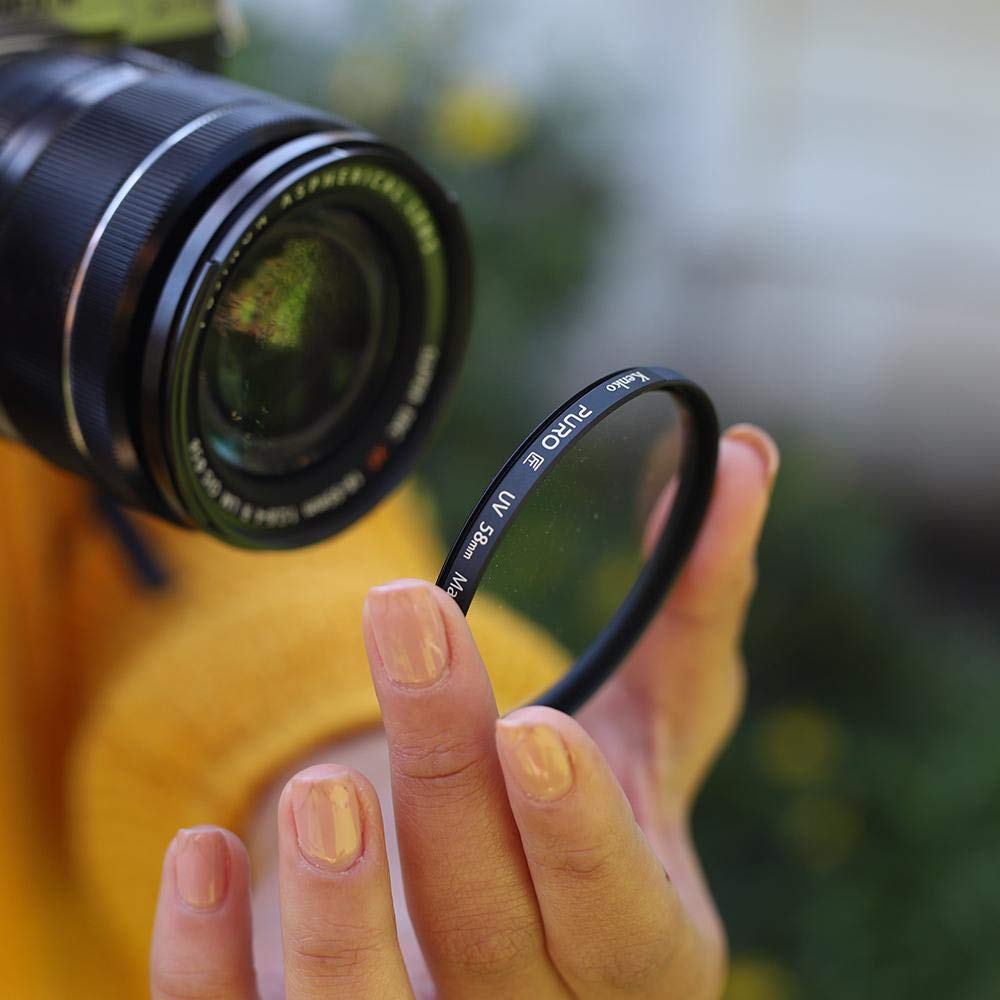
That means that not only does it shield the lens glass from damage, but it does so without negatively impacting the lens’s performance or sharpness.
Better still, the Asahi optical glass has a 16-layer multi-coating that repels dust, water, and smudges while increasing light transmission into the lens.
These filters are easy to clean and have a slim mounting ring so they won’t cause vignetting on wide-angle lenses either!
Learn more about the Kenko Puro UV MC Protector Filter
Gifts for Photographers Under $50: Aputure AmaranAL-M9 Pocket-Sized Light
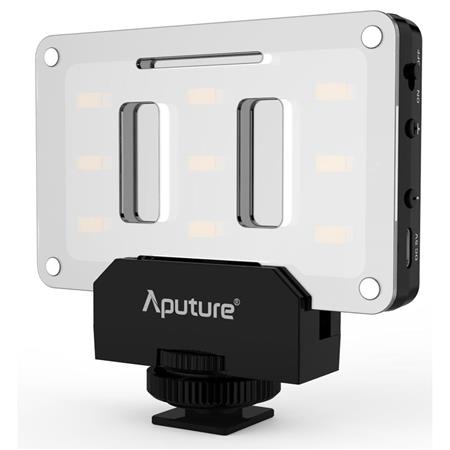
As the name suggests, this little light is perfectly pocket-sized so the photographer on your list can always have clean, daylight-balanced light for photos and videos.
It has nine high-efficiency SMD bulbs that are capable of 900 lux of light, which is more than enough to act as a close-up fill light. It has 9-step adjustable brightness to tailor the intensity of the light to the specific shot too.
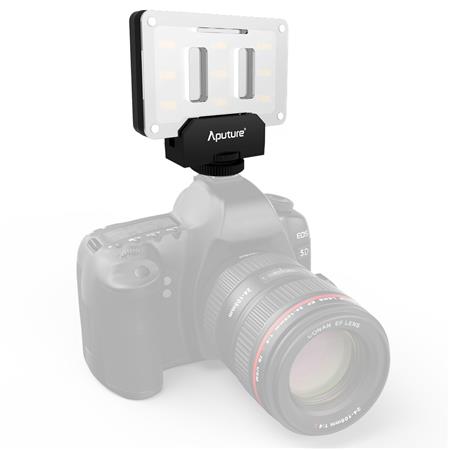
From portraits to macro to video work, this little light offers excellent versatility with a TLCI rating of 95+.
And with an ultra-thin design and a weight of just 4.9 ounces, this light can go anywhere!
Learn more about the Aputure Amaran AL-M9 Pocket-Sized Light
Gifts for Photographers Under $50: Kizoa Online Movie and Video Maker
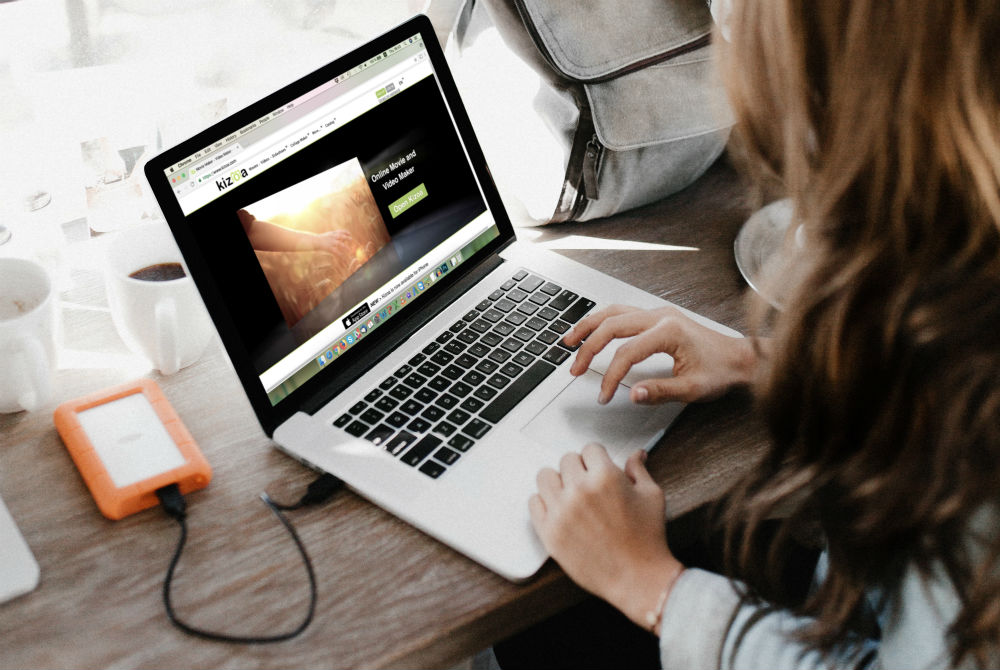
Since videography is becoming more and more popular with photographers, why not enable your favorite photographer to create high production value movies?
They can do that with Kizoa, an online movie and video maker that makes creating beautiful videos a simple task.
In fact, Kizoa has a vast library of ready-to-use templates so the process of creating a movie is made quick and easy.
What’s more, it offers a library of music, special effects, transitions, texts, and more. It literally takes just minutes to create a video that looks like it took weeks to put together!
Once you’re done with the video, you can quickly and easily share it on Facebook or YouTube, send it to friends and family via email, burn it to a DVD, or download it as a video file in multiple formats including MP4, AVI, MOV, MPEG2, and even GIF.
Gifts for Photographers Under $50: HDRsoft Photomatix Essentials
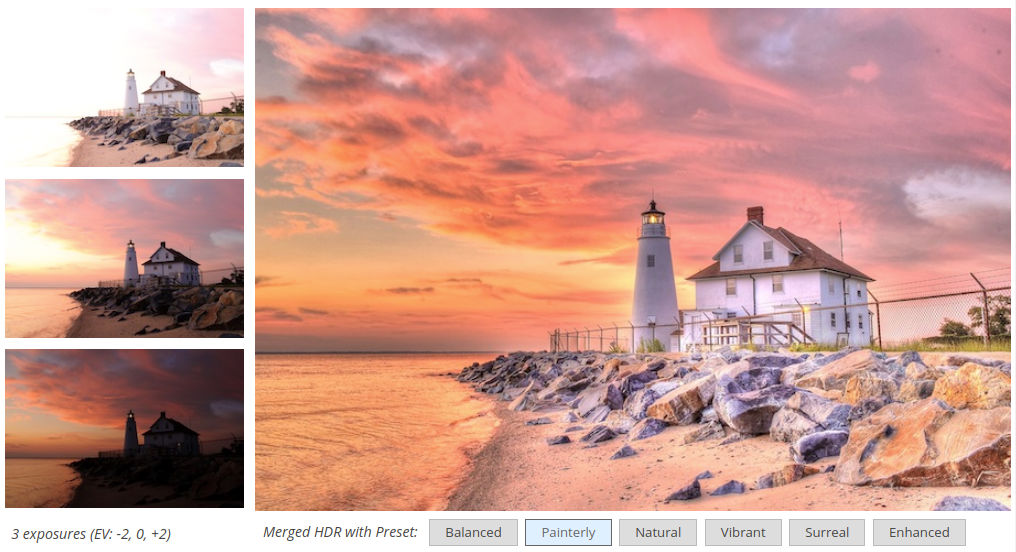
Ask any photographer, and they’ll probably tell you that the toughest part of photography to master is exposure.
All too often, you get photos that have highlights that are too bright or shadows that are much too dark.
But by using the power of HDR photography - high dynamic range - photographers can combine multiple exposures into a single shot, thereby getting a well-exposed image throughout.
Photomatix Essentials by HDRsoft makes that process super easy with dozens of HDR settings and presets for getting the perfect HDR photo.
HDRsoft has even incorporated multiple HDR styles to give photographers further control over how their HDR images look. Truly, creating eye-catching photos has never been easier!
Learn more about HDRsoft Photomatix Essentials
Gifts for Photographers Under $50: Ikan Stratus 15mm Static Lens Support
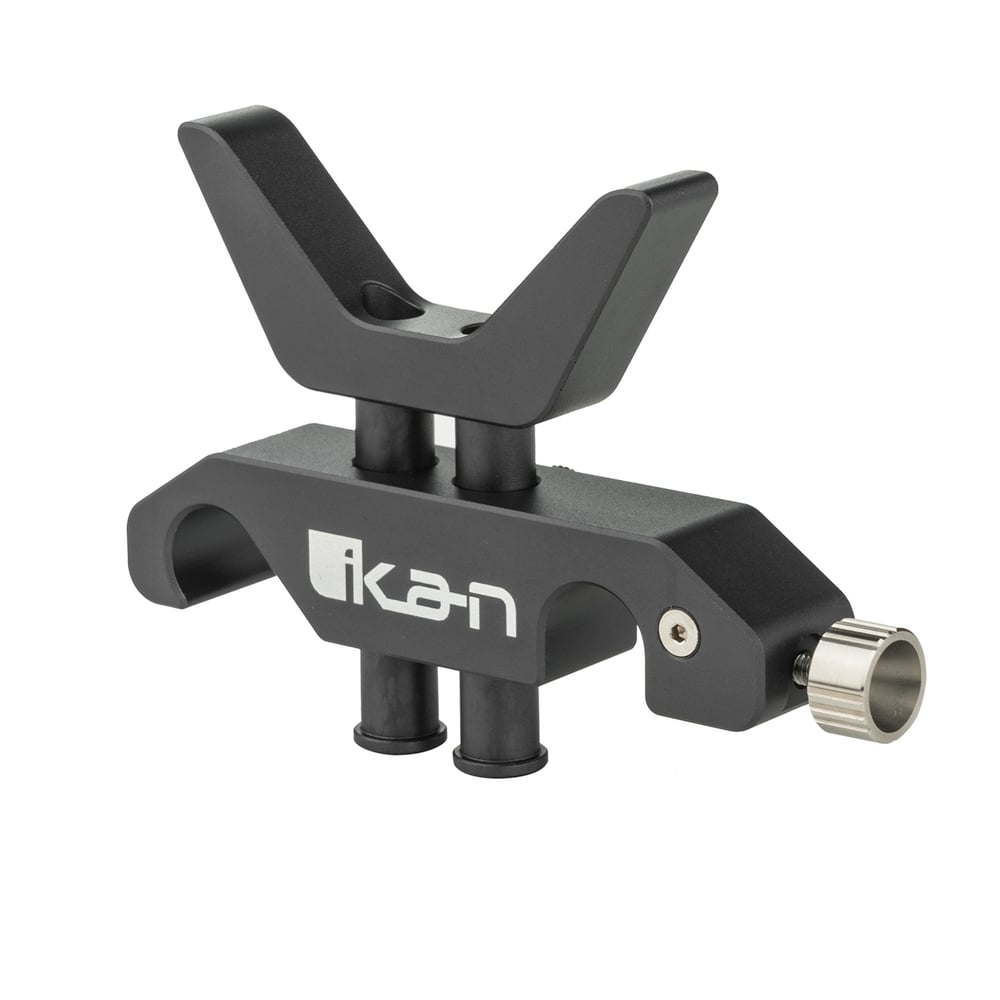
If the photographer on your list has a bunch of accessories for their camera, an Ikan Stratus Cage is all but a must.
And to make the Stratus cage even more functional, you can give the gift of a 15mm static lens support this holiday season.
The support attaches to the non-rotating part of a lens and helps support its weight.
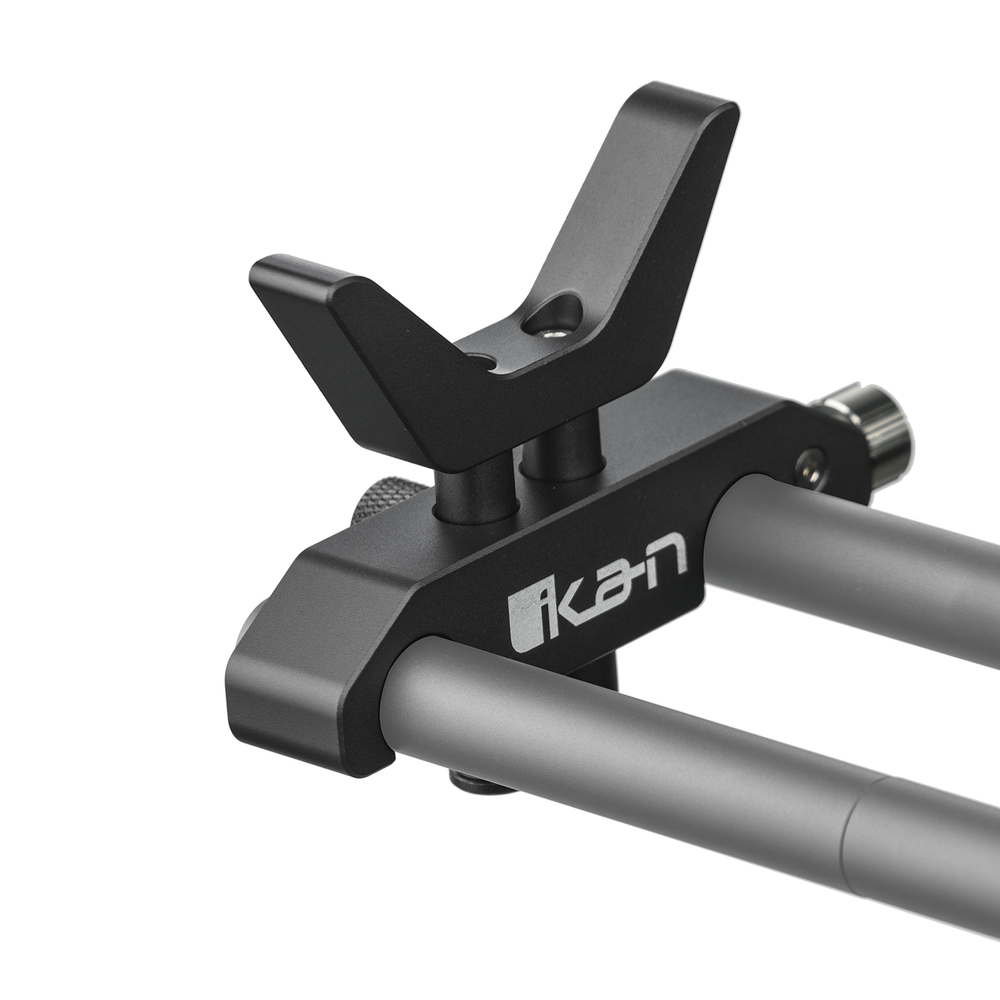
With 7/8-inches of vertical leeway, this gadget can support a lens in a number of positions.
It's easy to use, too - one of the 15mm rod mounts is open and angled, so it can be slid onto the rods from above or from the front.
And at $34.99, it's a bargain gift as well!
Learn more about the Ikan Stratus 15mm Static Lens Support
We Recommend
Top Autofocus Lenses for Micro Four-Thirds Cameras
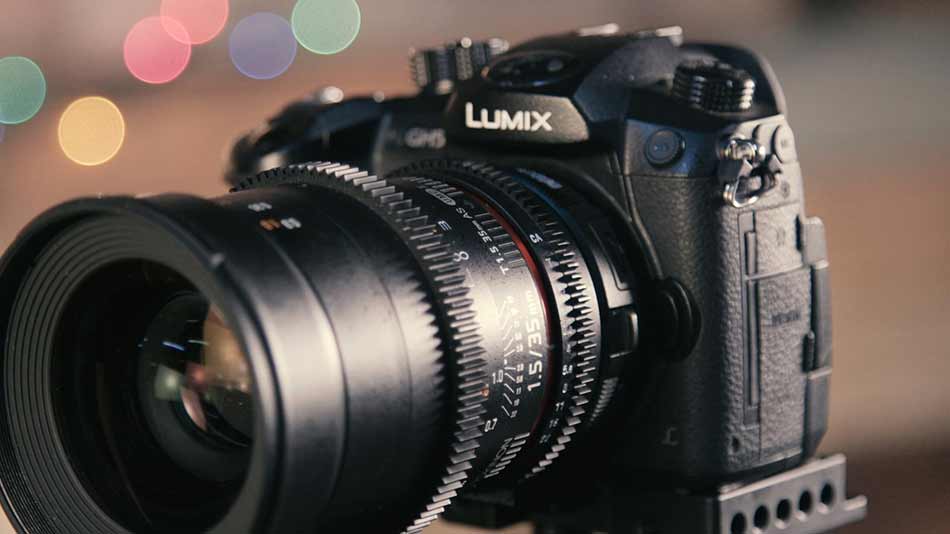
Photo by ShareGrid on Unsplash
I love shooting with Micro Four Third cameras, and I’m not alone.
Google searches for “best micro four-thirds lenses” have gone through the roof in the past few years. But, newfound popularity in Micro Four Third cameras, also means that we can play around with some (resale!) top autofocuses lenses. And I’m always down for a bargain.
So, I compiled a list of the top autofocus lenses you can use with a Micro Four-Thirds camera, and all for under $300.
BEST PRIME AUTOFOCUS LENSES
PANASONIC LUMIX G 14MM F/2.5

If you’re looking for the Micro Four-Thirds equivalent of a 28mm, this one by Panasonic is for you. I use it for street photography, and I’ll also take it traveling with me because it works just as well in low-light as it does at noon.
It’s also tiny at 0.8” thick and 2oz, so it fits in my luggage, and comes with a multi-coated lens so it’s less prone to scratches.
It’s also fun to play with the rounded seven-blade diaphragm because it produces cool highlights when working with selective focus.
PANASONIC LUMIX G 25MM F/1.7
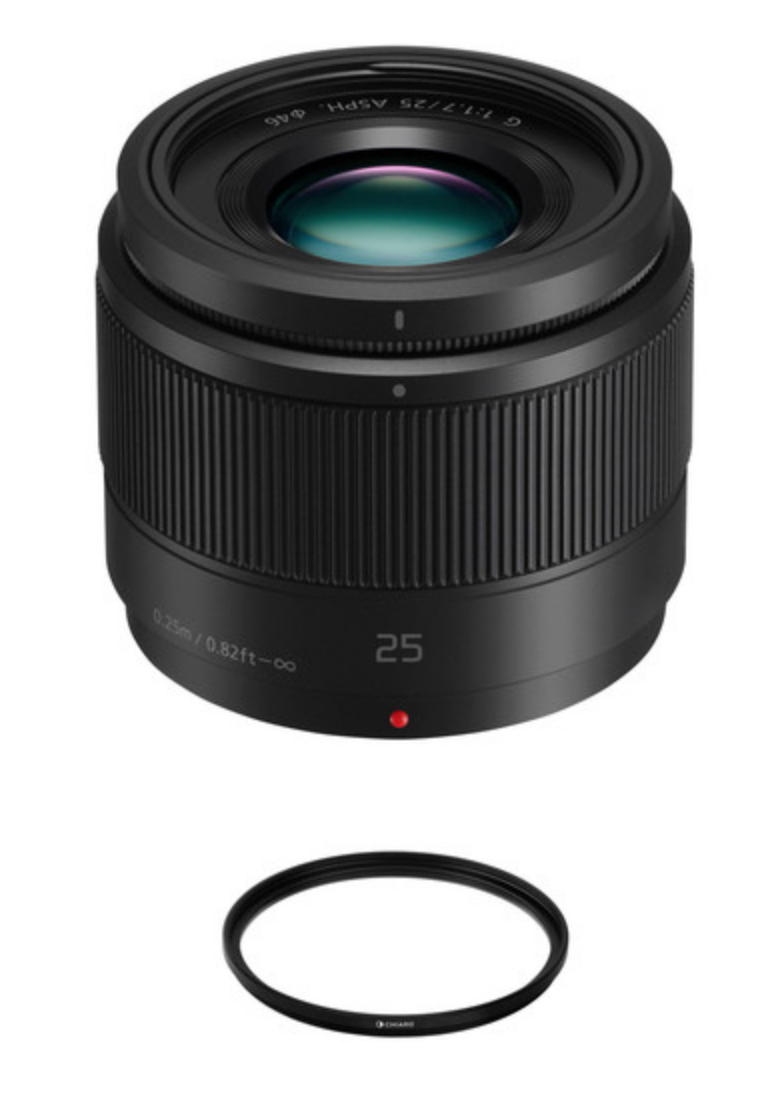
Not to be that person, but I’m recommending another one of Panasonic’s line for my best prime autofocus lenses.
This LUMIX strikes me as one of the best micro four-thirds lenses because it’s the equivalent of a 35mm, which means it can be used to shoot virtually any subject at pretty much any time of day, and for one of the cheapest prices of any top autofocus lenses.
It comes with a f/1.7 aperture for incredible low light shooting, and doesn’t skimp in strong lighting conditions either due to a Nano Surface Coating which reduces lens flare.
SIGMA 30MM F/1.4 DC DN CONTEMPORARY
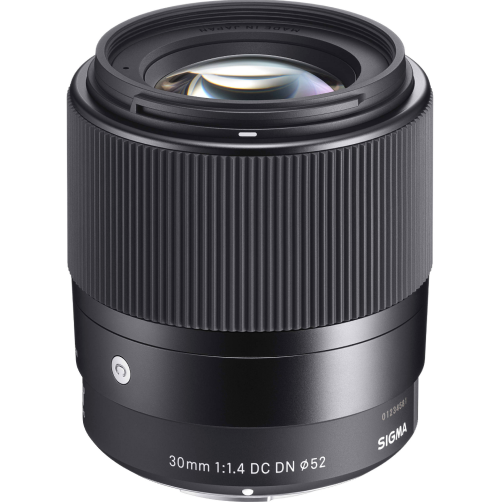
We can’t get into the best prime autofocuses lenses and not at least mention Sigma’s versatile contemporary lens.
The f/1.4 aperture offers wonderful opportunities for minimizing the depth of field for portraits and close-up shots.
This Sigma should also be considered one of the best micro four-thirds lenses because of the aspherical elements in its optical design, which prevent spherical aberrations and produce sharper photos than any one of these other prime autofocus lenses.
The Super Multi-Layer Coating on this Sigma also enables photographers to grab images with incredible contrast without color distortion. It’s a win-win!
OLYMPUS M. ZUIKO DIGITAL 45MM F/1.8
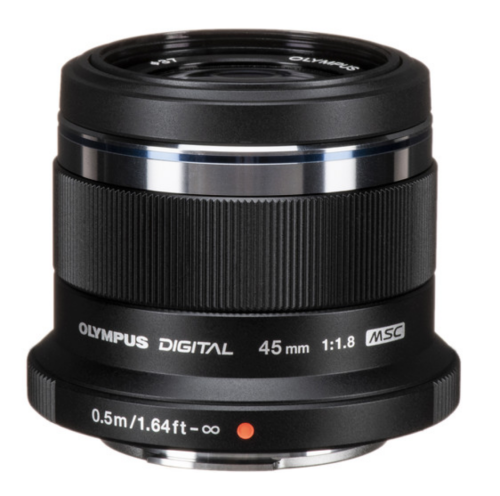
Portrait photographers who haven’t worked with the Olympus Zuiko Digital, what are you doing? This is absolutely one of the best autofocus lenses for portrait photographers, thanks to the short-telephoto focal length and the f/1.8 maximum aperture.
With this lens, you no longer need to be worried that golden hour is fading because it handles low-light portraits just as well.
This is also one of the top autofocus lenses for micro four-thirds cameras because of the Movie & Still Compatible (MSC) autofocus system. It shoots video in the same way it shoots photos - quickly and quietly.
Learn More:
Best Zoom Autofocus Lenses
LUMIX G VARIO 45-150MM F/4-5.6 ASPH. MEGA O.I.S.
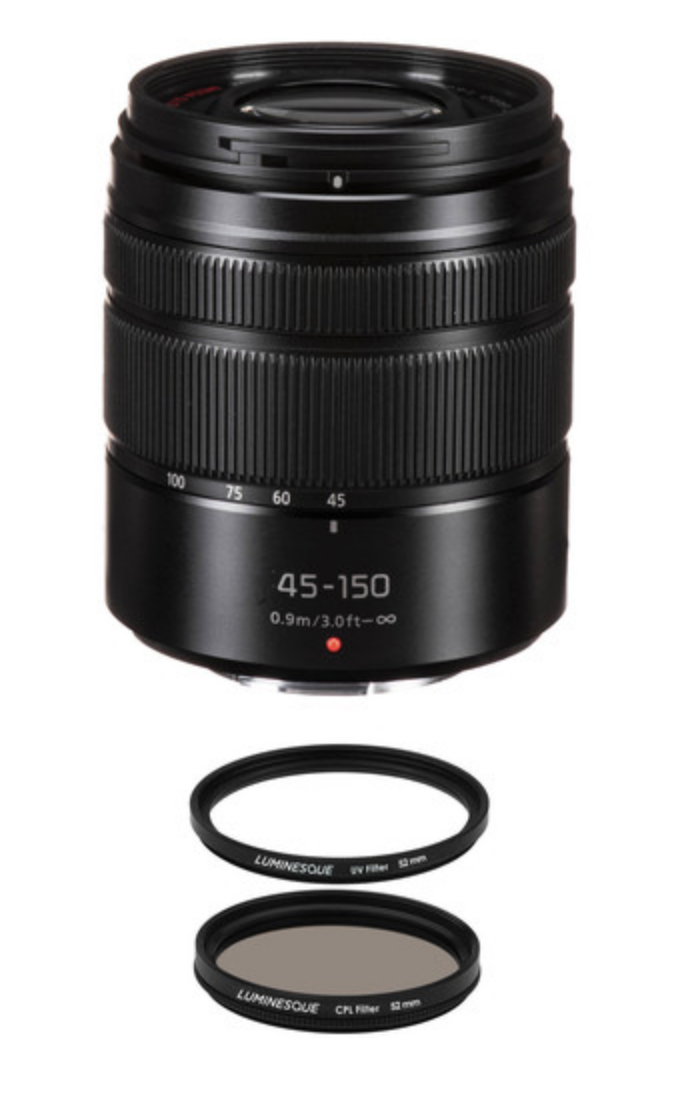
This Lumix is so cheap, yet it’s great for 4K, is the full frame equivalent of 90-300mm, and is comparatively light.
No, I wouldn’t recommend this Lumix as one of the top autofocus lenses for still photographers, but if you so much as dabble in videography, you need to experience shooting with a Mega O.I.S. It basically prevents your hand shake from diminishing the video quality, so you’re shooting better than with any other micro four-thirds lens.
It also comes with a stepping motor to create an almost silent autofocus.
Olympus M. Zuiko Digital ED 14-42mm f/3.5-3.6
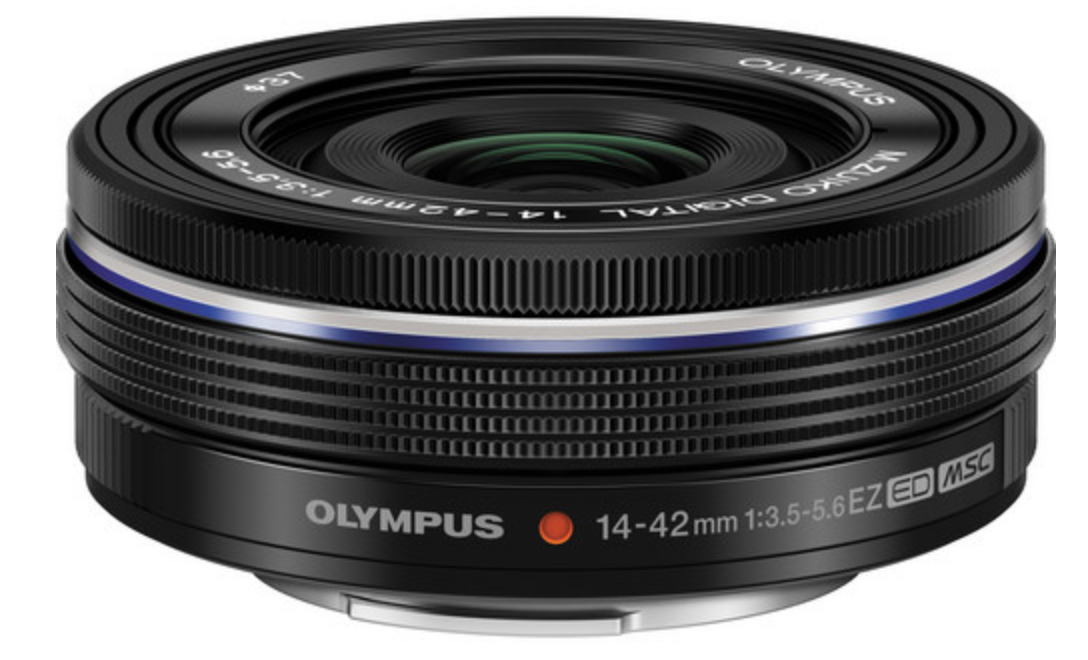
No, this lens isn’t as exciting as the previous Lumix, but it does everything it’s supposed to, which is sometimes a lot to ask of a lens.
It’s small (3.2oz and less than 1in. In depth), quiet and comes with the MSC autofocus.
It does have one downside though: at f/3.5-5.6, it’s not the fastest lens out there. So, if you’re not involved in sports or wildlife photography in which you need to crank up the shutter speed, check this zoom autofocus lens out.
Where to Buy These Top Autofocus Lenses

Whenever I’m bargain shopping for the best micro four-thirds lenses, I always head straight to Lensfinder.
Not only do they have an incredible array of the top autofocus lenses, but they are a resale website so each one of the lenses in their inventory has a caring photographer behind them.
This means you can rest assured your lenses were taken care of before you came across them, and you can also ask any and all questions of the sellers (no more hassling with third-party sellers on eBay).
Plus, Lensfinder ensures the sellers pay all of the fees and you know exactly what your total is going to be up front.
And, if you can’t find the exact lens you are looking for today, you can always come back tomorrow because the chances are it will be there! It’s a one-stop-shop for lenses that could help you save a good bit of money. What’s not to like about that?
Learn More:
- These Crazy Camera Lenses Have to Be Seen to Be Believed
- Best Nikon Lenses for Beginner Photographers
We Recommend
Top Sony Lenses for Full Frame Cameras
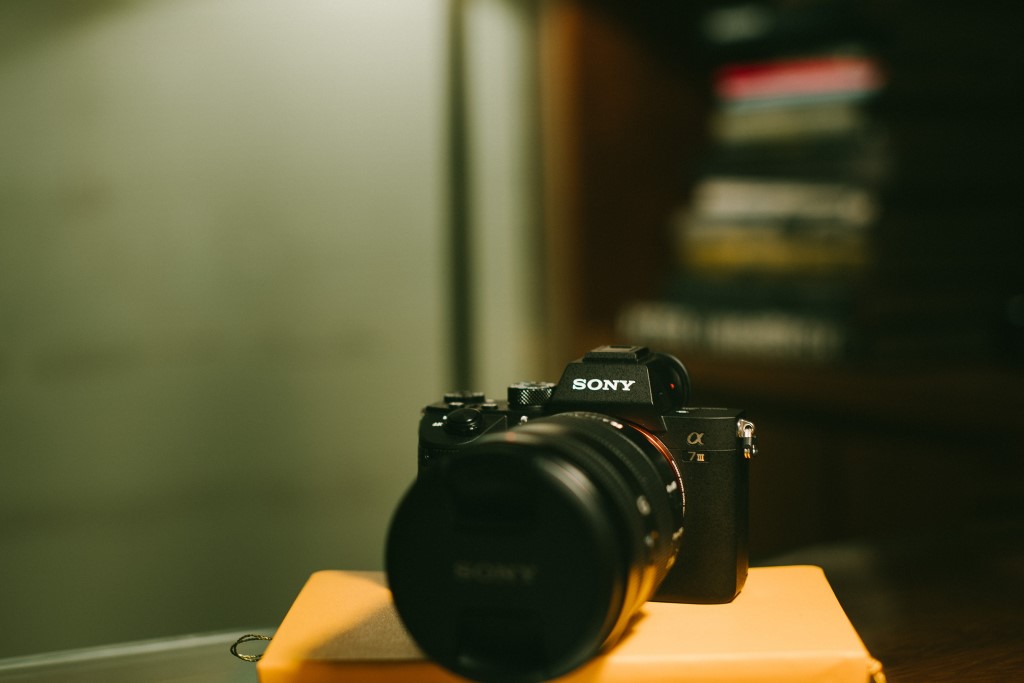
Photo by GMax Studios on Unsplash
If you ask me, Sony is all the rage right now, and for good reason: their cameras and their selection of lenses just keeps getting better.
Although Canon and Nikon are both ahead of the game in terms of the sheer selection of lenses that are available, Sony is rapidly catching up.
In this article, I’ll break down some of my favorite Sony full frame lenses, no holds barred.
Sony 24-70mm f/2.8 GM
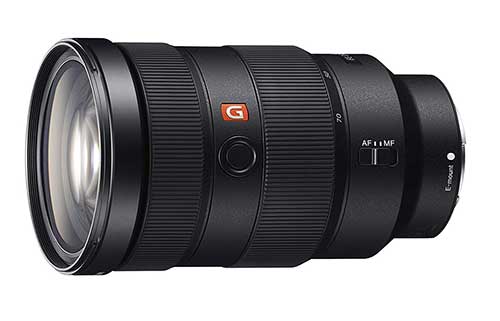
This full frame Sony lens is definitely on my Christmas wishlist this year because it’s built for travel and I’ve got a trip to Germany planned in March.
This full frame Sony lens is what truly made them a valid competitor with Canon and Nikon.
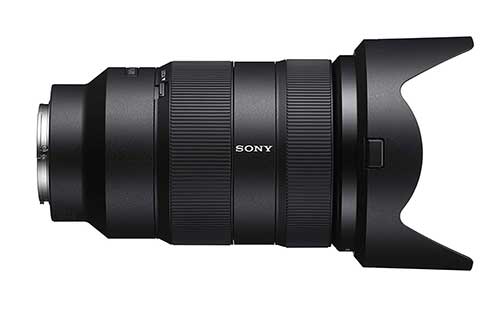
This lens crafts extremely sharp photos with beautiful bokeh, and it’s sturdy, too - just what you want in an all-rounder travel lens.
Other Sony FE lenses don’t offer the same level of features or quality, but that is definitely reflected in the price of this rig...
The Sony 24-70mm f/2.8 GM is available on Amazon for $2,200.
Learn More:
Sony 55mm f/1.8
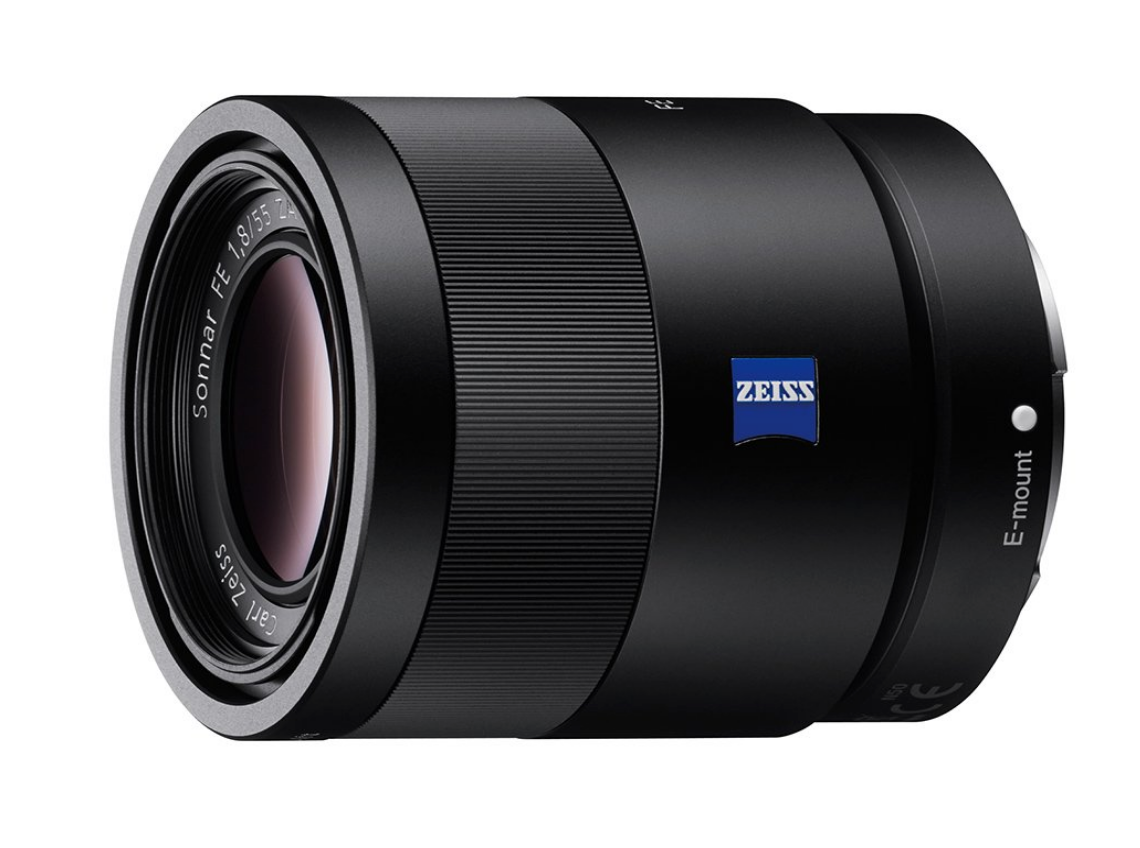
If you can’t afford the Sony 24-70mm f/2.8 GM, this Sony lens is another good option in the travel and portrait categories.
While Sony does provide the same type of lens in f/1.4, it’s much more expensive and not necessary for most photographers. Plus, this 55mm creates sharp photos with fast and quiet autofocus. It’s also really light, weighing in at just 9.9 ounces, so it won’t be hard to throw it in your carry-on.
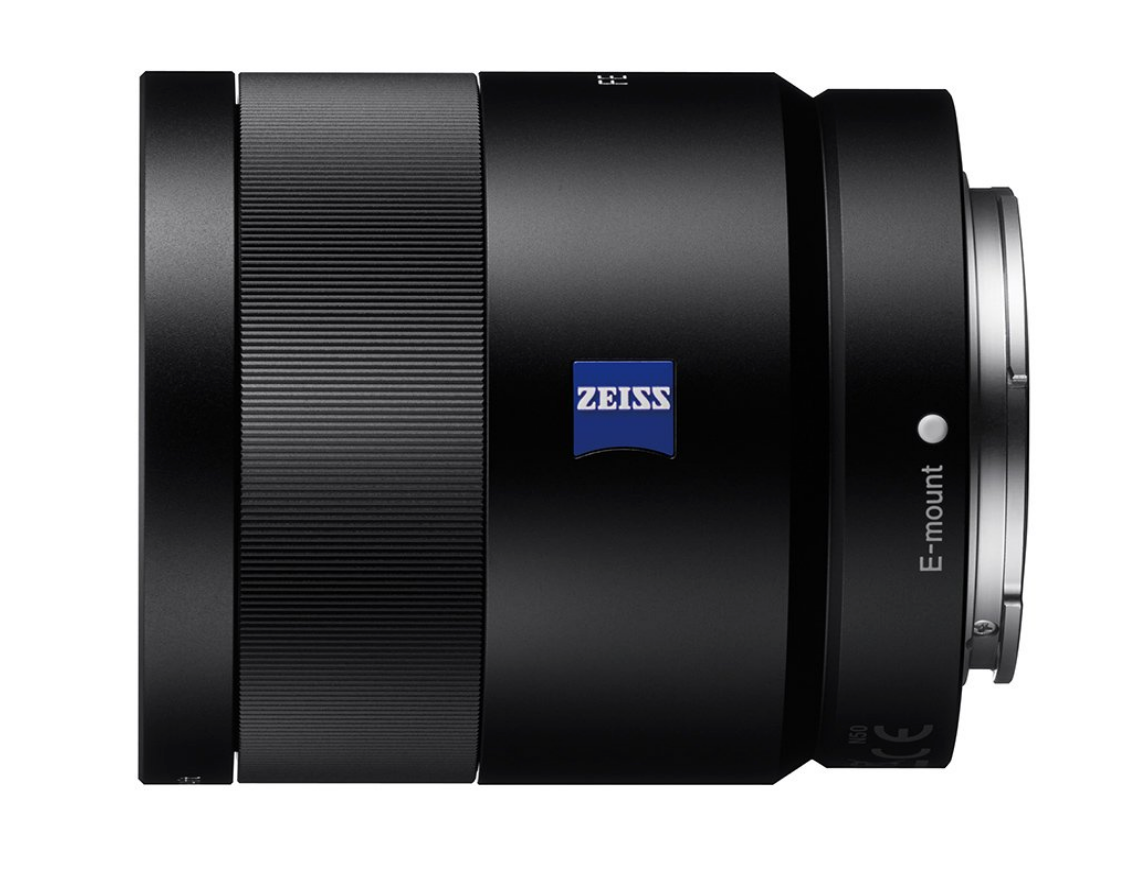
Again, you could spring for the Sony 55mm f/1.4 for an additional $500, but many Sony cameras already have incredibly high ISO capabilities, so in my mind it makes more sense to save the $500, bump up the ISO a little bit, and work with this f/1.8 version.
The Sony 55mm f/1.8 is available on Amazon for $898.
Zeiss Batis 18mm f/2.8
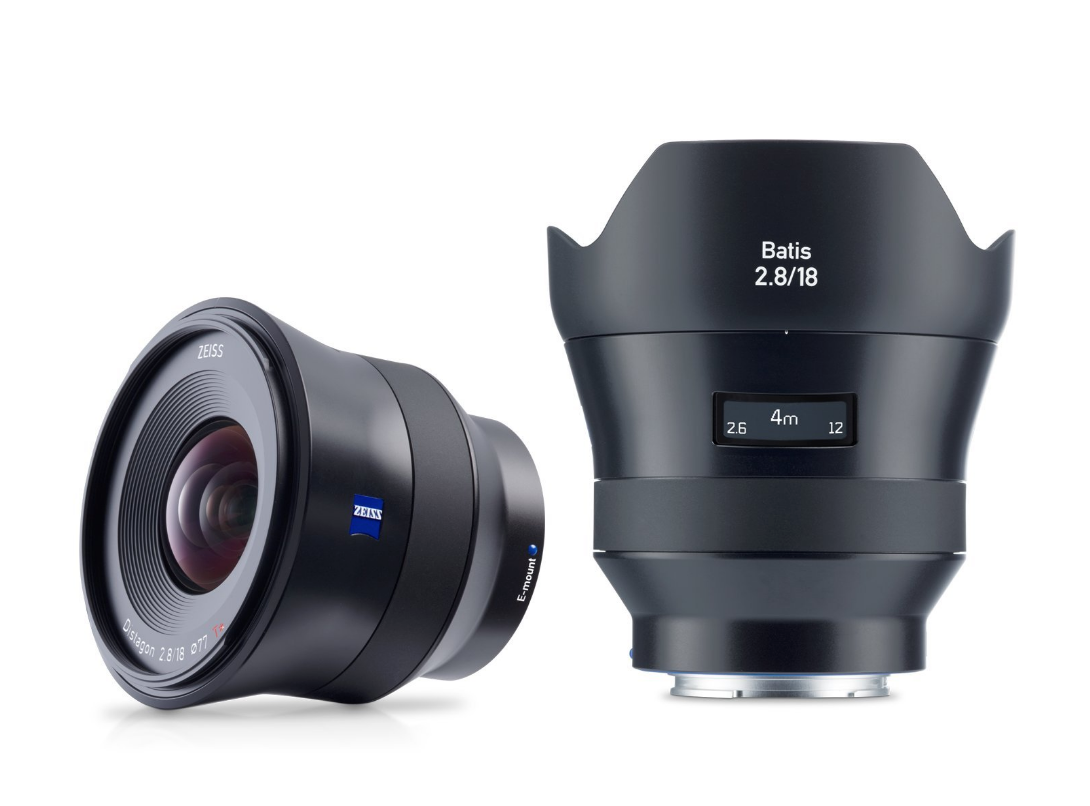
I love my Zeiss Batis lens. If sharpness is what you want, look no further!
Zeiss has a reputation for sharp optics, and this lens is certainly no different with beautiful detail from corner to corner.
I use my Zeiss Batis for landscape photography because it’s light and it’s a great pairing with my Sony a7R III. The wide-angle view it provides allows me to incorporate wide, sweeping vistas and beautiful foreground detail as well.
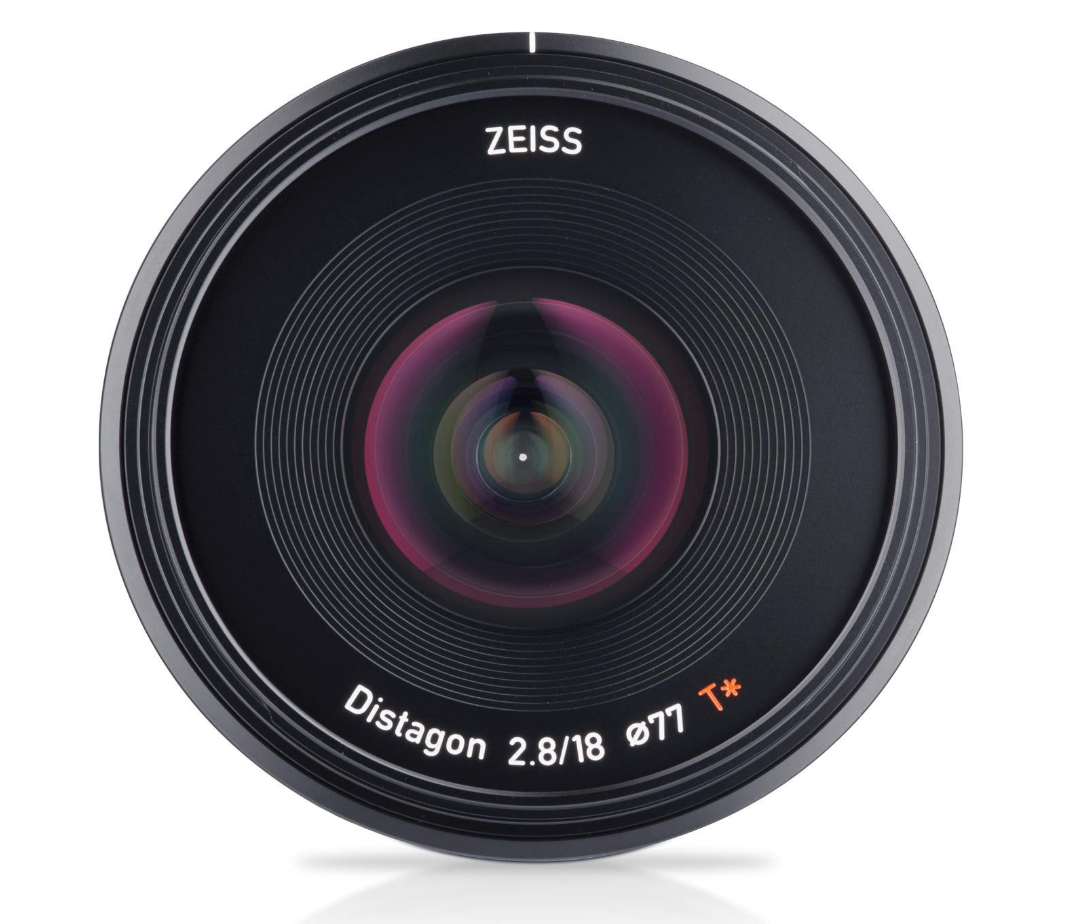
This lens also offers superb color rendition, very little distortion, and quick autofocus performance.
It’s shape is a little weird, which makes it a tad bulky, but at least it’s bulky without being heavy - it weighs just 11.6 ounces.
The Zeiss Batis 18mm f/2.8 is available on Amazon for $1,260.
Sigma 85mm f/1.4 Art
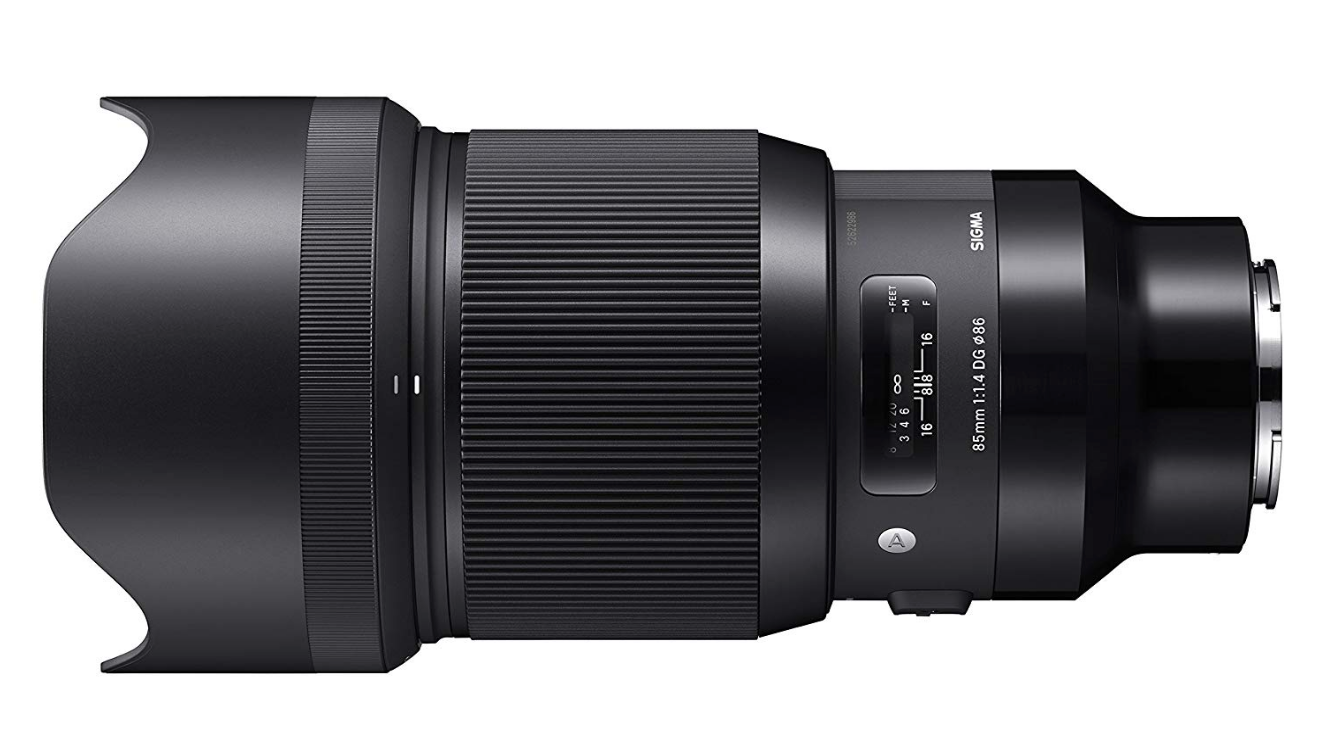
Sony full frame lenses, like this Sigma 85mm f/1.4 Art, are popular. Most of my photography friends were waiting for this Sigma for well over a year, and for good reason. It’s got almost all the qualities of Sony’s GM version, except it’s $600 cheaper.
Sigma created an 85mm f/1.4 for both Canon and Nikon and they quickly became the most popular lens for portrait photographers.
Unfortunately, Sony lenses can get pretty heavy, and this one is no different weighing in at nearly 40 ounces, which doesn’t seem like much until you’re carrying it for 14 hours!
However, this lens is ultra-sharp and produces deliciously beautiful bokeh, and that 85mm focal length is perfect for portraiture.
The Sigma 85mm f/1.4 Art is available on Amazon for $950.
Learn More:
- These Crazy Camera Lenses Have to Be Seen to Be Believed
- How to Get the Most Out of Your Nifty Fifty Lens
Sony 70-200mm f/2.8 GM
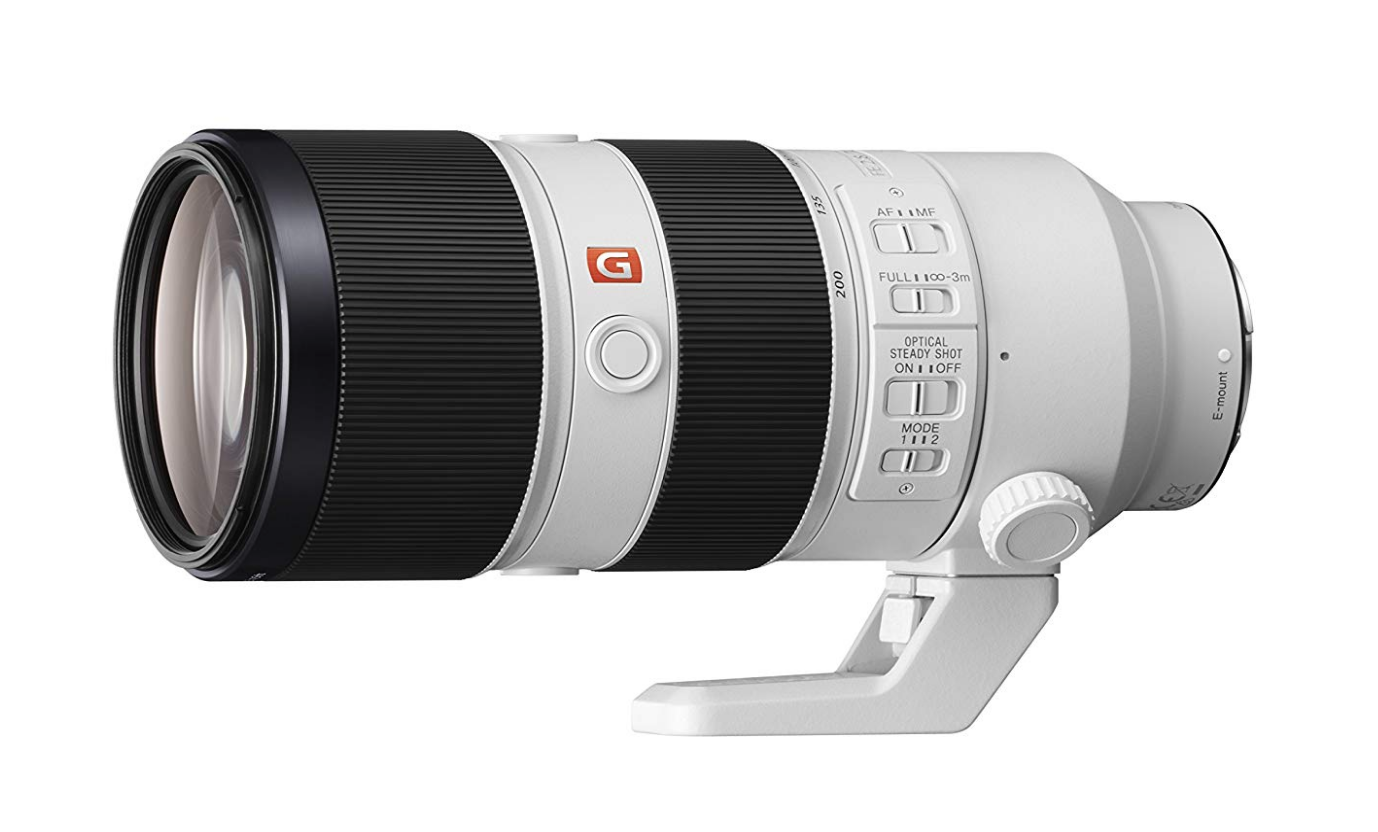
There’s no way I could write a whole article about Sony full frame lenses and not include this awesome telephoto, the Sony 70-200mm f/2.8 GM.
Around this time last year, nobody could get their hands on this Sony lens because it almost immediately sold out everywhere, but it’s back.
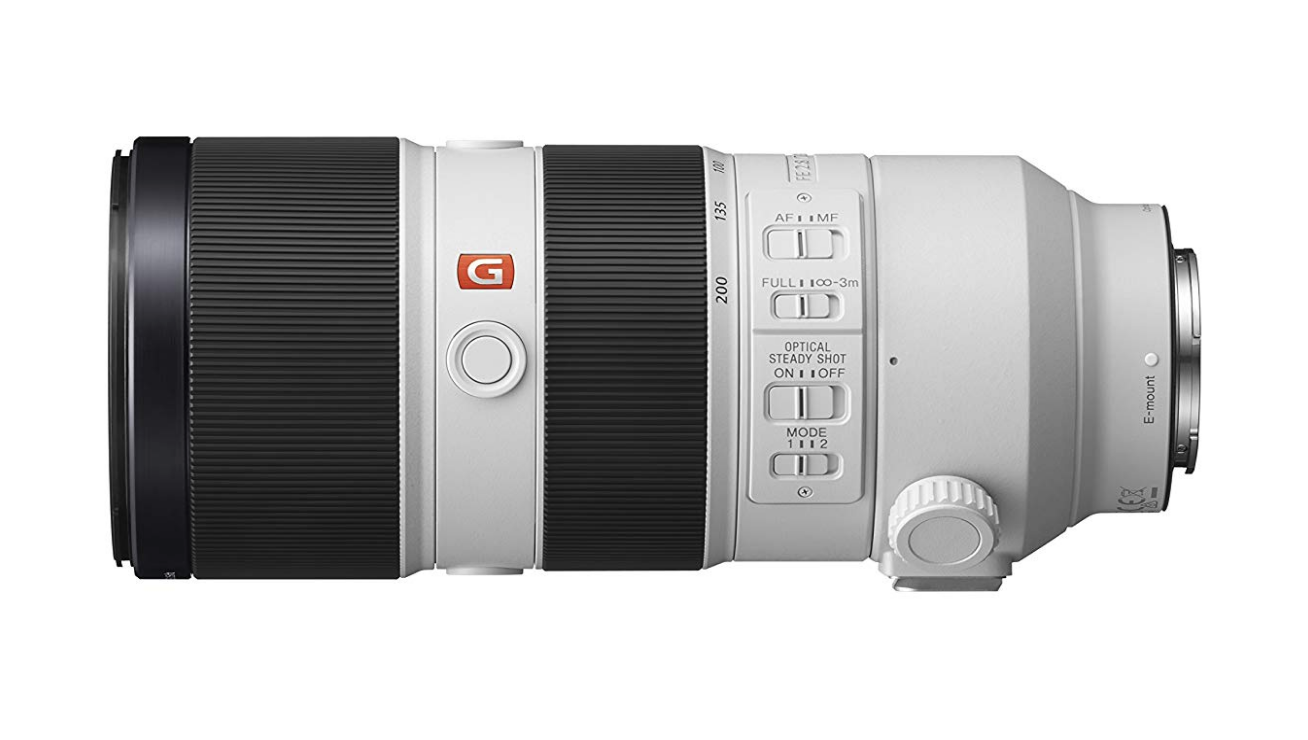
The images it produces are sharp, except for in the far corners, and it’s got built-in image stabilization. Plus, it focuses quickly and it produces nice bokeh.
The built-in image stabilization is a nice feature, too, especially when shooting at longer focal lengths.
If you need a versatile, all-around lens with more reach than a typical zoom, this lens is a great choice.
The Sony 70-200mm f/2.8 GM is available on Amazon for $2,600.
How to Save Money on Lenses
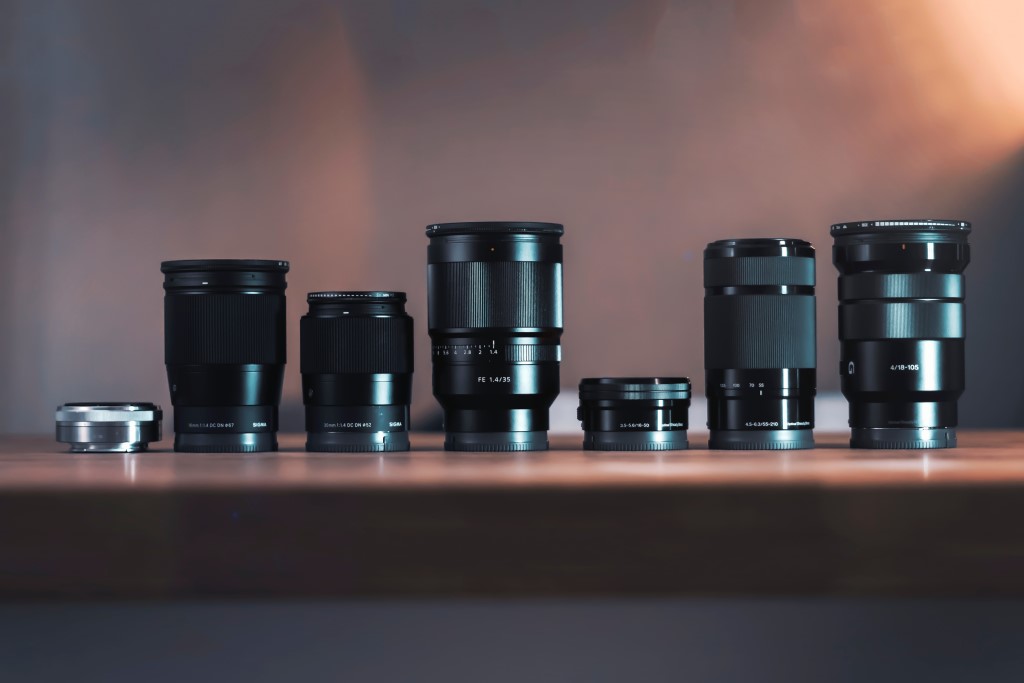
Photo by lucas Favre on Unsplash
Clearly, each of the lenses described above cost a pretty penny. Fortunately, there’s a way around their steep prices - buying used.
I know some photographers that refuse to buy used gear, and it just doesn’t make sense to me.
I’ve bought (and sold) a ton of used gear over the years, and by and large, it’s been a good experience, particularly now that I use Lensfinder for my gear needs.
Lensfinder is a community built by photographers, for photographers, so you know that the items listed for sale aren’t knock-offs or stolen.
That’s because Lensfinder has built-in fraud protections. Plus, you can message sellers, make your purchase, and leave feedback all right within Lensfinder, so it’s a great little community for getting what you need and building connections with other photographers.
Plus, the savings you can find can be quite large, so you might even be able to pick up a couple of used lenses for the price of one new one. Nice!
Check out Lensfinder’s inventory and see if you can find a great Sony full frame lens on the cheap.
We Recommend
Top Ways Photographers Can Make Money WITHOUT Touching Their Camera
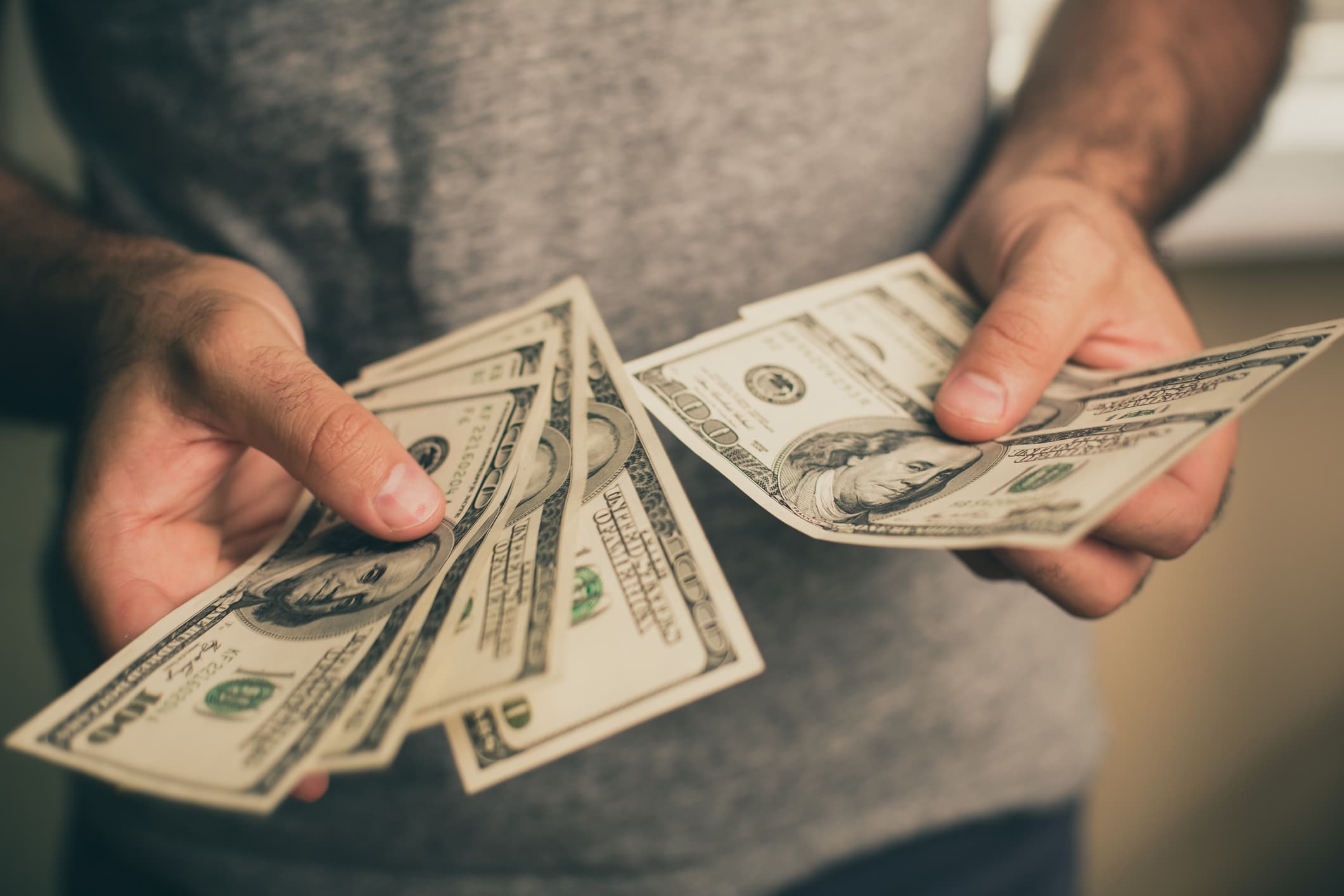
When you think of the most challenging aspects of photography, the fact that it's such an up-and-down business has to be at or near the top of the list.
That is, you have periods in which you're so busy you can barely think straight, and periods when business is so slow that you stress out about whether or not you'll be able to pay bills.
Some people say that the best way to make money as a photographer is to sell your camera.
And while that's tongue-in-cheek advice, there's actually a lot of rock-solid ways you can make money to help even out the ebbs and flows of your photography business.
Here are a few ways that you can earn money to supplement your photography income, all of which you can do without even touching your camera.
Find a Good Affiliate Program

One of the best ways photographers can make extra income is by joining affiliate programs.
The short of it is that you put a company's banner ad, button, or even links to their website or specific products on your website, or have a specific code that you give to your clients, and each time someone clicks on one of the affiliate links and buys something with the code you gave them, you get a commission.
Those commissions range from company to company, and can start off as a low single digits to upwards of 50%.
The exciting part is that, over time, those commissions - tiny or large - can add up, providing you with extra money to help beef up your rainy day fund.
Even better, affiliate programs earn you passive income. That is, once you've signed up and have the appropriate links on your site, you don't really have to do anything else. Now, I will recommend making sure it’s easy for your clients and guests to find these links, and in the case of a code, getting that code over to them.
Helpful Tip: Have one or two of your favorite affiliate programs mentioned in your email signature or even on the back of your business card you are handing out.
If you select affiliate programs that are in line with the type of photography you offer, the chances are good that your clients and website visitors will likely find the affiliate's product or service useful. In other words, you can help your clients out while making a little money at the same time!
CLICK HERE TO JOIN OUR RECOMMENDED AFFILIATE PROGRAM
Self-Publish an eBook

The eBook game is ripe with opportunities to self-publish a photography-related book.
And the best part is that you don't necessarily have to go out and take a bunch of new photos for the book, either.
I live in Southern California and have thousands and thousands of photos of beautiful and fun places to visit in this area. What's stopping me from pulling a couple of dozen photos out of my archives, researching each location to provide detailed information for photographers, and publishing a little Southern California Travel guide?
If you're a wedding photographer, why not self-publish a wedding photography posing guide using some of your old photos?
If you're a landscape photographer, how about putting together a themed collection of images (i.e., mountains, beaches, forests, etc.), and self-publish a photo book?
The point is that there is a market for all manner and sort of photography books, so tapping into that market could be a lucrative way for you to earn some extra money and put your old photos to use at the same time.
CLICK HERE TO LEARN HOW EASY IT IS TO SELF-PUBLISH AN EBOOK
Edit Photos for Other Photographers

As you well know, when you get busy, you get busy, and finding the appropriate time you need to get everything done that needs to get done can be difficult.
So why not use your photo post-processing skills to help out other photographers when things in your world slow down?
You can find gigs on sites like Upwork and do a little freelance photo editing. These kind of jobs can often be found on Fiverr and Craigslist as well.
If you've got mad Photoshop or Lightroom skills, you might be surprised at how many opportunities you can find to edit other people's photos.
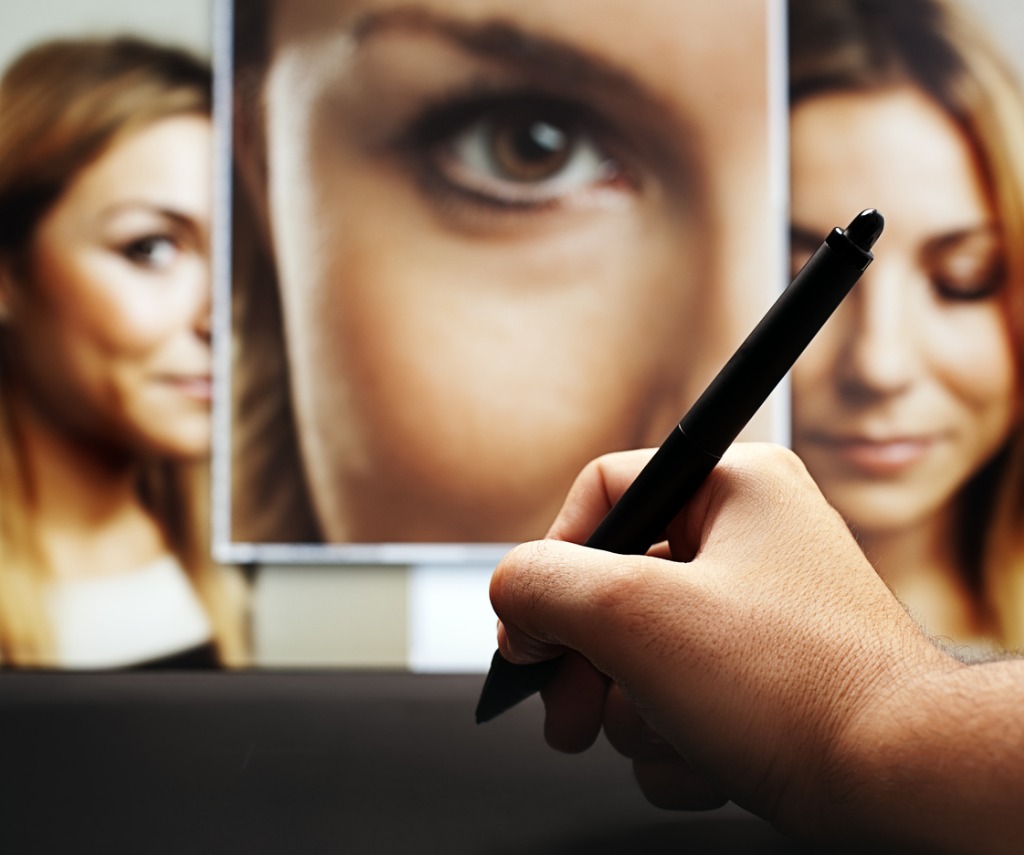
Heck, even if you aren't a Rembrandt with photo editing, that's okay. There are tons of top-shelf photo editing programs out today that make editing images a quick, simple, and painless process. In fact, some even have presets that allow you to take a photo from boring to beautiful in just a few clicks.
Plus, think of all the skills you can learn about post-processing by tackling image editing for other people! That means you can help others and help yourself all at the same time.
CLICK HERE TO SEE OUR RECOMMENDED PHOTO POST-PROCESSING PROGRAMS
Sell Prints

Remember earlier when I suggested that you use your old photos to create a photography eBook?
Well, there's something else you can do to earn money with your old photos - sell prints.
I'm primarily a landscape photographer, so I have thousands and thousands of photos of beaches, rivers, mountains, deserts, and other landscape scenes that would look pretty darn good on someone's wall.

To make a little extra money, it would be dead simple for me to connect with a printing company, have a few prints made, and start selling them.
The best part is that you can get high-quality, fine art prints made that make your photos really pop. Then you can add them to your website, post about them on your Facebook and Instagram, and earn some cash.
CLICK HERE TO SEE WHAT YOUR PHOTOS WOULD LOOK LIKE AS FINE ART PRINTS
Teach About Photography

Okay, okay. So it would be pretty hard to teach photography without picking up a camera, but at least in this case, you're picking up a camera to earn money by teaching, not by taking photos.
And there's tons of ways you can earn money by teaching.
Perhaps the easiest is to start a YouTube channel and monetize it.
You can offer workshops in your local area as well, or even work for an after-school program to teach kids how to use a camera and take better photos.
There are plenty of websites that specialize in offering online photography classes, too. Joining one of those sites as an instructor could provide you with the ideal platform for earning money by sharing your passion for photography and your expertise as a photographer with others.
CLICK HERE TO LEARN MORE ABOUT HOW TO EARN MONEY TEACHING PHOTOGRAPHY
Broker Camera Gear
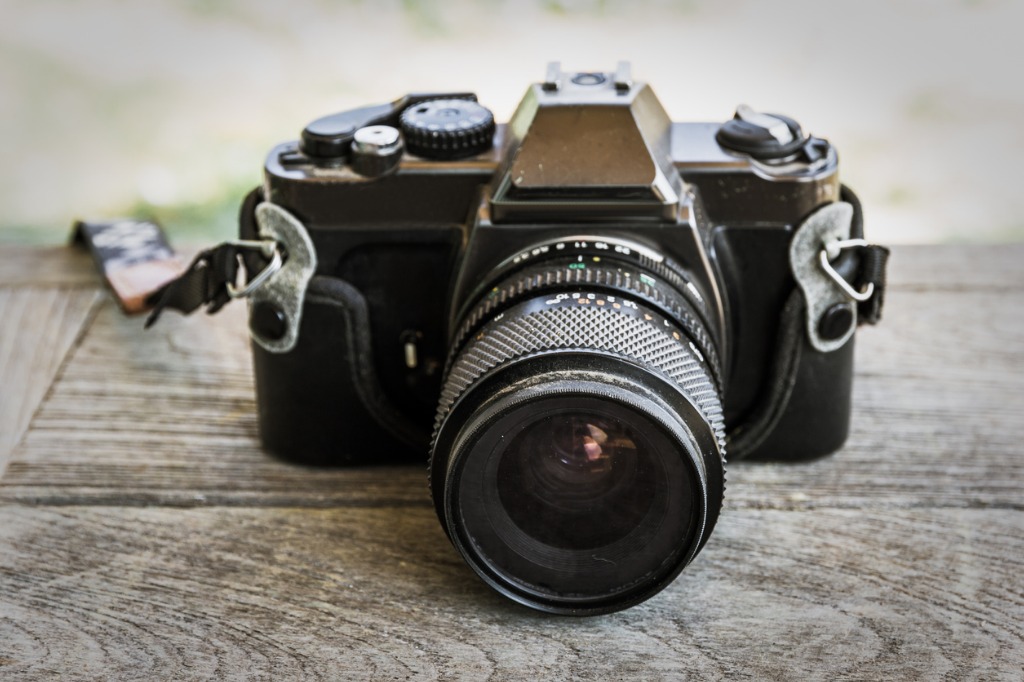
There are scores of people with camera gear they no longer want or need, and sometimes, you can find incredible deals from someone that just needs to get rid of their old stuff.
That opens the door for you to broker camera gear...
By that, I mean that if you can find smokin' deals on places like eBay or Craigslist, you can buy gear on the cheap and then turn around and sell it at a markup.
There are some keys to making this work, though.
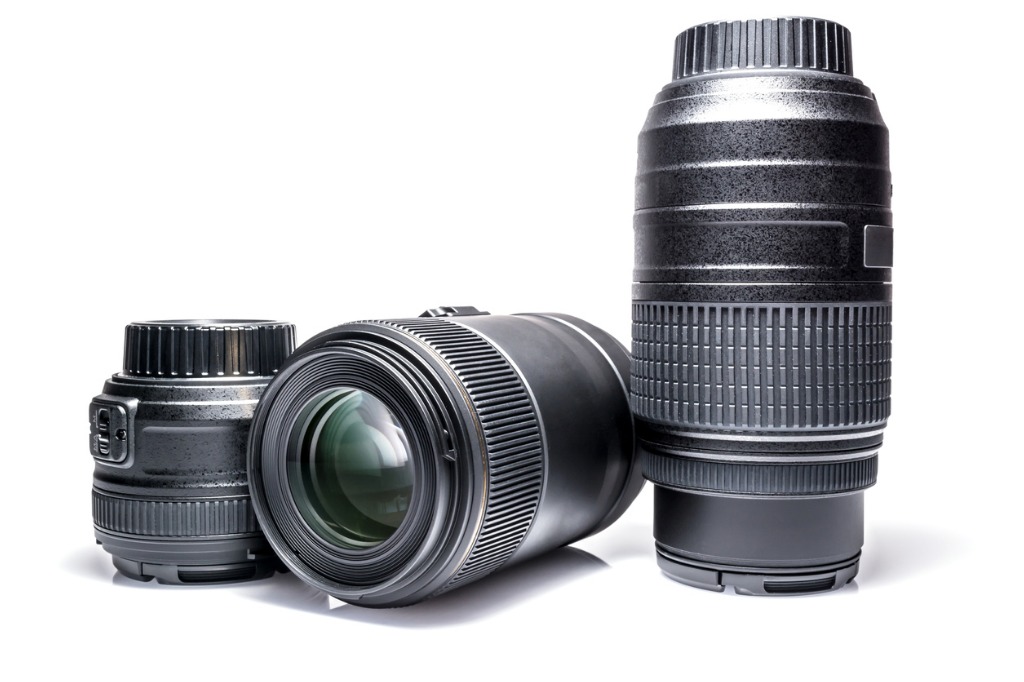
First, you absolutely need to understand the market, including whether the items you're considering buying are priced well for you to make a profit and whether the item is in demand.
Second, you can't be trigger happy and just buy everything you see. Instead, you need to take a measured approach, crunch the numbers, and really consider if you'll be able to make money off flipping the gear.
Third, it's imperative that you inspect the gear to ensure that you're getting what you pay for. That can be tricky when buying from places like eBay or Craigslist, but understanding what questions to ask and what problems to look for will definitely help.
Lastly, you need a place to sell the gear you acquire. Joining communities that specialize in selling used photography gear can make it more likely that you can offload your purchases.
CLICK HERE TO EARN MONEY BY SELLING YOUR PRE-OWNED LENSES
Optimize Your Marketing

I remember years ago when I started my first website being shocked that I didn't get tons of traffic just by virtue of the site being live.
Clearly, I forgot the part about needing to actually tell people about the site to get them to come check it out.
The same is true of your photography business - you need to optimize your marketing strategy, because the benefit of doing so is getting more eyes on your work, more people familiar with your name, and more clients as a result.
Don't just rely on social media, either.
You need a website. Have an online portfolio too, either as a standalone or as part of your website.
Getting listed on photography directories is a good plan as well, because they connect photographers directly with clients that need photography services. In other words, by getting listed on a directory, you have a ready-made pool of potential clients that need a photographer right now.
When it comes to making more money as a photographer, it's hard to beat that!
CLICK HERE TO JOIN OUR RECOMMENDED PHOTOGRAPHY DIRECTORY
In summary, if you want to make more money (who doesn't?!) and do so without picking up your camera, give these seven tips a try:
- Join an Affiliate Program
- Self-Publish an eBook
- Offer Your Photo Editing Services
- Sell Canvas Prints
- Teach Photography
- Broker Used Camera Gear
- Optimize Your Marketing
We Recommend
Upcoming Camera Lenses You Should Be Excited About
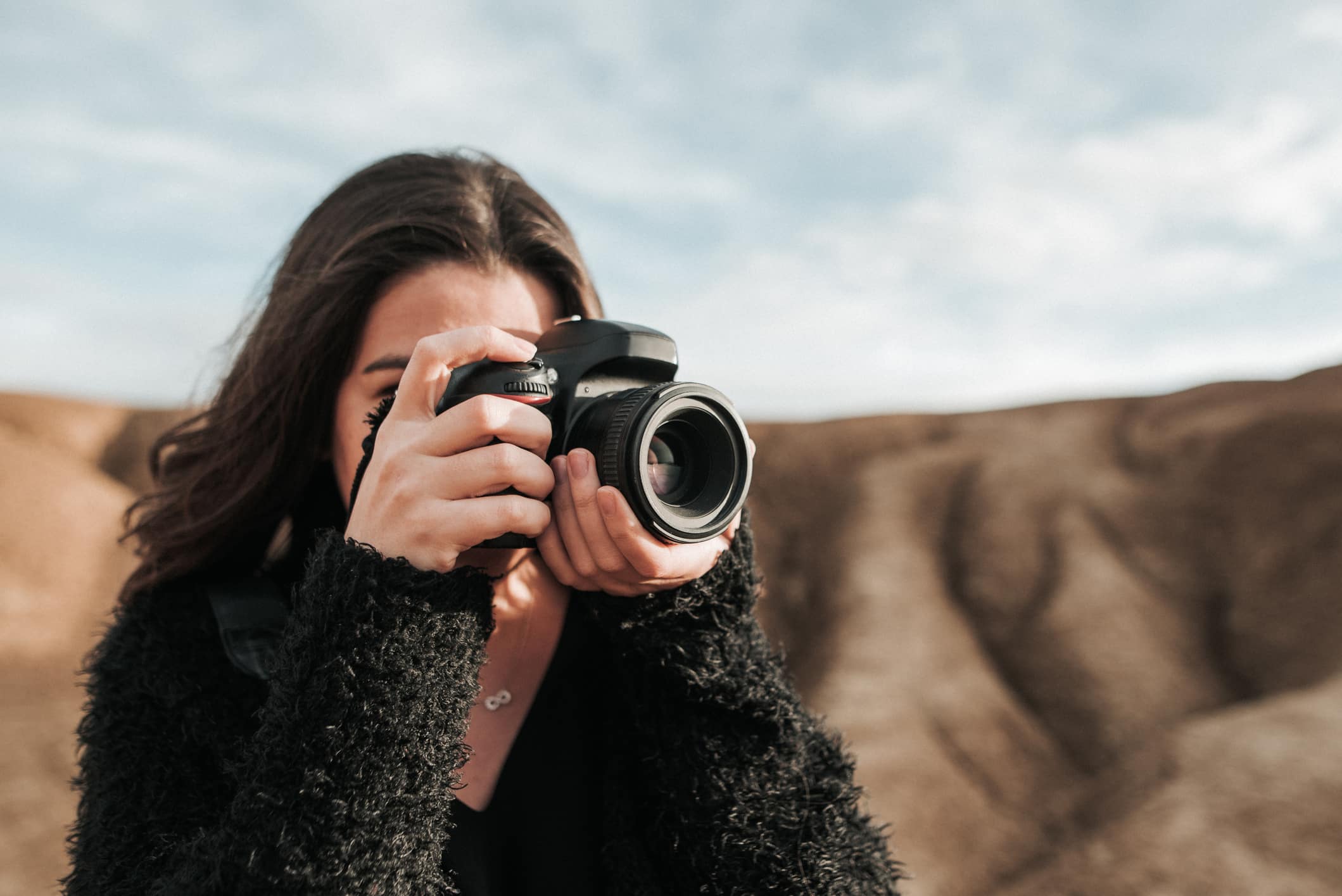
I know, I know...
Photography isn't just about gear.
But despite that, I always try to keep an eye out for upcoming photography gear that's worth getting excited about.
And I've got a couple of lenses that certainly fit the bill.
Sigma 14-24mm f/2.8 DG HSM Art
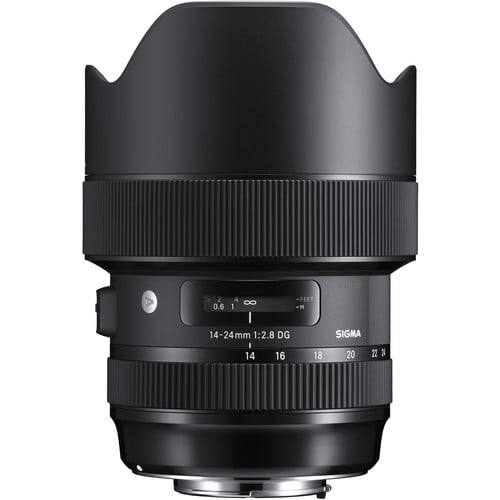
Up first is the Sigma 14-24mm f/2.8 DG HSM Art Lens.
Sigma has been rocking it out the last few years, with lens after lens that seems to blow away the competition.
Their Art series of lenses is definitely at the top of my list of must-have lenses if you're a serious photographer.
Their new 14-24mm f/2.8 is currently available for pre-order, with shipments expected sometime in March.
Granted, this lens is a cool $1,299, so it's not going to be within everyone's budget. However, if you've got the money, this lens is well worth it.
Editor's Tip: Need some extra cash to buy a new lens? See what your used lenses are worth.
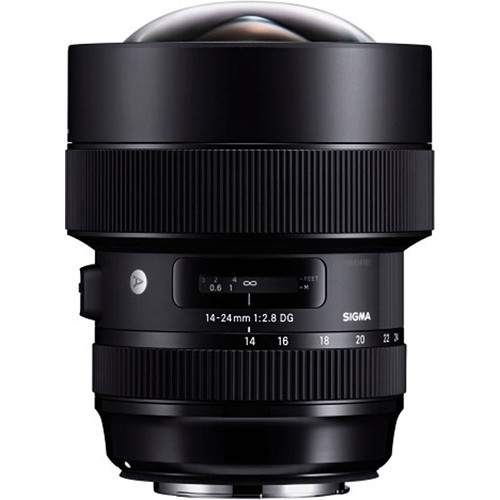
For starters, it costs about $600 less than the comparable 14-24mm f/2.8G from Nikon. It's $700 cheaper than Canon's closest comparable lens, the 16-35mm f/2.8L III.
Better still, the Sigma lens was designed for today's super high-resolution cameras with sensors that have more than 50-megapixels. That means if you've got a high-dollar rig, this lens can wrest all the detail possible out of the sensor.
It's got a closer minimum focusing distance - by almost a full inch - and it's weatherproofed, as you'd expect from a professional-grade lens.
On the downside, this lens is a beefy thing, weighing up to 30 percent more than the Canon and Nikon lenses spoken of above.
That extra weight is thanks to three fluorite low dispersion elements, three special low dispersion elements, and three aspherical elements.
Nevertheless, this lens should be on your list if you want fast, sharp, high-performance glass for your high-performance camera.
Learn More:
Tamron 70-210mm f/4 Di VC USD Lens
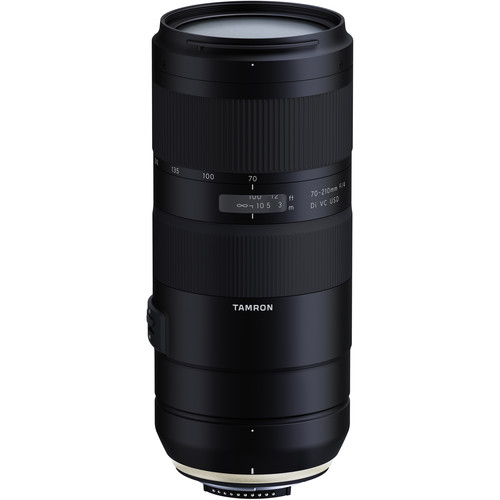
For those of you that want a solid zoom lens but don't want the bulk of a heavier f/2.8 telephoto, Tamron's upcoming 70-210mm f/4 might be worth a look.
Not only is it expected to be lighter in weight, but it should also be more compact than f/2.8 telephotos, which as a landscape photographer, I know I appreciate.
The biggest feature of this lens is its amazing maximum magnification ratio of 1:3.1.
Additionally, the Tamron will have a new internal zoom design, a USD autofocus motor with override for manual focus, and vibration compensation that gives you up to four stops of added stability.
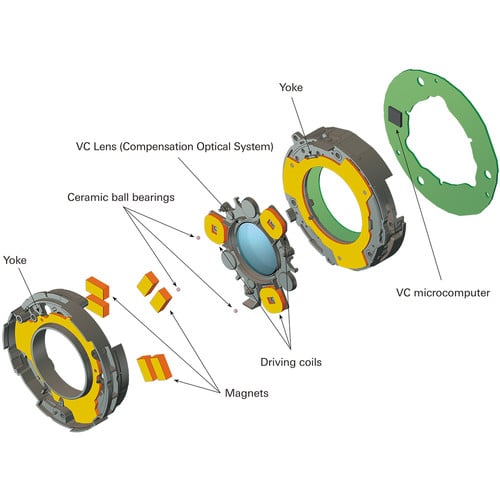
On top of that, this lens is water resistant.
At just $799, this rig is certainly worth the price for a huge focal range and top-shelf construction, as seen in the graphic above.
You can pre-order yours today for Canon or Nikon mounts.
Learn More:
Editor's Tip: You can save money by buying pre-owned lenses. Find a used lens.
Tamron 28-75mm f/2.8 Di III RXD
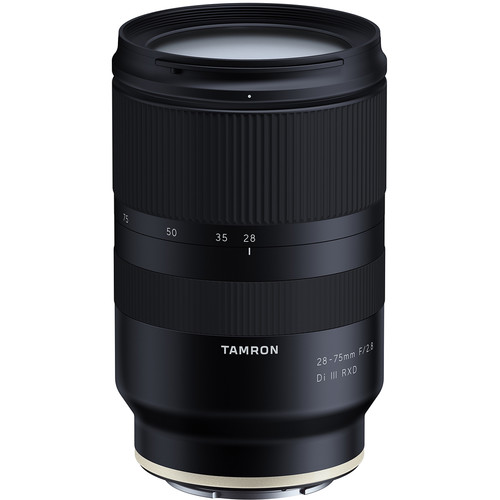
Up to this point, Tamron's selection of lenses for Sony full frame cameras has been, well, slim.
But that seems to be changing with the upcoming 28-75mm f/2.8 Di III RXD standard zoom lens.
If you're a landscape photographer, you'll like the water-resistant construction and the Fluorine coating on the lens element.
If you're a video enthusiast, this lens's rapid extra-silent stepping drive (RXD) will likely be a favorite feature.
Something else to keep an eye on is this lens's excellent minimum focusing distance.
On the wide end, it can focus at 7.5 inches. On the wide it, that mark is at 15.3 inches.
That means this standard zoom gives you plenty of flexibility not only in focal length, but also in how close you frame your shots. The f/2.8 aperture will be nice for low-light shooting as well as getting gorgeously blurry backgrounds.
The price has not yet been released on this lens, but I would suspect that since Tamron typically prices their lenses quite competitively that it won't be an outrageous sum.
Learn More:
- Get Notified When the Tamron 28-75mm f/2.8 Di III RXD Becomes Available
- The Best Canon, Sony, and Nikon Lenses for Full Frame Cameras
Via Fstoppers (1) and Fstoppers (2)
We Recommend
Upgrade Your Kit Lens With These Capable, Inexpensive Zooms
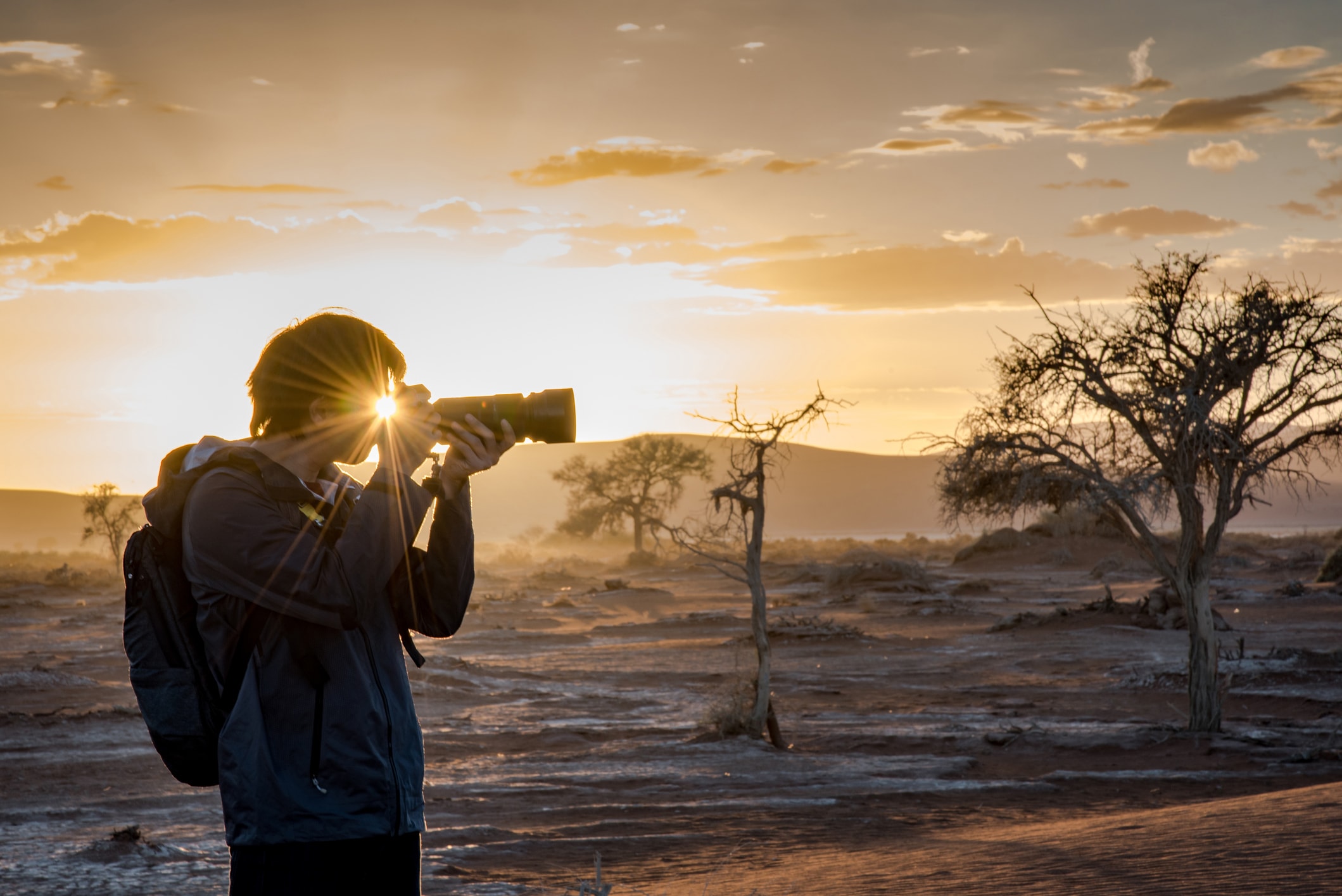 Image Credit: Zephyr18
Image Credit: Zephyr18
When you buy a camera, it often comes with a kit lens, something like an 18-55mm f/3.5-5.6.
And while a basic lens like that is fine when you're learning the ropes of photography, once you start to get the hang of things, a lens upgrade is in order.
Unfortunately, many of the best lenses are expensive. Like very expensive.
So unless you buy pre-owned lenses (which I strongly urge you to look into), you might want to look at bargain zoom lenses that won't break the bank but will still offer you more capability than your kit lens.
Here are a few of the top zoom lenses you can buy without spending a ton of cash.
Editor's Tip: Not sure what bargain lens to buy? Find out about the best lenses to buy when you're on a budget.
Tamron 70-300mm f/4.0-5.6 Di LD Macro
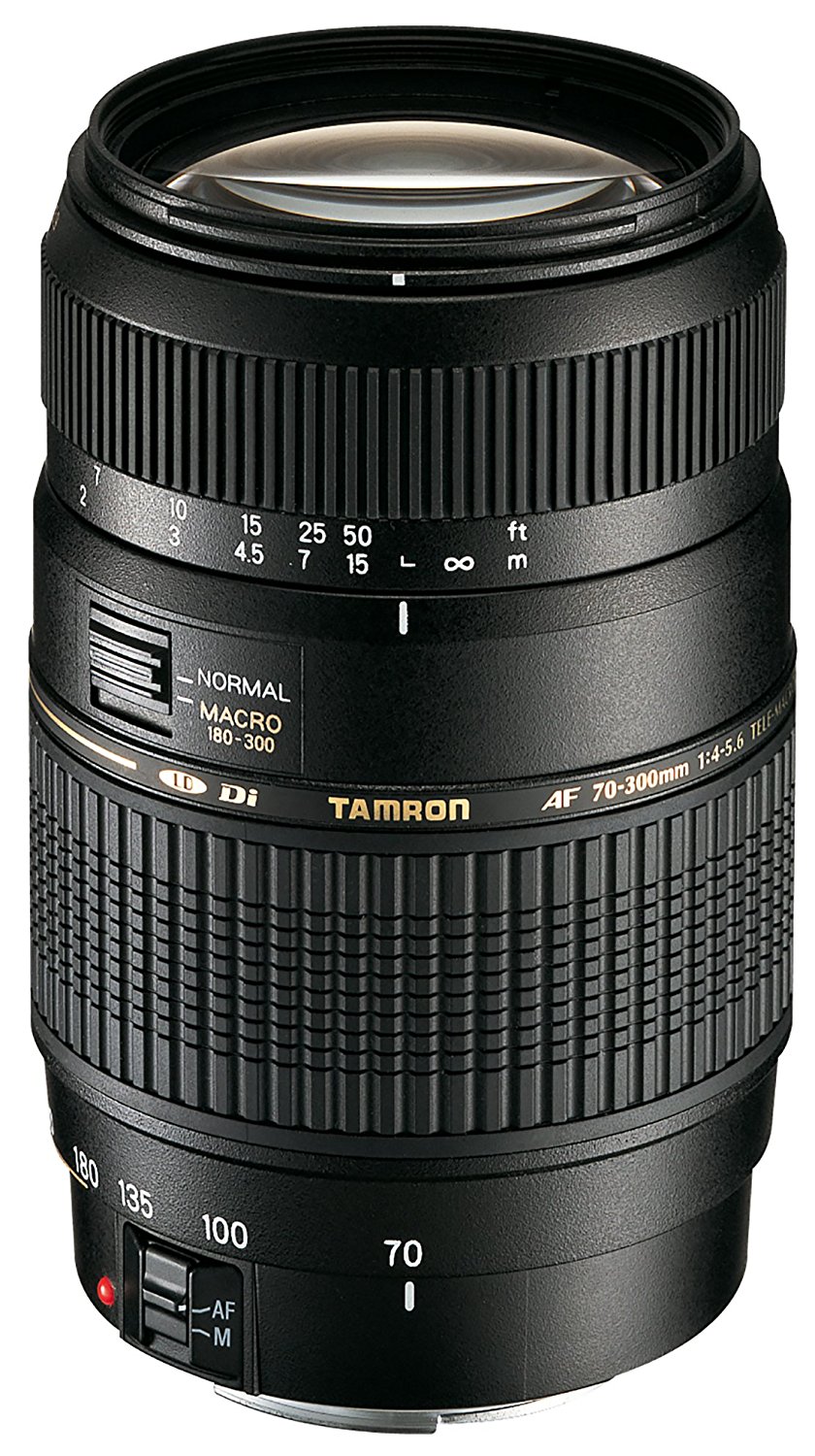
Buying new lenses on a budget often means opting for third-party manufacturers like Tamron.
In the past, this could've been a bad thing, but in recent years, Tamron, Tokina, Sigma, and other third-party lens makers have really stepped up their game.
The Tamron 70-300mm macro lens shown above isn't just for shooting up-close portraits of frogs, insects, flowers, and other small subjects.
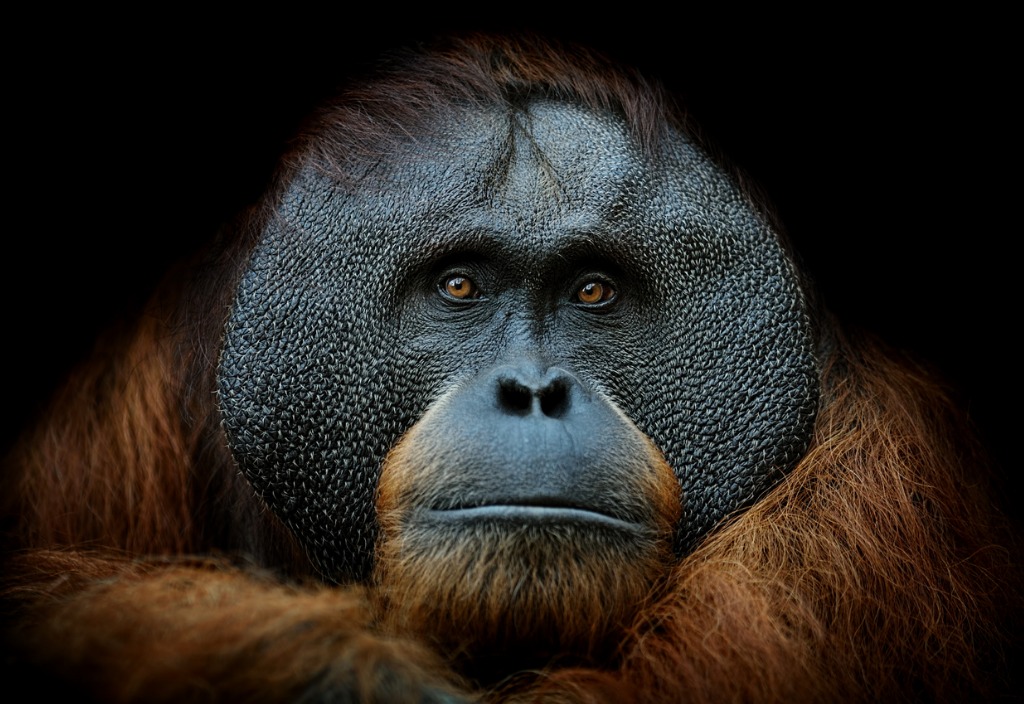 Image Credit: Freder
Image Credit: Freder
Instead, with the massive 70-300mm focal range, you can use it for nature photography, wildlife photography, portraiture, landscapes, and sports photography, too.
Because it's a macro lens, it produces gorgeously sharp and detailed images.
Though close-up photos will show a diminished depth of field, particularly for smaller subjects, when you use this lens for distant subjects, you'll find that your images are impressively sharp.
Best of all, this zoom lens is available for Nikon, Canon, and other major camera brands, and at the time of writing, you can pick one up for less than $130.
Learn More:
- The Best Camera Lens for Under $500 - and Why You Need One
- This 18-400mm Lens Might Be the Only Lens You Ever Need
Canon EF-S 55-250mm f/4-5.6 IS
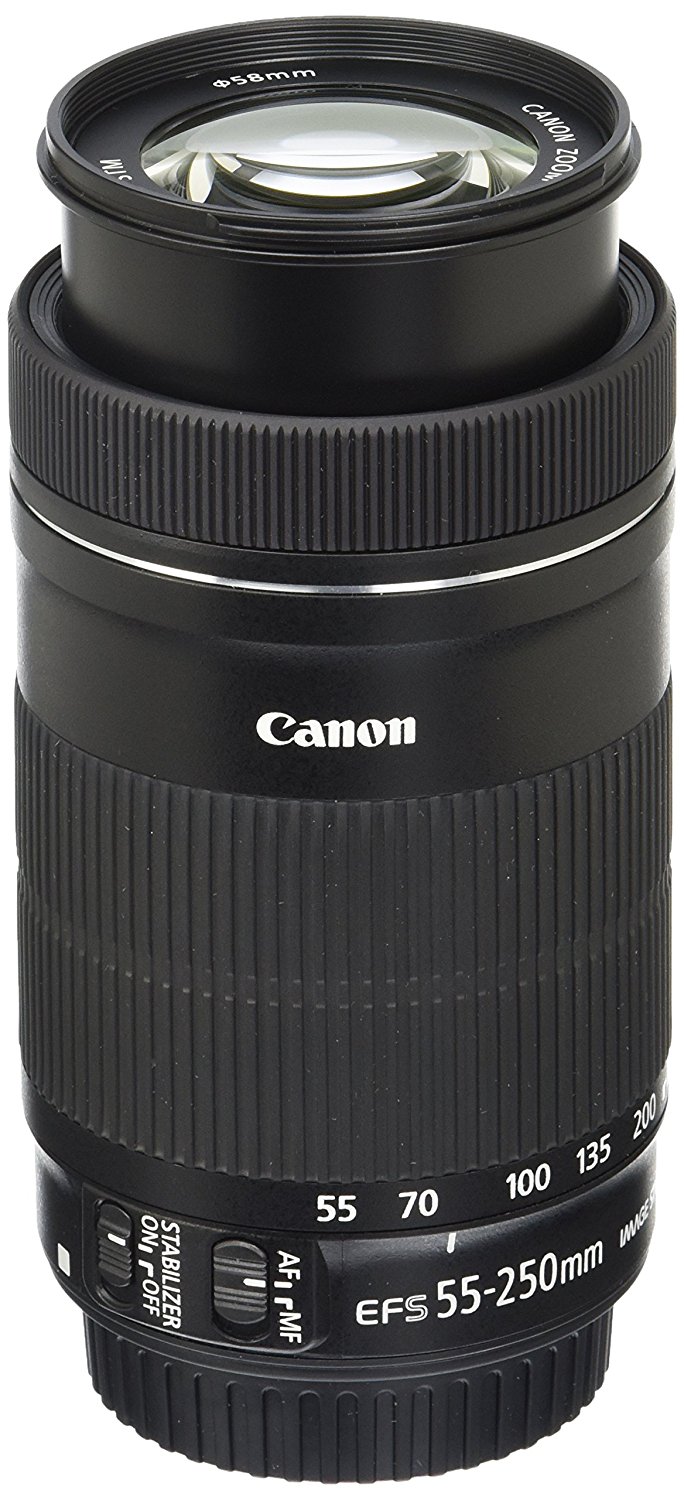
Designed specifically for Canon APS-C cameras, the EF-S 55-250mm f/4-f/5.6 won't wow you with a huge aperture or top-shelf optics that you'll find in Canon's L-series glass for professional photographers.
However, what you will find is a highly capable lens that gives you much more capability to take varied photos than your kit lens.
For starters, the 55-250mm focal length takes you from short telephoto all the way into long telephoto range once you take crop factor into account. That is, with Canon's 1.6x crop factor, this lens has an effective focal length of 88-400mm.
That means you can use this lens for anything from portraits to landscapes to wildlife with ease.
Though you probably don't want to make a habit of shooting handheld, with Canon's Image Stabilization technology, you can hold this lens at slower shutter speeds and worry less about introducing camera shake.
Another feature that could prove beneficial is the Movie Servo Autofocusing, which helps minimize noise associated with the lens zooming in and out.
This is handy for keeping nearby subjects undisturbed and for shooting video without hearing zoom noise all the time.
Add to that the fact that this lens weighs just over a pound, and you have a solid, lightweight, and capable lens to add to your kit. It's less than $300 brand new, too, so it's certainly one of the best cheap zoom lenses for Canon cameras. You might be able to find an even better deal on a used version of this lens as well!
Learn more about this excellent budget zoom lens for Canon cameras in the video above by Dustin Abbott.
Editor's Tip: Are you ready to upgrade your landscape photography lens? Before you do, consult this guide on the top four Canon lenses for landscape photography.
Tokina 11-16mm f/2.8 AT-X116
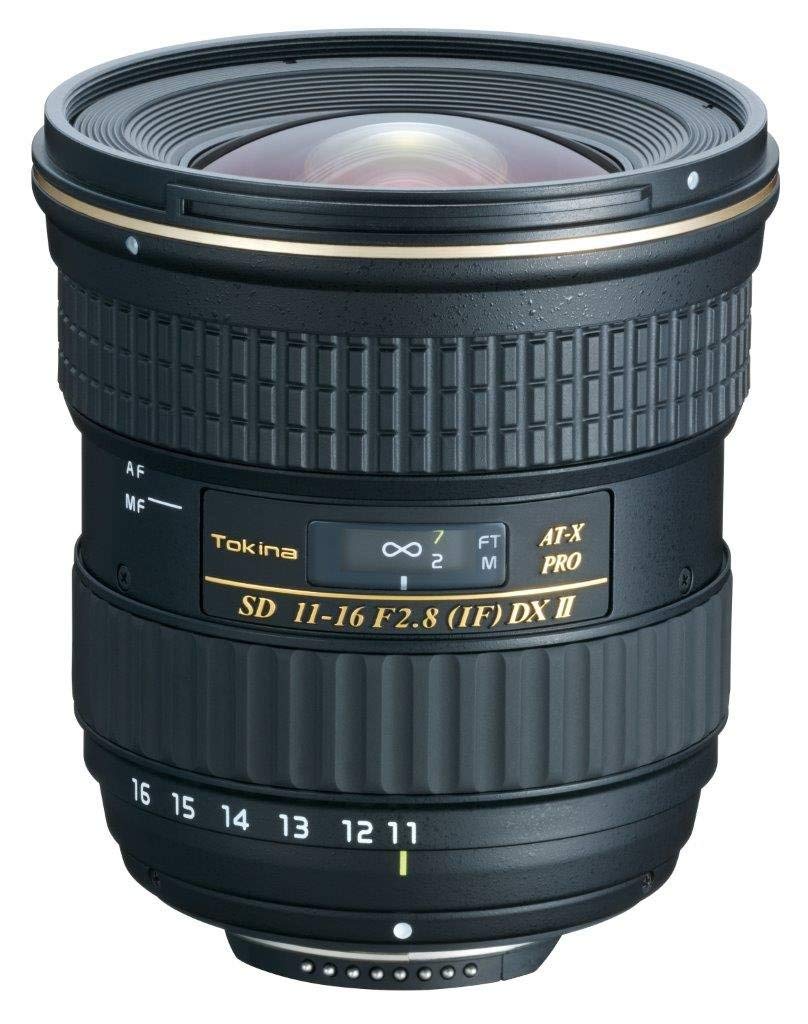
Though not a strict kit lens replacement, the Tokina 11-16mm f/2.8 wide-angle is one of the top zoom lenses you can buy for under $400.
At f.2.8, this lens has a much larger maximum aperture than the other two lenses discussed above. That means that it's a more capable low-light shooting lens.
What's more, by opening the aperture up nice and wide, you can use faster shutter speeds to avoid camera shake. Larger apertures are also helpful for blurring the background of your photos.
Though the 11-16mm focal length will restrict you mostly to landscapes, at least they will be ultimately sharp with minimal ghosting, flare, and other aberrations.
If you primarily shoot landscapes, it's hard to go wrong with this little lens.
Really, it's hard to go wrong with any of these budget zoom lens options!
Learn More:
We Recommend
Want Ultra-Sharp Photos? Try These Lenses
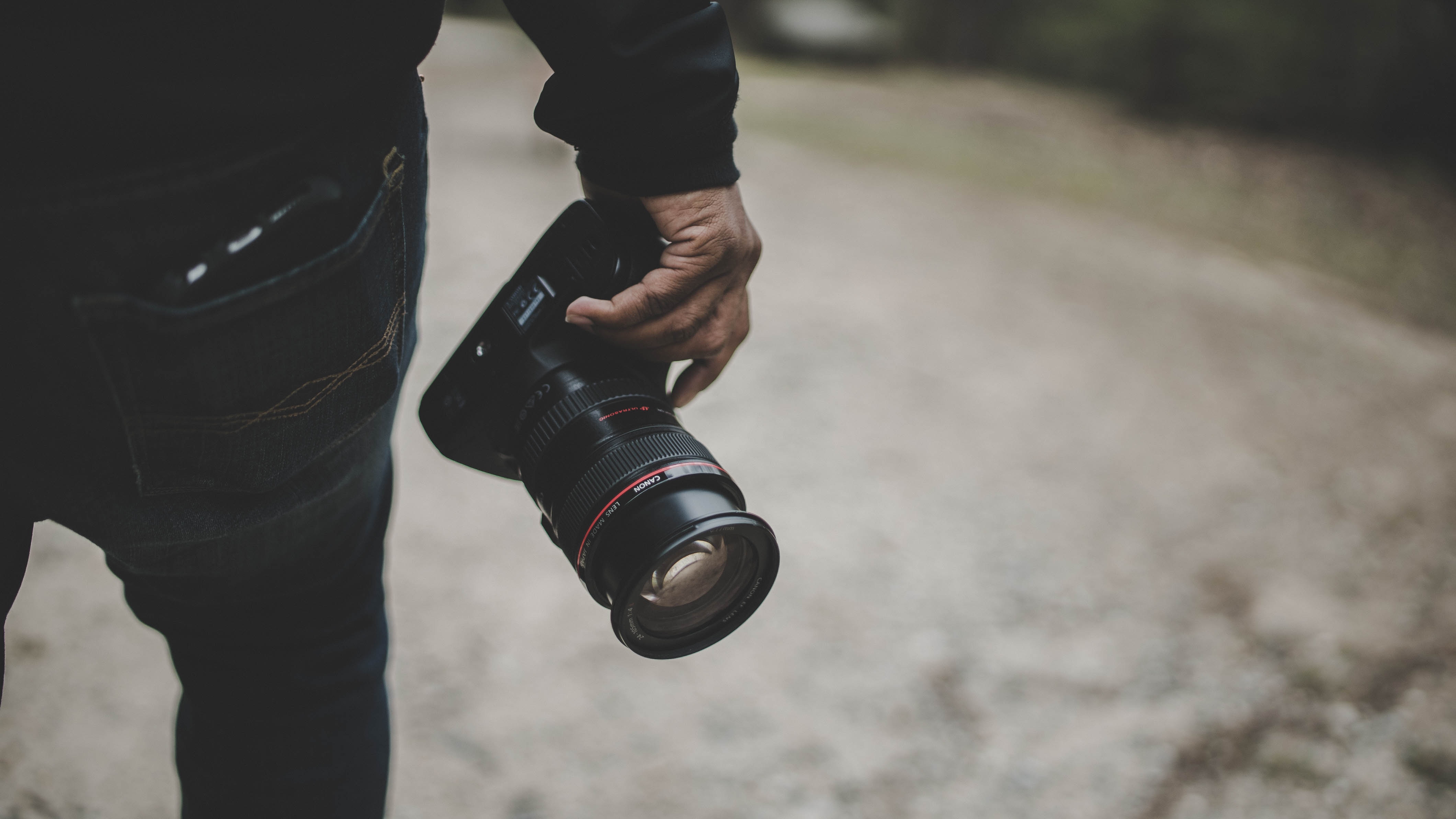 Photo by Trevor Brown on Unsplash
Photo by Trevor Brown on Unsplash
When shopping for photography gear, the old adage is that you should spend as much as you can on a really good lens.
In fact, if you wish to upgrade your camera and lens, forget upgrading the camera and put all your money toward quality glass. That's because the lens has a greater impact on how your photos look than the camera.
And while some really good lenses cost well over $1,500.00, there are a variety of excellent options for less than $1,400.
That might sound like a steep price, but when you consider that a lens is essentially a lifetime investment - as opposed to a camera which you'll likely replace over and over again over your lifetime - it's actually not a bad price at all.
That being the case, here's a few of the sharpest camera lenses to consider.
Editor's Tip: Ready to upgrade your lens but don't know what focal length to get? Consider why you should have a 35mm lens in your camera bag.
What is the Sharpest Camera Lens? The Sigma 135mm f/1.8 DG HSM Art is It...
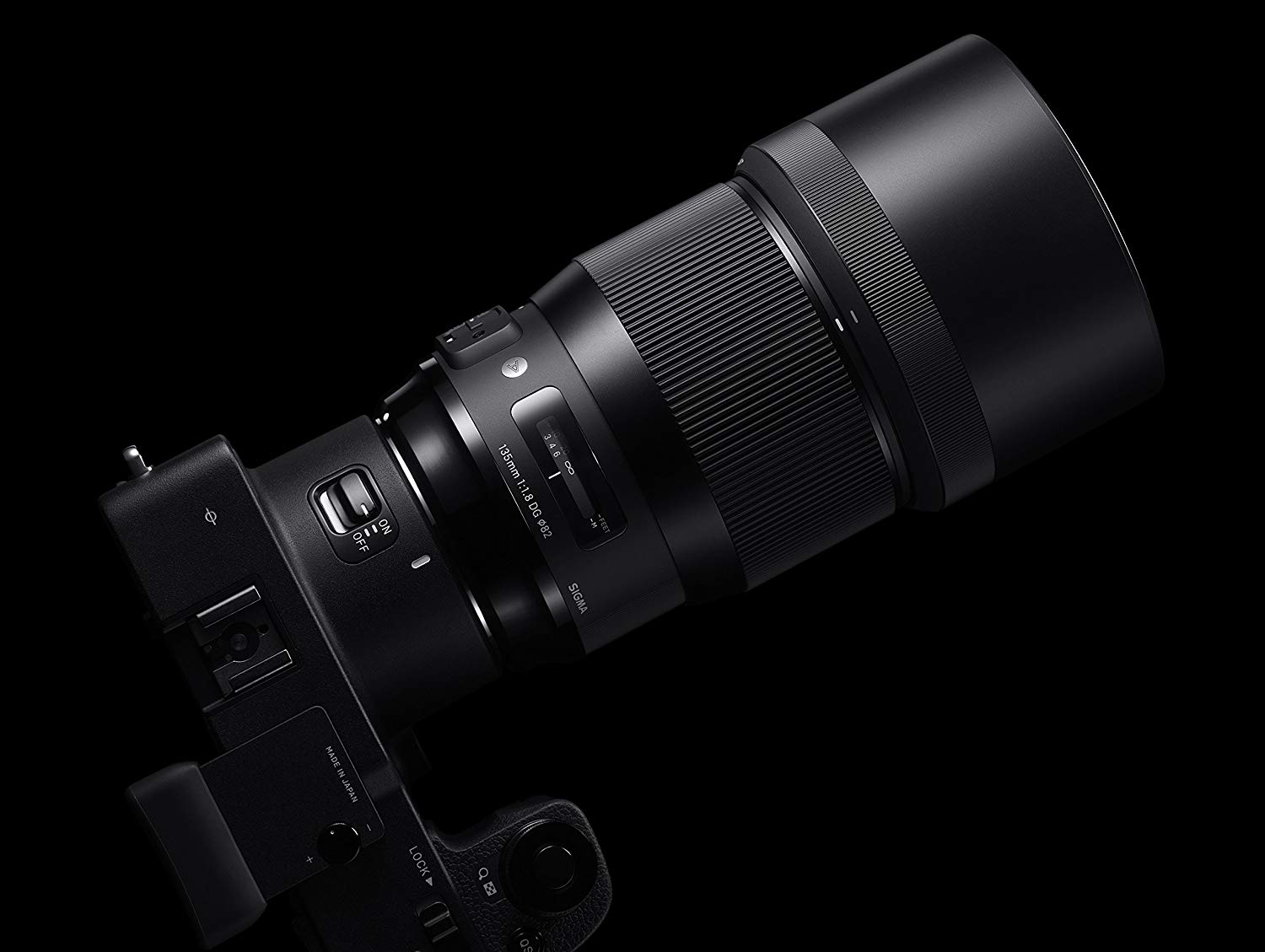
Not only is this lens incredibly sharp, but there's versions of it for Sony, Nikon, and Canon full frame cameras, which run from $1,149.00 to $1,399.00.
Sigma knocks it out of the park with a beautiful design and sophisticated optics that make it one of the very best lenses on the market right now.
It has both FLD and SLD glass to keep chromatic aberrations and color fringing to a minimum. Likewise, there's a Super Multi-Layer Coating that suppresses lens flare and ghosting while boosting color fidelity and contrast.
The huge f/1.8 aperture makes it an excellent portrait lens as well given the quality of the bokeh it creates.
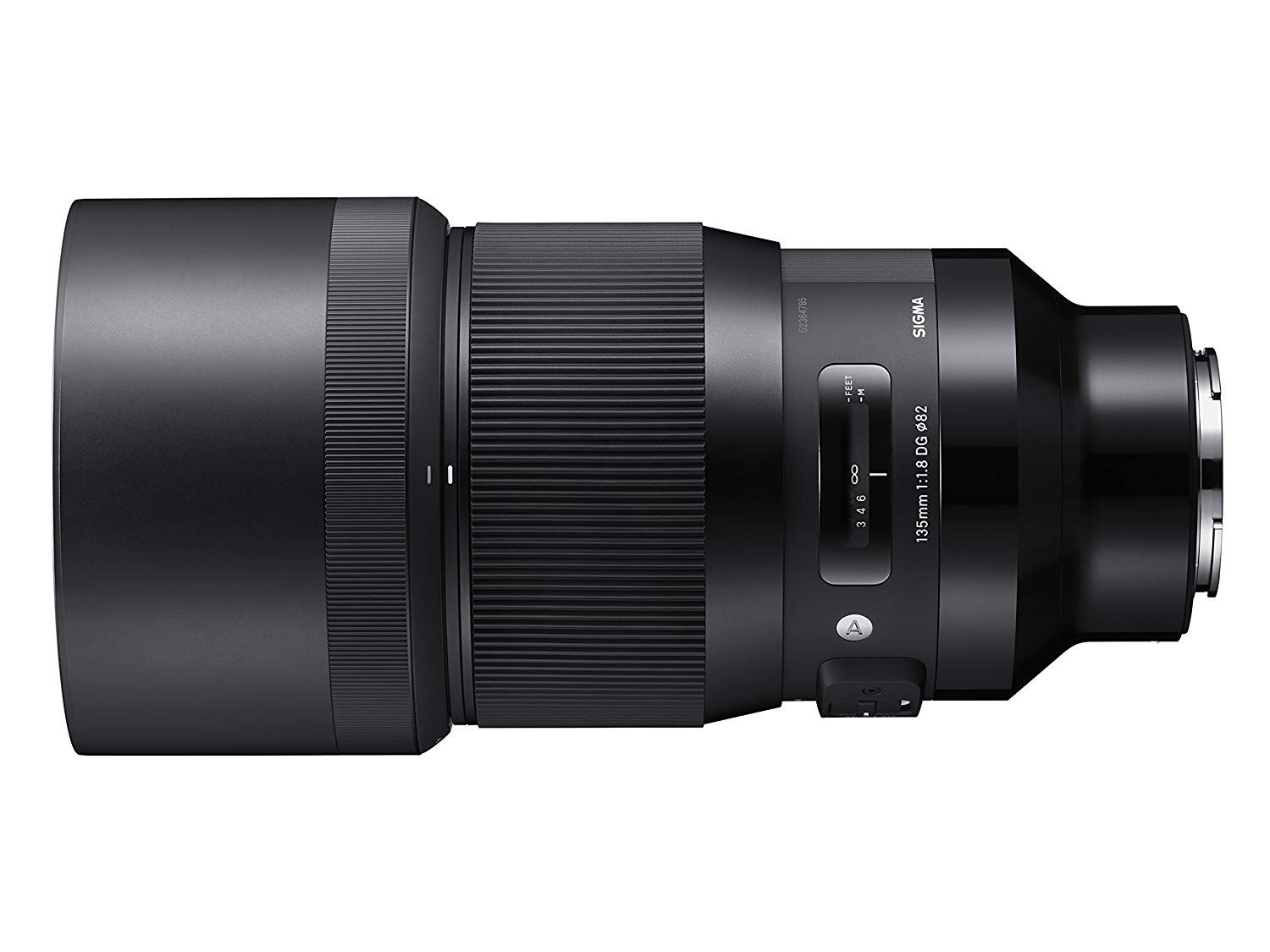
The lens also sports a Hyper Sonic Motor that produces fast, quiet, and smooth autofocusing action. For those occasions when you want to focus manually, there's full-time manual focus override.
The build of the lens is off the charts, too, with Thermally Stable Composite materials that make the lens durable and useful in a range of environmental conditions.
The brass bayonet mount also ensures precise mounting to your camera and durable performance for years to come.
Learn More:
- 3 Essential Lenses for Landscape Photography
- The Best Camera Lens for Under $500 - and Why You Need One
Samyang XP 85mm f/1.2
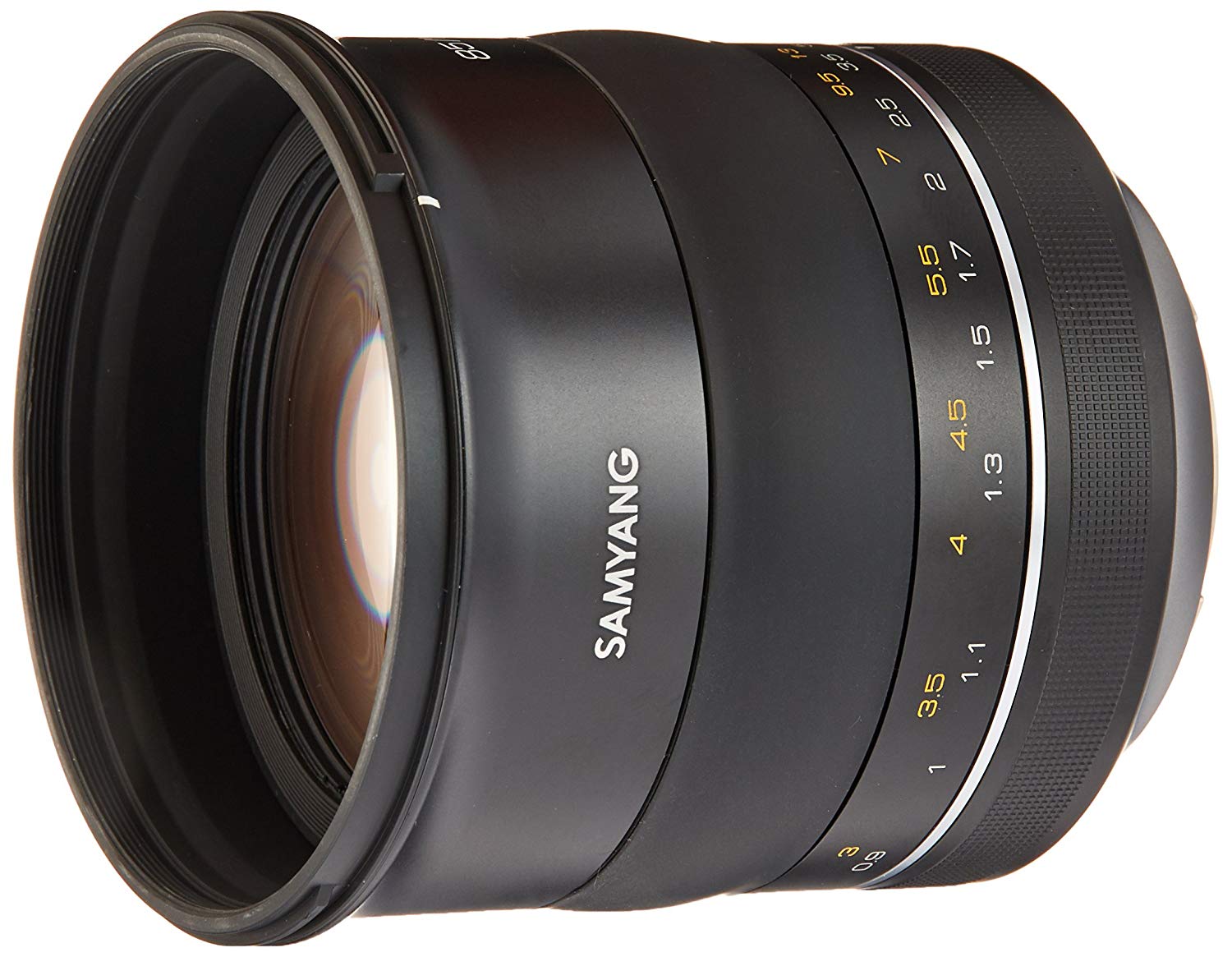
Showing just how far third-party lenses have come in recent years, one of the sharpest lenses out there today is this Samyang XP 85mm f/1.2 for Canon EF mount cameras, which runs about $720.00.
If you shoot portraits, an 85mm lens is a must. And if you're buying an 85mm lens for a Canon full frame camera, this is a great lens to consider.
The huge f/1.2 aperture means excellent performance in low light situations. Naturally, the possibilities for bokeh and selective focus are there with such a wide aperture.
Speaking of wide aperture, this little lens produces beautifully sharp results throughout its aperture range, even when shooting wide-open.
The lens has ten elements in seven groups, which includes one aspherical and two high refractive lens elements. This ensures top-notch image quality from the center of the shot to the corners.
This is a manual focus lens as well, and with a precise, damped, and easy-to-use grip, manual focusing is a breeze.
Better still, this isn't just a portrait lens. Instead, at this focal length and this aperture, it's an ideal choice for low-light shooting like astrophotography.
The only downer? It's only available for Canon cameras.
Editor's Tip: In the market for a zoom lens? Find out why a 24-70mm lens is a great option.
Sharpest Lenses of 2019: Other Options to Consider
The lenses outlined above are just a couple of options for ultra-sharp lenses.
The Sigma 135mm lens and the Samyang 85mm lens were crowned the sharpest of all in the video above by Christopher Frost.
He offers eight other options to consider if you want the ultimate in sharpness from a lens, ranging from more Sigma models to Zeiss to Tamron.
There's prime lenses and zooms too - something for everyone!
Have a look at the video and learn which lenses are the sharpest and which one might be ideal for your particular needs!
Learn More:
We Recommend
What is Focal Length?
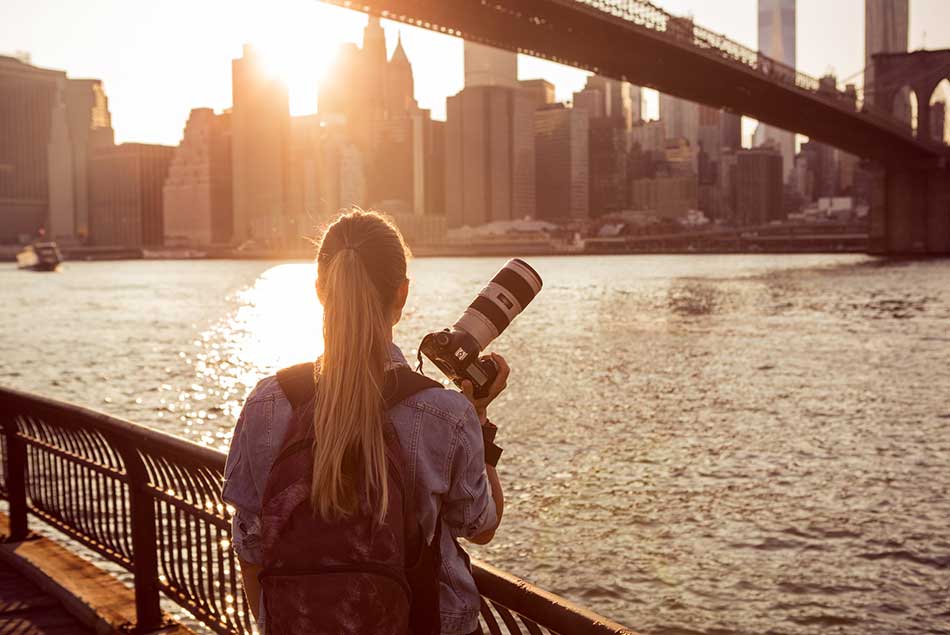
What is Focal Length?
When you're just beginning as a photographer, there are plenty of things that you have to learn and master.
Naturally, you need to understand how to compose a photo and how to use your camera.
You also need to understand how to use the right lighting to get the shot you want.
But there's also a ton of photography jargon you need to learn, too. That includes figuring out what focal length means.
Editor's Tip: Don't buy another lens until you LEARN WHY EVERY PHOTOGRAPHER NEEDS A PRIME LENS IN THEIR CAMERA BAG.
Focal Length Definition
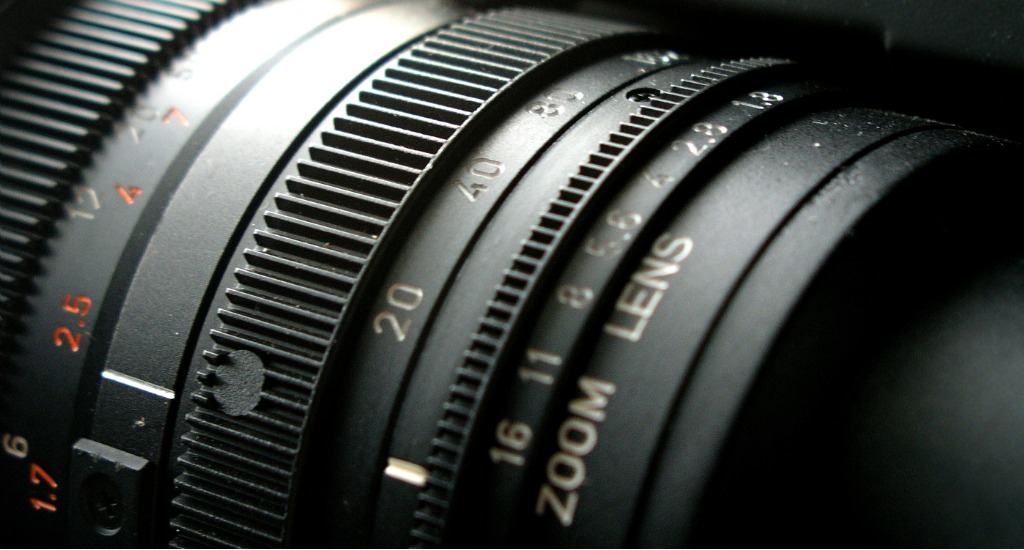
The focal length of a lens is a measurement (in millimeters) that indicates the distance between the center of a lens and its focus point.
That technical definition isn't really what's important when learning about focal length, however. Generally speaking, it refers to how long the lens is.
What's more important is that you understand how the focal length changes how your images look and how your camera captures the subject matter that you're photographing.
Focal Length Comparison
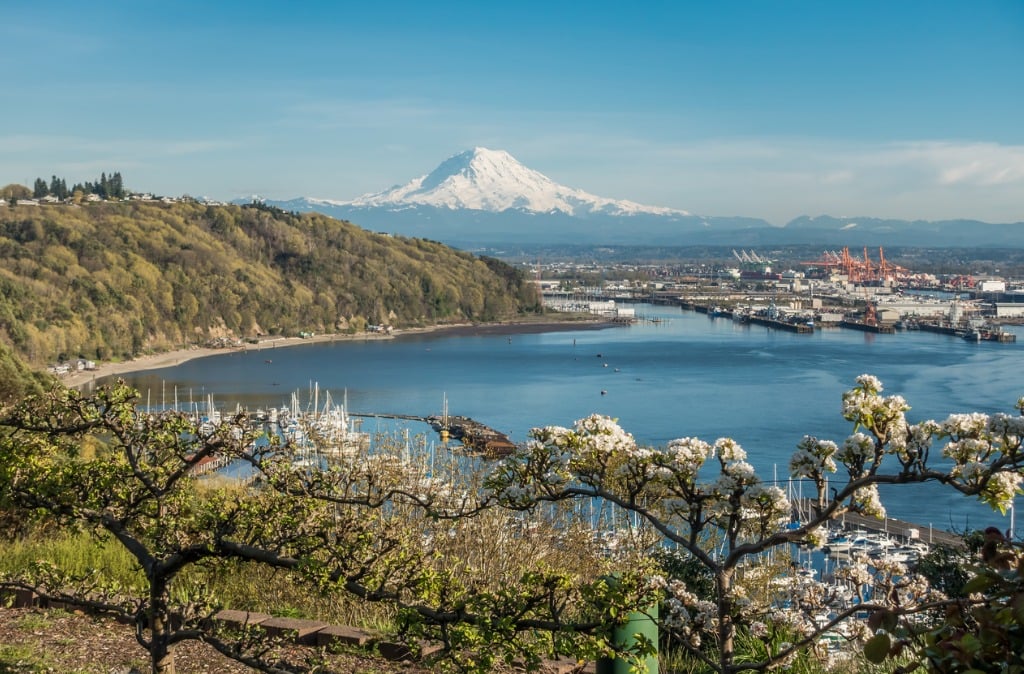
The smaller the focal length, the shorter the distance from the center of the lens to its focal point. The result of that short distance is a wider the field of view.
On the other hand, the larger the focal length, the longer that distance is and the narrower the field of view will be.
So, a 24mm lens is a short focal length with a very wide field of view. Because of that wide field of view, this lens would be ideal for photographing landscapes, like the one shown above.
As you can see, that wide field of view allowed the photographer to incorporate a large part of the scene that gives you a good understanding of the relationship between the subject - Mount Rainier - and the surrounding landscape.
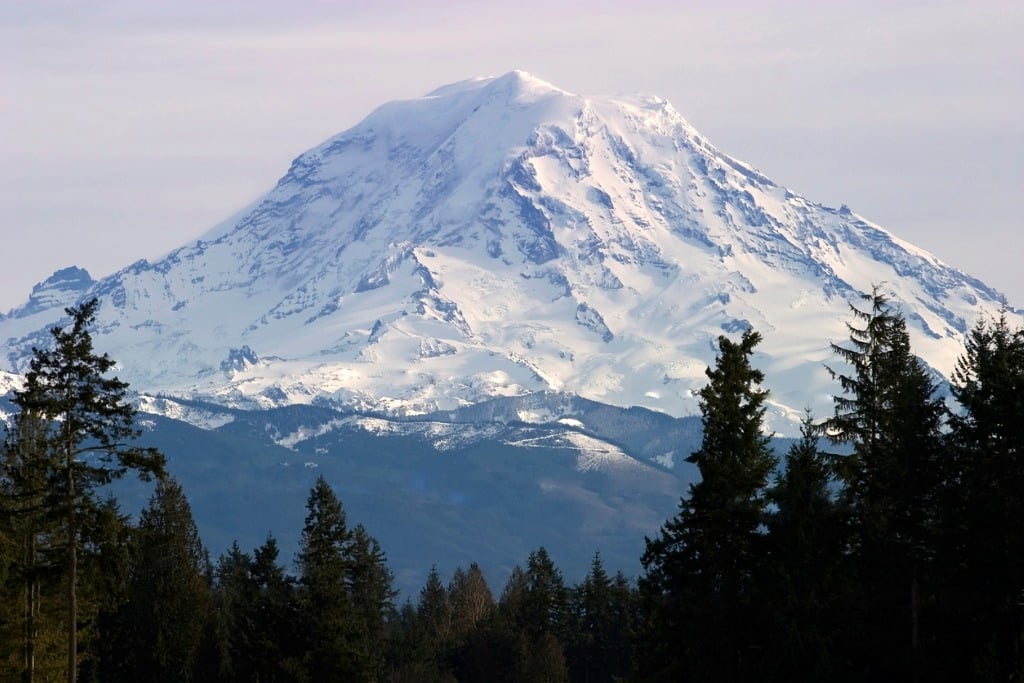
Conversely, a 300mm lens is a very long lens with a very narrow field of view.
A long lens like this would generate a completely different view of the subject...
As shown above, that longer focal length allowed the photographer to get a very up-close shot of Mount Rainier without much of the surrounding landscape in the frame.
Therein lies the first lesson in answering the question, "What is focal length?" It determines how "zoomed in" the photograph will be.
The shorter the focal length, the wider the shot will be; the longer the focal length, the more zoomed in the shot will be.
Learn More:
Focal Length Examples
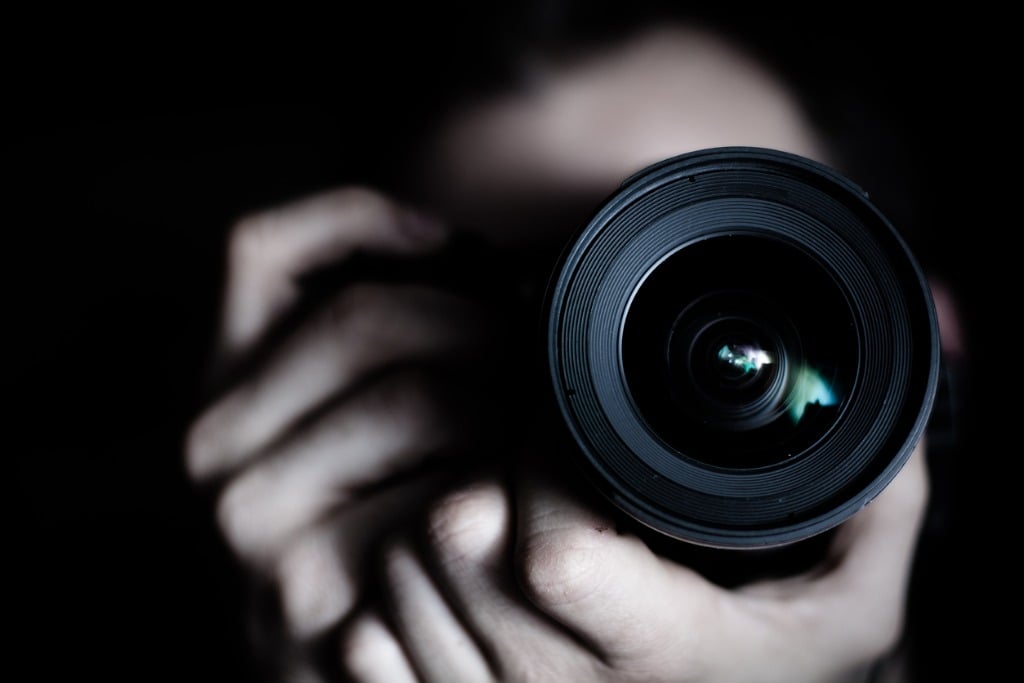
In learning what is focal length, it's helpful to have a few examples and the types of subject matter that they are well-suited to photograph.
It's also helpful to know that the effective focal length of a lens changes depending upon the camera that's being used.
On a full frame camera, a lens operates at its native focal length. That is, a 24mm lens behaves like a 24mm lens on a full frame camera.
However, on a crop sensor camera, the effective focal length is different because a crop sensor camera has a smaller sensor.
Without getting too technical, a lens will be "zoomed in" on a crop sensor camera, with the amount of zoom depending on the crop factor of that particular camera.
So, a 24mm lens might act like a 36mm lens on one camera or a 38mm lens on another camera.
But for the purposes of the examples that follow, we assume that the lens is being used on a full frame camera, and therefore operating at its native focal length.
Wide-Angle Lenses - 24-35mm
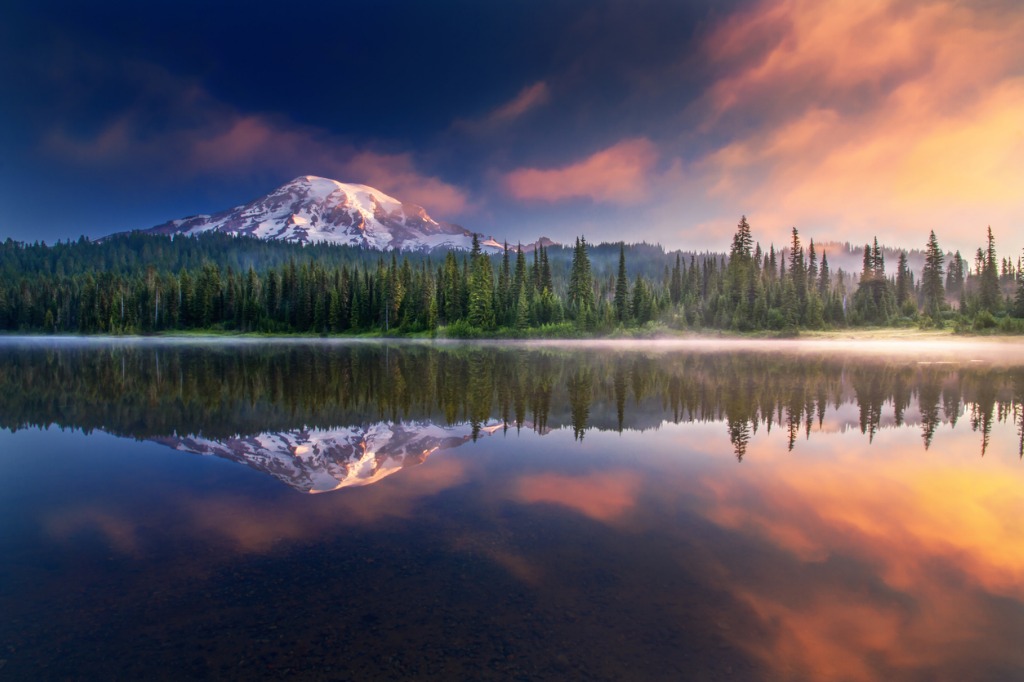
Wide-angle lenses are in the 24-35mm range and produce the wide angle of view that I described earlier.
Since they incorporate so much of the scene, they are ideally suited for things like landscape photography, where it is often beneficial to have a view of the entire scene.
At 24mm, the scene might be a little distorted, but otherwise look natural. Once you get into the 35mm realm, the scene takes on a very natural look, as the 35mm focal length very closely resembles what we see naturally with our own eyes.
Standard Lenses - 35-70mm
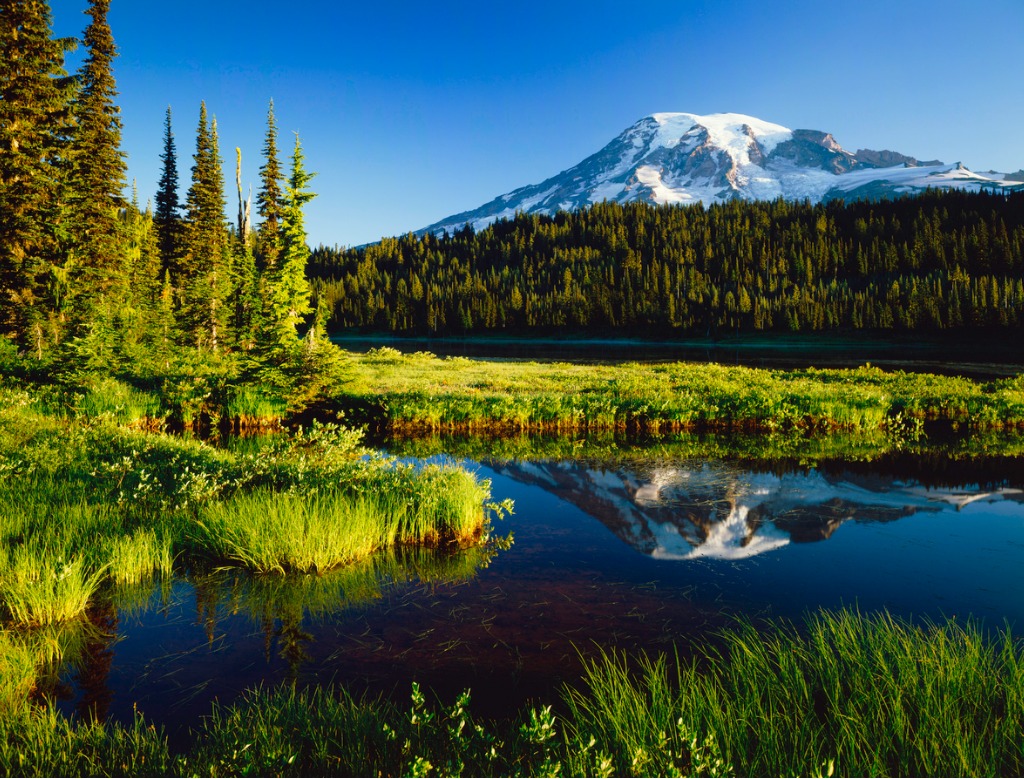
Standard lenses are a mid-range lens that have a variety of uses.
A 50mm prime lens, for example, offers enough versatility to do portraiture, landscape photography, street photography, and many others.
Again, like described above, the 35mm focal length offers a very natural-looking view, and that's true up to about 50mm.
From 50mm-70mm, you begin to see the "zoomed in" effect of the longer focal length, as shown above.
Editor's Tip: Every photographer should have a 50mm prime lens. FIND OUT WHY.
Telephoto Lenses - 70mm and Up
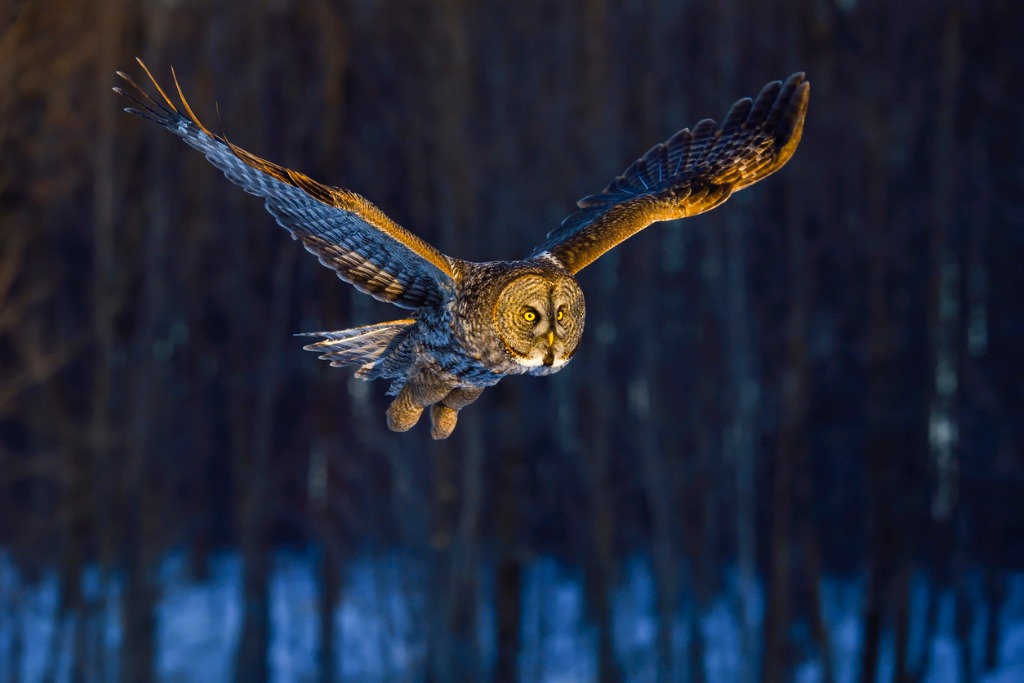
Telephoto lenses offer the narrowest field of view of any lenses.
On the shorter end, a 70mm lens would be great for things like close-up portraits or for photographing a smaller vignette in a landscape scene.
With lenses that extend well above 400mm, the longer the focal length, the more zoomed in the lens becomes.
These extremely long lenses are ideal for things like wildlife photography, in which you want to get a close-up of an animal from a long distance away, as shown above.
Telephoto lenses are good choices for sports photography as well.
How Focal Length Impacts Your Photos
With a better understanding of what focal length is and what it does, you now have a better idea of how it impacts your photos.
With a shorter focal length, you can take shots with a much wider perspective, therefore incorporating more of the scene into your photos.
Conversely, with a longer focal length, you can use the lens's much narrower perspective to be much more selective in terms of what you highlight in your images.
For more details on focal length and how it changes the look of your images, check out the video above by Michromatic.
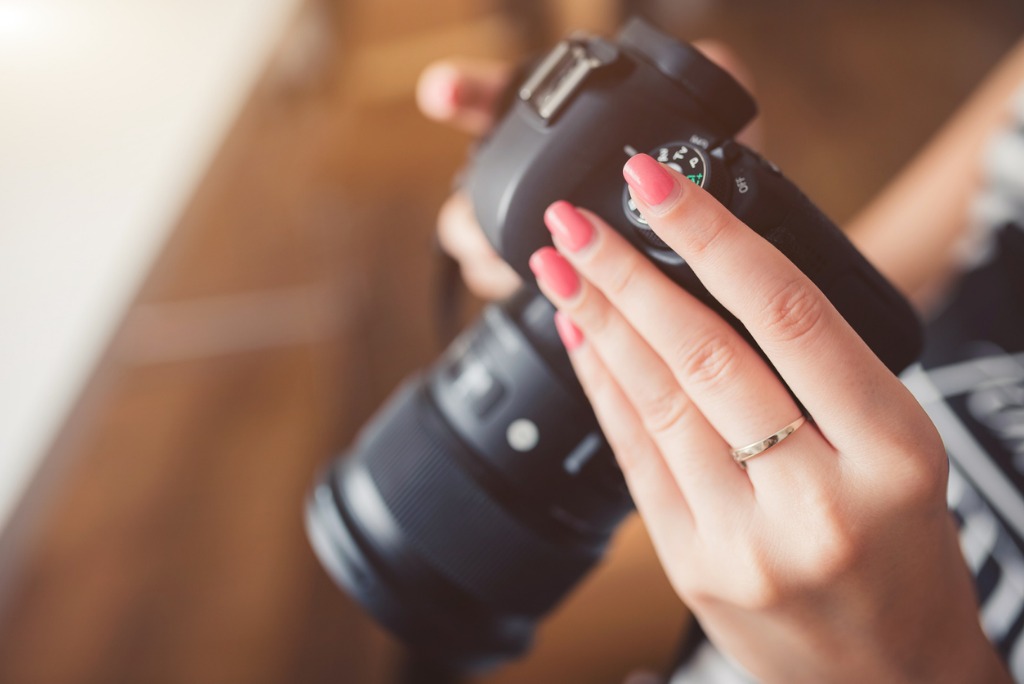
When buying a new lens, there's a lot to consider - focal length chief among them.
But you also have to consider the price, which, for many lenses, can be very high.
A great way to stretch your budget is to buy quality pre-owned lenses. Not only does this allow you to get more lens for your money, but you can also sell your old lenses and use the money you make to finance your pre-owned lens purchase.
I've bought and sold a number of lenses, and it's definitely the way to go when you want to upgrade your lenses without taking out a second mortgage on your house!
Learn More:
We Recommend
What is Focal Length? A Beginner Photographer’s Guide
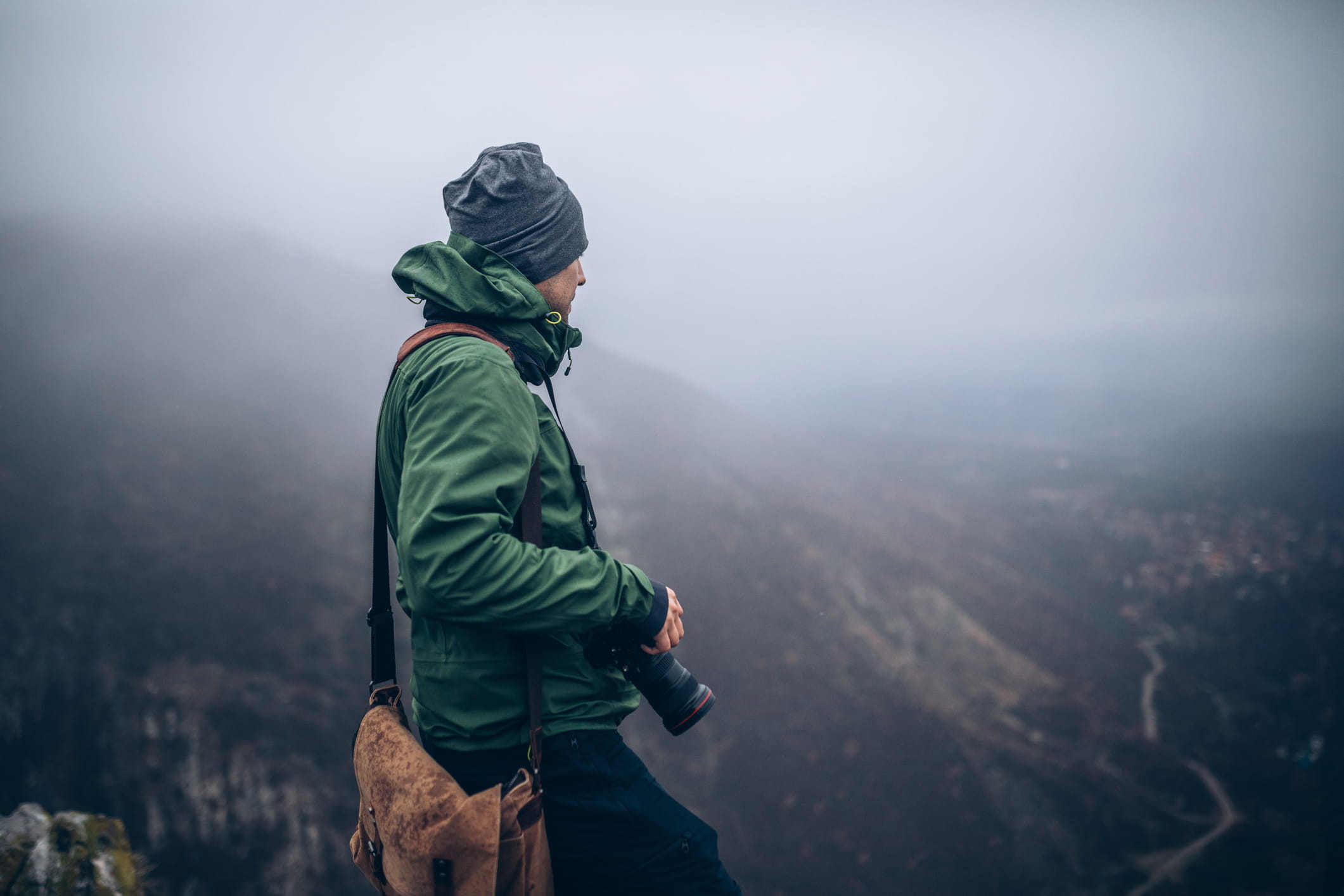
Understanding what focal length is and how it impacts your photos is a critical aspect of becoming a better photographer.
In this quick guide, I offer up a few insights into what focal length is, what different focal lengths are typically used for, and how focal length determines how your images look.
What is Focal Length?
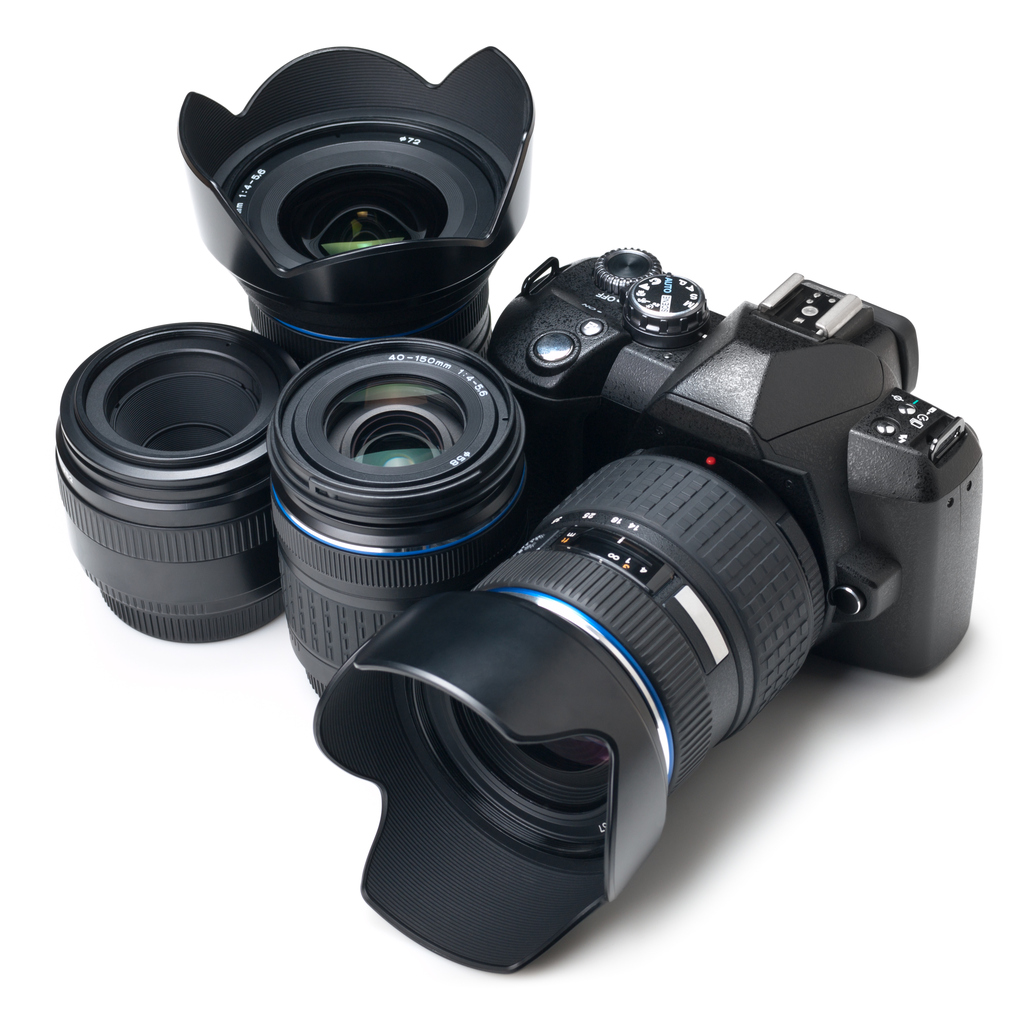
The focal length of the lens is often mistaken as the length of the lens from the front to the back.
Though that's a fairly close determination, the focal length is actually measured from the point of convergence of light in your lens to your camera's sensor.
Easy, right?
In layman's terms, a lens's focal length is how zoomed in the lens is.
In other words, the longer the focal length (i.e., a 400mm lens), the more zoomed in the image will be, as shown in the first image above.
Conversely, the shorter the focal length (i.e., a 24mm lens), the less zoomed in the image will be, as shown in the second image above.
Learn more about focal length in the video above by Michromatic.
Editor's Tip: Lenses can be pricey when you buy them new, so why not get more for your money and buy a pre-owned lens? Lensfinder is the ideal marketplace for finding the focal length you need and at a price that won't bust your budget. Start searching for your new-to-you lens right here.
Focal Length Determines What a Lens is Best-Suited to Do

Naturally, if you want to take a portrait of your kid and he's 12 feet away from you, you don't need a 400mm telephoto lens to do so.
On the flip side, if you're photographing a street scene, a 10mm super-wide-angle lens is probably not the best bet because it will distort the scene and make buildings look like a reflection in a funhouse mirror.
That begs the question, what focal lengths are best-suited for what tasks?
First Things First - Crop Factor
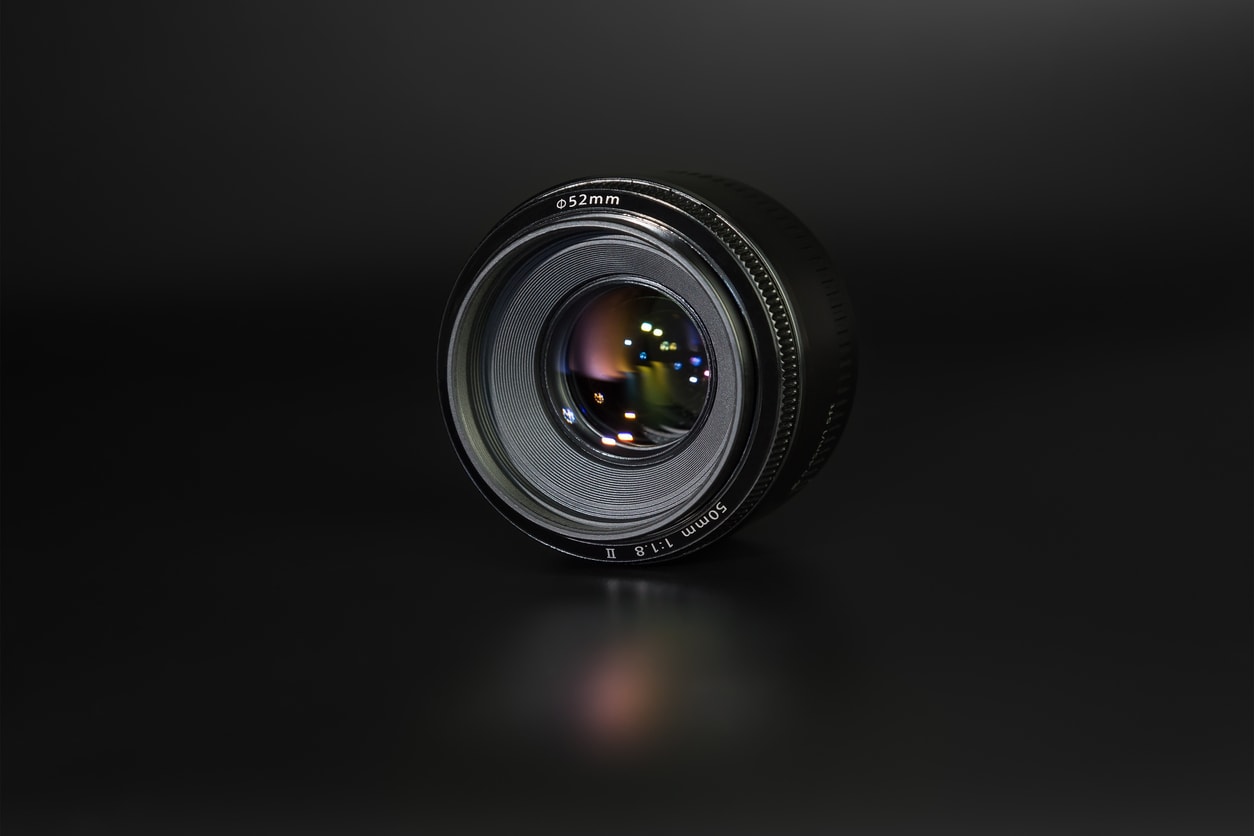
If you go to a camera shop and see a 50mm lens sitting on the shelf, it's important to understand that that lens will only be a 50mm lens if it's used with a full frame camera.
Full frame cameras have a crop factor of 1:1, so whatever the focal length is that's listed on the lens, that's its effective focal length on a full frame camera.
However, many photographers (especially amateurs) use a crop sensor camera.
Depending on the manufacturer, a crop sensor camera might have a crop factor of 1.5x, 1.6x, or maybe even 2x.
That means you have to determine the effective focal length of a lens.
So, that same 50mm lens on a crop sensor camera with a crop factor of 1.6x would be 80mm.
Just keep that in mind as I discuss the different focal lengths below. The focal lengths I list are for full frame cameras.
For a more detailed discussion of crop factor, check out the video above by B&H Photo Video.
Wide-Angle Lenses
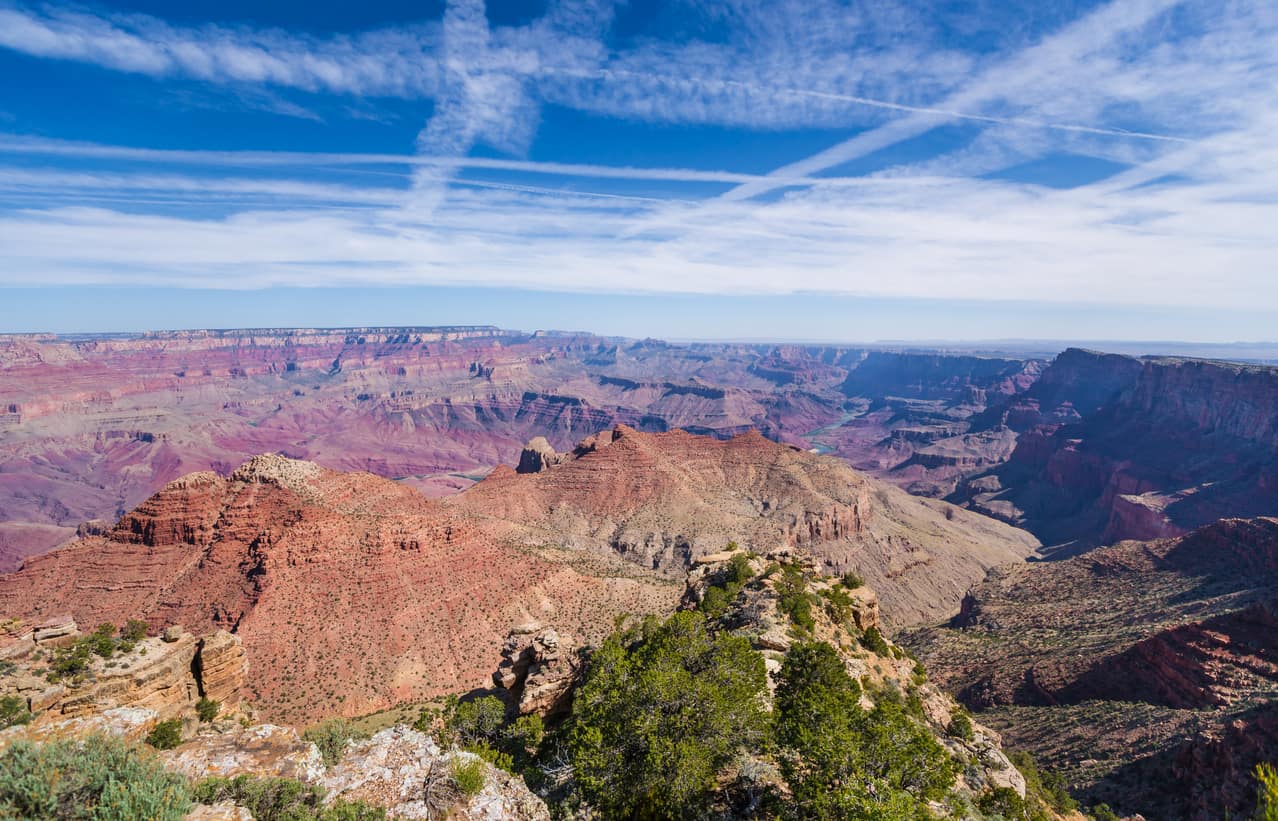
Far and away, wide-angle lenses are most commonly used for landscape photography.
Wide-angle lenses are considered to be anything below 35mm on a full frame camera.
As their name indicate, these lenses offer a wide-angle of view that's ideal for capturing the expanse of a landscape scene, as shown above.
Normal Lenses
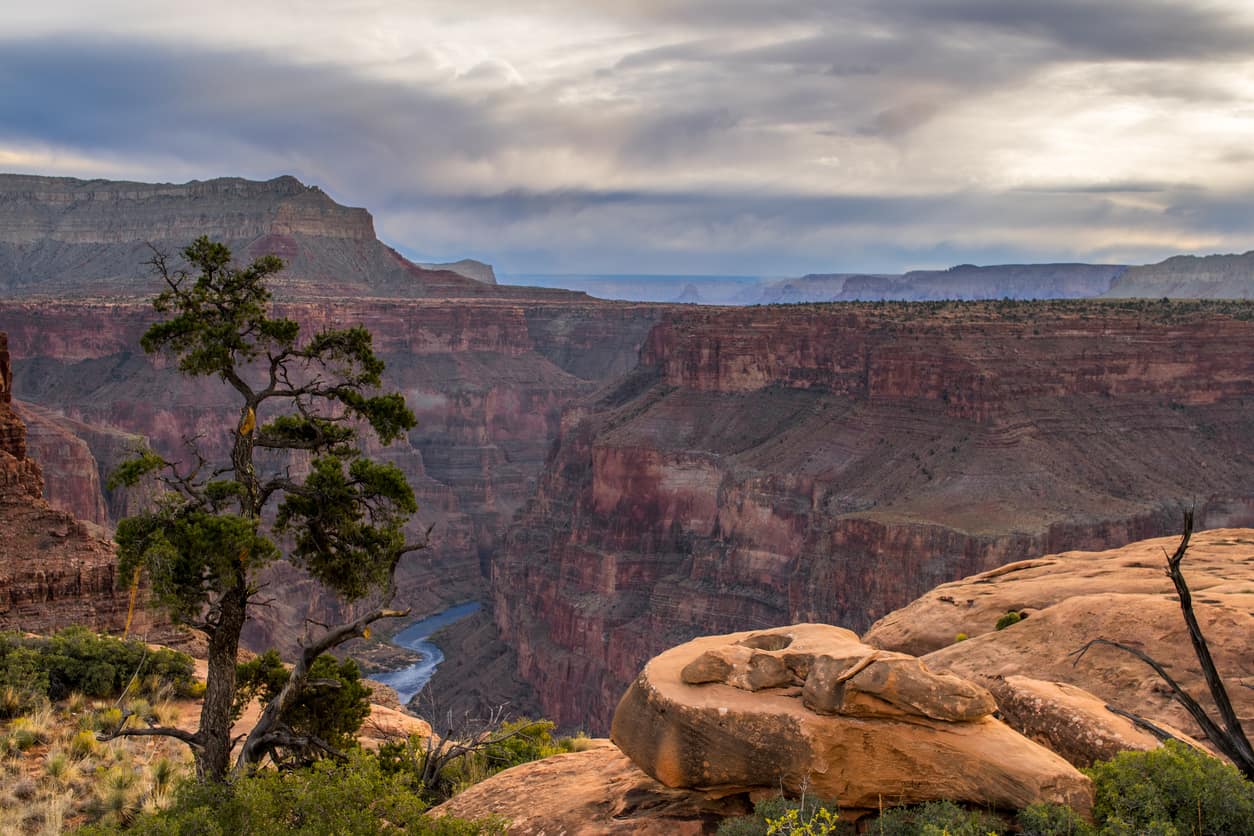
Normal or standard lenses are named such because many of them reproduce the scene you're photographing in a way that's close to what our eyes experience.
That's especially true of lenses in the 35-50mm range on a full frame camera (though the range of normal lenses extends to about 70mm).
Normal lenses are highly versatile, and can be used for just about any photographic purpose.
That includes landscapes, street photography, portraits, and even macro photography.
Telephoto Lenses
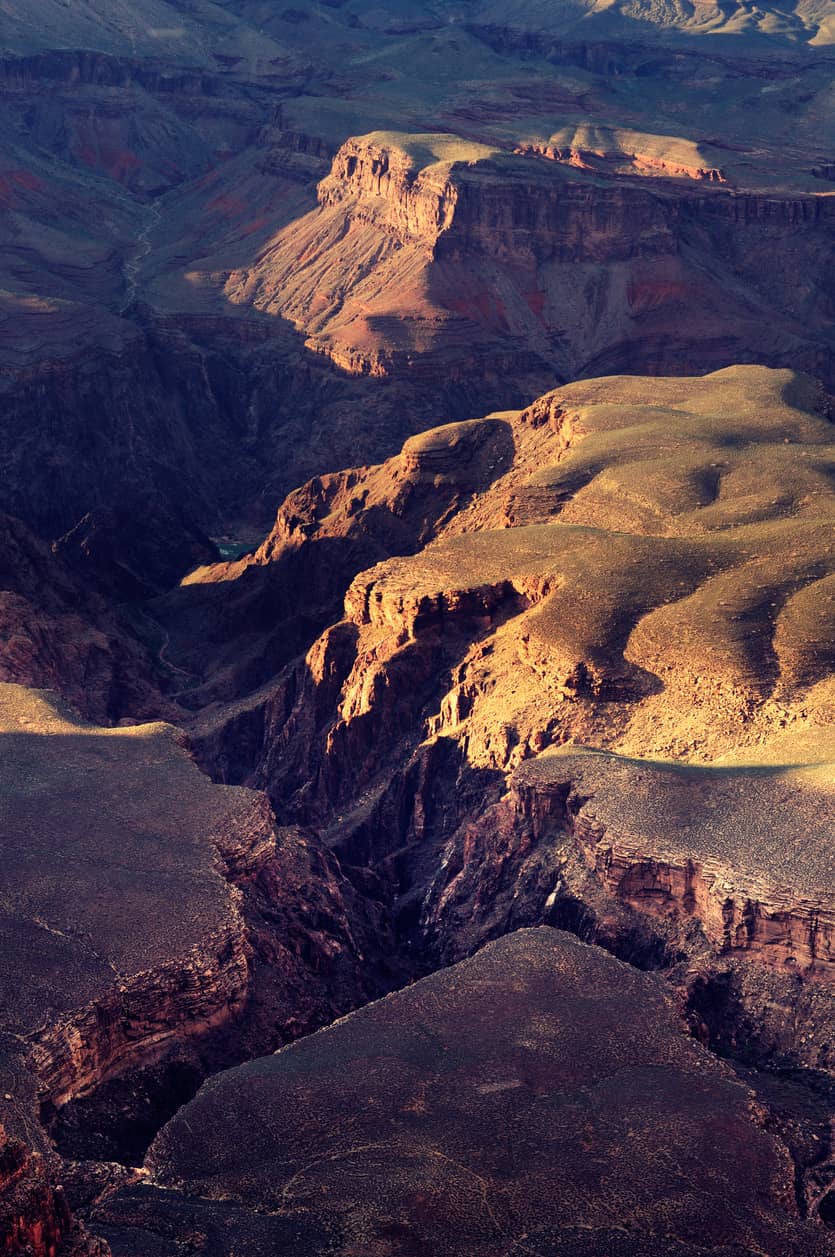
The longest of the bunch, telephoto lenses have a focal length of about 70mm and up.
Short telephoto lenses (70-105mm) are ideal for close-ups of subjects that aren't that far away, like a portrait of a person or a wildlife shot of a nearby bird, squirrel or another animal.
Long telephoto lenses (105mm and up) are better suited for taking photos of distant subjects.
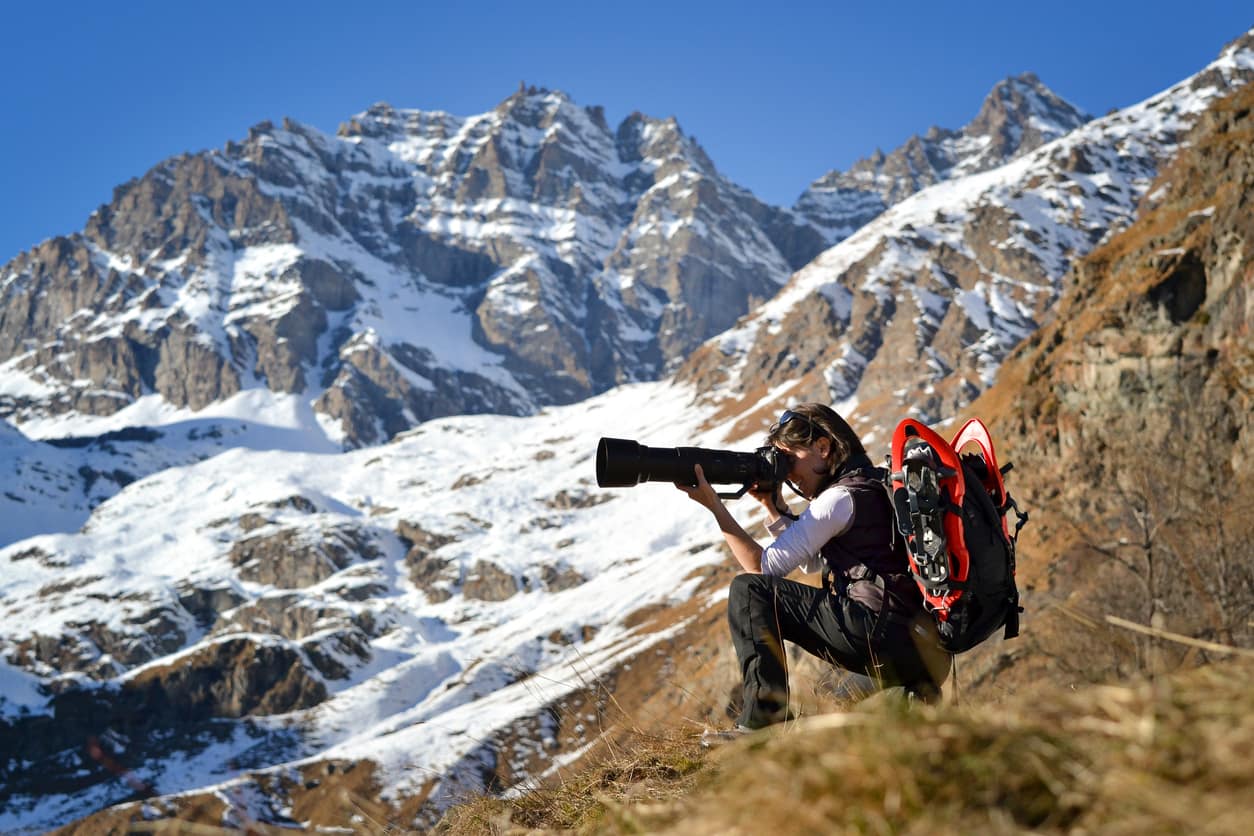
If you attend a sporting event, the long lenses you see photographers use are telephotos. Likewise, when you see wildlife photographers with enormous lenses, they're using telephotos.
That's because these lenses zoom in quite far, making distant subjects look much closer.
Learn More:
Final Thoughts
Understanding focal length can be a little confusing at first, but with this guide, you should be able to clarify what focal length is and how it impacts the way images look.
Remember, a short lens offers a wide view, a long lens offers a narrow zoomed in view, and lenses in between offer a normal or standard view of the subject.
You can see the difference between the way in which a wide-angle lens and a telephoto lens render subjects in the video above by Adorama TV.
Editor's Tip: Do you have old lenses that you just don't use anymore? Are you ready to buy something different but don't have the money to do so? Sell your old lenses on Lensfinder to make a few bucks! You can then use the proceeds from selling your old lenses to buy a different lens, all within Lensfinder's user-friendly platform. Find out how to buy and sell lenses by clicking here.
We Recommend
What Lens is Best For You?
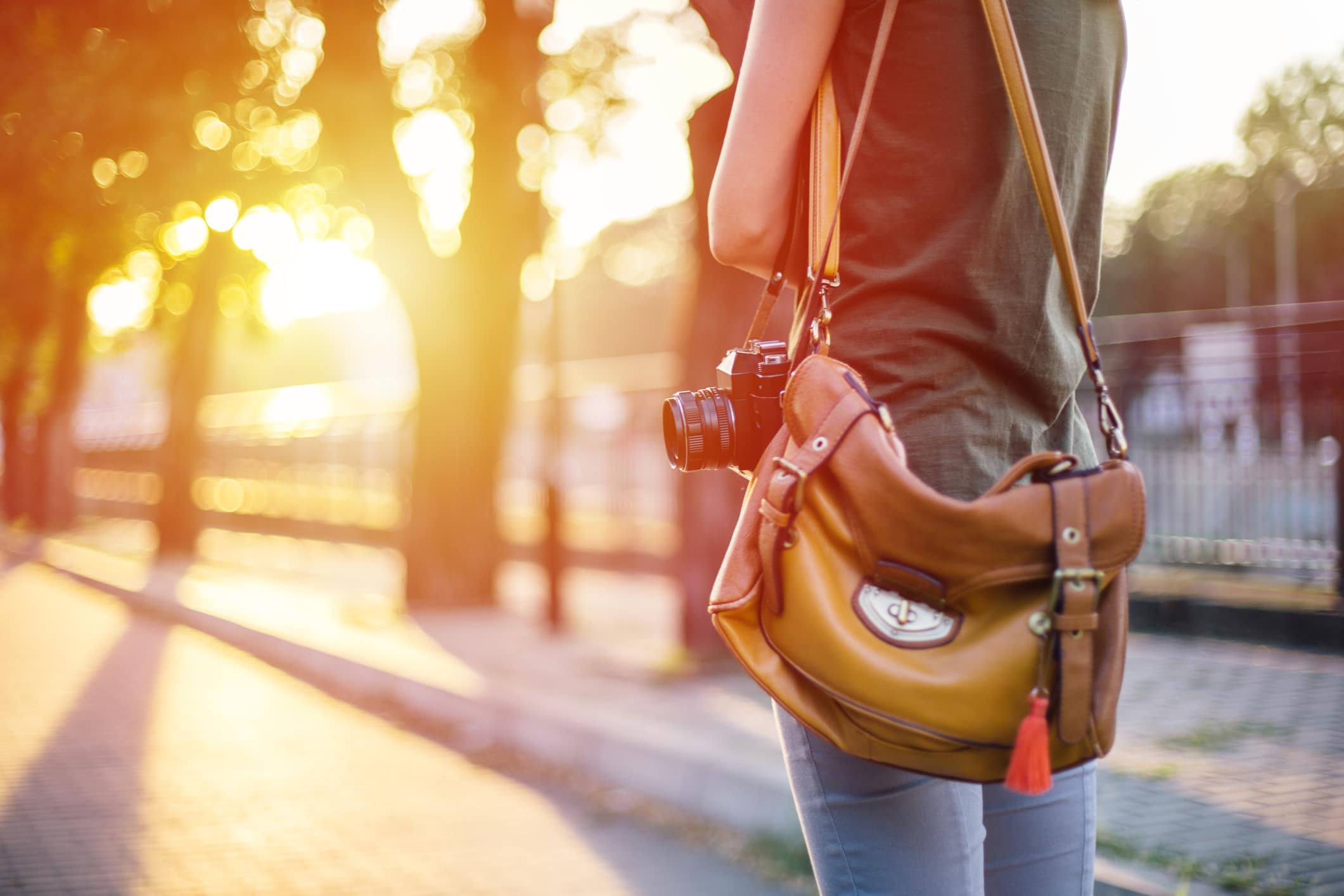
It's something that you'll need to consider at one point or another - what lens should you buy?
It's a question that's a little difficult to answer, too, given that there are so many options out there.
From wide-angle to telephoto, prime to zoom, there's tons of combinations of features to consider.
In the video above, Peter McKinnon offers up a few tips for narrowing down the field of lenses to zero in on the one that's best for you.
He's a Canon shooter, but you can find similar features on lenses for any other type of camera system.
Give the video a watch, and read on below for details about each lens Peter discusses.
50mm f/1.2

As Peter notes in the video, some lenses are great for still photos, others are great for video, and others are great for both.
A 50mm f/1.2 lens is an ideal lens for video because it offers superb depth of field, gorgeous bokeh, and with that f/1.2 aperture, you can shoot video in low light situations.
The f/1.2 version of this lens is the priciest of the 50mm family, but if you shoot a lot of videos, that price tag is probably going to be worth it to you.
However, some photographers have noted that it's hard to get super sharp still photos with an f/1.2 lens, so just bear that in mind if you're considering buying one.
Another option would be to go with another 50mm version, like the f/1.4 or f/1.8, the latter of which is very well priced.
Learn More:
70-200mm f/2.8
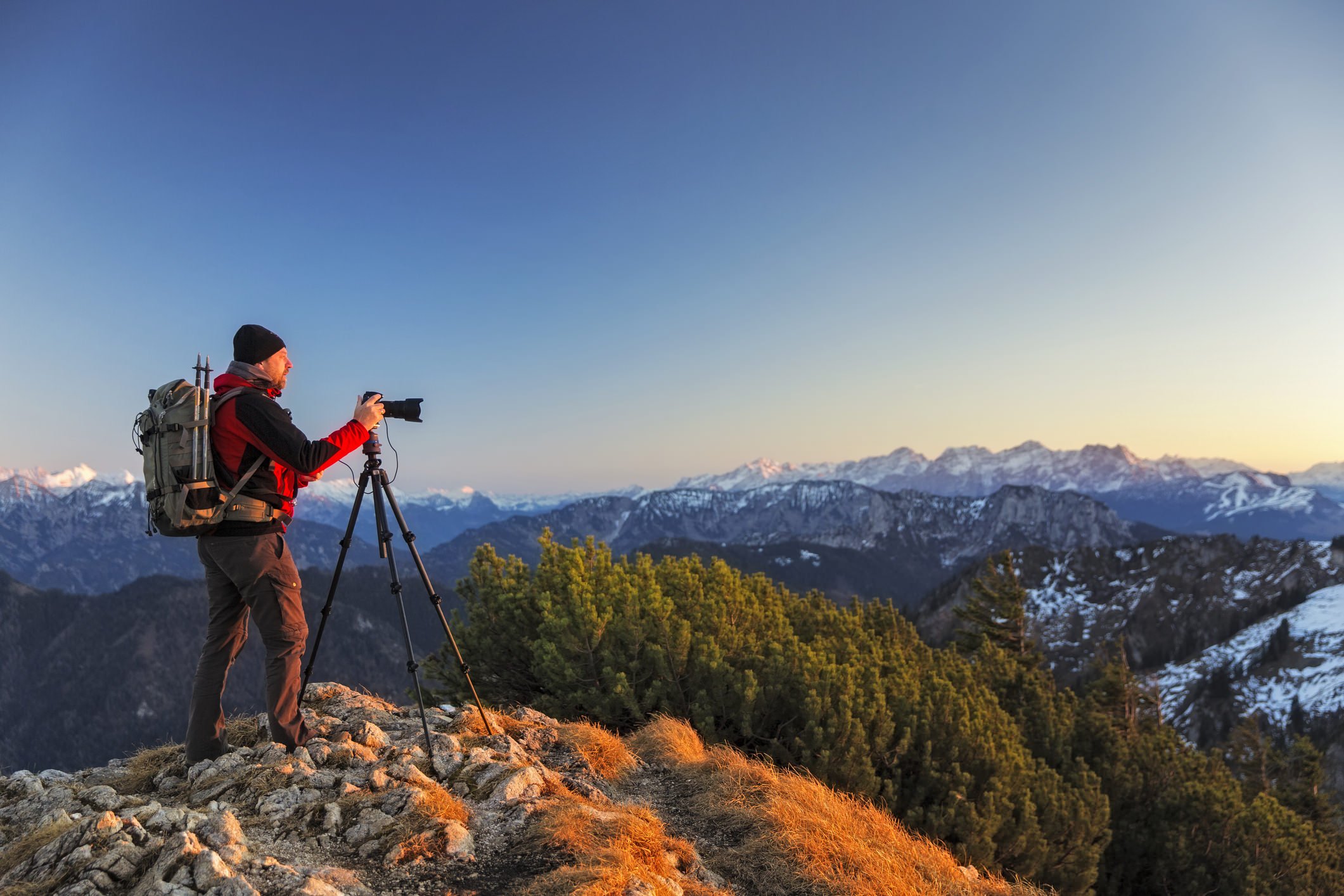
If you shoot both photos and videos, a top choice according to Peter is a 70-200mm f/2.8.
The great thing about this lens is that at 70mm, you get close enough to 50mm to cover the standard focal range while also covering the popular 85mm focal length and extending well into telephoto territory at 200mm.
In other words, this is a super versatile lens that you can use for portraits (as seen below), landscapes, wildlife photography, action or sports photos, and so on.

It's not as fast as the 50mm lenses outlined above, but at f/2.8, you've still got plenty of aperture to get nice bokeh and shoot in variable lighting conditions.
Plus, a single zoom lens like this can take the place of two, three, or even four prime lenses, so if you're on a budget, a big zoom might be the way to go.
Editorial Note: Want this lens? Be smart, save some money, and buy a pre-owned lens. Shop pre-owned lenses here.
24-70mm f/2.8

If a huge 70-200mm lens isn't your style, another zoom lens to consider is the 24-70mm f/2.8.
It has the same aperture as the previous zoom, so you have similar low-light and bokeh capabilities.
However, this shorter zoom is perhaps easier to handle given that it's a smaller package, and with a range from wide-angle to short telephoto, it's quite versatile as well.
Open it up to 24mm to shoot wide-angle landscapes, shoot portraits at 50mm, and extend it to 70mm to get close-ups of your subjects.
Of all the lenses on this list, this is perhaps the best middle-of-the-road solution because it's focal range is ideal for learning how to shoot for beginners, and for advanced photographers, it offers awesome capabilities for capturing the photos you want.
Learn More:
24-105mm f/4
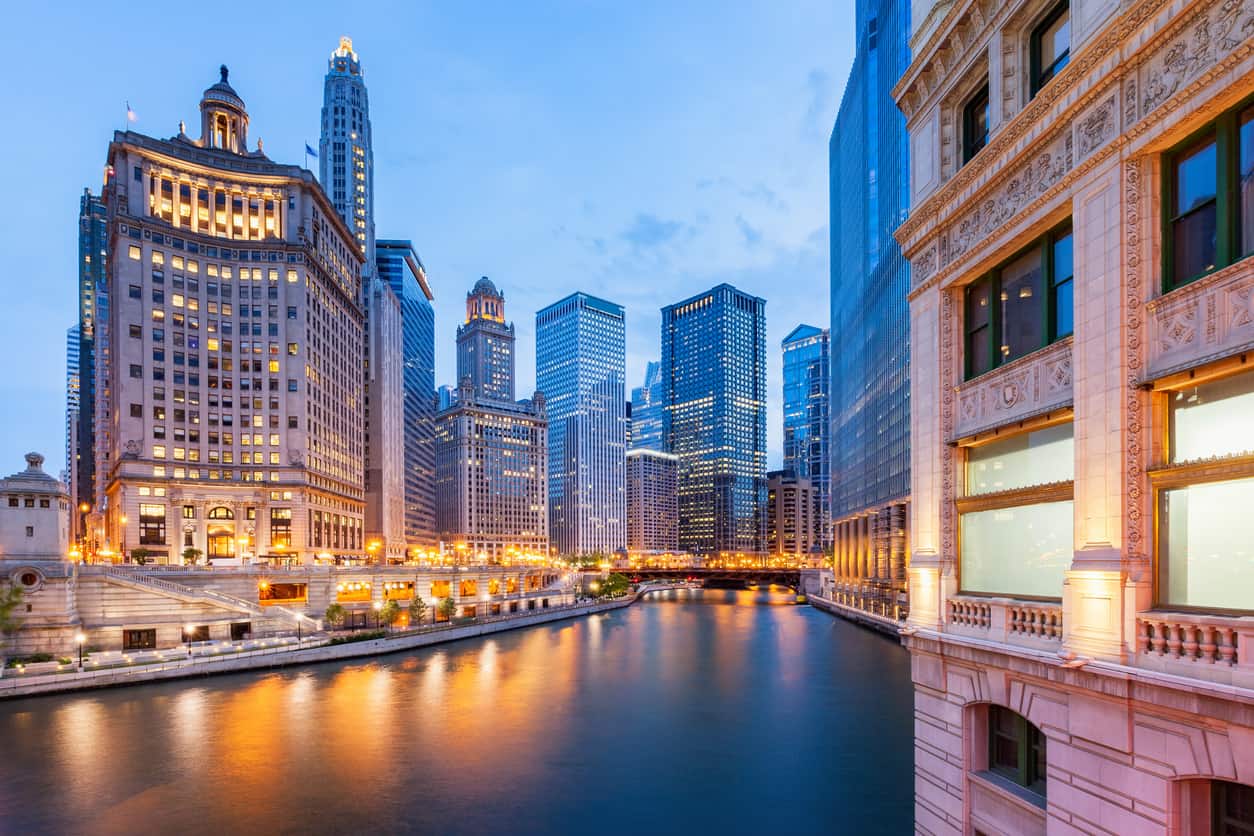
The thing with lenses is that the bigger the maximum aperture, the pricier they are.
That means that the previous lenses on this list aren't exactly cheap...
A less expensive option is the 24-105mm f/4, which doesn't have the same low-light shooting capabilities as the other lenses, but still offers tons of versatility in its focal range.
From wide-angle to telephoto, this lens will help you capture photos of virtually any subject. Take portraits of your kids playing in the yard, of the birds in the trees out front, of landscapes, cityscapes, and everything in between.
You can often find image stabilized versions of this lens as well, so you can shoot handheld at slower shutter speeds and still get sharp images.
Editorial Note: Why hold onto an old lens? If you aren't using it, list it for sale and use the money you get to go out and buy a different lens that will allow you to be a more productive photographer.
16-35mm f/2.8

If your thing is to photograph landscapes and portraits, you might consider a zoom lens on the wider end of the focal length spectrum.
A 16-35mm lens is ideal for these pursuits because you can shoot landscapes at 16mm, portraits at 35mm, and get pleasing results for both.
But because it's a zoom, it offers more versatility than that...
You can also use this lens for street photography because it's relatively small and discreet. Architecture photography is another genre well suited to this lens because you can take wide shots that distort buildings in an interesting way or you can zoom it at 35mm and get a more normal rendition of the building.
And since it's got a maximum aperture of f/2.8, you get good low-light shooting as well.
Learn More:
Final Thoughts
When it comes down to it, buying a new lens can be a stressful (and expensive) endeavor.
But as Peter points out in his video, if you stop for a moment to think about what you want to accomplish with your lens, the type of subject matter you like to shoot, and whether you want to shoot still photos, videos, or both, you can narrow down the field of possible lenses to just a handful.
Better still, these days, you can find great lenses for a better price by buying used glass. As I noted above, you can also sell your old gear to fund buying newer stuff!
For more details on what lens might be best for you, check out the video above by B&H Photo Video.
We Recommend
What to Consider When Buying a New Camera Lens
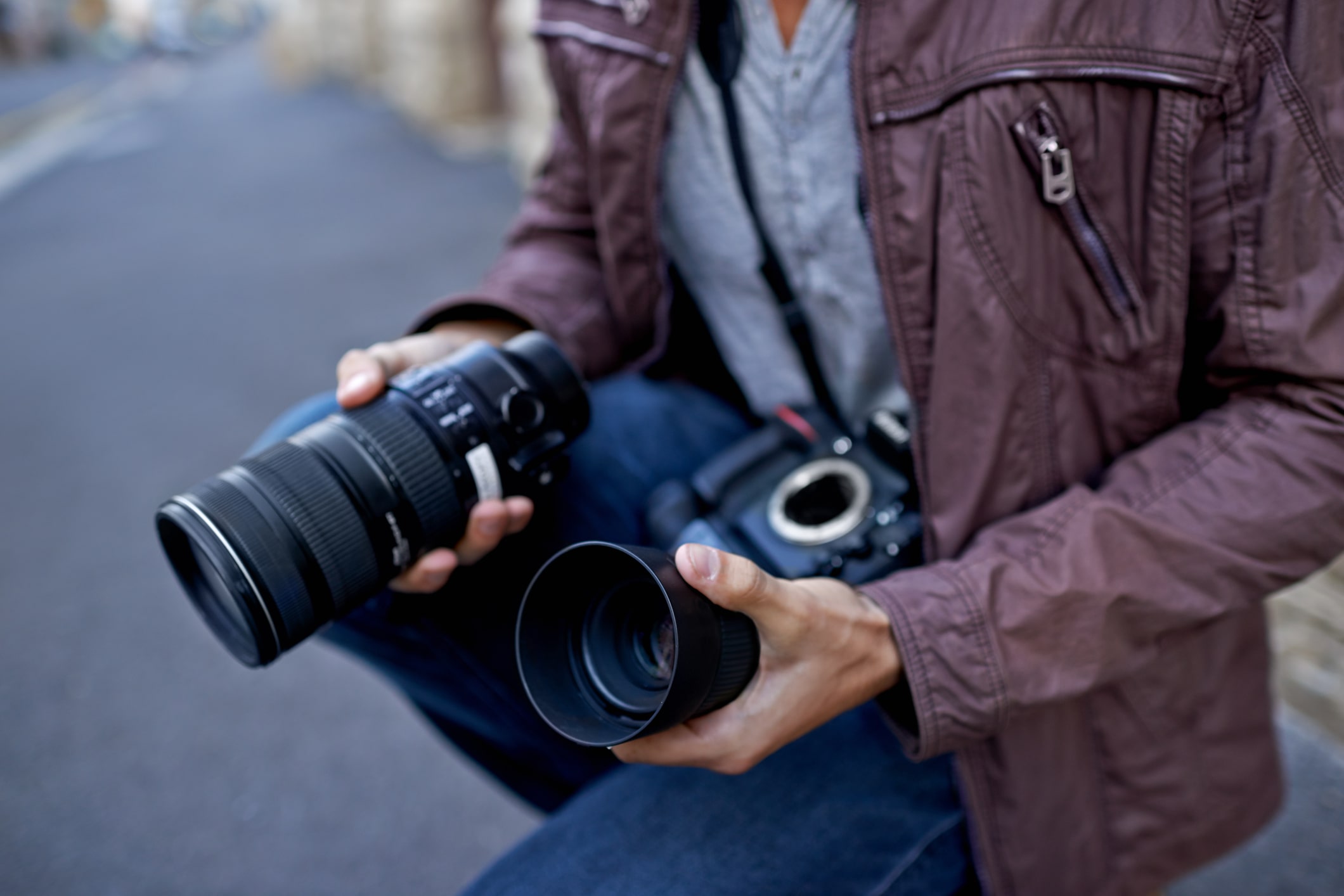 Image Credit: PeopleImages via iStock
Image Credit: PeopleImages via iStock
I'm a huge advocate for photographers upgrading their lenses.
After all, a lens has much more to do with the quality of your photos than your camera does...
There are tons of considerations to make when looking for a new lens, not the least of which is the type of lens it is, the focal length, its features, and its price.
That being the case, shopping for a new camera lens can be a bit overwhelming considering all the factors at play.
To help ease that burden, use the following checklist to help you figure out how to choose a camera lens that's right for you.
Editor's Tip: Looking for the ideal lens for your camera? Learn why a 50mm lens should be your first choice.
The Maximum Aperture Matters

The kit zoom lens that came with your camera probably has a maximum aperture of f/3.5-f/5.6.
That means that at its shortest focal length - likely 18mm - that the largest the aperture can open is f/3.5.
Conversely, at its longest focal length - probably 55mm - that the largest aperture it can achieve is f/5.6.
In both cases, that's not a very big aperture...
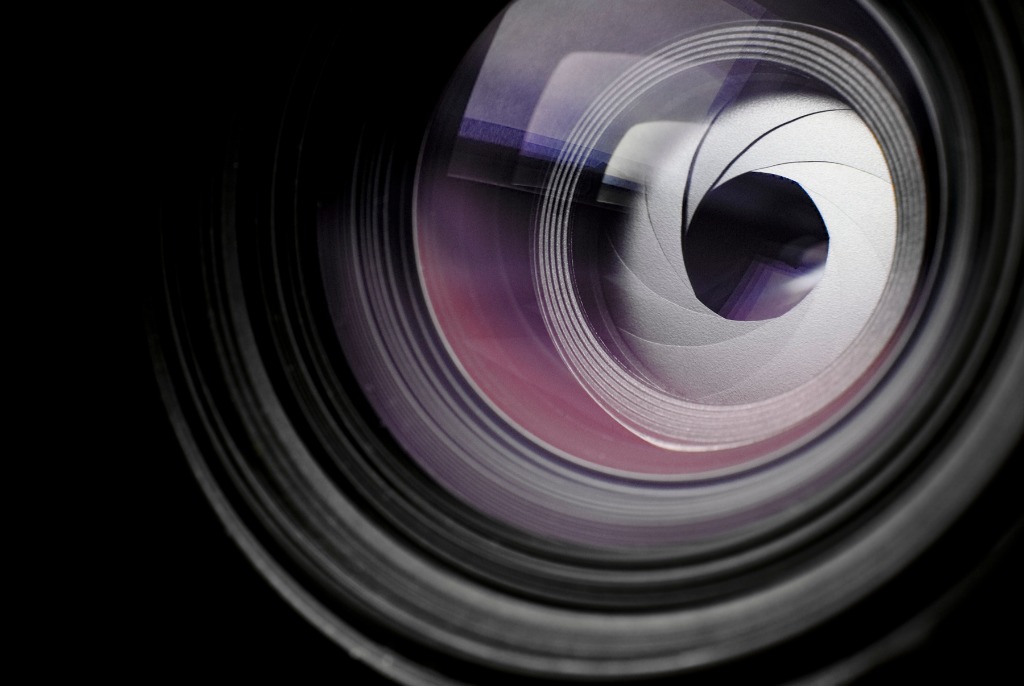
That means that in low-light shooting situations, kit lenses aren't all that great.
That also means that if you want to upgrade your lens, one with a larger maximum aperture might be the way to go.
The larger the aperture, the more light that's allowed into the lens. That, in turn, means that you can minimize the ISO (which reduces digital noise) and use a faster shutter speed (which minimizes blurriness).
An ideal first lens is a 50mm f/1.8 because it has a large aperture and the 50mm focal length is incredibly versatile. You can use it for landscapes, portraiture, street photography, and many other pursuits.
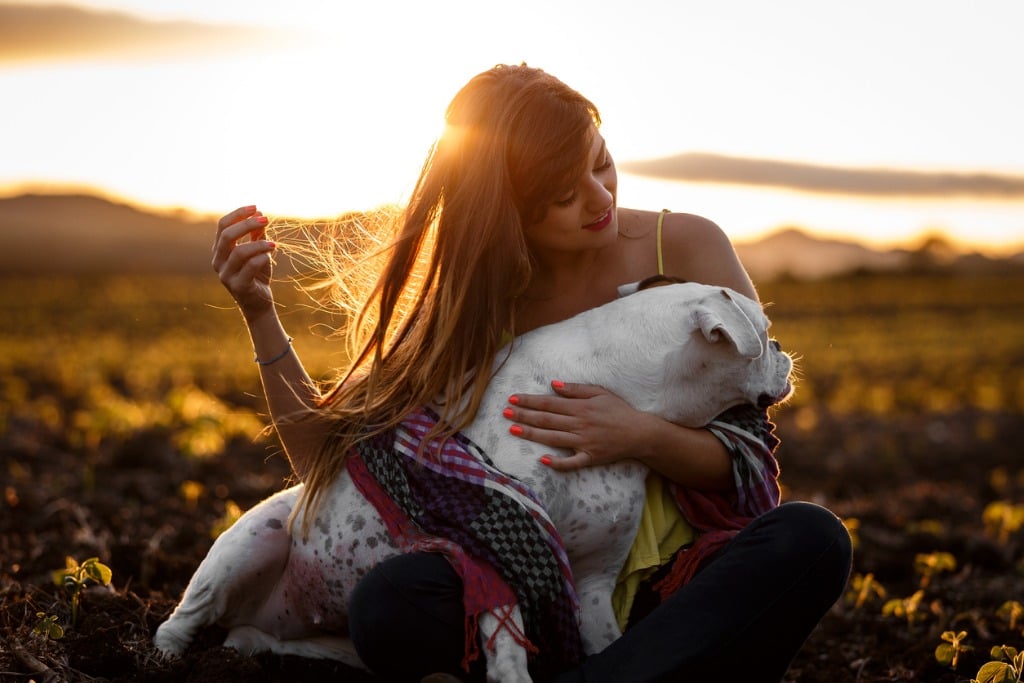
Additionally, lenses with a large maximum aperture are great for portraiture because you can more readily blur the background in your portraits.
The larger the aperture you use (i.e., f/1.8), the shallower the depth of field will be, thereby giving you the nice blurry background you see in the image above.
Learn More:
How to Choose a Camera Lens: Pay Attention to Perspective

The perspective of a lens is determined by its focal length, among other things.
So, a short focal length like 24mm offers a very wide perspective - you'll see tons of foreground, tons of sky, and you'll get a wide view from side to side as well, as shown above.
But stand in the exact same spot with a 200mm lens, and the perspective is much, much different - there will be no foreground, little background, and the image will focus instead on the small details of the scene, as shown below.
In that case, the perspective the lens offers greatly influences the story you can tell with your photos.

If you look at your photos and most of them are taken from a wide perspective, it might be time to add a longer lens to your camera bag so you can take photos that tell a different story.
Conversely, if you usually shoot with a longer lens, maybe it's time to add a wide-angle lens to your bag.
I think everyone should have lenses in their bag that cover the three major perspectives - wide-angle, standard, and telephoto.
Granted, some zoom lenses cover all that territory, like a 24-70mm zoom. But whether you do it with three lenses, two lenses, or just one, having the versatility of utilizing different focal lengths will help you create a portfolio of images that's more interesting and complete.
Editor's Tip: Are you confusing by all the numbers and letters on your lens barrel? Step up your game and learn how to read the markings on a lens.
Size & Weight
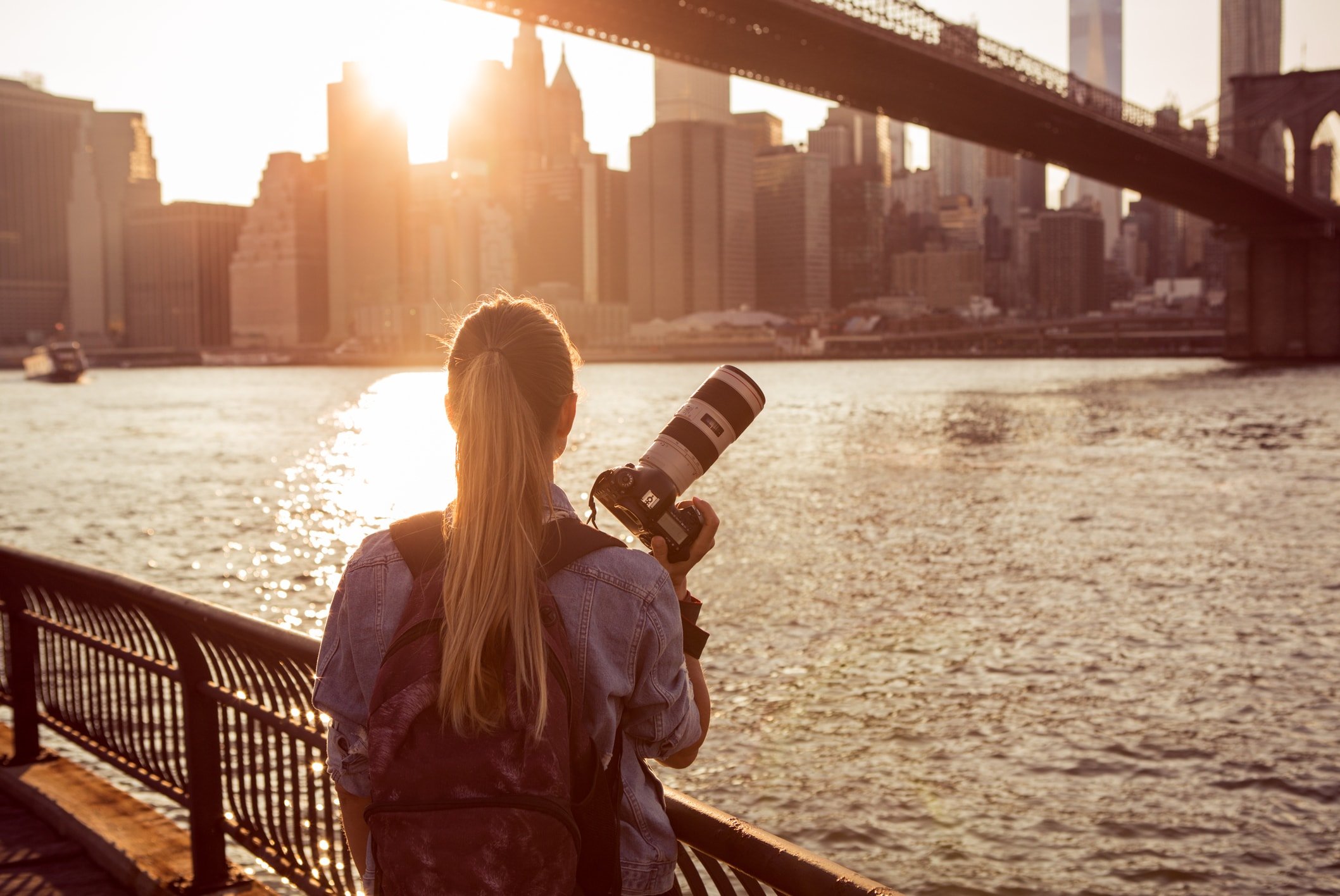
Camera lenses come in all manner of sizes and weights.
Naturally, the longer the lens, the bigger and heavier it will be...
That means that you have to figure out what kind of lens you need for the type of photos you take and how much weight you're willing to carry.
For example, if you're heading out on a month-long trip around the world, you probably don't want to carry a four-pound super telephoto lens with you.
Instead, you might opt for a small zoom lens that gives you versatility of focal length without being too heavy.
Likewise, if you spend a lot of time hiking to get landscape shots, you might want to save weight by carrying a smaller, lighter lens.
Learn More:
Buying a New Camera Lens: Price Trumps All

Of course, while all of the features outlined above are certainly important, the price you have to pay for them is likely the most important factor when choosing what lens to buy.
Some lenses, like the 50mm f/1.8 I mentioned earlier, are actually quite inexpensive (perhaps around $150), even when you buy them brand new.
But other lenses - like those with very large apertures - can be very spendy.
There's two points about camera lens prices that I want to make.
First, dedicate as much of your budget to your lens as you can. As noted earlier, the lens you use will have a much greater impact on the quality of your photos than the camera that you use.
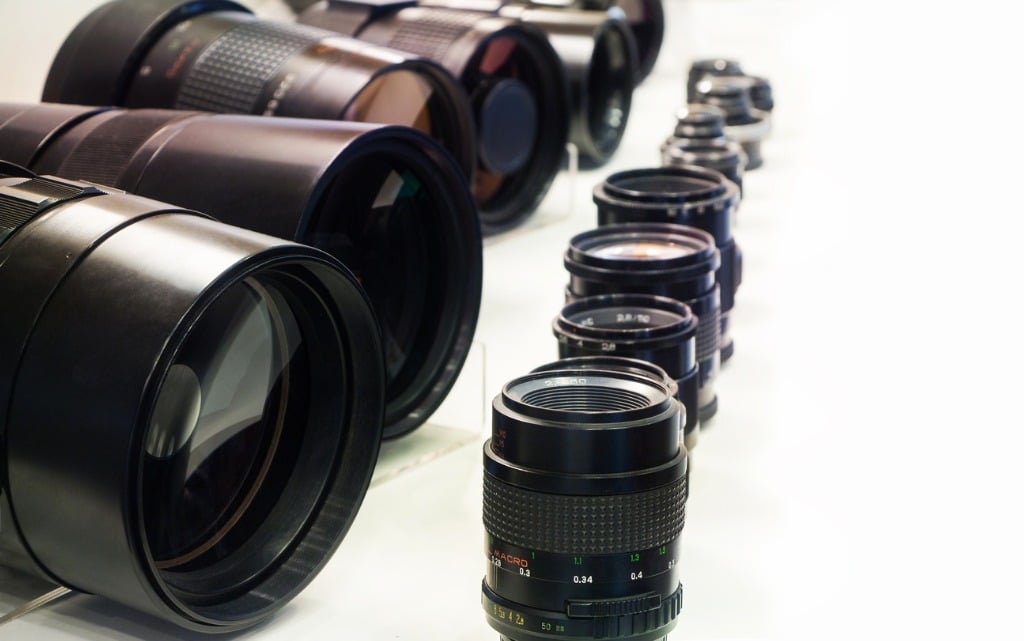
Second, you can save a ton of money if you buy a quality, pre-owned camera lens.
I know that buying used will turn some of you off, but as someone that's bought used lenses multiple times, I can tell you that if you go about it the right way, it can be a fairly fail-proof endeavor.
I use Lensfinder to get my used lenses (I've sold a few there, too) and I have been extremely pleased with the transaction each time.
They have protections in place so you're sure you're getting the lens you expect, and with built-in tools to communicate with sellers and give feedback, it's a one-stop-shop for all your used lens needs.
No matter where you buy your lens from, whether it's new or used, just be sure to consider the factors I've outlined here. If you do, you should end up with the right lens for you (and at the right price as well!).
We Recommend
What to Do With Your Old Lenses
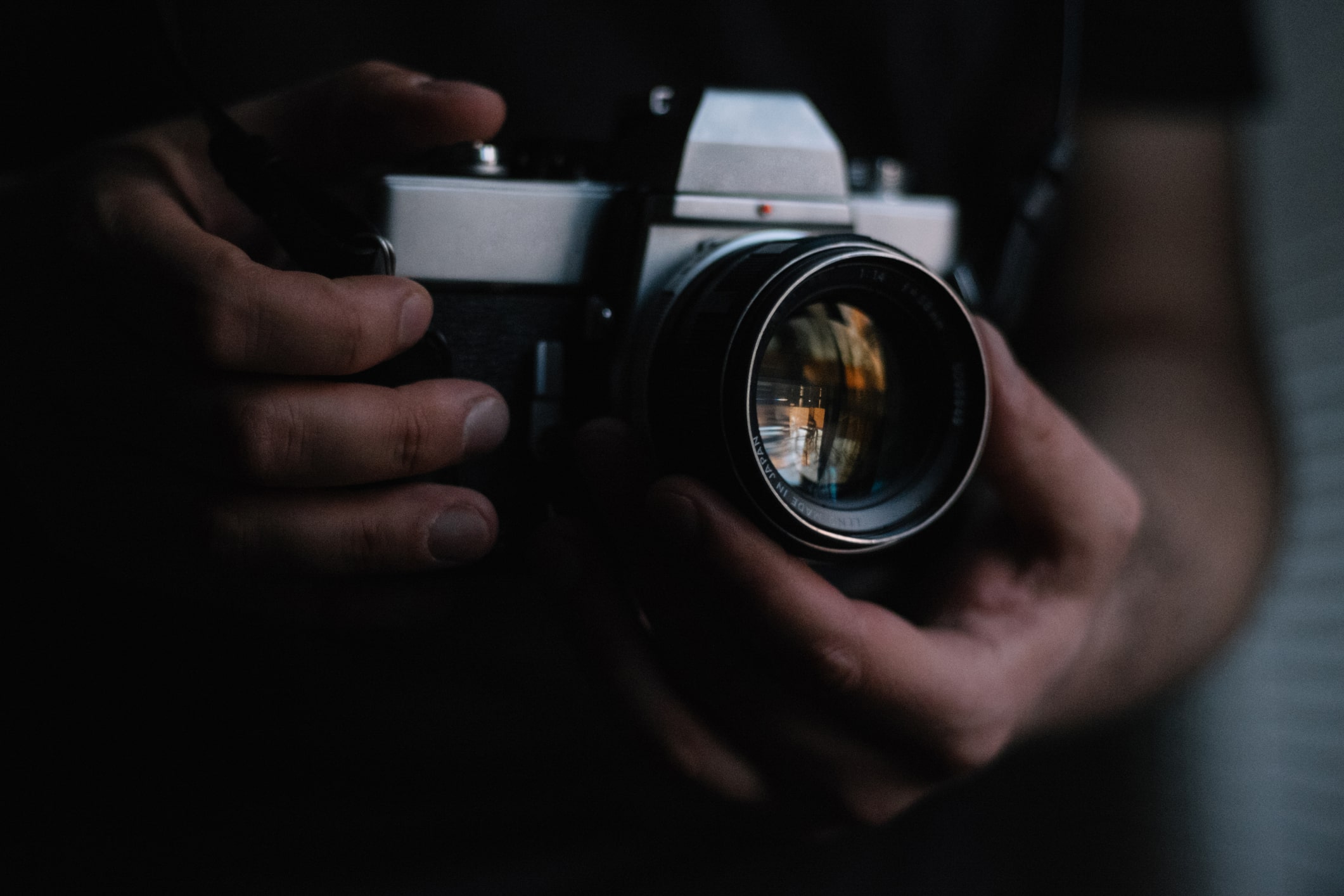 Image Credit: mustafahacalaki via iStock
Image Credit: mustafahacalaki via iStock
If you're like me, you collect gear over the years and before you know it, you have a closet full of old lenses that you no longer use.
Given that most good lenses aren't exactly cheap, this creates a bit of a problem - you have tons of stuff you don't need or want anymore but nowhere to put it.
So, the question is, what to do with old camera lenses you no longer want?
Here's a few ideas...
Use Them!
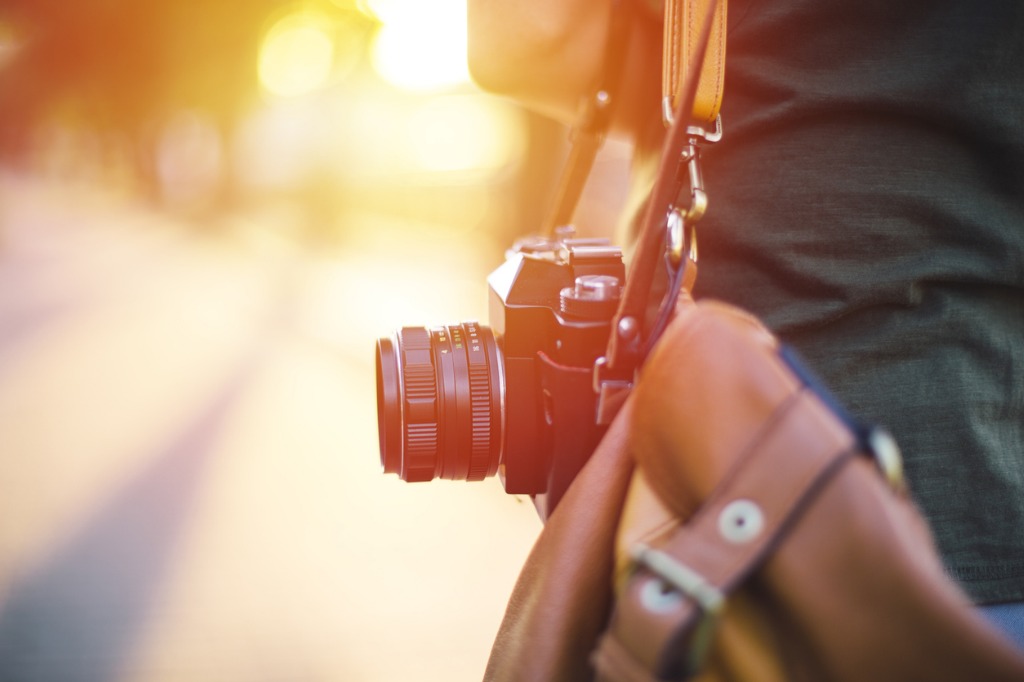 Image Credit: Popartic via iStock
Image Credit: Popartic via iStock
Ok, so this one might not be in the cards because if you've got a dozen lenses collecting dust in your house, obviously you're not using them anymore.
I suppose the challenge would be to challenge yourself to start using them again.
Maybe you've upgraded your kit lens along the way and still have the old kit ;ying around. Why not use it on crappy weather days instead of taking your newer, better lens out?
Perhaps you're planning a trip and have an older 35mm prime that still works great. Consider taking it along instead of your brand-new 35mm lens, that way if it gets lost or stolen, you won't be as upset about it (though, I'd still be pretty upset...).
The point is that a lens still has life left in it, you might as well use it for something!
Learn More:
Donate Your Old Lenses
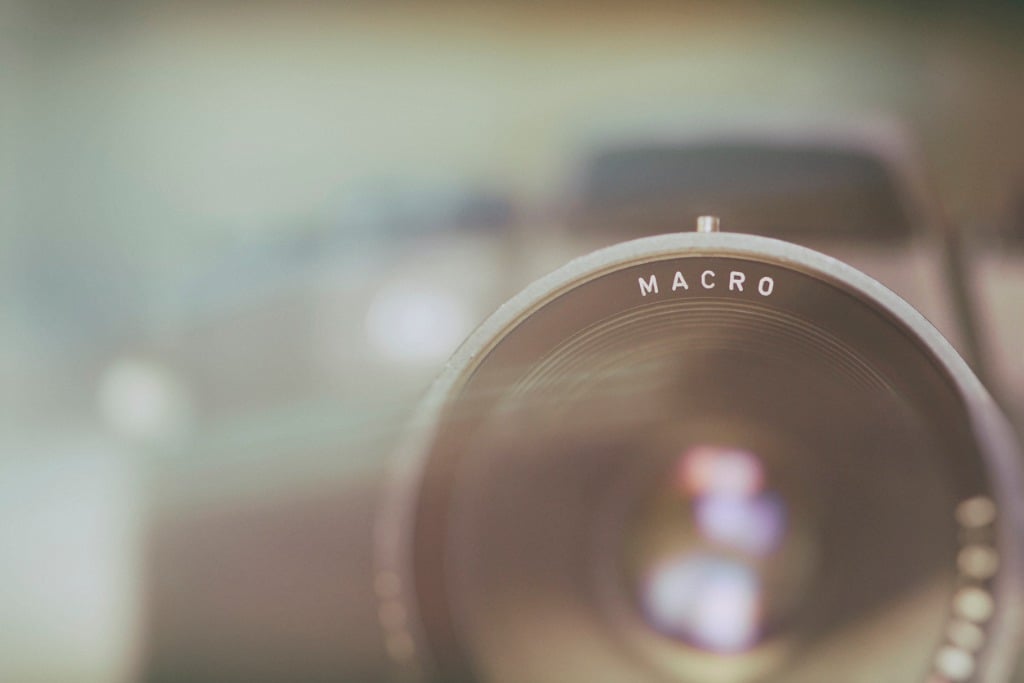 Image Credit: amesy via iStock
Image Credit: amesy via iStock
Old lenses that are still in good working condition can find new life if you donate them to a local charity or school.
Think about it - the 50mm lens you haven't used in three or four years could be used by a kid who's developing a passion for photography. How cool is that?
Or, you could donate your old gear to a local charity so they can in turn sell it and earn money to provide services to people in the community. Again, super cool.
The Film Photography Project is just one example of an organization that accepts old lenses (and plenty of other old gear, too).
Sell Your Old Lenses
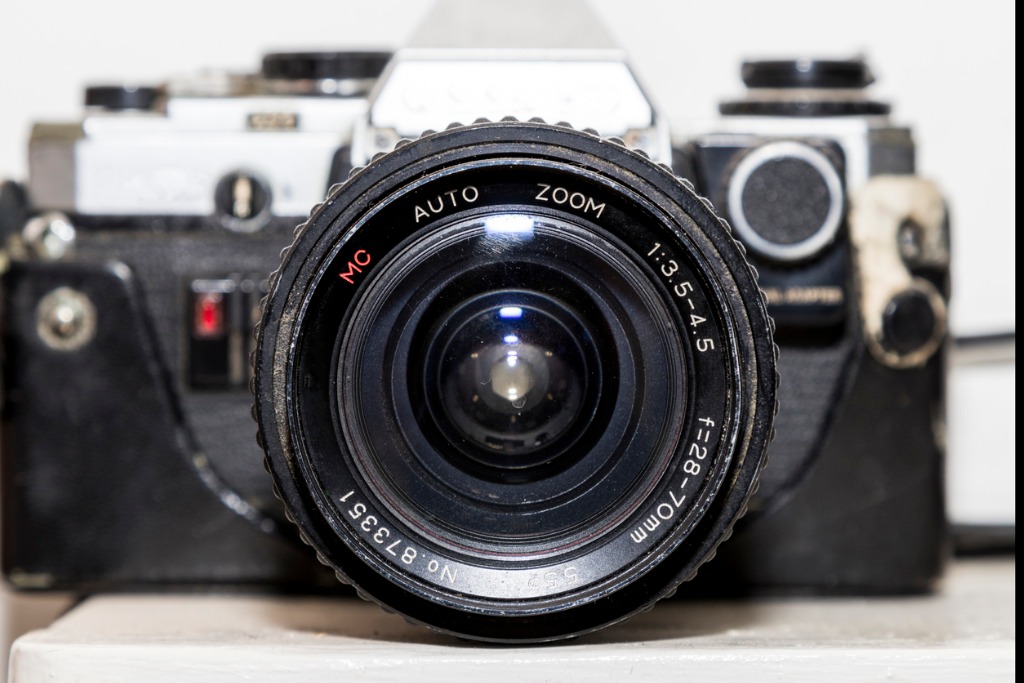 Image Credit: Peter Horrox via iStock
Image Credit: Peter Horrox via iStock
There is a huge market today for used lenses, for a couple of reasons.
First, film photography has been making a comeback, so older lenses from the good ol' days of shooting on film are often hot commodities.
Secondly, since good glass is usually quite expensive, many photographers are looking for great deals on used gear - and that works in your favor.
You can sell your lenses on places like eBay and Craigslist, though there are difficulties with both of those platforms.
On the one hand, eBay is expensive to list an item, and on the other hand, Craigslist offers no protections for sellers.
That's why I sell my old lenses on Lensfinder.

Lensfinder was built for photographers, by photographers, so you get a streamlined experience that's geared directly towards you.
The process of setting up an account is quick and easy, and you can have your old lenses listed (for free!) in no time.
When your lens sells, there's a 3.99% transaction fee (which is much lower than eBay). Payments are handled via PayPal (with an additional fee from them), so you know the payment situation is clear and secure.
You know the buyer is legit, too, because Lensfinder uses advanced fraud filtering for buyers and sellers alike.
In other words, it's a one-stop-shop for buying and selling your old lenses!
Learn More:
We Recommend
What You Need to Know Before Buying a Camera Lens
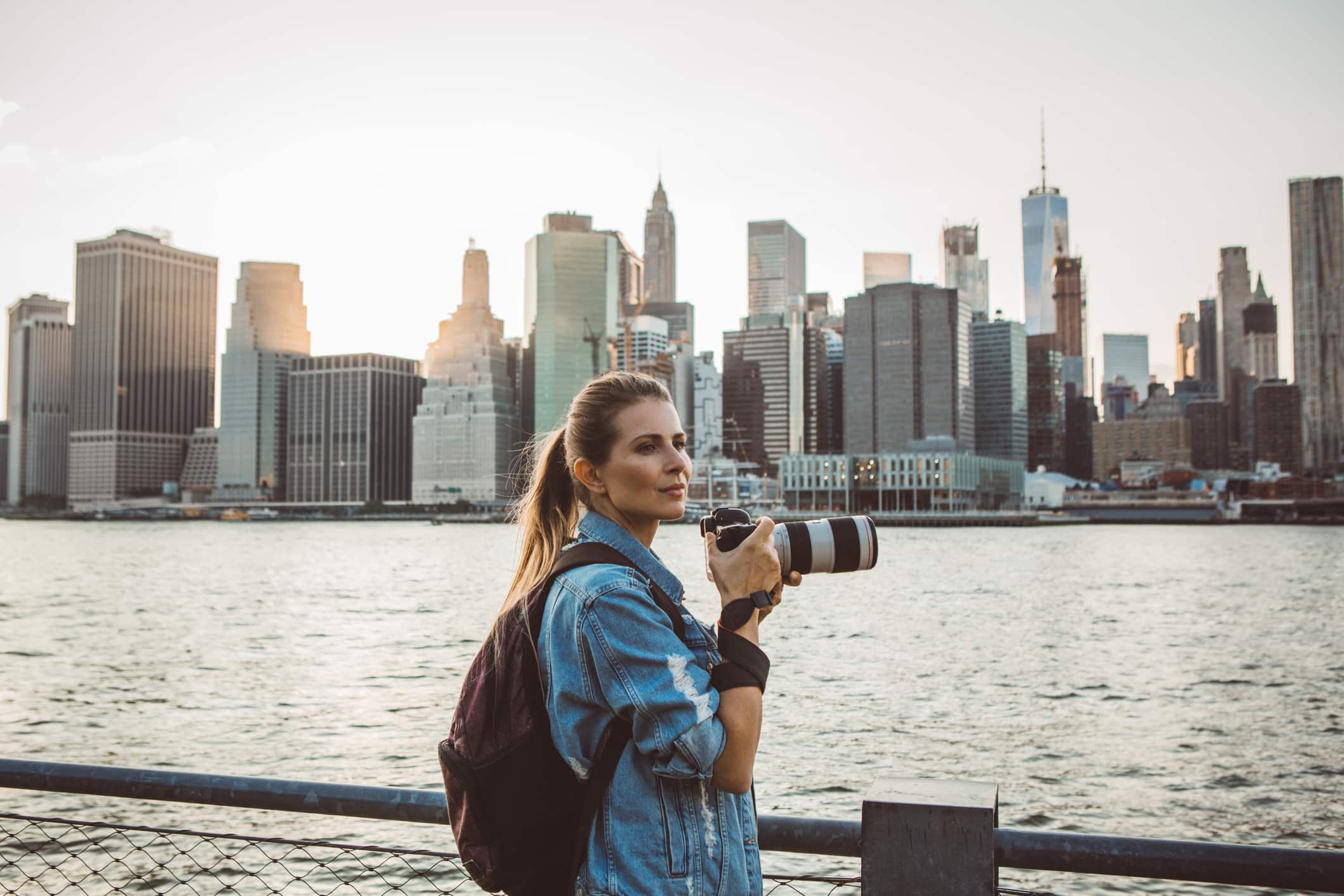
Ask any experienced photographer, and they'll tell you that the single most important photography gear you can buy is the lens.
It's more important than your tripod, more important even than the camera you use.
The quality of the lens has a direct correlation on the quality of the photo, more so than anything else you use to create the image.
As such, it's important to invest your money wisely in a good, solid lens. In fact, if you're going to splurge on anything, make it the lens you use.
With that in mind, here are a few tips for what you need to know before buying a camera lens.
Think About the Price of the Lens

Not everyone is Jeff Bezos with billions of dollars in the bank. That means you and I have to adhere to budgetary constraints when we buy lenses.
The problem is that many of the best lenses are pricey. That's especially true of lenses with huge apertures, professional lenses, and specialty lenses.
There are some exceptions to that rule (like 50mm f/1.8 lenses). However, you better have a decent pile of money ready if you're going to buy a brand new, high-quality lens.
Of course, the way to get around that problem is to buy a pre-owned lens.
Not only does that allow you to stretch your budget and get the glass you want, but you might end up saving enough that you can get two pre-owned lenses for the price of one new one.
To do so, you need to visit Lensfinder.
Lensfinder is a marketplace by photographers, for photographers. It's not a free-for-all like eBay. Instead, it's a place where photographers can go to buy and sell their used gear safely and efficiently.
It's great - you can peruse the items on the marketplace, ask sellers questions right within the platform via direct message, and even pay for your items on Lensfinder via PayPal.
Lensfinder offers buyer and seller protection options, and if something goes wrong, Lensfinder has a mediation service as well.
Each seller on Lensfinder is also graded using a feedback system, so you'll know exactly what kind of seller you're dealing with before ever exchanging any money.
In other words, Lensfinder makes it easy to find affordable used lenses so you can fulfill your creative vision. What's not to like about that?
Learn More:
The Type of Photos You Take Will Determine What Lens to Buy
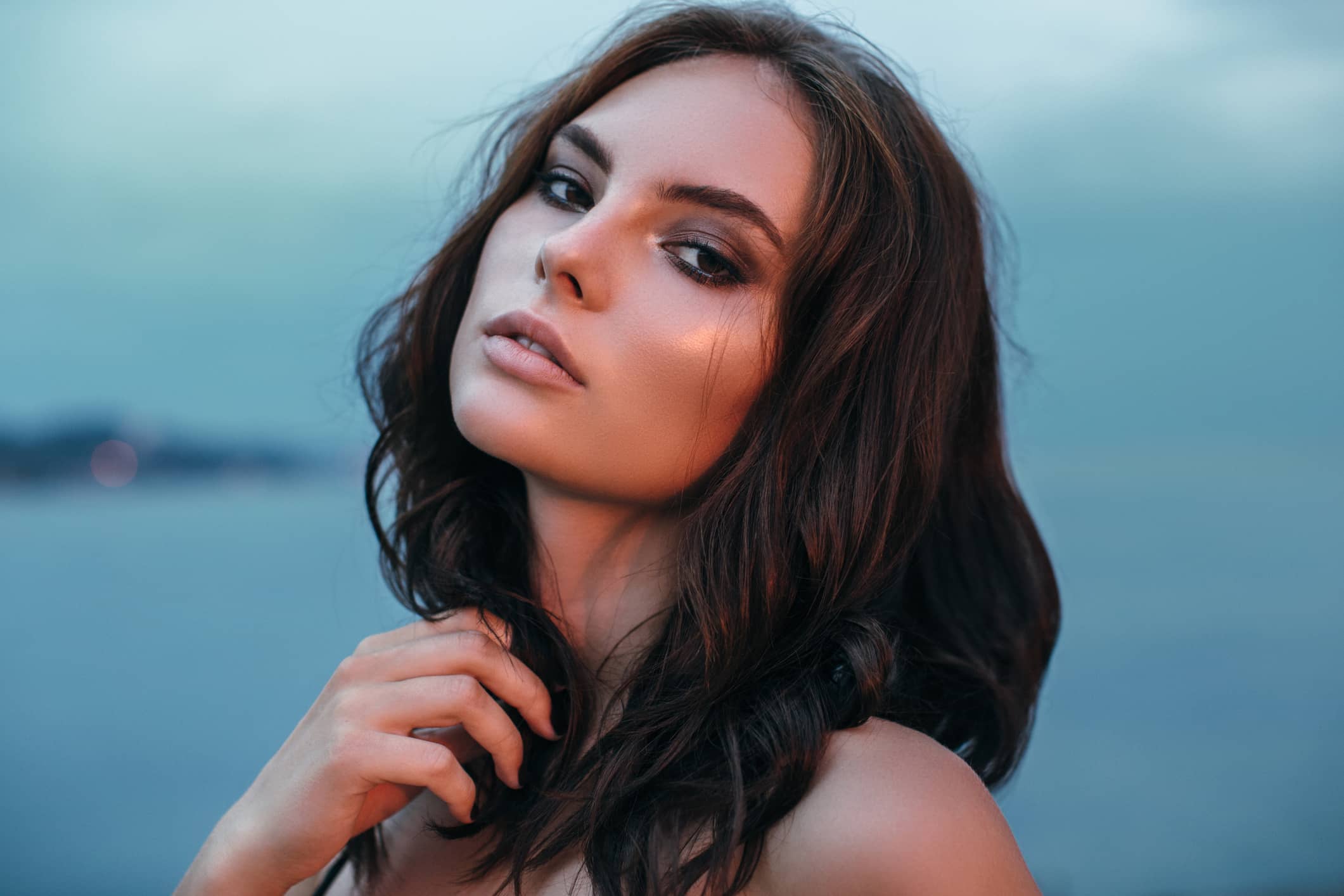
Though there are some great all-around zoom lenses that offer incredible versatility for a wide range of photographic pursuits, by and large, the type of photos you take will impact the type of lens you buy.
For example, if you want to explore street photography, you'll want something light, compact, and easy to carry like a 35mm or 50mm lens.
On the other hand, if portraiture is something you want to try, an 85mm lens is a top choice for many photographers.
If it's macro photography you're after, you'll need a macro lens; if it's wildlife, a telephoto zoom lens is the way to go.
You get the point...

If you're not to the point in your photography career in which you can justify buying five or six lenses for different purposes, you can always pick up a couple of extremely versatile lenses.
As I mentioned above, zoom lenses offer tons of versatility, particularly ones like 24-70mm, which gives you wide-angle to standard range on a full frame camera, or 70-200mm lenses, which offers standard to telephoto range.
Even some prime lenses are incredibly versatile, particularly at the 50mm focal length.
With a 50mm lens, you can take portraits, photograph street scenes, create landscape shots, and just about anything else you can think of.
So, after you set a budget, the next order of business is to consider what you want to photograph and then find a lens that gives you the power you need to create those photos.
Learn More:
Consider the Type of Camera You Use
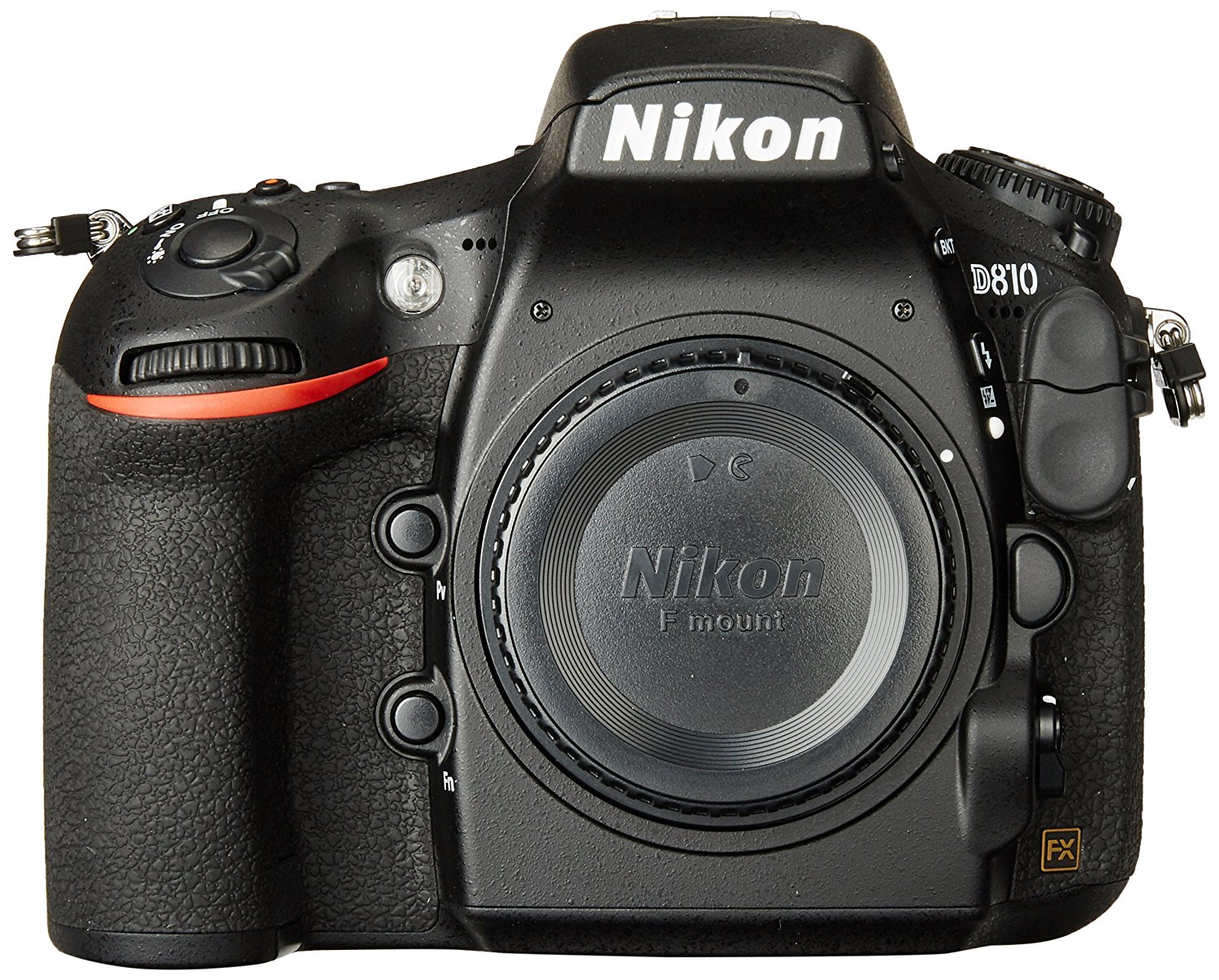
Yes, lenses are more important than the camera, but the camera you use will play a role in the lenses you buy.
Aside from the obvious factors like not buying a Nikon lens for a Canon camera, you need to bear in mind the size of the camera's sensor.
That's because the way a lens works with a full frame camera, which has a sensor that's the equivalent size of a 35mm piece of film, is different than it will work on a crop sensor camera.
As you might have guessed, a crop sensor camera has a smaller sensor than a full frame camera, like the Nikon D810 pictured above. Their size varies from one manufacturer to the next, which means different cameras have different crop factors.
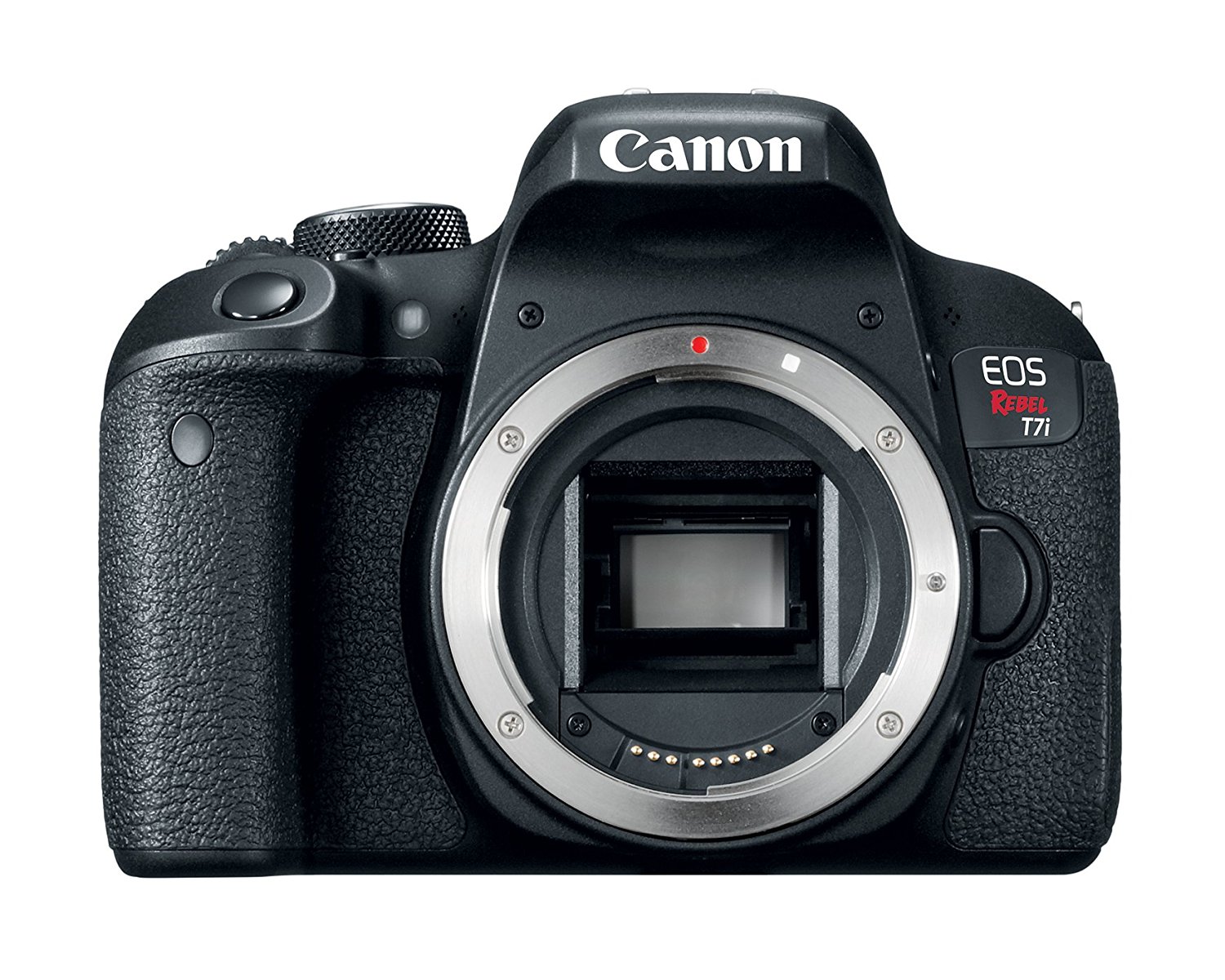
On a Canon crop sensor camera, like the EOS Rebel T7i shown above, the crop factor is 1.6x. That means that a 50mm lens will actually behave like an 80mm lens on a Canon crop sensor rig.
Nikon crop sensor cameras have a crop factor of 1.5x. A similar 50mm lens will act like a 75mm lens.
There are various other crop factors that range from about 1.3x up to 2x, so there's definitely a need to understand what the crop factor of your camera is.
That's because the smaller sensor produces a cropped version of the image. In other words, if you take a photo using a 50mm lens on a full frame camera, and then retake the same photo with the same lens from the same spot but on a crop sensor camera, that image will appear cropped or zoomed in. You can see the difference in the video above by Manny Ortiz.
That will impact the photos you take as well as how you take them, so you can understand why considering the type of camera you have is an important part of buying a lens.
When it comes to buying gear that's so important, be as informed as possible before you buy. Consider the crop factor, what you plan to photograph, and, of course, your budget, and you will be able to find a lens that suits your needs just fine.
Learn More:
- The Top 4 Lenses Landscape Photographers Wish They Had
- Three Lenses Portrait Photographers Can't Live Without
We Recommend
What You Need to Know Before Using a Vintage Lens With a DSLR
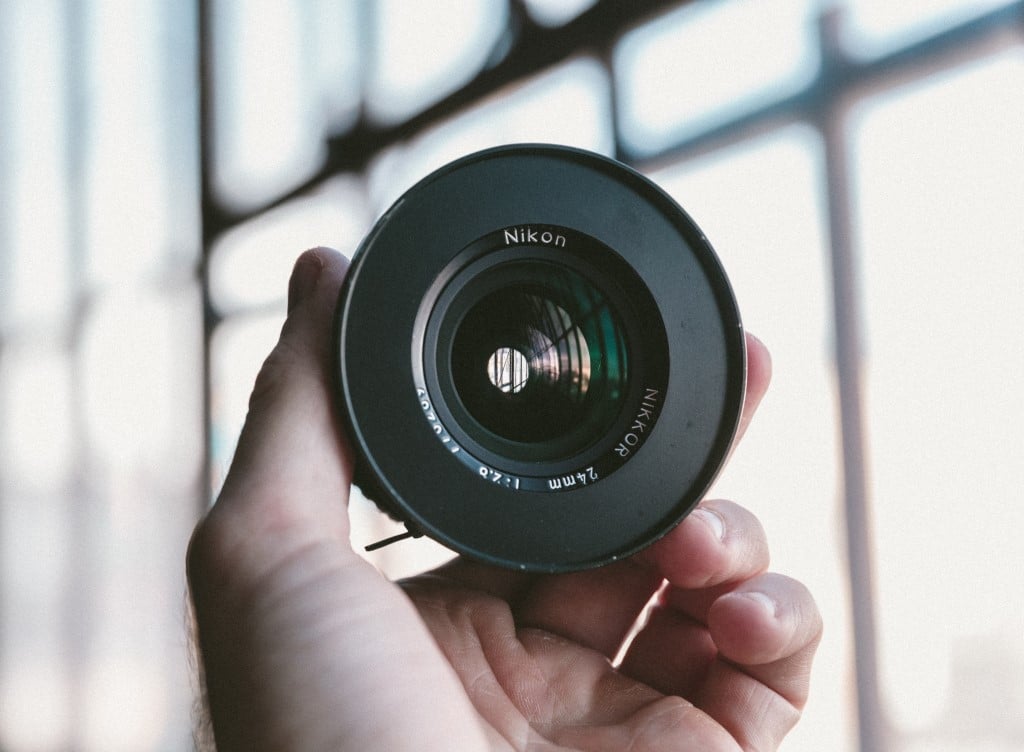
Photo by Jakob Owens on Unsplash
There is no appeal to a seasoned photographer like a vintage lens.
We as humans seem to be drawn to the dawn of the analog age of photography, much like the analog age of music like vintage records and the dawn of the digital age of computers.
Why we are attracted to the best vintage lenses is an easy question to answer - they’re fun, affordable, and they challenge you to learn more about how to use your gear.
But there are a few things you should know about using a vintage lens with your DSLR before you start stocking up on old lenses.
They Can’t Autofocus
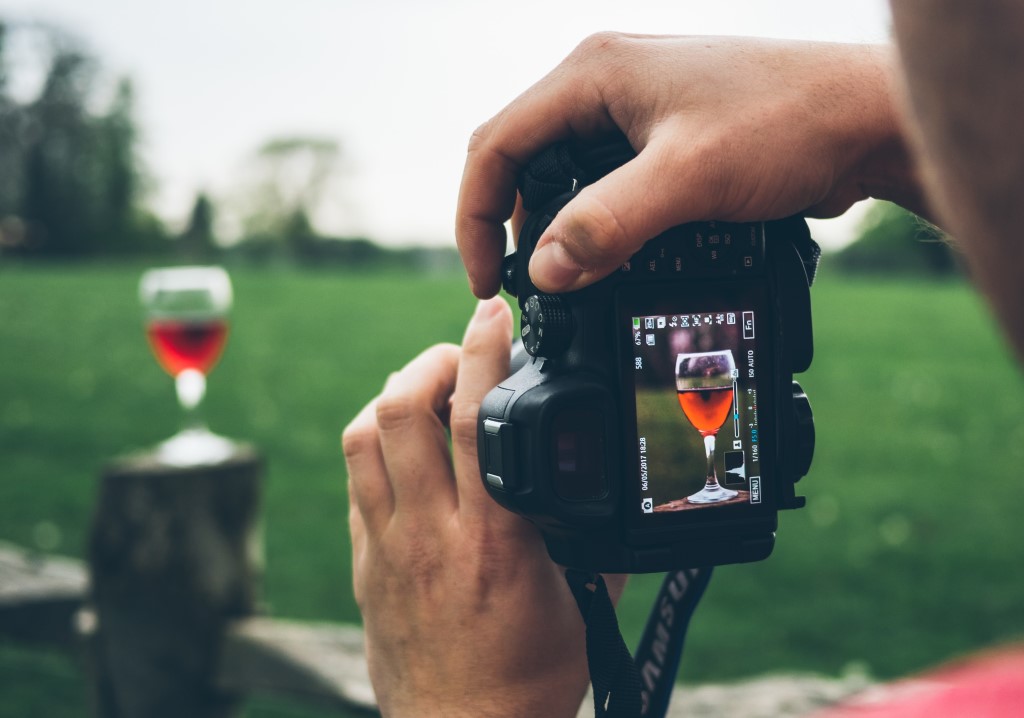
Photo by Jamie Street on Unsplash
All vintage lenses are manual focus only, and in a world where the casual photographer might not be able to take photos without relying on autofocus, this can pose a large problem.
Autofocus wasn’t created until 1976, and even when Leica released their first autofocus camera, the company didn’t realize how big of a deal it was going to be.
Autofocus wasn’t much of an appeal for camera enthusiasts until the 1980s, although it’s hard to imagine a camera without AF nowadays.
So, before you purchase your first vintage lens, make sure you practice your manual focusing. You can learn how to do so in the video above by CNET.
“Shooting Modes” Don’t Really Exist With Vintage
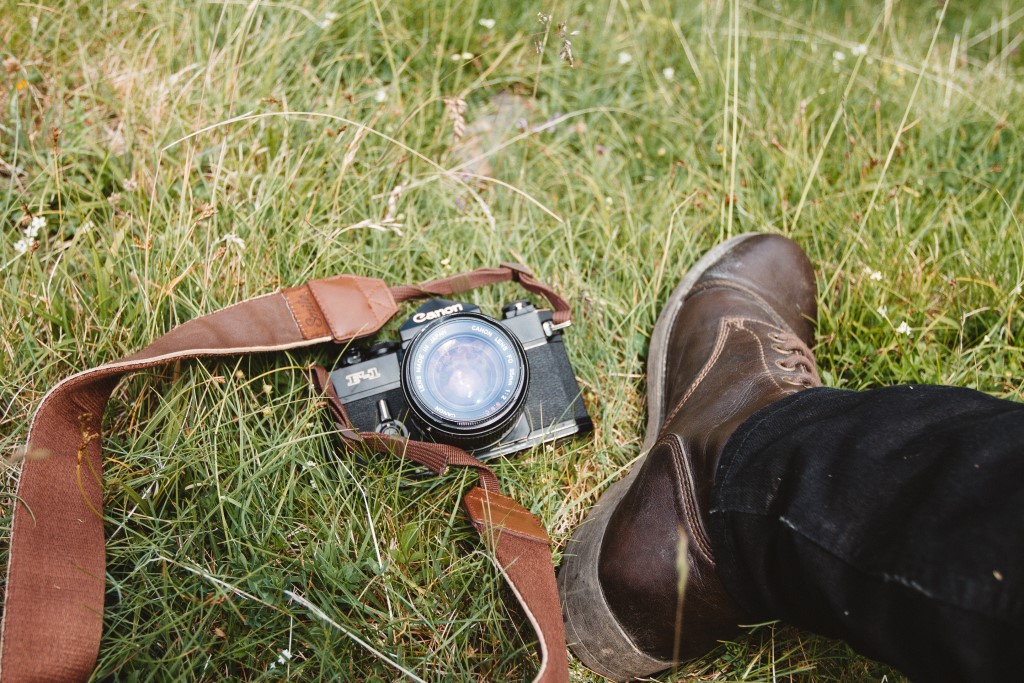
Photo by Jan Phoenix on Unsplash
This goes along with the manual focusing advice above…
While you have a variety of shooting modes from which to choose when using a modern lens - aperture priority, shutter priority, and program among them - these are not an option when you use a vintage lens (though technically aperture priority can still be achieved).
Granted, being forced to learn how to manipulate all three exposure settings - aperture, shutter speed, and ISO - all on your own is not a bad thing.
In fact, as I noted earlier, vintage lenses challenge you to learn more about how to use your gear, and this is a prime example of that.
Learn More:
Your Lens Can’t Talk to Your Camera Anymore
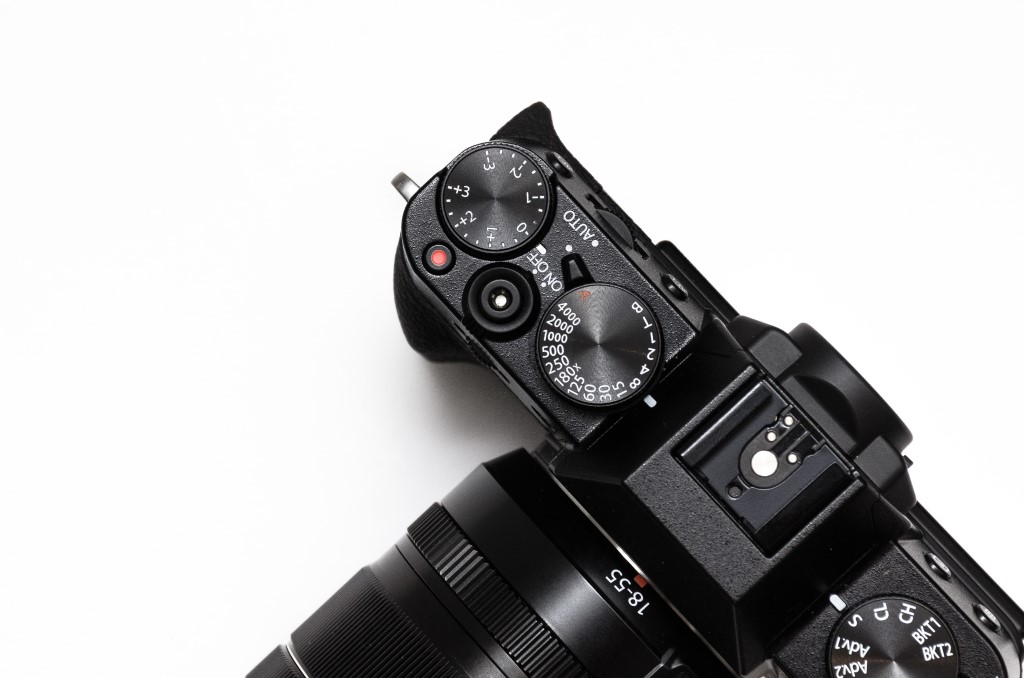
Photo by Math on Unsplash
This basically rounds-up my advice on how low-tech vintage lenses are.
Even the best vintage lenses for Canon or Sony won’t be able to communicate with your high-tech camera.
Your camera/lens pairing today sends information about metering, aperture, shutter speed and ISO back and forth in an instant, and when you first put your best vintage lenses onto your camera it will appear nothing has changed.
The camera is going to provide all of the information I mentioned above, but the amount of data you receive will be extremely limited. For example, there’s no EXIF data when you use a vintage lens.
You Need to Buy an Adapter
Adapters for vintage lenses are really cheap and easy to use, but if you haven’t been in the business for very long you may purchase a legacy lens without thinking about the ways in which you can use it.
The video above by B&H Photo Video helped me understand adapters, maybe it will help you too.
Where to Buy Vintage Lenses
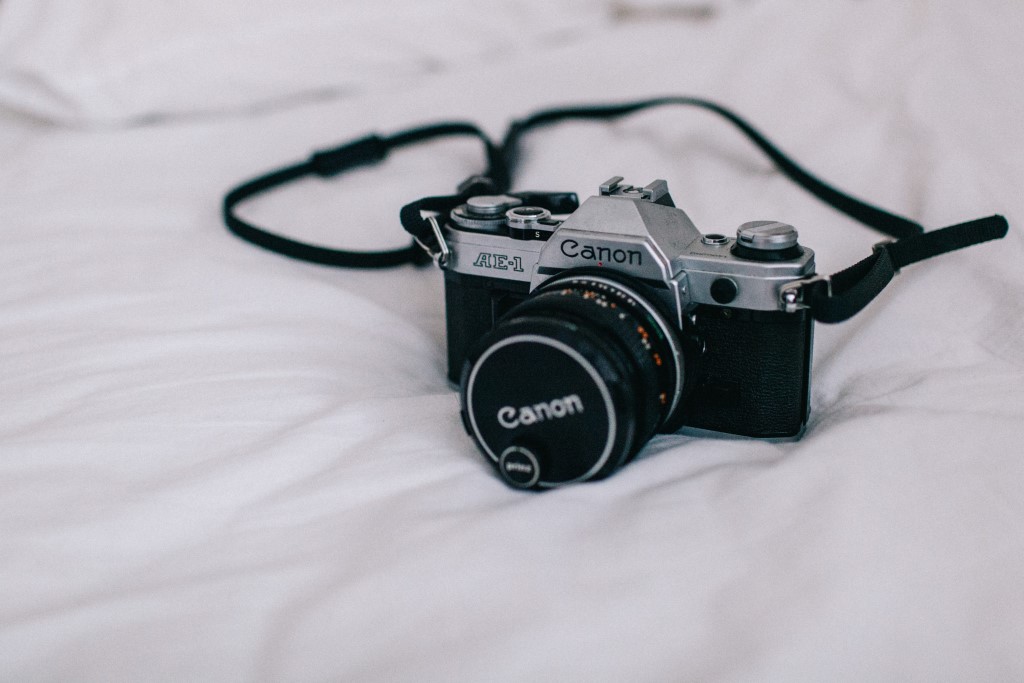
Photo by Caryle Barton on Unsplash
There are a plethora of places to find vintage lenses, like eBay or Amazon, but I prefer to purchase my lenses from photographers.
Lensfinder launched back in 2017, and it was created by photographers for photographers. I’ve been ripped off one too many times while trying to buy a vintage lens off eBay, and sellers on Amazon are typically in the game to make money so they may not have any answers to in-depth technical questions.
Lensfinder features an incredibly easy-to-use search system, so you can find the exact vintage lens you need.
Lensfinder is also upfront about their fees (less than 4% on the seller’s side), and allows you to pay with PayPal so you know your purchase is doubly protected.
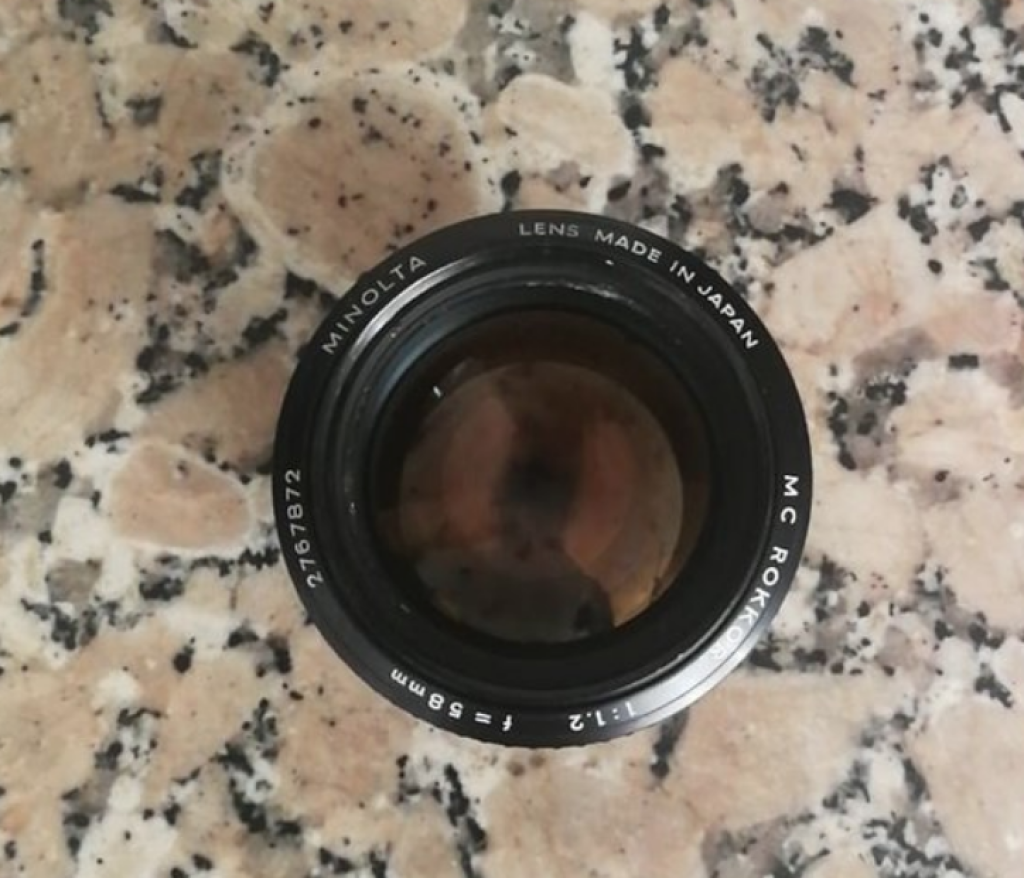
I recently found the Minolta MC Rokkor 58mm shown above on their site for $350, which was a few hundred dollars cheaper than on eBay or Amazon.
Lensfinder is basically the Goodwill of the camera bargain industry and I have always had excellent experiences as both a buyer and a seller on their site. Give it a try and see what awesome vintage lenses you can find!
Learn More:
We Recommend
Which is Best for Portraits: 50mm or 85mm?
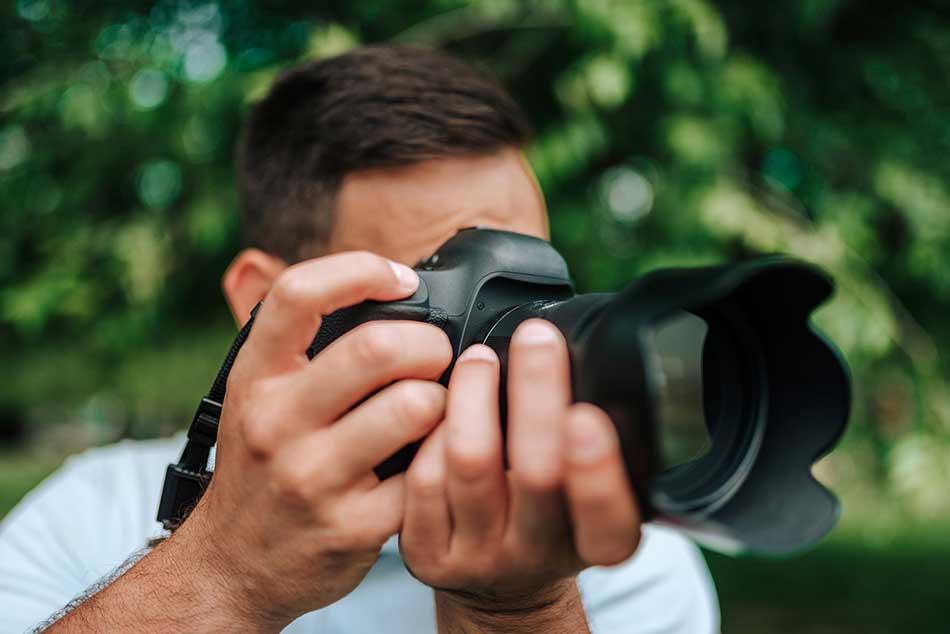 Image Credit: nortonrsx via iStock
Image Credit: nortonrsx via iStock
It's an age-old question - what's the best portrait photography lens?
For many photographers it simply doesn't get better than an 85mm lens.
For many other photographers, a 50mm lens is a much more prudent choice.
So which of these excellent focal lengths for portraits is best for you?
Editor's Tip: Lens choice is one of the most important factors in getting quality photos. Learn what questions to consider when buying a lens.
Advantages of 50mm Lenses

One of the biggest claims to fame for 50mm lenses is that they are highly affordable.
In fact, you can get a brand new Canon 50mm f/1.8 lens for under $150. That's not bad.
Additionally, 50mm lenses are small and lightweight. For some portrait photographers, having a small lens is a must.

Something else of note is the sheer versatility of a 50mm lens.
Not only can you use large aperture versions like f/1.4 and f/1.2 lenses indoors or in other low-light situations, but you can also use them for outdoor pursuits like sports photography.
What's more, a 50mm lens is ideal for video and even macro photography (if you reverse mount the lens).
Finally, 50mm lenses are ideal for both full frame and crop sensor cameras. Just bear in mind that depending on the crop factor of the camera, a 50mm lens will behave like a 75-80mm lens.
Still, it's a solid choice no matter what kind of camera you use.
Learn More:
Advantages of 85mm Lenses
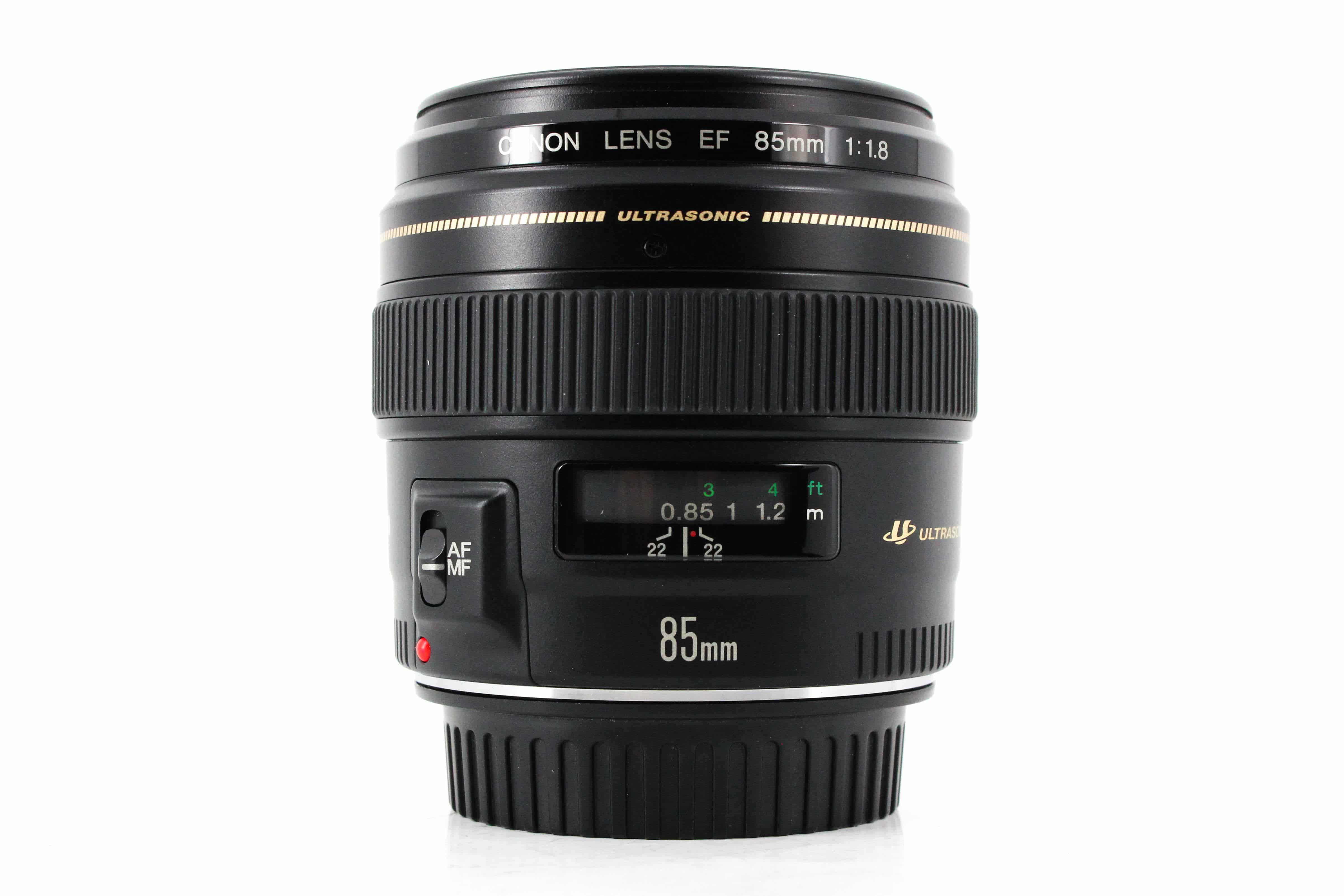
As good as 50mm lenses are, 85mm lenses have their own set of advantages for portrait photography.
First and foremost, an 85mm lens on a full frame camera will give you a very natural-looking portrait.
In fact, if you hold your camera in portrait orientation, look through the viewfinder with one eye and open the other eye to look at the scene, your eyes will see virtually the same thing with no distortion in the camera view.
Furthermore, 85mm is a great focal length for portraits because it's in the short telephoto range, which means that you can stand further away from the subject and still get nice close-up shots.

On top of all that, an 85mm lens has gorgeous compression.
That means that facial features look normal (foreheads and noses can be a little bulbous on shorter focal lengths) and pleasing to the eye.
The longer focal length also means that it has the effect of bringing the background in closer, making background elements seem larger.
At the same time, shooting with a longer focal length results in beautiful bokeh, so the background is nicely blurred, which helps separate the subject in the frame.
Editor's Tip: Not sure what lens to select? Learn why an 85mm lens is ideal for portraits.
50mm vs 85mm Lens: Which is Best for You?
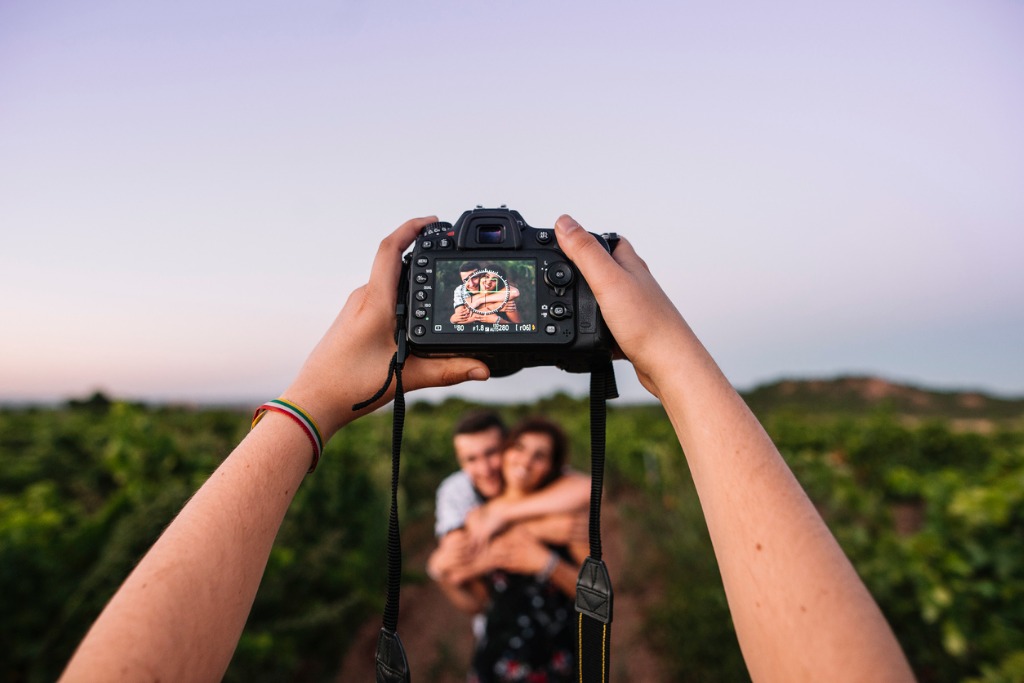 Image Credit: MarioGuti via iStock
Image Credit: MarioGuti via iStock
As is often the case in these sort of head-to-head matchups, the best lens for you depends on the situation.
If you're more into "on the go" types of portraiture like travel photography, street photography, or wedding photography - pursuits that require you to have a lens that's versatile, small, and lightweight - then a 50mm lens is the way to go.
However, if you need a little more focal length for portraits of athletes on the field or if you like the compression that an 85mm lens offers for more traditional portraits, an 85mm lens would be ideal.
Either way you slice it, a 50mm lens is a great addition to your camera bag. An 85mm lens is a great addition to your camera bag as well! Get more details on a comparison between these lenses in the video below by Julia Trotti:
For me, I'd rather have both lenses in my bag.
But for those of us that aren't made of money, that presents a problem.
Fortunately, there are many places where you can find high-quality used lenses so you can stretch your buck a bit further and get more kit for your dollar.
I've used Lensfinder multiple times for that very purpose (and to sell old lenses as well), and it's been a breeze each time.
Lensfinder has buyer protections built right in as well as a rating system for sellers, that way you know who you're dealing with.
The point is that there are great deals to be had on all kinds of lenses, so if you aren't sure which of these fine options is for you, consider buying used so you can afford both!
Learn More:
We Recommend
Why a 50mm Lens is the Best Lens in Your Camera Bag
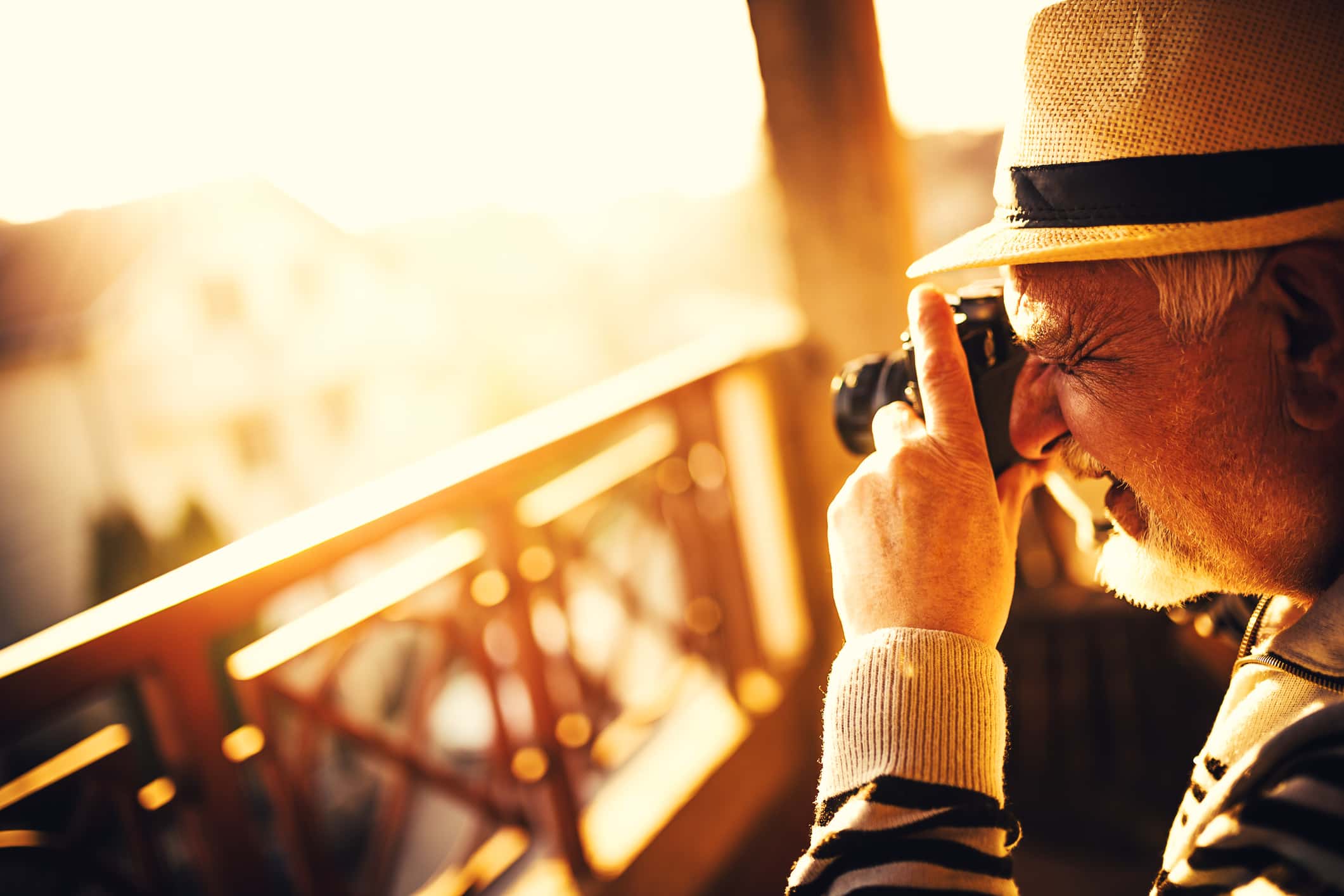
The "nifty fifty" is probably the most popular lens for photography.
Why?
Well, it has a ton of virtues, not the least of which is that they can be found on the cheap (the f/1.8 versions, anyway) and it's an incredibly versatile focal length.
In fact, ask any seasoned photographer what the first lens you should buy is, and I'm willing to bet that the vast majority of them will say a 50mm lens.
With that in mind, let me explain a few reasons why a 50mm lens is the best one you can buy.
It's Small

Nifty fifty lenses are petite with a small form factor and a weight that's typically just a handful of ounces.
That's great for a couple of reasons.
First, the lighter the lens, the less weight you have to carry and the less weight you have to bring to your eye each time you want to take a photo.
Secondly, smaller lenses are certainly less conspicuous, so if you're doing a little street photography, people won't notice your little nifty fifty as much as they will a huge 300mm telephoto lens.
And since it's so easily portable, there's no excuse for leaving your camera at home. The more you shoot, the better the photographer you will be!
Learn More:
It's Inexpensive
Most photographers have a 50mm lens in their camera bag, usually the cheaper f/1.8 version that you can pick up for about $150 brand new.
But if I can pass on a tip, there are crazy deals on used 50mm f/1.4 and f/1.2 lenses that are being sold by other photographers just like you. As a matter of fact, see for yourself.
So, rather than spending $1,300 on a brand-new f/1.2, see what deals you can find on used ones!
Low Light? No Problem!

Even the inexpensive f/1.8 version of the 50mm lens is great in low-light shooting conditions.
That's because compared to a kit lens, which usually maxes out at f/5.6, you get eight times as much light coming into the lens.
That means you can compensate for low light much more easily by simply opening the aperture.
That also means that you can get high-quality low-light photos without boosting the ISO as high for cleaner results. You can shoot with faster shutter speeds in low-light situations, too, making the 50mm lens an ideal choice for low-light photography.
Learn More:
It's Sharp
Prime lenses are usually sharper than zoom lenses. There's a couple of reasons for this, including the fact that prime lenses have less moving parts and they have fewer glass elements through which light has to travel.
Without as much stuff inside, the integrity of the light passing through the lens remains intact, resulting in sharper photos.
What's more, the wider aperture values that 50mm lenses offer means you can use a faster shutter speed to avoid camera shake while still getting a well-exposed image.
It's Versatile
Perhaps the greatest virtue of a 50mm lens is that it's incredibly versatile, as Adam from First Man Photography points out in the video above.
You can use it on a full frame camera or a crop sensor camera (where it behaves more like a short telephoto lens).
You can use a 50mm lens for portraiture, landscapes, street photography, and you can even reverse mount it on your camera for macro photography.
It's a focal length that's not so long that you feel like the images you take are claustrophobic, but it's not so short that you feel like the image has too much detail in it, either.
In other words, it's a perfect focal length for a beginner photographer that needs something that can serve multiple purposes.
Now, I understand that regardless of how popular this lens is, many of you simply don't use it enough to justify keeping it.
So to you, I recommend selling your 50mm lens to someone who would enjoy it so you can take the cash you get and buy some glass you'll use.
There are plenty of places to sell your unneeded camera gear, but I recommend Lensfinder.Post your lens for sale today.
Learn More:
50mm Lenses Produce Great Bokeh

There's something special about 50mm lenses on an artistic front as well.
Prime lenses in general usually produce better bokeh than zoom lenses.
That's especially true as you move into higher maximum apertures like f/1.8, f/1.4, and f/1.2.
So, when you're out shooting photos and you want a nice, blurry background or lights that twinkle in blurry goodness, a 50mm lens is just what you want.
It's Just a Great Learning Tool

A 50mm lens is simply a great tool for learning about photography.
As I noted earlier, you can use a 50mm lens for all manner and type of subjects.
But because it's a prime lens, you don't have a zoom to rely on to frame up different types.
That means you have to "zoom with your feet" and learn how to frame images by moving around to get the shot you want.
What's more, since you're limited to a fixed focal length, you have to think a little more purposefully about the composition of the shot before you fire the shutter.
Taking a little extra time to consider the composition, framing, perspective, and so forth will only improve your images!
Learn More:
We Recommend
Why Every Photographer Needs a Telephoto Lens
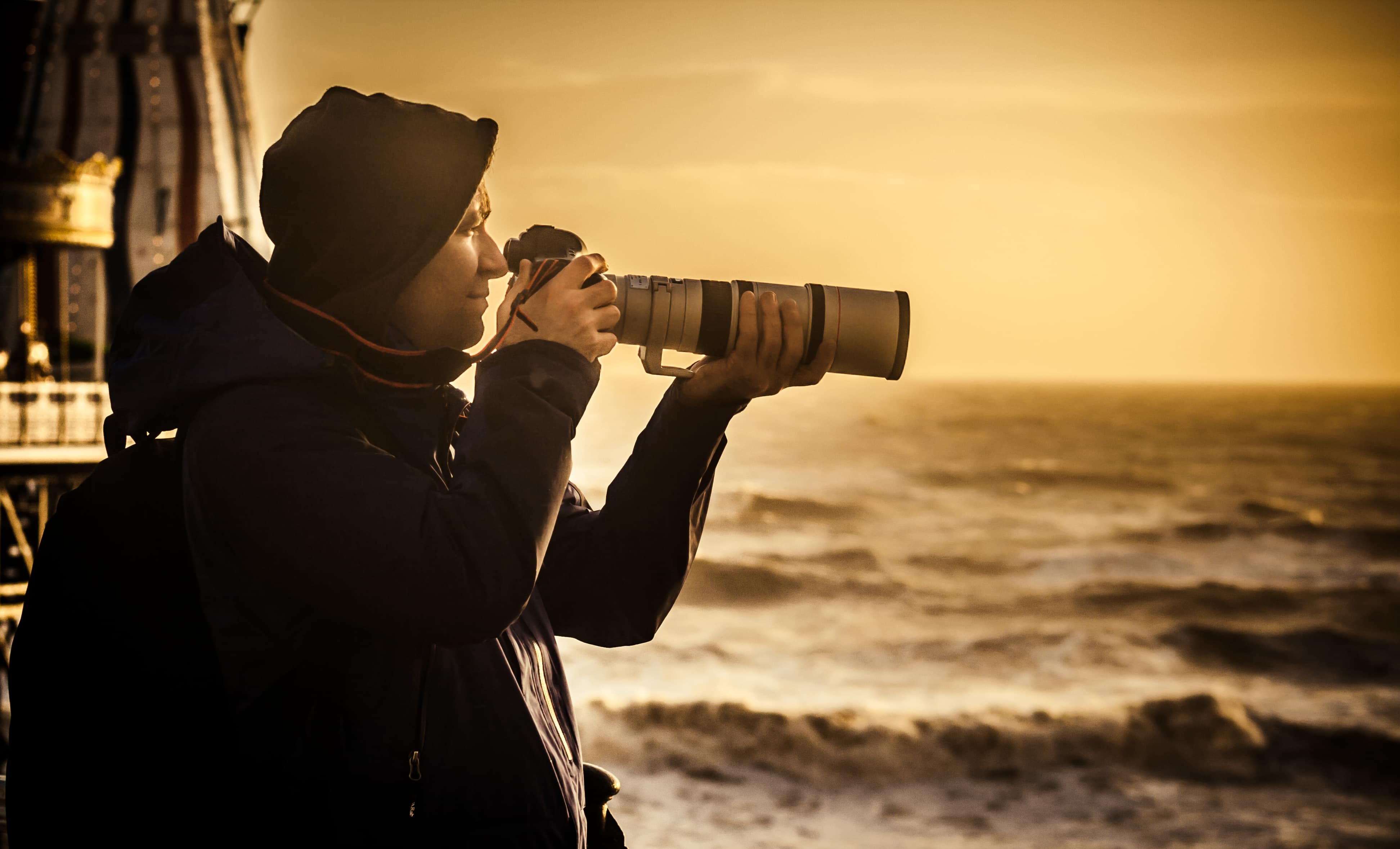 Image Credit: coldsnowstorm via iStock
Image Credit: coldsnowstorm via iStock
I think telephoto lenses get a bad reputation sometimes...
I mean, some people think that they're only for things like sports or wildlife photography.
Other folks might dismiss a telephoto zoom as being less than optimal because zooms are never as sharp as primes, right?
And while that might be true, it doesn't mean that a telephoto zoom lens isn't a fantastic investment.
In this article, I'd like to convince you of the benefits of a telephoto lens and why a telephoto lens should be counted among the lenses every photographer needs.
Let's get started!
Editor's Tip: Not getting the results you want with your lens? Learn how to read the markings on a lens to help you maximize the results you get.
Telephoto Lenses Offer Beautiful Compression
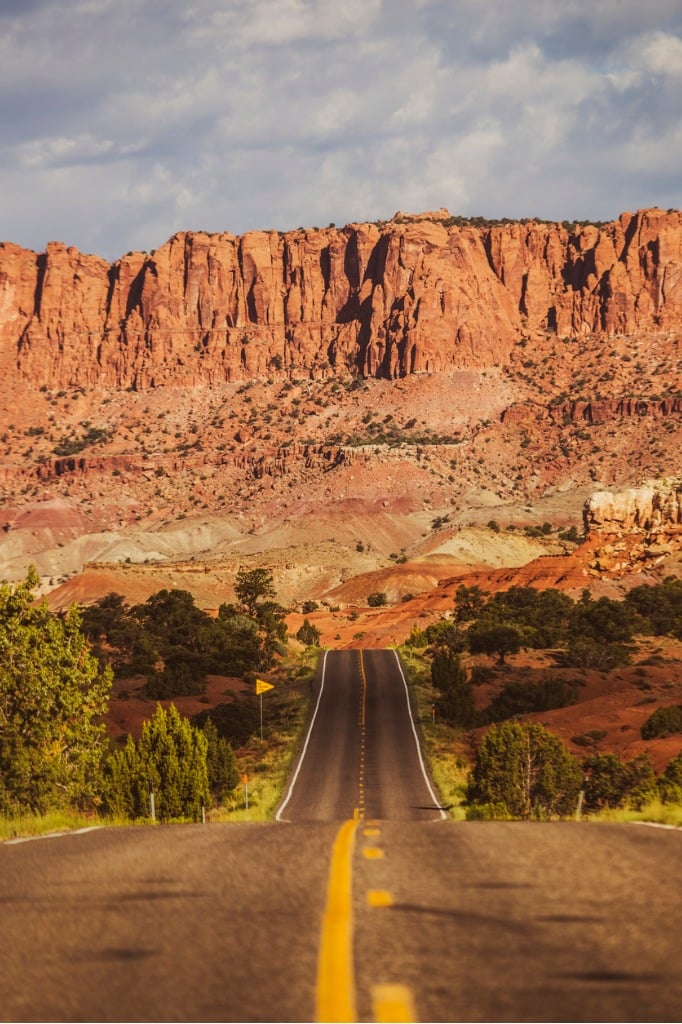 Image Credit: piola666 via iStock
Image Credit: piola666 via iStock
One of the best benefits of shooting with a telephoto lens is that they compress the scene.
That means that distant objects - far-off mountains in a landscape scene, for example - appear much closer than they do when photographed with a wide-angle lens.
And while there is certainly something to be said for shooting landscapes with wide-angle lenses and portraits with standard lenses, both of those subjects can also be photographed with a telephoto lens, and photographed beautifully, I might add.
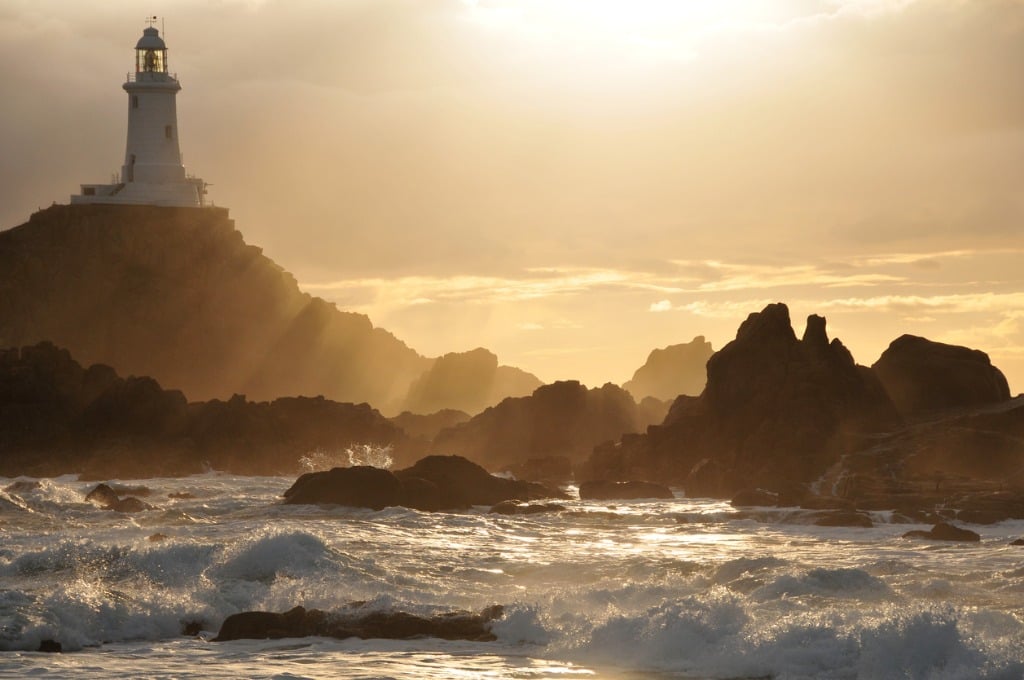 Image Credit: Alan_Lagadu via iStock
Image Credit: Alan_Lagadu via iStock
In this shot, the compression I mentioned above is in full view.
Notice how the lighthouse is a prominent feature in the image and how the rocky coastline is front and center in the image as well.
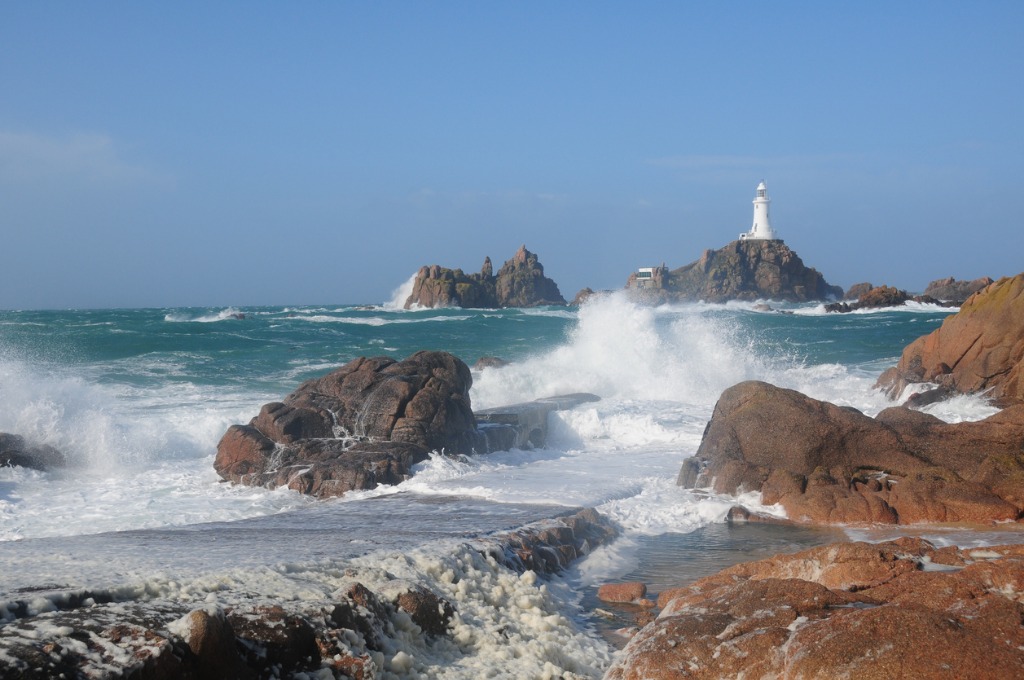 Image Credit: Alan_Lagadu via iStock
Image Credit: Alan_Lagadu via iStock
Contrast that with this shot of a similar scene taken with a shorter focal length.
Though it's a fine shot, the impact of the lighthouse simply isn't the same because it's smaller in the frame.
So, if you want to make your subjects a more prominent feature in your photos, a telephoto lens is a perfect way to do that.
Learn More:
Telephoto Lenses Make It Easy to Blur the Background
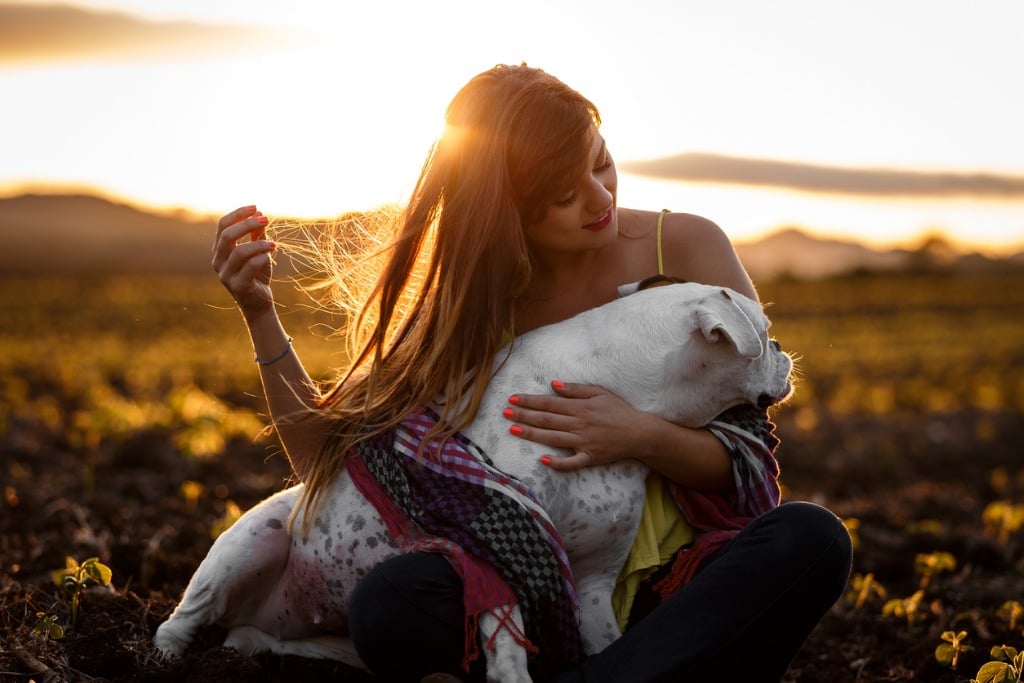 Image Credit: Capuski via iStock
Image Credit: Capuski via iStock
The beautifully blurred background you see in the portrait above is due to a number of factors that influence the depth of field, including the focal length of the lens.
That is, the longer the lens, the shallower the depth of field and the blurrier the background will be.
That makes a telephoto lens a great choice for portraiture.
By blurring the background, you can separate the subject from the background and help viewers zero in on the subject with greater ease.
But that's not just important for portraits.
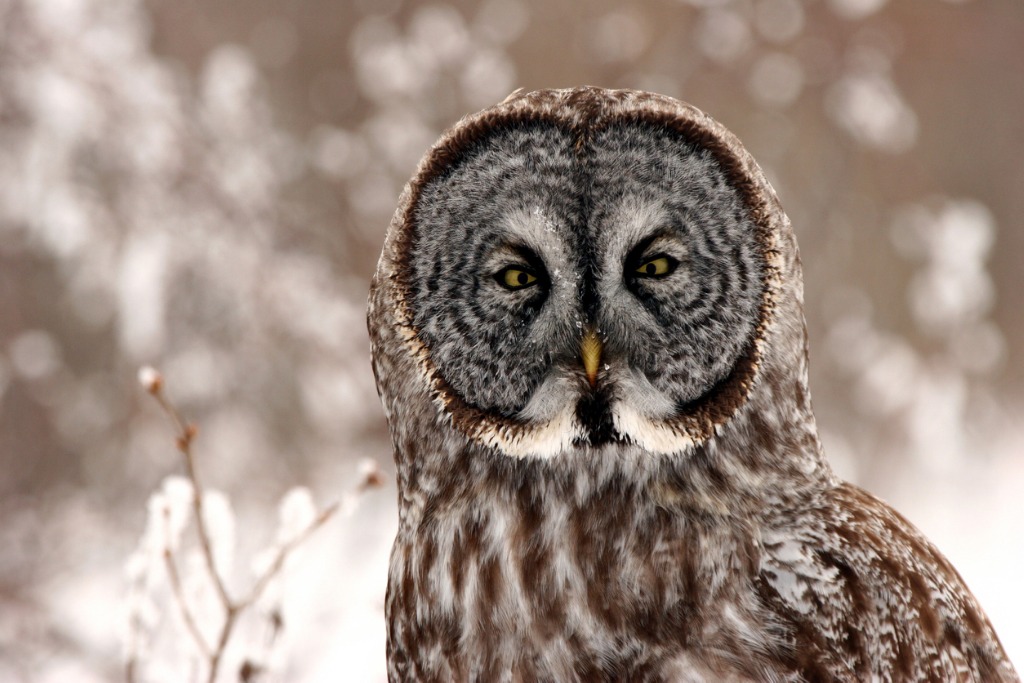 Image Credit: HuntImages via iStock
Image Credit: HuntImages via iStock
Instead, having a blurry background is advantageous in everything from sports photography to wildlife photography.
In the image above, note how the owl is visually separated from the background, even though the owl and the background have a similar color scheme.
That's thanks to that shallow depth of field that throws the background into a beautiful blur while keeping the owl tack-sharp.
Plus, sometimes you want to photograph a subject but the background is cluttered or even ugly. And with a telephoto lens, you can do that with relative ease!
Editor's Tip: Need to upgrade your kit but don't have the money to do so? Sell your old lenses, pocket the money, and use it to finance newer gear!
Telephoto Lenses Help Bring Action Shots to Life
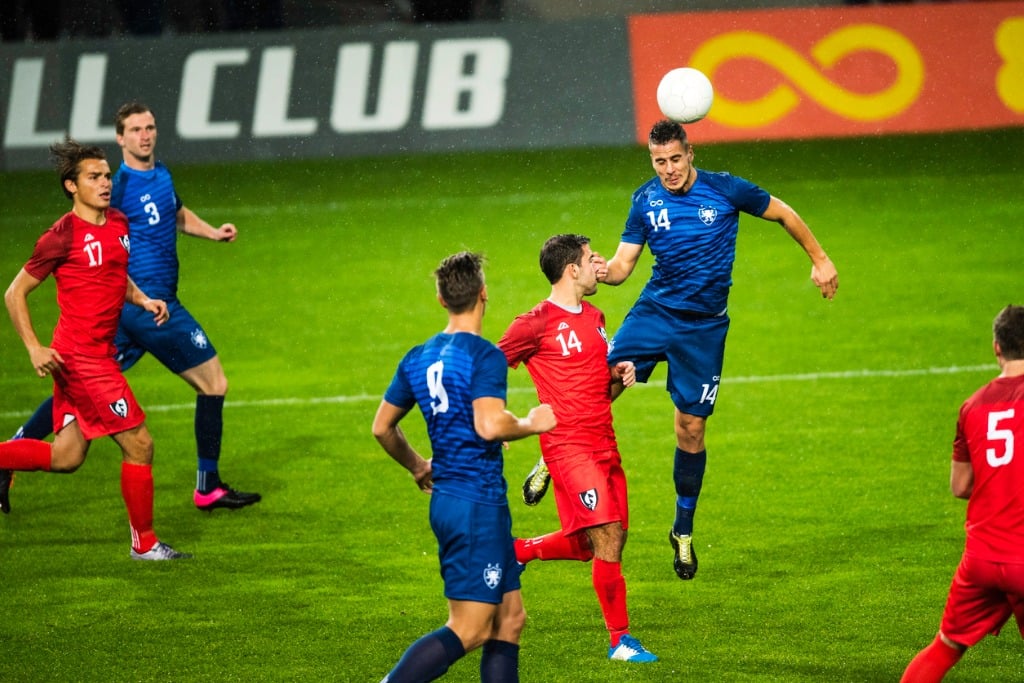 Image Credit: vm via iStock
Image Credit: vm via iStock
Another primary benefit of using a telephoto lens is that it can help you bring viewers up close to action.
Whether you're photographing a motorcycle race, a basketball game, or something in between, the longer focal length of a telephoto lens allows you to highlight the details of what's going on without actually being up close to the action.
That, in turn, helps you create images that have a distinct feeling of action and pace.
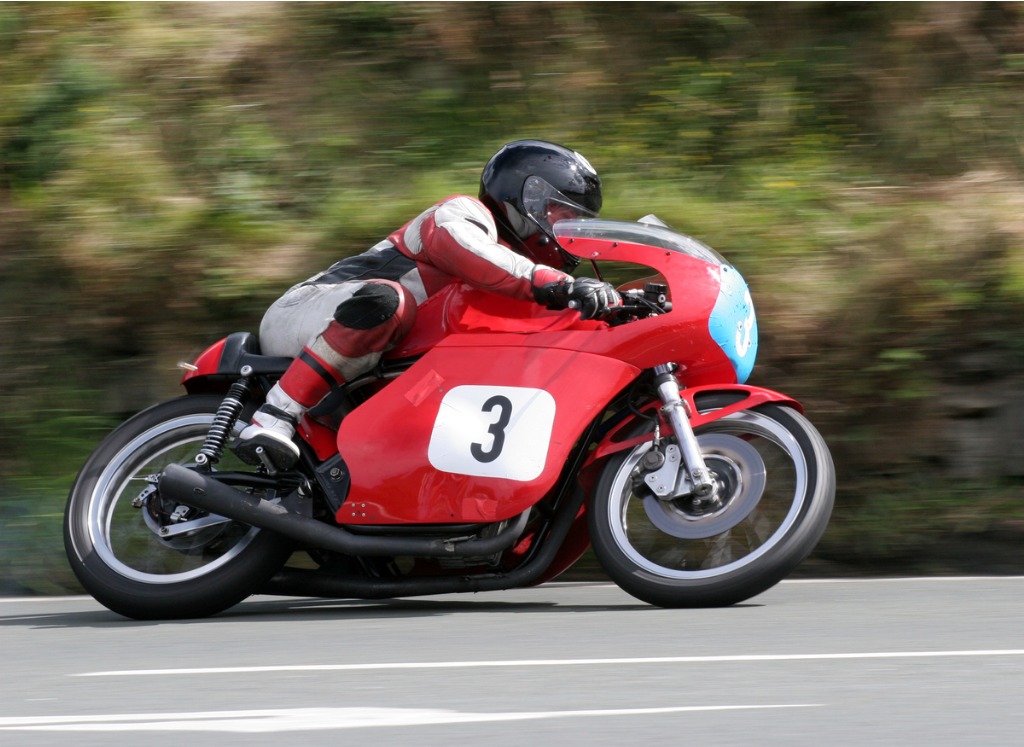 Image Credit: pastie via iStock
Image Credit: pastie via iStock
Part of that is having the ability to separate the subject from the background, as discussed in the previous section.
But another part of that is being able to pan with a moving subject - thereby keeping it sharp - while the background becomes a hotbed of indicated motion, as seen above.
Notice how the motorcycle and its rider are nice and sharp, but the background is blurry with the indicated motion helping us understand that the rider is moving to our right.
That look would be difficult to replicate with a shorter lens, so again, the longer focal length of a telephoto can be a huge asset for you as you expand your photographic abilities.
Learn More:
Final Thoughts
If you're in the market for a new lens, I strongly urge you to consider picking up a solid telephoto zoom.
Not only will it help you compress the scene and make your subjects more prominent in the shot, but a telephoto will also help you blur the background and get much closer to action than is possible with shorter focal lengths.
And while many telephoto lenses are very, very expensive, if you look in the right places, you can find high-quality pre-owned lenses that won't bust your budget.
For more insight into why telephoto lenses are such a great investment, check out the video above by Peter McKinnon.
We Recommend
Why Everyone Needs a Macro Lens
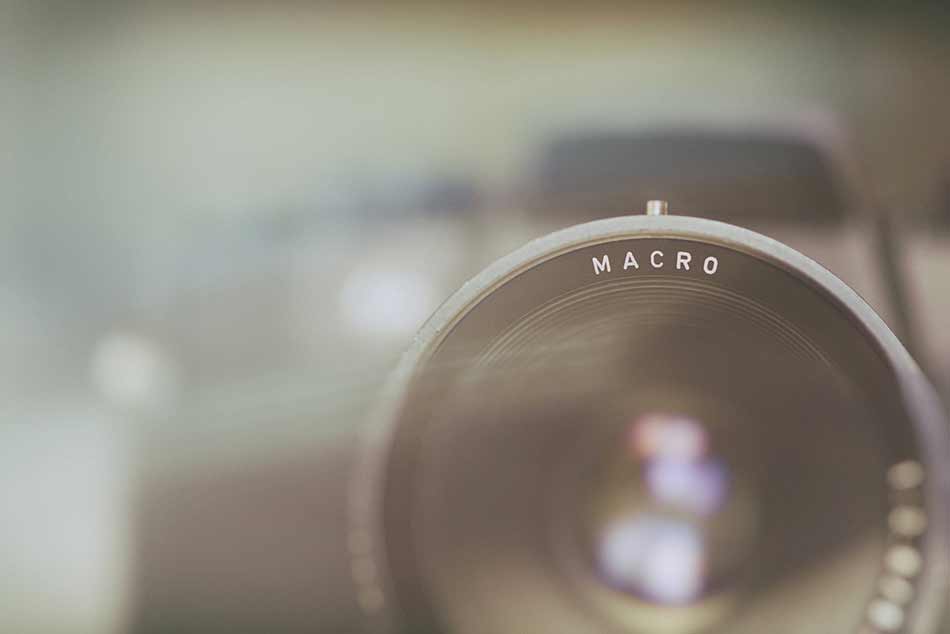
What Is A Macro Lens?
I know what you're thinking...
You don't shoot macro photos, so why on earth would you need a macro lens?
Well, in the video above, Peter McKinnon offers an overview of what is a macro lens as well as his take on why everyone needs one.
I have to say that he makes some compelling arguments!
Have a look at what Peter has to say in the video, and for an outline of why macro lenses are so great, check out the article below.
Editor's Tip: Brand new lenses can be expensive. Before you buy, learn about the virtues of buying budget lenses.
Macro Lenses Aren't Just for Macro
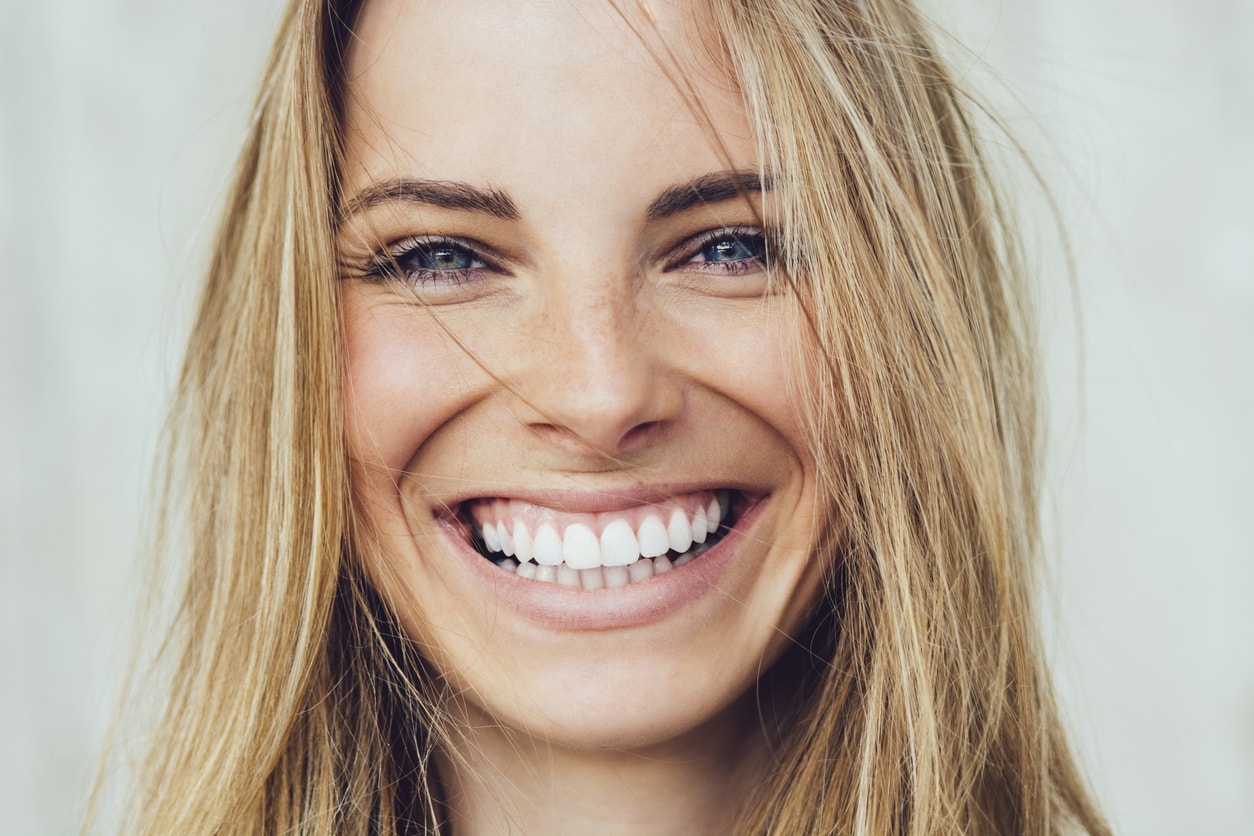
When asking yourself, "Do I need a macro lens?" you're immediately biased against buying one.
Why? It's all in the name!
Macro lenses aren't just for macro photography. There's so much more that you can do with a macro lens than take close-up photos of flowers and insects.
In fact, macro lenses are great for portrait photography. They also make an ideal lens for videography.
But They're Really Great at Close-Up Stuff

Of course, macro lenses are fantastic for close-up photos.
That's a great benefit because macro photography is so different from normal photography.
Not only does shooting macro require a little bit of a different approach (and some special gear), but macro photography also helps you develop your creativity and your photographer's eye.

By forcing yourself to look at scenes on a micro level instead of the traditional macro level, you can train your eyes to see shapes, colors, textures, patterns, and other features that make for an interesting close-up.
And guess what?
All those features are great to have in traditional photos as well.
So, macro lenses are a great learning tool that will help you master close-up photography and give you a little creative edge for normal photography as well.
Editor's Tip: Get new lenses by selling your old ones. Find out how to make money off your old gear.
Macro Lenses are Versatile
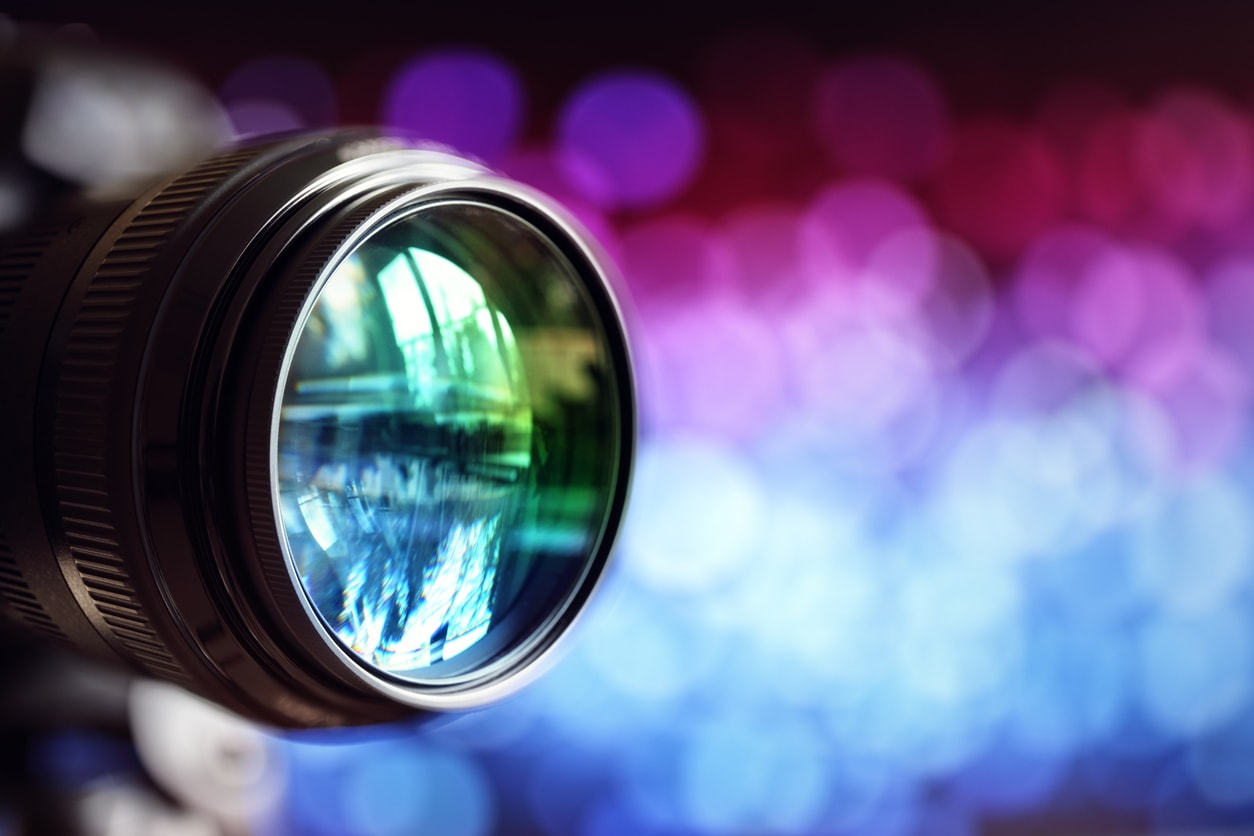
Building off of an earlier point, it's important to reiterate that macro lenses are incredibly versatile. So much so, in fact, that Peter calls his macro lens the "swiss army knife" of his camera bag.
You can get beautifully detailed up-close shots of your subject, and then pull back for a wider shot.
You can get gorgeously shallow depth of field with a macro lens, too, which is great for portraiture.
You can shoot landscapes and architecture, food and street scenes, and everything in between.
And when you need to leave your tripod behind, many macro lenses have image stabilization to help you get sharp stills and smooth video when shooting handheld.
Now that's how to use a macro lens to get the shots you want!
You Can Find Great Macro Lenses on the Cheap
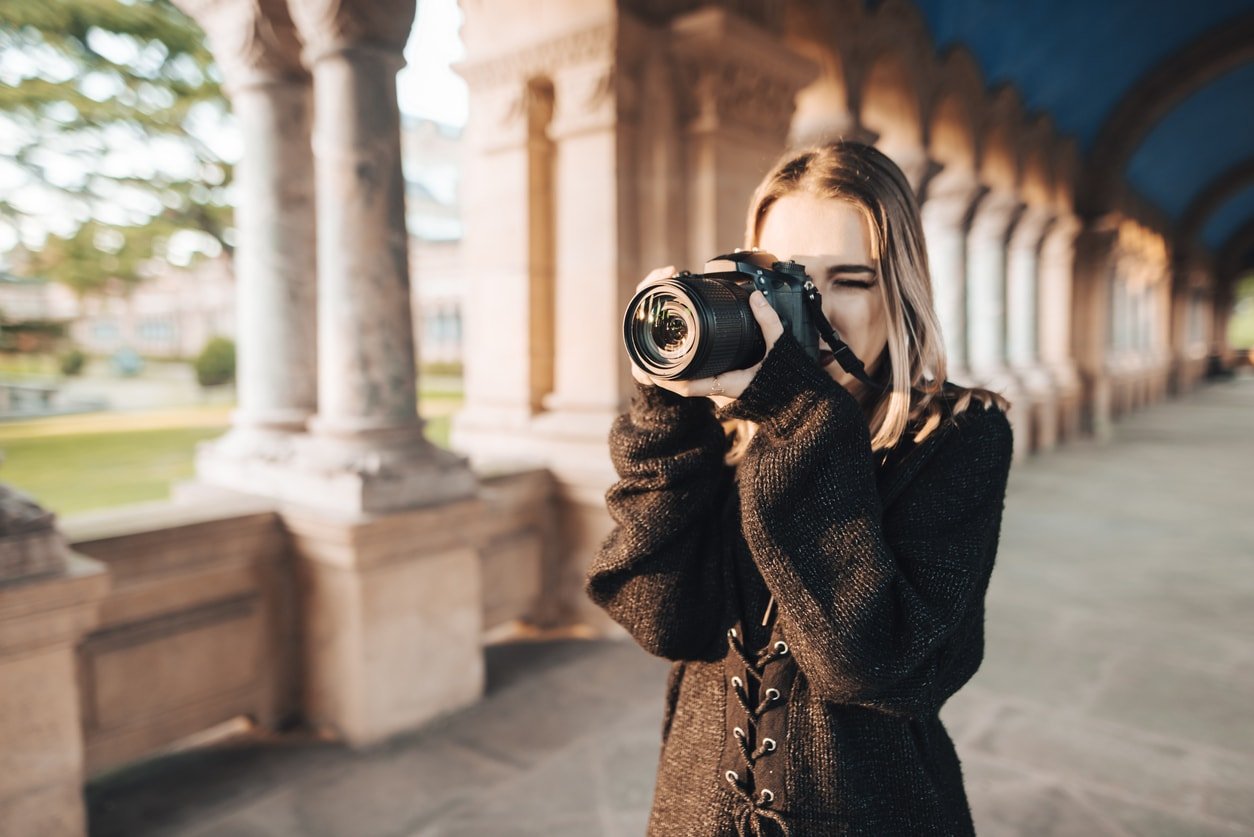
Let's not kid ourselves here...
When it comes down to it, price is often the biggest factor in determining what most of us buy.
And fortunately, there are plenty of macro lenses that you can get without breaking the bank.
High-end macro lenses can usually be found for about $800 brand new, with many lesser models running about half that price brand new.
Of course, buying pre-owned lenses helps you stretch your budget even further.

Think about it - why blow $800 on a great macro lens that's fresh out of the box when you could get a similar lens or even the same lens that's been gently used and well cared for at a big discount?
I've bought my fair share of new and used lenses over the years, and what I've found is that if you buy a pre-owned lens from a reputable place like Lensfinder, you can save tons of money without sacrificing quality.
The big "ifs" when buying used gear is if it's actually what the seller says it is in the condition that they say it's in.
With Lensfinder, you don't have to worry about scams and price gouging because there's fraud protections built right in.
You can ask questions and communicate with sellers right in the Lensfinder platform as well, so it's a smooth and simple process to get new-to-you-glass.
With that said, give Lensfinder a look and see if you can find the macro lens for you!
We Recommend
Why the Nikon D5100 is the Perfect Entry-Level Camera
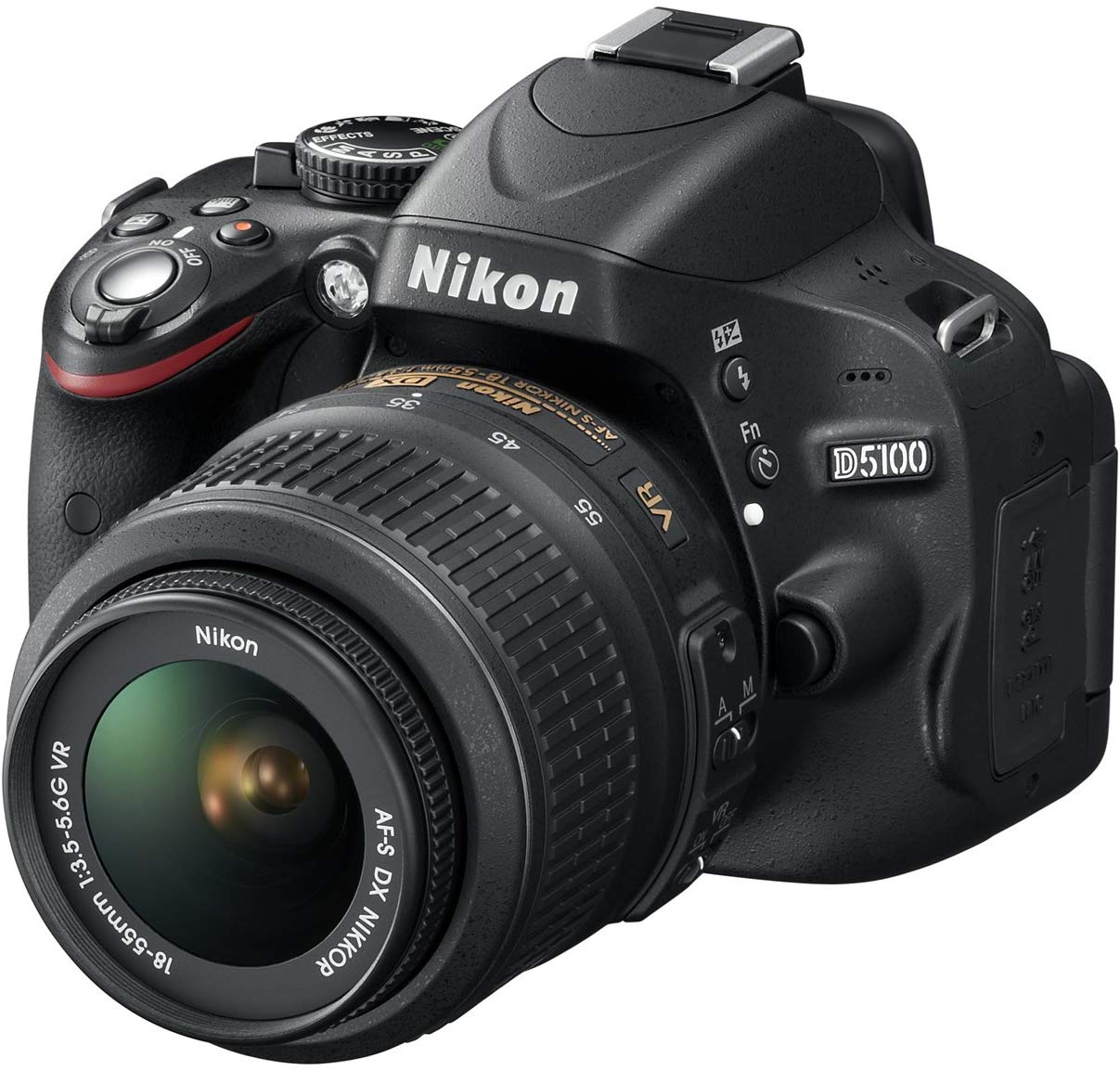
Nikon D5100
Looking for a solid upgrade from your smartphone or point-and-shoot camera? The Nikon camera D5100 might be it.
With a bevy of features and an inexpensive price tag, this camera represents an excellent entry point for beginner photographers into the world of DSLR photo-taking. Nikon D5600 camera has got almost same features as D5100 except the weight - D5600 is heavier than D5100.
Table of Contents
- Nikon D5100 Specs
- Nikon D5100 Design
- Nikon D5100 Autofocus System
- Nikon D5100 Lenses
- Nikon D5100 Price
Nikon D5100 Specs
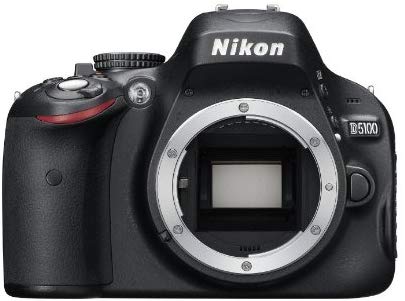
Sure, the D5100 was released way back in 2011, but that doesn’t mean that it’s an obsolete camera. In fact, it’s specs are still pretty good even by 2019 standards:
- 16.2-megapixel APS-C CMOS sensor
- EXPEED 2 image processor
- 11-point autofocus system
- ISO range of 100-6400 (and up to 25600 in extended range)
- 1080p HD video at 30 fps
- 4fps continuous shooting
- Pentamirror viewfinder with 95% coverage
- 3-inch variable-angle LCD with 921k dots
For starters, the 16.2-megapixel sensor in this camera still beats many brand-new entry-level cameras in terms of resolution. It’s actually the same sensor that was in the Nikon D7000, a higher-end camera that won many accolades. In other words, it’s a great sensor!
And while resolution isn’t the end-all, be-all of camera specs, it’s nice to have those extra pixels in case you have some photos you’d like to have turned into large prints. Image quality is actually quite excellent with good color and contrast.
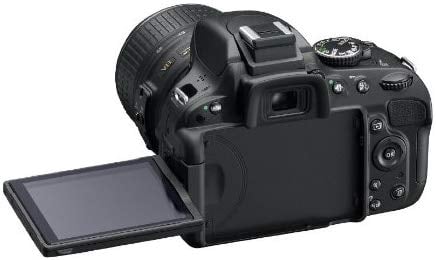
The other surprising feature for an eight-year-old camera is the variable-angle LCD. Having the ability to rotate the screen up and down aids in taking photos from interesting angles, and is not something that was hugely common back in 2011.
Now, no one should get excited about 4fps shooting or an 11-point autofocus system. However, so long as you aren’t into sports photography or wildlife photography, 4fps is sufficiently fast for most situations.
Likewise, though the autofocus system isn’t crammed full of AF points, it’s still quick, responsive, and accurate, and that’s what matters.
Nikon D5100 Design
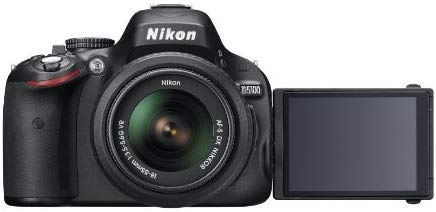
As noted above, the variable-angle LCD is a nice touch, and at 3-inches wide with 921K dots, it’s big, bright, and surprisingly sharp for an LCD this old.
Since it’s hinged on the side, it can flip out away from the camera up to 180-degrees and rotate 270-degrees to accommodate difficult shooting angles; as good as Nikon D3300. Though it doesn’t have the touchscreen capabilities that modern LCDs have, it will still get the job done in terms of functionality and ease of use.
Paired with the LCD is a pentamirror optical viewfinder that offers a generous 95% coverage with a magnification of 0.78x.
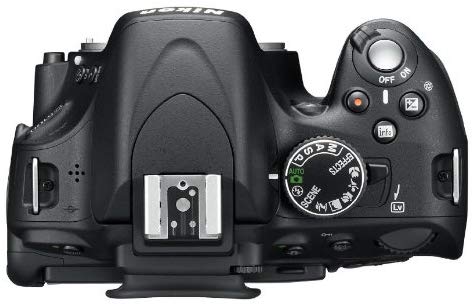
The top of the camera has a mode selection dial that gives you the full complement of shooting modes, including full auto, full manual, aperture priority, shutter priority and program. There are also a variety of scene modes and specialty modes for sports, portraits, landscapes and so forth.
Nikon even included a range of special effects - digital filters that you can apply in-camera to give your photos a special look. Though these are somewhat gimmicky, they can also be fun to play around with without having to download images and process them in a program like photoshop.
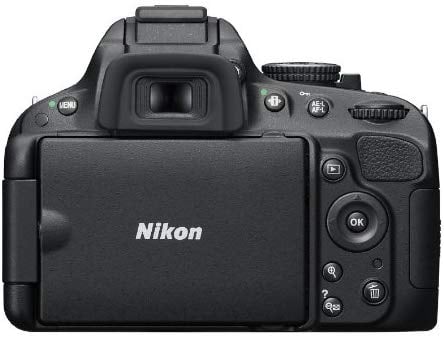
Regarding the size of the camera, it’s quite small for a fully-featured DSLR.
It weighs just 1.23 pounds (body only) and measures 5.04 x 3.11 x 3.82 inches in size, so it’s certainly a lightweight camera with a small form factor that’s ideal for everyday shooting.
The body is encased in a polycarbonate shell that has a nice matte finish, though it isn’t the strongest material on earth. Care should be taken with any camera, but particularly cameras like this that cater to beginner photographers. And since this camera is not weather-sealed, additional care is advised when shooting in adverse weather conditions.
Nikon D5100 Autofocus System
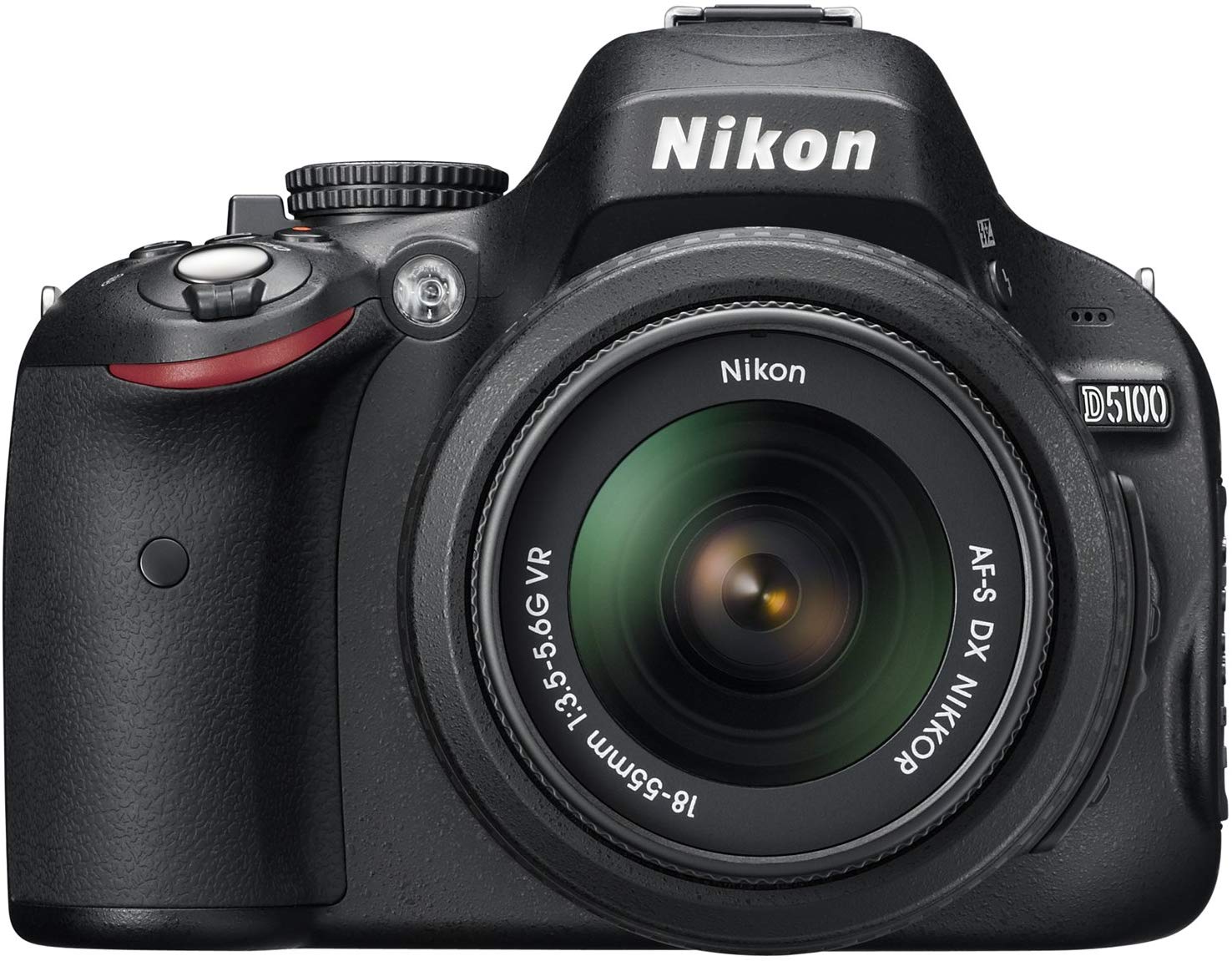
As noted earlier, the 11-point autofocus system isn’t anything to write home about, but it also isn’t terrible either.
The AF points are arranged in a diamond-shaped pattern and includes a center cross-type point for accuracy. Autofocus speed is decent, with good performance when acquiring focus on still targets.
What’s more, the autofocus system on this camera has face-detection technology that makes focusing for portraits an easier and quicker task. Nikon D810 also has this same feature.
Behind the autofocus system is a metering 420-pixel metering system that has garnered praise over the years for its accurate performance.
The two systems combine to create very good image quality, both in terms of in-camera results (i.e., JPG files that can be immediately shared) and RAW files (14-bit) that can be downloaded and processed to one’s liking in programs like Photoshop or Lightroom.
Get more details on the D5100’s capabilities in the video above by Jared Polin.
Nikon D5100 Lenses

The D5100 has a Nikon F-mount, which means there are hundreds of compatible lenses for this camera.
In fact, the F-mount system is backward compatible, so you could use lenses dating all the way back to the 1960s with this camera. There are many third-party options available as well.
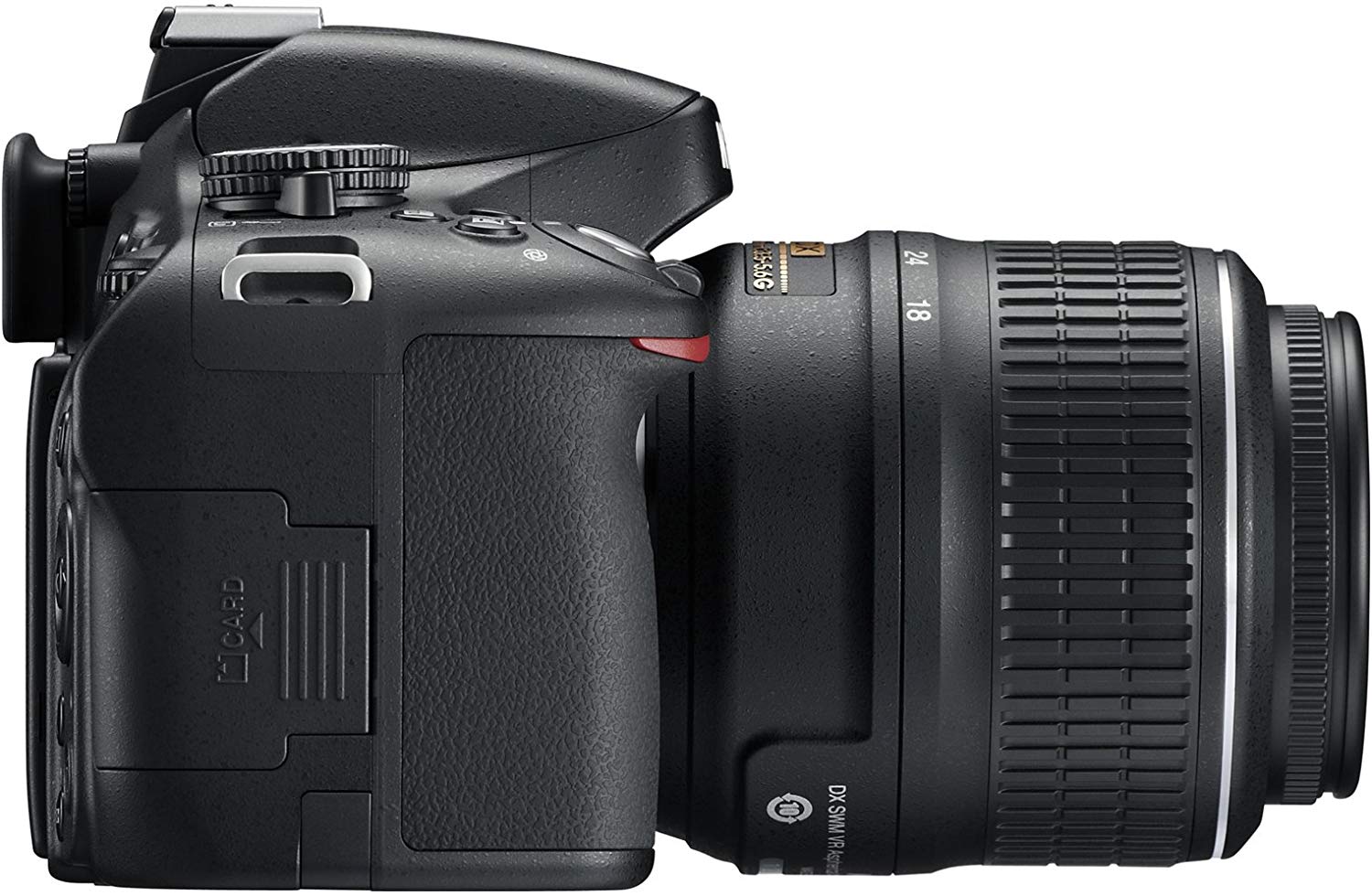
One small issue with the D5100 is that it does not feature an internal focusing motor. This means that it will not provide autofocus capabilities with older lenses.
However, when paired with modern Nikon lenses like those from the G and AF-S lines, you can reap the benefits of the fast and accurate autofocus system in this camera.
When looking for compatible lenses, look for ones with built-in optical image stabilization. Since the D5100 doesn’t have in-body image stabilization, having stabilized lenses will help ensure that you can take photos handheld at slower shutter speeds with less likelihood of getting blurry photos.
Here’s a few lenses you might consider to pair with the Nikon D5100:
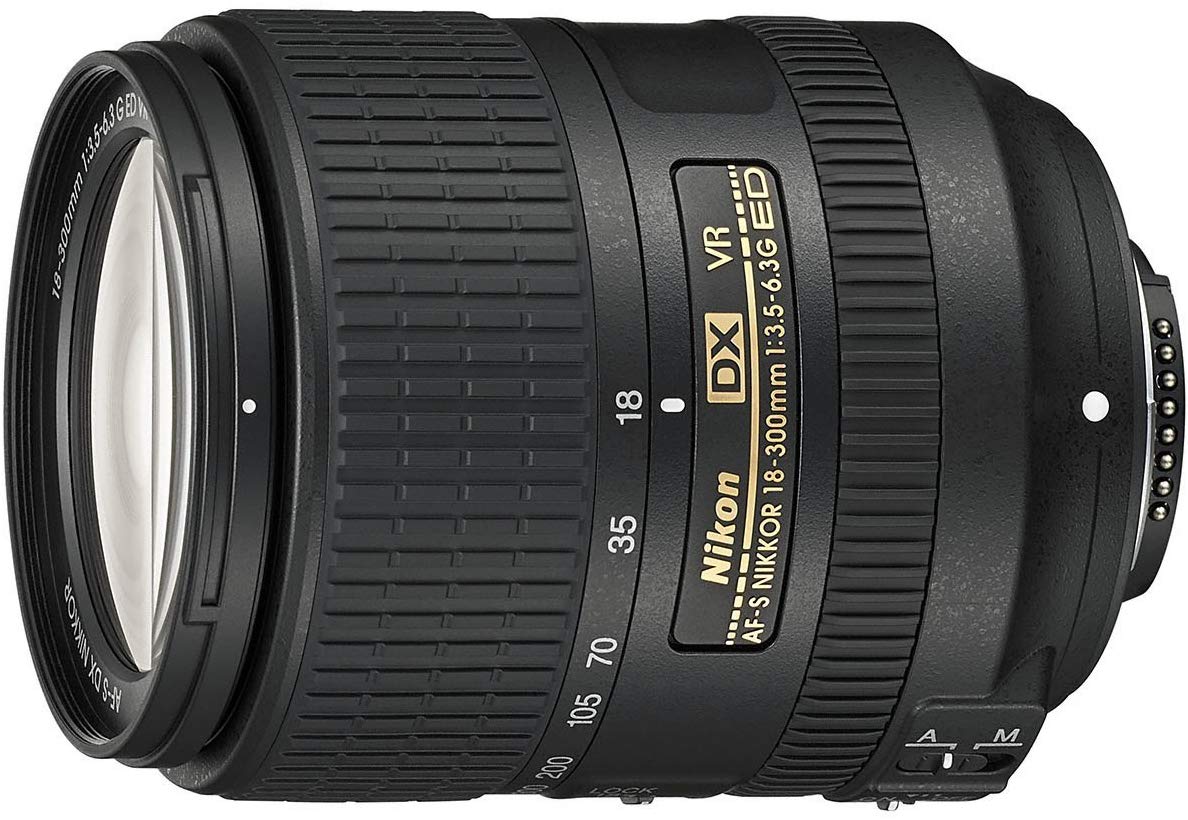
- Nikon AF-S DX NIKKOR 18-300mm F3.5-6.3G ED VR - An excellent all-around lens with wide-angle to telephoto capabilities (shown above).
- Nikon AF-S Nikkor 50mm f1.4G - The ideal standard lens for beginner photographers.
- Nikon 24-70mm f2.8G ED - A large aperture lens with wide application for all kinds of photography.
Nikon D5100 Price
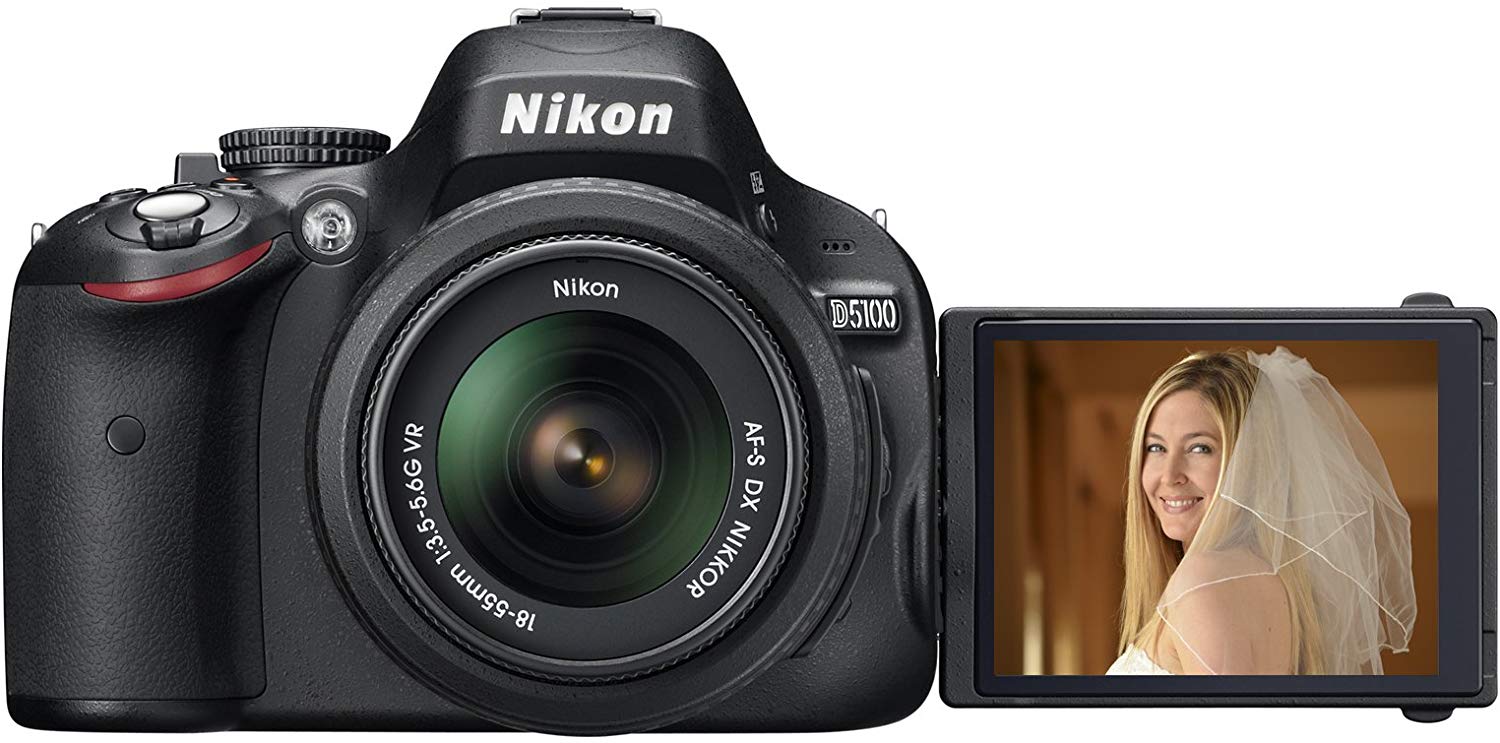
Being eight years old, you can pick up a new Nikon D5100 on the cheap - less than $500. But with so many pre-owned D5100s floating around out there, buying used is a great way to save even more money.
Just be sure that when you buy used that you buy through a reputable outfit, like Lensfinder.

With built-in fraud protections, Lensfinder has your back when you choose to purchase a camera (or lens or filter) through their platform. Plus, with fees less than what you find on eBay and dedicated listings only for photography gear, you can save more money without having to search through tons of non-related items as you often do on other platforms.
Besides, with a good selection of lenses, you can find a great lens to go with your D5100 and have a new-to-you-kit on the cheap.
Sure, there are newer and fancier entry-level cameras on the market, but for my money, the D5100 represents a great balance of quality, features, and price.

